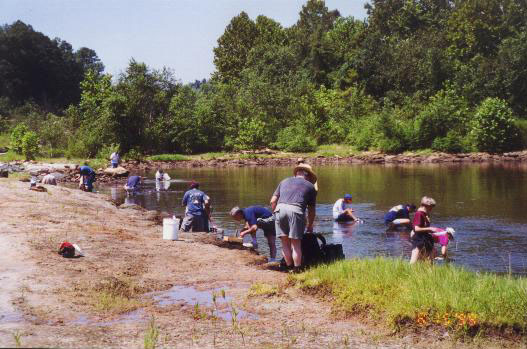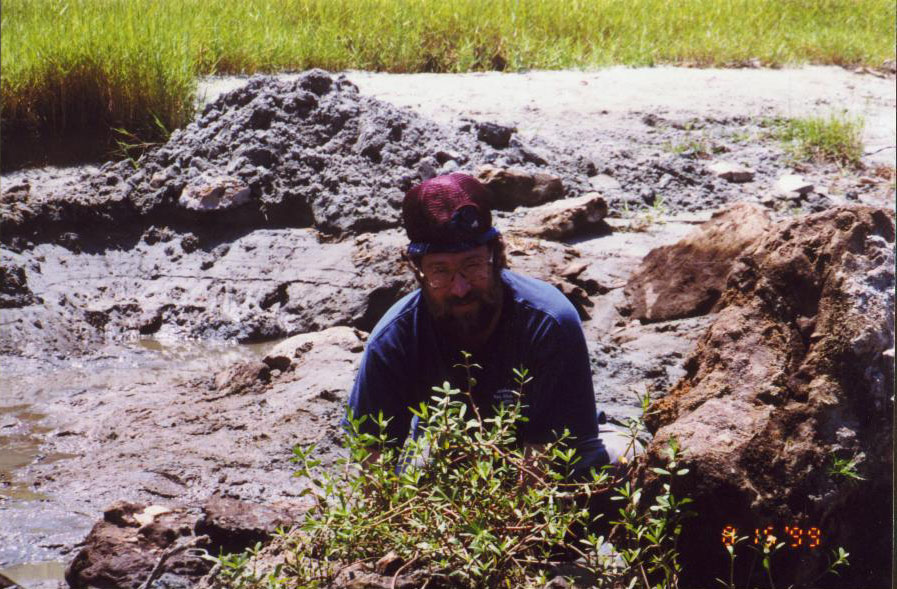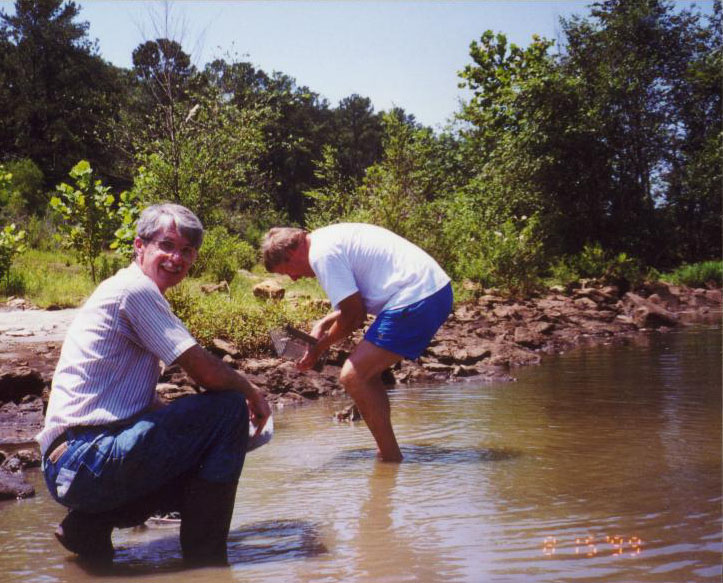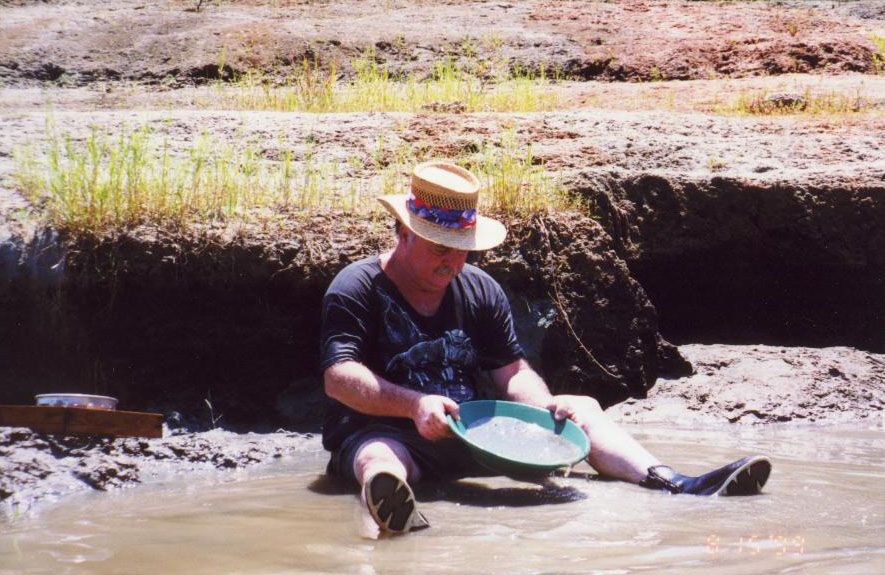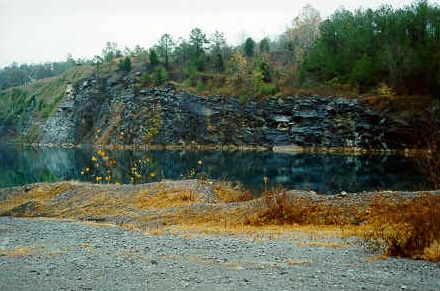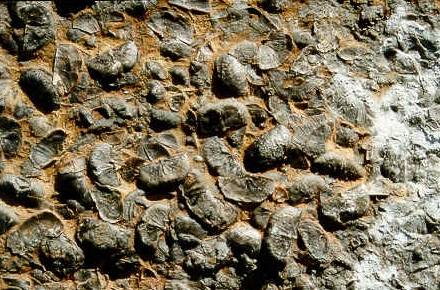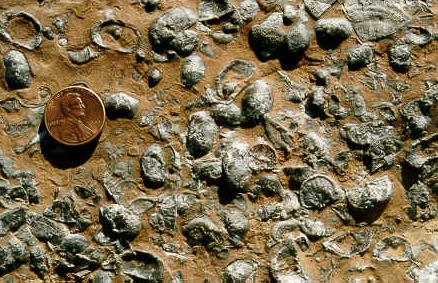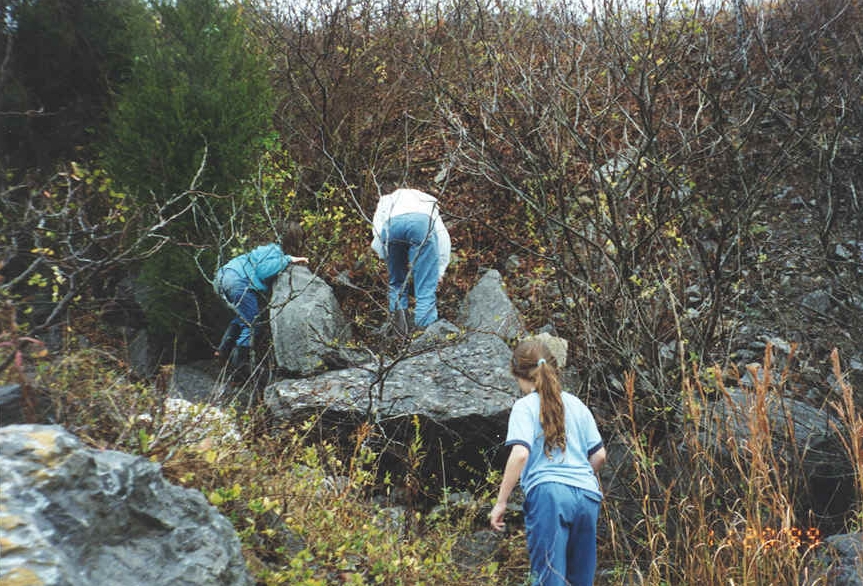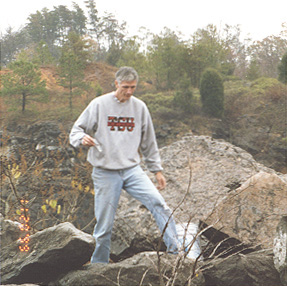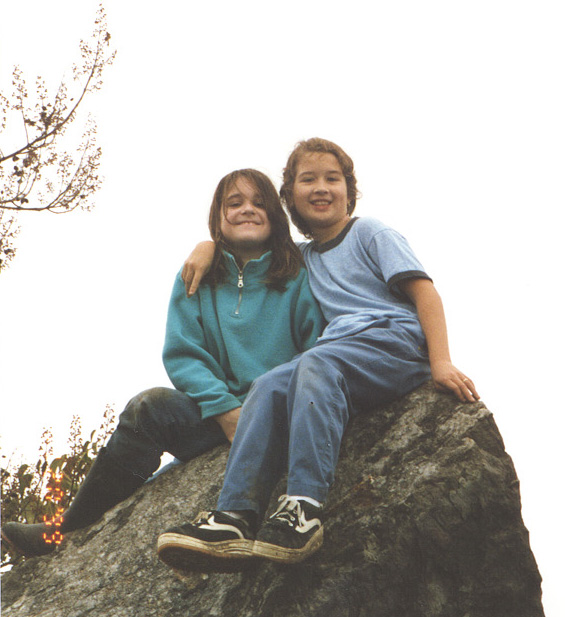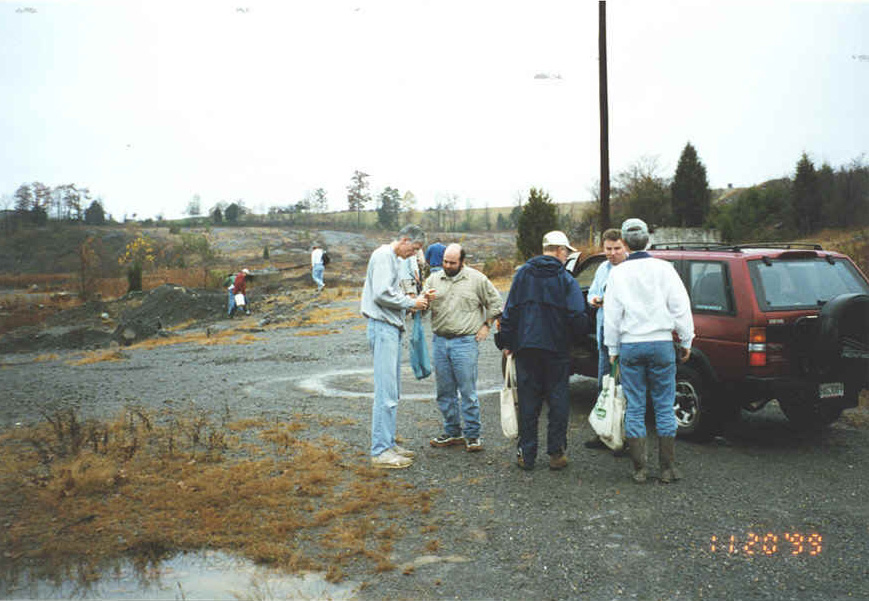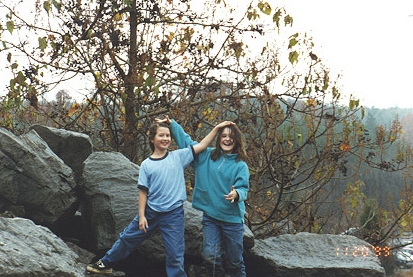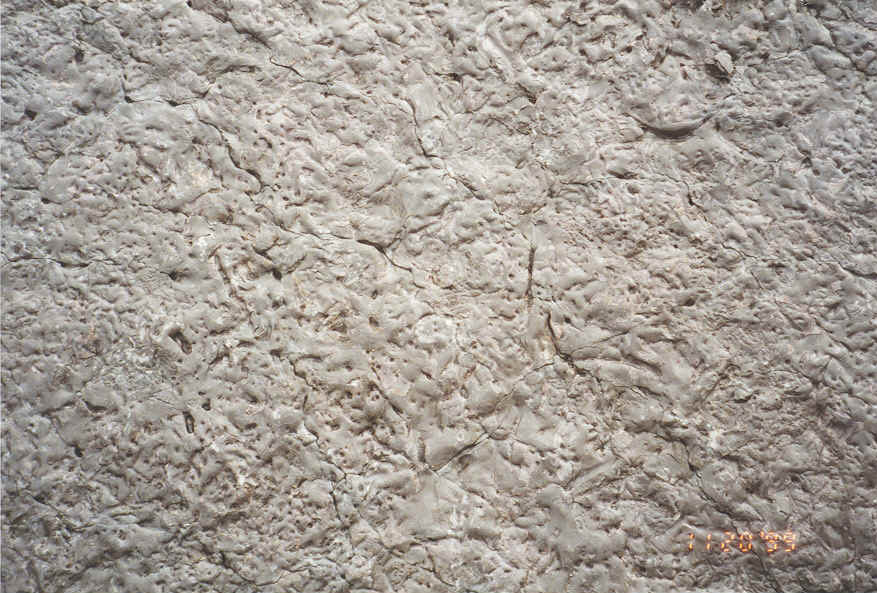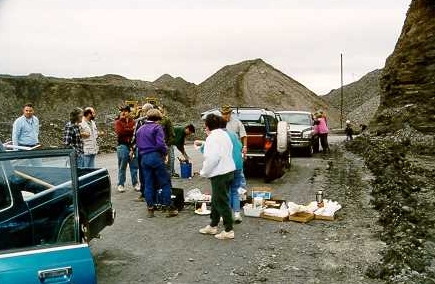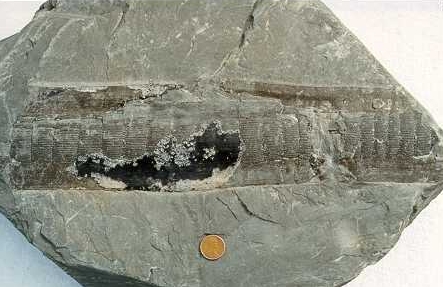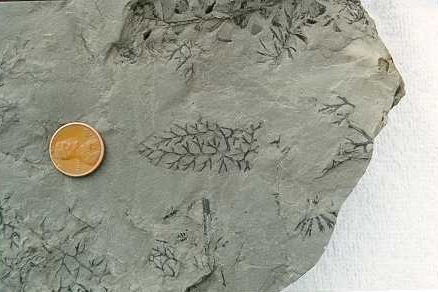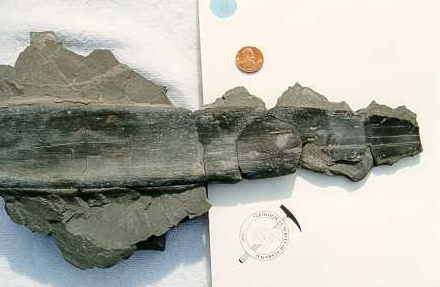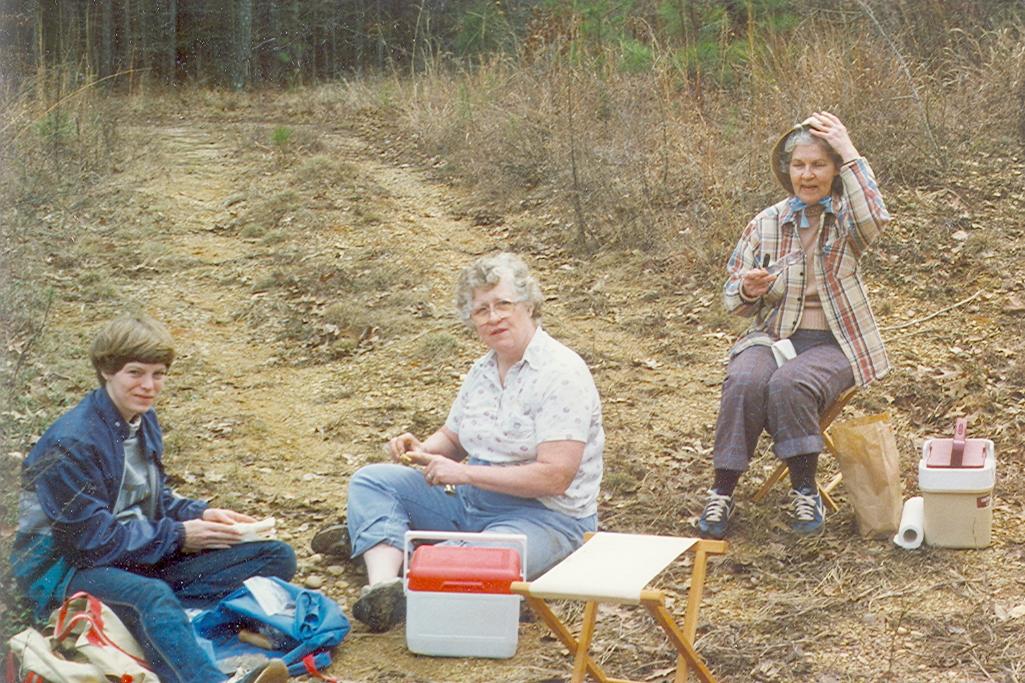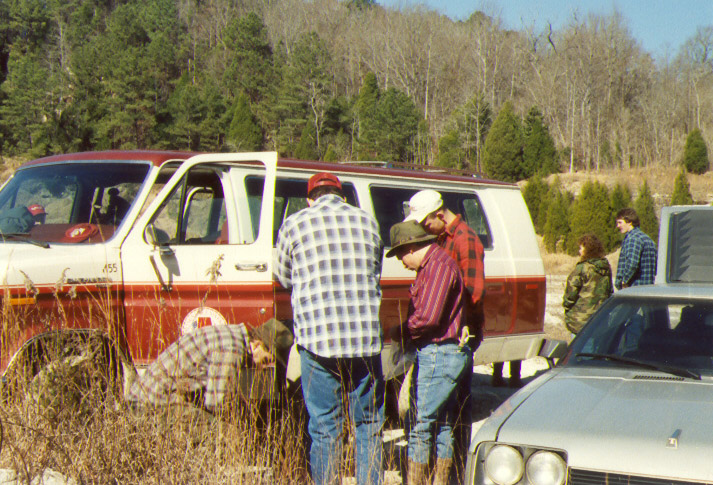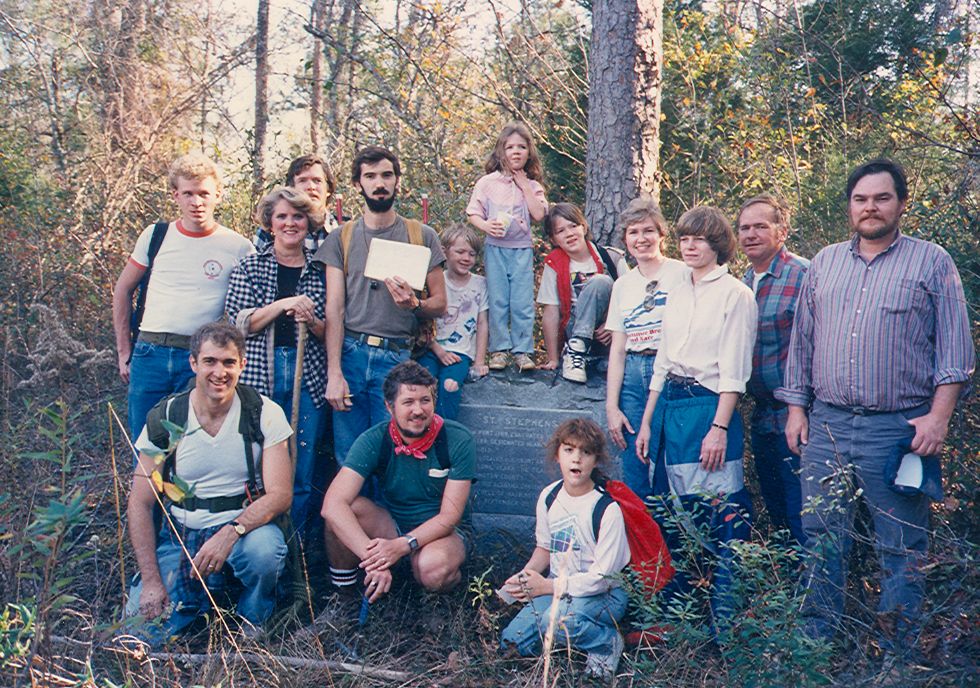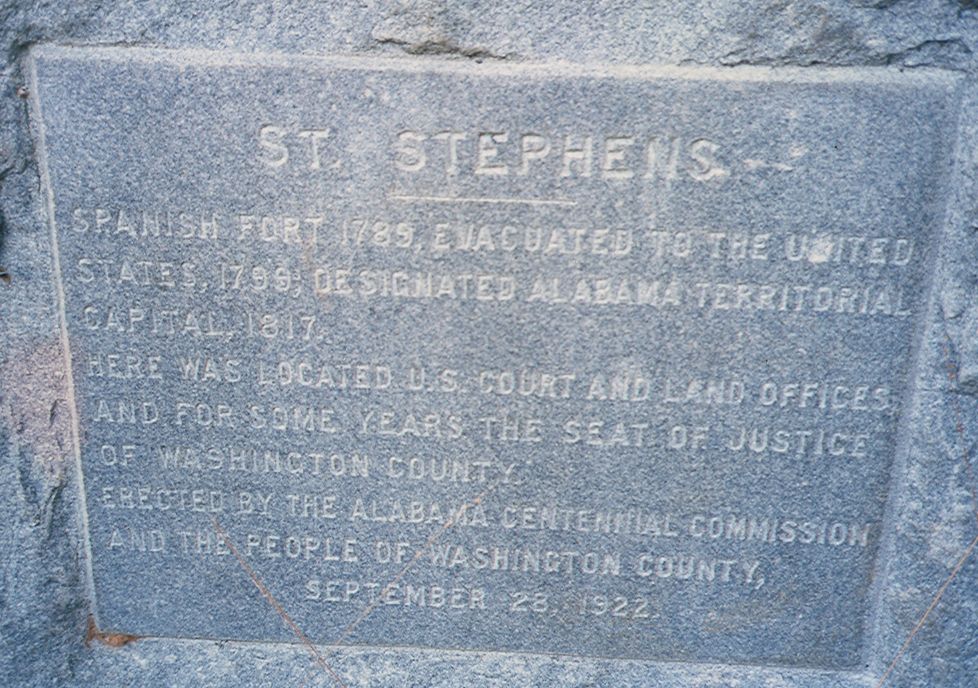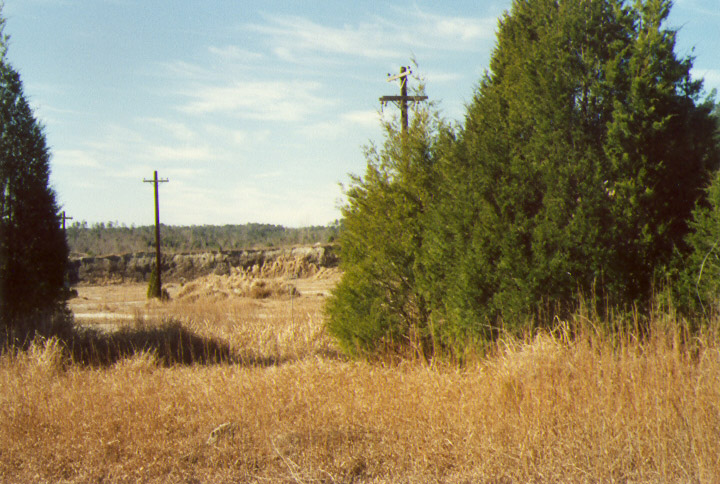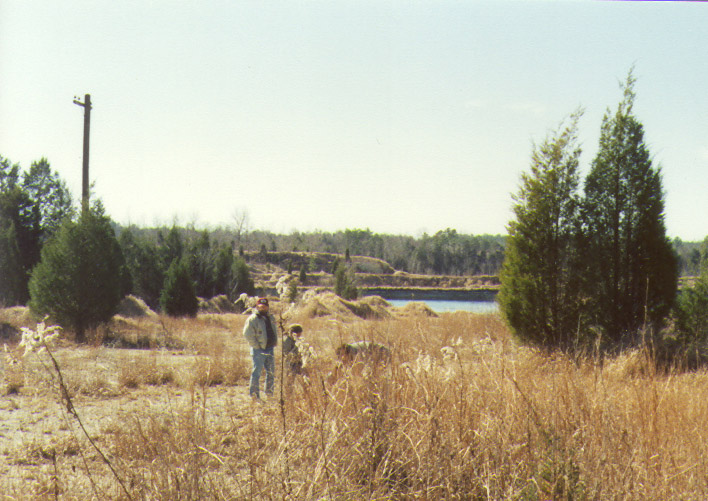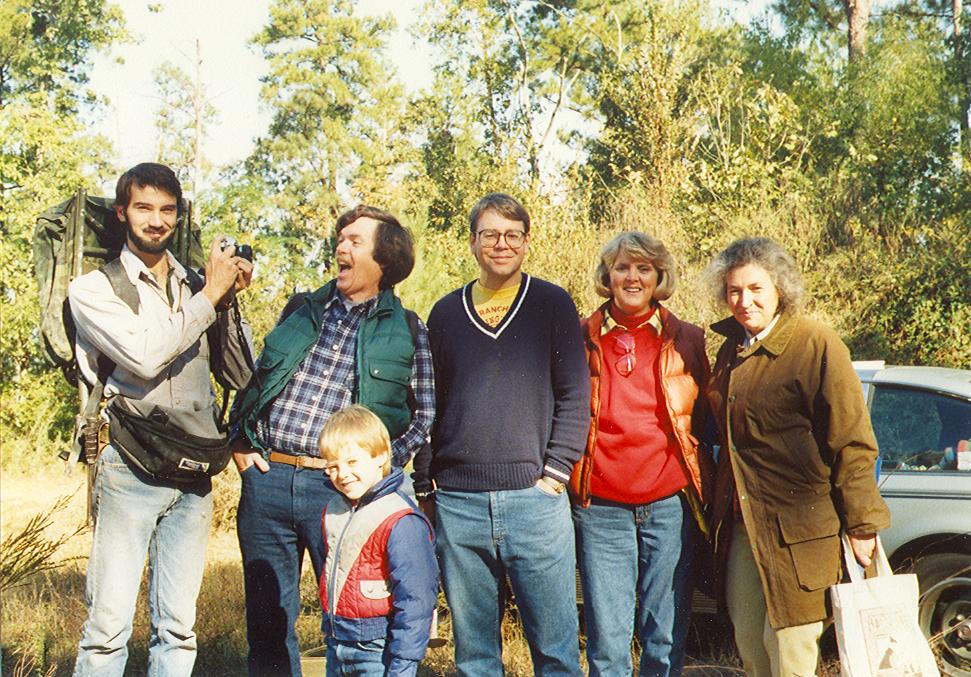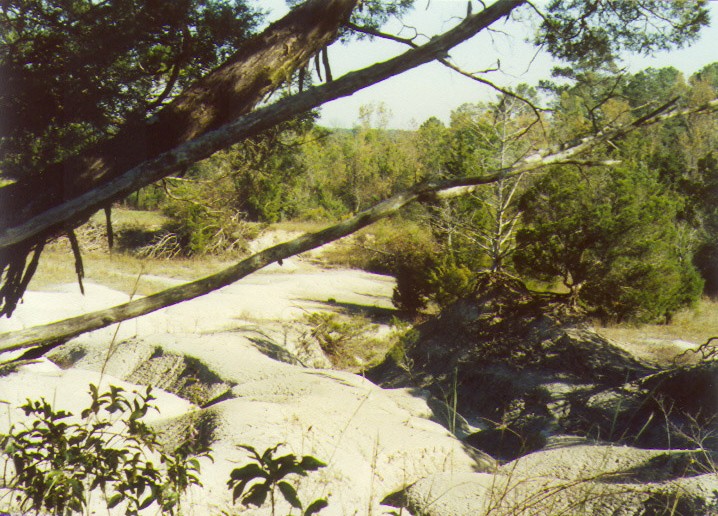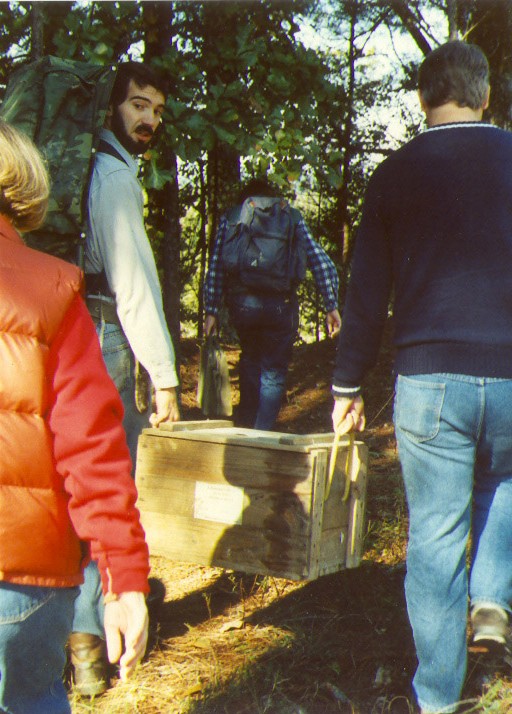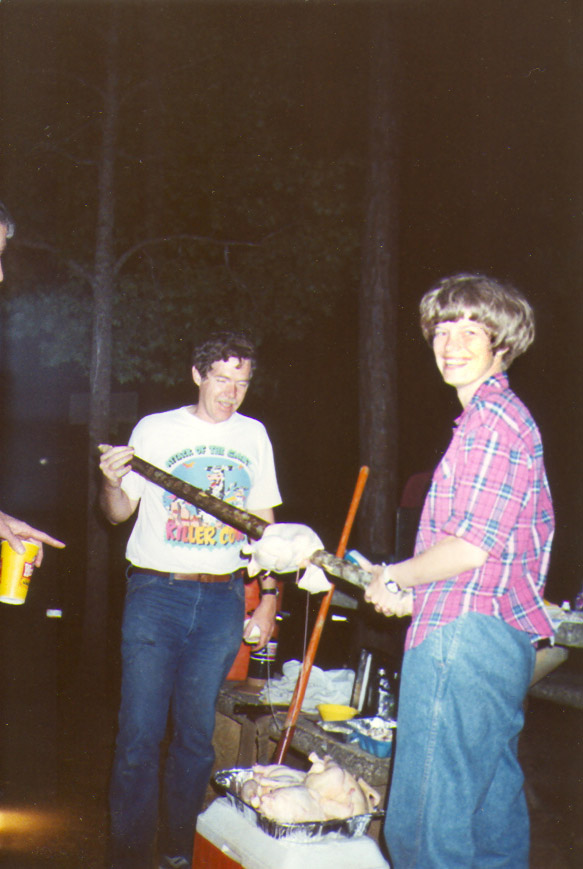Field Trips
BPS Field trips are held monthly for members and guests to learn more about fossils and how to collect in different environments. Members receive an e-mail telling the date, meeting location, and any special tools or requirements. Members may also access the trip information on this website. All trip attendees are required to sign a trip waiver. If you take pictures on a field trip, please consider providing some of your best photos for the web site!
 AN IMPORTANT NOTE - For those of you who collect in Alabama, please be certain you have proper landowner permission to be on the collecting site. The trips you see here were courtesy of some very kind landowners who gave BPS permission to collect on their property. Individuals are not allowed to return to these sites. Landowner relationships are one of the most important parts of being able to collect in Alabama - please do your part . Also, know that virtually every spot of land in Alabama is owned by someone (even if it looks like a public access place), perhaps by a company, or even state or federal agencies. Many times permits or waivers are required by the landowner. It only takes ONE trespasser to shut down a site. Always collect legally and responsibly!
AN IMPORTANT NOTE - For those of you who collect in Alabama, please be certain you have proper landowner permission to be on the collecting site. The trips you see here were courtesy of some very kind landowners who gave BPS permission to collect on their property. Individuals are not allowed to return to these sites. Landowner relationships are one of the most important parts of being able to collect in Alabama - please do your part . Also, know that virtually every spot of land in Alabama is owned by someone (even if it looks like a public access place), perhaps by a company, or even state or federal agencies. Many times permits or waivers are required by the landowner. It only takes ONE trespasser to shut down a site. Always collect legally and responsibly!
2024
2024
March 30, 2024 - Cretaceous - Prentiss County, Mississippi
It was a gorgeous day to go creek hunting in Mississippi with BPS! We were the first ones, all seven members there and had the park to ourselves up till around 3ish. The water that morning was freezing cold, but our bodies acclimated to it, and it helped the temperature shot up to 78 degrees! After 3ish, about 20 people showed up to party with us... got a lil' crowded, but most left after an hour. Pictured is my haul for the day, all were found under the bridge where it has been picked over... the secret is ya gotta dig a lil' deeper! Most of the teeth found were Goblin Shark with maybe a Cretolamna and Squalicorax? A tooth that still is in the matrix with blade showing. Another tooth, has the root attached and looks like a Mosasaur tooth? Pieces of bone, broken Gastropod steinkern, Native American pottery sherds with faint designs on them, and the broken shark teeth found as well. What a gorgeous day to hunt for Cretaceous Period fossils for all!
March 2, 2024 - Fossil Road Show, Jackson, MS
February 24, 2024 - Cretaceous - Union County, Mississippi
February 3, 2024 - Mississippian - Franklin County, Alabama
2023
2023 field trips.
November 18, 2023 - Oligocene - Jasper County, Mississippi
October 28, 2023 - National Fossil Day Exhibit, Tuscaloosa, AL
October 7, 2023 - Cretaceous - Dallas County, Alabama
September 23, 2023 - Cretaceous - Montgomery County, Alabama
August 26, 2023 - Cretaceous - Perry County, Alabama
July 29, 2023 - Oligocene - Jasper County, Mississippi
July 15, 2023 - Cretaceous - Greene County, Alabama
May 20, 2023 - Cretaceous - Montgomery County, AL
April 15, 2023 - Cretaceous - Dallas County, Alabama
March 25, 2023 - Mississippian - Morgan County, Alabama
February 18, 2023 - Cretaceous - Union County, Mississippi
2022
Field trips for 2022.
December 10, 2022 - Mississippian - Morgan County, AL
November 5, 2022 - Mobile County, Alabama
October 22, 2022 - Cretaceous - Perry County, Alabama
October 15, 2022 - Cretaceous - Covington County, Alabama
September 24, 2022 - Cretaceous - Sumter County, Alabama
August 13, 2022 - Cretaceous - Perry County, Alabama
July 23, 2022 - Cretaceous - Montgomery County, Alabama
June 4, 2022 - Cretaceous - Greene County, Alabama
May 14, 2022 - Devonian - St. Clair County, Alabama
April 9, 2022 - Cretaceous - Dallas County, Alabama
March 26, 2022 - Mississippian - Morgan County, Alabama
2021
Field trips for 2021.
November 7, 2021 - Pennsylvanian - Jefferson County, Alabama
September 4, 2021 - Cretaceous - Butler County, Alabama
August 21, 2021 - Cretaceous - Greene County, Alabama
July 10, 2021 - Cretaceous - Montgomery County, Alabama
May 29, 2021 - Cretaceous - Montgomery County, Alabama
2020
2020 Field Trip Reports
November 27, 2020 - Pennsylvanian - Jefferson County, Alabama
September 5, 2020 - Cretaceous - Butler County, Alabama
April 11, 2020 - Pennsylvanian - Jefferson County, Alabama
March 21, 2020 - Pennsylvanian - Jefferson County, AL
February 1, 2020 - Mississippian, Franklin County, Alabama
Trip number 2, for the win! On Saturday, February 1, 2020, eight BPS members and guests met in a parking lot in Russellville to gather permits, supplies and biscuits before returning to the lake where we had collected just a short time ago. The weather was nearly a repeat with gloomy skies and chilly temps and winds but no one was thwarted in the least. We intended to have a leisurely look along the shore that was so forthcoming last time but had a lucky change of direction instead. A long-time friend/member of BPS happened to spot, collecting on the shore, a local fellow he knew who HAD A BOAT and offered to ferry us across the lake to spots that are not as heavily collected. Yes, PLEASE!!! Several whole crinoids, a couple of trilobite pygidium, a possible large trilobite (on its side) and some nice hash slabs were claimed. When our boat captain had to go, he ferried us to the spot we had originally wanted to visit. We found a few blastoids, horn and other coral pieces, Archimedes, brachiopods, a badly broken shark tooth in matrix, and other fun bits of Mississippian fossil treasure. As the day extended and the wind continued, it was decided to make way back to the cars. At one point, it seemed like maybe more collecting would happen but the appeal of warmth and food overcame the need to collect more. That nice Mexican restaurant in Cullman was beckoning – food and conversation were enjoyed by those who stopped. Even though it was the second trip in short succession, it was a very good day!
January 25, 2020 - Mississippian, Franklin County, Alabama
On Saturday, January 25, 2020, several BPS members and guests decided, despite the dismal forecast, to travel to a lake in Franklin county to collect fossils. The selected field trip site is a favorite and did not fail to please. Despite the raw and biting winds and persistent clouds, our group visited 3 sites throughout the day. Though two of the sites were less than forthcoming with fossil finds, one site was a treasure trove of Mississippian fossils. There were lots of crinoid stems, many blastoids (one HUGE one), nice corals (also a HUGE horn coral), a couple of trilobites, some hash plates that were not to be left behind, a stunning arm of a feathered star crinoid and many other nice collectibles. No one really wanted to leave the site but there was one more that we all wanted to visit so that’s what we did – staying until the daylight was all but gone. It was probably the cold and the wind but we all decided to head home instead of having the usual Mexican dinner. Even without the dinner and discussion, it was a good field trip.
2019
For 2019 Field Trip reports
November 16, 2019 - National Fossil Day Exhibit
BPS participated in the National Fossil Day exhibit on the campus of the University of Alabama, in Tuscaloosa.
November 2, 2019 - Cretaceous, Chilton, Al
How many attendees does it take to make a great field trip? Today, the answer was four! Maybe it was the cold weather or maybe it was schedule conflicts but, for the folks who came to Chilton County for the field trip, it was very pleasant!
The water in the creek was a little high and was a LOT COLD but that didn’t stop the BPS members who wanted to look for petrified and permineralized wood specimens. The summer drought has kept several sites from the usual surface material turnover so the larger specimens of petrified wood were not evident. Smaller samples were plentiful and the colors and visible petrified wood grain that were seen were beautiful, as usual. Two spectacular Native American artifacts were found as well.
Some interesting local fauna was seen: a busy beaver (seemingly unconcerned by our presence), a pair of racing kingfishers, following the creek and chattering loudly, and a small flock of guinea fowl by the fishing lake. There were tiny minnows in the creek – wonder how they feel about the temperature change?? In spite of the cooler temps, their location is one of the best. We were fortunate to share their space for the day!!
October 15, 2019 Teacher Workshop, Sumter County, Al
The teacher workshop was held at the University of West Alabama in Livingston this year due to weather issues. It was taught by professors from the University of West Alabama and geologists from the Geological Survey of Alabama. There was a full classroom of students, including several BPS members who attended as students. Other BPS members provided assistance in the workshop and behind the scenes with food preparation and clean-up, and also set up the BPS traveling fossil display.
Although the attendees were confined indoors due to an all-day rain, buckets of material from a Bashi site that is no longer available were provided by one of the instructors. It was chock full of tiny, almost perfect fossils. One of the workshop tasks was for the students to research available fossil documentation to identify their specimens. Students were very engaged and actively involved in the lab project, and no one had to get muddy boots. After the classroom activities were completed, most of the group left to get a behind-the-scenes tour of the Black Belt Museum.
September 28, 2019 - Cretaceous, Perry, Al
On Saturday, September 28, a sizable group of BPS members and guests got together to take advantage of the unseasonably hot weather to visit a favorite creek in Perry County. After a stop at a local burger restaurant that served very tasty biscuits, we caravanned to the site – off-roading a little bit at the end. The dry weather was definitely in our favor there!
This particular creek has historically been loaded with fossils but, due to the recent drought, was a little less forthcoming with fossil finds. Not to be daunted by the circumstances, the trip attendees found deeper water gravel or searched shallower areas for things that might have been previously missed. And, that diligence paid off! Among the finds were 2 (!!) Cretoxyrhina mantelli teeth, other varieties of shark teeth, Ptychodus teeth, oyster shells, a turtle flipper bone, Baculites segments and even some Native American artifacts. This creek always delivers, even after heavy collecting and little material turnover. No wonder it’s a favorite location!
July 27, 2019 Cretaceous, Sumter County, Al
On Saturday, July 27, 2019, a much-anticipated field trip took place. A good sized group of BPS members and guests met at a pre-determined spot in Sumter County and then caravanned to a lovely Cretaceous chalk gully site that has not been surveyed for several years. Because of a tightly-strung barb wire fence, James made a lovely pair of steps (stiles) for getting the group up and over. There was reference made to accessing the gullies “in STYLE”. Funny but not quite time to give up your day job.
Once in the gullies, searchers immediately found mosasaur and shark teeth, turtle bones, fish bones, clam and crab pieces, shrimp burrows, Hamulus tubes, shark, fish and mosasaur vertebra, and more. One member found complete turtle skull which James collected for reconstruction. In another area, James found several pieces of mosasaur bone, jaw and teeth fragments as they were being revealed through the chalk erosion. There were many interesting fossils (and some non-fossils) found while attendees were searching the gullies. The heat was a factor, as it usually is in chalk gullies in the summer, but everyone took breaks and kept hydrated so everyone stayed safe and had fun. Again, I am deeply appreciative of the owners who allowed us access to their property. I hope I speak for everyone when I say it was a great day.
June 15, 2019 - Cretaceous, Dallas and Perry County, Alabama
On Saturday, June 15, 2019, a group of BPS members and guests met at a pre-determined meeting spot for a visit/pit stop/supply gather before heading to the field trip destination. The weather was warm but with slightly lower humidity which was much appreciated. After a short drive to the site and a short hike to the gullies, James gathered everyone for an informative talk about the age, formation and fossils in the gullies, as well as some collecting etiquette.
Fossil collectors spread out across the gullies in hopes of findings nice specimens but the gullies weren’t revealing many finds on this day. Still, not a total shut out, though, with shark teeth, enchodus teeth, fish vertebra, Hamulus tubes, turtle bones, Inoceramus clam fragments, shrimp burrows and other fossils being found. James checked on some of his previously tagged finds and reinforced them for stability where needed.
At noon, the group went to the shed for lunch. It’s always very comfortable there with shade and usually a fresh breeze – just what is needed to recharge the biological batteries! At that point, too, everyone has an opportunity to compare fossil finds and have them identified. Then, after a pleasant break, it’s time to move to the second part of the day – the creek!
Just a short drive away, there’s a lovely, shady creek with Cretaceous fossils that are slightly older than the fossils found in the chalk gullies we’d just visited. There are usually gravel bars by the creek access point but the ever-flowing water moved the gravel from the usual places. James hiked overland to find a sizable gravel bar for the group to screen. Everyone was able to find very nice shark teeth as well as gastropod casts, ammonite and baculite segment casts and other fossil and non-fossil pieces. It is a special place and will remain one of my favorite trips.
May 25, 2019 - Cretaceous Fossils, Butler Co, AL
Weekend trip to a creek in Butler county, Alabama, with several members camping out for the long holiday.
March 30, 2019 - Cretaceous, Chilton County, Alabama
On a very pretty March 30, 2019, a great group of BPS members and guests met at a predetermined spot in Chilton County before a much-needed field trip. On a scouting outing several weeks before, the scouting party ran in to a very chatty and generous landowner. During a pleasant conversation, permission was granted for the group to access his lovely, winding, gravelly creek. On the day of the field trip, the temperature had gone up and the water level had gone down, making creek access not only possible but nearly enjoyable.
The wide gravel bars were covered with small pieces of beautiful permineralized wood. On some, the colors were spectacular but without much detail while others had nice, identifiable wood grain still visible. The majority of pieces were under two or three inches but some very large pieces were found by members wading in deeper parts of the creek. At some point, (not while we were there), a 12-foot permineralized log and a smaller (5’) log was recovered. Goals!!
It’s usually found that time on the water really builds an appetite and this was no exception. A little after mid-day, a lunch break was called and the group set off to the nearby small town where there was a tasty Mexican restaurant. Lunch and conversation were great, as was the trip and day!
March 2, 2019 - Mississippian, Morgan County
On Saturday, March 2, 2019, numerous BPS members and guests traveled through the pouring rain to a fairly close limestone quarry to look for fossils. The rain stopped by the time we reached the rendezvous location but the temperature began to rapidly drop. That did not deter any of the fossil enthusiasts nor did it deter our hosts, thankfully!
After a brief lecture in safety and collection from the quarry host, we headed out. The way to the collection site was slick and muddy but no one got stuck. We parked in the mud, gathered our tools and headed to the spoil piles to find fossils. And, as usual, we were not disappointed. This site has plentiful Mississippian fossils – crinoids, blastoids, bryozoans, brachiopods, and horn corals. Not so plentiful but also present were several genera of shark teeth. We all had our strategies planned for finding the elusive shark teeth; some even proved successful. The quarry chaperones again found nice two Petalodus teeth and maybe more than one BPS member found shark teeth also. And, as an addendum to last year’s trip report, the large, museum-quality slab was collected and moved to the educational building for sharing – well done!!
At about 2:00, we called a halt to the collecting in order to give the indulgent quarry chaperones the rest of their Saturday. A handful of collectors reconvened at the nearby (still colorful) Mexican restaurant for refueling and good conversation before the trip home. This site is so very fun and lucrative for collecting. I know I’ll look forward to the next visit!
February 2, 2019 - Mississippian, Franklin County, Al.
Saturday, Feb. 2, 2019 was an absolutely PERFECT day for a field trip! There were 14 BPS members and guests who got together to spend a much-needed day in the great outdoors looking for fossils. The general area was a lakeshore in Franklin County (lower Bangor limestone formation) and our leaders selected 3 sites from which to collect. The first site, a public boat launch, was fairly void of fossils (except for a nice shark tooth in limestone matrix) but we had heard that the area had been over-collected recently so it was not unexpected. Even with slim fossil findings, the beautiful very spring-like weather had everyone enjoying the hunt.
It was decided to relocate to the site we collected last year so we all packed up and headed over. Thanks to expert navigation by Bob, we made it to the next site quickly and without a hitch – good job, Bob!! And this site proved to be as productive as it was last year. The shore consists of fossil slabs and loose fossils that had washed out of the matrix. Copious crinoid components, bryozoan components, horn corals, bivalves, brachiopods, and blastoids were all found while at this site. A non-fossil but interesting find was a pharyngeal dental plate from a freshwater drum fish. It was very pleasant to sit in the warm sun, with the fresh breeze, sifting and searching the washed-out fossils along the shoreline.
Some called it a great day after this but the remainder of the group ventured on to a road cut several miles away. Still in the Mississippian strata, we found a few blastoids, a brachiopods and even a couple of trilobites or, rather, the infamous “trilo-butts”. One specimen was very nice, being in pristine shape as if newly exposed. By this time, the sun was beginning to set so the remainder of the group wrapped up the hunt and bid the fossil hunt good day. There’s a great Mexican restaurant on Hwy 157 that is convenient to the interstate so the last of the Mohicans stopped there for good food and conversation before heading the rest of the way home. What a great day!
2018
Section for 2018 field trip reports
Oct 16, 2018 - Fossils of the Black Belt Hands On Teacher Workshop
The Annual Fossils of the Black Belt, Hands-On Field Workshop.
Oct 17, 2018 - National Fossil Day Exhibit
BPS participated in the National Fossil Day exhibit on the campus of the University of Alabama, in Tuscaloosa.
September 22, 2018 - Cretaceous Fossils, Dallas and Perry County, Al.
On Saturday, Sept. 22, a nice-sized group of BPS members and guests gathered in anticipation of a gully and creek exploration and discovery. The day was predictably hot but spirits were high – fossils out there, waiting to be found!! After a brief orientation and explanation of potential finds, the group moved into the gullies and began searching. Finds from this site included shark and enchodus teeth, shark and fish vertebrae, shell fragments, worm tubes, shrimp burrows, and ubiquitous, sparkly pyritized organic material (still hard for me to resist). While talking to another member, James spotted a string of shark vertebrae (5-6) on an adjacent gully which he carefully collected and wrapped for transport. Still really spectacular and incredible to me that an animal used those vertebrae to swim around and live his life and here we find them 80 million years later. And, they are still in pretty good shape (considering)!
After a lunch break, we moved to the second site (my personal favorite) which is the very productive creek in the next county. After the hot gullies, a cool wade through a very fossiliferous creek is just what the group likes! Before we made it to the creek, I had the opportunity to meet the owner and express gratitude for his hospitality and generosity in allowing us access to this treasure on his property. He told me he was glad we were enjoying it and that he was also glad that so many fossils were being found and appreciated. Me, too!!
In the creek, my first screen yielded 5 shark teeth! How can this not be a favorite location?!?! James and several others went upstream to find gravel bars and while some stayed at the downstream spot that seemed to be yielding nice and plentiful teeth and bone fragments. Also found were 3 ptychodus teeth of unknown species, 1 Ptychodus polygyrus tooth (way to go LEISA!!!) a piece of Native American pottery (also Leisa) and other interesting fossil, geofact and late hominid artifacts (vintage glass, metal, pottery mostly). If someone leaves this site empty-handed, it’s because he or she chooses to do so! There’s something here for everyone! So, a little before daylight started dimming, the group called a halt to the searching, changed into dry clothes and shoes and bid the lovely creek site good-bye until next time.
August 11, 2018 - Oligocene Fossils, Jasper County, MS
On Saturday, Aug 11, 2018, a small group of BPS members and guests traveled to Jasper County, Mississippi where we were joined by our enthusiastic, knowledgeable host. We were led to a small working lime quarry that featured, from the Oligocene, outcrops of Bucatunna clay, Glendon formation limestone and Marianna limestone. The quarry process yielded specimens from the Mint Spring unit but the unit itself was underwater.
Participants were given some geological facts and some collecting hints and then were free to roam around the quarry. There were large mined limestone boulders all around the quarry that were fossiliferous and a paddock area where the initial crushing of mined slabs took place that contained fossils. There was lots of material that was rinsed by rain run-off from collecting shed’s roof, making some fossils in that area easier to spot.
As collectors spread out and began searching, some of the things collected were: echinoids, scallop shells, tusk shells, forams (coin-sized, single-celled organisms that are still around today), shark and ray teeth, a broken shark vertebra, delicately branching bryozoans, pyritized cone shells, echinoids, pyritized burrows, ghost shrimp claws and lignite. Lots of treasures at this site!
And, if things were exciting enough, James stepped on a shifting boulder which caused him to lose his balance and grip on his pick. Who knew those things would bounce?? And, bounce it did – right into James’s head. Paleontologists are tough and prepared, though. George retrieved his first-aid kit from his truck and applied a nice field dressing which enabled James to make his way back to his truck. We couldn’t pass the up the opportunity to record the event for posterity so group photos were taken with Bloody James front and center. I’d like to nominate that as his new pirate/field name!! After the photos, James was chauffeured to the hospital where his hard head was declared uncracked and the wound sutured, then he was escorted safely home. Unfortunate as it was, I’m glad that he’s okay.
Many thanks to our wonderful host for a great day at a great site! I hope we’ll be invited to Mississippi again!!
June 30, 2018 - Cretaceous Fossils, Dallas and Perry County, Al.
I want to start this trip report with a huge thank you to Tim for escorting the group on the first half of the trip and for patiently answering all of the questions. We couldn’t have done it without you!!!
A baker’s dozen of BPS members and guests, all eager for a field trip, met in Dallas county to collect in chalk gullies. It was suggested that we go to a gully that hasn’t been surveyed in over a year so we were all very eager to get to it. Tim mentioned a few collecting techniques as well as some collecting etiquette, showed an aerial photo of the area to be collected and, after a short hike, we were in the gullies! Almost immediately, Tim found a mosasaur vertebra and a jaw fragment – a very positive sign! As groups do, we spread out to explore and mark interesting finds. There were copious shrimp burrows and strangely hard to resist pyritized organic material (sparkly fish poops), barnacles, some enchodus and shark teeth, a large fragment of a rudist clam, a section of lignite, a previously flagged and recovered fish jaw, and a group of turtle vertebra. It was, of course, blazing hot so, even though the exploration was exciting, no one complained when the lunch break was called. We went to a shady place to pause, refresh, and recharge biological batteries.
For the second site, we went to another privately owned, very productive creek where James joined us. The recent rains had scoured some areas and deposited about 2 vertical feet of sand onto what used to be lovely gravel bars. While some of us tried sifting material in old familiar spots, James scouted upstream and alerted the group that there was a gravel bar that would support all of our attention and exploration. So, after a short hike, we all settled on to the new spot where we were delighted to find large and small, mostly well preserved, shark teeth, gastropod casts, ptychodus teeth, bone bits, a pectoral spine, baculite and ammonite segments and many other fossil and non-fossil finds.
The weather, which is always a gamble this time of year, cooperated all day. It was hot in the gullies but there was a breeze and the bright sun really helps with fossil spotting. Clouds started moving in at noon and thunder was heard in the distance (rained on us as we drove to second site) but it never rained on us in the creek and we never had to leave the creek because of lightning. Based on the smiles and shared finds at the end of the day, I think a great time was had by all!
March 31, 2018 - Mississippian Fossils, Morgan Co, Al
On March 31, thirteen BPS members and guests had the pleasure of visiting a working limestone quarry in Morgan County. The weather was superb, the attendees were enthusiastic and the fossils were everywhere! The fossils found were primarily Mississippian (Paleozoiz era). Many crinoid stems and whole crinoids were found as well as blastoids, bryzoans, brachiopods and corals. There were many nice examples of these fossils and even a "museum quality" slab of whole crinoids that was just too heavy to carry out. Maybe someone will remember to bring the helicopter next time!
The quarry employees who accompanied us were very helpful and even managed to maintain a positive attitude while giving up a part of their Saturday to be with those of us who love to look for fossils. One of the employees was lucky enough to find an elusive shark tooth, as did one of the BPS members. Though we could have stayed much longer, the group ended their searching at 2:00 (as promised) to give the employees the rest of their Saturday afternoon. After the quarry, the group headed to a nearby Mexican restaurant for good food and conversation. It was another very enjoyable field trip on a nearly perfect day!
March 3, 2018 - Fossil Road Show, Jackson, MS
Dr. George Phillips of the Mississippi Museum of Natural Science in Jackson, Mississippi, held the 15th Annual Fossil Road Show, where various groups from around the south were invited to set up exhibits and help identify fossils. The BPS exhibit showcased Alabama fossils, and photos of various BPS fossil digs in Alabama.
The mid-day presentation "An Introduction to the World of Tiny Fossils" was by Dr. Mark Puckett of The University of Southern Mississippi.
There were several professional paleontologists assisting with fossil identification. Dr. David Dockery was quite interested in the collection of tiny shells collected by Vicki on the February 2017 trip to Blue Springs, MS. He is considered the expert on these shells. James Lamb of UWA set up a working 3D printer to show how they are used in replicating fossils. Dr. George Phillips and several other experts were scattered around the venue, helping the public, and enjoying the exhibits.
February 24, 2018 - Mississippian Fossils, Franklin Co, Alabama
For the February field trip, six stalwart fossil hunters ignored the gloomy forecast and journeyed through a storm front to a lovely Franklin County lake site. As it turned out, the weather was perfectly suited to fossil hunting with partly sunny skies, comfortable temperatures and a fresh breeze - no rain the entire day! Accompanied by the sound of waves lapping the shoreline, the amiable group had no trouble finding many different Mississippian fossils: Crinoid stems and several whole crinoids with calyx and arms, bryzoans (Archimedes), blastoids, horn corals, bivalves, unresistable (sizable!) hash slabs and even coral heads at a second site. For a day with a marginal forecast, a good time was had by all.
2017
Section for 2017 BPS Field Trips.
November 11, 2017 - Cretaceous, Dallas County, Alabama
Last trip to the gullies before hunting season starts.
October 17, 2017 Fossil Teacher Workshop
The 2017 Fossil Teacher Workshop held jointly by the University of West Alabama and the Geologic Survey of Alabama In Dallas County, Alabama. Students attended a lecture in the morning, then went into the field to learn about how to find and identify fossils. BPS volunteers provided assistance setting up meals and materials, and support in the field.
October 11, 2017 - National Fossil Day in Tuscaloosa
The Alabama Museum of Natural History hosts an annual National Fossil Day event in the Grand Gallery. BPS set up an exhibit table, as did numerous groups from around the area.
August 26, 2017 - Cretaceous - Dallas County, Alabama
Best day ever for collecting in the gullies - weather was cool, only low 90's, unlike the usual 110 or higher in the shade.
July 22, 2017 - Cretaceous, Dallas County, Alabama
Hot, hot, hot today. Creek was a welcome relief.
May 20, 2017 - Sumter Co, AL
BPS members were invited to participate in a salvage operation at Ft. Tombecbe, where debris and artifacts were falling into the river and being lost to science. A number of BPS members showed up to assist Dr. Dumas. As buckets of debris were funneled down, various members took turns screening to remove the worst of the silt/dirt. The material left in the screens was taken to the lab for a more detailed examination.
March 11, 2017 - Bibb Co, AL
On a rainy Saturday, a number of BPS members braved the weather to collect in a quarry in Bibb County. Numerous brachiopods, a few trilobites, a whole sponge, and bryozoans were found.
2016
Section for 2016 field trip reports.
October 18, 2016 - Fossil Teacher Workshop
The annual Fossil Teacher Workshop held jointly by the University of West Alabama and the Geologic Survey of Alabama was held at a gully site this year, and was set up a bit differently. After the morning lecture, teachers and leaders were divided up into 3 groups, and each group went their own direction to map the stratigraphy of the layers between Point A and Point B. After lunch, and discussion of the exercise, students went to another area to collect fossils. One BPS student, Andrew Barnes, found the bones of an ancient bird, most likely a pterosaur. These are extremely rare, and this excellent find will probably turn out to be the most complete bird specimen found in Alabama. BPS volunteers provided assistance setting up meals and materials, and support in the field.
October 12, 2016 - National Fossil Day in Tuscaloosa
The Alabama Museum of Natural History hosts an annual National Fossil Day event in the Grand Gallery. BPS set up an exhibit table, as did numerous groups from around the area. This year, BPS highlighted photos of the dinosaur dig for the newly named species of hadrosaurid (duck billed dinosaur), Eotrachodon orientalis.
August 20, 2016 - Museum Collections Tour
The BPS August field trip was to the UA museum archives in Tuscaloosa, where we were treated to a behind the scenes look at the collections. Many items are from the 1800's or early 1900's, so their preservation is remarkable. The collections include not only items from Alabama, but from many other states, and around the world.
May 21, 2016 - Cretaceous Fossils, Dallas County, AL
March 5, 2016 - Fossil Road Show, Jackson, MS
BPS members were invited to participate in the 13th Annual "Fossil Road Show" held in Jackson, Mississippi, at the Mississippi Museum of Natural History. BPS showcased Alabama fossils, and set up a display of photos of the dinosaur dig for the newly named "Eotrachodon orientalis" that was found and excavated several years ago by BPS members under the leadership of James Lamb.
Rock and fossil clubs from around the south (mostly Mississippi) set up very interesting exhibits and had fascinating stories to tell about their display items. A number of professional paleontologists and "amateur experts" attended the Fossil Road Show to assist in identifying odd rocks and fossils brought in by members of the public. Thanks to George Phillips for this opportunity for fossil enthusiasts to share their love of fossils!
January 30, 2016 - Mississippian Fossils, Colbert Co, AL
On probably what turned out to be one of the most beautiful days in January, BPS members set off for North Alabama, to a site that hasn't been collected in at least 25 years. Numerous archimedes, blastoids, crinoids, and trilobites were found. With a Mardi Gras cake for a lunch treat, then dinner that evening at a local restaurant, we couldn't have asked for a more pleasant day.
2015
BPS field trips during 2015.
October 21, 2015 - National Fossil Day Exhibit, Smith Hall, Tuscaloosa, AL
The University of Alabama in Tuscaloosa celebrated National Fossil Day at Smith Hall on October 21 - a week late this year - all the paleontologists were attending the annual SVP meeting on National Fossil Day! BPS was invited to set up an exhibit, along with a number of other exhibitors, including the Geologic Survey of Alabama, the Marine Science Club, the Alabama Museum of Natural History (who had spectacular specimens on display), geology classes, and the Evolutionary Studies Club. There were a couple of paleontolgists giving lectures, and the opening of a new exhibit at Smith Hall later that evening.
October 10, 2015 - Mississippian Fossils, Morgan Co, AL
September 26, 2015 - Cretaceous Fossils, Dallas Co, AL
A trip back to the gullies, not as hot as usual, actually very pleasant. A number of shark vertebra and various fish fossils and jaws were found. Several shark teeth and enchodus teeth were also found.
September 6, 2015 - Cretaceous Fossils, Butler Co, AL
Weekend trip to a creek in Butler county, Alabama, with several members camping out for the long holiday.
May 23-24, 2015 - Cretaceous Fossils, Butler County, Alabama
Trip to a creek in Butler county, Alabama. A good turnout for the hot weather. Creek was good for cooling off while hunting fossils.
May 18, 2015 - Mississippian Fossils, Morgan Co, AL
A beautiful Monday morning, with lots of clouds keeping heat to a bearable level. We went to a new area this trip, where several crinoid heads and pieces, blastoids, archimedes, horned and other corals were found. Just after moving to a new collecting location, the bottom dropped out, and though we were quite ok with collecting in the rain, the quarry managers said the roads would get slick, so we had to make an early exit. The group enjoyed lunch at a very interesting Mexican restaurant.
April 25, 2015 - Cretaceous Fossils - Union Co, Mississippi
Report to come.
March 7, 2015 - Fossil Road Show - Mississippi
The Mississippi Museum of Natural History in Jackson presents a "Fossil Road Show" each year. The public is invited to bring their "mystery rocks" and have them identified. It also provides a venue for local groups to showcase their rocks, fossils, and club activities. BPS members Don and Jill Hill set up a fossil exhibit for BPS, and spent the day telling visitors about the Alabama fossils on our exhibit tables, visiting with other like-minded groups, and checking out the numerous exhibits.
2014
November 19, 2014 - Homeschool Hangout
BPS members went to North Shelby Public Library, where they did a presentation to approximately 53 students and their parents. Riley Chandler gave the presentation on Dinosaurs, and Don Hill and Vicki Lais set up the fossil exhibit. There were numerous give-aways available, including posters, postcards, and fossils. One young attendee announced to Ms. Higgins "this was the best Homeschool Hangout, ever!" Thanks to all those who came to hear the talk!
October 19, 2014 - BPS Lecture & Exhibit
BPS traveled to Munford, AL one beautiful Sunday to do a lecture and fossil exhibit for the Alabama Freethought Society.
October 21, 2014 - Teacher Workshop, Dallas Co, AL
The teacher workshop was held near Selma, Alabama this year. It was taught by professors from the University of West Alabama and geologists from the Geological Survey of Alabama. Volunteers from BPS assisted with fossil identification, food preparation, and generally provided assistance as needed. Teachers visited several large outcrops. Fossil finds included oysters, bivalves, snails, mosasaur vertebra, bryozoan, worm tubes, turtle, and shark teeth. A very rare brittle star fossil was found by one of the teachers, which will be housed in a museum.
October 25, 2014 - Dallas Co, AL
October 4, 2014 - Montgomery Co, AL
August 2, 2014, Covington County, AL
April 26, 2014 - St. Clair County, AL
Another trip back to the January location. Several members were psyched up about wanting to find another of the very large crinoid heads. Alas, while we found nice brachiopods and crinoid stems, no more heads were found.
January 25, 2014, St. Clair County, AL - Site 2
After a BBQ stop to warm up and fill our bellies, we proceeded to a site that contains some Frog Mountain formation. Most of our finds at this site were horned corals and trilobites, though many shells and various forms of other coral were also found. Most of the trilobites ended up in the museum.
January 25, 2014, St. Clair County, AL - Site 1
In spite of the freezing cold weather and strong wind, a good group showed up to hunt fossils in an old quarry area, with lots of chert rubble containing mostly brachiopods and crinoids. Sam found a large, quite rare, crinoid head at the site.
2013
Nov 16, 2013 - Cretaceous Fossils - Union Co, Mississippi
October 22, 2013 - Teacher Workshop
The annual Science Teacher Workshop was conducted by the University of West Alabama, and the Geological Survey of Alabama. Volunteer assistance was provided by members of BPS.
August 24, 2013 - Cretaceous Fossils - Dallas Co, AL
July 28, 2013 - Open House at Homewood Library
The "Fossils of Alabama" exhibit was in the Ellenburg Art Gallery at the Homewood Library during the month of July. On Sunday, July 28, BPS hosted an open house for the community. It was a big hit with kids of all ages, who had the opportunity to get up close and personal with fossils, and dig for their own fossils in the sand pit.
July 20, 2013 - Perry & Dallas County, Alabama
After a morning spent collecting in the HOT gullies, we cooled off at lunch in a torrential downpour. Luckily the weather cleared up in time for collecting in a nearby creek, which was delayed a bit while we had to find the access road under all the kudzu! Yes, it's taking over Alabama!
May 4, 2013 - Cretaceous Fossils - Union Co, Mississippi
This trip is always popular in spite of the distance. It's always well worth the drive, and again this year, a number of fossils in very good condition were found.
March 16, 2013 - Tool Making Workshop
This month's "field trip" was to the garage of James Lamb, paleontologist at the University of West Alabama. He presented a hands-on workshop on how to forge your own tools of the correct firmness, hardness, and resiliency. A forge was set up, and various metals including springs were cut to size to make specialty tools. Members also brought store bought chisels and and other tools to temper them so they would last and work properly in the field. It was quite interesting learning to determine temperature and hardness based on the color of the hot metal. Members also had the opportunity to make their own screen for finding all those shark teeth hiding in the creeks! This workshop was a follow-up to the March program, titled "Paleontology on a Budget: Dirty Deeds Done Dirt Cheap".
March 4, 2013 - Fossil Road Show - Mississippi
The Birmingham Paleontological Society participated in the Fossil Road Show, presented yearly by the Mississippi Museum of Natural History in Jackson. It was a very well attended event, and members spent the day telling visitors about the Alabama fossils on our exhibit tables, and visiting other tables to enjoy the fossil show.
January 26, 2013 - Central Alabama
This trip we had quite a few friendly faces show up to enjoy the beautiful day, the scenery and of course help find fossils. Some of the items we found included; brachiopods, crinoid stems, trilobite parts, worm burrows and some interesting rocks that could not be identified. Wish we had more time to explore this site, as its treasures were well hidden.
2012
BPS 2012 field trips.
October 23, 2012 - Teacher Workshop
The annual Science Teacher Workshop was conducted by the University of West Alabama, and the Geological Survey of Alabama. Volunteer assistance was provided by members of BPS.
July 28, 2012 - Cretaceous Fossils, Greene Co, AL
Hot summer day, cold creek, shark teeth, an excellent combination!
June 30, 2012 - Cretaceous Fossils, Pickens County, AL
May 26, 2012 - Cretaceous fossils, Butler County, AL
In May BPS members showed up for a weekend of camping and fossil collecting on a private creek in Butler County. Since our last visit a number of high water events had alterered the creek. Places that had been covered in sand were now bare, with rocky, clay bottoms. Numerous small shark teeth, cochina stone, fish vertebrae, and a few pottery shards were found. One area of clay that was seen appeared to be filled with fossil leaves, with ancient leaves. There is a strong possibility that the woody and leaf material found in the clay layers is Cretaceous age.
April 28-29, 2012 - Washington County, Alabama
BPS members took a weekend trip to Washington County, to an old quarry where they found echinoids, sand dollars, numerous shells, and foraminifera, plus a few scattered shark teeth were found.
March 3-4, 2012 Colbert, Franklin Co., AL
What a wonderful two day trip we had in March. The weather was sunny; light jacket weather, just right for being outside. Saturday we were at a quarry in Colbert County, and Sunday we were at a lake in Franklin County. The spoil pods were massive and extremely steep making them difficult to navigate. But being the adventureous spirits that we are, we conquered the spires and were greatly rewarded for our efforts. Among the spoils we found, Crinoids, blastoids, burrows, a few very tiny shark teeth, fenestra, hound coral, calcite crystals, stigmaria and whole rocks covered with brachiapods.
February 4, 2012 - Devonian Fossils-St.Clair County, Al.
BPS went to St. Clair County this month and found various coral, including horned corals, and a number of trilobites. Shells were also found, including a few bivalves. It was an excellent collecting day, the temp was cool but not overly so and the humidity was perfect.
2011
December 3, 2011 - Pennsylvanian fossils, Bibb Co, Alabama
October 18, 2011 - UWA Teacher Workshop - Sumter Co. AL
Tuesday, October 18, 2011, educators from all over Alabama and even a few from neighboring states got together in Livingston for the 13th Fossils of the Black Belt teacher workshop. The first workshop was held in 1997, and was organized by the late Richard Thurn of the University of West Alabama and David Kopaska-Merkel and Andrew K. Rindsberg, then both at the Geological Survey of Alabama. Over the years, at least 250 teachers have been exposed to the Cretaceous rocks and fossils of west Alabama. The workshops are currently supported by, in addition to the two founding organizations, the Birmingham Paleontological Society, the Alabama Geological Society, Discovering Alabama, and the Black Belt Museum.
This year, 25 teachers had registered for 26 slots. At the last minute, three were unable to attend and one more was added, for a total of 23 attendees. The weather was excellent. There were seven instructors in the field, which meant that every participant had access to knowledgeable advice and assistance. Everyone returned to the lab smiling, having had a great time and having found good fossils. Several mosasaur vertebrae were found, including linked vertebrae constituting part of a tail with who knows what else just beneath the surface; a possibly significant find. James Lamb’s backup shark-tooth-filled mud, 15 gallons of material collected just in case we had rain, was extremely popular. It came just in time, as we have finally given away almost the last of the fossils generously donated to the Geological Survey of Alabama education program over the years by Don Williams.
We are always looking for ways to improve the workshop, and received several suggestions this year from participants. Most people said they wanted more time in the field! Several people were not able to attend because of lack of funds. Funding cuts in Alabama's education budget make it harder every year for teachers to participate in workshops like this. We plan to look into finding a way to provide scholarships to teachers who don't have financial support from their school systems.
Will there be a fossil workshop in 2012? Count on it! Eight people who wanted to attend this year were unable to do so for one reason or another. And every year we hear from teachers who have just started teaching or just found out about the workshop.
--Dr. David C. Kopaska-Merkel
October 22-23, 2011 - Eocene Fossils - Clarke, Rankin, Madison, & Hinds Counties, MS
BPS members took a long weekend and on Saturday the group collected in 3 Eocene sites in Mississippi, finding echinoids, sand dollars, coral, worm tubes, crabs, oyster, gastropods, fish vertebra, and one shark vertebra. Then on Sunday the group visited a couple of tourist locations - the Mississippi Petrified Forest in Flora, MS, and the Mississippi Museum of Natural History in Jackson, MS.
Photo links:
Stop 1 - Chickasawhay River in Clarke County, MS
Stop 2 - Roadcut in Clarke County, MS
Stop 3 - Construction site in Rankin County, MS
Stop 4 - Mississippi Petrified Forest - Flora, Madison Co, MS
Stop 5 - Mississippi Museum of Natural History - Jackson, Hinds Co, MS
2011-10-22 Stop 1
Stop 1 - Chickasawhay River in Clarke County, MS
Photo links:
Stop 2 - Roadcut in Clarke County, MS
Stop 3 - Construction site in Rankin County, MS
Stop 4 - Mississippi Petrified Forest - Flora, Madison Co, MS
Stop 5 - Mississippi Museum of Natural History - Jackson, Hinds Co, MS
2011-10-22 Stop 2
2011-10-22 Stop 3
Stop 3 - Construction site in Rankin County, MS
Photo links:
Stop 1 - Chickasawhay River in Clarke County, MS
Stop 2 - Roadcut in Clarke County, MS
Stop 4 - Mississippi Petrified Forest - Flora, Madison Co, MS
Stop 5 - Mississippi Museum of Natural History - Jackson, Hinds Co, MS
2011-10-22 Stop 4
Stop 4 - Mississippi Petrified Forest - Flora, Madison Co, MS
Photo links:
Stop 1 - Chickasawhay River in Clarke County, MS
Stop 2 - Roadcut in Clarke County, MS
Stop 3 - Construction site in Rankin County, MS
Stop 5 - Mississippi Museum of Natural History - Jackson, Hinds Co, MS
2011-10-22 Stop 5
Stop 5 - Mississippi Museum of Natural History - Jackson, Hinds Co, MS
Photo links:
Stop 1 - Chickasawhay River in Clarke County, MS
Stop 2 - Roadcut in Clarke County, MS
Stop 3 - Construction site in Rankin County, MS
Stop 4 - Mississippi Petrified Forest - Flora, Madison Co, MS
July 30, 2011 - Cretaceous Fossils - Dallas Co, AL
Report to come... Photos now posted.
May 28-29, 2011 - Cretaceous Fossils - Butler Co, AL
Report to come... Photos now posted.
May 7, 2011 - Mississippian Fossils, Morgan Co, AL
Report to come... Photos now posted.
April 2, 2011 - Cretaceous Fossils, Union Co, MS
Report to come...
March 5, 2011 - Mississippian Fossils, Franklin Co, AL
Okay, how many of you let a 90% chance of rain stop you from coming on the field trip?
Six of us showed up to hunt fossils in spite of the predictions of 90% rain over the entire south. The weather report was correct this time! It didn't rain on the way there, lulling us into believing it would hold off most of the day.
With such a small group we decided to go to a location where we have not been in several years. This location has a very poor road with large potholes, not much room to park, and a short hike to get to the lake.
On the way to the first site, we got quite a scare. The sky lit up like a fireball, and there was an extremely loud explosion, like dynamite. Later as we headed to another site, we saw a huge oak tree that must have been 3-4 ft in diameter, literally blown to pieces, and they had recently removed the large limbs from the road. It looked like someone had blown it up. It was about a mile from where we had heard the explosion.
After minor sprinkles and even periods of no rain at all, the minute we got to site one, the rain started. We tried to wait it out to no avail. The rain was as determined as we were. However, everyone was in a good mood and ready to collect fossils, so we donned our rain suits, ponchos, and rubber boots, grabbed our umbrellas, and walked down to the lake in the rain. This location has a lot more mud than what we are accustomed to. The intent was to avoid one of the more muddy roadside cuts, but we managed to get just as muddy here as we would have at the other location. We found a number of rocks with weathered out fossils showing extremely clear detail, and the first rock Ann picked up contained a trilobite.
At site two we found numerous horned corals, the bryozoan Archimedes and its filter feeding structures (fenestrae), crinoid stems, a trilobite, blastoids, and tiny shells, and of course the ever present rocks covered with fossils.
After that we decided to proceed to another site along the lake where large corals have been found in the past. We also found a complete crinoid head and legs, which was the find of the day. Around five o'clock as the rain had still not let up and a chill wind started blowing, we decided it was time to head home. Most of us decided to stop at a local steak house for dinner where we dried out, warmed up, and filled our bellies.
January 22, 2011 - Devonian Fossils - St. Clair County, AL
BPS members headed to St. Clair County this month to search for Devonian fossils. With the past week having numerous days below freezing, we were hoping the predicted 48 degrees would be bearable. It actually turned out to be a very pleasant sunny day. After a too-long hiatus from fossil trips, we had members showing up from Huntsville, Birmingham, Mobile, Anniston, Montgomery, and Georgia to spend the day outside digging in the dirt. Quite literally! We had been asked to collect soil samples for Jun Ebersole so the first order of business was to collect baggies of dirt. Each person had a card with a number and their name on it and positioned themselves from top to bottom on the hillside. Their chosen spot was where they collected their soil sample.
After the soil samples were collected and stored away safely, we started searching for fossils. Though we haven't been to this site in several years, it was not weathered as much as we'd like. In fact, it's getting grown over, and eventually will be "reclaimed" by mother nature. Weathering out of the red dirt were numerous bits of corals and sponges, with only a few whole specimens. Fossils were much more difficult to find on this trip, and most of what we found on the surface were worn and broken. In one area, a few impressions of archimedes and crinoids in Ft. Payne chert were found. Some of rocks in the area are light yellow sandstone or siltstone, and split rather easily. Inside are mostly brachiopods and trilobites. Normally we find only the trilobite cephalon (head) at this location, but this time we also found several pygidiums (tail). On a large limestone boulder high on the mountain, and very difficult to reach, is the impression of a gastropod and "something else".
2010
September and October, 2010 - Cretaceous Fossils - Dallas Co, AL
During September and early October, BPS members had several field trips to find fossils and help excavate in the Cretaceous gullies of Dallas County. Over a period of several days (September 19, 24, 26, October 1, 2, 3) a turtle and mosasaur were excavated. Also, a number of other fossils were found, including shark teeth, upper and lower Xiphactinus fish jaw with teeth, a variety of shells, shark coprolite, shark vertebra, fish vertebra, and enchodus teeth. Most of the important finds will be used in exhibits at the (now in development) Black Belt Museum in Livingston.
Each field trip is similar to a class, in that participants are taught proper collecting techniques, how to find and identify fossils, and how to excavate fragile fossils out of the ground intact and make plaster jackets.
July 31, 2010 - Cretaceous Fossils, Dallas and Perry Co, AL
BPS members defied the extreme heat and went to south Alabama to assist in collecting fossils and close down the dig site until the weather cools off some. A number of mosasaur bones were found, and a mosasaur jaw still containing a tooth. Other fossils found included shark teeth, shark vertebra, various varieties of fish, turtle bone, and enchodus jaw and teeth. The thermometer read 110 degrees, so after lunch under a covered pavilion, we headed to a nearby creek to cool down. The creek yielded numerous shark teeth, brachiopods, and a few cephalopod pieces.
-
Mosasaur vertebra
-
Mosasaur jawbone with tooth sockets clearly showing.
-
Shipworm
-
View of the gully. These gullies are huge!
-
Bob and James haul out the tarps that were protecting the dig site and providing shade.
-
Leah and Jan cooling off at lunch.
-
Shark teeth and gastropod
-
Collecting shark teeth in the creek
Pages
June 19, 2010 - Eocene Fossils, Covington Co, AL
This month the group went to a shallow river in Covington Co, AL we haven't visited for a long time. Our memory of this site is that the pickings were better in years past. It took a while to find fossils. We don't dig, as the landowner has requested "no digging", but most of our honey holes were empty, possibly from the recent rainy seasons or over-collecting by commercial collectors. Whatever the reason, everyone left with a small handful of shark teeth, and we had a great day visiting and keeping cool in the river. Jan and Lea decided to arrive at the site via kayak, making for an interesting upriver paddle.
May 29, 2010 - Cretaceous Fossils, Union Co, MS
This month's trip was to northern Mississippi, where we collected in the Coon Creek formation. The area was once a bay in the Gulf of Mexico. This is a Late Cretaceous site, where we found numerous turritella (most in an extremely fragile condition), and even more crab and lobster parts, mostly looking like they had exploded, though several intact "bellies" and a couple of claws were found. The finds of the day had to be the mosasaur tooth found by Don H., and the fragment of a duck-billed dinosaur (hadrosaur) tooth found by David. This site is being studied by George Phillips, paleontologist at the Mississippi Museum of Natural Science, who will be reviewing our finds for anything of scientific interest. The hadrosaur tooth fragment has already been sent to him for inclusion in his research.
Don C. had this to say about his collecting efforts for the day: "I'm very happy with my haul of crabs and shrimp (7 different genera and species in all), plus I got quite a few gastropods and bivalves, a squashed nautilus, a good piece of an ammonite with sutures, an Enchodus fang, and a small shark tooth. I brought home a bag of clay to sift and I'm still finding all manner of micro goodies too."
The diehards of the group had an evening of BBQ at a local restaurant, and as everyone headed home, two additional sites were scouted, neither of which appeared promising.
April 17, 2010 - Cretaceous and Tertiary Fossils, Butler Co, AL
Our annual trip to Butler County turned up several shark teeth, fish vertebra, ray teeth, turritella in cochina, and a number of pottery pieces. The day was spent roaming the creek, playing in the sand and creek, or just hanging out sunbathing. Several members camped out for the weekend on the bald, where more fossils were found.
April 3, 2010 - Pennsylvanian Fossils, Shelby Co. AL
On a chilly rainy day a few BPS members braved the weather to view a spectacular waterfall in Shelby County. After the waterfall hike another stop was made to find some wonderful plant material.
February 27, 2010 - Mississippian Fossils, Colbert and Franklin Co, AL
There must have been a lot of people concerned about the weather report, which predicted snow and ice in North Alabama. Only 5 of us showed up, but what a wonderful day it turned out to be. It stayed cold in Birmingham, but the weather at the collecting sites warmed up to the 50's, and Don remarked we better tell the field trip planner thanks for picking such a great day! The smaller number of people meant we could stay at each location longer, and it really paid off. We found numerous crinoid stems, several varieties of blastoids, part of a straight cephalopod, brachiopods of all sizes, trilobites, and lots of horned coral.
January 16-17, 2010 - Cambrian Fossils, Cherokee Co, AL
This weekend trip to northeast Alabama was delayed due to several weeks of below freezing weather. When the day arrived, a high percent of rain was predicted. However, being the troopers we are, and seeing that it has been so long since we've been on a field trip, 21 of us showed up anyhow! Amazingly, the weather cooperated. A light drizzle first thing in the morning that cleared up by mid-day, and the temperature rose to 50. We were excited, and Bob had brought his boat so we could go to our favorite site on the lake. We got to our first collecting location, and began scrounging through the pebbles. Nothing. More looking. Still nothing. This is the first time in many years that we have had such poor collecting at this site, and since we missed coming for the past 2 years, we thought more would have been washed in. Not. So, off we went to a different site that the group hasn't been to. A few of us scouted it 3 years ago and found a few small trilobites. Pickings were slim at this site too. Yes, there was plenty of Conasauga shale, but it was low in trilobites. Ok. Let's go to the main lake site. We showed up there fully intending to put the boat in first. However, the weeks of below freezing weather had frozen the lake! Never had we seen it like this. Several members spent some time skipping rocks on the frozen lake, to see where the ice ended. It didn't. Every rock thrown sat on top of the frozen lake. So we resigned ourselves to collecting near the boat ramp, and saving the other site for another trip.
Eight members stayed in a cabin overnight, playing games, watching tv, and generally having a good time. The next morning, the lake had thawed, but we decided not to go out without the bulk of the group being there. After about an hour of collecting along the lakeshore, we headed home.
Several nice trilobite pieces were found, but the collecting was sparse at all the locations where we stopped. Whether this area played out due to our once a year collecting, or the site is frequently collected by locals and other people who found out about it is unknown, but it looks as if this site may be on the back burner for a while.
Photos courtesy Claire Smith, Ted Nicolle, and Vicki Lais
-
BPS members tend to show up regardless of weather . . .
-
First stop of the day to search for brooksella.
-
Collecting along the lakeshore, in hopes of finding a brooksella.
-
Collecting along the lake shore.
-
Tiny trilobites were found in the Conasauga shale.
-
Don and Don, with Noah in the background.
-
Lines in the rock etched out by snails, probably recent.
-
Snail tracks.
Pages
2009
February 7 and 8, 2009 Mississippian Fossils, NW Alabama, various sites
BPS members gathered in NW Alabama for a full weekend field-trip February 7 and 8. We couldn't have begged, pleaded or prayed for better weather! Since we were slogging through a great deal of mud culling for Mississippian fossils, the unseasonal warmth was a treat! Lots of conglomerate "collections" were found, featuring the remains of archimedes, brachiopods and crinoids. Some blastoids were found, and Bob found a beautiful starfish on the scouting trip last week. We visited several sites, met some nice folks who were curious about what all those adults were doing, crawling around on their hands and knees etc.
Saturday night brought camping in the Cane Creek Canyon Preserve. This entire area is owned and beautifully-maintained by Jim and Fay Lacefield. They welcome guests and keep clean (and welcome) rest-areas and picnic areas featuring well-stocked little privies and fresh drinking-water. On Sunday, we were treated to a guided tour by Jim and heart-stopping rides around the trails on a six-wheeler with Fay. Makes the biggest roller-coaster you've ever been on seem tame! There are several overhanging caves in the area and Jim gave us a great overview of the tribes who made them their living-areas at various times of the year. We then went on to the creek where Jim talked about the geology of the rocks all around, how they came to be there and discussed the flora that was starting to bloom. At least one variety manages to survive the deers' grazing by appearing on the tops of some of the boulders that the animals cannot reach.
BPS owes a HUGE THANK-YOU to Jim and Fay for a fascinating day in a beautiful setting. IF you wish to visit, be sure and call ahead and check in with the Lacefields and PLEASE clean up behind yourselves, making sure that campfires are completely out and pack OUT anything you packed IN!
Sunday photos taken at Cane Creek Canyon Preserve.
Saturday photos of fossil trip are below.
Photos courtesy Claire Smith, Jaimie Hill and Vicki Lais.
February 8, 2009 - Cane Creek Canyon Preserve, Colbert Co, AL
Sunday was spent hiking in the Cane Creek Canyon Preserve. Pictures are below.
Photos courtesy Nancy Lea and Vicki Lais.
Return to the Saturday fossil field trip in Franklin County, Alabama.
February 21, 2009 - Pennsylvanian Fossils, Bibb Co, AL
Well, sometimes things happen unexpectedly. A call on Monday to the landowner to schedule a field trip for March. Well, actually he said, the site is ready to be reclaimed. Next week. Can you come this Saturday? Well . . . . . Sure we can! A hastily planned trip to Bibb County, Alabama caught many members by surprise. We came here a couple of years ago, but our collecting area was severely restricted due to ongoing construction. This time - no restrictions - we had access to the entire site. Those who could come found beautiful plant material at this old coal washing facility. Numerous specimens of lepidodendron, calamites, some delicate ferns and numerous other fossil plants were found. Afterwards a quick trip to the Cahaba River where the Cahaba Lilies bloom in May, then to a beehive oven location. Our last stop of the day was to collect graptolites.
Photos courtesy Bill Fowler and Vicki Lais
April 11, 2009 - Mississippian Fossils, Morgan Co, AL
On 11 April, BPS visited a quarry in Morgan county. After signing in and filling out all the release forms we were escorted to the dig site. The quarry contains limestone, and the fossils found were primarily from the Mississippian Period of the Paleozoic Era.
The Mississipian Period is known as the "Age of Crinoids". This period spanned approximately 360-320 million years. It was named for the exposed rocks in the Mississippian River valley near St. Louis by geologist Alexander Winchell in 1870. The quarry visited was mining limestone. Limestone is a sedimentary rock composed largely of the mineral calcite (calcium carbonate: CaCO3). Shells and other marine byproducts settle on the ocean floor and are compressed for millions of years as layer by layer of the calcite are depostited. Limestone also contains variable amounts of silica, chert, sand, silt and other impurities. It can be crystalline, clastic (composed of fragments of other rocks), granular or massive depending on the method of formation.

We had an excellent turn out. It turned a bit cold, but that didn’t dampen the spirits of the members.

After being briefed by the quarry escorts, who remained with us, we began to spread out and search for treasures. Most of the material found was in limestone rock, and some was very difficult to extract without heavy chisels and hammers.

Several Blastoids (Pentremites pyriformise and Pentremites godoni) were found by most on top of the ground in small washes. Blastoids originated in the Ordovician period and reached their greatest diversity in the Mississippian period. The picture below shows the main body or theca of the blastoids. It was protected by a series of interlocking plates made from calcium carbonate. This was attached to a stalk, which in turn was anchored to the sea floor by a holdfast. Similar to the Crinoid.

Most of the blastoids were found on the surface in small washes. Here Ron is praying to the fossil gods to show him a blastoid as everyone else had found them and he had not.

There were many occurrences of Bryozoans at the site. Several nice finds were made. Below is a picture of an Archimedes, and Fenestella Bryozoan. Fenestella bryozoa colonies, are lace-like in construction, and the individual bryozoan animals lived in microscopic tubes or pores on the lace branches. The fenestrate bryozoan colony called Archimedes lived attached to a screw-shaped support structure. Most often only the support structure is found. Bryozoans have existed for hundreds of millions of years (since the early Ordovician) and are common fossils in marine deposits. Thousands of Byrozoans species exist today all over the world.

Becky found an unusual item. James Lamb ( Paleontologist at McWane Science Center in Birmingham, Alabama) was called over to help identify it. The find turned out to be a nice Petalodus (Petalodontidae (Petalodontiformes) sharks tooth. It took over an hour and a half to extract it from the limestone it was embedded in. Becky donated the specimen to the McWane Center museum.

Here's a closer look at the Petalodus tooth. Petalodus sharks were estimated to reach a length of about 2 meters. Their basic diet consisted of sponges and other invertebrates.

A few Brachiopods were also found. Brachiopods are two valved animals, similar to the bivalves today.
Most Brachiopods were attached to the bottom by means of a fleshy stalk and were not free swimming like many of the bivalves today. The Brachiopod in this picture (spiriferina transversa) was 4 cm across.

Not just fossils were found. Here's one of many calcite crystal clusters that were also found. Incidently these crystals are simply the crystalline form of limestone (CaCo3).

Many Crinoid and Blastoid stem parts were found on the surface of the collecting area.

Several specimens of horn coral were also found. Horn corals are from the extinct order of corals called Rugosa. Rugosa means wrinkled. The outside of these corals have a wrinkled appearance. Horn Coral grows in a long cone shape like a bull’s horn. The fossil is the skeleton of the coral animal or polyp. The animal lived at the top of the cone. They had many tentacles sticking out to gather food. The tentacles gave the horn coral a flower like appearance.


Several outcroppings of other coral were also found. The species of coral has not yet been identified.

Leisa found a small trilobite. The species is not known at this time. Tiribites are found in many other counties in Alabama. In the geologic time scale, they came to dominate the seas around 540 million years ago and became extinct around 245 million years ago.

Here Martha shows her prize of a limestone slab containing numerous fossils.

Here's a closeup of the limestone slab containing a collection of many different fossils including crinoiod, blastoid, stem parts, archimedes and various other bryozoans.

Don and Jamie discuss their finds near where many blastoids had been picked up.

Pictures courtesy Vicki Lais and Ron Beerman
April 11, 2009 - Mississippian Fossils, Morgan Co, AL, Part 2
Part 2 - Trip Photos (this page)
This Mississippian limestone quarry yielded a variety of fossils, including crinoids, blastoids, a very ancient shark tooth by the name Petalodus, archimedes, bryozoans, brachiopods, Rugosa and other corals, and even part of a trilobite.
(Photos courtesy Ron Beerman, Becky Guthrie, and Vicki Lais)
May 16, 2009 - Cretaceous Fossils, Sumter County, AL
Old hands as well as new joined up early on Saturday morning for a trip to some great Cretaceous gully sites in West Alabama. Dr. John Hall and Dr. Andy Rindsberg, both from the University of West Alabama, led us down chalk roads (more later on the chalk roads!) and through the woods to the bottom of the ancient ocean. The landscape looked like the remains of an ancient clam-bake! Literally MILLIONS of fossilized shells including exogyra, various clams, shark and sawfish teeth, crab claws, oyster shells, echinoid spines, and at least one small shark vertebra. One of our teen-aged guests, Megan, discovered a large Rudist clam. This was only her second trip with BPS and her find was sufficiently rare from this location that Dr. Hall claimed it for the nascent Black Belt Museum in Livingston. Her name will remain with it and she will get a letter of recognition.
Many who drove up from Birmingham were watching the weather, and at least one member called to see if the trip had been cancelled. Cancelled??? Hey, this is BPS, guys! But later in the day rumbling could be heard and the clouds looked angry. The landowner sent word that the rain was about an hour away, so we started moseying back to the cars. Oops, not fast enough, we were drenched by the time we made it back to the field. So. How many people remember James Lamb telling us over and over - GET OUT OF THE GULLIES BEFORE IT STARTS RAINING??? Let's see. . . chalk . . clay . . water . . slick . . stuck in mud. Yeah, right. At least 3 vehicles had to be pushed out, um, slid out, perhaps? Needless to say, we were all pumped up with adrenaline by the time we made it back up the long winding road to the top of the hill! An exciting trip we will be discussing for years to come!
Edited by Vicki Lais
Pictures courtesy Nancy Lea, Larry Herr, Vicki Lais
-
Here's the whole gang, ready for a day of collecting. We have to drive quite a ways through the woods.
-
We've arrived at the field next to the gullies, where Dr. John Hall gives us an overview of the ecology and geology of the area. This area is being transformed into prairie with careful culling and burning. He also explains collecting techniques to follow so fragile fossils aren't damaged.
-
Our first sighting of the gullies. BPS has never visited this set of gullies, and they have rarely been collected, so we are anxious to start searching.
-
As many people know, BPS got its beginning with the Red Mountain Museum in 1984, where Gorden Bell, James Lamb and Scott Brande trained their first group of amateurs on how to assist professional paleontologists in the field. Larry joined us at the meeting location, modeling an ancient Leaping Lizards T-shirt from the old Red Mountain Museum. Unfortunately, he had to leave early and missed all the fun.
-
In many areas, the ground is covered with large shells.
-
Complete exogyra in place, both halves.
-
Hundreds of shells on the gully floor.
-
View towards the far end of the first gully where most of the shark teeth and sawfish teeth were found. Where is everyone? They all scattered to the many gullies in the area, and so most did not get photos taken.
Pages
June 13-14, 2009 - Artifacts, Butler Co, AL
Since many BPS club members are interested in both Paleontology and Archeology, it seemed important to find out a little bit about the culture which might have made the pottery chards which many found in the creek on the June 2009 BPS field trip.
My first thoughts were that it might have been the Creeks. Actually they originally called themselves the Isti or Istichata, but began to identify themselves as the Muskogee soon after Europeans arrived. Early settlers and traders called them Creeks after the Ocmulgee Creek in Georgia. When the first Spanish explorers came into this area in the early 1500's, The Muskogee were more of a loose confederation of small tribes, living in small villages along lakes and rivers. There are still Muskogee living in the area today.
While researching the information available on these Indians, a friend mentioned an archeologist by the name of Ned Jenkins near Wetumpka, Alabama. He is extremely knowledgeable about Alabama Indians. I decided to send a couple pictures of the pottery chards found, and also my write up on the Muskogee Indians.
Imagine my surprise when he said that the chards came from what archeologists call the Weeden Island Culture which existed between 800 – 1100 A.D. This pre-dates the Muskogee ! So let’s travel back a little bit in time around where the pottery chards were found. Perhaps 1300 years ago. It is sometimes referred to as the Woodland Period of Pre-history. The people of the Weeden Island culture had a broad-based economy that included hunting, fishing, gathering, and, probably, gardening.
There is growing evidence that they cultivated such native crops as sunflower, gourds, marsh elder, and knotweed, and possibly non-native plants including corn and beans. During the later part of the woodland period there is evidence of bow and arrow technology, and arrowheads used for hunting have been found. Not too long ago in Pinellas County, Florida, a 39 foot pine canoe dating back to approximately 1100 years ago was found, indicating these Indians had those skills also.
Late Weeden Island culture made complicated, stamped pottery, characterized by a design impressed on the surface of unfired pots with a wooden or clay paddle.
This culture eventually became part of the Mississippian culture which is where the Muskogee originated.
More about the fossils found on the trip.
--Photos courtesy Claire Smith and Vicki Lais
June 13-14, 2009 - Cretaceous and Tertiary Fossils, Butler Co, AL
This month the group traveled to Butler County, Alabama, to a sandy creek which runs through early Tertiary and late Cretaceous material. The weather was overcast on Saturday, making collecting very pleasant. A number of members camped out for the weekend. Sunday the sun was out, and it made us grateful for the cloud cover on Saturday!
The sandy beaches and gravel areas yielded up shark teeth, ray teeth, some nautiloid sections, and recent mammal material which was sometimes as fasinating as the fossils.
We had quite a few young people on the trip who enjoyed both the fossil collecting and swimming, splashing and running in the shallow creek. There is an area of soft clay, and some enterprising young men fashioned bowls from it.
More about the artifacts found on the trip.
--Photos courtesy Claire Smith and Vicki Lais.
-
The whole group, except for one young lady who didn't want her picture taken.
-
Screening for fossils in the shallow creek.
-
Making ones way up the creek took a very long time. First you have to play in the water, feel the sand between your toes. Then you have to stop at every gravel bar and see what's there. It takes most people hours to get less than 1/4 mile.
-
Nancy neck deep in a swimming hole.
-
Hanging out on the large sandy beach. This is like a crossroads, everyone passes this way, or returns here to rest.
-
Everyone set up for enjoying this wonderful creek in their own way.
-
This nice gastropod was found at this site several years ago, and was brought to the trip to display.
-
Several small turritella.
Pages
July 11, 2009 - Cretaceous Fossils, Greene Co, AL
BPS members and guests headed down to Greene county, Alabama for our July trip. This site is a creek covered with pea gravel - making screening for shark teeth and other fossils quite difficult. However, most found it fairly easy to spot the fossils lying on top of the gravel. Numerous shark teeth were found, a couple of mosasaur teeth, several ptychodus teeth, a gar vertebra and tooth, crocodilian bone, clams, oysters, and bryozoan. Vicki found a tooth so tiny (about 1/8 inch), that when she put it on her finger to get a closeup, it rolled off. The next 45 minutes was spent digging through the gravel in an ever widening circle, trying to find the tiny tooth again. As we finally gave up, she rolled the gravel around again, and there it was! It went in a medicine bottle for safekeeping, until a photo could be taken in a "safe" location! It has been identified as a gar tooth, which is more rare than mosasaur teeth in this area.
--Photos courtesy Vicki Lais
August 29, 2009 - Late Cretaceous, Perry County, Alabama
This month BPS members went to Perry County, in south Alabama, and collected in a creek where it has been said, this is the furtherest north that cretaceous material is found. It has been a while since we collected at this site, and kudzu and other grassy plants had grown over the road, making it a challenge to find our way to the site this time.
As Vicki searched for the elusive "easy way down" for over an hour, the others slid down the steep embankments to reach the fossils found in the creek. The fossils consisted mostly of various varieties of shark teeth. A few mosasaur teeth, gastropods and ammonite parts were also found. One of our visitors even found an arrowhead.
Photos courtesy Vicki Lais
December 5, 2009 - Mississippian & Ordovician Fossils, Jefferson Co, AL
A hastily put together field trip ended up being on a snowy day, and most members decided to stay snug in their warm homes. Three of us were ready to brave the snow, cold, and wind, so we headed to Ruffner Mountain, to enjoy the old quarry, and check on the rock we etched many years ago so visitors could see the range of fossils in the limestone.
2008
February 23, 2008 - Lawrence and Franklin Co, AL
A large crew of BPS members and guests headed to northwest Alabama this month, in hopes of finding crinoid heads and trilobites. Well, we found both! We left Birmingham expecting a high of 50, however, that must have been in the wee hours of the morning, as the temperature hovered in the mid-30's all day. Brrr!! But that didn't keep the fossils inside, nor did it deter detemined fossil seekers.
Our first stop was a roadcut where numerous specimens of coral were found, many too large to carry home.
The second stop was another roadcut, where numerous pieces of archimedes were found, a few horned corals, and even a whole crinoid head!
At stop #3, our primarly collecting location, a lake in NW Alabama, fossils were litterally laying all over the ground. Almost every rock was covered with weathered out fossils which stood in nice relief, and many had weathered out totally, so that individual specimens could be found by carefully examining the ground. At this site, numerous blastoids were found, archimedes, two types of coral, crinoid stems, trilobite parts, and Jan N. found a tiny, complete, rolled up trilobite! On a side note - the trip photographer had a difficult time organizing a group picture, and did not manage this feat until stop #3 - imagine trying to control a herd of cats who see FOOD, and you have a good idea! But it was finally managed with only 2-3 missing (already in action, hunting those fossils!).
Our last stop of the day was a different location on the lake, where similar items were found as at stop #3, and also some larger corals and crinoid "legs".
As it got colder and colder, people were calling for warmth and food, so we made our way to an out-of-the way steak house where we continued to talk about fossils and visit until our bellies were full, and finally after a wonderful day spent with like-minded friends, we left for home.
(Photos courtesy Vicki Lais)
March 29, 2008 - Pennsylvanian Fossils - Walker and Jefferson County, AL
This month BPS spent our field trip exploring road cuts along a new highway, which included 10+ stops to survey various likely looking areas. Though rain was widely predicted, it didn't happen, and the weather was perfect for being outside. The fossil collecting wasn't as prolific as expected, but everyone found quite a few nice specimens, including brachiopods, tracks, and ferns. We also discovered an upright hole that appeared on first glance to be a blasting hole, but on closer examination one could see the impression of a lycopod, perhaps a lepidodendron. Several people worked on an exposed rock shelf where an extensive plate of fossil marine creatures were found.
We also had a quick visit from a couple of guys from North Alabama, who were passing through the area, and stopped to see what we were doing. Amazingly, they had just seen the BPS website the previous week, and were excited to see us out in the field.
Mid-day, we stopped at a local BBQ joint for nourishment and visiting, and then slowly proceeded in the general direction of home, stopping at roadcuts on the other side of the road. We searched carefully for more starfish at the location where they were originally found, but none were spotted this time. As members drifted off home, a few die-hards kept going until almost dark. Our last stop of the day was a construction site, where some pieces of poor quality petrified wood was found.
(Photos courtesy Vicki Lais)
April 26, 2008 - Cretaceous and Tertiary Fossils, Butler Co, AL
The April 2008 field trip brought beautiful weather and a nice relaxing weekend. Claire, Martha and Leisa were able to get to the site on Friday and enjoyed an evening gazing up at the stars and listening to the night birds. Saturday morning brought the arrival of the rest of the field trip party. Members ventured up stream and down stream. Several shark teeth and ray teeth were found, along with cochina stone embedded with turritella, gastropods, and nautiloids. A few Native American pottery shards were also found. After a relaxing cook out and campfire on the beach, four members of our party left for the big city, while the rest of the group had come prepared to camp for the weekend.
Sunday morning was a little foggy, as some of the early risers found out, but it lifted shortly after true light. Two members headed home early to care for pets while the remainder hiked the creek and other parts of the property. Several nautiloids were collected from an area that was newly exposed. In spite of dire weather reports, the weather at the creek was perfect for the weekend.
--Edited by Vicki Lais
(Vicki sends tons of thanks to those who shared their field trip stories, let her paw through their fossils, and took pictures while she was under the weather a bit.)
(photos courtesy Leisa Whitlow, Jan Novak, Claire Smith, and Vicki Lais)
May 31, 2008 - Late Cretaceous Fossils, Dallas County, AL
This Saturday in late May was HOT! A large group of 27 people met at a private site in central Alabama to search several very extensive gullies for fossils. BPS has not visited this site in at least 10 years, so we were excited about this opportunity. This gully has been a treasure-trove of fossil material over the years, most of which is currently housed at the Museum of Natural History in Tuscaloosa, Alabama. This day was no exception, and a number of important finds were made, including various mosasaur bones at several locations, including a juvenile vertebra, at least two fish skeletons, turtle bones, several partial and deformed starfish replaced with marcasite, Enchodus teeth of all sizes, a bird tooth, and another fossil bird. From the items being shown for photo documentation, it seemed that most people found at least one shark tooth, oysters, shell material, and plenty of shrimp burrows. Claire even found an echinoid.
Several people decided to brave the tall grass and poison ivy to check out a gully off the beaten path. Along with the fossils were plenty of chiggers!
Did I mention that it was HOT? James Lamb's thermometer in the middle of the gully registered 115 degrees. Coupled with the lack of vegetation, the stark white chalk of the gullies made this day almost unbearable, though we attempted to get in early to avoid the heat. When one is not accustomed to heat, hyperthermia can set in quickly, with symptoms of dizzyness, dehydration, confusion, and a feeling of exhaustion. Also, the gullies were so steep, once deciding it was time to go find a cool drink and some shade, just climbing out of the gullies was a major undertaking. A number of people decided to leave by early afternoon, or sit in the shade of the trees to cool off. One group took off to tour Old Cahawba, with a swim afterward, and Becky was headed out to North Dakota to hunt fossils for a couple of weeks. A smaller group managed to stay late; once it starts cooling off around 5pm, the late evening sunlight is often polarized, which makes it much easier to spot fossils, and collecting is very pleasant.
Photos courtesy Jan Novak and Vicki Lais
June 28, 2008 - Cretaceous Fossils, Sumter County, AL
Trip to Sumter County, Alabama. . . more to follow, wanted to get pictures up for everyone.
(Pictures courtesy Jan Novak and Vicki Lais)
-
The whole gang.
-
After a brief overview of the geology of the area, and a review of collecting and flagging procedures by James Lamb, the group headed out into the gullies. Almost immediately, fossil mosasaur vertebra and turtle pieces are found and marked with flags.
-
This is a very well detailed fossil fish vertebra. Fossil shells and fragments littered much of the gully.
-
Close up of one of the mosasaur vertebra.
-
Several members found blackened fossil wood, which looked like charcoal. Note the shell attached to the wood. Samples were gathered, as sometimes the specimens are so well preserved one can determine the species.
-
James Lamb spotted the bones of an adult mosasaur skull, and several (5-6) vertebra of a baby mosasaur, mostly caught in the roots of the small tree. One was so lightweight, it was caught in a spiderweb! The bulk of the bones washed down the gully long ago.
-
Five or six baby mosasaur vertebra were found in the roots of the tree.
-
Mosasaur bone of an adult or larger juvenile found in the roots of the tree.
Pages
August 2, 2008 - Late Cretaceous Fossils, Dallas County, AL
A small group of dedicated fossil hounds arrived in Dallas County to assist James Lamb in searching for ancient bones and teeth of extinct animals in the Late Cretaceous chalk gullies. Suffering miserably in the heat of the day where temperatures were recorded at 109 degrees, our spirits were frequently lifted by the amazing fossils that were being found. We had the opportunity to search in gullies where no one had searched recently. The years of rain and weathering provided a treasure trove of a large variety of fossils, and no one had such a good day as did Claire. After arriving a little late, the first thing after arriving in the gully, she practically tripped over pieces of a fossil fish, including jaw and teeth, that others of us in a bigger hurry had stepped right over. She had her eyes set to find bone, and continued to find very nice specimens throughout the day. Most of the specimens found now reside at the McWane Science Center, where they will be available to researchers around the world.
[This is considered our "July field trip", since it took place between the July and August business meetings.]
Photos courtesy Jan Novak, Claire Smith, Don Hill, and Vicki Lais.
-
The gangs all here. Weather reports predicting highs of 95+ degrees influenced some people's attendance. I can't imagine why.
-
At the beginning of the day, we eagerly head out into the gullies, not knowing what we may find.
-
Tiny articulated exogyra.
-
Very detailed shark coprolite specimens were found by several people.
-
More shark coprolite and piece of a jaw.
-
This is the first of several gullies we surveyed. Note the numerous dark rocks in the foreground. These are rounded pieces of marcasite/ fools gold. They littered the ground throughout this gully.
-
Almost as soon as Claire entered the gully, she spotted this Saurodon fish jaw with teeth. Her luck proceeded to get better and better throughout the day.
-
Shark teeth found by Claire, Scapanorhynchus texanus and Cretoxyrhina mantelli.
Pages
August 15, 16, 17, 2008 - Cretaceous Fossils, Dallas and Perry Counties, AL
A weekend trip to the Cretaceous chalk gullies of Dallas County Alabama and a creek in Perry county turned up numerous fossils. Ancient creatures, including shark, turtle, mosasaur, ptychodus, fish, clam, and ammonite were found during the three day weekend trip.
Day 1 Friday Day 2 Saturday Day 3 Sunday
DAY 1 - FRIDAY
On Friday morning, Jan, Becky and a co-worker joined James Lamb on a search for ancient bones in a set of gullies that had not been visited for a number of years. Very nice specimens of fish, shark, mosasaur, enchodus, and rudistid clam were found. To excavate shark vertebra which were scattered over a large area, an awning was erected to provide protection from the 100+ temperatures of the gully. Later that afternoon, other members of the group began showing up for the weekend campout.
That night we set up camp in a cow pasture, where we fended off curious cows and hungry fire ants that seemed to find every crack into anything. One could literally not stand still without finding several ants crawling up their boots. Beautiful spider webs and large cow patties were obstacles to dodge during the night. Then, about midnight, the rain started. A slow, gentle rain. And it continued through the night. Not good, since it would make the gully chalk as slick as oiled glass.
(photos courtesy Jan Novak and Vicki Lais)
September 20, 2008 - Cretaceous Fossils, Dallas County, AL
Once again, BPS took a trip south to Dallas county, Alabama, to search in the extensive Cretaceous chalk gullies found there. This was our last gully trip of the season, since hunting season is about to start, so we were in a frantic hurry to collect the items we had previously flagged, and find as much as we could so it could be preserved, and not get washed down a gully, and potentially lost for research. In addition to the normal variety of shells, shark teeth and vertebra, fish including enchodus, and turtles, this month a baby crocodile was found, the first one found in Alabama, so we were quite excited.
(Photos courtesy Joey Golson and Vicki Lais)
-
A hot day in the gullies, but we had a good turnout.
-
After a slight delay, well, a very long delay, due to a mixup in who was going to call who, we finally gained access to the site. To get to this new set of gullies, we had to drive in, then park and walk the rest of the way.
-
We've just gotten into the gully, and are preparing to survey in different sections so we can cover the entire gully several times.
-
When we first arrived at the gully, it was difficult to find anything. No matter where we looked, it didn't seem like there was anything other than rocks and broken shells.
-
Overview of the large gully where we first collected today.
-
A couple of shells common to the area, though most are broken in pieces.
-
This large slab of calcite or selenite crystals was found near the entrance to the gully.
-
Part of a fossil fish jaw, with several teeth still embeded in the jaw.
Pages
October 21, 2008 - Teacher Workshop, Sumter County, AL
The "Fossils of the Black Belt - A Hands-On Field Workshop" was a huge success! This fossil workshop was sponsored by the Geological Survey of Alabama, The University of West Alabama, and Discovering Alabama. Approximately 35 teachers from around the South arrived bright and early in Livingston, Alabama to learn about fossils and field geology. After a morning lecture, the group visited several sites in Sumter County, including Jones Bluff beside the Tombigbee River, the Hawkins Overlook, and the Blackland Prairie Restoration Area on the UWA campus, and Jefferson. Cretaceous fossils were collected at a site where the K-T boundary is exposed. The afternoon was spent cleaning and identifying fossils, and ended with drawings for numerous door prizes. The workshop leaders were Dr. David C. Kopaska-Merkel (Geological Survey of Alabama), Dr. Andrew K. Rindsberg, Dr. Doug Wymer, and Dr. John C. Hall (all of the University of West Alabama).
-
2008 Teacher Workshop - Livingston, AL
-
2008 Teacher Workshop - Livingston, AL
-
2008 Teacher Workshop - Livingston, AL
-
2008 Teacher Workshop - Livingston, AL
-
2008 Teacher Workshop - Livingston, AL
-
2008 Teacher Workshop - Livingston, AL
-
2008 Teacher Workshop - Livingston, AL
-
2008 Teacher Workshop - Livingston, AL
Pages
November 1-2, 2008 - Cretaceous and Tertiary Fossils - Butler County
If you wanted a day/weekend out in the woods, you couldn't have custom-ordered more perfect weather or a more perfect spot to enjoy the outdoors. A small group of BPS’ers set out for Butler County to a site owned by a member’s relatives. They kindly let us in there at least once a year and a big THANK YOU goes out to them from BPS. We use the word “intrepid” a lot to describe our membership, but, what else can you say when you see people wading up to “there” in icy-cold water on a Fall day? Lots of tiny shark-teeth were found, along with a very tiny ray tooth, numerous pieces of cochina stone, a variety of shells, including gastropods and bivalves, and a few very weathered nautiloids. Also of interest for many of us are the native American artifacts we always find at this location. Several pottery sherds were found, some with excellent examples of incised designs.
Then it was time to chill out…literally, as the day wore down the temperature started dropping. But what a better time than a nippy Fall evening for a bonfire and cooking out? The overnighters got tents and vans set for the night and turned in.
With the arrival of morning, the smell of breakfast and the sounds of fellow-campers stirring got all but the most determined late-sleepers up and going. Most stayed for the day. Nancy decided that a flat tire, a broken water-bottle, bee sting, and an uneasy tummy perhaps meant a message from the camping gods to head back to civilization.
Those who stayed for the day hiked along the dirt roads near the creek, and later rode in Big Blue to a different location on the property where a canal had been dug in the distant past, and rocky debris had been tossed to the side, creating a mound of rocks. Many of the rocks were filled with fossil shells.
A great weekend under the stars, hiking in a beautiful clear creek, and spending time out in the clean Fall air! Who could ask for anything more?
Photos courtesy Claire Smith and Vicki Lais
December 6, 2008 - Pennsylvanian Fossils - Walker County, Alabama
This month the group had a "Scouting Outing" to a new location in Walker county. An initial quick survey of the site a few days before turned up few fossils, so there was some concern about taking a group. We also planned for two more stops, and with this group, even heading off for dinner can be fun! We need not have been concerned, plenty of fossils were found by everyone.
The first stop was a construction site, and the fossil material, Pennsylvannian shale, was being used for fill dirt; most of it had been run over multiple times with a bulldozer, crumbling the matrix, and the larger rocks around the edge were soft, turning back into mud with the recent rains. Needless to say, getting quality specimens out whole was a reason for excitement! With all the extra eyes, numerous boulders were discovered and split, revealing an entire forest of plant life, including lycopods (scale trees), spenophytes (horsetails), fern like plants, cordaites, and even fossil limpets. Even more fossils were found (lost?) by those of us who just HAD to split every rock, to see what new treasure lay below the current layer!
After several hours at the site, we decided to head to another new spot that had not been scouted. It was a huge area, a reclaimed strip mine, but with several outcrops of shale material dotted around the property, along a ditch and along a ridge. Unfortunately, fossils were sparce at this site, though Bill did find a very nice lycopod specimen in the "back 40". Last stop was a roadcut where we had found starfish in the past, but none were spotted on this trip.
2007
January 13-14, 2007 - Cambrian Fossils, Cherokee Co, AL
Stop 1 was a late Cambrian site, Dresdachian stage, (515 MYA) which yielded a number of Brooksella.
Stop 2 was in the Albertan stage approx 530MYA. Thanks to Capt. Steve, a short boat trip to the collecting site yielded some good specimens of trilobites which appear to be Kingstonia, Densonella, Norwoodella, and Cossella.
The evening of the first day was spent at a local Seafood house followed by a delightful evening spent at a cabin rented by BPS. We celebrated Jan and Lea Novaks birthdays; Lea baked her own cake, a Czech trilobite cake, which was great. This was followed by much good drink, a spirited backgammon game, Pro football on the big screen TV (yes we were roughing it), more good drink, talk and blues on the radio.
Day 2 was another warm day for January starting with a good and inexpensive breakfast at the local fish camp. There was more fossil hunting on the local beach followed by several hours of splitting shale on another beach which was also fruitful. Later in the afternoon, a number of members decided to scout some new sites which we were told about by a local fossil hunter we met at our first stop.
(Photos courtesy Bill Fowler, Steve Corvin, and Vicki Lais)

Everyone is anticipating a great day of collecting!

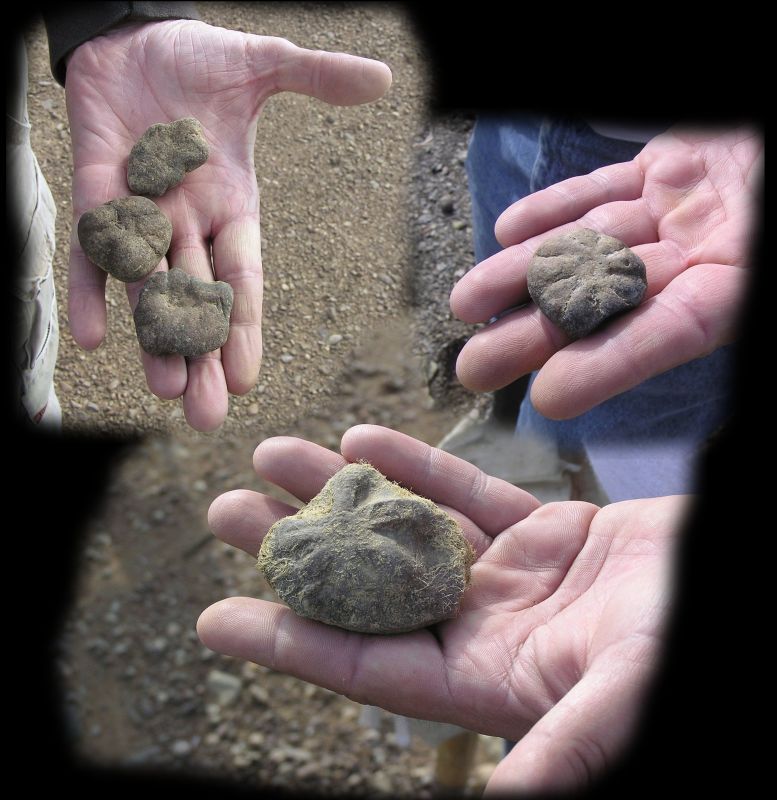
Samples of the nice brooksellas that were found.

Lea and Claire surveying the area.
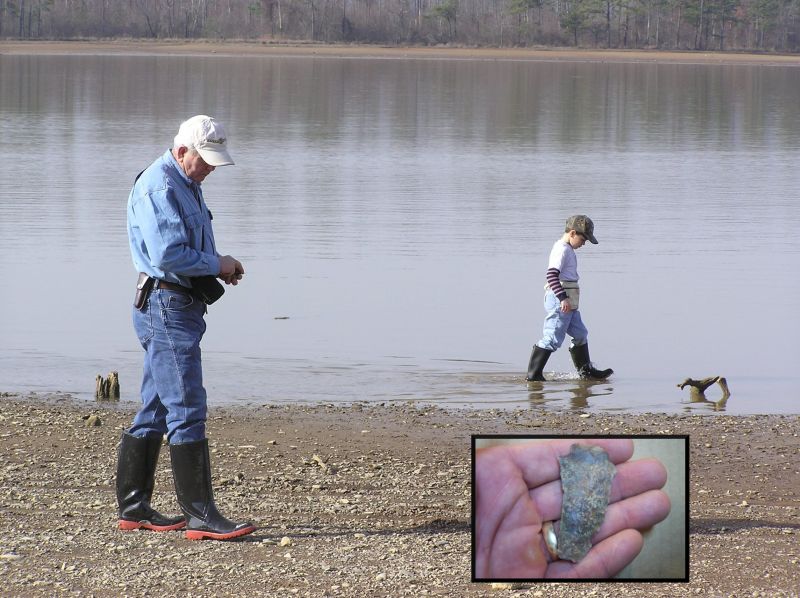
Steve found a nice point in the area.
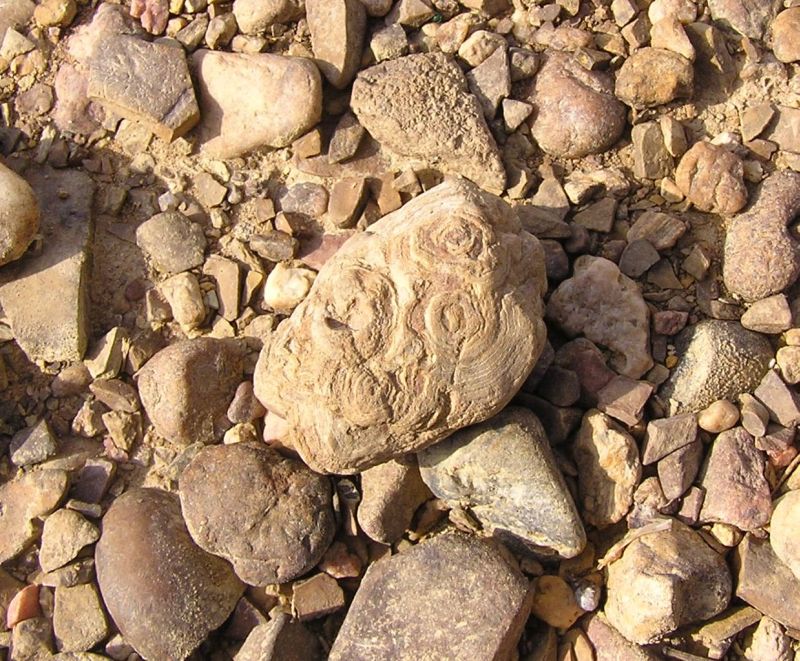
Nice stromatolite found by Vicki.
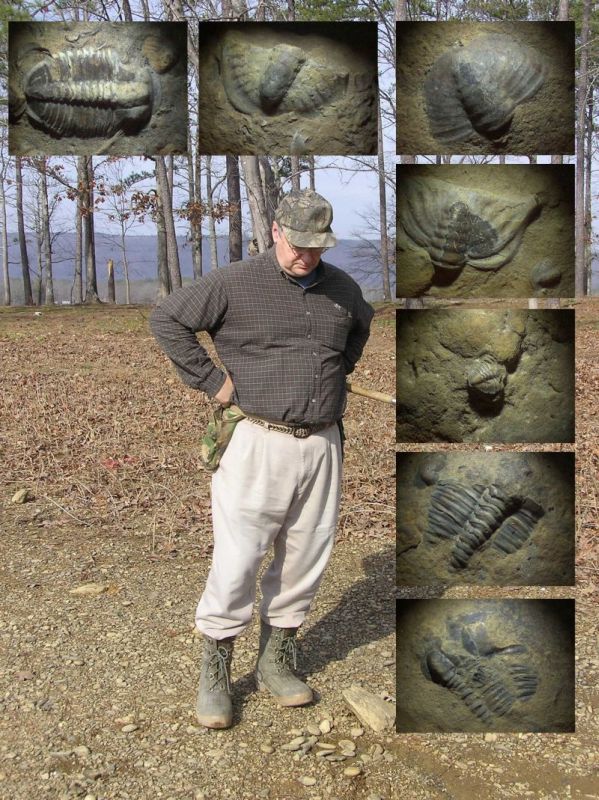
Bill and some of his small trilobite finds under the microscope. Click photo (then click photo) for larger image.

The next site required a short boat trip. The shoreline in this area is composed of deteriorated Conasauga shale.

Nancy found some nice (but decidedly muddy!) brooksella.

Steven with his trilobite find.
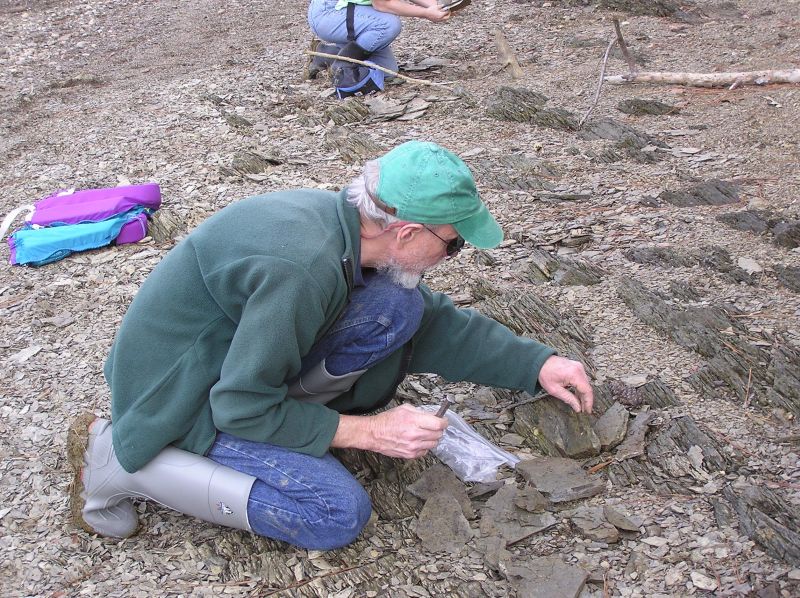
Searching for trilobites in the broken shale.
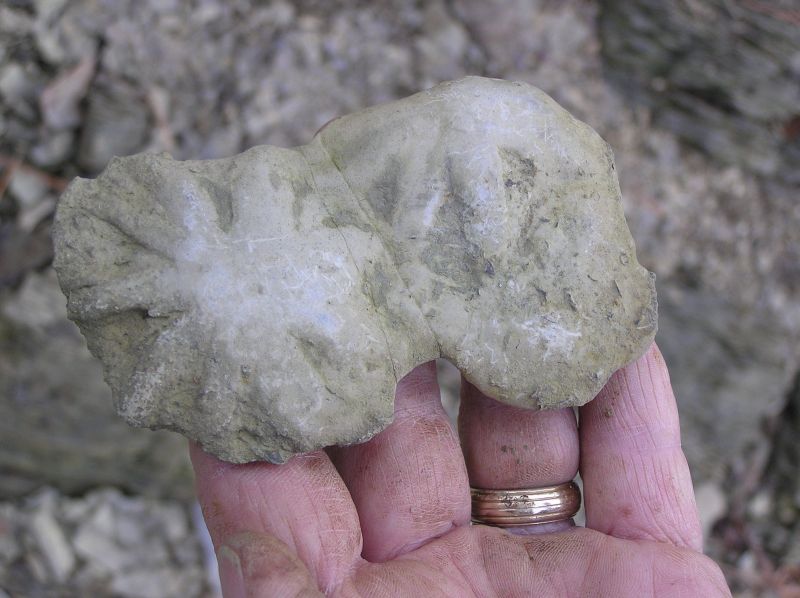
Bob found a double brooksella.

We learned the meaning of "don't leave any rock unturned" today . . .
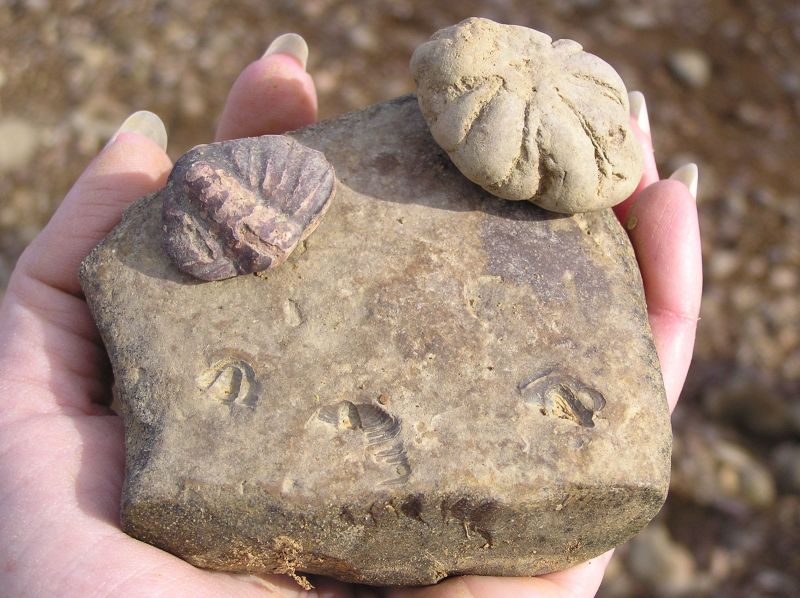

Samples of what was found on day 1.
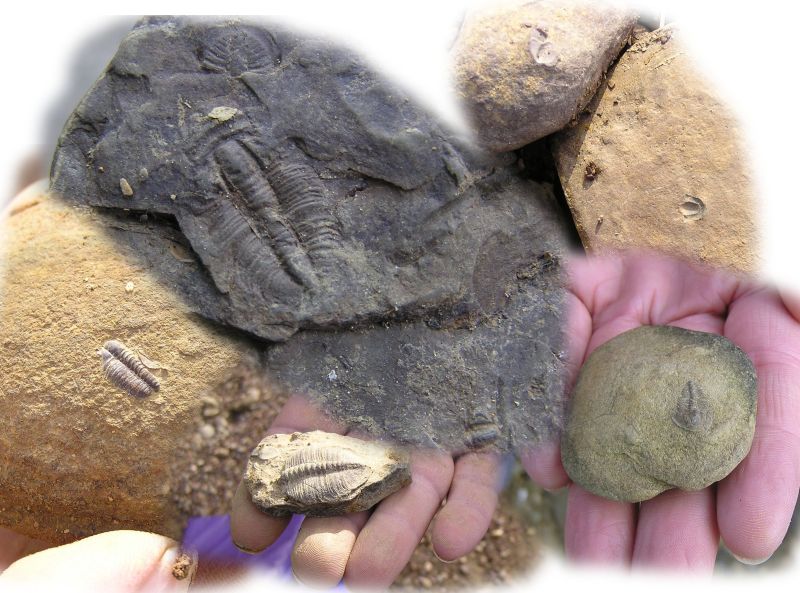
More trilobite specimens from day 1.
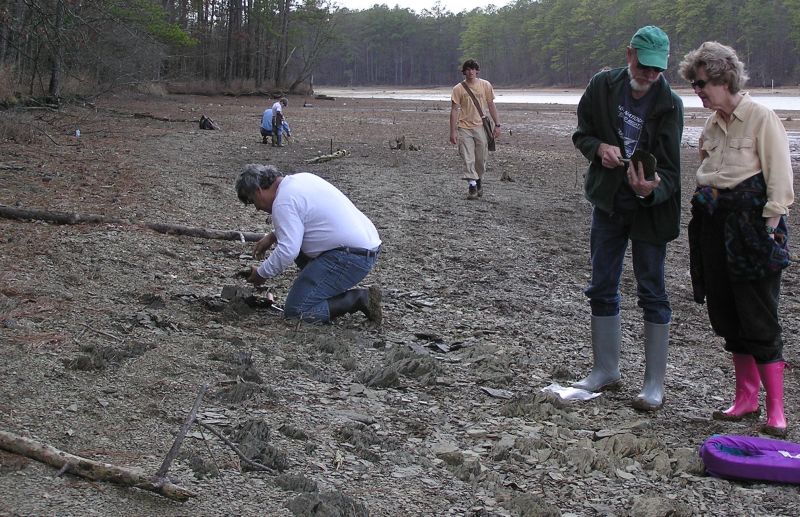
People were scattered all up and down the shoreline.
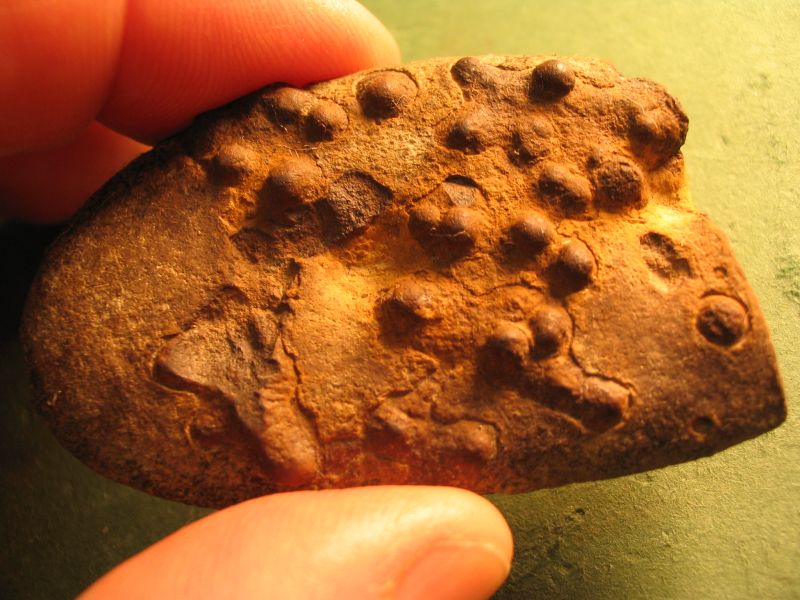
Another find by Bill, shown under the microscope.
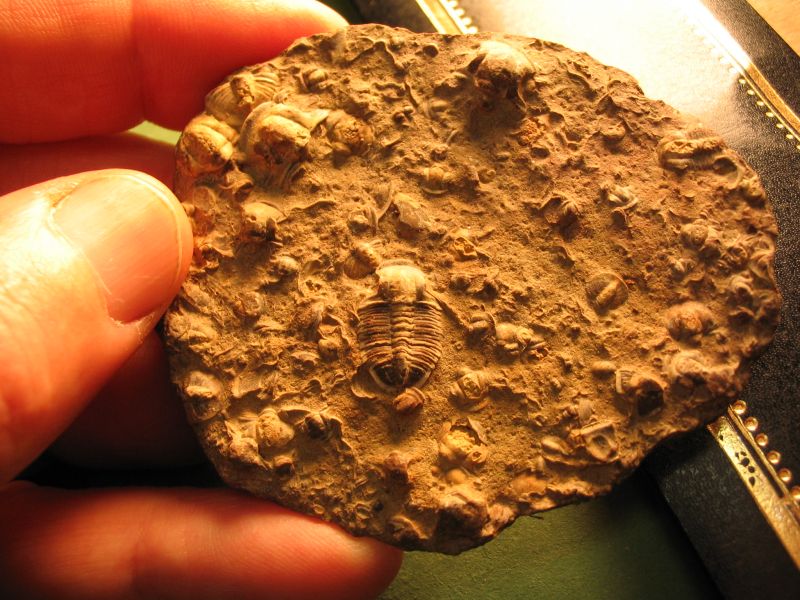
A pebble filled with small trilobites, found by Bill.
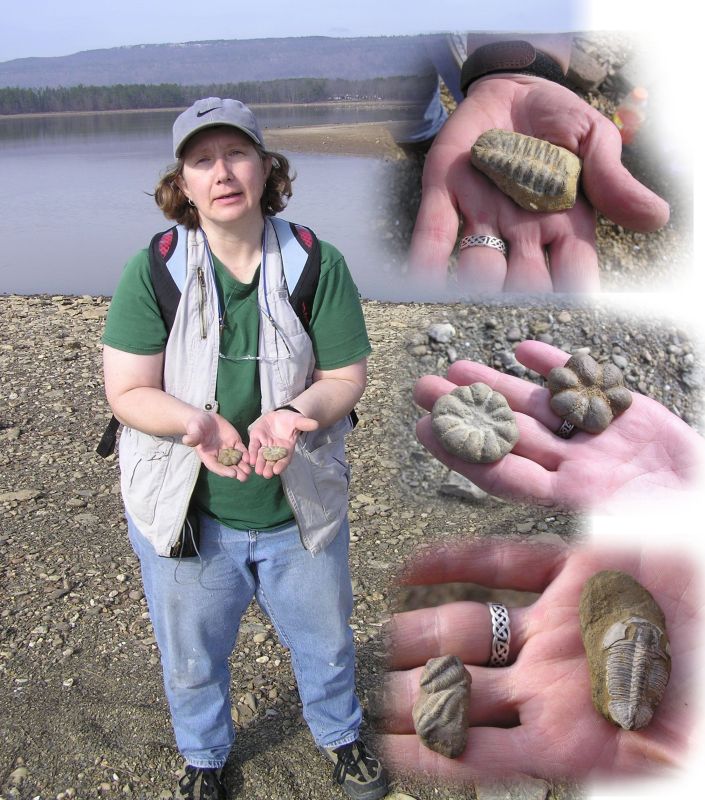
Claire and her best finds of the day - very nice brooksella and trilobites.

Very nice trilobite found by Bobby.
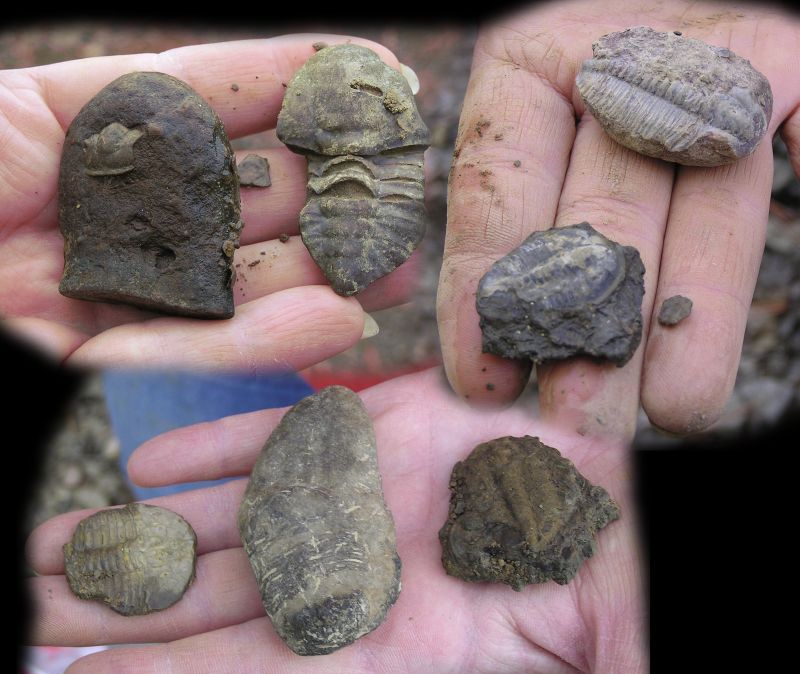
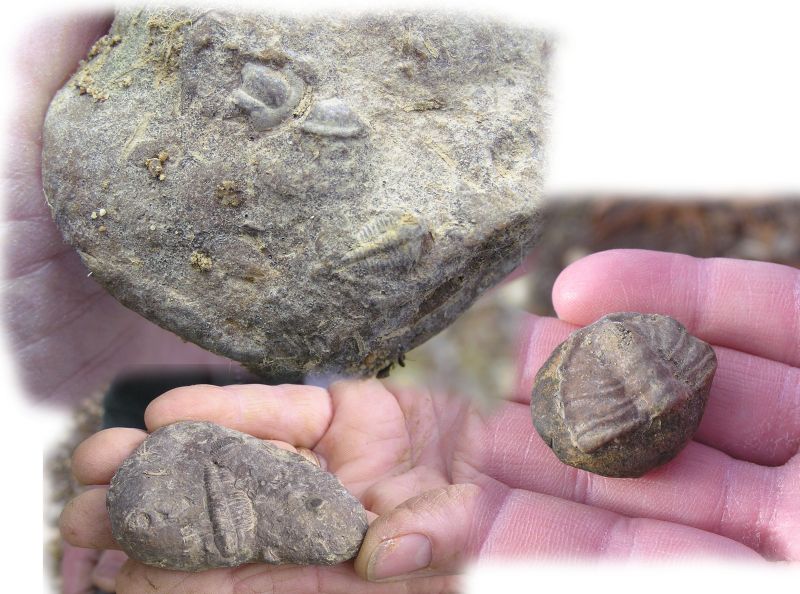

On day 2 we collected at a different site. Large outcrops of Conasauga shale turned on edge held numerous trilobites.
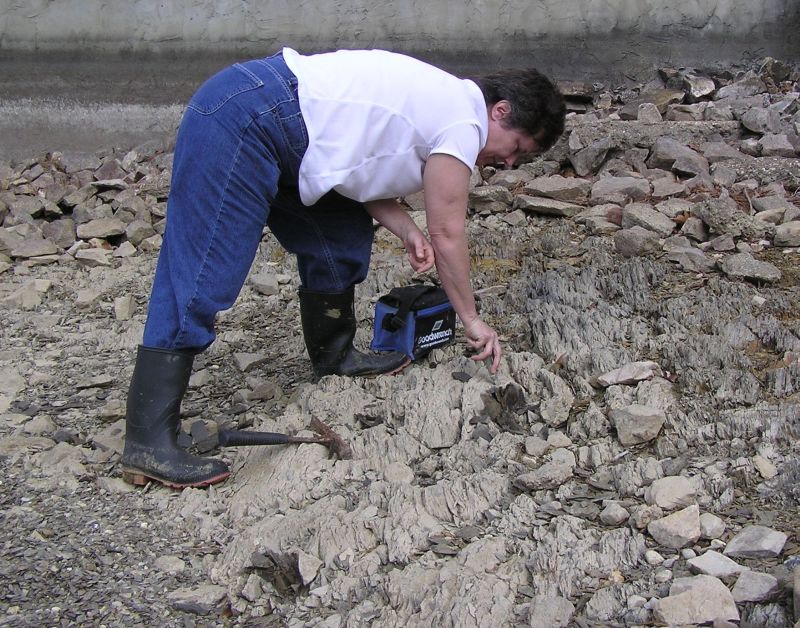
Becky is extracting small hunks of the shale to carefully split apart.
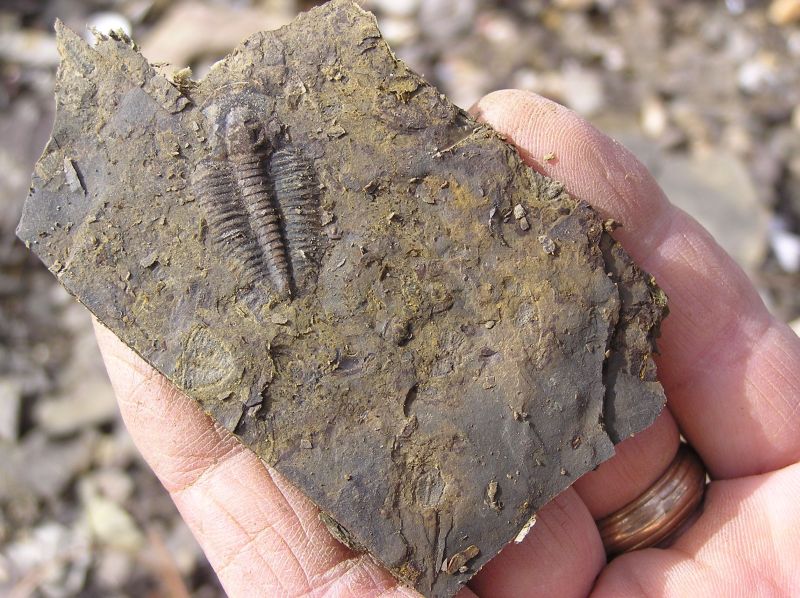
Nice trilobite specimen found at this site, found by Pam and Bob.
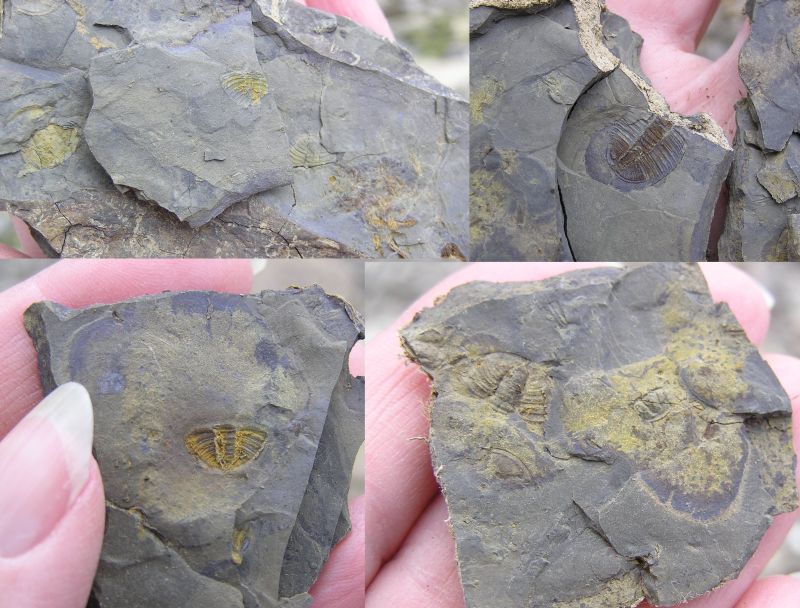
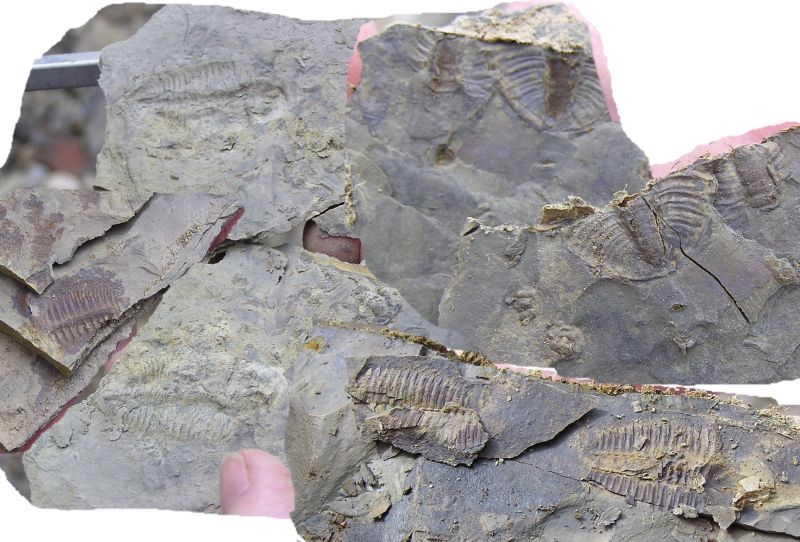
Leisa was having very good luck splitting the shale.
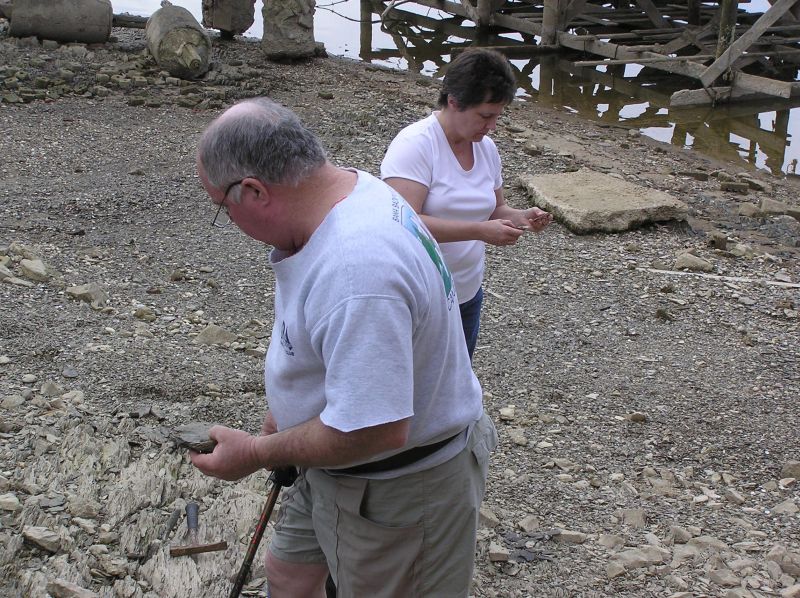


February 17, 2007 - Mississippian Fossils, Franklin Co, AL
Once again, the word, "intrepid" comes to mind when BPS makes a midwinter trip! With the temps in the upper 30's and low 40's and 15-20 mph winds, it was a toss up as to which trip to this site was the coldest! In spite of the weather, around 23 fossil seekers came for the fun. Our first stop was under sunny skys and slight winds which brought the temperature up to a bearable level. This is a great site, featuring a prehistoric coral reef that always has excellent specimens washed out during the previous year. It's always a temptation go after the big boulders, but they're much larger than they look (like iceburgs) so we can only stand and drool and capture them on camera. At the first stop on the lake numerous specimens of blastoids, archimedes, and crinoid stems were found, and a very nice piece of petrified/ permineralized wood. Next we went to the other side of the lake where it was downright windy and bitter cold. More crinoid stems, straight cephalapods, and some unknown specimens were collected as well as great slabs of fossil hash. These make great teaching tools as well as attractive showpieces. We were also treated to the sight of Bill "walking on water!" Next we stopped at a roadcut which yielded a few more nice specimens, and a lot more icy wind. After one last site check, hunger was the issue, so most of the group organized to follow Greg, who always seems to know the best places to chow down, to a long enjoyable evening meal at a "secret" local steak house, After a great time of good food, rehashing the day and catching up, tired BPS members headed home.
--Edited by Vicki Lais
(Photos courtesy Jan Novak, Bill Fowler, Chris Lais, & Vicki Lais)


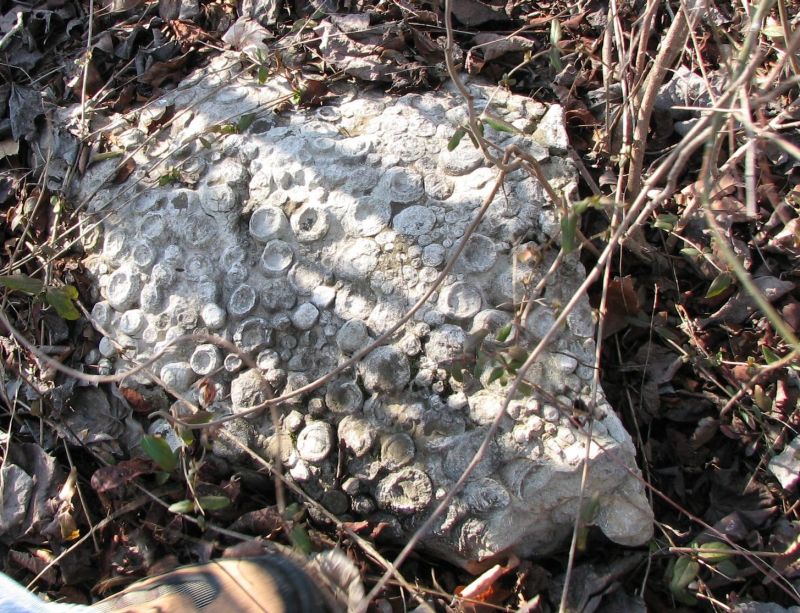
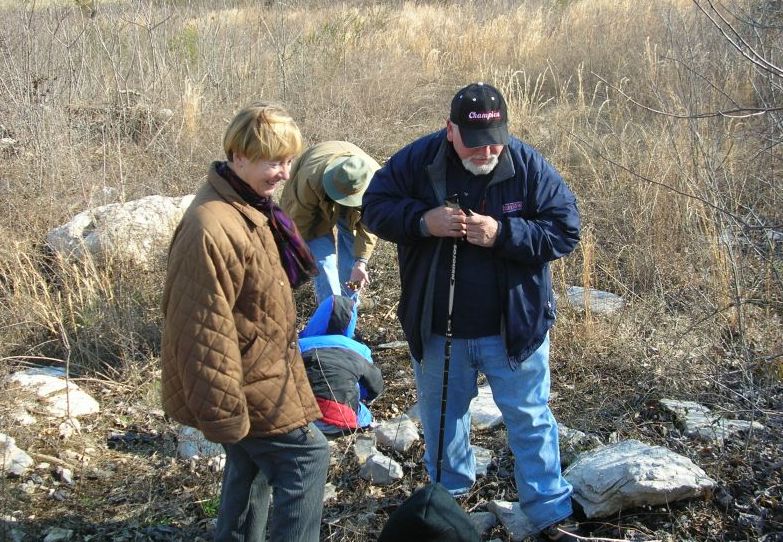



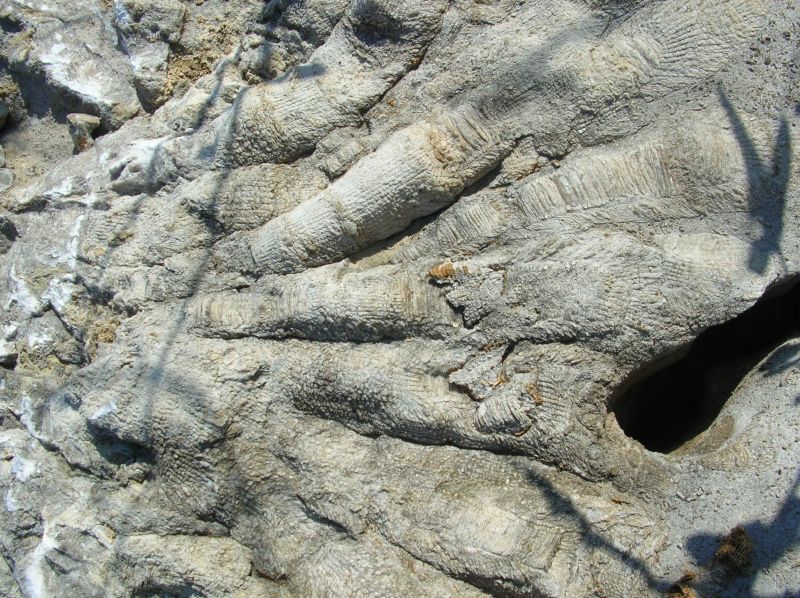
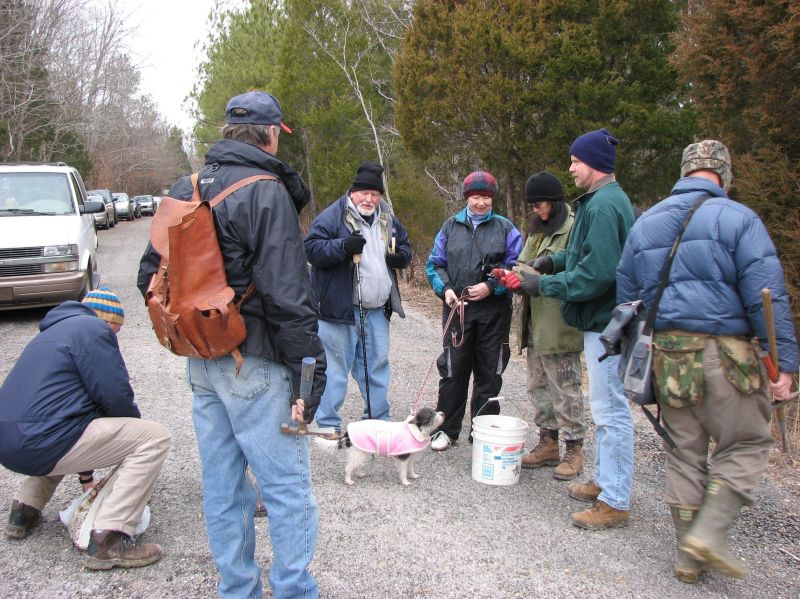
On to the next stop, where we were given an overview of the collecting area.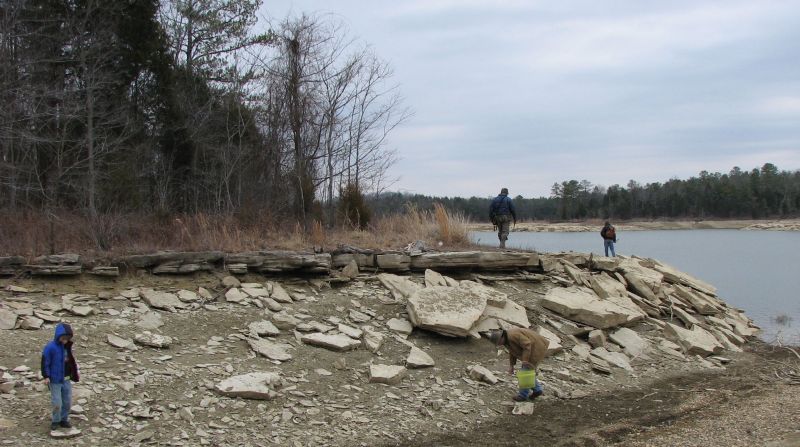
Shoreline of the lake, water is way down in winter.
Horned coral.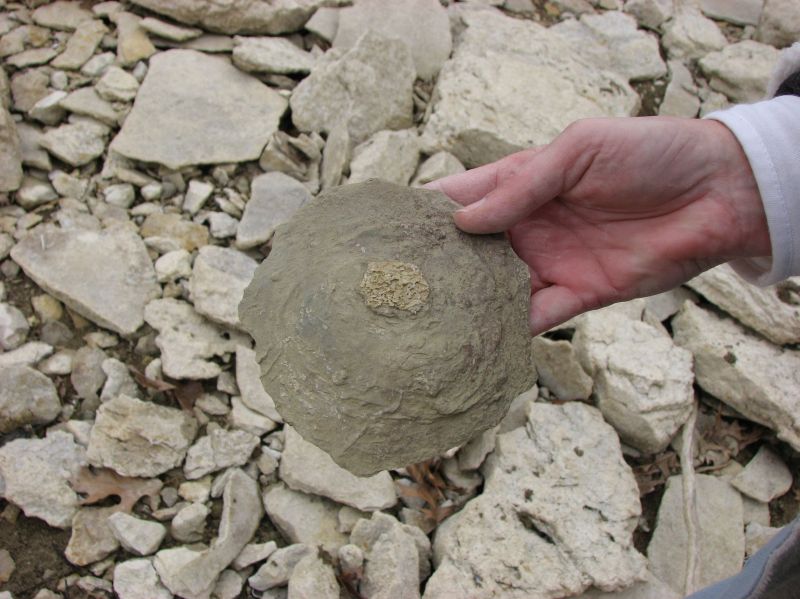
A sponge?
Horned coral.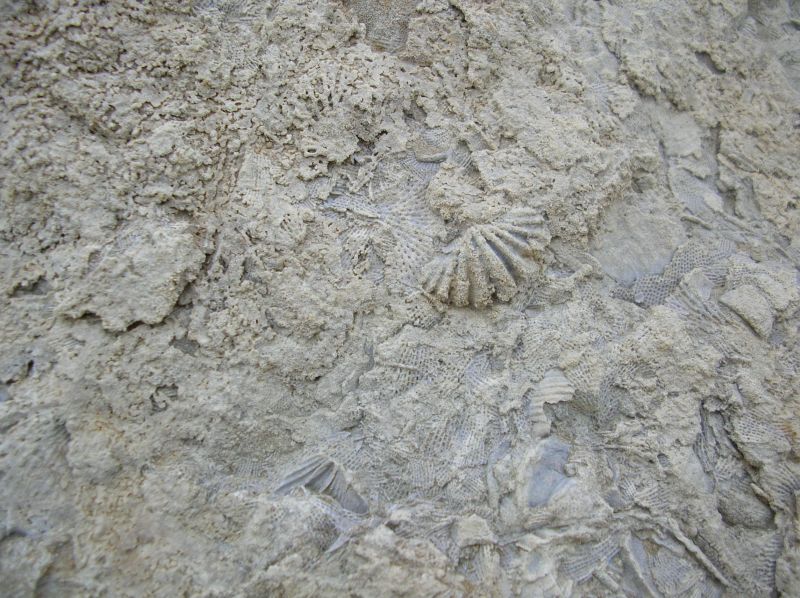
Nice brachiopod.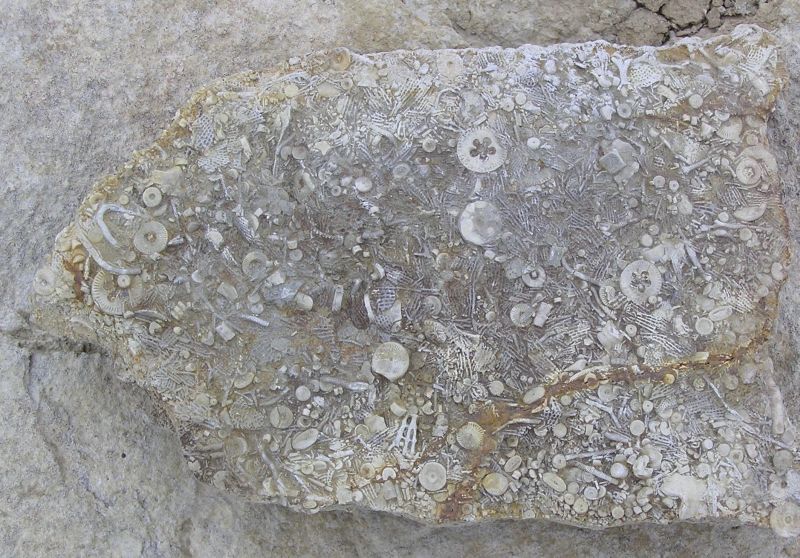
Most rocks in the area consist of numerous small fragments of fossils. Most visible on this specimen are crinoid stems and bryozoan (or the netting material from archimedes.)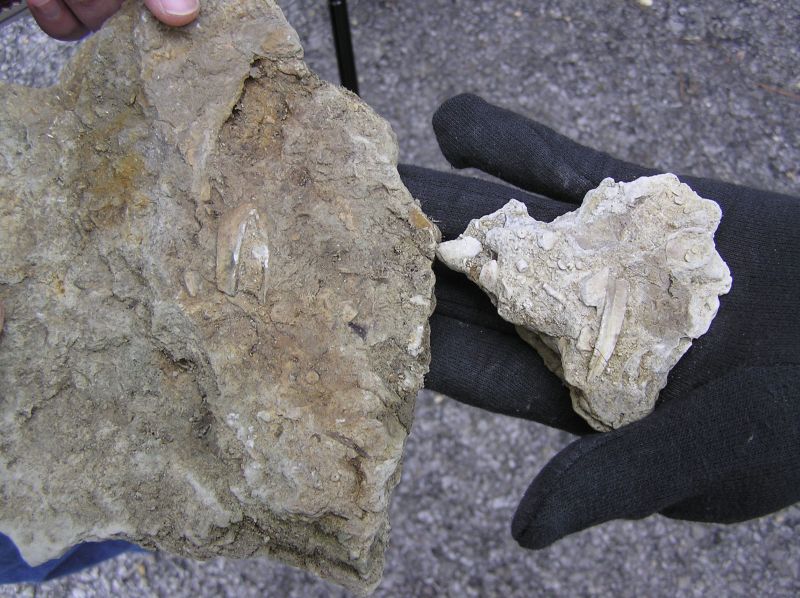
Parts of very large, but broken, blastiods.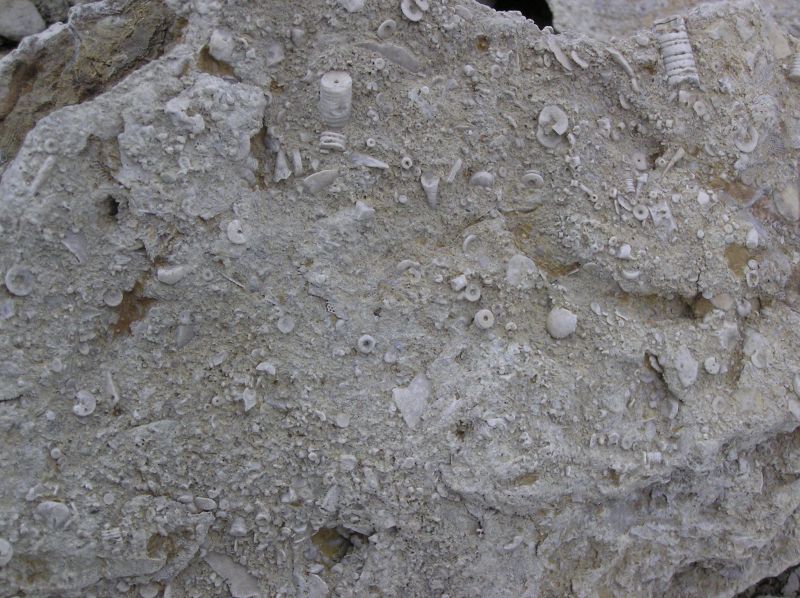
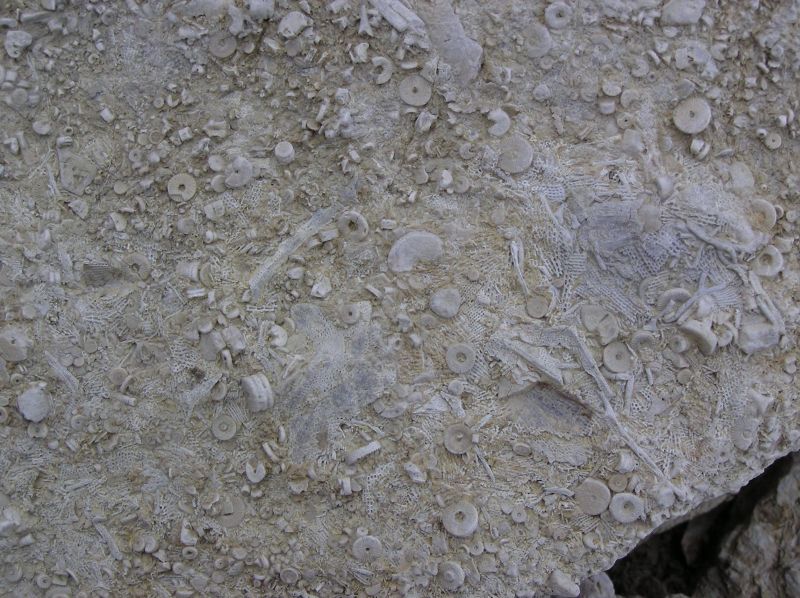

Tiny gastropod.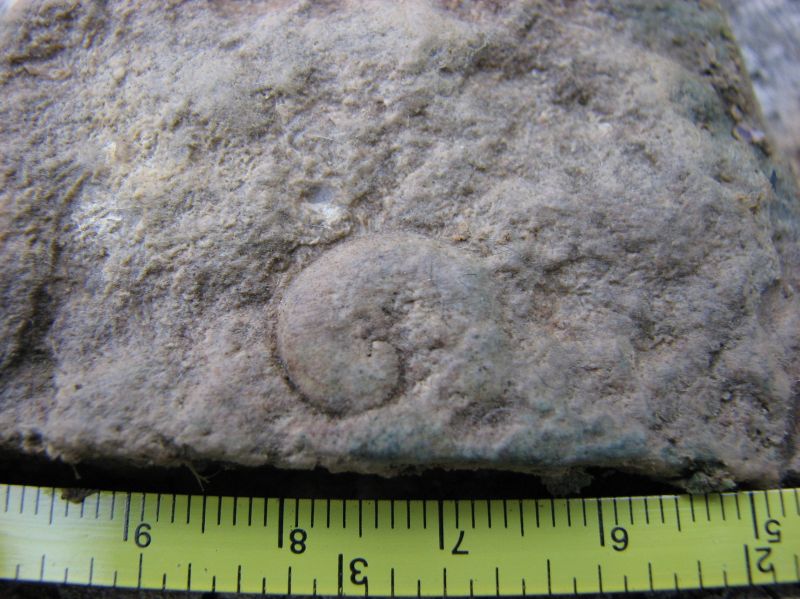
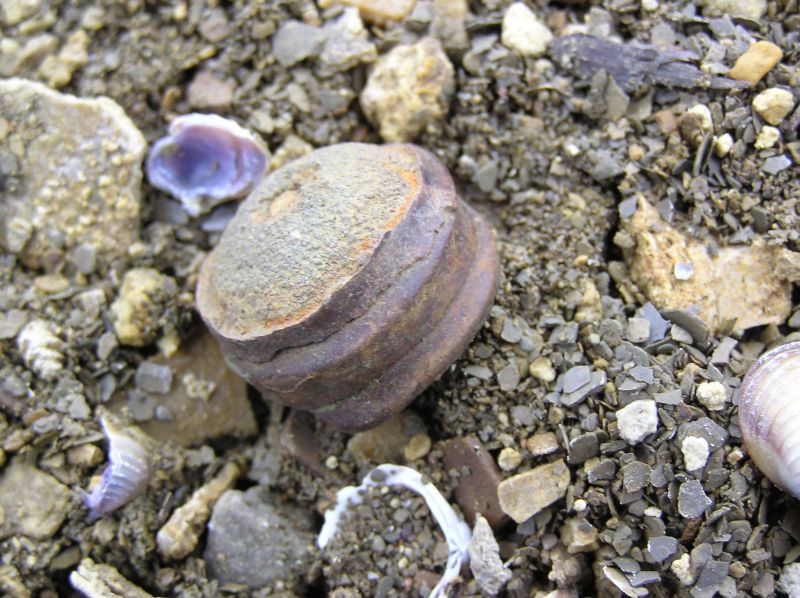
Unknown round fossil.
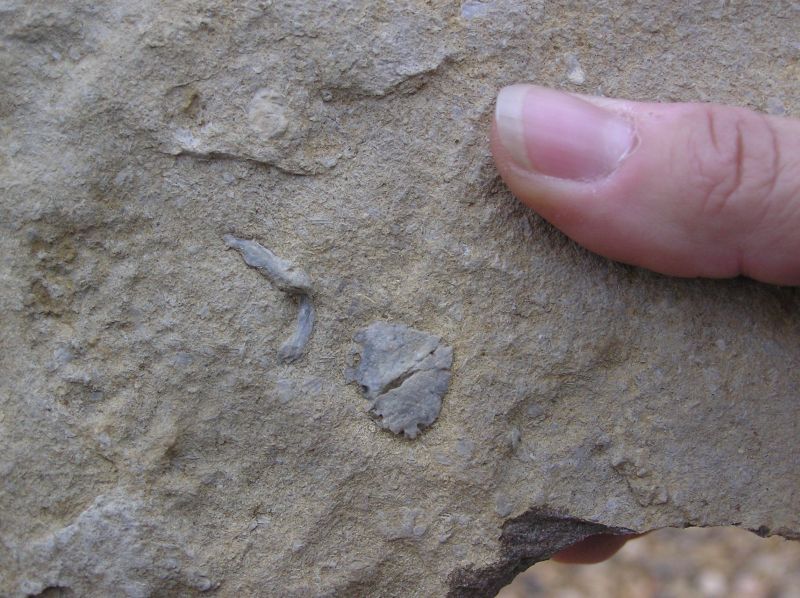
Another unknown fossil.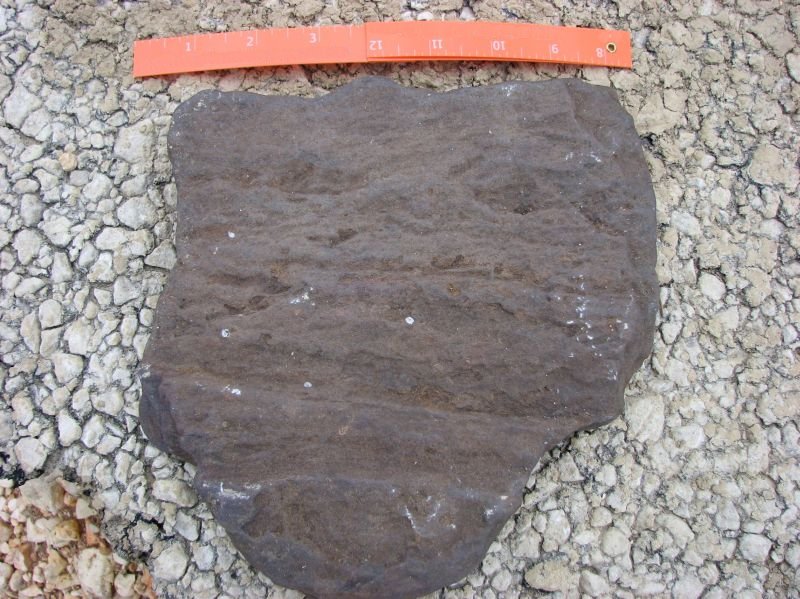
Very nice specimen of petrified/permineralized wood.
How'd he do that?? Bill has found several nice specimens. Click, then click again for larger image.
Nice cephalopod.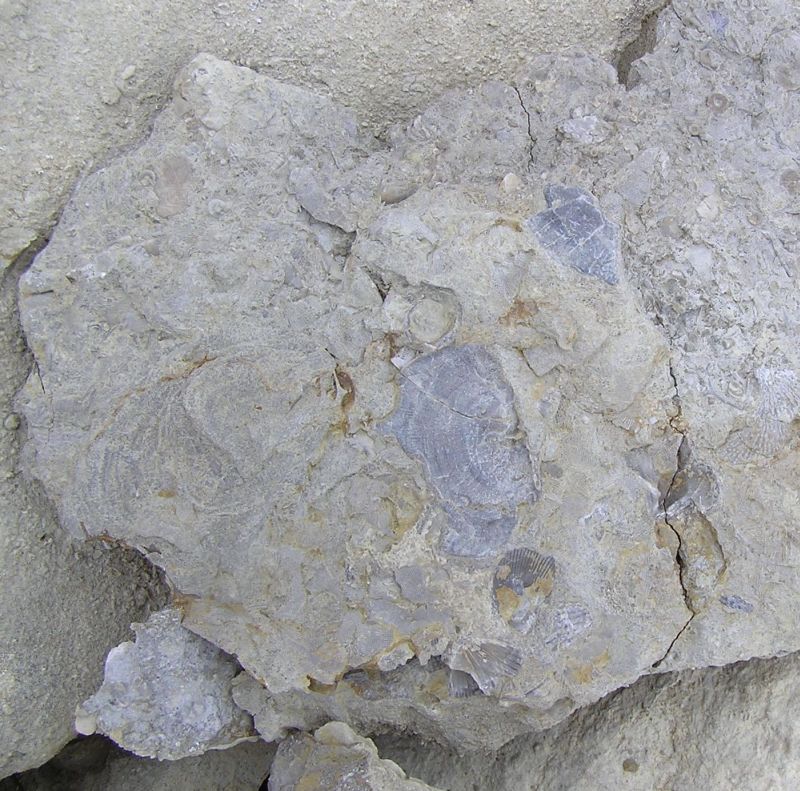
Brachiopods.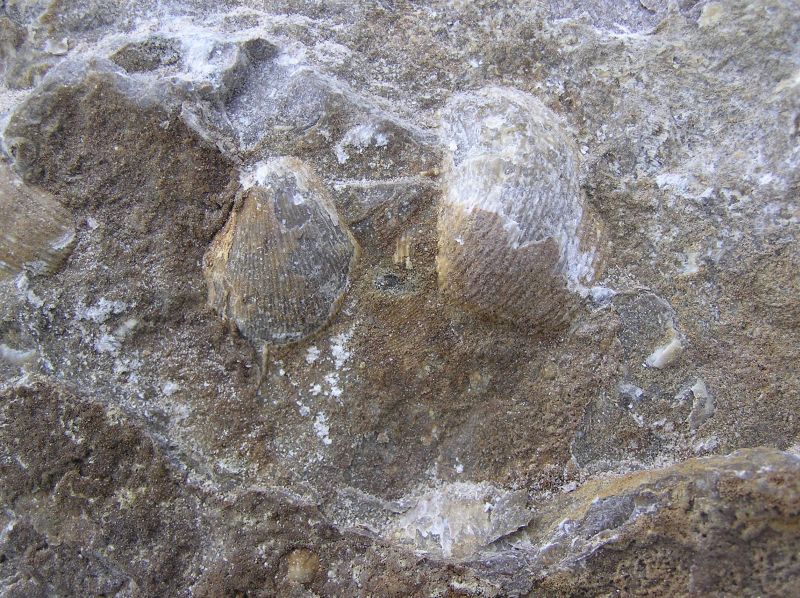

After the lake, we collected at a nearby roadcut.
Numerous specimens of burrow casts were found, and also a few straight cephalopod's (in middle).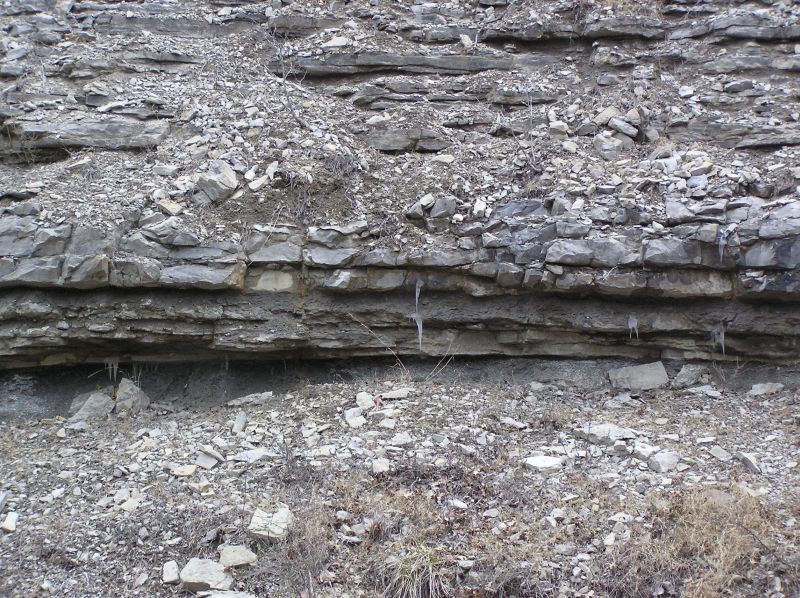
At the last stop of the day, geologic layering is very prominent.
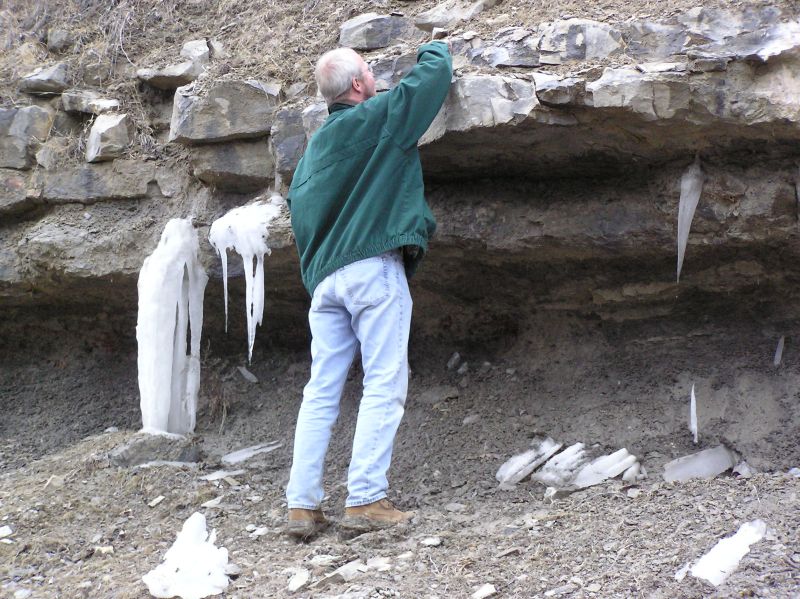
Tall people have a distinct advantage!
March 11, 2007 - Cretaceous Fossils, Greene Co, AL
We met at a rest area then caravaned to Greene County where we met our host who guided us to his property. We parked most of our vehicles then piled into several pickups and SUV's for the last 2 miles to the site. The site was a beautiful 80 acre parcel of high land on the Sipsey River which was underlain by late cretaceous sediment. A nice creek ran through the property and emptied into the Sipsey. The owner took us from the parking area to his camp which sits on a bluff high above the river. As we hiked to the collecting site, we observed turkey scratch marks, early blooming wild flowers, listened to woodpeckers and other birds and and then down a razor back ridge to the creek that was to be our collecting area for most of the day... a creek filled with sand and gravel bars and unknown treasures. We soon got our feet wet and split up into wandering singles and groups of hunters, assuming the bent-over position familiar to every fossil hunter. Sharks teeth were being found within moments of stepping in the creek.
Many varieties of sharks teeth were found including Otodus, Squalicorax and Ptychodus. Besides shark teeth the group found Oyster, petrified wood, fish vertebra, a mosasaur vertebra and other items of interest.
We had an "early leavers" group and an "it isn't dark yet" group; both groups stopped to enjoy dinner and continue the fossil discussions, fill their bellies, and wind down before the long drive home.
--Leisa Whitlow, Contributor
--Edited by Vicki Lais
(Photos courtest Jan Novak and Vicki Lais)
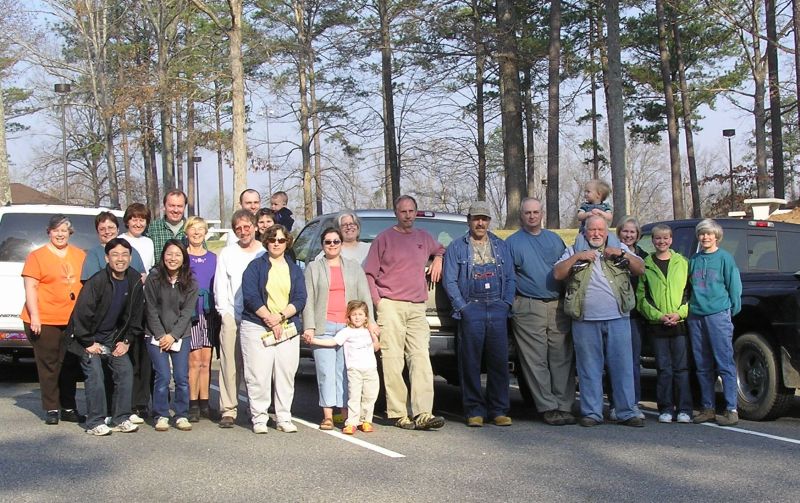
Most of the gang!
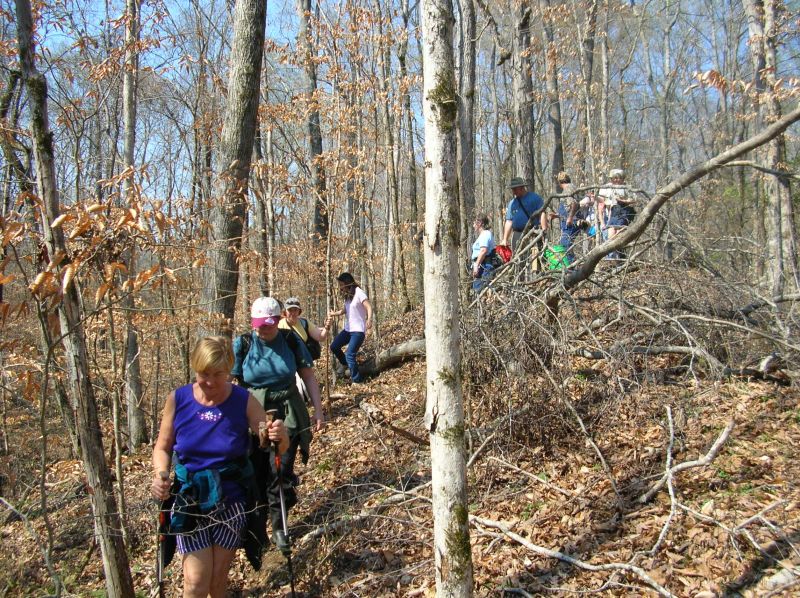
The long hike down the hill to the creek.
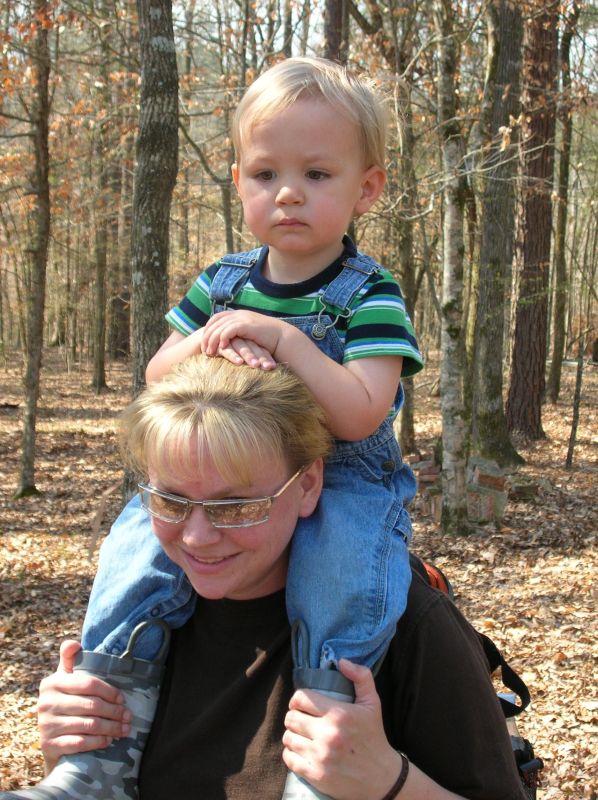
Are you sure we're supposed to go here, Aunt Mel?
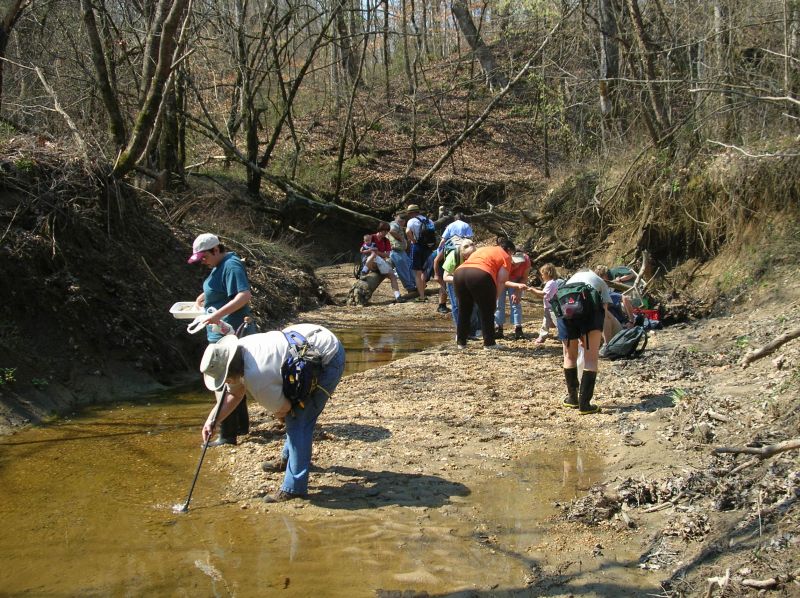
The creek was quite low, and shark teeth were immediately found.

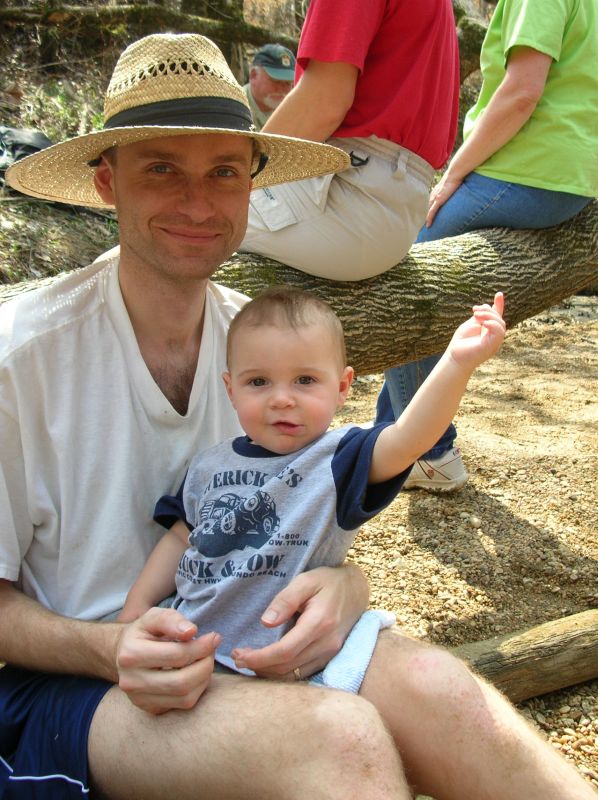
Start 'um early, and they love fossils for life! (Or maybe it's just the rock throwing . . .)
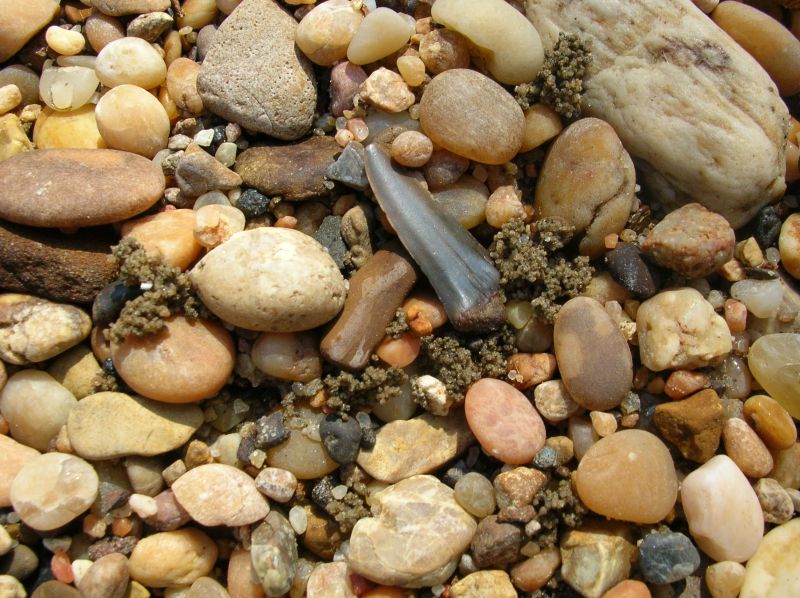
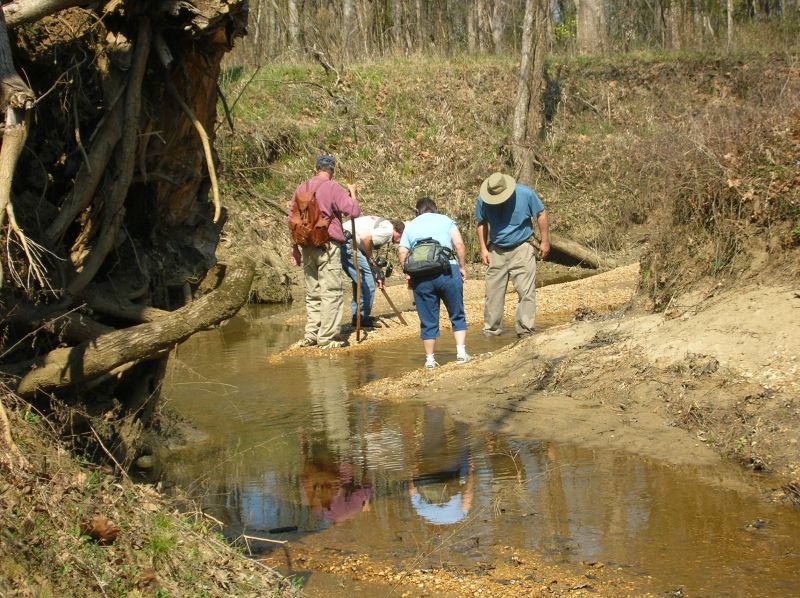
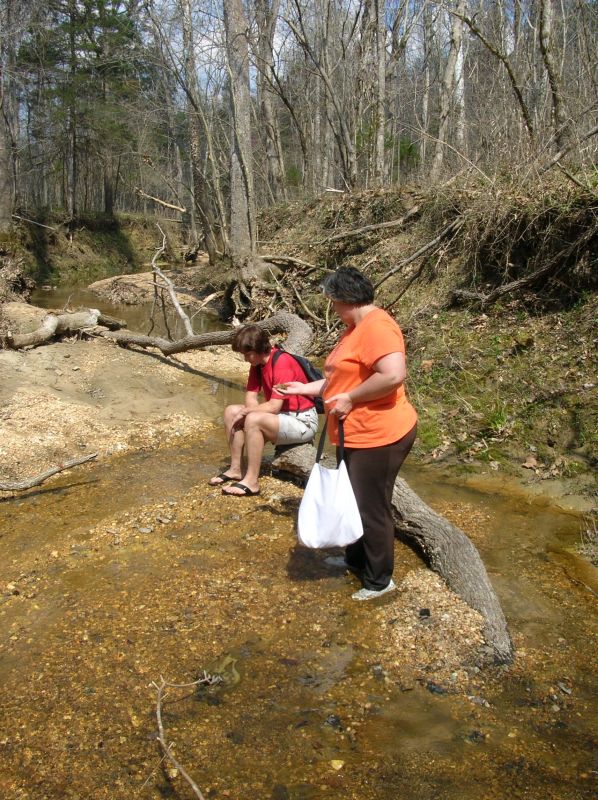
The easy way to hunt fossils . . .
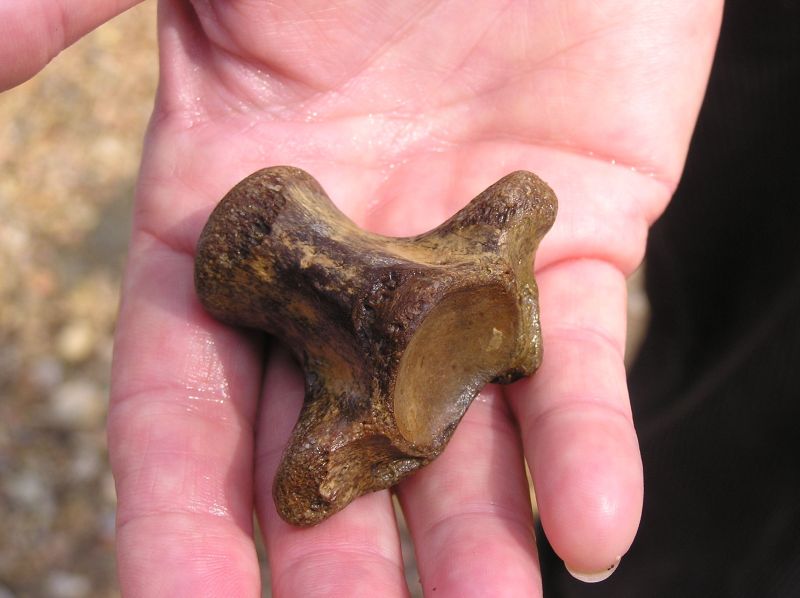
Mosasaur vertebra.

A perfect outing for our future paleontologist!

What did you find, young lady? A nice collection of shark teeth, ptychodus teeth, petrified wood, coral, and pretty pebbles.

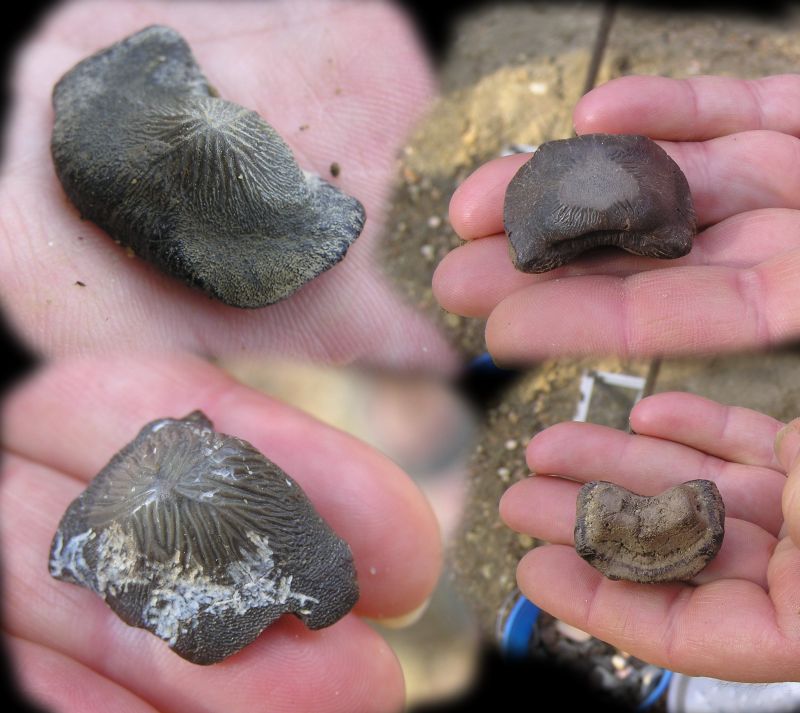

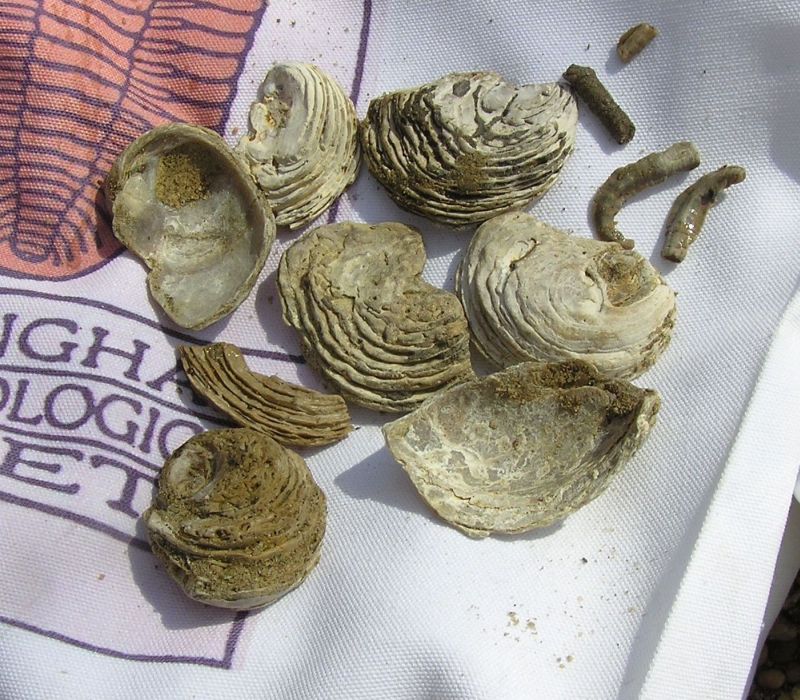
Quite a few oyster shells were found.
 ]
]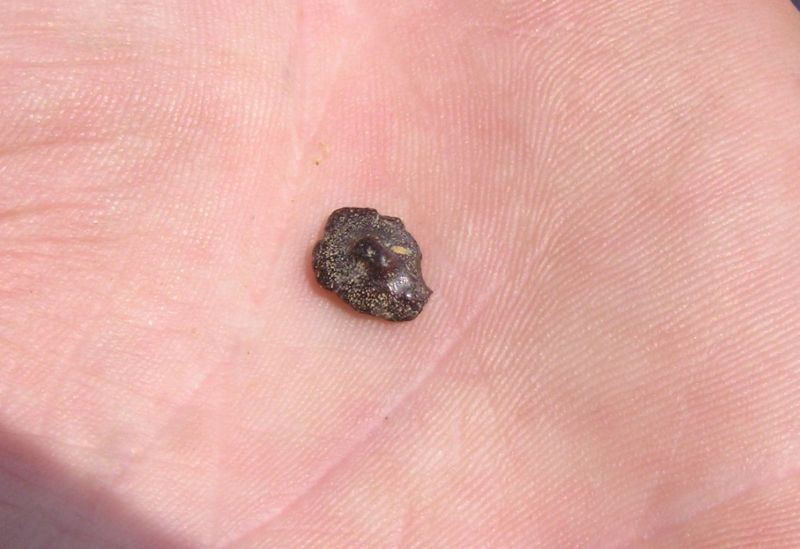
Appears to be a tiny crocodile scute.

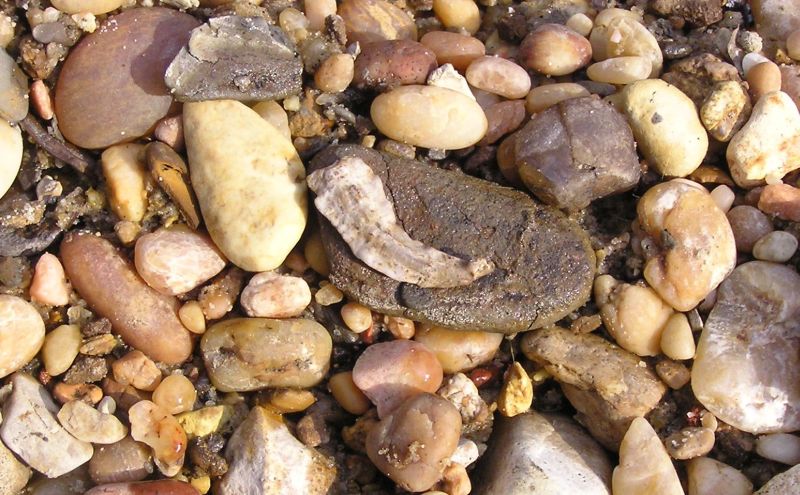
Nicely preserved worm tube.


More shark teeth.
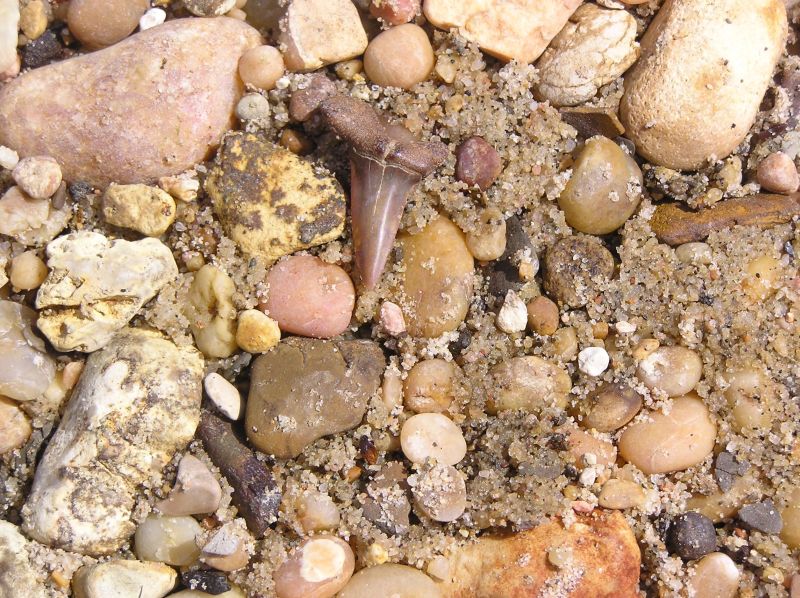
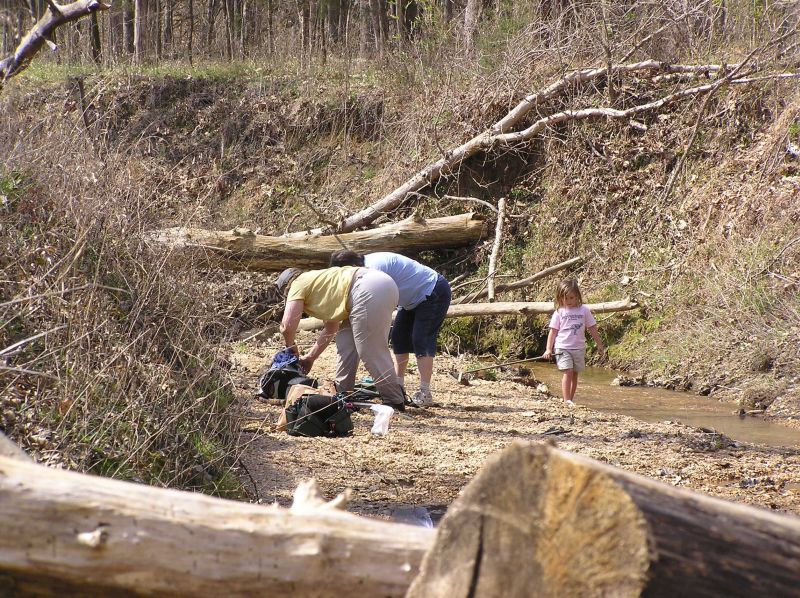
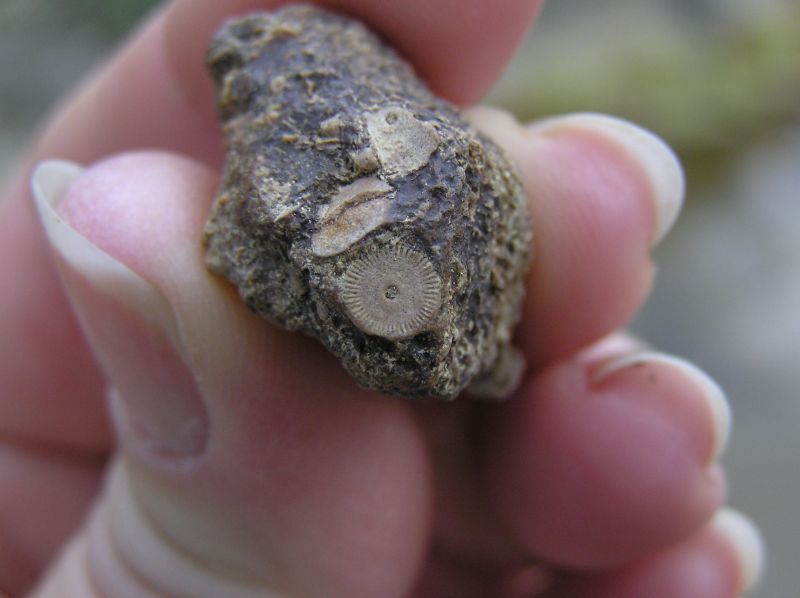
Not sure what this is, any ideas?
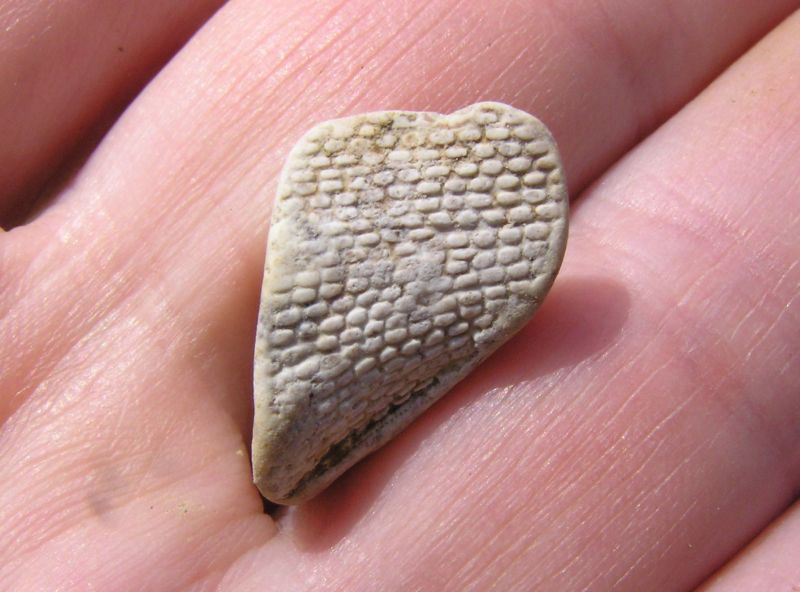
Another unidentified fossil.
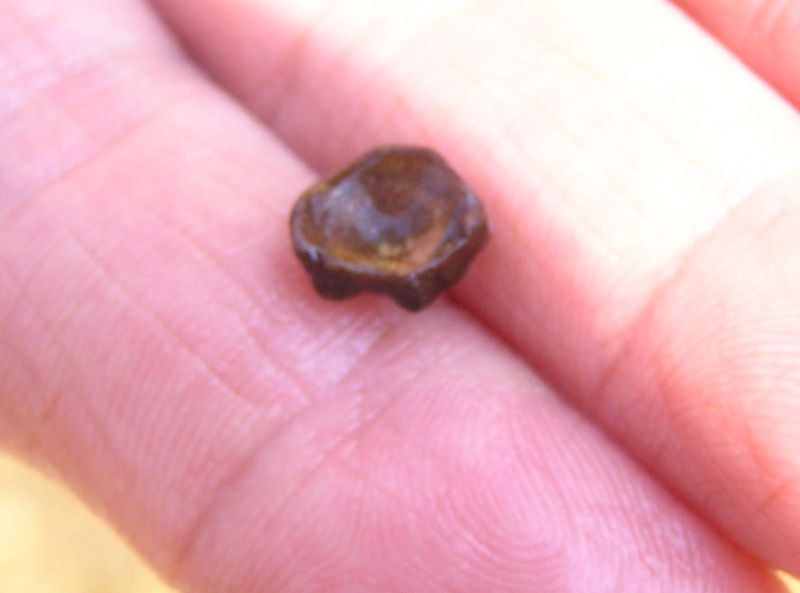
Tiny fish vertebra.
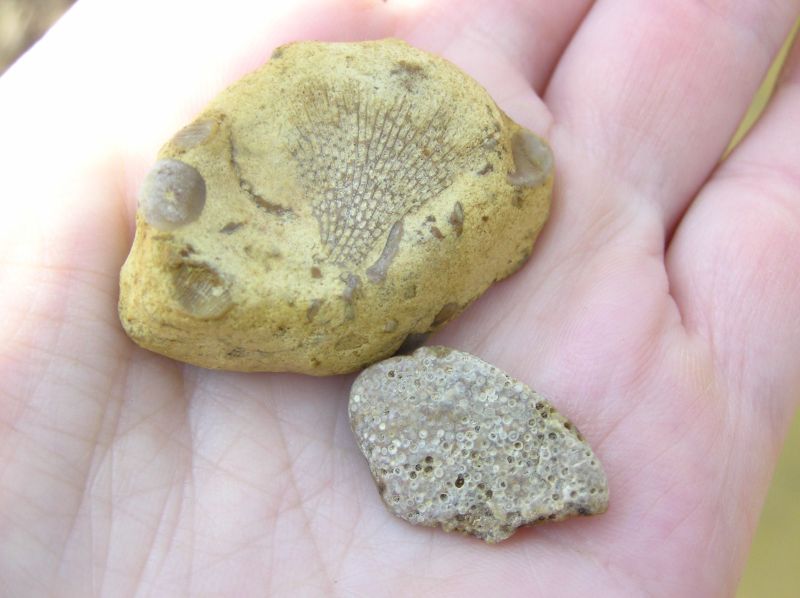
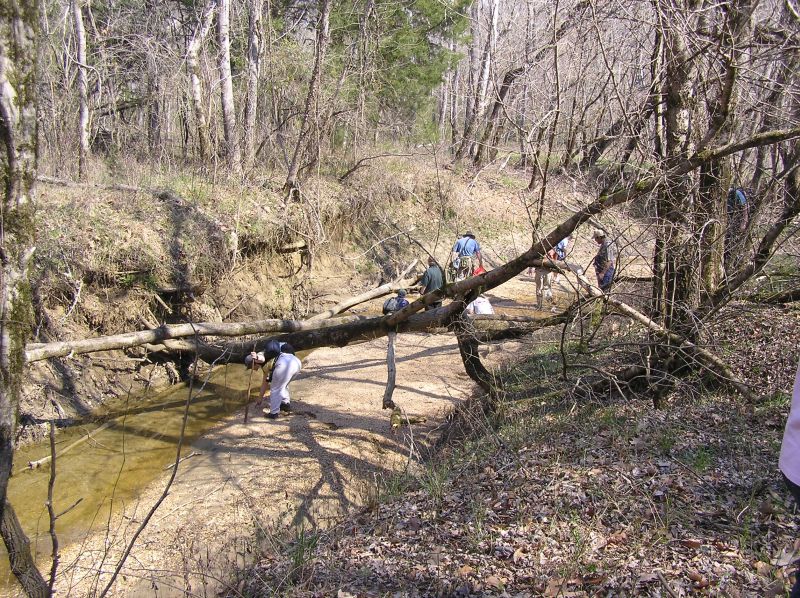
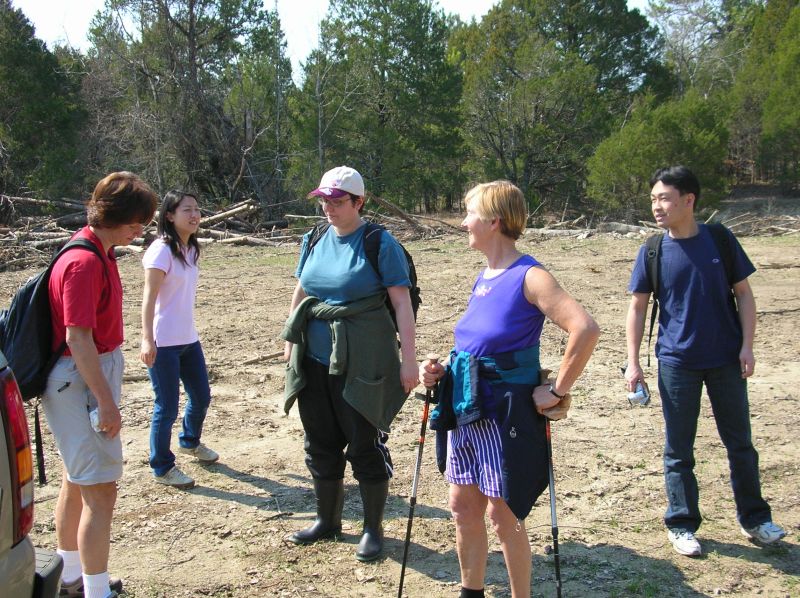
Decisions, decisions.. . . Do we want to collect in those gullies over there, or head out for supper? How about both?
April 19, 2007 - Dr. Gingerich Lecture in Tuscaloosa, AL
A few BPS members drove over to Tuscaloosa, AL to hear a lecture on fossil whales. We arrived early, and decided to "fossil hunt" at the Geological Survey of Alabama building. The steps and bannisters are of limestone, and are nicely weathered out to show beautiful fossils.
The speaker was Dr. Philip Gingerich, Professor of Geological Sciences, and Director of the Museum of Paleontology at the University of Michigan. His lecture was titled "Fossils and the Origin of Whales". The lecture was very educational and entertaining, with numerous slides of Dr. Gingerich's field trips to Egypt, Afganistan, and other locations over the years. His most recent research on fossil whales was discussed in the lecture. After the lecture, we had the opportunity to talk to Dr. Gingerich and the other paleontologists/ geologists in attendance.
Click the thumbnail to see the full size photo. They are large so it may take a while to download each one.
(Photos courtesy Vicki Lais, with special thanks to George Phillips for his assistance!)
 | 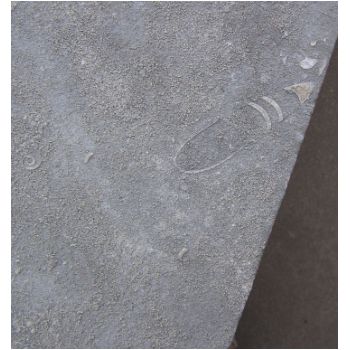 | 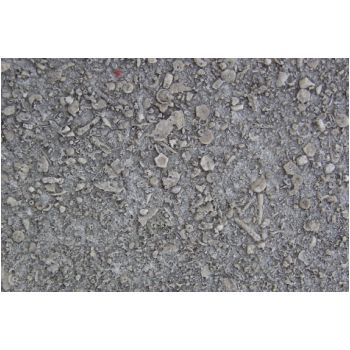 |
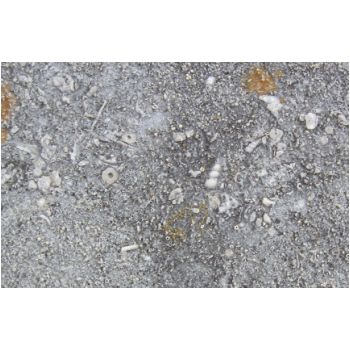 | 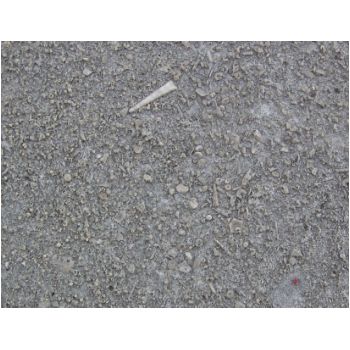 | 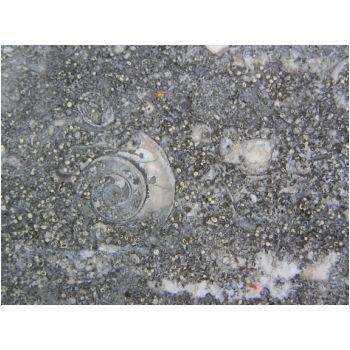 |
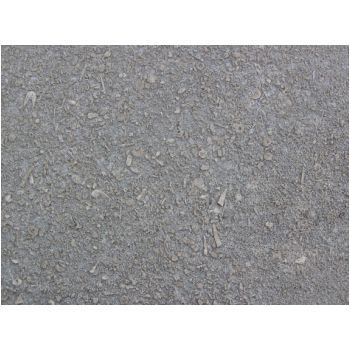 |  |  |
 |  | 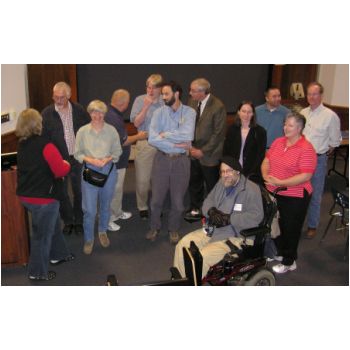 |
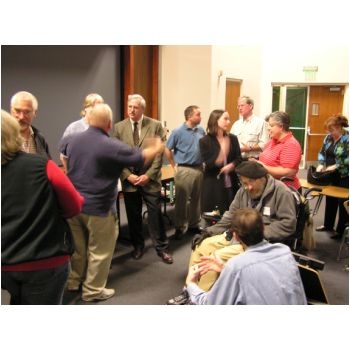 | 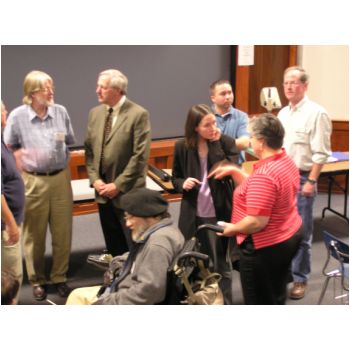 | 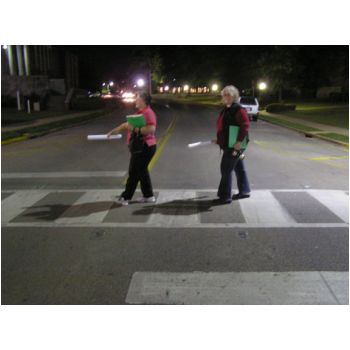 |
Photo Layout by IrfanView
April 21, 2007 - Cretaceous and Tertiary Fossils, Butler Co, AL
Everyone met at a central location, and a brief introduction to the geology of the area was given before driving about 12 more miles to the entrance to the site. While past trips to this location have found the entrance roads to be very slick from rain, this years access was dry and easy. The entire caravan was able to drive to the limestone hilltop parking area.
The fossil hunting started the moment you exited your car with small gastropods and segments of large ammonites being found on the cleared hill top. The trail down to the creek provided more ammonites.
The creek was beautiful with white quartz sand beaches at many of the bends. Shark teeth, ray teeth, fossil bone, ammonite pieces and nautiloids were found in the gravel bars, along with numerous non-fossilized bones and teeth from various mammals. Some of the more interesting finds were various human artifacts rather than fossils. Indian potshards, some with incised decorations, a couple of projectile points and an Indian pipe, probably of European origin, were found.
The end of the day found the diehard fossil hunters resting at the beach where the trail intersected the creek. The Novaks organized a fire on the beach to roast small sausages, while others brought snacks to contribute, and the Stewarts returned to the parking area to set up camp for the night and fix their dinner.
By dark, everyone headed home, leaving Pam and Bob to enjoy a pleasant night at the site with owls hooting and Whip-poor-wills calling. At daybreak turkeys could be heard at the tree line adjacent to the camp area. After a couple of hours of walking the creek on Sunday morning the Stewarts packed up and reluctantly left the site, letting it return to nature.
(Photos courtesy Jan Novak, Bob Stewart, Becky Guthrie, and Vicki Lais)

Vice President Greg gives an overview of the geology of the site and collecting rules.
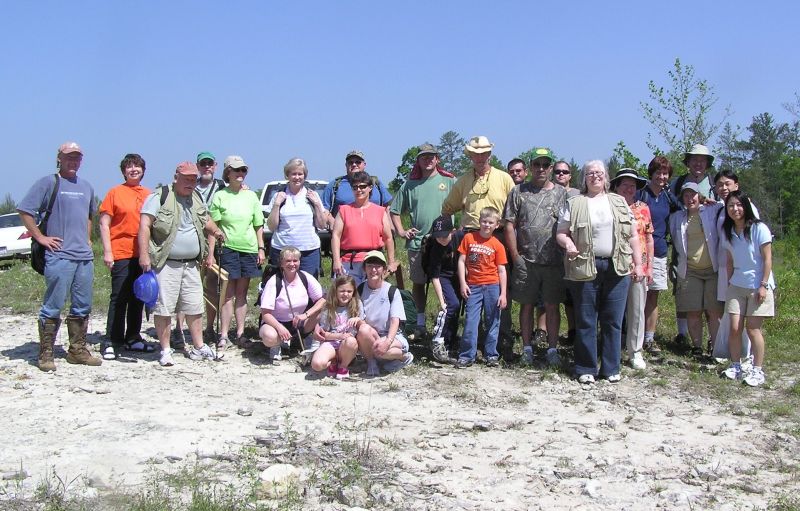
A lot of excited people showed up for the field trip - fossils can even be found on the limestone earth in the foreground.

If you look carefully, you can spot tiny round gastropods, each approximately 3/8 inch across.
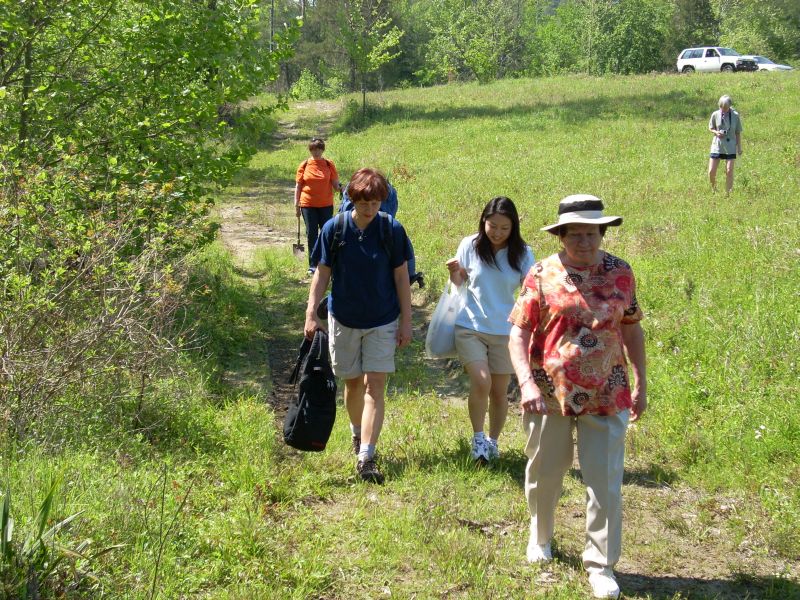
Hiking down to the creek from the parking area (and of course, looking for fossils along the way!)

The creek was higher this year than normal, but there were still numerous gravel bars.
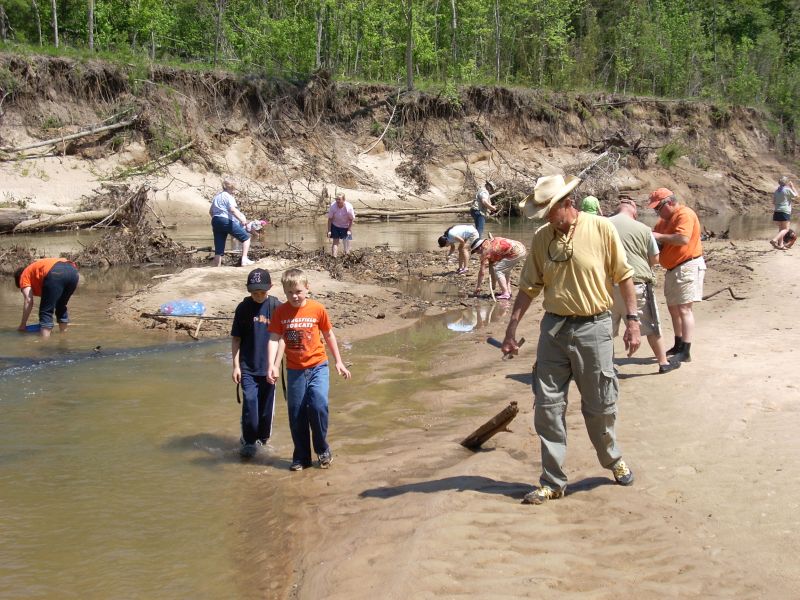

A recent storm had washed up a huge pile of brush and trees, and left behind rocky rubble and mud rather than the white sand we normally find.
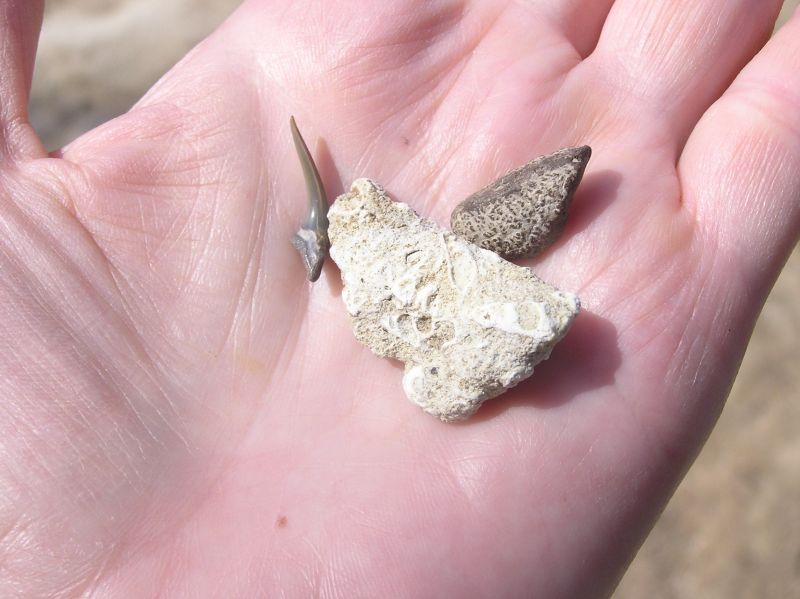

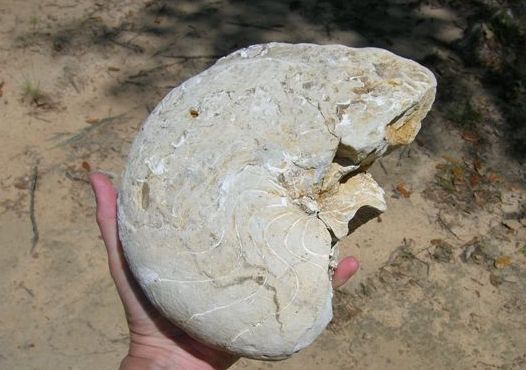
Nice nautiloid found by David.
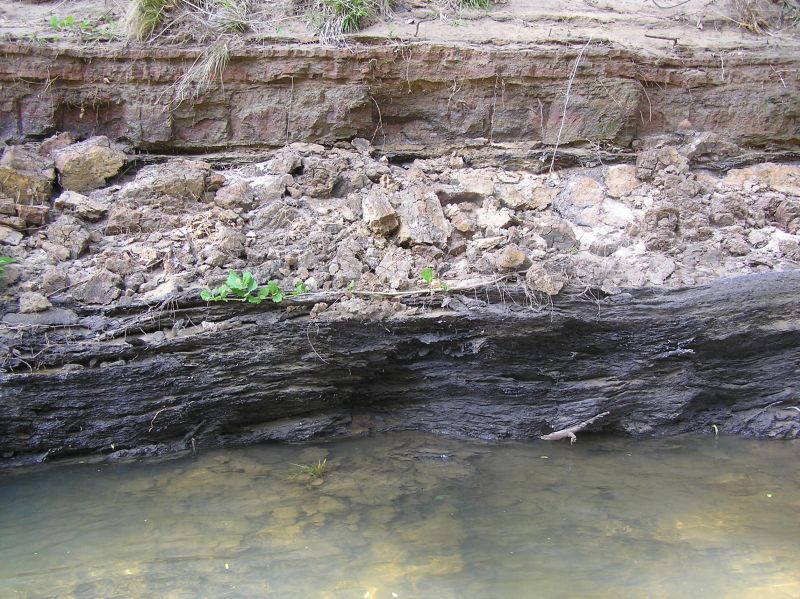
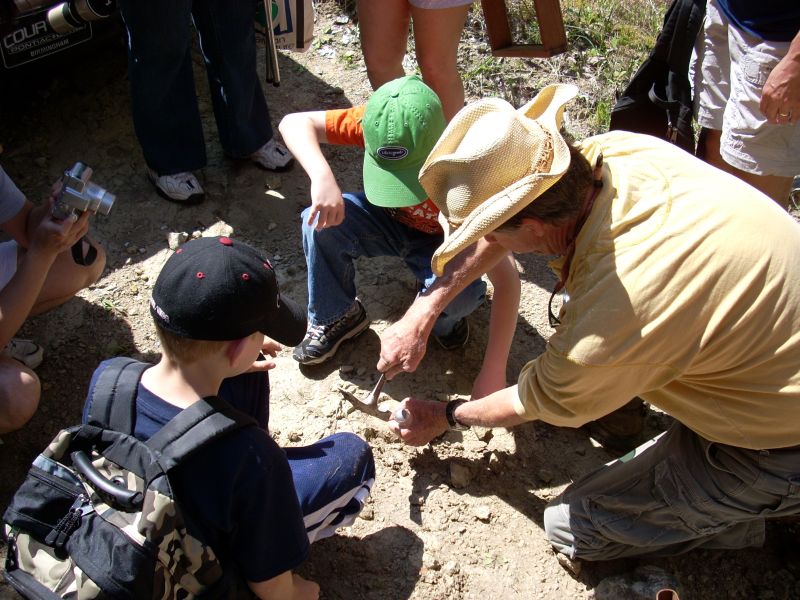
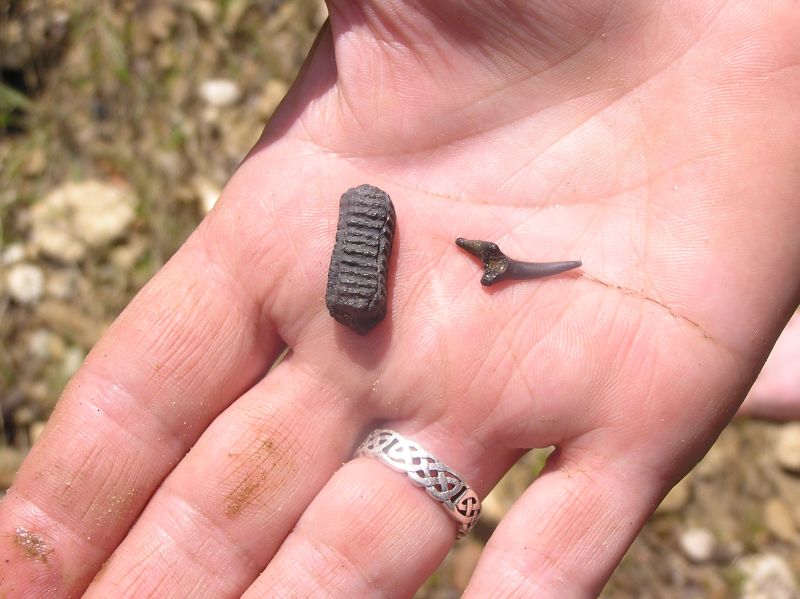
Ray tooth and shark tooth.
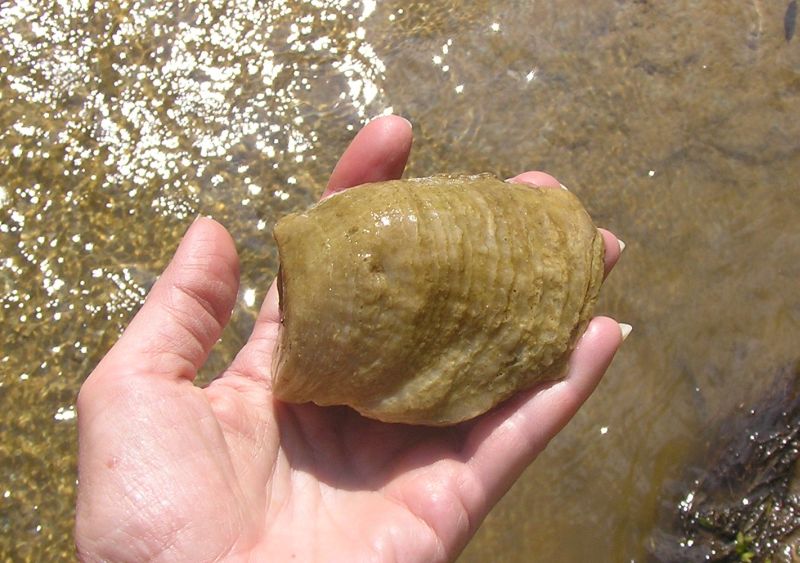
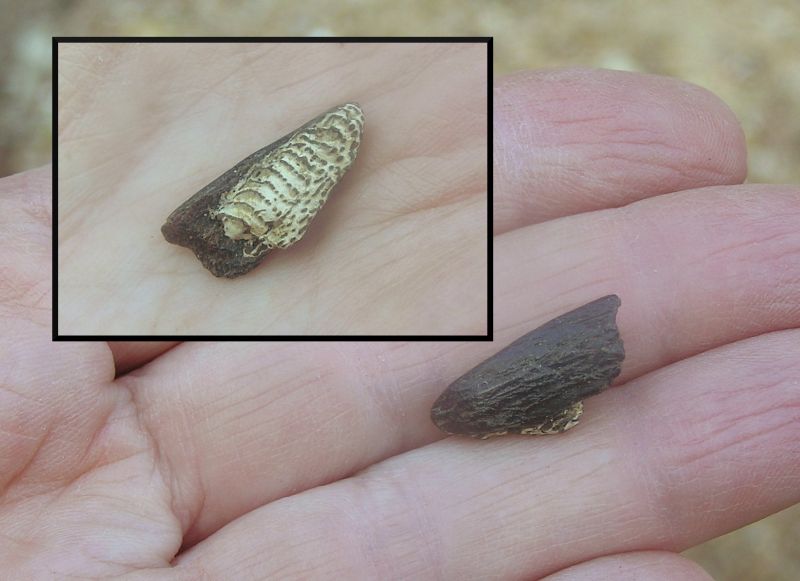
Unknown item, can anyone identify? Looks kind of like a tooth. . . .but . . . .
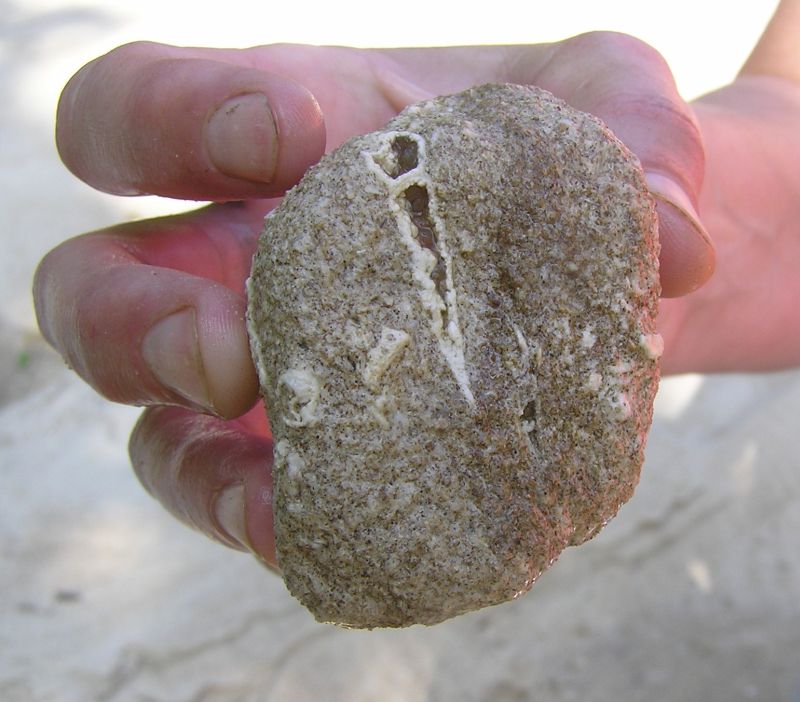
Nice turritella in coquina.
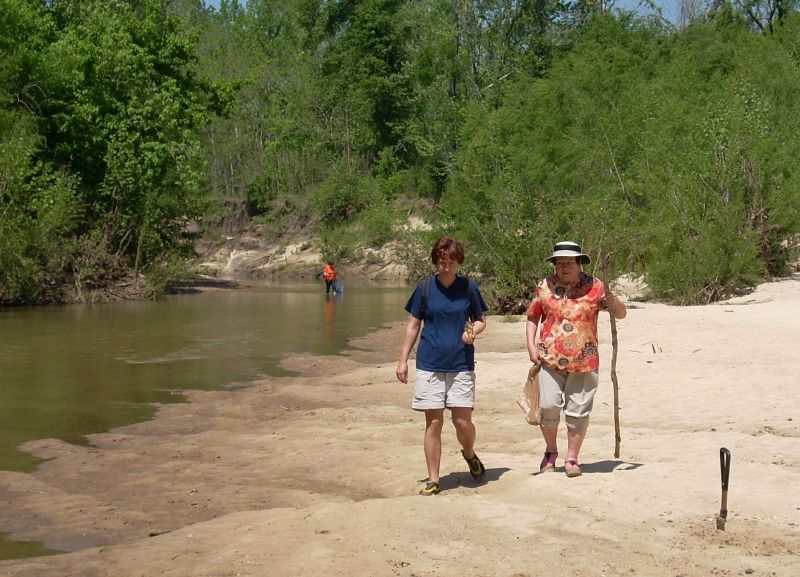
Lea's mom was visiting from the Czech Republic, and decided to join us for the fun!
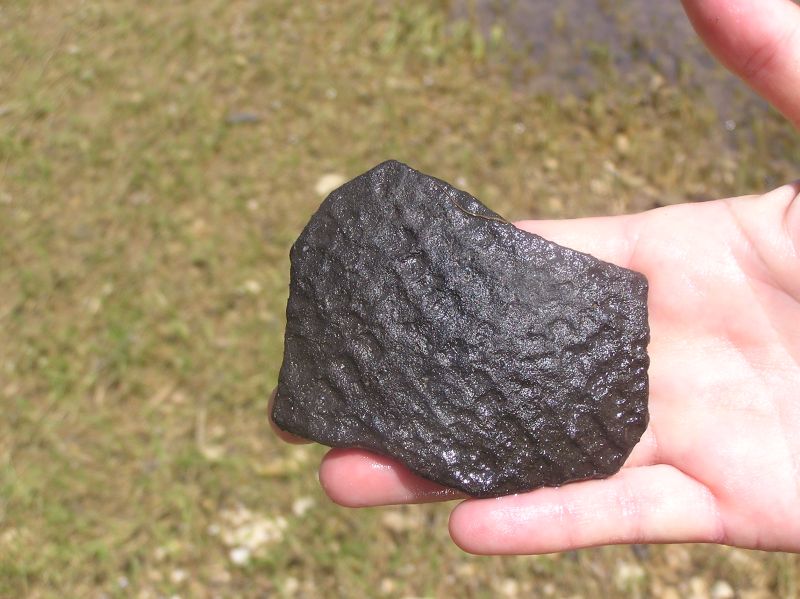

Shells in matrix.

Probably a pottery handle.
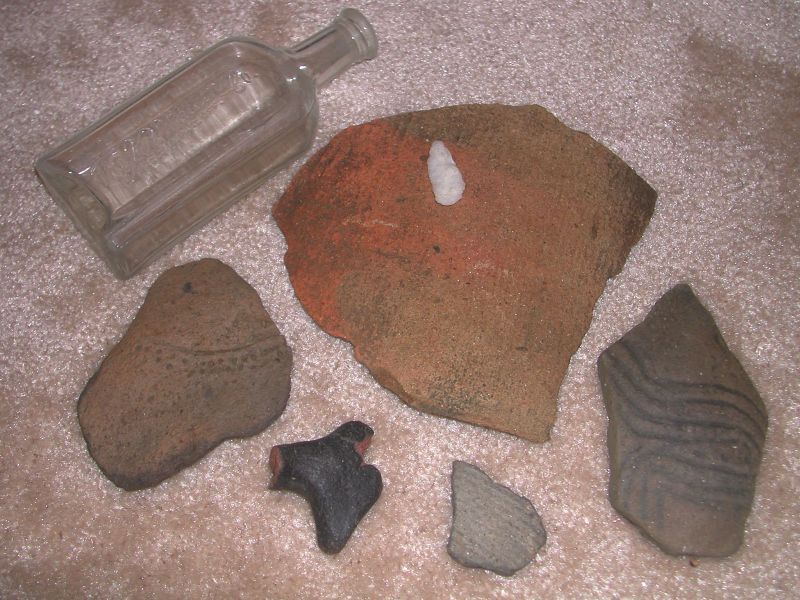
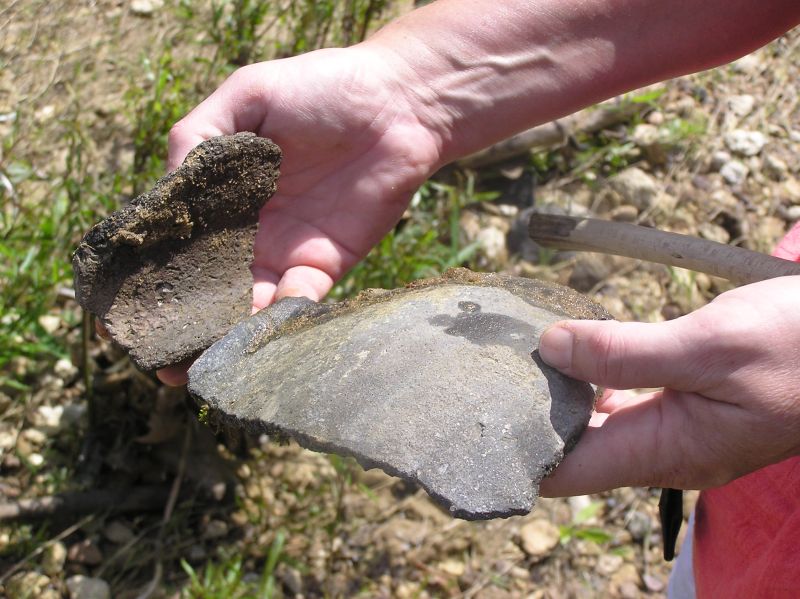
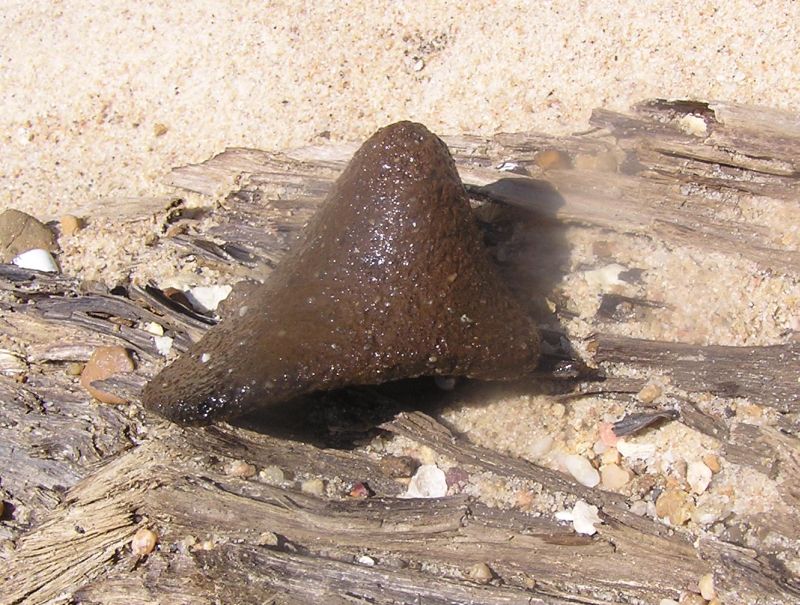
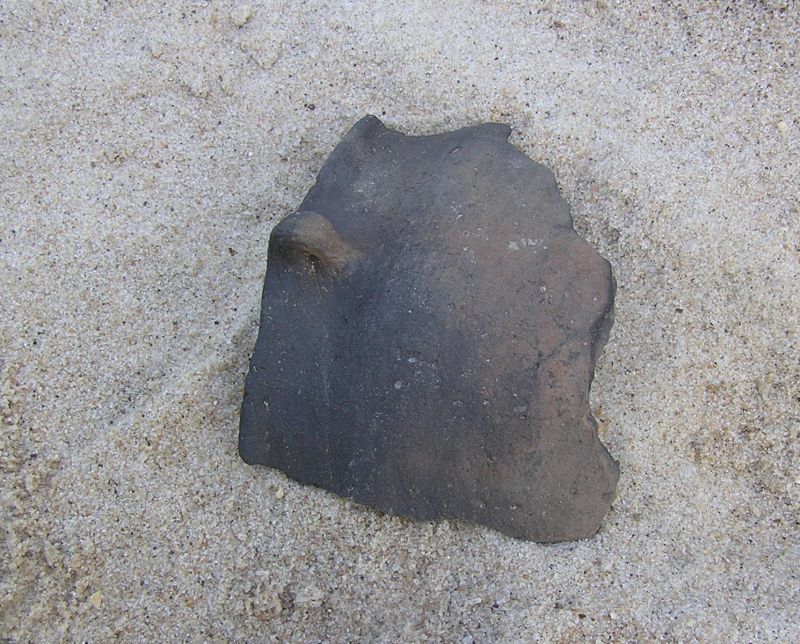
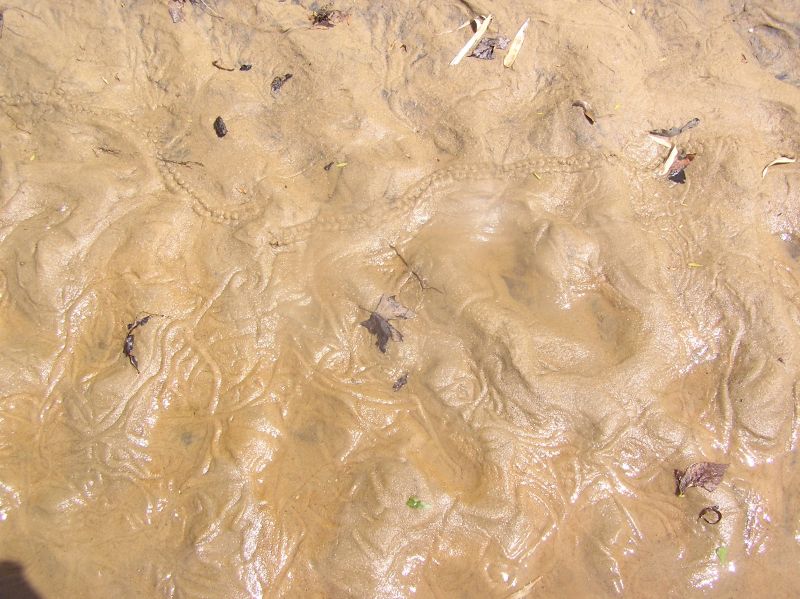
Worm tracks in the sand. Fossil worm tracks much like these are found in shale in north Alabama.
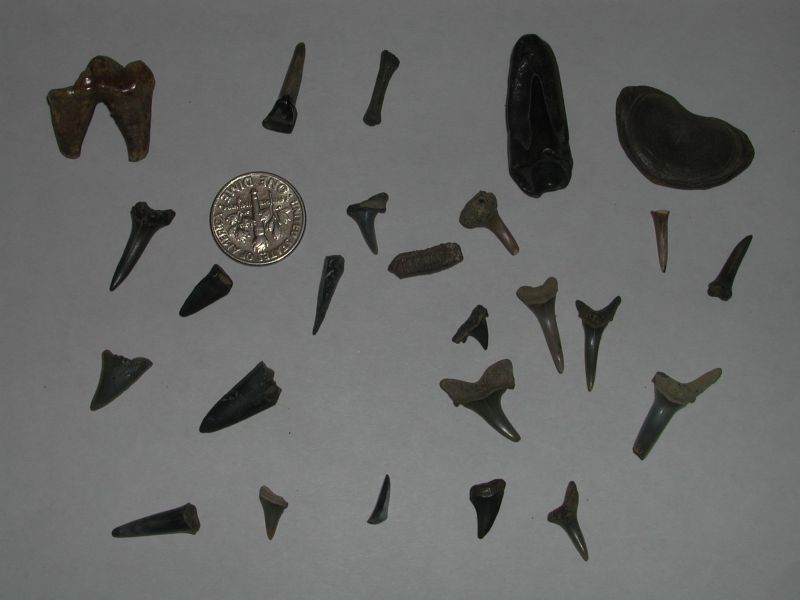
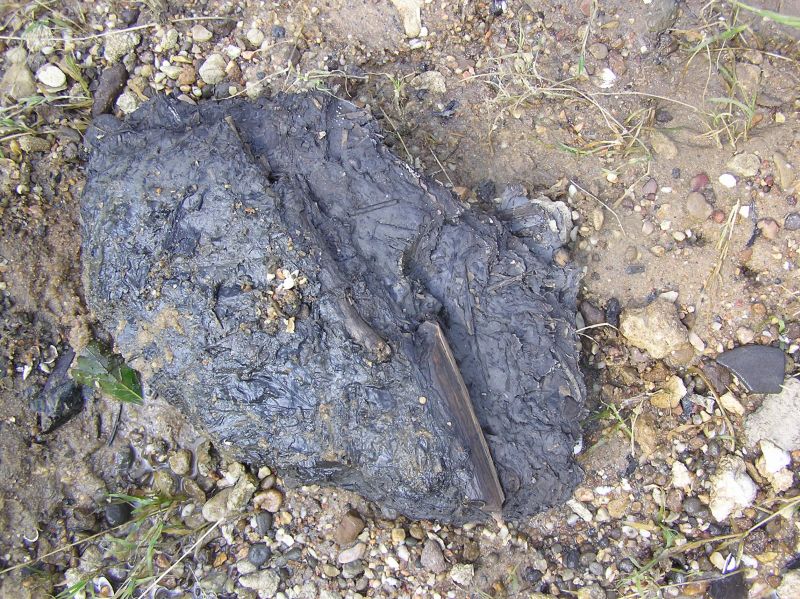
Numerous clayballs were found in the creek. This one shows bits and pieces of plant debris. The finder did not examine it closely to determine whether these were fossil leaves or recent, however, based on the geology of the area, they could easily be cretaceous fossil remains.

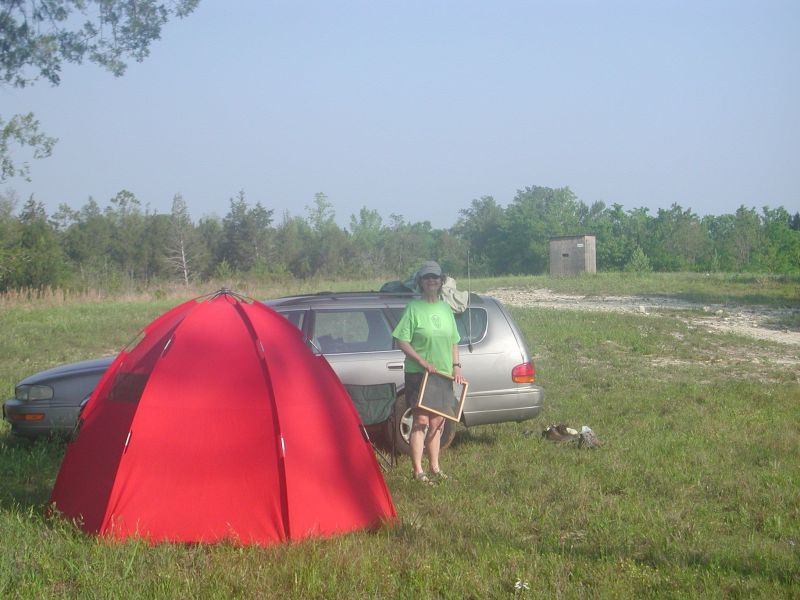
While Bob & Pam set their tent up . . .
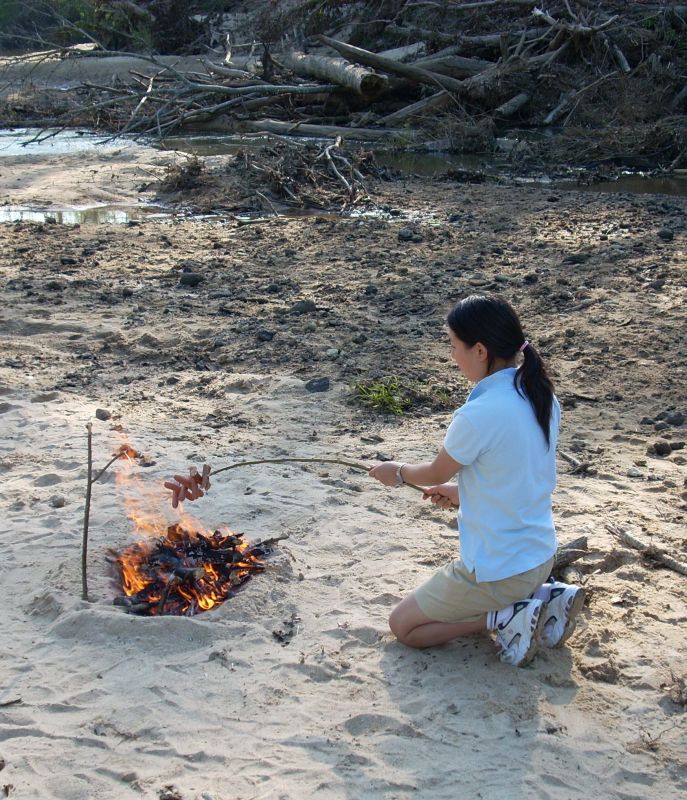
The others built a fire and enjoyed the evening.
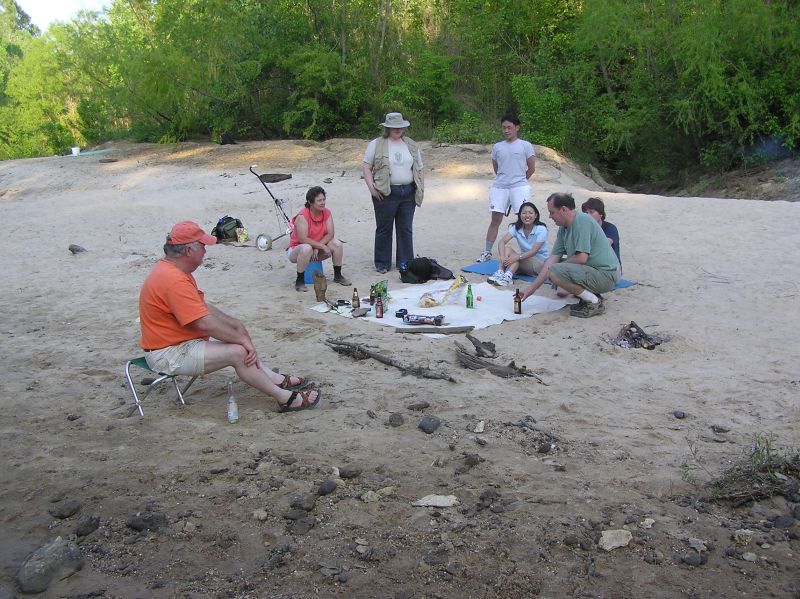
The campfire has about died out as some of the diehard fossil hounds hang out wringing that last little bit of enjoyment from the day!
May 19, 2007 - Cretaceous Fossils, Montgomery Co, AL
-
Some nice echinoids.
-
Large area of worm tubes - Bob says they look like shipworms.
-
Nice shells in matrix. Many times they are found loose, and more easily collected.
-
-
Echinoids in matrix.
-
Nice 1/2 vertebra found by Bill.
-
Becky and Don searching in all the nooks and crannies.
-
Very nice, whole shark vertebra.
Pages
June 23, 2007 - Eocene Fossils, Covington Co, AL
Unlike previous years, we were the only collectors that day. It appeared that some "cleanup" work had been done along the riverbank, because it was smooth and un-marred by the holes and trenches dug by commercial collectors in previous years. The landowner asked that we DO NOT DIG at this site, and hopefully, the word has gotten around (BPS never dug here, anyhow). Screening is ok, but NOT digging holes in the banks. Since a number of our members have been appalled in the past at what appeared to be irresponsible digging by people who didn't even know they needed permission to collect here, this was welcome news.
We found ray teeth, shark teeth, sting-ray spines, brachiopods, drumfish mouth plates, and some mystery pieces. Stay tuned! The river was a wonderful place to cool off on such a hot day, so BPSer's took full advantage. Several members camped out overnight (thanks for the A/C, Leisa!), and broke out the canoes the next day in hopes of spotting some more collecting areas. We found some shark and ray teeth, a live turtle badly wanting out of the hole it had fallen into, and had a very pleasant trip UP the river, but did not find the treasure hole we were seeking. So, obviously, we have to go hunting again, right guys?
(Photos courtesy Claire Smith and Vicki Lais)
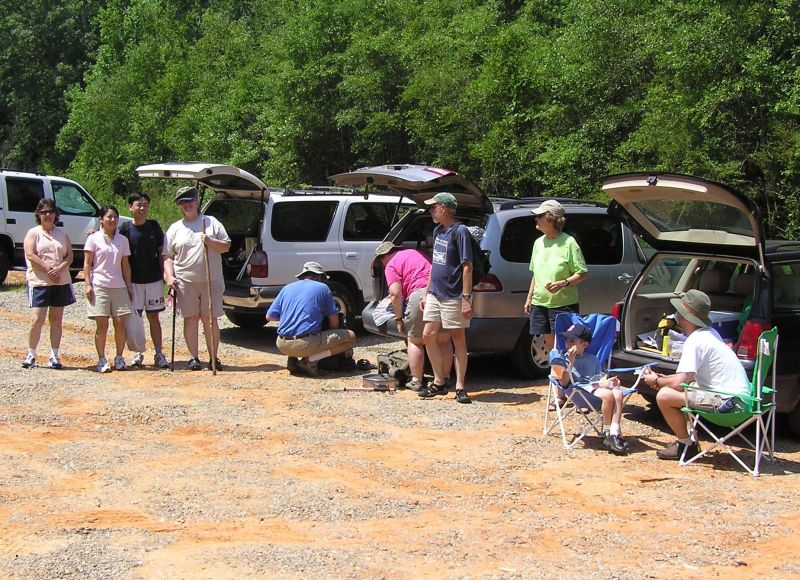
The group picture, hey, what can I say? We were late, hot, and hungry!
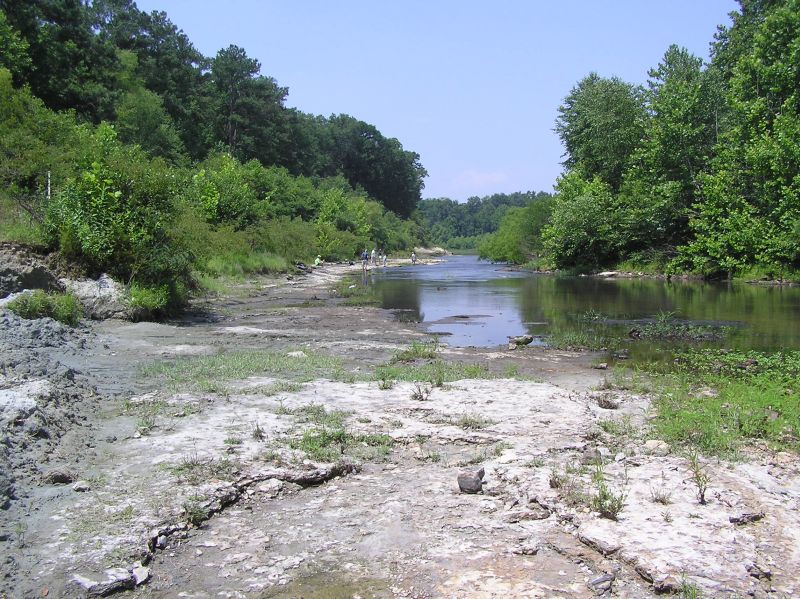
Very low water level today.
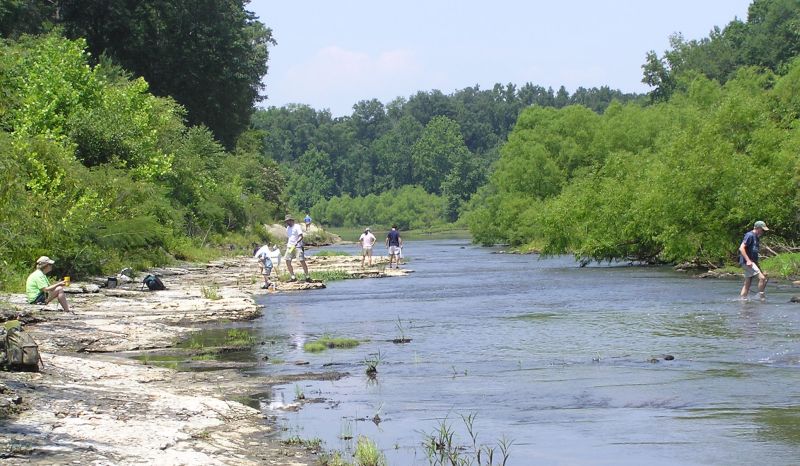
Members hunting for the best collecting spots - the river is quite shallow here.
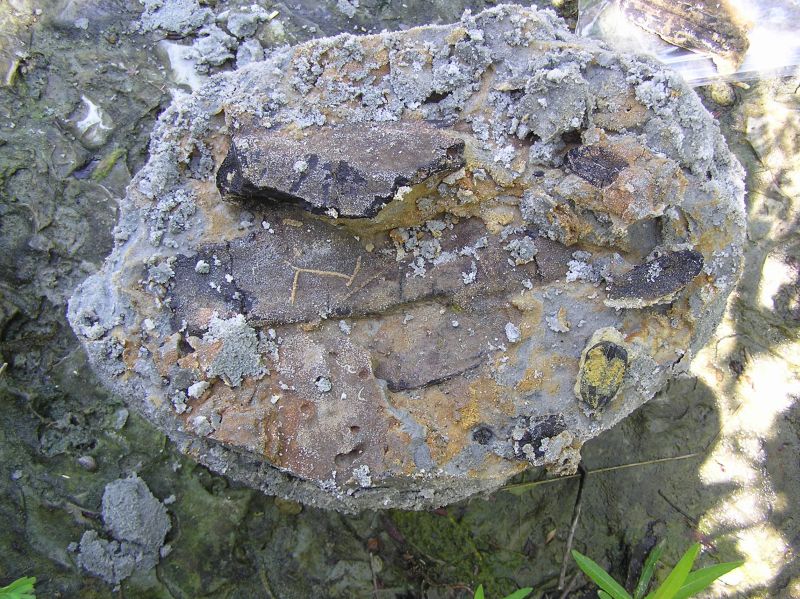
Jan found several pieces of petrified/ permineralized wood, and what appears to be a nice seed pod.
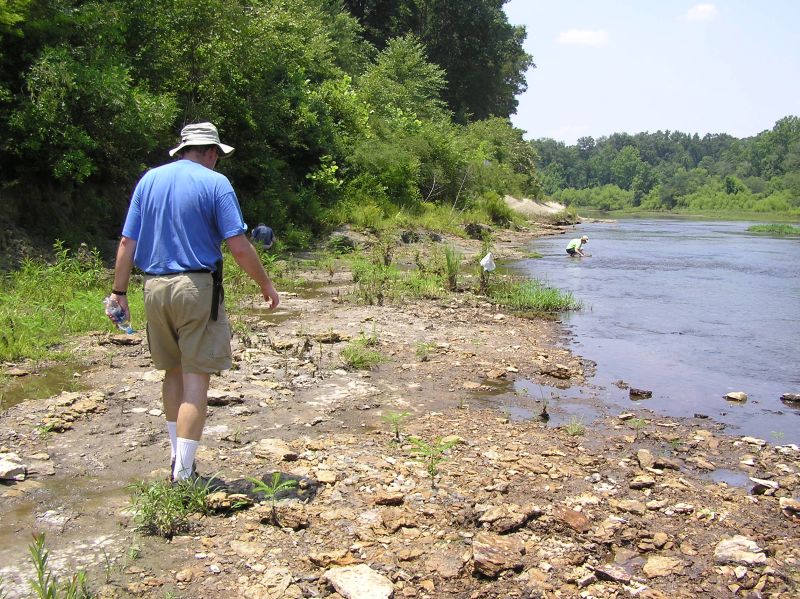
Jan heading downstream, surveying areas that are normally covered with water.
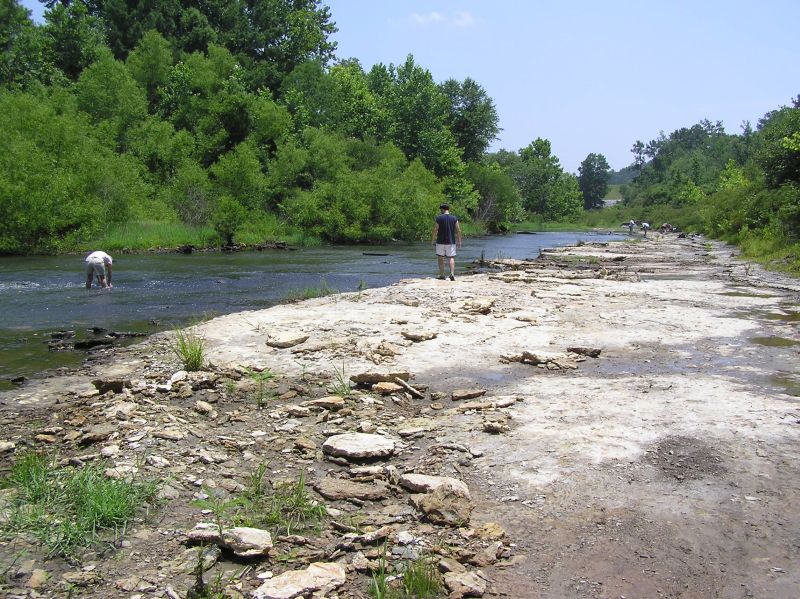
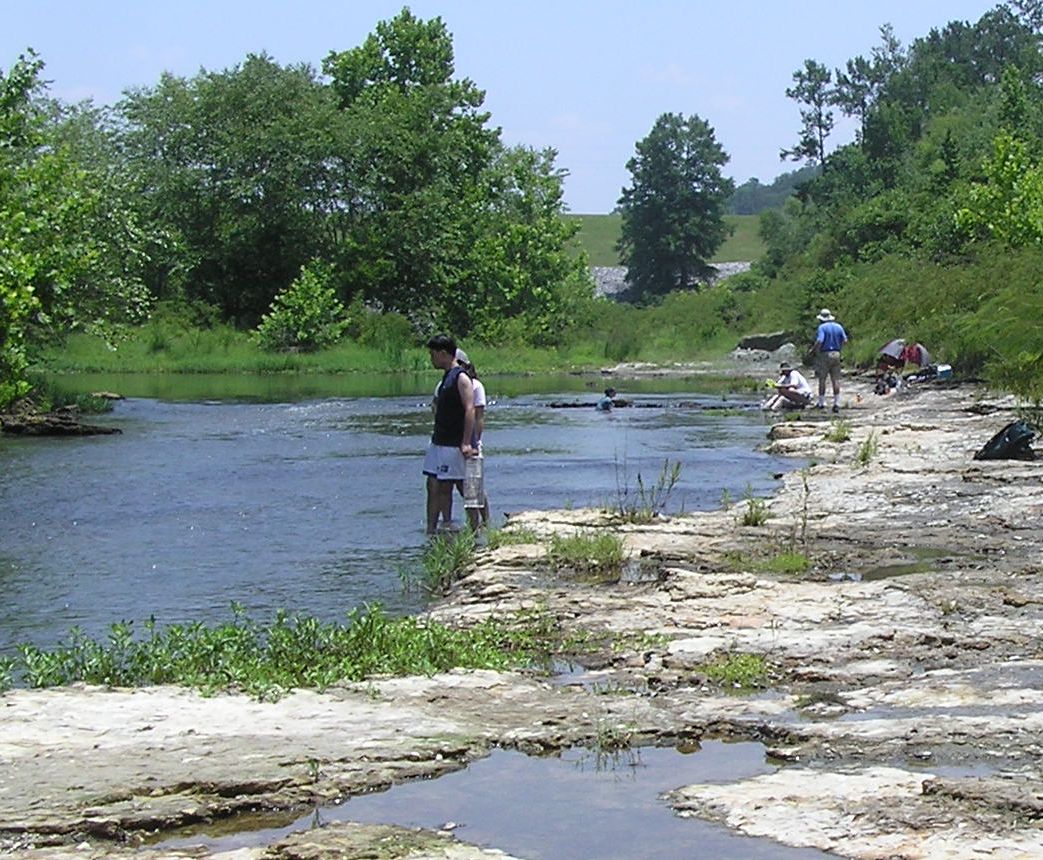
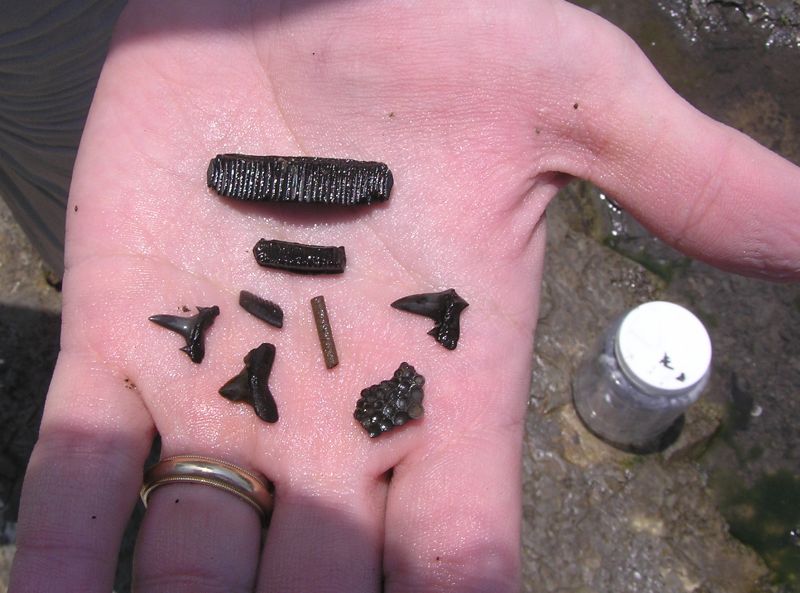
Sample of the fossils found at this site.
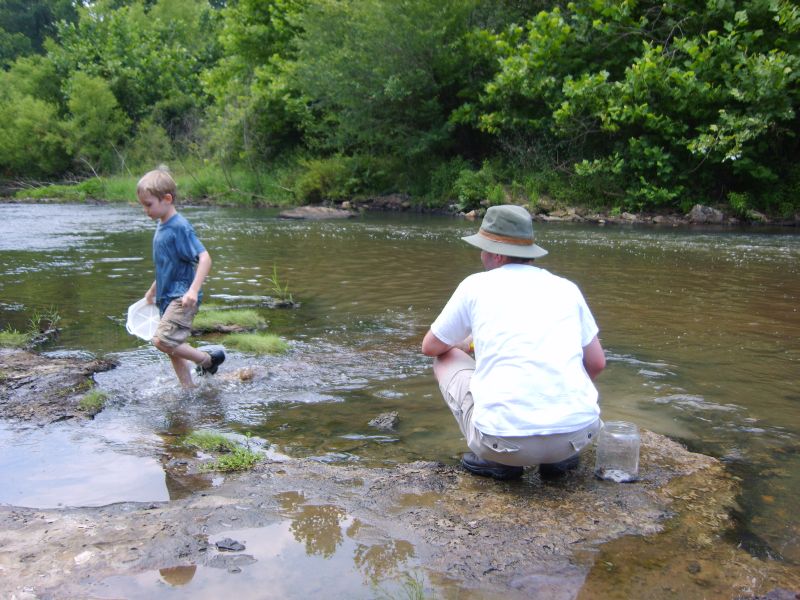
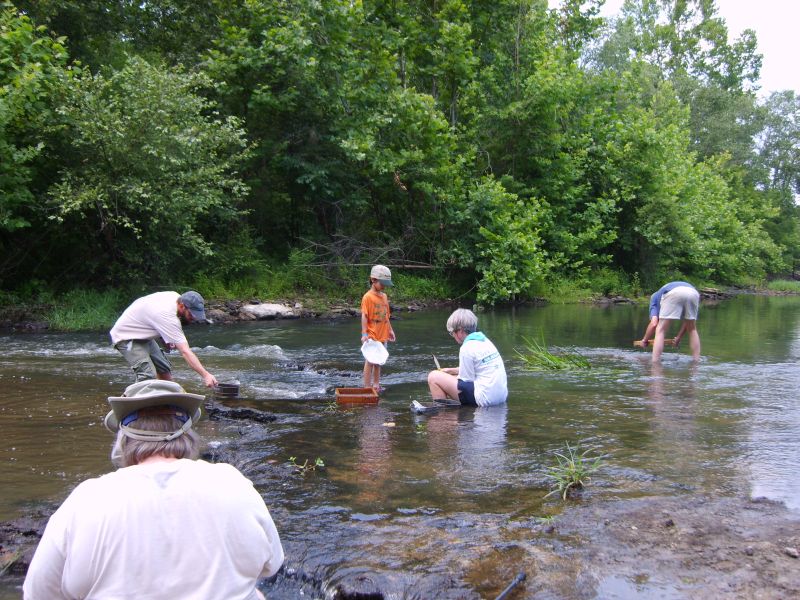
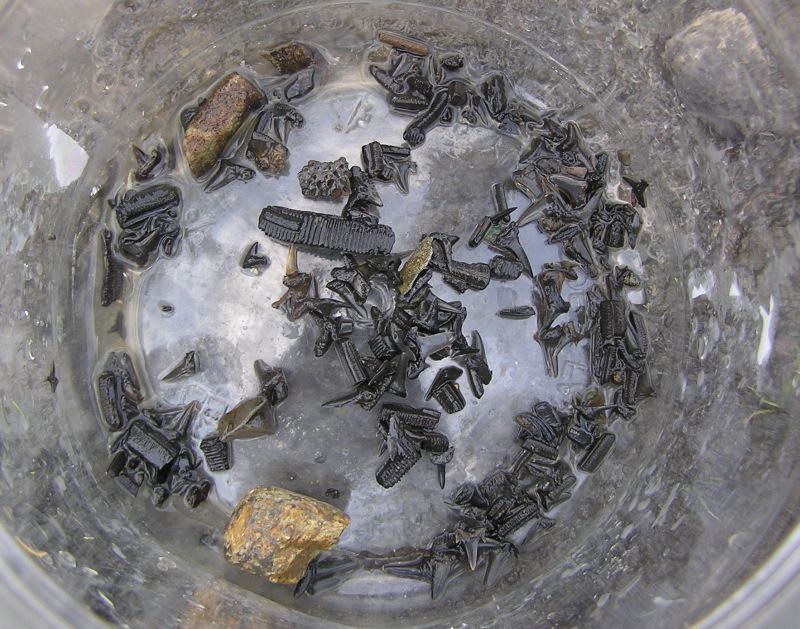
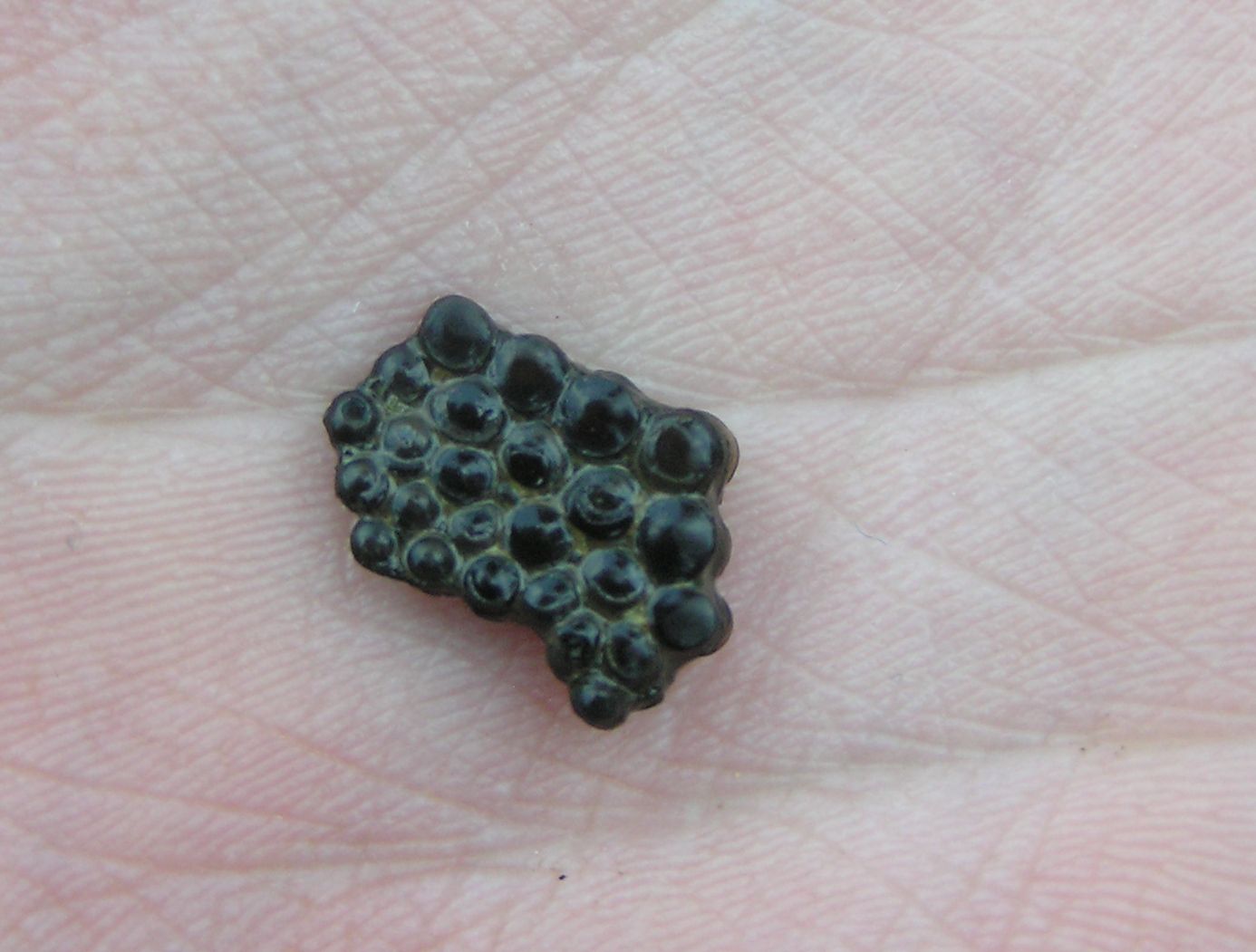
Drumfish mouth plate.


The river is low enough to expose this small waterfall, where, rumor has it, Claire and Becky engaged in a water battle.

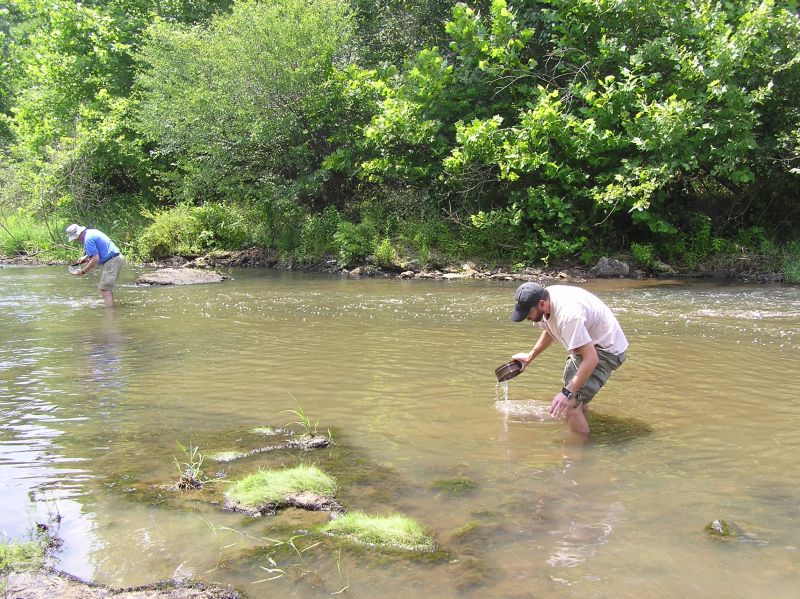
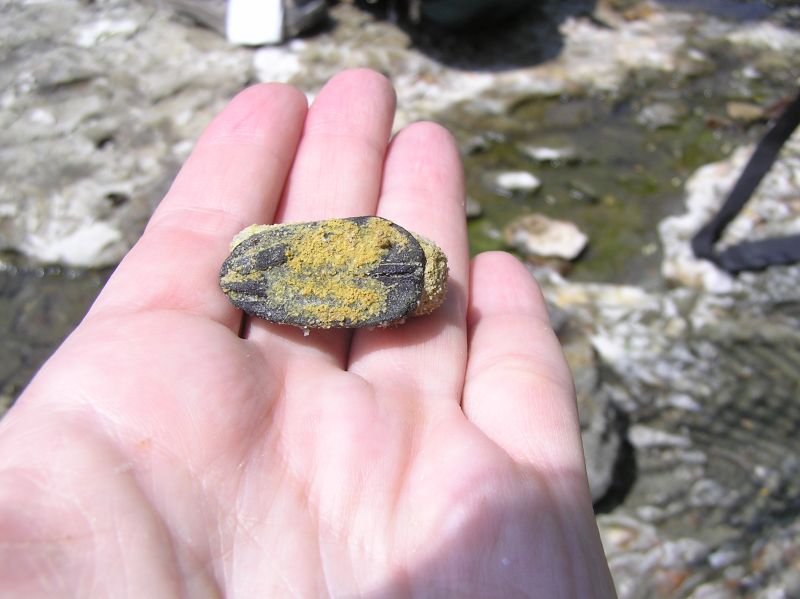
Good view of the seed found by Jan.

Wood found by Jan.
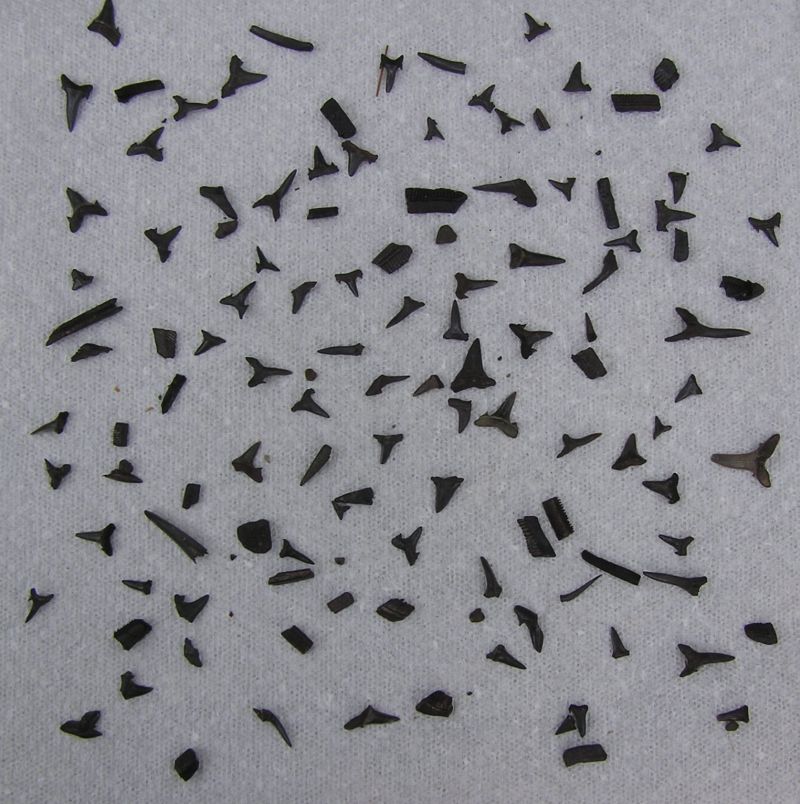
That evening at camp, we spread out our finds for the day.


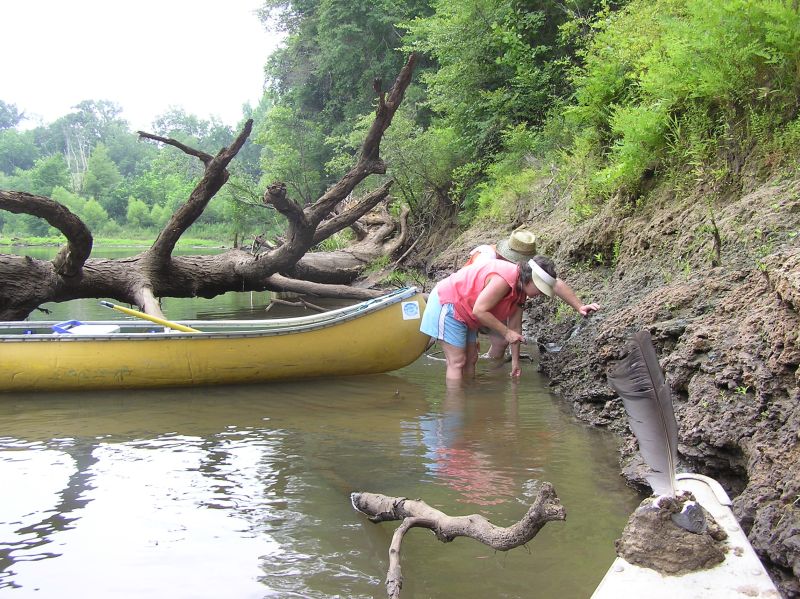
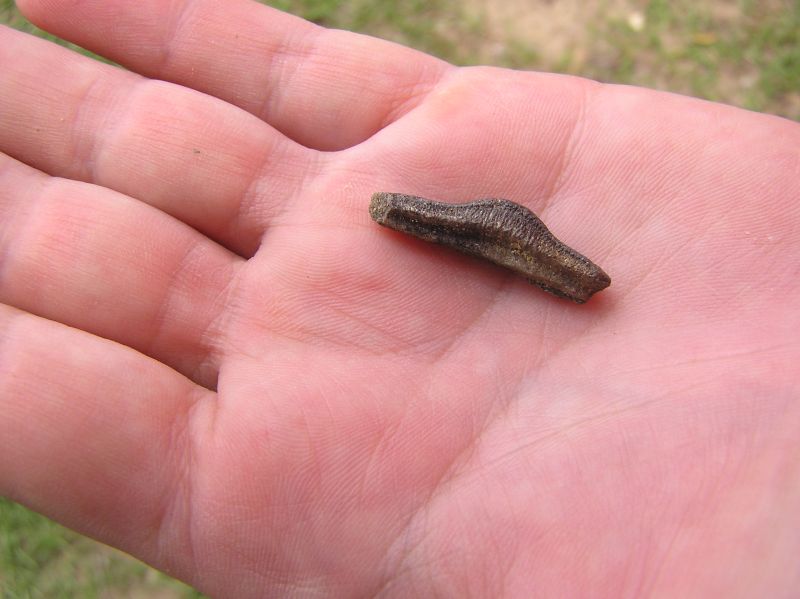
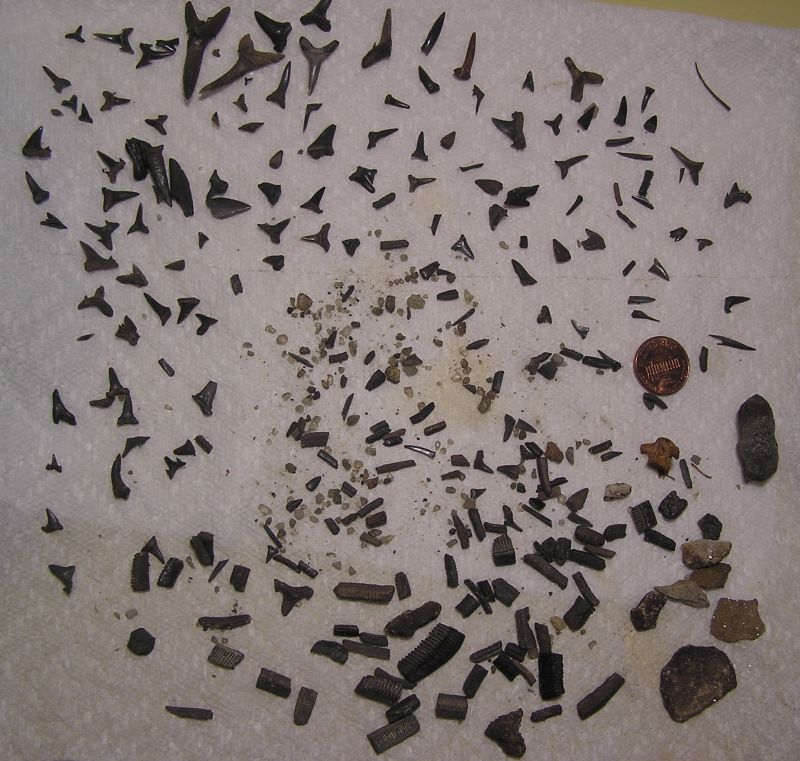
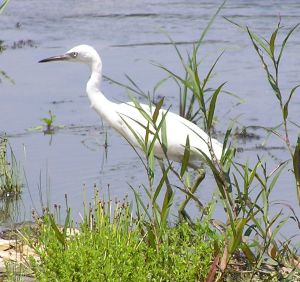
July 21, 2007 - Cretaceous Fossils, Greene Co, AL
After rounding up the gang (which is a minor miracle in itself!), we hiked back to our vehicles for lunches, then headed for the creek. Finally, time to get wet and cool off! Out with the sieves, from collander baskets to "real" geology sorters, to home made wood-sided screens. At least a dozen ptychodus teeth turned up - Claire may be the "winner" on these, she had found 6 at last count. Every screen we searched had several shark teeth, and other fossils were also found, including a large fish vertebra, gastropod steinkerns (internal molds), worm tubes, and one very nice arrowhead. We left relatively early (hey, some of us would have stayed til dark if we could have!), and many of us stopped by a famous BBQ joint to continue the fun and fossil discussion.
--Edited by Vicki Lais
(photos courtesy Bob Stewart, Steve Corvin and Vicki Lais)
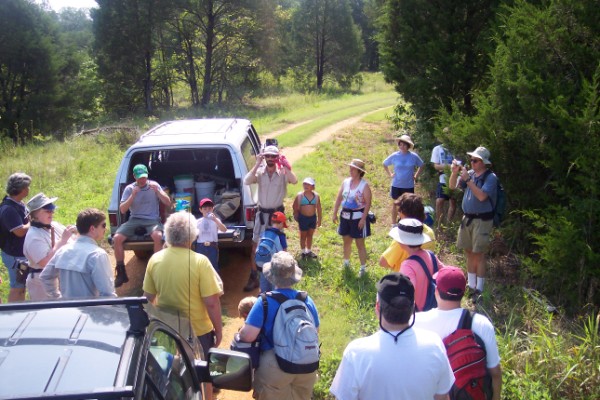
James Lamb gives a refresher talk on rules about collecting at museum sites, BPS ethics, and landowner restrictions.
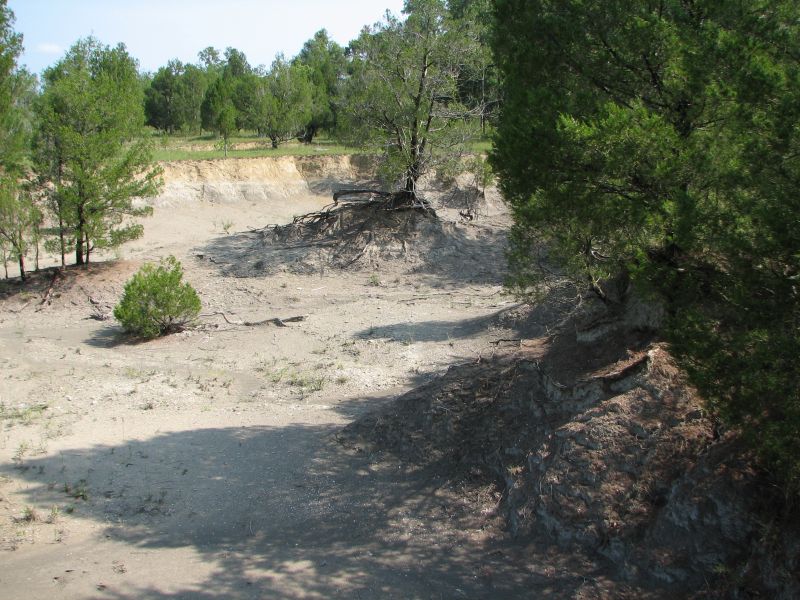
Typical Greene County, Alabama chalk gully.
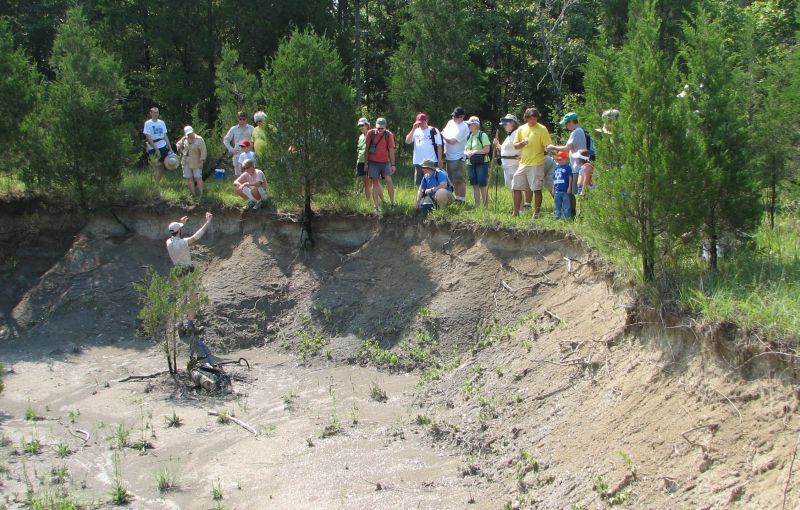
James Lamb explaining gully collection techniques.
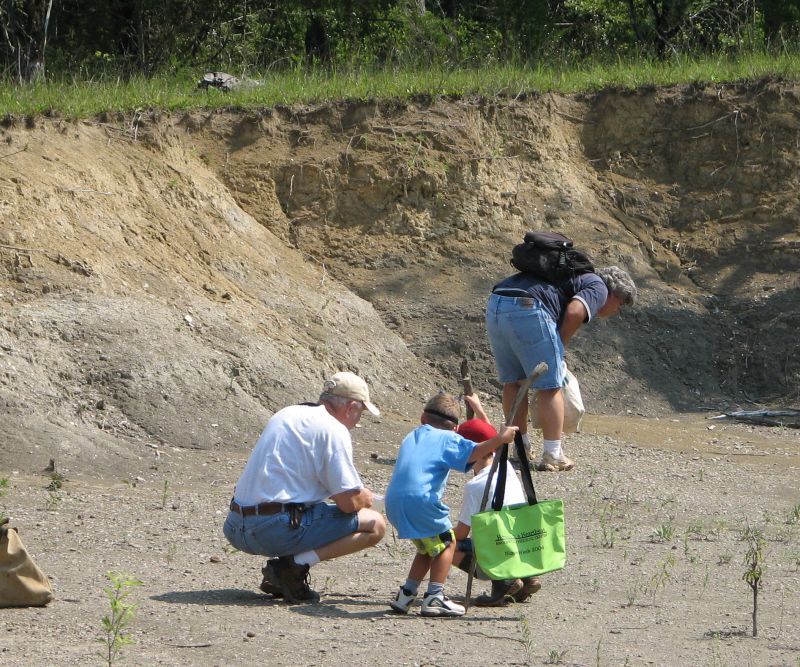
Even the younger members had fun.

Flipper bone of a Tylosaurus found by James Lamb.
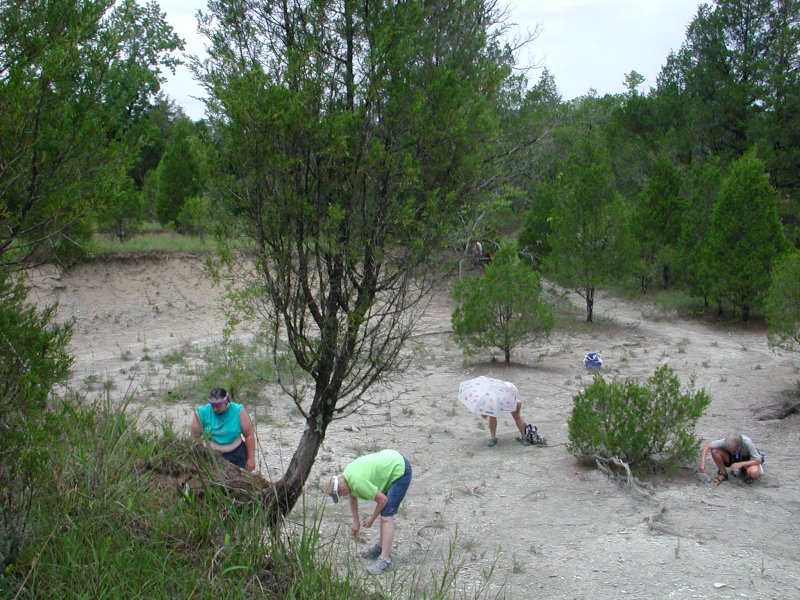
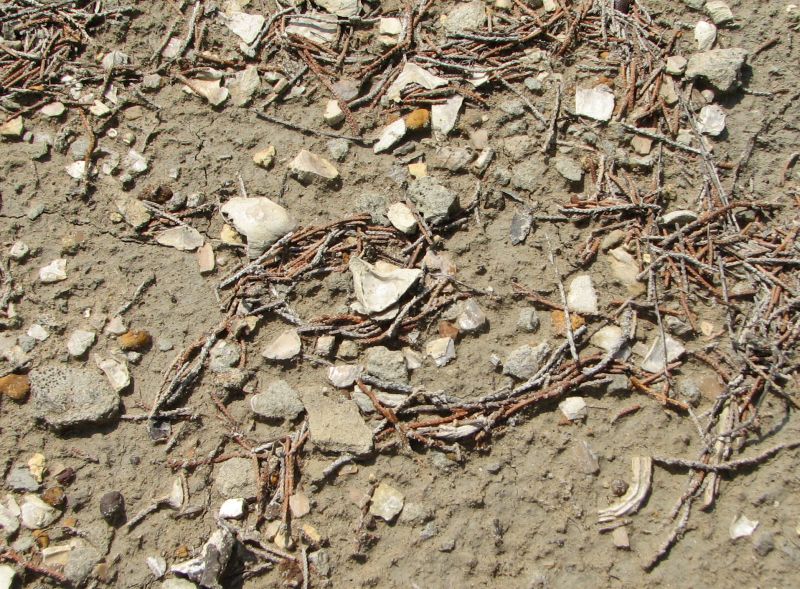
Many "pieces" are scattered throughtout the gully, and according to James Lamb, they are all fossils.

Small piece of turtle shell found by Bob.

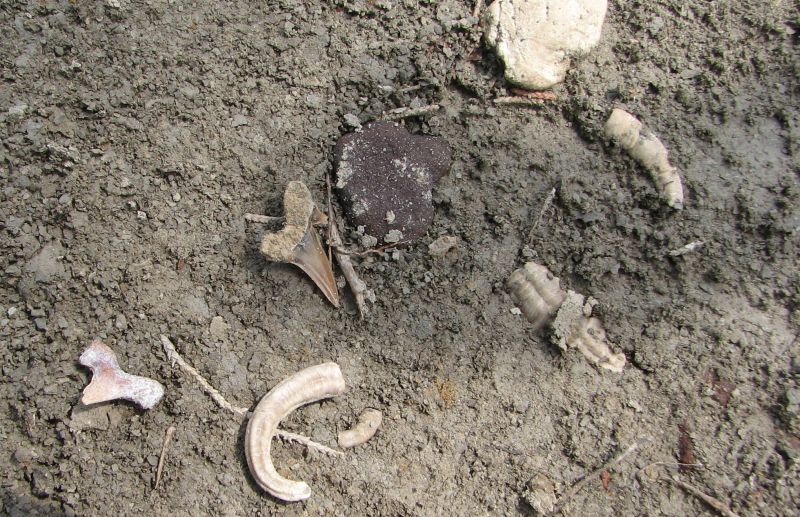
Some typical fossils found in chalk gullies - one finds hundreds of worm tubes, and only a few shark teeth.
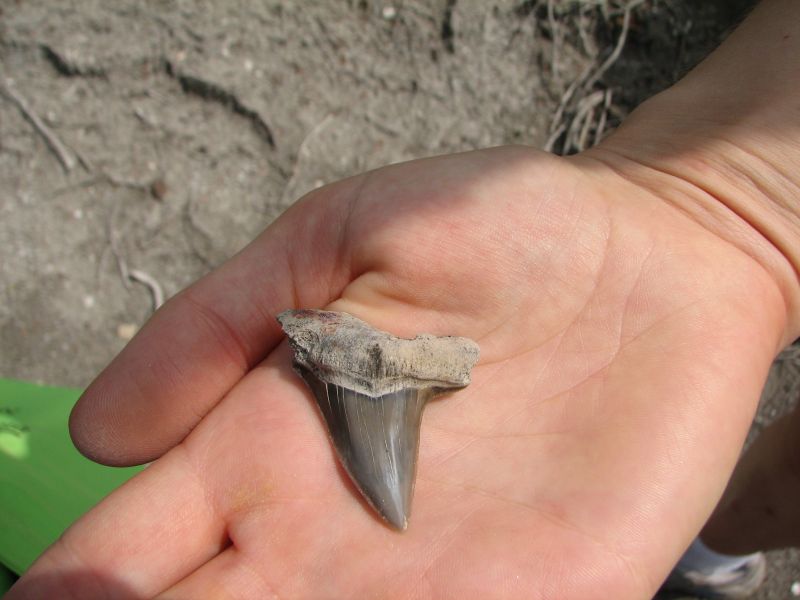
Shark teeth are "normal" to find in gullies, but Sylvie found one whose size is truly spectacular for these gullies!
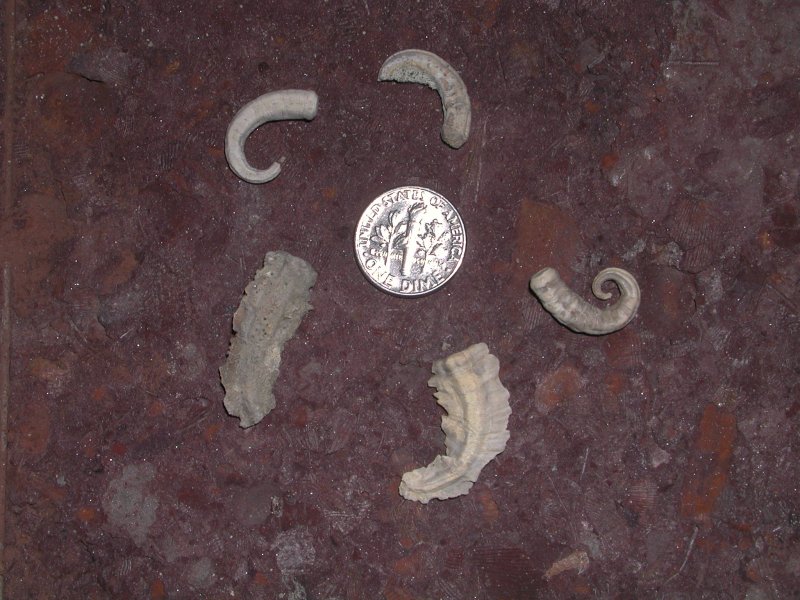

Large ammonite section found by Vicki.
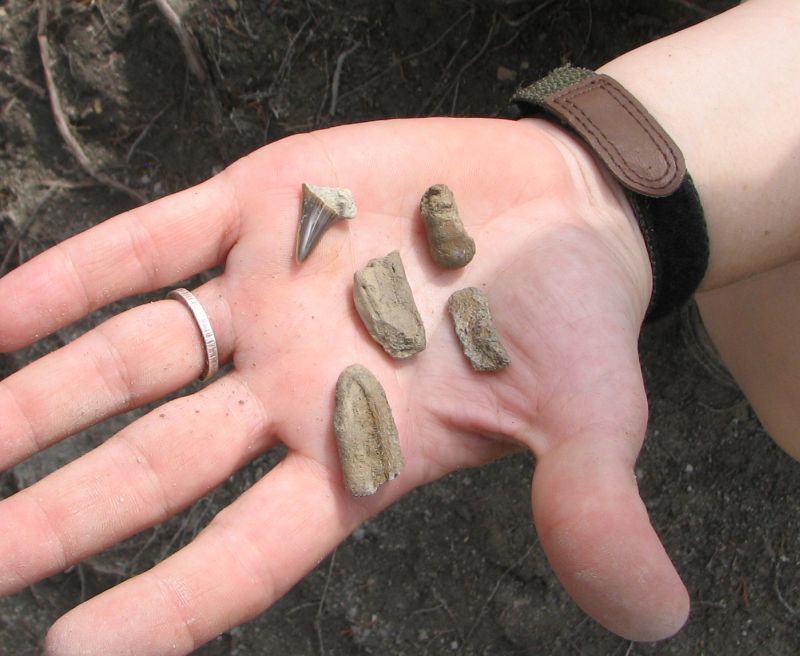


Mosasaur vertebra found by James Lamb (right beside Vicki's foot, darn it!)
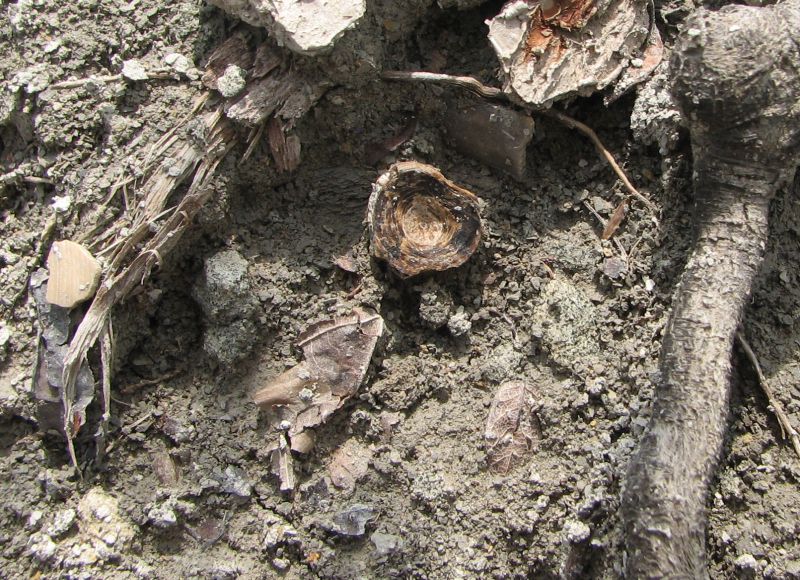
Fish vertebra.
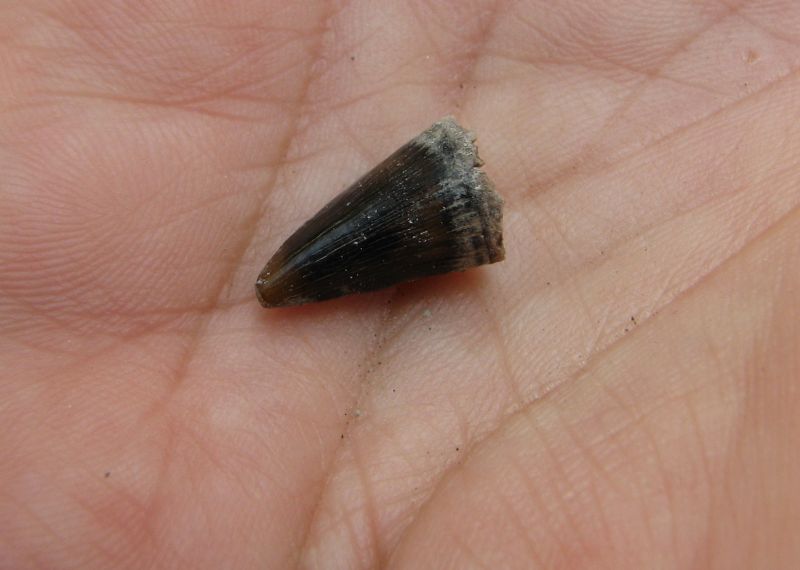
Nice mosasaur tooth.
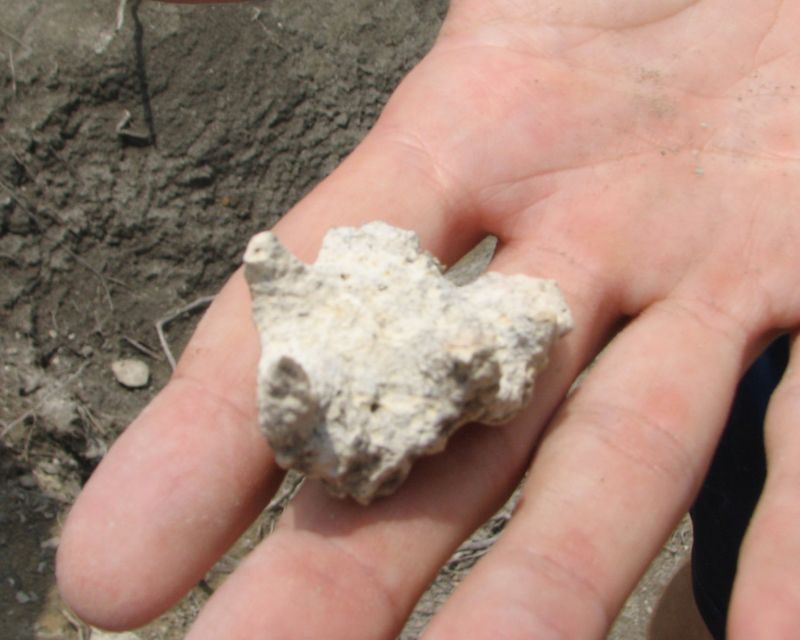
Another piece of ammonite.
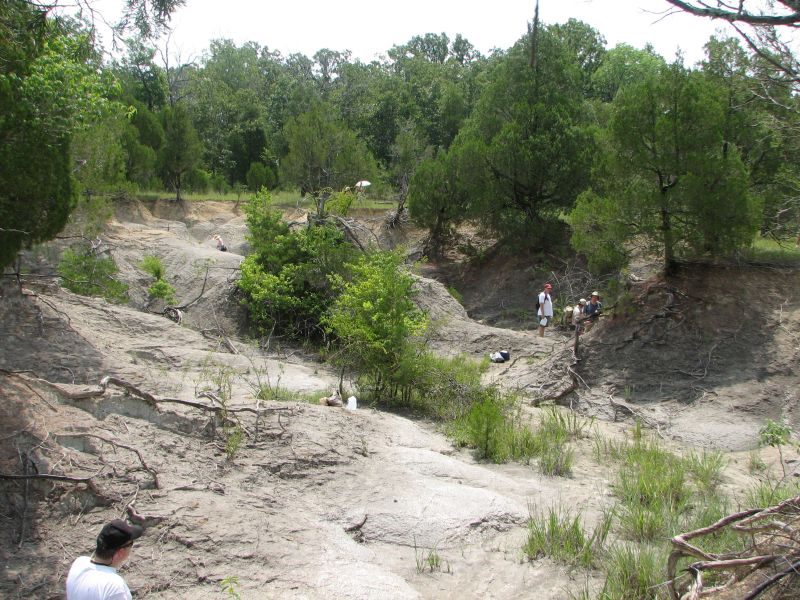

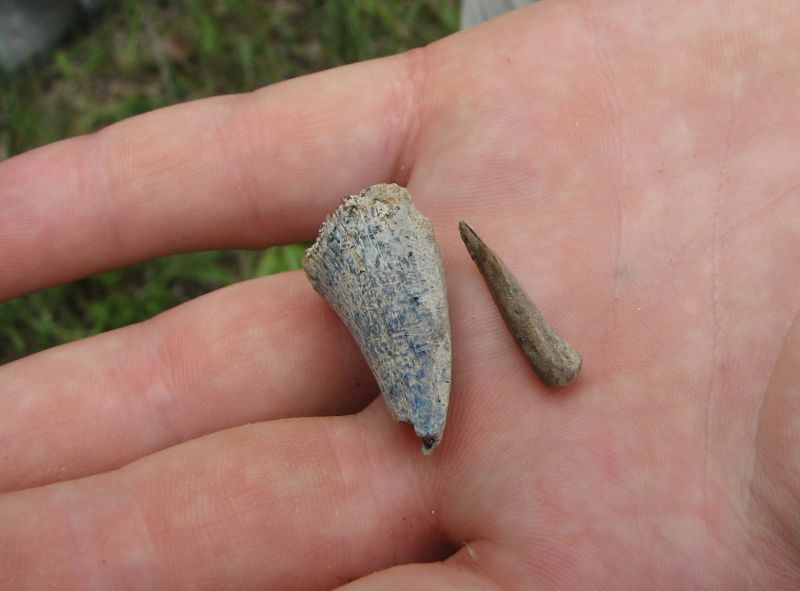
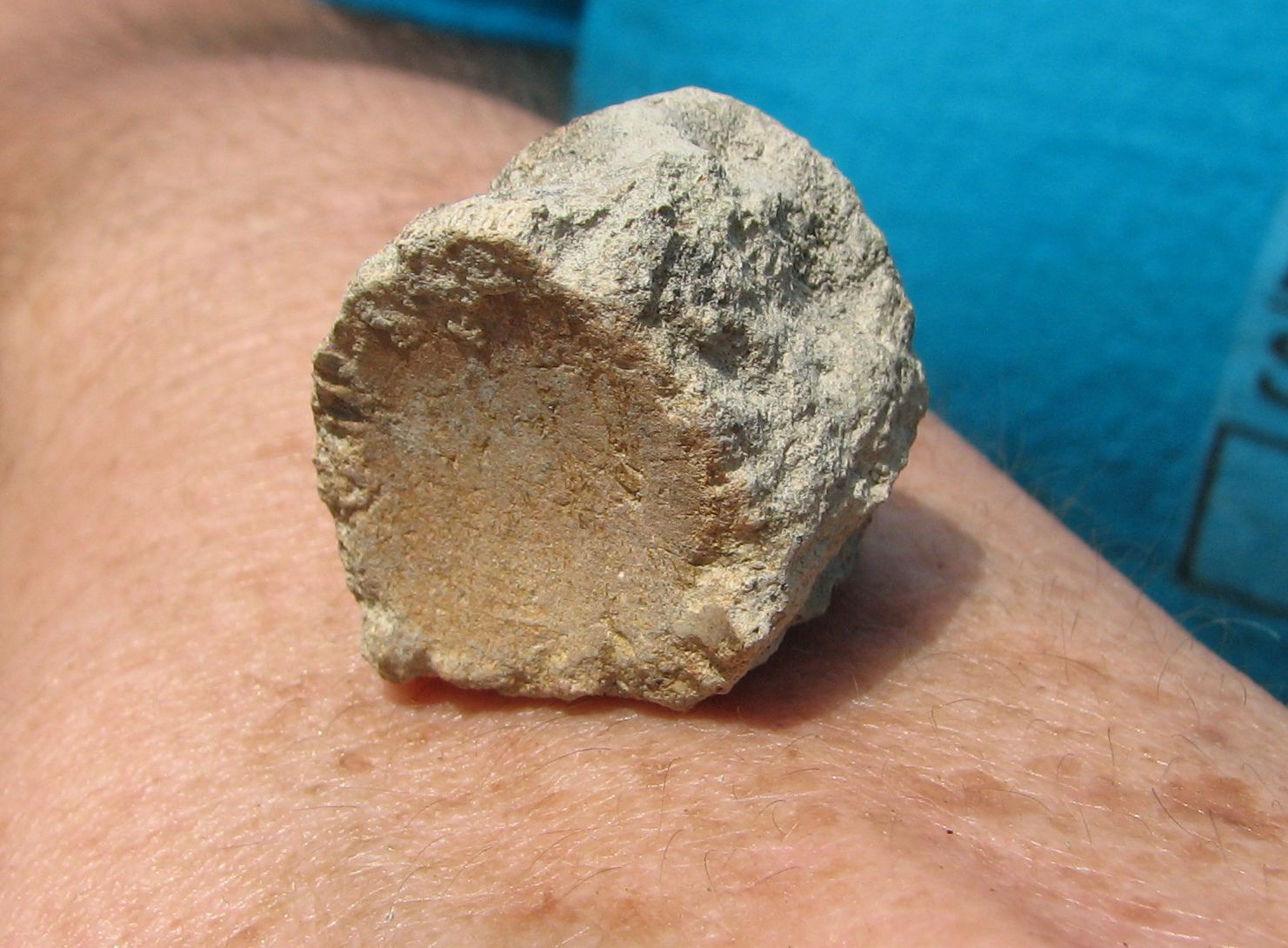
Small mosasaur vertebra found by Leisa as we were leaving the gullies "Everybody just stepped right over it or passed it by without noticing".
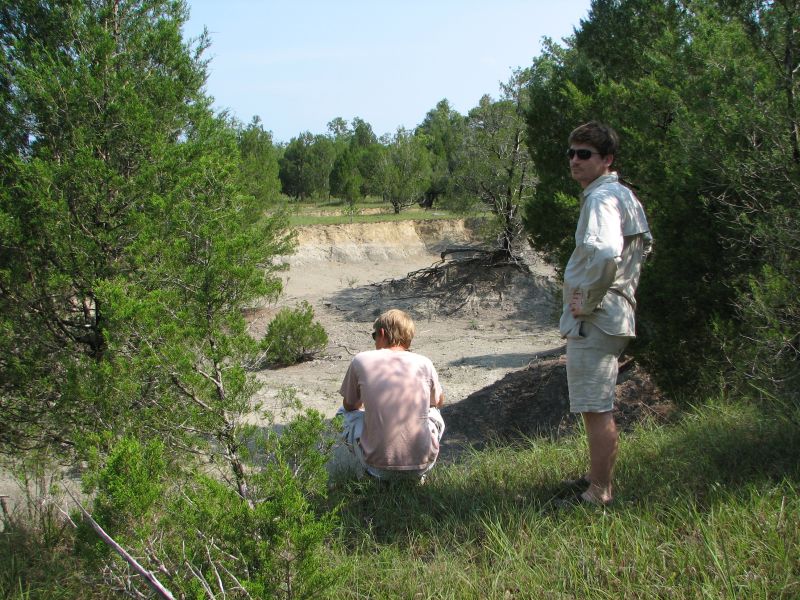
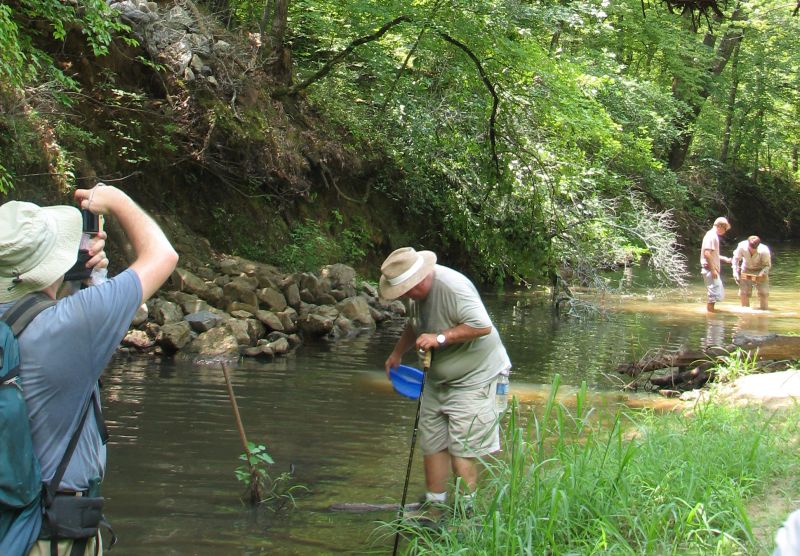
After lunch we headed to the creek to screen for teeth and whatever else we might find.
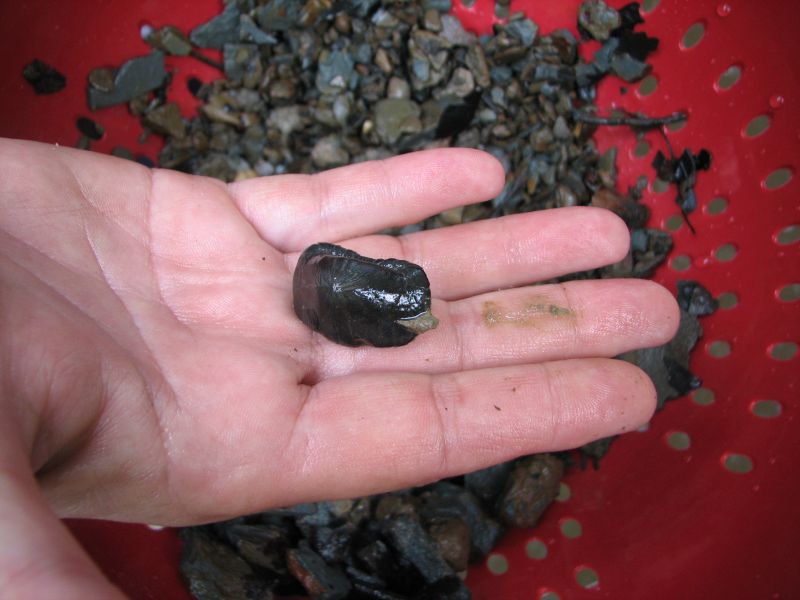
One of the many ptychodus teeth found in the creek.
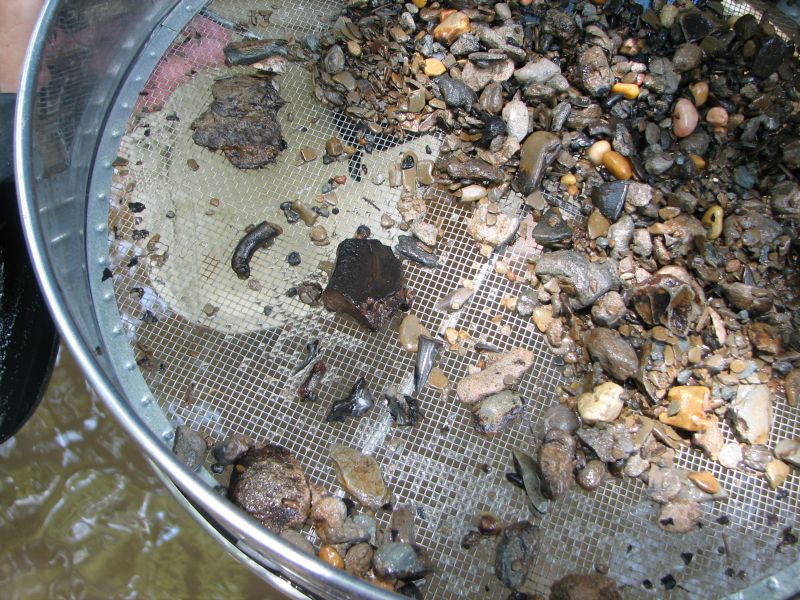
Typical finds after washing the sand/mud from the gravel - notice the shark teeth and the piece of bone.

Another load of "pay dirt" - fish vertebra, shark teeth, ptychodus tooth.
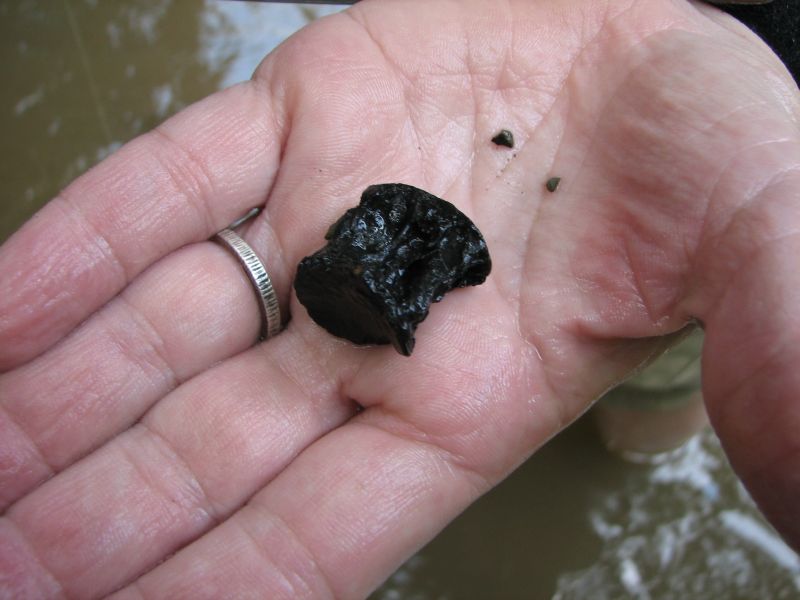
Closer shot of the fish vertebra.

Nice internal mold of a gastropod.
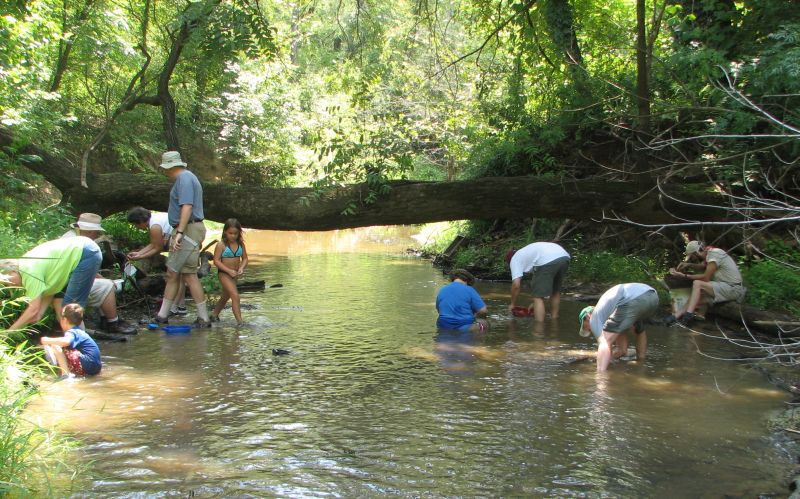
A laid back group, keeping cool, having fun. There were various groupings of people all along the creek - some went upstream, some went downstream. James Lamb is collecting material to be used in an upcoming exhibit at McWane Science Center.
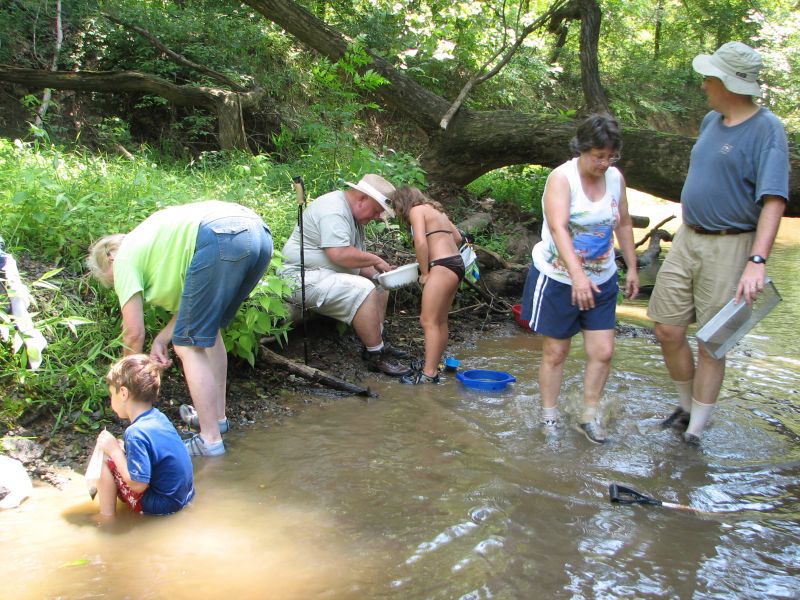
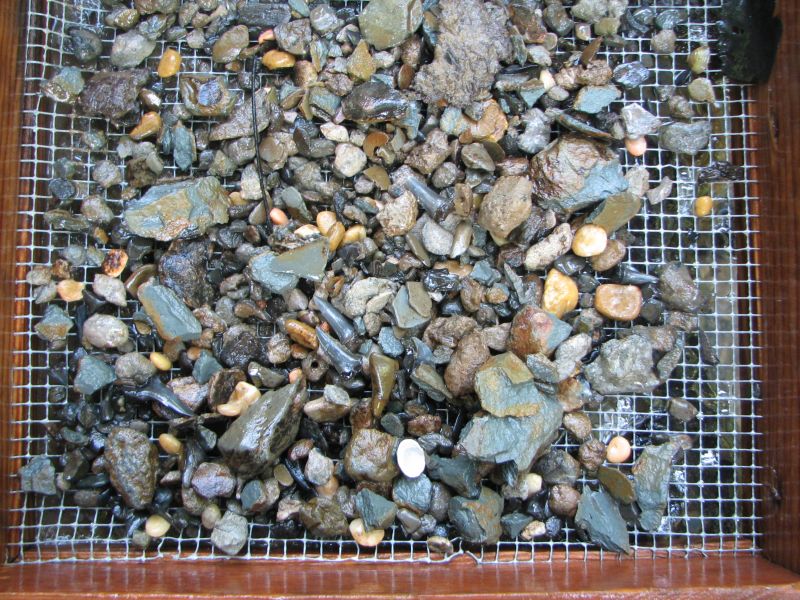
How many shark teeth can you see in this picture?
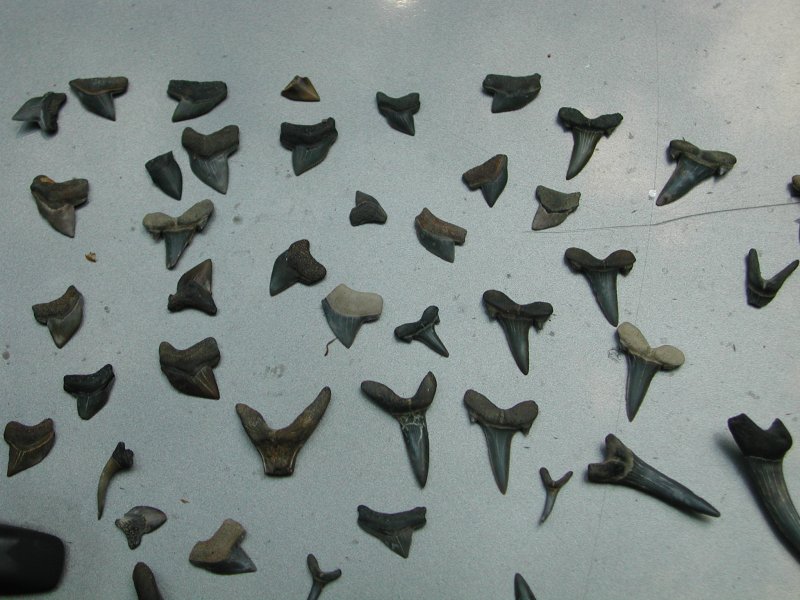
Sample of teeth found by Bob.
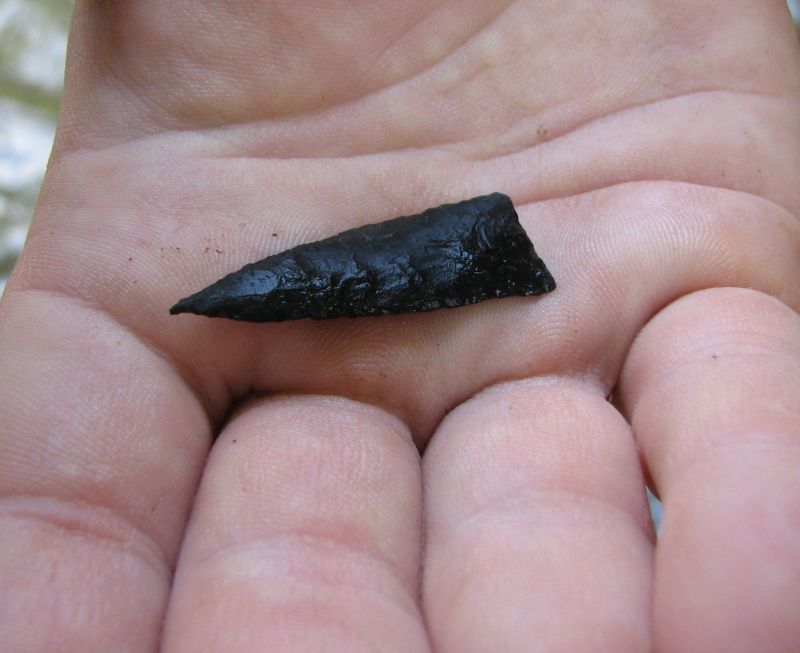
Wesley found a very nice point.
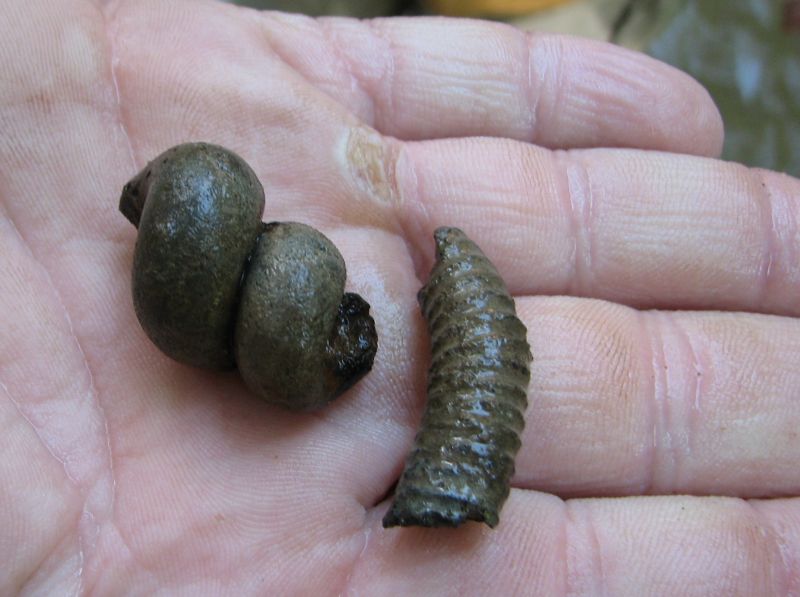
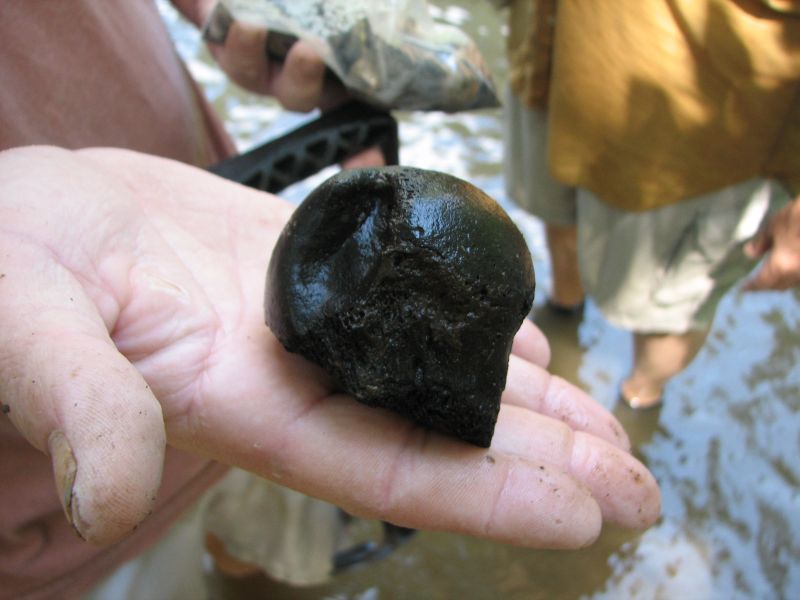
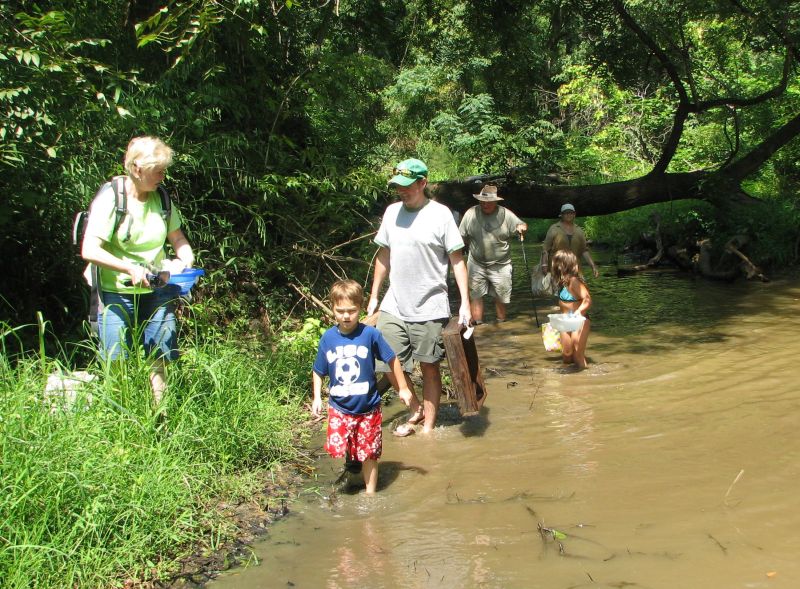
Headed home after a wonderfully pleasant day of collecting!
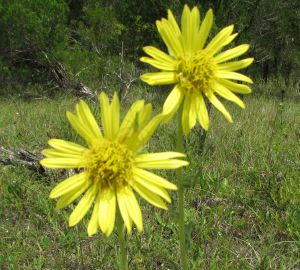
August 25, 2007 - Pennsylvanian Fossils, Tuscaloosa Co, AL
A trip to a non-working mine site to explore spoil piles for invertebrate fossils was on the menu for BPS's August field trip. The mining company, headquartered in Tuscaloosa county generously offered us the opportunity to explore at this site. A long, hot day on a moonscape was nevertheless a great trip, yielding some beautiful specimens.
We met with the mining engineer who gave us a quick overview of the mining operations, then let us go onto the piles to do our hunting. We hunted until the heat got to us and it was time to seek air-conditioning.
After cooling off at a Mexican restaurant, we ended the day at the Museum of Natural History at Tuscaloosa with a visit to their superb collections.
(photos courtesy Chris and Vicki Lais)
-
BPS members listening to lecture on mining operations in the area.
-
Vast expanse of spoil piles, discarded rubble from the mining operation.
-
Collecting fossils in spoil piles.
-
Tailings piles from the mines, brought from hundreds of feet underground.
-
Fern
-
More black rock, empty landscape at the collecting site.
-
Becky got dirty - real dirty!
-
Miscellaneous fossils found by Leisa.
Pages
September 22, 2007 - Mississipian Fossils, Blount Co, AL
A trip to a quarry in the Mississippian age, Fort Payne chert was on the schedule for BPS' field trip in September. It was a beautiful day with a good turnout. THe quarry had been dug out since out last visit so we were able to look around the freshly-exposed areas. Sylvie and Michael made a heroic effort to find a trilobite in some of the material that resembled Frog Mtn. formation, but to no avail. We wandered freely over the huge quarry area, finding crinoid stems, brachiopods, corals and a number of nice geodes. The chert is lightweight and filled with cavities, leaving behind molds of long-ago crinoids.
Lunch break at the Top Hat Barbecue gave us a chance to cool off a little, since the heat was pretty intense. However, the troops headed back to the quarry after lunch for a full afternoon of collecting.
--Photos courtesy Vicki Lais
Visitors Dig the Fossil Exhibit at the Homewood Public Library
Members of the Birmingham Paleontological Society held a fossil exhibit at the Homewood Public Library from September 1 until September 30. On Sunday, September 30, an Open House was held for the public, which included refreshments, a short dinosaur movie, and best of all according to the kids, a sand pile where they could search for their very own fossils.
The exhibit was held in the Ellenburg Art Gallery, which is a fabulous location to display the wide variety of fossils found in Alabama. There were 3 flat exhibit cases, one for each major Era in Alabama, the Cenozoic, Mesozoic, and Paleozoic. On the walls were photos from BPS field trips, and several posters with information on fossils and the geology of Alabama. Also there were two wall cases filled with fossils found on BPS trips, and tools that any budding paleontologist will need for starting their very own collection. Among the fossils on display were ammonites, mosasaur vertebra, shark teeth, calamites, ferns, echinoids, crabs, trackways, and fossil shells.
The younger fossil hunters walked into the room and immediately became totally engrossed in the dinosaur video; they never even realized there were snacks right behind them! After the movie, they joined the other fossil hunters at the sand pile. This was so exciting that many of them hunted for over an hour, just to see what turned up. (I'm sure all the fossil enthusiasts can relate to this!)
Overall, another great Exhibit and Open House experience. The Homewood Public Library was our meeting location for many years, and in a way, it felt like we were "back home".
Behind the Scenes - McWane Exhibit Installation
The Sea Monsters exhibit that opened at McWane Science Center on October 5, 2007 took many months of hard work by McWane Science Center employees and others. One afternoon of this months-long effort was captured on film, and is presented here for your enjoyment.
(photos courtesy Vicki and Chris Lais)
McWane Sea Monsters Exhibit
The new "Sea Monsters" exhibit opened October 5th at McWane Science Center and will run until sometime in the spring. BPS members and other friends of McWane Science Center were treated to a preview of the exhibit on October 4th, showcasing the paleontology department's new "ocean" exhibit featuring life size casts of Protostega (turtle), Clidastes (mosasaur), Pachyrhizodus (fish), Xiphactinus (XL fish), and Tylosaurus (mosasaur). In one area was a "fossil dig" which was very popular with the kids. The all new exhibits feature fossils from the Late Cretaceous which were found in Alabama.
Also, attendees had the opportunity to watch the opening night sneak preview of the new IMAX movie Sea Monsters . Although the Sea Monster movie is being shown in numerous locations around the world, McWane is the only location where fossils of the depicted animals are on exhibit in the same building. And the most fantastic thing about them - they're from right here in Alabama!
JAMES LAMB CLONED - a new technology has captured palontologist James Lamb between two pieces of glass! Throughout the exhibit are stations called "Ask the Paleontologist". When a question is chosen from the list, a prerecorded video of James providing the answer to the question begins, with the video appearing to float inside a pane of clear glass. James spotted one of the attendees looking in his direction, and overheard something like "he looks like the man in the video!" According to James Lamb, the intent is for each exhibit case to provide brief descriptions of each fossil throughout the exhibit rather than a large detailed page of text. If a person participates in each of the exhibits, they will take home with them a large body of knowledge.
The current exhibit, the ocean environment, is the first phase of a larger plan. Next spring a new exhibit featuring land creatures - including dinosaurs will be completed. The fully complete exhibit floor will have the ocean environment at one end, the land environment at the other end, and perhaps a barrier island environment in the middle.
There was a very good turnout of BPS members on Thursday night. Spotted at the reception were Bobby Popwell and wife, Greg and Jan Mestler and daughter Melonie, Martha Ivey, Bill and Anita Fowler, Jeff and Sara Roseman and son Wesley, Chris and Vicki Lais, Becky Guthrie all the way up from Mobile, Steve Corvin and family, Sandy Ebersole, Bob and Pam Stewart, Claire Smith, Leisa Whitlow, and Keven and Nathan Hope. And of course, Jun Ebersole, Kathy Wallace, James Lamb and all the other staff and volunteers who worked late to make this event so memorable.
For more information, check out the The Birmingham News - October 5, 2007 which had a front page write-up on the new exhibit, featuring paleontologist James Lamb and a Protostega on the front page.
October 21, 2007 - Cambrian Fossils, Cherokee Co, AL
The current drought brought us to a favourite site in the Conasauga formation in Cherokee County, hoping that low water levels would have exposed more finds. Unfortunately, it proved to be a double-edge sword in that, while more shoreline was exposed, with the lack of water washing the rocks, the trilobite pickin's were slim, indeed. However, our first stop was at a Dresdachian stage site which produced a bumper crop of brooksella, so, win some, lose some. Stop 2 was an Albertan stage site where a few really nice trilobite finds kind of made up for the scarcity. All enjoyed the nice weather and the halloween cupcakes. We had fun welcoming young Liz to the club. She found some fossils, dug up some clay and practiced her rock-skipping skills and had a ball. We finished up at a favourite restaurant where some of the best fried green tomatoes in Alabama can be found. Yum.
After the main trip, three members scouted a couple of potential new sites. The first site was totally non-productive, while the second site had a large outcropping of shale, where a few tiny trilobites were found.
--Photos courtesy Vicki Lais
November 17, 2007 - Mississippian Fossils, St. Clair Co, AL
This month 14 people showed up for the BPS trip and collected in Mississippian age fossils in St. Clair county, Alabama. Along with the perfect brachopods and horned coral, quite a few trilobite parts were found in the Ft. Payne chert.
Photos courtesy Martha Ivey and Vicki Lais.
2006
January 14, 2006 - Cambrian Fossils, Cherokee Co, AL
Neither rain, nor sleet nor snow nor lake wind advisories will deter the BPS from hitting a favorite NE Alabama site. No kidding about the snow! As we assembled in the morning at the rest area little flakes were seen drifting down. We all bundled up and headed out anyway. In spite of the weather, we had a great turnout of 24 1/2, with members coming from as far away as Atlanta and Selma to hunt trilobites on a lake in Cherokee county.
First stop was a primo site for finding brooksella and several nice pieces were found. Vicki found an unusual one shaped very much like a small starfish. "Brooksella" are believed to be the internal mold of a "primitive jellyfish", possibly from the Conasauga Fm, Dresbachian stage, late Cambrian approximately 515 million years ago. Nancy worked hard at trying to persuade Daisy the Dawg to sniff out fossils, but Daisy would rather play with Paige and search around for a squirrel or two! After experiencing the freezing wind which would almost blow one over, it was time to warm up - on to the next site.
After a timeout to repair a flat tire for Michael we took off for our 2nd site. Temps in the 40's (felt like the 30's!) and the whitecaps on the lake were a hint that maybe we should NOT go out in the boat, so we contented ourselves with the shoreline. Nevertheless, everybody found good amounts of trilobites. Steve found an exceptional trilobite specimen on a hard pebble, and Hitoshi found a beautiful stromatolite specimen. Since frostbite seemed imminent it was decided to retreat to the restaurant and get hot food and tell tales of the day and of other trips and fun. Michael and Sylvie had an exciting announcement: the arrival of baby "Elias" due in May! While we warmed our bods, Leisa was out "visiting". She met a local person who invited us to his house where he said there were trilobites behind the house, and sure enough, there were plentiful outcrops of the Conasauga Shale. (He also gave her a very nice 4 inch trilobite he had found in California - lucky lady! Just shows what happens to nice people!) Trilobites found today ranged from 1/8 inch to about 1 1/2 inches. These fossils are from the middle Cambrian Conasauga Fm. Albertan stage, and are approximately 530 million years old. Cephalon (heads), pygidium (tails), and several whole specimens of Coosella, Coosia superba, Kingstonia, Densonella, Holcacephalus, and Norwoodella were found.
Edited by Vicki Lais
(pictures courtesy Lea Martin and Vicki Lais)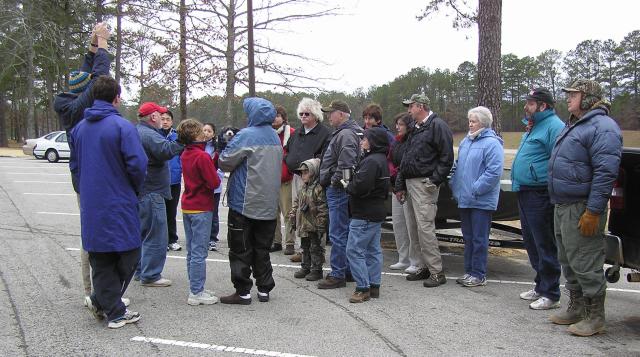
At the meeting location, Greg is informing the group of the day's upcoming activities.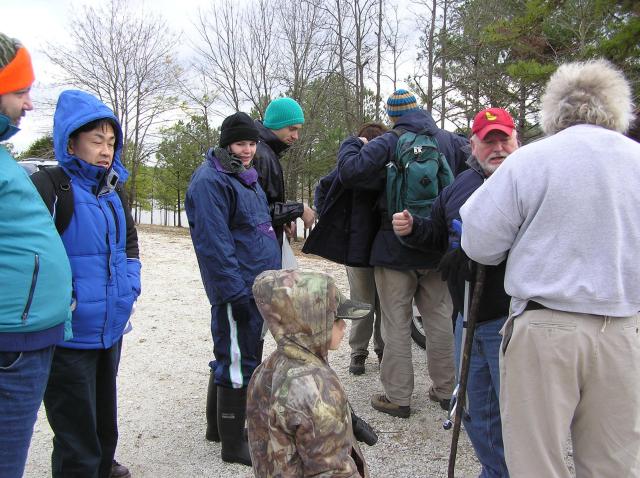
Greg discussing what will be found at the first site, and showing his collecting tool.

Part of the group searching for brooksella specimens. This lakeshore is composed of mostly pebbles.
Yeah... let's see.... thats Greg, and Michael, and, um, Jan, and Lea, and uh, who's that in the blue jacket?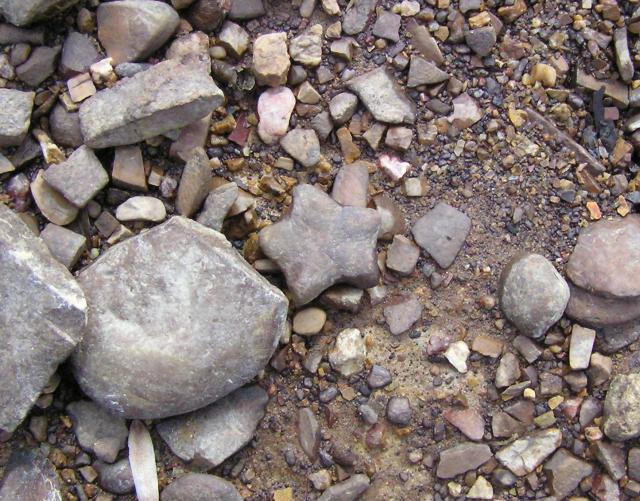
A nice brooksella found by Vicki.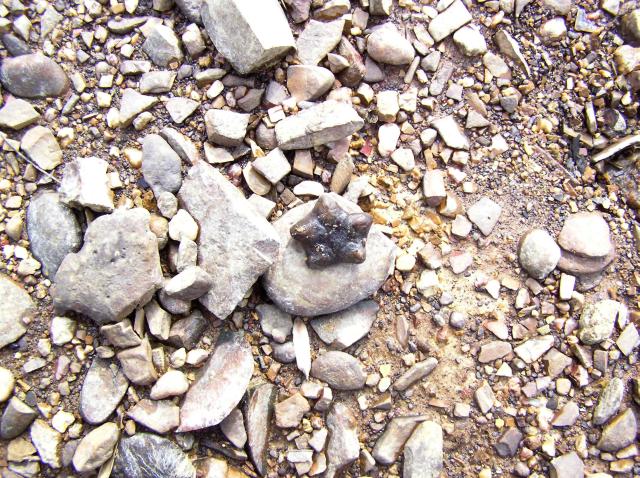
Other side of the same brooksella.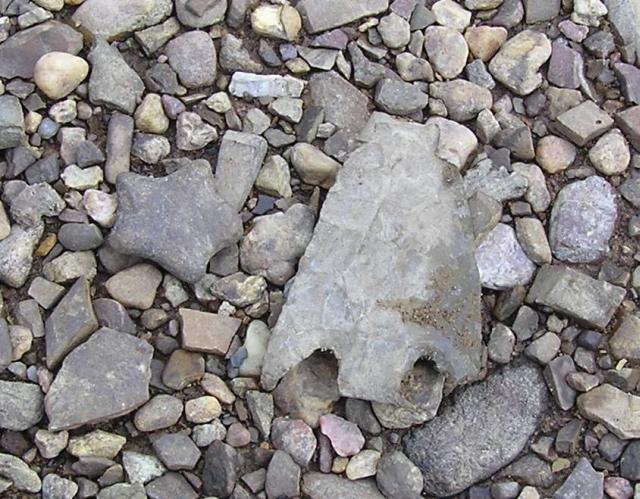
Vicki found a nice point on the beach, too.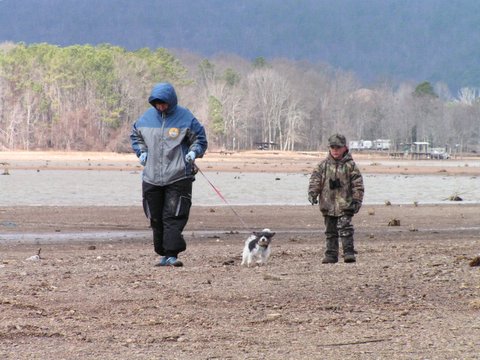
Nancy, Daisy, and Steve surveying the lake shore.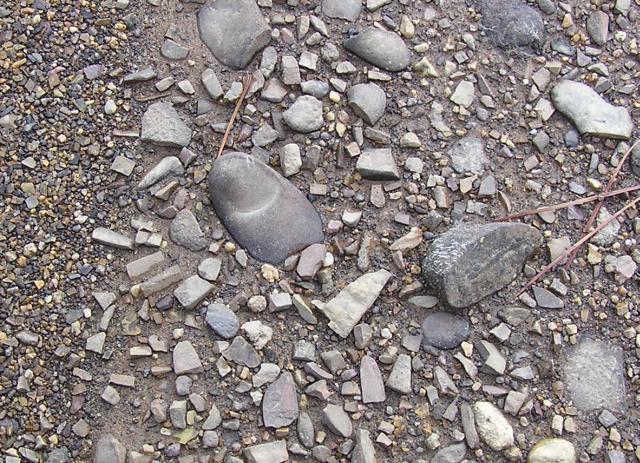
Another unusual find, there's obviously a fossilized man under here!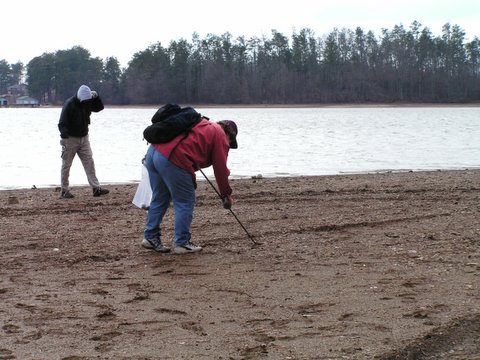

Carl has decided to examine every rock in this spot.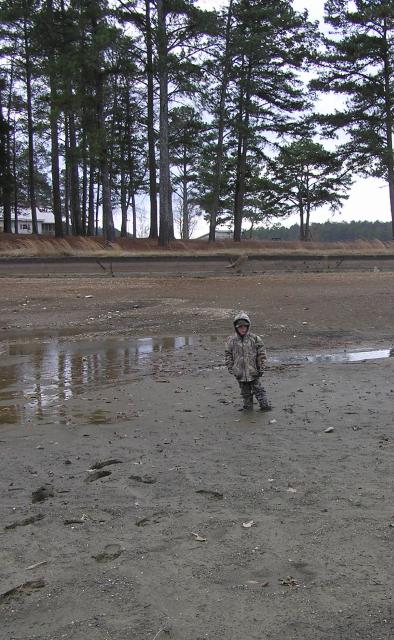
Oops.... I'm stuck and I can't move! Dad Steve went to rescue Steven, and got stuck himself! The mud is so bad in places it will pull your shoes off.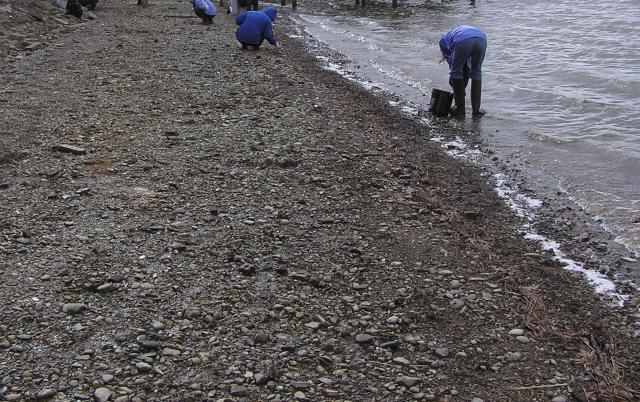
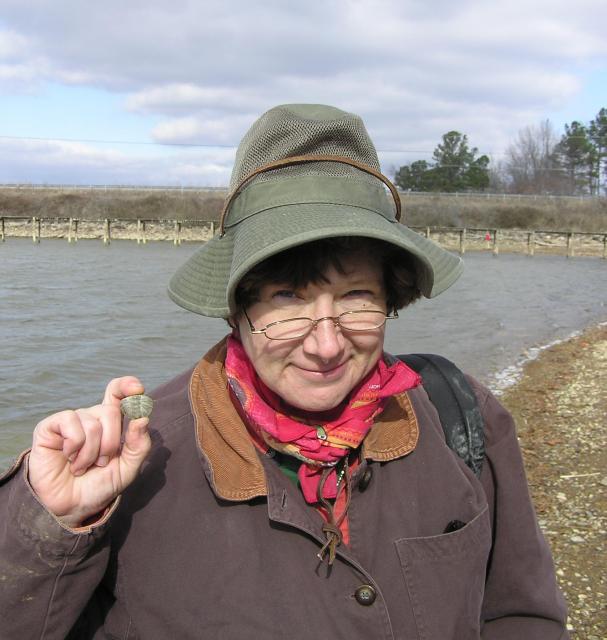
Claire has found a nice pygidium.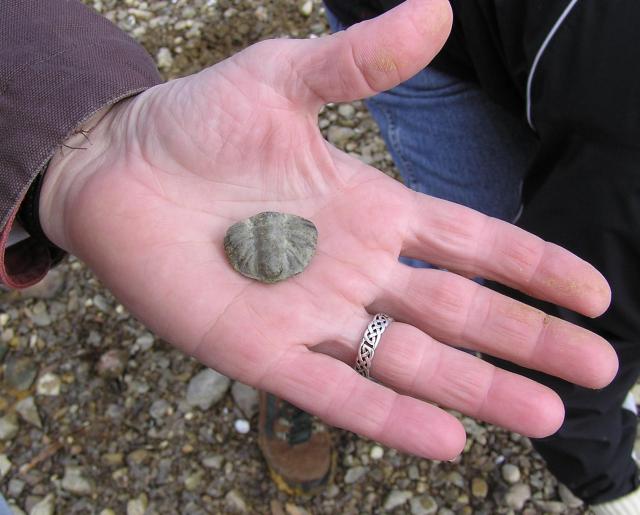
A closer look at Claire's trilobite find.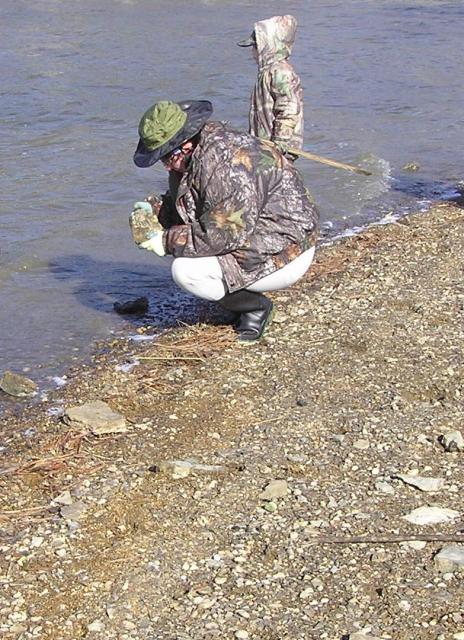
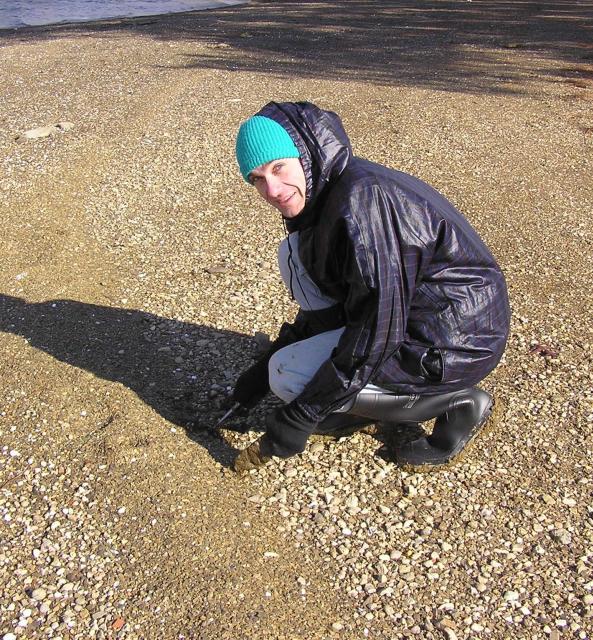
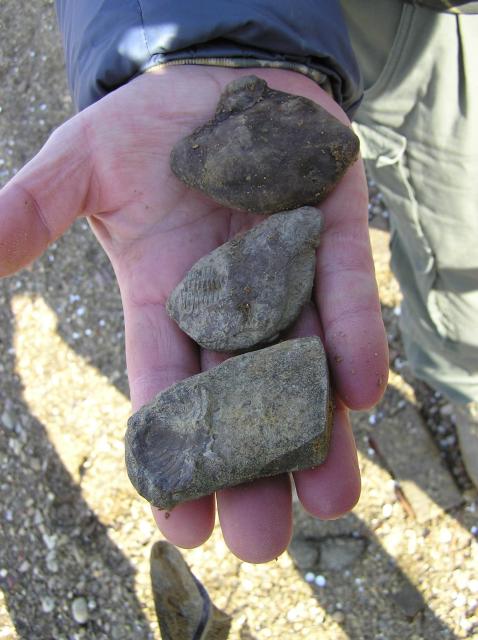
Some trilobites found today.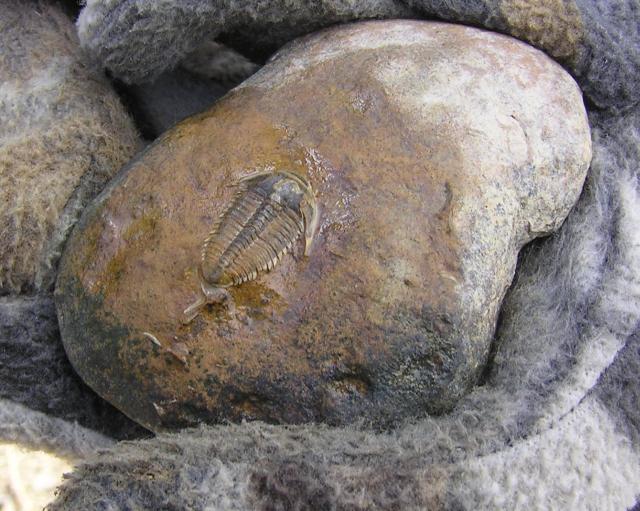
Very nice trilobite found by Steve.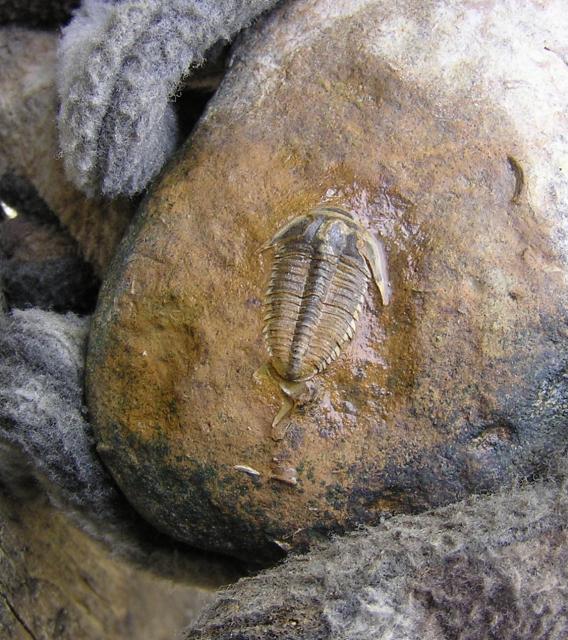
A closer look.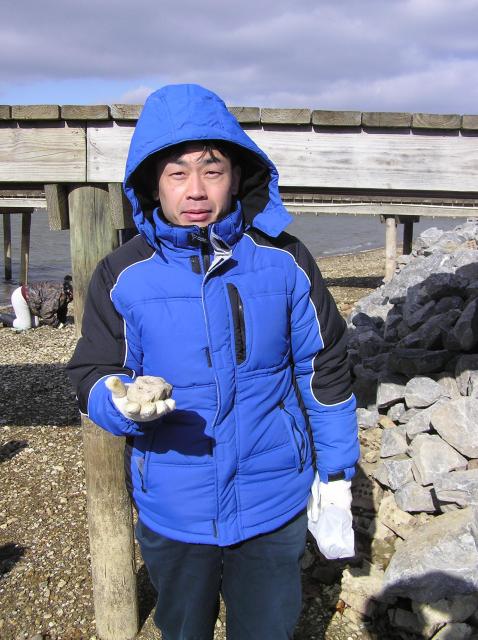
Hitoshi has found a very nice stromatolite specimen.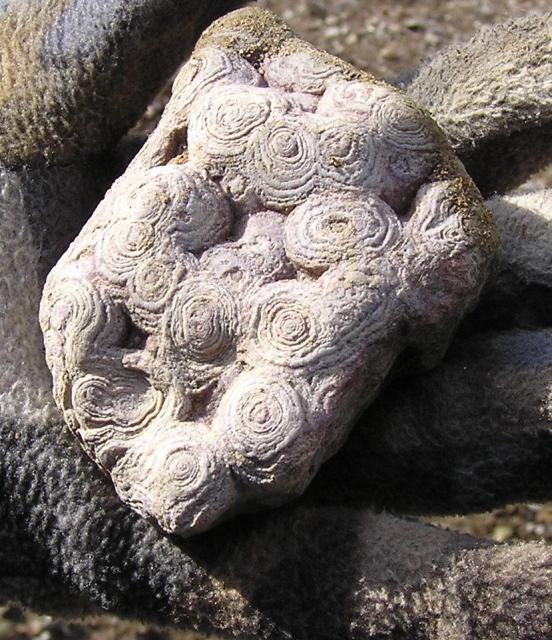
A closer look at Hitoshi's stromatolite find.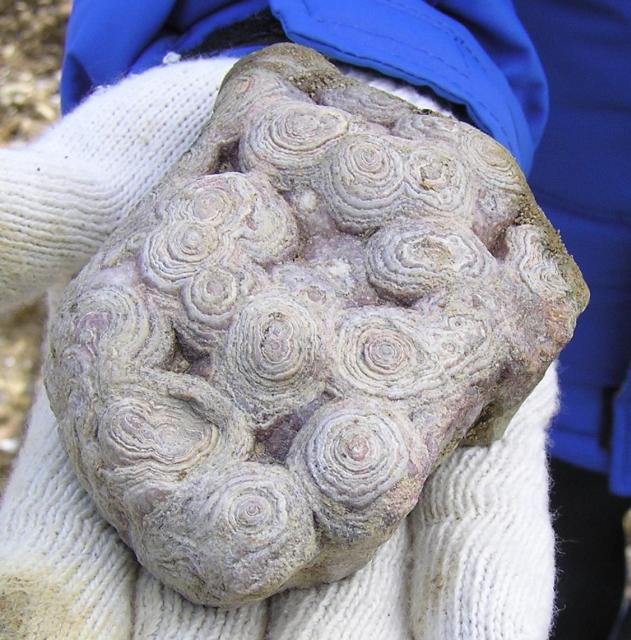
An even closer look.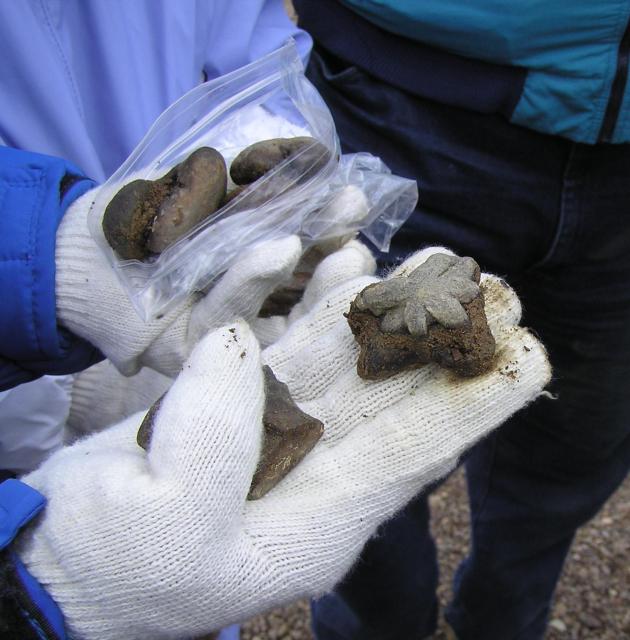
Hitoshi had a good day today! Nice brooksella!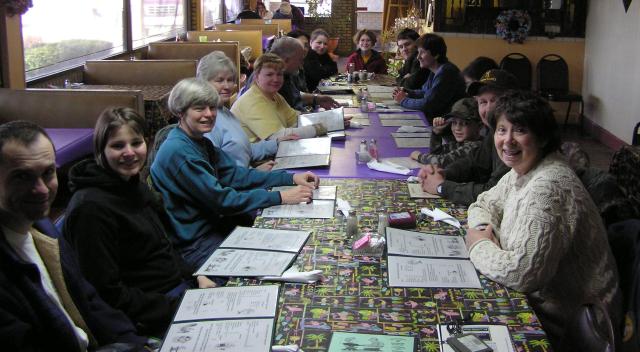
Here's most of the group getting warm and cozy. Several members decided to stay out collecting, and Leisa was out negotiating for another collecting site. Sylvie (2nd from left) announced she and Michael are expecting a new member of the family in May! Congratulations!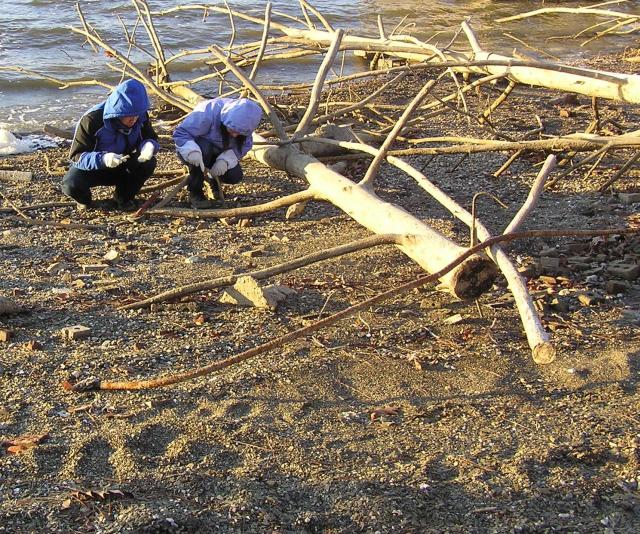
The lakeshore at the 3rd site of the day was mostly Conasauga shale, much of it already weathered out and broken into tiny pieces.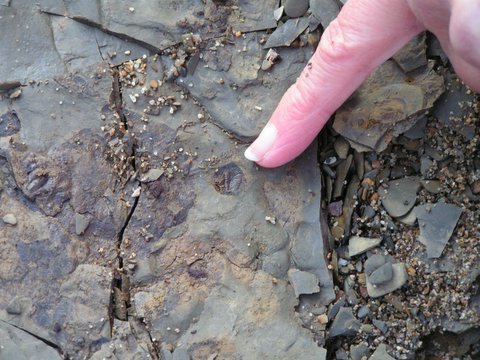

Nice outcrop of shale, and a trilobite found on a pebble.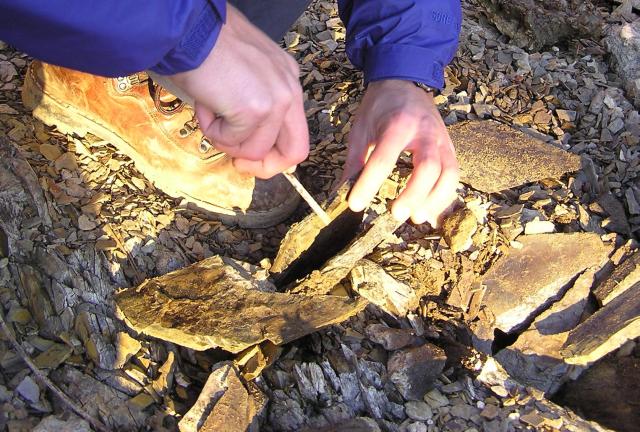
When the shale is split, numerous trilobites are exposed.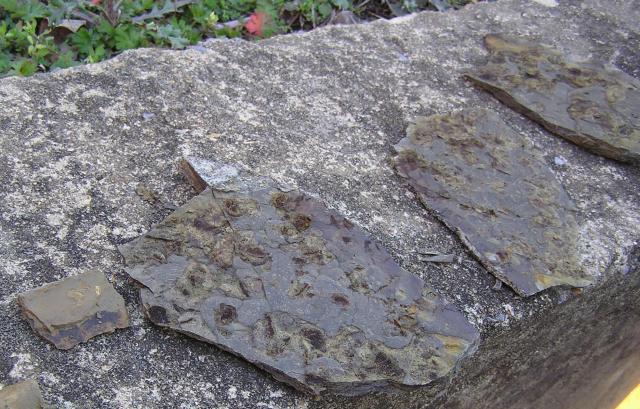
Each dark spot is a small trilobite.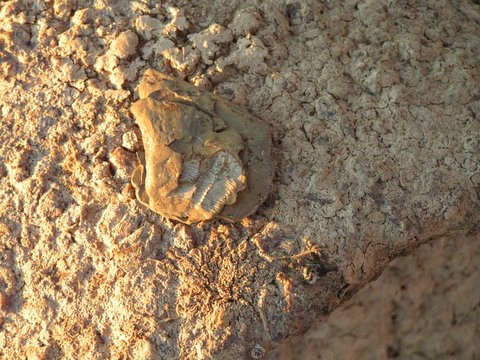
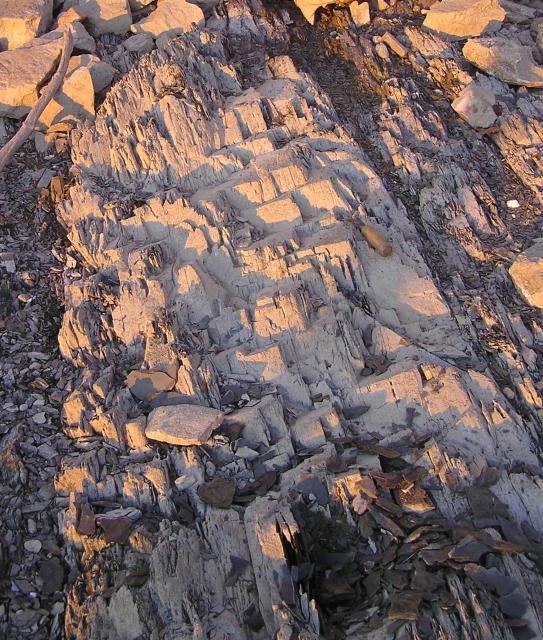
A nice outcrop of Conasauga shale.
Leisa found a rock that appears to be worked, probably a scraper.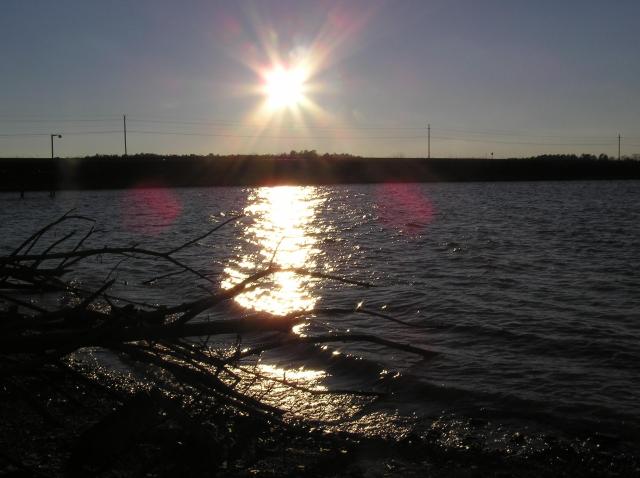
A pretty ending to a fine day of collecting!
February 18, 2006 - Pennsylvanian Fossils, Bibb and Shelby Co, AL
Another trip not put off
for "rain, nor sleet, nor snow
etc."
Near-freezing temperatures, 100% chance of rain, an overcast sky and
icy drizzle to begin the day were all on the menu at the BPS field trip
in February to strip-mine sites in Bibb and Shelby county. To
give you an idea of what we decided to brave, our host at our first
stop, an active coal washing site, didn't show up until we called him,
because he thought that nobody in their right mind would be out
there! Well, you know, as Nancy remarked, "Once you start
finding
things, you forget how cold you are!" And this from somebody
wearing a "Teenage ninja fossil-hunter suit." Of course, all
were
outfitted in attractive hard-hats, an MSHA requirement for visits to
active mining sites. Just try keeping those on while bending
over
to find bits and pieces of neat stuff!!! Next time, we should
bring little elastic strings to hold them on! Perhaps we
should
have been wearing them on the parts of our anatomy most-often turned
towards the sky!
So, there were the most hard-core of the BPS'ers, happily
finding
plenty of plant fossils. Our first site was at a coal washing
facility, where a variety of plant
material was found, including numerous stem impressions, casts,
and parts of tree ferns. Excited cries, of "Wow, look at this
one!" made
it hard to leave for the next site, an abandoned mine a few miles back
in the woods, but, the word that we could lose the hardhats, among
other attractions, won the gang over.
The second site was in the boonies, even for that
area of the
state, way down a long dirt road through the woods, through a locked
gate, near where a prison used to house people who were busting rocks
against their will, so to speak. This second site was very
prolific, and members found tree ferns, calamites, and a few tree fern
seeds.
Some very nice specimens were found, including new "doorstops" for some
members.
It was decided to move on to a third site, but the road was
too muddy
for us to drive up to it. This must be a good place, though,
because at
least one nice specimen was found near the entrance: a beautiful little
silhouette of lacy fern leaves from so very long ago.
One more stop, to look at a site containing remains of bark
impressions
and calamites casts. There were some nice tree fern specimens in very
fragile, easily
crumbled rock. A number of fossils were in rocks too large to lug home,
and our hands were too frozen, anyhow! Then we finally
decided it
was time to think about
heading home for hot baths, hot laundry, hot food and a nice,
long rest. Maybe our next trip will be graced with sunshine
and
gentle breezes!
--Edited by Vicki Lais
(photos
courtesy Vicki Lais)

Some of the
group on top of a spoil pile.
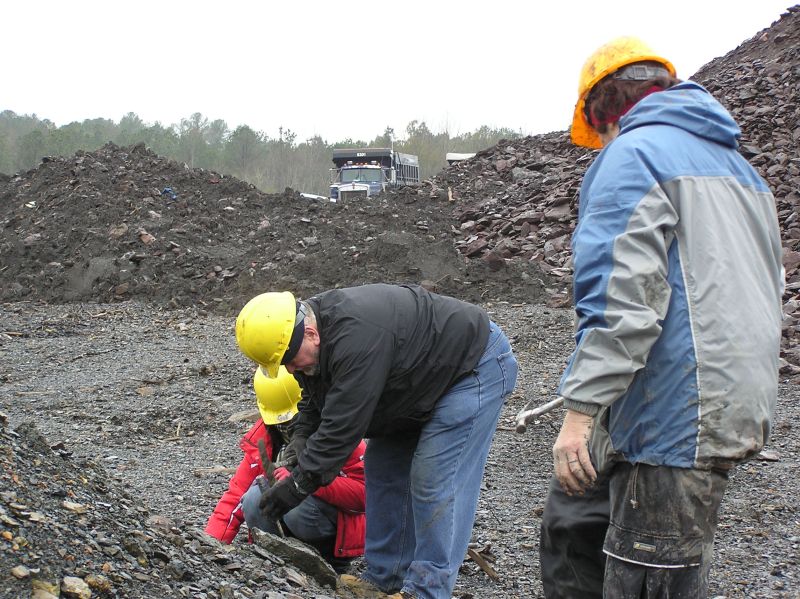
Greg
demonstrating how to get the fossil out safely without taking home
the entire rock.
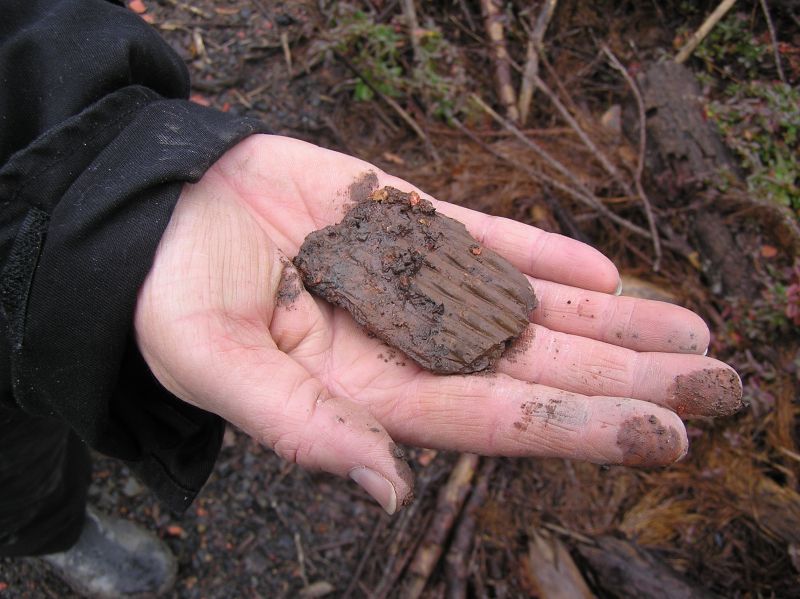

Small balls of iron ore used in
the ironmaking process. These apparently date to the 1940's
and
50's when coal mines in the area were in full force and trains carried
various materials between the mines and the steel plants.

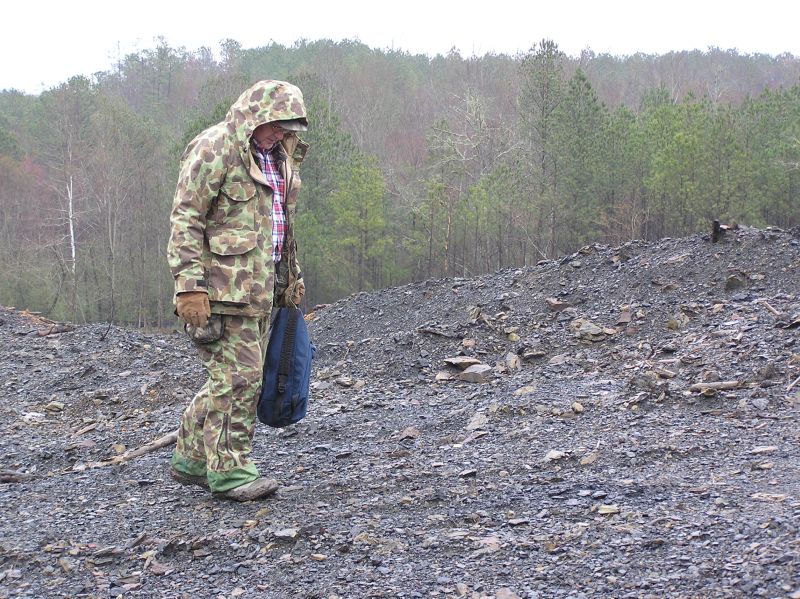
Bill
searching for more fossils.

At our second
site, many of the rocks were red rather than
gray.
This was due to the rocks being "burned" at some time in the past,
perhaps with a smouldering coal fire.
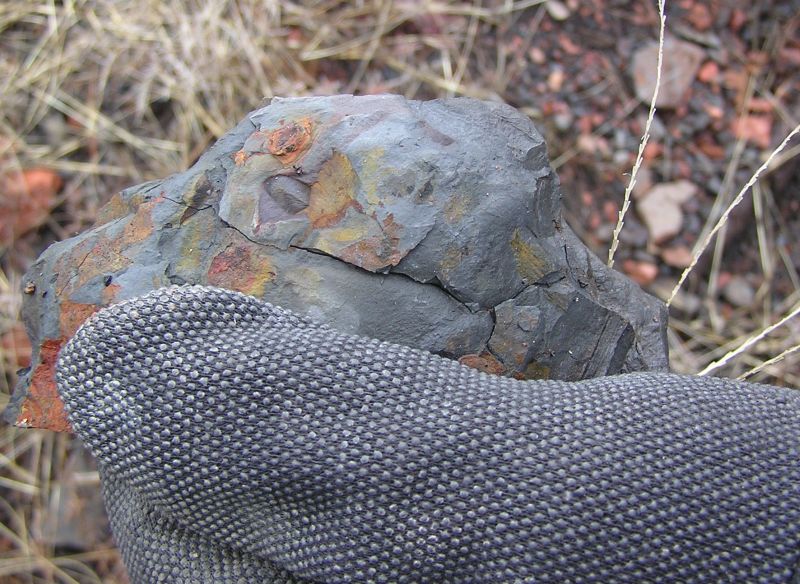
Nice "tree
fern" seed fossil found by Greg.

Leisa helping identify the fossil Ryan has found.
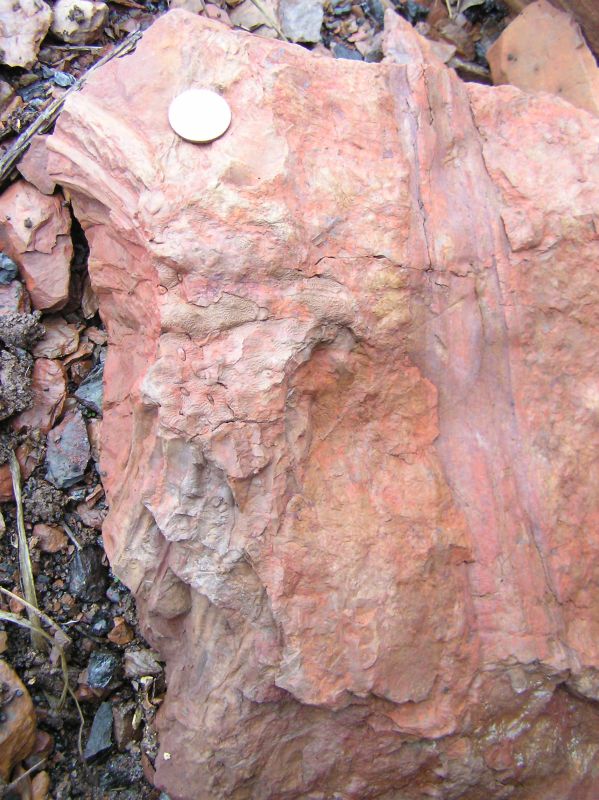
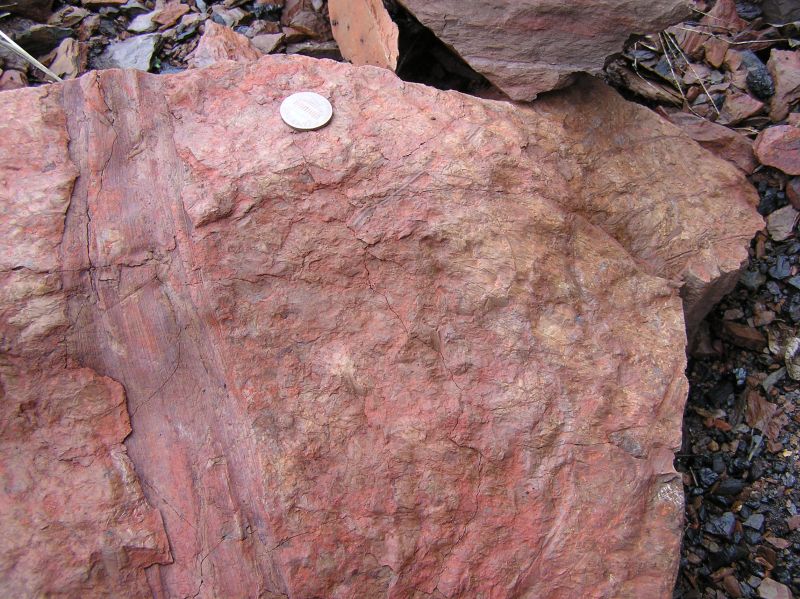
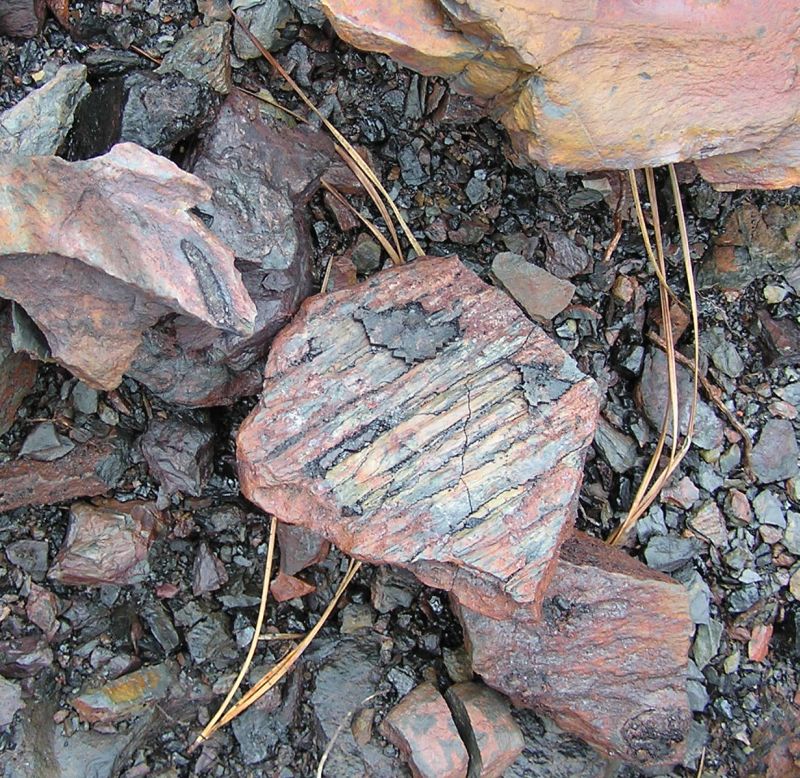
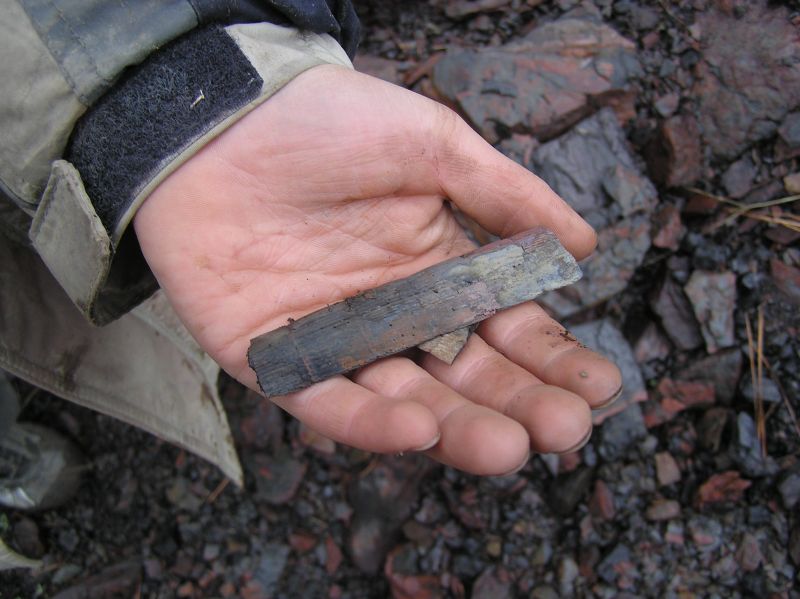

Ryan has
found a nice fossil.
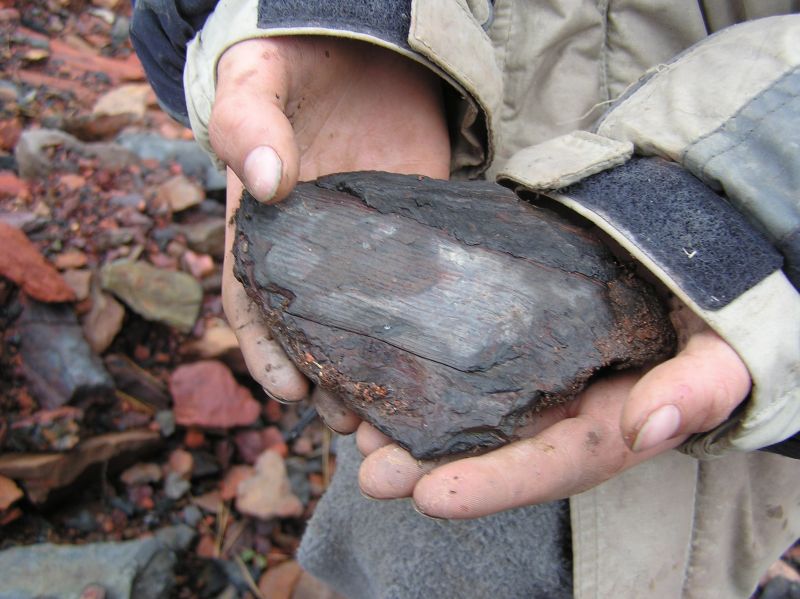
A closer look
at the calamites Ryan has found.
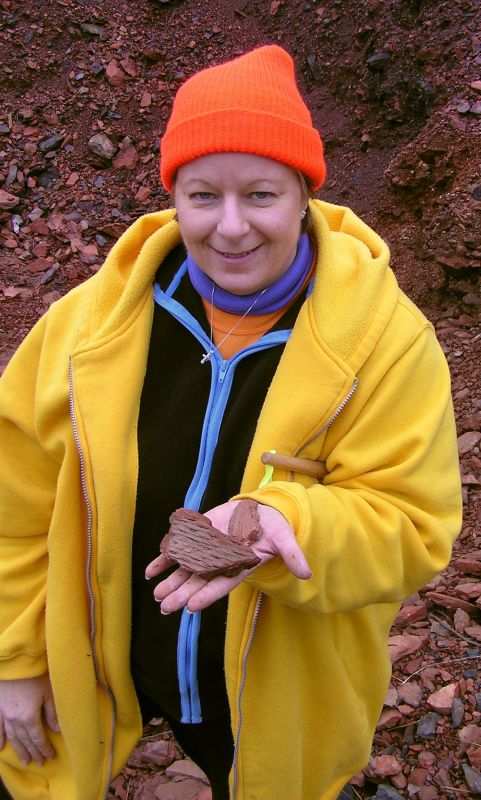
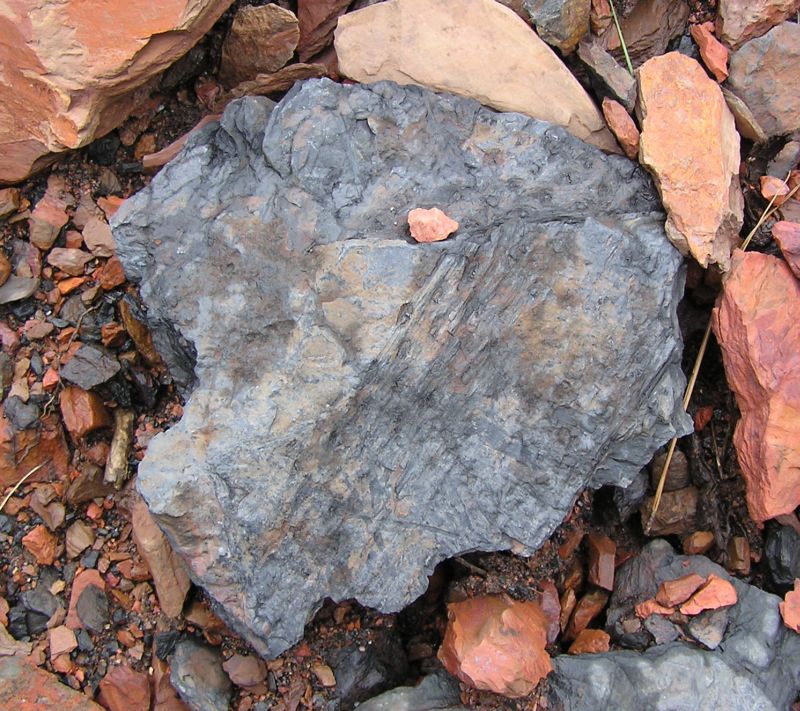
Stigmaria
(roots of a Lycopod, possibly Lepidodendron)
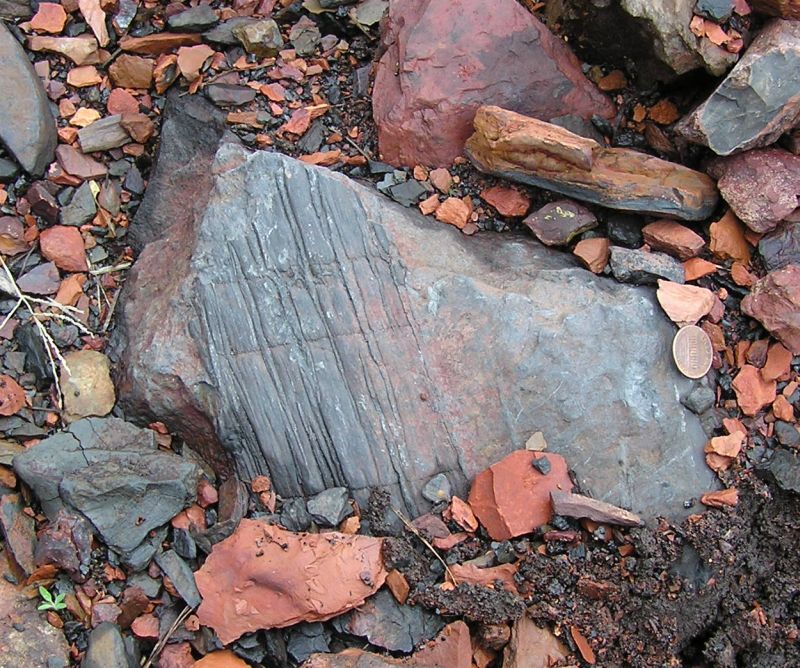
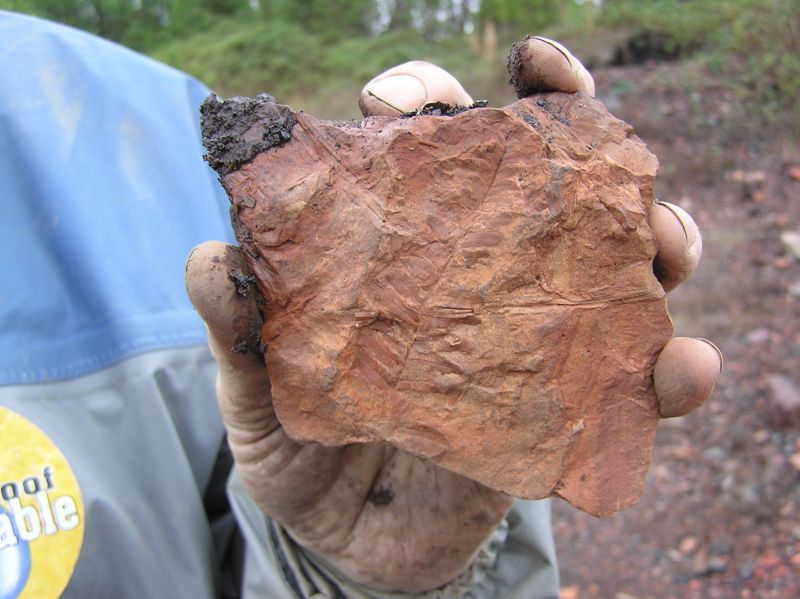
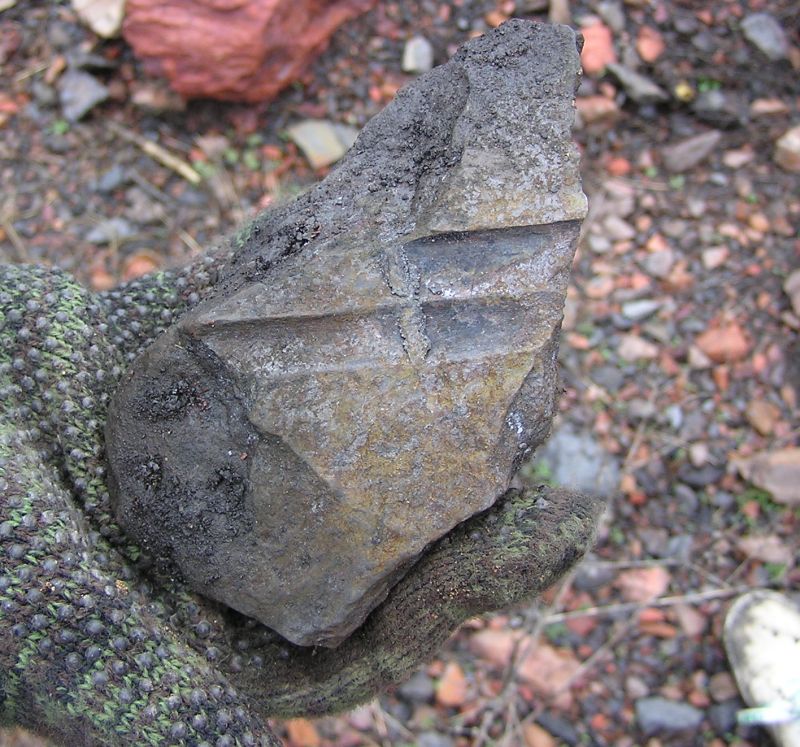


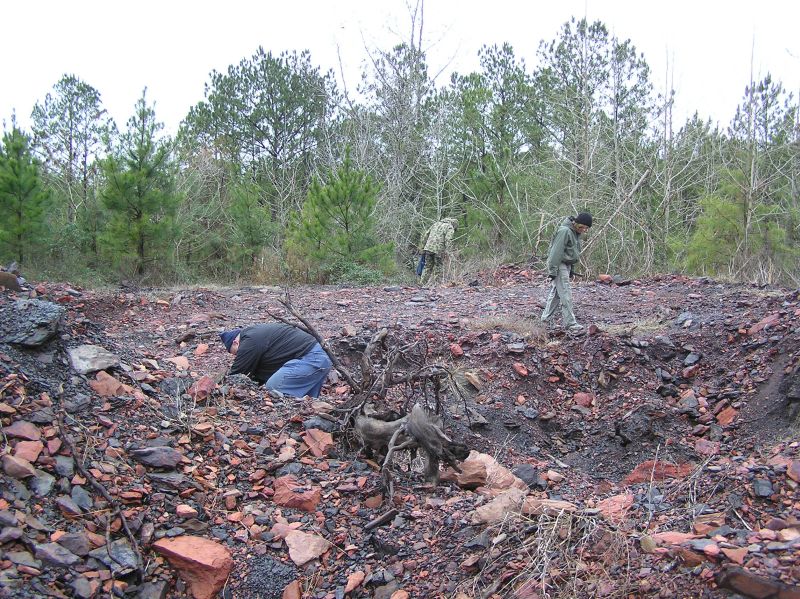

Nice fern,
possibly Sphenopteris.
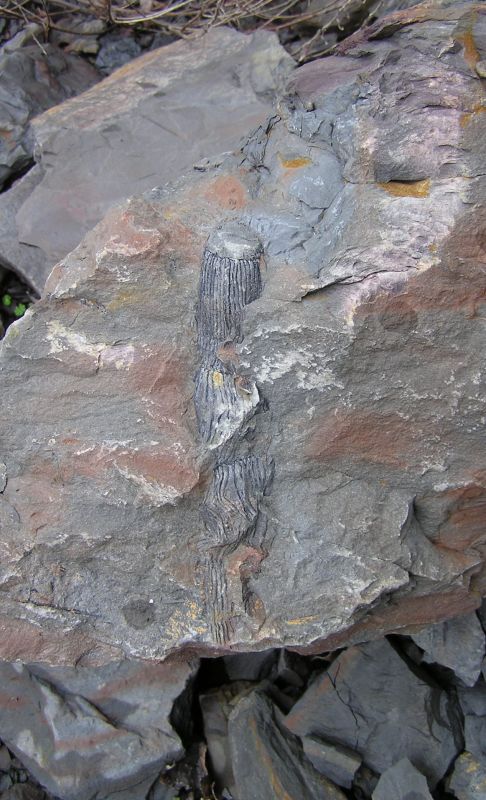
Calamites
stem cast.
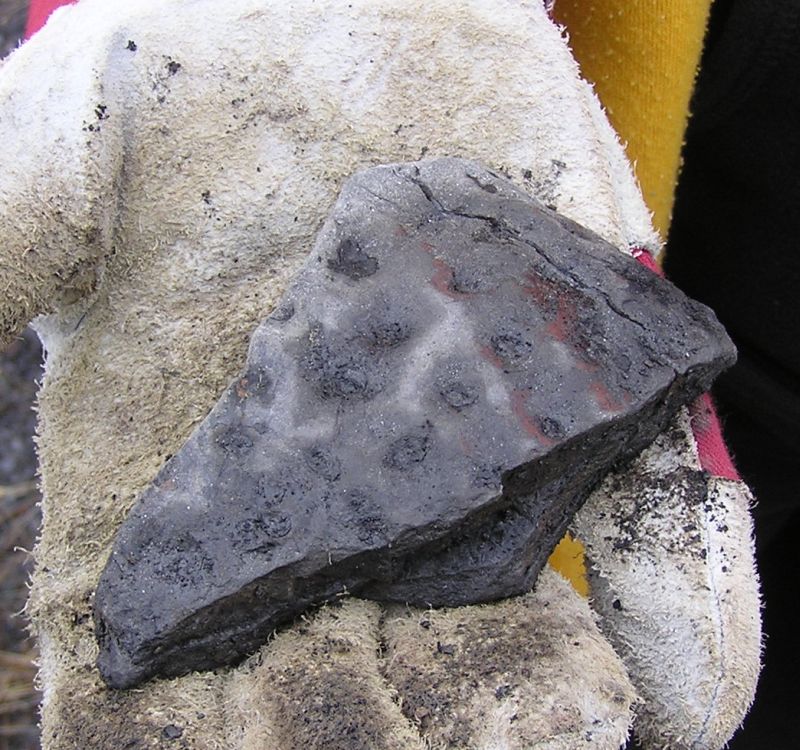
Probably
Stigmaria, a lycopod root.
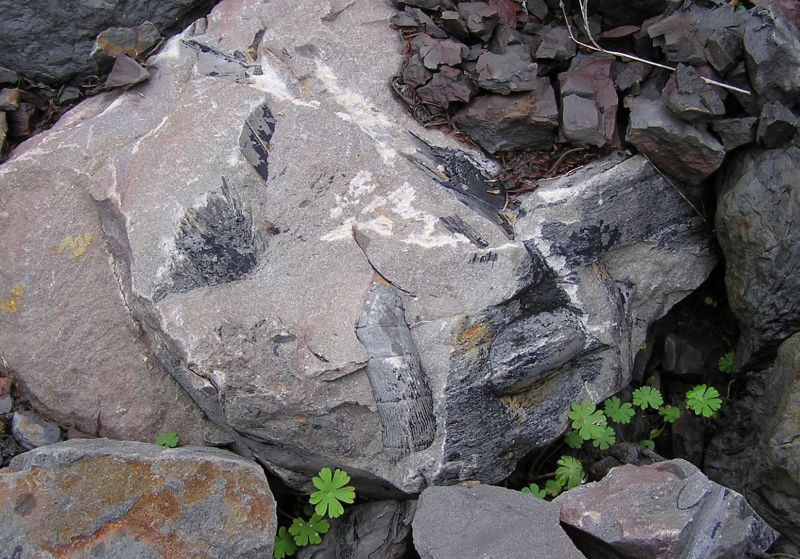
Calamites
stem cast.
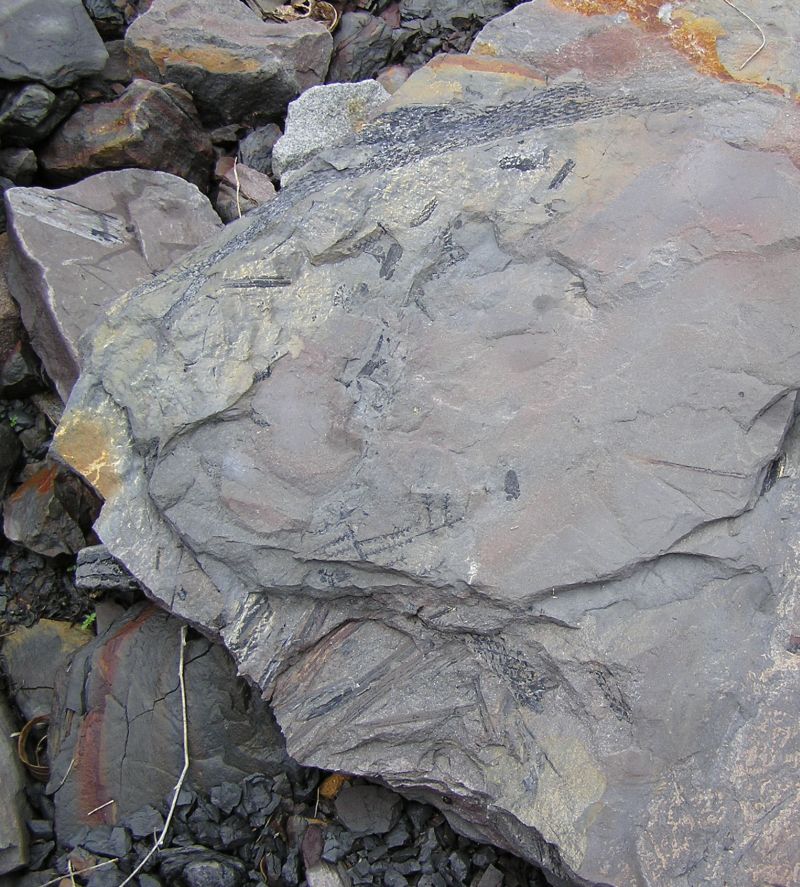
Tree fern
outer stem covering and fern-like leaves, probably
Sphenopteris.

A hash of
leaves and stems.
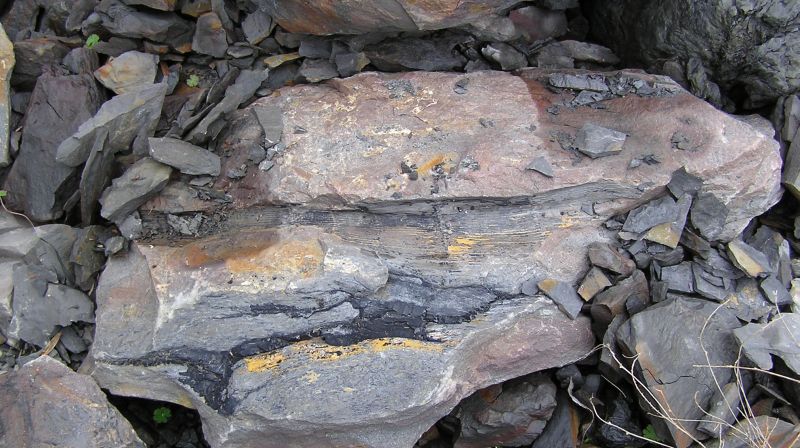
Calamites
stem cast.
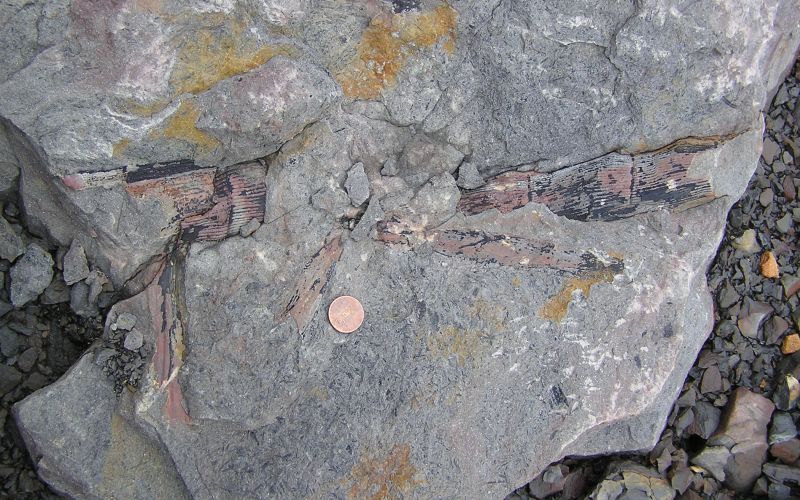
Nice
calamites stem.
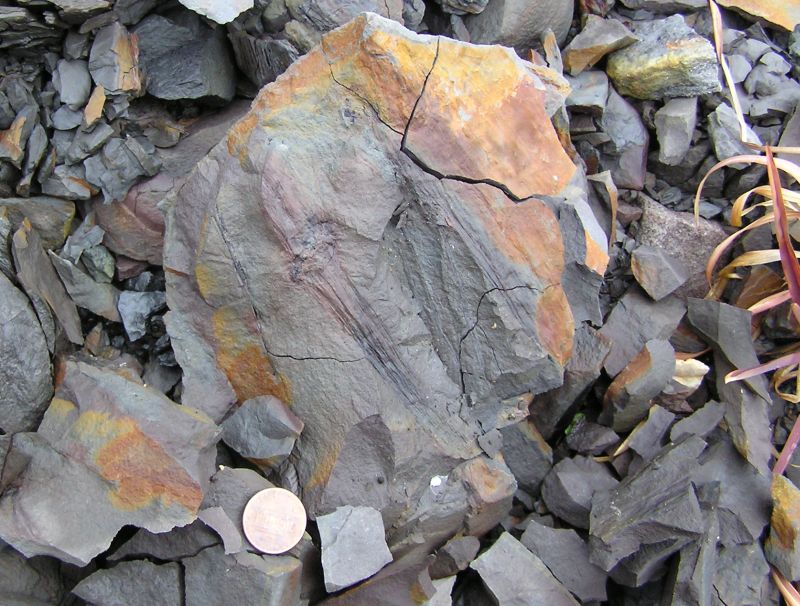
March 18, 2006 - Mississippian Fossils, St. Clair Co, AL
Edited by Vicki Lais
(photos courtesy Steve Corvin and Vicki Lais)
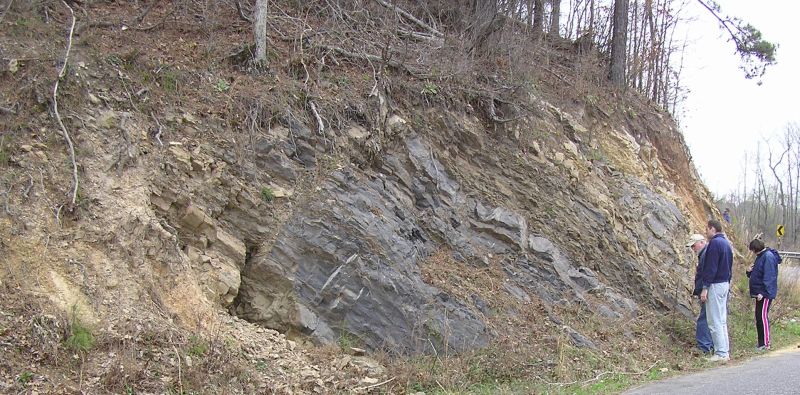
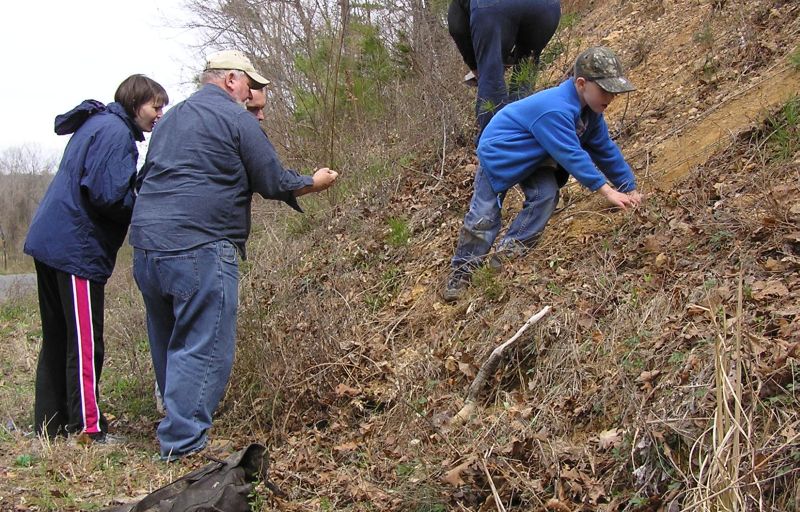
Greg is explaining how to spot the fossils.
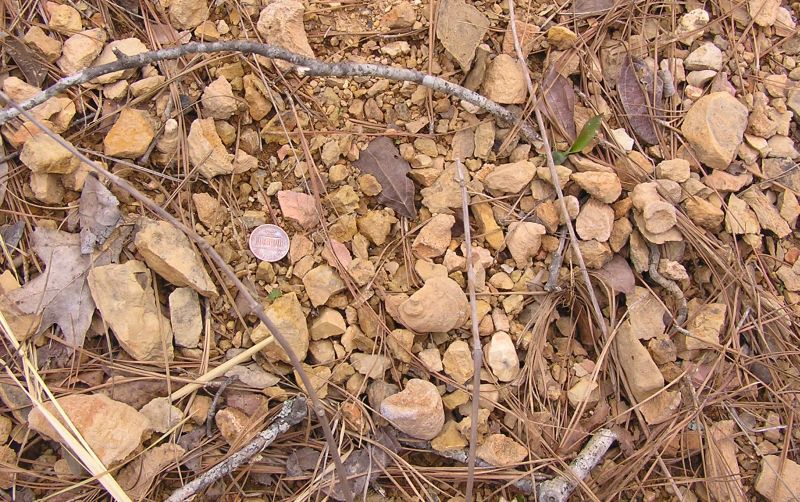
Look closely in the rocks and several horned corals and broken pieces can be spotted. They blend in well.
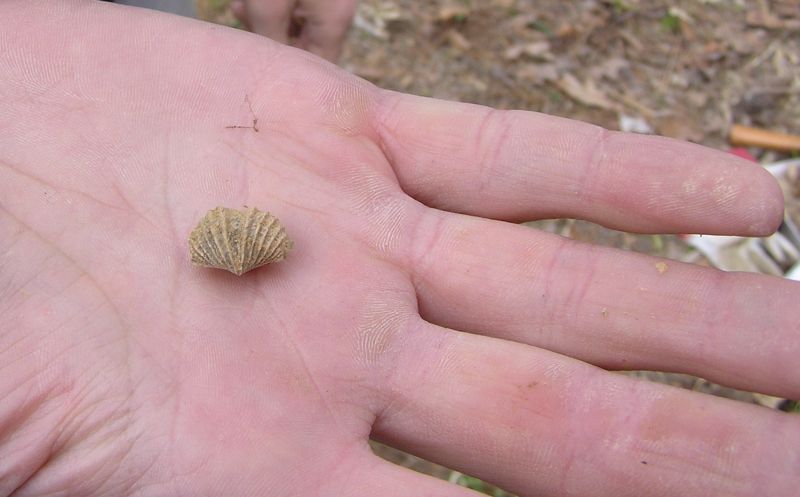
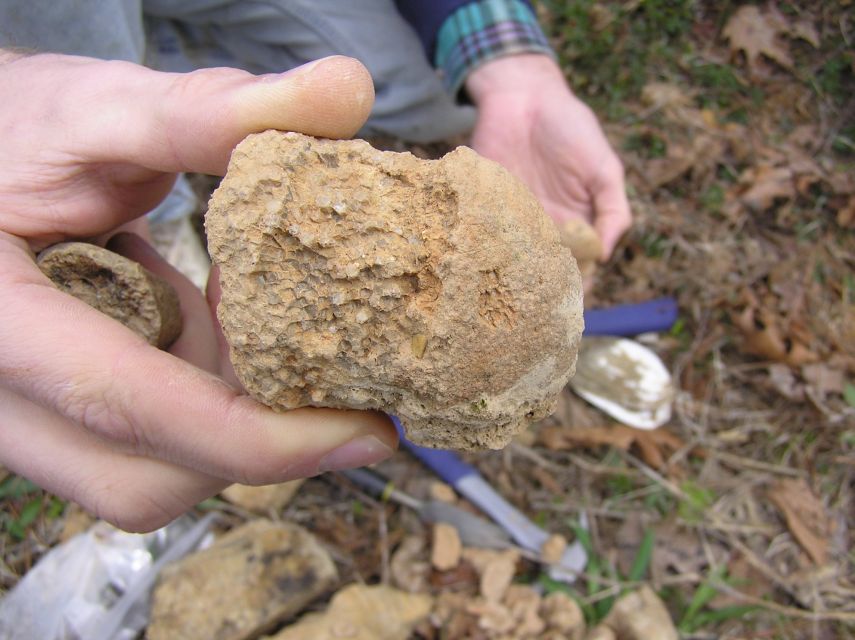
Michael has found a couple of items we believe to be sponges.

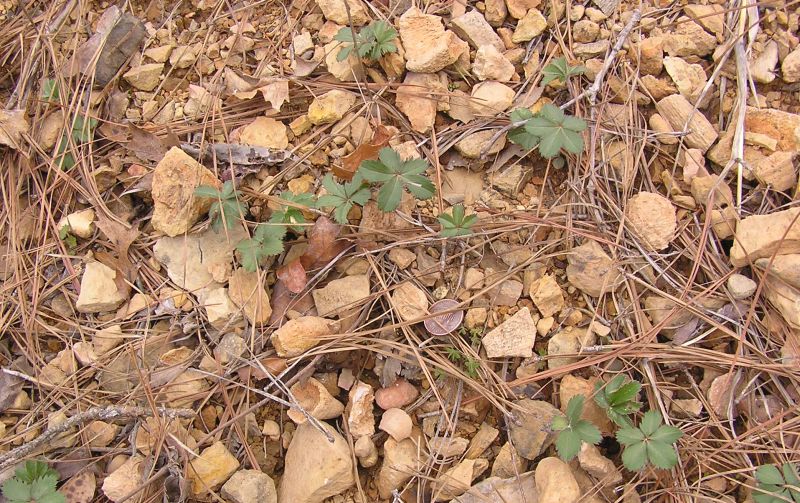
More rocky area, with numerous fossils waiting to be collected.
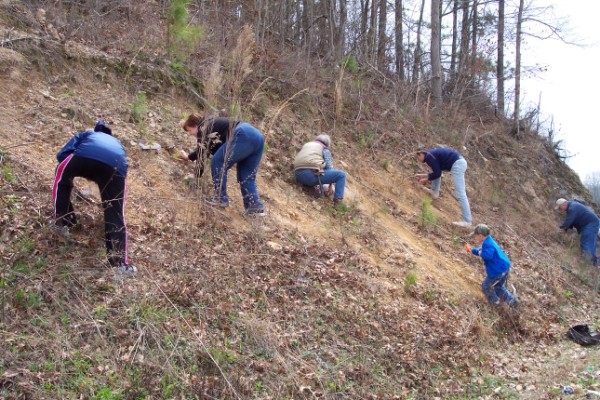
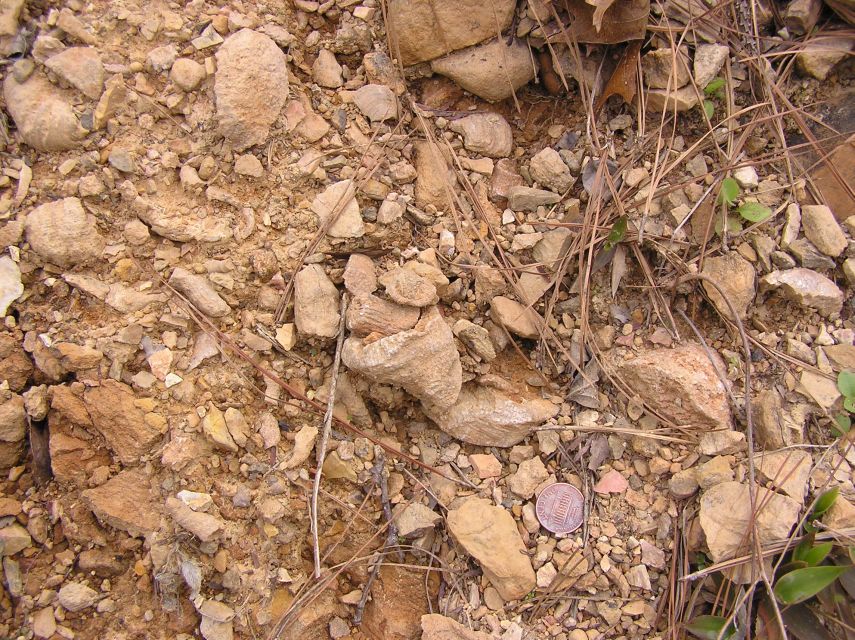
Another view of the ground littered with broken and whole fossils.
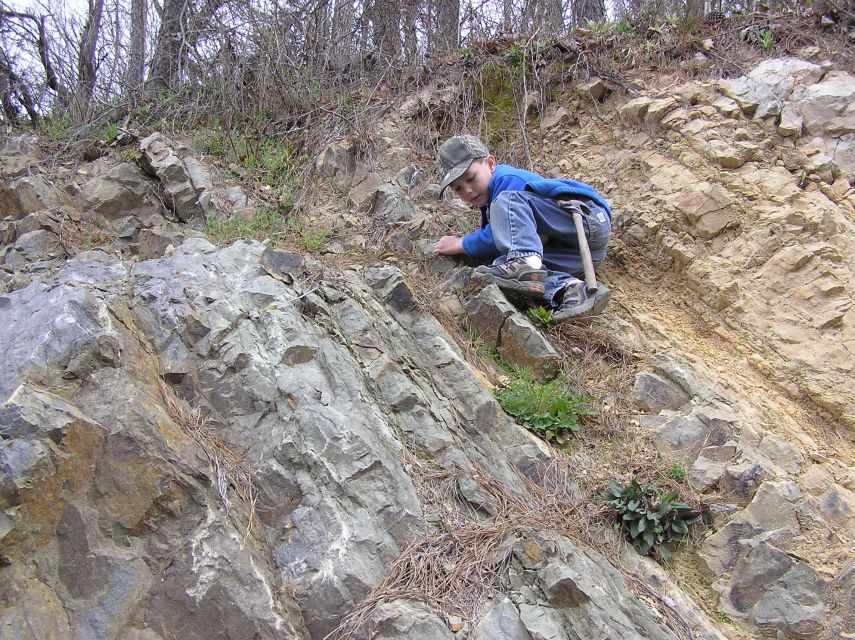
Steve is heading to the top, to see if there are different fossils up there. Or, maybe he just likes to climb!

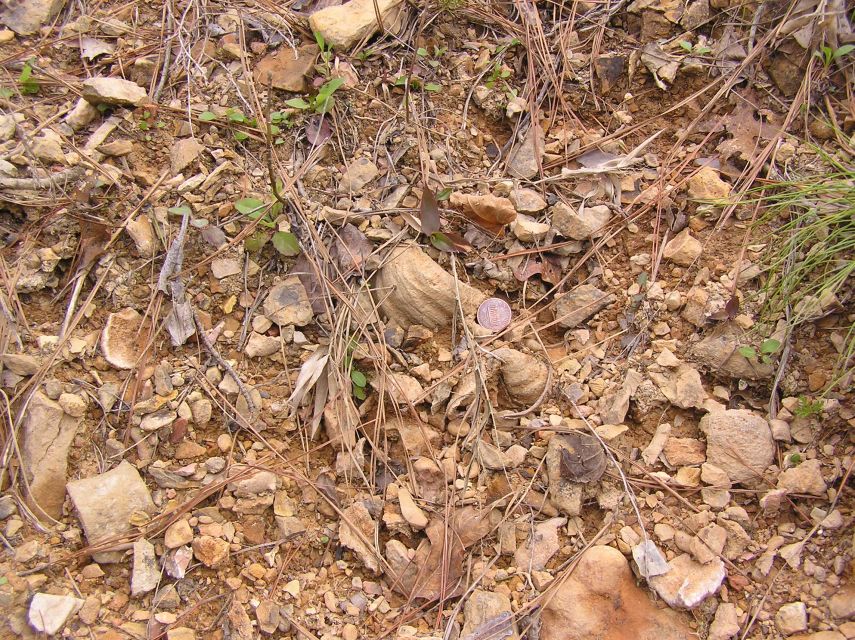
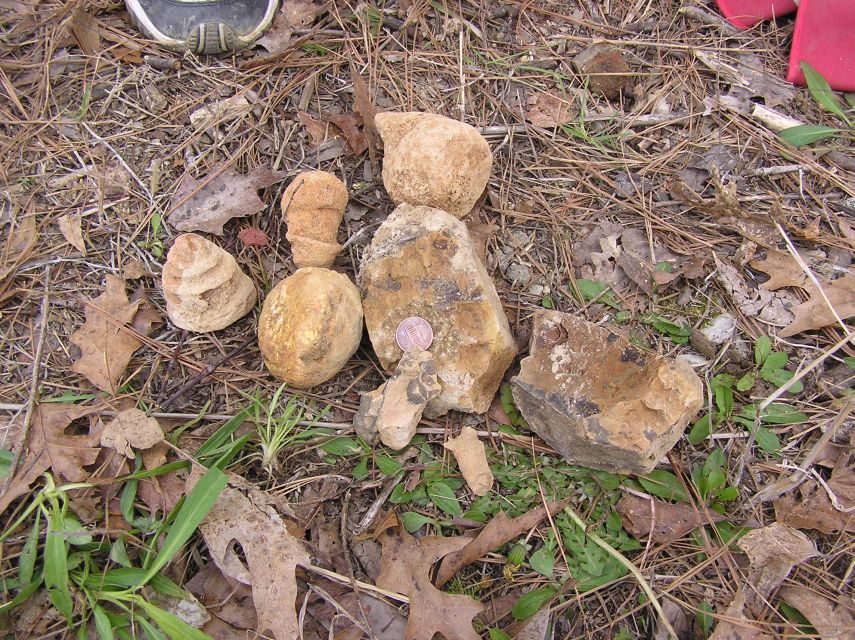

Some interesting fossil material found by Steve.
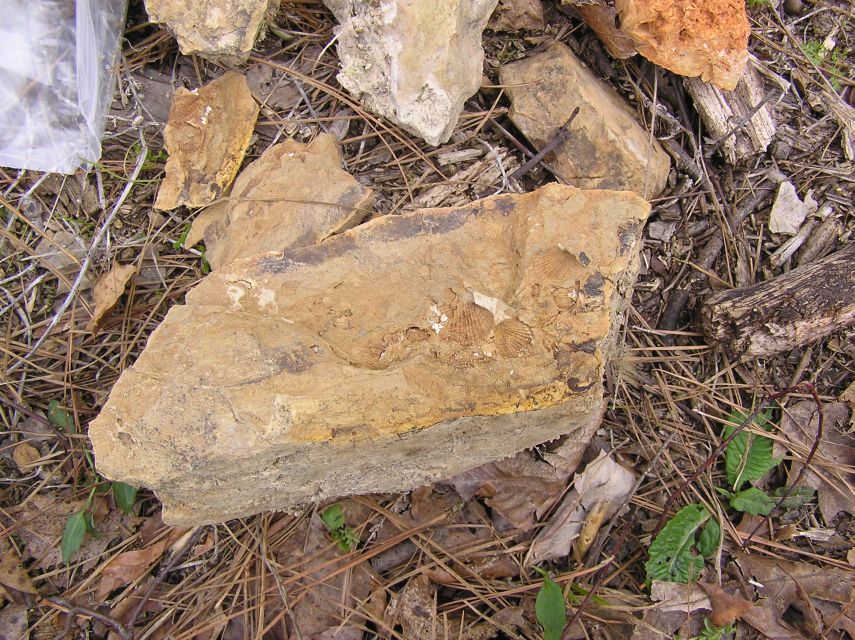
Note the nice brachiopods.


Claire has found a nice coral head.
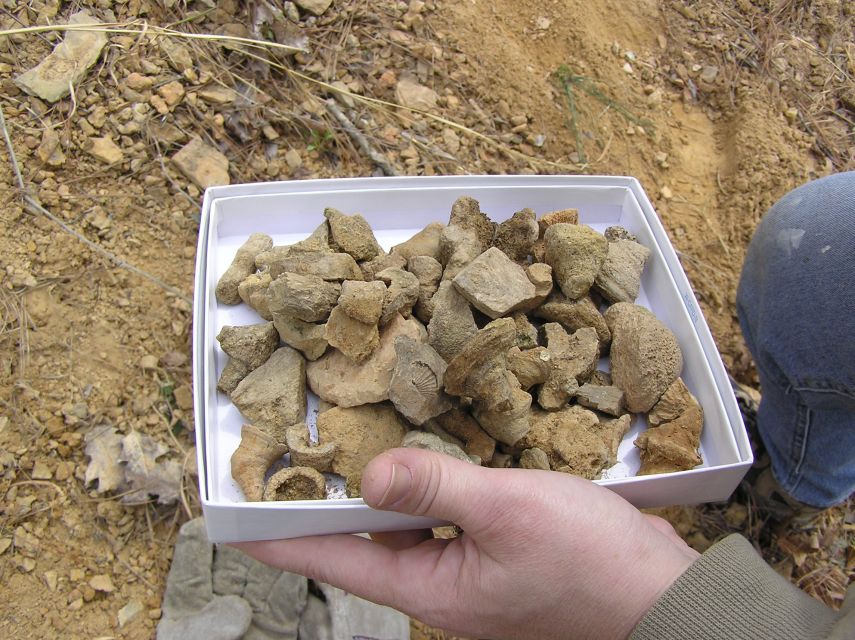 More nice finds by
Claire.
More nice finds by
Claire.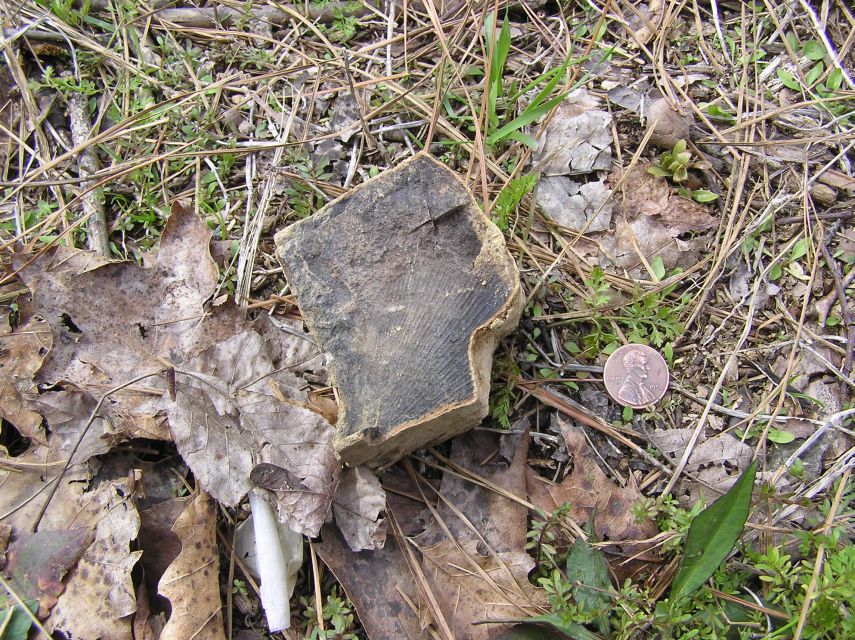
Another nice specimen, probably coral, found by Vicki.

Michael and Sylvie showing off their coral and sponges.
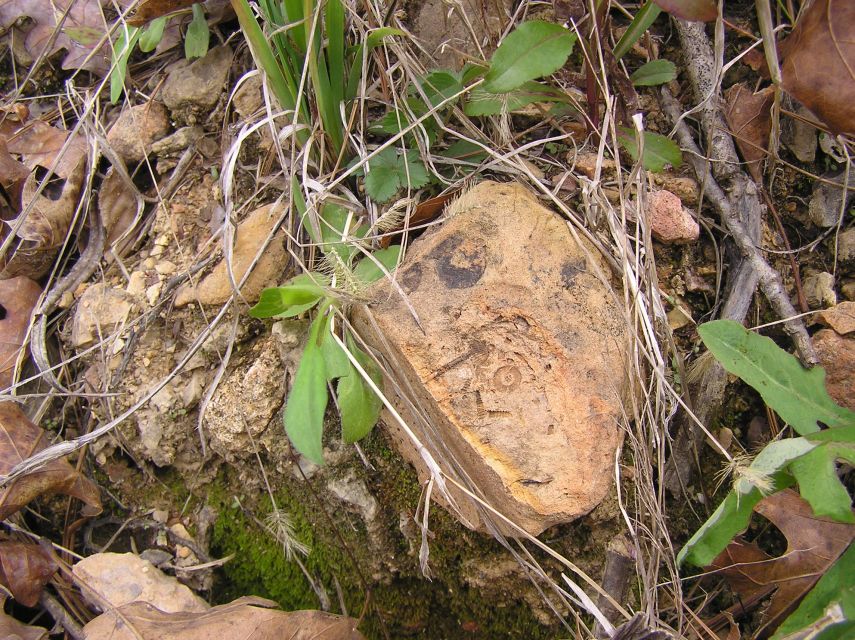
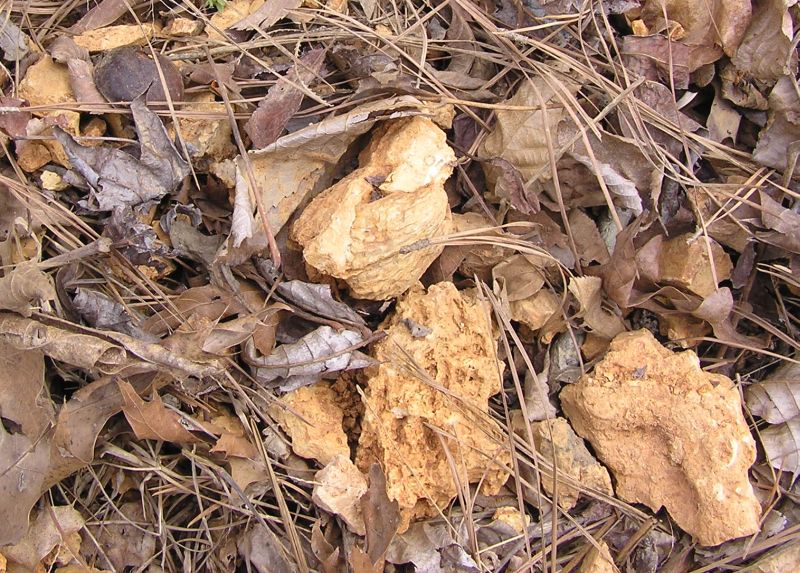
Note the nice shell on the upper rock in the middle. When the fossils are the same color as the matrix, they are difficult to spot.
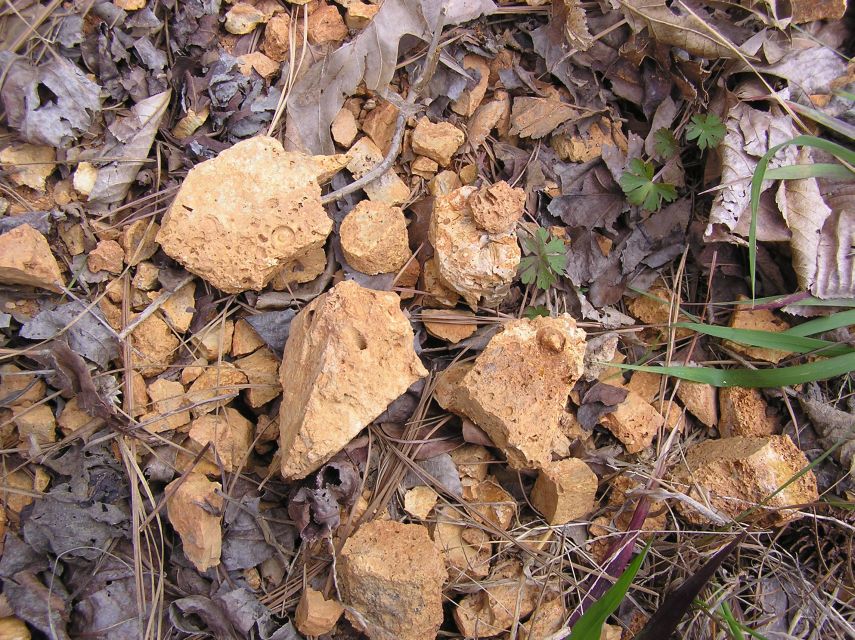
Crinoids have left impressions on these rocks. A different area from where the coral is found.
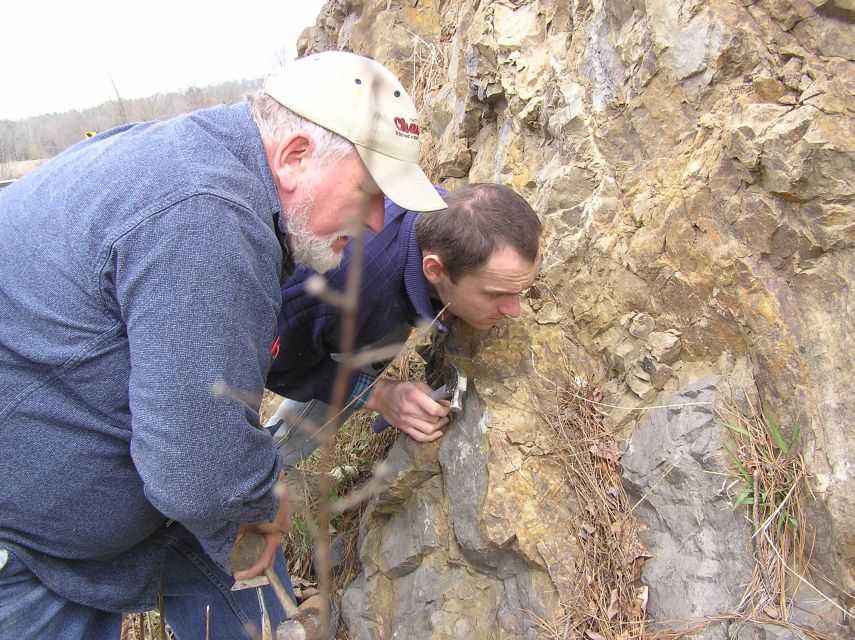
Greg and Michael searching for the trilobite layer.

Leisa has found some nice horned coral.

A closer look at Leisa's finds.
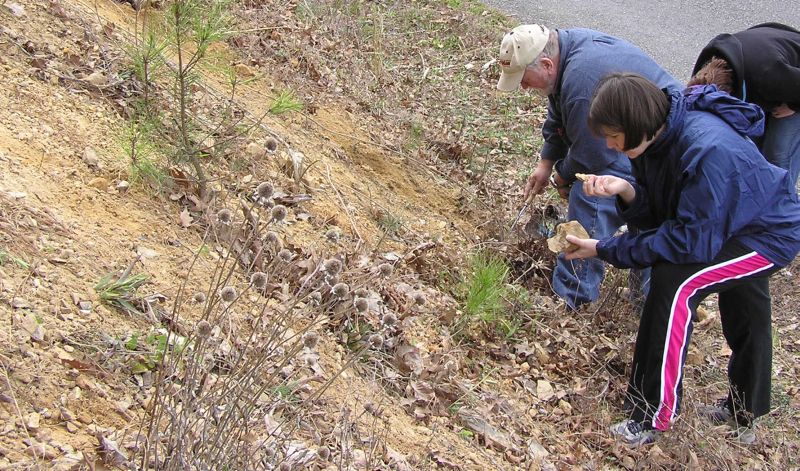
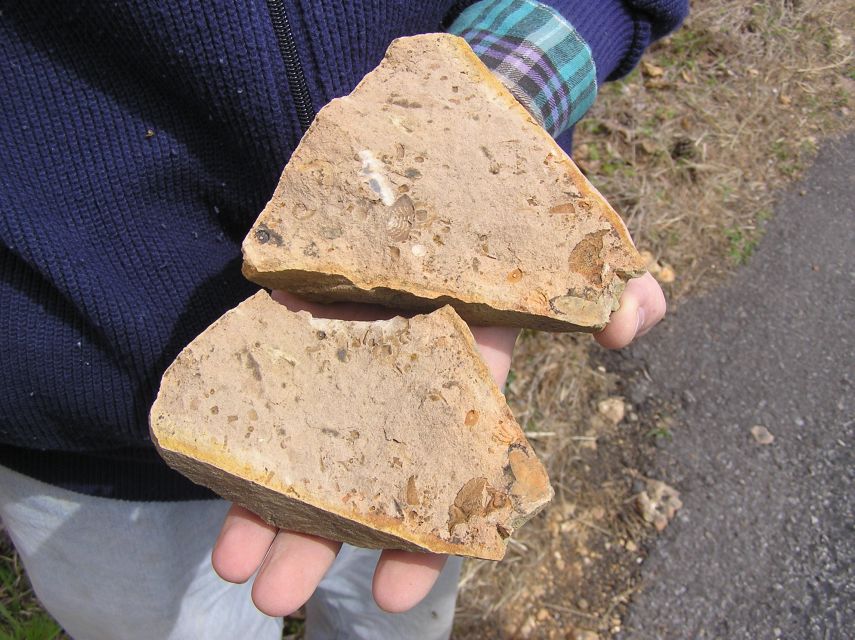
After diligent searching, Michael found the trilobite layer!
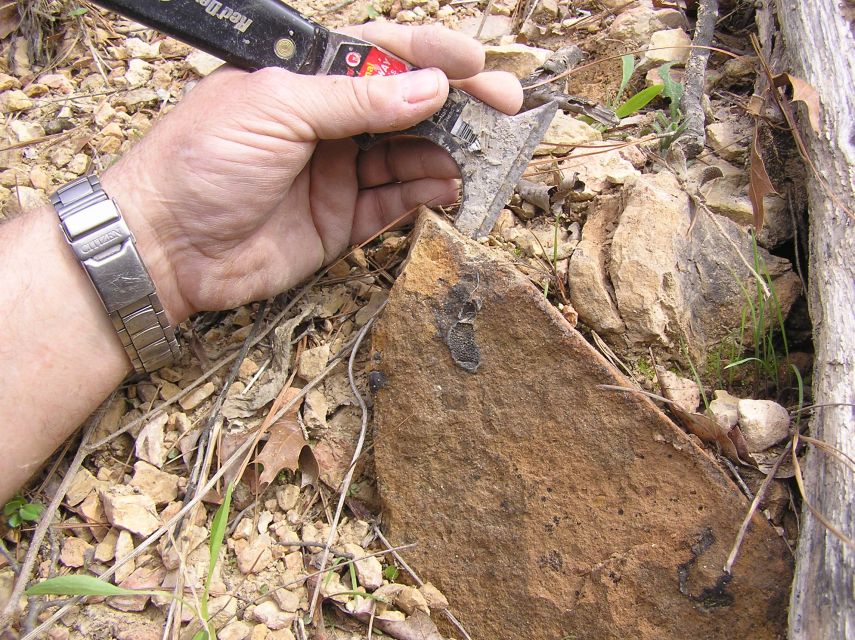
Greg has found part of a trilobite - the black coloration at top of rock. The larger oval is the head, the smaller one is an eye.

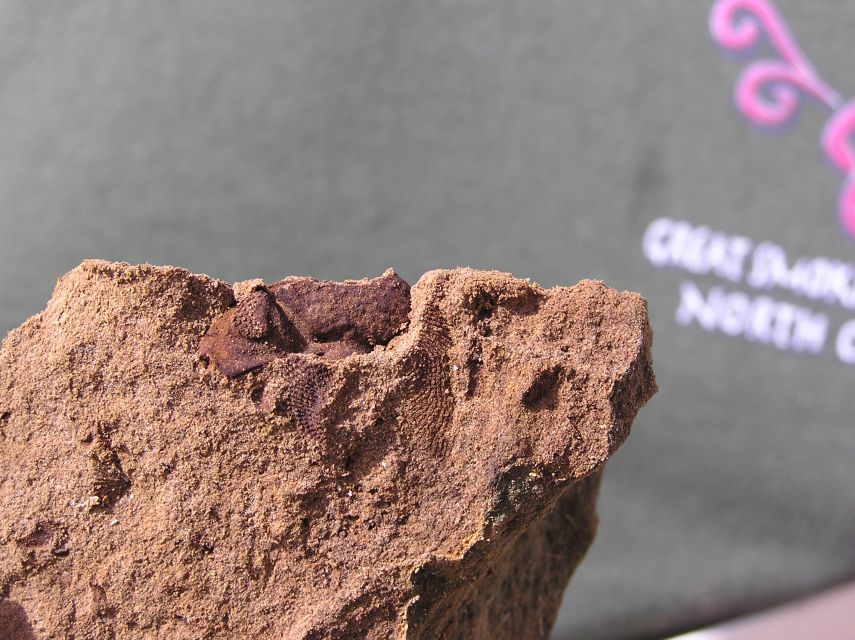
A close view of a trilobite.
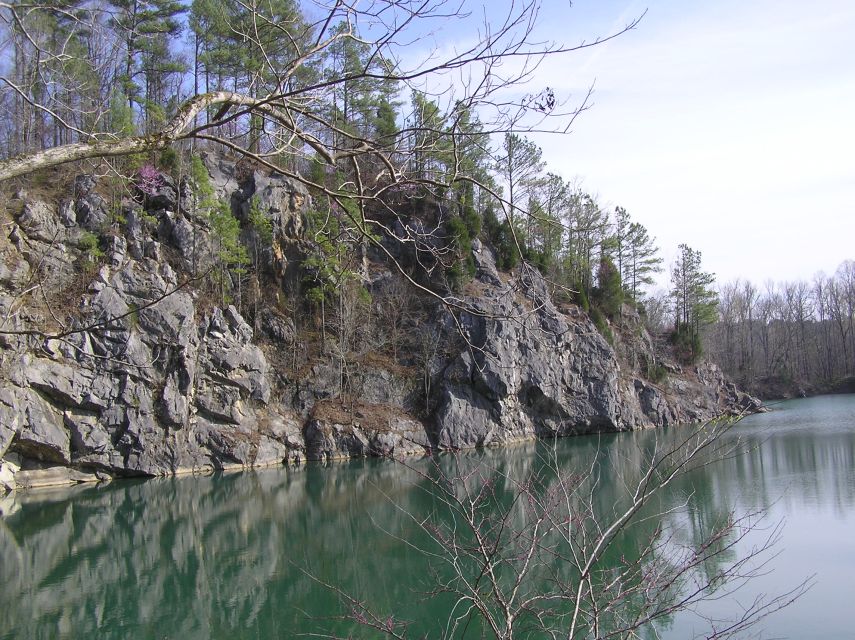
We briefly scouted this quarry and found some interesting structures and fish, but no fossils.
April 1, 2006 - Cretaceous Fossils, Russell Co, AL
This Cretaceous site is slated to become a subdivision in the near future, so a dig to excavate and conserve material from the best layers was organized and coordinated by Patrick Sean Bingham, a grad student at Auburn University. Patrick's thesis topic is “Stratigraphic and Paleoenvironmental Context of the Ingersoll shale, an Upper Cretaceous Conservation Lagerstätte, Eutaw Formation, Eastern Alabama”. Another grad student from Auburn University, Terry Knight, was also working on his thesis, “Exceptionally Preserved Soft-Bodied Fossils of the Ingersoll shale, an Upper Cretaceous Konservat-Lagerstätte in the Eutaw Formation of East-central Alabama".
Many well known professionals from around the country volunteered their time and expertise to assist on the dig, including Dr. David Grimaldi and Collections Manager Carl Mehling from the American Museum of Natural History in New York City. Dr. Grimaldi was especially interested in the nice specimens of amber found at the site. Others who provided assistance and knowledge were Dr. Chuck Savrda and Dr. Ron Lewis, both from Auburn University, Dr. Bill Bevil from the Fernbank Museum of Natural History, Atlanta, Ga, and Dr. Bill Frazier, Dr. David Schwimmer and Dr. Dent Williams, all from Columbus State University, Columbus, GA.
It was a real treat to work with these professionals and others who participated in the dig, and everyone got “down and dirty”, quite literally, as various plant leaf and stem impressions, some actual leaves, fish scale impressions, and even pieces of amber were unearthed!
(Editors note: Research on this site is described in the June 2008 issue of Palaios Journal, and some excellent photos are shown on the cover.)
(Photos courtesy Vicki Lais)

An overview of the dig location. Several feet of overburden was removed with a small bulldozer prior to the manual digging with picks and shovels.

Patrick Bingham explaining the geology of the site to Dr. Henry Barwood.
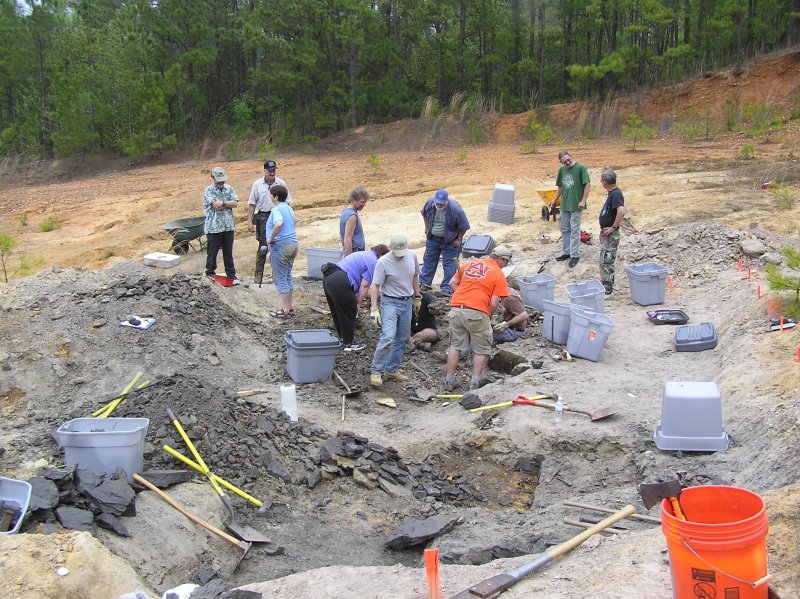
Overview of the site. Material was placed in the large tubs and taken back to the university for research. Note the orange spikes on the far right - the site was gridded, and one layer was designated "the middle", so some of the material is "above" or "below" that layer.
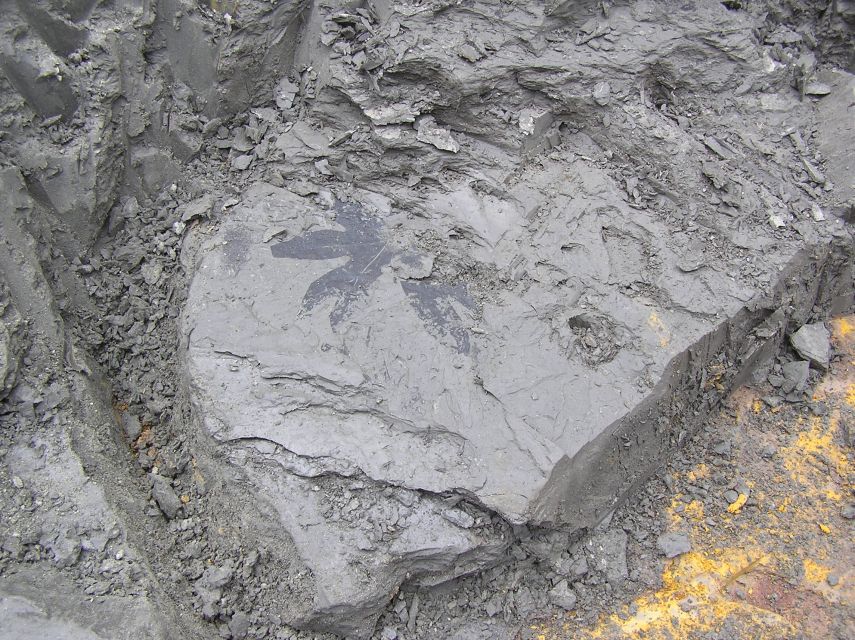
Numerous Cretaceous leaf impressions were found at the site.
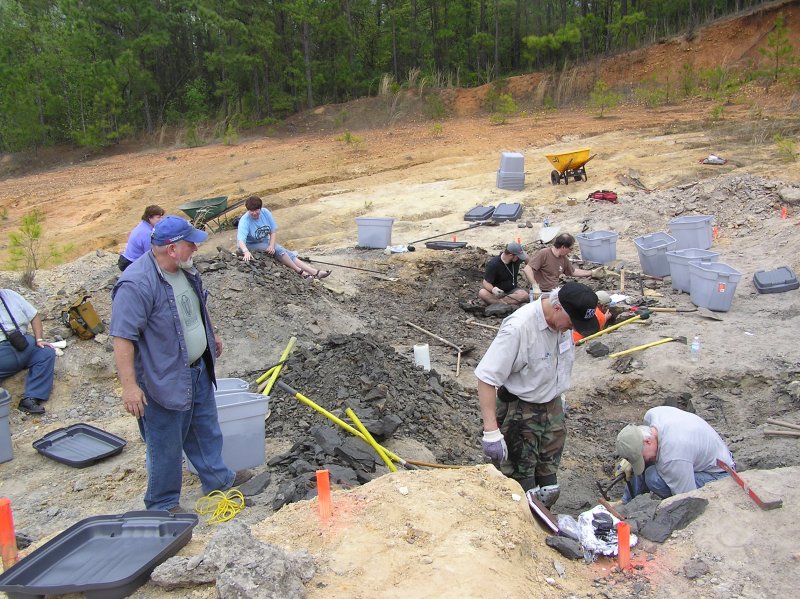
BPS members observe the dig operation and look through the discard pile for samples to collect. Later in the day, we were allowed to help load tubs and Greg assisted with the excavation.
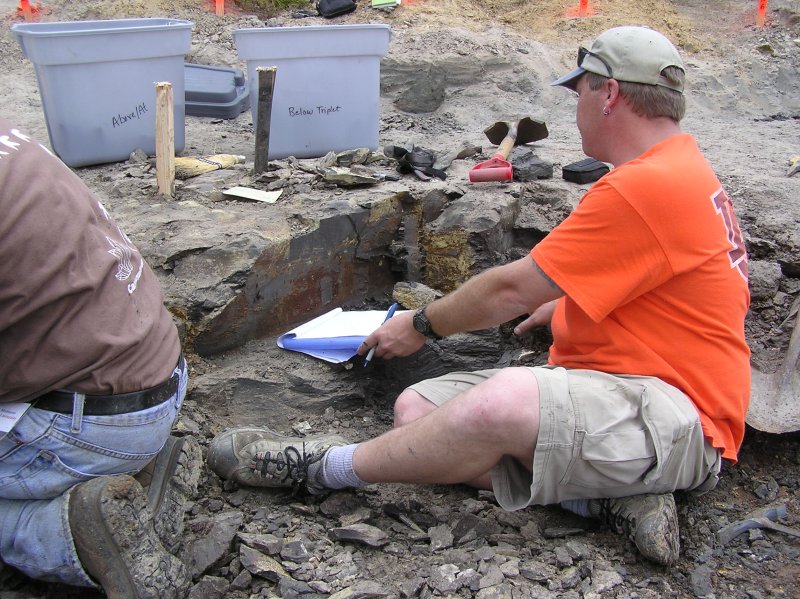
Terry Knight is keeping a log of the geologic layers as they are removed.

Dr. John Interlandi with the pick and Dr. David Grimaldi examining leaf specimens.
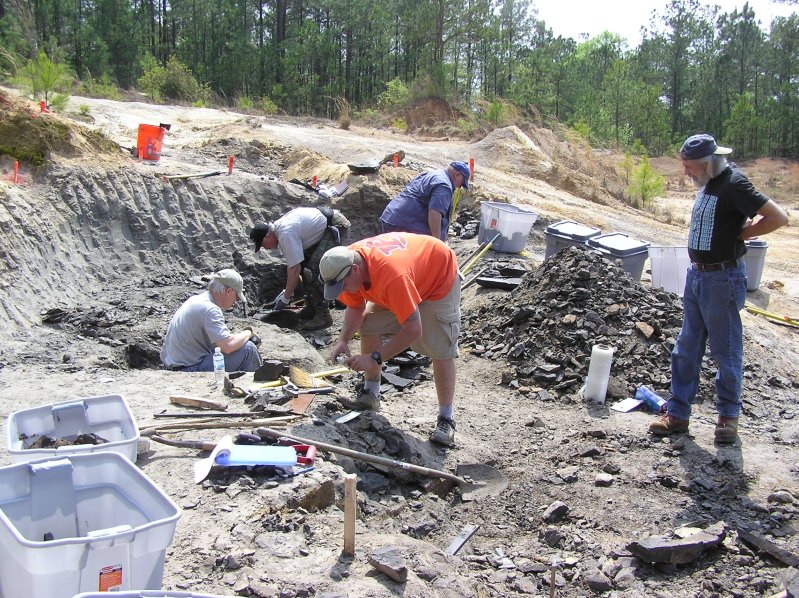
Dr. Bill Frazier (far right) observing the dig operation.

Humm . . . . did we miss any?? Better check those rocks carefully! Left to right - Vicki Lais, Bill Montante in back, Carl Mehling in black in front, Dr. Chuck Savrda, Dr. Bill Frazier, Terry Knight, Amanda Savrda.
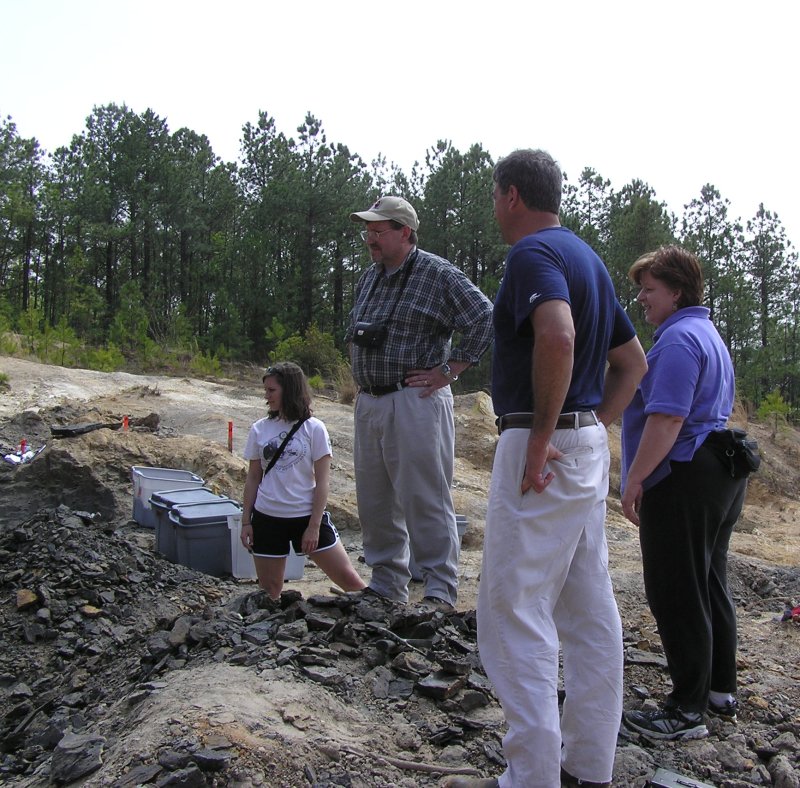
Amanda Savrda, Dr. Chuck Savrda, Michael Brocato, and Leisa Whitlow observing the diggers.
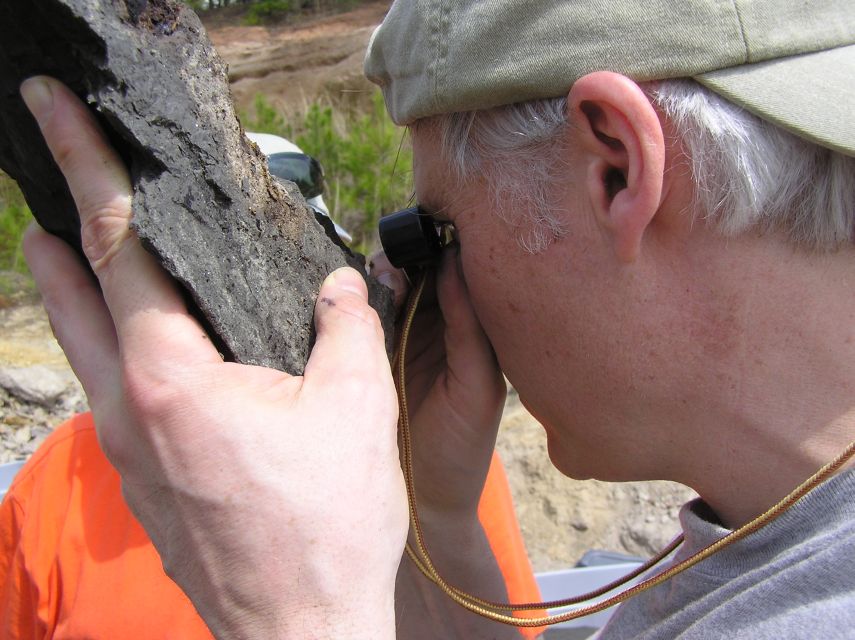
Dr. David Grimaldi getting an up close look.
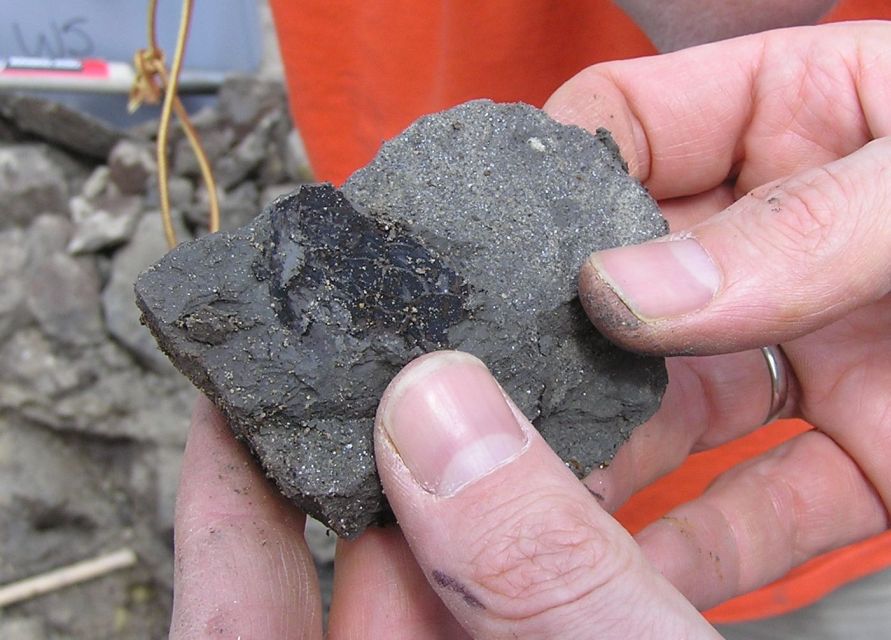
Beautifully preserved fossil, one can see scales using a magnifying glass.
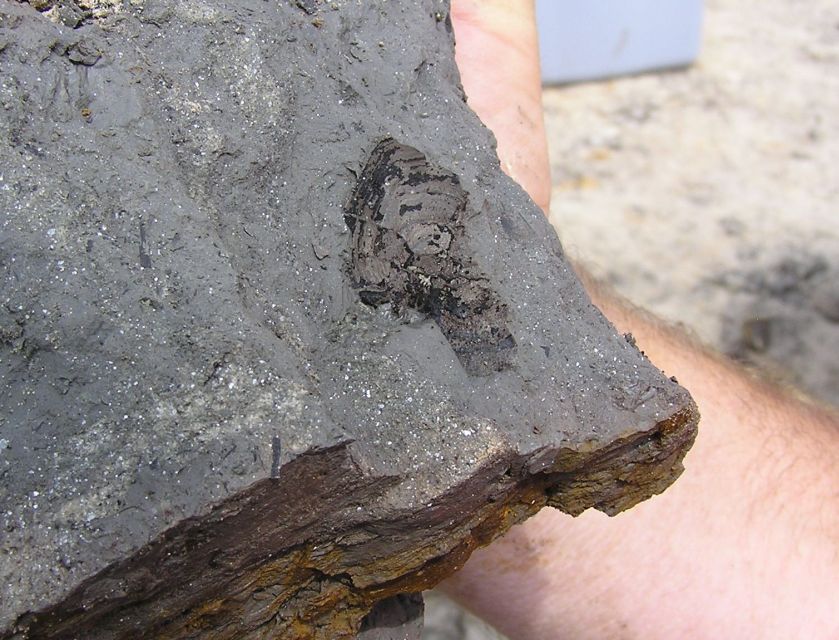
A well preserved mussel impression, including the foot.

This fossil leaf was quite long, more was exposed as the overburden was removed.
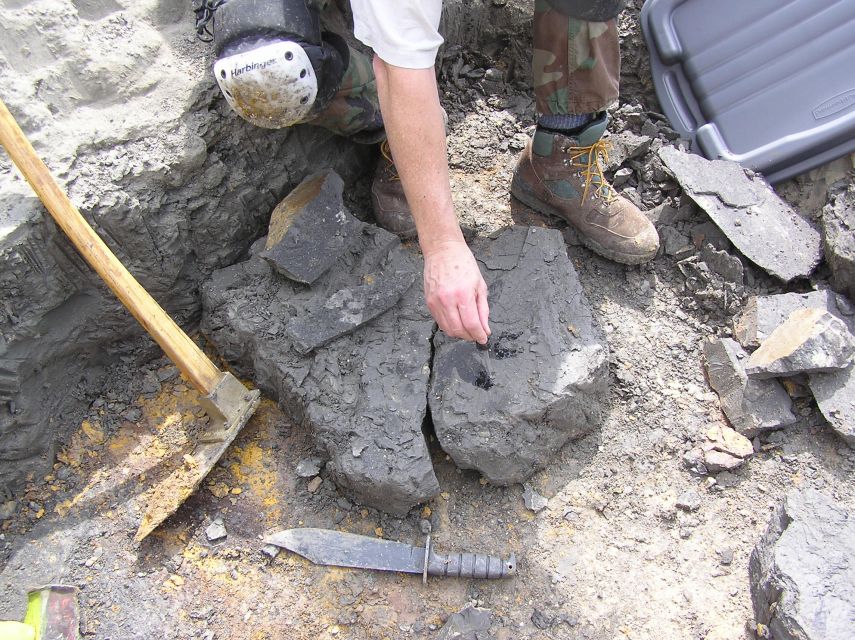
Dr. John Interlandi is applying a fixative to a fossil leaf to help preserve it. This clay material is damp when excavated, but the hot sun dries it out quickly. When it dries, the exposed surfaces crack and curl up like dried mud, destroying any fossil that might be there.
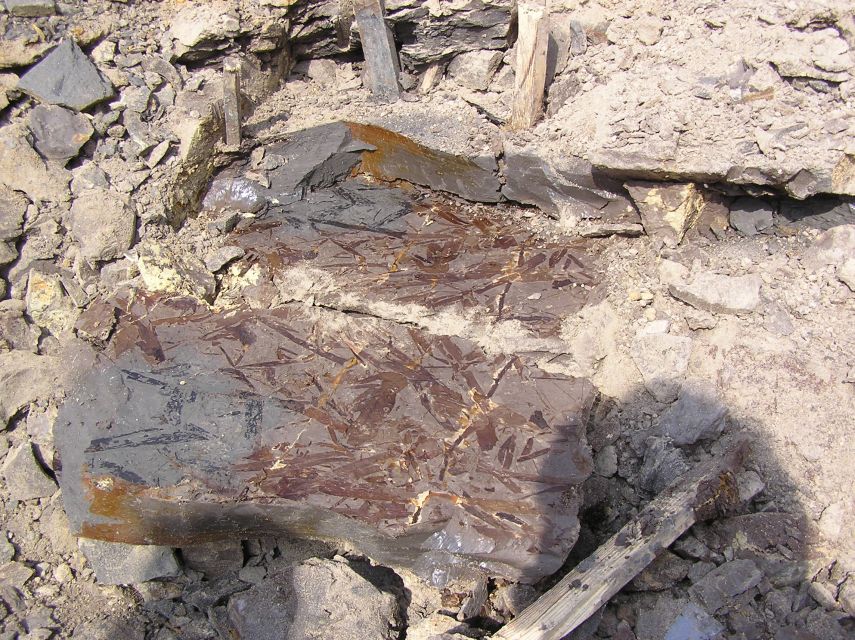
Large exposure of matted leaf material.
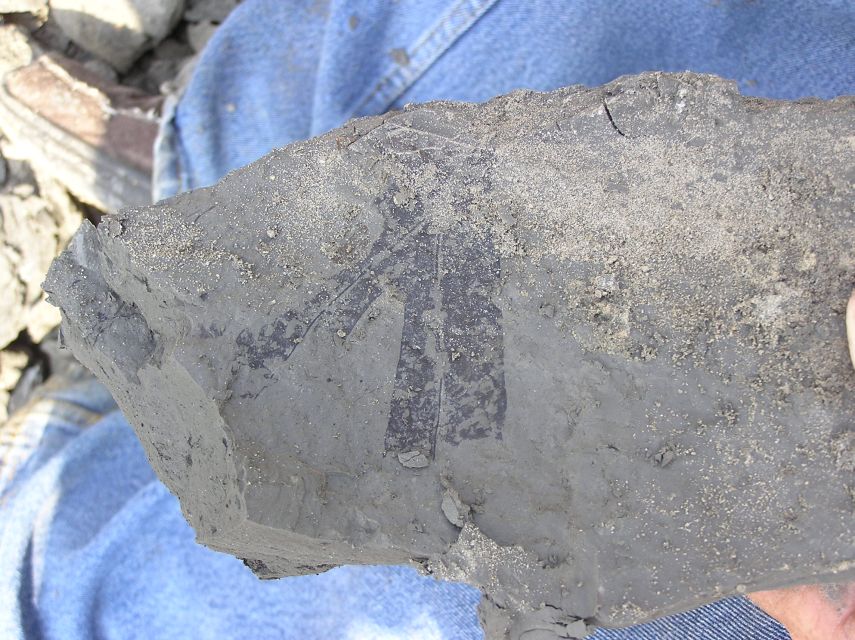
Another plant fossil.
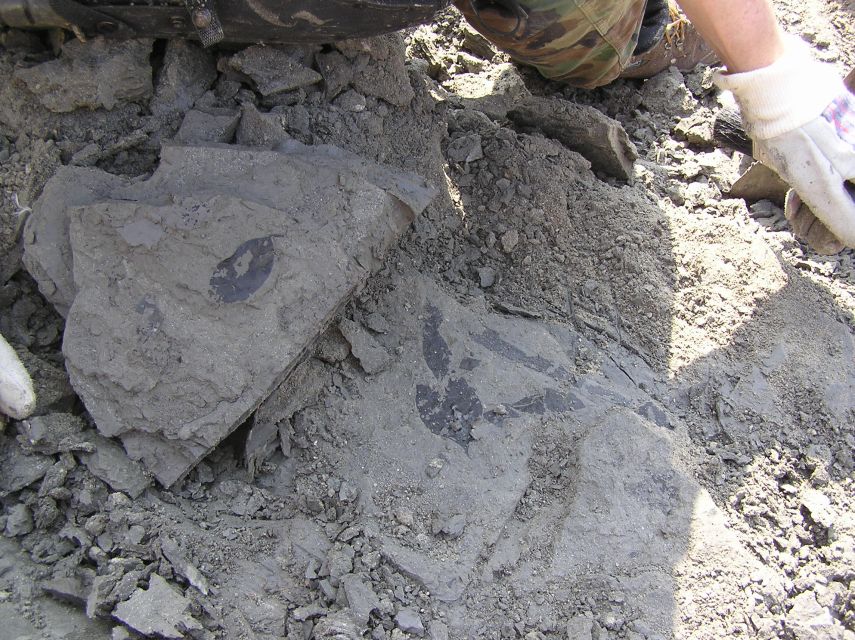
Several leaves.

This is an extension of the long stem/leaf shown several pictures above.
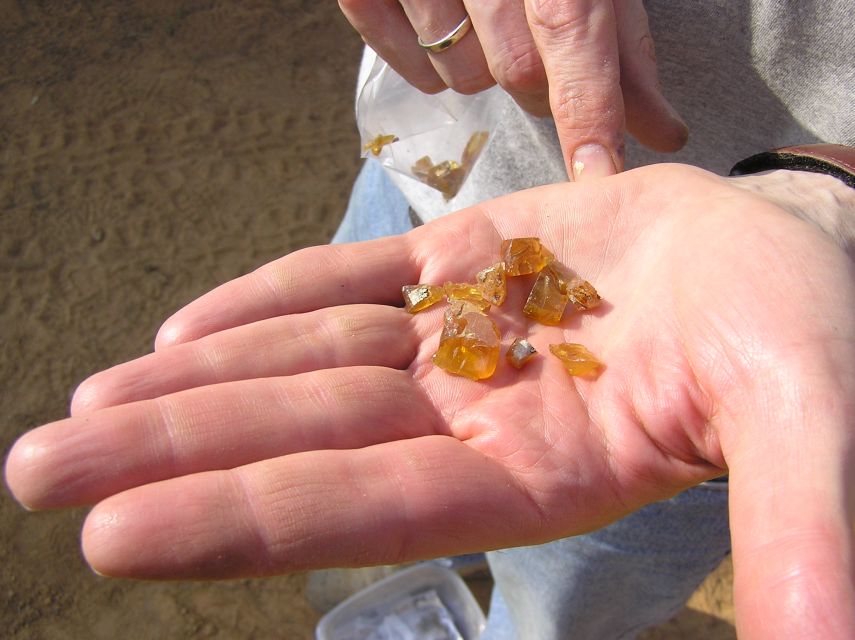
Dr. Grimaldi (author of Amber: Window to the Past) was specifically hunting amber, and he was not disappointed, as several pieces were found. Many of the amber pieces contained inclusions of small insects.

Seeds found at the site.
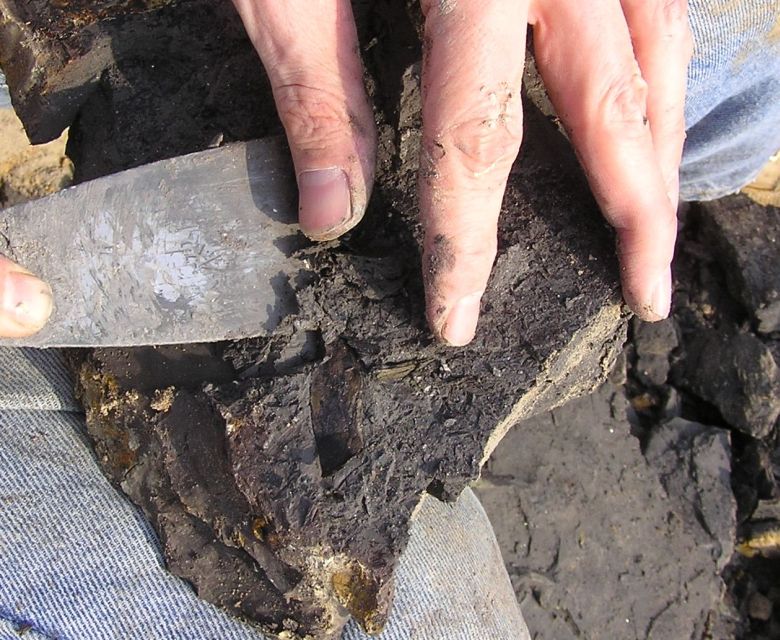
Most of the previous photos capture impressions of ancient fossils - where the fossil used to be, and now there is only an image pressed into the clay. This photo shows an actual leaf which was preserved in the soft clay, note the curled up edge of the leaf.
May 6-7, 2006 - Cretaceous Fossils, Lowndes Co, AL
This May found the troops encamped in Lowndes County for a whole weekend of fossils and good company. Tents, camping vans, pop-up trailers all turned out for the great weekend of food, hunting and sleeping out thanks to the generosity of the hunting camp. Our hosts supplied rides out to gullies and a creek on their property via ATV’s and trailers. Even Sylvie made the bumpy ride out to the creek, although some of us did do a quick, quiet poll as to who knew how to deliver a baby or how long it would take to make it to the nearest medical facility, JUST IN CASE she hit one bump too many! We had a great crowd, and some excellent specimens of fossil crabs, shells, ammonites and various teeth were found. After a long day of collecting, we gathered around a roaring fire for a low country shrimp boil and good conversation. Everyone seemed to be demonstrating that everything does taste better outside! Michael and Sylvie had left early, Sylvie declaring that she was now ready to go home and have a baby!
Even the rainstorm that burst on us Sunday morning didn’t dampen spirits. Sleeping with the rain pounding down while you are warm, dry and cozy is one of life’s lovelier experiences! The early risers gathered under one of the many “porch” shelters in the camp and revved up the little propane stoves to make breakfasts of pancakes, cereal, coffee, tea...all the comforts of home, but more fun. Finally, all but the most dedicated decided to call it a day and head home. Nancy left a few of her belongings behind, so Vicki and Martha decided to return them via Selma, wait out the storm and do a little more looking around before heading back.
It was great to see so many of us, old and new members AND guests, turning out for all or most of the weekend. THANK you to our hosts for making us feel so welcome and providing all the facilities. Also thanks to our hosts, and to Shannon and Jim for providing vehicles and trailers, and to Vicki and everybody who helped organize the weekend and the shrimp boil!
This month we were collecting in the Ripley Formation, Cretaceous Period, Maastrichtian Age. According to information published by George Martin, Soil Data Quality Specialist with the USDA, most (if not all) of the crabs found on the trip are Avitelmessus grapsoideus Rathbun, or “Muffin Crabs.” These crabs have been documented from the Ripley Formation in Alabama, Mississippi, and Tennessee. Along with crabs, members also found numerous teeth, including mosasaur, sawfish, swordfish, and various types of shark teeth. Also found were numerous shells and pieces of ammonite.
--Edited by Vicki Lais
(Photos courtesy Jan Novak and Vicki Lais)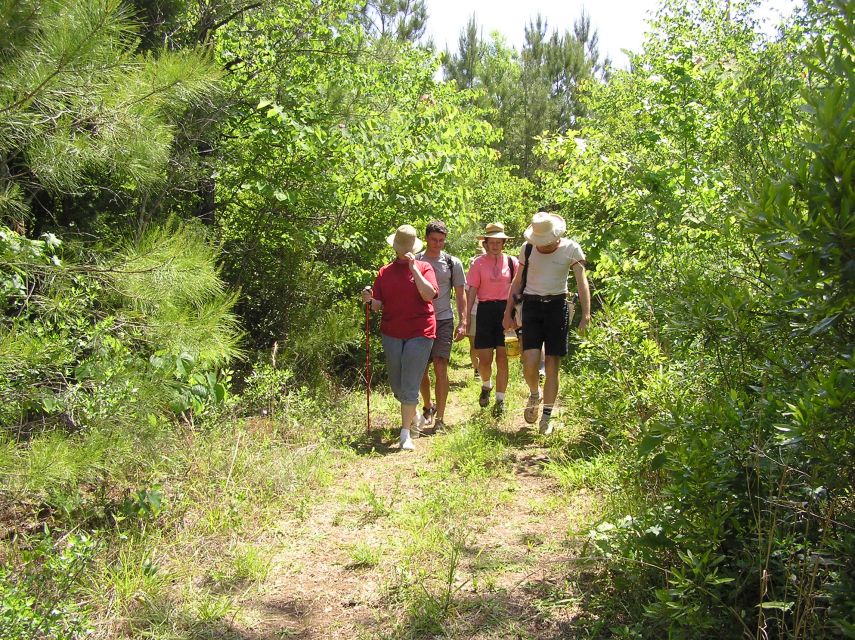
A long drive by ATV, then a short hike to the gully.
The gully where we began the day.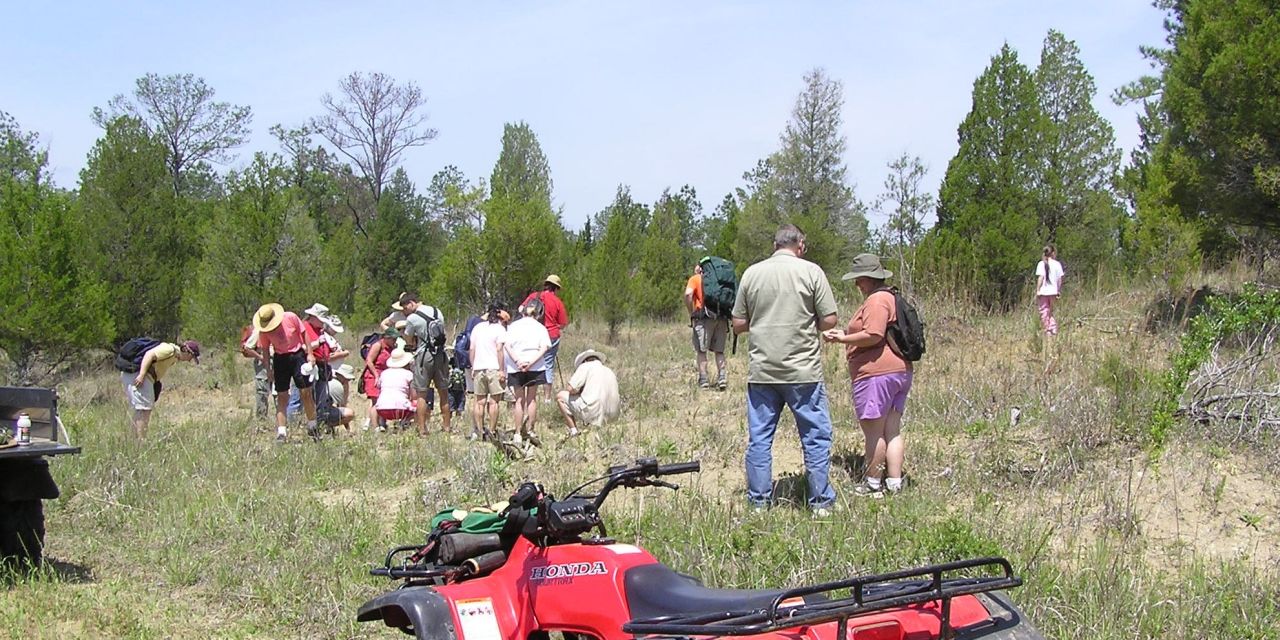
Greg has just given instructions on "how to collect in a gully", so everyone is being very cautious and searching carefully.
This is a rather small gully, with very little chance of getting lost here. Gullies in the Ripley are very unusual.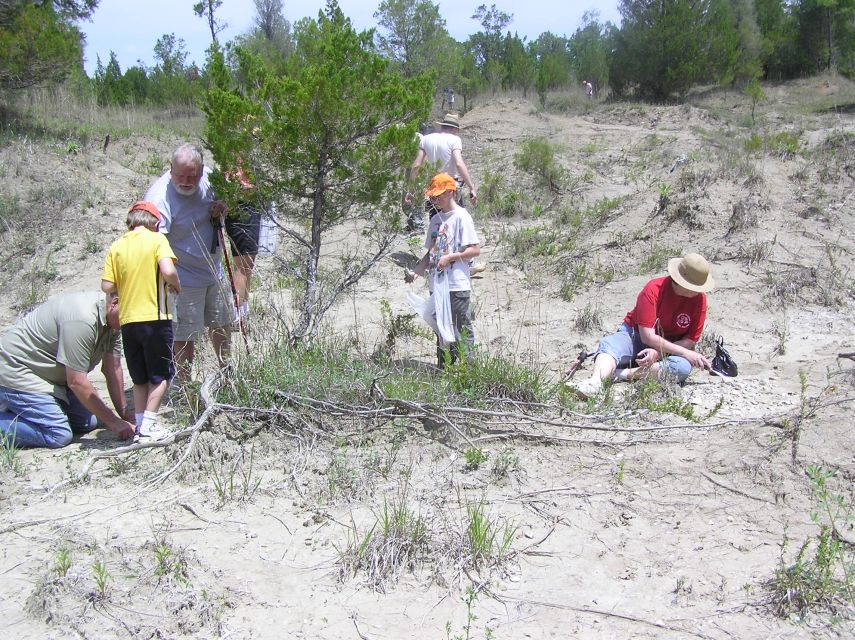
Sometimes it was easier and more productive to just sit in one spot and let one's eyes get accustomed to the patterns.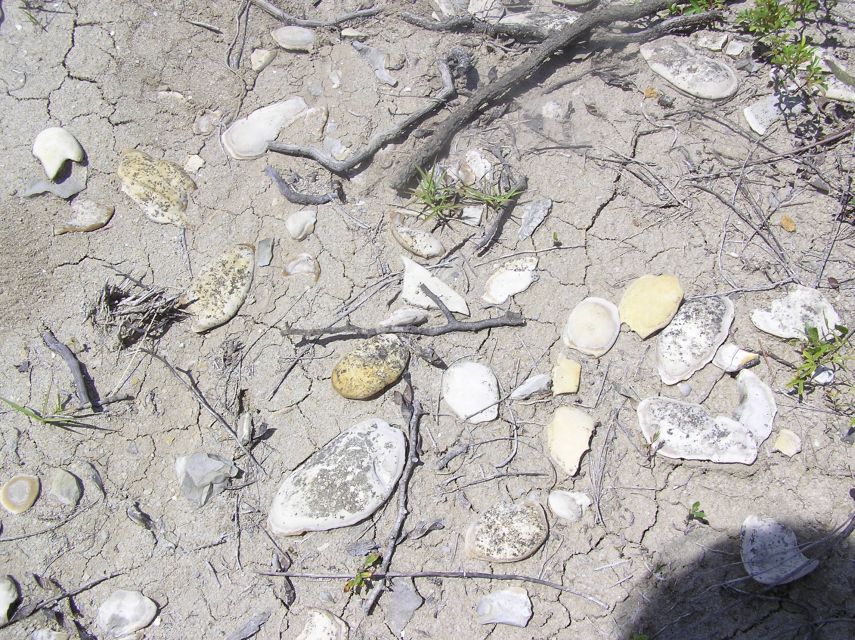
The gully is littered with numerous pieces of broken shell, nodules and sometimes fish and shark teeth.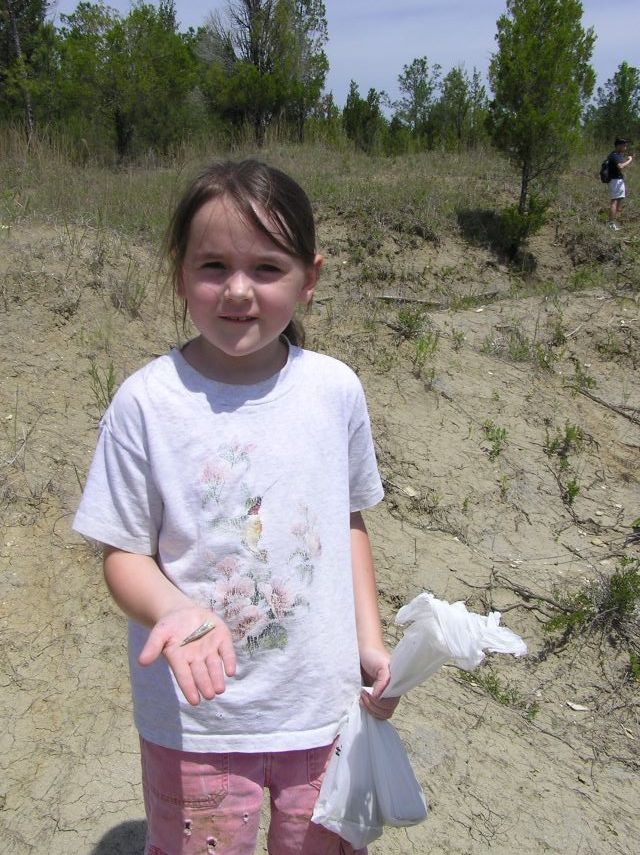
Loni's grand-daughter has found a sawfish tooth.

Lea has found the bottom part of a bivalve, possibly exogyra.
Shannon has found a new use for our logo patch - his son John's backpack.
Melanie has found . . . something . . . .
Tooth from a late Cretaceous swordfish, probably Protosphyraena.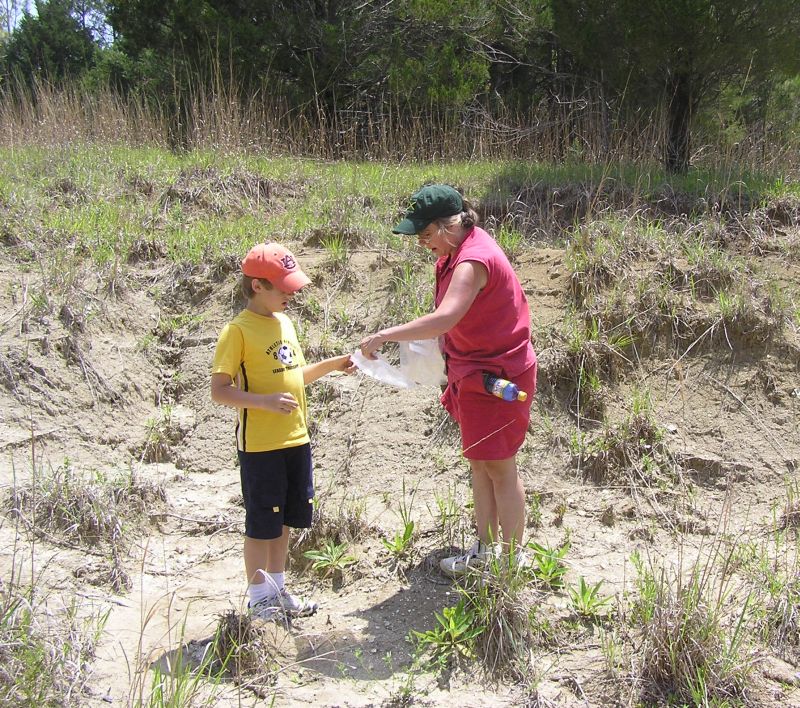

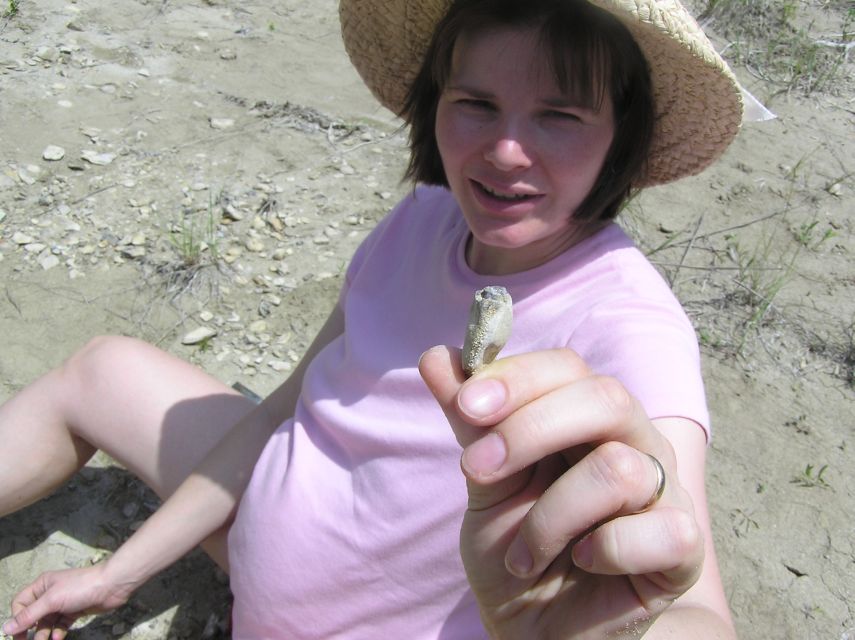
Sylvie has found part of a crab leg.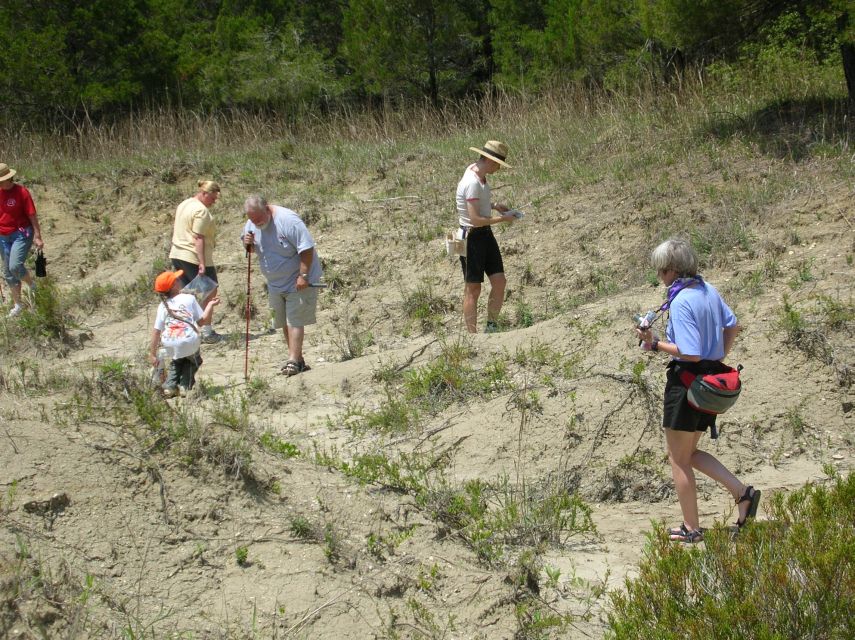
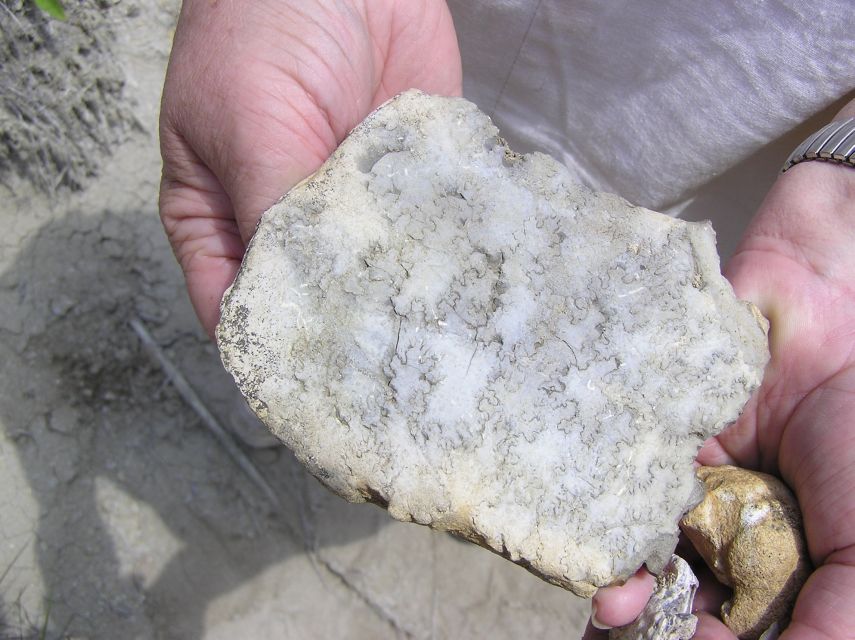
Small fragment of ammonite showing the tell-tale intricately patterned suture marks, which distinguish it from a nautiloid.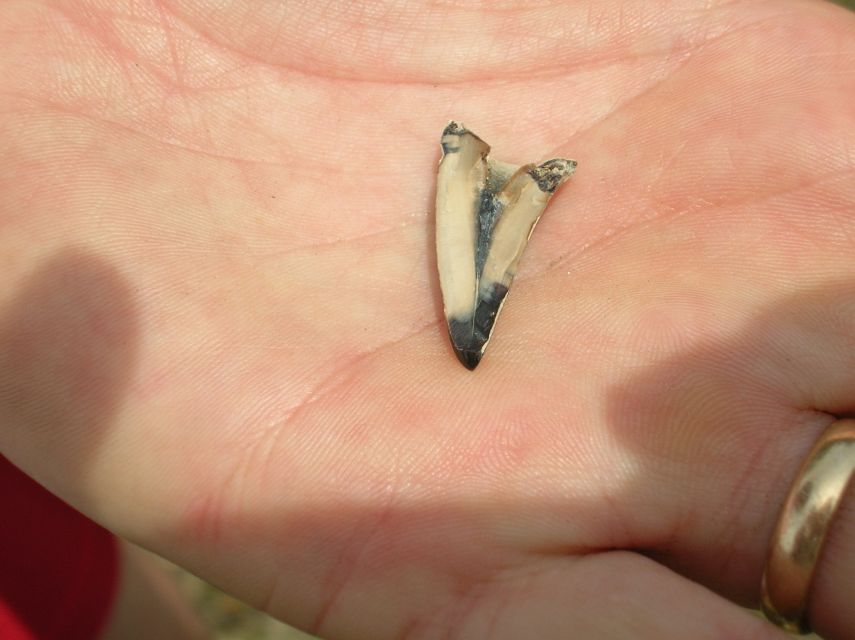
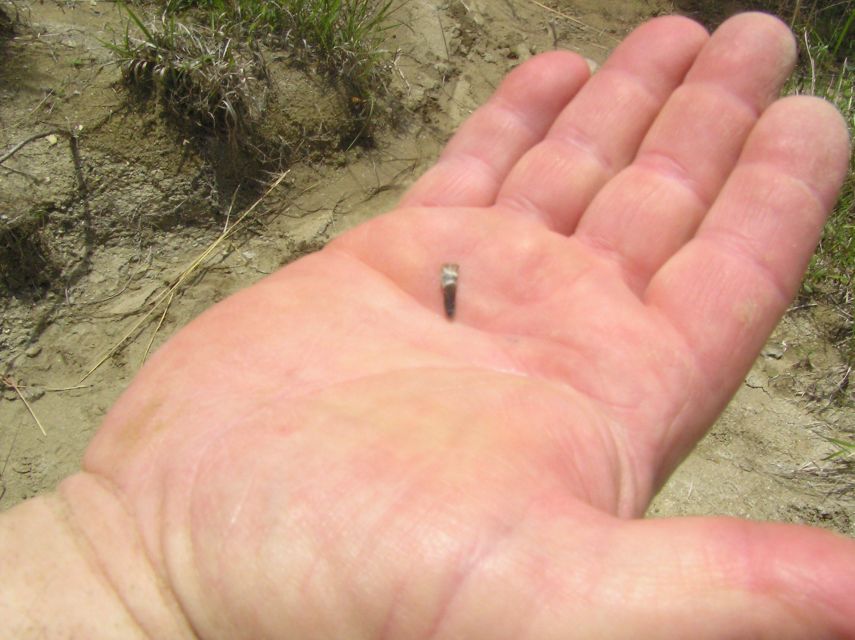
Mosasaur tooth.
A variety of shark teeth, and the long upper left one is a swordfish tooth.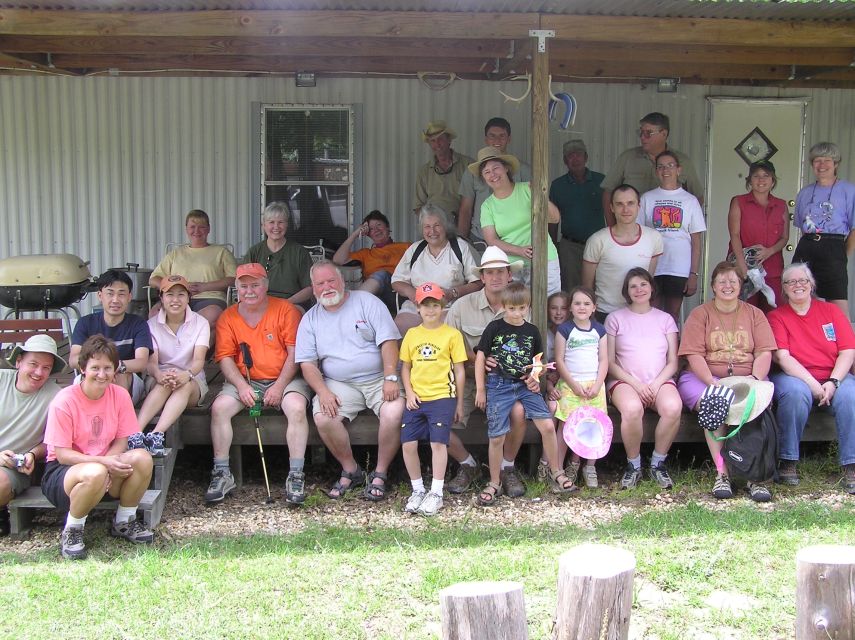
After a really hot morning, we returned to camp for lunch and a group picture. Uhh.... where's Claire, did we leave her??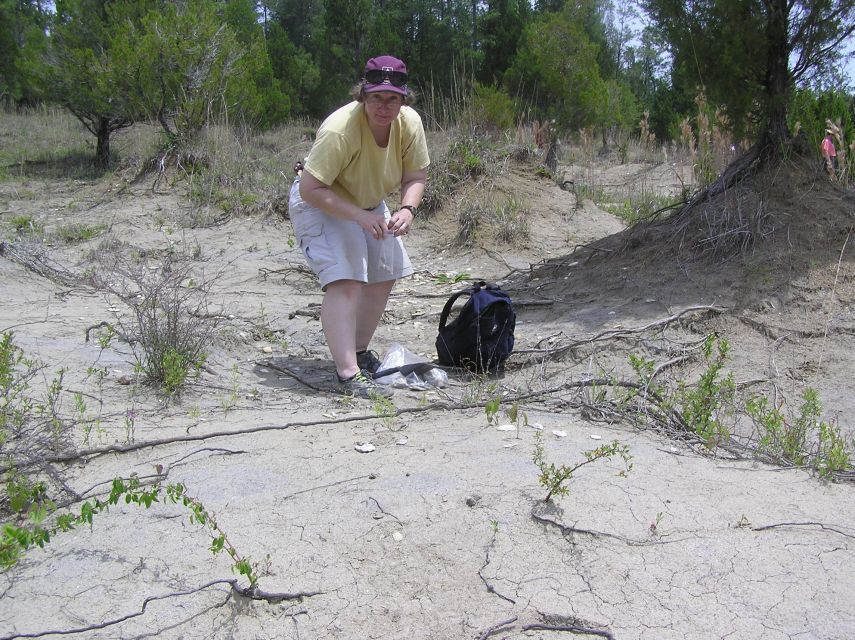
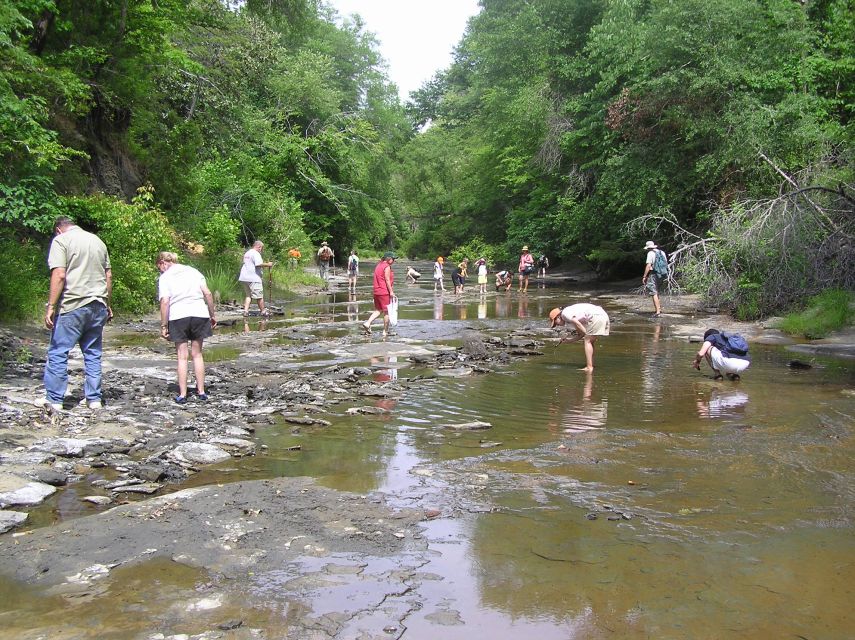
Members spread out to search the creek bottom and banks. Some go upstream, some go downstream.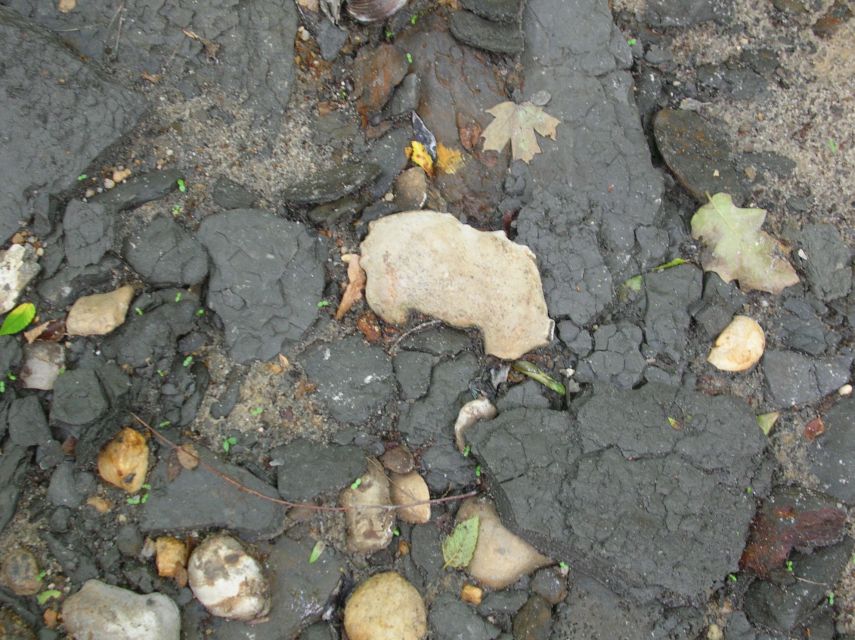
Nice crab. Note the dark gray clay. It is quite slippery in the creek and along the shore.
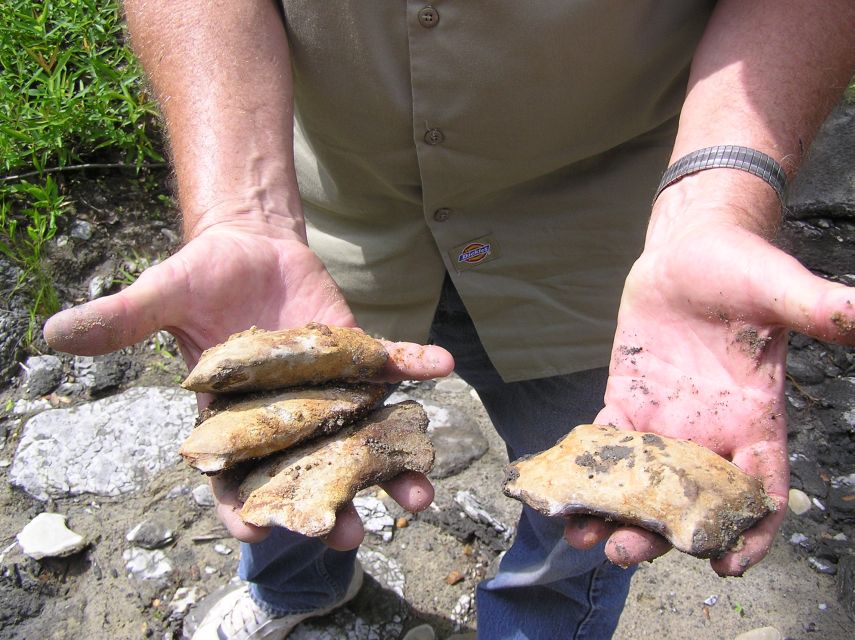
Some nice crabs.
An odd round item found by Vicki.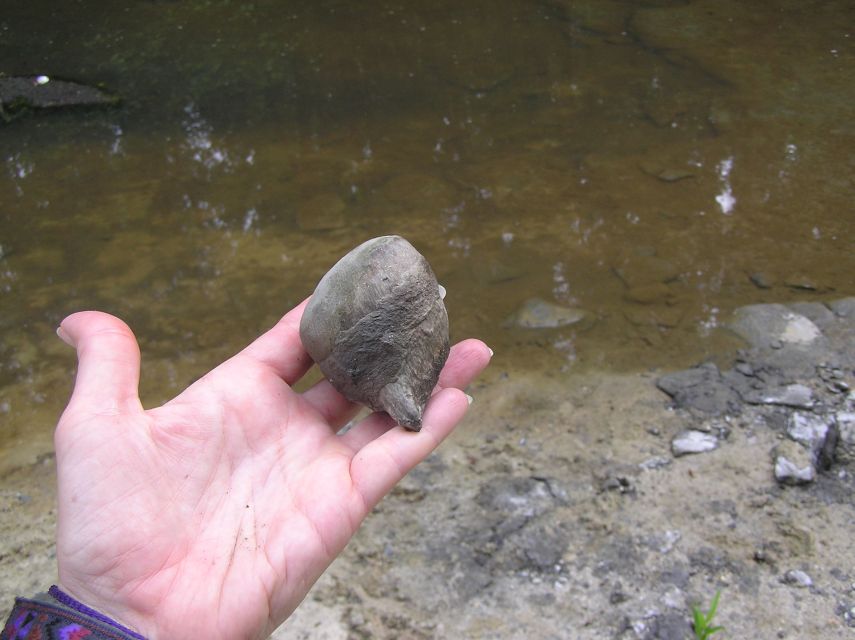
A closer look at the "round thing".
Rychard has found a nice deer skull, recent, not a fossil.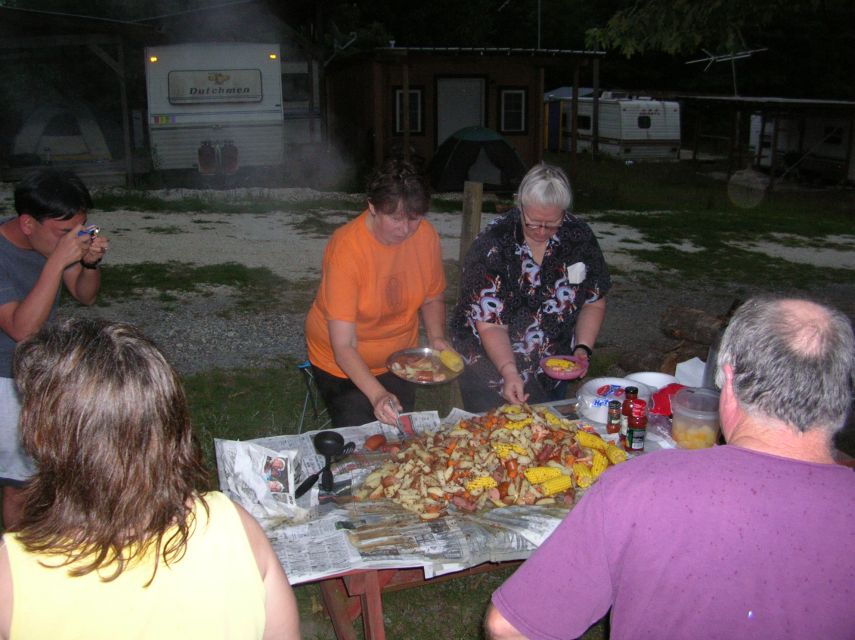
Back in camp, the food fun starts! Members and guests enjoyed a fine low country shrimp boil, with head chef Greg Mestler. Numerous members contributed to its preparation and its disappearing act!
THIS JUST IN ! ! SYLVIE AND MICHAL ARE THE PROUD PARENTS OF ELI MRUG ! Born May 23, 2006.

June 03, 2006 - Paleocene Fossils, Clarke and Wilcox Co, AL
Later in the day we headed to Wilcox County, Alabama, to some huge road construction rubble piles. These rocks were from the Paleocene, Midway Stage. Several nice nautiloid casts (Hercoglossa ulrichi) were found at this site, as was an extremely nice vertebra, which has not yet been identified. The nautiloids are made of compressed sand, and the actual shell has disintegrated. Though they are very heavy and appear sturdy, if left exposed to the weather, or cleaned with water, they will crumble into a pile of sand.
Update: July, 2006 - on the trip, Martha found a large bone that appeared to some of us to be recent, as it was very lightweight; however, Jun Ebersole and James Lamb of the McWane Science Center asked to examine the bone, and determined it is from the only early whale of this species ever found in the state. The specimen has been sent to an early whale expert for study.
(photos courtesy Steve Corvin and Vicki Lais)
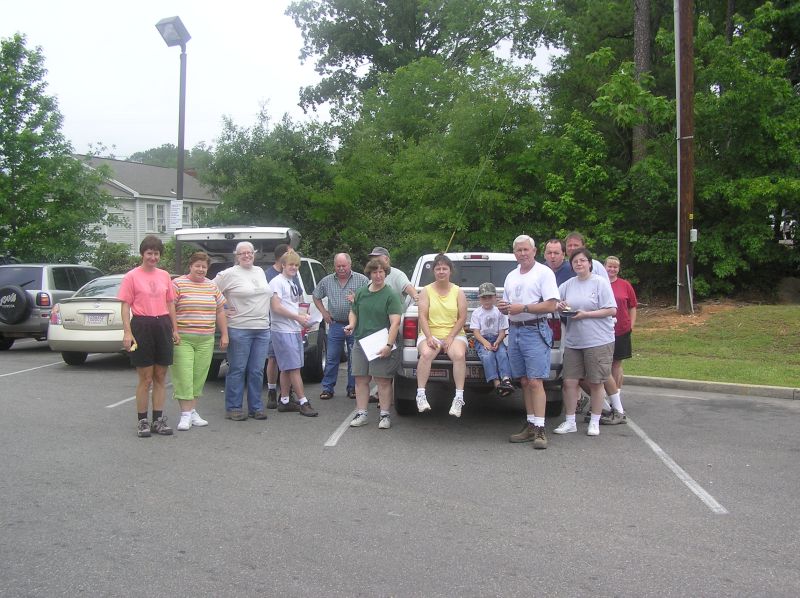
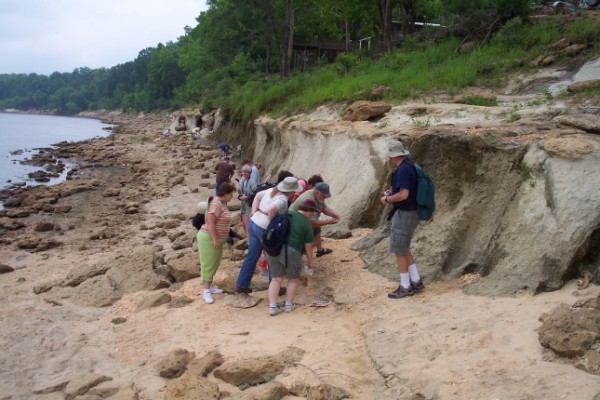
Greg is showing the group some specimens from this site - nice corals.
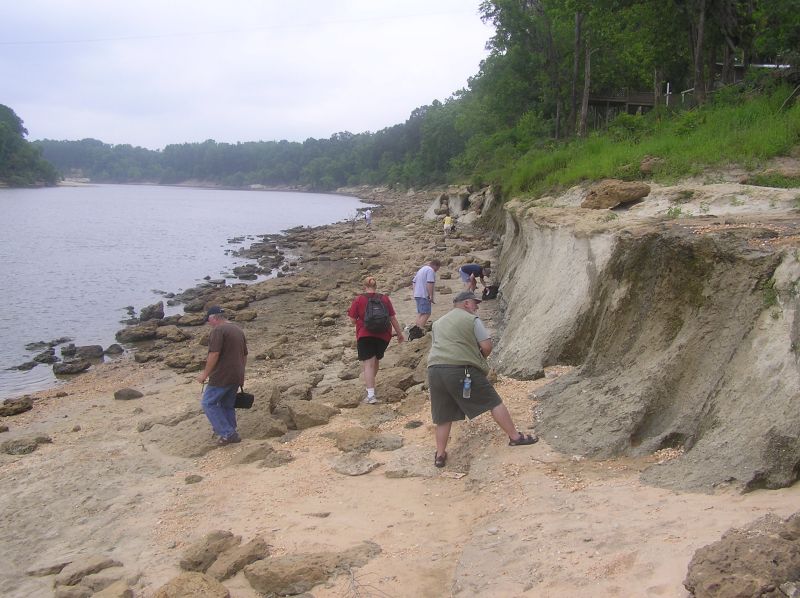
And the group scatters - the low water level makes hunting easy.

All the rocks at this site are filled with shells and corals. The trick is getting them out whole, as they easily crumble.
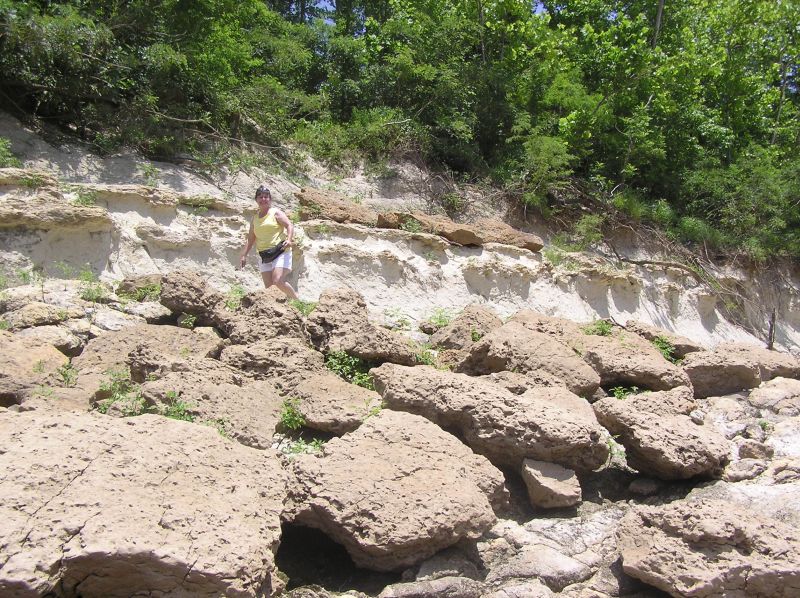
Becky is looking high . . .

and Anca is looking low!
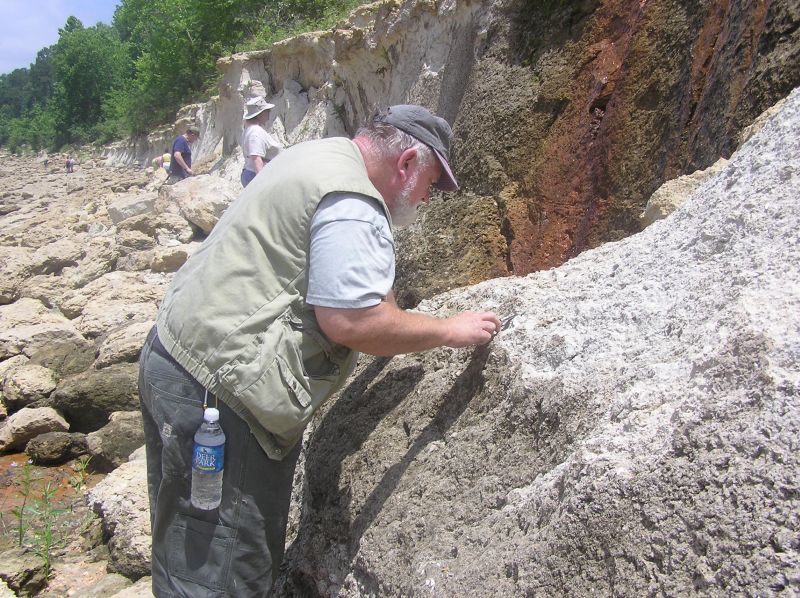
Greg carefully easing out a small coral.
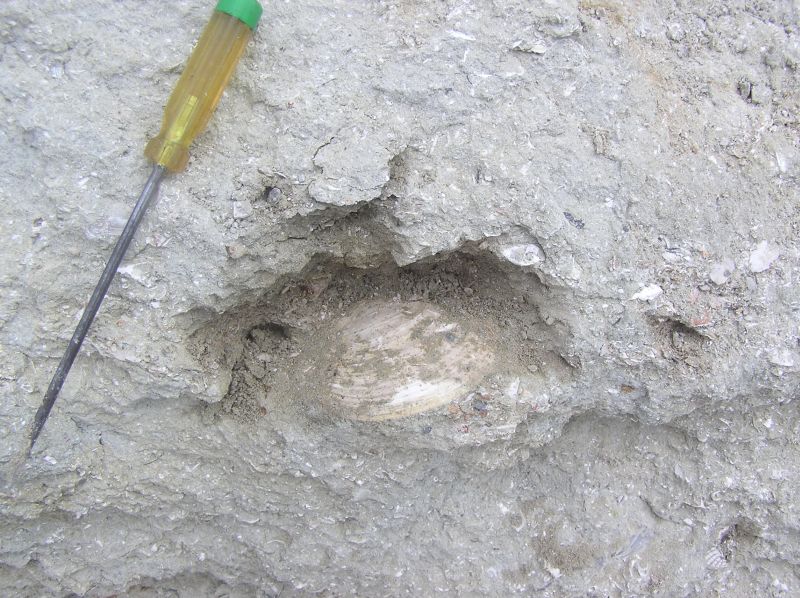
A nice bivalve found by Vicki.

Nice gastropods found by Leisa.

A large piece of bone found by Martha. According to James Lamb, it appears to be another bone fragment from an early whale found in this area. This specimen has been sent to an early whale expert for study.

David is heading to another location. The corals and shells were found from the bluffs to the waterline, while Steve engages in his favorite activity, getting wet!
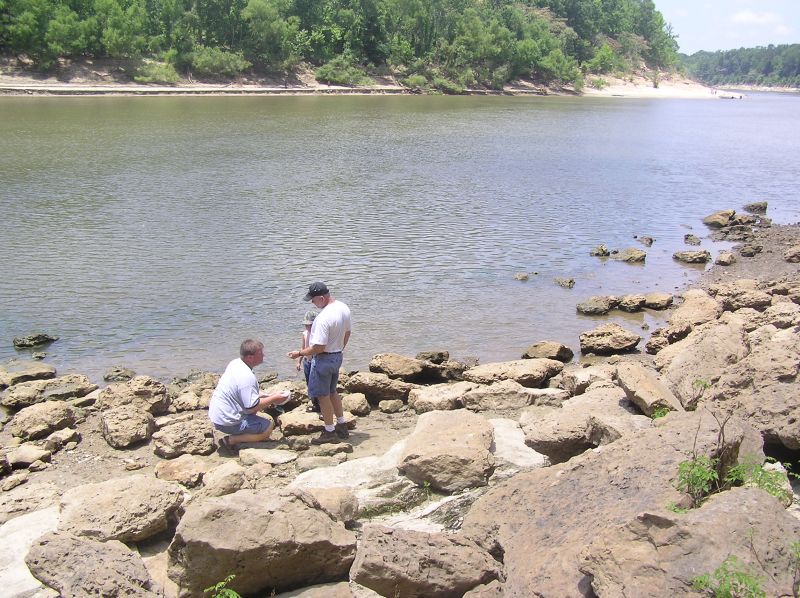
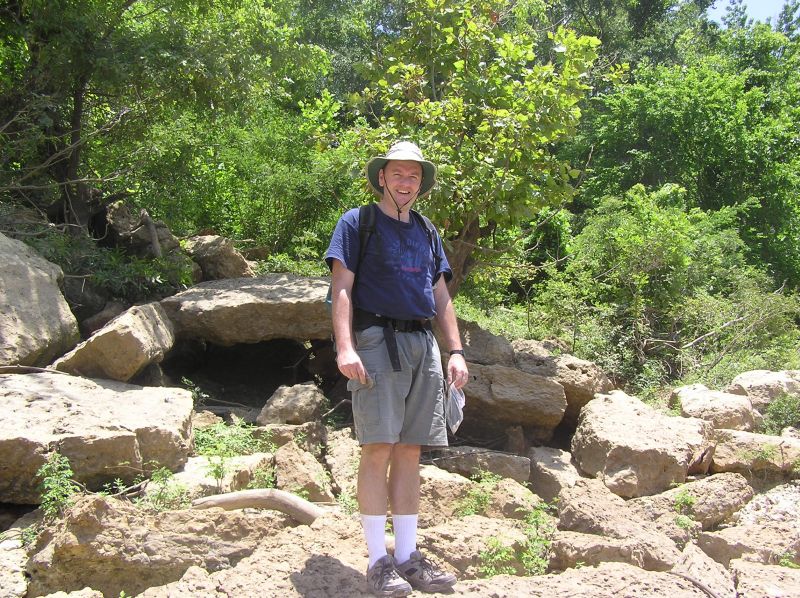
Jan, look over here!
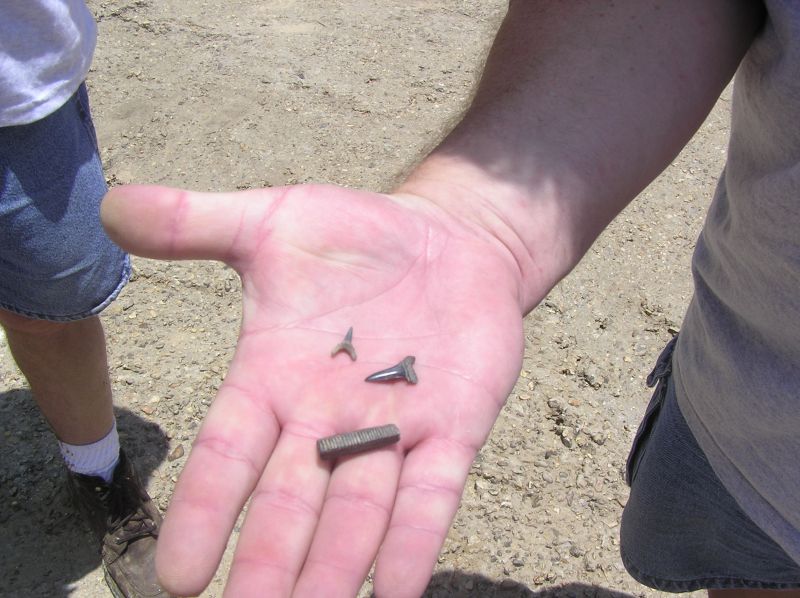
Shark teeth and a ray "tooth".
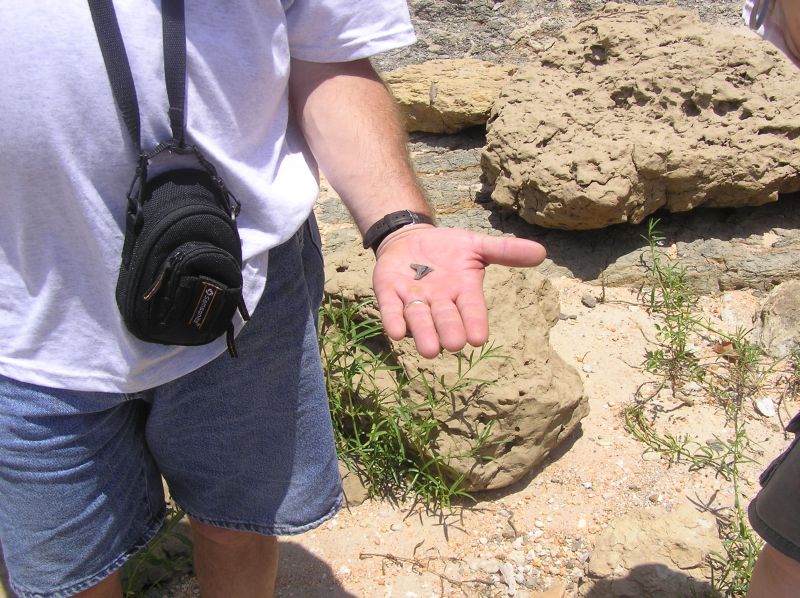
A nice larger shark tooth found by Steve.
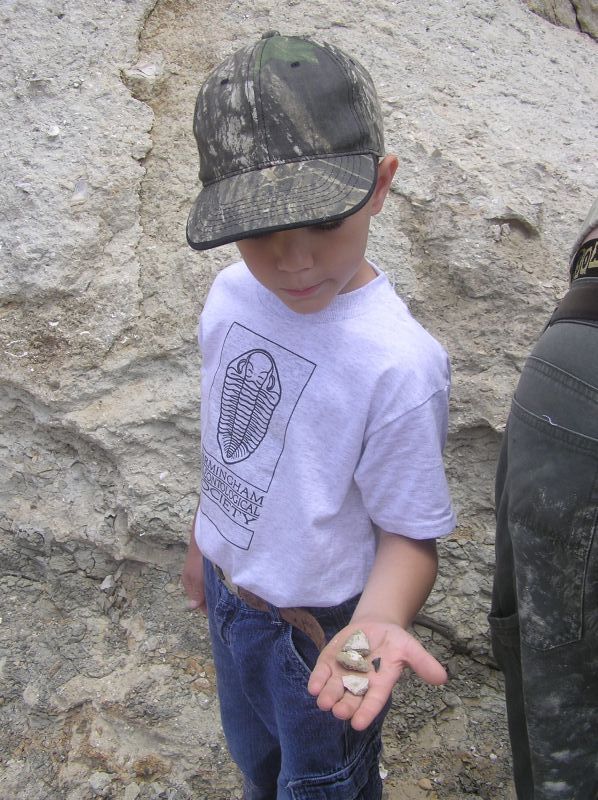
Steven has found coral and a shark tooth.
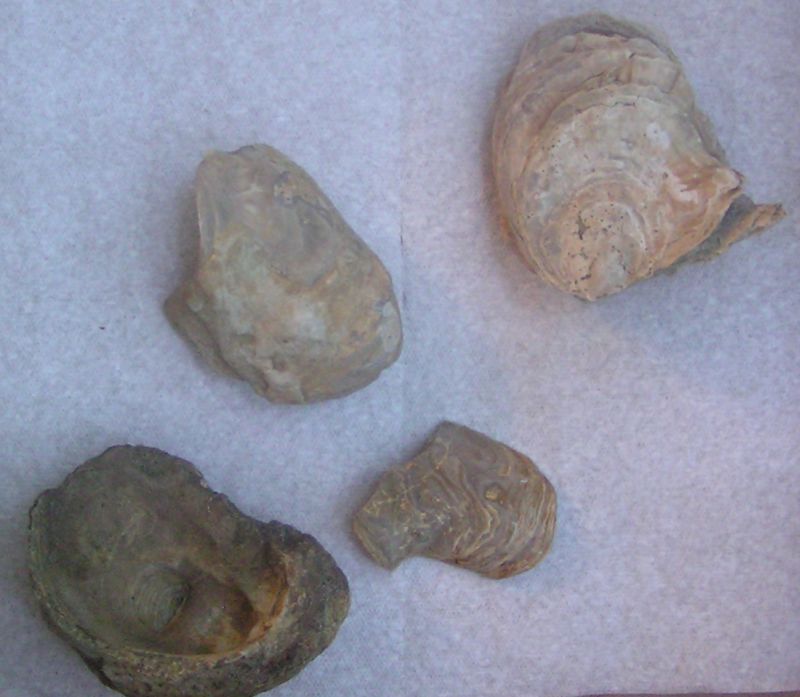
Some shells found by Vicki.
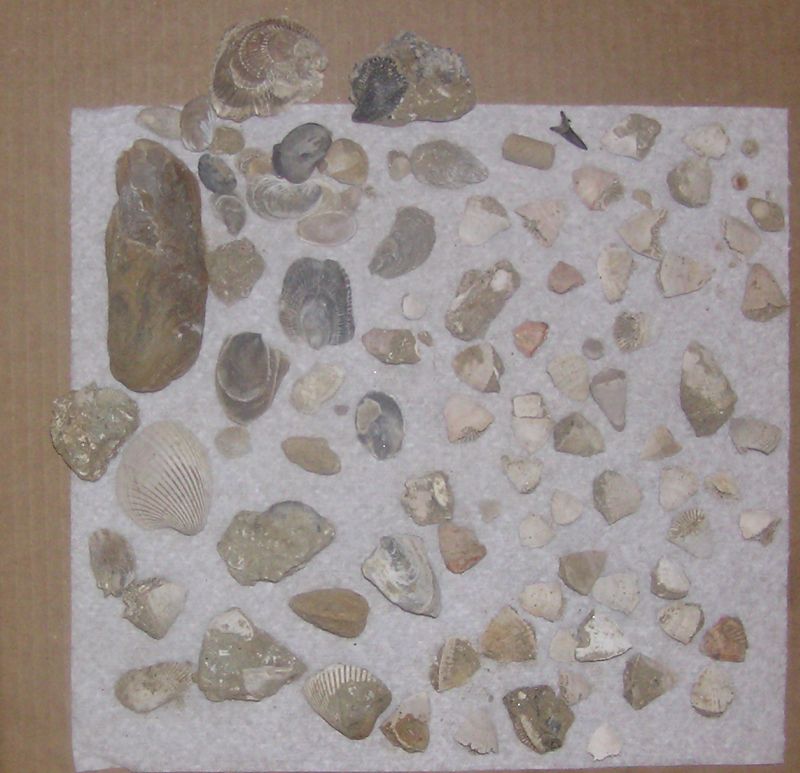
Shells and corals in Vicki's bag.
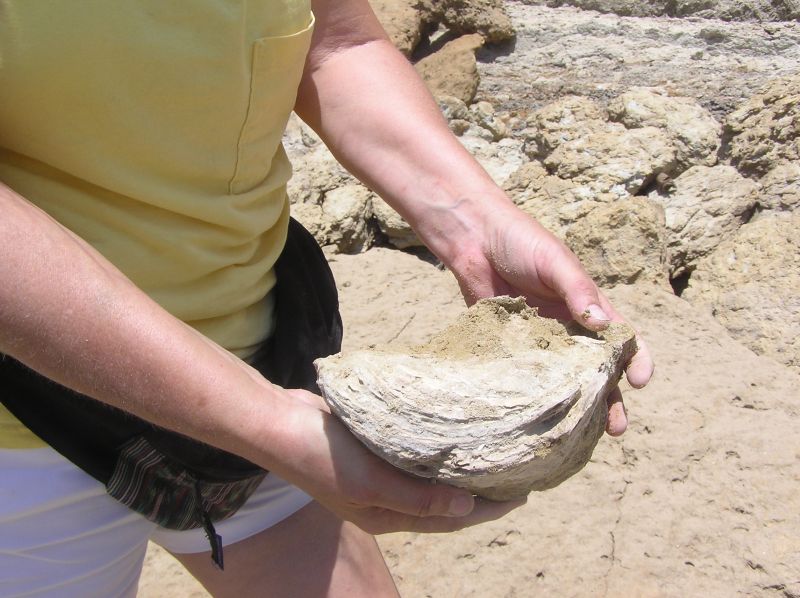
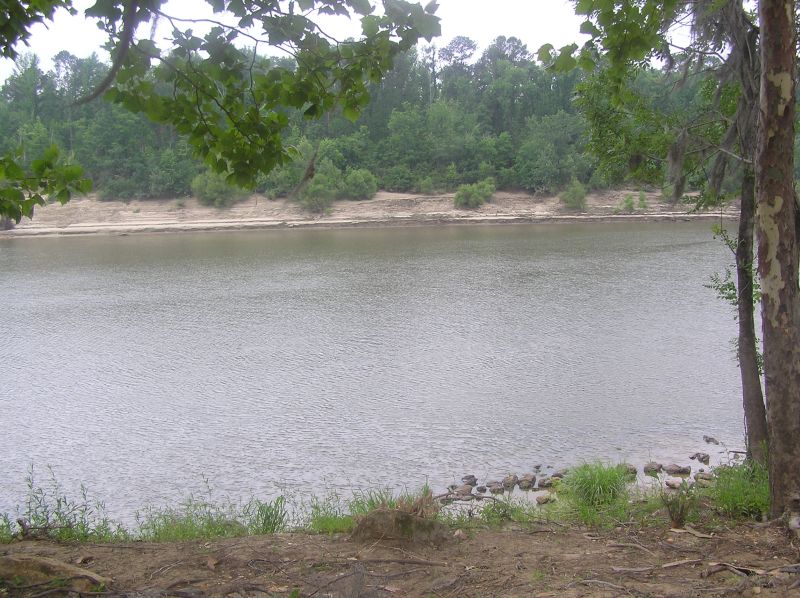
One last look at the river before we head for lunch, then on to the next site.
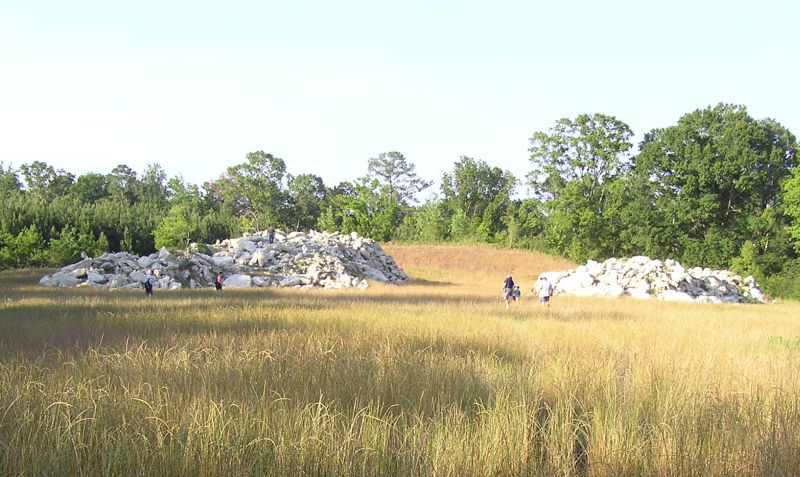
Later in the afternoon we headed north to Wilcox county, to this pile of rocks from nearby road construction.
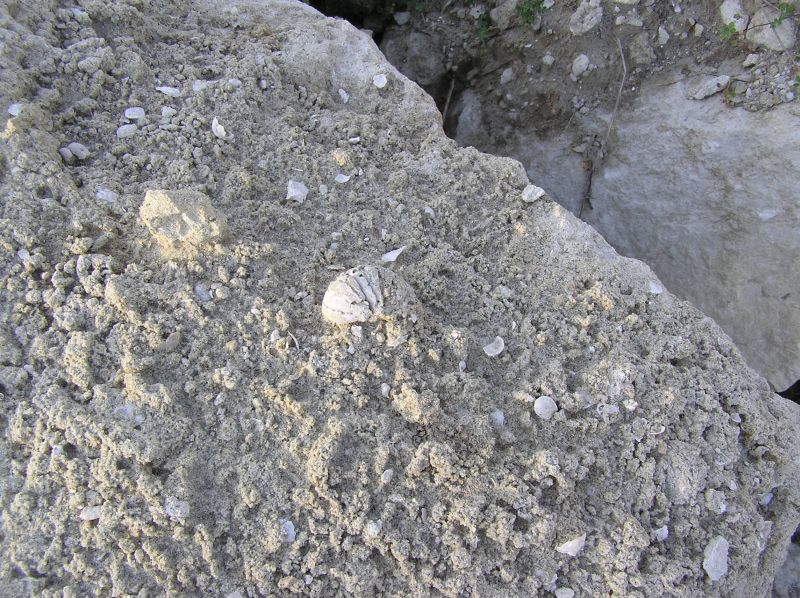
This was spotted on the way in, but the rock was too hard to easily remove the fossil.
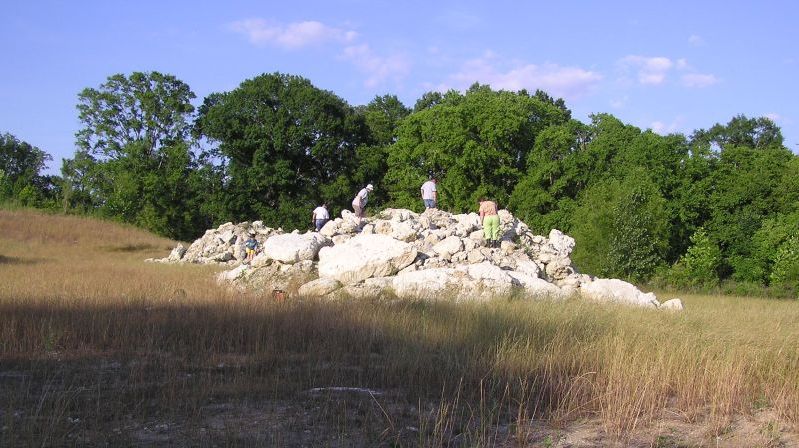
Jan and Lea headed over to this pile of rocks where they found . . .

a cast of a very large nautiloid!
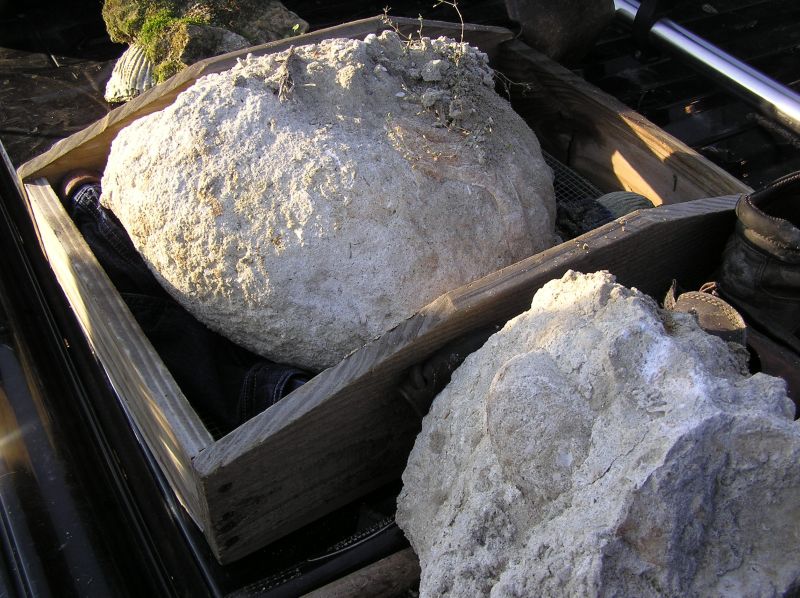
More nautiloid casts.
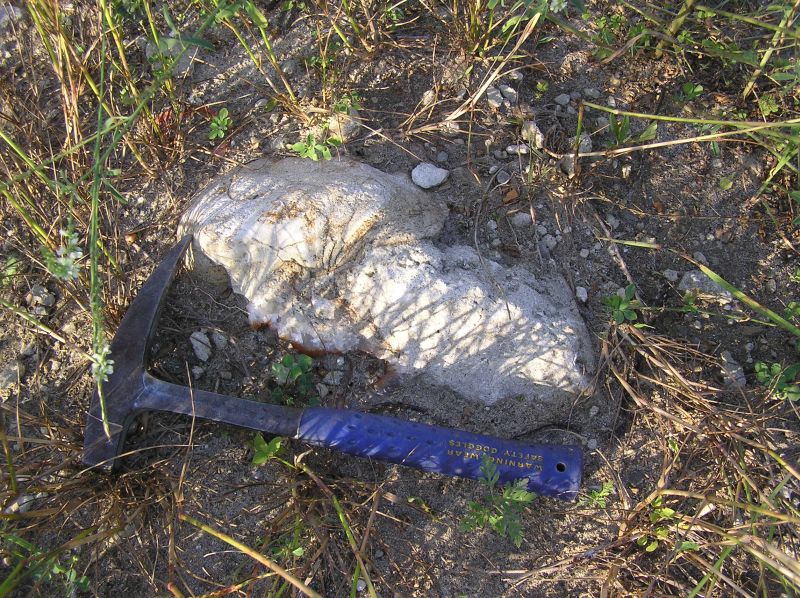
Claire found this piece of nautiloid barely out of the ground. She dug quite a while to work it loose.
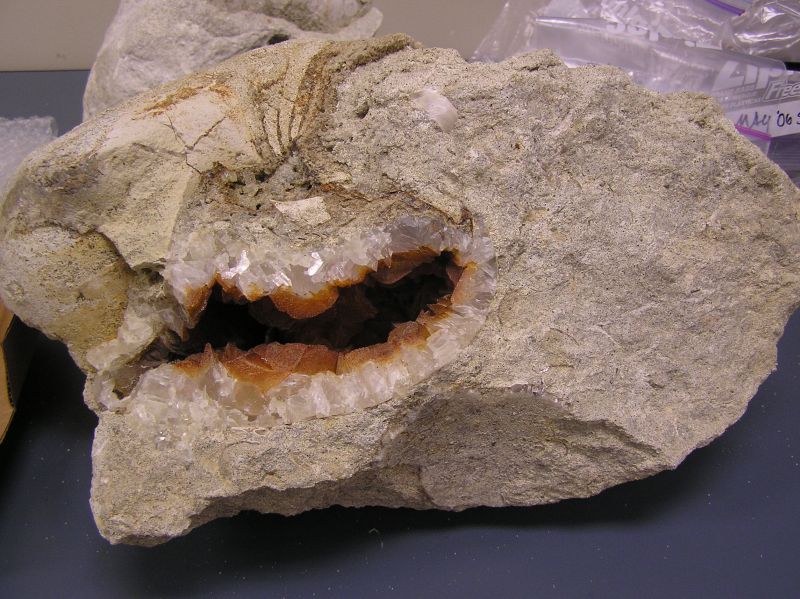
This is what Claire found inside the nautiloid after removing the matrix. Beautiful quartz crystals!
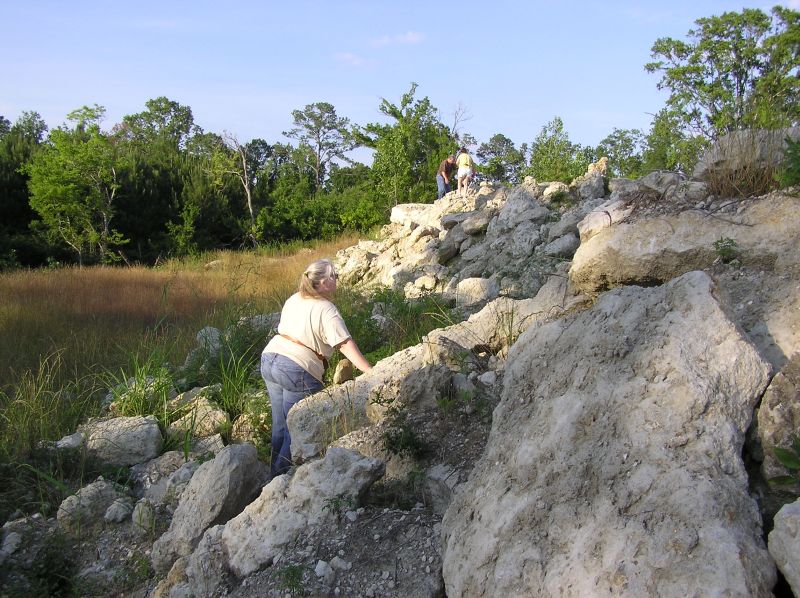
Martha searching for an easy way up, which required the skills of a mountain goat!
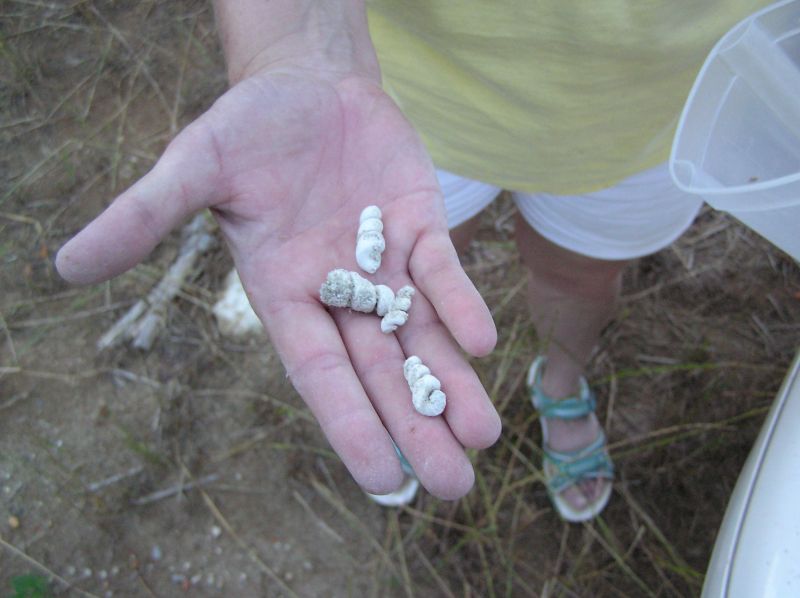
Becky has found some nice gastropods.
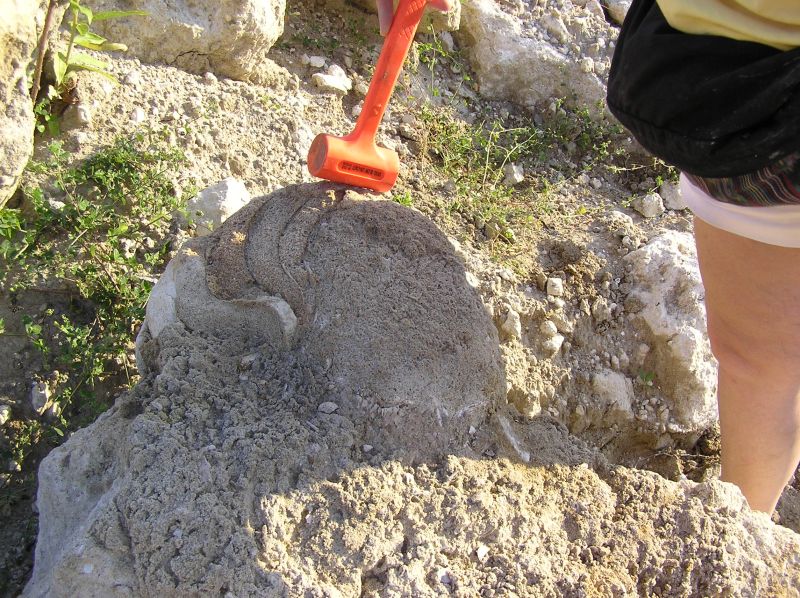
And a large nautiloid cast in extremely hard rock!
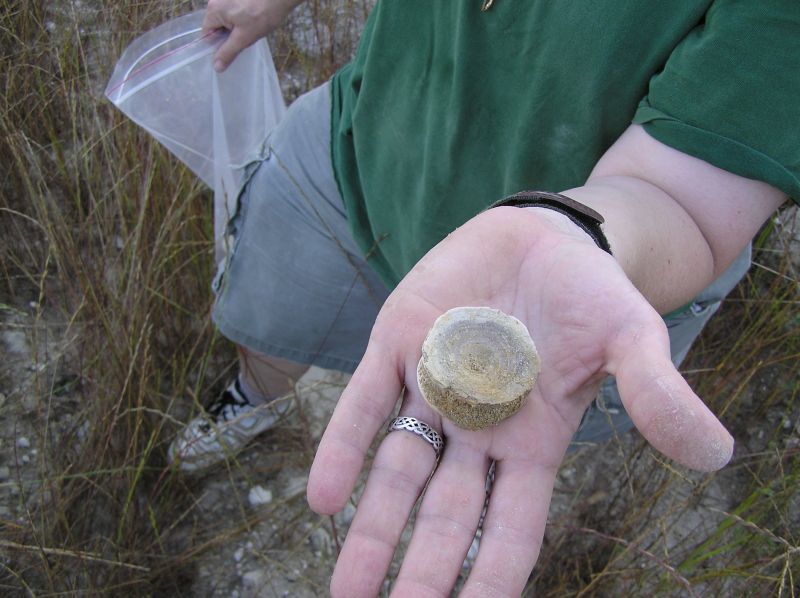
Claire had a very nice day. In a wash near the nautiloid filled with crystals, she found this large vertebra.
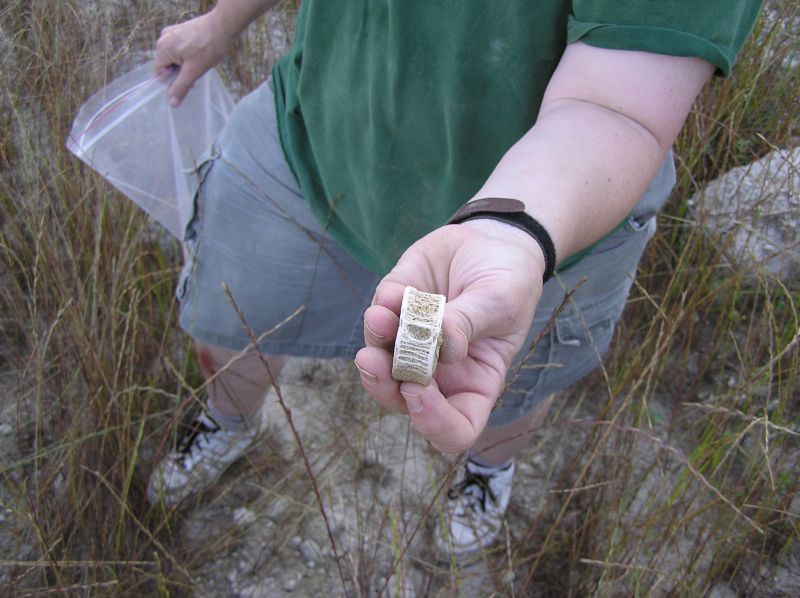
Side view of the vertebra.
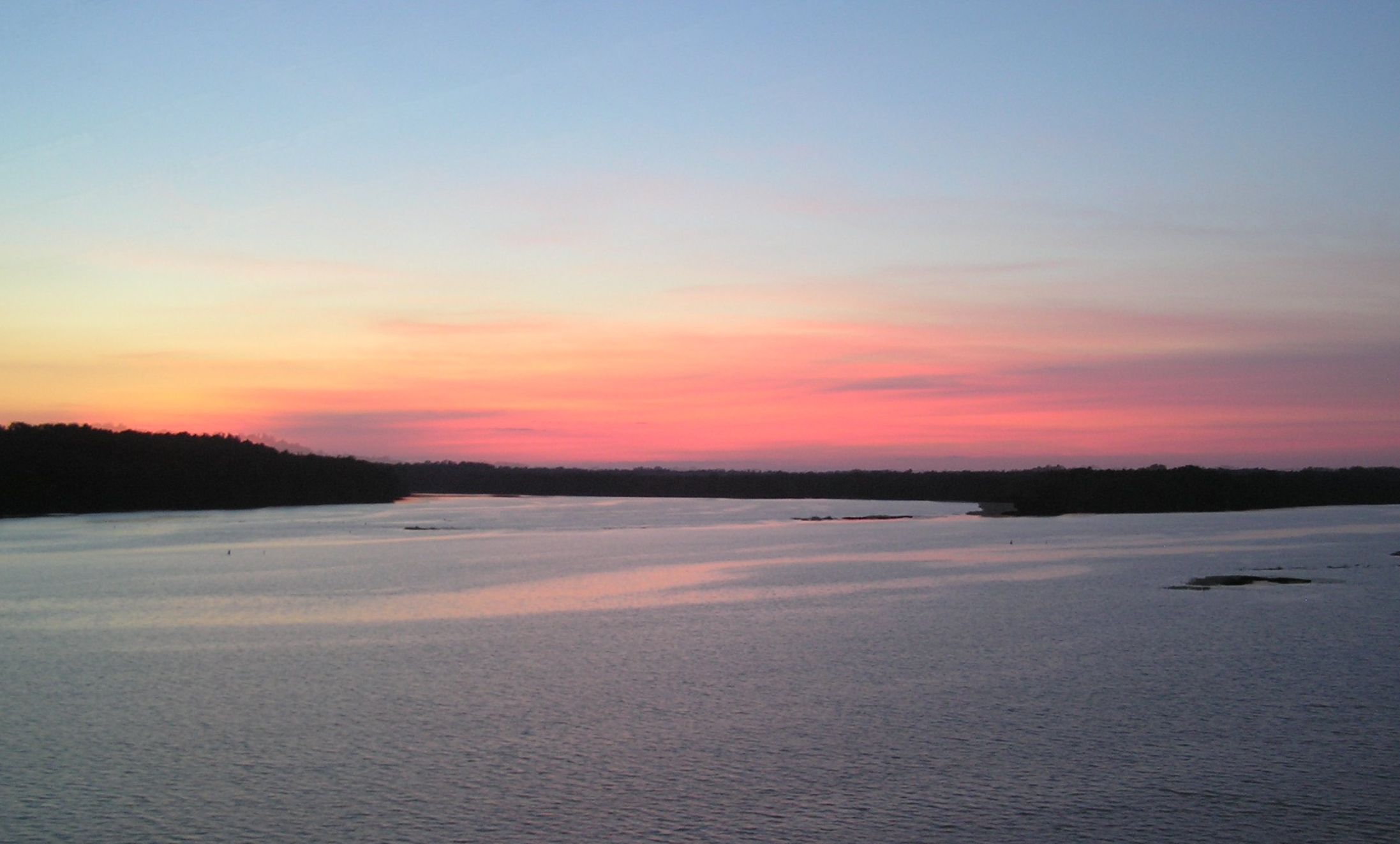
As the die-hard fossil hounds called it a day, we were treated to a beautiful sunset!
June 24, 2006 - Cretaceous Fossils, Montgomery and Elmore Co, AL
A relatively small group of BPS members went to a creek in
Montgomery
County for today's trip -
could it be some people were scared off by the thoughts of 95 degree
weather in the sweltering sun? To get an idea of our weather,
go
to your
bathroom,
turn the shower on the hottest it will go, close the door so steam can
build up, turn off the A/C, then take your laptop in there
and
view
our trip photos - you will have a good idea of our day! Leisa
brought
her canoe, and she and Claire floated/pushed/dragged it upstream and
then back down. This late Cretaceous site once again yielded
numerous echinoids and ammonites, though most of the ammonites could
only be "collected" via photos, due to their fragile
composition.
We
also found huge quantities of shells, a few shark teeth, a couple of
mosasaur vertebra, two large vertebra, possibly shark, and
pyritized coprolites.
Several people decided to call it a day after getting too hot
for
comfort. After a refreshing afternoon lunch in an
air conditioned restaurant, the die-hards brains began coming up with
another potential
collecting site in Elmore county. Since we have a canoe, lets
go
look for petrified
wood. Now understand, we had one canoe, one paddle, 3 life
jackets and 4 people to go on this escapade. After a quick
stop
at the local discount store for an additional paddle and PDF, we
scouted access points. The put-in we decided on was
steep.
Really steep. Really really steep. But we finally
got it
down the several hundred feet to the water, only to find a boat wasn't
necessary,
the water was low, the shore was easily walkable, and petrified wood
was everywhere. So we
collected
it (ask Jan how much his pack weighed!), took some pictures of a tree
that was about 4 feet in diameter, and
noticed it was getting darker. And windy. And there
was
thunder. And
lightning. And lots of cold rain (boy, did it feel
good!)
And we had
the canoe at the bottom of a huge hill. But Leisa,
resourceful as
ever,
had a plan; just hook the boat to her van, and pull it out.
(photos
courtesy Vicki Lais)
-
Shells and echinoids in matrix. These rocks are pretty hard, so these were left in place.
-
Claire has found a couple of shark teeth, one still embedded in the rock matrix.
-
Leisa very quickly found a nice vertebra. After collecting the vertebra, Leisa and Claire headed up the creek, and we didn't see them again for several hours.
-
An ammonite impression in the matrix.
-
Melanie is examining her latest find. She found quite a few tiny shark teeth in this area.
-
In a different part of the creek from the echinoids, numerous shells are embedded in the matrix.
-
More shells in matrix.
-
Echinoids in matrix.
Pages
July 29, 2006 - Fossil Exhibit, Homewood Library, Jefferson Co, AL
(Photos courtesy Vicki Lais)
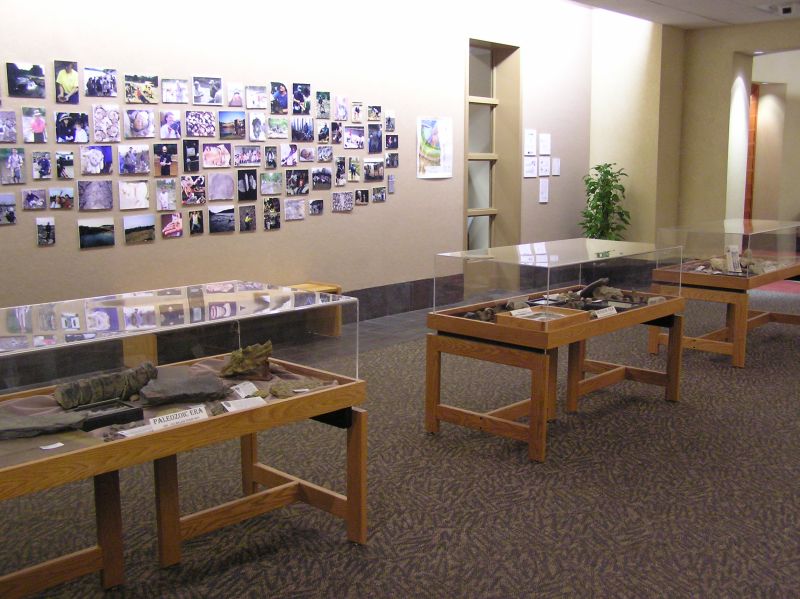
On July 29, members of BPS gathered at the HPL with bones, stones, posters and other materials to set up the exhibition that has become a tradition with the Library. We gathered in the round auditorium and laid out our fossils on paper mock-ups of the display cases.
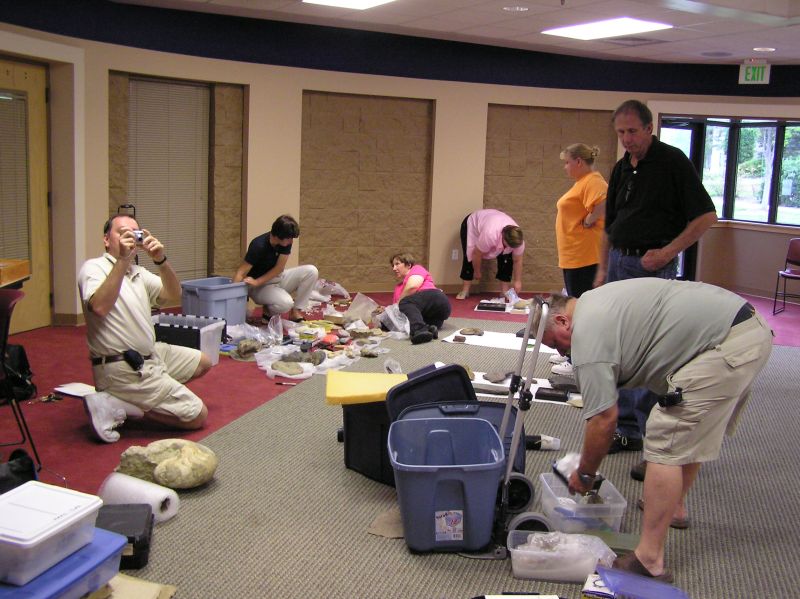
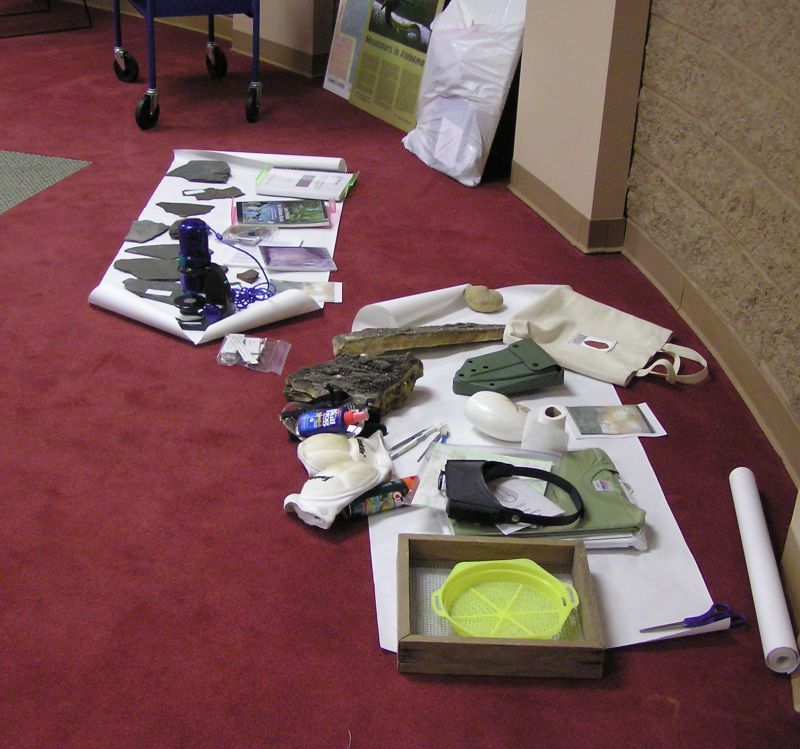
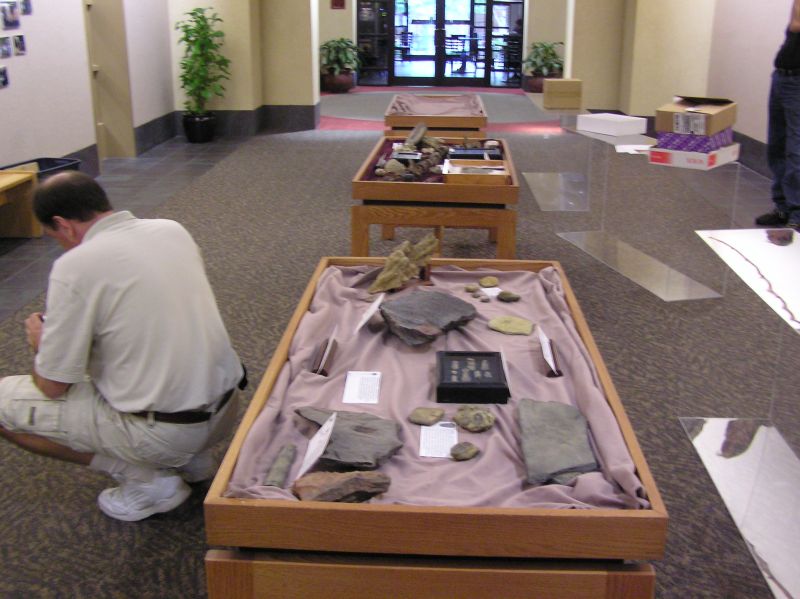
Once again "Bigbee" is the star of the show on a beautiful custom-made banner, donated by the McWane Science Center.
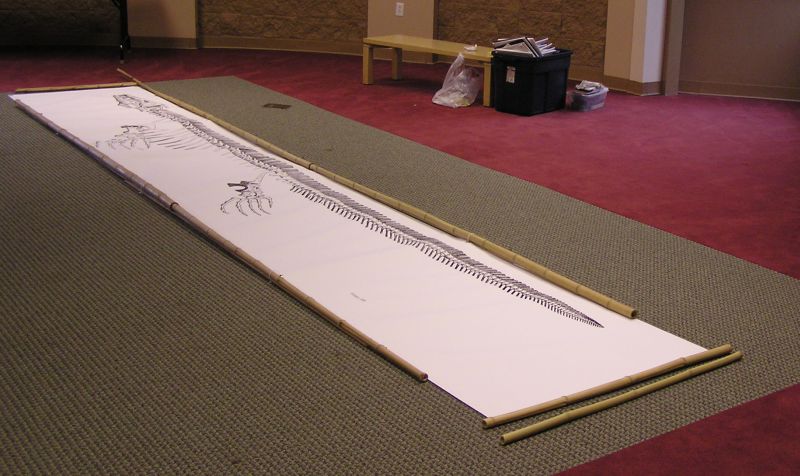
Hmmm.... Oops... well, we thought it would fit in last year's frame....
The display cases in the main exhibit hall are filled with fossils, all from Alabama. Specimens are organized by era:
Paleozoic Era -
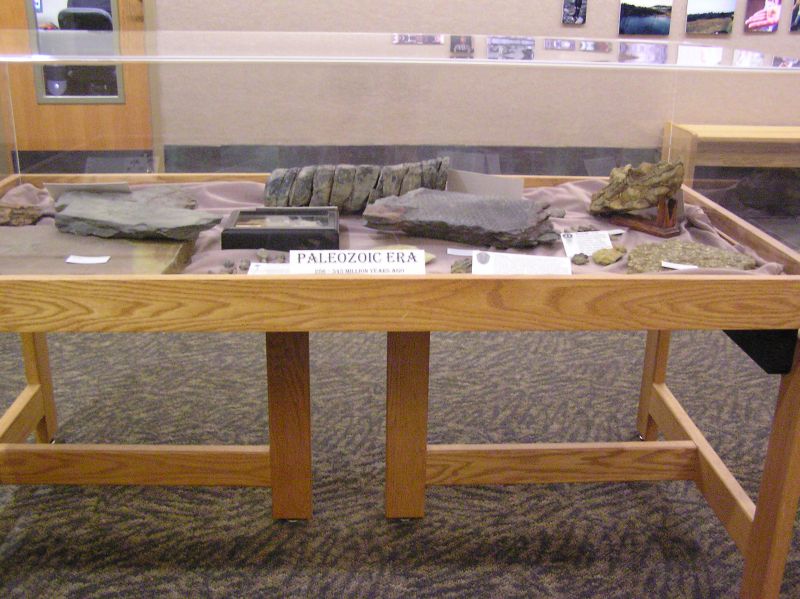

Mesozoic era:

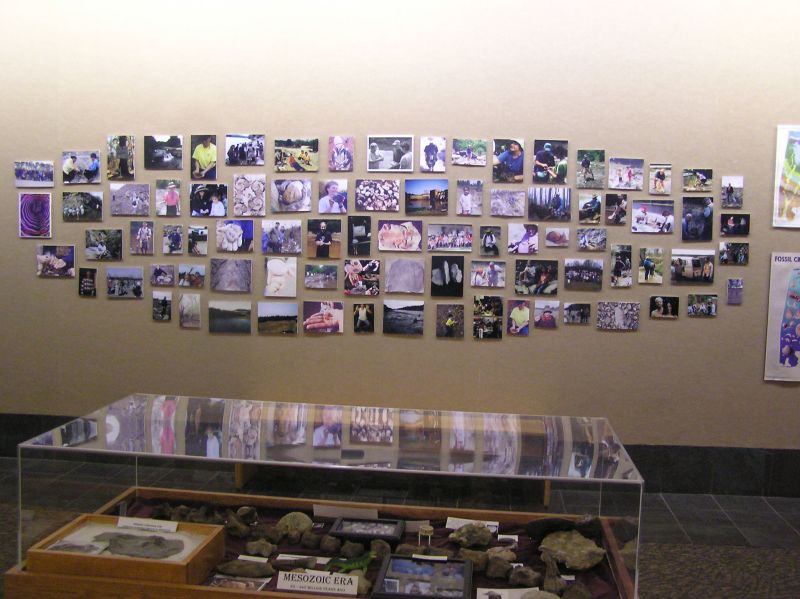
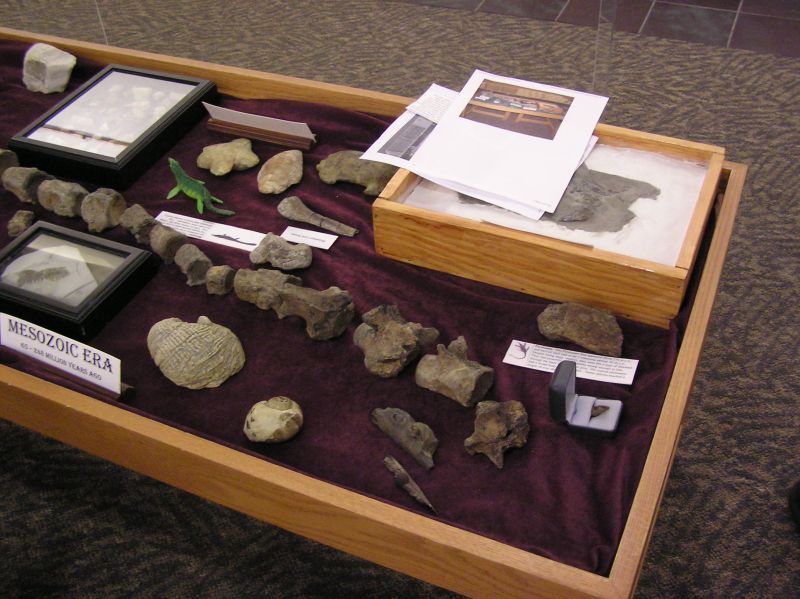
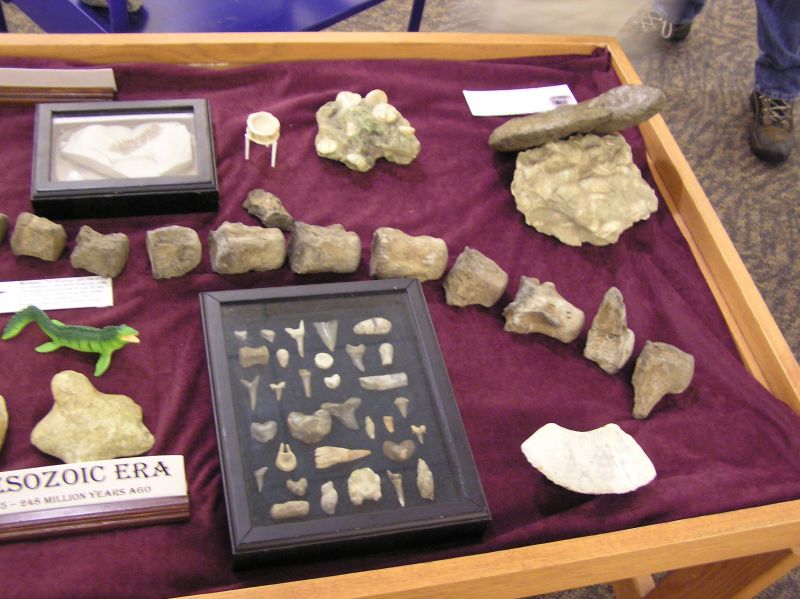
Cenozoic Era:
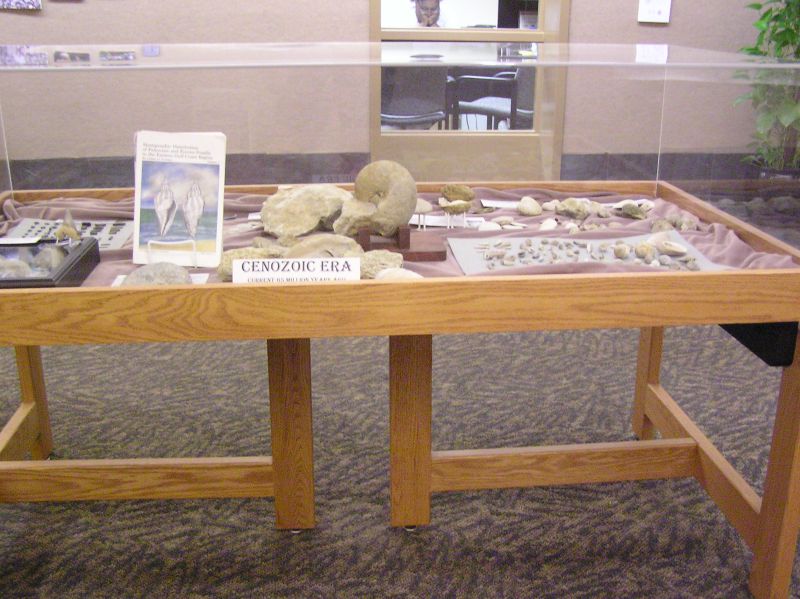
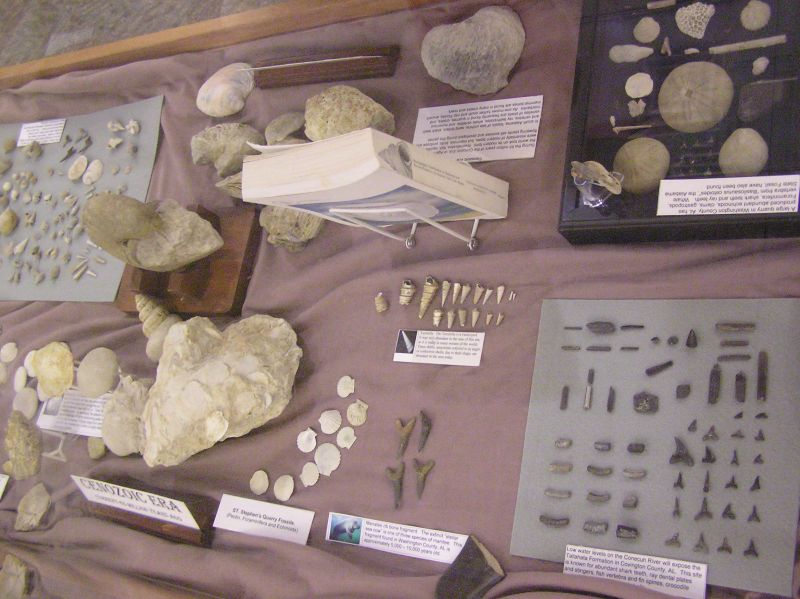

Hey, guys - what a great space for the new mosasaur banner!
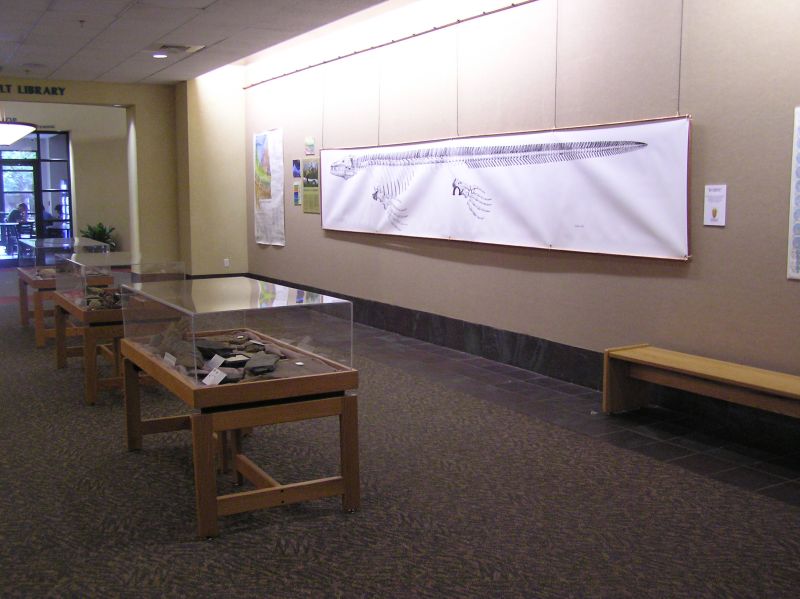
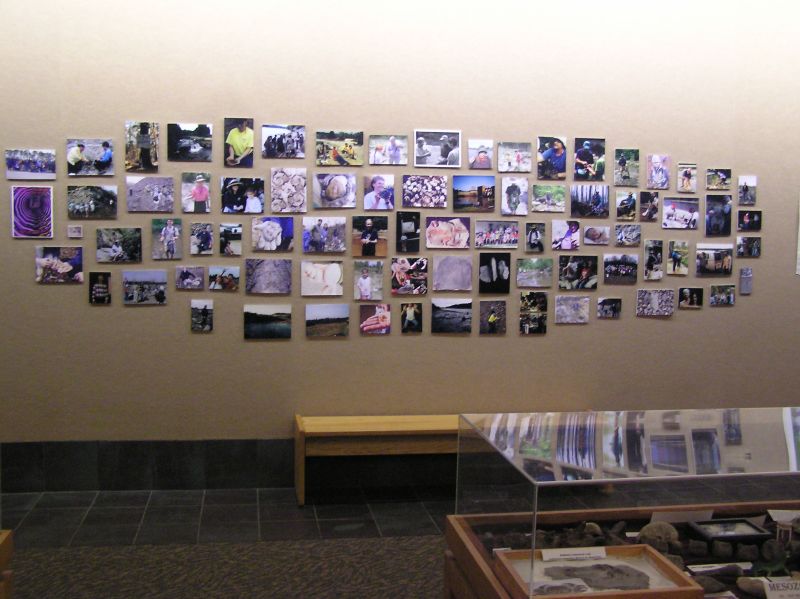
In the main gallery is a collage of BPS field trips over the years.
There are also two wall display cases at the entrance to the main library, one of which shows some of the tools we use in surveying, collecting and preparing the specimens, and another wall display case with a number of items related to the Union Chapel Mine.
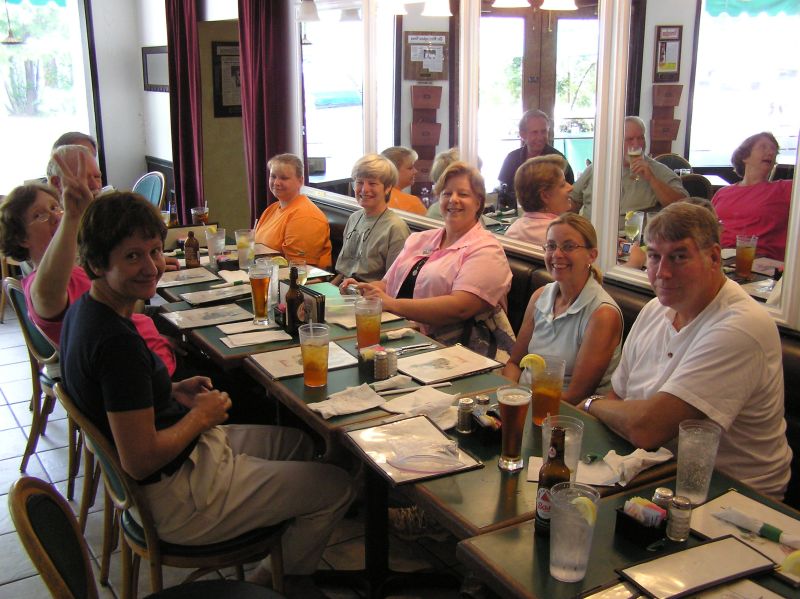
Today's worker bees, Bobby, Greg, Claire, Lea, Jan (behind camera), Jim, Mary Ann, Leisa, Vicki, and Michelle. Chris and Joseph left a few minutes earlier to go work their computer tech magic for someone. All of them deserve a great big THANK YOU!
At lunch, the discussion turned to the need some felt to visit the great outdoors again. When?? Well, like, tomorrrow? So a very quickly-organized "Scouting Outing" to Elmore County was arranged for the following day.
July 30, 2006 - Elmore Co, AL
Yesterday's exhibit setup was fun, but indoors. Several
people
wanted to go on a field trip in spite of the hot weather and the fact
they had an opportunity to get their "fossil fix" for the month
yesterday. The small group that was able to come on such
short
notice split into two so that more areas could be scouted.
One
group in a canoe had lots of good luck with some great finds (seems
Vicki had been to this site years ago, and remembered a stash of
permineralized wood hidden in a very inaccessible location), while the
other group drove off to try and locate additional access points,
without success. Well, nothing ventured, nothing gained. To complete
the day properly, some of us went home the long way, via the Wetumpka
astrobleme. Another great day in Alabama!
(all
photos on this page
courtesy Vicki Lais)
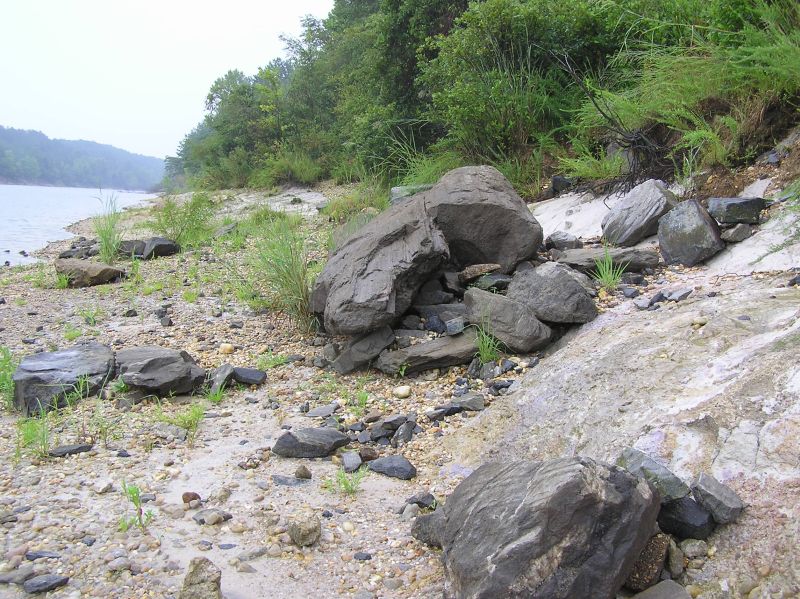
Large
tree on the shore.

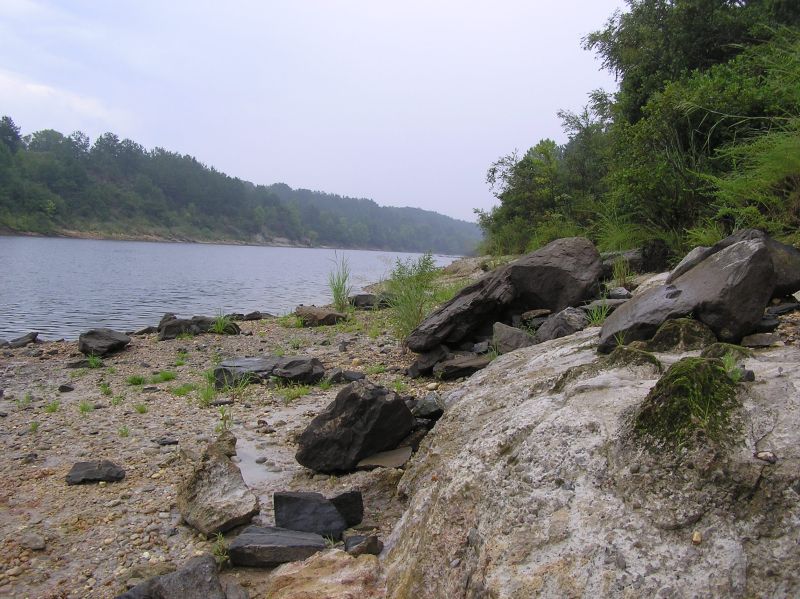
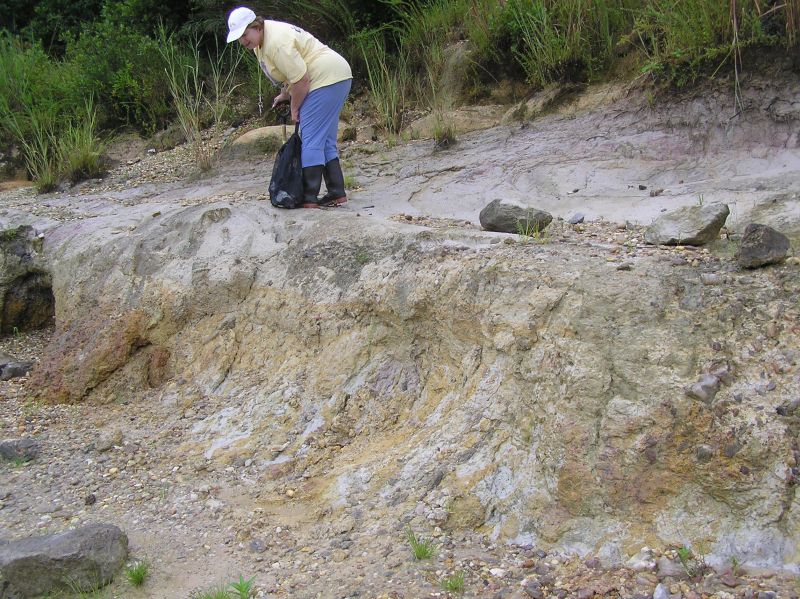
Leisa checking out the clay embankment.
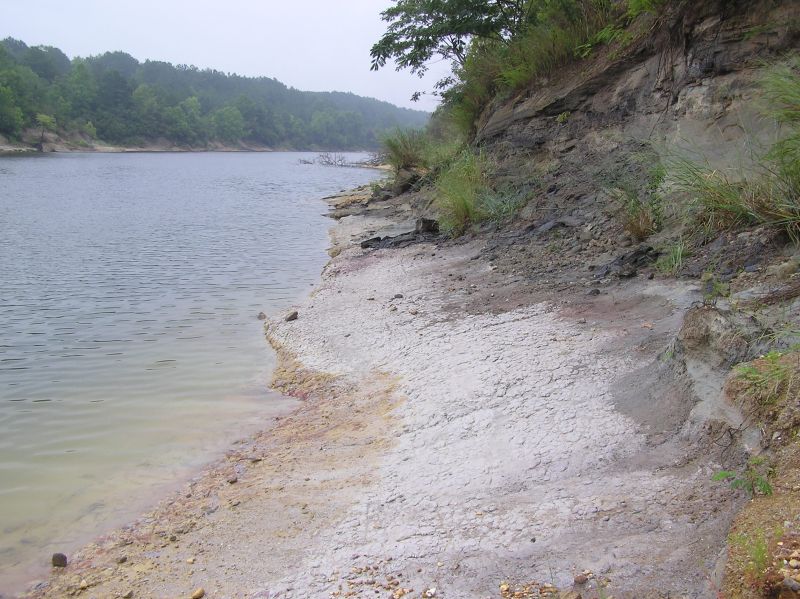
Parts of the shore were very slick clay/chalk material, and was quite
colorful in places.
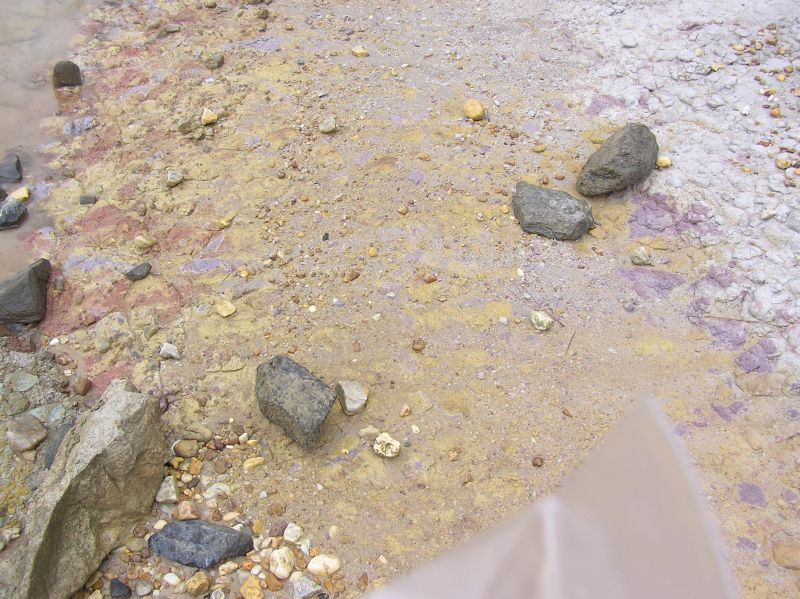
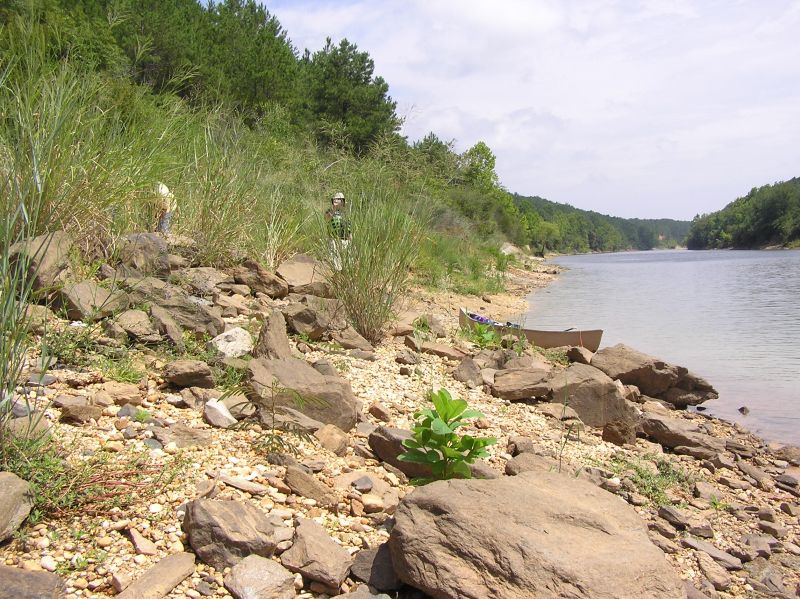
Leisa and Jan searching the opposite shoreline.
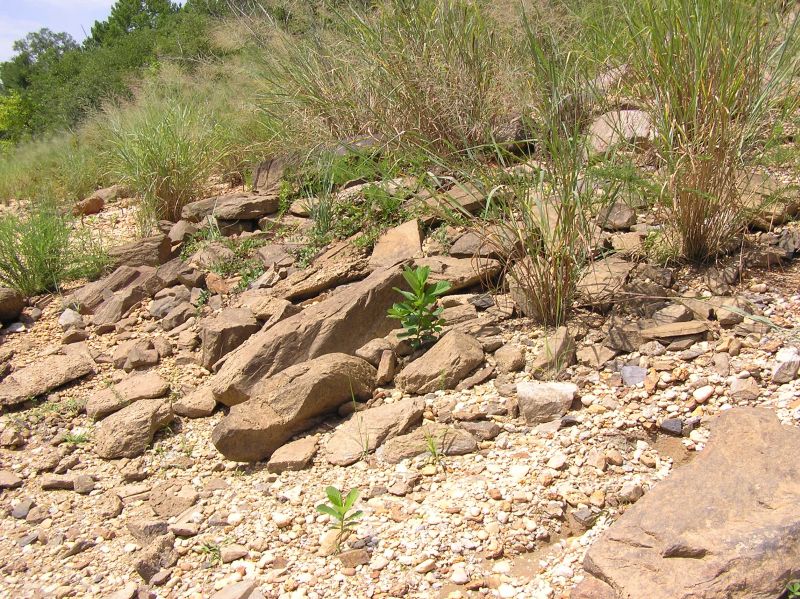
Most of the shoreline was quite rocky. Many of
these pieces are
broken
up pieces of permineralized wood, but either lacking detail, or too
heavy to lug back up the hill to the cars.
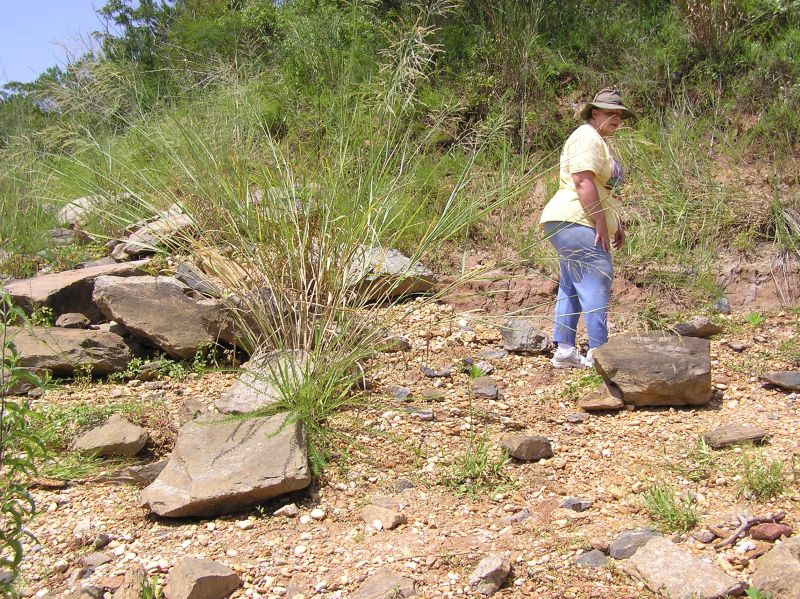
Leisa looking through the 1000's of rocks for that special specimen.

Leisa found some schist, with tiny garnets embedded it it.

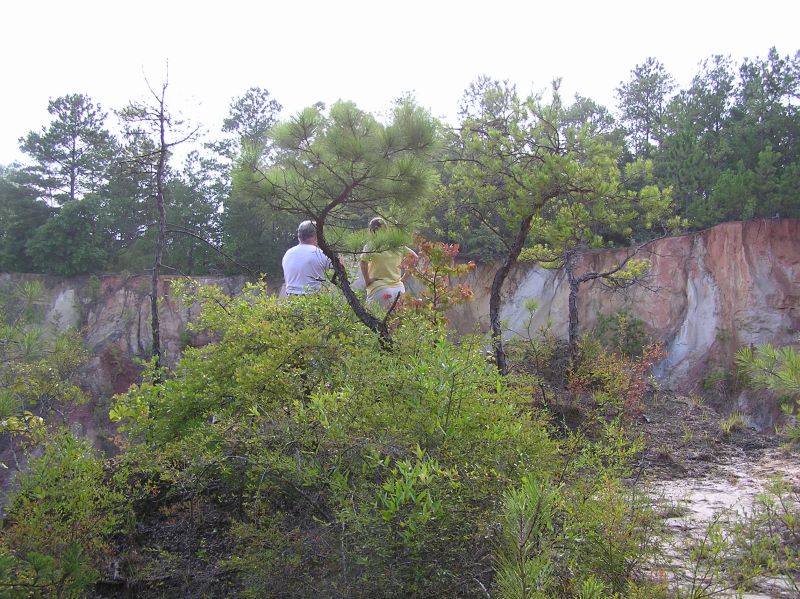
David and Becky check out the astrobleme site.
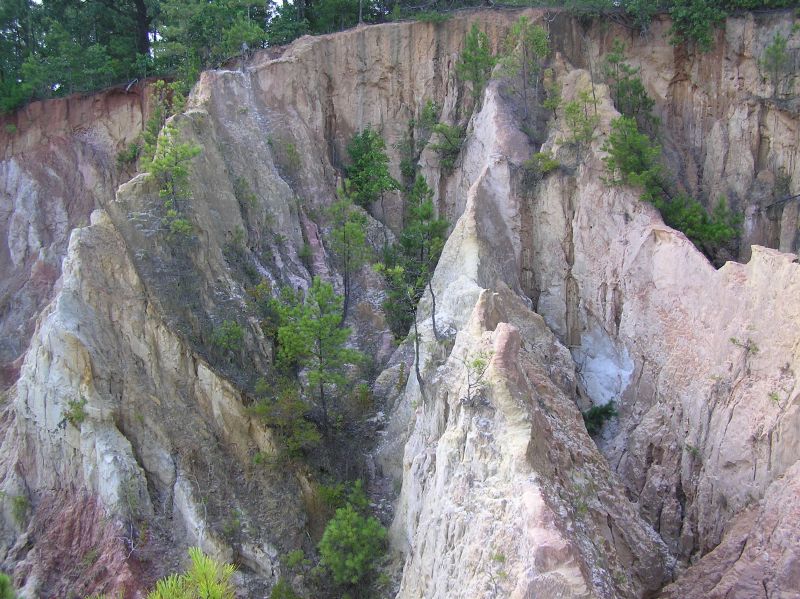
Layers that were heaved into the "wrong" sequence when the meteor hit.
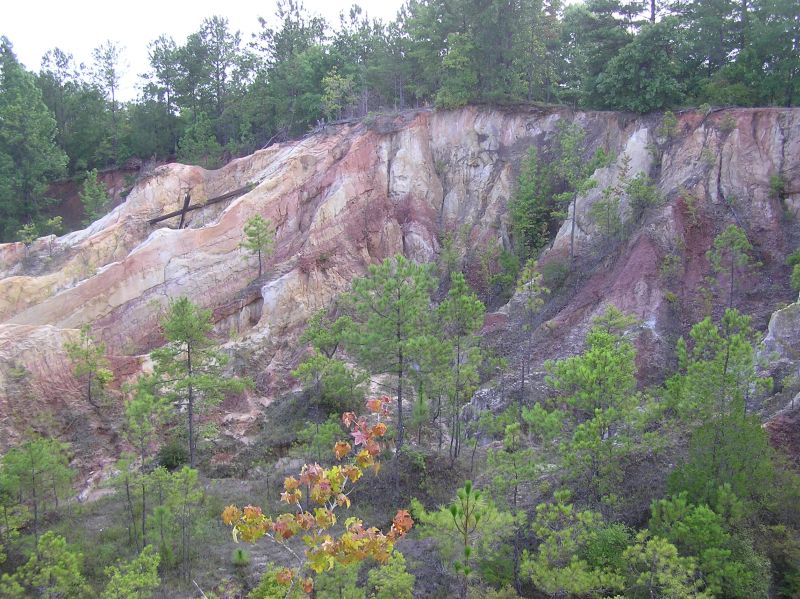
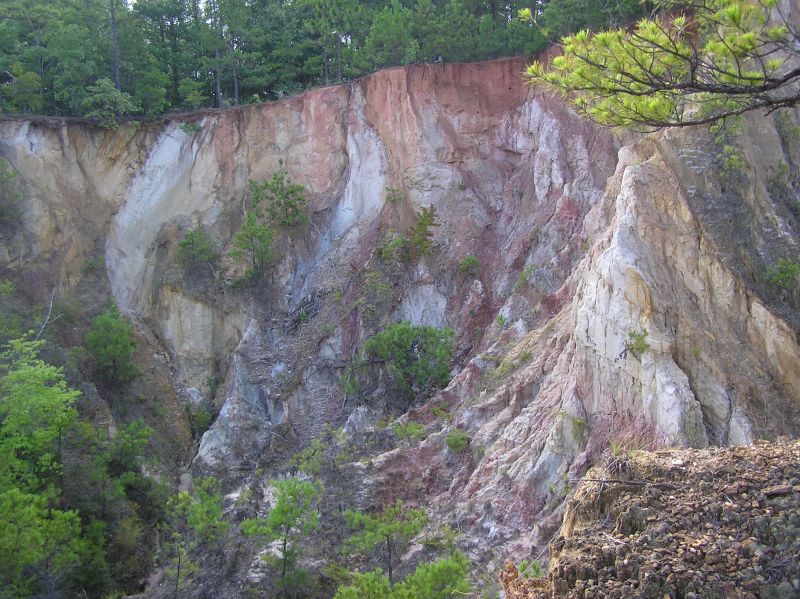
August 19-20, 2006 - Cretaceous Fossils, Lowndes Co, AL
We explored several small creeks in the area for the first time, where we found a number of crabs and other items, including clams, in nodules. Sandy found an outcrop in the first creek where she gathered numerous samples for her research.
The main creek yielded great samples for all: more crabs and clams, and unknown items in concretions. Sandy located another interesting outcropping and took more samples of microfossils. Michelle found some nice ammonite pieces, including one piece showing beautiful suture marks.
Since the Ebersole's needed to leave that night, our hosts set up an impromptu trip to a gully for the evening. Sandy and Jun wanted to see if this was part of the Ripley Formation (current thought is - probably not). Jun got a quick lesson on ATV driving and we hit the gully where we found teeth and bits of shells.
The next morning before the mist had burned off, we went to a different gully that had not been explored for several years, but did not yield many finds. After returning to camp, and meeting new arrivals, two groups were formed. One group went back to the creek where the crabs had been found, and another group consisting of Vicki, Michelle and Becky took off on a scouting adventure to explore yet another “new” creek. This turned out to be a great spot with some decent finds of brachiopods, clams, gastropods, exogyra, shark vertebrae, and possible pieces of bone.
Later in the day, diehards Becky and Vicki explored the main creek again, using a different access point and went a little ways up the stream until the creek got too difficult to navigate.
After two days of excellent collecting, all went their way home and look forward to the next field trip.
Edited by Vicki Lais
(Photos courtesy Vicki Lais)

On the way again! Riding to the site is almost as much fun as the collecting itself!
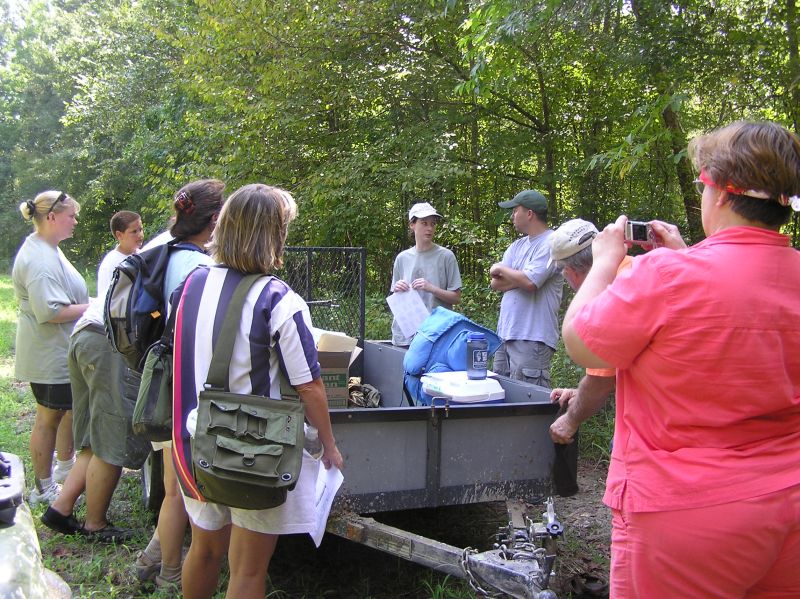
Sandy and Jun provide handouts and short lectures on the geology of the area.
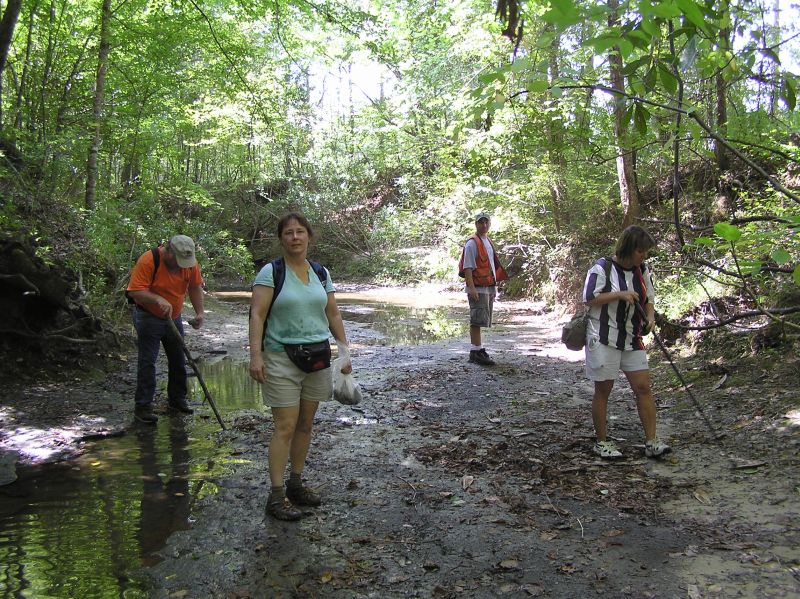
General area where several crab nodules were found.

This outcrop has numerous small bits of shell and other material embedded in it. Sandy took lots of samples for her research.
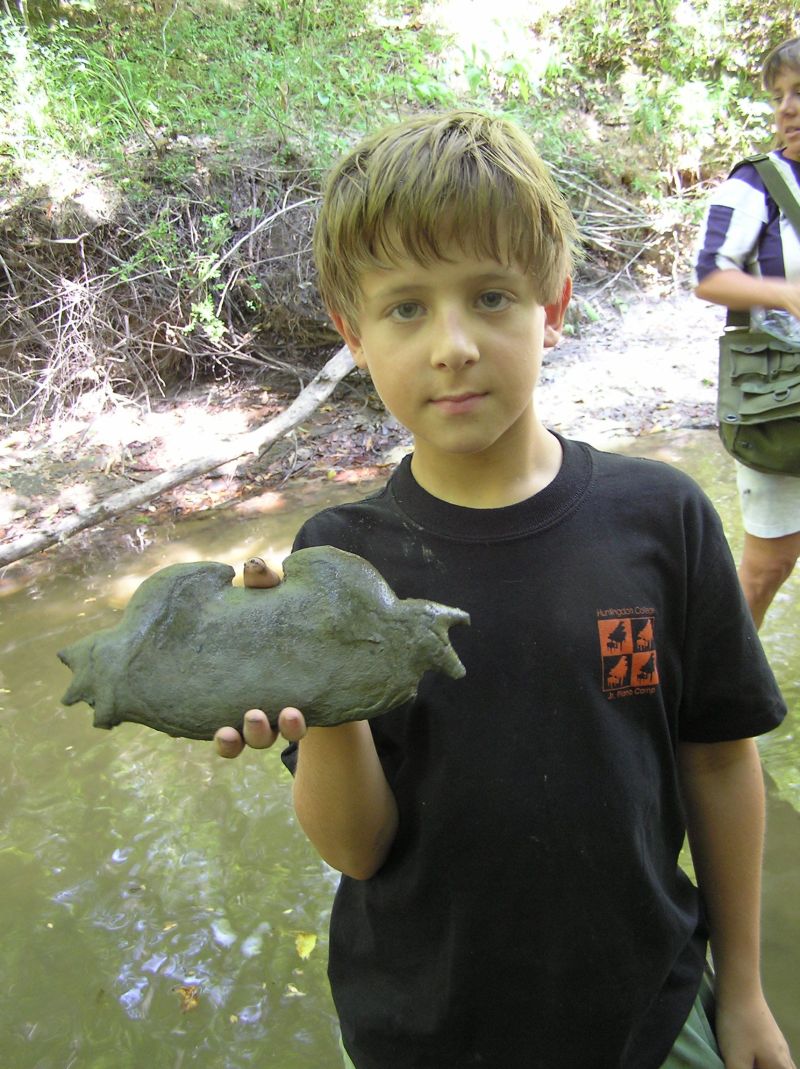
Richard found a very nice crab.
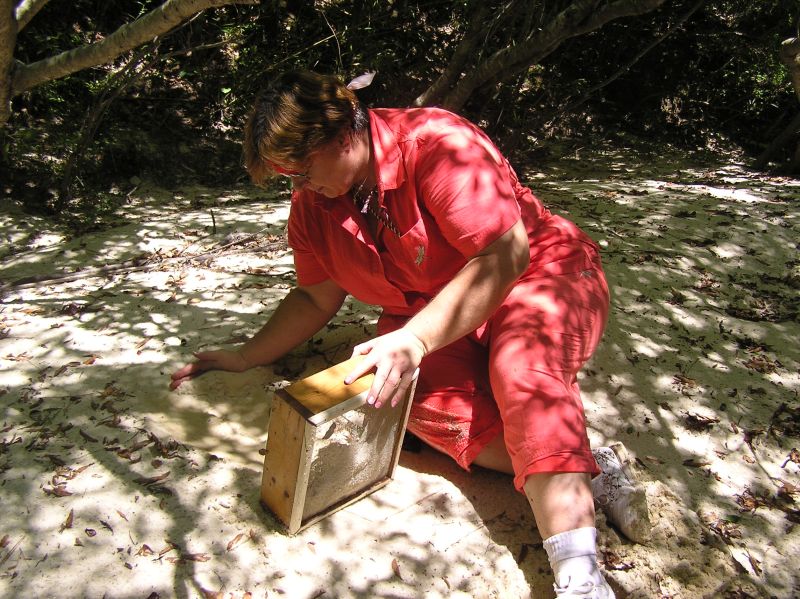
Leisa decides to sift the fine sand in her search for smaller fossils.
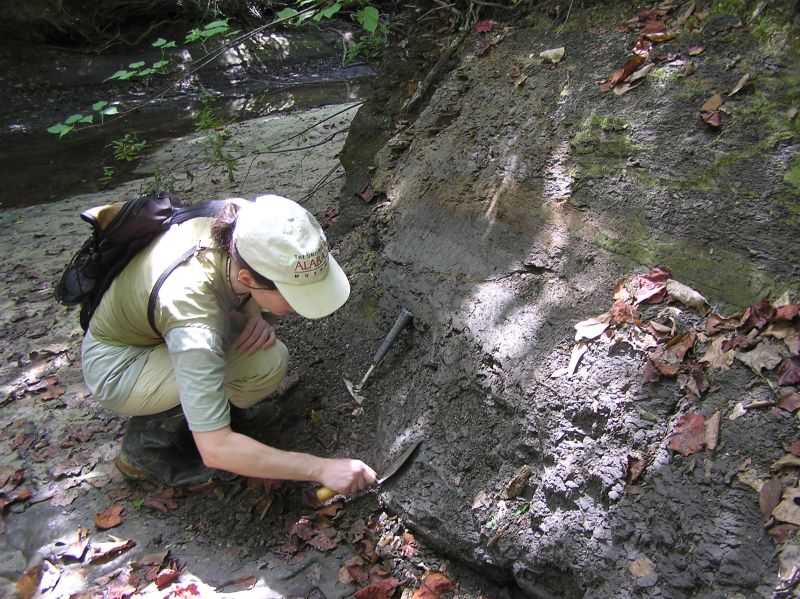
Collecting samples for research.
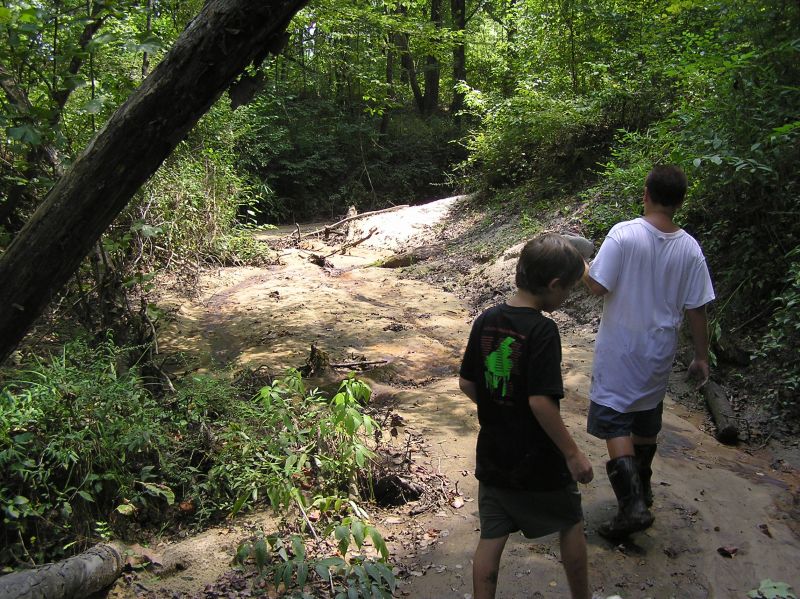
A dried up creek we explored in the area.

We explored the main creek a good long while.
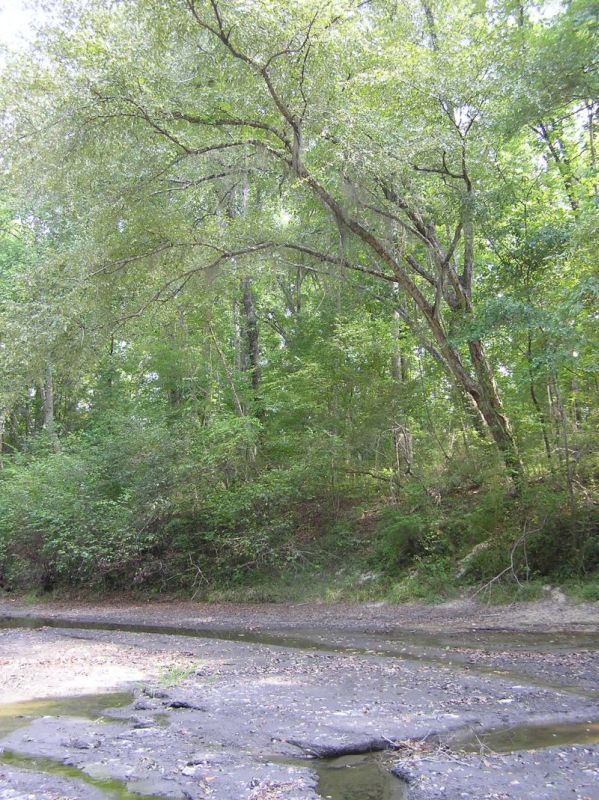
Nice view of the creek, which is almost dry in some areas due to the lingering drought. Notice the Spanish moss hanging from some of the trees.

Aaron found a nice, large crab.
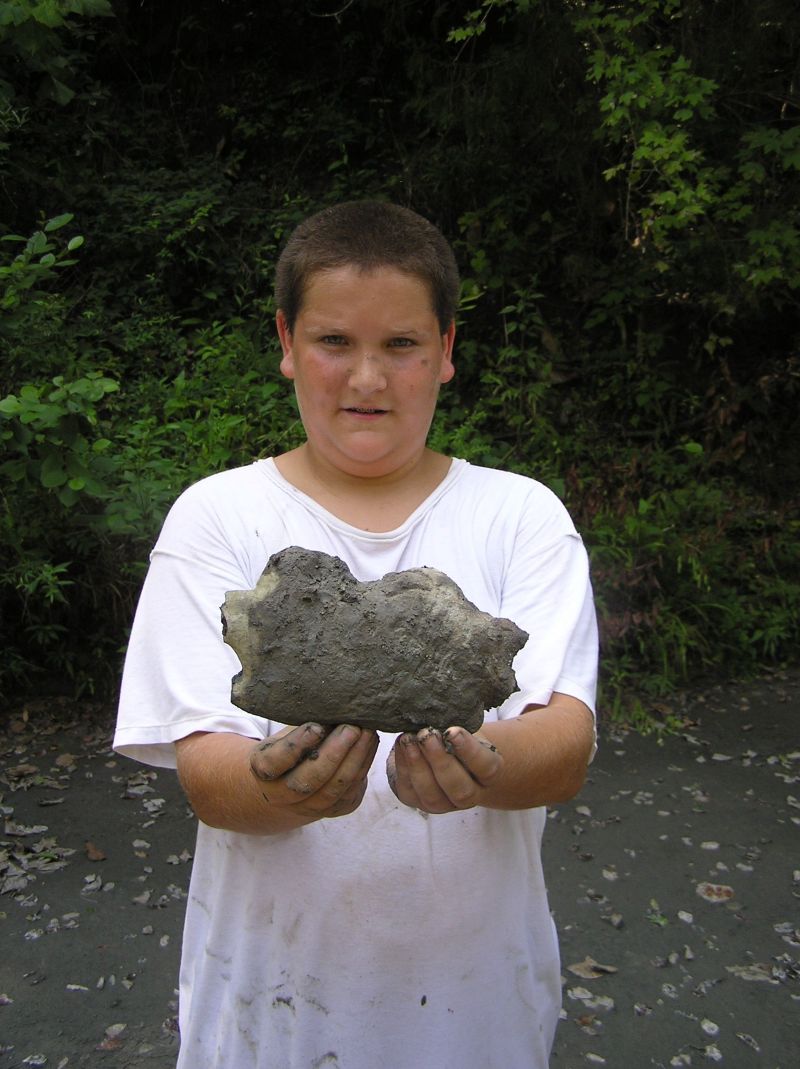
Closer view of Aaron's large crab nodule.

Richard is digging out a very nice crab.
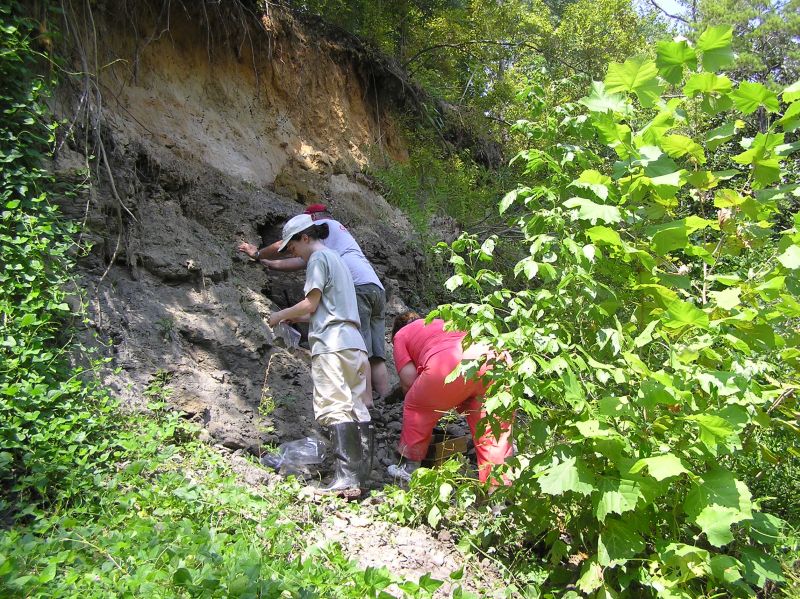
Another outcrop that Sandy found interesting. Many soil samples were taking from this location.
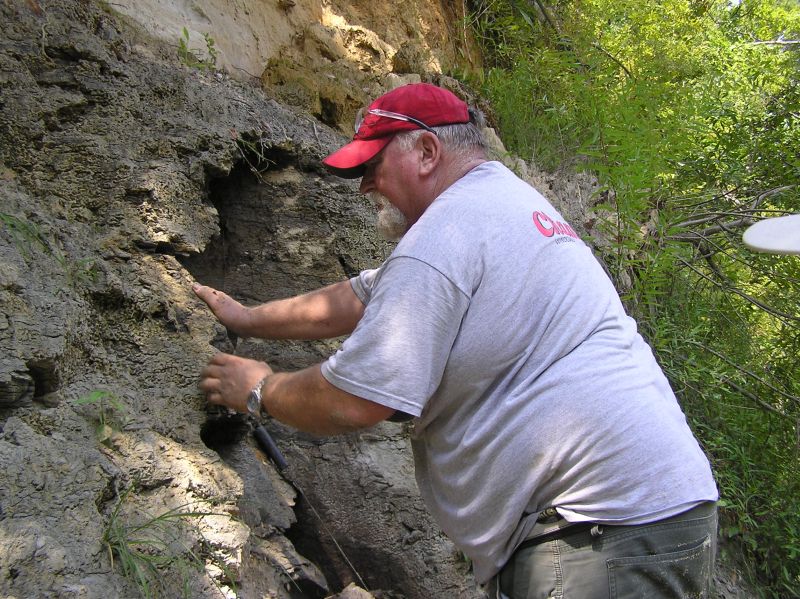
Greg is assisting in collecting the soil samples.

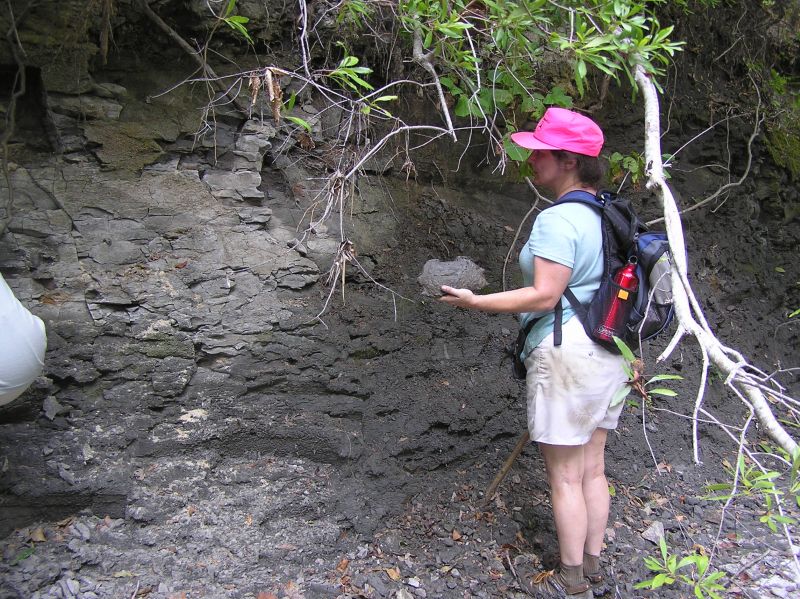
Becky found this nice crab nodule.
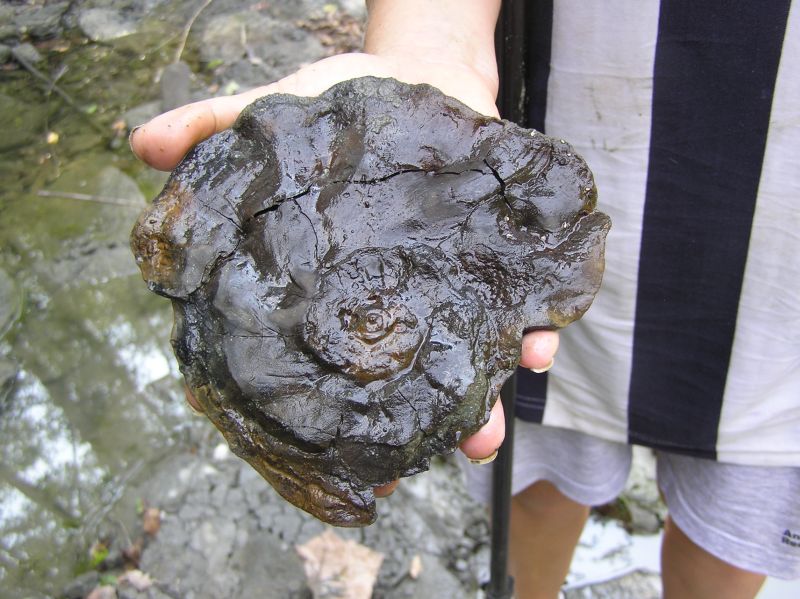
Michelle found part of an ammonite.

More ammonite found by Michelle.
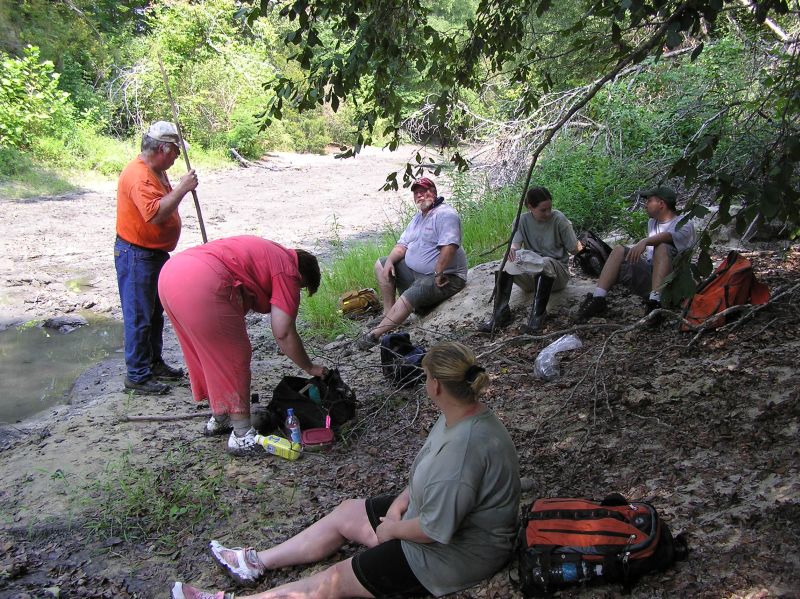
Taking a rest after a long, hot day on the creek.
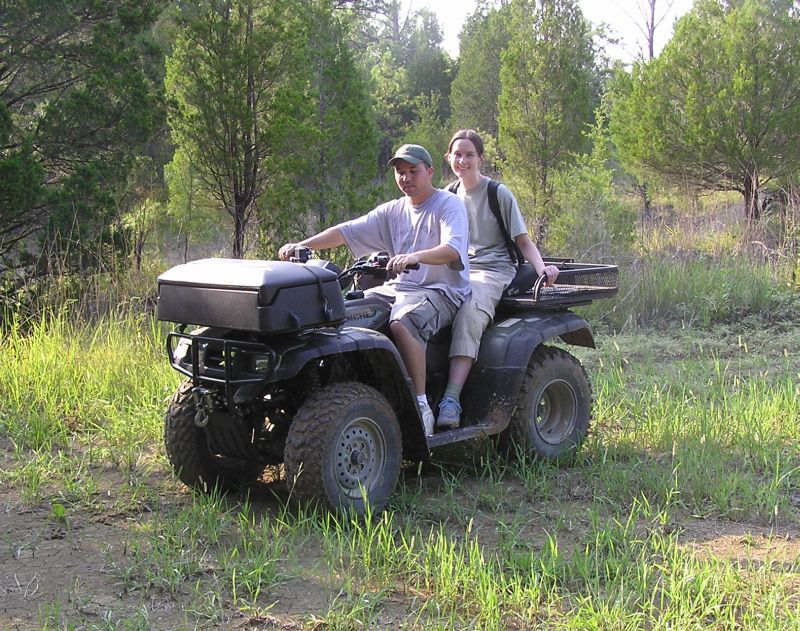
Jun and Sandy probably had more fun than the rest of us getting to the next collecting location - this was Jun's first opportunity to drive an ATV!
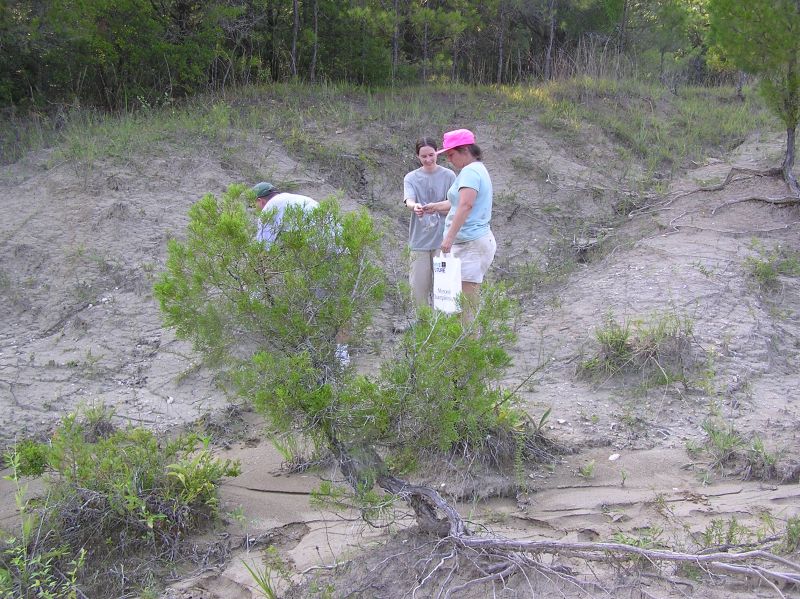
After a bit of a rest, we decided to explore a gully late in the afternoon.
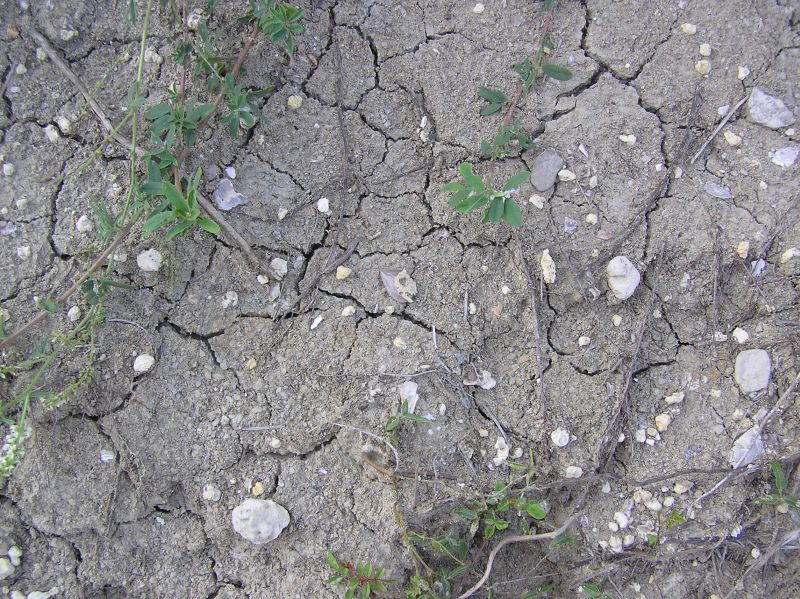
This is how the gully looks when you get closer to the ground - a lot of shell bits and pieces. Can you find the shark tooth in this picture? It takes a while to get one's eye attuned to the coloring and patterns.
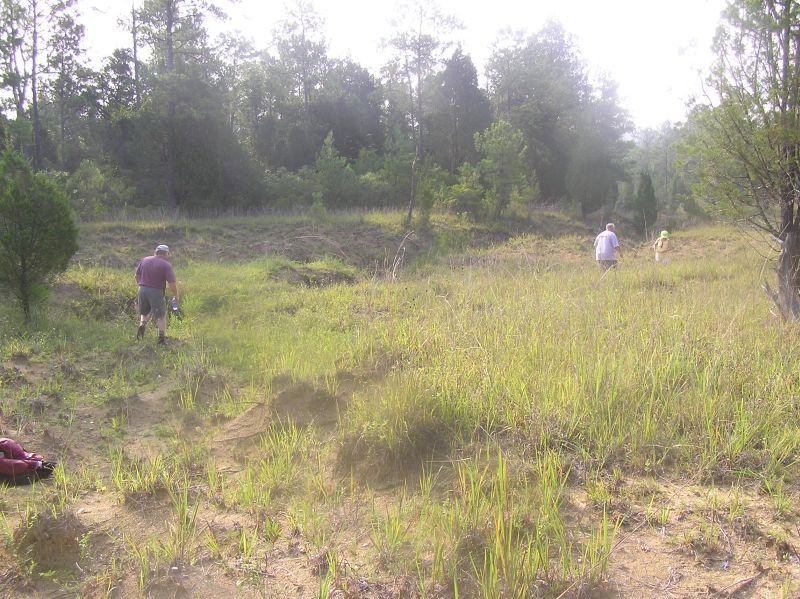
Early Sunday morning, we headed to a gully that had not been surveyed in several years. No items of interest were found here, mostly bits of shells and broken nodules, and a lot of caliche.
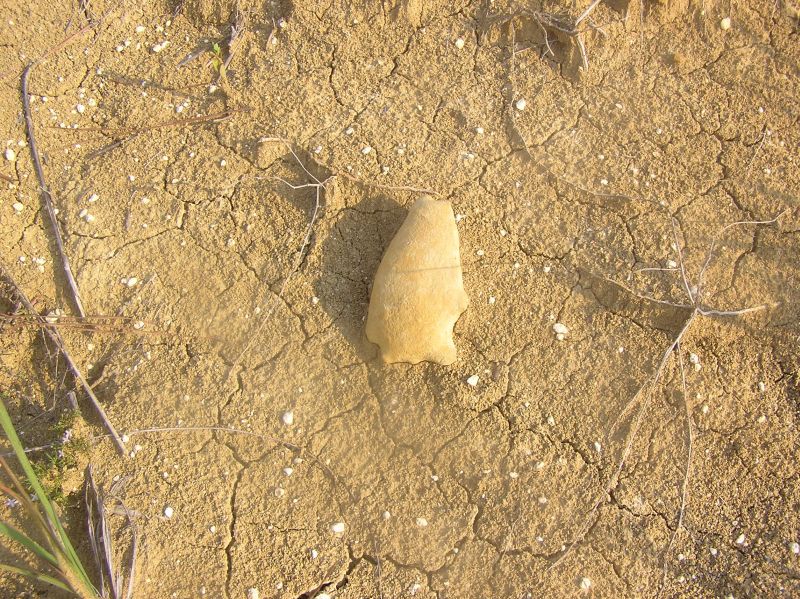
Closer view of the ground and a nodule.

After the gully trip, one group headed back to the main creek for crabs, and the Three Musketeers, Becky, Vicki, and Michelle, headed off for an adventure to find and scout a new creek.
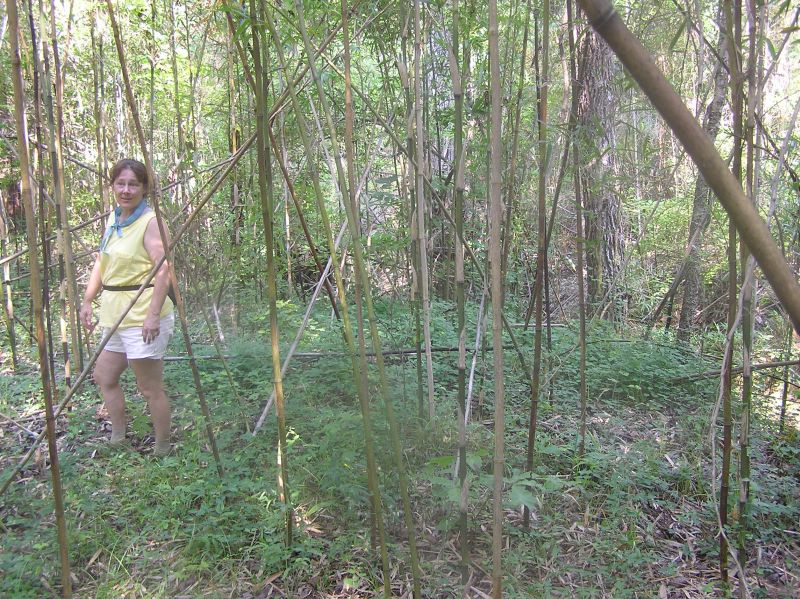
Becky amongst the fishing poles.

Finally, we made it to the creek, which was littered with shells, primarily exogyra.
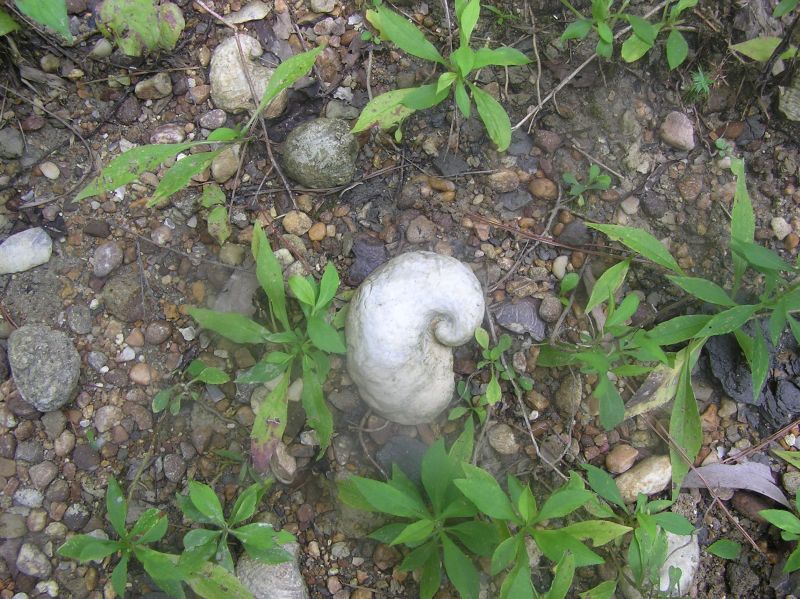
Exogyra.
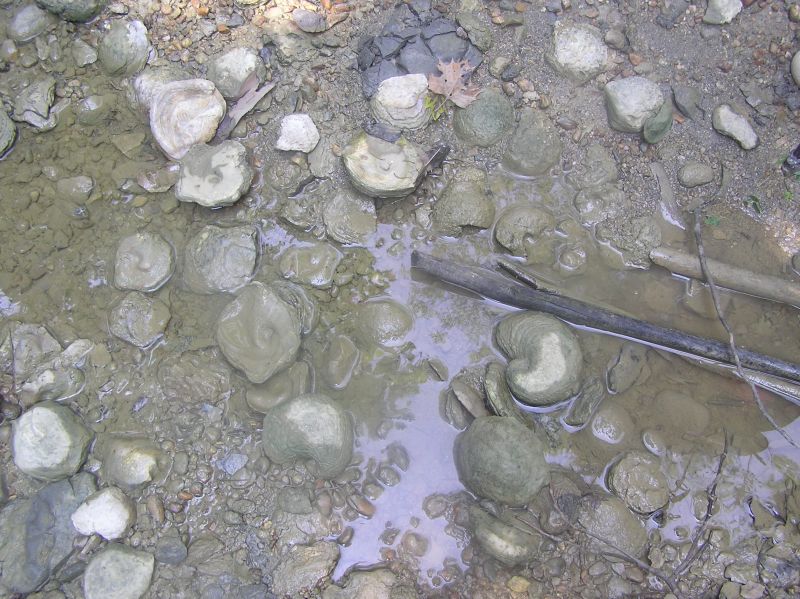
More exogyra pieces. The slightly circular pieces with the dimple in the middle are the other half of the exogyra, though we did not find any articulated specimens.
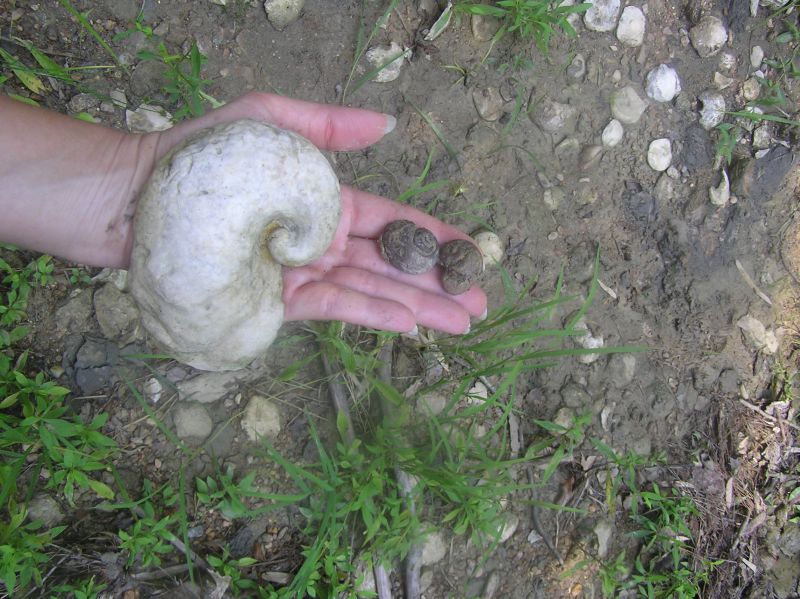
Exogyra and a couple of gastropods found by Vicki.
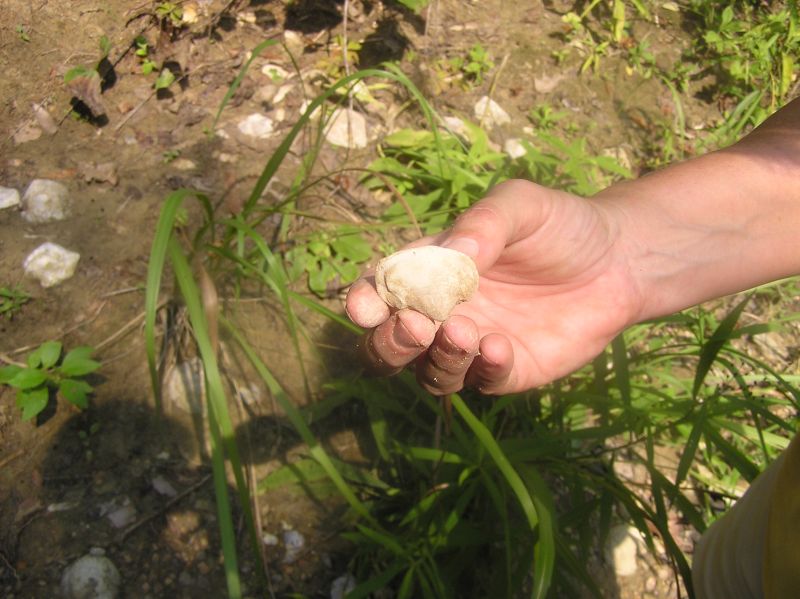
Nice bivalve found by Becky.
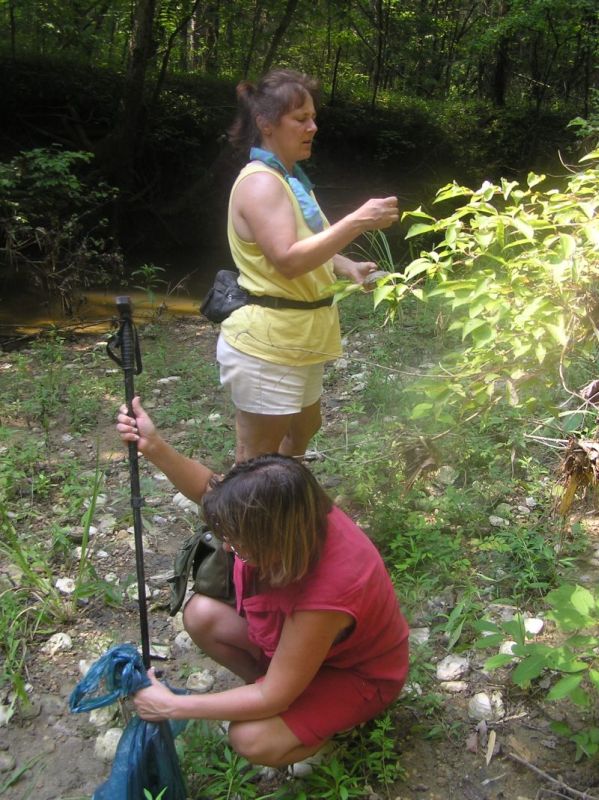
Michelle and Becky looking for fossils.

Small vertebra found by Vicki.
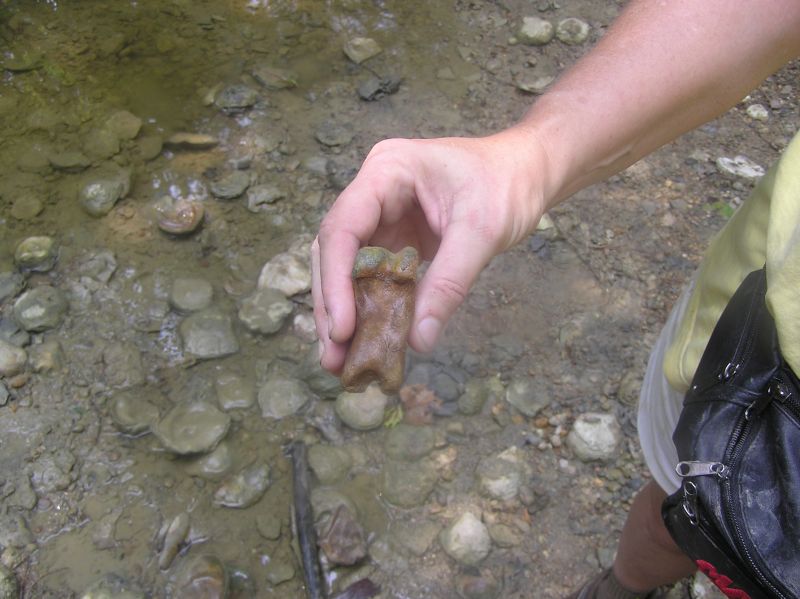
Bone, but unfortunately, it appears to be recent.
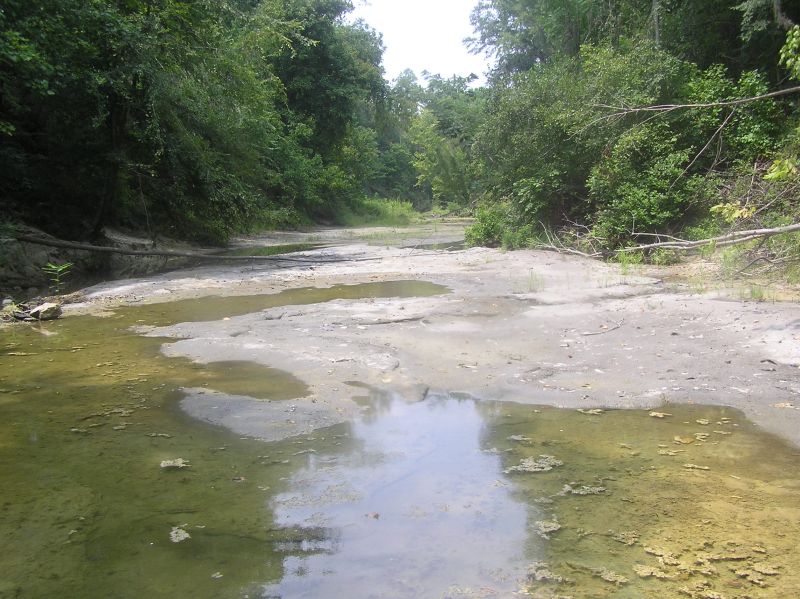
Last creek to be explored.

This rock filled with shells was found at this creek, but not much else, so all headed home.
August 27, 2006 - Fossil Exhibit, Homewood Library, Jefferson Co, AL
The main hall held several exhibit cases filled with Alabama fossils. But what if you want to touch and hold the fossils? So in the auditorium, BPS had two tables covered with fossils that visitors could pick up and examine closely. The scanning microscope proved to be a big hit for the “close examination” part. Plenty of food added to the good time. A great video on view, “The Making of ‘Walking With Dinosaurs” was a big hit. At one point during the day, Greg gathered a crowd around him, and took off for the main exhibit hall, where he did a quick presentation regarding the exhibit. But the biggest hit of all was the sand pile outside which had been liberally salted with Alabama fossils to “discover.” Kids and grown-ups alike dug in and had fun! We were delighted at the crowds who showed up and the interest shown in the paleontology of Alabama. There was a lot of surprise expressed that Alabama has such a wide variety of fossils.
The annual exhibition and reception gives us a great opportunity each year to share our knowledge, collections and enthusiasm with the Birmingham community. Huge thanks are due to the Homewood Library for providing such a wonderful facility and helping make this all possible!
--Edited by Vicki Lais
(photos courtesy Vicki Lais)

Setting up the fossil tables and video. Greg (far left) was coordinator of the Exhibit.
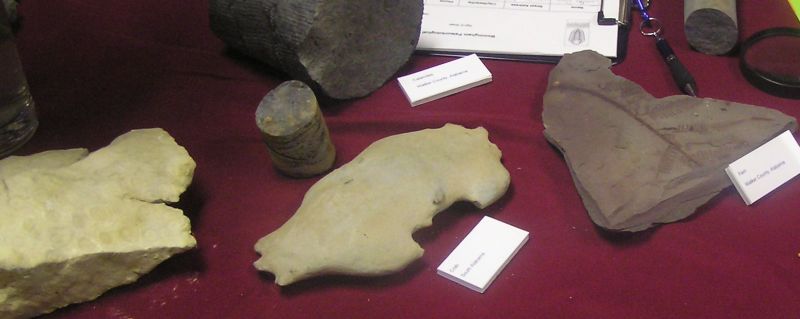
Some of the fossils on display.
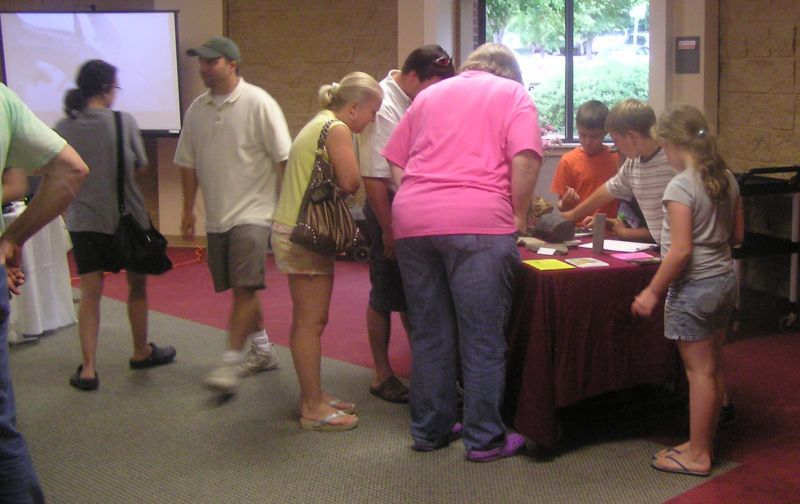
Visitors examine the fossils.
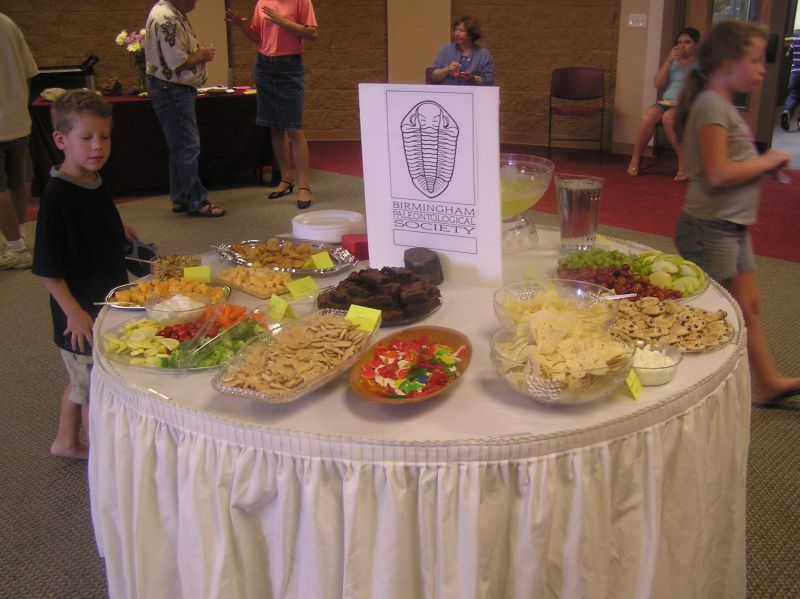
Carole handled food and publicity for the event, and did a super job! Thanks, Carole ! ! ! Mary Ann and Leisa also donated some home-made goodies - those trilobite cookies and brownies sure went fast, didn't they !
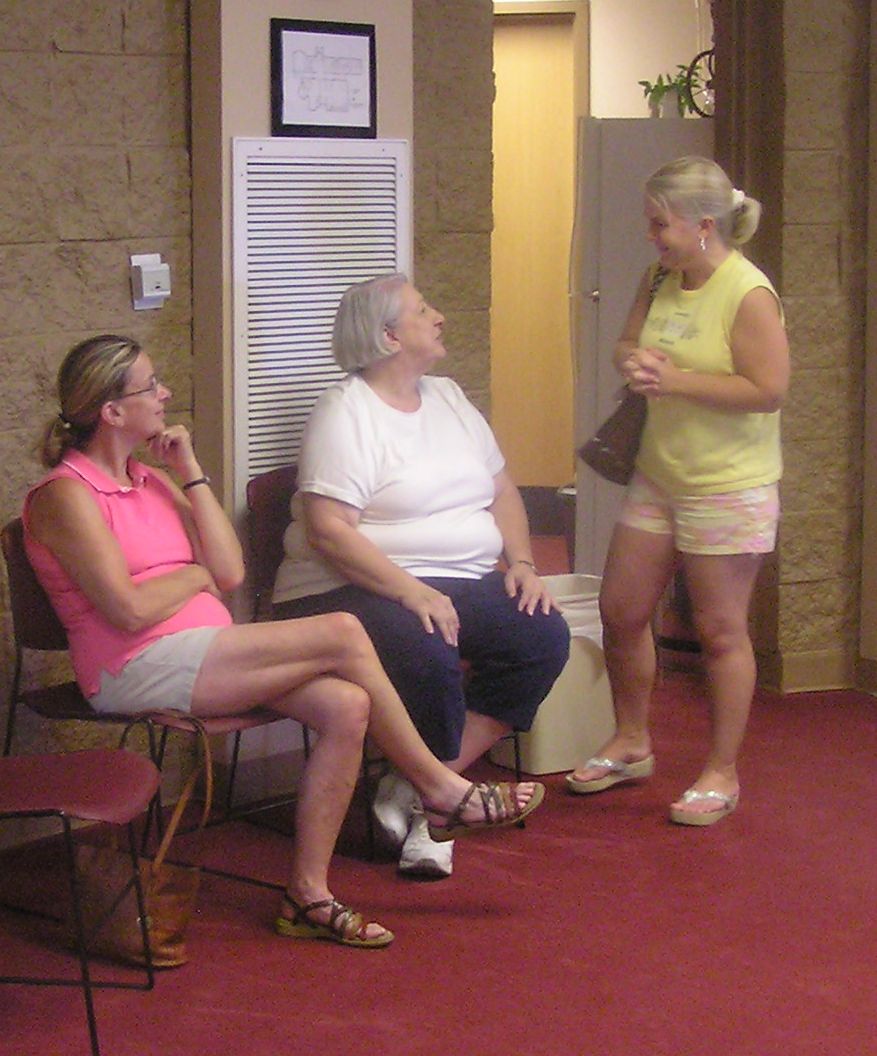
Mary Ann and Carole talking with a visitor.
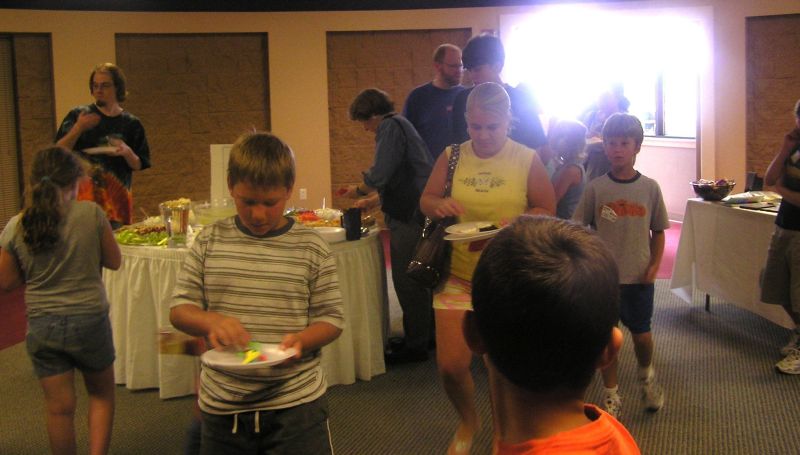
And they examine the snacks even closer !
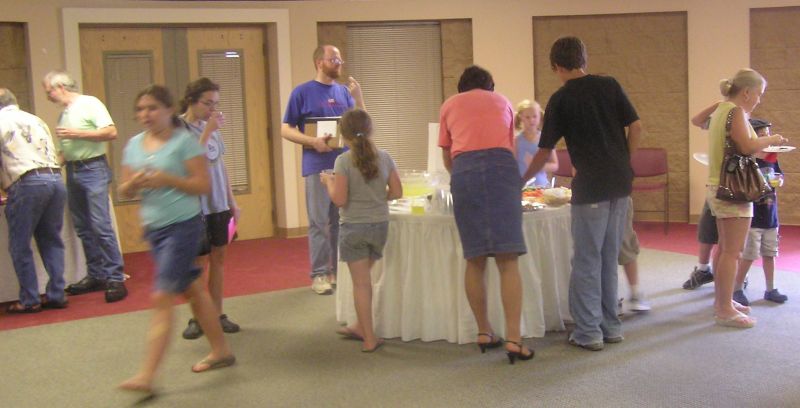
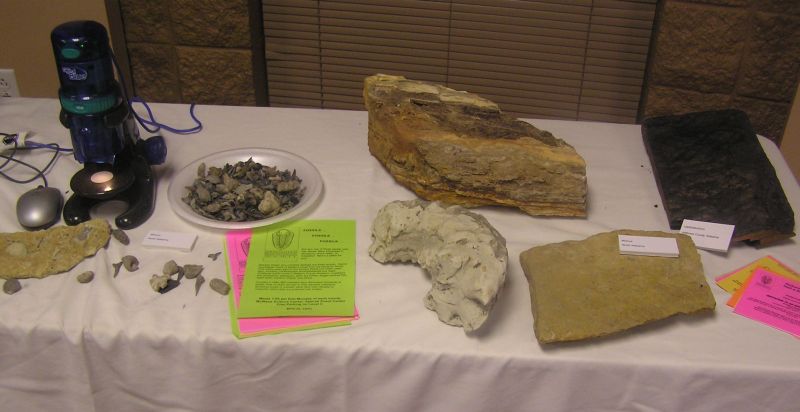
More fossils on another table, and a digital microscope to get a close up look at some of the microfossils.
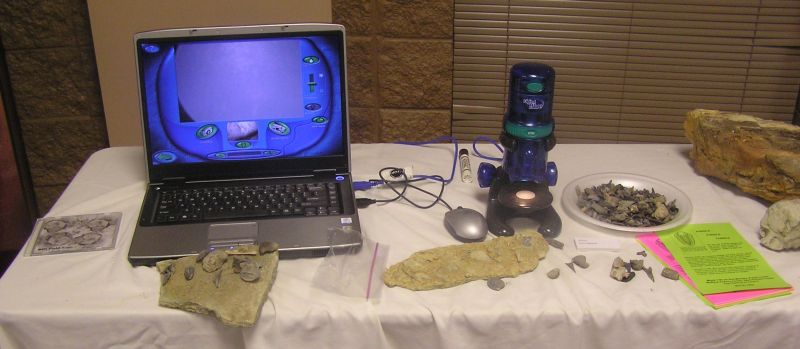

Looking at images under the microscope (shown on the laptop screen).
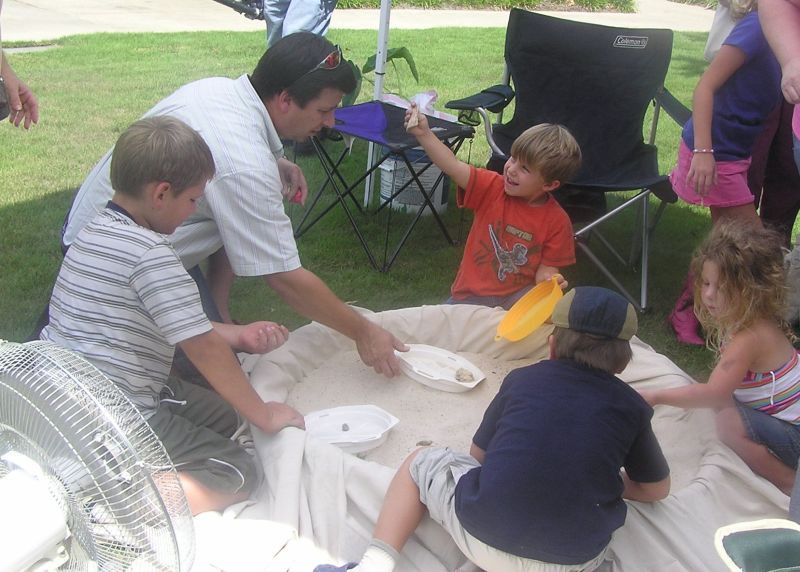
As interesting as it was inside, the sand pile outside was where the action was! Kids of all ages got to search for their very own fossil in the generously seeded sand box. Fossils from all over Alabama were donated by BPS members for the day's event.

It got even more interesting when Channel 6 news showed up to see what all the fun was about!

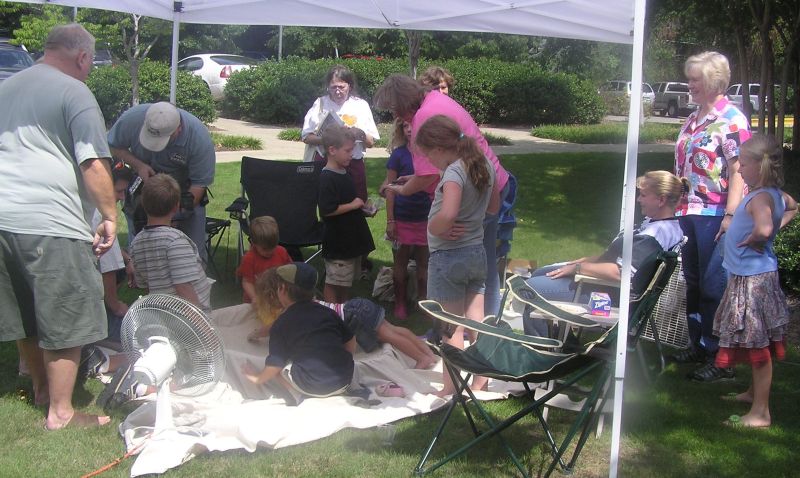
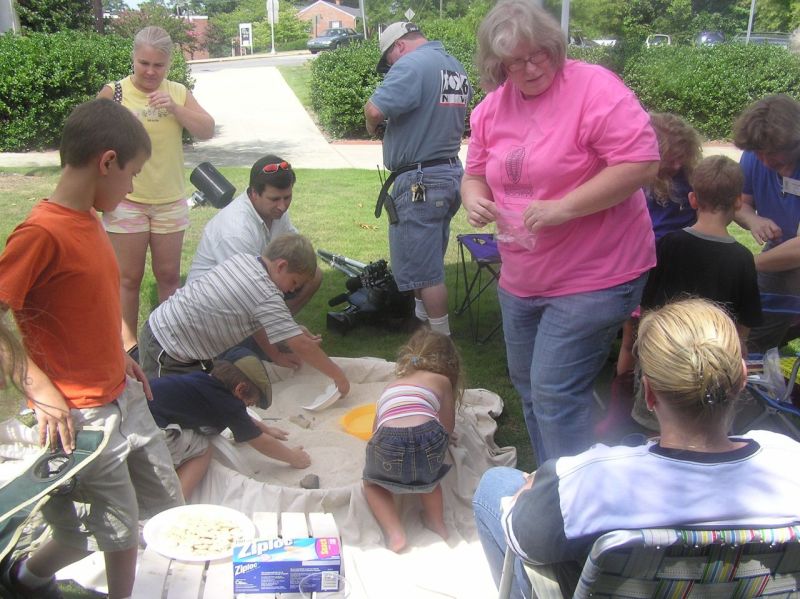
Martha, in pink, was coordinator of the sand pile activities.
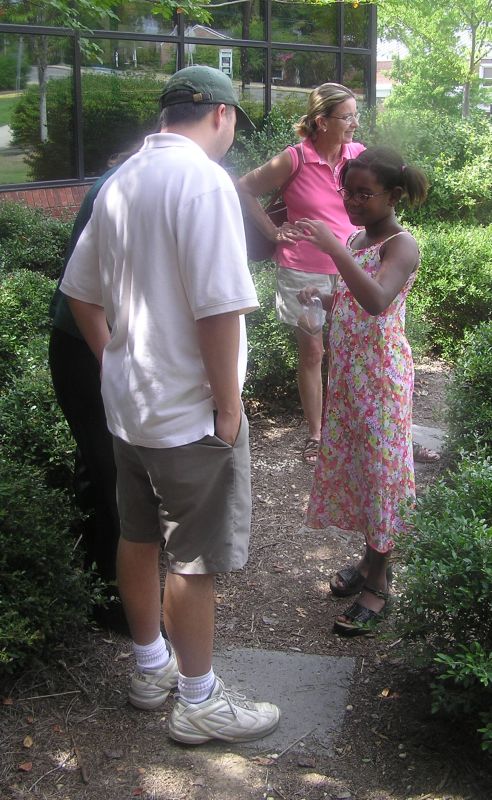
Young lady showing off her find to Jun and Sandy.
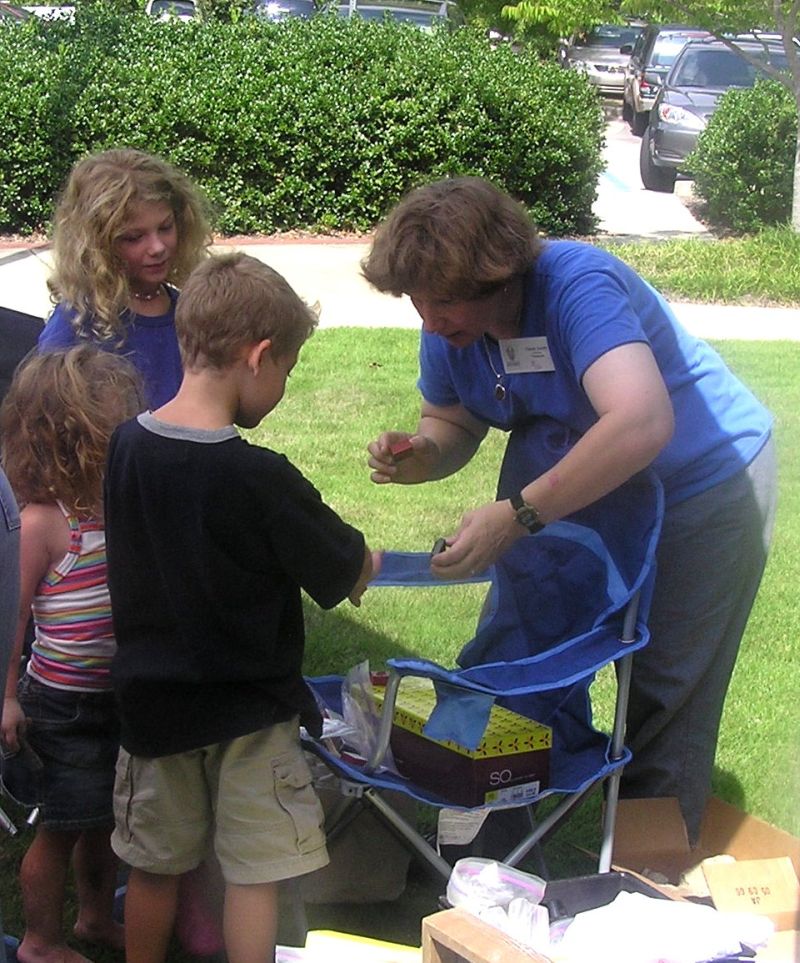
The dinosaur stamps also were a big hit!

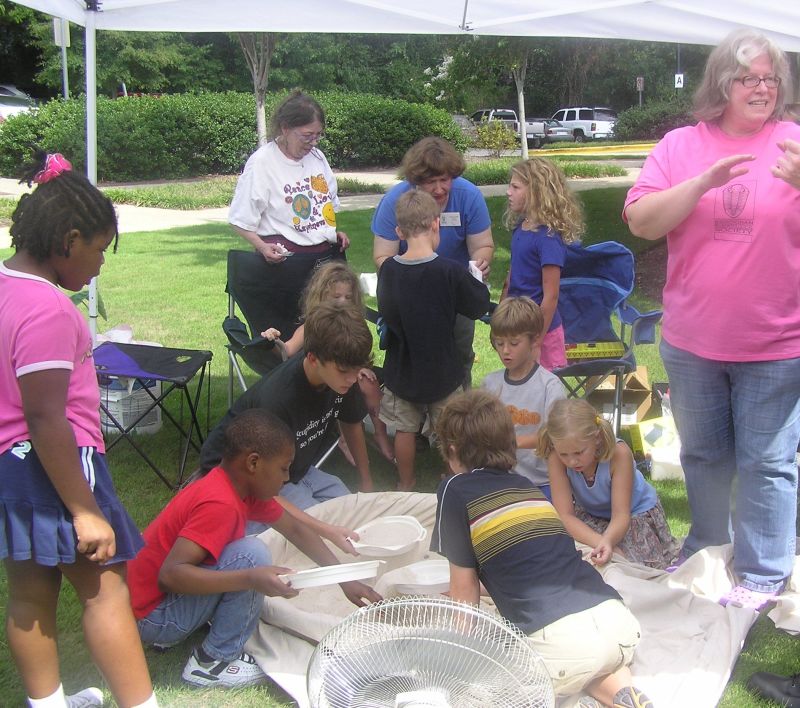
September 30, 2006 - Paleozoic Fossils and Rocks, Jefferson Co, AL, Part 2
The Red Mountain road cut rocks were formed million of years ago when North America was covered by a shallow sea. Fossils from the Ordovician, Silurian, Devonian, and Mississippian ages are found at this site. Members found a good selection of fossils, including numerous brachiapods, the pygidium of a Llandovacaste birminghamensis trilobite (used in the BPS logo), graptolites, unidentified plant stems, gastropods, a number of trace fossils, and even some nice samples of calcite and dolomite crystals.
(Photos courtesy Chris and Vicki Lais)

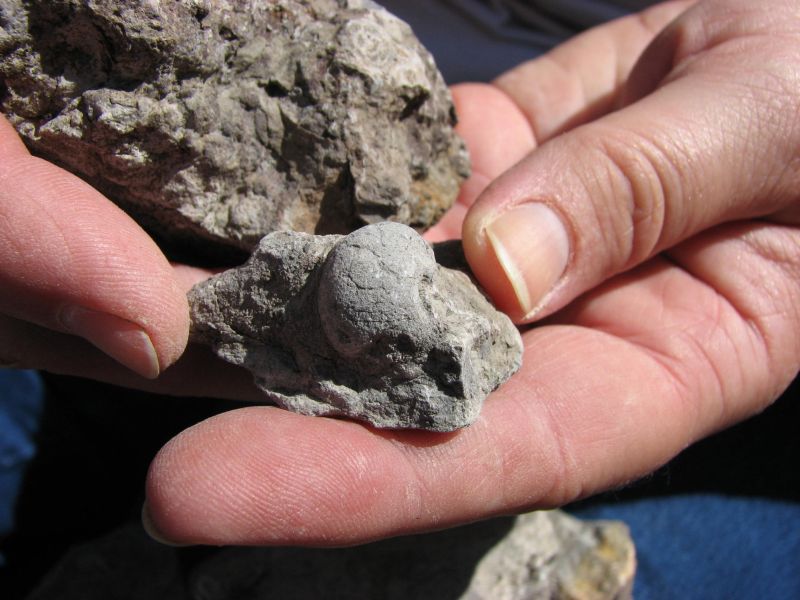

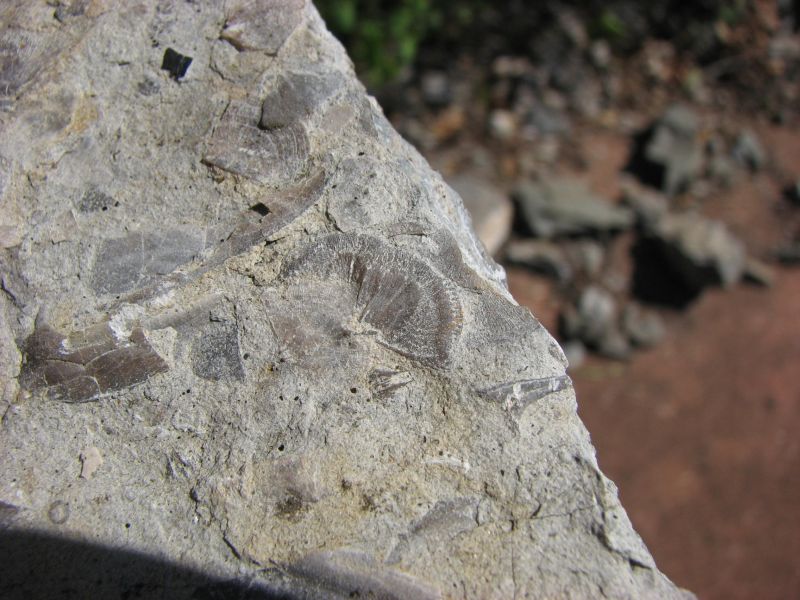
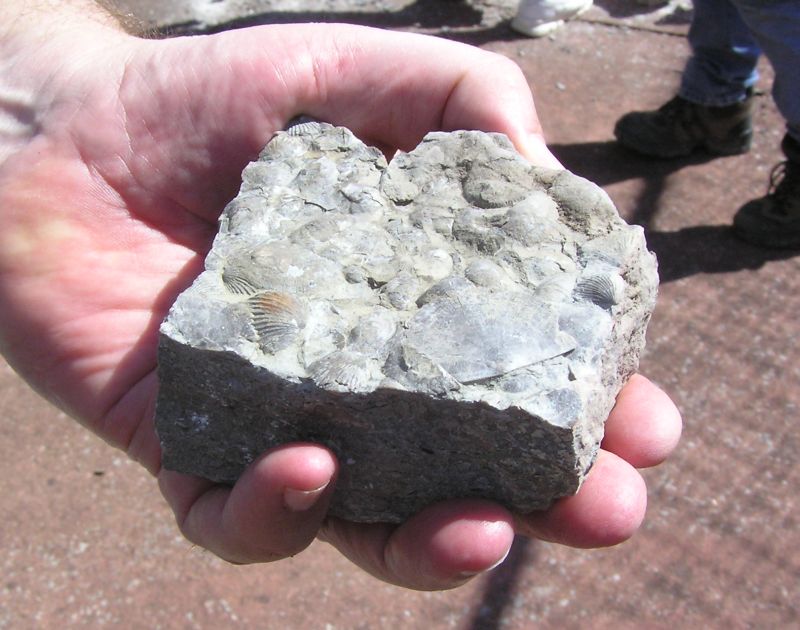
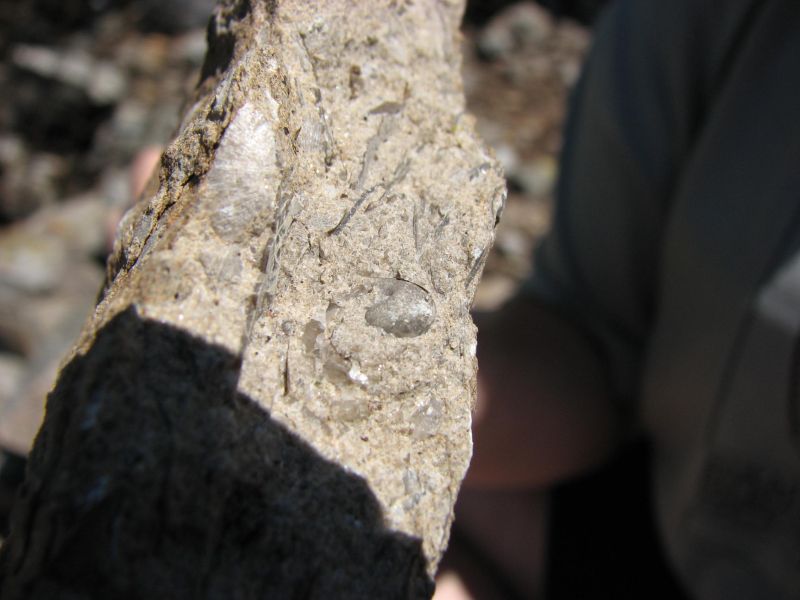
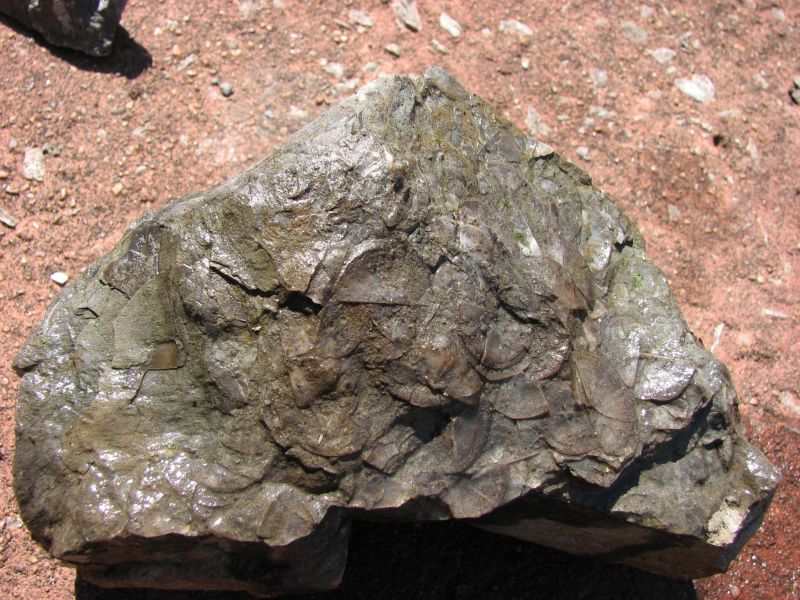
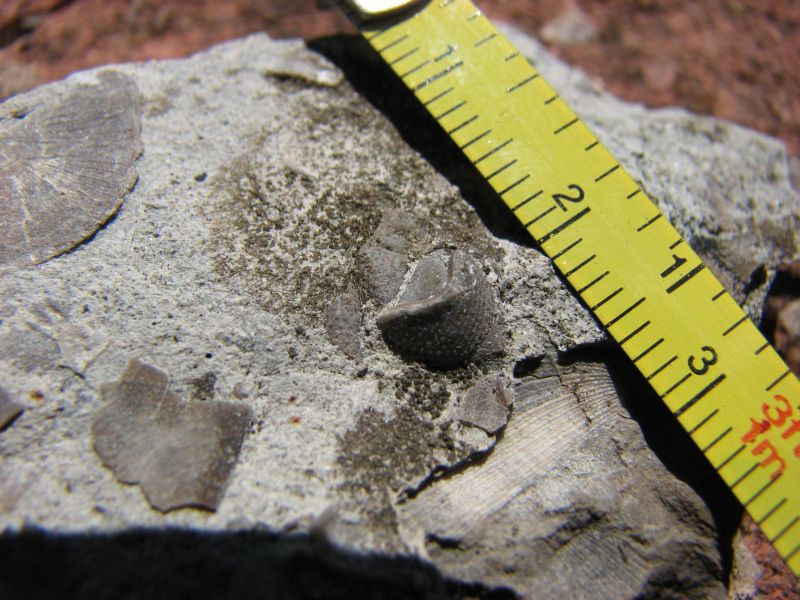

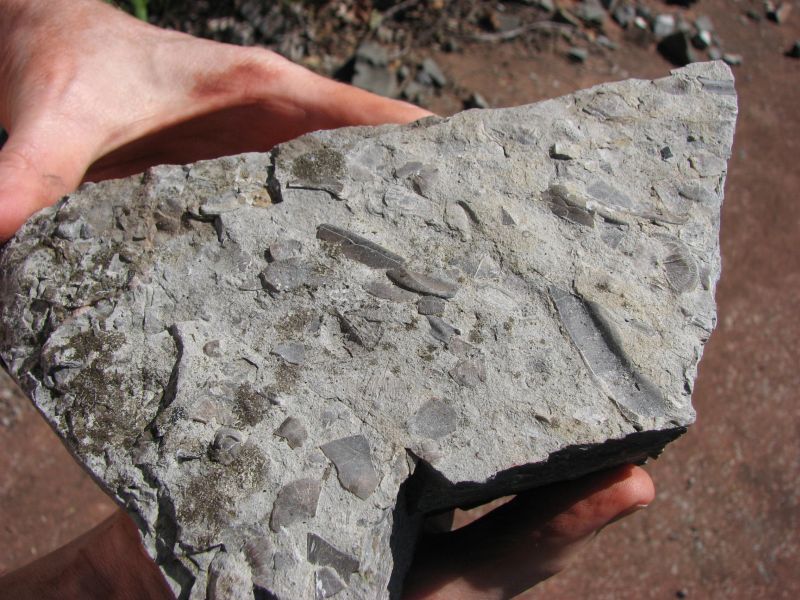



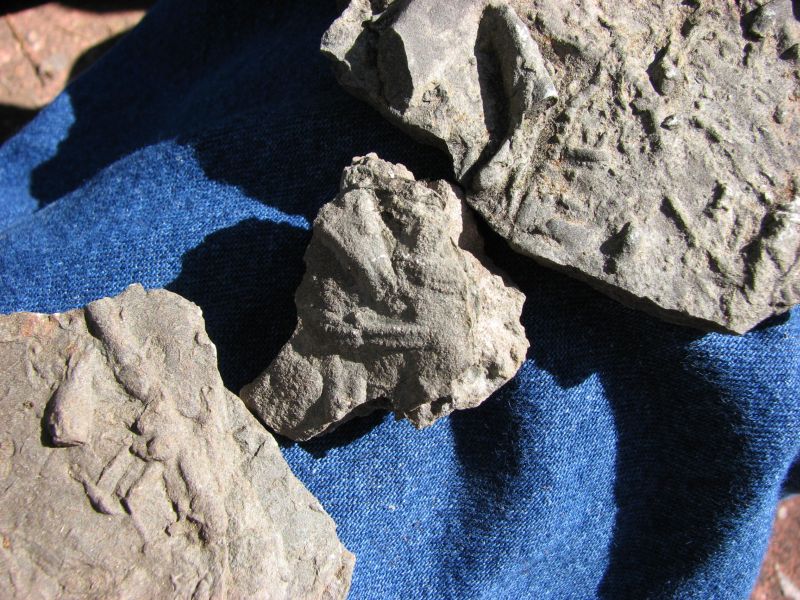
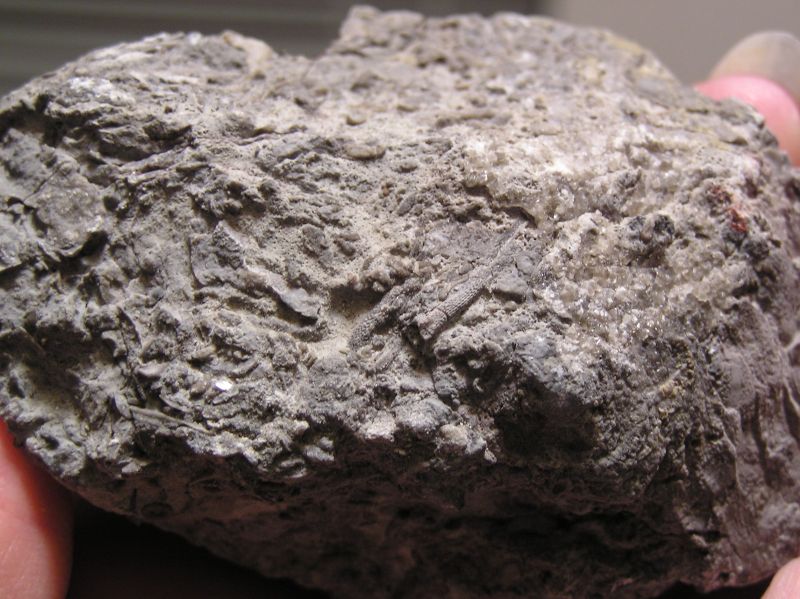

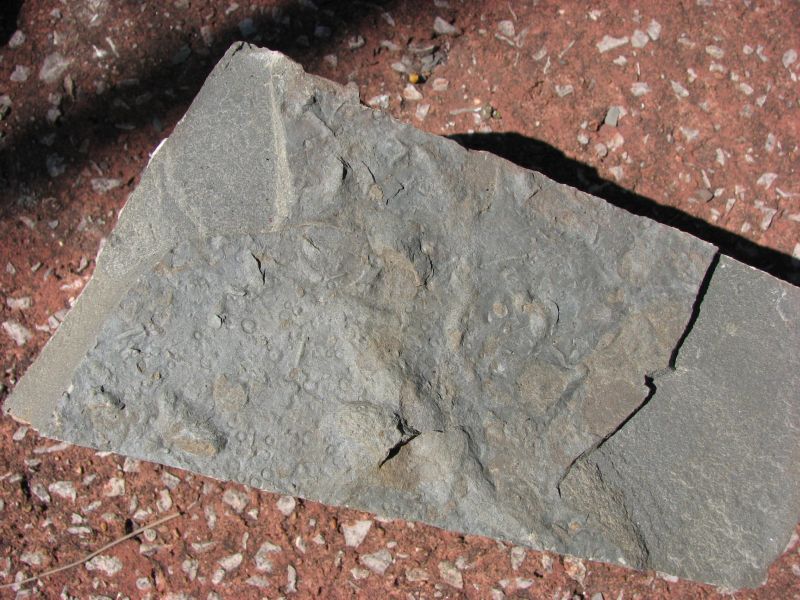
And some mineral specimens:
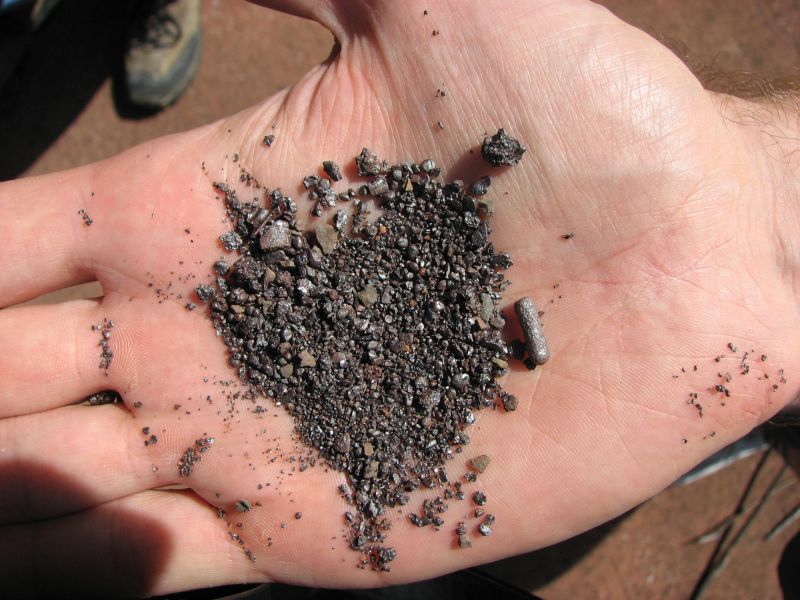
Hematite

White calcite crystals.
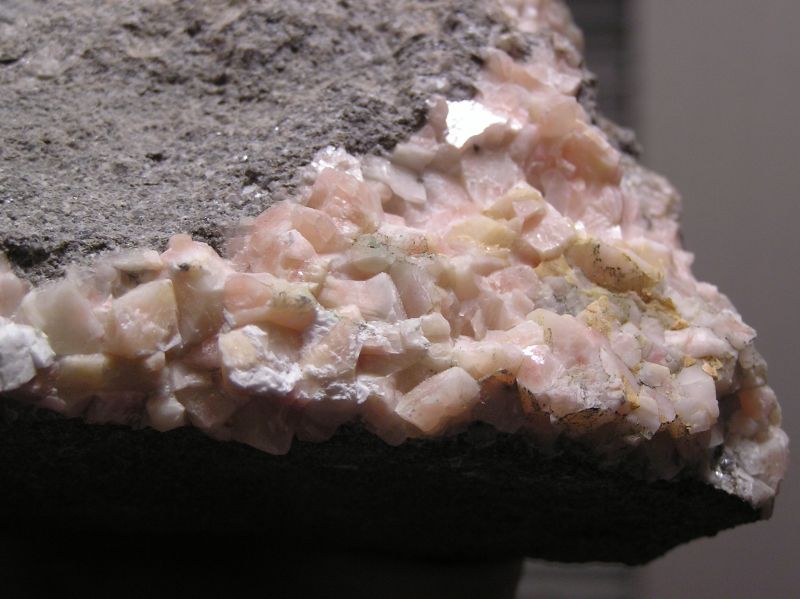
Pink calcite (dolomite) crystals.
Page 1 - General trip photos
Page 2 - Fossils and minerals (this page)
September 30, 2006 - Paleozoic Fossils, Jefferson Co, AL
Page 2 - Fossils and minerals
The BPS September field trip found us at the site of the Red Mountain Road Cut, which is also the site of the former Red Mountain Museum. The fossils that were formerly housed in the RMM now reside in the Alabama Collections Center of McWane Science Center. A good deal of the interpretive work still remains, and several members helped clear vines and bushes that had overgrown the walkway and signs. Jun Ebersole, Collections Manager at the McWane Science Center, started us out with a safety lecture, particularly pointing out areas that were somewhat less secure than others. We were fortunate to have James Lamb along to provide commentary and information regarding the road cut and history of the RMM, along with his wonderful sense of humor. James' lecture was accompanied by an excellent printed handout, covering the geology and history of the road-cut, and pointing out the many fossils which are unique to this site. He pointed out several geologic items of interest such as the fault line, volcanic ash layer, iron ore, and reef formations that make up Red Mountain, as we went on an exploring trip along the exposed area of the cut.
We happily welcomed Eli Mrug, our youngest member of the group on his first BPS field trip with his parents, who were acting as translators for his grandparents who were visiting from the Czech Republic. There was an excellent turnout for this trip of old members, new members, and guests. All-in-all this was BPS at its best and most fun, one of the best trips of the year.
The Red Mountain road cut rocks were formed million of years ago when North America was covered by a shallow sea. Fossils from the Ordovician, Silurian, Devonian, and Mississippian ages are found at this site. Members found a good selection of fossils, including numerous brachiapods, the pygidium of a Llandovacaste birminghamensis trilobite (used in the BPS logo), graptolites, unidentified plant stems, gastropods, a number of trace fossils, and even some nice samples of calcite and dolomite.
Edited by Vicki Lais
(Photos courtesy Steve Corvin, Chris Lais, and Vicki Lais)
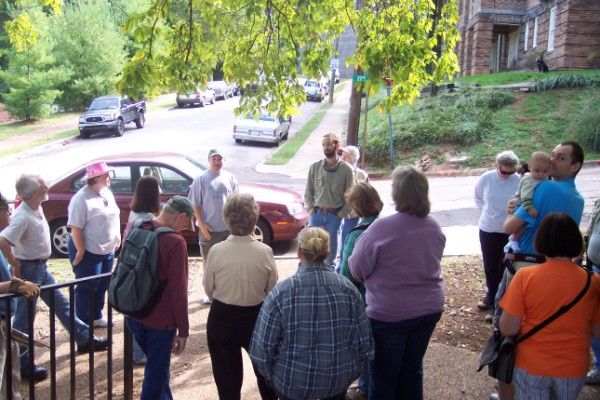
Jun gives a safety lecture regarding dangerous aspects of the cut and walkways to the group.

The whole gang (except Chris, behind the camera).
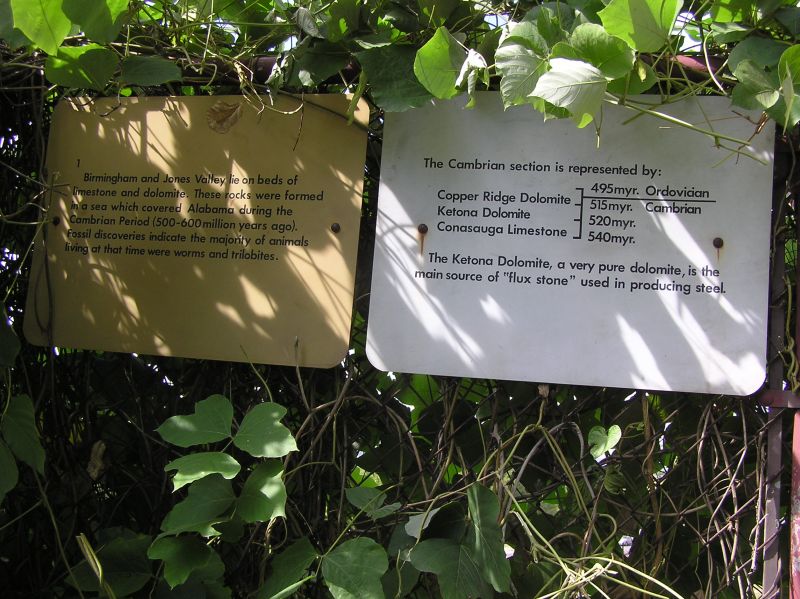
Amazingly, though Red Mountain Museum has been closed for several years, a number of the signs are still in place, though covered by kudzu and other vines.

There is a lot of rubble against the fence, most filled with bits of fossil material.
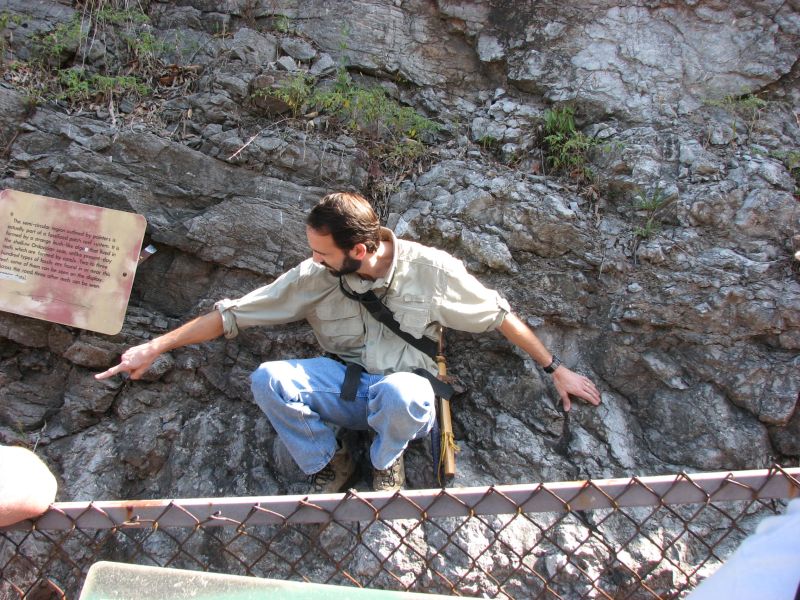
Lamb pointing out part of a fossilized patch reef system formed by a bush-like algae . . .
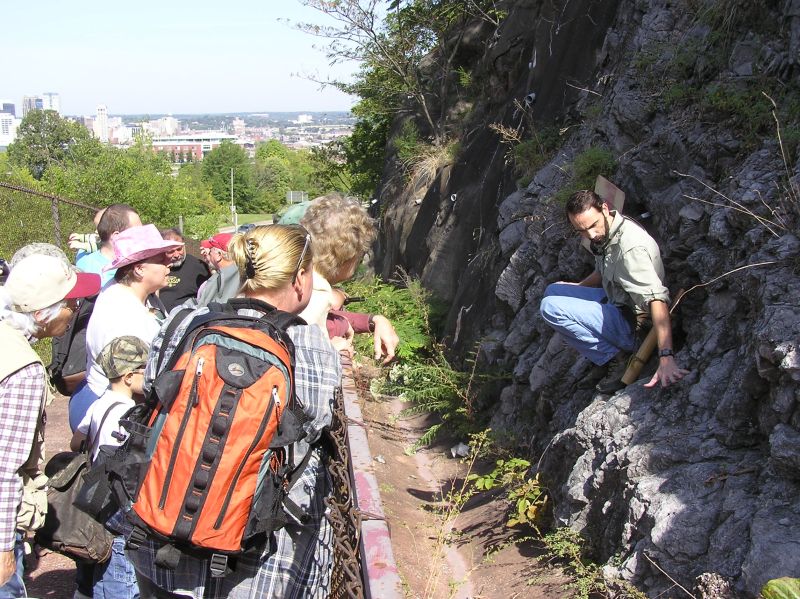
. . . as members listen intently, and start being able to identify various shading in the rocks that denote shells, layer transitions, faults, and other items of geologic interest.

Claire and Melanie searching through a large rubble pile.

Pam and others choose a leisurely way to collect!
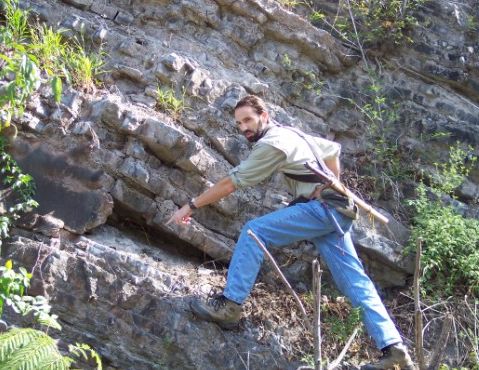
Lamb points out volcanic ash (bentonite) from volcanoes which were active in the area approximately 445 million years ago.
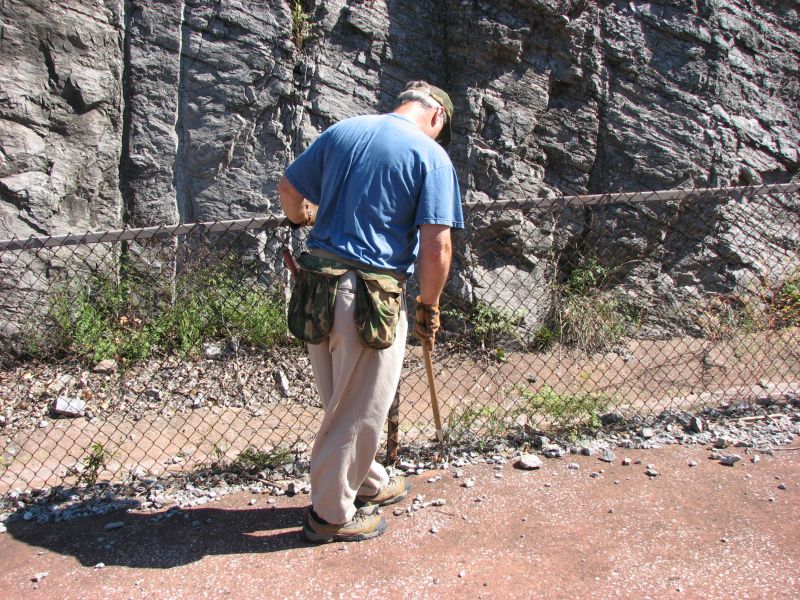
Bill with his "rock flipping tool".
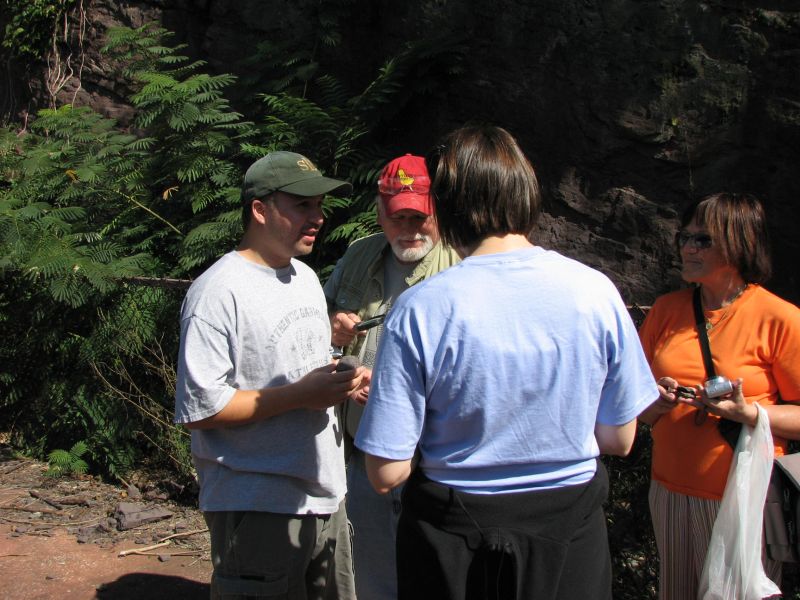
A frequent event of the day - Jun, what's this?
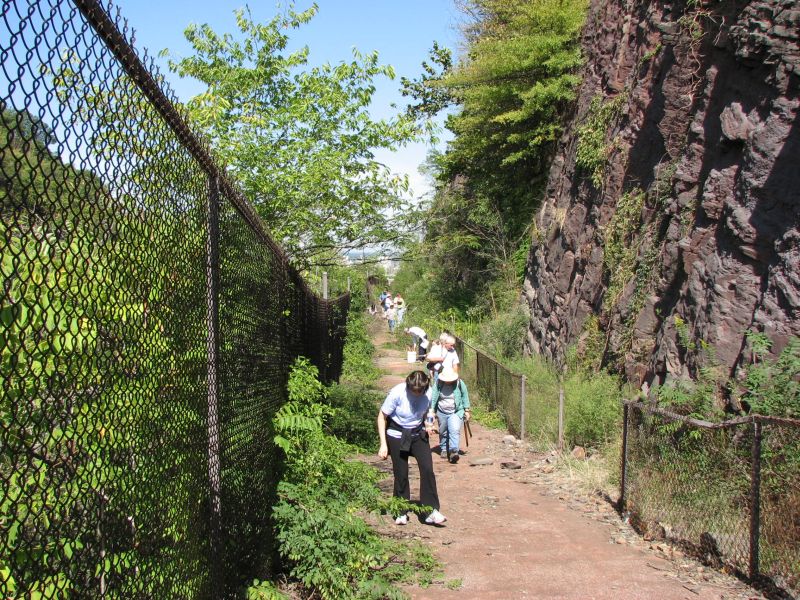
Walking along the road cut.

Jun trying to hide after his attempt to put a 15 pound rock in Vicki's fanny pack (while she was wearing it!).
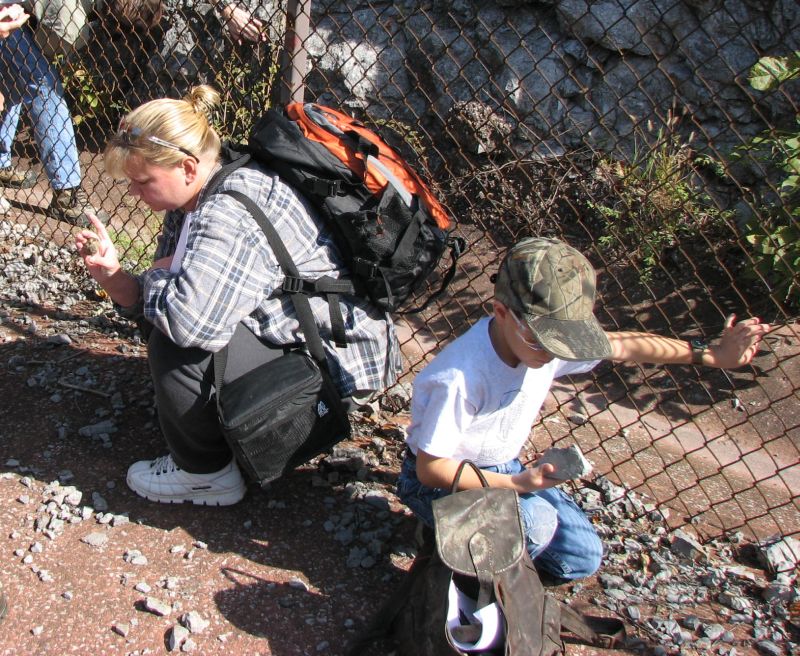
Melanie and Steven examine each rock carefully.
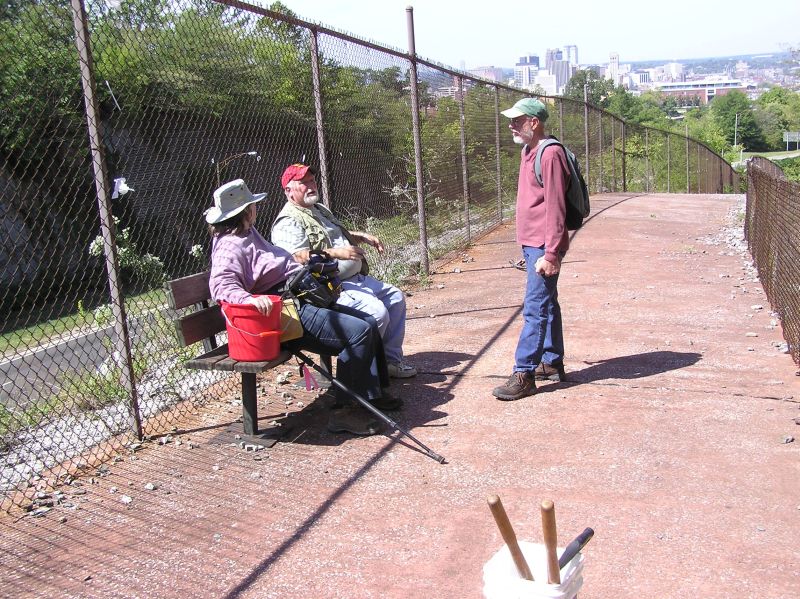
Time to relax with the Birmingham skyline in the background.
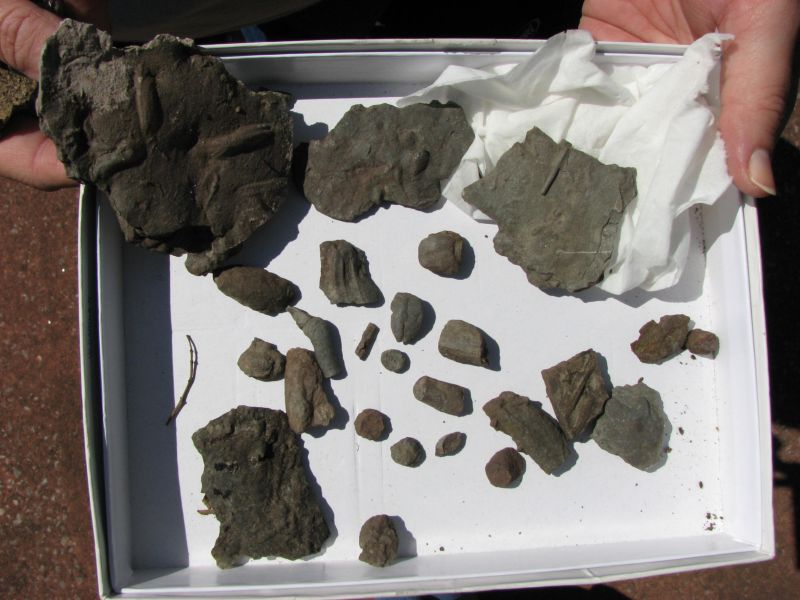
Leisa's fossil finds.
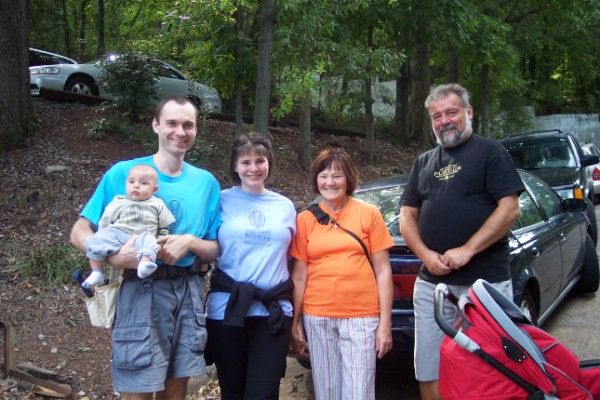
If we had given a prize for the people who traveled furtherest to attend the field trip, it would have to go to Sylvie's parents, who came all the way from the Czech Republic. Well, perhaps they really came to visit their new grandson, Eli, but we certainly were glad to have them!
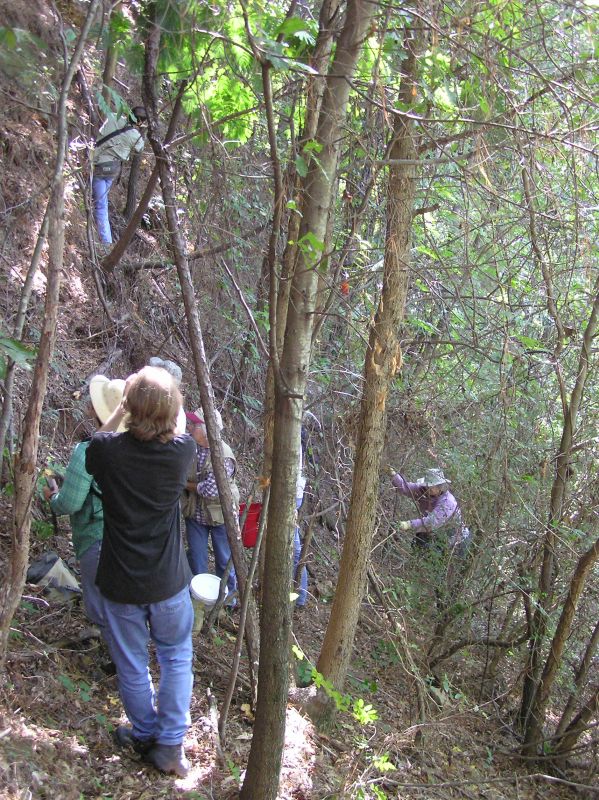
James.... are you SURE we need to climb all the way up there???
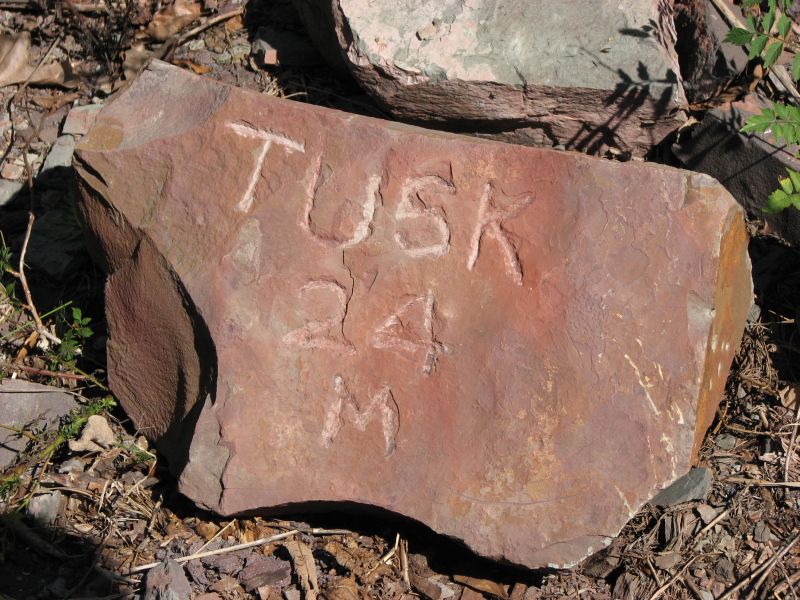
A mystery rock. Apparently, one just like it was brought to McWane Center. This one wasn't here in the past, and doesn't appear to have fallen from the top. Anyone know about this rock? Is it a marker of some kind, a hoax?? Send us an email if you can shed light on this mystery.

Page 1 - General trip photos (this page)
Page 2 - Fossils and minerals
October 28, 2006 - Mississippian Fossils, Blount Co, AL
After the butterfly viewing, we then convoyed to a quarry of Mississippian age Fort Payne chert where we had permission to hunt the whole day! Doesn't get much better than this, and the weather was absolutely perfect! Along with more large crinoid stems, several kinds of coral, brachiopods and a few trilobite pieces were found. Quite a few of us found beautiful geodes and concluded that this is just about as exciting as the fossils. They certainly are gorgeous souvenirs.
Later in the afternoon, a few of us sneaked off to one of Greg's barbecue spots and chowed down on some excellent vittles while our more dedicated crew-members devoted themselves to the task at hand. Well, you can't have everything. Sometimes a blackberry cobbler just has your name on it.
--Edited by Vicki Lais
(pictures courtesy Bill Fowler and Vicki Lais)
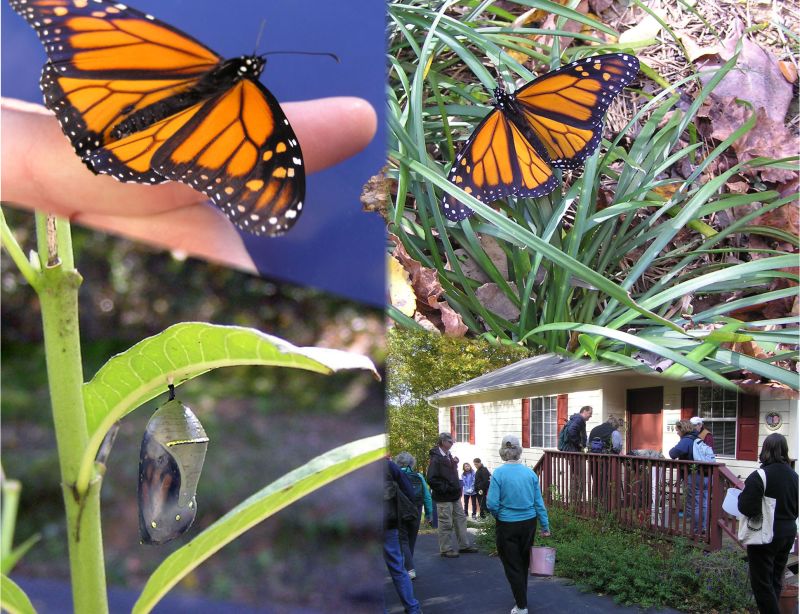
Our first stop of the day, where we found Monarch chrysalis on numerous surfaces, including plants and house siding. This chrysalis has turned clear, and you can see the butterfly inside. There were several newly emerged Monarch butterflies slowly pumping their wings, waiting for them to harden (that's what everyone's staring at on the porch.)
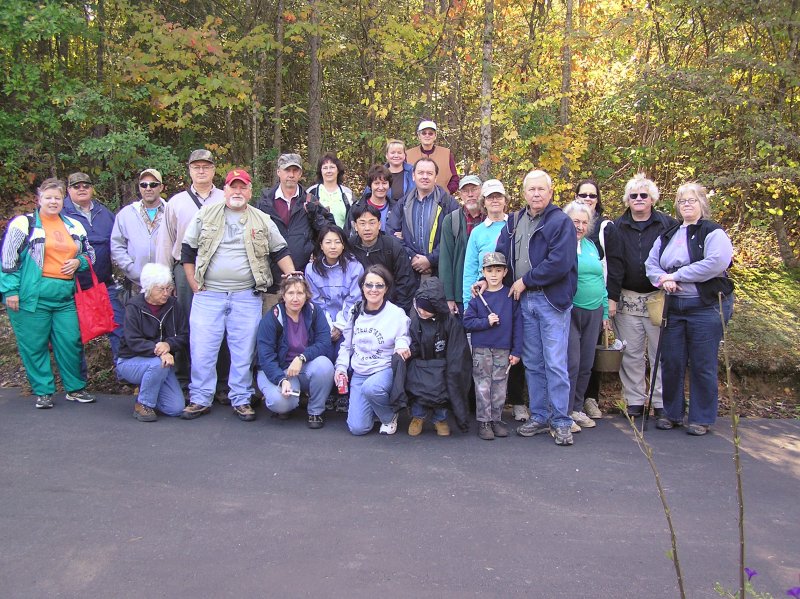
We had a great turnout and beautiful weather; here we pose for a group picture before setting off on our day's adventure.

The first fossil stop, a gravel road paved with chert from the Mississippian age. Almost all the rocks have crinoid stems or impressions in them.

Examining recent finds.
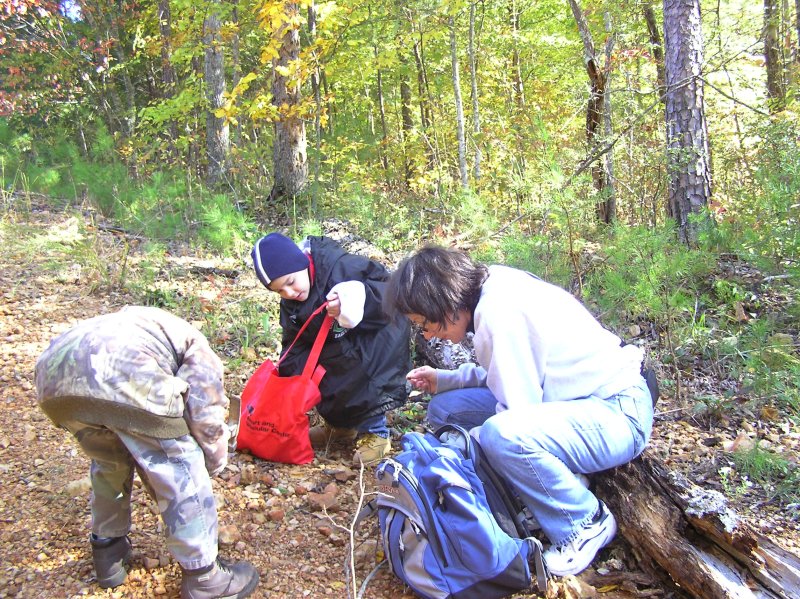

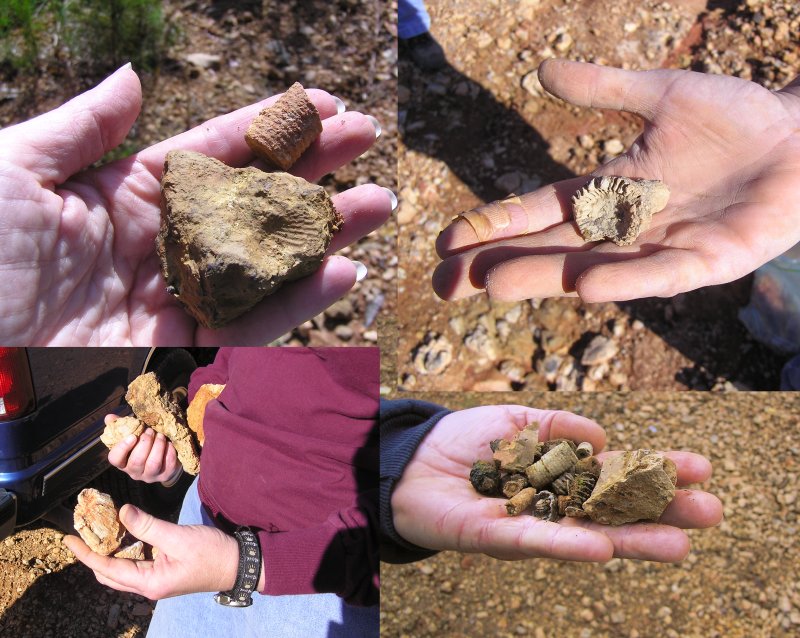
Samples of fossils found today.

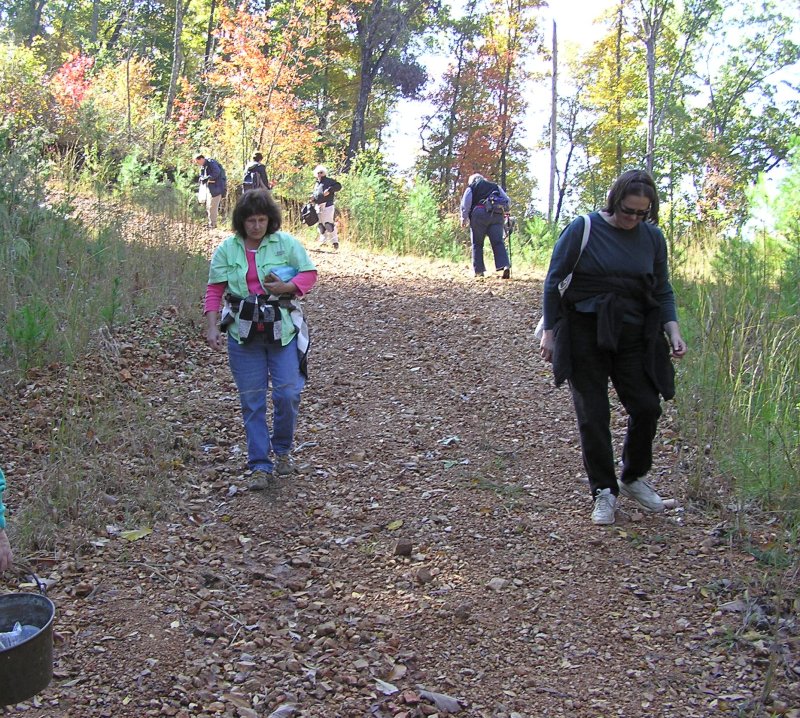
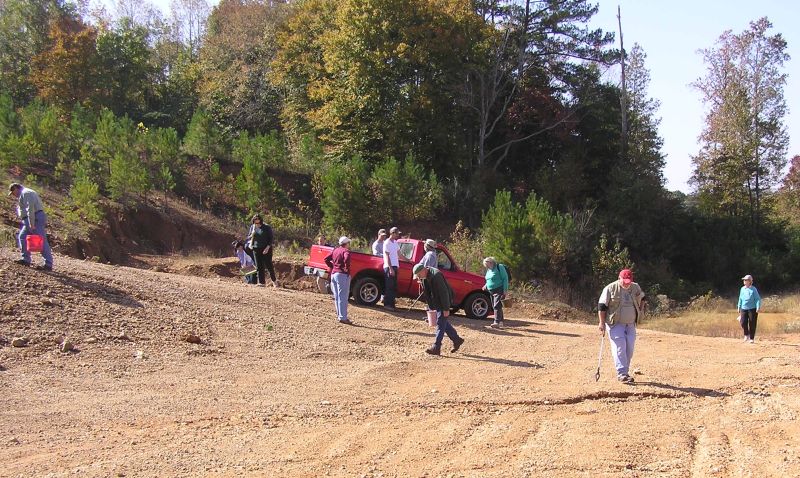
On to the next stop at a nearby quarry which was large, hilly and had multiple collecting areas. Everyone scattered in different directions to collect, so it was difficult to get closeups of people and their finds during the day.

Crinoid stems in matrix.

Crinoid stems.

Crinoid stems. Click picture for closer view.

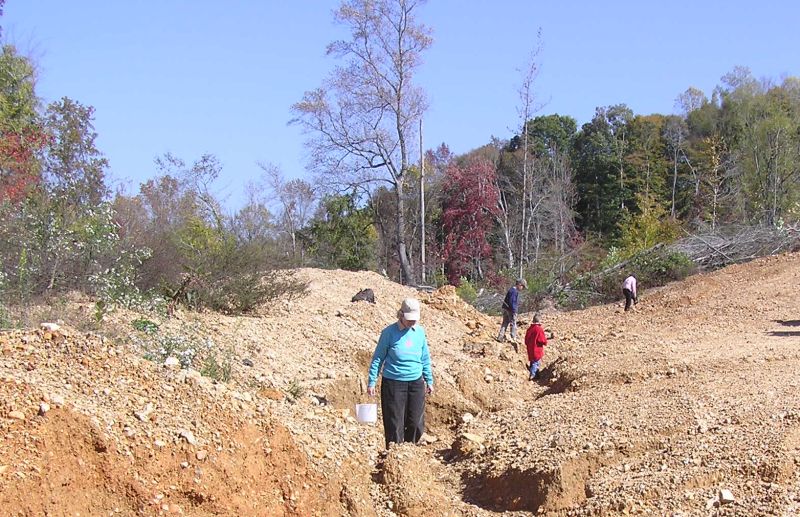

Horned coral found by Bill.
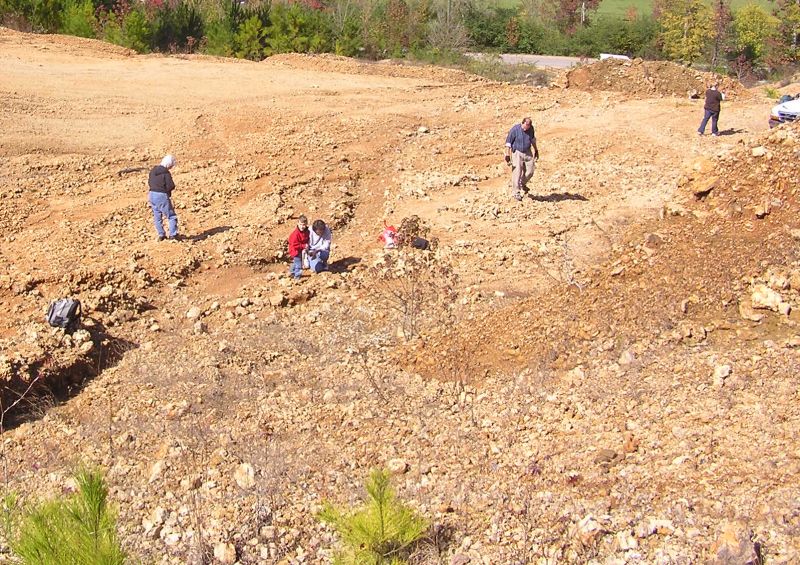
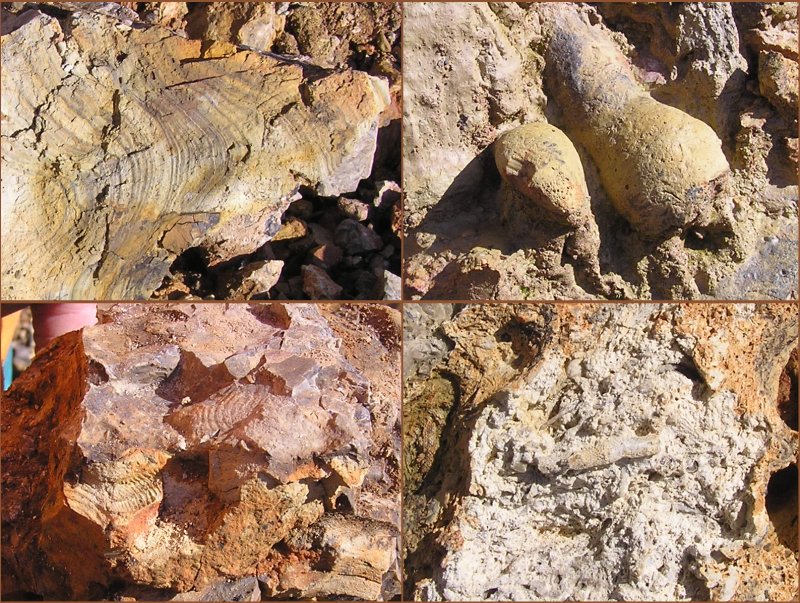
Clockwise, from upper left - unknown (possible stromatolite), possible burrow, part of a trilobite and shell, bryozoan.
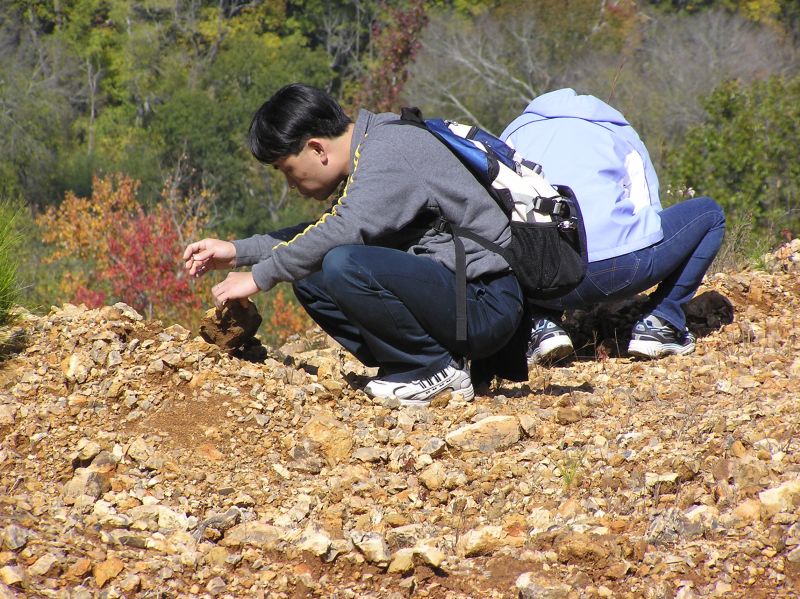
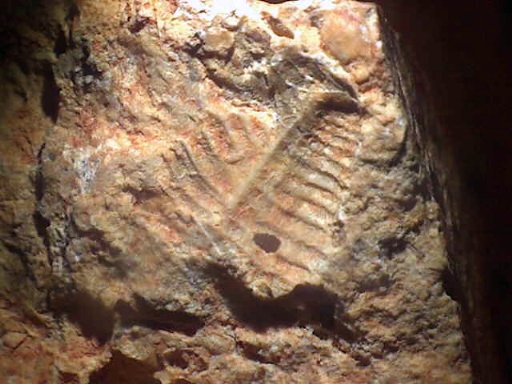
Small trilobite found by Bill, magnified.

Large trilobite found by Bill. This is what we came for, he must have found their secret hiding place!
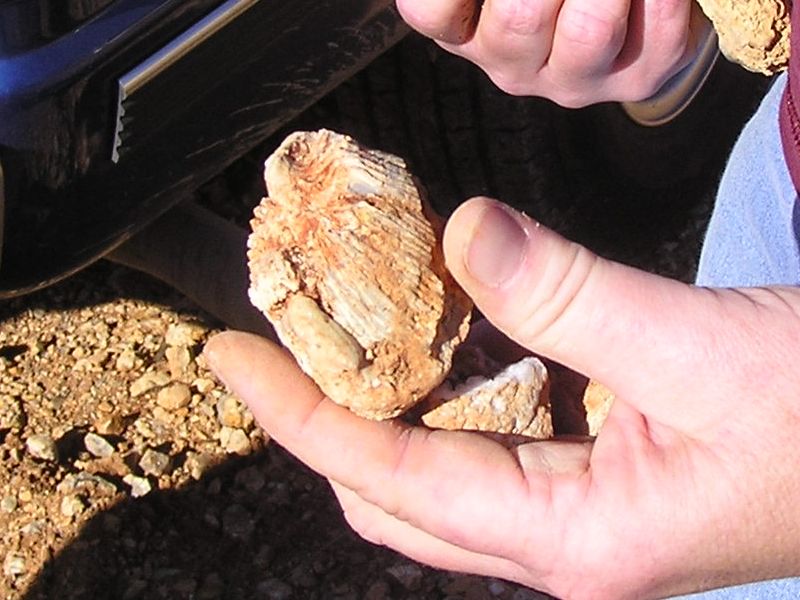
Coral.
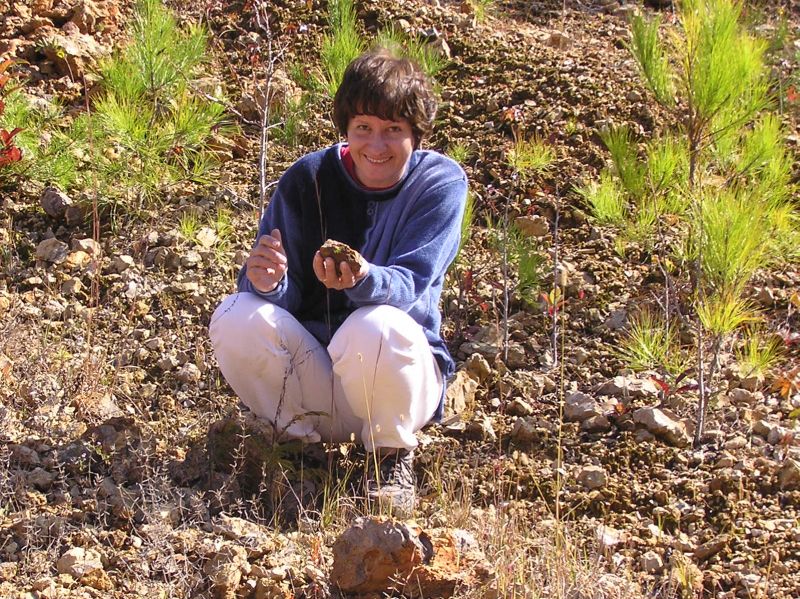
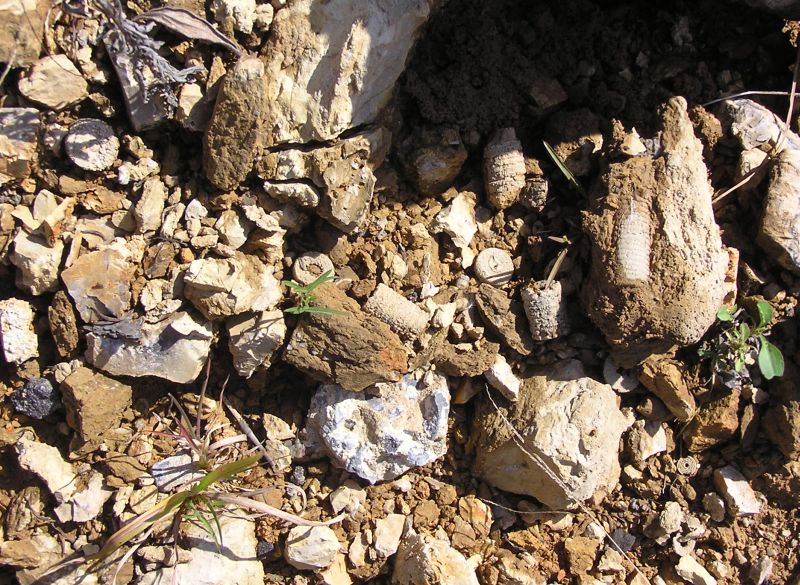

Part of a trilobite.
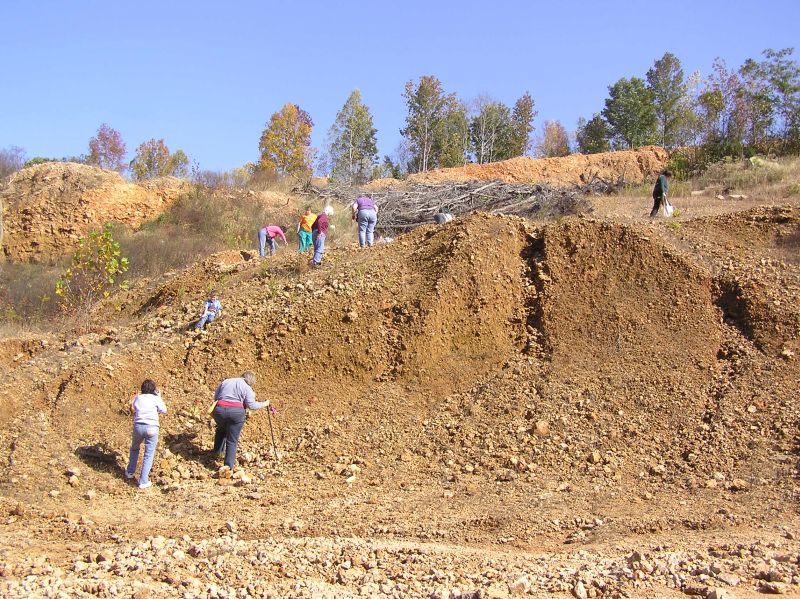

Crinoid encrusted rock.
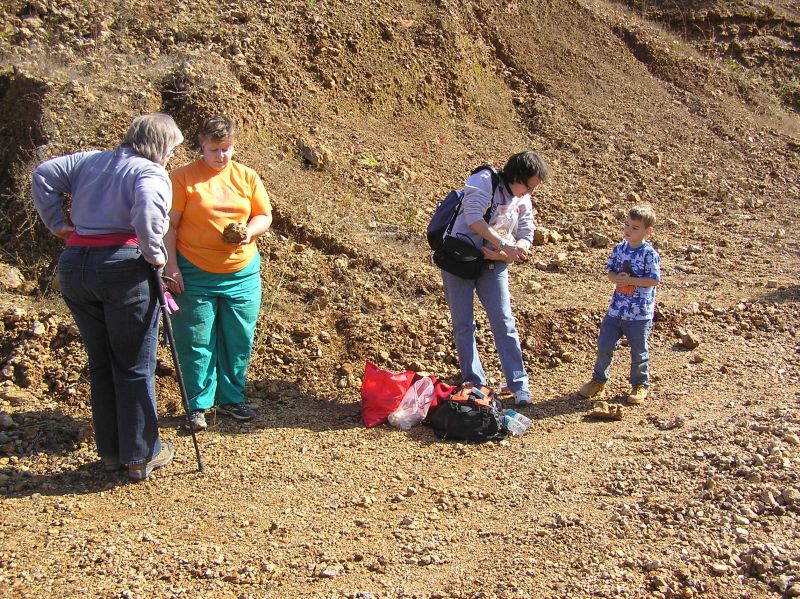
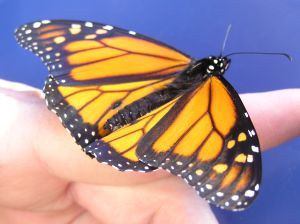
December 2, 2006 - Mississippian Fossils, St. Clair Co, AL
--Edited by Vicki Lais
(Photos courtesy Becky Guthrie and Vicki Lais)
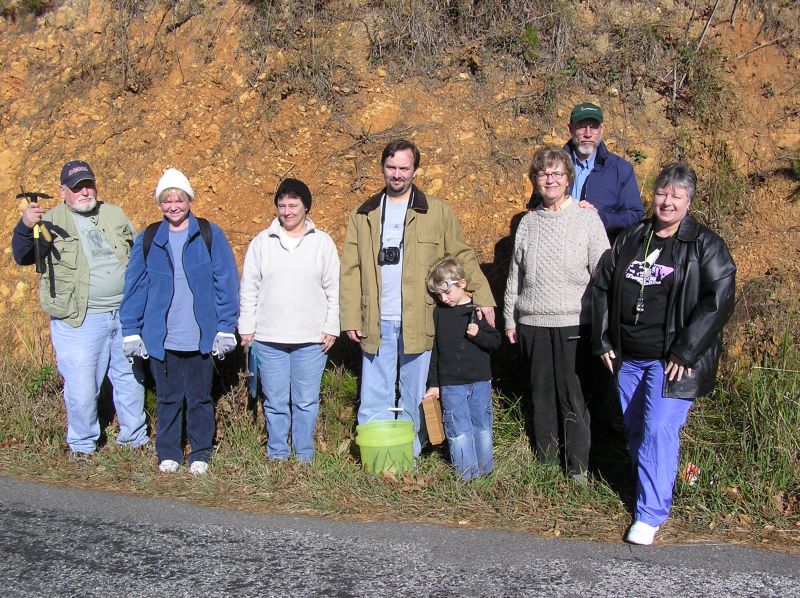
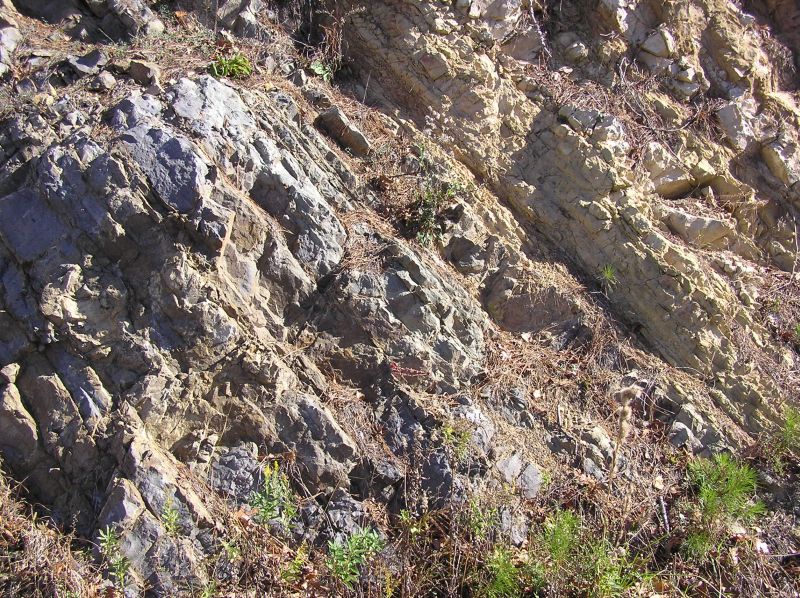
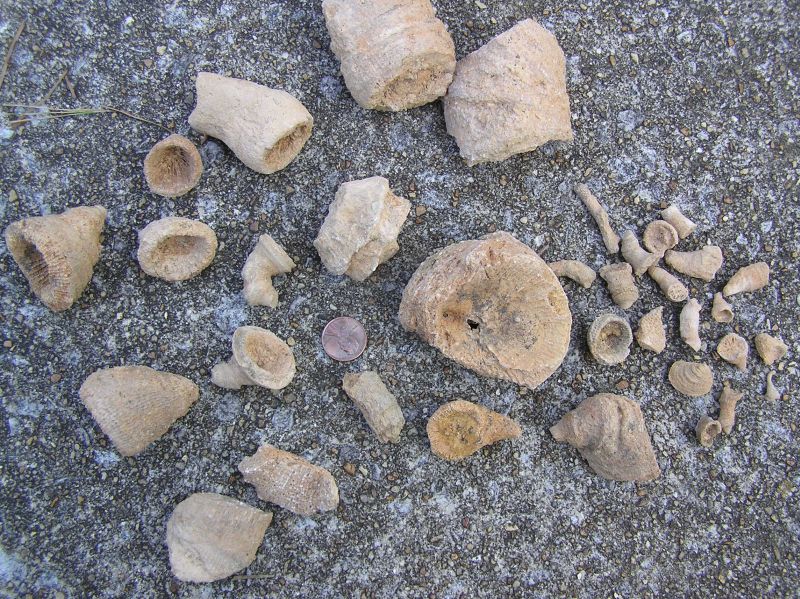
The most common fossil at this location is coral.
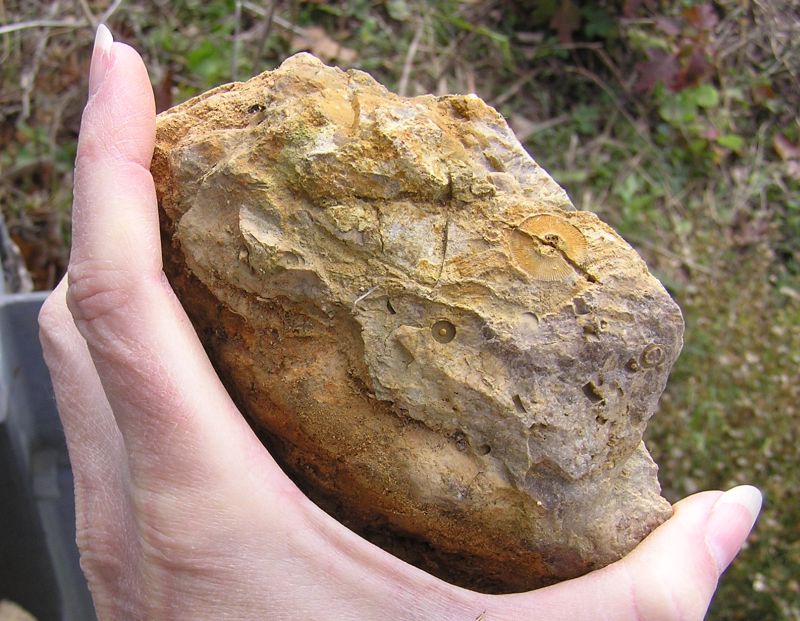
Crinoids are also found.
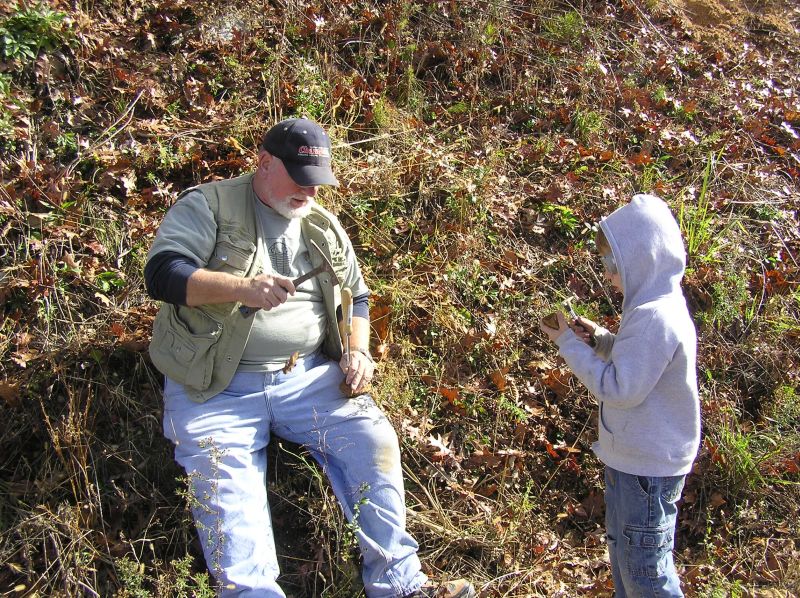
Greg shows Nathan how to crack the rocks to find the fossils inside.
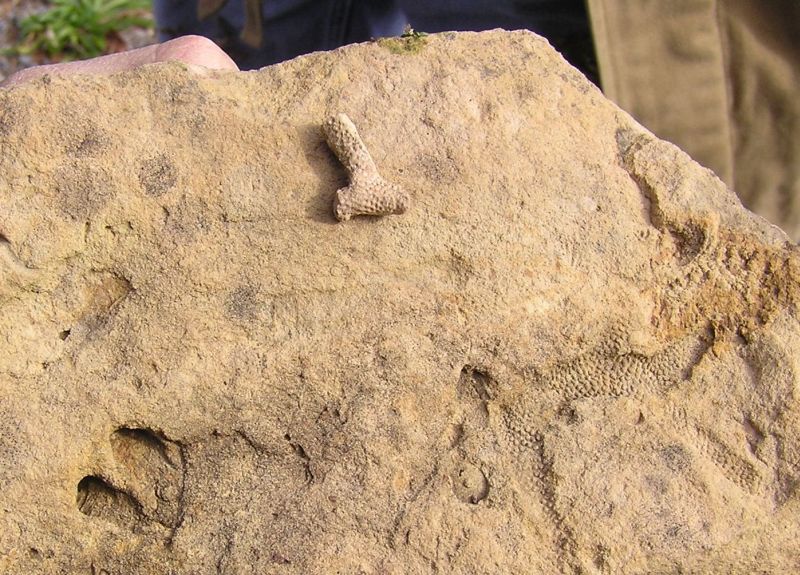
Nice bryozoan impression and actual fossil remains.
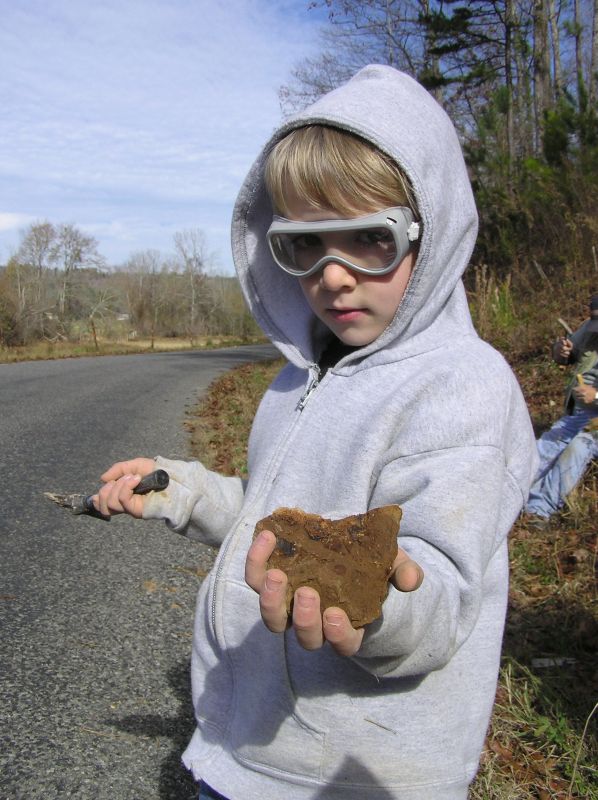
Nathan has found fossil brachiopods. Click picture for closer view.
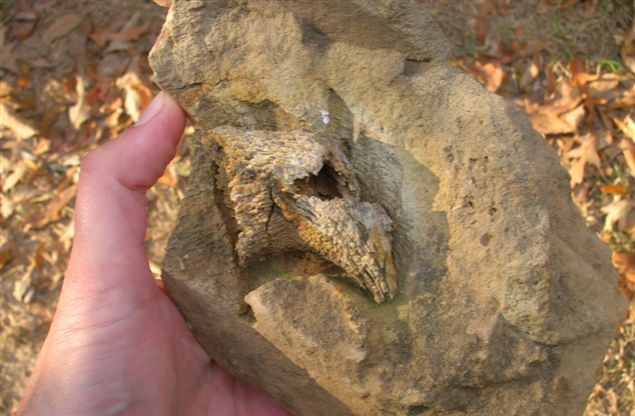
An interesting piece of horned coral, laying loose in a hollow shaped like it. This specimen has obviously been weathering in this same location for many years.
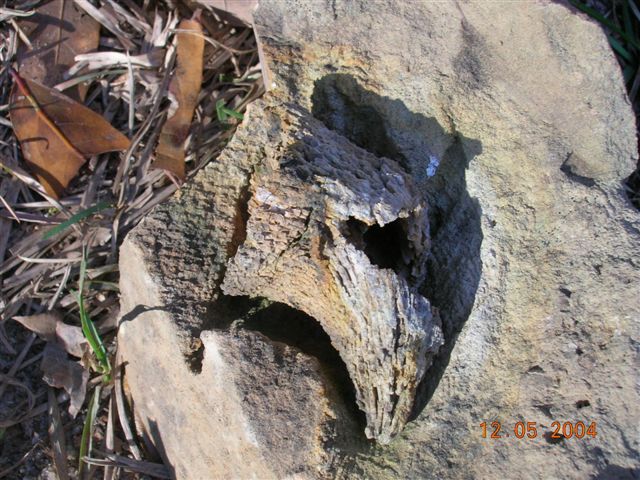
Another view of the horned coral.

Becky also has a nice slab of brachiopods.
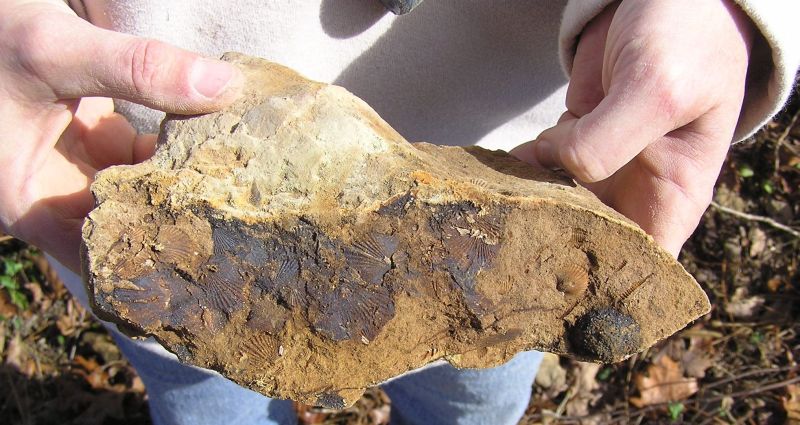
A closer look at Becky's slab.
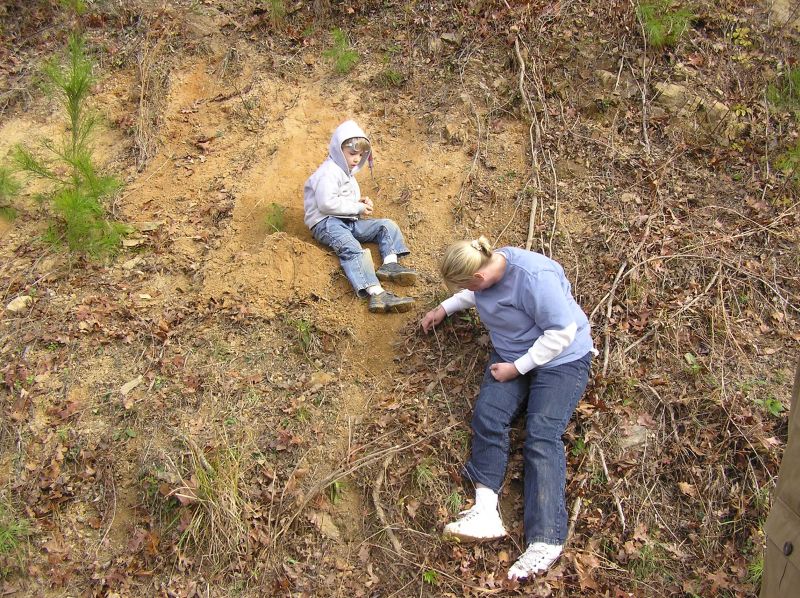
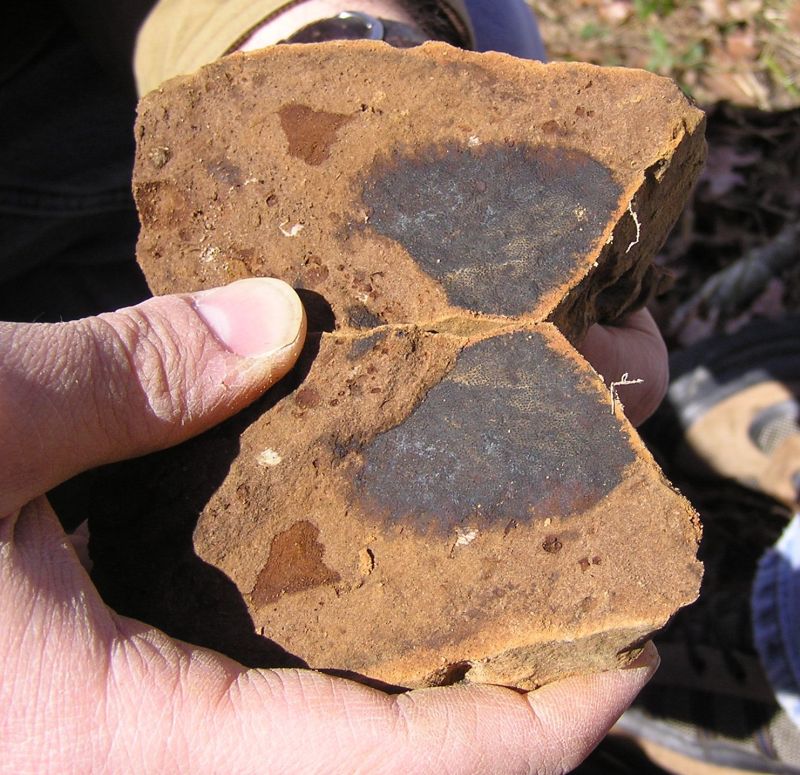
Nice sponge; at higher resolution, the pores are easily visible.

More brachiopods.

And here's what we were hoping to find - trilobites!
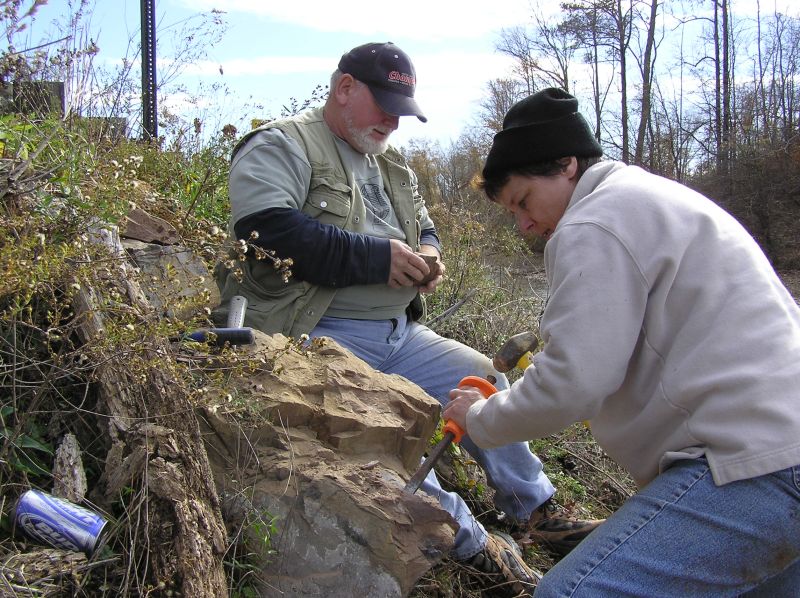
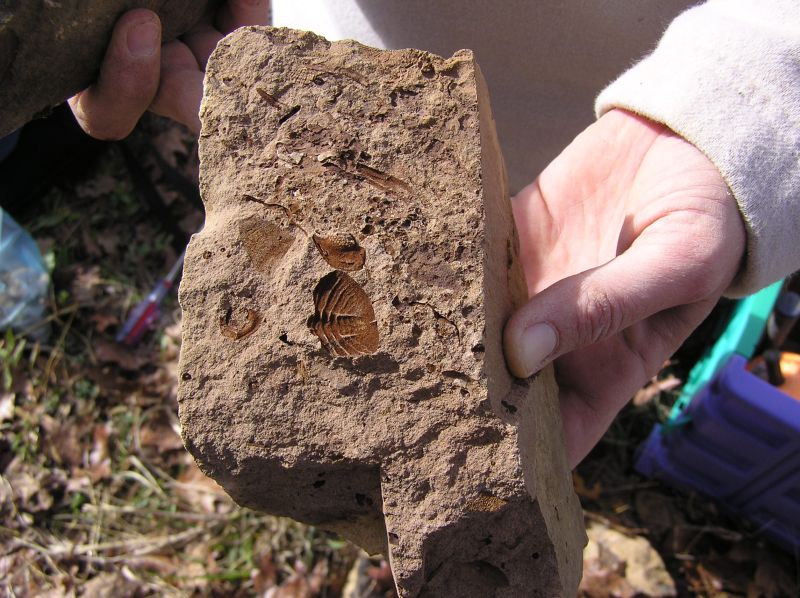
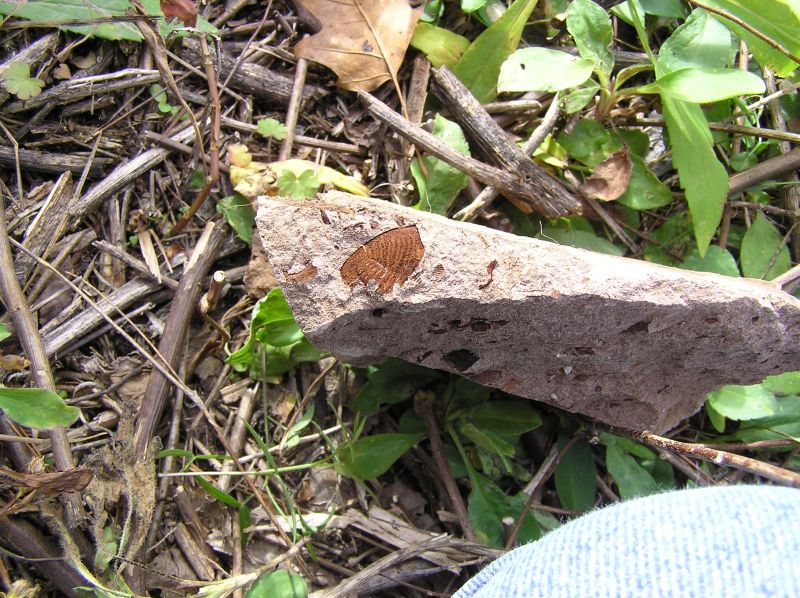
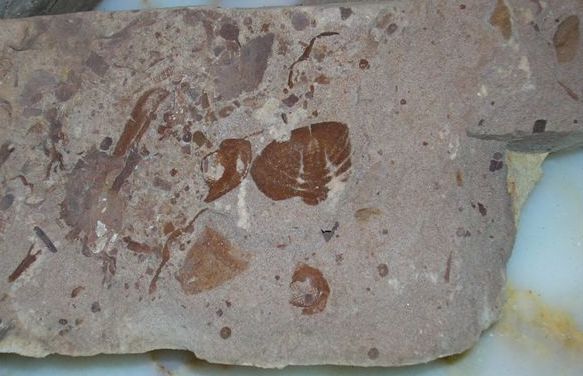

As nice as the trilobites are, this straight cephalopod was the find of the day!
December 16, 2006 - Mississippian & Ordovician Fossils, Jefferson Co, AL
Since the grey-on-grey of the limestone makes it difficult to photograph the details clearly, Chris took multiple photos of the boulder, then used “stitch” photo technology to create detailed photographs of the complete rock surface. By using extreme macro and pasting the sections together, we have gotten far better records of those surfaces and the fossils they contain than with past techniques.
The Ruffner Mountain quarry is a fascinating place to visit and learn more about the Alabama fossil record. BPS is glad that we can contribute to the educational services of the Nature Center by our documentation.
After a late lunch at a locally famous hamburger joint, it was time to head home and get ready to party! All-in-all, a great day, topped off by the annual Xmas party. Good company, good food, Dirty Santa, a lot of laughter, and live music from our very own Lea Novak. It doesn’t get much better than that!
--Edited by Vicki Lais
(Photos courtesy Chris and Vicki Lais)

Part of the group deciding which way to go.
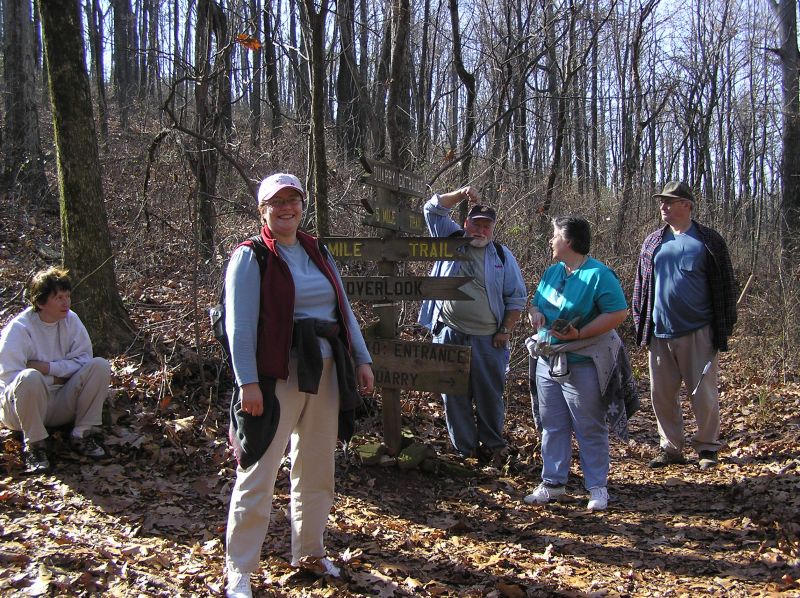
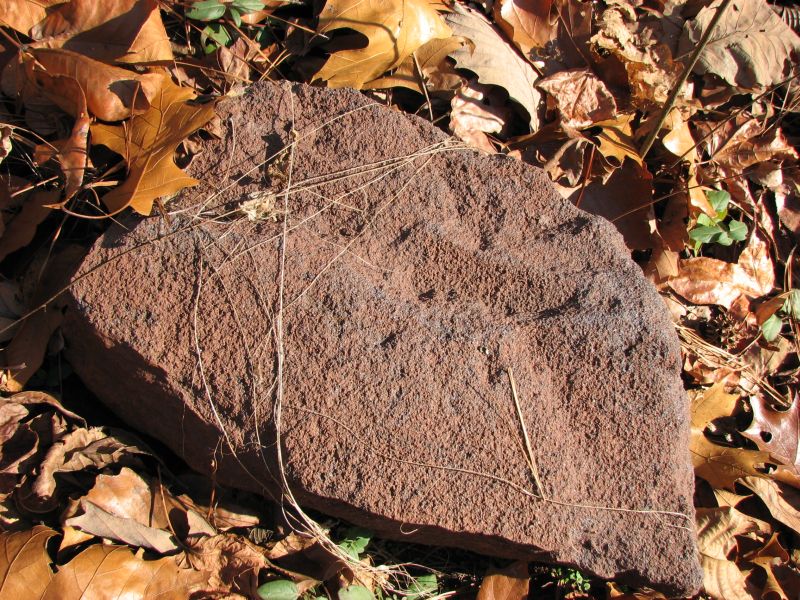
Iron ore spotted on path to quarry.
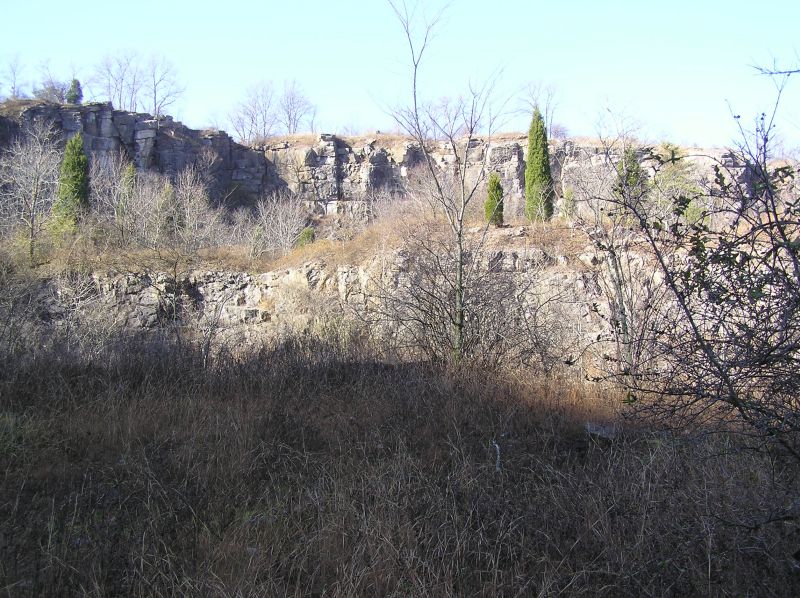
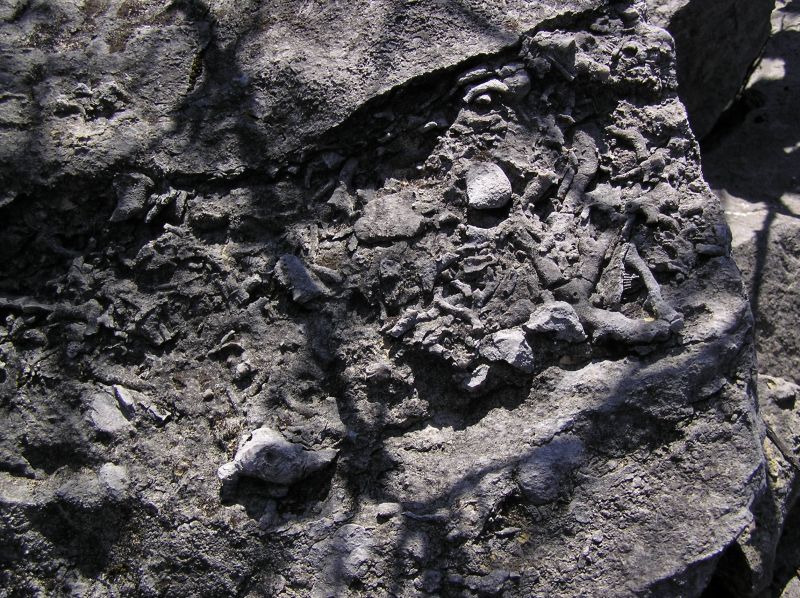
Mixture of fossils including brachiopods and bryozoans.
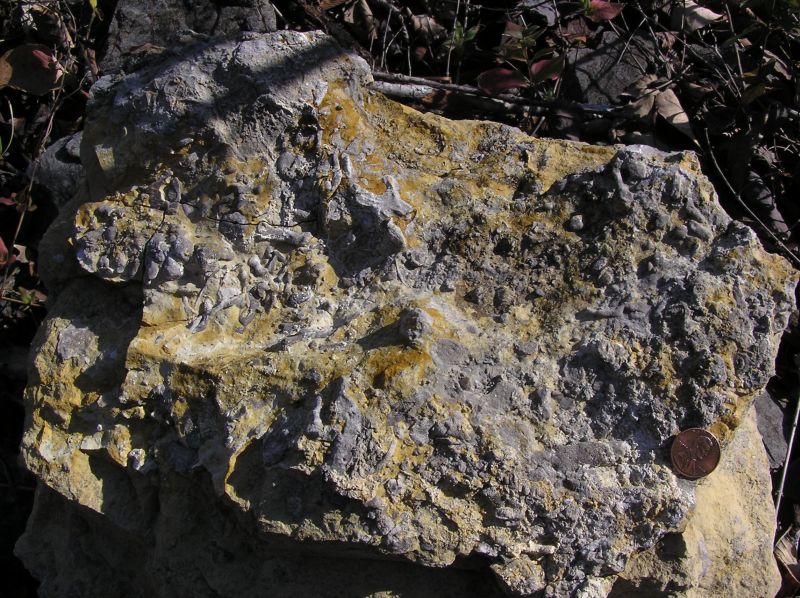
Most of the fossils are badly weathered.
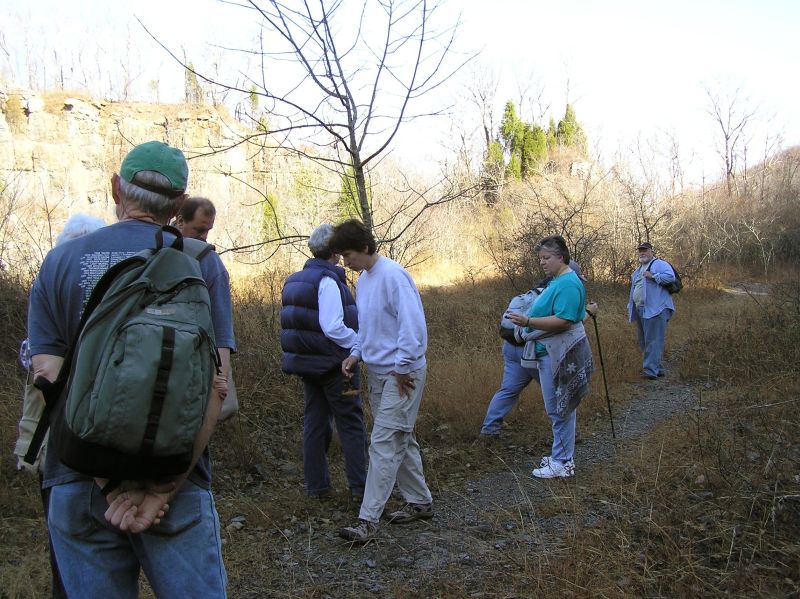
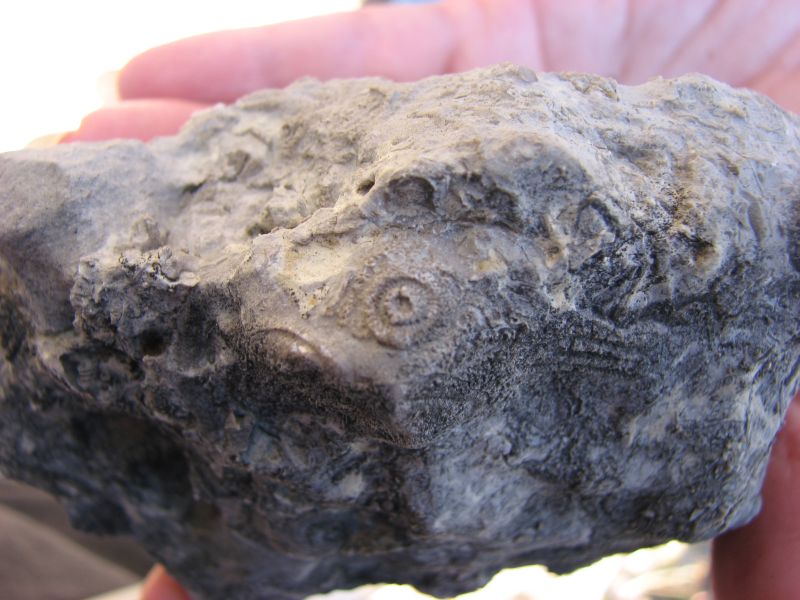
Coral.

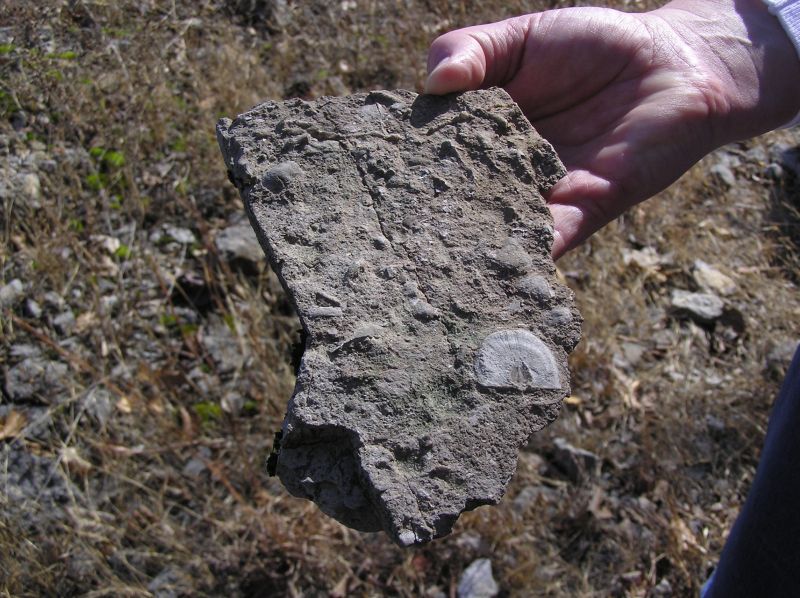
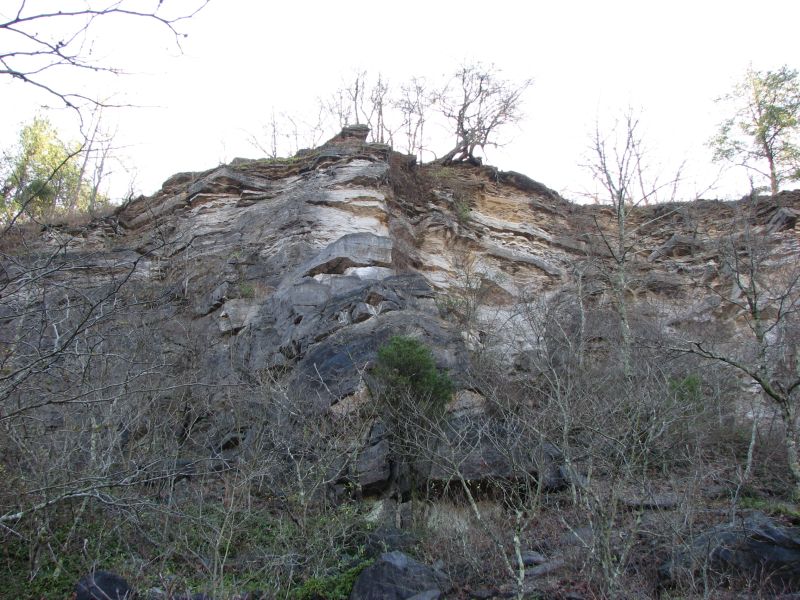
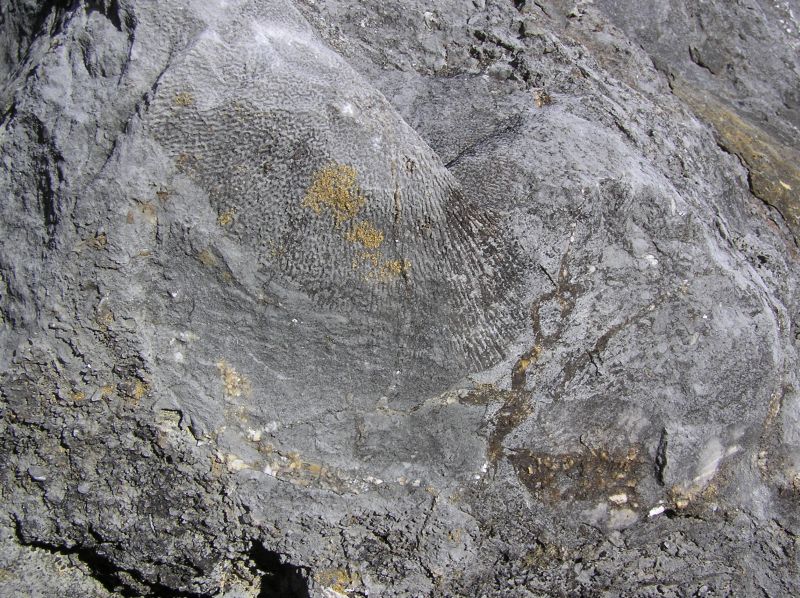
Large coral in boulder.

Another view of the same coral.

This is very tiny, no more than 1/2 inch across (My apologies for lack of a scale). Dr. Phil Novack-Gottshall says this appears to be a diploporitan, a type of echinoderm .

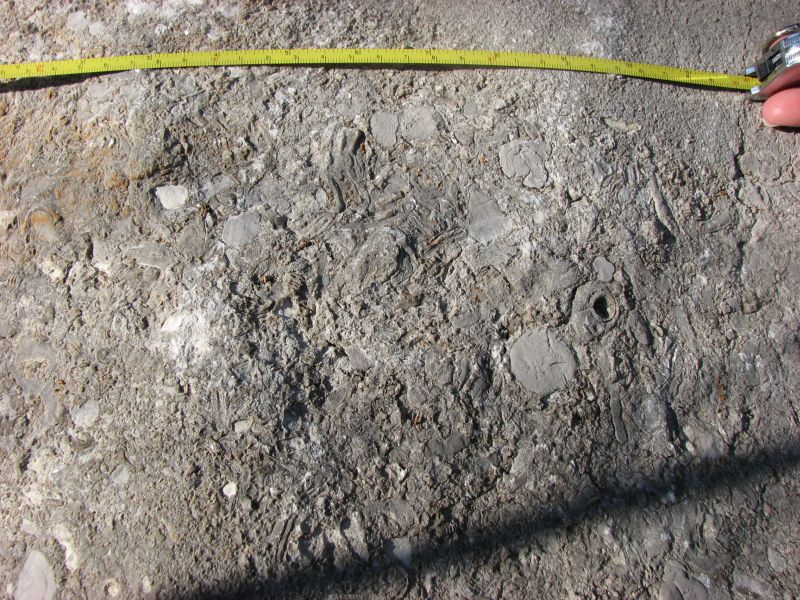

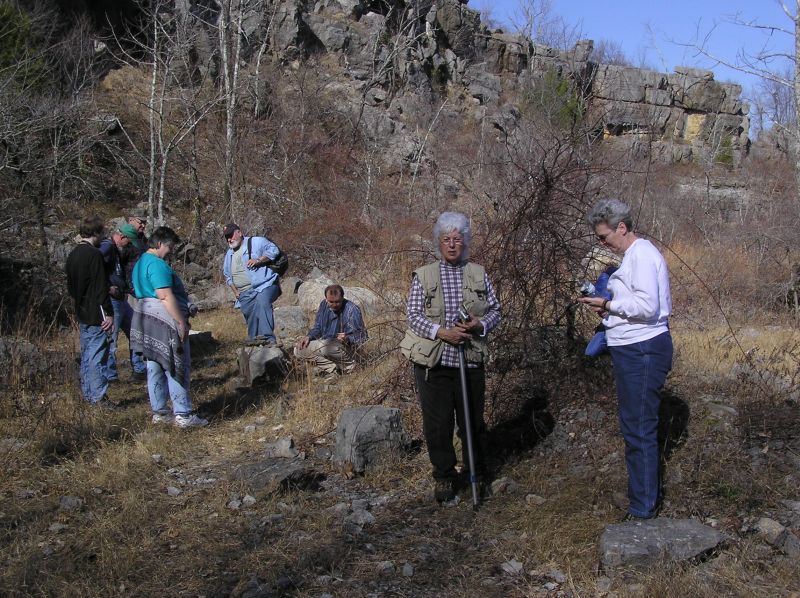
Taking a break.
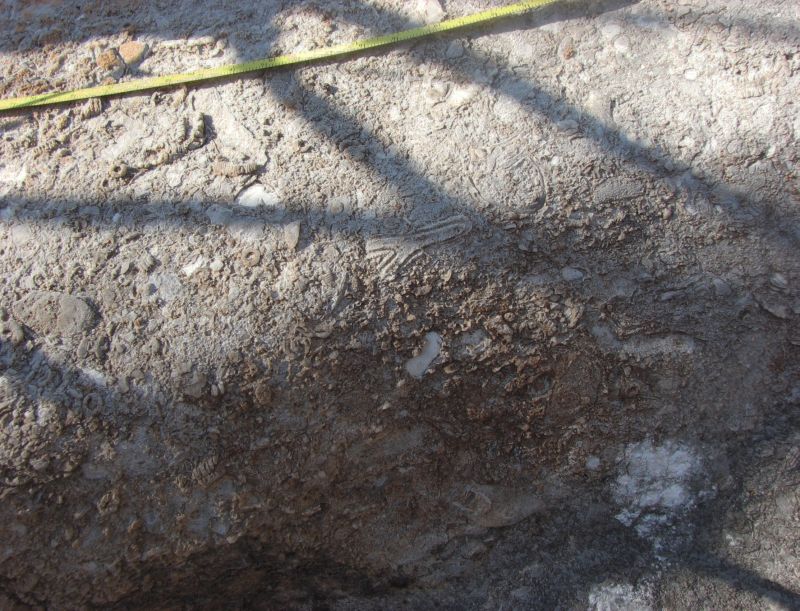
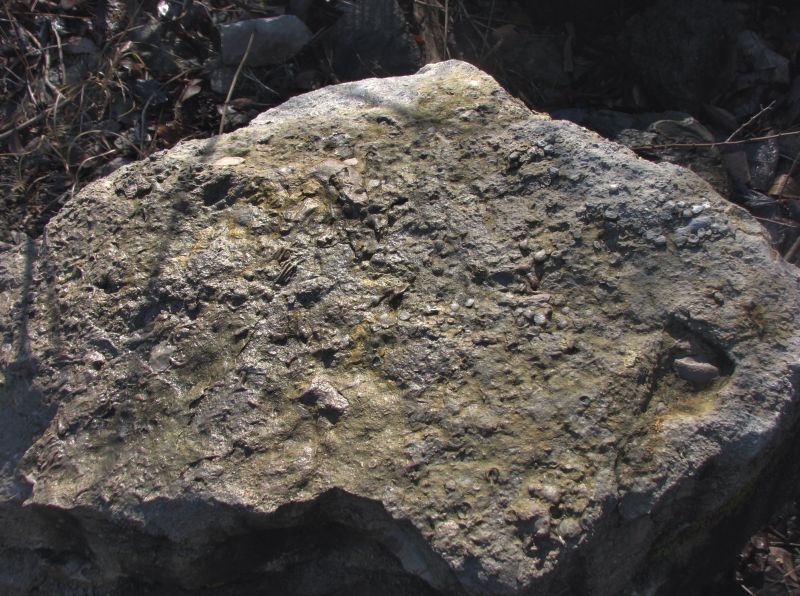
This is the rock/boulder that has been etched so that more fossil material is visible.
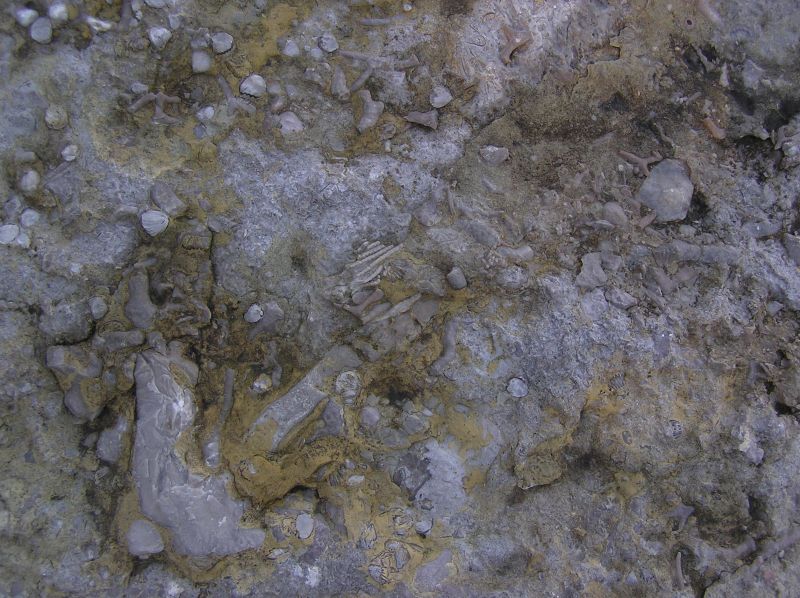
A closer view.
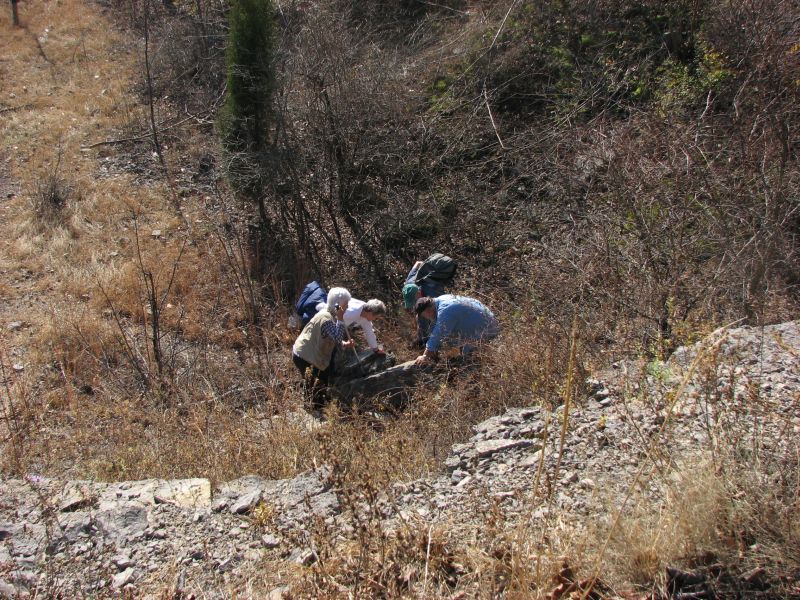
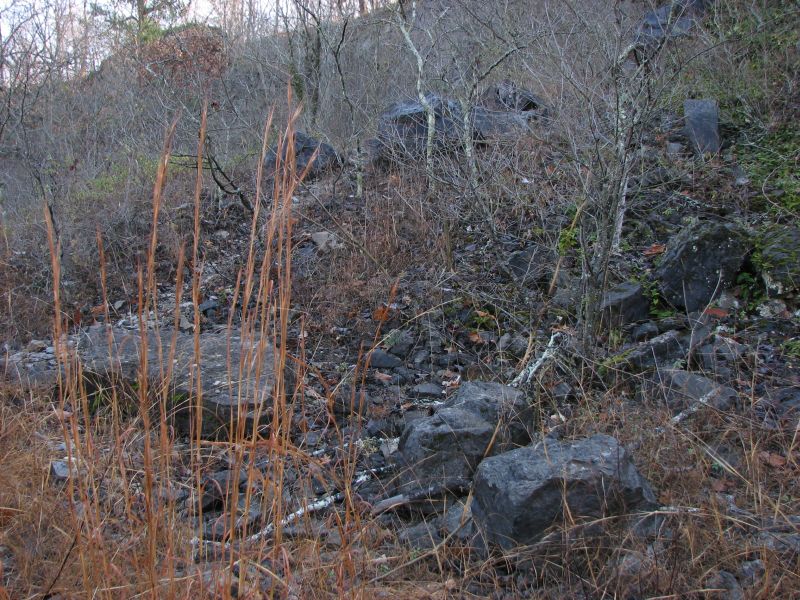

This odd looking fossil had us speculating, but according to Dr. Phil Novack-Gottshall, it is a crinoid stem with very regular cirri.

A macro view of the unusual crinoid stem.
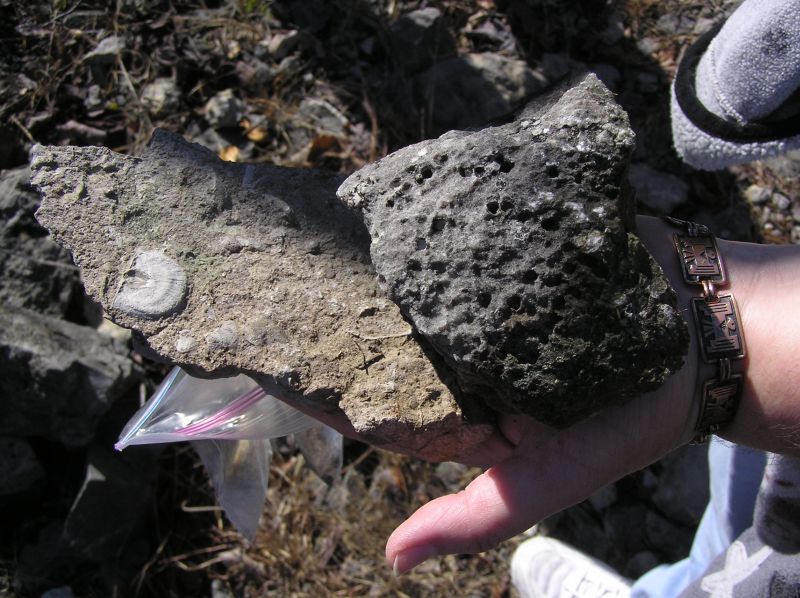
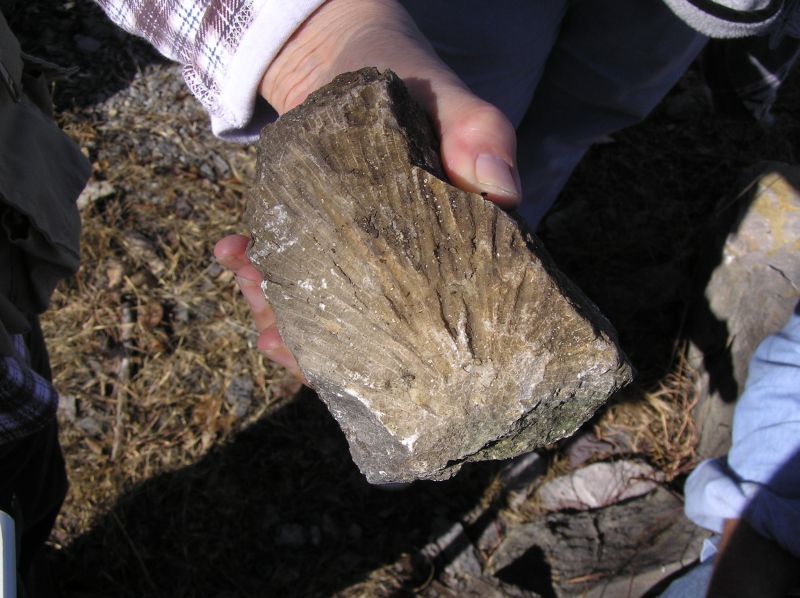

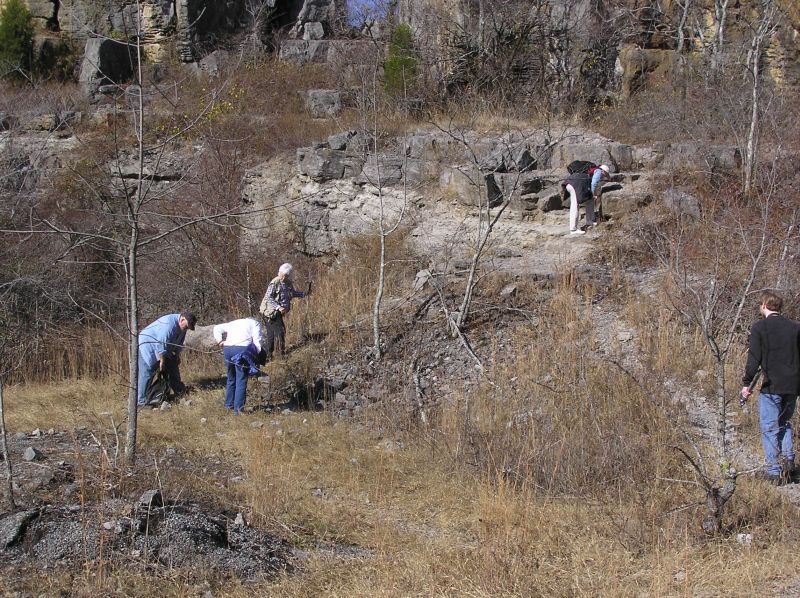


2005
February 5, 2005 - Cambrian Fossils, Cherokee Co, AL
This year we decided on a boat trip to a new, uncollected area of the lake, where everyone found a plentiful supply of trilobites. The water level was up higher than expected, due to the recent rain, but the area where we collected had a very wide beach, so the water level was not an issue. Shown in the pictures are the best samples, though there were numerous specimens of tiny trilobites, no more than 1/4 inch long, and some rocks were covered with these small ones (ask Clare how much a 5 gallon bucket of rocks weighs!). Though there was shale covering the ground in many locations, we focused on collecting nodules. This site is from the middle Cambrian Conasauga Fm. Albertan stage, approximately 530 million years old. Cephalon (heads), pygidium (tails), and several whole specimens of the following were found: Coosella, Coosia superba, Kingstonia, Densonella, Holcacephalus, and Norwoodella. Also found were a number of "Brooksella" which are believed to be the internal mold of a "primitive jellyfish", possibly from the Conasauga Fm, Dresbachian stage, late Cambrian approximately 515 million years ago.
Late in the day, some of the diehards in the group proceeded to another site we checked out last year, to see if more of the larger triloibites (possibly Tricrepicephalus) had weathered out. Alas, the water level was too high, and all we collected were shots of the rock formations, and a great sunset. What a pleasant way to end the day!
(pictures courtesy Lea Martin and Vicki Lais)
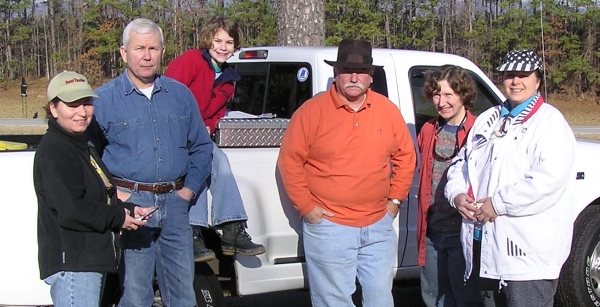
Most of the group, waiting on the rest of the crew in the parking lot.
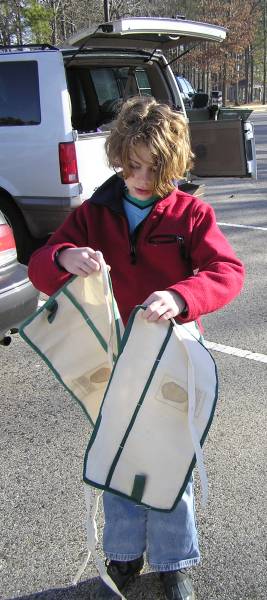
Paige's mom (Lea) made pouches with the BPS logo to collect the finds of the day.
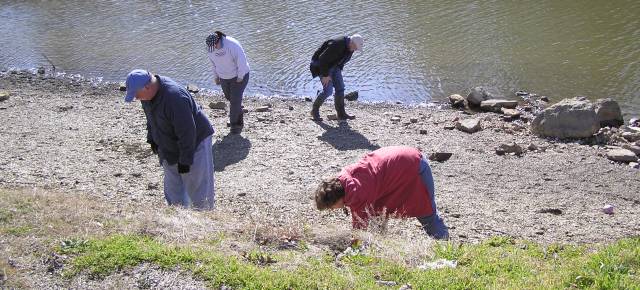
Hanging out at the boat ramp, and of course everyone has to search, just in case. Paige did find a nice trilobite, almost whole, see the "hands" picture below, the 3rd hand down on the left.

On the way again with Captain Steve . . .
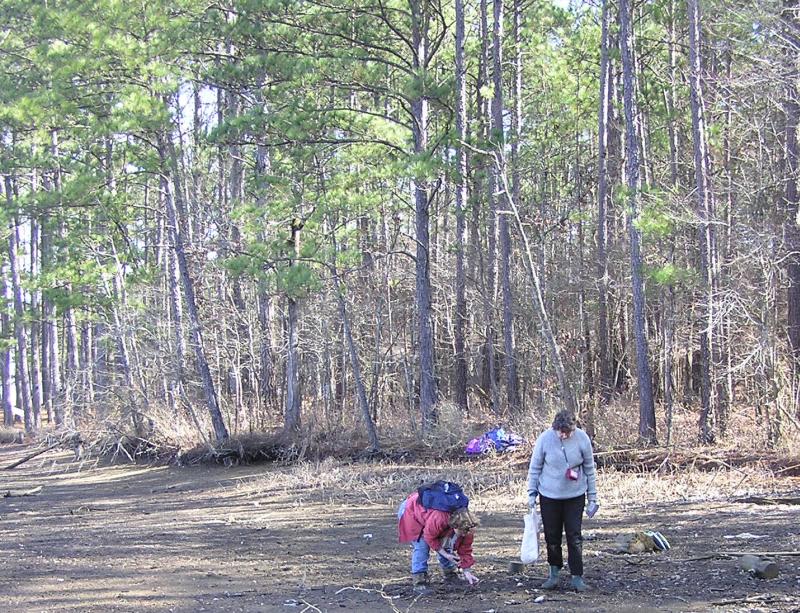
Claire and Nancy hoping to spot the "big one"!

Nancy found a nice brooksella!

Everyone scattered along the shoreline after we landed.

So many rocks to turn over, so little time!
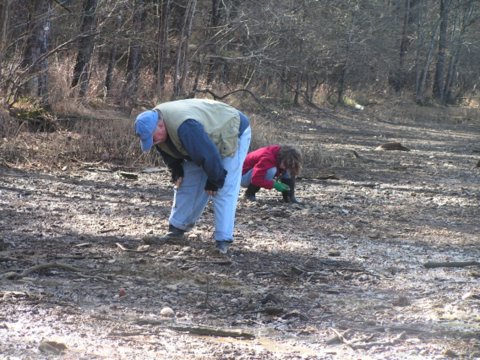
Greg and Paige.

Paige and Nancy show off their brooksella specimens.

Wide but muddy shoreline provided lots of collecting space.

Leisa found several brooksella.

Various members found some nice specimens throughout the day.

With so many rocks, the trilobites are difficult to spot.. Look closely in the center.

Wished I had lined everyone up, Claire's boots are relatively clean at the end of the day! Note the small pieces of shale covering the ground, there was so much, it was almost like a carpet in places. We collected very few fossils in this thin shale, it is very fragile and difficult to transport without crumbling, and there were plenty of nodules to examine.

Vicki with her bag of rocks (and many more pounds in the backpack!)
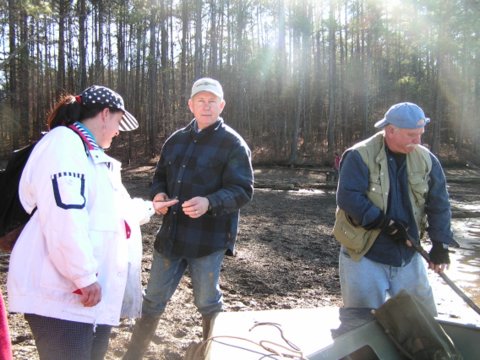
Leisa, Steve, and Greg get ready to head back, after a very nice day of collecting.

The prize of the day goes to Greg, who found this wonderful specimen on the scouting trip.

Same specimen from a different angle.

Specimens after cleaning. The shine is from a protective coating of Elmer's Glue and water solution.
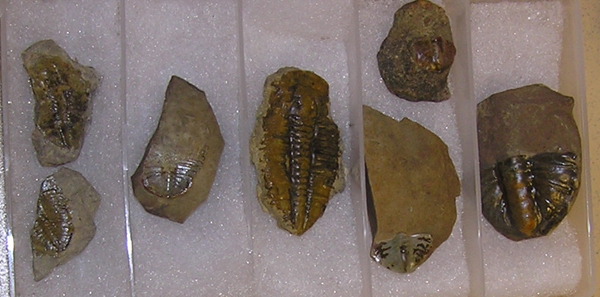
More samples shiny with protective glue.
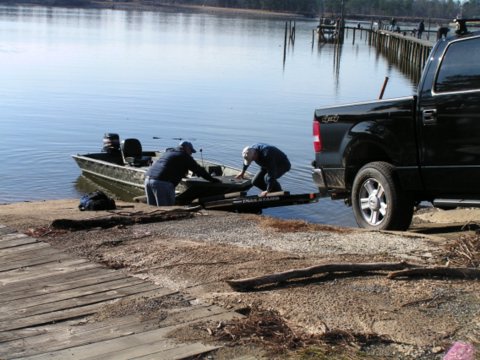
Thanks, guys, it was a fun trip!
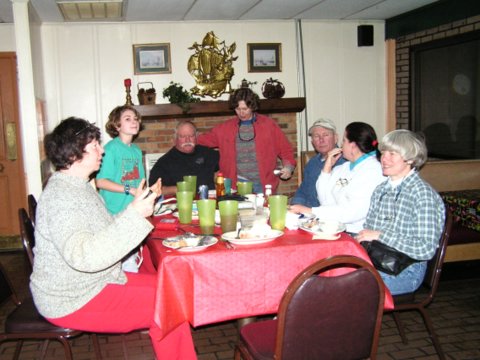
We must fill our bellies before that long trip home! The food and company were excellent!
A few members went to another site to check for larger trilobites, but the water level covered the collecting area. Instead, we studied the geology.

This interesting bluff shows where the river has deposited layers in smooth bands over thousands of years.

We have been told these are snail attachment points. The odd marks cover many of the rocks in the area.
A beautiful sunset to end the day!


March 19, 2005 - Cretaceous Fossils, Greene Co, AL
(Photos courtesy Steve Corvin and Vicki Lais.)

Getting to know you . . .
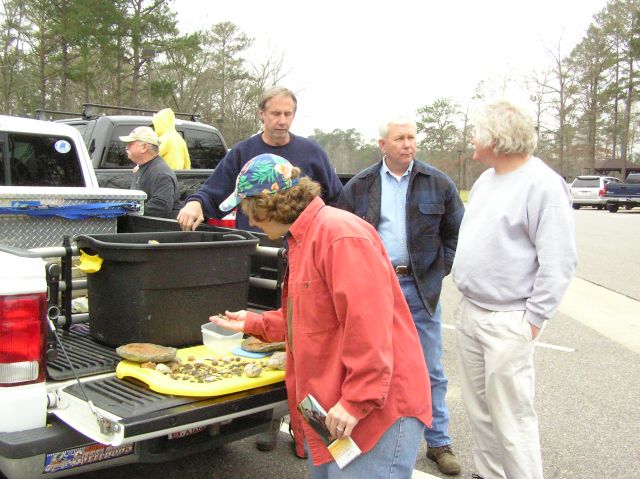
Checking out the show and tell.
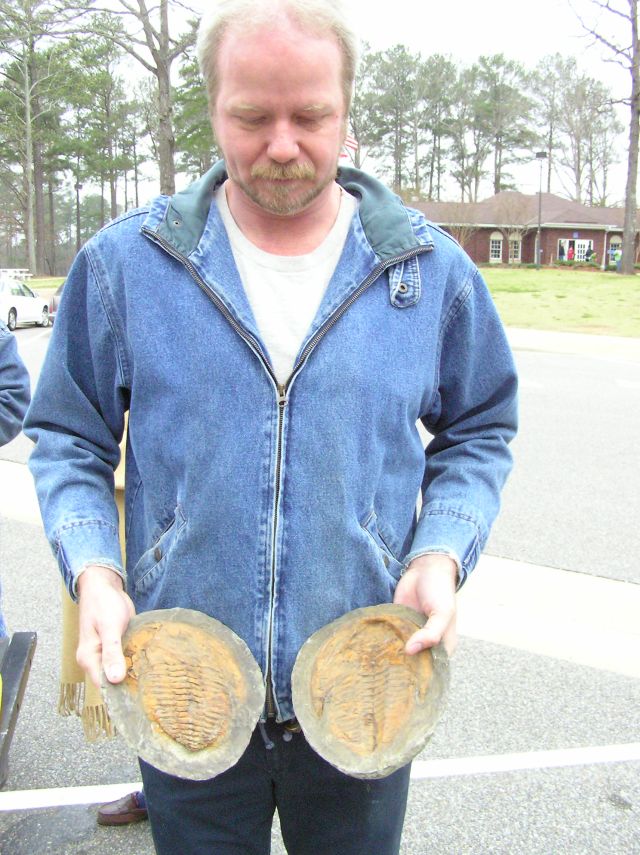
No, it didn't come from last months Cherokee County trip, dang it!
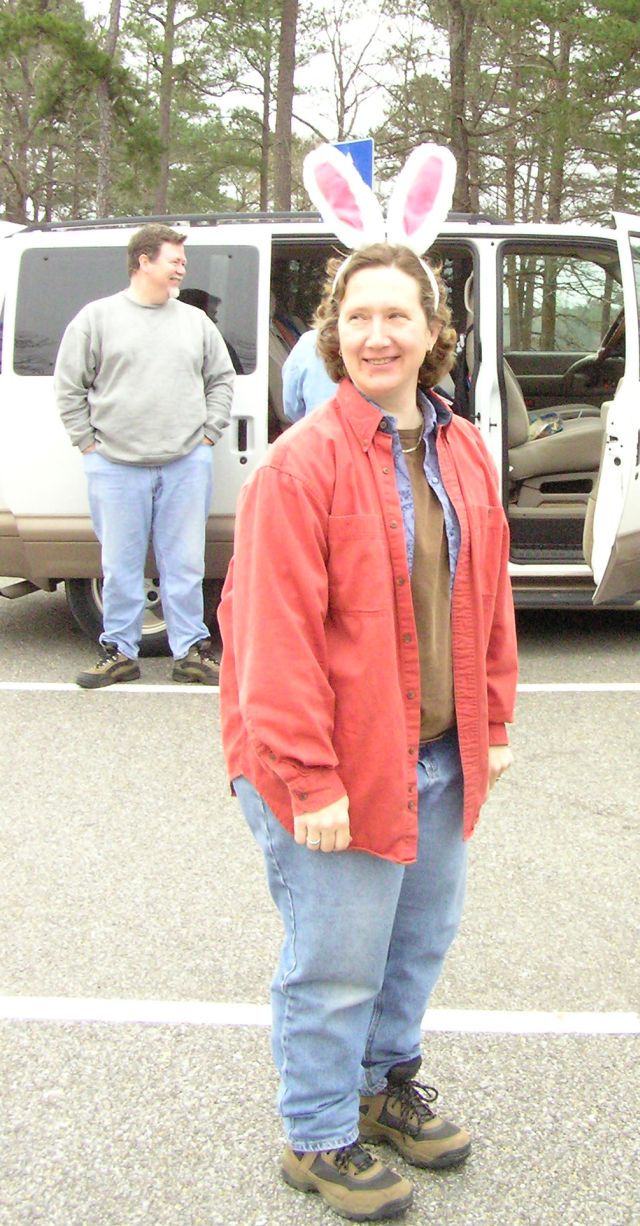
Even the Easter Bunny came!
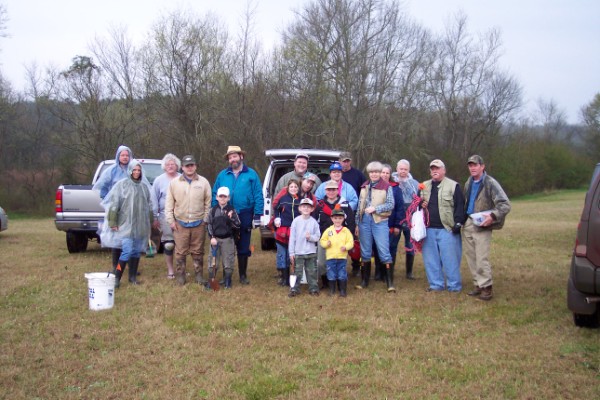
Arrival at the collecting spot (+ Steve, behind the camera!)
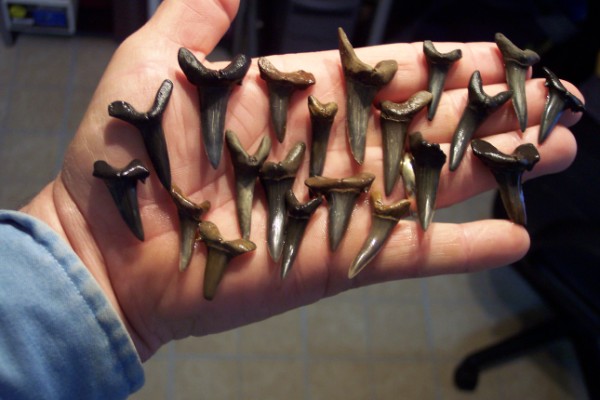
Some of Steve's finds.
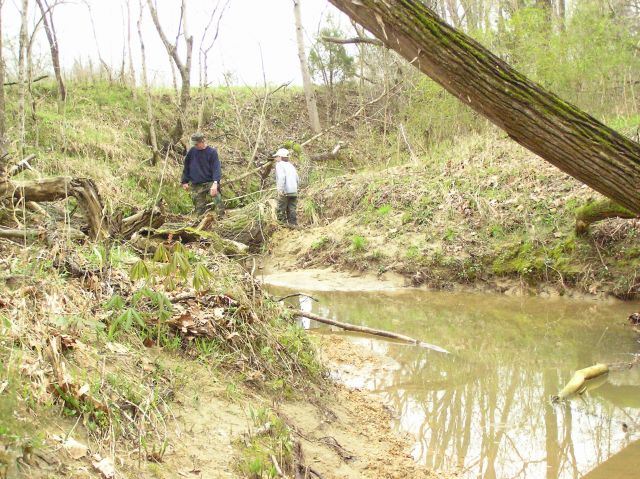
Bobby and grandson Noah.

Lea and Paige, dilligently searching for more shark teeth. What's in your bucket, Paige?

Some of Paige's finds.
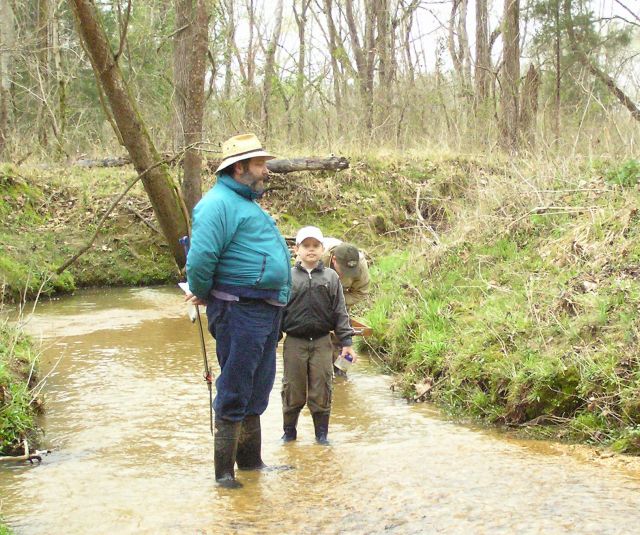
Carl and grandson Daniel, enjoying the day.

Claire, Leisa, and Bill. Notice the variety of "tools" being used.
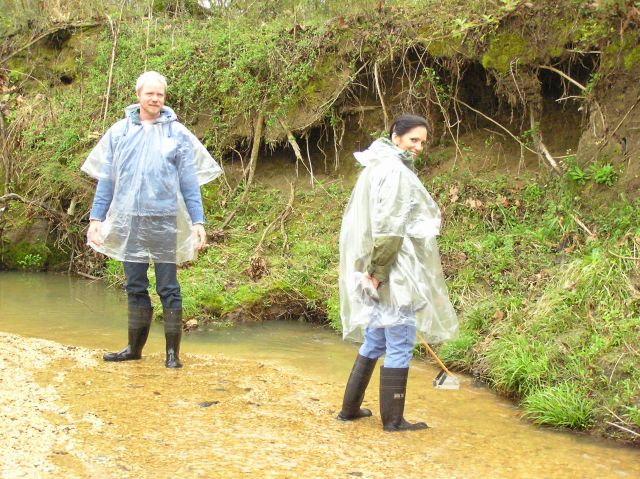
Ramsey and Sarah came prepared!
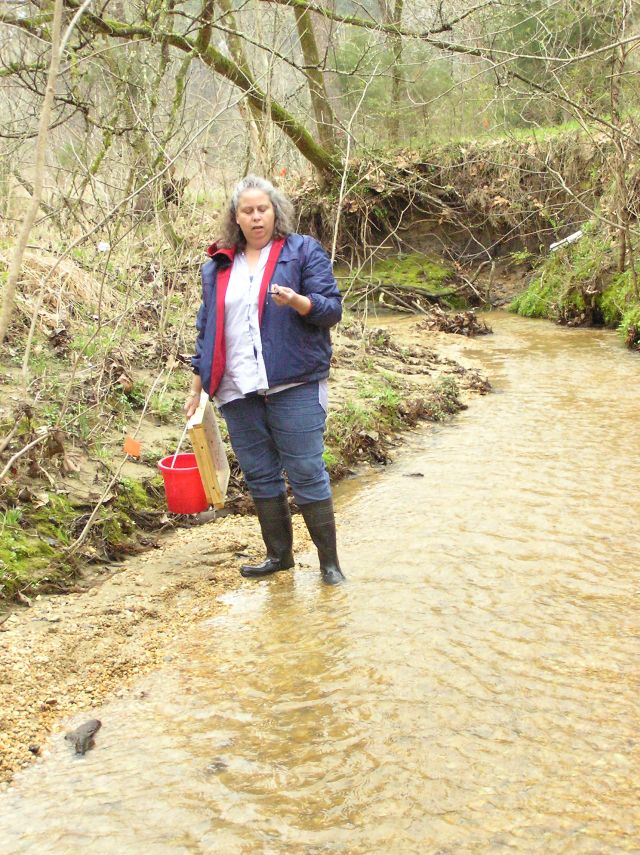
Marjorie examining a recent find. What's in your bucket?
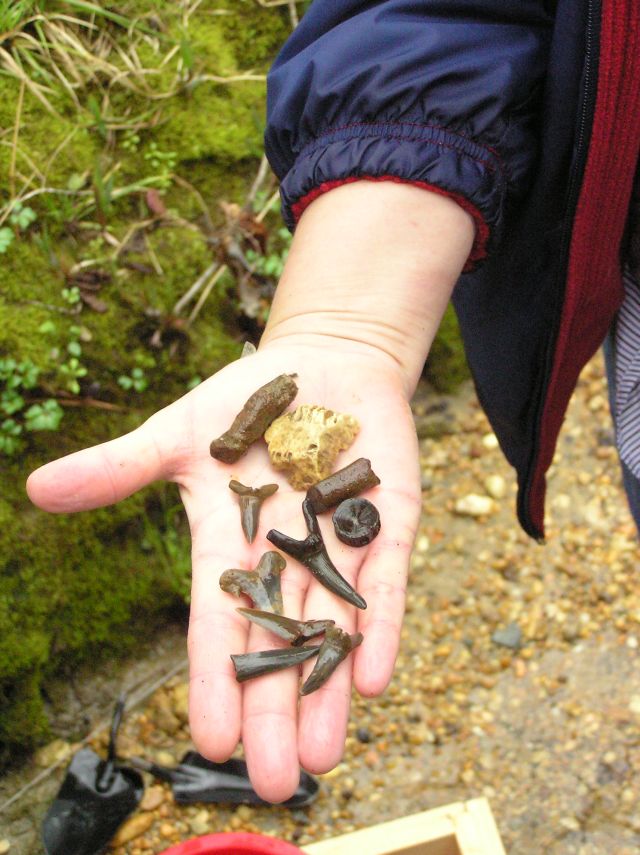
Some of Marjorie's finds. Nice fish vertebra.
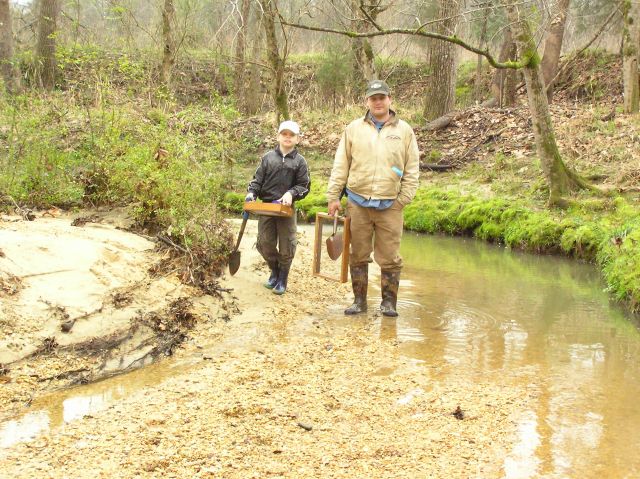
Len and Daniel, way down the creek.
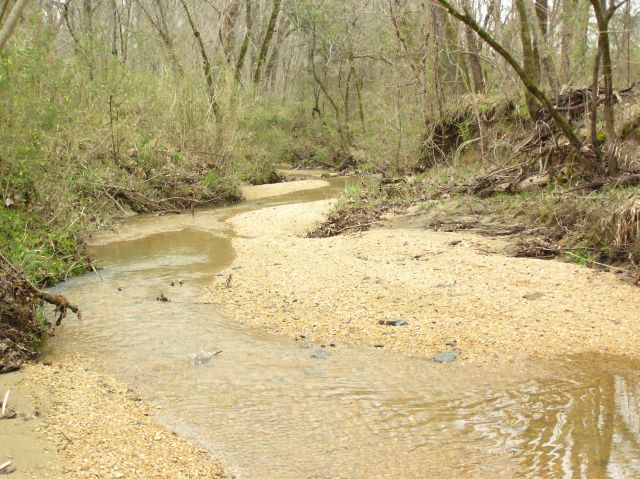
An untouched stretch of sand and gravel bars, no footprints in sight. All Right!!

Mosasaur vertebra found by Vicki, this makes 3, one per trip! Nice find!
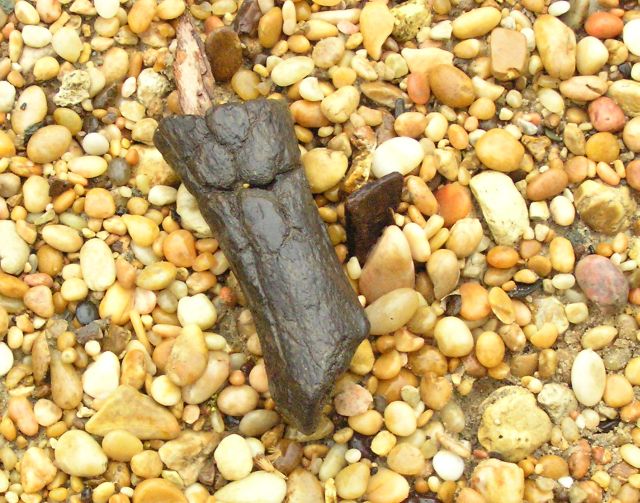
Bone is about 5 inches long along the longest side, possibly plesiosaur. (Vicki plans to call it a plesiosaur until someone convinces her otherwise!)
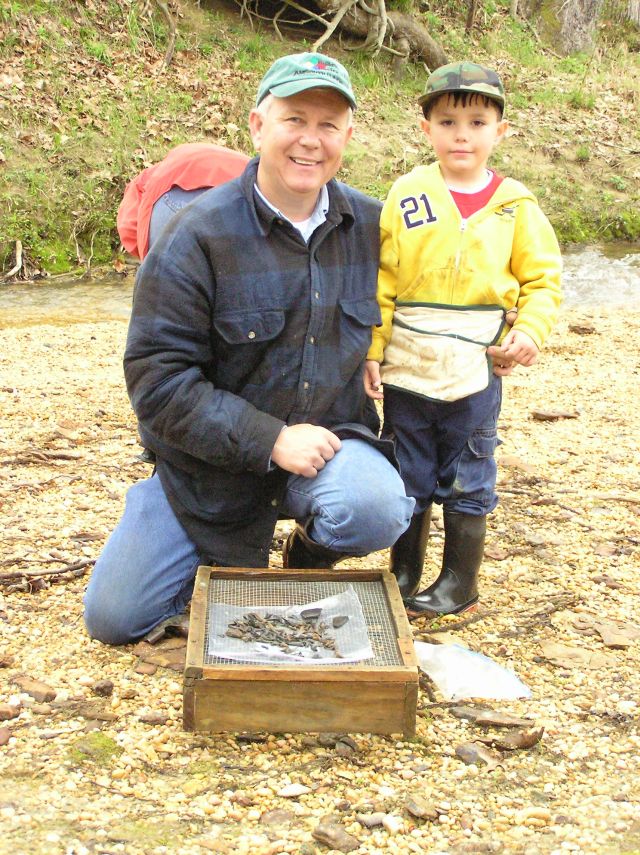
Steve and Steve, with some of their finds.
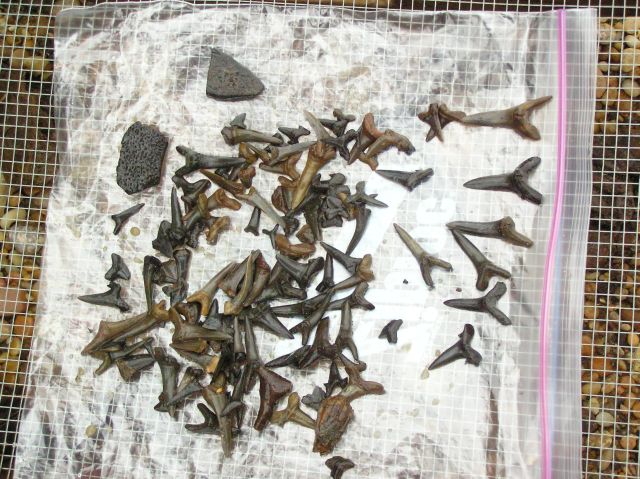
Closer view of Steve and Steve's finds.
April 23, 2005 - Cretaceous Fossils, Sumter Co, AL
Steve was spotted tooling around in the boat, looking as if he planned to go way down to a place that was difficult to walk to, so Vicki stuck out her thumb and she and Paige hitched a ride. A very exciting time getting into that boat from a cliff face! Claire decided not to try the boat trick, but decided to risk walking along the steep bluff. We got there about the same time, and of course were looking for "great treasures". Vicki spotted something that looked "odd" pretty quickly, and it turned out to be part of a large ammonite embedded in a huge boulder that everyone had walked past. We all started hunting around that area, but didn't find the other half. Further down, Steve stuck his hammer up under a rock before putting his hand there to check for fossils. Good thing he did, because a cottonmouth attacked the hammer! After moving away from the snake, we heard Claire squeal. She had found another large ammonite near where the first one was found, and it was almost complete. Steve just shook his head, and declared he would never pick up hitch-hikers again!
A small group took off on a scouting expedition after the trip was officially over. They found a nice shelf area with numerous fossils which were very fragile and easily breakable. So, we'll just enjoy the pictures! Found a number of very nice ammonites, a few shells, and pieces of fossil wood.
A big THANK YOU goes to Captain Gilbert and Captain Steve for the use of their boats!
(pictures courtesy Lea Martin, Claire Smith, and Vicki Lais.)
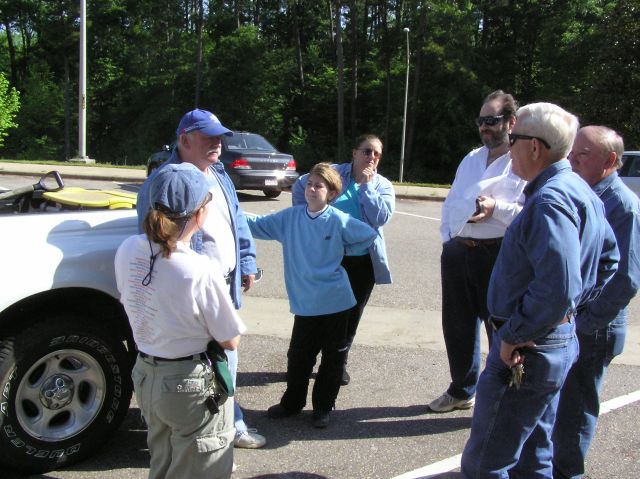
Hanging out waiting for everyone to arrive.

Paige, Leisa, Gilbert, Carl & Vicki popping out the small gastropods and straight cephalopods.
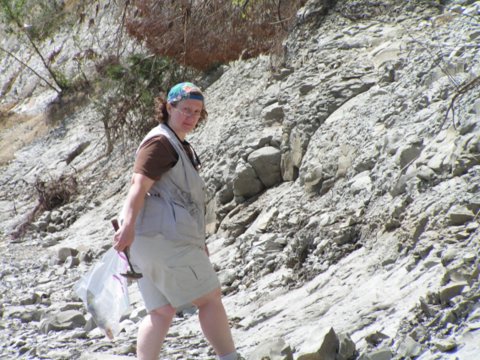
Claire is just getting started.
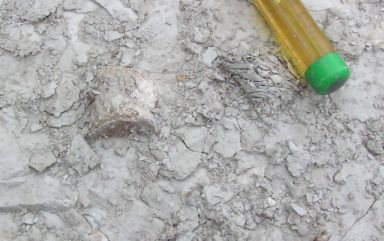
Mosasaur vertebra found by Vicki, quite a distance from the others that were found on the last trip.
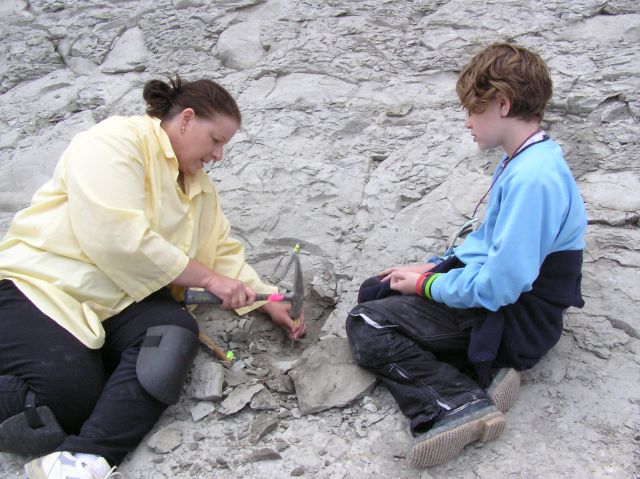
Leisa excavating around a fragile fossil.
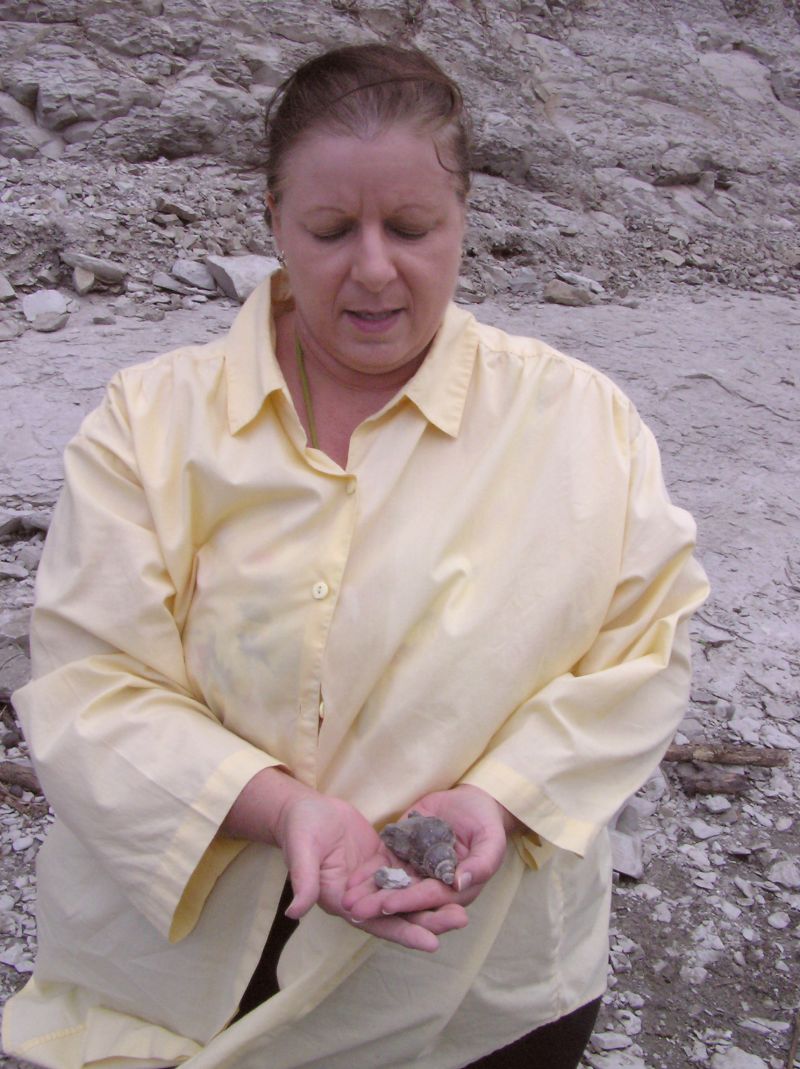
And the nice gastropod she collected.

The chalky shoreline. (Paige isn't tired, just getting a closer look!)
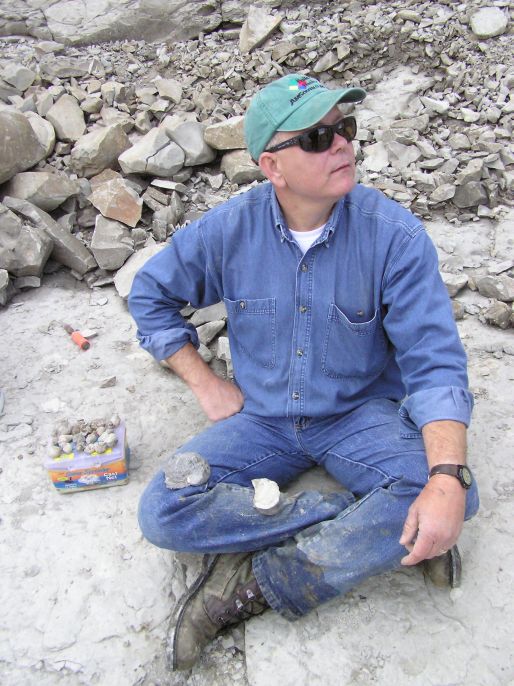
Steve's attention has just been diverted as someone stopped to talk . . .
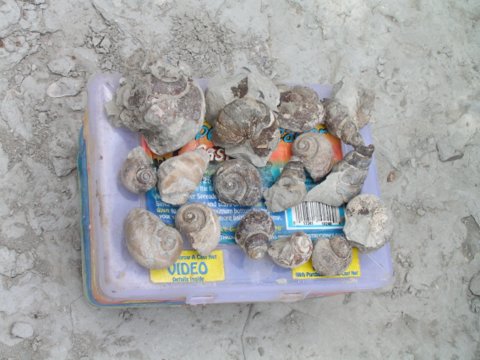
Close-up of some of Steve's finds, mostly gastropods. There is also a nice mosasaur bone in that box.
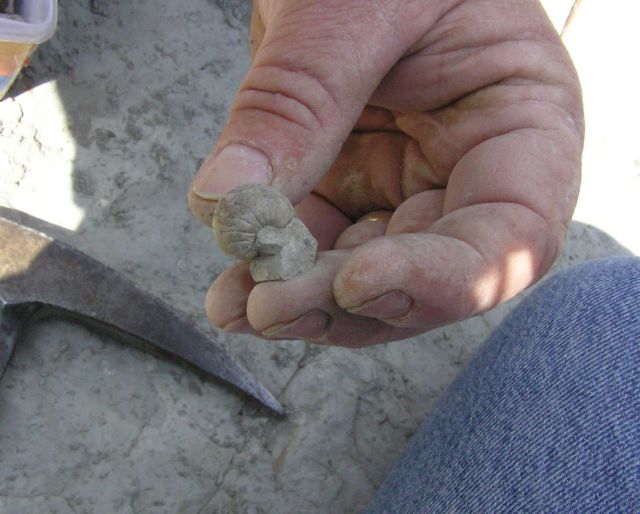
Tiny nautiloid found by Steve.
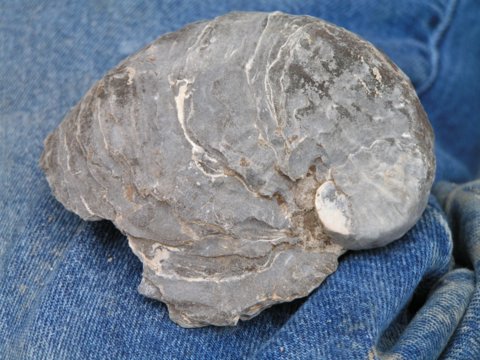
Several Exogira were found.
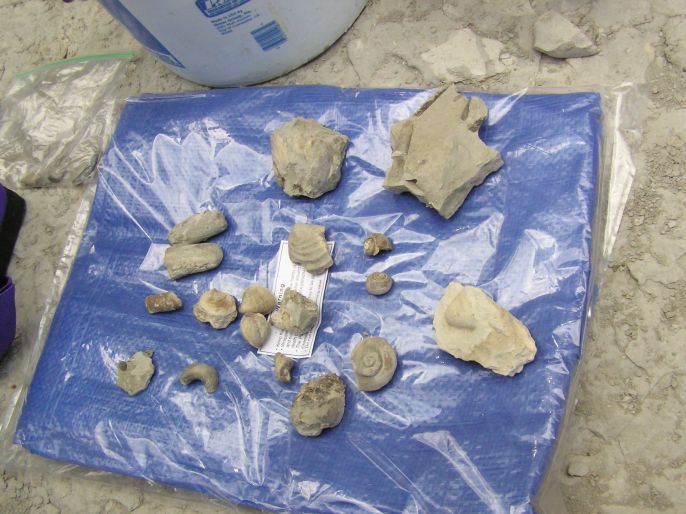
Some of Lea's finds.

Some of Paige's finds.
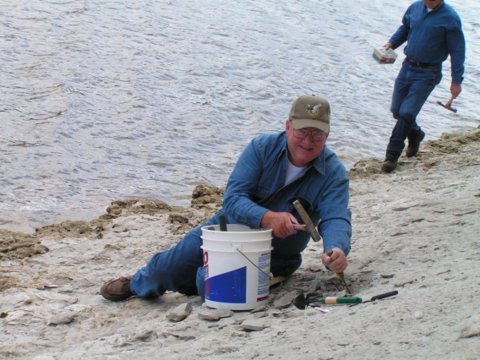
Gilbert has found another one (what, I don't know!)
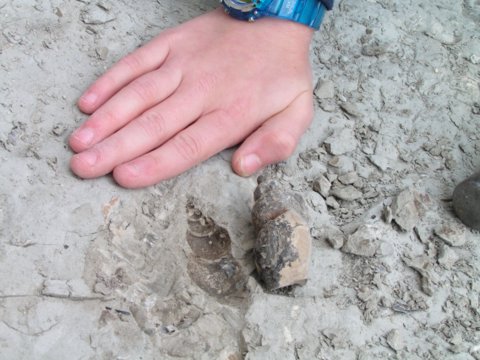
Nice gastropod and the impression it left in the chalk, found by either Lea or Paige.
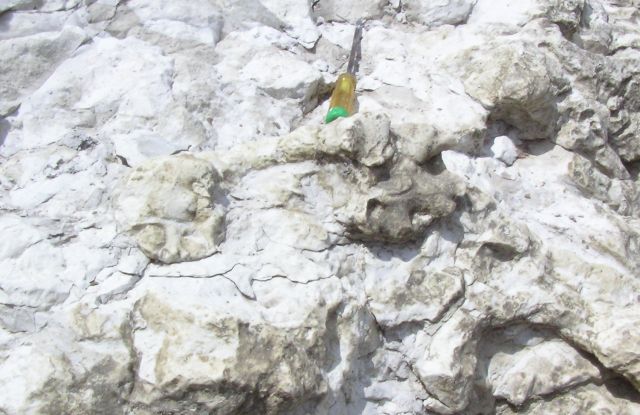
Nice partial ammonite in place. It really blends in with the boulder quite well. Several people passed by without spotting it, leaving it for Vicki to find!
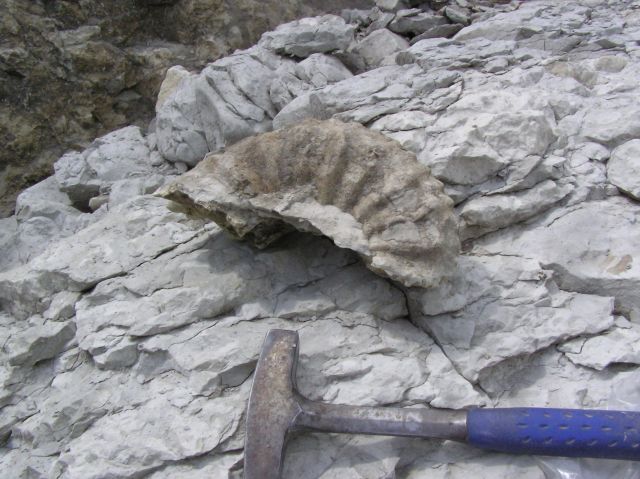
Same ammonite after excavation. This is the bottom that was protected from weathering.
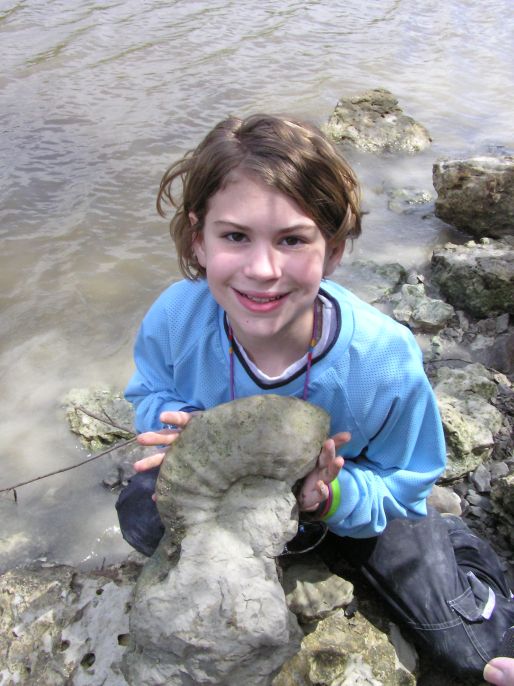
Paige holding an ammonite found by Claire.
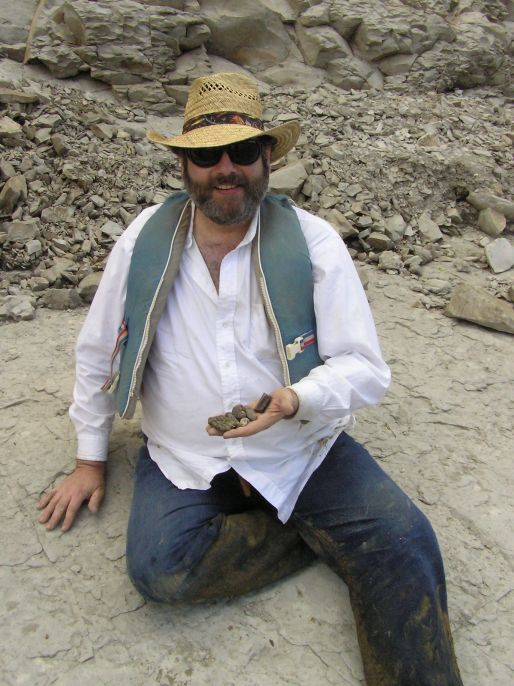
Carl showing off his favorite finds.
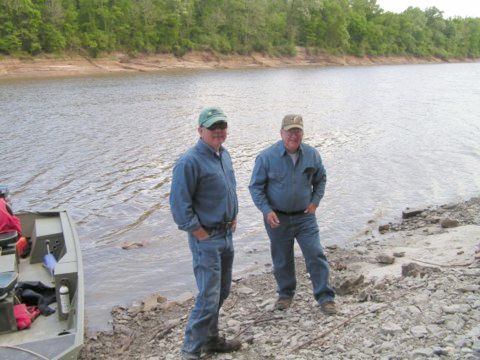
Captain Steve and Captain Gilbert. Thanks, guys!
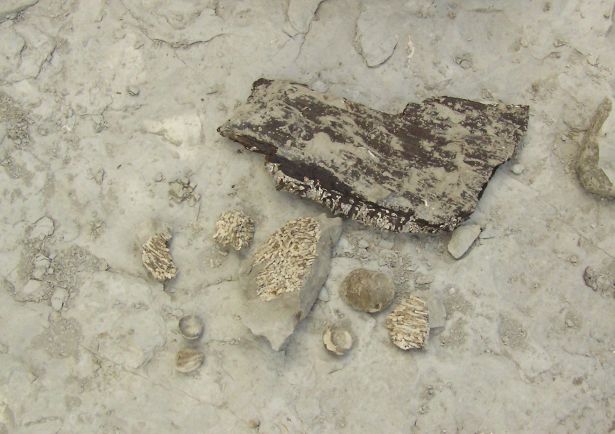
Gilbert found some fossil carbonized wood and a mass of what is either worm tubes or bryozoans.
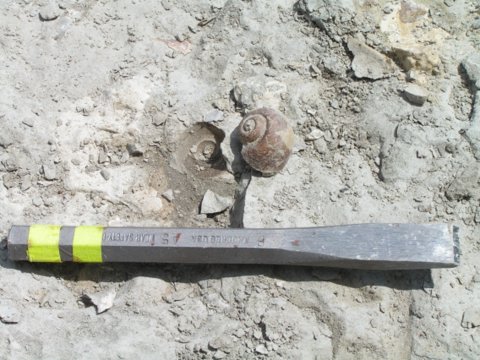
Another nice gastropod and image it left in the chalk.

Shells embedded in the chalk.
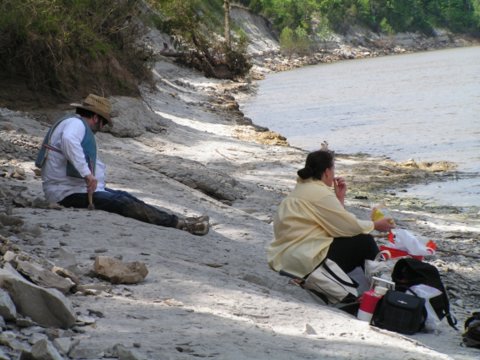
Carl & Leisa, tuckered out after a long day.
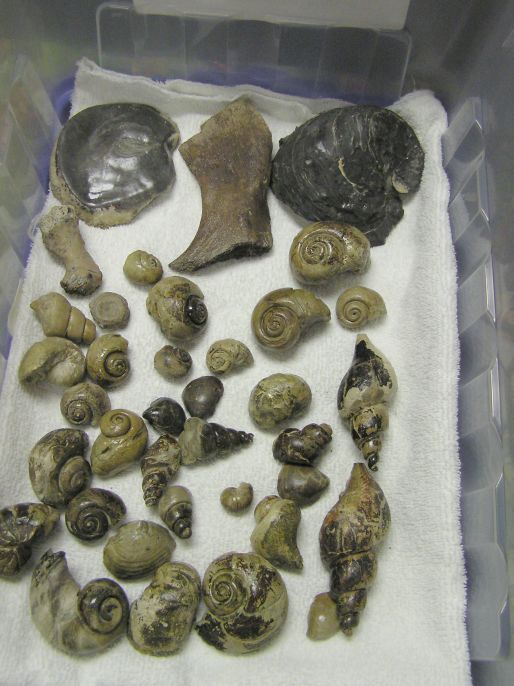
Steve's finds, all cleaned up and protective coating applied.

Nice Ammonite found by Claire (after cleaning)

Another view of the ammonite.
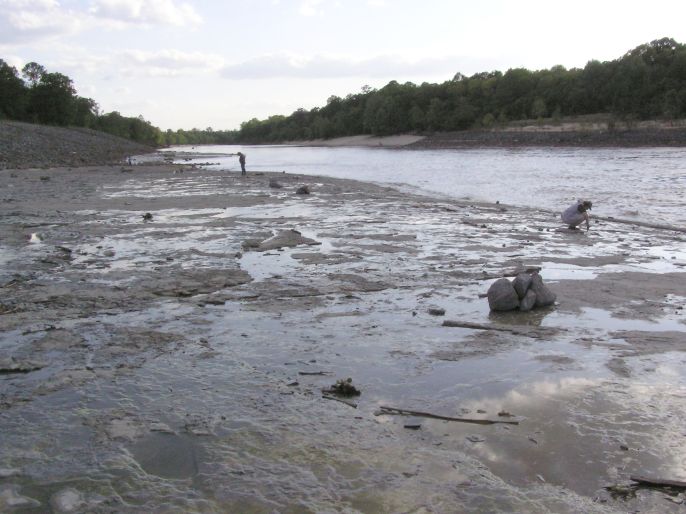
A limestone shelf filled with fossils found in the late evening. Nice to look at, but the fossils were too fragile to collect. Below is our "picture collection".

Nice ammonite.
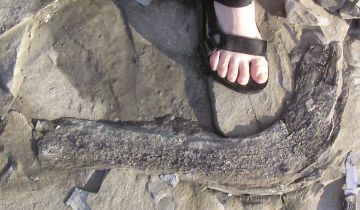
A limb of carbonized wood.
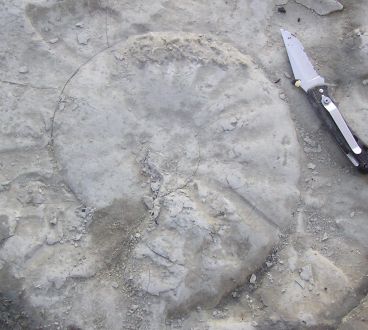
Another nice ammonite.
May 21, 2005 - Cretaceous Fossils, Montgomery Co, AL
A few of the diehards ended up at "The Swamp", a really cool "hamburger joint" on the Alabama river in Selma. The owner is an engineer and designed the building to "float" when the river rises. Normal water level is about 80 feet, and in their 1st year of business it rose to about 120 feet - the restaurant floated!
(Pictures courtesy Dr. Jan Novak and Vicki Lais.)
-
Echinoid in matrix.
-
View of the echinoids, in matrix. Many of them are weathered out, and can be found where the water has washed them into the numerous holes in the shoreline.
-
A weathered out echinoid.
-
Hunting fossils in chalk area.
-
-
Ammonite in matrix. Most of these cannot be removed as they easily break into small rubble.
-
Fossil ammonite
-
Bobby has found a very nice ammonite.
Pages
June 25, 2005 - Cretaceous Fossils, Chilton Co, AL
(Pictures courtesy Lea Martin and Vicki Lais.)

Hanging out at the meeting location, waiting for everyone to arrive.
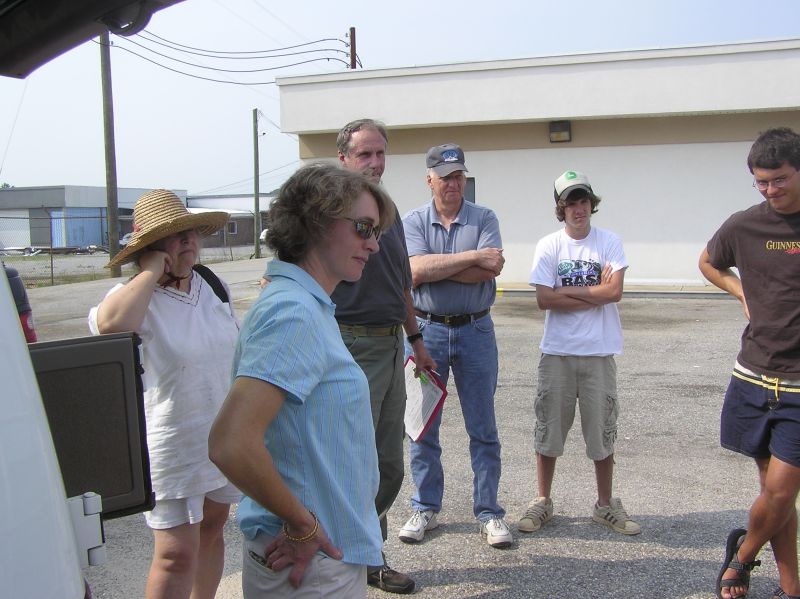
Just hanging out. Claire was busy distributing BPS T-shirts that had been purchased for our fund-raiser.

Vicki and Loni are stretching out the aerial map of the creek, preparing to give an overview of the geology of the area and show the collecting sites to the group.

Our initial view of the creek, checking out the gravel bars.
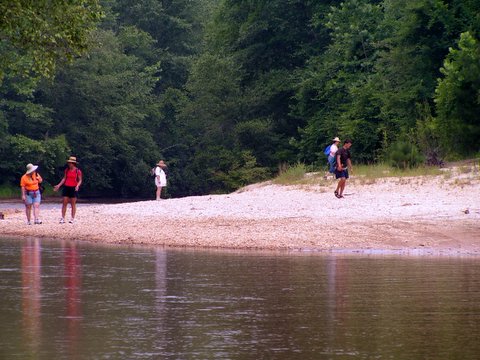

Rick brought a hoe to tease the rocks, which worked very well.
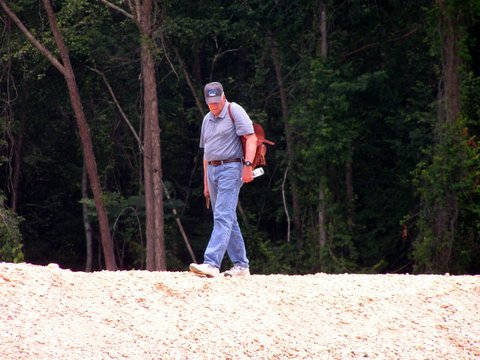
Walking along a large sand and gravel embankment. Roger was visiting relatives in Alabama and decided to join us, and found some nice pieces of wood. Hope your vacation was memorable!
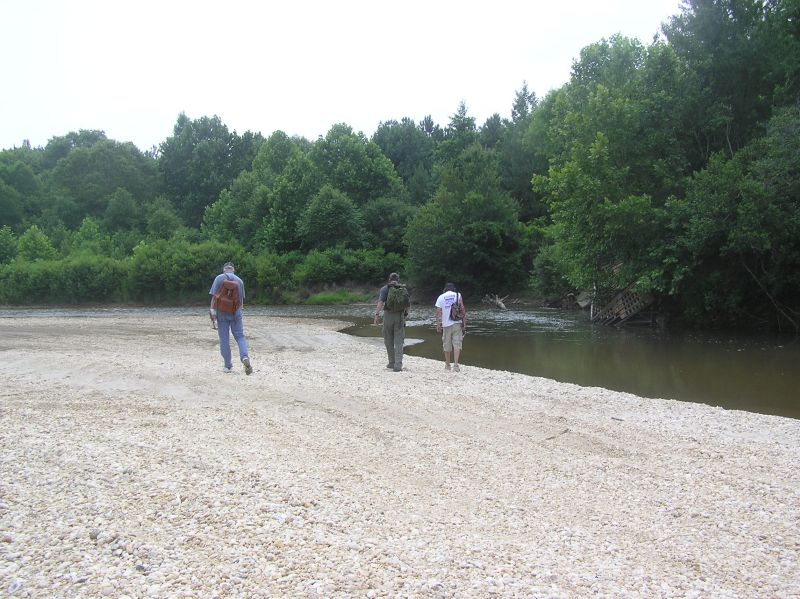
Gravel bars were quite wide in some locations.
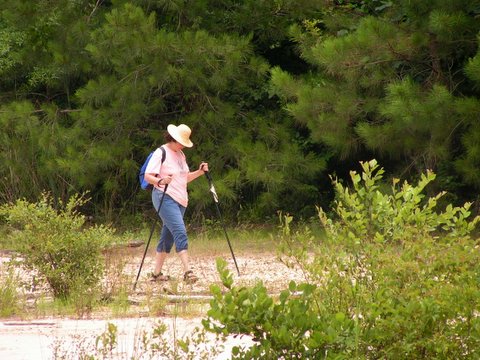
Nancy searching off the beaten path.
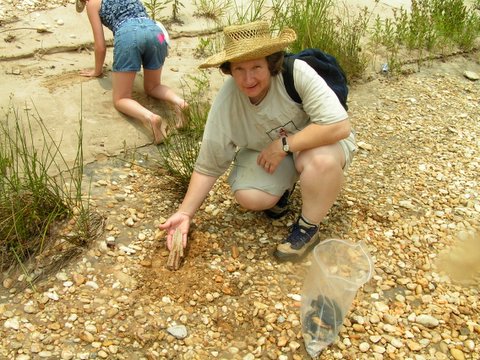
Claire showing off one of her first finds.

A closer look
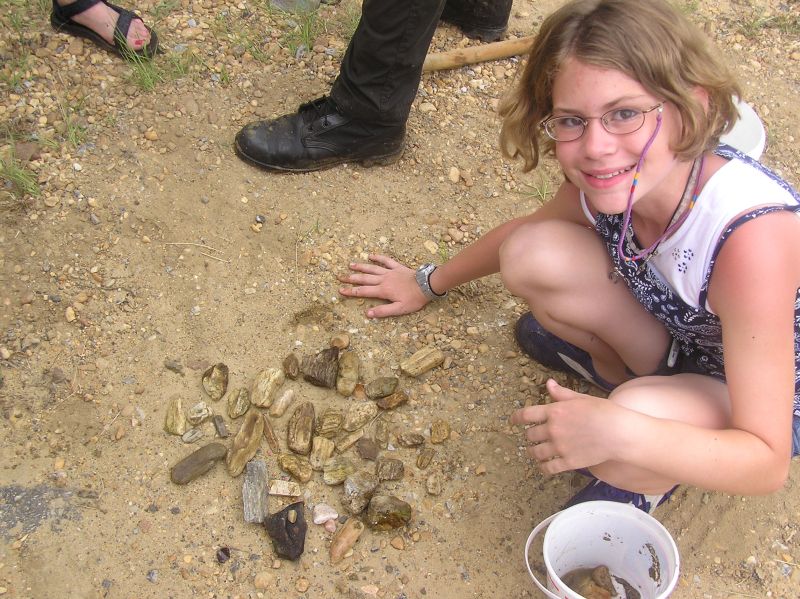
Paige with some of her finds.
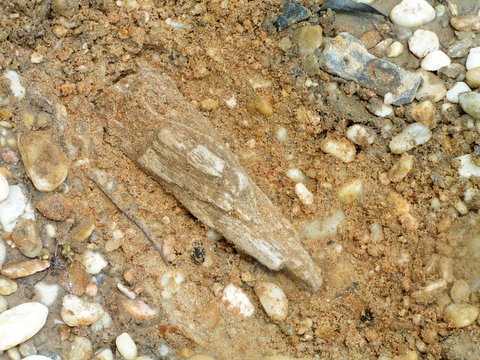
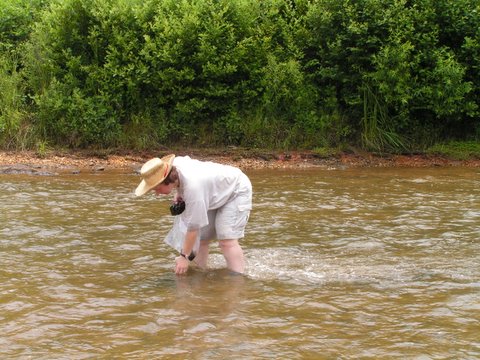
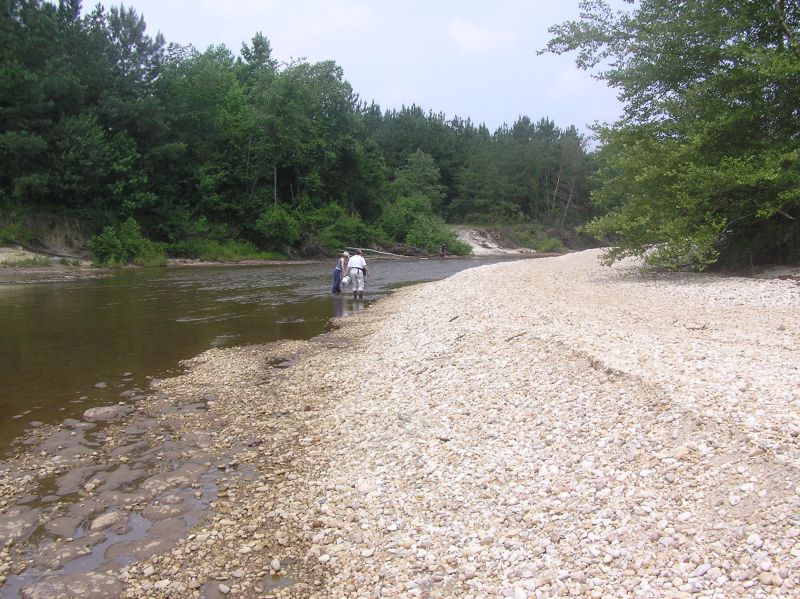
The water looks deep, but in most places you will barely get your knees wet crossing to the other bank.

Rick lives in Chilton county, and obtained permission from the local landowners for BPS members to collect in several spots on the creek. A big thank you to Rick from all of us!
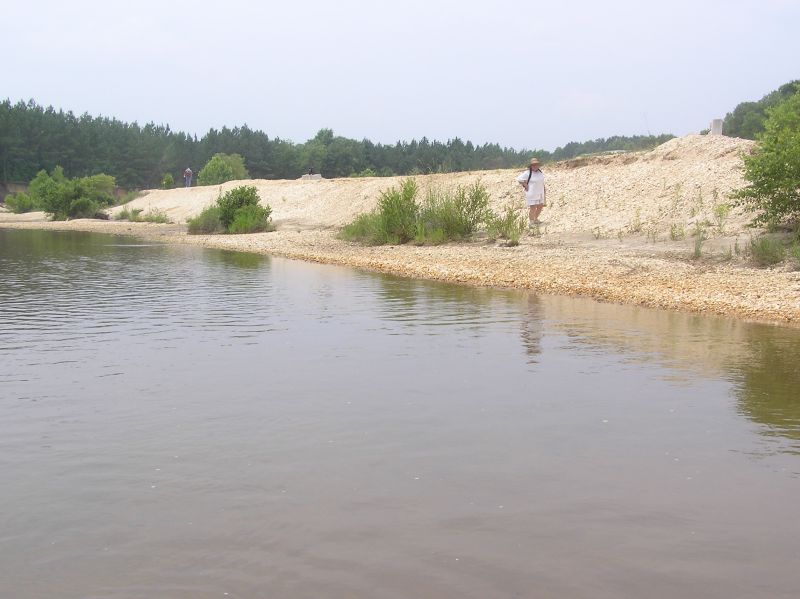
Loni is back after an absence of almost 15 years - Welcome Back, Loni!

This is a view through the water, which is about 1 foot deep at this point. Bottom of sand and gravel looks remarkably like pudding-stone. Some of the better petrified wood specimens were found in the water.
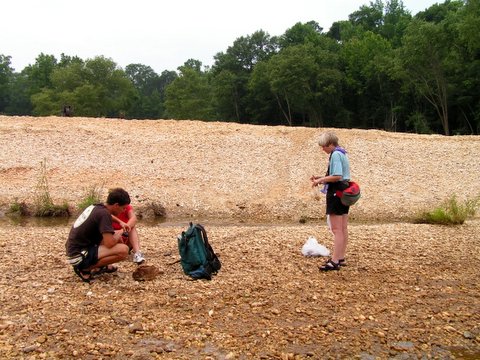
Rychard and Vicki, setting up for a photo op.

This is what we see as we walk along the bank of the creek. Notice how the piece of petrified wood blends in with the pebbles. Also, in many cases, the pebbles are actually very worn pieces of wood, so worn that one would never be able to convince a novice that it really was wood! When one taps pieces of the wood together, it sounds like tapping drinking glasses together.
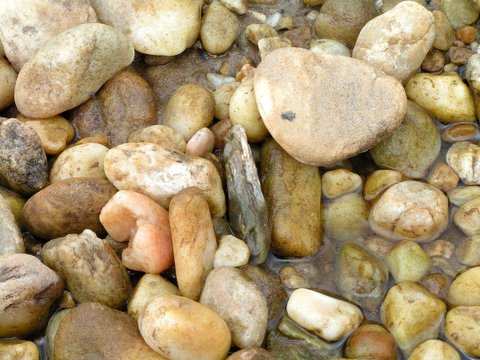
Another piece of petrified wood hidden among the gravel. Some of us also collected the multi colored pebbles.
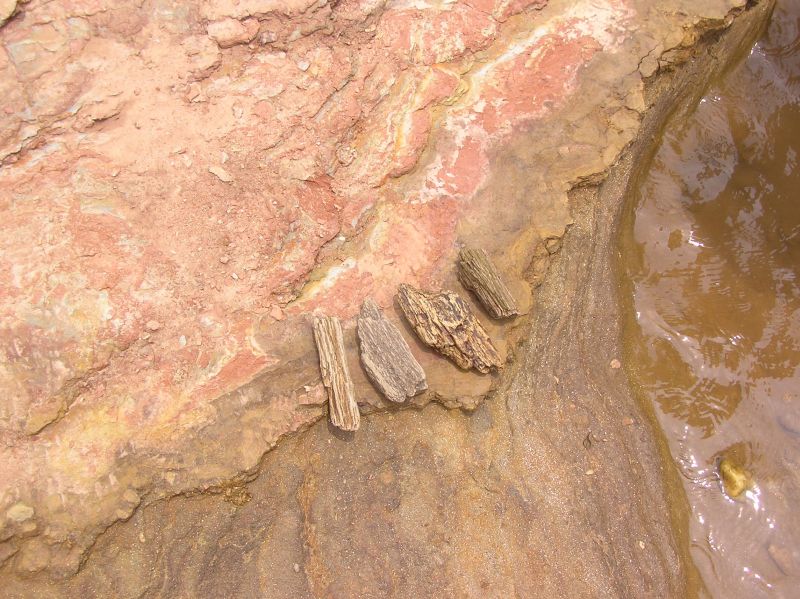
An outcrop of mottled red and pale red-purple clay, an indicator of the Gordo Formation. There are small outcrops in some areas, and other areas are all red-purple clay, with no sand and gravel bars at all. Some parts of the creek bed are also covered in this material, so it is important to be able to see the bottom as one is wading in the creek, as the clay is extremely slick, and you need to walk on the gravel or sand instead.
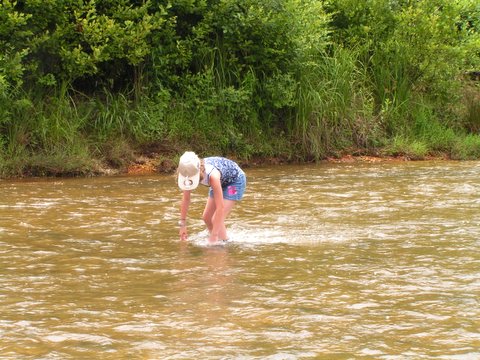
And here goes Paige fishing in the water. . . .
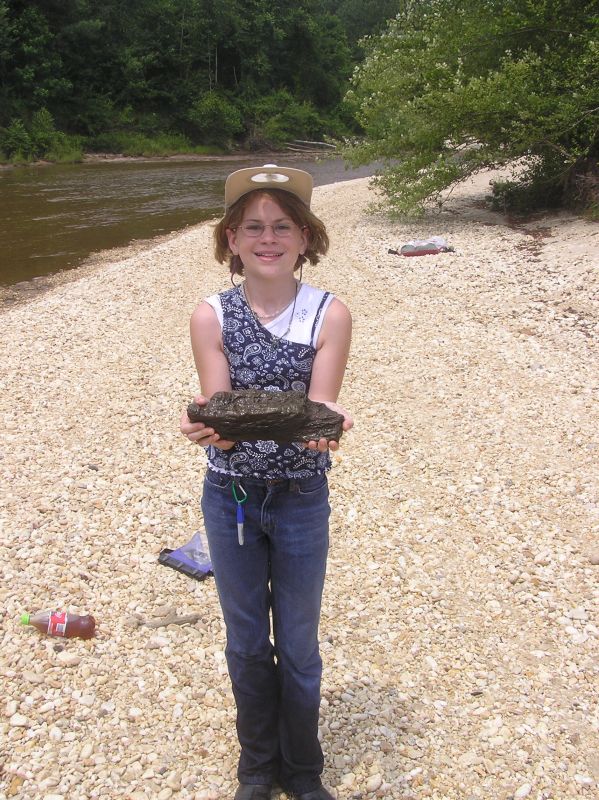
Another nice specimen "caught" by Paige.
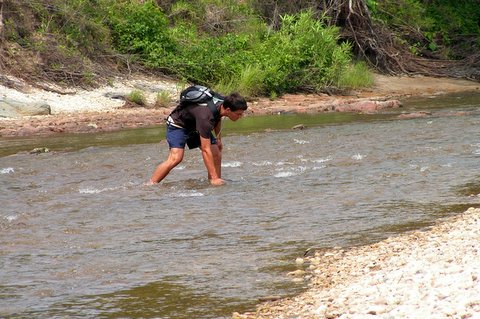
And now it's Rychard's turn. . .

Rychard found some large pieces of wood that were badly weathered.
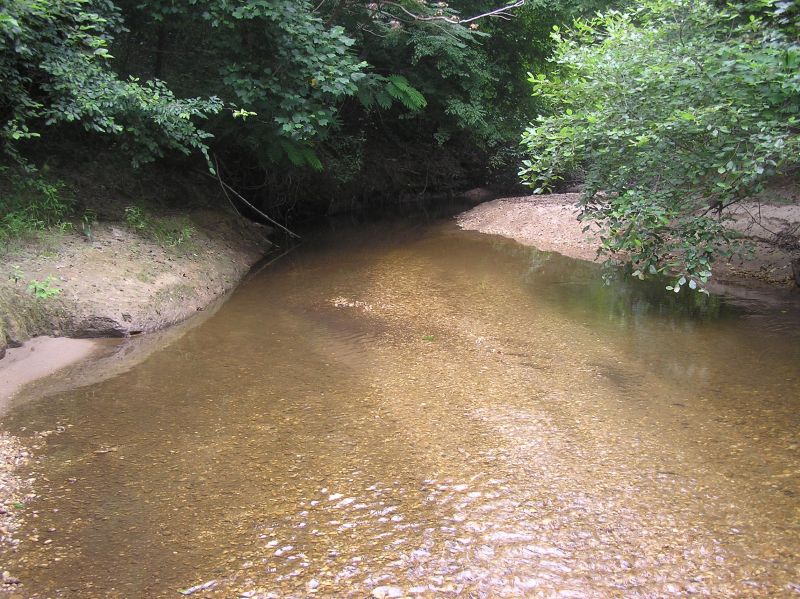
A small feeder creek draining into the main creek.
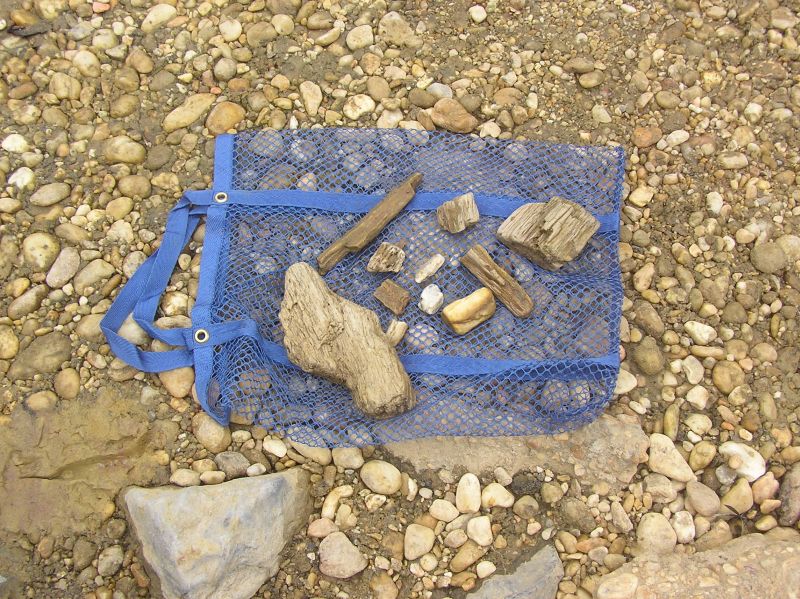
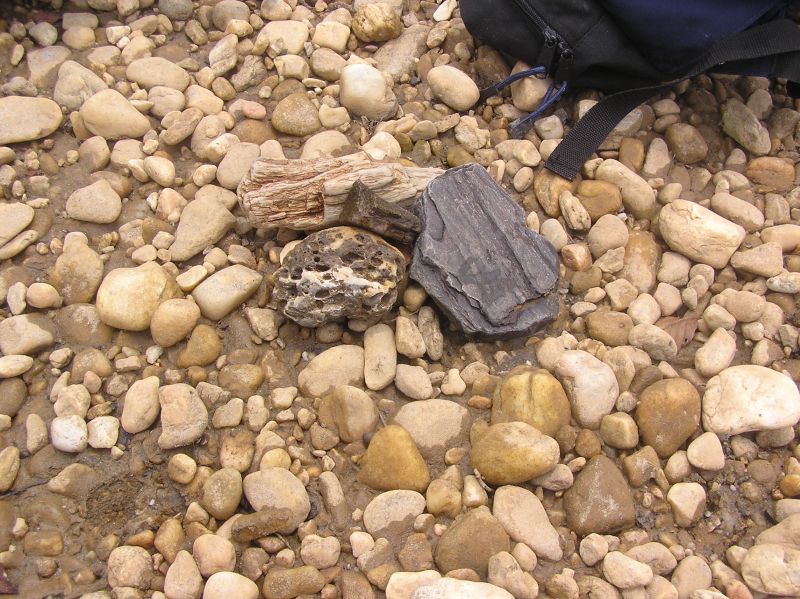
More pieces of wood. This creek location is known for wood, and wood was the only fossil found on this trip.
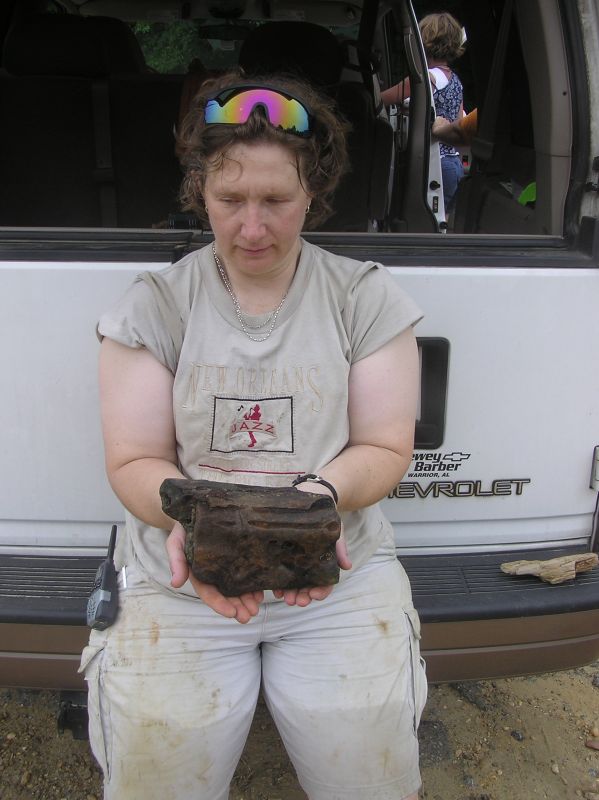
End of the day, plumb tuckered out. Claire with the nice sized section of wood she found midstream (see picture above) And yes, we get hot, wet, dirty, and sweaty on these trips, and have a wonderful time doing it!
July 31, 2005 - Pennsylvanian Fossils, Walker Co, AL
One of the more interesting finds of the day was a young kitten, living in a cave in the wall. It had apparently not eaten in quite a while, as it was nothing but a pile of bones. Several members fed her, and this friendly, loving little kitten now has a good home with Jan and Greg.
(Pictures courtesy Steve Corvin and Vicki Lais.)
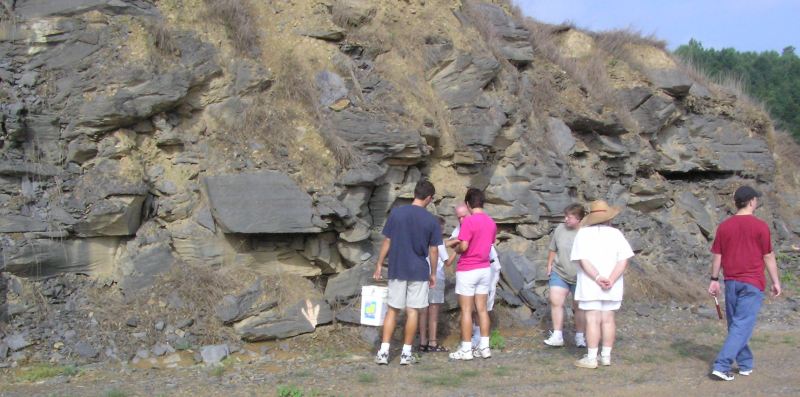
Looking over the site, trying to decide where to start.
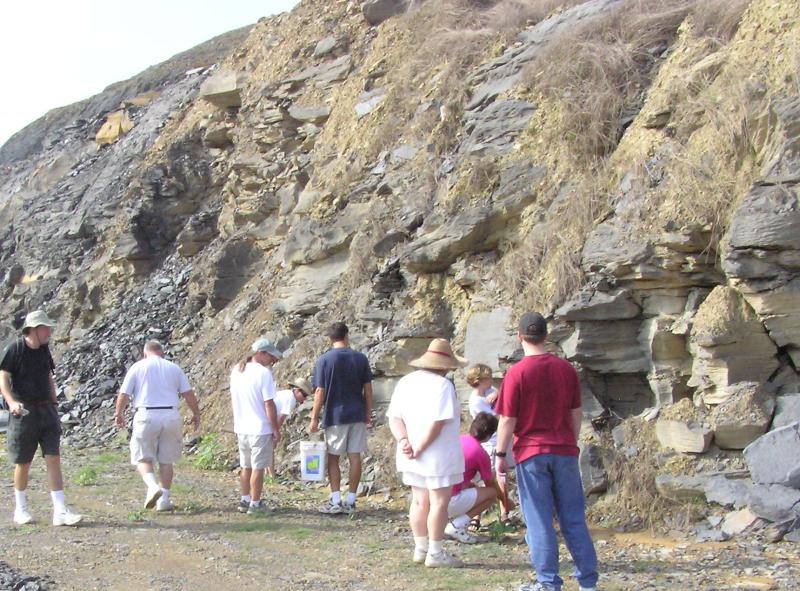


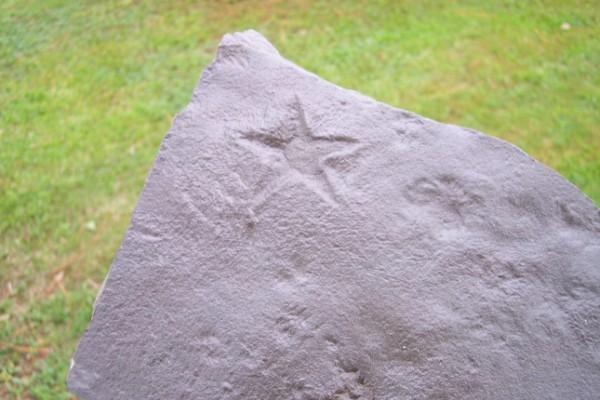
A closer look.

Lea digging through the rubble.

Calamites - an impression and an inside mold.
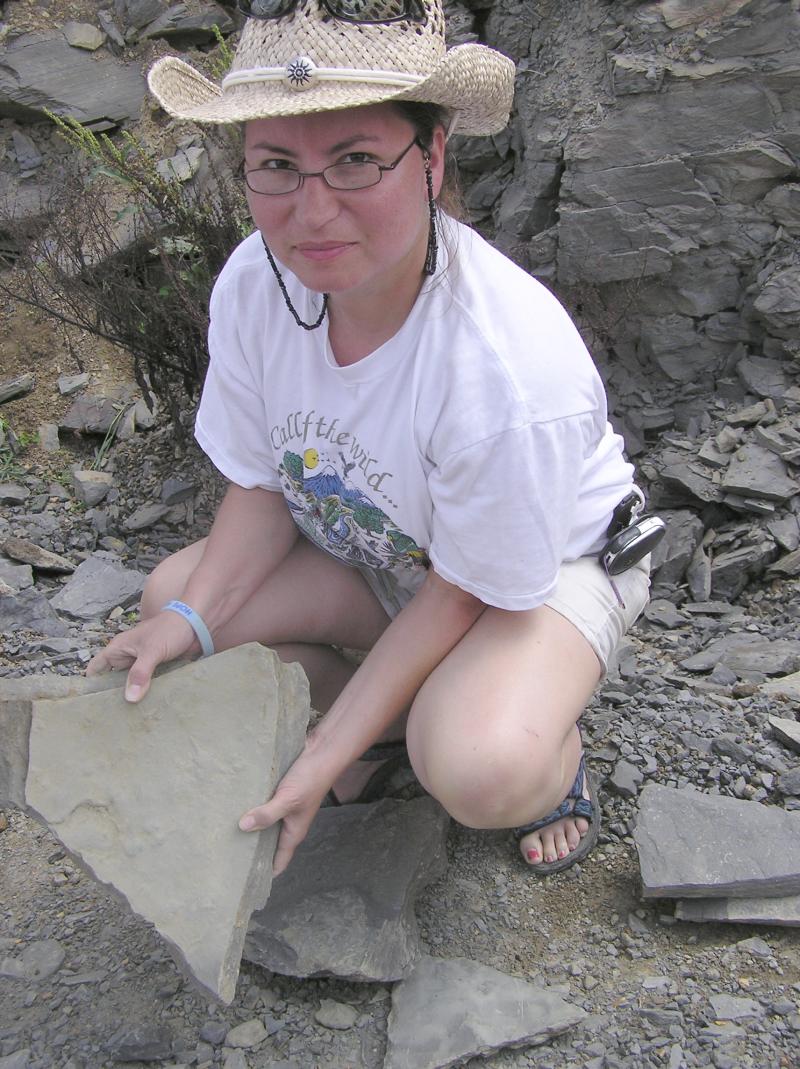
Lea found a slab with a nice starfish cast.
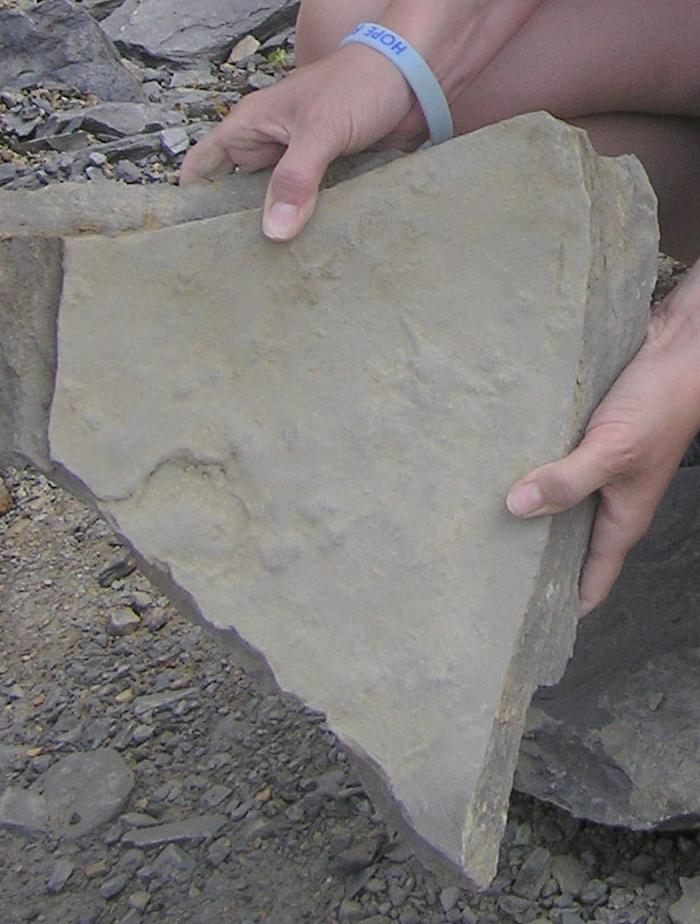
A closer look at Lea's starfish.

Possible raindrops and other trace fossils. Many of the fossil finds at this site were impressions on boulders too large to carry home.
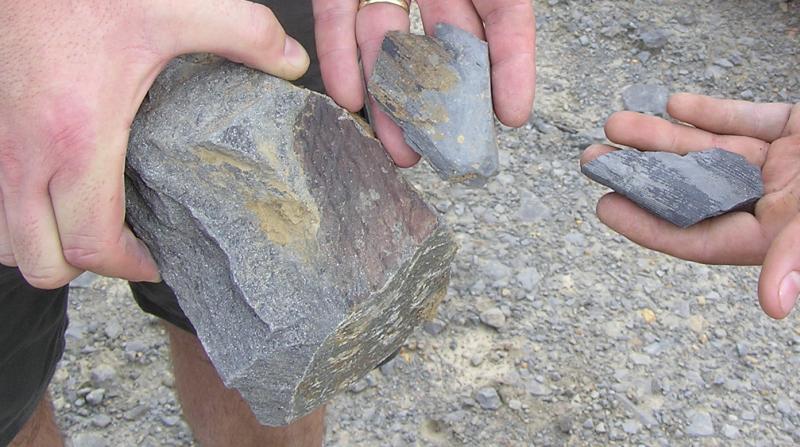
These are impressions of lepidodendrum and calamites.
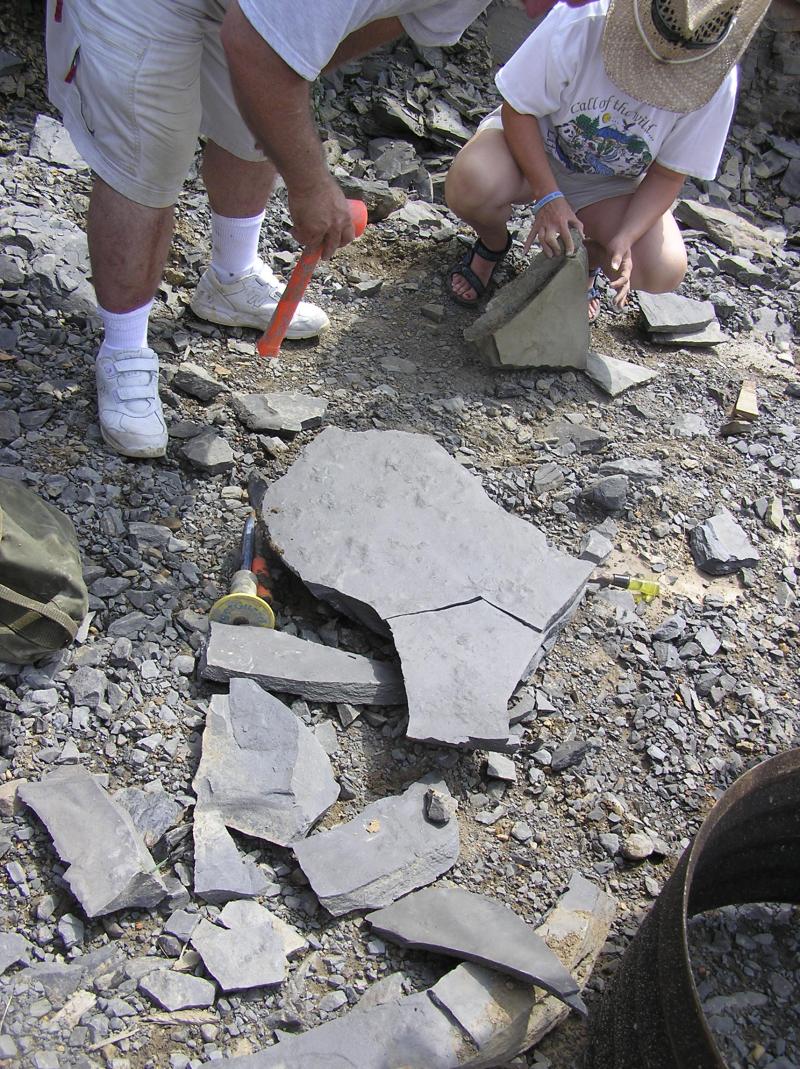
Bill found this slab of shale with several starfish impressions. He graciously allowed Greg to break it apart and shared it with other members.
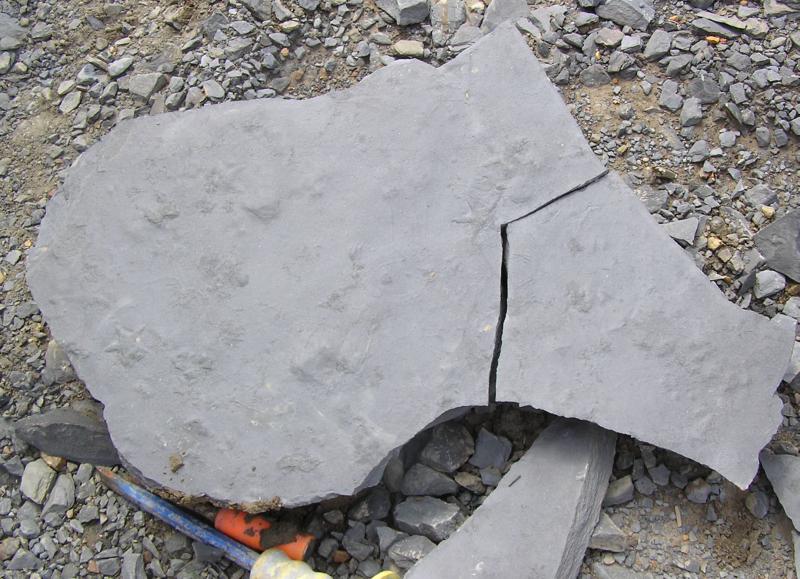
A closer view of the slab. There are at least 6 starfish on this slab.

Bill found the large slab containing several starfish. This is the piece he kept. Thanks for sharing such a wonderful find, Bill!

A closer view.
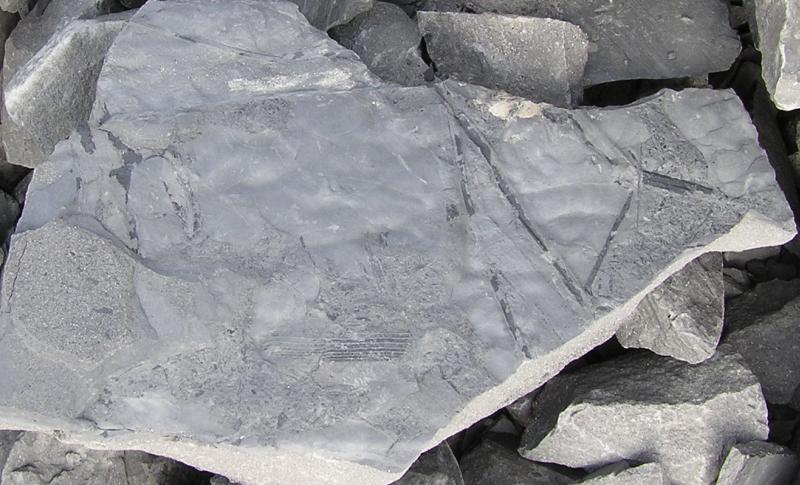
More plant impression fragments.

We found this newest member living in a cave in the rocks (the kitten, if you had to ask!), and nothing but skin and bones. We fed her and made a friend for life - Jan and Greg took her home to live with them.
August 20, 2005 - Eocene Fossils, Covington and Cretaceous Fossils, Montgomery Co, AL
Once again, the group ended the day with a fine opportunity to hang out together at The Swamp, a kinda - sorta local eatery (only 20 minutes away, huh, Greg?) where we stayed way too long, but enjoyed the time spent with fellow fossil hounds.
(Pictures courtesy Jan Novak and Vicki Lais.)

Searching for shells, teeth and horned coral in the clay banks. Note how high the water is behind us.
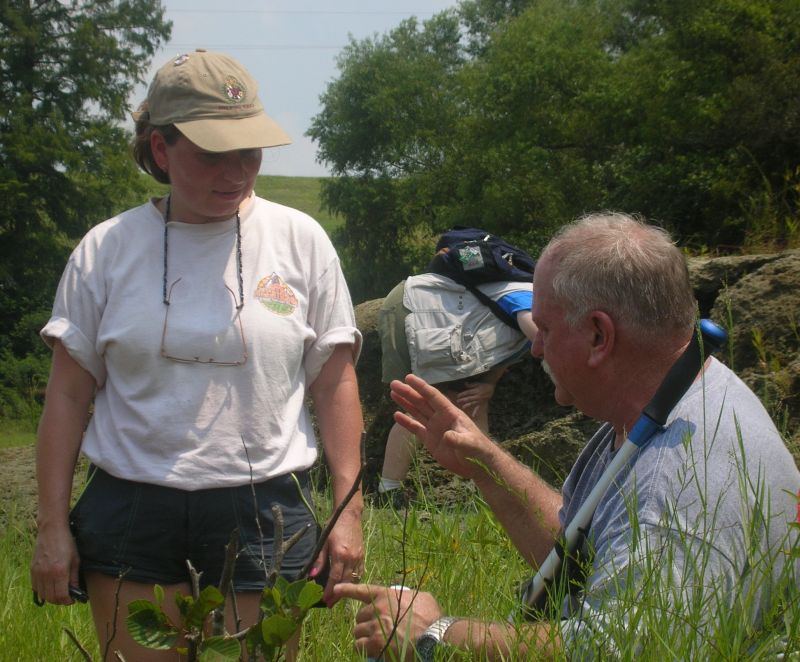

The water was very high, severely impacting our collecting. Sylvie is walking in a spot that is normally dry. Even the island is flooded.
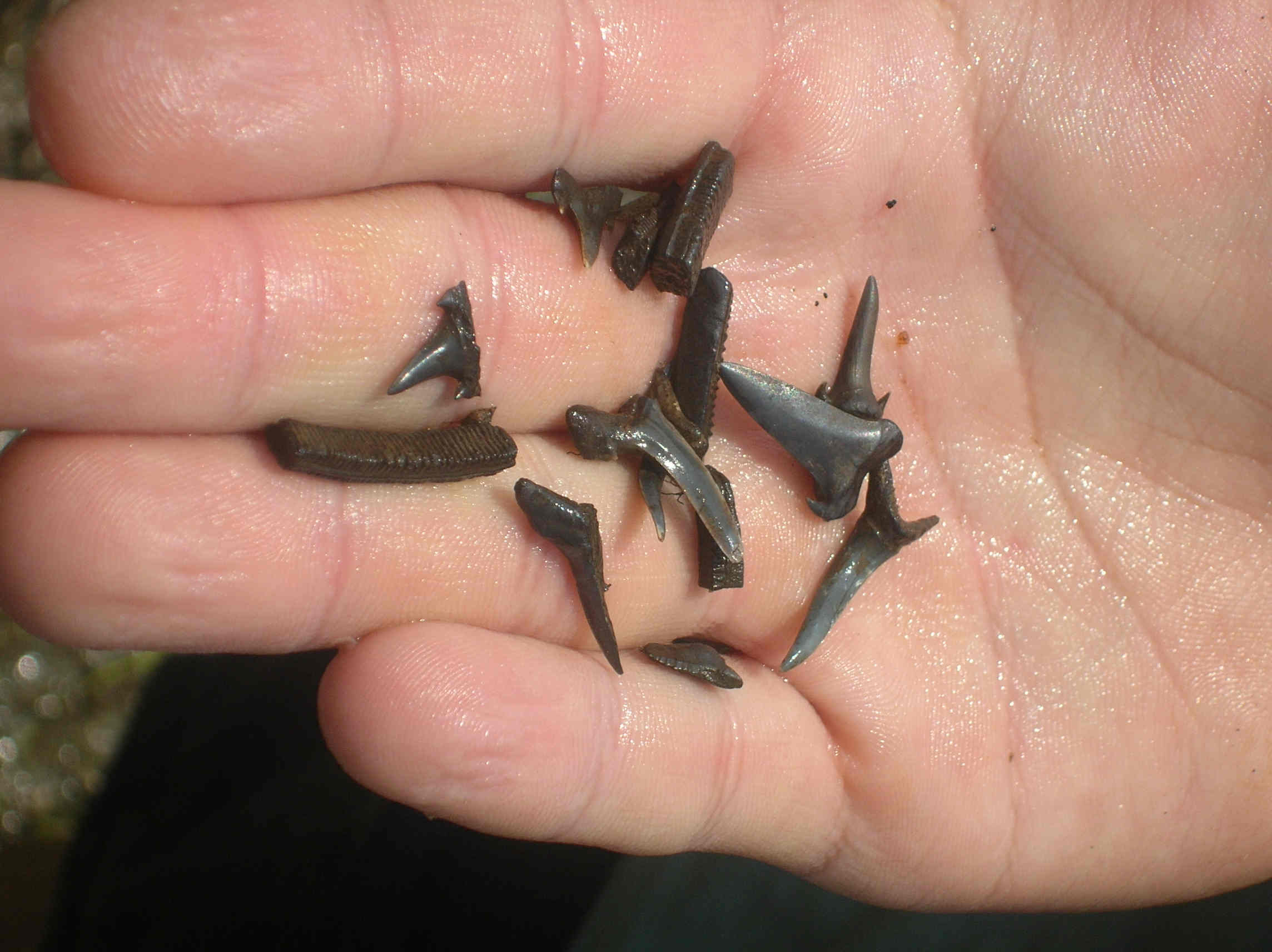

Shells in matrix. They are very fragile and crumble easily, so are difficult to collect whole.

Ok, this isn't very productive, on to the next site!

At our second site, the water was high so a safety rope was necessary.

The site is cretaceous. Each layer has a unique set of fossils.

Searching for echinoids and shark teeth.


Greg explaining proper excavation techniques.


Ron found an unusual heart-shaped item which turned out to be a disk from a dear vertebra. It is very light-weight and recent, not a fossil.

Fragments found here are still being identified. Look just above the yellow handle to see the first "rocks", then straight to the left. There are some more fragments in the upper right quadrant. Some are probably turtle.

Closer view.

Greg has exposed more fragments, probably turtle.

James had an opportunity to practice making a protective plaster jacket.

Nice ammonite found by James.
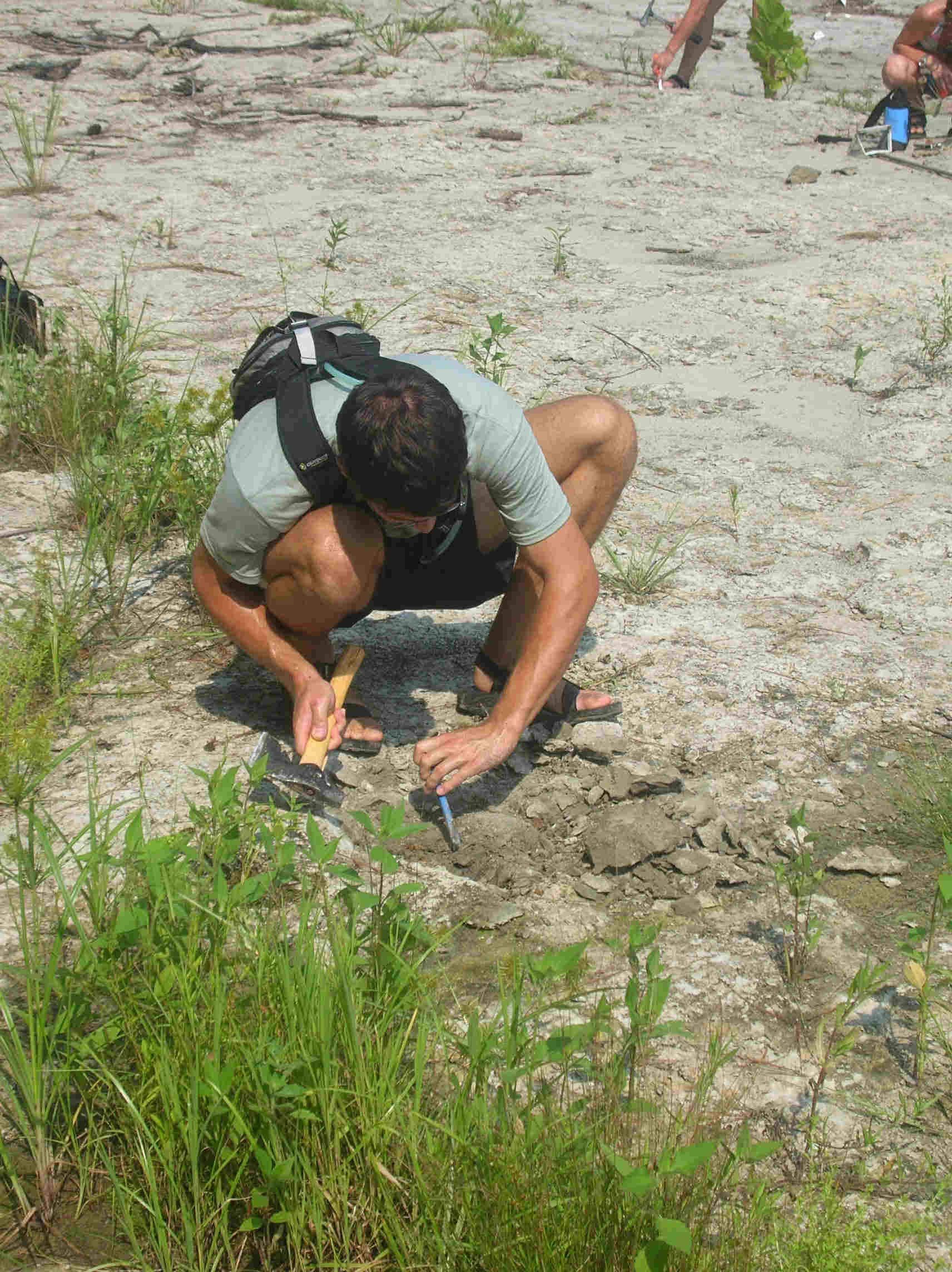

Tracks of a recent visitor, a large alligator . . .

Paige, get out of the water, you look just like gator bait!

Ron's other interest is gold panning, and he gave some of us a demo, using gold bearing material he found in Georgia.

Greg, turn around! They told me to quit taking pictures of people's rear ends!
What a group of tired, sweaty people. So where do we go to cool off and relax a while?

The Swamp, of course! Our favorite restaurant on the Alabama River.
October 1, 2005 - Cretaceous and Tertiary Fossils, Butler Co, AL
It was an international gang this time, with 5 members from the Czech Republic, 3 exchange students from Sweden, one long-term member from Armenia and a couple all the way from exotic LA (Lower Alabama), along with the local members. We have had several debates as to whether we need to change our name to Birmingham International Paleontological Society, or Birmingham Paleontological Society, Internationale!
It was so gorgeous when we all got down there that people were sitting out in beach chairs and enjoying what could have easily passed for the Gulf coast's white, sandy beaches. Some folks got into the swim - literally - as one of those privileges of living in a tropical climate on Oct 1 in Alabama. A variety of fossils were found, including nautiloids, tiny gastropods, shark teeth and coquina stone filled with various shells including turritella. We also found a good amount of pottery shards, some other artifacts and a deer skull (recent, but included to show what the teeth look like). Several comments were made regarding the beach, on the order of "it didn't really matter whether we found fossils or not, this was a great place to hang out"!
The deer skull has a backstory. While wandering off for a solitary hike up the creek, Vicki managed to get herself thoroughly lost. In the dark. Forgot that trail-laying stuff from Girl Scouts, right Vicki? Well, it turned out well in the end, when Vicki took off and finally found the road, as well as gaining some nifty scratches. Things improved the next morning after Claire and Lea got out the weedeaters and cut a beautiful path down to the creek. Kudos, Kids! And Vicki is going to do a refresher course if she can find her old Girl Scout Handbook.
After a very full day, most of the group repaired to the campsite for a wine-tasting, while others continued the hunt. (It's not dark yet, right?) After forcing themselves to get up and moving again, most of the group headed back to home and reality. Claire, Lea, Paige, and Vicki camped another night, and enjoyed the peace of the creek for another day.
(Photos courtesy Lea Martin, Jan Novak, and Vicki Lais)

Leisa thoughtfully provided our 3 Swedish exchange students with everything they needed to enjoy the day's trip.

Due to rain the previous night, we left the cars at the entrance and loaded all our gear in Greg's truck.
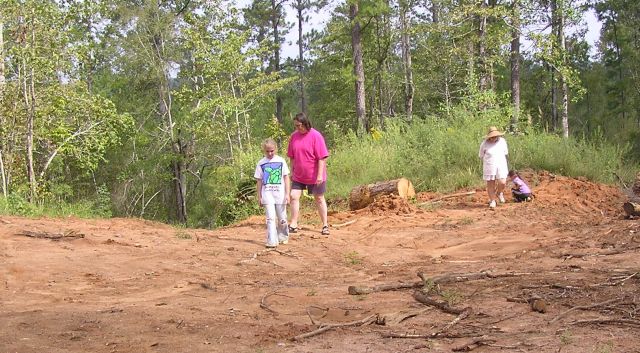
Scouting the parking area, which was newly bulldozed.
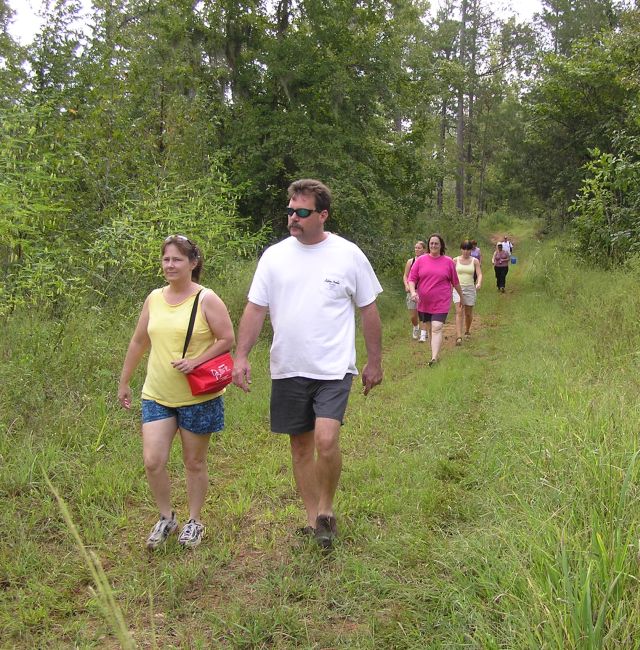
Some of the group on the long hike down.

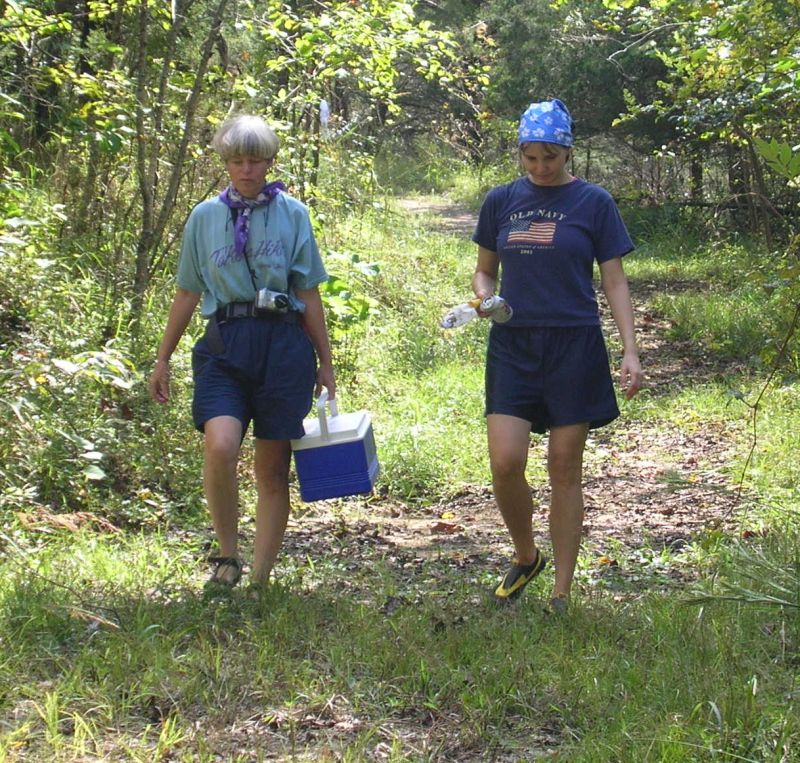

Finally, the path to the creek, which is just over that ridge. There was no path here the day before, which is how Vicki got lost. A huge thanks to Lea and Claire for cutting all the underbrush for us!

Sun and sand - on with the sunscreen!
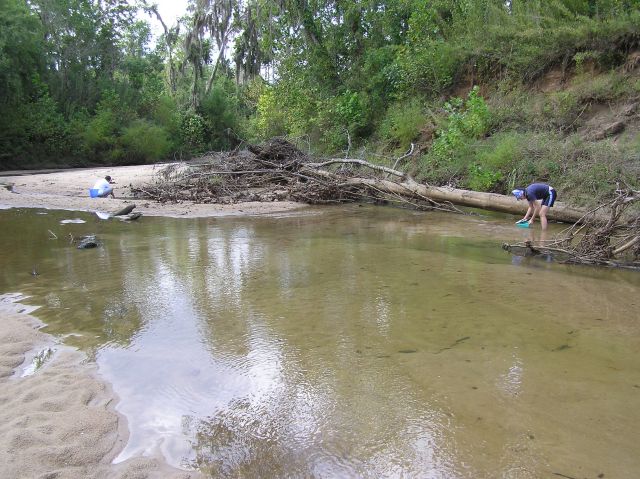
Sylvie and Michael screening for shark teeth.
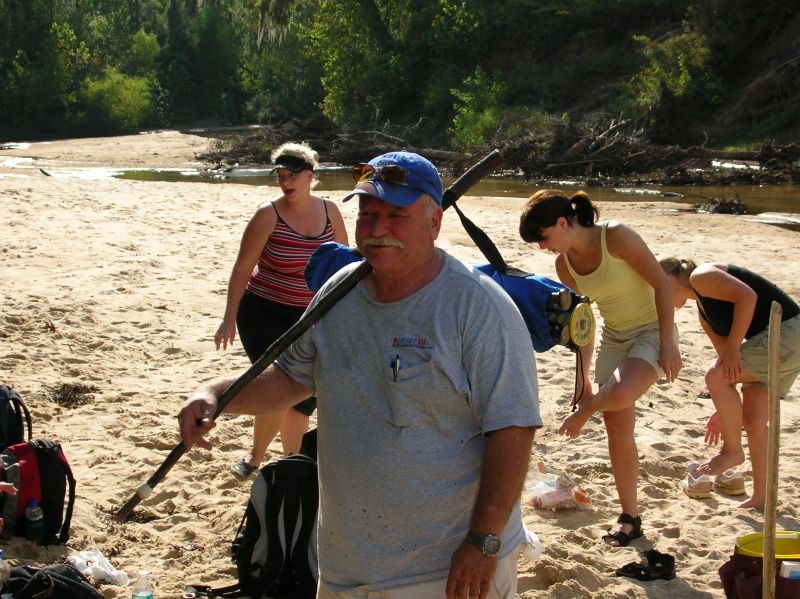

The layers of years of flooding are clearly shown in this high bank.
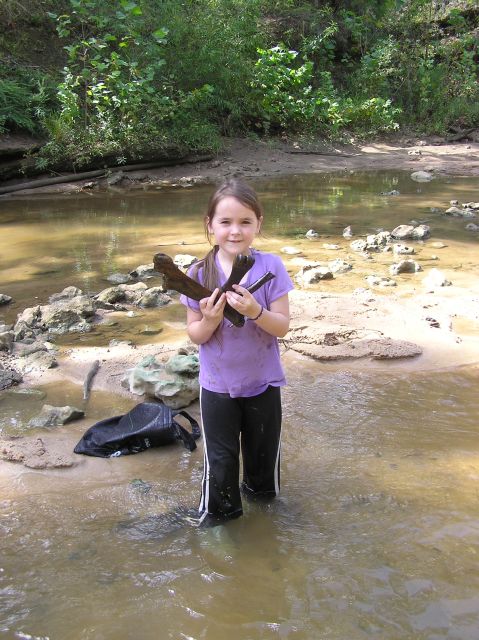
Loni's granddaughter has found a treasure, but they are new bones, not fossil.
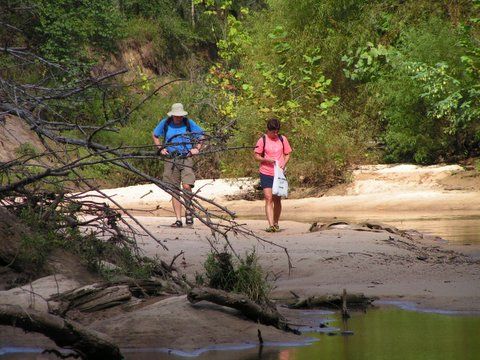
The Novacks starting a long trip way up the creek.
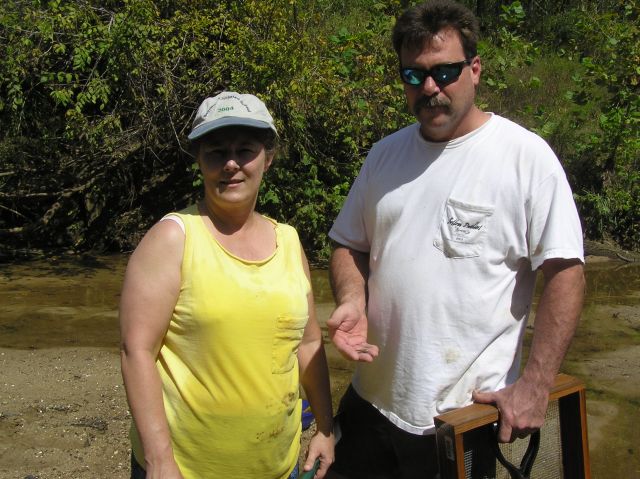
Two of our newest members from Mobile, Becky and Keith. Keith is holding a nice shark tooth that was found in the shell filled bank shown below.


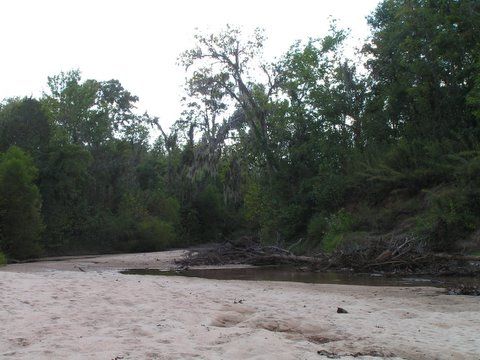
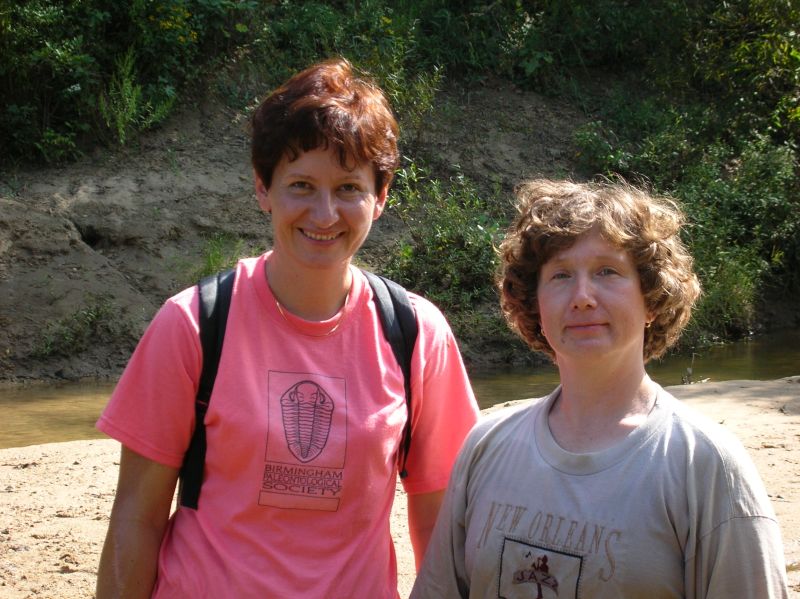
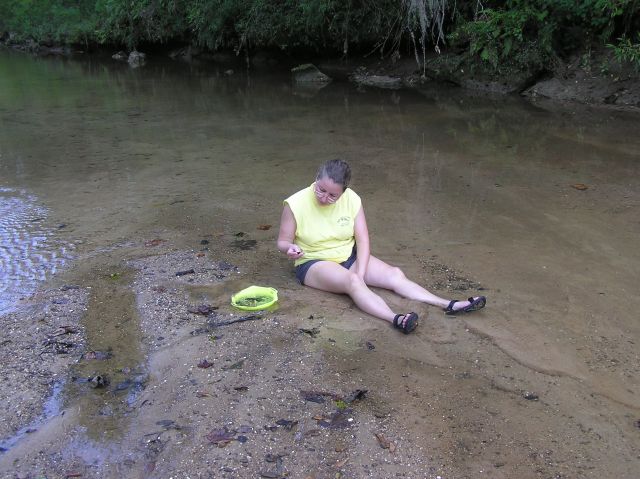
Lea examining one of her finds.

Screening for shark teeth.

Leisa has found a nice bone artifact, and some cochina stone.

Closer view of the cochina. This stone is filled with fossil shells, including turritella, and is widely found in Florida, where it is cut into blocks and used as a building material.

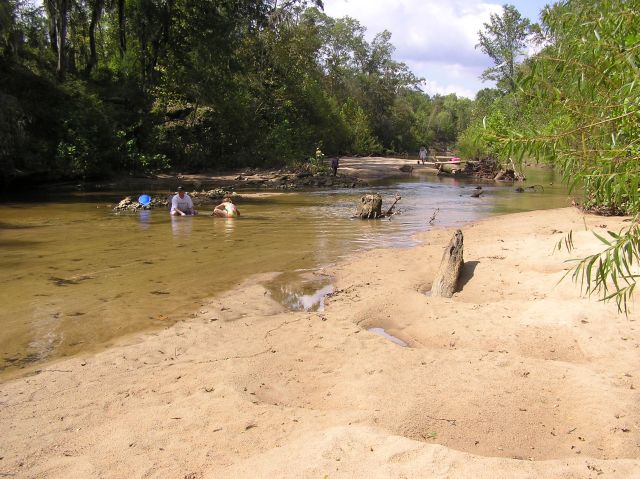
Beautiful weather, temperature in the 90's (in October????), and we certainly took advantage of it!
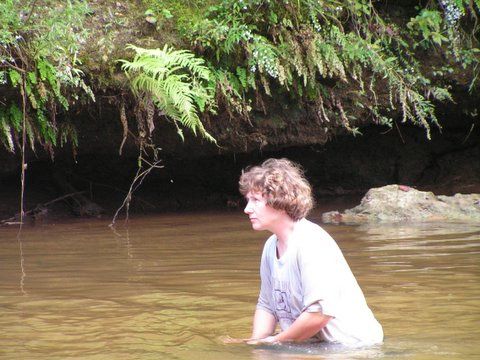
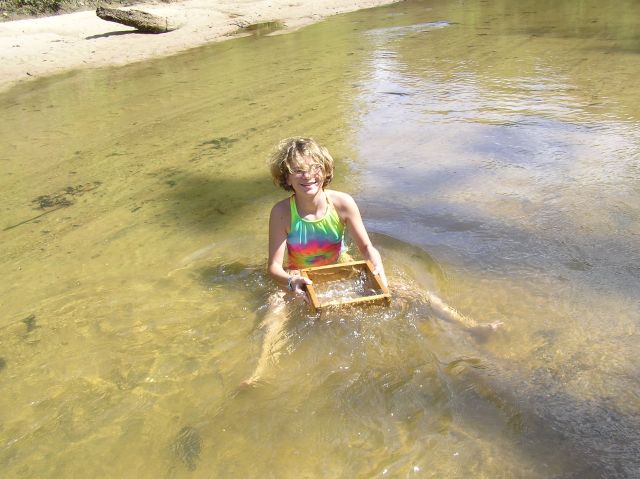
Paige keeping cool while screening for shark teeth.
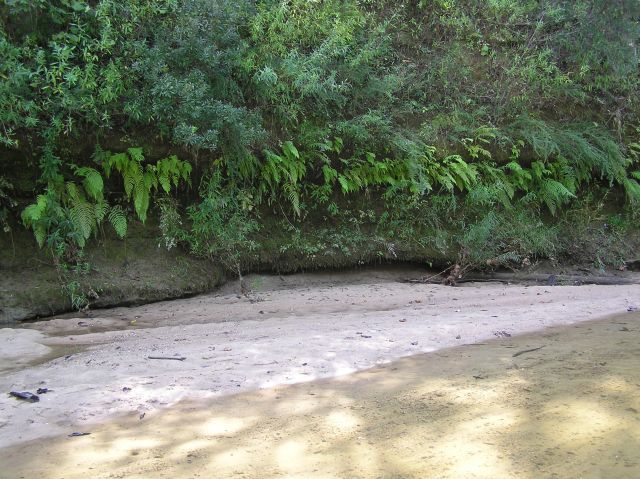
South Alabama is a beautiful place, and our fossil hobby gives us wonderful opportunities to see such treasures as this fern bank.
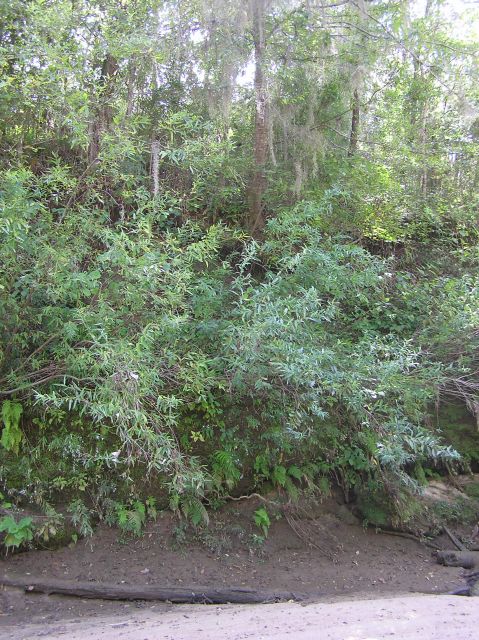
South Alabama is also known for the Spanish Moss hanging from many of the trees. It was used as packing material many years ago.
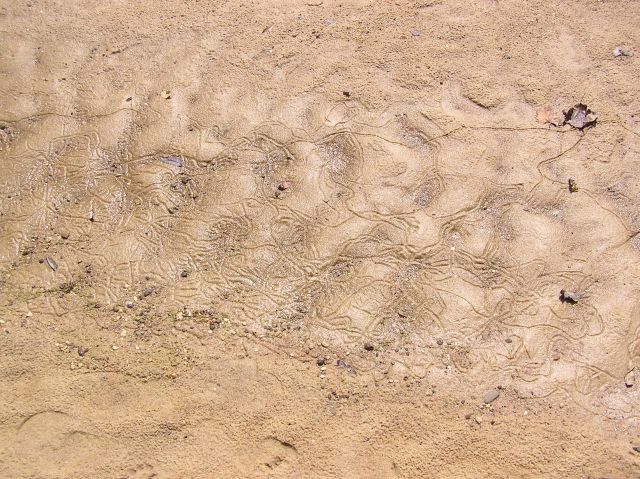
Many times fossil worm trails (trace fossils) are found in sandstone and shale material. Here is the modern day equivalent.
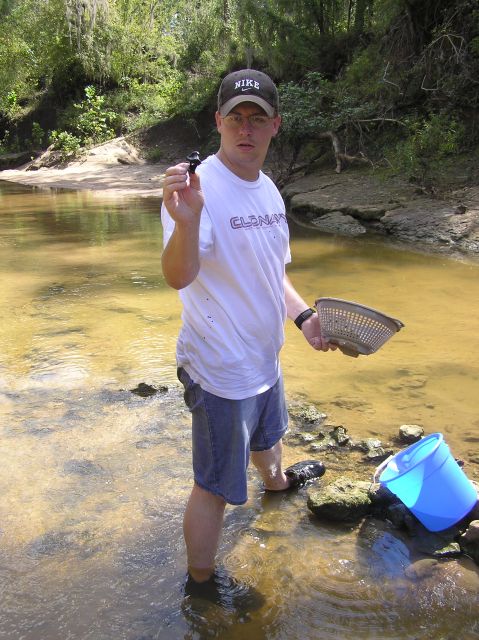
James has found a vertebra, but it is recent.
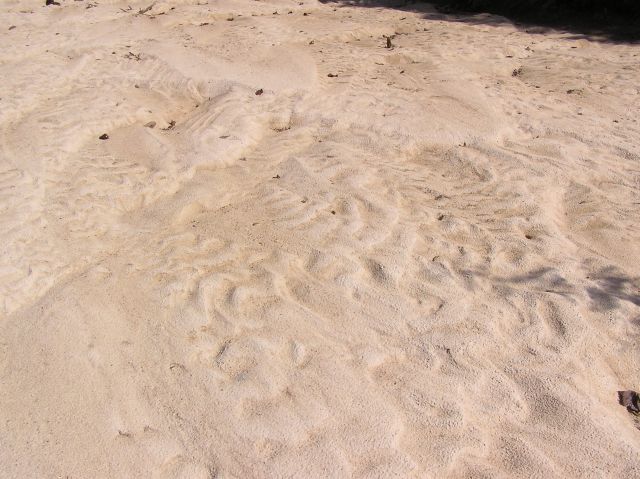
Many sandstones and shales show wave patterns, captured here in modern day sand.

Nice deer skull found in the creek. Claire is now the proud owner.
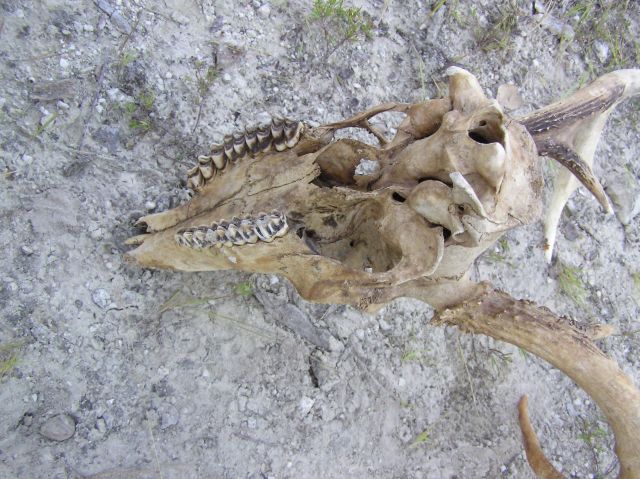
"What kind of teeth are these?" is a frequent question. This should aid in identifying deer teeth.
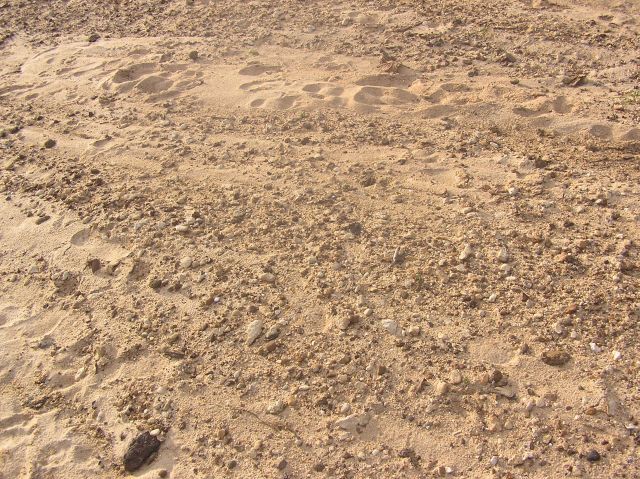
This area was covered with larger rocky material, and yielded many pottery shards, but few fossils.
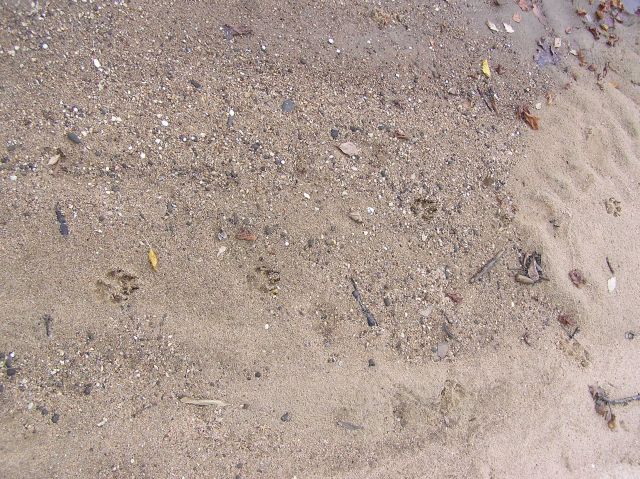
We weren't alone on the creek, these may be tracks of the coyotes we heard "singing" during the night.

Vicki's collection.

Paige collected quite a few shark teeth.

Hanging out at the campsite, late afternoon. We also collected small gastropod specimens in this area.
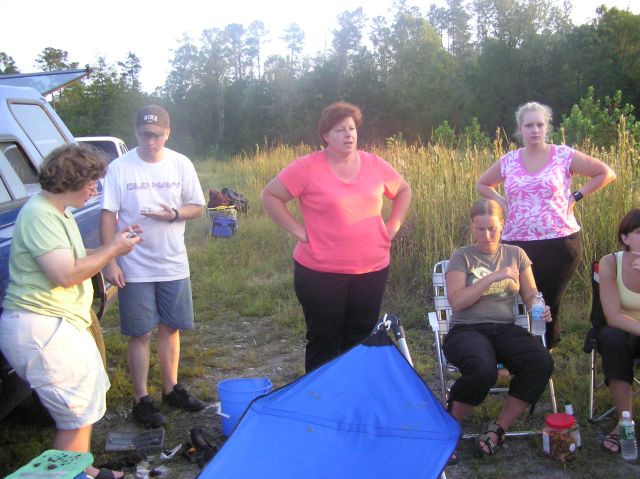
Discussing our finds for the day; hanging out and enjoying each others company.
November 2, 2005 - Cretaceous Fossils, Sumter Co, AL
BPS members went down to the Tombigbee in search of specimens from the marl limestone sequences in the Arcola Limestone Member (Late Cretaceous Campanian 83-74 mya). Steve and Bobby furnished the boats. BPS members climbed aboard and we headed off down the river. This is one of our favorite spots so anticipation was high. Once arrived, we headed off in different directions, some going down to the far end of the beach in hopes of finding a large ammonite like the one found last trip.
The water was very low on this trip, exposing areas we had never collected. Another mosasaur bone, probably from our “pet” Mosasaur, “Bigbee” was unearthed, much to our pleasure. Numerous pieces of carboniferous wood were found, also worm tubes, gastropods and a very nice portion of a turtle, which was jacketed for prep work back home. Several shark teeth, straight cephalopod segments, and some fish teeth were also found.
We had very pleasant weather, and, after a full day of collecting, some wanted to settle in for some food and conversation while another part of the group decided to head down the river to a marcasite collecting area . Some very nice crystalline calcite specimens were found, in addition to the large quantity of marcasite. Much to our delight, it turns out that we had a marcasite specialist amongst us who gave us an impromptu lecture on marcasite characteristics. This inspired discussion of the possibility of forming a coprolite committee. Any volunteers? Anybody want to explain to the general public exactly what coprolite IS? Or was.
As it was getting too dark to see, it was decided that food and conversation seemed like a pretty good idea at this point, so we caught up with the others and finished off the day in great style.
Great trip, great weather, great group, great food.
--Edited by Vicki Lais
(Photos
courtesy Anca Croitoru, Lea Novack, and Vicki Lais)
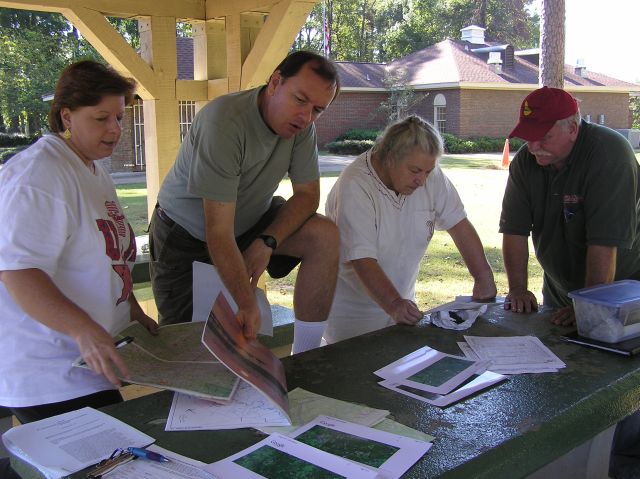
Reconnaissance
session covering the geology of the area and sample
specimens.
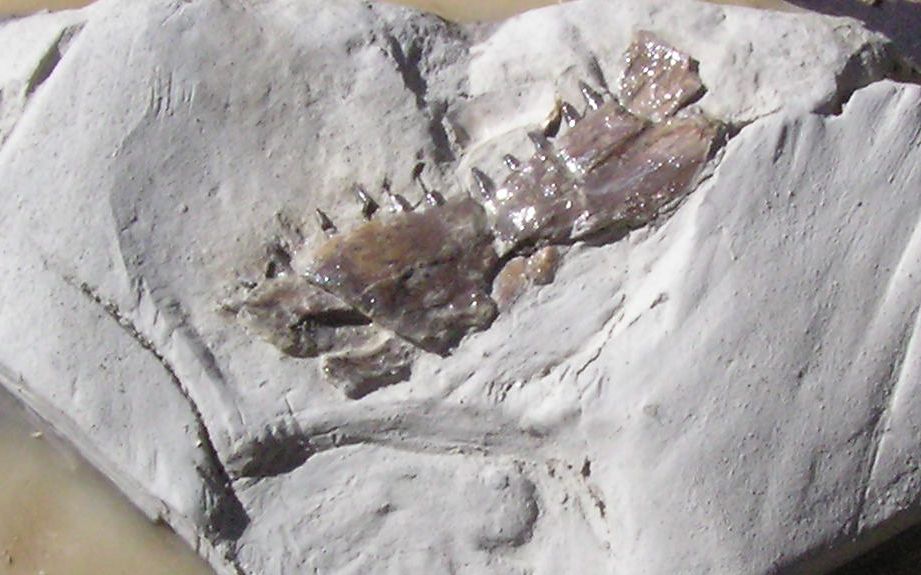
This is an
excellent specimen of a fish jaw that Greg found on a
previous trip.
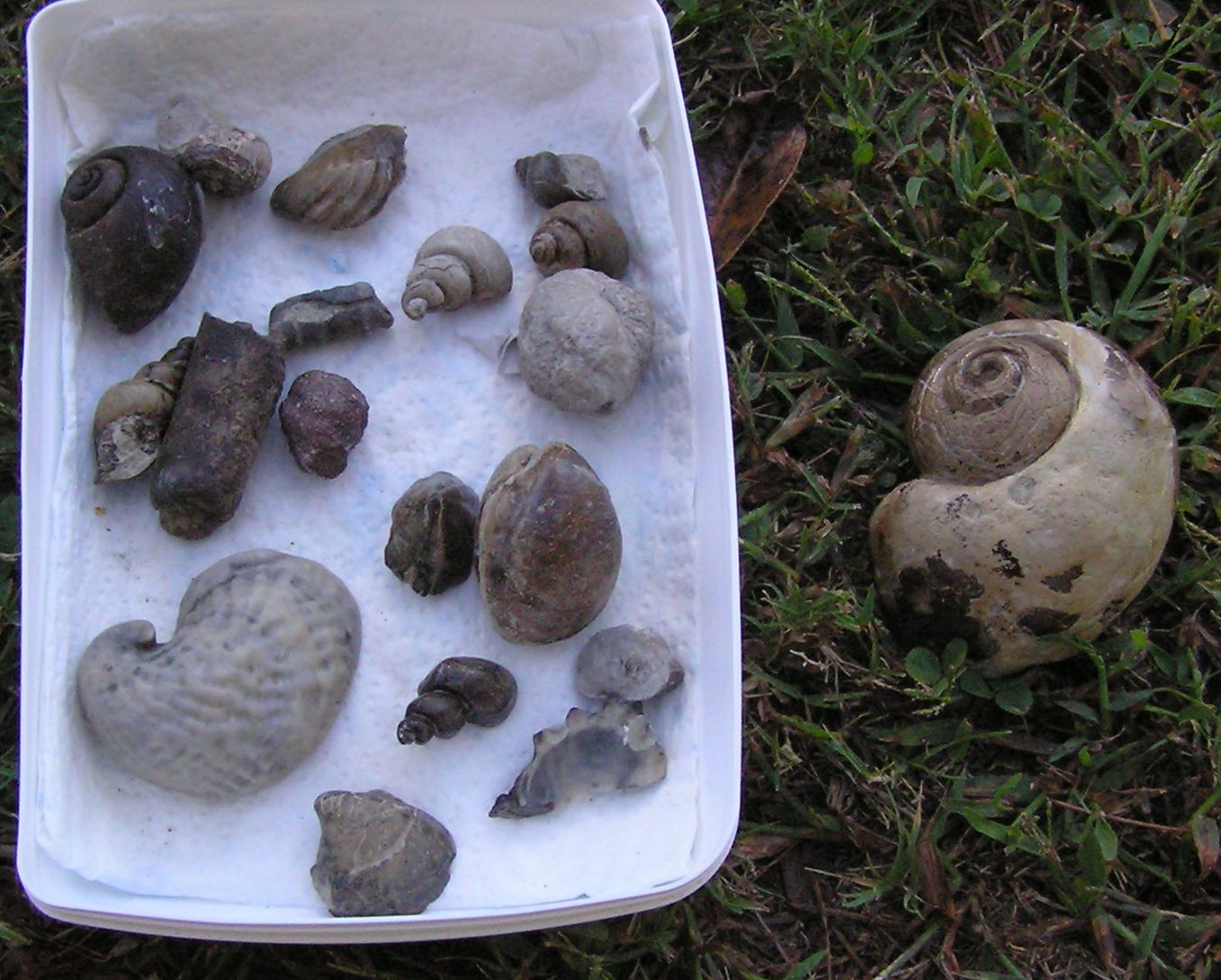
Gastropods
and straight cephalopods found on
prior trips.
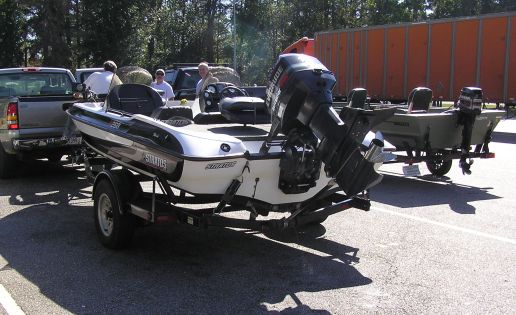
Lining
up the boats.

On
the way again. . . .
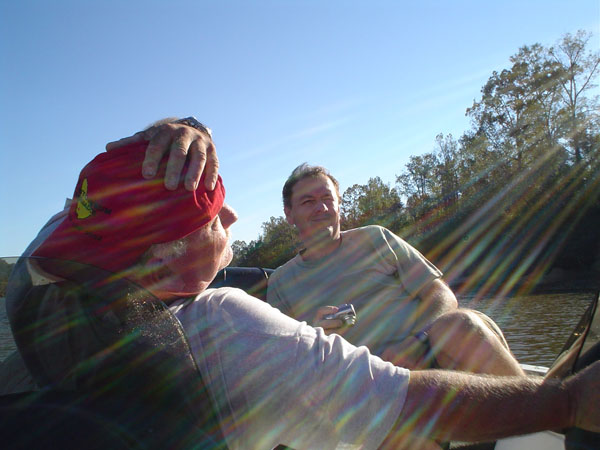
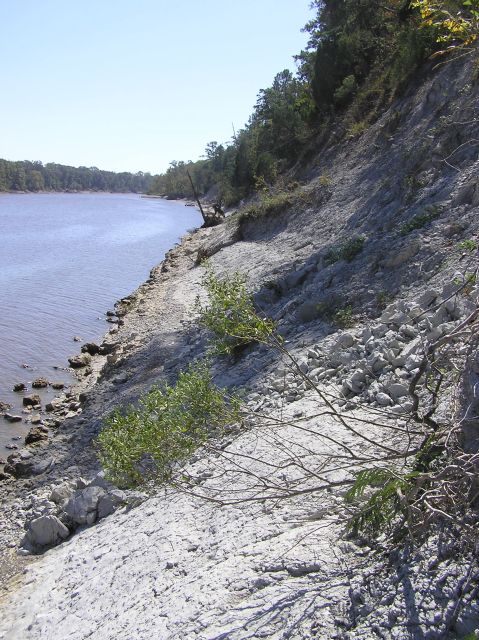
Rocky bluffs composed of Arcola Limestone. Very fossiliferous.
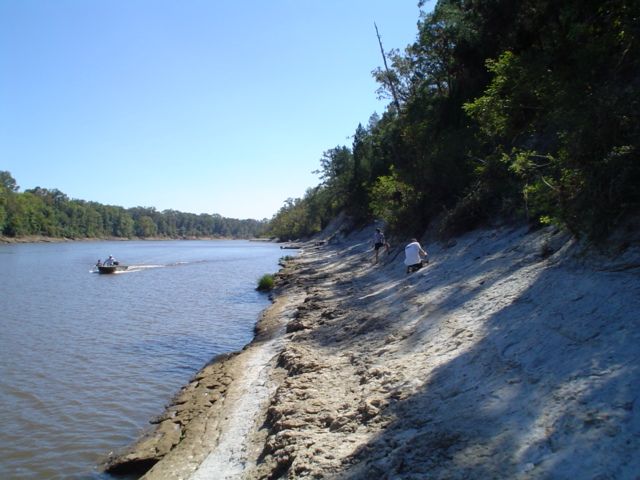
More views of
the river.

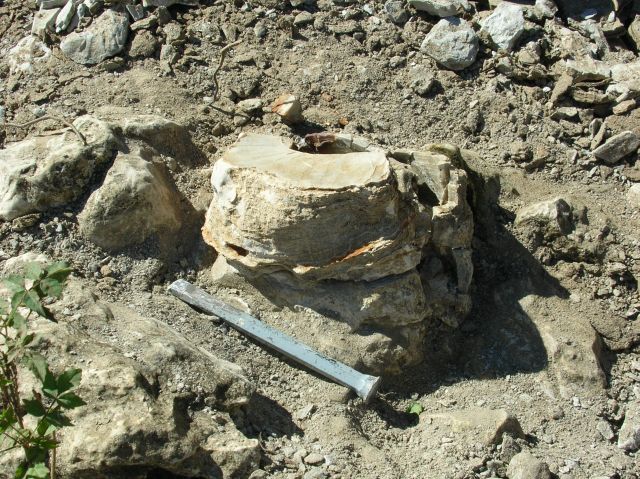
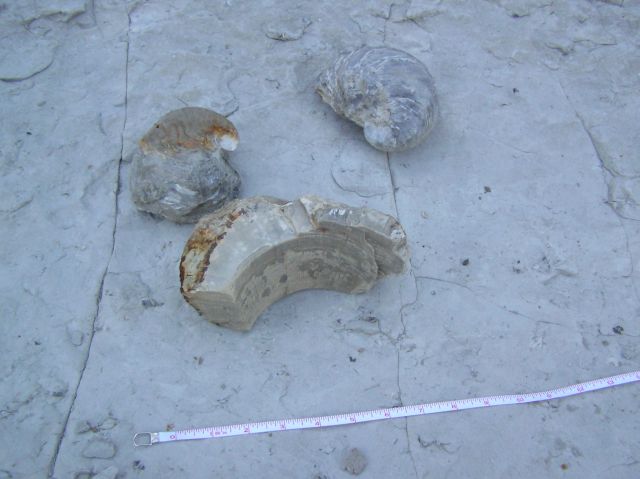
Large piece
of shell and exogira.
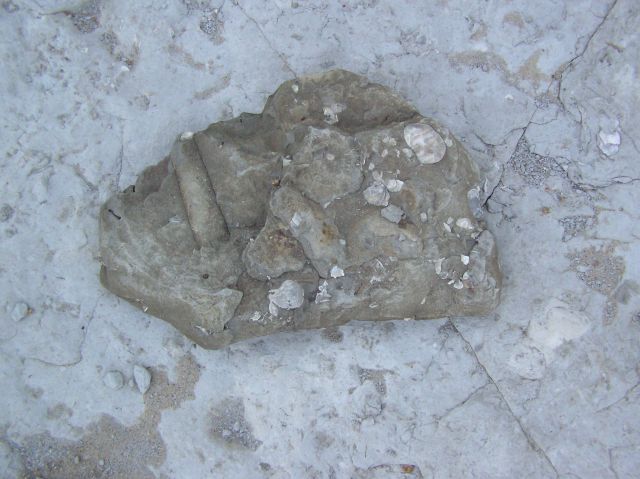
Miscellaneous
shells and straight cephalopods.
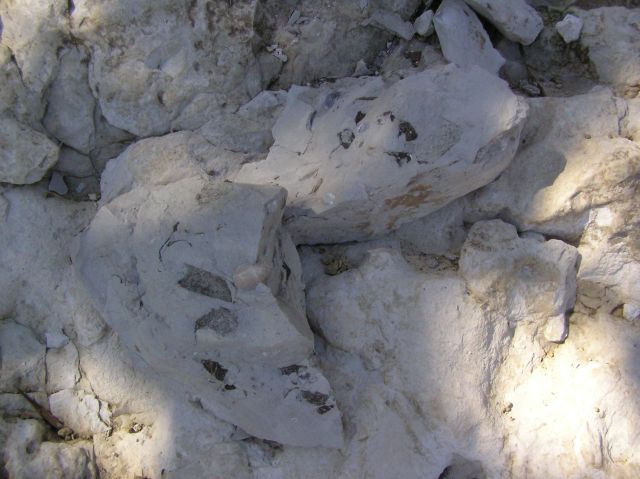
Numerous
shell pieces in the limestone.
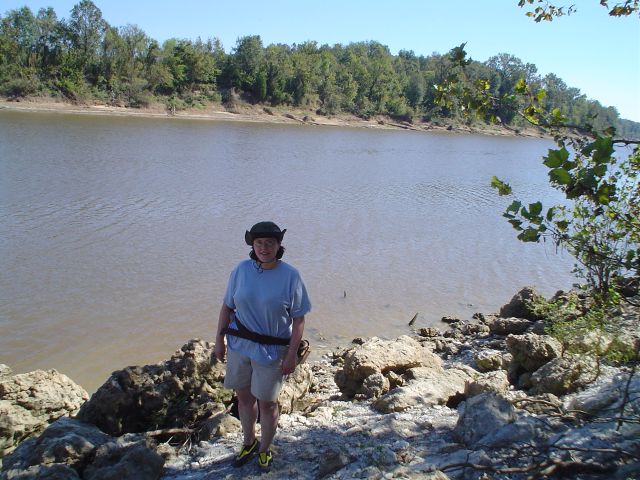
Anca
beginning her search.
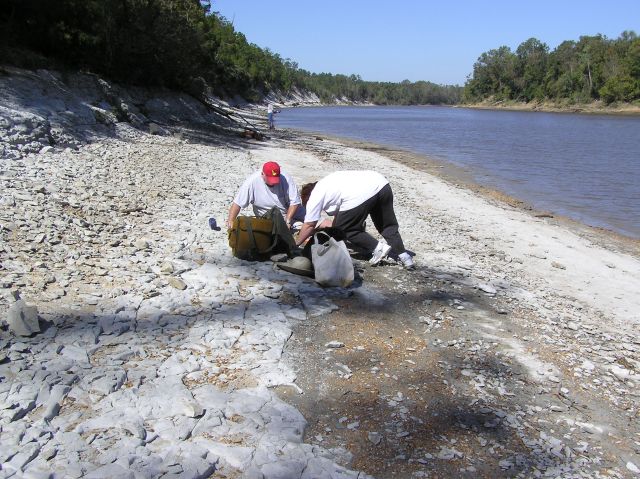
Loni found a
nice turtle specimen, and asked that Greg and Leisa
excavate the bones.
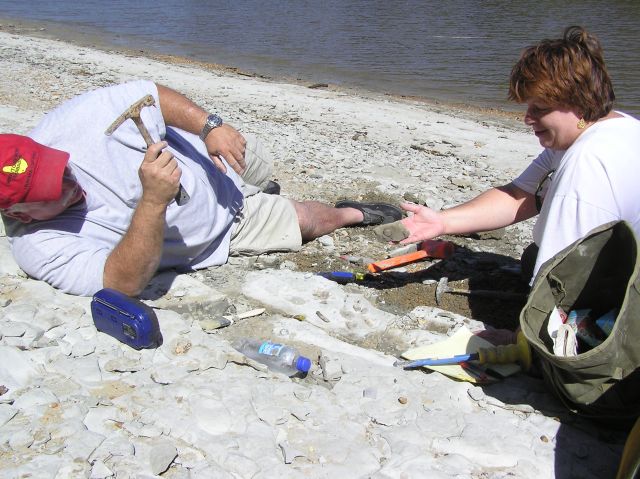
Excavation
has begun. . . .

A closer look
at the turtle parts.
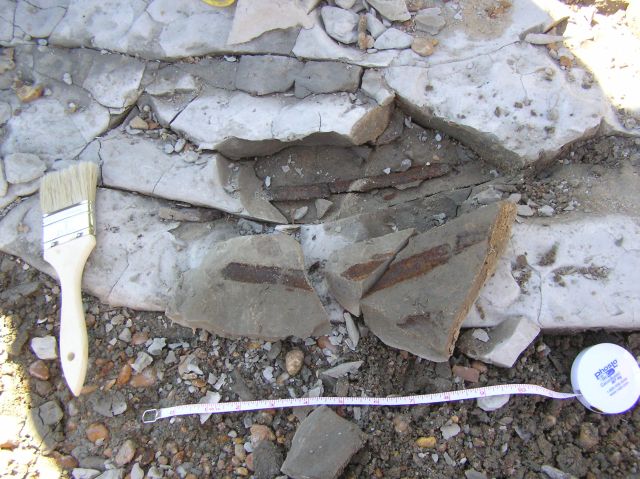
Part of the
turtle.
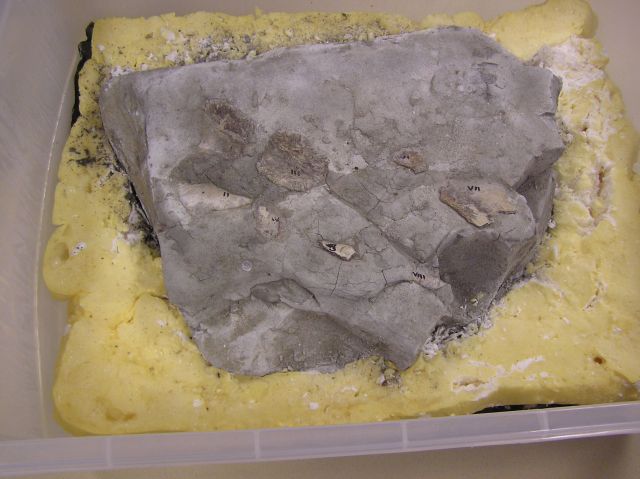
Turtle
after preparation. Click image for a different view.
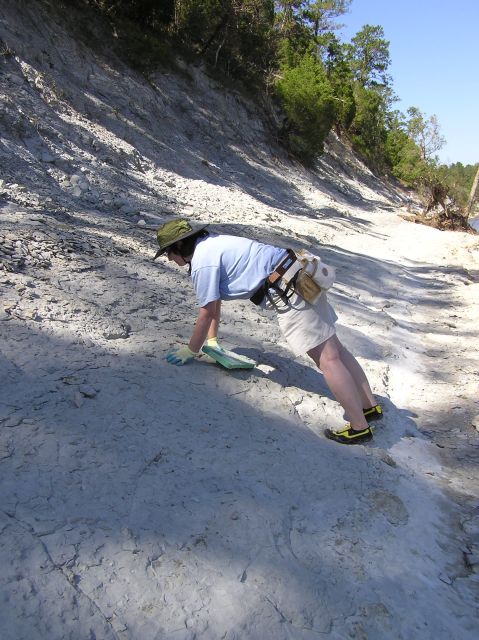
Anca is
closely examining the limestone. She found a fish tooth
in this area.
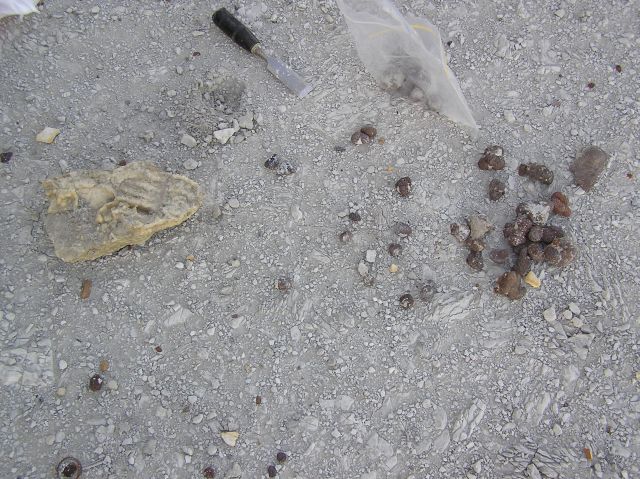
Another site further down the river where we collected marcasite.
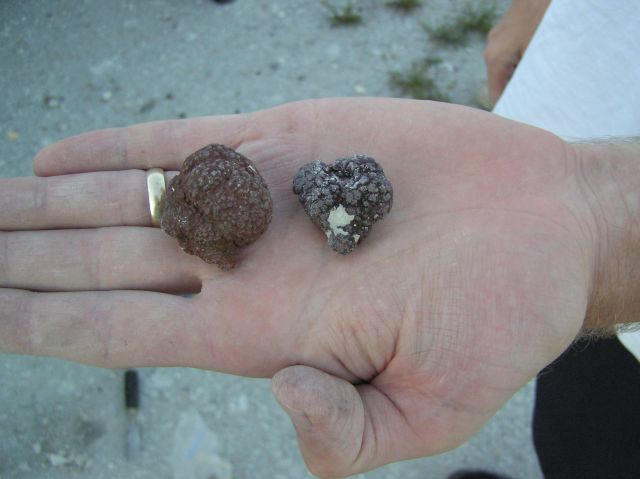
Michael with
some nice marcasite specimens. We discovered he
is a
marcasite specialist, and some of us discussed the need for a Coprolite
Committee.

Claire also
found a fantastic specimen of calcite, about the size of a
fist.
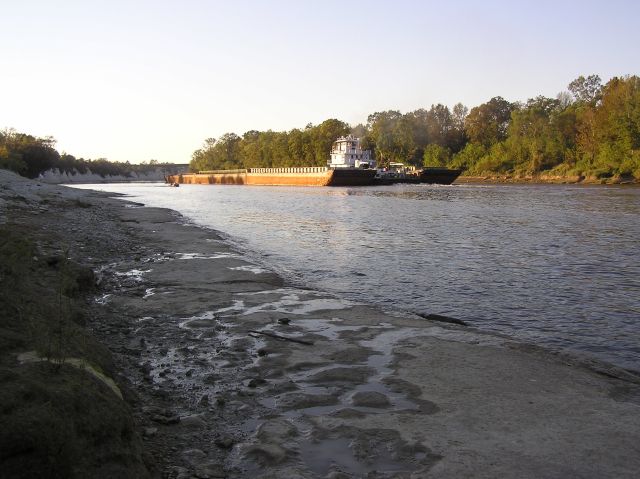
View
of the river.

We ended the
day with more good conversation at a restaurant near the
collecting site. Another "way out in the boonies" place with
no
advertising; if you don't know where it is, you probably won't even
find it by accident.
December 3, 2005 - Lawrence, Franklin and Colbert Co, AL
Back in the car headed to site #2, and it began raining again. Darn! As the drizzle quits, someone suggests a side trip to the lake, to check the water level, and much to our delight, it was way down, so we added an unexpected new stop, where everyone found a number of crinoid stems, blastoids, archimedes, an unknown trace fossil, and horned coral. One comment was "How many days do we get to spend here?". The weather got warmer, and became very pleasant, even without coats (a real thrill to those of us who remember many collecting trips tolerating the icy cold wind that normally whips around the point most of the winter). In keeping with our international flavor, two guests from Japan (who have only been in the US since July) joined us for their first ever-fossil trip. We may have spoiled them. NO you DON'T find fossils on every spot of ground in Alabama!
Then, when Greg was able to tear us away from the lake, on to the next location, site #3, a popular road cut in Colbert County, where nice blastoids, archimedes, and straight cephalopods were found. Also, an outstanding question was answered. On our August 2005 field trip, an odd, lightweight, heart shaped disk was found in Montgomery County that we couldn't identify. On one of Vicki's side excursions today, she found part of a vertebra column, probably of a deer, and several of the heart-shaped cartilage discs were found in place. Now we know - not a fossil, but very interesting.
The 4th stop had a few specimens, but not enough to linger.
At that point, part of the group went to an additional site, where there were nice fossils, mostly still in matrix. This site contains metallic, cubic mineral specimens that have not yet been positively identified. They look similar to pyrite, but are the wrong shape and color. They are small, about 1/4 inch, cubic, shiny reddish-gold copper colored, and heavy for their size. The square sides aren't exactly straight, since they have a dip in the middle. They could possibly be limonite after pyrite.
After that, the entire group met up again, and headed to an off-the-beaten-path steak house in the middle of nowhere to wind down for the evening and enjoy each other's good company before starting the long trip back home.
(photos courtesy Lea Martin and
Vicki Lais)

The first
stop produced very large specimens of rugose coral, most too
large to carry.
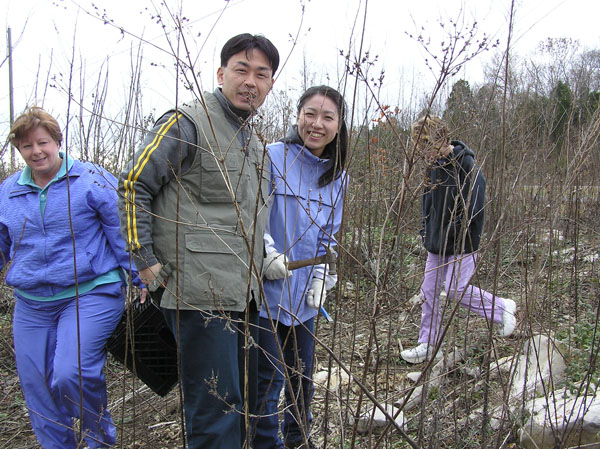
Leisa, our
Pres, and new members Hitoshi and Yakari on their first
fossil trip... Welcome to Alabama!
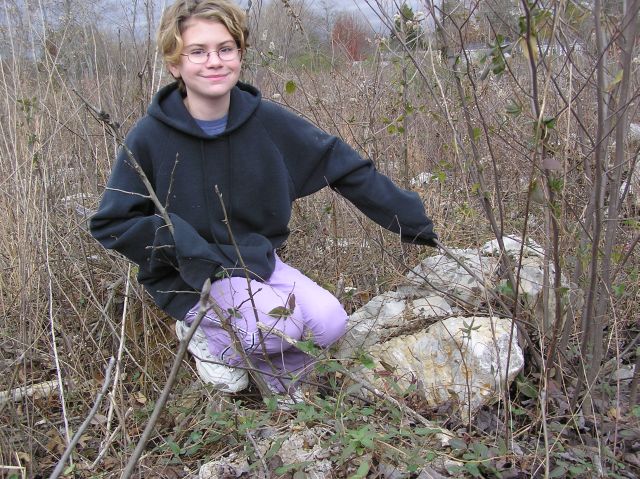
Paige just
needs her picture taken since she is so
photogenic.
What a nice specimen of coral she's found!
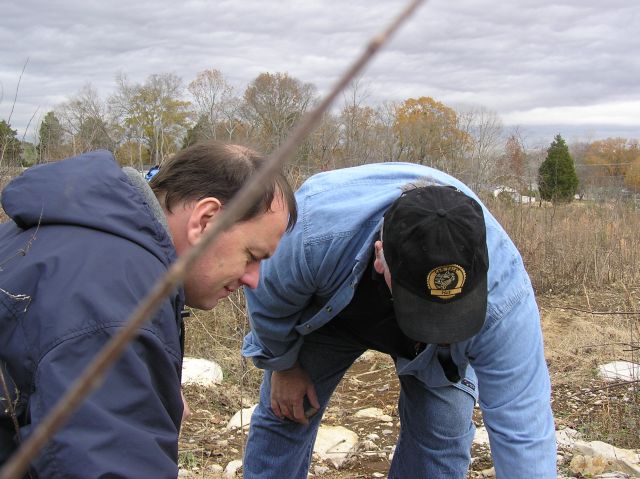
Jan and Greg
searching for loose corals.
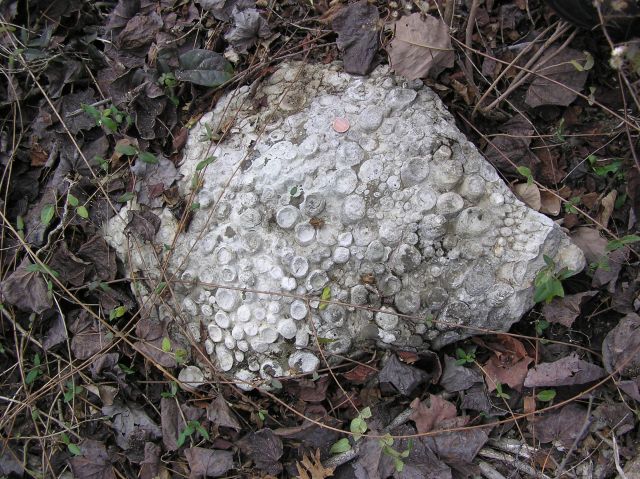
One of the
nicest specimens.

Uh....
Paige..... I don't think it will fit in your box......
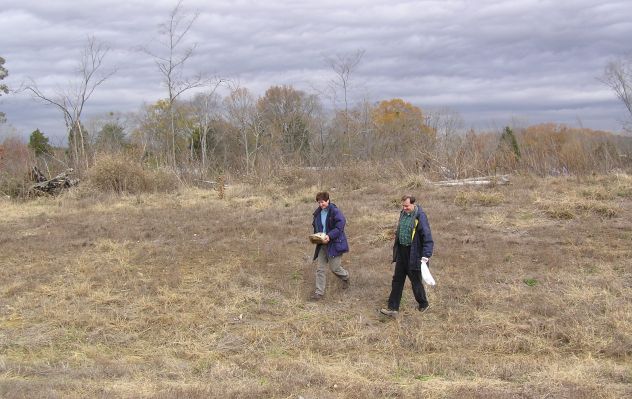

Lea Novak has
lugged this large coral to her car.
On to site #2 -
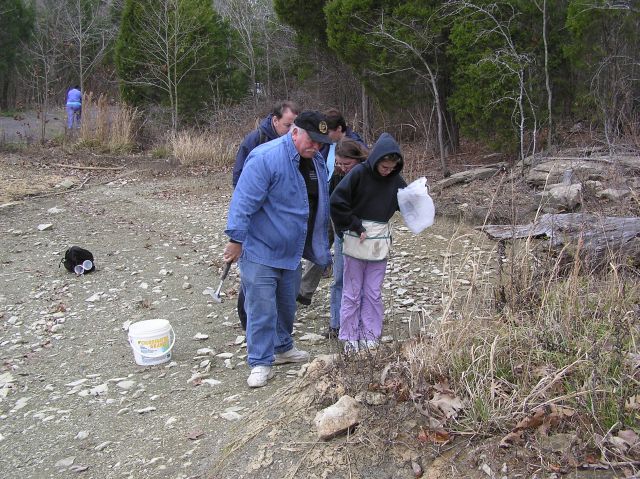
Most of the
rocks on this lakeshore are filled with small
fossils. Most plentiful are crinoids, blastoids, archimedes,
and
horned corals.

Leisa showing
our newest members fossil specimens on the rocks.
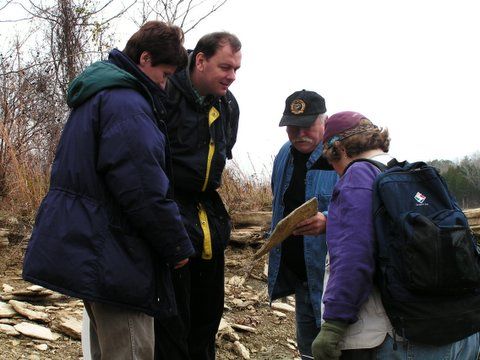
Greg has
found a nice slab to show how plentiful fossils are in this
area.
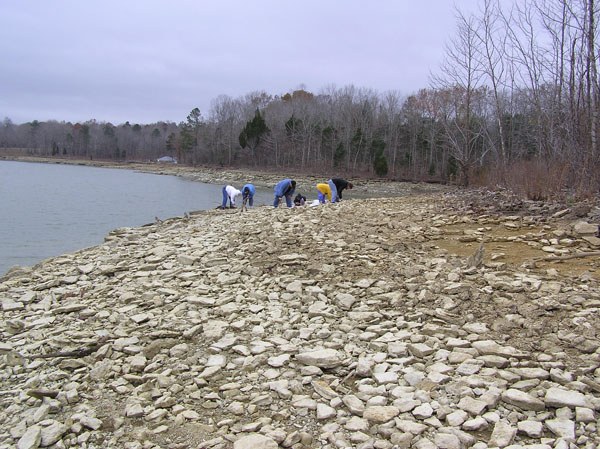
Every rock
here is covered with fossils. So why
search?
Some rocks have weathered more than others, and the fossils are in nice
relief. Some have more "perfect" examples, some have more of
the
"pretty" fossils, or displayed a larger variety.

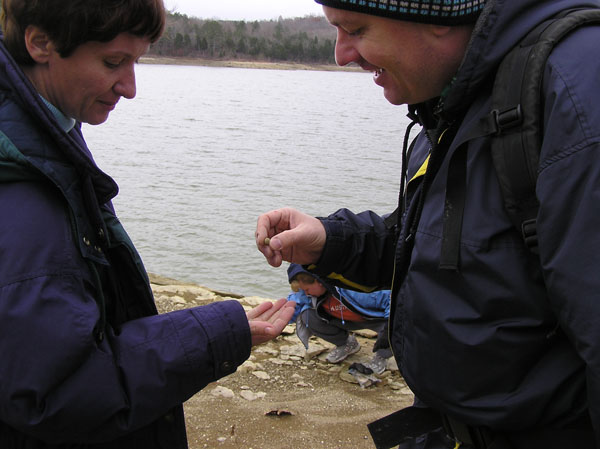
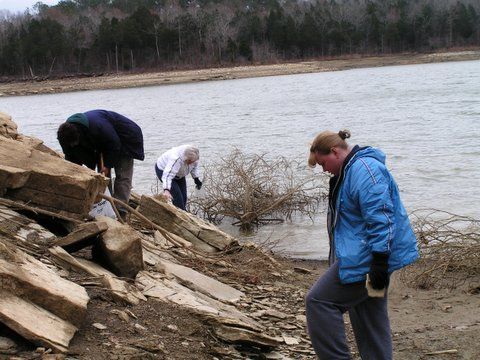
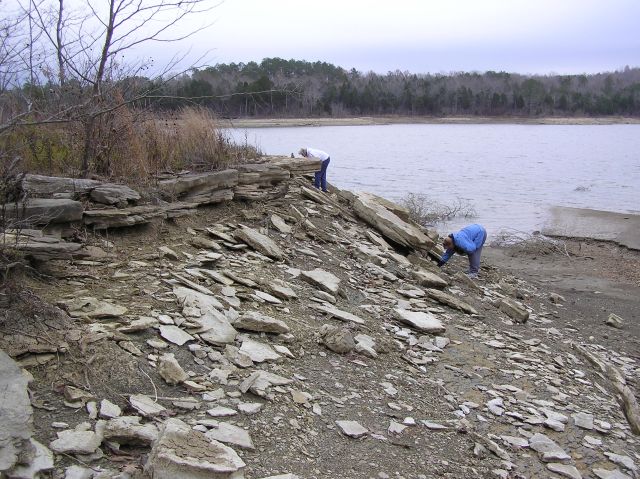
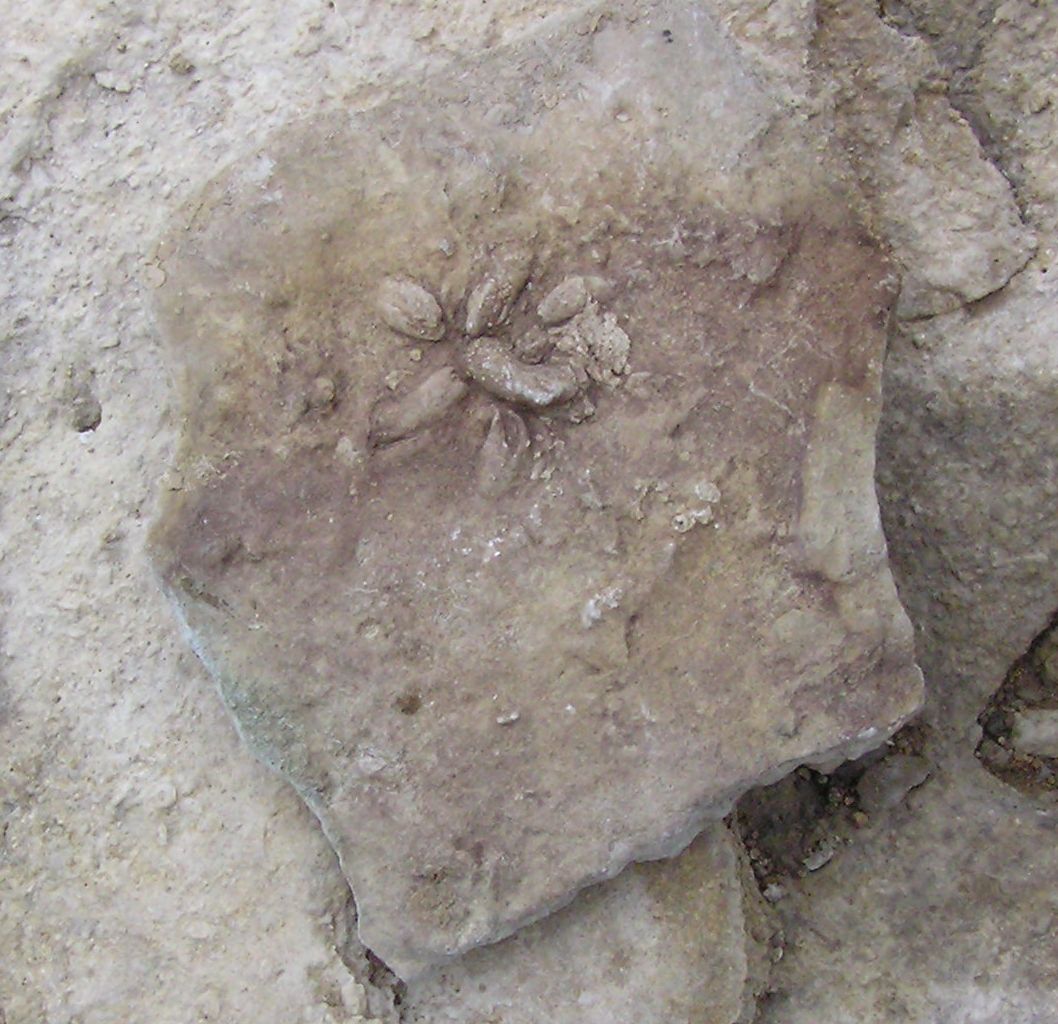
Melanie has found a nice.... well....umm.... trace fossil??

Look
carefully in the middle of the photograph to see a blastoid.
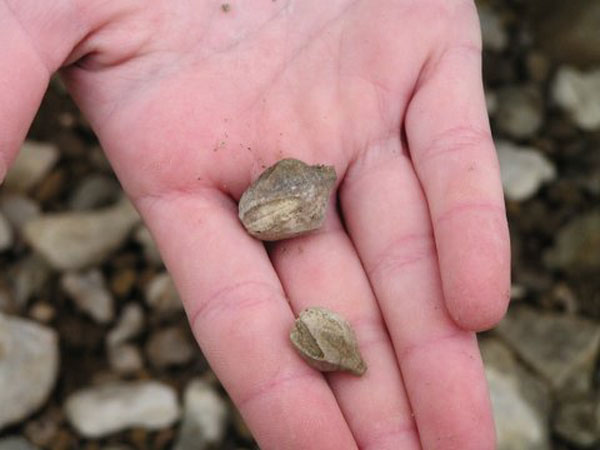
Closer view
of blastoids.
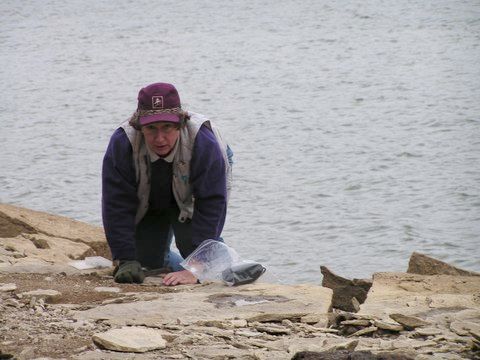
Hi, Claire!
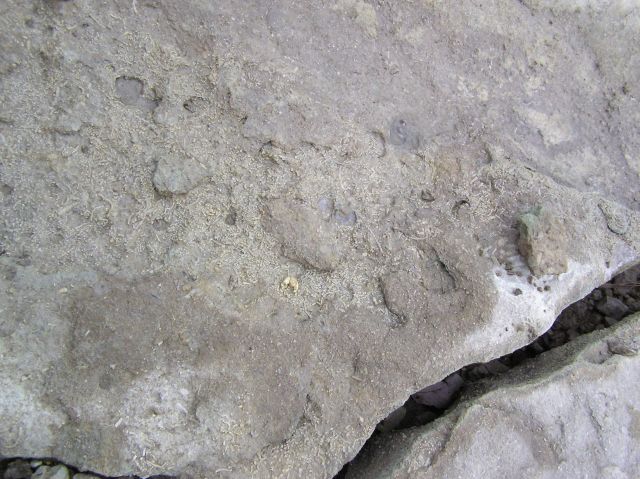
Hard
to see, but this boulder is covered with very tiny crinoids,
probably a breeding area.
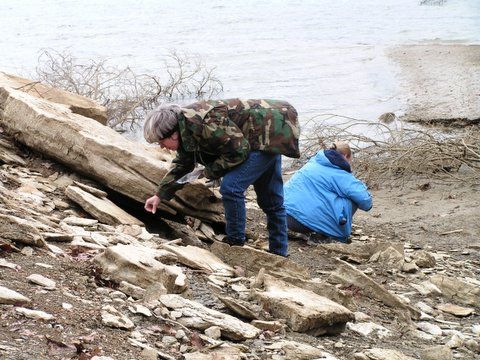
Stop #3 is a roadcut -
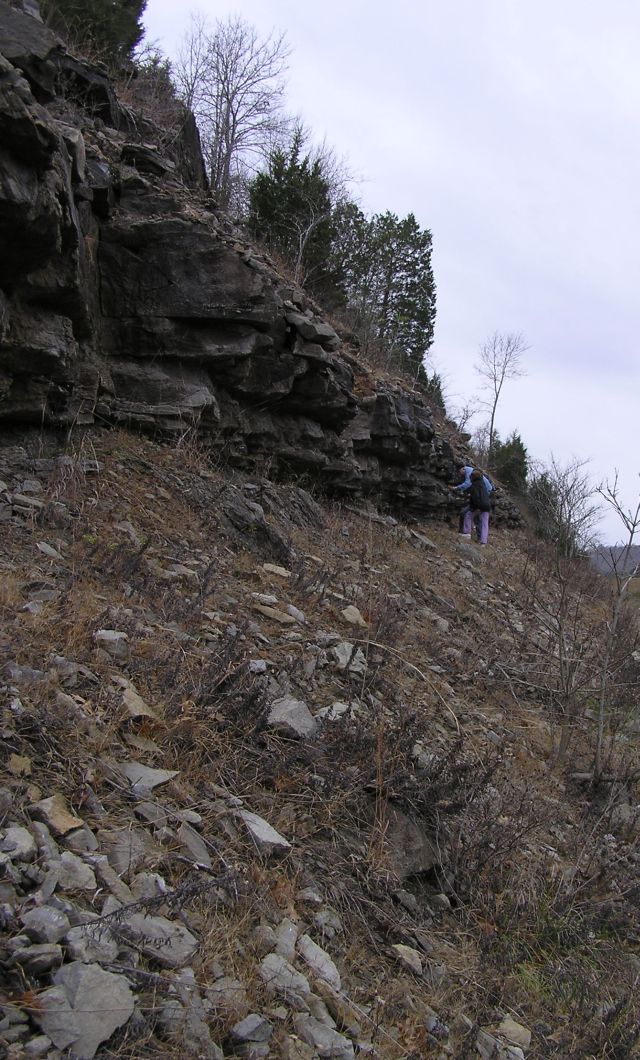
Blastoids,
horned coral, and archimedes were found in this area.
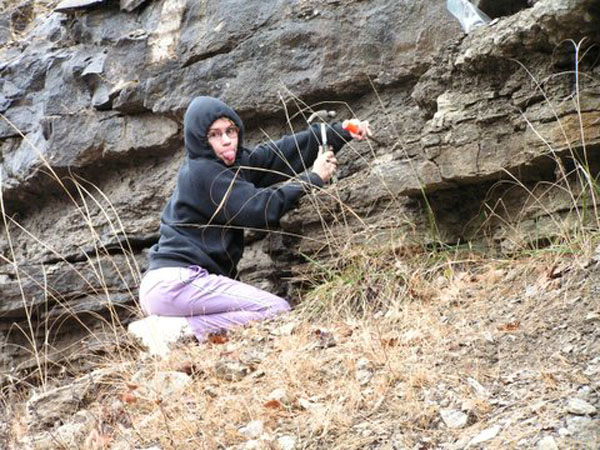


A few straight cephalopods were also
found.
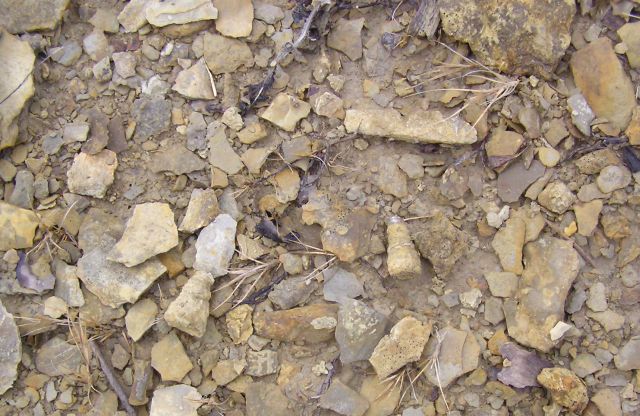
Some fairly
worn specimens of horned coral.

Another
mystery solved. A heart shaped item had been found on
our
Montgomery trip, but no one knew what it was. Several of them
were found in place today - in a deer spine. They are the
discs
between vertebra.
Stop #4 - another wash in a
roadcut.
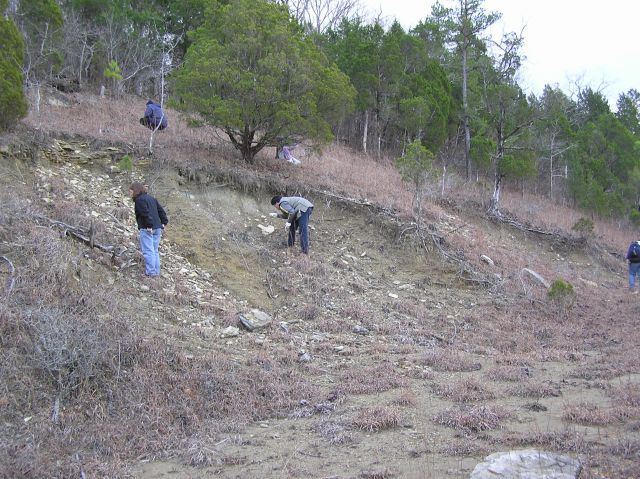
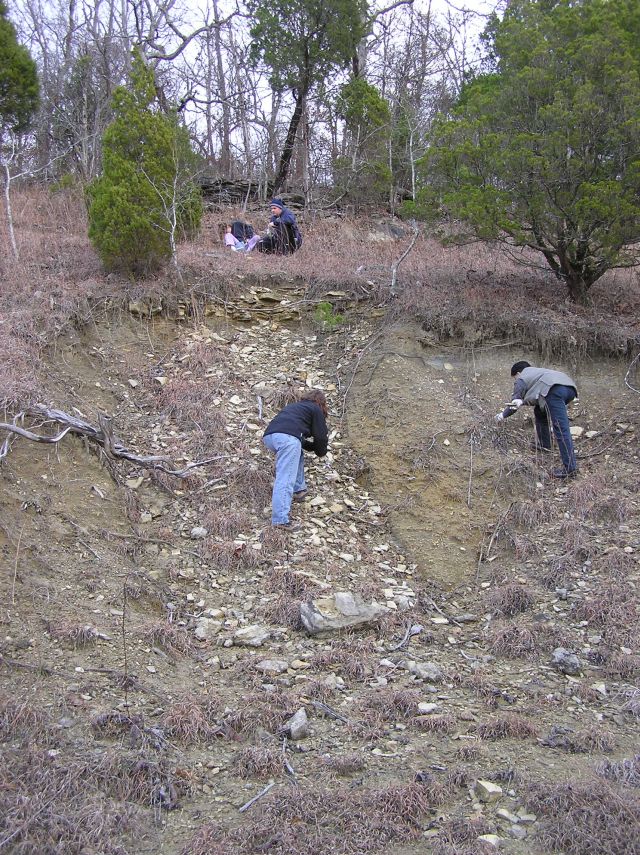
Very little was found at this location, but we had fun looking!
While most of the group headed for
the local
watering hole, 3 members proceeded on to stop #5:
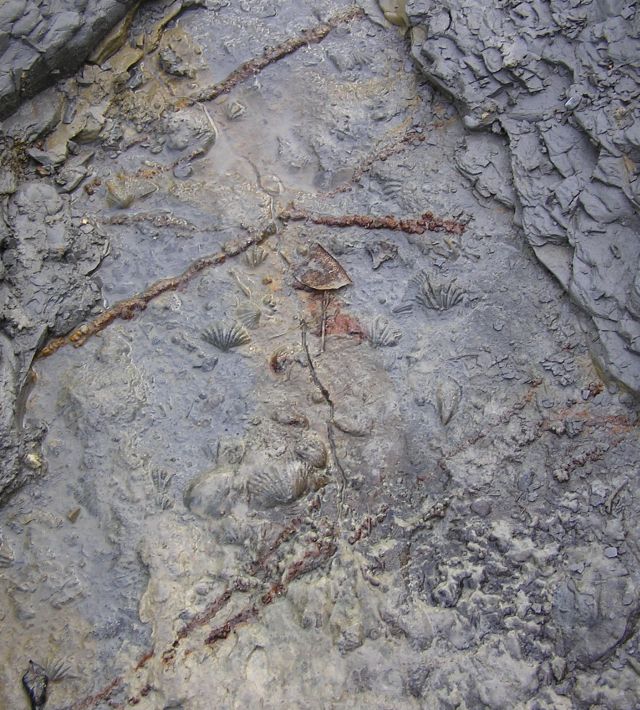
A beautiful
layer of bivalves is now exposed. Impossible to
collect without damaging the specimens, so we collected only photos.

A closer view
after cleaning. They are heavy, and may be
pyrite. Possibly limonite after pyrite.
2004
January 24, 2004 - Cambrian Fossils, Cherokee Co, AL
Our first stop was at a new site exposing nodules from the shale of the Conasauga Fm, Dresbachian stage, late Cambrian approx. 515 million years old. Here we found over 20 "Brooksella" which are believed to be the internal mold of a "primitive jellyfish". The most that anyone can remember finding on any trip were 3, so everyone got at least one specimen.
The second stop was an old BPS stand-by trilobite site from the middle Cambrian Conasauga Fm. Albertan stage 530 million years old. Here everyone found a number and variety of trilobites both on nodules and by splitting the shale exposed on the beach. Cephalon (heads), pygidium (tails), and in a few cases whole specimens of the following were found: Coosella, Coosia superba, Kingstonia, Densonella, Holcacephalus, and Norwoodella.
We made an interesting trip to a third stop which turned out to be unproductive. But it did include being lead into the site by some locals on horseback, and one of our younger members got a ride on one of the horses.
Then we moved on to our fourth and final site that Steve C. found on a scouting trip near Cedar Bluff. This site was still in the shales of the Cambrian (but not sure what stage) and deserves a closer look when time allows because even though not many trilobites were found, the pieces that were found seemed to be large ones, possibly of Tricrepicephalus.
--Edited by Vicki Lais
Below are some great photos Greg took with his new digital microscope. Other photos courtesy Vicki Lais.
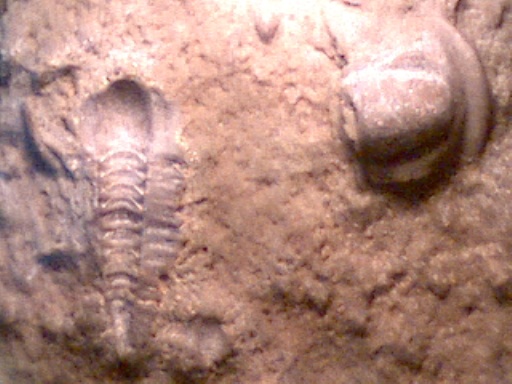

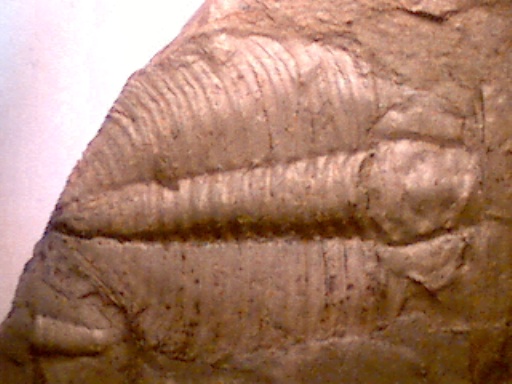
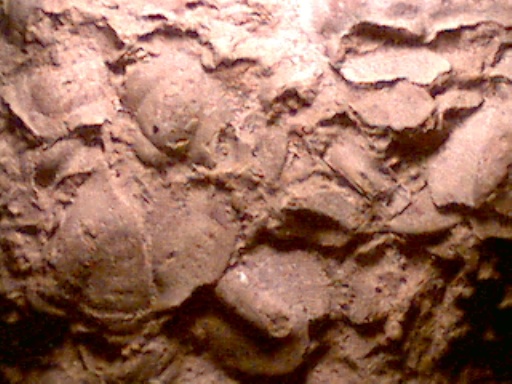
BPS members searching for Brooksella at a site that hasn't been visited in many years.

Showing off their finds.
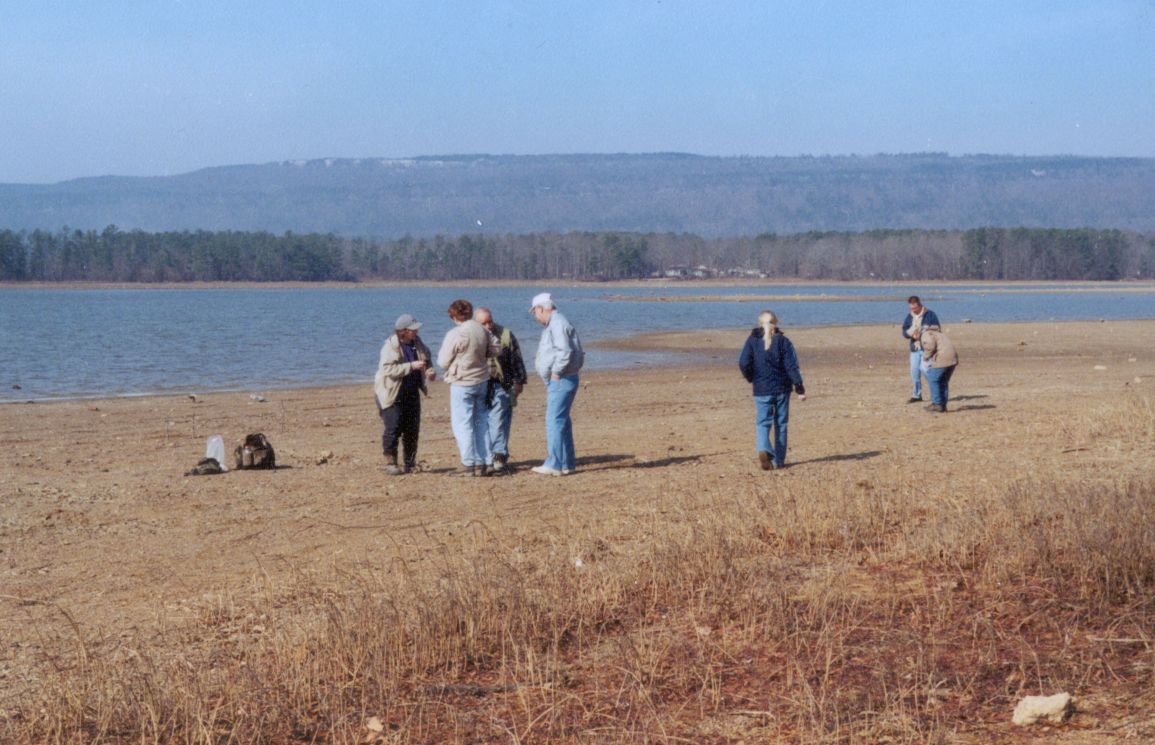
A nice collection!
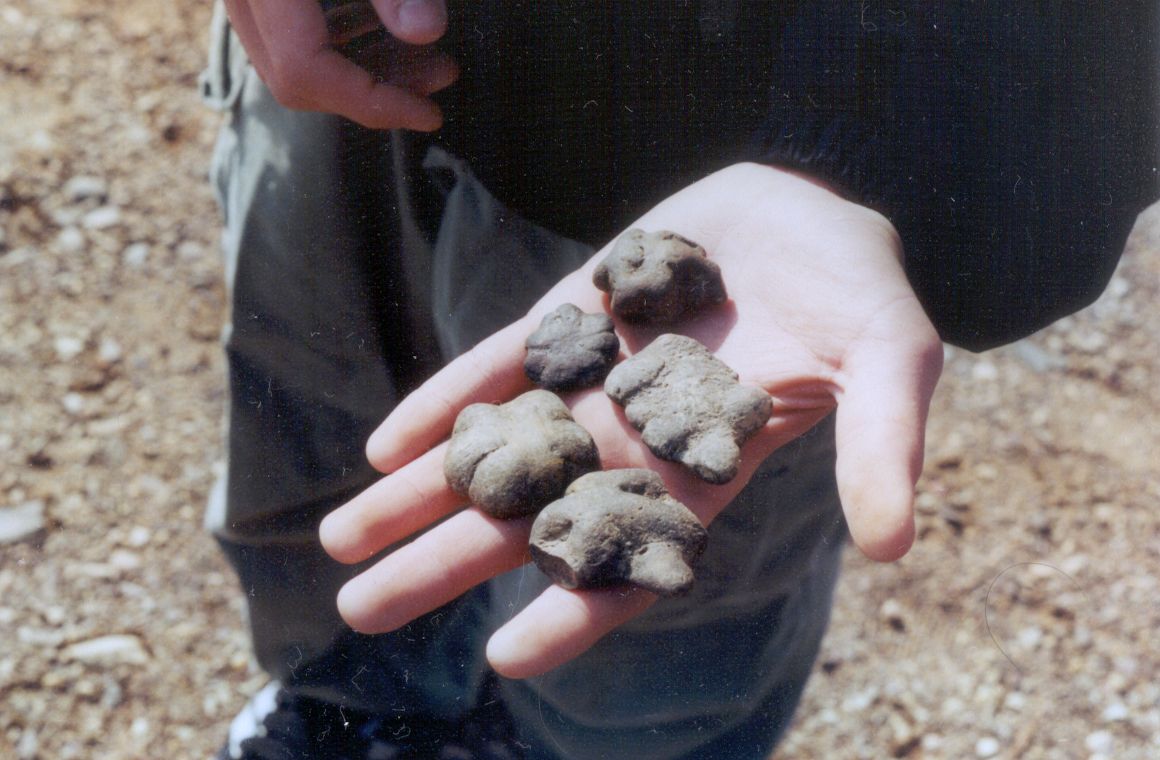
A new site. Found a large trilobite here, but was getting late, and only did a short site survey.

One never knows what
opportunities might
arise. Young Steve got the ride
of his life from one of the locals who guided us to a site.
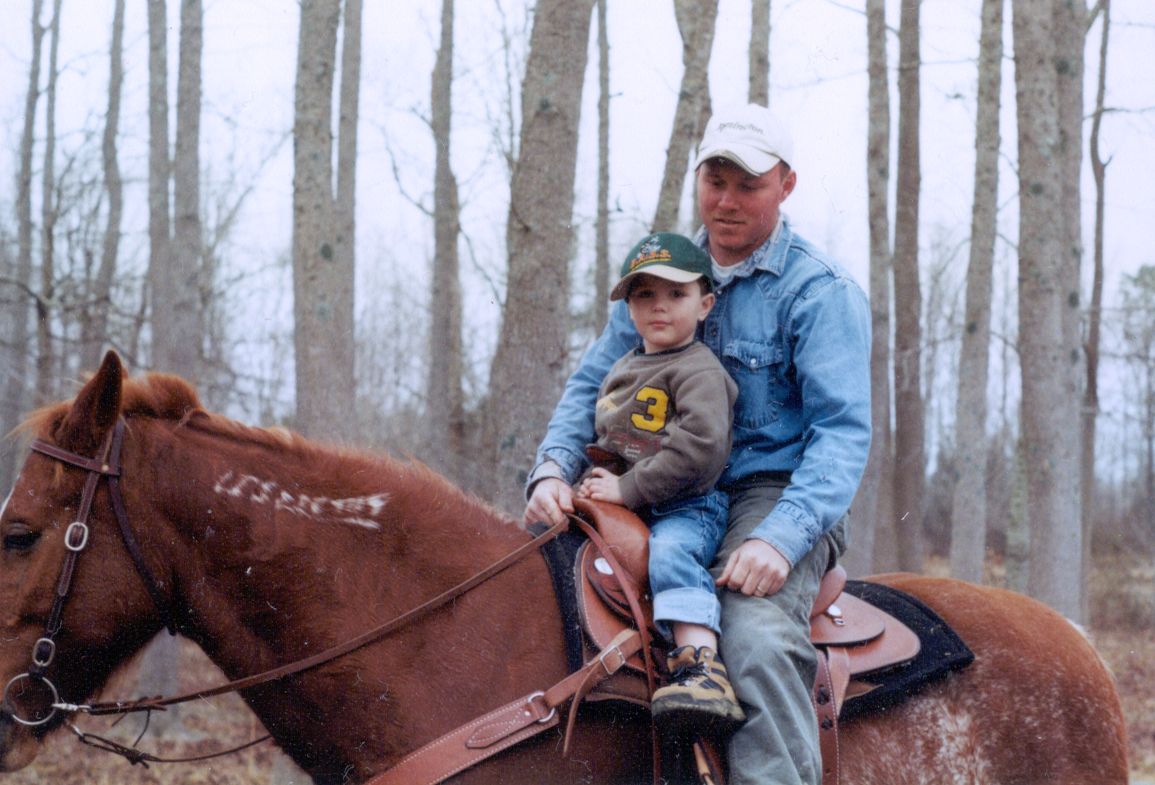
Nice find! 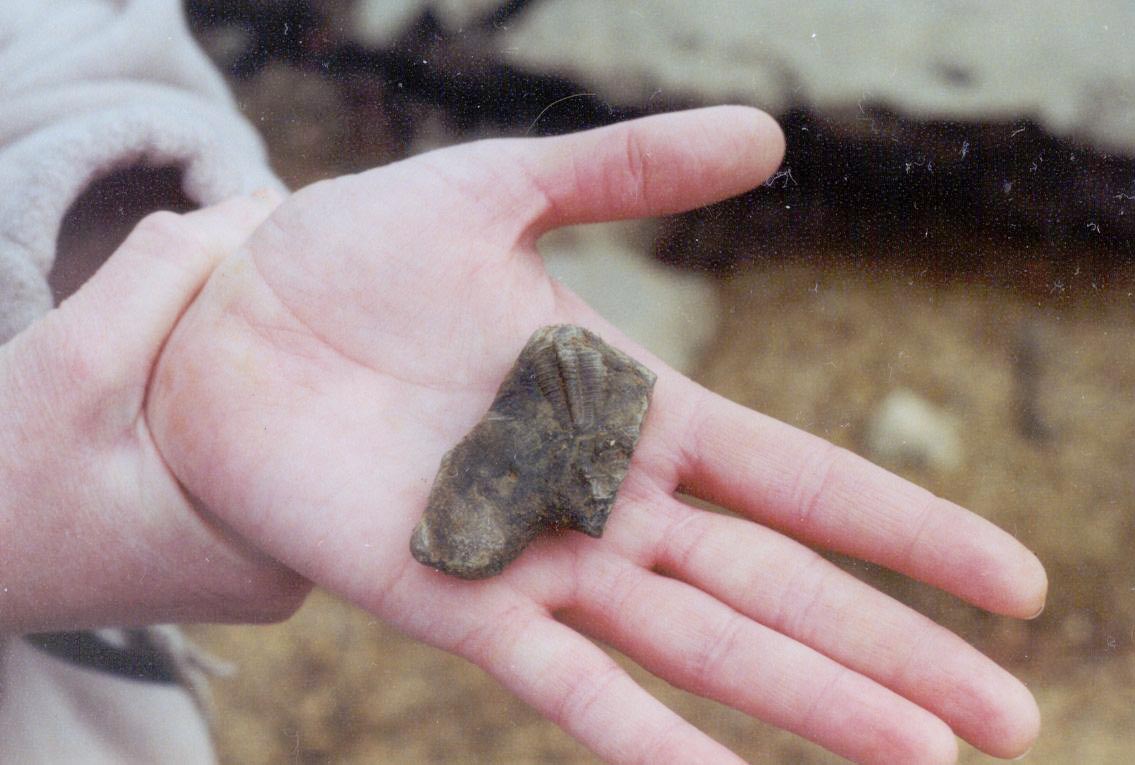
February 22, 2004 - Jefferson Co, AL
Some of the new members got a brief tour of the quarry and Nancy got to play with her new photo equipment. The small boulder we had chosen on an earlier trip was re-located and we went to work cleaning and preserving it. The results were better than expected and many more "critters" were found on the stone than expected. However, attempts to do a rubbing of the stone failed due to the texture but Nancy came to the rescue. She took some great photos using her SLR digital camera and by using "PhotoShop" was able to make a virtual rubbing that I think will work better than the real thing. This "rubbing" is to be used in the educational pamphlet for RMNC and being digital, it will be easier to edit. Even though we could not do any collecting for ourselves we did find a few interesting items that could be preserved and put into the RMNC collection along with the display we are building for them. It is fun giving something back to the city that has been the home of BPS for the last 20 years.
(Photos courtesy Nancy Kenfield and Vicki Lais.)


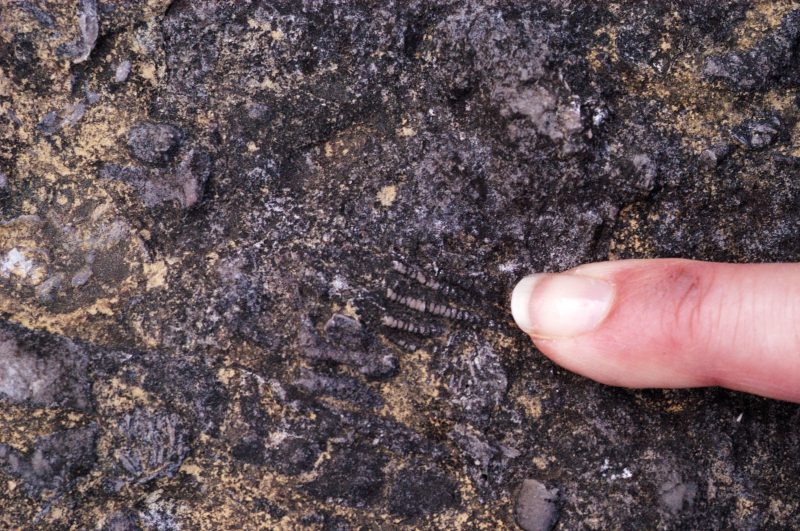
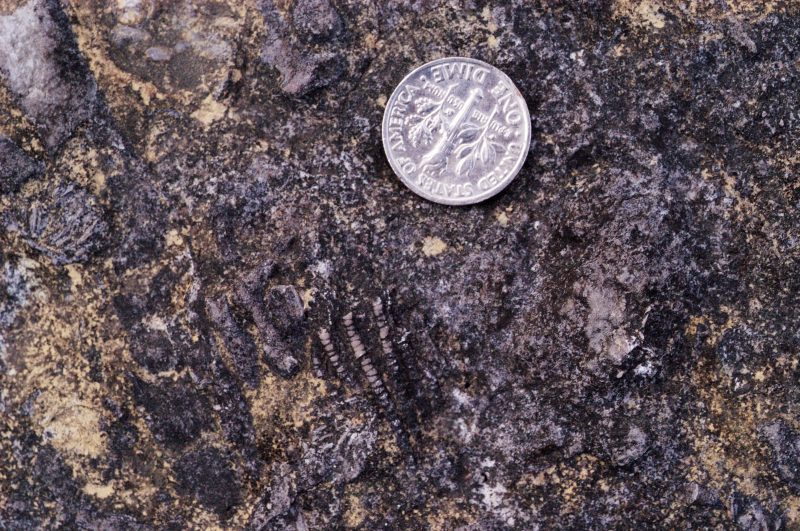

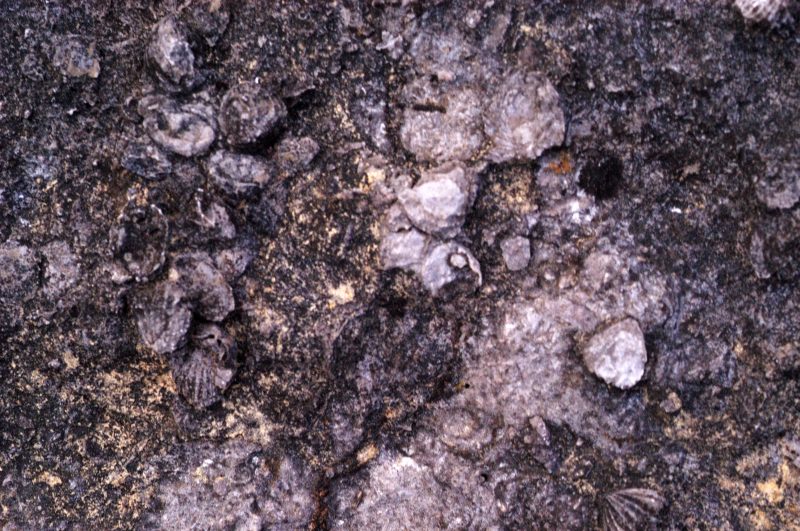
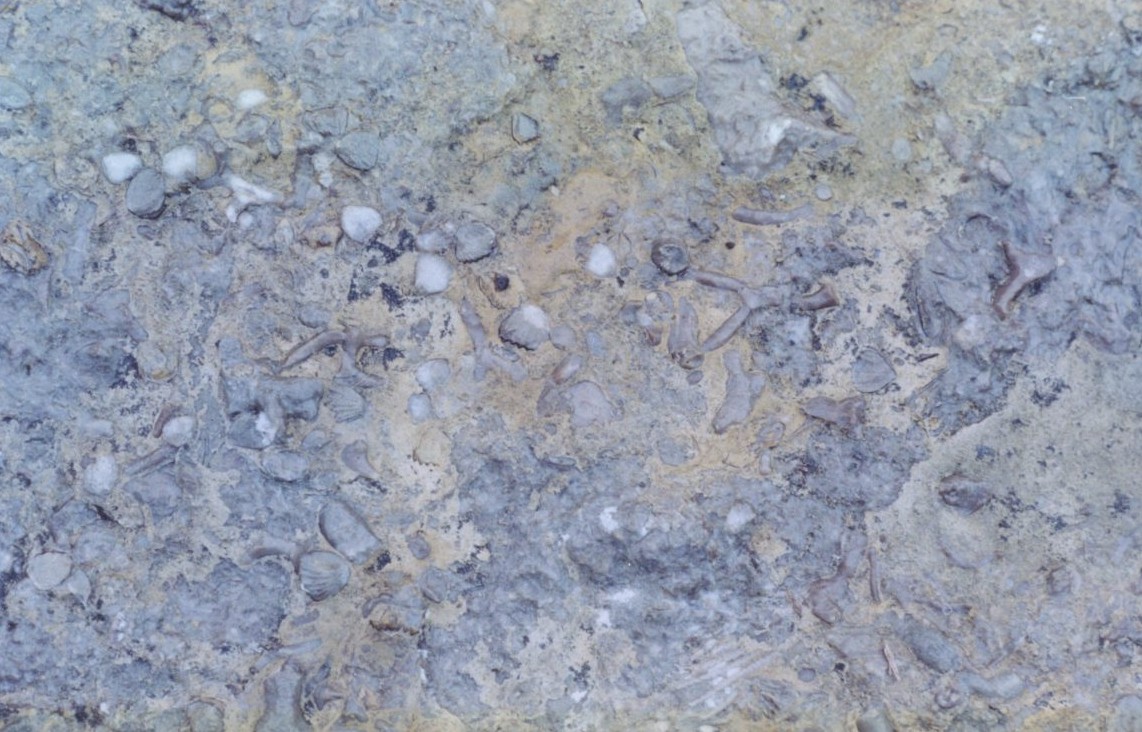
Everyone trying to make a point. . . .
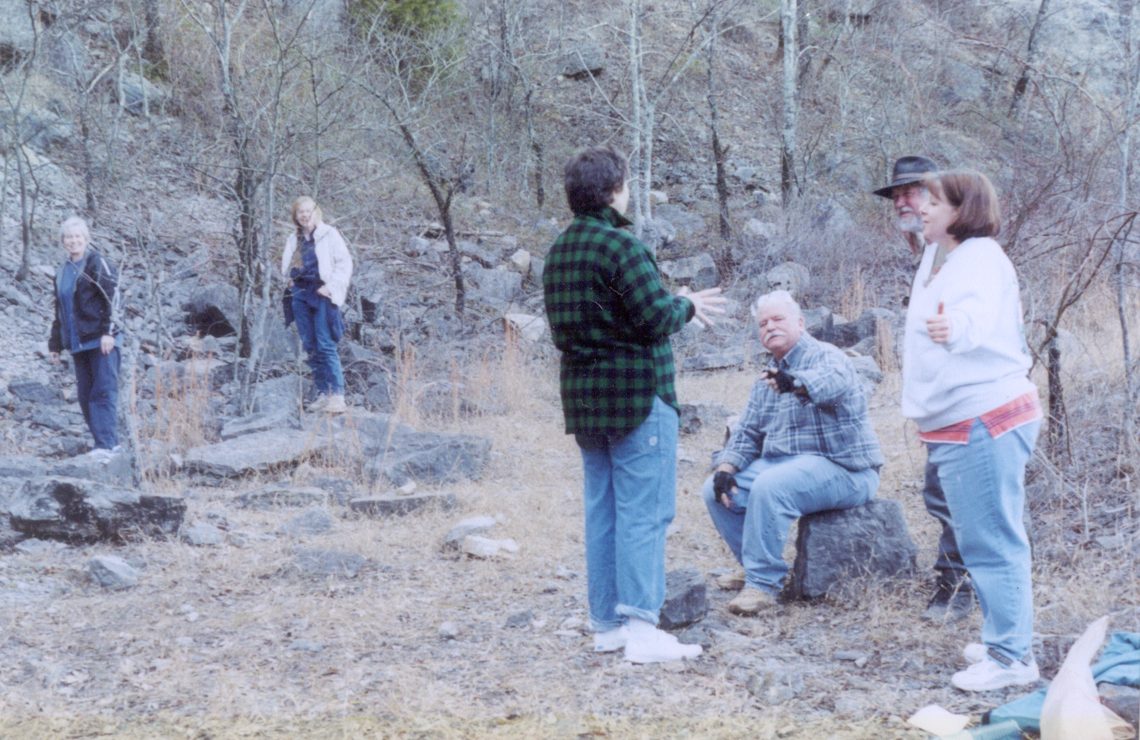
March 13, 2004 - Mississippian Fossils, Morgan Co, AL
We began our field trip for this month at a quarry in Jefferson County, to view specimens in the quarry classroom. Then we caravaned to the collecting site in Morgan Co, AL (except Vicki, who was talking so much to Bill and Adelle that she failed to see everyone else passing her on the interstate ...)
We had a wonderful day of collecting, beautiful weather and great turnout. We went to a new spot in the quarry, in addition to the site from last year. Collecting is in the Mississippian Period (340-310 mya), in a very hard limestone. Every member had great finds, including crinoids (including arms and calyxes), blastoids, brachiopods, coral, and sharks teeth (believe it or not!). Proper prep work will make these specimens stand out beautifully.
(Photos courtesy Steve Corvin, Bill Cunningham, Vicki Lais)
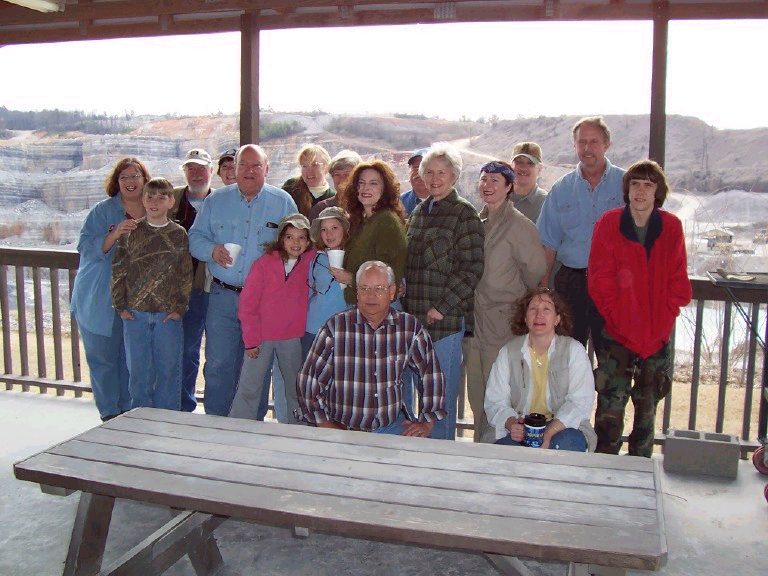
We're ready!
Inside education building, viewing the display.
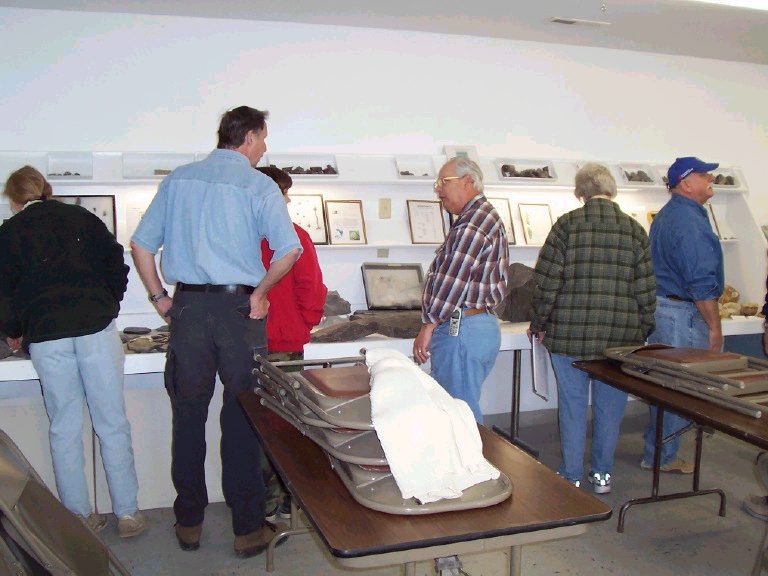
View of the Tarrant quarry.
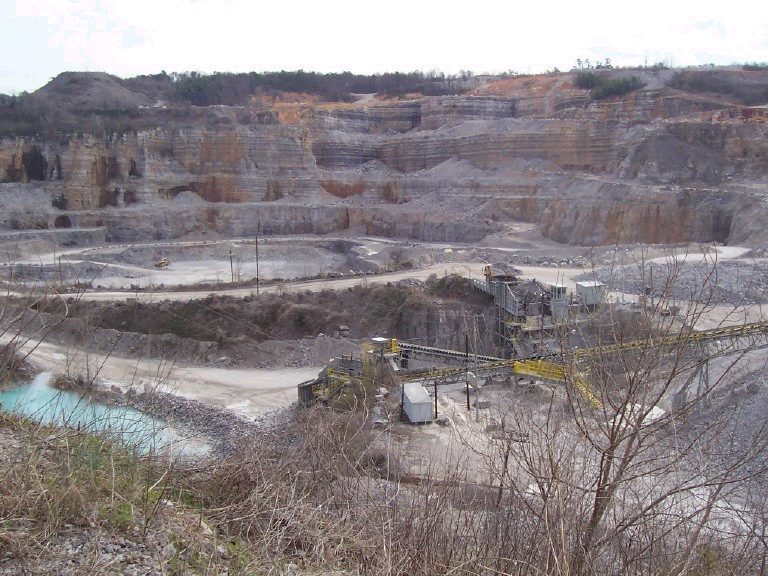
BPS members searching in the boulder piles.

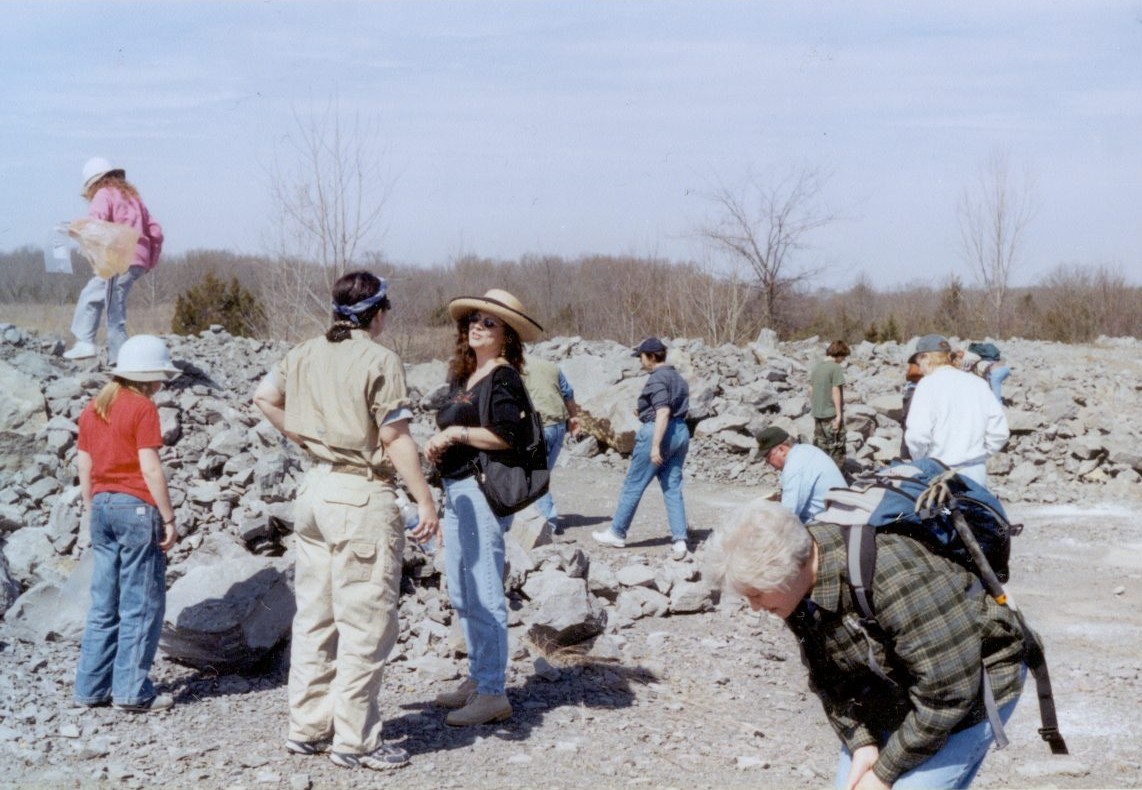
Was it worth all the searching? We think so. Nice crinoid.
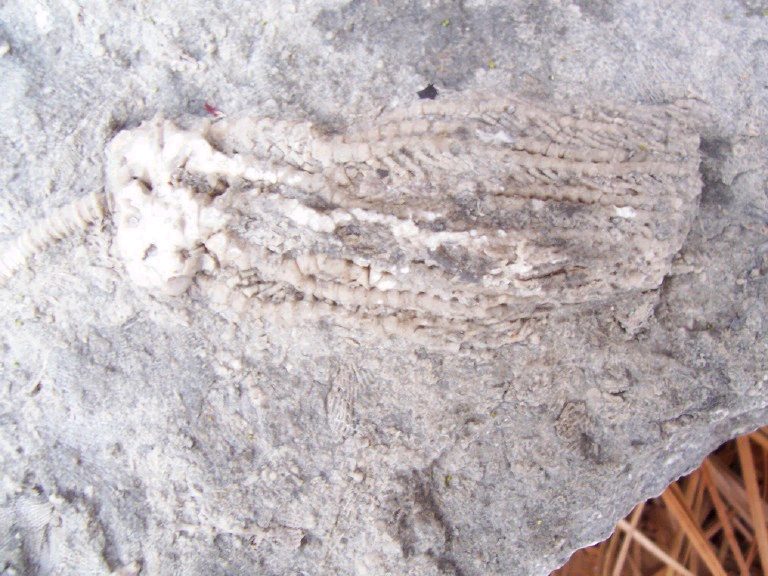
Rock filled with crinoids and blastoids found by Vicki. Click rock for larger image.

Typical fossils found at this site.
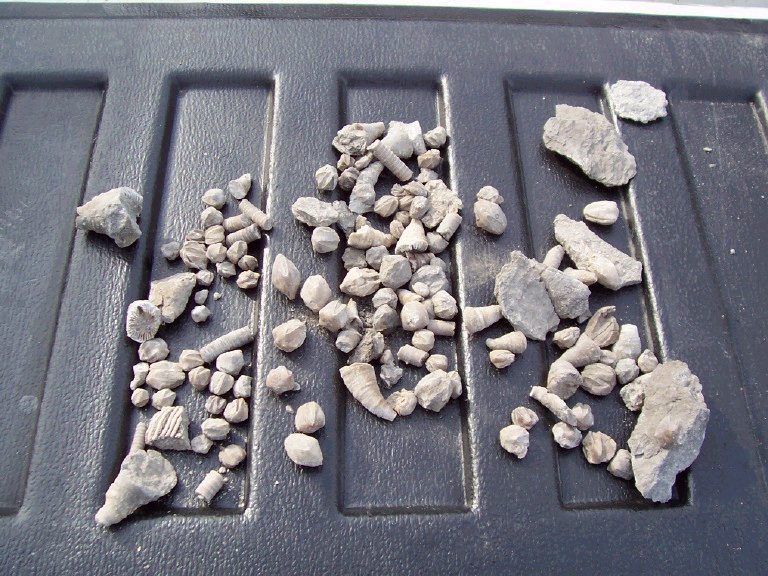
April 17, 2004 - Cretaceous and Pleistocene Fossils, Greene Co, AL
A number of teeth from the Goblin shark and crow shark were found by all. (See the July, 2003 trip report for details on these sharks, and more on the geology of this site.)
(Photos courtesy Vicki Lais)
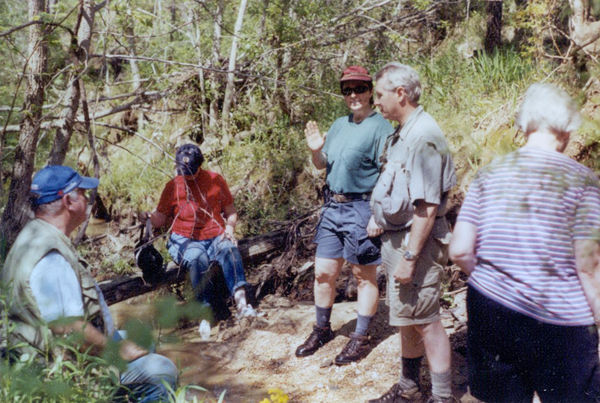


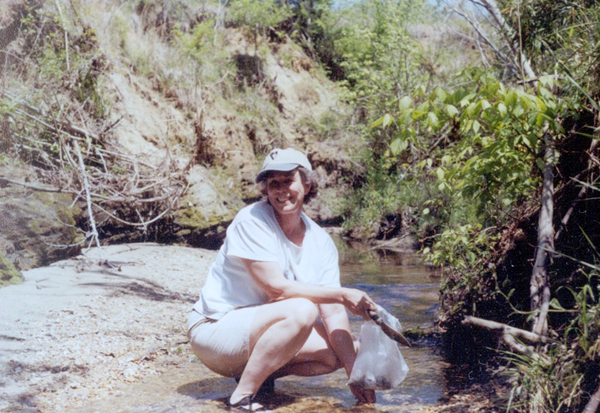
Ann and her bag of treasures.

Nancy showing off her ptychodus tooth.

Vicki dumped her bag to show what she had collected so far. A number of shark teeth, some in matrix, bone fragments, and several "interesting unknowns".

How many hours do you think Claire and Ann can do this?
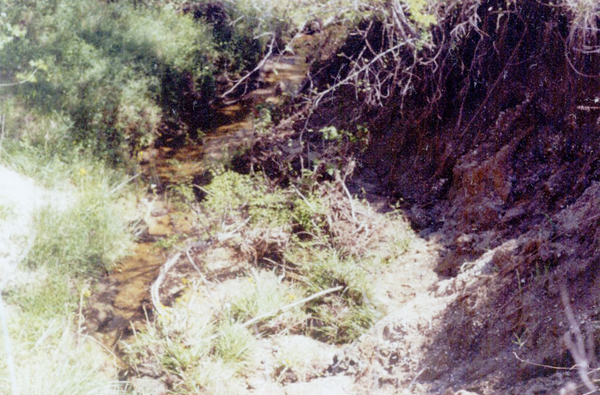
A small canyon that proved interesting. A little out of the picture one can see the strata where the teeth and pea gravel have been deposited in the bank.

Climbing down into the canyon. (they keep telling me to quit taking pictures of rear ends....)
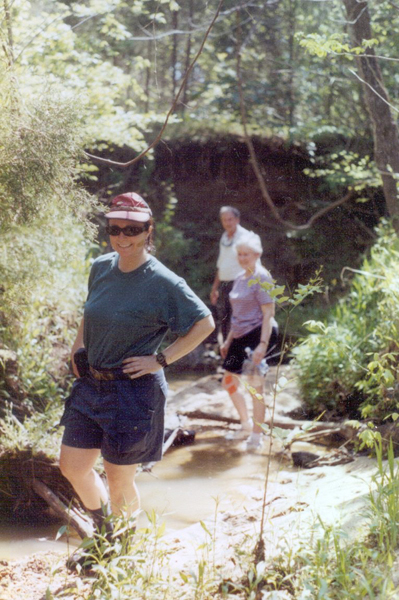
Lisa, with Jan and Bobby in the background. Steve was always somewhere way up the creek or way down the creek, and managed to totally avoid the camera.
May 22, 2004 - Cretaceous Fossils, Sumter Co, AL
As Bobby came over to see what all the fuss was about, he saw "odd shapes" sticking out of the chalk about 15 feet before he got to where Greg was working, and after looking closely, realized it was several more vertebra. Steve came over to assist in excavating this new pile of bones. The other part of the group had gone to another nearby beach, and were basking in the sun (and I suspect they went swimming based on Nancy's drenched appearance!). They decided to ride back over after all the hard work had been done, and see what we had found. Then Jan asked if we had looked under that tree trunk beside us. Well, no. So the trunk was moved, and low and behold, there were about 5 more vertebra under it, which were also excavated. So this was truly a group find, and everyone got to work on the excavations, initial cleaning, and proper packing.
Bill, with the assistance of Leisa, did a great job on the site survey and drawings. Greg, who worked many years with the paleontologists at Red Mountain Museum, supervised the excavation and has been preparing the fossil bones for display. Thanks to all for the fine work and photos! (NOTE: any professional paleontologist who desires to study these fossils, please send your request via email.)
Afterwards, a number of members went to another river site in Sumter county to collect marcasite.
Bill Cunningham also contributed to this report.
(Photos courtesy of Nancy Kenfield, Bill Cunningham, Vicki Lais, and Greg Mestler.)

WOW !
(Click images for larger view.)
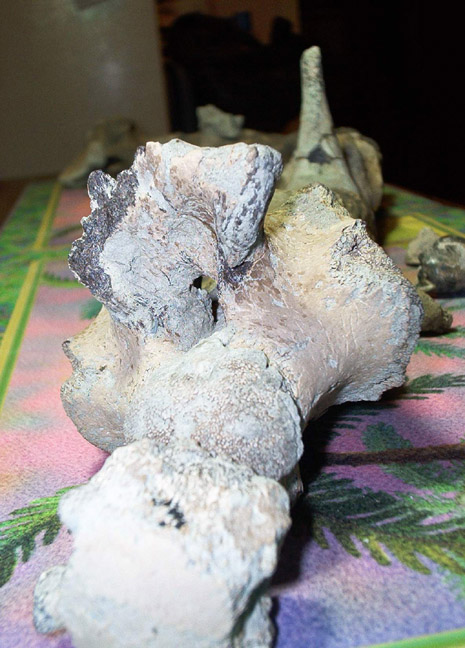

Lets get going!

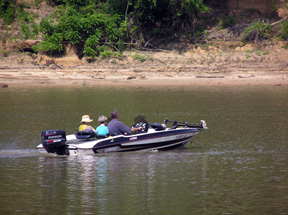
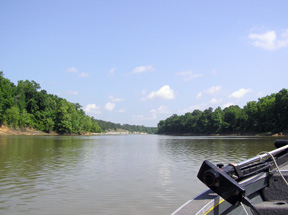
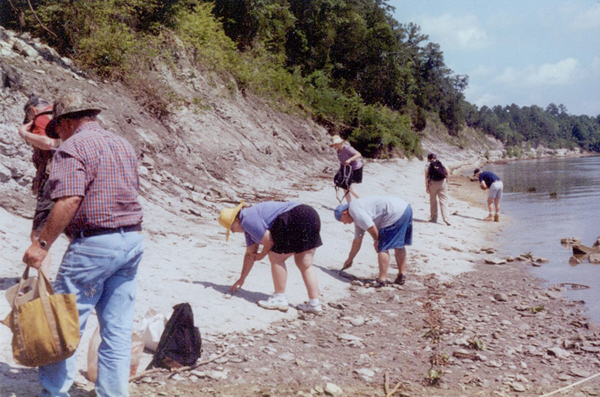
Hey, guys, pose for me!

In large photo above, this is the leftmost vertebra, immediately after excavation.
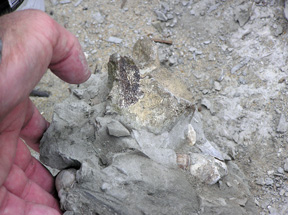 Top view of vertebra.
Top view of vertebra.Bottom view.
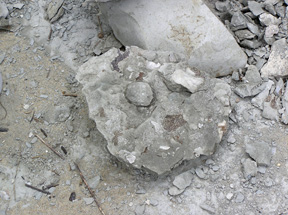

One of the many gastropods found.
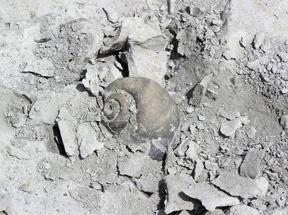

What did you find?


Vertebral column extends 7 meters from near Coke can to several feet beyond the excavators.
Yes, we get dirty.


The excavation site had a small drainage problem...

Samples of typical finds - ammonite, straight cephalopod, gastropod, turritella, limpet, oyster.

Steve with his latest treasures.

Bobby washing mud off the vertebra.


Group of eight vertebra.

Three vertebra in situ (about 15cm apart)

A vertebra in matrix (caudal concave discoid about 5cm)

Ammonite impression (about 30cm)
Local wildlife.

Water hyacinths are pretty, but is an invasive species that destroys our rivers and lakes, and it is prohibited to sell it in the state of Alabama. Thick infestations can make boating or swimming impossible.
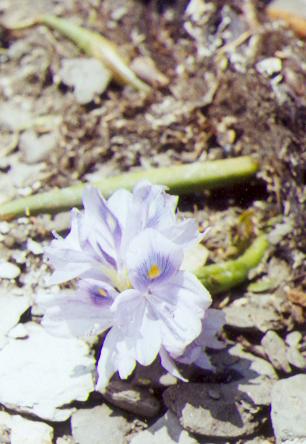

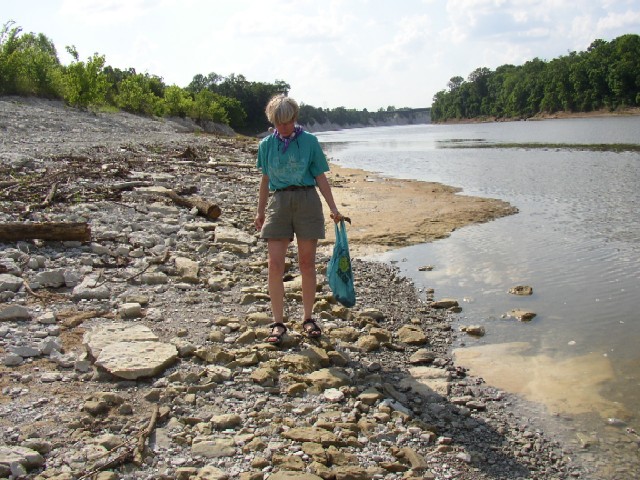
Several members traveled to another Sumter County location to collect marcasite.

White chalk cliffs in Sumter County, AL.
June 26, 2004 - Late Cretaceous Fossils, Montgomery Co, AL
(An Account of Unprecedented Creek Crossings)
BPS members visited a late Cretaceous site in
Montgomery County, Alabama, where we collected primarily
echinoids, gastropods, and a few shark teeth. This trip was a
real adventure!
A week of daily summer rains and pictures from Friday's site
reconnaissance were not enough to daunt those needing a field trip
fix. By mid-day Saturday the water had receded enough to give
hope to those who had been standing on one bank of the creek and
staring longingly at the other bank. There was a spark of
hope.
At lunch it was decided that after a trip to a second site
that enough
time should have passed and the creek could possibly have receded
enough to be crossable.
Steve waded the creek with one end of a 60 ft rope in
hand. Once
tied off on both sides the rope was a sufficient balance for a slow and
steady crossing. There were crossers who faced downstream,
crossers who faced upstream and those who sidestepped their way
across. All present decided to journey to the other
side.
And by my count - taking the rope and escorting 6 people X two = 22
crossings for Steve.
Flood level water the day before washed out good material for
collecting, and yes, we finally needed that change of dry
clothes.
--Edited by Vicki Lais
- - "TALES FROM THE
PAST" BY JAMES
LAMB - -
(Photos
by Nancy
Kenfield and Vicki Lais)
July 31, 2004 - Monroe Co, AL
Members participating in this long trip were Greg, Jan, Steve, Leisa, Gilbert, Carolyn, Vicki, Nancy and Miss Daisy.
(Photos courtesy Nancy Kenfield, Steve Corvin, and Vicki Lais)

Along the shoreline.
Greg and Steve, getting ready to check out this landing.

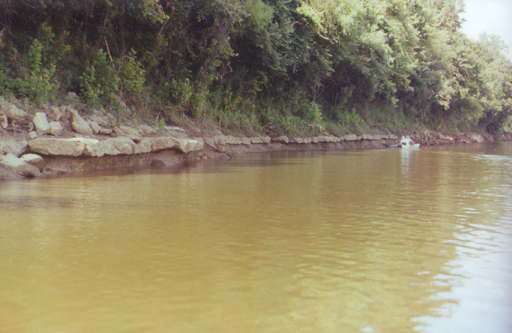
Shells in matrix. Sand is wet, and shells will disintegrate at the slightest touch. Careful excavation is essential.


At slightly higher elevations, the shells are dry and hard. Leisa found these.

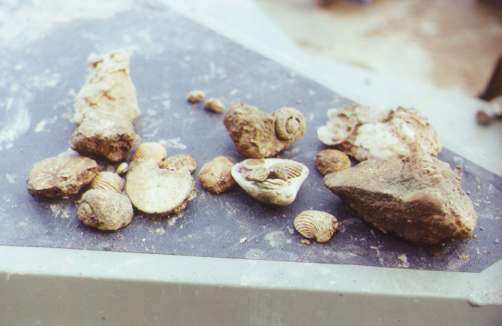
A representative sampling of shells in this locality.

Shell impressions.

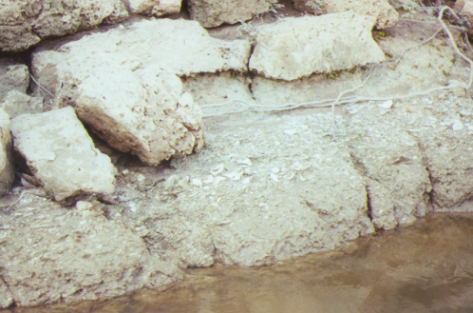
Shell layers in the bank.
Turritella found by Steve.
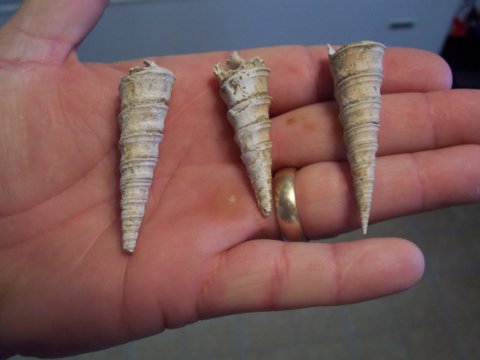
Sand dollar found by Steve.
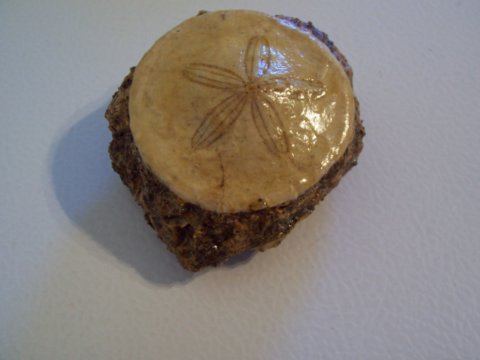
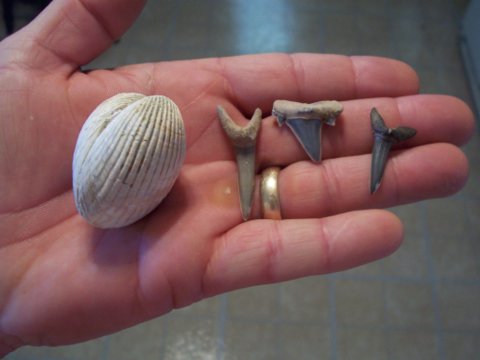

Nice collection of sand dollars found by Steve.

Large boulders, appearing to be trace fossils, perhaps burrows.

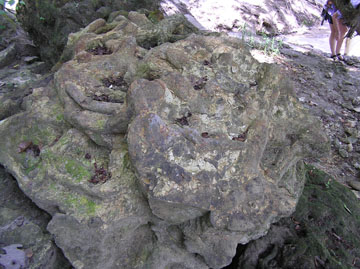
Many of the burrows had shells inside.
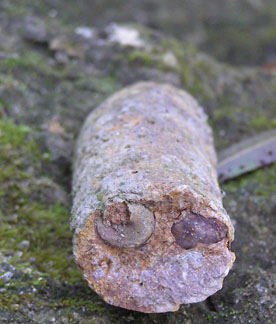

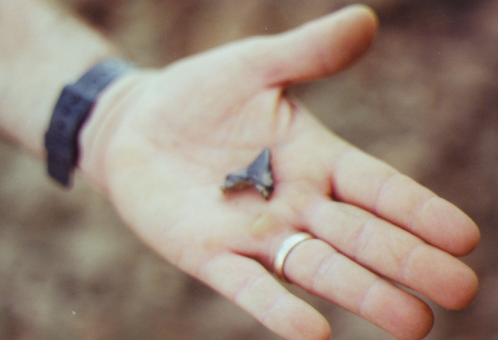
Tooth found by Steve.
Gilbert after a long hard day on the river.

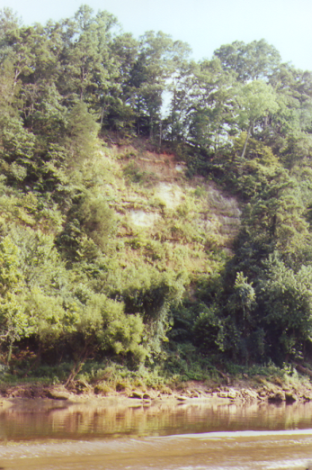
A view of the bluffs, mostly grown over now.

End of another great collecting day!
On the way down, some of us apparently took a wrong fork in the road.... that sign was deceiving.

August 28, 2004 - Cretaceous Fossils, Butler Co, AL
(Photos courtesy Vicki Lais)

One of the first items found. Forgot to put a scale in the photo, but this gastropod is approximately 4 inches long.
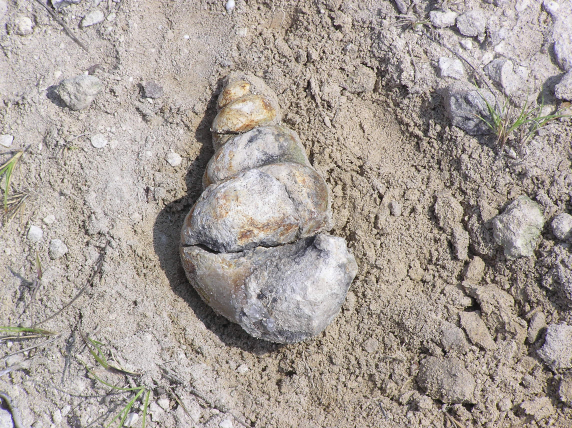
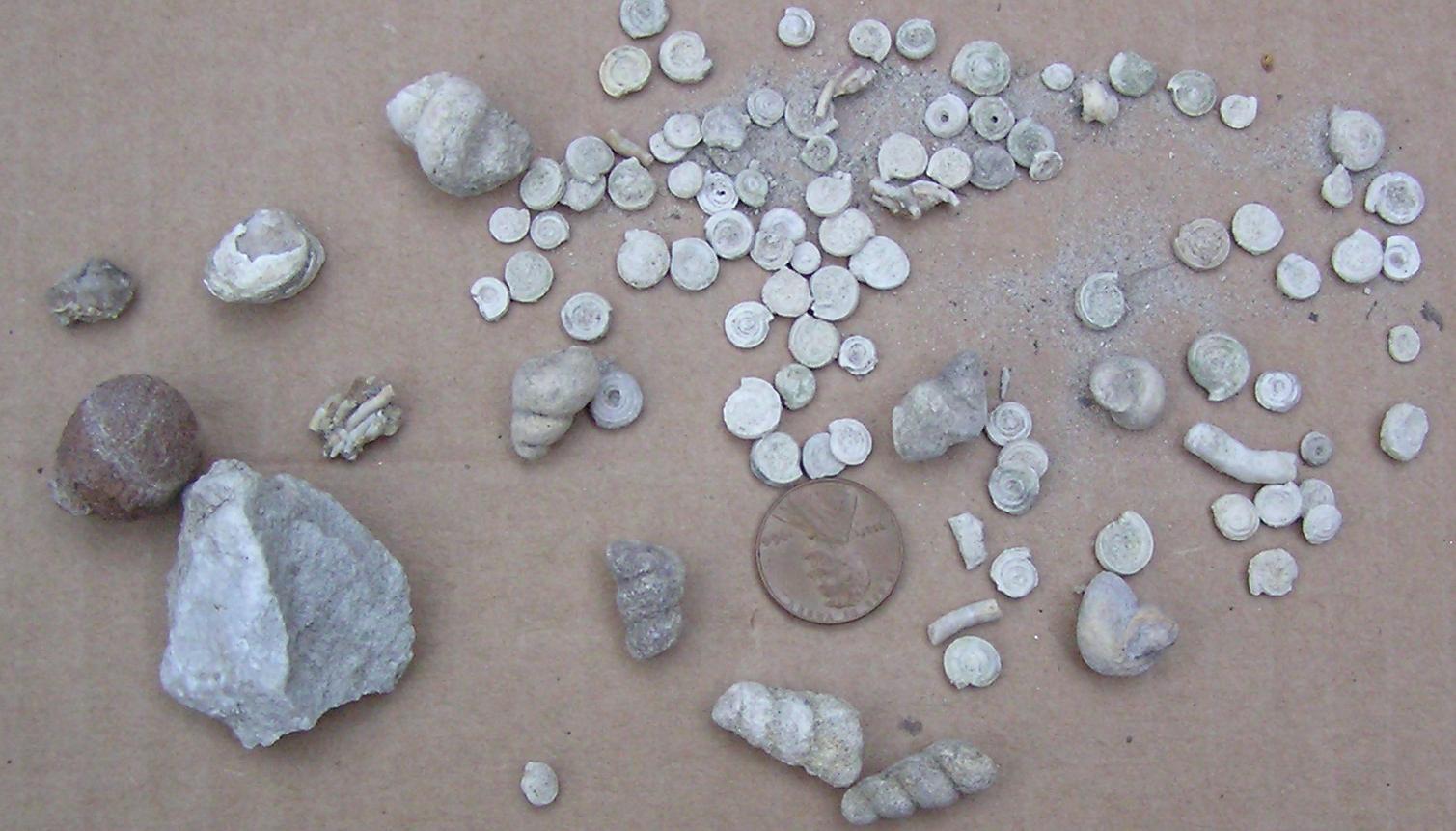
These tiny round gastropods are common on the ridge. Turritella, bivalves and worm tubes are also found, but are not as common.

Boy, was it hot on that ridge! Let's go to the creek! Becky, Carolyn, and Nancy
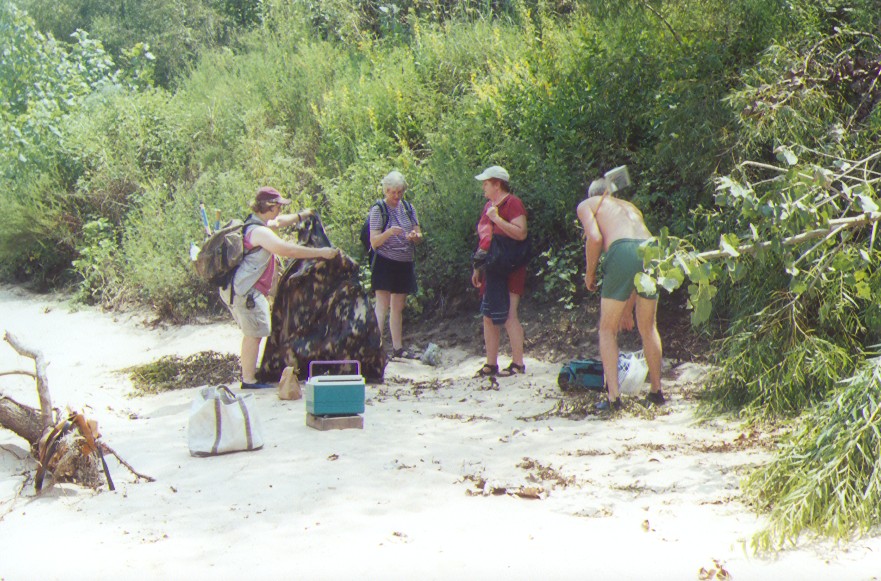
Getting ready for the hunt.
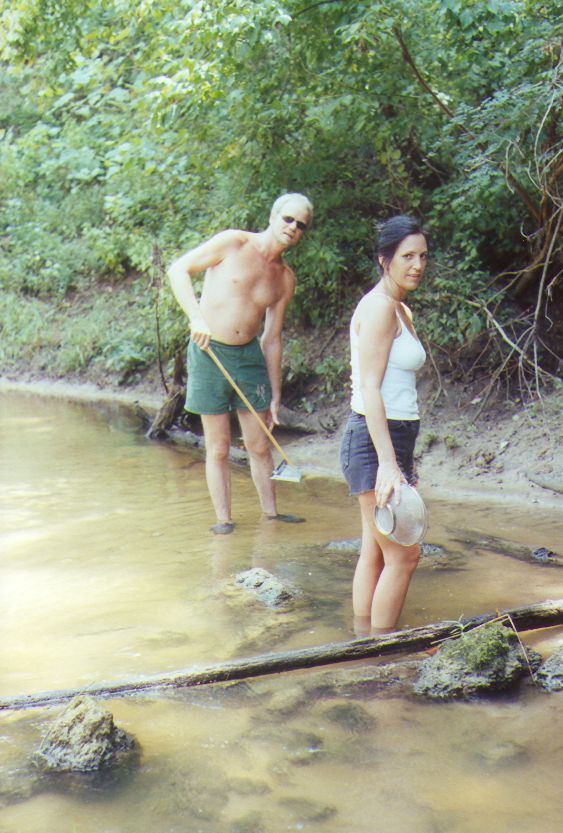
Ramsey and Sarah get started.
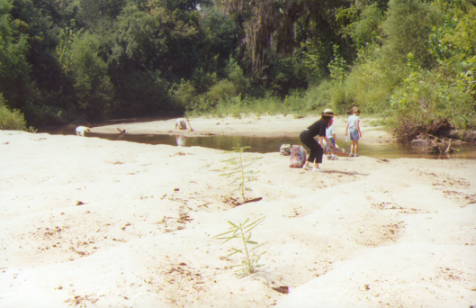
Leah and others heading up the creek.
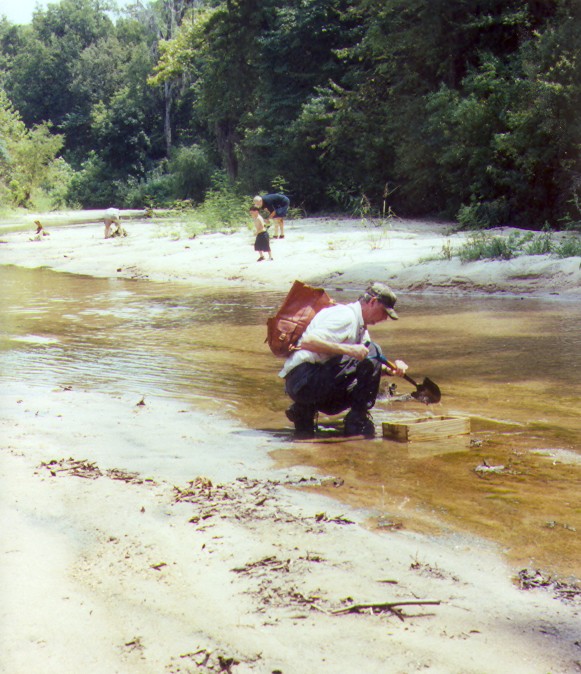
Bobby sifting through the gravel.

Nice gastropod.
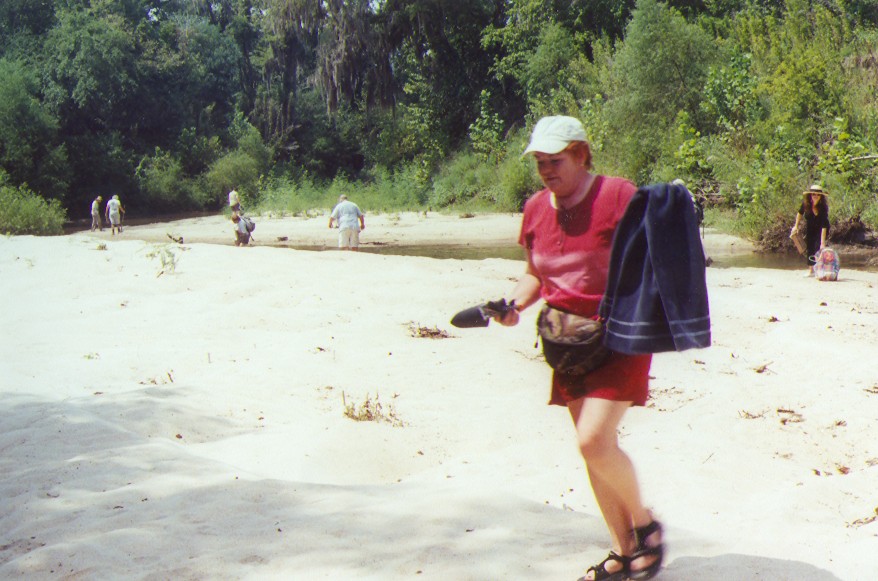
Some of the troops head downstream. . . .
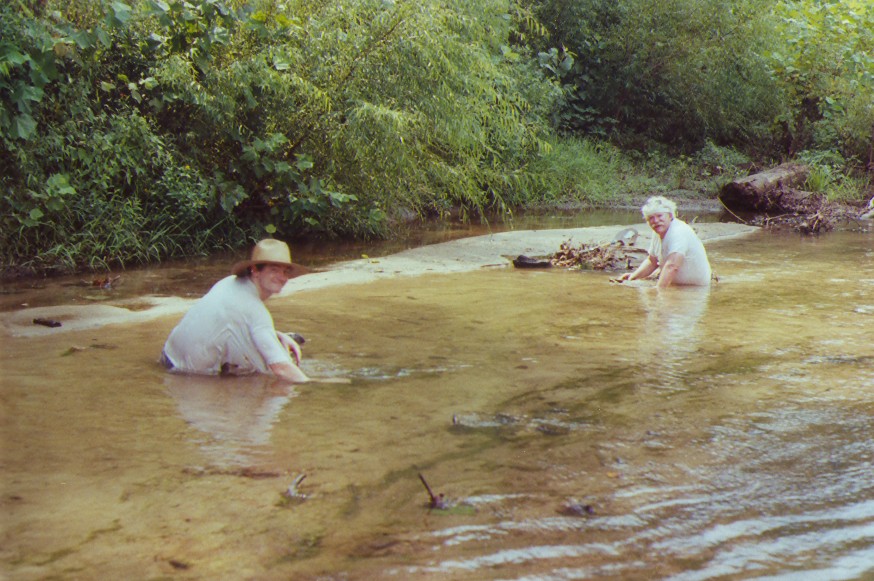
While others (Wes and Jeff) decided to stay put for a while.

Claire and Nancy find a good spot for lunch way upstream.

Nice artifacts found by Jeff and Wes.

Small nautaloid.
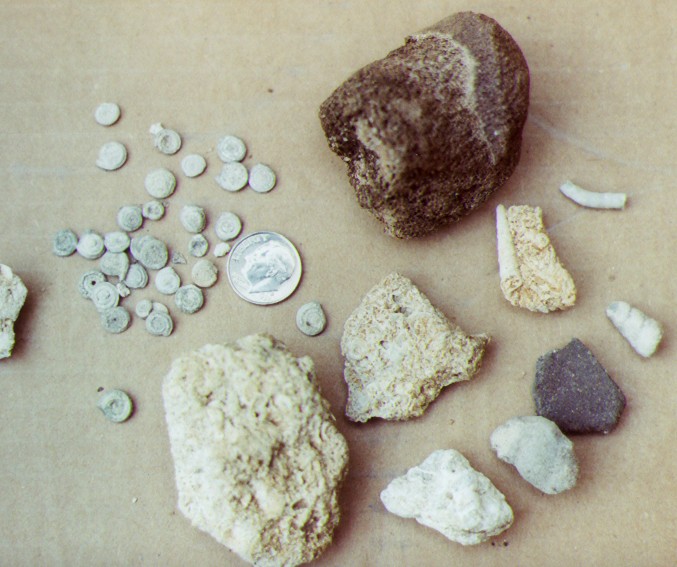
Samples from Vicki's bag.
October 2, 2004 - Lawrence and Colbert Co, AL
Stop #1 was a roadcut in Lawrence County, Alabama, where large pieces of rugosa coral in Bangor Limestone had been excavated by road construction. The site has almost been totally reclaimed, but some very nice specimens were found.

A large coral head.
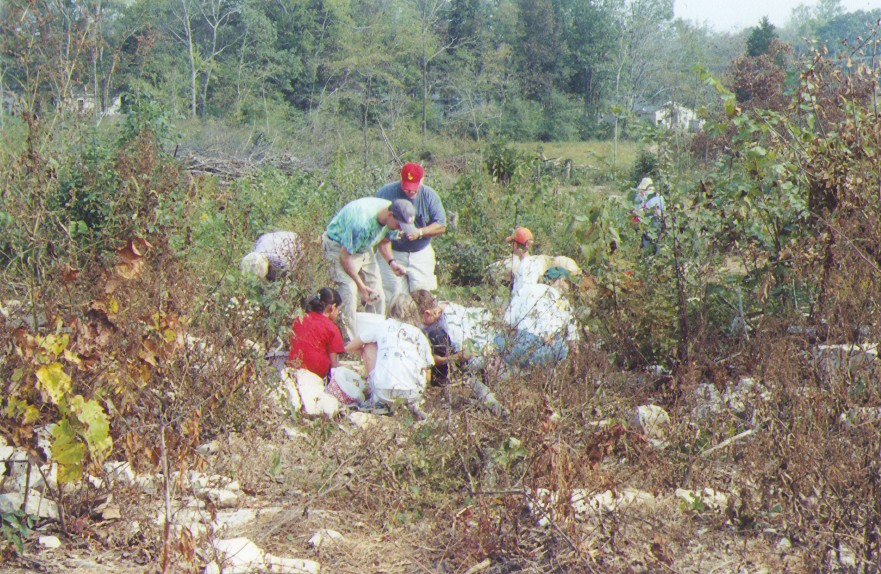
Hunting for treasures. The site has become overgrown, making it more difficult to spot the coral pieces.
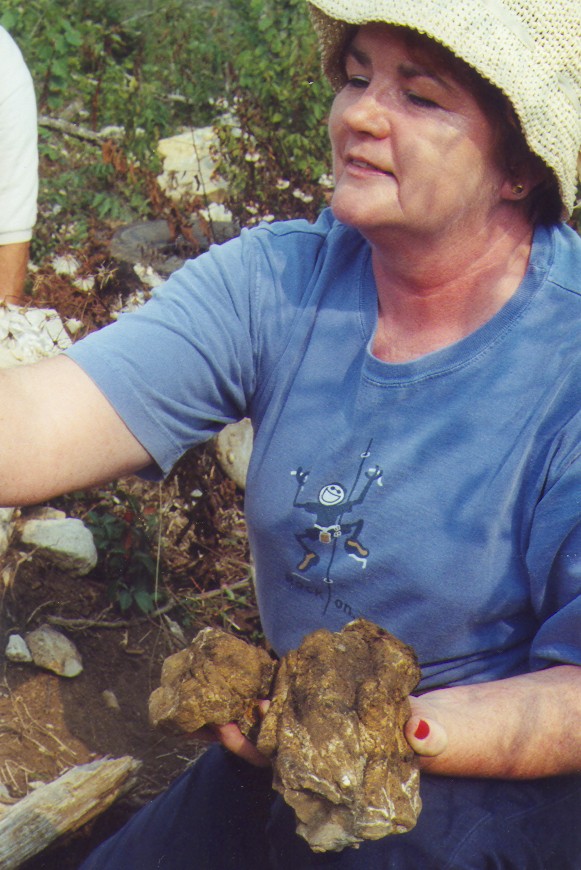
Carolyn with a couple of coral clusters.

Bobby in foreground, with James in back.

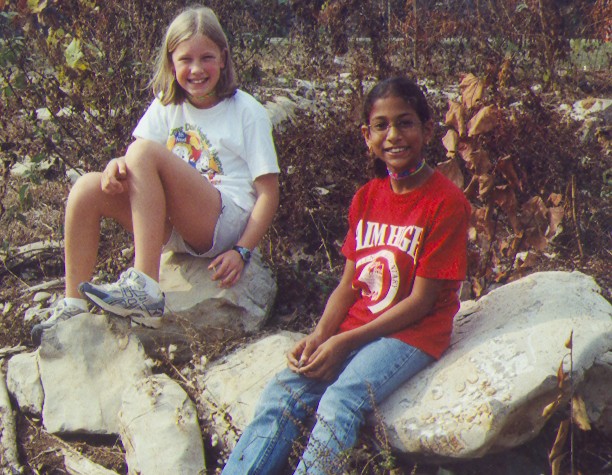
Katie and Nina, very happy with their finds! Note the large coral head underneath Nina!
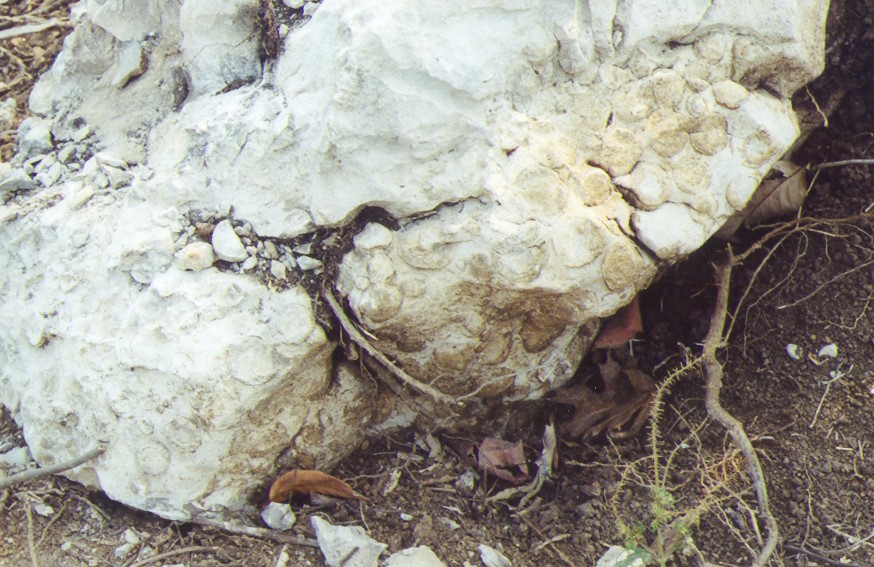
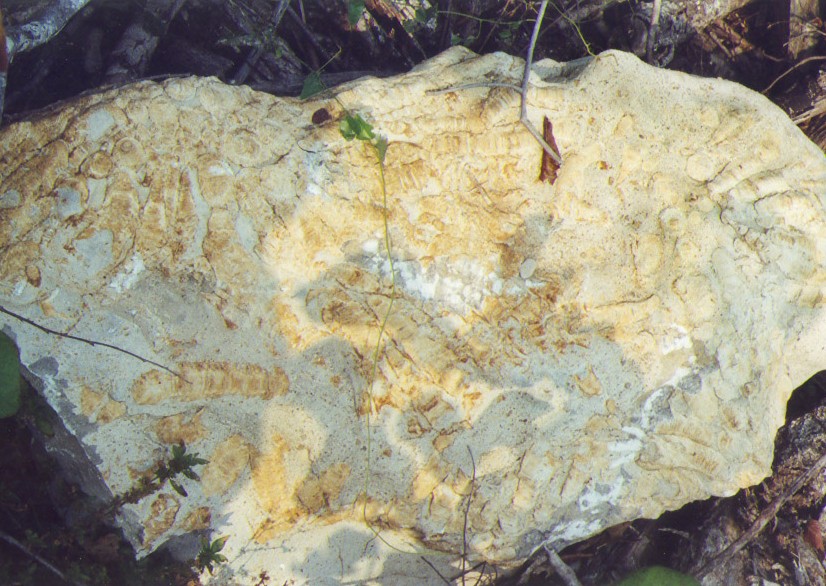
Stop #2 was a short stop, yeilding several samples of archimedes and crinoid stems, also from the Bangor Limestone.

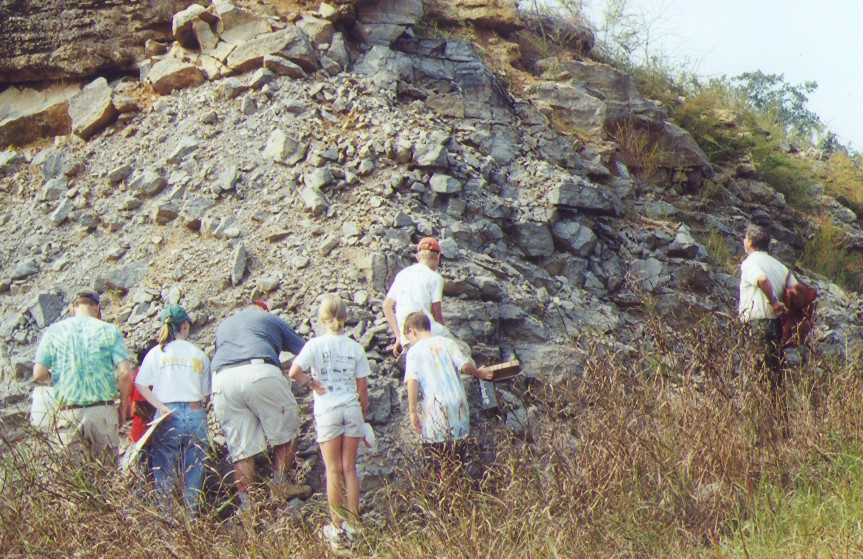
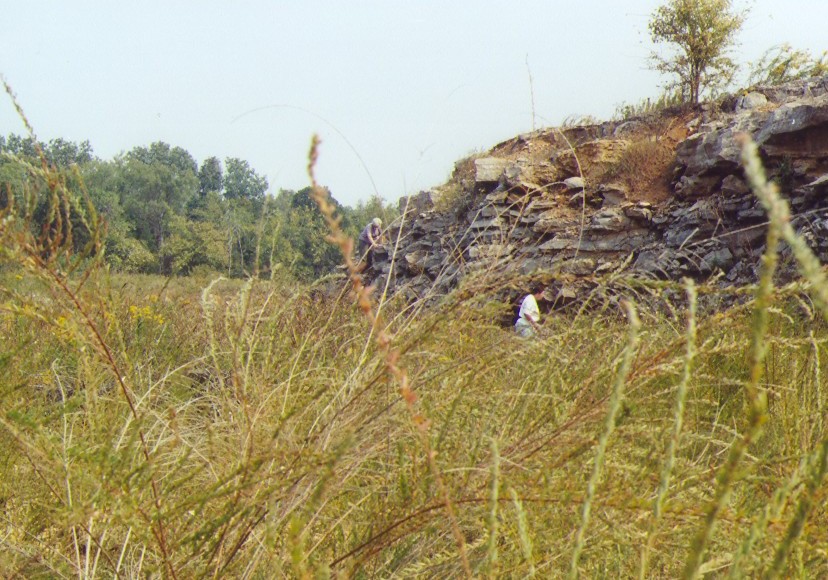
Jan and Claire inspecting this outcrop
.
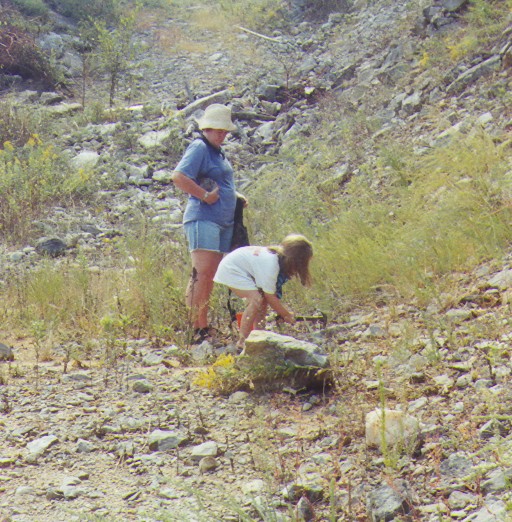
Bailey has found a nice archimedes.
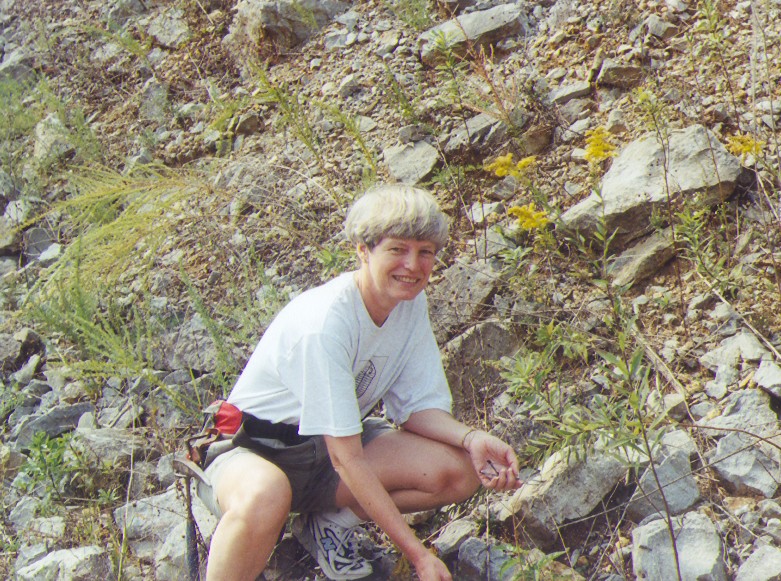
Vicki in her favorite environment, surrounded by rocks!
Stop #3 was a roadcut in Colbert County. Horned corals, blastoids, and crinoid stems were plentiful.
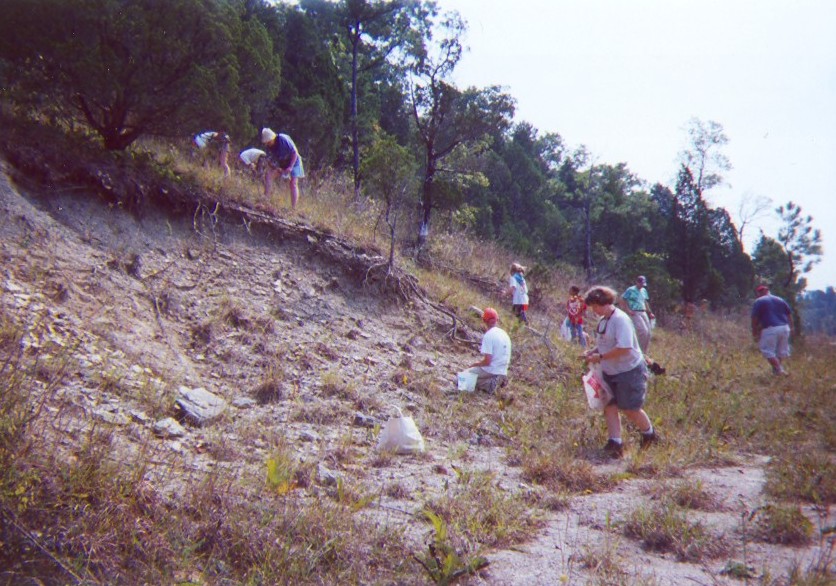
The fossils weather out, and can be found laying on top of the ground.
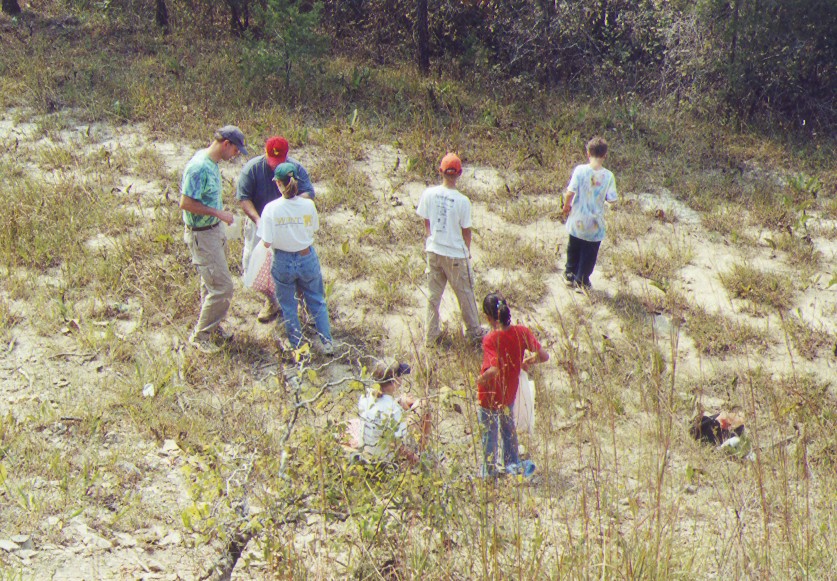
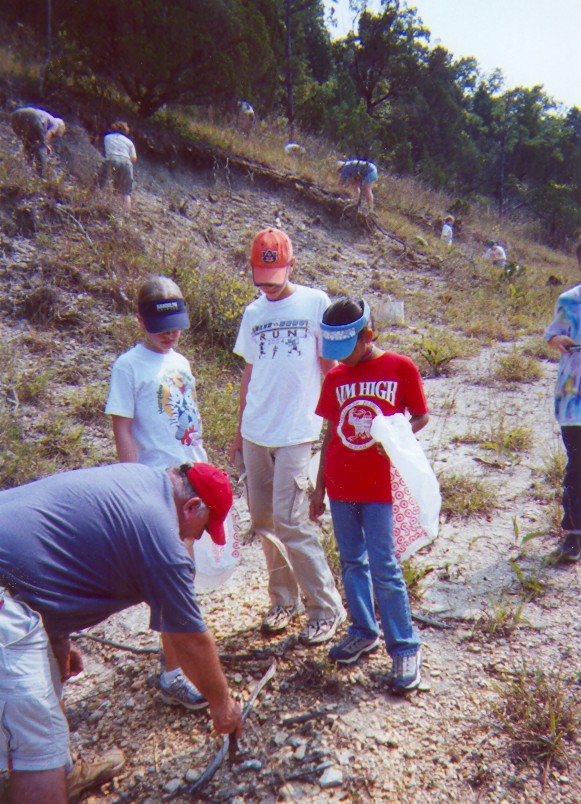
Greg is identifying specimens for some of the students.
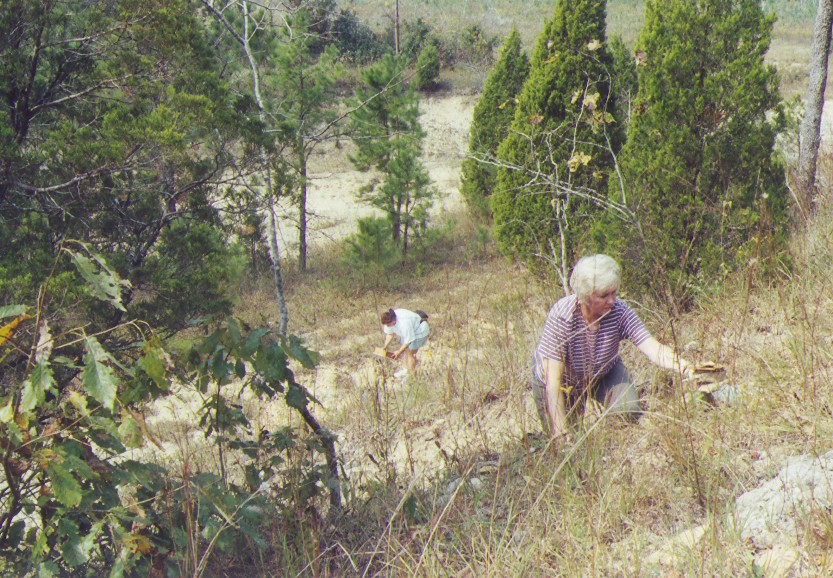
Jan climbing the hill, with Leisa in background.
Stop #4 was a different roadcut, and yeilded similar material as stop #3, such as archimedes, blastoids, brachiopods, and bryazoan fragments.

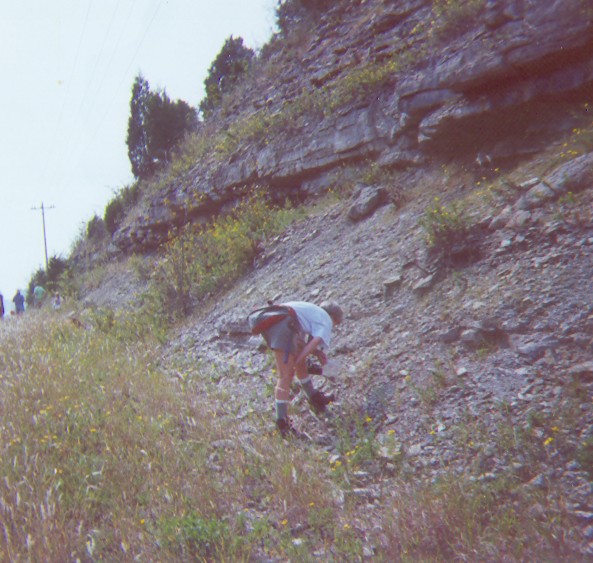

Bobby found a nice trilobite at this site.
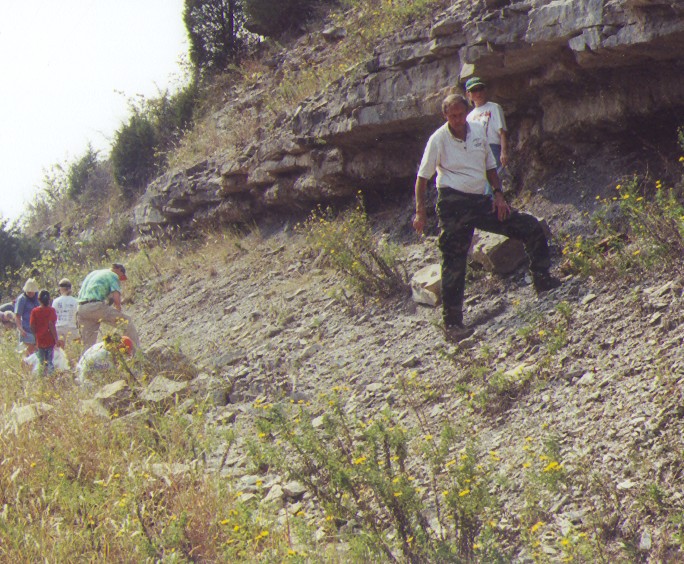
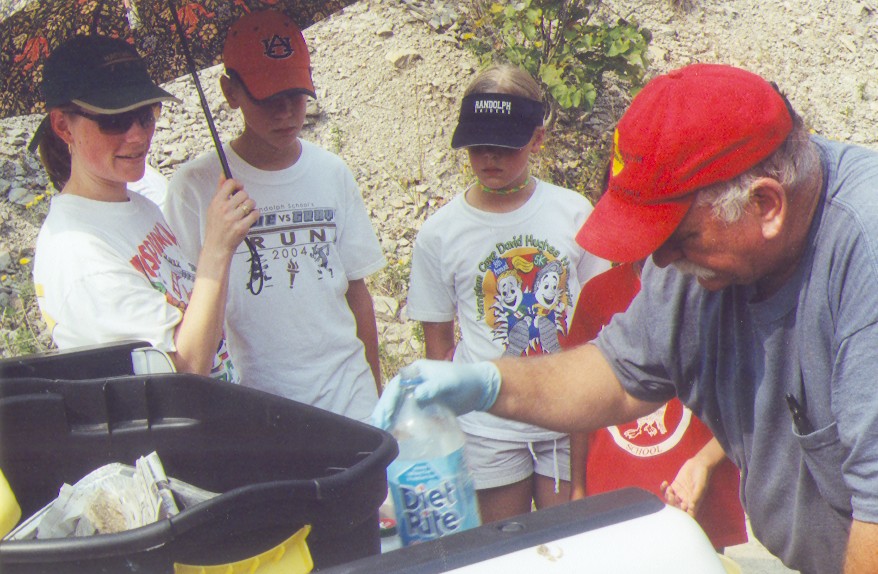
Greg is giving a short tailgate workshop on how to clean the limestone slabs found at this site with a light acid wash (that is not Diet Rite in that bottle!). Acid makes the fossils stand out nicely, but be sure to wear protective gloves and work clothes, and get proper training before trying this at home.
Stop #5 was also in Bangor Limestone, and provided a number of slabs containing broken bits of archimedes, blastoids, brachiopods, and bryazoan fragments. This site also contained numerous square brownish-red metallic crystals, which we believe to be pyrite. They are approximately 1/8 inch squares, some slightly larger.
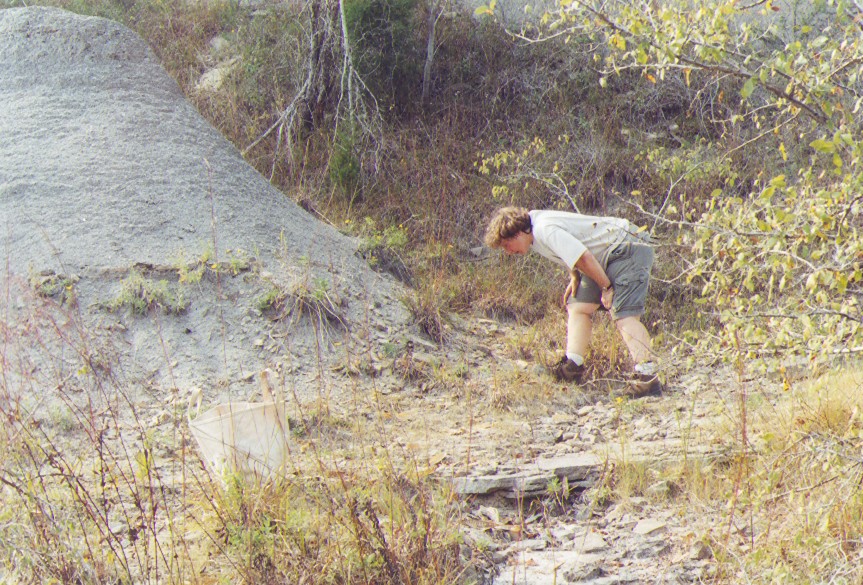

On the way home, several of us decided to visit one of the local attractions.

Yep, believe it. Only coon dogs buried here. Decoration day must have occurred recently. In addition to reading the tombstones, one can picnic under the covered pavilion or hike through the woods to the spring.
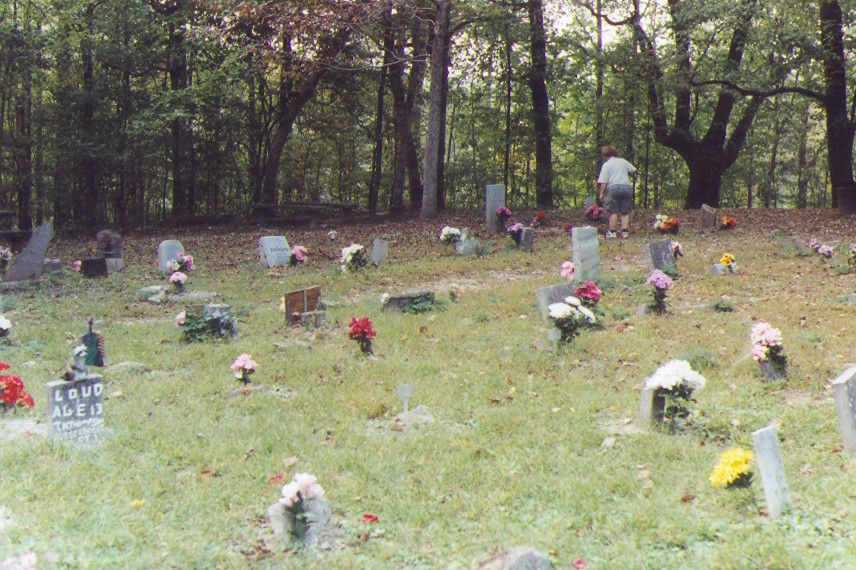
October 23, 2004 - Cretaceous Fossils, Tuscaloosa and Hale Co, AL
The creek was higher than expected when we got there, and it became
clear that wading (sometimes in some over-the-knees water)
would
be on the menu. Part of our
group chose to
sift from a bank while standing in knee deep to thigh deep water while
the
other part of our group headed downstream. The downstream group
discovered that
mother nature's engineers had built a very nice dam, thus explaining
the high
water level. Below the dam sifting was very easy.
This creek runs through the Mooreville Chalk, producing
mostly shells,
bones, shark and mosasaur teeth. Numerous shark-teeth were
found,
also
several ptychodus
teeth, LOTS of fossil clam shells and exogyra, a few fish
vertebra, bivalve steinkerns, and several gastropod steinkerns.
Almost everyone had a sieve of some kind. Only one
of us managed
to get completely dunked but claimed it was a refreshing
experience! See, kids, we aren't kidding about bringing a
change
of clothing! You NEVER KNOW!
Some brave souls tested out MRE's at
lunch.
Interesting. Our fighting folk have our deepest
sympathies!
Actually they weren't that bad.
A long day was capped off by chowing down at a
great local barbecue
place!
All in all, a fun and productive trip!
--Edited by Vicki Lais
(Photos
courtesy Vicki Lais)

First stop
was the Museum of Natural History in Tuscaloosa.
Thousands of fossils, but none we could collect! We were
pleased
to find the large mosasaur specimen was still being exhibited.
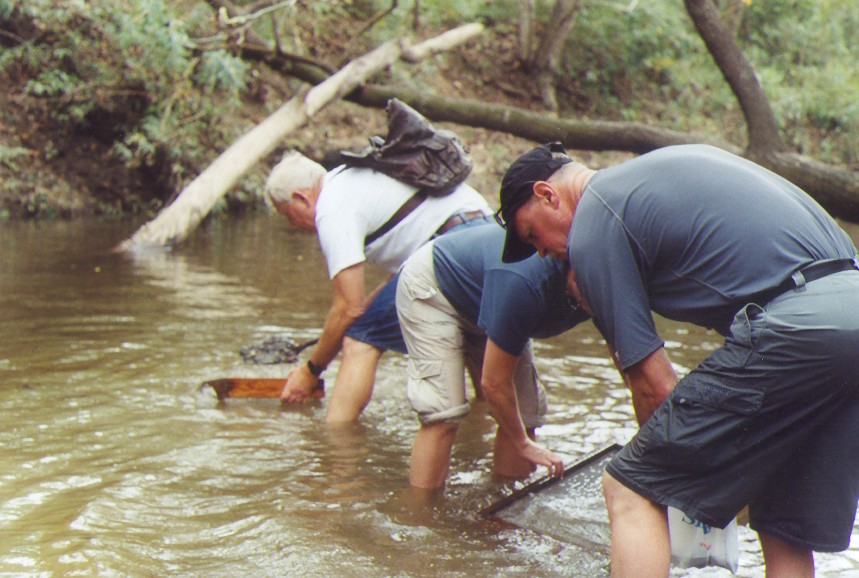
Steve, Lea,
and Glyn screening the gravel.
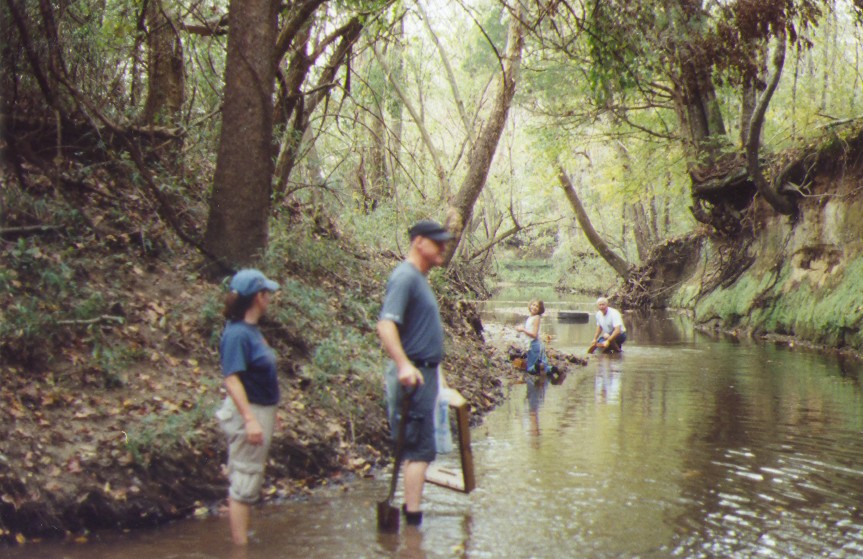
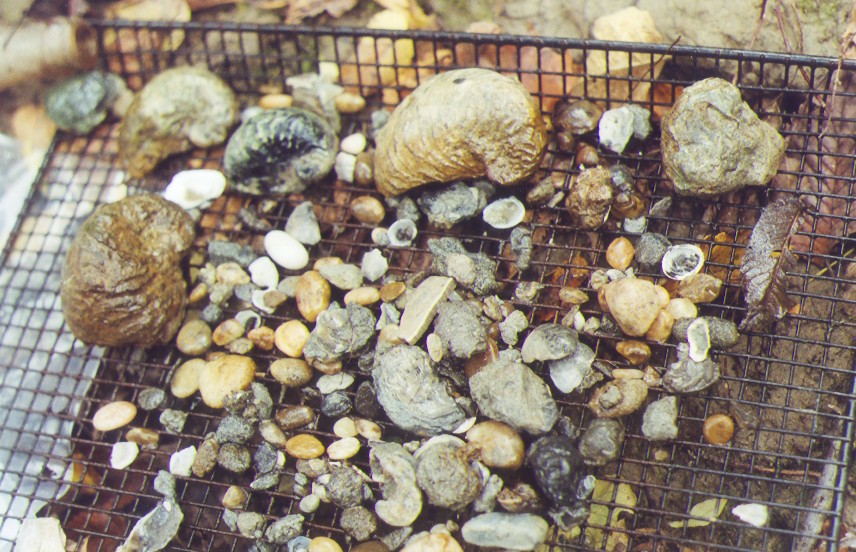
One of Nancy's screening efforts. Several large exogyra.
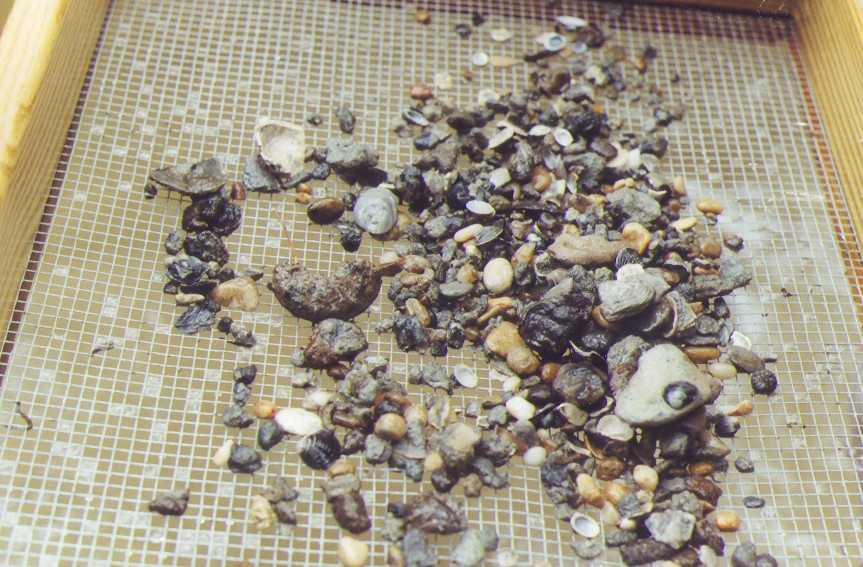
One of
Steve's hauls, note the shells and partial ammonite.

Shark and
ptychodus teeth found by Steve.
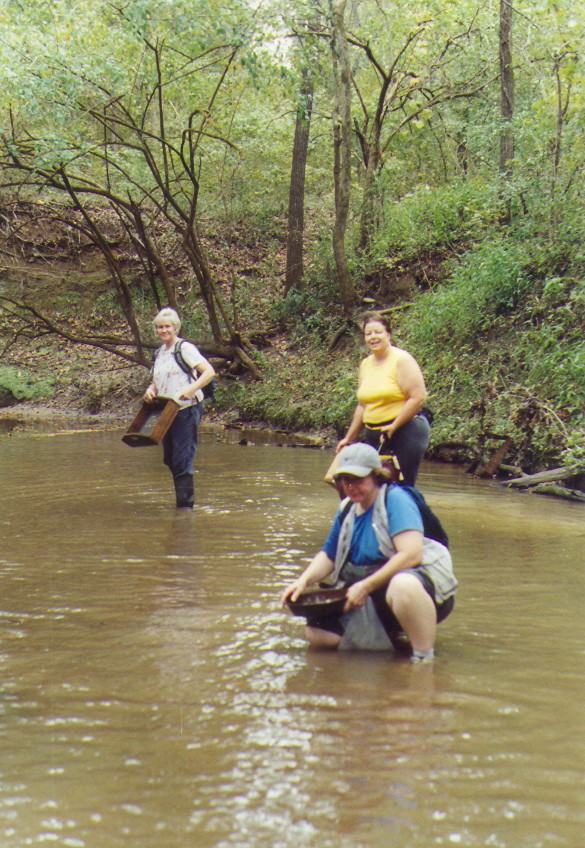
Jan, Claire,
& Leisa.

View
up the creek.
At the end of a beautiful day, we had several show-and-tell
displays.

Greg's
display.

Lea's finds,
note the mosasaur jawbone in lower right corner.
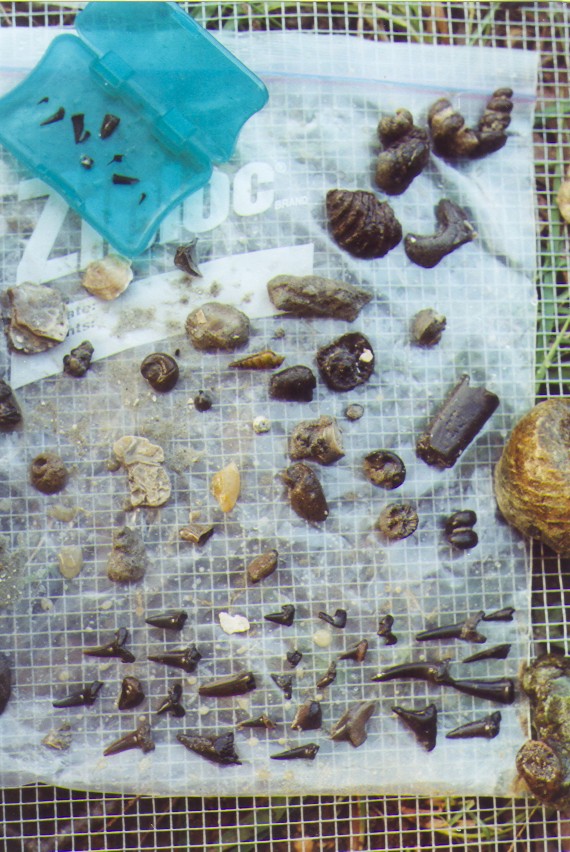
Paige's
display. She wanted to find enough shark teeth to
share
with her classmates, and she certainly accomplished her goal!
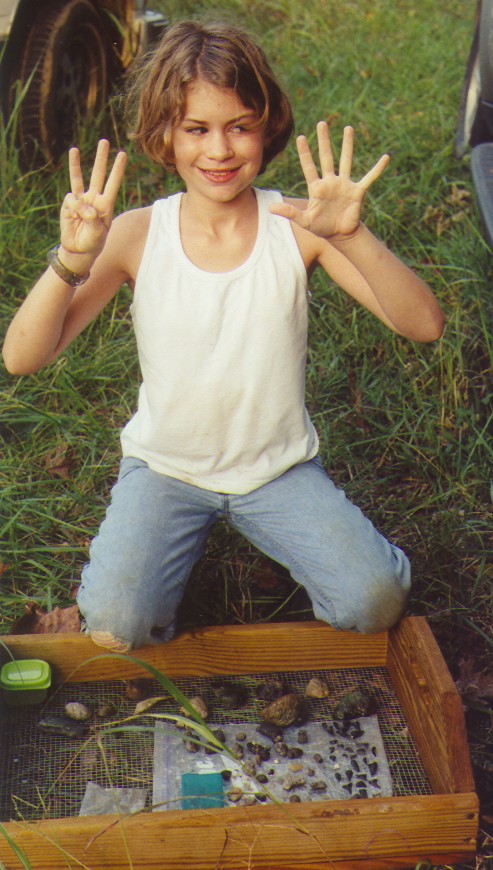
35 shark
teeth found!
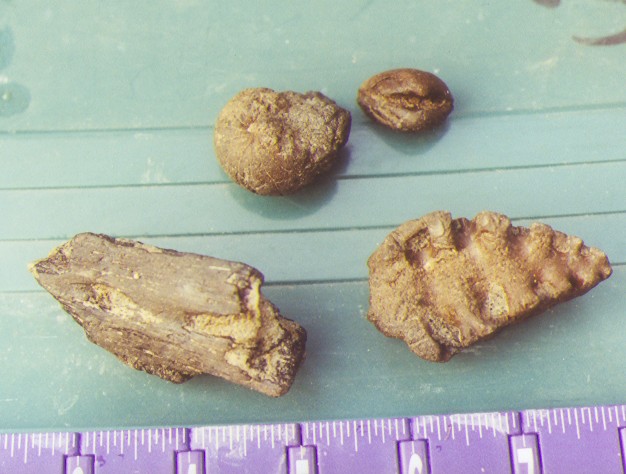

Vicki's finds.
November 15, 2004 - Meadowview Elem School, Dallas Co, AL
On November 15, 2004, Vicki Lais and Nancy Kenfield, members of the Birmingham Paleontological Society Community Education Committee, were the guests of Mrs. Woods' "gifted student" class at Meadowview Elementary School in Selma, Alabama. These are all third-graders and BPS had been invited to speak when one of the students told her teacher about seeing Nancy's collection. Vicki supplied the knowledge and experience and a LOT of samples to show and give away, Nancy supplied more samples, her own stories and a whole bunch of stuff "scored" from Ward Science, fossil books, and maps from the GSA office in Tuscaloosa.
An overview of the geological history of Alabama was given, including type of fossils found and why. We showed and passed around numerous fossil samples, including corals and a large coral head, large pieces of petrified/ permineralized wood, one covered with quartz crystals, nautiloids past and present, ammonite, calamites, echinoids, crabs, shark teeth, ptychodus teeth, exogyra, cast of a very large crinoid, rocks containing numerous bits of archimedes, shells, and crinoid hash, and some mineral specimens, including calcite and quartz with tourmaline crystals. This was the first time some of the students had ever been allowed to hold fossils, and we took some nice, sturdy ones for everyone to examine. Most of these samples were collected on BPS field trips. The general area of collecting locations were marked on a geologic map to show the diversity of Alabama fossils, to provide a simplistic way to determine which fossils are older or younger, and to emphasize the importance of knowing the location of Alabama counties. We also showed pictures of BPS members on various outings (incuding the "rope trick" adventure!), told them stories about exciting things that happened on trips, and Nancy presented a slide show of various common fossils. During the course of the day, we showed them the BPS web site, touched on the ethics of fossil collecting, and the reason why museums only list the county where the fossils are found.
THEN came their own fossil hunt! Nancy had a lab-activity kit from Ward Science that included a bucket full of small fossils and gravel, sorting trays, tweezers, and magnifying glasses. Add a little landscape sand to "stretch" the supplies, then seed the mix with a few goodies from the BPS give-away stash, and you have the recipe for an unforgettable event! The kids had a great time sieving and searching, and their exciting "finds" included echinoderms, horn coral, archimedes and crinoid parts, blastoids and a few fern fossils which were "donated" by the finders to the classroom! To end the day there were "door prize" drawings where each student could choose a fossil of their own.
Several teachers stopped by to look at the fossil display, and the principal stopped by to take pictures. Everyone was super excited about the visit. Who would have thought that kids would want to help lug your fossils around! Mrs. Woods was great...no amount of mess fazed her and everyone had a great time!--Edited by Vicki Lais
(Photos courtesy Nancy Kenfield and Vicki Lais)

Students and teacher checking out the fossil display as we are setting up.

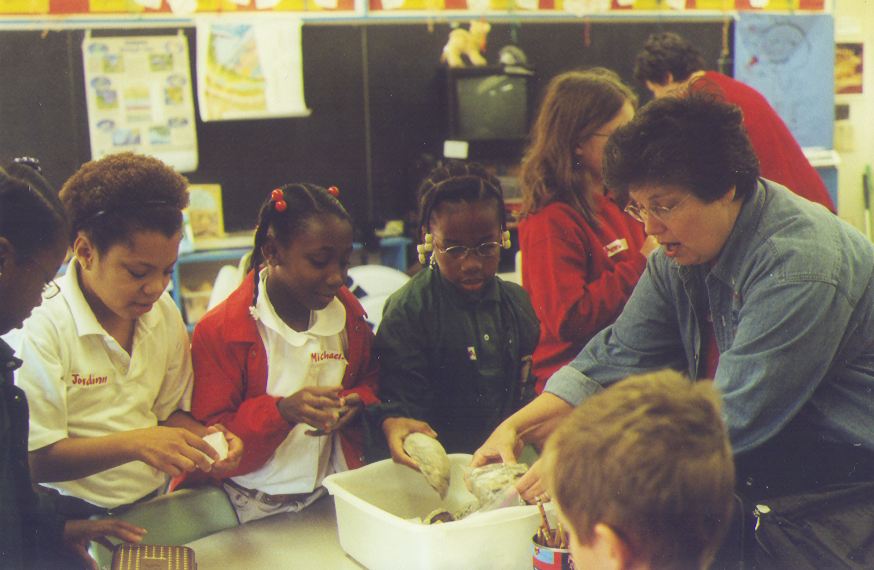
A lot of assistance was provided in laying out the specimens. What they didn't know, was that this box contained the fossils that would be given away at the end of the day! Later in the day, the calcite crystal being intently examined had a large amount of pressure applied to it (i.e, we hit it with a rock hammer) to show how this mineral splits into smaller crystals of the same shape.

Vicki explaining the color banding on the Alabama geologic map.

"Sticky's" were added to the map as a particular fossil specimen was discussed.
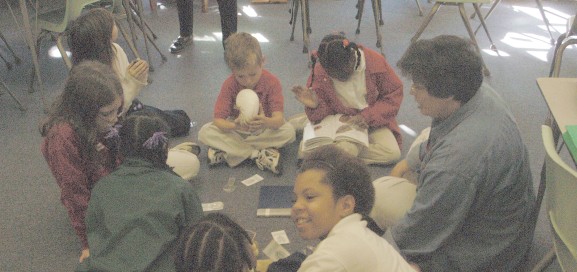
Examining nautaloids and echinoids.
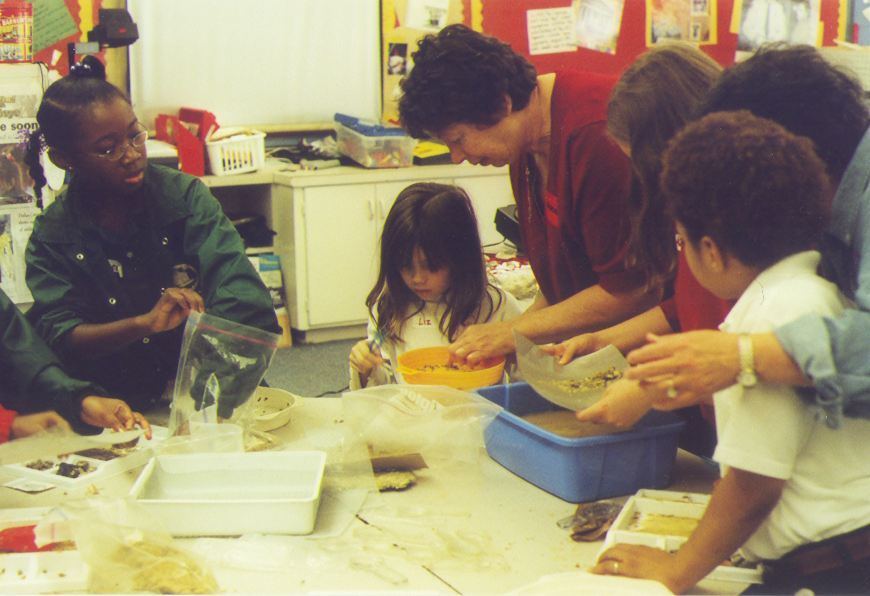
Nancy assisting with screening and sorting the different fossil specimens.
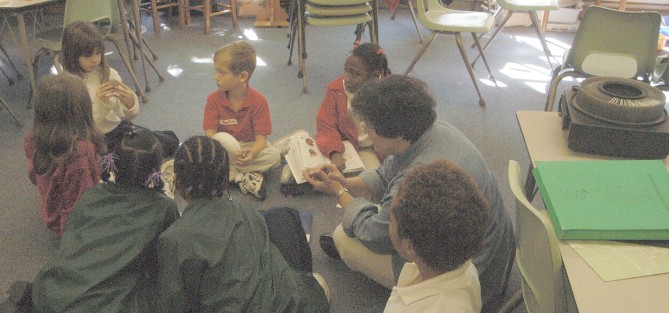

Examining the fossils. An ammonite was inside this split nodule.
November 20, 2004 - Mississippian Fossils, St. Clair Co, AL
Donning
orange and blue, red and white, or...mud and well, a little more mud,
the BPS
explored a new site in St. Clair County, Alabama. The
weather was just a tad misty after our outing but cool and comfortable
during
our adventure. Our fearless leader led us
to a Mississippian age roadcut yeilding some of the
largest horn coral that I have seen, with a perfect geologic example of
"uplift". Several varieties of coral were found, and a number
of
whole brachiopods were collected from the layers around the Tuscumbia
Limestone. There were also hollowed out molds in the Ft.
Payne
chert where archimedes or crinoids had once been.
None
of
our members minded that our actual collecting time was shorter than on
many of
our trips, as most members were eager to put their orange and blue or
red and
white clothing to use as they "collected some radio and television
time", because there was some
important football game being played....tiny
mumble...mumble...#*%...how did we
manage to vote on this weekend for the field trip in the first
place????????
MY TEAM WON!!! How 'bout yours?
--Edited by Vicki Lais
(Photos courtesy Steve Corvin and Vicki Lais.)

The group before playing in the red clay!

Leisa and
Nancy checking for fossils weathered out of the matrix.
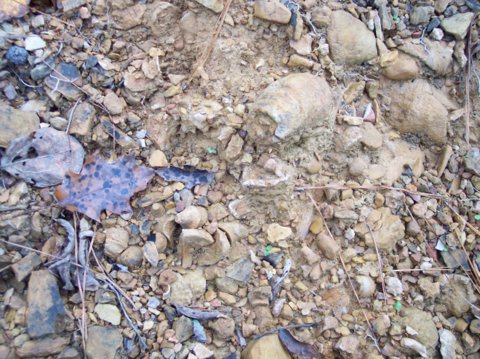
Coral pieces
covering the ground in this area.
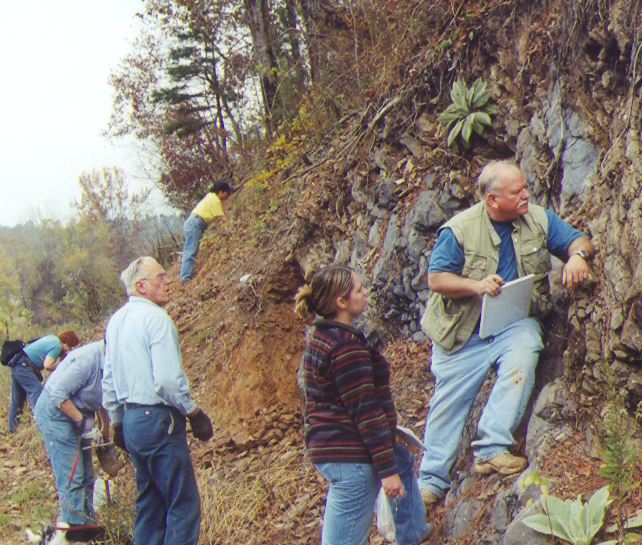
Getting a
closer look at the geologic layers.

Lee with her
finds.
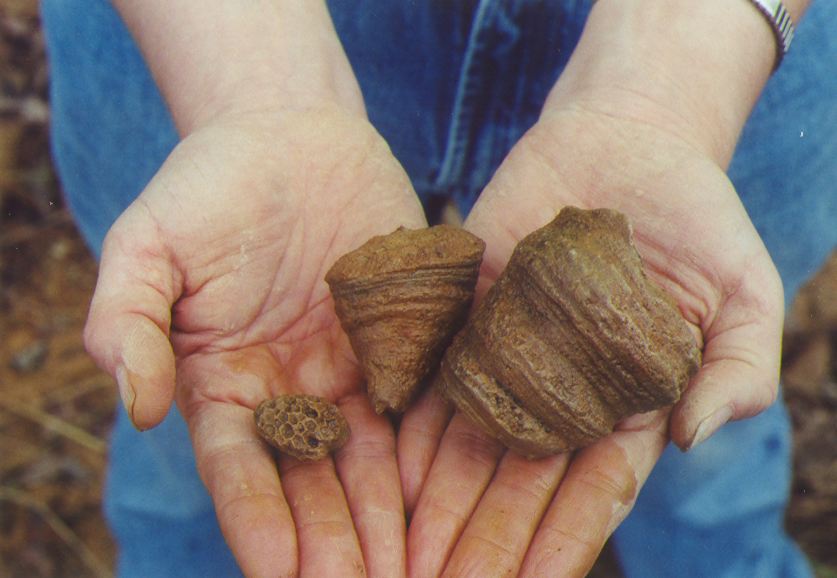
A closer look
at the nice coral specimens found by Lee.
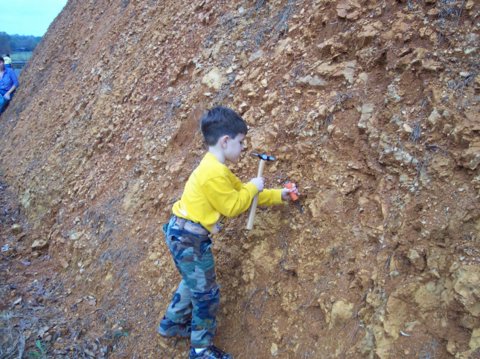
Steve is
determined to get that fossil!
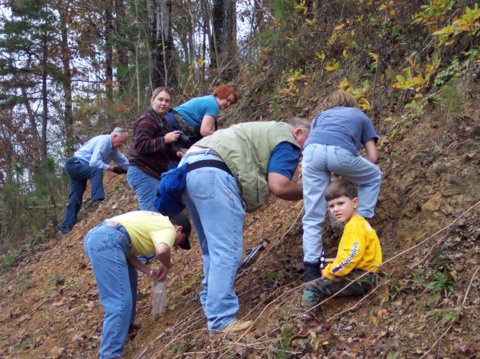
One of the
better collecting spots.
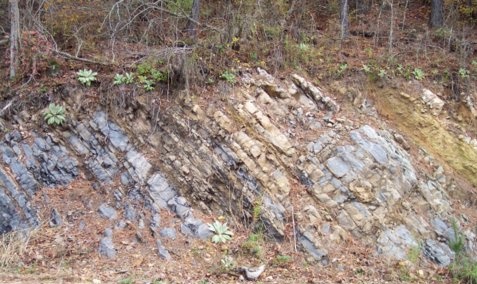
Layers of
limestone, shale, and mud tilted upward by geologic forces,
and exposed at a roadcut. "Newer" rock is to the right,
"older"
rock is to the left. Rock layers were horizontal when they
were
initially formed.
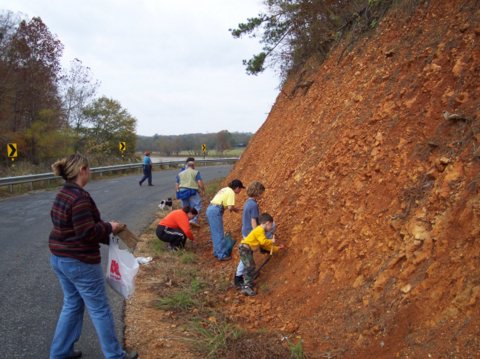
One of the
muddier collecting spots!
2003
February 2, 2003 - Cretaceous Fossils, Lowndes Co, MS
(Photos courtesy Greg Mestler.)
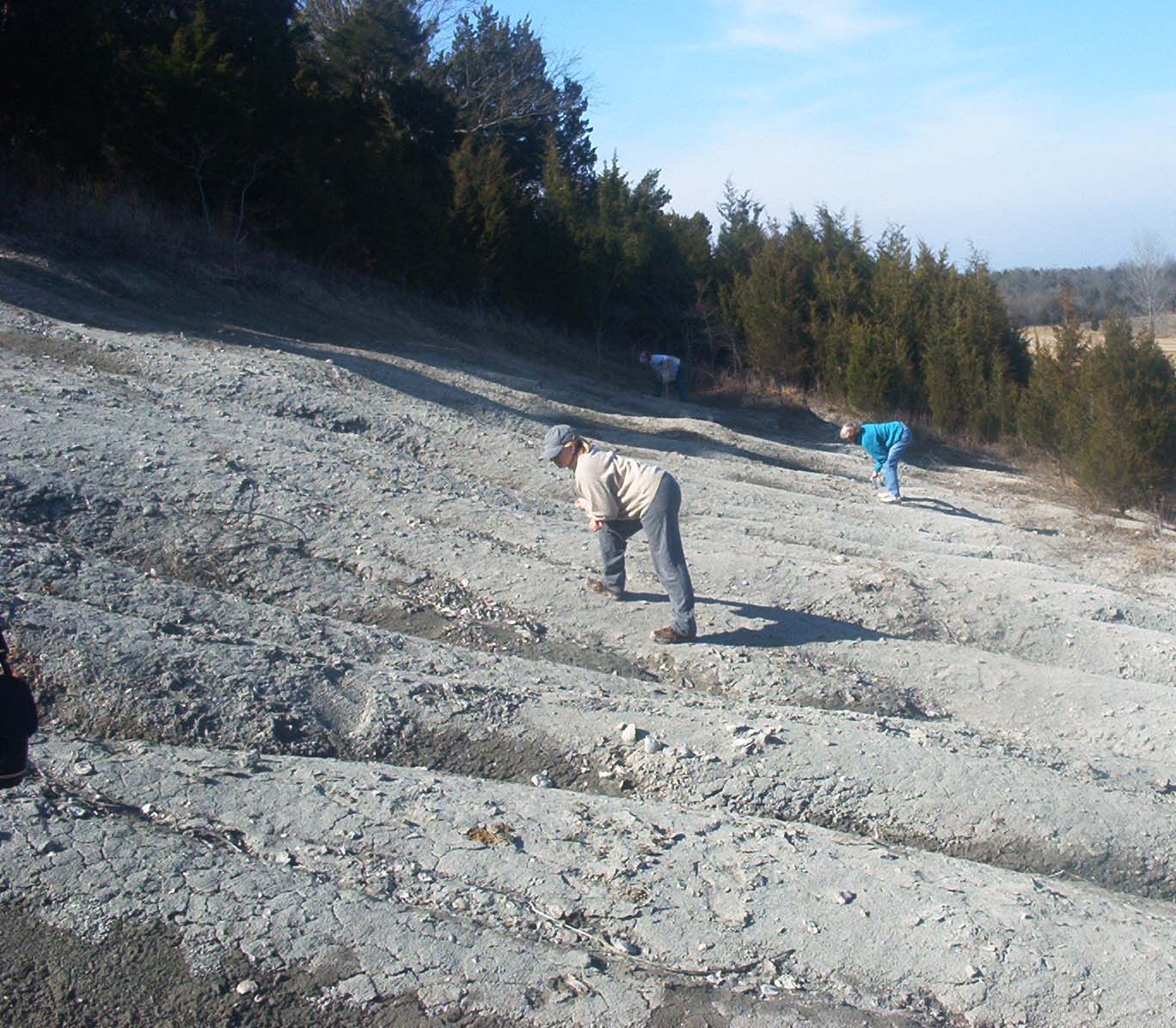
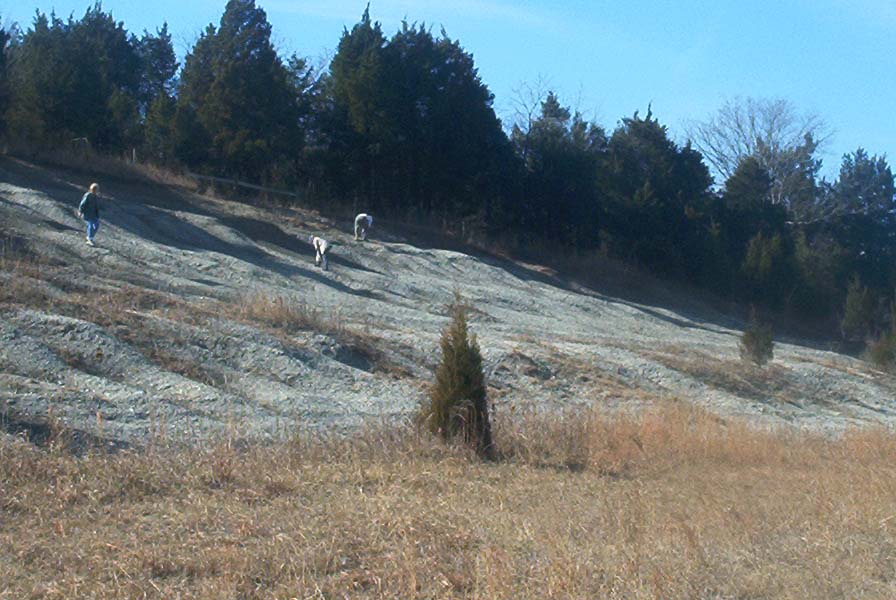
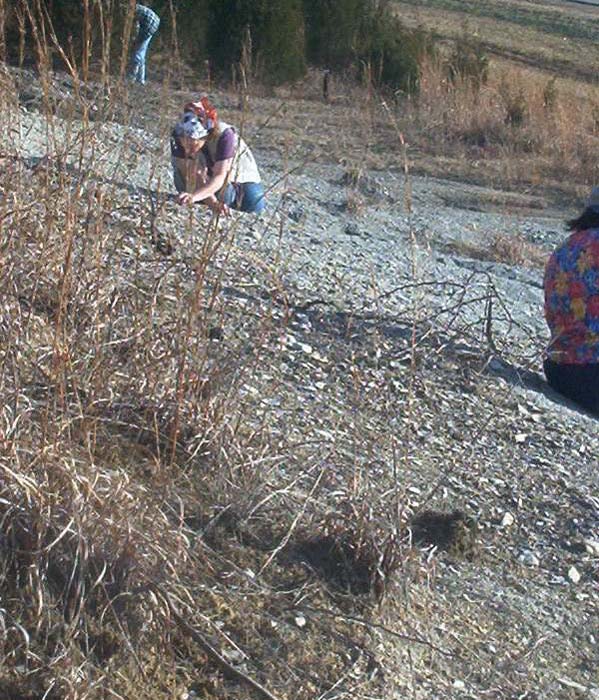

February 16, 2003 - Pickens Co, AL
(Photo courtesy Greg Mestler.)

March 29, 2003 - Morgan and Lawrence Co, AL
This month, BPS visited the "education center" of a local Jefferson County quarry, where school children are taught about quarry operations in a nice building with a great view of the quarry, and a small working model of the conveyor activity. Inside, there were numerous fossil displays exhibiting fossils from many of their quarry locations around the south. Upon seeing several whole crinoids on display, we were practically drooling to get going on the collecting trip. The group then drove to a quarry in Morgan County, Alabama. This was a site where no one had collected before, other than quarry personnel, and what a fine group of specimens were found! Large blastoids, crinoids, horned coral, and archimedes were our primary finds. At least 6 whole crinoids were found, and the excitement of the members upon finding yet another of these wonderful specimens was very exciting! Due to the unusually chilly, overcast weather as compared to the prior few weeks, no rattlesnakes were spotted, though our leader said he had encountered 4 of them last summer.
(Photos
courtesy Ron
Beerman, Bill
Cunningham, Greg Mestler & Vicki Lais.)

Several whole crinoids were found on the trip; this one by Vicki.

Several BPS members diligently searching the spoil piles.

Greg dissolved a slab of limestone he took home and found these
crinoids
inside.

Numerous blastoids, crinoid parts, and horned coral were found.

Crinoids found by Jan and Claire.

Found by Ron.

Found by Bill.

The view from the collecting site.

Outcrop of rugosa coral.

Found by Ron.
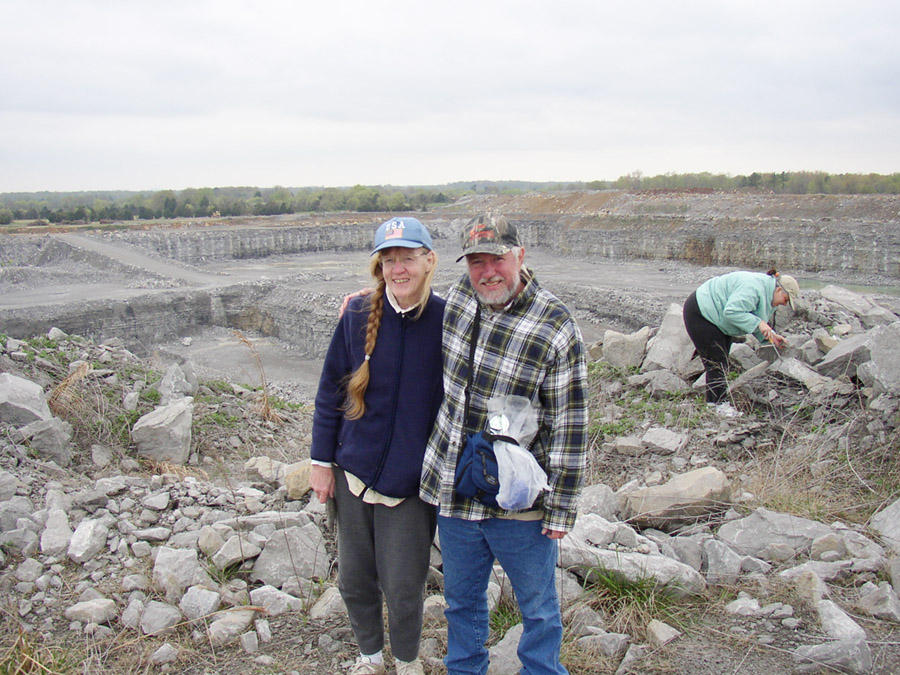
Bill and Adele in foreground, Leisa in background.


Looking
in all the cracks and crevices.

More of Ron's finds.
Our third stop of the day was at a roadcut in Lawrence County, Alabama, where numerous specimens of rugosa coral, including whole coral heads the size of boulders, were found. There was even a small cave-like cavity in the ground that had been uncovered, where one could peer in and see a small, undisturbed area of coral in place. Both collecting sites were in the Bangor Limestone.

More rugosa coral, from the second site of the day.
April 19, 2003 - Butler Co, AL
BPS visited a new location in Butler County this month for our field trip. The creek was shallow, making screening and hiking in the creek particularly easy. A number of shark teeth were found, including Odontipus robusta, scapanorhynchus and odontaspis elegans, and bones and teeth that we really wanted to pass off as fossils. Unfortunately, they were recent, from the wild pigs that roam on the property. On the ridge above the creek was a "bald" area composed of limestone where a number of nautiloids (Centroceras marcellensis), gastropods (Lophospira milleri), sea biscuits (Clypeater rogersi), conglomerate material containing numerous Turritella, oyster and other shells were found. We hope to go back to a different site on this same property later in the summer when the roads and creek are drier.
(Photos courtesy Ron Beerman & Greg Mestler.)
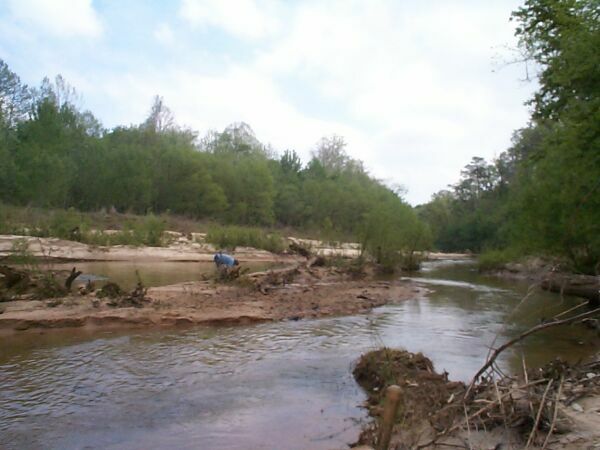
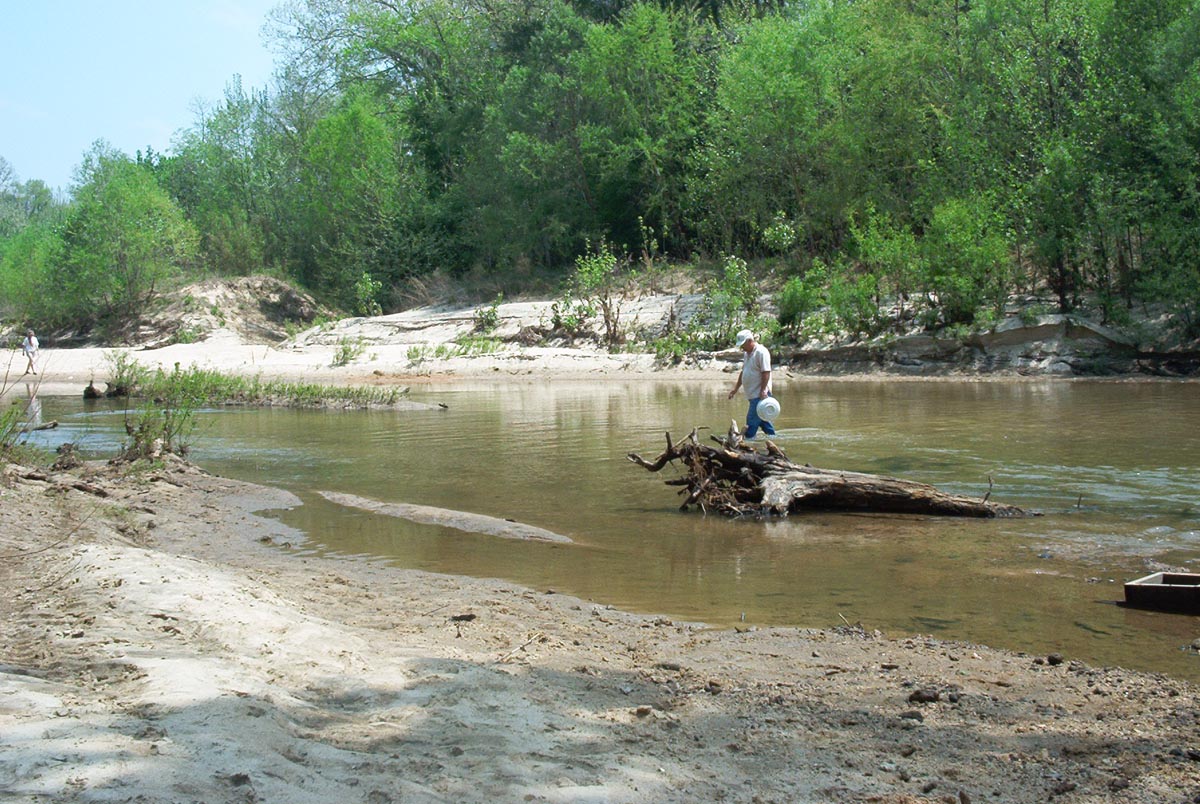
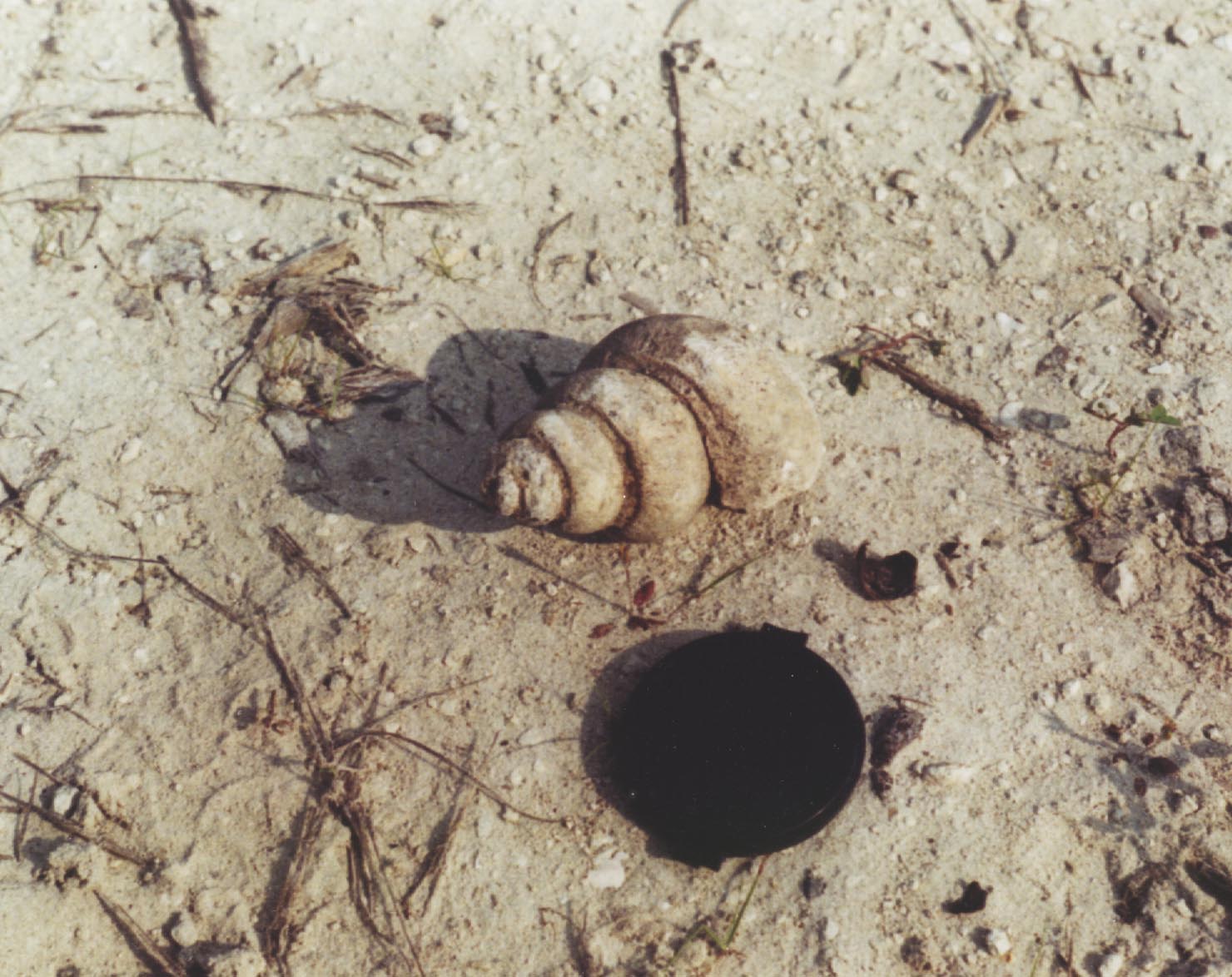
A nice gastropod found on the "bald" hilltop.
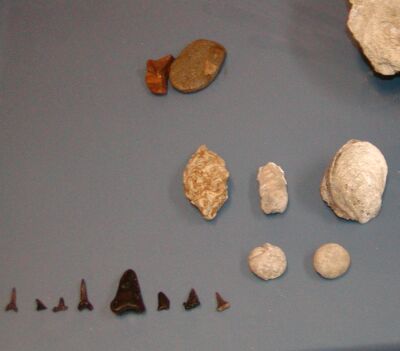
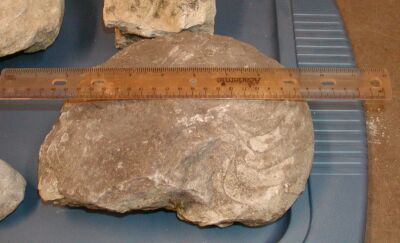
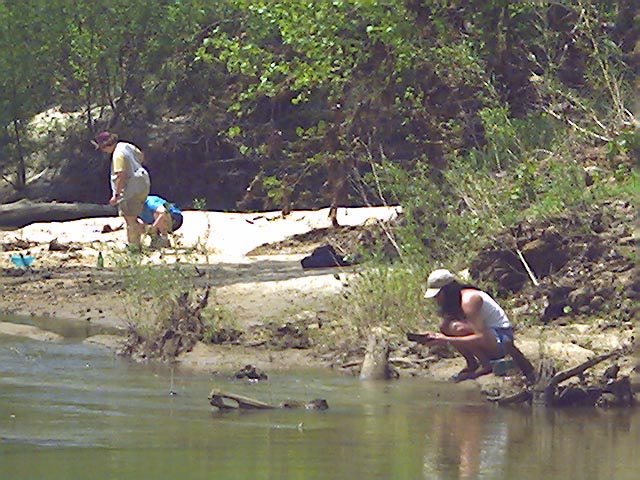
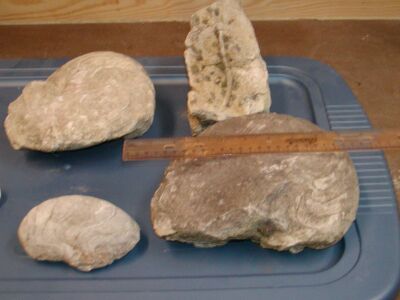

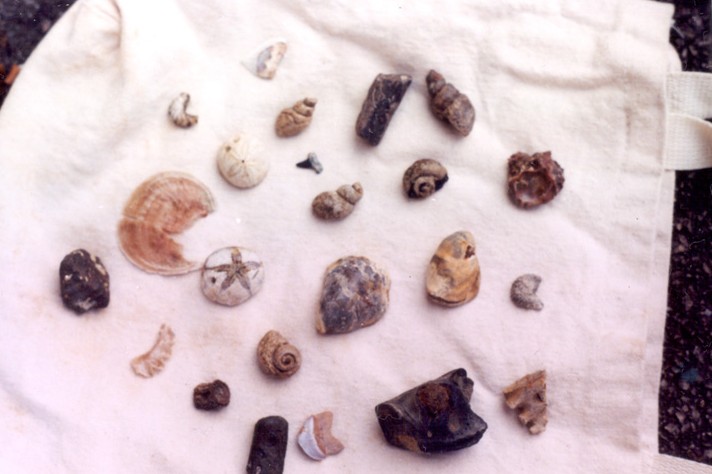
May 31, 2003 - Cretaceous Fossils, Greene Co, AL
(Photos courtesy Greg Mestler and Vicki Lais.)
-
A very interesting ride through the grasslands. . . .
-
View of the creek where we collected shark teeth and other fossils.
-
The search is on . . .
-
On your mark, get set . . .
-
Yes, she's happy! The find of the day, a mosasaur vertebra.
-
Taking a rest and straightening our backs.
-
Lunch break!
-
Closeup of the mosasaur vertebra, though not a very clear image.
Pages
June 21, 2003 - Carboniferous Fossils, Jefferson Co, AL
BPS members visited 2 areas of new road development and a small quarry in Jefferson County this month, making 3 stops total. We had not visited these locations before, so were not sure how prolific the sites would be.
(Photos courtesy Greg Mestler, Ron Beerman, and Vicki Lais.)
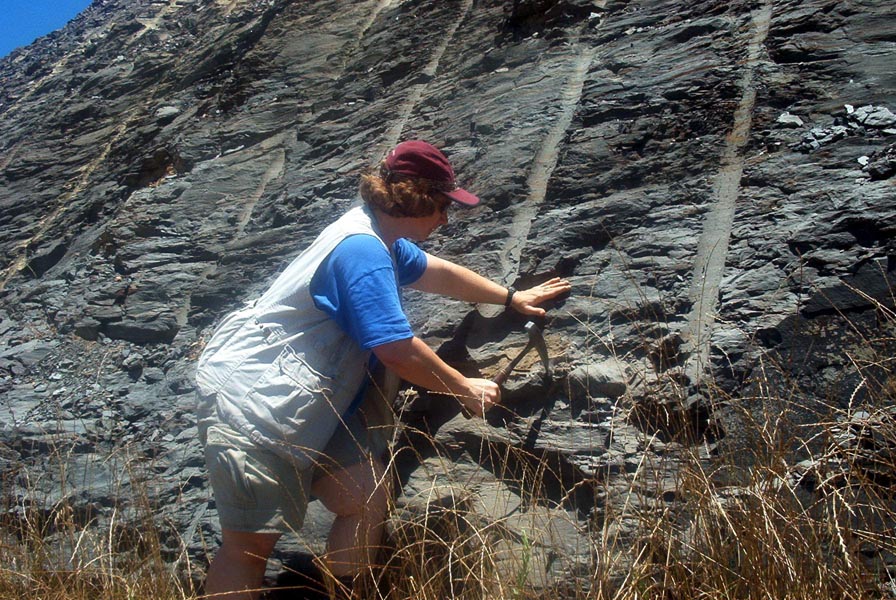
At stop #1, several brachiopods and a couple of slabs with small amphibian track prints were found.
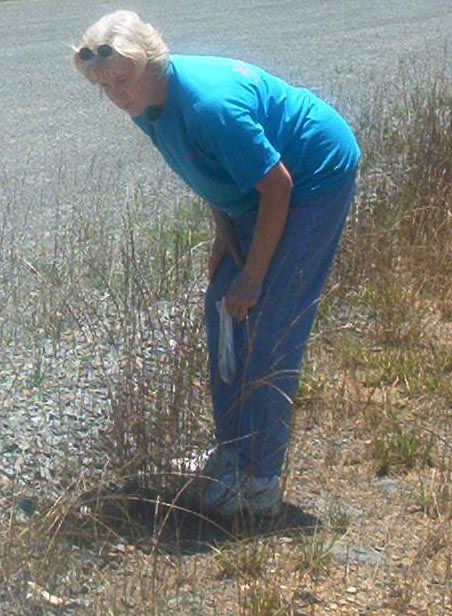
Jan found a number of brachiopods at this spot.
At stop #2, a number of nice limpets (gastropods) were found.
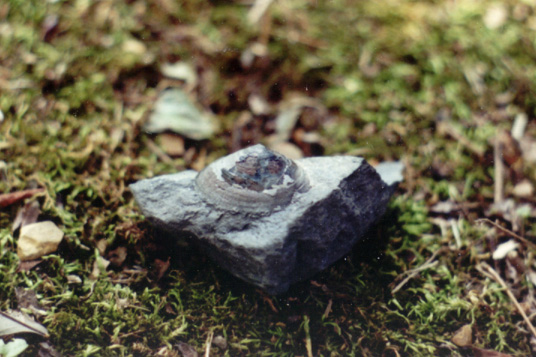

How's this for service? First time we ever had roadside delivery!
At stop #3, a number of plant fossils were found at a local quarry.
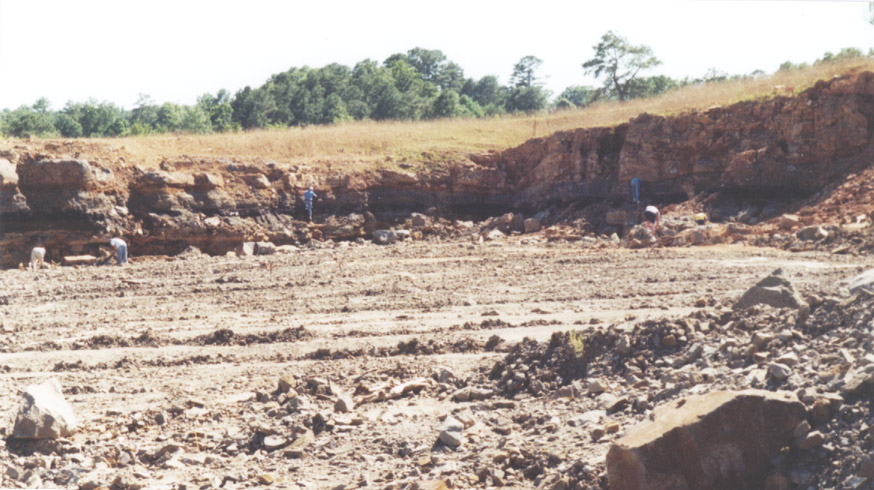
Picture of Calamites found just above a coal seam at one of the sites visited. It measures 101mm in diameter (approx 4 inches) and 304 mm (12”) in length. This cast of the central pith-cavity of the trunk is a very common fossil of Calamites. It is characterized by the articulation and the vertical ribbing between the nodes. The ribs are the imprints of the vascular strands. It measures 101mm in diameter (approx 4 inches) and 304 mm (12”) in length. This tree, in size up to 20 meters, grew during the Carboniferous period, about 320-350 million years ago. (This specimen found by Ron, Claire got the other half, which is about the same size.) |
|

Stigmaria Ficoides. This is a fossilized root of the Sigillaria tree. This piece measures 102 mm by 114 mm. It was found near a coal seam. This plant lived during the Pennsylvanian Period of the Paleozoic Era 320-350 mya around swamps or lakes grew to several meters in height. Its modern day relatives are the small club mosses and lycopods. The round nodes on the surface of stigmaria are scars where rootlets were once attached and arranged in a radial fashion about stigmaria like the bristles of a bottle brush. During their life these trees shed parts of their outer bark.
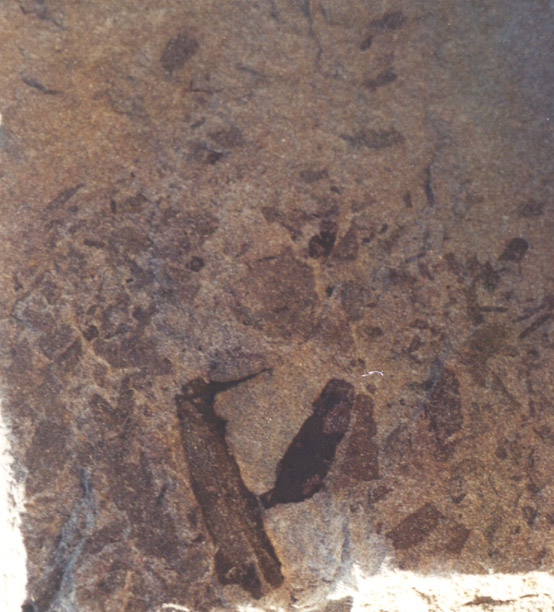
Possibilities - a spore case, or Neuropteris leaf.

Leisa & Winnie discussing the current find.
Some fern material found at the site is shown below.
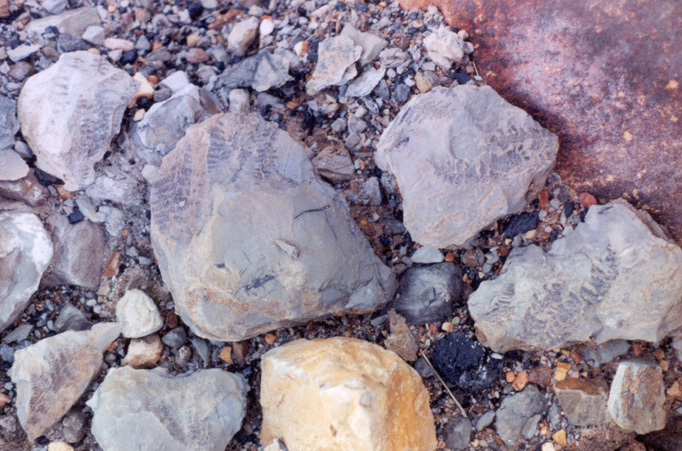
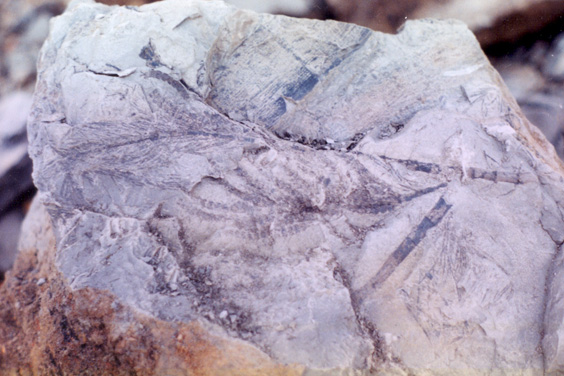

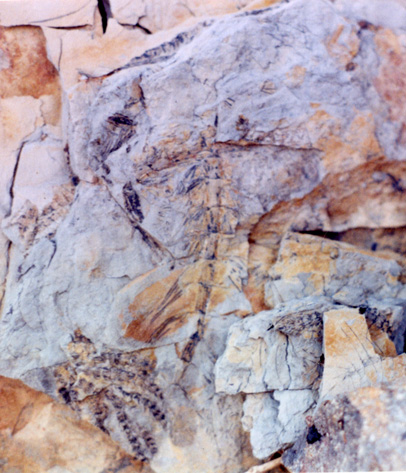
July 26, 2003 - Cretaceous and Pleistocene Fossils, Greene Co, AL
We had so much fun at this site back in May, we wanted to do it again, and search for more mosasaur bones. And we were in luck! 2 more large vertebra were found, and 2 pieces of jawbone, one with pieces of the tooth still there, however, we did not find where they were washing out, but we all had a great time scouting. This site in Greene County, AL is characterized by large quantities of pea gravel. Going east along the creek one is in Pleistocene age material, while going west moves one through an area of Mooreville Chalk (Cretaceous).
A number of teeth from Scapanorhynchus Texanus were found by all. This shark, also known as the Goblin shark, was thought to have been extinct until it was re-discovered in the late 1800s off the coast of Japan. Its living relative is referred to as Mitsukurina Owstoni. The sharks most dominant characteristic is its long protruding snout. Living species frequent the greater depths around 1000’ or more. Scapanorhychus is estimated to have reached lengths between 3-5 meters (10-17 feet).
Its teeth are varied in shape depending on their position within the jaw. Anterior teeth are identified by their high arched bilateral roots, as shown in figure 1 below. The teeth themselves have prominent longitudinal striations running from the top of the cusp up most of the way of the inner curve. According to some sources, some anterior teeth may have tiny lateral cusplets, however not which were found exhibited this characteristic. Many of the anterior teeth (excluding root) found ranged between 2.5 to 3.5cm.
Lateral teeth, shown in figure 2 below, are much different than the anterior teeth. They are triangular in shape and have cusplets on each side of the tooth. The roots are more flattened and lack the arch that the anterior teeth possess.
--Edited by Vicki Lais
(Photos
courtesy Ron Beerman and Vicki Lais)
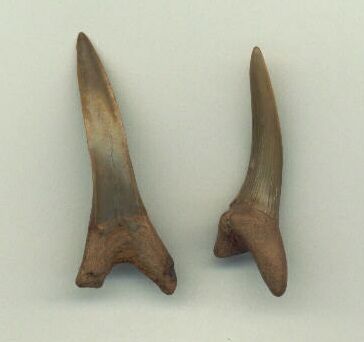 |
|
| Figure 1 | Figure 2 |
The second type of tooth found at this site was identified genus Squalicorax. Not enough information nor specimens were collected to specify the species at this time. Squalicorax, or crow shark as it is commonly known as, was believed to be both a predator and a scavenger. Fossil evidence seems to indicate that this shark grew to a length or 4.5 meters (15 feet) or more. Fossil teeth from this shark have been found in Europe, North Africa and North America. Some of the Squalicorax teeth found are shown below in figure 3.

More photos of the trip:
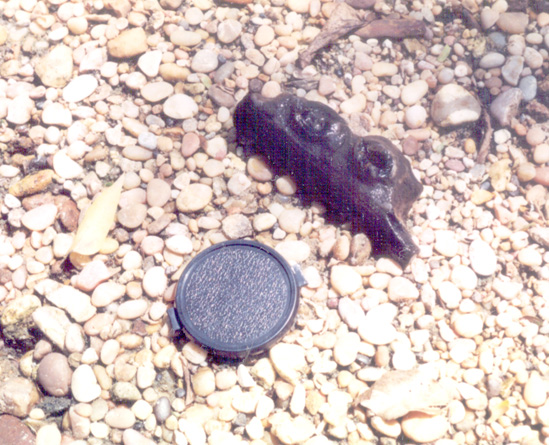
Jawbone found by Vicki.
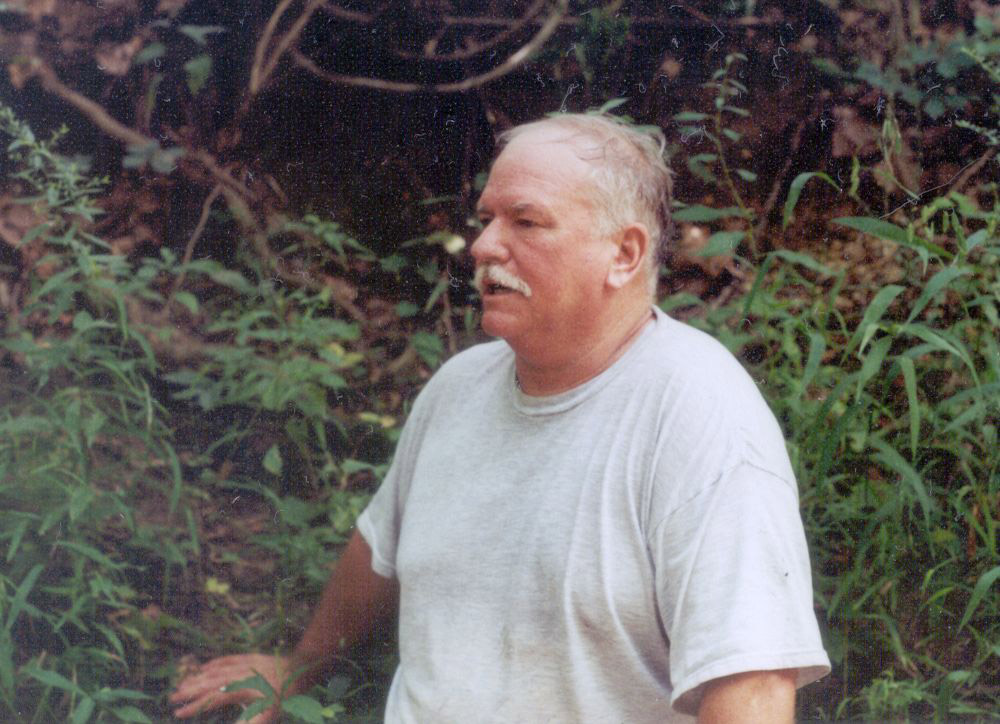
Greg
describing the geology of the site.

Claire's stash, above.
And Vicki's stash, below:

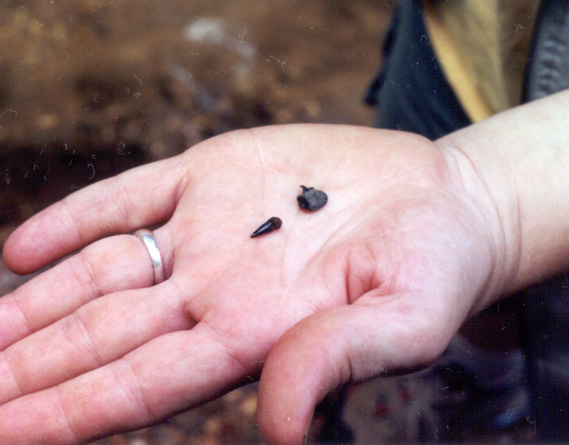
Tiny teeth; fish tooth on left found by Vicki, tooth in jaw bone found by Claire.

View up the creek.
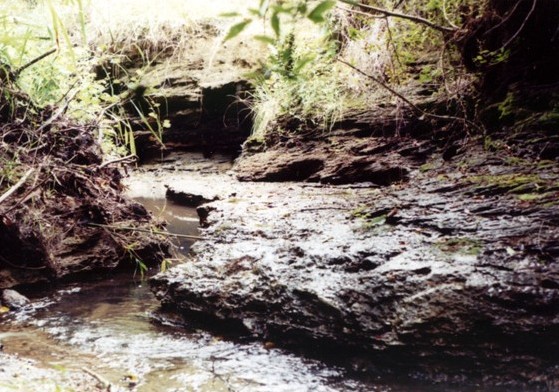
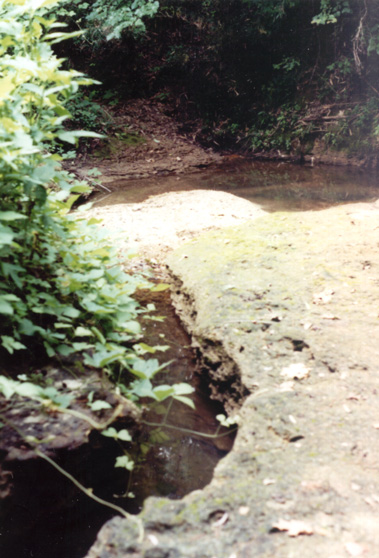
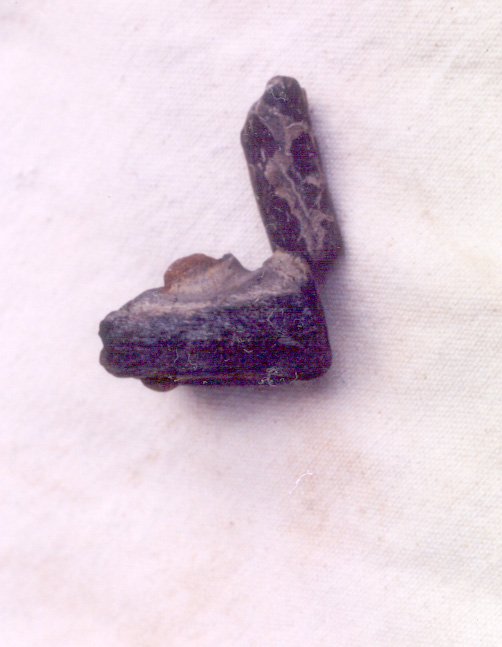
Another
jaw part with portion of tooth.


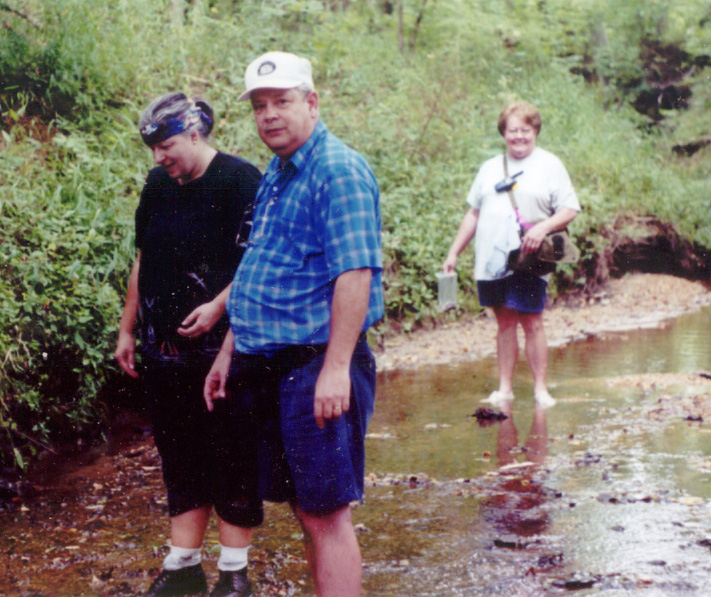

Way down the creek. Mooreville chalk can be found in this area.
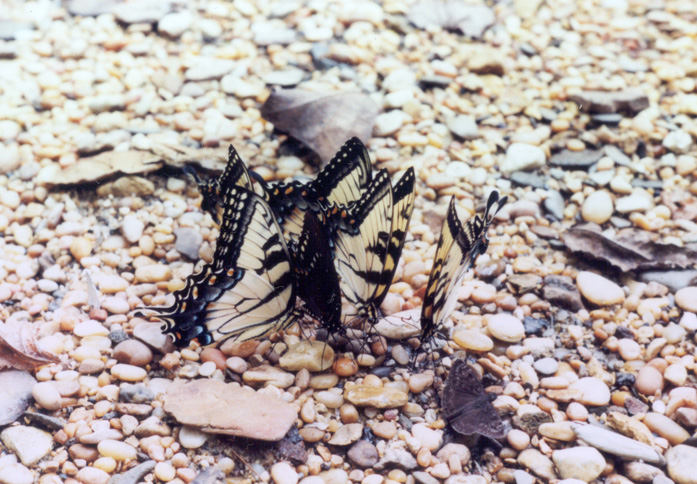
August 16, 2003 - Rummage Sale, Jefferson Co, AL
The rummage sale went very well, and generated a few hundred dollars for the BPS treasury. Several weeks of preparation was hard work, but the actual day of the sale was a lot of fun. Leisa was able to obtain a location on the main drag through Gardendale, Alabama, so even without any advertising, and in spite of our dragging our feet and sleeping in that morning, we had a lot of business. A BPS educational table was set up, where numerous fossils were displayed, along with books about fossils, field trip photos, and several "give-away" fossil and mineral samples. We passed out numerous BPS flyers and had many opportunities to talk about our favorite subject. One of our customers brought a large piece of petrified wood for our collection, though he did not know its origin. He also makes interesting puzzles, and gave one to Claire (it has to do with balancing 6 nails on top of one nail.) (Sorry there aren't many pictures, we were too busy helping customers and talking about BPS!)
(Photos courtesy Vicki Lais)
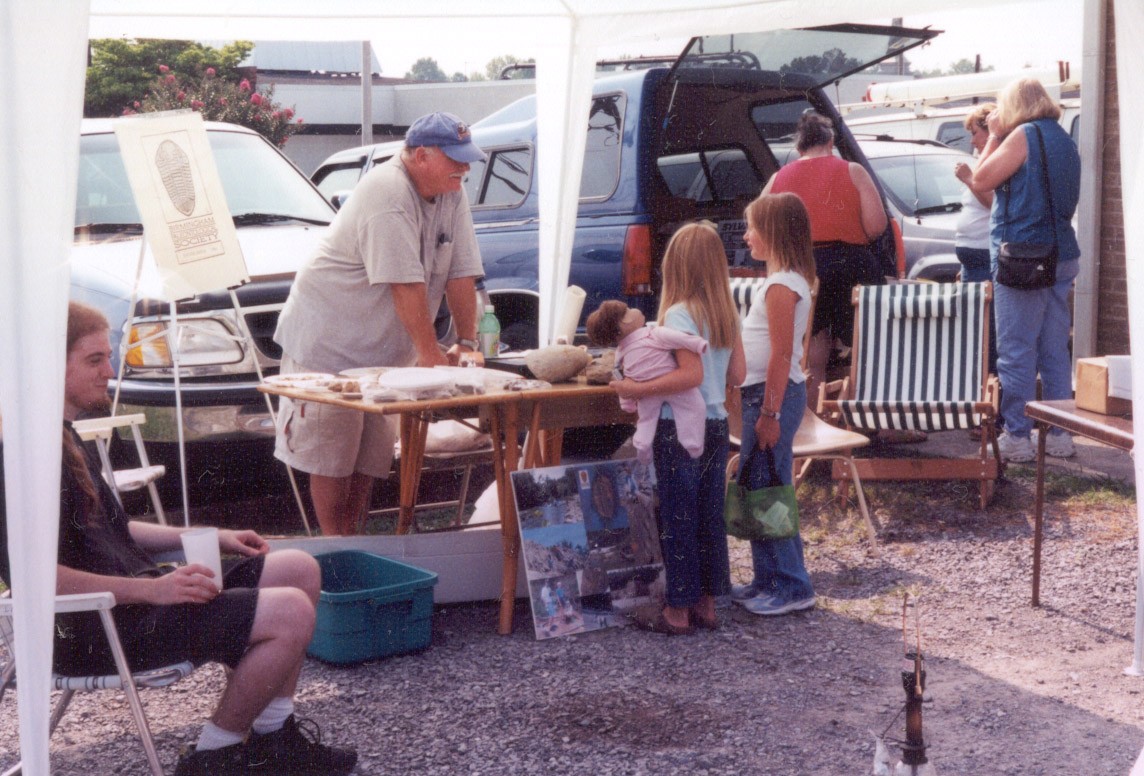
Greg talking to some of our visitors about BPS and fossil collecting. Several of our better finds were displayed, and there were give-away samples of various types, including ferns, echinoids, shark teeth, and some mineral specimens.
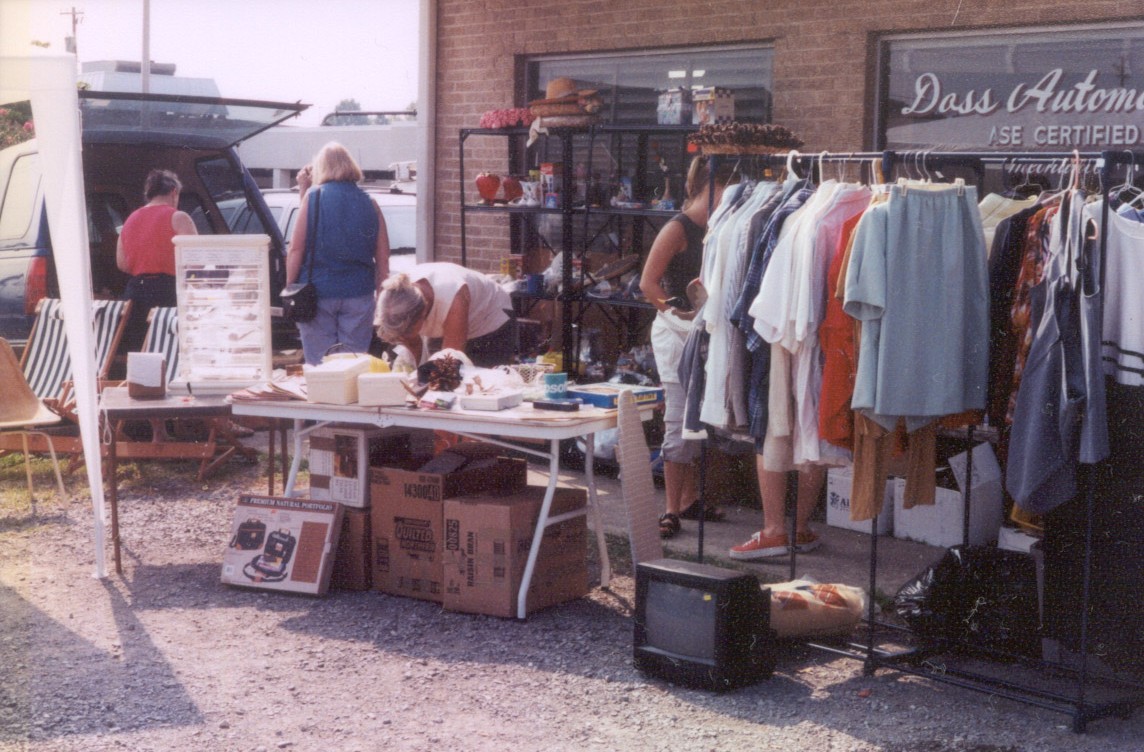
Customers and merchandise.
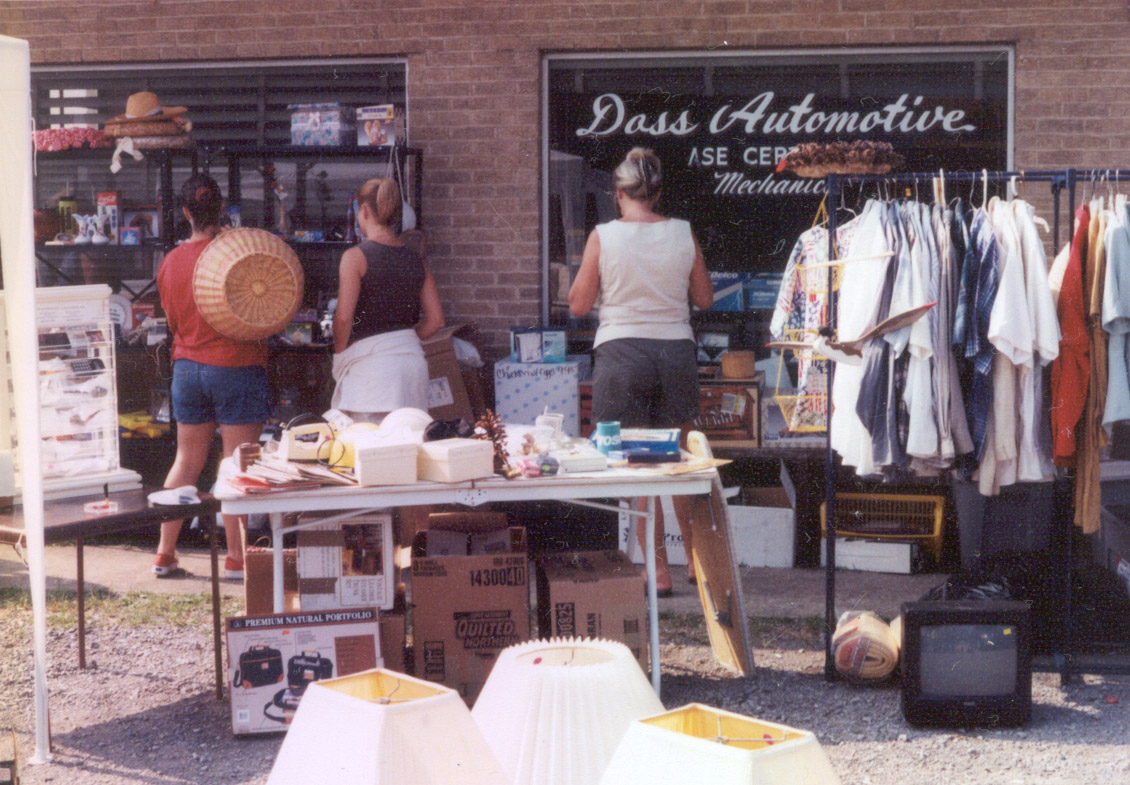
Another view of customers and merchandise.
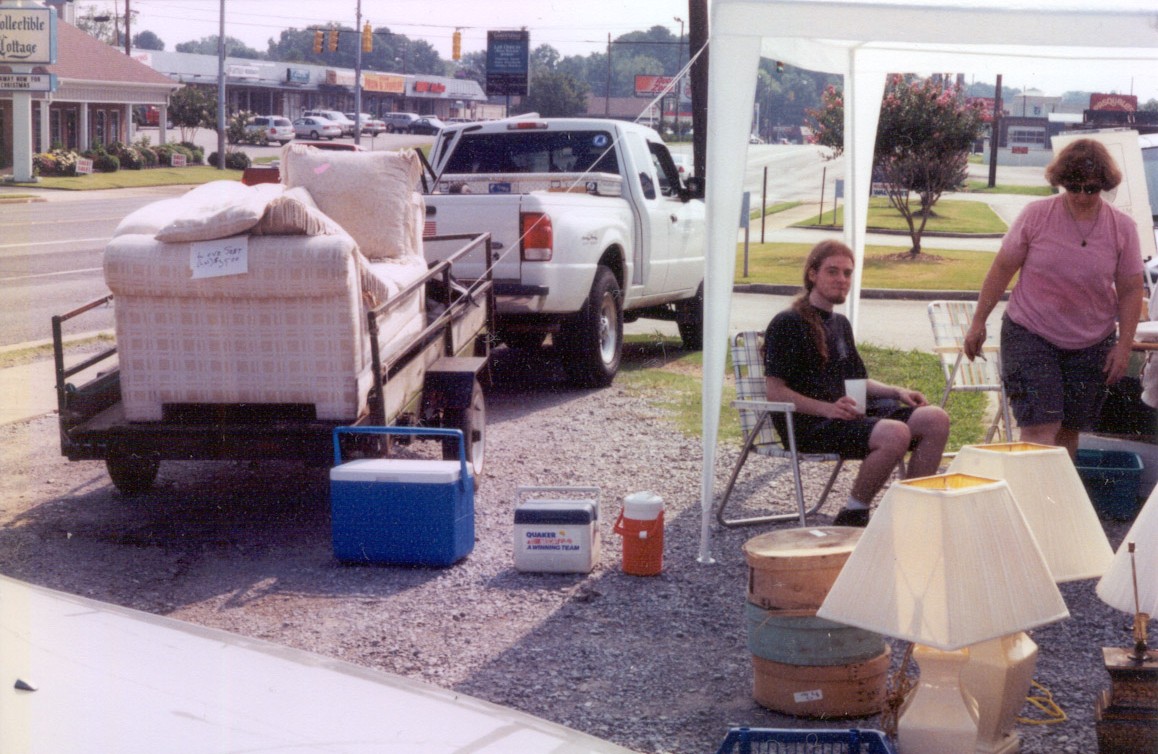
Chris and Claire.
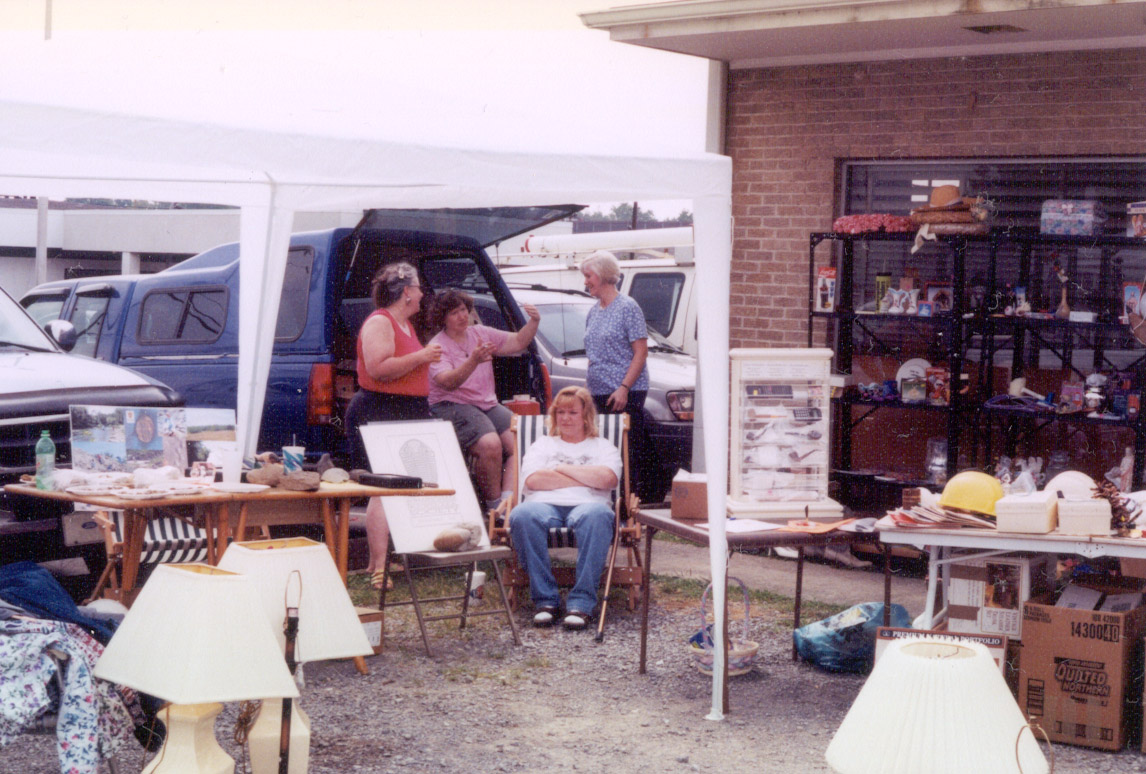
Taking a break.
August 23, 2003 - Butler and Covington Co, AL
Several of us
proceeded on south to Point
A Dam for the late evening. The water was being released, so
the
normal collecting area was underwater, however, Claire found a new area
that was very productive.

Searching on the ridge for nautiloids and gastropods.

Playing
in the sand. Creek is much higher than on our last trip.

Steve had some good finds screening.

Robert found a nice nautiloid.

Another view of the nautiloid, being held by Kate.

A beautiful
arrowhead was found.

Jonathan found a very nice piece of incised pottery.

Becky looking at her finds.


September 27, 2003 - Sumter Co, AL
After a quick
afternoon thunderstorm,
several members and guests went further south to Epes.
Numerous
marcasite and
calcite crystals were found. But the find of the day was a
plesiosaur limb bone found by Ron, that appears to have been chewed on
by a shark. How exciting to have found a possible relative of Nessie,
the Loch Ness monster, right here in Alabama!
(Photos
courtesy Claire Smith and Vicki Lais)
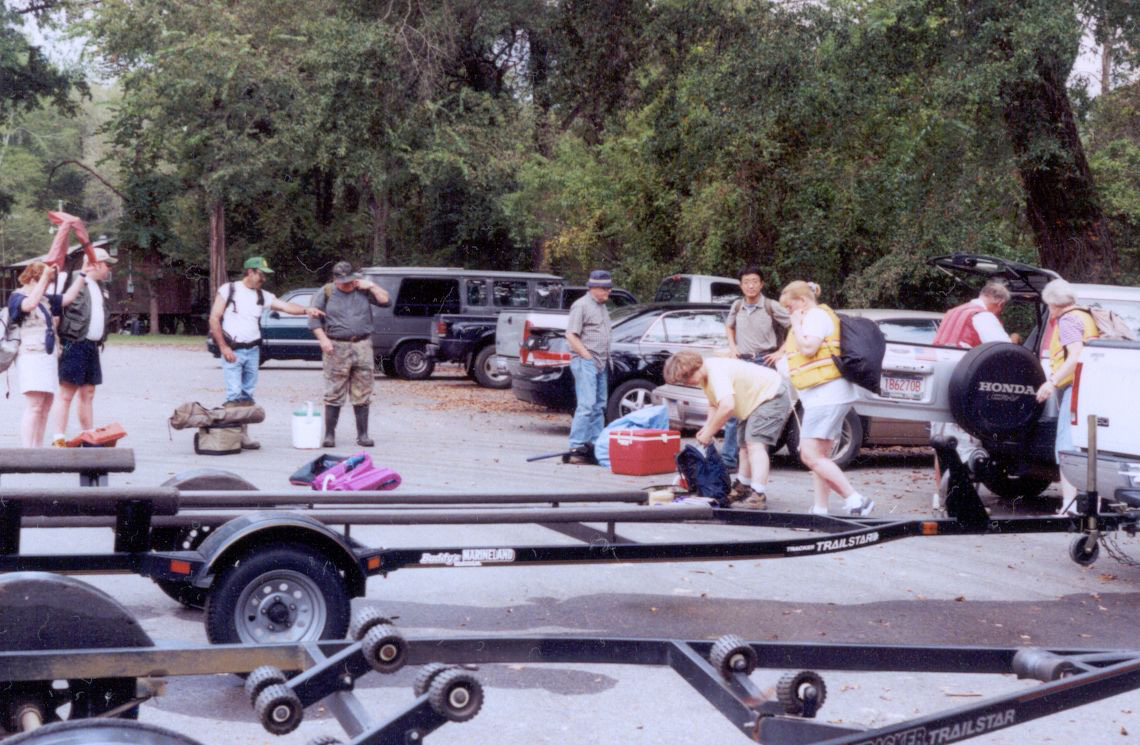
Getting ready to head down the river.

View of the bluffs from the water.


Eager students listening to Dr. Smith lecturing on this site.
He
has published numerous articles on the Arcola Limestone Member (Upper
Member of the Mooreville Chalk), and the nannofossils found in it.


One of the very nice gastropods found at this site.


Slippery when wet...

Lunchtime
slowdown..
Some of you may get a little wet. . . ..



After the afternoon shower, some members and guests decided to head
south to Epes.

Ron
found the specimen of the day! James Lamb, Curator of Paleontology at the McWane Science Center, personally
examined this specimen and identified it as a plesiasaur limb bone,
with some shark teeth bite marks. It is the elbow joint of
the
humerous.
October 25, 2003 - Franklin Co, AL






The one that got away. We discovered on our next trip that someone had come behind us and popped this one off.


Back side.....

Front side.
November 22, 2003 - Dallas Co, AL






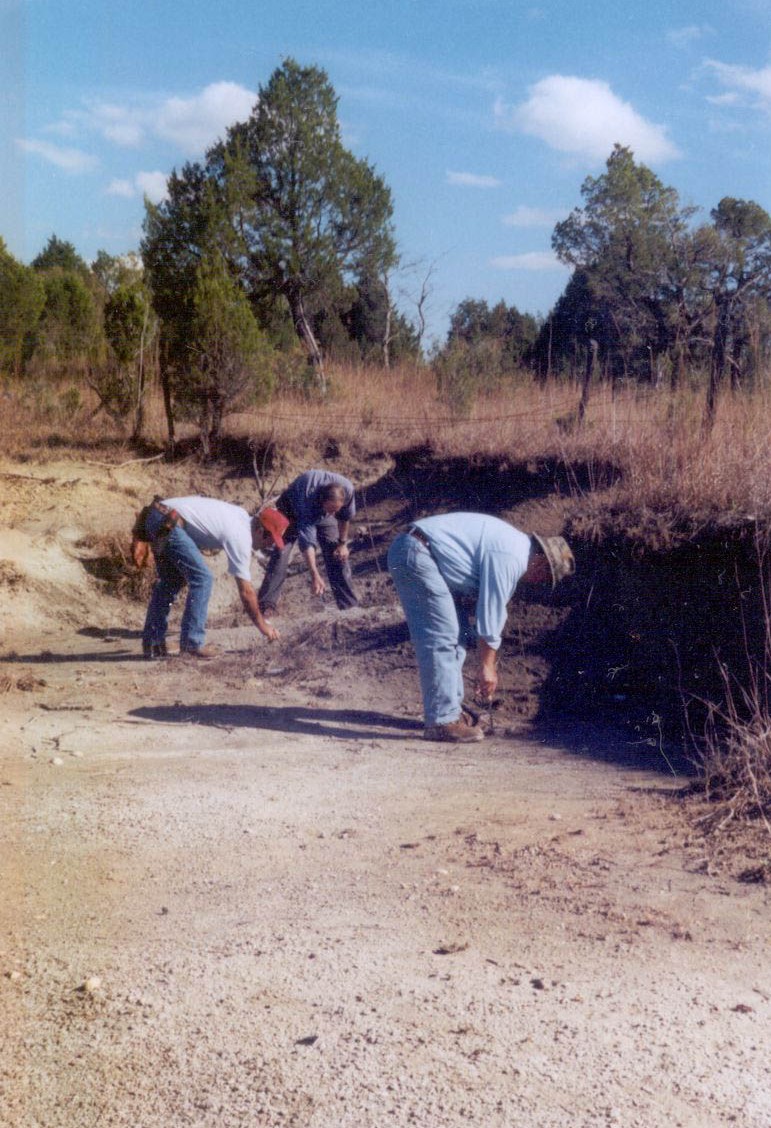
Those toe touches will wear you out. . . But those shark teeth sure are worth it!


Steve and Greg excavating the mosasaur bones.
December 20, 2003 - Franklin Co, AL
Our activity for December was the annual BPS
Holiday Party, this time
held at the home of Judy and Bill Lewis. They are fabulous hosts,
and have a house built for entertaining. Their numerous trips
to
exciting locations around the world, and the treasures they have
collected made for interesting conversations. Also, a number
of
members greatly enjoyed the pool table downstairs!
Bill was
in for a surprise. He hasn't been attending outings or
meetings,
but discovered that his favorite hobby, fly fishing, was shared by most
of the men attending. He also found out many of our sites are
found on fishing trips - I suspect we have another convert!
There was no official BPS outing this month, but several
members
participated in a "Scouting Outing". We took boats back to
Franklin county, and scouted numerous spots around the lake.
Some
nice finds, but from debris piles, saw marks, and 4 wheeler tracks, it
appears that there has been some serious collecting going on around
this
lake. One site that had been scouted about 3 years ago as a
promising site, was virtually void of fossils now.
Some common fossils found around the lake are shown below.
(Photos courtesy Vicki Lais)

Gastropod and ostrocods.

So much lakeshore, so little time....

So where do we go next, guys?

A wonderful day of exploring. Had fun. Goodbye - see you next time!

2002
January 12, 2002 - Cambrian Fossils, Cherokee Co, AL
We collected in Cherokee County, Alabama, in the pebbles and shaley outcrops around a lake, which was low for the winter, exposing a wide shoreline. An outcrop of the Middle Cambrian Conasauga Shale of the Coosa Valley is at this site, and numerous trilobites were found. A number of members went scouting for new sites in the area. The best find of the trip was a complete trilobite impression on a hard nodule.
(Photo courtesy Vicki Lais)

Trilobite found by Vicki.
February 23, 2002 - Franklin Co, AL
March 23, 2002 - Walker Co, AL
April 14, 2002 - Walker Co, AL
April 26, 2002 - BPS Hosts Jerry MacDonald at Union Chapel Mine
This morning, Jerry MacDonald, who discovered the Robledo Mountain Paleozoic Trackways, and his wife, Pearl, met with various BPS members in Jasper in order to visit the Union Chapel Mine. Jerry and Pearl visited the site twice, once before and once after lunch. Unfortunately, the weather was rainy and none of the pictures taken of Jerry at the site worked out. The pictures here were instead taken at Uncle Mort's Restaurant, located just east of downtown Jasper, and only a couple of miles from the Union Chapel Mine. Later in the evening, a "slide party" was hosted for the MacDonald's at the Buta/Crocker residence in Tuscaloosa.
Photos taken by Ron Buta and others.
-
Group photo at table in Mort's Restaurant. Left to right: Bruce Relihan, Pearl MacDonald, Jerry MacDonald, Vicki Lais, Richard Blake, Prescott Atkinson.
-
Group photo in front of sign at Mort's Restaurant. Left to right: Vicki Lais, Jerry MacDonald, Kathy Twieg, Ashley Allen, Gerry Badger, Bruce Relihan, Ron Buta, Richard Blake.
-
Group photo in front of sign at Uncle Mort's Restaurant. Left to right: Vicki Lais, Jerry MacDonald, Kathy Twieg, Ashley Allen, Gerry Badger, Bruce Relihan, Prescot Atkinson.
-
Group photo in front of sign at Uncle Mort's Restaurant. Left to right: Vicki Lais, Jerry & Pearl MacDonald, Kathy Twieg, Ashley Allen, Gerry Badger, Bruce Relihan, Richard Blake, Prescot Atkinson.
-
The party gets under way. Left to right: Pearl MacDonald, Vicki Lais, Kathy Twieg (seated), Katie Crocker-Buta, Jerry MacDonald. The "slide party" was held at the Buta/Crocker household, where Jerry MacDonald showed hundreds of slides of Robledos Mountains trackways to BPS members.
May 24, 2002 - Lowndes Co, AL
June 13, 2002 - New Hanover Co, NC
Again this year, a number of BPS members visited several mines near Wilmington, North Carolina, the beach, and a shell pit a number of miles inland. We spent extra days there, from June 13 - 16. We found a good quantity of shark teeth and echinoids, and also found litterally thousands of shells.
Thanks to Ashley for setting up this multi-day excursion to a number of sites. It was a very interesting trip, and I hope the young student whom Ashley brought along contacts me sometime. Am very interested in how your life is going these days!
(Pictures courtesy Vicki Lais)

One of the quarries.

Most of the gang.

Ken diligently searching the shell piles.

Martha and her bucket of treasures.

Shell piles dug up while digging the canals seen in the picture.
This is about 50 miles inland.

Vicki and some of her treasures.
July 27, 2002 - Marshall Co, AL
This month, BPS members were given a private tour of Cathedral Caverns, located in North Alabama near Gant. Cathedral Caverns bosts the World's Largest Cave Opening, the World's Largest Stalagmite and the World's Largest Frozen Waterfall. The tour was a real treat!
July 3, 2002 - UCM Press Release
Press Release
WORLD-CLASS FOSSIL DISCOVERY IN NORTHWEST ALABAMA
Just prior to the July 4th holiday last week, U.S. Representative Robert Aderholt (District 4) visited an extraordinary fossil discovery just northwest of Birmingham in Walker County. Hosting Rep. Aderholt and his aide Bill Harris in a tour of the site were members of the Birmingham Paleontological Society (BPS), a local amateur fossil group, and a number of professional geologists and paleontologists who have participated in studying the fossils that have been recovered so far from the site.
“This is the most important discovery of Carboniferous Period tracks known; there is no comparable site in the world,” stated Prescott Atkinson, a physician at Children’s Hospital and a member of the BPS. He was quoting from a letter sent to Rep. Aderholt from Professor Hartmut Haubold, a German paleontologist who is widely considered one of the world’s leading experts on fossil animal tracks. Professor Haubold had written to Representative Aderholt in support of protecting the fossil site for scientific research after seeing the photographic database of more than 1300 track specimens compiled by Dr. Ron Buta, a University of Alabama astronomy professor and BPS member. Prof. Haubold’s assessment of the site: “by quantity, by quality, and by geological age, it is the most important discovery of Carboniferous tracks hitherto known.” This assessment was further strengthened in another letter sent to Representative Aderholt by renowned fossil track specialist Jerry MacDonald (author of Earth’s First Steps: Tracking Life Before the Dinosaurs), who visited the Walker County site in April 2002. In the late 1980’s Mr. MacDonald found an extensive pre-dinosaur tracksite in New Mexico that dates from the Permian Period, some 30 million years “younger” than the Walker County site.

Picture 1: Paleontologist Dr. Andy Rindsberg explains fossil tracks to Representative Aderholt
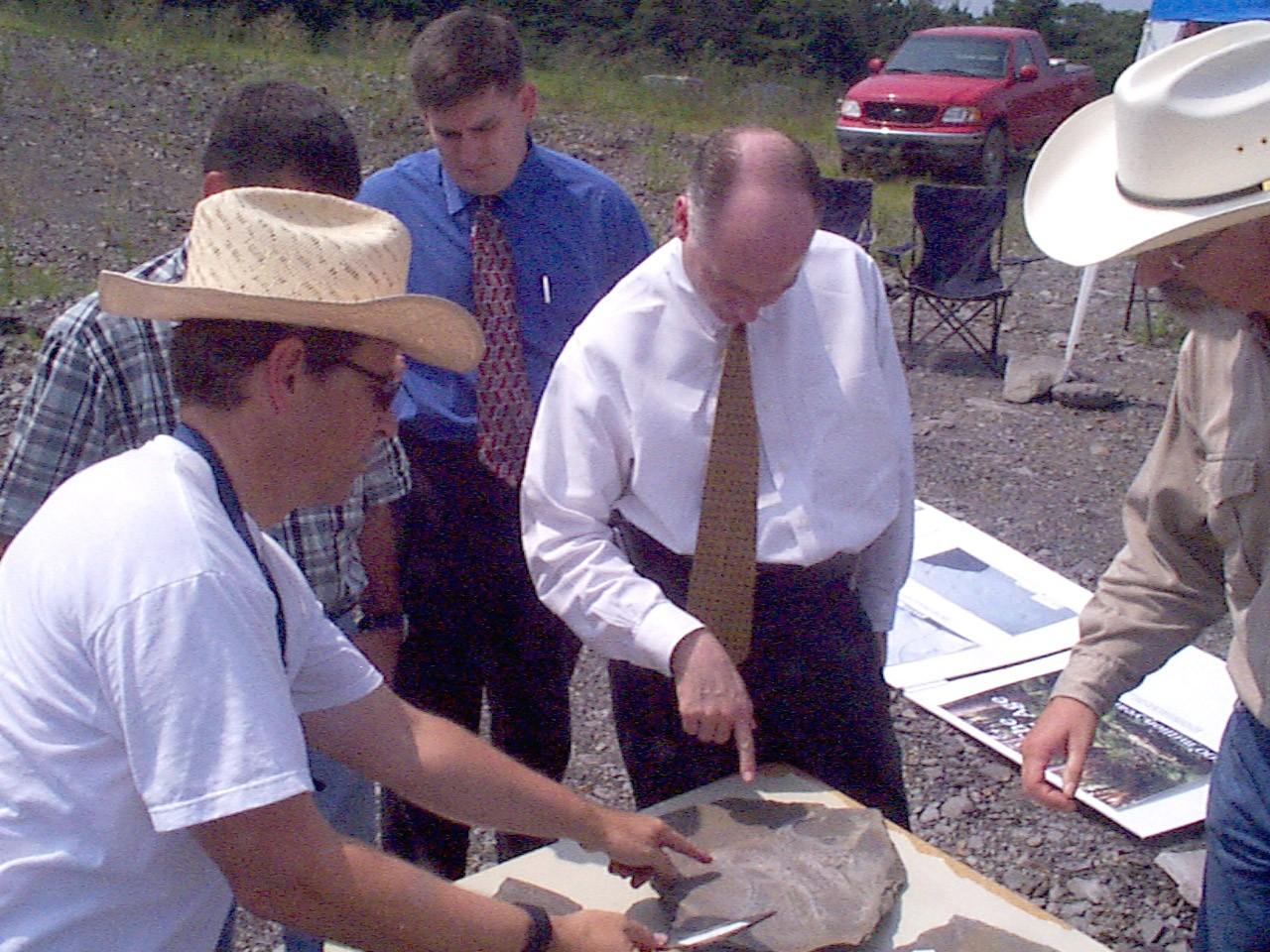
Picture 2: Rep. Aderholt and his aide Bill Harris (center) examine fossil tracks with Drs. Atkinson (L) and Rindsberg (R)
During the tour of the area, Dr. Jack Pashin, a coal geologist with the Geological Survey of Alabama, discussed the ancient history of the rocks at the site. The sediment (mud, dirt, and sand) that became shale rock and the plant material that became coal were laid down there about 310 million years ago in a swampy river delta during the Carboniferous Period (“Coal Age”), many millions of years before the dinosaurs. Dr. Jim Lacefield, adjunct professor at the University of North Alabama and author of Lost Worlds in Alabama Rocks, continued with the ancient history of the area, explaining that this part of Alabama was near the equator when these sediments were deposited. He explained that an ocean covered much of North America to the west and south of the present day location of Walker County. Dr. Andy Rindsberg, a paleontologist with the Geological Survey of Alabama, took Aderholt and Harris around several tables to examine specimens of vertebrate and invertebrate tracks that have been recovered from the site, some that very morning. Vertebrate tracks ranged from smaller than a fingernail to larger than a hand. Bruce Relihan, Curator of Horticulture with the Birmingham Zoo and a member of BPS, showed the Congressman some examples of the many plant fossils that the site has yielded and presented him with a small amphibian trackway, found that morning at the site. Steve Minkin, a geologist with Westinghouse in Anniston, finished the tour by explaining that there are several acres of undisturbed strata at the site, and that preservation of the site could be accomplished by including an engineered design to leave the undisturbed track-bearing rock prepared for a proper paleontological excavation.
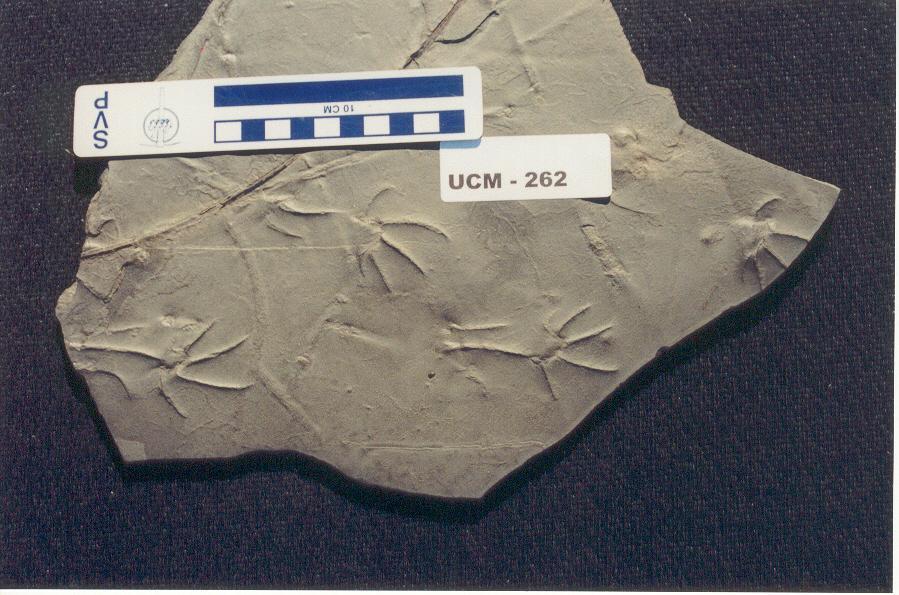
Picture 3: Large fossil amphibian trackway
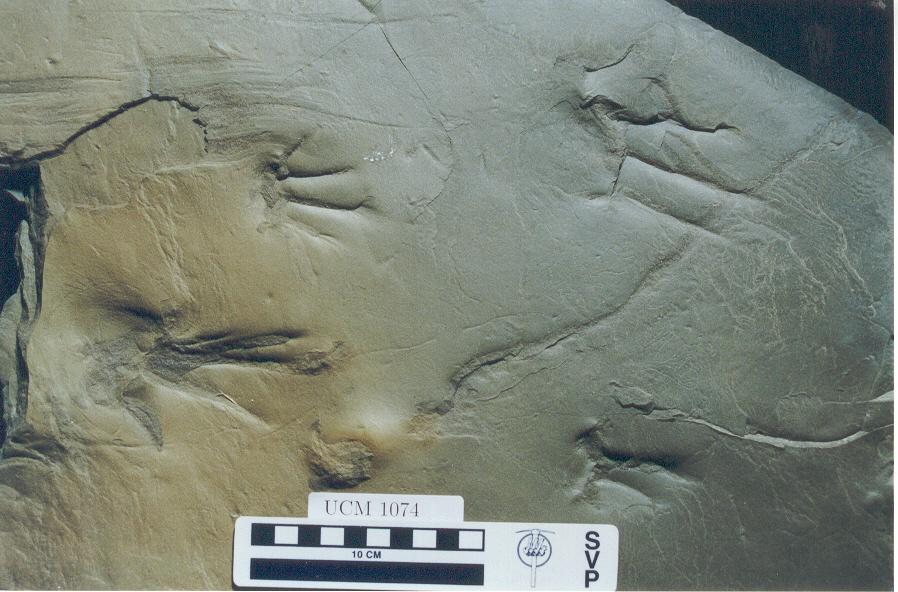
Picture 4: Fossil amphibian trackway
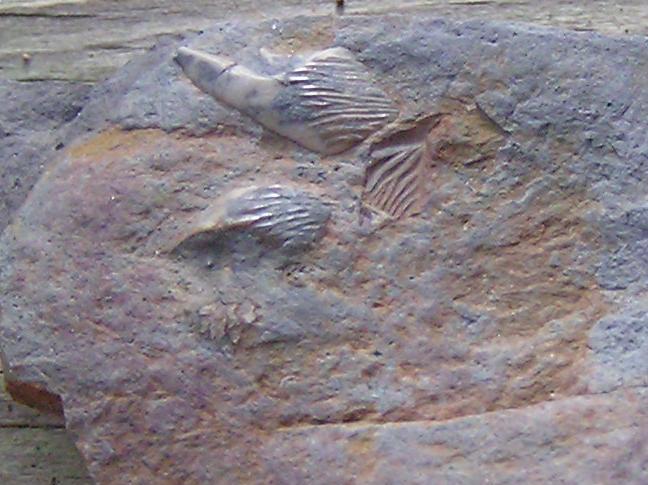
Picture 5: Fossil fish scale
The site is located at a small surface coal mine owned by the New Acton Coal Company, and the group expressed their appreciation for the generosity of the company in allowing this world-class collection of fossil tracks to be assembled from broken rock in the spoil areas. If the undisturbed rock beds still remaining in the site are properly excavated in the future, the testimony of the experts indicates that the scientific and educational value of the site will be of truly international significance. In fact, several school field trips have already taken place at the site under the supervision of Ashley Allen, an Oneonta High School science teacher. Mr. Allen, also a BPS member, originally discovered the tracks after being led to the site by one of his students, the grandson of Mrs. Delores Reid, owner of New Acton Coal Company. Together the BPS fossil enthusiasts and their professional collaborators are proposing that the site could be developed as an important regional attraction for Alabama, with easy access from U.S. Highway 78 and, soon, Corridor X. A small building onsite could serve as a museum and visitor’s center that would house many of the tracks already collected, plus tracks excavated during a future paleontological dig. Similar to other sites out West, a pre-fabricated, portable building could be placed over an ongoing excavation and serve to protect the research and allow school classes and the public to observe paleontologists at work.
Much work remains before the vision of saving the site can be realized. Representative Aderholt is considering introducing legislation that would preserve the site for future scientific development. Alabama has already entered scientific history as home to a world-class Coal Age track site, and even more discoveries may lie ahead.
Dr. Andy Rindsberg (205-349-2852, e-mail: arindsberg@gsa.state.al.us)
Dr. Prescott Atkinson (205-934-7054, e-mail: patkinso@uab.edu)
Dr. Ron Buta (205-348-3792, e-mail: rbuta@bama.ua.edu)
August 24, 2002 - Walker Co, AL
September 28, 2002 - Montgomery Co, AL
We visited two late Cretaceous sites in Montgomery County, Alabama, where we collected primarily shark teeth and echinoids. A surprise awaited - one site we have visited for years used to have a huge sand pile shaped like a mushroom that was filled with shark teeth. The mushroom is no more, and all that is left is a sandpile. Last we heard, the sand was being used in the zoo. You don't want to know any more than that!
(Photos courtesy Brian Ward.)
October 26, 2002 - Jefferson Co, AL
BPS members visited the quarry at the Ruffner Mountain Nature Center. It includes a limestone quarry containing Mississippian and Ordovician-era fossils. A number of good "teaching opportunities" were identified.
November 24, 2002 - Bibb Co, AL
We made several scouting stops also, one at a reclaimed strip mine, where we found the old high wall, with lots of collectible fossils well away from the "danger" area.
December 21, 2002 - Holiday Party
2001
January 20, 2001 - Cherokee Co, AL
BPS members collected in Cherokee County, Alabama. This site is the Conasauga Formation of the Cambrian, and numerous trilobites were found.
NOTE: We lost server access due to the illness of the administrator of our host server. It was over a year before he was back at work, and no field trip reports were created during that time period. These brief memos are simply place-holders for the trip. Periodically, old photos do turn up and get scanned in.
February 17, 2001 - Franklin Co, AL
March 31, 2001 - Bibb Co, AL
March 5, 2001 - Press Release - Ancient Alabama Animal Tracks
ANCIENT ALABAMA ANIMAL TRACKS INSPIRE AMATEUR FOSSIL COLLECTORS
TO DOCUMENT FINDS
"The handprints, which include long, curving toes with easily-distinguished pads on the tips, are nearly as big as my own," exclaimed Dr. Jim Lacefield of Tuscumbia. "This was a huge beast. Although I had read that some amphibians reached rather large size in the Pennsylvanian, in all my collecting in Coal Age rocks in Alabama I have never seen any that were anywhere nearly this large," he said.
Lacefield, a part-time biology and Earth science instructor at the University of North Alabama, and author of a recently published book on Alabama fossils, was describing remarkable fossil footprints of an ancient alligator-sized animal that he had collected at a surface coal mine in Walker County owned by the New Acton Coal Mining Company of Warrior, Alabama. Lacefield was visiting the mine on an outing early last year with members of the Birmingham Paleontological Society (BPS), an active group of local amateur fossil hunters who had received permission from the company to salvage fossils from the area.
The mine had been discovered only a few months earlier to be an unusually good source of fossil vertebrate trackways by Ashley Allen, an Oneonta High School science teacher who is also a member of the BPS. A student in Allen's class had alerted him to the site owned by his grandmother, Mrs. Dolores Reid. Fossils connected with vertebrate animal life (that is, animals with a backbone) are of great paleontological significance since they represent some of the most advanced forms of life that developed on Earth at the time and are usually very rare.
Since Allen's discovery, the Walker County mine has been the focus of an extraordinary salvaging effort by BPS members that has led to a remarkable cooperation with professional paleontologists. The trackways collected from the mine are of vertebrate as well as invertebrate animals that lived during the Late Carboniferous Period of Earth history, known to North American geologists as the Pennsylvanian Period. This Period dates back 310 million years to a time when much of the Earth (particularly North America and Europe) was covered with great tropical swamps that eventually laid down many of the vast coal reserves we use today. (In fact, the Pennsylvanian Period is also often referred to as the "Coal Age.") During the past 15 months, mainly through the efforts of the BPS, more than 800 track specimens have been salvaged from the residual rock piles left after the coal mining was discontinued.
According to Dr. Anthony J. Martin of the Department of Environmental Sciences, Emory University, the Walker County mine is "one of the best vertebrate track sites for the time period in question in the world." Martin is an ichnologist, a paleontologist who studies "trace" fossils, or traces of ancient activity. Tracks are trace fossils since they show what an animal was doing but not specifically what it looked like. Martin became involved in the study of the Walker County mine tracks through the insight of Steve Minkin, an Anniston geologist and BPS member who was very active in collecting trackways from the site. Recognizing the scientific importance of the tracks, Minkin proposed a series of meetings at which amateur collectors would bring all of their track finds from the mine to one place for photographic documentation and detailed inspection by professional paleontologists. The first of these events, jokingly dubbed a "Track Meet", was held on August 19, 2000 at the Alabama Museum of Natural History on the campus of the University of Alabama. Dr. Ed Hooks, Museum curator, fully supported the event and was instrumental to its success. The event was also sponsored by the Geological Survey of Alabama. A second meeting, called "Track Meet 2", was held at Oneonta High School on October 14, 2000 to document all finds since the first track meet. The third and final track meet, called "Track Meet 3", will be held on May 12, 2001 at the Anniston Museum of Natural History and will photographically document all tracks found since Track Meet 2 and since the final reclamation of the mine in December, 2000.
Although no fossils of the ancient animals that made the tracks have been found, the trackways record the dynamics of life on land nearly 90 million years before the first dinosaurs walked the Earth. According to Dr. Jack Pashin of the Geological Survey of Alabama, the tracks occur at the head of an area that was once a tidal mud flat much like the one seen today in Mobile Bay. The environment would have been far enough inland to be fresh water rather than salt water, but it would have been an area still dominated by one or more daily tides. At ebb tide, animals would walk or creep across the still wet mud and impress the tracks of their activities. The mud was soft and fine enough that even small creatures could leave well-defined tracks. The best-preserved tracks were probably impressed so deeply that they were buried before they had a chance to be altered in any significant way. Once buried, they were effectively removed from further disturbance for the next 310 million years.
The tidal flat was evidently near a rich forest of tall tree-like lycopods (primitive spore-bearing plants whose foliage resembled that of modern clubmosses), giant horsetails (plants roughly like reeds or bamboo), and tree-sized seed ferns, because among the tracks BPS members also found bark impressions, pith casts, fern impressions, and reproductive organs of a wide variety of ancient plants that are now extinct. It is known that these types of plants could only thrive in fresh-water swamps. Insect life was probably abundant in the forest, and it is significant that one insect fossil was found at the Walker County mine. Dr. Prescott Atkinson, a Birmingham pediatrician and BPS member, found a pair of 4-inch long wing impressions of an extinct relative of modern dragonflies. This is the only fossil found at the site that gives direct information on the actual appearance of a creature that lived in the area. Because of the high quality of many of the plant fossils found at the same site, Track Meet 3 will include a "Plant Fest", where the best plant specimens from the mine will be photographically documented and examined by professional paleobotanists (scientists who study fossil plant life).
Many of the tracks found by BPS members are of amphibians, animals whose modern relatives include frogs and salamanders. These tracks include striking five-toed patterns over a wide range of sizes from less than a centimeter to the size of an adult human hand. Other tracks are those of animals that may be transitional between amphibians and reptiles. Although we do not know precisely what these creatures looked like, they would have been some of the earliest vertebrates to be fully adapted to dwelling on dry land.
Tracks of other animals, mostly invertebrates, have also been found at the Walker County mine. Apparently, the area was very popular with horseshoe crabs, animals that are related more to scorpions and spiders than to conventional crabs. Today's horseshoe crabs are "living fossils", and the ancient ones that left the tracks probably looked very similar to modern ones. The complex pattern of legs on horseshoe crabs, and the way they walk in water, can explain a wide variety of tracks found at the Walker County mine. Horseshoe crabs in large numbers also left "resting traces", simple impressions of their leg patterns. Evidence also for early fish swimming in shallow areas has been found in the form of wavy tracks where it is thought that fins lightly touched the bottom. Numerous worm burrows have also been found.
All of the trace fossils found at the mine record valuable information on life in the Paleozoic ("ancient life") Era of Earth history. This Era runs from 570 to 245 million years ago, and it was during this time that life on Earth gained a foothold on land. From studies of the tracks brought to the various track meets, ichnologists have deduced that the Walker County mine area was a nursery for many of the animals living there. According to Dr. Andy Rindsberg, an ichnologist working for the Geological Survey of Alabama, the fact that the various tracks occur in a broad range of sizes whose shapes changed slightly as they grew larger points to this interpretation, which is similar to the way modern animals use tidal mud flats today. Rindsberg, along with Martin and his undergraduate student Nick Pyenson, is actively researching the tracks and the team presented talks about them in March to the Southeastern Section of the Geological Society of America.
For the BPS, the discovery of the beautiful trackways has made for a very exciting year. The amateur group, headed by Kathy Twieg of Vestavia Hills (near Birmingham), put a lot of time into salvaging as many tracks as possible before the mine was reclaimed in December. The generosity of the New Acton Coal Mining Company, in particular the enthusiasm of owner Mrs. Reid, was instrumental to the success of the venture. For many of the collectors, the great appeal of the tracks was not only because of their possible scientific value and great beauty, but also because they are more about life than about death. Unlike a pile of bones, tracks record what animals were doing when they were alive. They bring to life an era far removed in time from our own.
For Allen, the Walker County mine experience is part of what being a teacher is all about. "I try to convey to my science students the importance of communication in the scientific community," he says. "I want to be accurate in representing the principles that the scientific enterprise is based upon. Work done without proper communication is called a secret, not a discovery. I feel that any opportunity that I get to show them how to use problem solving skills, scientific reasoning, communication skills, and the ability to put things into a proper social and historical perspective is worth the effort."
The Track Meets themselves represent a rare collaboration between amateurs and professionals that could become a model for other similar finds. "Amateurs are often the source of new discoveries in paleontology," says Rindsberg, who notes that if the BPS had not learned about the site so soon after mining operations ended, any tracks exposed would either have weathered away or been re-buried when the site was reclaimed. He also notes that "if the BPS had not spent so much time looking and splitting open boulders, then the fossils would not have yielded up as much information as they have. Even with the nearly one thousand tracks and trackways that have been labeled so far, Tony Martin and Nick Pyenson have identified some specimens with unique features. If those single specimens had been missed, we would know less about the creatures that made them. At every step of the way, persistence and open-mindedness paid off in this case. I am certain that Alabama has many other surprises for us to find."
To see what some of the tracks look like, click on the
following links:
Image 1: Tracks of an amphibian known as Cincosaurus cobbi,
a common five-toed animal on the mud flat.
Image 2: Tracks of a larger amphibian, possibly a more grown C. cobbi.
Image 3: Tracks of one of the largest amphibians that walked on the mud
flat, known as Attenosaurus subulensis.
Image 4: Tracks of a likely horseshoe crab.
This press release was prepared by BPS member Dr. Ron Buta, a professional astronomer at the University of Alabama. He can be contacted at 205-348-3792 or buta@sarah.astr.ua.edu.
Interested persons may contact Drs. Martin and Rindsberg at the following e-mail addresses:
Dr. Anthony J. Martin - geoam@learnlink.emory.uab
Dr. Andy Rindsberg - ARindsbert@uwa.edu
The following people are either quoted or mentioned above, and may also be contacted for information:
Dr. Jim Lacefield - lacefiel@hiwaay.net
Dr. Ed Hooks - hooksge@longwood.edu
Dr. Prescott Atkinson - patkinso@uab.edu
April 29, 2001 - Montgomery Co, AL
BPS members visited two late Cretaceous sites in Montgomery County, Alabama, where we collected primarily shark teeth and echinoids. A pycnodont tooth (rare in Alabama) was found by Vicki Lais.
In 1999, Ed Hooks of the Alabama Museum of Natural History in Tuscaloosa, Alabama, along with David Schwimmer and Dent Williams of Columbus State University, Columbus Georgia, had written an article titled "Synonymy of the Pycnodont Phacodus Punctatus Dixon 1850, and Its Occurrence in the Late Cretaceous of the Southeastern United States". This article was published in the Journal of Vertebrate Paleontology in September 1999. Earlier, Gordon L. Bell, Jr., one of the founders of BPS, wrote an article titled "A Pycnodont Fish from the Upper Cretaceous in Alabama", which was published in Journal of Paleontology, Vol. 60, Sept 1986.
May 12, 2001 - Track Meet 3 and PlantFest, Anniston, Alabama
Track Meet III and the concurrent PlantFest was held on May 12, at the Anniston Museum of Natural History. We spent the day documenting especially fine, well-preserved, interesting plant fossil specimens and previously unphotographed tracks collected at the Union Chapel Mine. We were fortunate enough to have 2 visiting paleobotanists at this Meet. Thanks to all of the organizers and participants!!
May 26, 2001 - Greene Co, AL
June 09, 2001 - Lowndes Co, AL
On June 9-10, BPS members spent the weekend in Loundes County, Alabama, where they found Cretaceous fossils. Numerous fossilized crabs and shark teeth
were collected on this field trip. The crab nodules and exogyra below are from a resident near
the site, who helped us gain permission to collect on the property.

A number of members had already left for home by the time we reached the final stop of the weekend. Most of the remaining members decided to hike down the creek, and took off at a rapid pace. Many miles away the rumble of thunder could be heard, though it didn't rain at the collecting site. Vicki and Martha searched near the entrance to the creek, until they noticed the water was rising too high to clearly see the bottom. They decided to wait nearby for the return of he others. They waited. And waited. As they sat and talked, they speculated on the treasure trove of crabs that the long gone group must have found. Then finally they decided to walk back to the creek to see if anyone had returned. Wow! What a difference a couple of hours had made! The distant storms had created a muddy, rapidly moving flash flood.

These members were just happy to be back to their cars. Instead of a nice leasurely walk back up the creek, they had to bushwhack through the bushes and brambles due to the quickly moving floodwaters. Once back, Kathy asked if we had seen her bucket. No, what bucket? The one she left on the edge of the creek, containing her car keys. Oops - no, they're probably in the Gulf of Mexico by now. But all turned out well, as she rode back to Birmingham to get her husband's help retrieving her car.

Kathy, Claire, Sarah, Jeff, & ______.
June 15, 2001 - New Hanover Co, NC
This month BPS members took a long weekend, from June 15-17, driving to several quarries near Wilmington, North Carolina where Ashley had made arrangements to collect. There were numerous shells found at these sites, many in almost perfect condition. If one didn't know better, they could be mistaken for recent material.
(Photos courtesy Vicki Lais)
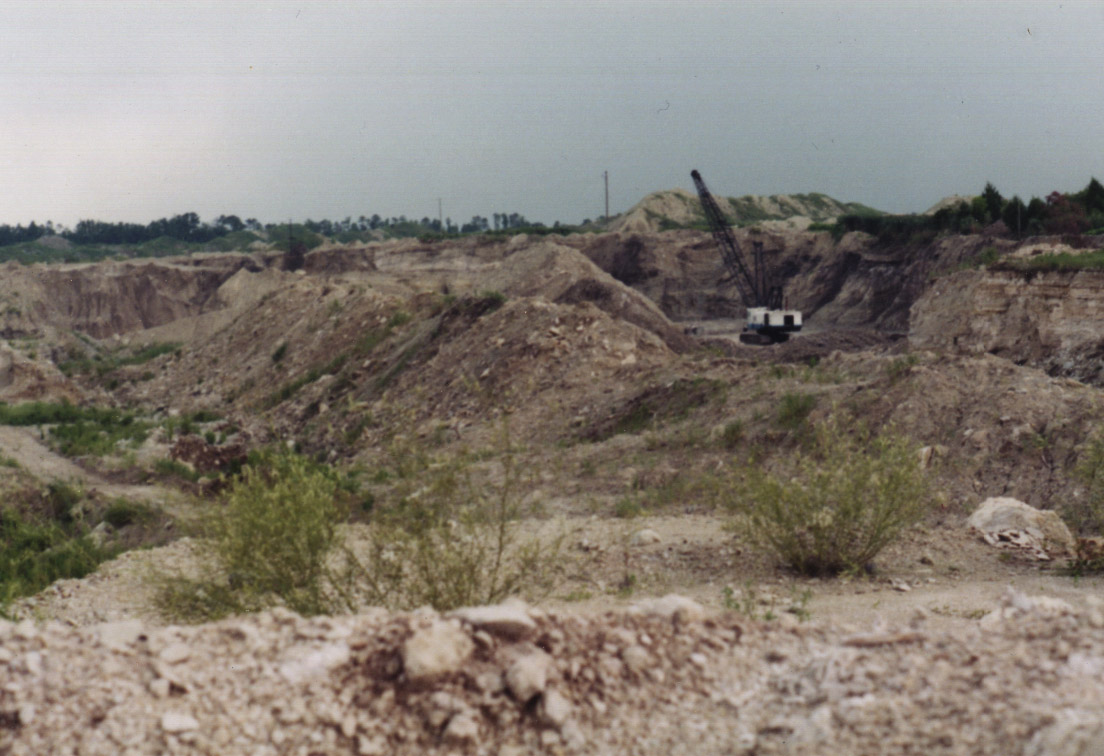


Pectins in matrix found in one of the quarries.
Spring, 2001 - Walker Co, AL
BPS took several trips to an abandoned strip mine, where numerous nodules containing fern spore pods were found. This was on a trip with a visiting paleontologist.
July 21, 2001 - Clarke and Washington Co, AL
BPS members went to a Clarke County site where whale fossils have been found in the past, but none were found on this day. We also collected at a privately owned quarry in Washington County, Alabama, where numerous echinoids, sand dollars, and foraminifera were found.

Forams with a sand dollar showing in the matrix.
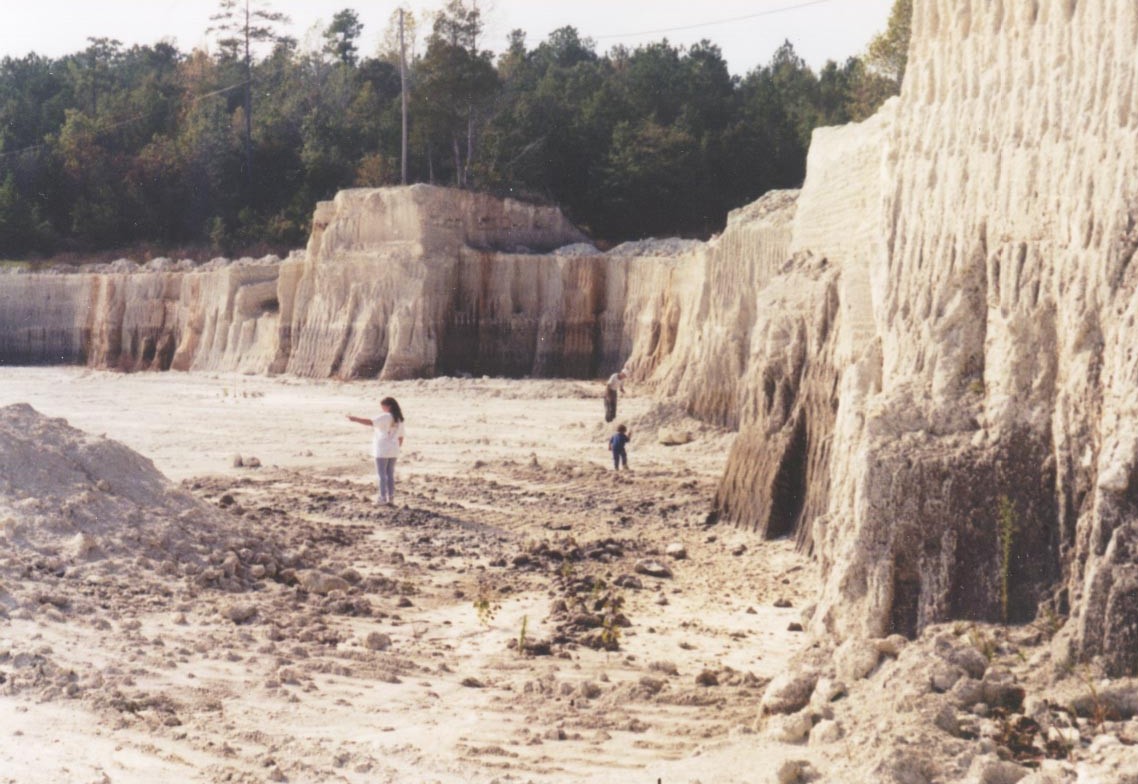
Numerous sand dollars were found in this quarry.
Summer, 2001 - Jefferson Co, AL
Several times during the summer, members collected in north Jefferson county, in an area being cleared for a shopping center.
August 25, 2001 - Colbert Co, AL
BPS members took a long road trip to roadcuts in Colbert County on August 25, where everyone found a good selection of blastoids, brachiopods, trilobites, and other Mississippian age fossils at two separate collecting sites.
Afterwards, we relaxed and cooled off in a creek on some propery owned by one of our members.
September 29, 2001 - Covington Co, AL
October 6, 2001 - Walker Co, AL
November 17, 2001 - Walker Co, AL
December 1, 2001 - Holiday Party
2000
January 23, 2000 - Pennsylvanian Fossils, Walker Co, AL
On this first field trip of the first year of the new millennium (or the last year of the old millennium), the BPS had the pleasure of visiting a truly interesting surface mine in Walker County. The Union Chapel Mine is smaller than the Cedrum Mine we visited last month, but is located in the same general area. The field trip was attended by 11 "diehards" who were not put off by the weather, which started out rainy and cold. By the time we arrived at the site (about 9am), the rain had completely subsided and we were virtually rain-free the whole time we were there. However, the clouds persisted and the day was a little gloomy.
|
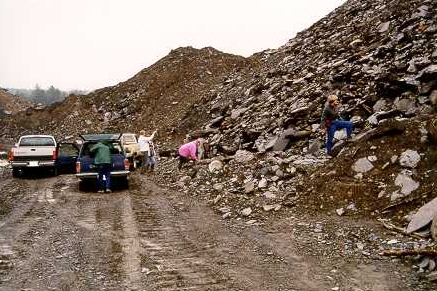 |
| Fig. 2 - One of the rock piles at the site that was rich in tracks. |
| The following pictures show a few of the track fossils found. These range from some fairly large tracks (a few centimeters per print) to smaller prints that look like Chinese characters, and finally to really small prints that are at most a couple of millimeters or less in size. Some tracks also included obvious tail dragging marks. These can straight or curved, and I recall that Ashley found a particularly wavy specimen. Virtually everyone who was there found one or more interesting track fossils. | 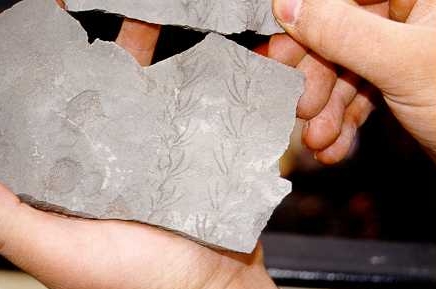 |
| Fig. 3 - Excellent amphibian tracks held by Matthew Valente. |
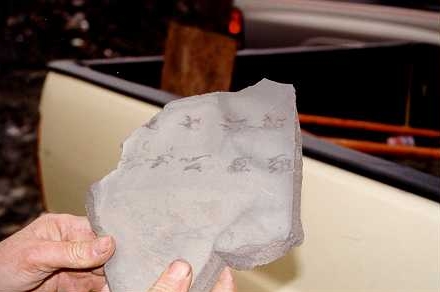 |
| Fig. 4 - Tracks resembling Chinese characters. |
 |
| Fig. 5 - Two sets of small tracks, with likely tail dragging marks. |
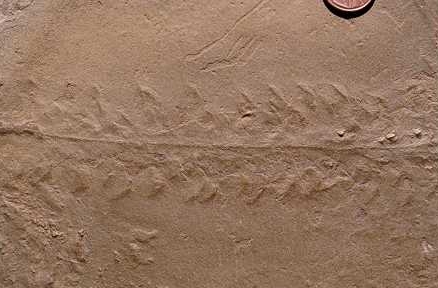 |
| Fig. 6 - Inverse tracks of unknown creature. |
| Probably the most spectacular prints from the site were
a huge set found by Jim Lacefield, the "likes of which I had never
seen", according to Jim. Jim relates the following:
"The handprints, which include long, curving toes with easily-distinguished pads on the tips, are nearly as big as my own. This was a huge beast. Although I had read that some amphibians reached rather large size in the Pennsylvanian, in all my collecting in Coal Age rocks I have never seen any that were anywhere nearly this large." A digital photo of Jim's specimen is shown here. |  |
| Fig. 7 - Monster tracks found by Jim Lacefield, in an image prepared for inclusion in his book. |
Although the track fossils were superb, and were the principal things we all searched for, the plant fossils were also quite impressive and ranked as my favorites. Bark impressions of Lepidophloios, a subgenus of the Lepidodendrales, were especially abundant at this site. Jim Lacefield was seeing so much Lepidophloios that he was wondering if there was any Lepidodendron. However, both Sigillaria and Lepidodendron were well represented at the site. I show specimens of Sigillaria and a genus related to Lepidodendron here. By far the most beautiful of any specimens I have seen, at Union Chapel or any other site, were the compressed cast fossils of two branches of a Sigillaria species. The leaf scars are small hexagons with a central spot, and are so well-preserved that even fine ridge-like details are seen. I spent 45 minutes hammering on a large rock to get pieces of these branches out. On the same rock was an especially beautiful species that looks at first like a Lepidodendron, with pieces of highly compressed cast fossils lying about. According to Jim Lacefield, this might be a representative of a related genus called Diaphorodendron. |
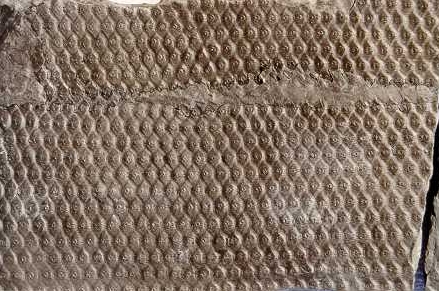 |
| Fig. 9 - Close-up of Sigillaria specimen |
 |
| Fig. 10 - Bark impression of a likely Diaphorodendron, a genus related to Lepidodendron. |
| Other items of interest were a snail fossil found by Kathy Twieg, a large Lepidophloios cast found by Ashley Allen, a rhizome of Calamites by Jim Lacefield, myself, and others, a small medullary cast of Calamites found by Bruce Relihan, and a gigantic lycopod stump (probably weighing more than 800 pounds) noticed by Jim Lacefield Jim also showed me a likely trace fossil of a hermit crab and also tiny insect prints. Concerning the rhizome of Calamites, Jim gave me the following comments: "Calamites, like all horsetails, propogates vegetatively through spreading by underground stems called rhizomes. New Calamites stems sprout upward from these horizontal, underground stems. It's a type of asexual reproduction that allows them to spread quickly into new territory and also anchors them firmly in the unstable ground along rivers and out onto newly deposited delta sediments. Those round structures were clusters of cells that, under the right conditions, could develop into new Calamites shoots. The rhizomes of Calamites look quite similar to the stems in most cases, but have nodes that get progressively closer together as they get out approach the apical area (the growth tip that spreads outward through the soil. | |
 | |
| Fig. 11 - Part of a rhizome of Calamites , showing characteristic round features that are not normally seen on calamites branch casts. |
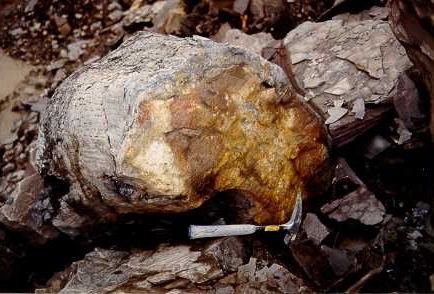 |
| Fig. 12 - Huge stump cast fossil, probably 800 pounds in weight, probably of a lycopod. |
There is no question that Union Chapel Mine has been one of the most interesting fossil sites that the BPS has had the privilege of visiting. According to Ashley, the Union Chapel Site will be reclaimed very soon. Since our original visit, various subgroups of BPS members have been back to the site, trying to salvage as many tracks and other items as possible before the site is gone.
Additional Pictures from Union Chapel Mine
The following pictures provide more examples of the types of fossils found at the Union Chapel Mine. In the two weeks after the January 23 field trip, several of us returned to the site. These are some of the items found on these return trips.
 |
| Fig. 1 - Stump cast of a Lepidophloios arborescent lycopod. Jim Lacefield and I were exploring one of the popular track rock piles at the site, and he pointed out this excellent stump cast to me. The piece weighs close to 300 lbs, but fortunately it lay on a slope that was accessible by my truck. All one could do is move the thing downhill. I rolled it down about 25 feet of slope onto a dirt embankment, and then with help moved it into my truck. It is pictured in my backyard garden area. |
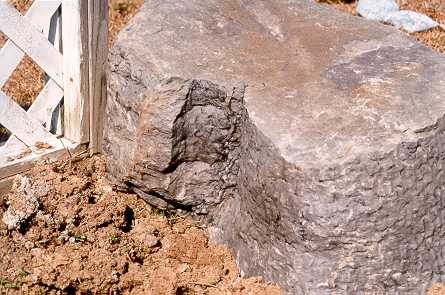 |
| Fig. 2 - this is a different view of the same stump cast, showing the large indentation that seems to characterize the shape of the trunks of these trees. In the January 23 report, I show a picture of an 800 lb stump with a similar indentation. |
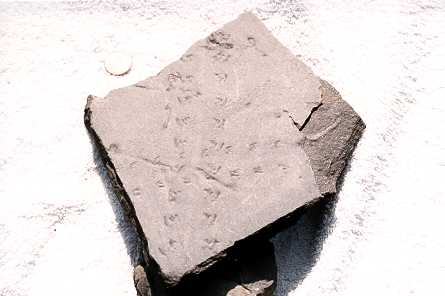 |
| Fig. 3 - this piece shows two criss-crossing tracks from small creatures with no tail-dragging marks. |
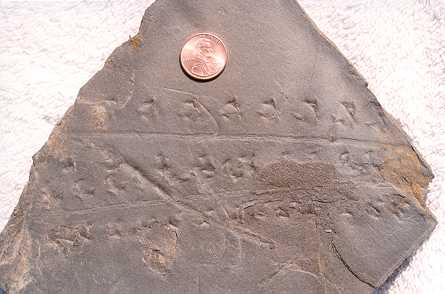 |
| Fig. 4 - two sets of small tracks with distinct tail-dragging marks. |
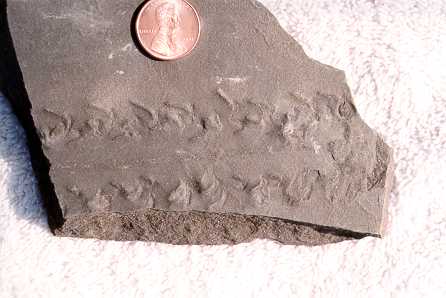 |
| Fig. 5 - complex inverse tracks of a still different creature, with only a weak tail dragging mark. |
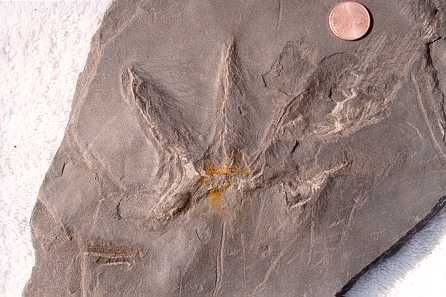 |
| Fig. 6 - a single large inverse print of what must have been a massive creature. This could have been a type of Attenosaurus, although the print is really different from those shown in Museum paper No. 9 of the Alabama Museum of Natural History, by Aldrich and Jones, published in 1930. |
 |
| Fig. 7 - excellent set of small inverse prints with a weak tail-dragging mark. |
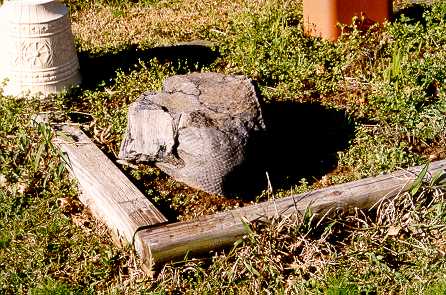 |
| Fig. 8 - another lycopod stump, this time covered with excellent leaf scars on side facing camera. Weighs about 200 lbs |
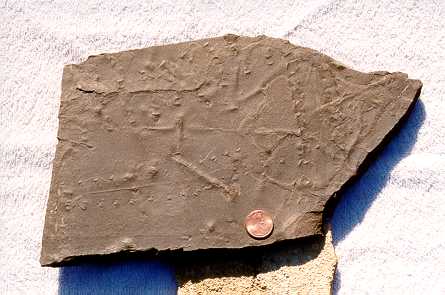 |
| Fig. 9 - three sets of small prints, found on a "page" of a vertically standing rock that opened into many layers. |
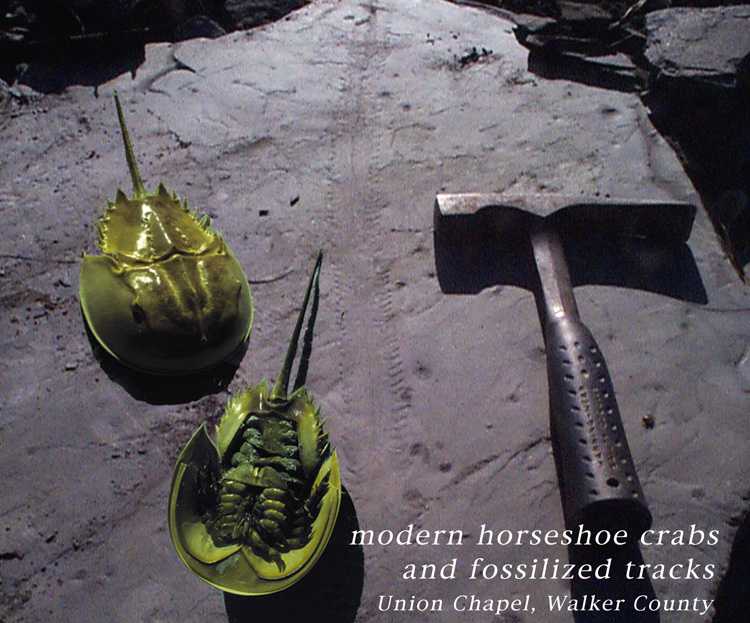 |
| Fig. 10 - a set of tracks, nearly 2 feet long, found by Jim Lacefield. Jim believes these are fossil tracks of a horseshoe crab. The actual crabs were not in the original photo! |
 |
| Fig. 11 - Jim also found this rock with excellent fossils of lycopod branches. Details are present at various levels and the branching is complex. |
February 26, 2000 - Mississippian Fossils, Franklin Co, AL
Every year, the BPS visits a lake in Franklin County, Alabama when the lake level is down from normal, exposing rocks from the Bangor Limestone dating back to the late Mississipian Period of geological history (about 320 million years). About 25 BPS members and guests attended the field trip, which took place on a beautiful, sunny, and pleasantly warm day.
According to Jim Lacefield, the Bangor Limestone formation is "fossiliferous from top to bottom, and collecting sites in it in both Colbert and Franklin Counties are world famous for echinoderms - particularly for crinoids and blastoids - and bryozoans such as Archimedes." Indeed, there are numerous sites in Alabama connected with this formation, and Jim says it is the best rock unit in Alabama for Mississippian fossils, and that few other units are better anywhere for the time frame in question.
We all parked our vehicles along an access road by the lake, and then walked out along the rocky, sandy shoreline. It was in these areas where we found a variety of interesting fossils: blastoids, crinoid stems and loose stem plates, Archimedes spirals, brachiopods, and horn corals. Unfortunately, my camera malfunctioned while I was at the site, so I have no pictures of the lake itself or the sandy shores.
--Edited by Vicki Lais
Fossils were found in two "modes": loose specimens lying in the sand, or encased specimens lying in strong limestone matrix. I show pictures of specimens in both modes here. The first picture shows a variety of blastoids from the sand, up to a penny in size. These were quite common and everyone there found at least a few if they got down on their knees and looked closely at the sand. Much larger blastoids have been found at this site. I recall two years ago how Ken Hoyle picked up a giant blastoid 1-2 inches in length. This kind of blastoid is much rarer than the pieces in the photograph. According to the Fossil Handbook by Rich et al. (1996), blastoids represent stemmed echinoderms whose top sections resemble petrified "nuts". The pieces in the picture represent the calyx of the original animal. Fine details are usually seen in the calyx, such as ridges, a five-fold symmetry, and small holes around the apex representing mouth and possibly anus. | ||
| The second photograph shows a variety of crinoid columns (or stems), some with unusual side holes that I think represent nodes where possibly small branches emerged. Typically these pieces are less than an inch in length, and some have interesting five-petaled flower or star designs on stem plates (columnals) themselves. Even single stem plates could be found in the sand. The third photograph shows loose "Archimedes" spirals or corkscrews. These represent a type of animal known as a bryozoan, or moss animal. Archimedes spirals are members of a group of bryozoa known as Cryptostomata, that includes the lacey grid-like fossils seen on other larger rocks from the same site. The two features were part of the same animal according to the Fossil Handbook. The authors of the Fossil Handbook state that the combination of a lacey support and a central column in the form of a wide-flanged corkscrew was an efficient feeding arrangement. | 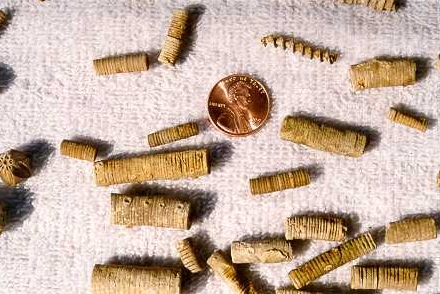 |
| Fig. 2 - examples of short sections of crinoid stalks, some with nodal holes. | |
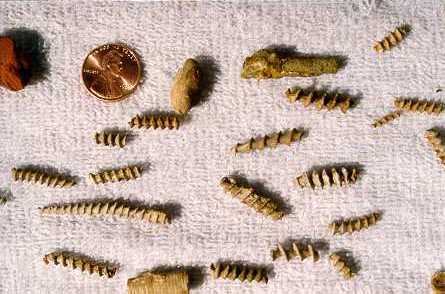 | |
| Fig. 3 - examples of Archimedes corkscrew bryozoa. |
| The fourth photograph shows a variety of small horn corals. According to the Fossil Handbook, these belong to the group Rugosa because their surface is marked by wrinkles. Most of the pieces I found were weathered and in poor condition. | 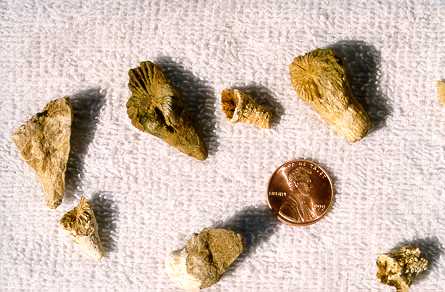 |
| Fig. 4 - examples of small Rugosan horn corals. | |
| The remaining photographs show a variety of small brachiopods, Archimedes spirals and crinoid stem plates encased in a limestone matrix. The last picture is typical of many Mississipian rocks in northwest Alabama: showing hundreds of loose crinoid stem plates. Although I was able to stay at the site for only an hour and a half, it was still possible to find many interesting specimens. Unfortunately, I missed the highlight of the trip: a visit to the home of Jim and Faye Lacefield in Tuscumbia. It was very kind of Jim and Faye to invite the BPS to their home, and I heard from those who went that it was a very nice experience. | 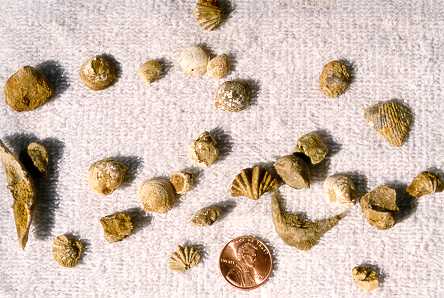 |
| Fig. 5 - examples of small brachiopods. |
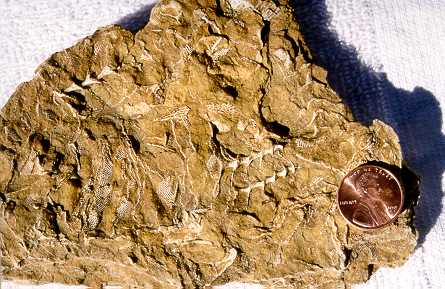 | |
| Fig. 6 - rock with two strong Archimedes spirals encased. | |
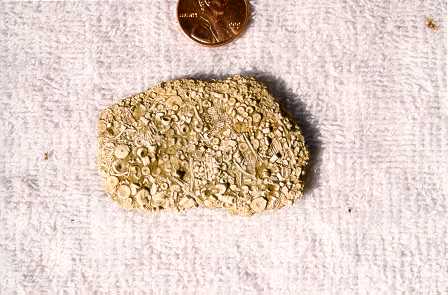 | |
| Fig. 7 - piece covered with crinoid stem plates and bryozoa. |
The BPS will continue to visit this area, probably at least once a year. The possibility of finding interesting Mississippian fossils is always present at this site, and it is a trip worth looking forward to each year.
March 19, 2000 - Pennsylvanian Fossils, Walker Co, AL
Department of Physics and Astronomy
University of Alabama
Tuscaloosa, Alabama
| It was decided at the March meeting that the BPS should return to this mine once again as an organized field trip. As I have noted in previous reports, this is a site the BPS visited with great success just two months earlier. The site is rich in footprint fossils of Pennsylvanian amphibians and other creatures. Although the previous organized visit, on January 23, occurred on a rather bleak day, it was nothing like the one today. Rain fell hard all day across most of Alabama and never let up even for a few minutes. Because of the weather, only six people turned up for this outing. | 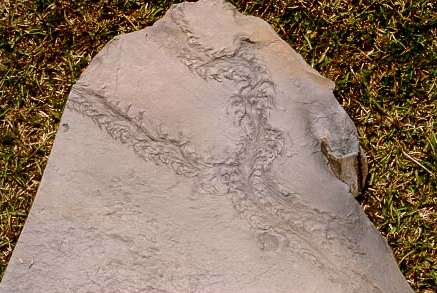 |
| Figure 1 Unusual tracks of one or two large creatures that must have been moving in very wet mud. |
| In spite of the weather, several of us still found nice tracks and other fossils. I show a few that I picked up here. One large set of tracks I found was lying at the bottom of a rock pile that had been thoroughly searched. After the tracks were cleaned of mud, it looks to me like they are amphibian tracks that were laid down in rather wet mud. The impressions are wide as the creatures' whole body probably sloshed in the mud. There are two sets of tracks on the main piece, and details of one are shown in the close-up. | 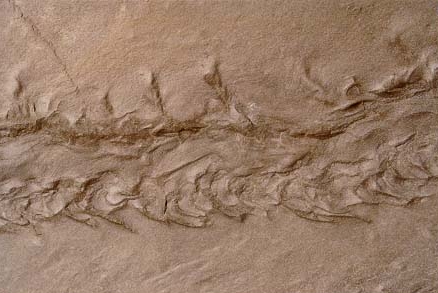 |
| Figure 2 Close-up of part of the previous specimen, showing likely toe prints flanking the broad body scrape. |
|
| ||
 |
| Figure
5 Two tracks of the same creature, the one at right being the
same foot as in the previous picture, but the print looks different
because it is at a different level. At this level, only three toes are
seen, with a strong pad. |
Other
Notes on the Union Chapel Site January 23-March 19, 2000
The Union Chapel Mine was visited many times by BPS
members and guests
between January
23 and March 19. Ashley Allen brought to the February BPS meeting a
huge rock with a set of excellent large amphibian prints. Bruce Relihan
brought to the March BPS meeting a large stump cast of a likely
Lepidodendron. The stump is more than a foot in diameter and tapers
around the edges, as if it were near the bottom of the original trunk.
Bruce related the heroic effort he put into getting the huge fossil by
himself, which involved building a rock ramp to allow him to get it
into his truck. Steve Minkin also brought to the last BPS meeting an
excellent set of modest-sized tracks found by his wife.
All in all, the Union Chapel site elicited such great
interest and
finds that Steve Minkin asked Ed Hooks if the BPS could have a
temporary display case at the Alabama Museum of Natural History in
Tuscaloosa. Ed agreed to this and some of the new Union Chapel pieces
may soon be on display for the public to see!
April 30, 2000 - Pennsylvanian Fossils, Walker Co, AL
University of Alabama
Tuscaloosa, Alabama
The New River Mine is a surface mine which was spotted by Jim Lacefield in early February this year, and shortly thereafter Jim and I scouted the site out. As expected, the site included plant fossils, but one difference compared to other sites that Jim noticed was an abundance of fossils of Artisia, the pith of the gymnospermous tree known as Cordaites. The only other sites where I have seen Artisia fossils are the Kimberly surface mine (see BPS report for May 29, 1999), and another mine near Eldridge that the BPS visited with Wayne Canis's class in March 1998.
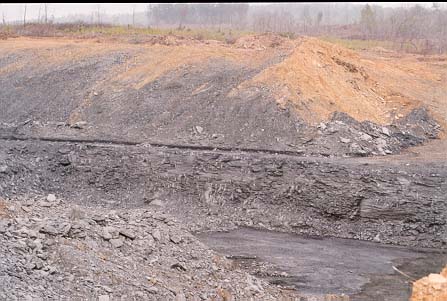 |
| Figure 2 View of a rock wall roughly on the east side of the site. |
| Bruce
Relihan was the first to find an interesting specimen of Artisia,
shown in the picture here. Artisia is characterized by horizontal
ridges along the pith, which can be found in cast form as well as
impressions, much like a Calamites pith. The specimen Bruce found
appears to be either an impression or a highly flattened cast. The
ridged area is framed by a larger area obviously affected by the plant.
This frame must indicate the true extent of the trunk. |  |
| Figure
3 Artisia
specimen found by Bruce Relihan. |
| Other
types of fossils found were bark impressions of arborescent lycopods. I
show pictures of two different types here. One appears to be of the
type Lepidodendron obovatum, with very large leaf scars. I am not
certain about the type of the other piece shown, other than it is also
likely to be a Lepidodendron. | 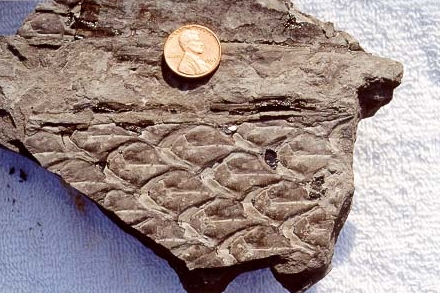 |
| Figure
4 Bark
impression of Lepidodendron obovatum, with large, distinct leaf
scars. |
 |
| Figure 5
Bark impression of another likely type of Lepidodendron. |
| The
last pieces I illustrate are ones I found in February during my
scouting visit with Jim
Lacefield. One appears to be a mostly unflattened cast of a branch of
Calamites. The piece shows 15 strong, indented nodes, and I must say it
resembles a petrified tootsie roll! I am not sure of the species of
this Calamites, but I did find a type of Calamites at this site that I
was able to identify. I found highly compressed cast pieces of what I
think is Calamites
suckowi, one of the more common species of this genus. |  |
| Figure 6 Cast fossil of a branch of Calamites, with 15 clear nodes. |
After a couple of hours of searching with limited results, trip attendees decided to return to Union Chapel Mine, about 30 miles east of the New River site. Union Chapel Mine is so rich that it continues to yield good specimens even though many people have visited the site the past 4 months. It is a good site to fall back on when other sites do not live up to expectations. See the reports for January 23, March 19, and May 28, 2000 for information on this mine.
May 28, 2000 - Pennsylvanian Fossils, Walker Co, AL
| I
felt like I had a "good day" today for track and plant fossils
from this site. The first picture shows a fine set of amphibian tracks
with at least four toes. Note how the size of the tracks alternate, as
if the hind and forefeet have different sizes. |  |
| Fig. 1 - Small amphibian tracks with at least four toes. The tracks resemble those of the genus Cincosaurus cobbi in Museum Paper No. 9, by Aldrich and Jones (1930). However, the tracks here are much smaller than those illustrated in their article. |
| The second picture shows
tracks of a somewhat different creature, again with at least four toes
and possible evidence of a pad. |  |
Fig. 2 - Another set of small tracks with four toes and evidence for a pad. |
| The third and fourth pictures show a
fine set of tracks whose visibility depends on the Sun angle when dry. I
noticed these tracks after splitting a rock. The two halves, giving
direct and inverse impressions, were wet and the tracks obvious.
However, after the pieces dried in the back of my truck, I could not see
the tracks! This set is interesting because it looks like the creature
was walking around an obstacle of some some sort. |  |
| Fig. 3 - A small set of tracks where the creature apparently walked around an obstacle of unknown nature. This set also resembles Cincosaurus cobbi, but are nuch smaller than the ones illustrated in Aldrich and Jones 1930. |
 | |
| Fig. 4 - Close up of part of the tracks in the previous picture. |
| The fifth picture shows a definite trace fossil that is likely connected to a fish. The picture shows two doubled sine waves, and at least one wave has four peaks on the whole rock. The sine waves could be due to fins scraping the bottom, and perhaps two fish made these tracks, each with a pair of fins touching the mud. | 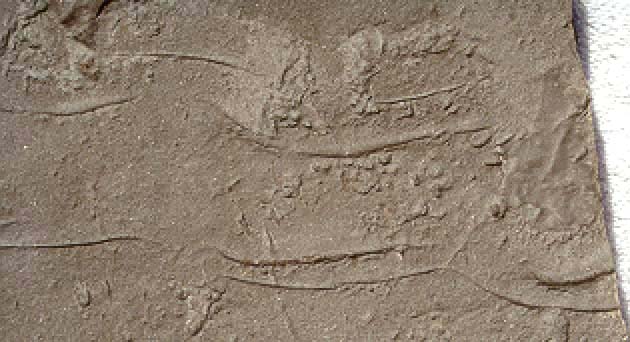 |
| Fig. 5 - Possible trace fossils of fish fins swishing along bottom of shallow water or swampy area. |
| The sixth picture shows an interesting trunk cast of a small tree. I had a hard hat on this visit, and felt emboldened to go a little closer to the high wall than I had been before. I found this stunning small trunk near but not exactly at the wall. I call this the "Devil’s Tower" specimen because it strongly resembles Devil’s Tower in Wyoming. The black verticle bands represent carbonized plant material, and I suspect the tree was a species of Sigillaria. Since it tapers a little, I also suspect the piece was near the bottom of the trunk. |  |
| Fig. 6 - The "Devil’s Tower" specimen, a trunk cast of small lycopod, probably of the genus Sigillaria. |
| The seventh picture shows a variety of typical bark impressions and a small cast of a Calamites pith I found on this day. The bark impressions are of the genus Lepidophloios, by far the most abundant type at this site. This is in great contrast to the Warrior construction site (see BPS field trip report for March 27, 1999), where hundreds of bark impressions of Lepidodendron have been found, but no definite pieces of Lepidophloios. | 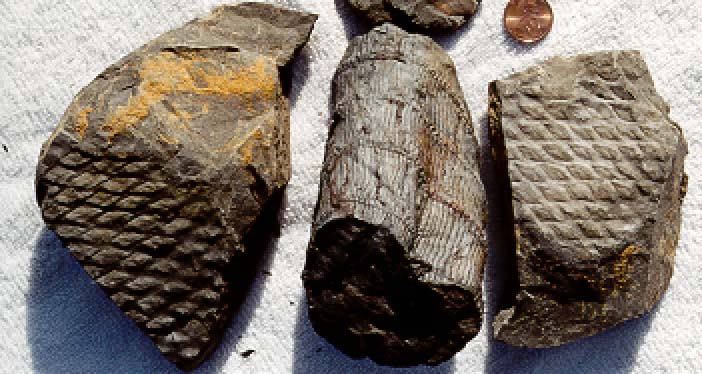 |
| Fig. 7 - Various bark impressions of Lepidophloios and a Calamites medullary cast fossil |
| Other Track Impressions | 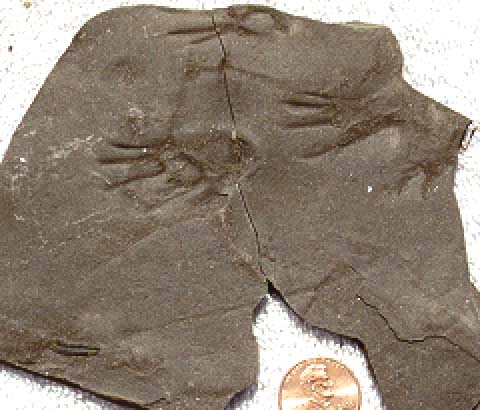 |
| Fig. 8 - A medium sized set of a few tracks, likely to be Cincosaurus jonesii (Aldrich and Jones 1930). |
| The final pictures I show are of a few tracks found on different days but which have not been shown in previous reports. | 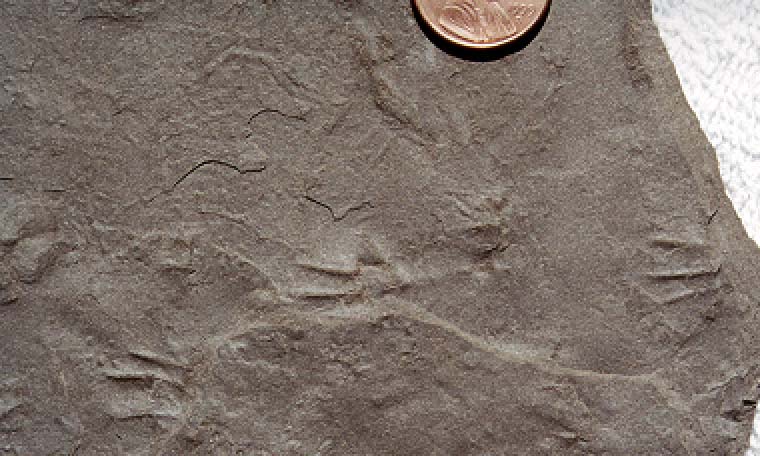 |
| Fig. 9 - A small set of tracks with three clear toes, probably of the genus Cincosaurus. |
 |
| Fig. 10 - Small tracks of unknown creature, from part of a much larger slab with 3 or 4 criss-crossing tracks. Each track is less than a penny in size. |
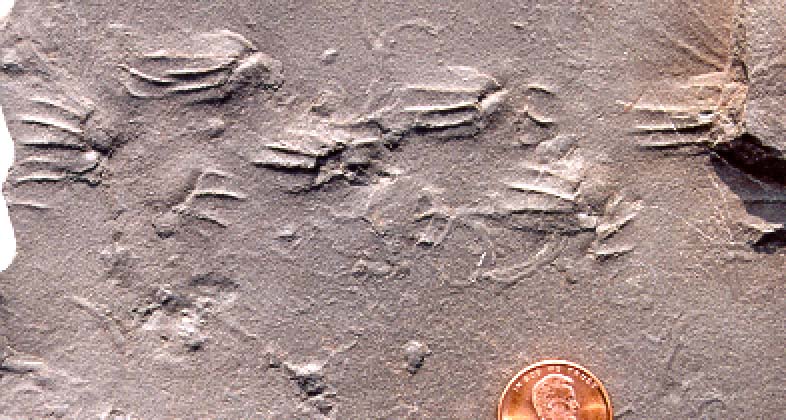 |
| Fig. 11 - This piece shows two different sets of tracks, one larger set going left, and a smaller set going right. The two sets overlap, giving a confusing pattern of overlapping prints. |
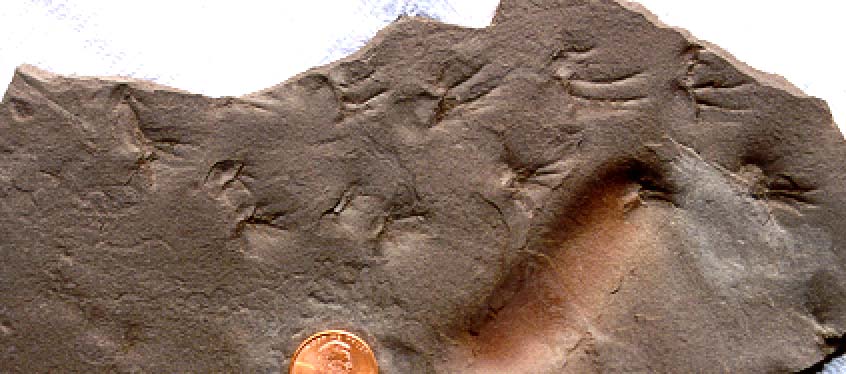 |
| Fig. 12 - This piece includes tracks of probably one of the same two creatures in Figure 11. |
July 1, 2000 - Cretaceous Fossils, Sumter Co, AL
This report (installed on Sept. 27) is late because of the month-long trip to South Africa that I took from mid-July to mid-August. As a result, I can only roughly describe what the BPS did this day. There were three sites in Sumter County that were visited, all well-known and previously visited by the BPS.
| There are numerous Late Cretaceous chalk exposures in Sumter Co. One of these is found in a field near Livingston, and includes numerous shells, shell fragments, and other fossils (see Figures 1 and 2). The site is visited annually by various groups, and is known for the tiny echinoids (Boletechinus mcglamerii) which can be found there. Several were found on this day, one of which is shown in Figure 3. | 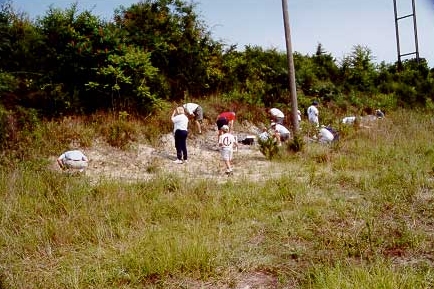 |
| Fig. 1 - BPS members and guests collecting Late Cretaceous marine fossils. |
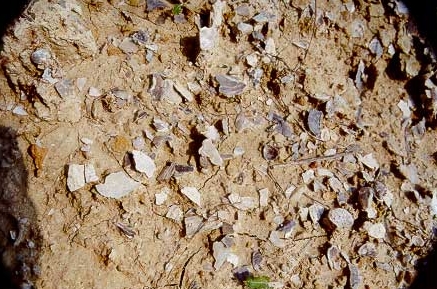 |
| Fig. 2 - Close-up view of a small part of the outcrop, showing numerous shells and shell fragments. The whole area shows a similar distribution of fossils. |
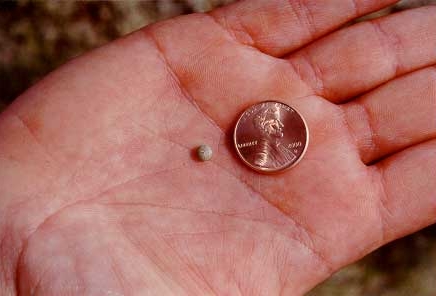 |
| Fig. 3 - One of the small echinoids this site is famous for having. The echinoids are called Boletechinus mcglamerii, and are named for one of Alabama’s state paleontologists, Winnie McGlamery, according to Dave Kopaska-Merkel. |
| One of the highlights of the visit was the apparent fossil "claw" held by Alan Collins in Figure 4. The interpretation as a "claw" is not clearcut , however. Dave Kopaska-Merkel (Geological Survey of Alabama) suspects the piece could also be the hinge of a large oyster. |  |
| Fig. 4 - Possible claw (or, alternatively, the hinge of a large oyster), held by Alan Collins. |
| Figure 5 shows a general mix of the types of fossils found at this site in abundance, including internal molds of bivalved mollusks, steinkerns, small scallops, and oyster shells. Larger oyster shells of the genus Exogyra are also found. I originally thought the internal molds were of brachiopods, but Dave Kopaska-Merkel notes that brachiopods have calcite shells while many mollusks have aragonite shells. We mostly see internal molds of these bivalve mollusks because aragonite is much more susceptible to dissolution. |  |
| Fig. 5 - A sampling of the fossils from the site, including oyster valves, internal molds of bivalve mollusks, steinkerns, and a small scallop shell. |
After spending more than an hour at this site in the intense heat,
the BPS went to a site on the Tombigbee River where fossils around the
K-T boundary are exposed (see Figures 6 and 7). The K-T boundary is the
boundary between the end of the Cretaceous period and the beginning of
the Tertiary period of Earth history. The site is well-studied and the
personal favorite I have heard of Dr. Charles C. Smith of the
Geological Survey of Alabama. Dr. Smith has written articles about the
site and has published a stratigraphic profile showing the connection
between the Late Cretaceous Prairie Bluff Chalk and the overlying
Tertiary Clayton Formation. Once we arrived at the site, Dr. Andy
Rindsberg (also of the GSA) gave the BPS a brief discussion of the
significance of the site and what we could expect to find there. After
spending a month in South Africa where fossil collecting is highly
regulated, I am, in retrospect, surprised that we are allowed to
collect at this site. Still, it was a great pleasure to do this and
extremely educational.
| ||
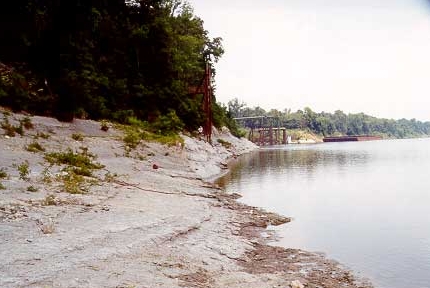 |
| Fig. 7 - View of river facing in opposite direction from Figure 6. |
| ||
 |
| Fig. 9 - Cretaceous fossils from closer to the river, including gastropods, internal molds of bivalve mollusks with holes due to boring sponges, and a fragment of a cephalopod shell. |
 |
| Fig. 10 - Tertiary fossils from the light gray area, just above the K-T boundary in Figure 6. The small gray shells are Ostrea pulaskensis. |
| The third site the BPS had planned to visit was the oyster fields in the Belmont area. I did not attend this part of today’s trip, but I have been there before, and show in Figures 11 and 12 photographs I took two years ago. The site is absolutely remarkable in the large numbers of giant Exogyra and Pycnodonte oyster shells. A variety of shells are found at this site and are summarized in a pamphlet provided by the GSA. | 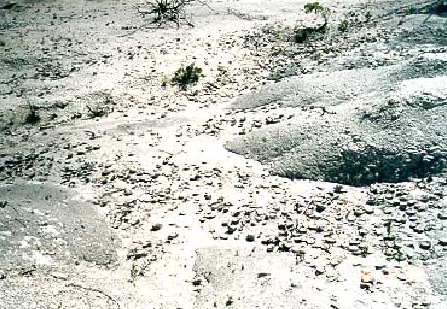 |
| Fig. 11 - A field of Late Cretaceous oyster shells, near Belmont, Alabama. |
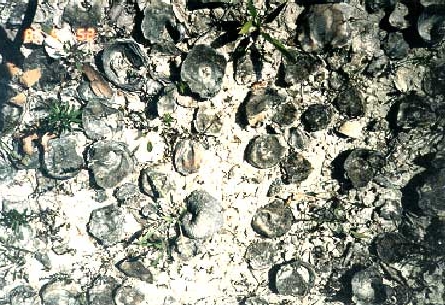 |
| Fig. 12 - A close-up of a typical area in one of the above fields, showing shells mainly of the genera Exogyra and Pycnodonte. |
In summary, this was a very pleasant and interesting field trip for the BPS. Given how much time many of us have spent at the Union Chapel Mine collecting tracks and plant fossils recently, today’s trip was a nice break from the strip mine rock piles. Thanks to Dave Kopaska-Merkel for comments and revisions to this belated report!
August 19, 2000 - The BPS Track Meet

General
On August 19, the Birmingham Paleontological Society (BPS), the Alabama Museum of Natural History, and the Geological Survey of Alabama will hold an all day session in Smith Hall at the University of Alabama to photograph and label Pennsylvanian age trackways collected from the Union Chapel Mine in Walker County, Alabama. The Alabama Museum of Natural History will host the event and provide refreshments and lunch to everyone involved. Persons with tracks/trackways are asked to arrive at Smith Hall around 9:00 am to begin set up for photographing and labeling. The photography, specimen labeling, and data recording will last until around 5 pm Saturday afternoon. From 11:00 to 12 noon, there will be a break for a series of short talks that will address the group on the geology of the Union Chapel Mine and the significance of collecting these Paleozoic trackways.
This "Track Meet" is a unique opportunity to document most of the trackways that have been taken from the Union Chapel Mine, collected mainly during the year 2000. The purpose of this session is:
- To compile a photographic record of the Union Chapel Mine trackways,
- To document the owners of tracks/trackways in the event a researcher needs to study these specimens in the future. A photographic catalogue is planned for the publication of this data and will be titled BPS Monograph # 1.
- To permanently label all specimens collected at the Union Chapel Mine. These labels will be affixed to the back side of the specimen, not interfering with the track/trackway.
It is requested that people bring only tracks/trackways from the Union Chapel Mine for the August 19 Track Meet. Also, plant fossils from the Union Chapel Mine should not be brought to be photographed at this session. There will a separate photo session for plant fossils collected at the Union Chapel Mine. Likewise, trackways from other Alabama locations collected by the BPS would also be the subject of a future photo session.
It is also requested that each specimen brought to the Track Meet for photography be thoroughly cleaned before unloading the specimen at the registration table. This cleaning should be done by the specimen(s) owner before arriving at Smith Hall. If calcite scale is present, a bit of vinegar poured onto the shale for 10-15 seconds may remove some of it, if the vinegar is gently worked over the surface with a soft toothbrush. Be extremely gentle with the specimen because vigorous scrubbing the specimen with water/vinegar will destroy the track/trackway.
Agenda
9 am to 11:00 am: Registration, triage, preparation of permanent labels, photography
11:00 am to 12:00 noon: Speakers
- Ed Hooks, Alabama Museum of Natural History:
- Welcome
- The Importance of the Amateur Paleontologist
- BPS Display Case
- Kathy Twieg:
- Address from the President to the Birmingham Paleontological Society
- BPS Monograph Series
- Andrew K. Rindsberg, Geological Survey of Alabama:
- Donation of Pennsylvanian Trackways to Geological Survey of Alabama for their Educational Outreach Program and Permanent Collection; Ethics in Collecting, Trading, and Selling Fossils
- Jack Pashin, Geological Survey of Alabama:
- Geology of the Pottsville Formation and its relation the Union Chapel Mine
12:00 noon to 1:00 p.m.: Lunch (provided by BPS)
1:00 p.m. to 5:00 p.m.: Photography and preparation of permanent labels
Registration, Triage, and BPS Data Base
Upon arriving at Smith Hall at the beginning of the Track Meet Saturday morning, each person will be greeted at the registration desk set up outside the front of Smith Hall. Labeling and filling out data base forms will also be done outside the front of Smith Hall. In the event of inclement weather, registration, triage, data base work, and labeling will all take place inside Smith Hall, on the 1st floor. Volunteers will be available to help specimen owners unload and carry specimens to Smith Hall from the parking area. If a person has specimens for the photo shoot, the person should be registered by a BPS host at the front table. Upon signing in, the person will present his/her specimens to be photographed. Andy Rindsberg, Geological Survey of Alabama, will evaluate each sample for photography priority. Those track/trackway specimens of the highest quality will be given a red dot and receive first priority for the photo shoot. The second quality tracks/trackways will be given a blue dot and will be photographed later if time allows in the afternoon. Specimens of minor value to this effort will be given a green dot, and if the owner prefers, may be donated to the Geological Survey of Alabama for their educational outreach program. A depot for such specimens will be marked. Conversely, there will be trackways that the Alabama Museum of Natural History or Geological Survey of Alabama consider of high value to scientific research. If this is the case, Andy will place a yellow dot on the specimen and request donation of the specimen to the Museum or Survey for their permanent collections, again, at the discretion of the owner. In addition, Ed Hooks (Alabama Museum of Natural History) will request that several of the most important trackways be displayed in the BPS display case in Smith Hall for a 4-6 month duration, after which time the specimens will be returned to their owners. These specimens will also receive a yellow dot.
Once Andy Rindsberg has graded track/trackway specimens with red, blue, or green dots, a Track Meet volunteer will give the owner of the specimen(s) to be photographed a series of unique numbers, one number for each rock specimen. Next, the volunteer will give the owner a data sheet on which the owner shall list the necessary data for each track/trackway. The information on this data sheet will be:
- Collector’s name
- Taxon (ichnogenus and ichnospecies, if known)
- Date collected (month/year)
- Location collected (Union Chapel Mine)
- County location (Walker County, Alabama)
- Geologic formation (Pottsville Formation)
- Geologic Age(Pennsylvanian)
- Unique sample number (e.g. UCM –1)
All that the specimen owner needs to write on the data sheet(s) are: his/her name, specimen name, and date collected. These data sheets will be pre-printed with the standard site information (categories d-h).
Labeling
After the data sheet has been filled out, the owner with the assistance of a Track Meet volunter, will move the track/trackway specimens to a table where permanent labels are being attached to the rock. The rock will be turned over and a permanent label will be affixed to the back side of the rock by a Track Meet volunteer. This label will be a postage stamp-sized white label, and another volunteer will take the data sheet and print the necessary information on the permanent label on the rock with a black indelible pen. The permanent label on the rock should read:
- Unique sample number
- Taxon (ichnogenus and ichnospecies, if known)
- Date collected
- Location collected
- County location
Finally, the volunteer will give the owner a temporary label to be attached to the specimen with two way cellophane tape. All that is written on the temporary label is the specimen’s unique sample number within the range of UNC-001 to UNC-500. This temporary label will be attached to the specimen for the photograph; after which it may be discarded. However, it is critical that this paper label stay attached to the rock specimen until after the track/trackway is photographed.
Transport of Specimens to the 2nd Floor for Photography and Data Input
Another Track Meet volunteer will assist the owner in transporting the specimens to the 2nd floor of Smith Hall for photographing. There are two large classrooms on the 2nd floor of Smith Hall where the specimens, in their boxes, must be staged prior to the photo shoot. In one classroom, a camera table and artificial lighting have been arranged for the photo session. Once the specimens have been photographed, the owner will place the specimens back in the staging area and attach a "post-it" to the specimen box indicating that photographs have been taken.
In another classroom where the specimens will also be also staged, Prescott Atkinson will be using a computer to input information about the samples into the BPS database.
The owner will take the data sheet to Prescott to enter specimen data in the database. Track Meet volunteers will assist in transporting the rock specimens downstairs and back to the owner’s vehicles, after the photo session and data input are finished.
There will probably be many tracks that will not brought to the August 19 "track meet". The labeling session at the "track meet" should demonstrate to everyone the importance of labeling the Union Chapel Mine specimens and how everyone should label their additional specimens not brought to the August 19 Track Meet.
Photo Session
Ricky Yanaura, Staff Photographer for the University of Alabama, has provided technical assistance to the Alabama Museum of Natural History and the BPS on how to best photograph the track/trackway specimens. He recommends using 35 mm print film, in a camera mounted on a tripod in a large classroom on the second floor of Smith Hall. A camera table will be positioned in one corner of the classroom and serve as a stationary base to place the rock specimens for photography. The camera can be raised or lowered depending on the size of the specimen. Ricky will supply all artificial lighting and a series of lighting reflectors to capture the best possible lighting contrast for the rock specimen. The Alabama Museum of Natural History will furnish all the film and pay for the film developing. Ron Buta will be the photographer for the track meet and will use a Nikon 35 mm camera with a macro lens. Ron will have a volunteer to assist him throughout the entire photo session. Ron and Ricky will get together a few days in advance to practice a dry run for the lighting and camera table set up on the second floor of Smith Hall.
Each specimen may be lightly sprayed with water before the photo shoot to enhance rock contrast in order to see the track/trackway more clearly. A metric bar scale will be placed next to each specimen for each photograph. The temporary label shall be arranged properly on the rock specimen for the photo shoot.
Others are welcome to also photograph track/trackway specimens with their own cameras/digital cameras while the specimens are being photographed for the BPS Monograph by Ron Buta.
Security
Security will be provided by volunteers to ensure that the general public does not enter the museum while the museum is closed. In addition, the BPS will provide volunteers to ensure the security of all track/trackway specimens during the August 19 Track Meet.
Media
The Alabama Museum of Natural History has invited the local media to cover the August 19 Track Meet.
Volunteers
Currently, 13 persons have volunteered to work all day at the Track Meet. Twelve volunteers are needed at a very minimum to operate this event. Anyone who would like to help with the Track Meet is strongly encouraged to volunteer. The BPS and the museum would really appreciate it.
Housekeeping
Two Track Meet volunteers will assist to ensure that the building and grounds of Smith Hall are properly policed for debris, trash, and disposable lunch and refreshment materials. This will be most important if it rains and registration, triage, and labeling have be done inside Smith Hall. These volunteers will also assist with serving lunch.
Lunch, Refreshments
Coffee, drinks, and pastries will be served during the day. Lunch will consist of chicken/sausage gumbo, rice, French bread, and a touch of filé. There will be no charge for lunch or refreshments.
November 26, 2000 - Cretaceous Fossils - Macon Co, AL
The publication of Jim Lacefield's new book, "Lost Worlds in Alabama Rocks: A Guide to the State's Ancient Life and Landscapes" led the BPS to this new site for a field trip this month. In previous BPS field trip reports, I have noted the abundant plant fossils that we have found at various surface mines in Walker and Jefferson Counties. These sites include plants from the Coal Age in Alabama, dating back to about 310 million years. It was interesting, therefore, to learn from Jim's book that it was possible to find plant fossils in Alabama from a much later period, the Cretaceous period. Jim agreed to lead the BPS to a site where he had found fossil leaves, dating back to about 85-90 million years (Late Cretaceous). The site is in the Tuscaloosa Group of sediments (the earliest part of the Cretaceous found at the surface in Alabama). About 20 BPS members and guests attended the field trip, which took place on a cool but pleasant and mostly sunny day.
| The site was certainly different from the surface mines. At the surface mines, fossils are usually impressions, molds, and casts in shale, or solidified mudstone. Often, these fossils include the carbonized remains of the original plant material. At the Cretaceous site, however, the leaf fossils were in a light gray mud just a few inches below the ground level, concentrated in a fairly small area near a roadcut. The types of leaves found were almost exclusively angiosperms bearing a strong resemblance to modern varieties. | 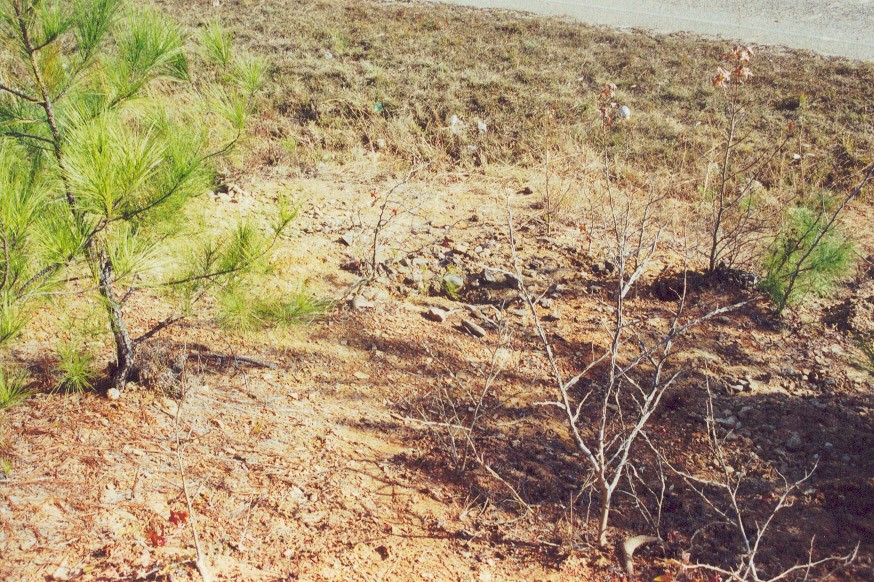 |
| Figure 1: Viewing of digging site towards road. The hole is where nice brown Cretaceous leaf fossils were found. |
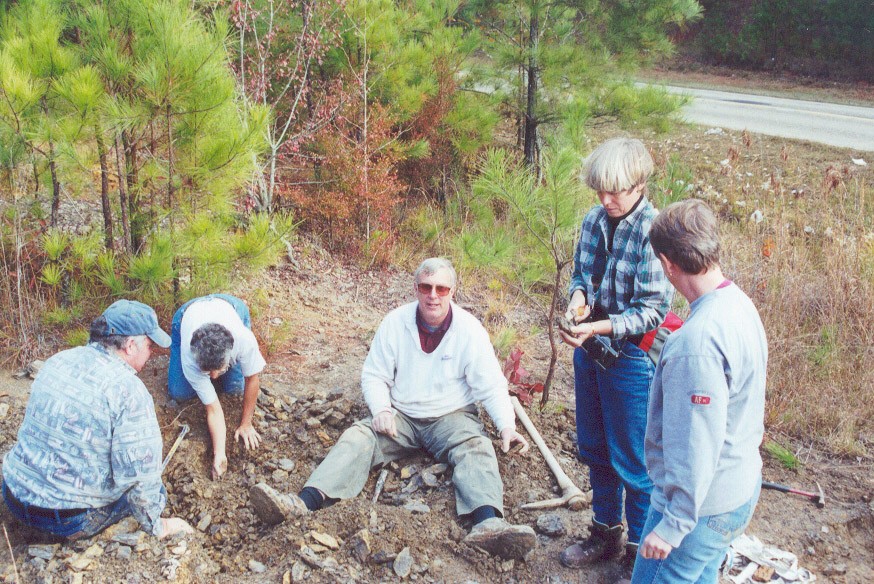 |
| Figure 2: Group at area where the blacker leaf fossils were found. From left to right: Dave Shepherd, Kathy Twieg, Jim Lacefield, Vicki Lais, and Marcella. |
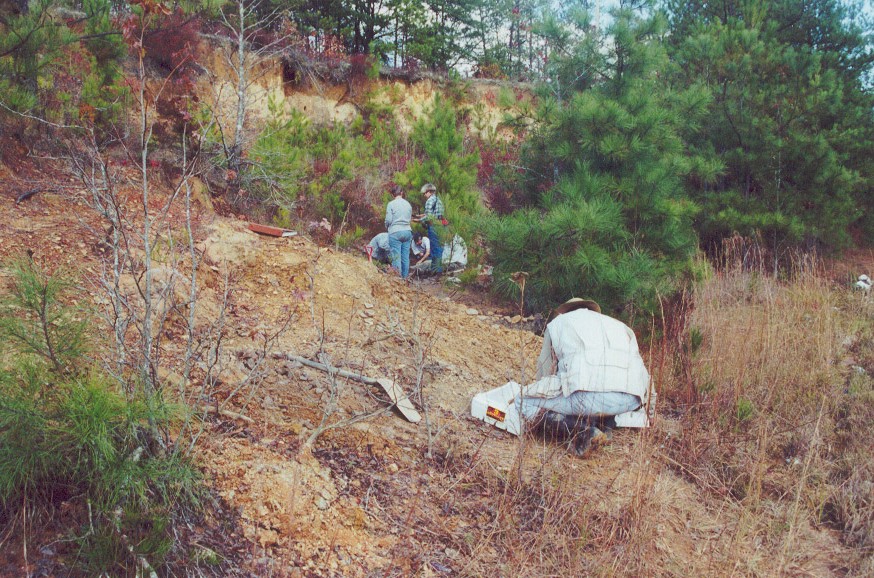 |
| Figure 3: In the foreground, Ashley Allen is collecting the darker brown leaves. In the background is the group in Figure 2 |
| According to Jim, the angiosperm species included Salix (or willow),
which represented greater than 90% of the specimens, and two members of
the Lauraceae (or laurel family). The Salix leaves tended to be long
and thin with a single dividing vein and very little additional detail.
Often, stem attachment points were found, but it was rare to get a
complete leaf on one slice of mud. |  |
| Figure 4: Examples of Salix (willow) leaves showing the distinctive brown color characteristic of one part of the site. |
| Several examples are shown in the photographs which accompany this report. Some are also shown on page 81 of Jim's book. The Lauraceae leaves tended to be Cinnamomum, a possible Sassafrass. These had a distinctive vein structure which can be seen on page 82 of Jim's book. Jim also found what he thinks are probable flowers in different stages of decomposition, representing possibly 3 different species. The "flowers" he found included a willow twig with catkin attachments (no catkins were found) and two small but identical unidentified (possibly laurel) flowers with crumpled petals. |  |
| Figure 5: One half of a divided mud plane showing beautiful brown Salix leaves. |
| An interesting aspect of the site was how the color of the leaf fossils
changed with position. At the left side of the site, the color was a
very light brown, while near the middle it was a darker shade of brown.
About 20 feet from these areas, the fossils are completely black and
often incomplete. Presumably, the color is not the same as the original
color, although modern angiosperm leaves look remarkably similar to the
dark brown fossils after they achieve their fall color. The best quality fossils were these dark brown ones. | 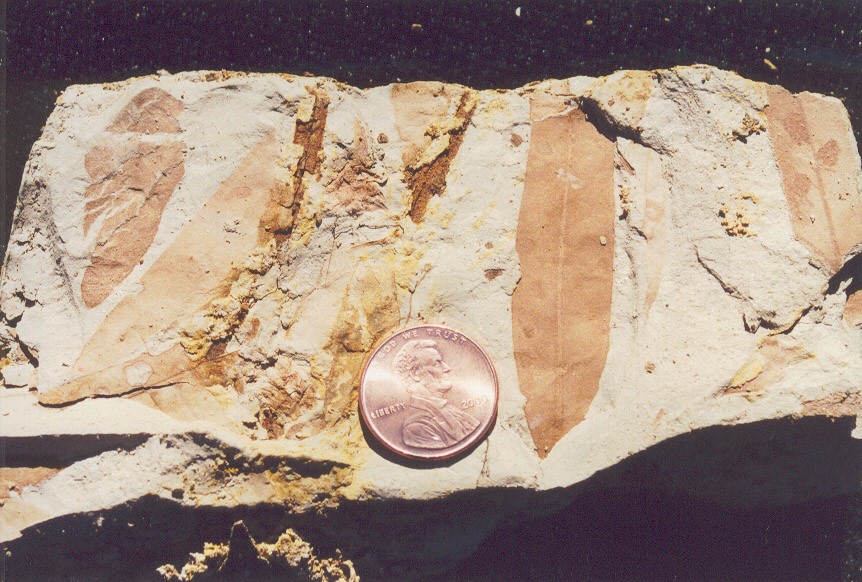 |
| Figure 6: The other half of Figure 5, showing virtually identical colors and structure, with no sense of direct or inverse impressions being given. |
 |
| Figure 7: Beautiful thin Salix leaves. |
The area where these were located was found by Bruce Relihan, who generously shared the find with others. The illustrated specimens are mainly from Bruce's area, and some are very beautiful. Most remarkable is how different these plants are from the coal mine plants. At the coal mine sites, we often find scale tree bark impressions, ferns, and pith casts of giant horsetails. At the Cretaceous site, we mainly found rather normal-looking leaves - no bark impressions and no ferns at all. By this time, many of the Coal Age plants were extinct and had been replaced with more modern-looking species.
| The blacker leaf fossils were more like coal age fossils. These looked
like the carbonized remains of the original plants, while the brown
ones seemed to have iron deposits replacing the original material. The
black fossils seemed more fragmentary, and also more concentrated in
random assortments than the brown leaves. In the area where these
blacker leaves were found, we also came across what appeared to be
lignitized wood. Some of this was layered as in a coal seam. | 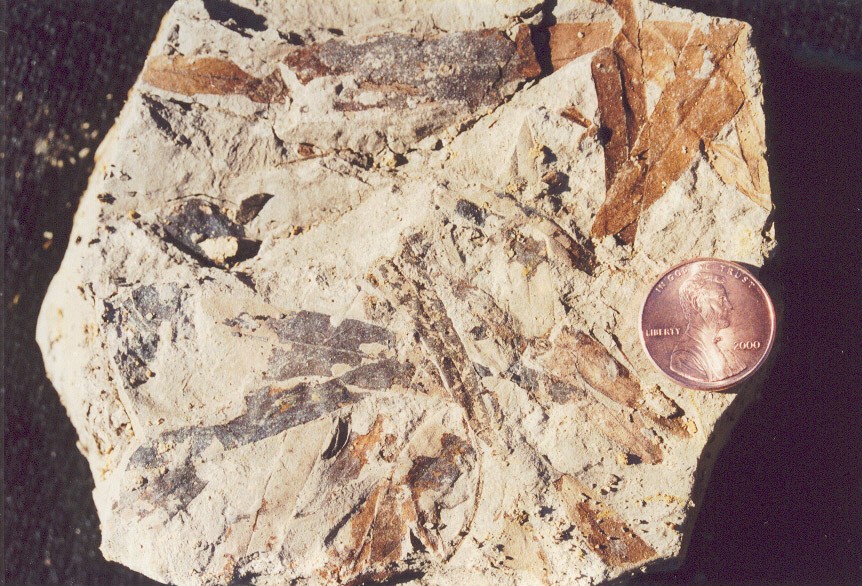 |
| Figure 8: Small mud slab showing a mix of black and brown Salix leaves. |
The fact that the fossils were found in clay, and not rock, is certainly interesting. It is difficult to understand this, and it suggests that the area where these leaves lie has not changed much during the past 85-90 million years. If it had been under water, there would presumably have been more deposition over the area and conceivably the clay might have solidified under pressure. Jim thinks the site possibly represents an upland bog in the process of being filled in with fine-particled sediment.
Note that it is also possible to find Coal Age Alabama fossils in clay, as Jim notes on page 65 of his book. The distinctive color of the clay where the fossils were found helped to tell us where to look. Just across the street from the site, we found mostly a reddish clay with a presumably high iron content. However, this clay included no fossils. The gray clay was more homogeneous than this reddish clay, and provided high quality fossils.
Cleaning clay fossils is another issue. With shale, you can simply wash off dirt or scrub off mud with a brush. With clay fossils, washing has the risk of damaging the fossils. The procedure I used to clean the specimens I brought home involved using an air blower usually used to blow dust off of photographic negatives, followed by gentle brushing with a small paintbrush. Even after this, the long-term storage of such fossils may require something extra. When extracted from the ground, the mud was a little wet, but after a while it becomes dry and more brittle. The best time to extract these kinds of fossils is when they are a little wet, because then the mud breaks apart into planes a lot like shale. After drying this might not work. Jim recommended that after the specimens are completely dry, it might be worth placing them into a 50% Elmer's glue for long-term preservation. Jim notes that the clay to be preserved in the Elmer's solution needs to be very close to dry when the solution is applied through soaking for 5 - 10 minutes, otherwise the surface may appear cloudy. He recommends that excess solution be then gently dabbed off the leaves themselves, and further that the specimens should be dried thoroughly before much handling.
In summary, this was a very interesting field trip for the BPS. It was interesting to venture into new territory in Alabama's past, and in particular to focus on the plant life, rather the marine life, of Alabama Cretaceous history. Thanks to Jim for his excellent book and for taking us to the site! I also thank Jim for comments on this report that improved its accuracy.
--Edited by Vicki Lais
December 16, 2000 - Pennsylvanian Fossils, Walker Co, AL
University of Alabama
Tuscaloosa, Alabama
The Union Chapel Mine is now known to be one of the best Lower Pennsylvanian track sites in North America. During December, the mine was in the process of reclamation, and the BPS returned one more time as a group to search for trackways among turned-over spoil piles in one of the most productive areas of the site. About 15 BPS members and several newcomers attended the field trip on a pleasant mid-December day.
|
|||
|
|||
|
|||
| On the
reclaimed
areas and in the overturned area, one can still find nice plant fossils
at this site. Figure 4 shows an especially nice set of ferns from a
split rock. Most interesting is how strong the stem of these ferns
is.
|
|||
Figure
5 shows brown
ferns of the genus Neuropteris, which was common at this mine.
|
|||
Figure 6 shows a
single large seed impression of a seed fern. This is how such seeds are
often found.
|
|||
However, I found
another rock in the overturned area having more than a dozen seed
impressions. Several of these are shown in Figure 7.
|
|||
The ferns they are
associated with are shown in Figure 8. Jim Lacefield discusses the
seeds of seed ferns on page 66 of his new book, "Lost Worlds in Alabama
Rocks", and gives a wonderful general discussion of the Coal Age in
Alabama and what happened to the seed ferns.
|
|||
The reclamation of the Union Chapel Mine caps
off a spectacular
year of
discovery for the BPS, and the Union Chapel experience marks the
beginning of a
remarkable cooperation between BPS amateur rock collectors and two
professional
organizations, the Geological Survey of Alabama and the Alabama Museum
of
Natural History on this new project. The more than 500 track
specimens
salvaged by BPS members and guests since January 23, 2000 are currently
being
researched by professional paleontologists. Hundreds of high quality
plant
fossils were also salvaged and will eventually be studied. We will no
doubt be
talking about the experience for years to come.
1999
February 21, 1999 - Sumter & Marengo Co, AL
Richard Thurn of the University of West Alabama led the group of 18 members on an excellent day-long field trip to several sites in Sumter and Marengo counties. He started the day inside with a showing and explanation of the various fossils in the display cases at the science building on the campus of the University. The next two stops were at roadside chalk gully formations easily accessible and illustrative of the variety of fossils in the area representing Late Cretaceous snails and oysters.
The third stop was an optional one which everyone took advantage of: a trip to Moscow Landing on the Black Warrior/Tombigbee River, site of an outcropping of the K-T boundary. The chalk on the river bank was very slippery due to the recent rains, but, with the help of Richard's "always take it along on field trips" handy-dandy rope, the attendees was able to get to descend to the river's edge and to observe the K-T boundary. They also spent time collecting fossils in the Late Cretaceous and a few fossils from the Tertiary.
The last stop also was an optional one which 8 people took advantage of: a stop at a road cut on Highway 28 in Marengo County near Jefferson, Alabama. At this site there is an outcropping of the Tertiary and farther down the road there is an outcropping of the Late Cretaceous. The interesting feature of this site is that in between the two areas, there is a good outcropping of the K-T boundary. Additional collecting was done in the Cretaceous layers with everyone finding a good variety and quantity of representative fossils.
March 27, 1999 - Jefferson Co, AL
Department of Physics and Astronomy
University of Alabama
Tuscaloosa, Alabama
The field trip on March 27, 1999 was the second organized BPS trip to a construction site near Warrior. The trip was attended by about 25 people, mainly from Birmingham, Huntsville, Tuscaloosa, the Florence area, and the University of North Alabama. Attendees included BPS members, guests, children, professors, and students, and the day was sunny, clear, and warm.
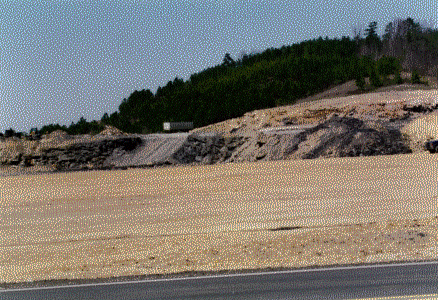 |
|
 | Fossil hunters at the main rock pile where Lepidodendron and Sigillaria specimens were abundant. |
|---|
The site was first identified as being a source of Carboniferous-period plant fossils by BPS member Gerry Badger, and the first BPS field trip to the site took place on November 15, 1997. Although various BPS members and probably others have visited the site at various times during the past year, the site has changed so much that on March 27, the site was better than it had ever been before as far as numbers and quality of plant fossils are concerned.
The most abundant plant fossils found during our most recent visit were bark impressions of the giant arborescent lycopods Lepidodendron and Sigillaria. These were mainly found in rock piles around the area of a northeast wall of rock. Large slabs showed the familiar Lepidodendron leaf scars, which look like fish scales. In many cases the scars were clear and well-defined, making the specimens extremely beautiful examples. On close inspection, the leaf scars show characteristic bundle and parichnos scars representing leaf attachment points, and many of the pieces are probably of the same species. However, after checking various books I have not yet identified the exact species at Warrior. It is clear also that more than one species of Lepidodendron is present at this site. It is also interesting that specimens of Lepidodendron at Warrior came in both direct and inverse impressions. In direct impressions, the leaf scars are raised, and are more like molds of the original object. In most pieces, however, the leaf scars are simply inverse impressions of the original raised scars, and therefore appear as depressions in the fossil.
| ||
Also abundant at this site, but not necessarily found in the rock piles, were several types of seed ferns characteristic of the period. These were found at a specific level of the east rock wall less than a foot above the ground level and about 20 feet from the rock piles. The ferns found included beautiful examples of Eusphenopteris, Mariopteris, Neuropteris, and Alethopteris form genera, but I have not yet determined exact species. Because many of these were found in situ, they were still beautifully preserved with dark carbonaceous remains of the original plant material and fine details of vein systems in individual pinnules. Several attendees spent much of their time searching for ferns at the rock wall, and many were found. According to Dave Kopaska-Merkel, one young person, whose first name was Jonathan, split a large slab and found some very nice large ferns inside. Although I am not aware of any examples found during this trip, the site also is known for having Lyginopteris ferns which are distinctly different from the others. Several different species of Sphenopteris ferns have also been found in the past.
 | View of rock wall on east side of site where ferns were found in situ. |
|---|
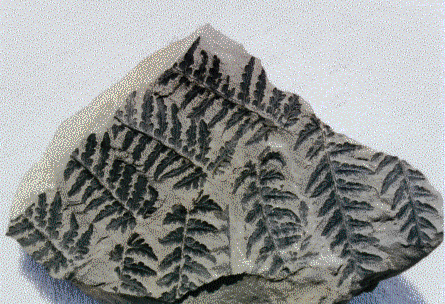 | Typical example of a set of ferns extracted from the above part of the wall. |
|---|
Fossils of the well-known horsetail, Calamites, have also been found in abundance at this site. Several attendees (including myself) found three-dimensional Calamites stems further down the same rock wall where the ferns were found. Dave Kopaska-Merkel found a nearly foot-long Calamites specimen embedded in a larger rock. Also found were excellent specimens of the foliage of Calamites, including a fine small piece of (probable) Asterophyllites equisetiformis shown to me by Gerry Badger. At least three different species of Asterophyllites have been found at this site.
was at great risk since the specimen was under a large rock overhang! The job was not easy and afterward I saw the specimen in pieces in the back of Gerry's car, but he still was upbeat about it.Later, I found another stump fossil in a rock wall on the north side of the main site level. It, too, was the only fossil noticed in that particular area, although several of us thought we saw the end of a highly flattened stump still in the wall but much higher up in the same area. The stump I found is about a foot long and weighs 77 pounds. Unlike the others found, it is covered with hundreds of small scars and impressions, indicating a fairly definite identification as an arborescent lycopod cast. These "stumps" and logs represent cases where a hollow cavity left by the stem was filled with mud which later solidified and preserved the general shape as well as any inner details. They are not "petrified" in the usual sense.
In summary, this field trip was a very enjoyable experience for all who attended. On a wonderful day, we all experienced a part of Alabama's past and took home the beautiful relics of a bygone era of Alabama natural history. | ||||||
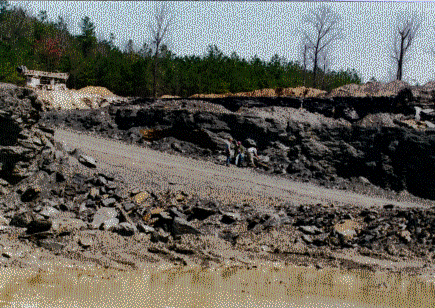 | Group working on Stigmaria fossil near road to upper level of site. |
|---|
April 24, 1999 - Carboniferous Fossils - Jefferson Co, AL
The Shoal Creek Mine is a modern, high-tech coal mine, having begun operation only 5 years ago. Following an introductory safety presentation (mandatory for visitors to the underground workings of the mine), and a fitting of personal safety paraphernalia (hardhat with light, steel-toed rubber boots, and an emergency "self-rescue unit" to remove carbon monoxide from the air in case of fire), we descended about 1900 feet below the surface in a speedy elevator. Once there, we were ushered into several Humvees, the standard mode of motorized travel through the mine's vast network of tunnels. We then drove several miles to see one of the areas being actively mined.
In the Shoal creek mine, coal occurs in two narrow nearly horizontal seams, named the Mary Lee and Blue Creek seams. The rock just above and below the seams is a sandy shale bearing plant fossils, as we discovered at one stop in the underground tour. Two types of mining techniques are used in the mine, continuous mining and longwall mining. Continuous mining machines tunnel directly into the rock, and have been used to form a network of tunnels. In the longwall operation we witnessed, a line of automated shields support the mine ceiling just next to a long (typically a thousand feet) rock face, while a drum shearing machine moves slowly along the length of the wall, continuously gouging about 39" of rockface off and dumping it onto a continuously running chain conveyor belt. The belt delivers the mixture of rock and coal to a continuous rock crusher, and the chain conveyor then connects with a series of conveyors, the last of which carries the coal and rock to the surface along an exit tunnel sloping up to the surface at a 17 degree angle. At the surface, a series of operations separates rock from coal, and sorts coal into sizes appropriate for different uses. The principal customer for the coal from the Shoal Creek mine is Alabama Power Co.
Many of us were quite impressed with the efficiency of the operation and the thorough measures in place to ensure the safety and comfort of the miners. The mine visit was an outstanding educational experience. In fact, it was also a lot of fun. Our thanks to the Drummond Company, the courteous and helpful mine management and miners, and to Bill Newman, who made the arrangements for the tour on behalf of BPS.
May 29, 1999 - Carboniferous Fossils - Jefferson Co, AL
Department of Physics and Astronomy
University of Alabama
Tuscaloosa, Alabama
The field trip on May 29, 1999, was to an abandoned strip mine in Kimberly that is now being re-excavated by the owner of the Warrior site which was described in the report of the March 27, 1999, BPS field trip. This is a new site for the BPS and we were most likely the first people to seriously look for fossils in the area, at least since the mine was active.
Although the postcard for the trip stated that we would be visiting the same Warrior site as on March 27, it was understood at the last BPS meeting that we would visit the new site and check it out. We decided to visit the new site first and left it as an option for attendees to visit the site on their own, since that site is much easier to find. About 15 people, including BPS members and guests, attended today's field trip.
--Edited by Vicki Lais
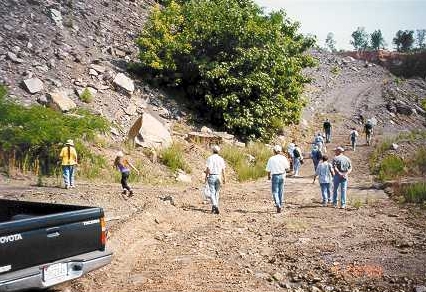 The site turned out to be a particularly good one for finding a variety
of Carboniferous period plant fossils. The area was so vast that even
with 15 people we really did not explore it all. Many rock piles
surround an open area where we could park our vehicles. Fossils of
Calamites, including 3D stem casts, stem impressions, foliage, and
cones were abundant in some areas. The site turned out to be a particularly good one for finding a variety
of Carboniferous period plant fossils. The area was so vast that even
with 15 people we really did not explore it all. Many rock piles
surround an open area where we could park our vehicles. Fossils of
Calamites, including 3D stem casts, stem impressions, foliage, and
cones were abundant in some areas.Ferns seemed less abundant, but good specimens were found nonetheless. Finely detailed fossils of the top foliage of arborescent lycopods were found in abundance. Bark impressions of Lepidodendron and Sigillaria were also found. The main difference between this site and the Warrior site is that the fossils at the latter site are concentrated in a small area that is easy to explore. At the Kimberly site, the fossils were spread out over a much larger area and finding them required a great deal of tenacious searching. Also, since you could not necessarily drive your vehicle up any of the steep hills, carrying a large fossil to your car was challenging to say the least. |
 There were numerous highlights of this trip. One attendee showed me a
rare (so far as I know) cast fossil of a small part of a stem of
Cordaites, a gymnospermous tree with no modern relatives. The stem of
this tree consists of a series of horizontal ridges and is easily
distinguished from Calamites, but I had never seen one this nice
before. Some very nice pieces of Calamites itself were found. The
inimitable Ken Hoyle showed several of us two spectacular Calamites
casts he found, each about 6 inches long and 4-5 inches in diameter.
The two pieces were obviously part of the same plant, but he could not
find any of the missing parts. There were numerous highlights of this trip. One attendee showed me a
rare (so far as I know) cast fossil of a small part of a stem of
Cordaites, a gymnospermous tree with no modern relatives. The stem of
this tree consists of a series of horizontal ridges and is easily
distinguished from Calamites, but I had never seen one this nice
before. Some very nice pieces of Calamites itself were found. The
inimitable Ken Hoyle showed several of us two spectacular Calamites
casts he found, each about 6 inches long and 4-5 inches in diameter.
The two pieces were obviously part of the same plant, but he could not
find any of the missing parts. | ||
Steve, Dena, and Molly Hand were
also very successful in finding good 3D casts of Calamites, as well as
a nice piece of Asterophyllites equisetiformis, the characteristic
foilage of the branches of Calamites. Ken Wills, who previously spoke
to the BPS last year, found a nice piece with many Calamostachys
impressions, representing the cones of Calamites. Christina and Larry
Hensley found a big rock with a stunning impression of the bark of a
Lepidendron arborescent lycopod. It was beautiful but too big for
anyone to carry. 3D casts of the rhizophore of Stigmaria ficoides, the
root system of arborescent lycopods, were also found by several
attendees, including myself. The largest, 15 inches long, was found by
Bruce Relihan.
|
In summary, this was quite an interesting field trip. When I first "scouted" out this site in April, I was not sure we would find much since casual searching during a period of one hour did not reveal many fossils. The intensive searching by attendees on this trip was much more revealing about the site, and showed it to really be nearly as good as the Warrior site. It will be worthy of a second visit in the future. |
July 24, 1999 - Pennsylvanian Fossils - Walker Co, AL
Department of Physics and Astronomy
University of Alabama
Tuscaloosa, Alabama
This field trip was a very special one for the BPS. We visited a surface coal mine in Walker County. About 20 BPS members and guests attended the trip, which occurred on one of the hottest and most humid days of the year thus far.
This is one of the largest surface coal mining operations in the state. The area is part of the major Pottsville Formation, and is also known as the Warrior Basin. The BPS was hosted by Mr. Hendon, a mine engineer, who also brought his son along. Mr. Hendon first gave us a basic description of the mine, its history, its extent, and the geology of the area. He then took us on a tour of the mine, allowing us to park near a monster machine known as a "dragline". To access the coal seams, overlying soil and hard rock has to be removed, which is the principal task of the dragline. Usually there are 100-200 feet of solid rock to be removed, but on Saturday the dragline was mostly removing topsoil.
--Edited by Vicki Lais
In summary, this was a really great field trip for the BPS. If it had not been so hot, it might have been even better!
|
August 15,1999 - Covington and Escambia Co, AL
Edited by Vicki Lais
The field trip had two parts. First, we visited a well-known river site in Covington County where shark and ray teeth are present in great abundance, in the lower Tallahatta Formation. Then, we visited a small museum owned by a private collector near Andalusia, in Escambia County. The trip was attended by 20 BPS members and guests on a hot, but not so humid, mostly clear day.
 According to Dr. David C. Kopaska-Merkel of the Geological Survey of Alabama, the lower Tallahatta Formation is early Eocene, or about 50 million years old. He says that the formation is slightly younger than the famous Bashi Marl shell bed, and older than the even more famous Gosport Sand shell bed.
According to Dr. David C. Kopaska-Merkel of the Geological Survey of Alabama, the lower Tallahatta Formation is early Eocene, or about 50 million years old. He says that the formation is slightly younger than the famous Bashi Marl shell bed, and older than the even more famous Gosport Sand shell bed.
The site is a well-known collectors area that was visited by the BPS previously in August 1998. The site has mostly shark and ray teeth preserved in a gray sand on the bank of the Conecuh river. The area has been visited so much that large holes pocked the bank where people had previously searched. Apparently, there is some commercial interest in the area, with people digging for large teeth for jewelry to sell, and leaving the smaller items in "spoil piles" of mud. Many of the attendees searched these piles with some success.
 The most abundant fossils seemed to be teeth of sharks, with perhaps up to 11 species represented according to one collector, who told me that he visited the area about 3 times a month.
The most abundant fossils seemed to be teeth of sharks, with perhaps up to 11 species represented according to one collector, who told me that he visited the area about 3 times a month.
Dave Kopaska-Merkel told me that he found teeth of tiger sharks and at least 3 other kinds at this site, and saw a 5th kind. Most of the teeth I found seemed to be of the upper jaw variety, where there is a single broad cusp, at least two smaller accessory cusps, and a broad, symmetric root with a dip in the middle. These upper teeth are distinct from those of the lower jaw, which have a longer, narrower primary cusp, clear narrow ridges along this cusp, and a somewhat U-shaped root. No significant accessory cusps are usually seen on these teeth. I noticed that while most of these lower jaw teeth were black, some were actually light brown in color.
These are probably weathered examples, and often were missing part of the U-shaped root.
Next to the shark teeth, the most abundant teeth were those of rays. Unlike the shark teeth, which are also abundant at late Cretaceous sites in Greene County, the ray teeth seem to favor the Eocene site. On asking Dave Kopaska-Merkel about the difference, he offered the following speculation:
"I think most rays are bottom dwellers in shallow water, so if the Greene County site represents a relatively deep water deposit, then there might be relatively few ray teeth there. Also, I think ray teeth are slightly more fragile than shark teeth."
I am not sure what type of rays had the teeth we all found. Most of the ray teeth are elongated rectangles with narrow parallel ridges cut perpendicular to the long axis. At least one ray tooth that I found was notably curved.
 Certainly other types of fossils are represented among the hundreds of items people have been finding at this site. One attendee showed me what I think was a small part of a turtle shell, and several likely fish vertebrae were found, one with fragile stems still connected. Bone fragments, sawfish spines, and shark vertebrae were also found, the latter being distinctly circular and somewhat concave-shaped. Some fragile coral specimens were found that came from points higher up on the embankment, which exhibited abundant well-preserved burrows, according to Dave Kopaska-Merkel.
Certainly other types of fossils are represented among the hundreds of items people have been finding at this site. One attendee showed me what I think was a small part of a turtle shell, and several likely fish vertebrae were found, one with fragile stems still connected. Bone fragments, sawfish spines, and shark vertebrae were also found, the latter being distinctly circular and somewhat concave-shaped. Some fragile coral specimens were found that came from points higher up on the embankment, which exhibited abundant well-preserved burrows, according to Dave Kopaska-Merkel.
The high point of this field trip was without a doubt the BPS's visit to view the collection of shark teeth, marine organisms, marine mammal bones, and ice age fossils owned by Mr. Hoomes, a local contact.
Mr. Hoomes is an example of someone who developed a 21-year long interest in fossil collecting after a chance encounter with an unfriendly shark tooth in a creek near his parents home when he was 7 years old. While ambling around in the creek, he stepped on something sharp and thought he had cut himself on some glass. It turned out that he had stepped on an ancient shark's tooth, about one-half to one-inch long, that was standing roughly upright in the creek. (He now wears this tooth on a trademark hat.) He later did more exploring and discovered that shark teeth and other items had a habit of collecting into "potholes" around limestone embankments, and he became very good at recognizing the right places to look for such things. In two of his display cases, he had dozens of large shark teeth beyond anything which most of us had ever seen. To say it was merely an impressive collection of such teeth would be an understatement. Mr. Hoomes also had on display large whale vertebrae and jaw bones, probably from the same period as the sharks teeth.
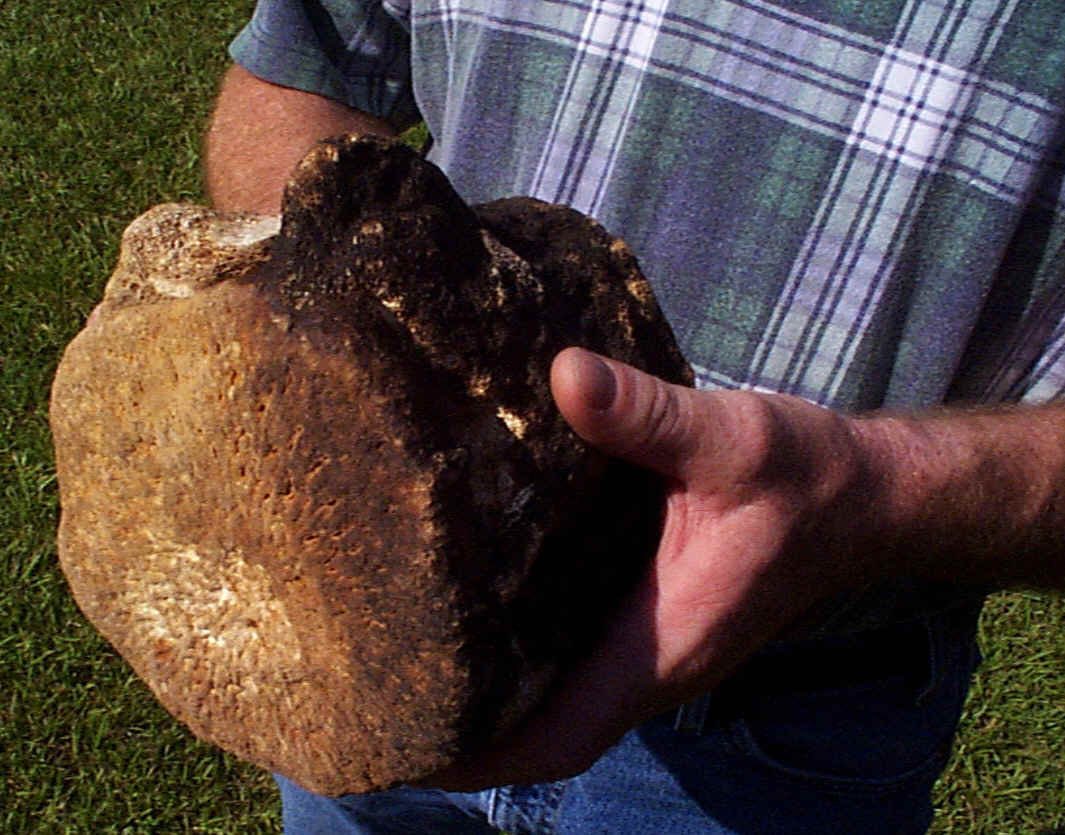 Especially interesting were Mr. Hoomes's ice age fossils. A humpless camel tooth, bison fossils, horse teeth, and many other items lined his many shelves. Mr. Hoomes also related to us his discovery of bones and stone implements at a likely "kill site" where early humans attacked and killed a mammoth. He showed us artifacts in the form of triangular bone fragments which had been made into likely primitive weapons by the ancient people of the area.
Especially interesting were Mr. Hoomes's ice age fossils. A humpless camel tooth, bison fossils, horse teeth, and many other items lined his many shelves. Mr. Hoomes also related to us his discovery of bones and stone implements at a likely "kill site" where early humans attacked and killed a mammoth. He showed us artifacts in the form of triangular bone fragments which had been made into likely primitive weapons by the ancient people of the area.
Mr Hoomes said he has explored many of the rivers within a five-county area around his home and his vast experience clearly showed in the things he told us.
His collecting has gone beyond what most of us do, and has included searches in remote creeks, not-easily-accessible embankments, and occasional encounters with alligators!
In summary, this was again an excellent field trip for the BPS. Thanks to James Lowery for arranging the trip, and thanks to Mr. Hoomes for taking us on a fascinating journey into Alabama's past! Thanks also to Dave Kopaska-Merkel of the GSA for his comments on this report, which improved its accuracy, and to Jim Lacefield for supplying all of the above images.
Following photos courtesy Larry Hensley.
|
The three people in the foreground are James Lowery with his back to the camera, Jim Lacefield, seated, and Ron Buta, arms folded and deep in a serious discussion of paleontology. |
|
|
|
The Hensley Family |
|
David Kopaska-Merkel |
|
Henry Edmonson |
|
Ron Buta (facing the camera) |
|
David Shepherd |
|
Bill and Kate Newman |
|
Fossils found included sharks teeth, ray teeth, petrified wood, and vertebrae of sea snakes. The time period represented in the site we worked was the Eocene, the early age of Mammals, approximately 40-50 million years ago. From this site we proceeded to a private museum. A fascinating exhibit!
November 20, 1999 - Bibb Co, AL
|
This Saturday field trip was the first visit even by veteran BPS members to a quarry located in north Bibb County. The rocks from this quarry have been used as rip-rap at several highway locations, the best ones I know of being on a ramp at Exit 79 and between Exits 77 and 79 on I20/59 near Tuscaloosa. |
The trip was attended by 20-25 BPS members and guests on the first rainy day we had in nearly three weeks. This quarry is a largely abandoned location where rocks of middle Ordovician age (460-480 million years) have been exposed. The rock formations at this site are part of the well known Chickamauga Limestone Group. The main quarry pit is now a small lake filled with deep-looking water having a strong aquamarine color. The lake is surrounded by steep cut cliffs. Rocks are scattered in large piles around a wide area near the lake, and it was among these piles that BPS members searched for fossils of mostly marine animals. In spite of the vastness of the area, it took some tenacity to find fossils since fossiliferous rocks were not that common. |
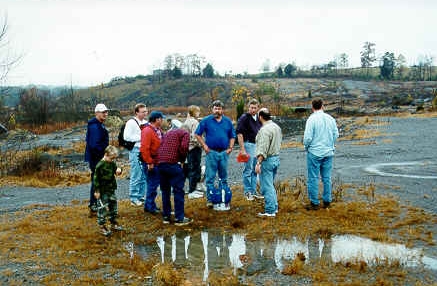 |
| Fig. 2 - Group discussing strategy for exploring the area. |
|---|
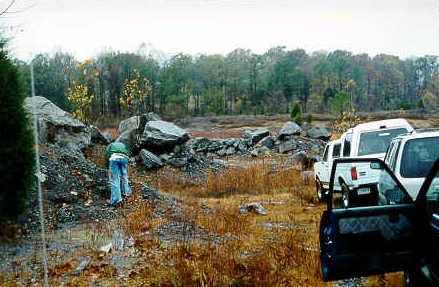 |
| Fig. 3 - View towards rock piles around the lake. |
Apparently, it is the fossils themselves that tell us the age of the rocks at this site. According to Prof. Carl Stock of the University of Alabama Department of Geology, the main index fossils are conodonts, which are very small, sometimes cone-like objects whose nature is not well understood. I am not sure that any of us noticed such fossils, but a magnifier would probably be needed to see them in any case. More obvious index fossils found in quarry rocks are brachiopods. According to R. Wixon (University of Alabama master's thesis, 1984), Ordovician brachiopods are good index fossils because of their abundance worldwide and the short period of their evolutionary timescale. Well-preserved brachiopods of clear middle Ordovician age are found at the quarry and at the I20/59 sites.
Many of the brachiopods that we found at the quarry appear to belong to the order Strophomenida which, according to The Fossil Book by Rich, Rich, Fenton, and Fenton (1996), are frequently referred to as "petrified butterflies". There are many genera and species in this order of articulate brachiopods, and I could only identify a few in the rocks that I personally picked up, based on illustrations in Wixon's thesis and Volume H of the Treatise on Invertebrate Paleontology (Moore, editor, 1965). A few are shown in the illustrations here. Larry Hensley found a large slab covered with brachiopod shells mostly about 1 cm in diameter each (see photo). Several of us managed to hammer away at this large rock and get some pieces of it. Many of the brachiopods on this slab appear to be of the genus Sowerbyella. |
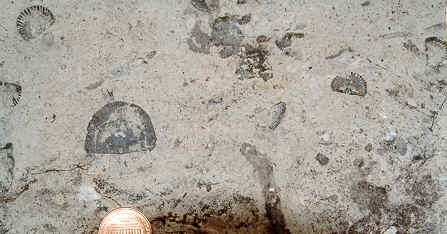 |
| Fig. 6 - Medium-sized brachiopod, probably of genus Rafinesquina, with smaller Hesperorthis australis brachiopods to upper right and left |
|---|
|
Larger brachiopods about 2.5 cm or so in diameter seemed less abundant than the 1cm or smaller pieces. The one I show here, shaped sort of like a tombstone, is probably of the genus Strophomenus or, more likely, Rafinesquina. The largest brachiopod I found is more than 3cm in diameter, and may be of the genus Tetraphalerella, whose members can get this large according to Wixon. Other fossils found include the stems of crinoids, random stem plates of dis-assembled crinoids, bryozoans, parts of trilobites and, I heard, cystoids. Trace fossils of worm burrows were actually among the easiest fossils to find at this site. A large slab covered with criss-crossing tracks is shown here. Don McDonald also showed me what he thought was the end of a horn coral, and Vicki Lais showed several of us a very large rock having some interesting spiral-shaped fossils that we could not identify. Apparently, someone had previously used a rock saw to cut out a piece of this same rock. |
|
|
Although it was not easy finding fossils at this site, it was clear that everyone who attended the field trip had an enjoyable time. The area was interesting and the rocks mysterious, being older than most of those exposed in regions north and south of the site. The key to success at a site like this is to have a lot of time to explore and to be prepared. I regret that I had not studied any of the books I mention above until AFTER I got home! --Edited by Vicki Lais |
December 18, 1999 - Pennsylvanian Fossils, Walker Co, AL
|
During this field trip, the BPS had the pleasure of returning to the Cedrum Surface Coal Mine near Jasper in Walker County, Alabama. Although we had visited this mine only a few months ago (see BPS field trip report for July 24, 1999), there was a sense of urgency connected with our latest visit. The Drummond Company, which operates the mine, was going to shut down operations on December 30, which would then be followed by the normal reclamation effort to restore the area. This meant that the large "spoil piles" we explored in July would soon be gone. Thus, it was decided that we should go back one more time before the reclamation effort to look for plant fossils.
As in July, this visit was hosted by a mine engineerwho instructed us in issues of safety in the mine area. We were delighted to have his wife join us this time and bring several parents and students of various ages who are involved in home schooling. They all seemed to enjoy learning about fossils and to be excited about finding and collecting them. During this visit we had about 30 BPS members and guests in attendance, a larger than average group. There were so many cars that we were asked to carpool a little to miminize the number of cars in the pit. |
|||
|
I must say that I enjoyed this visit much more than the visit in July. The highlight of the visit in July was our tour of the mining operation and our visit to the "dragline." However, it was so hot that day that fossil collecting was difficult and a little unpleasant. Our focus this time was only on fossil collecting, and the day was cool, calm, a little cloudy, and very pleasant for climbing and searching the rock piles. We also collected in a different area from our July visit. One problem we encountered was that it was rather dry, and the movement of trucks combined with dryness caused the rocks to be very dusty, making it a little difficult to notice the fossils. Thus, it was not especially easy to find good fossils.
Many of the fossils that attendees did find were very good. I can describe a few that I brought home. Being a little slow in heading towards the main rock piles, I stopped at a rock that others had seen but had passed up because of its size. The rock included a foot-long Calamites pith impression that I thought was interesting because it includes about 20 nodes. There is more than just the pith, however. The pith is surrounded by a wider pattern that may give the true dimension of the trunk, since the sediment was obviously impacted by the plant over this wider area. The specimen looked much better after it was cleaned, and I show a picture of it here. |
|
|
|
|
Don McDonald found a rock with what looked like nice specimens of Asterophyllites, one of the forms of the foliage connected with Calamites. The rock was very large and it was difficult to extract intact pieces.
This nearly happened to me on the next fossil I found. Near where Don was working, I found the interesting fossil shown here. It broke up when I started to try and extract it, but the pieces could be put together like a puzzle as in the photograph. At first, I thought this was a Calamites impression, but the long striations and the narrowing of the fossil towards its end reveals this to be a giant strap-shaped leaf of Cordaites. Note the lack of any nodes, which rules out the Calamites interpretation completely. Matthew Valente, who came as a guest with Jim and Faye Lacefield, found a round-leafed fossil fern that I had not seen before. Matthew tentatively identified it as Mariopteris robusta. According to Jim, this is a common species near the south part of the well-known Warrior Basin, but it is not common in Walker County where Cedrum is located. This field trip was combined with our traditional "Christmas season gathering" and several members brought the fixings for our lunch that were shared by everyone. Thanks to Jim Lacefield and James Lowery for comments and additions to this report, and especially to Steve Minkin and his son for making and bringing the delicious gumbo as our main course! --Edited by Vicki Lais |
Photos
by Larry Hensley
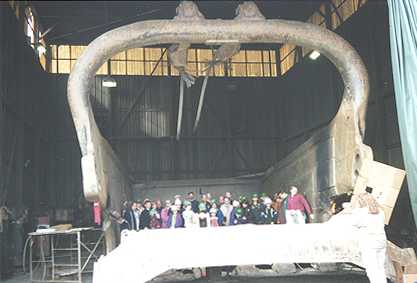 |
| Cedrum Surface Mine in Walker Co., Alabama, Dec. 18, 1999 -- BPS Members in the Huge Dragline Bucket |
|---|
 |
| |
|---|
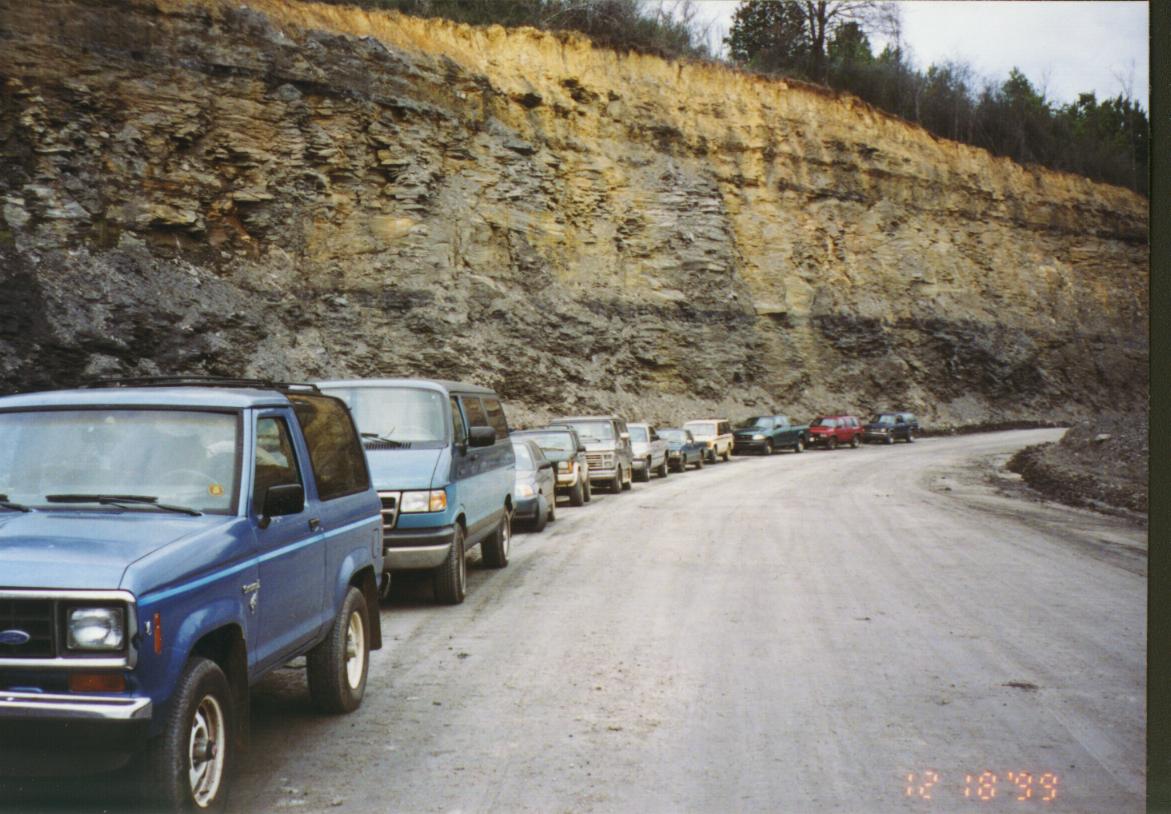 |
| |
|---|
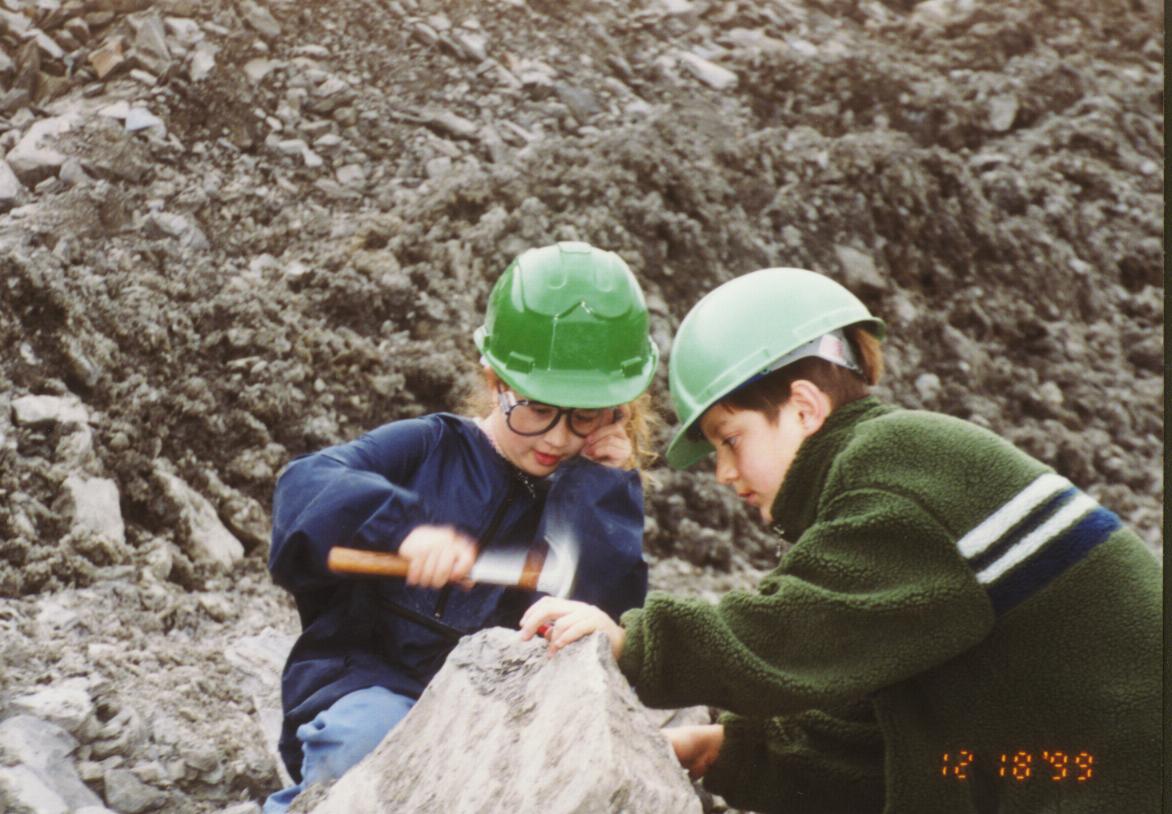 |
| |
|---|
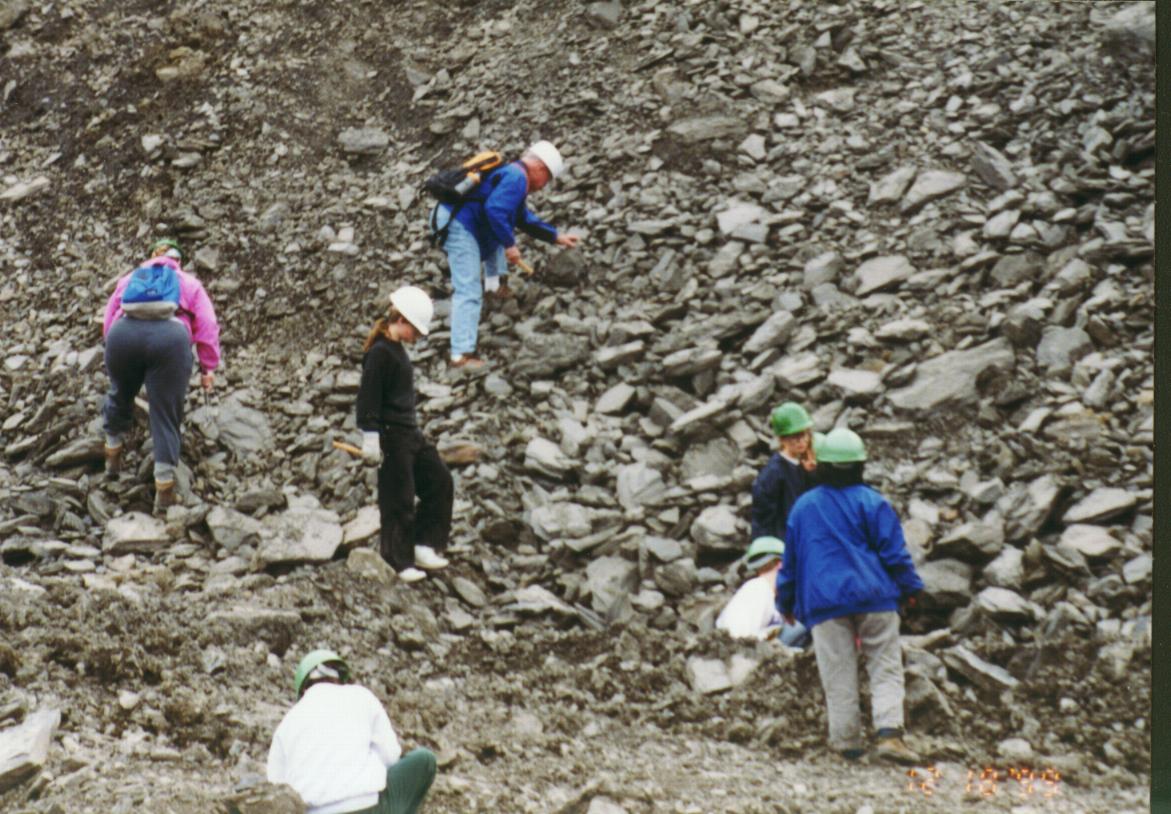 |
| |
|---|
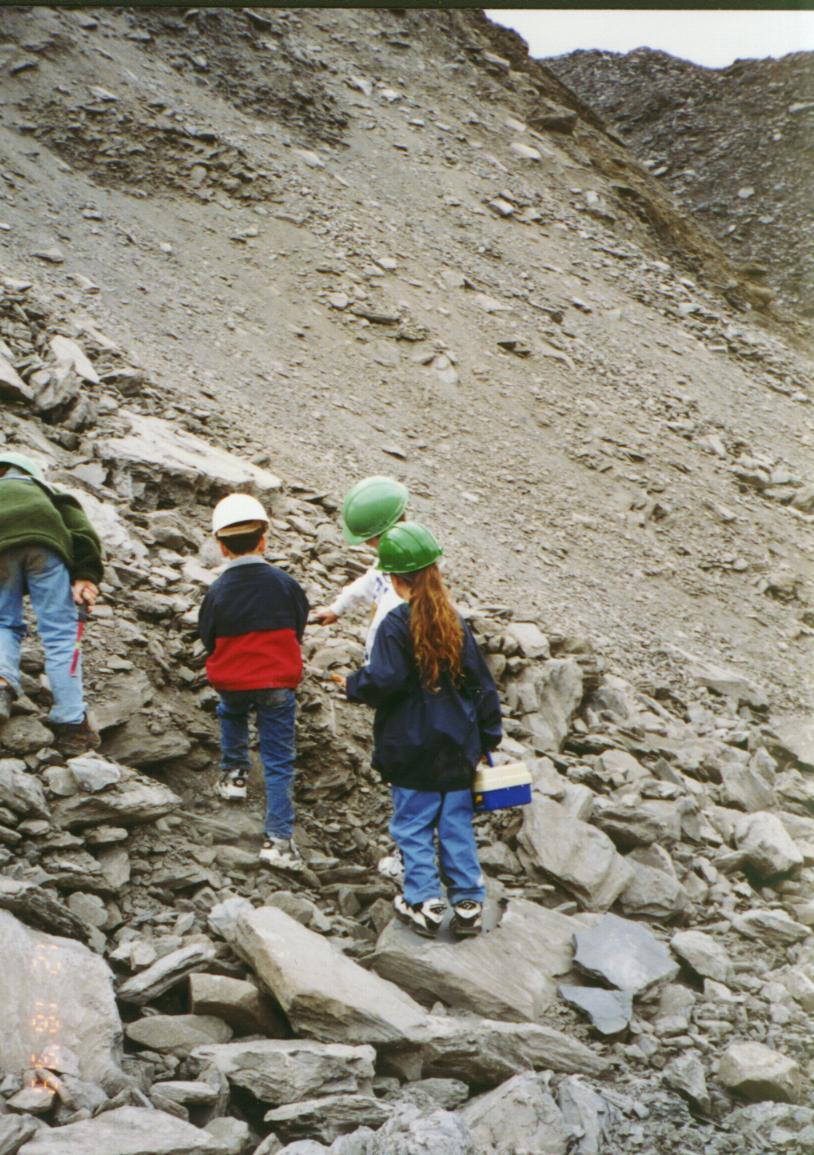 |
| |
|---|
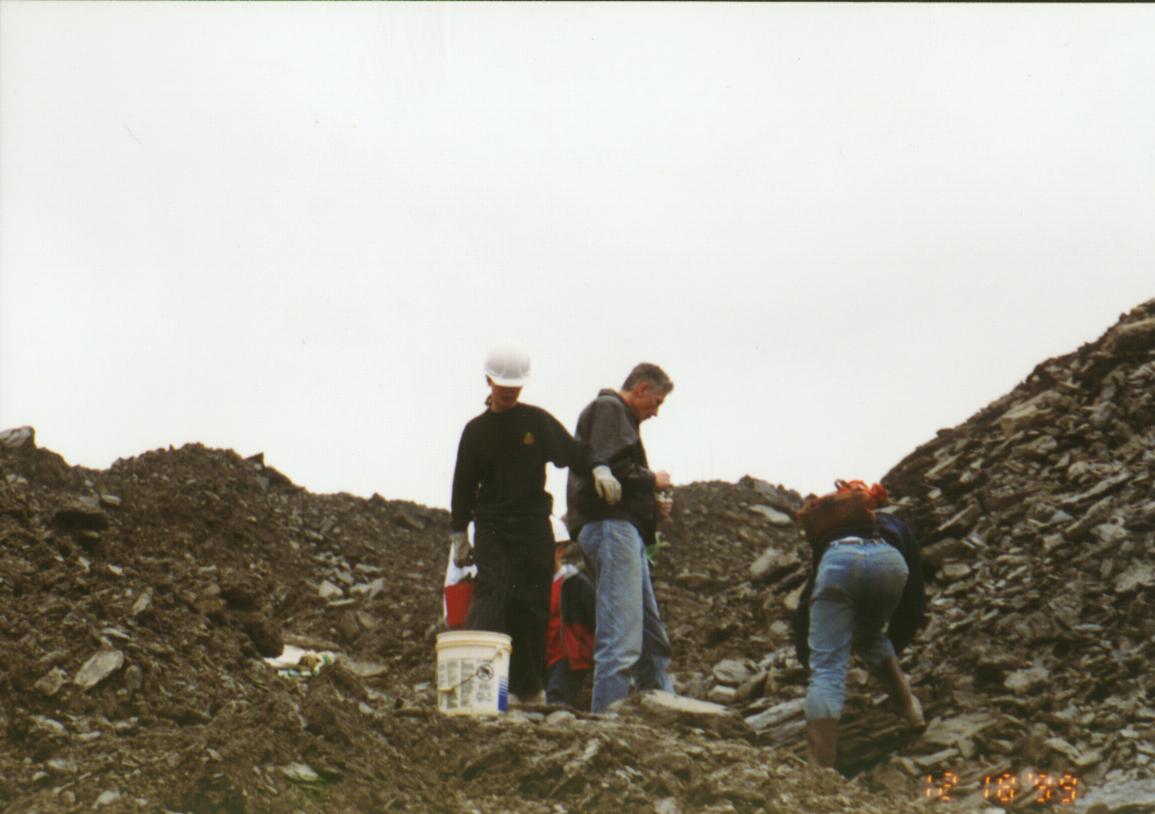 |
| |
|---|
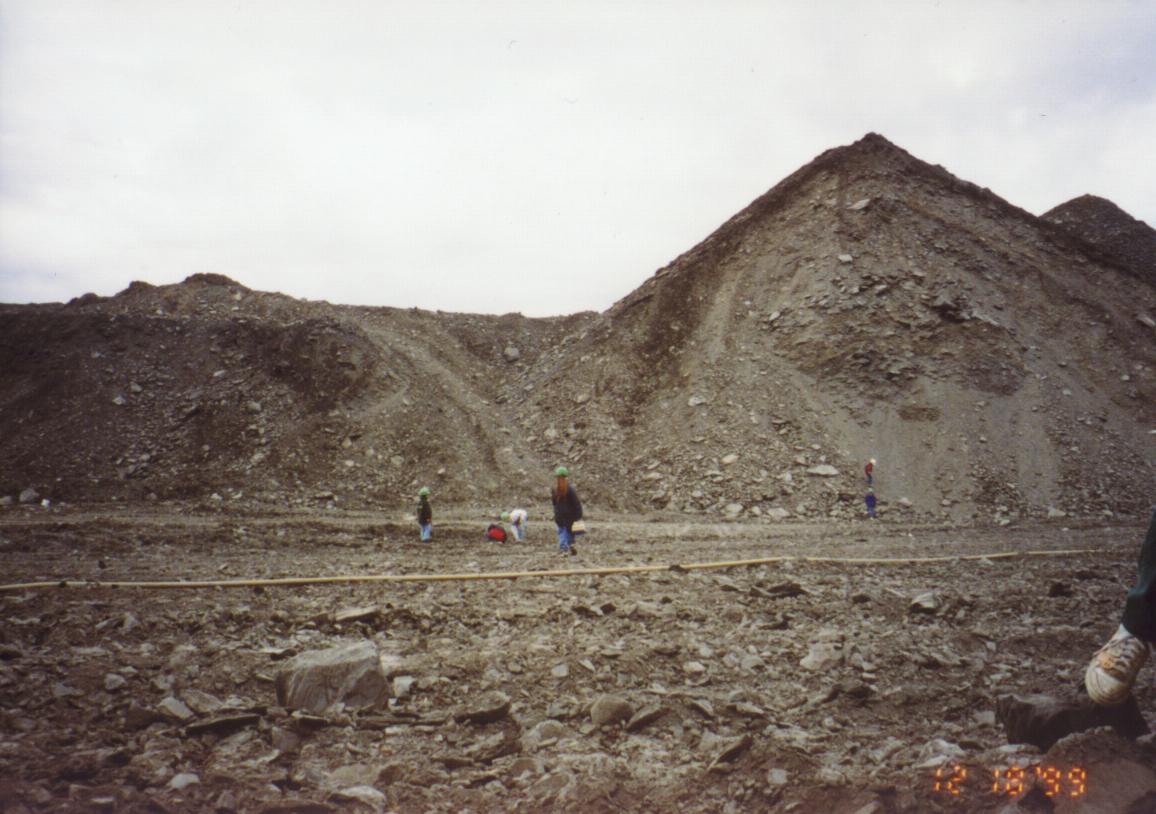 |
| |
|---|
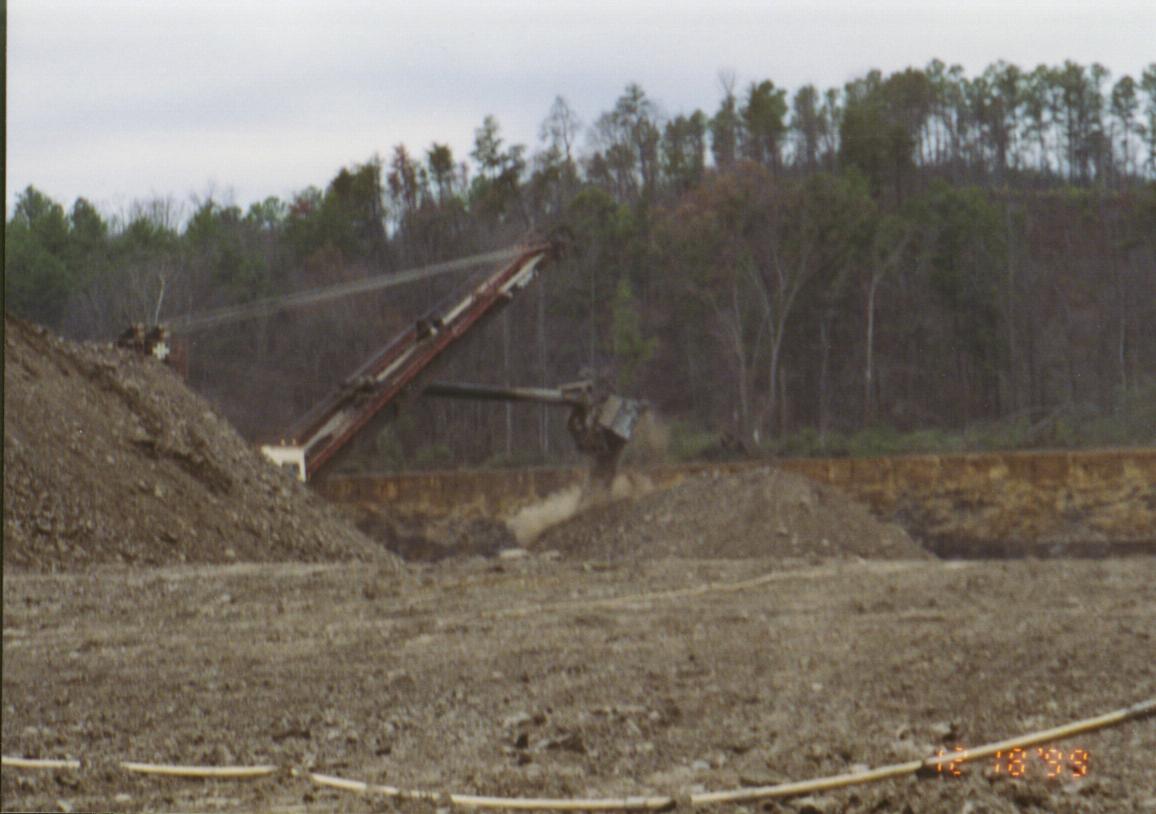 |
| |
|---|
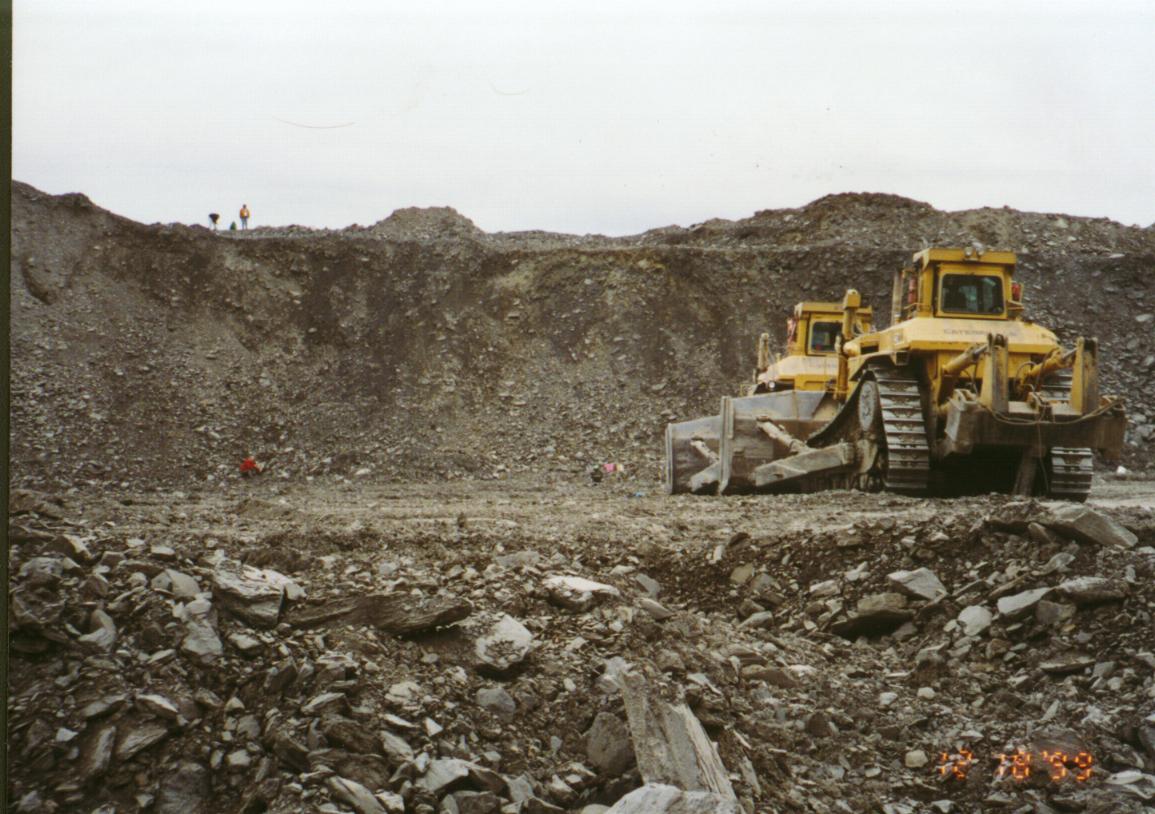 |
| |
|---|
1993
1992
November 14-15, 1992 - Eocene Fossils, Washington County, AL
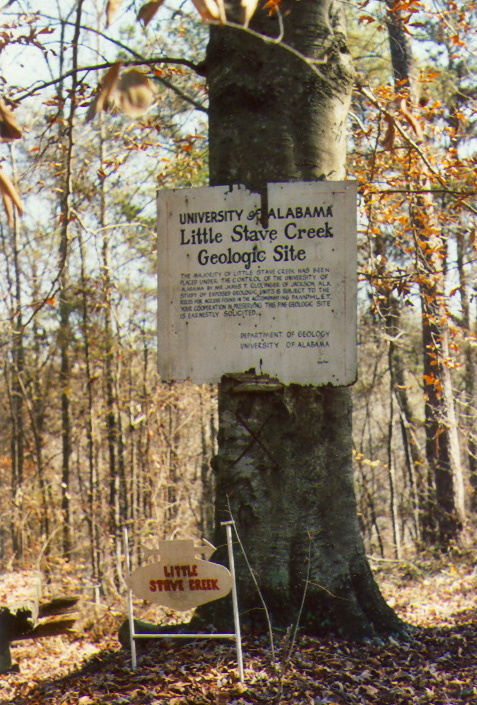

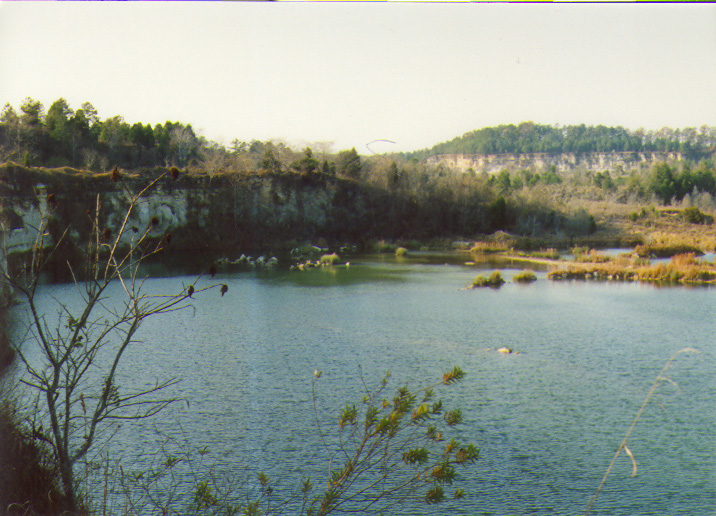
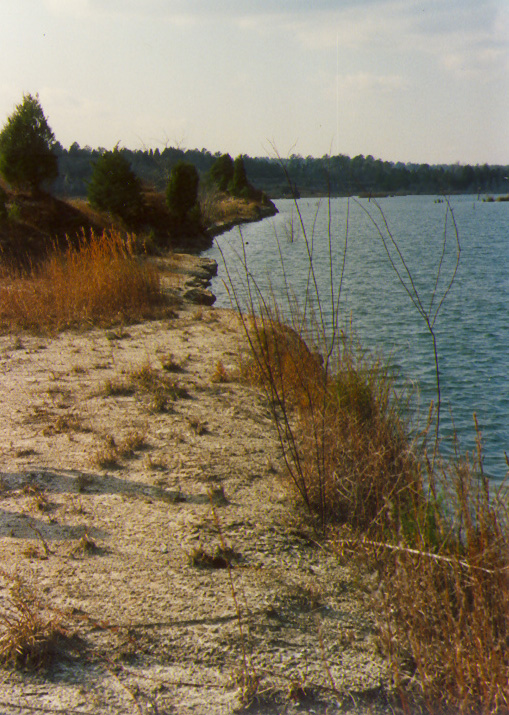


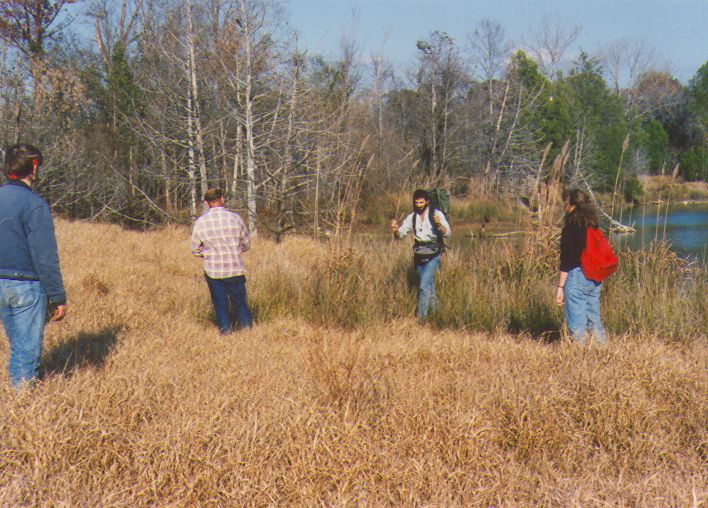
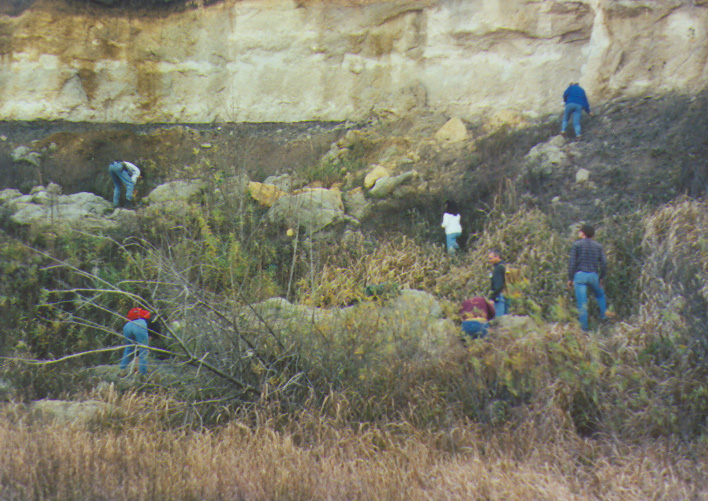

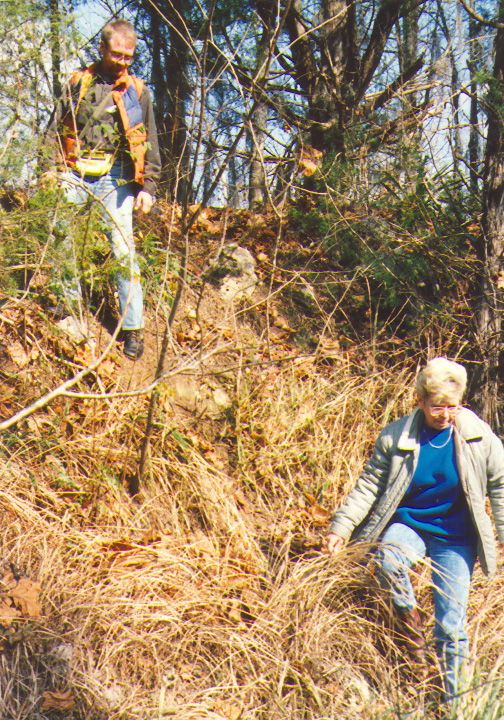
1991
1990
March, 1990 - Cretaceous Fossils - Greene Co, AL
Guys, there's shark teeth in that creek. But James, it's winter, and freezing cold, and we don't have water shoes because we didn't know we could collect in a creek! We don't even have our screens! But we didn't let that stop us!
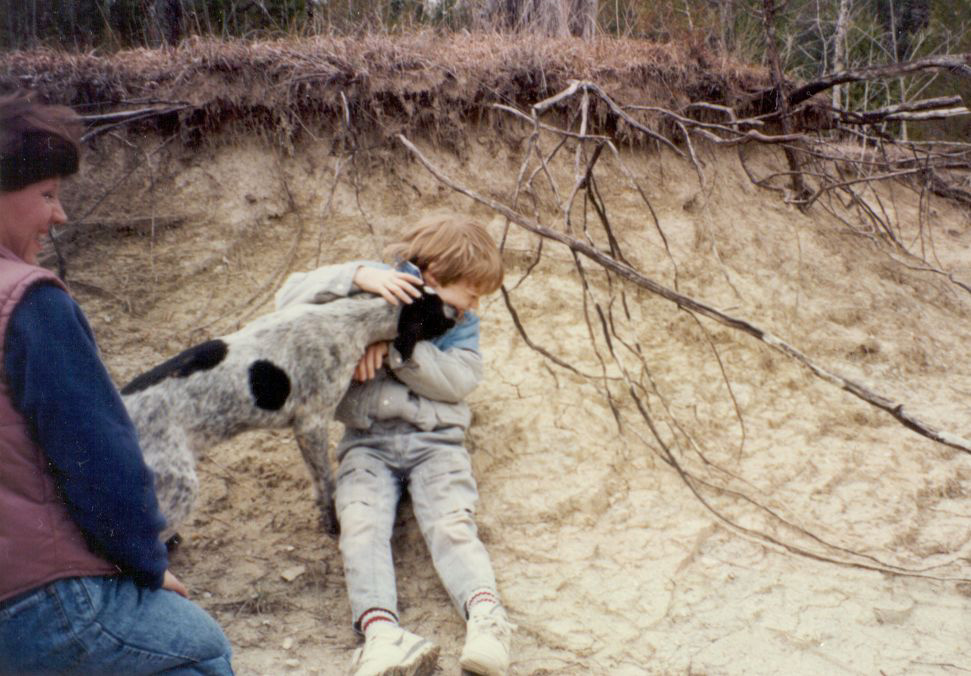
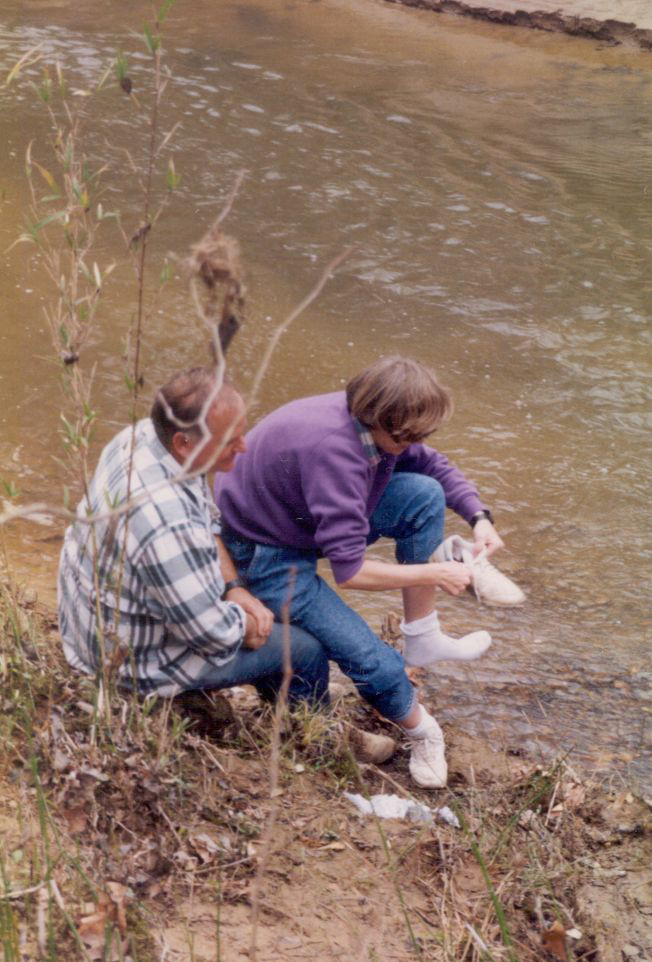
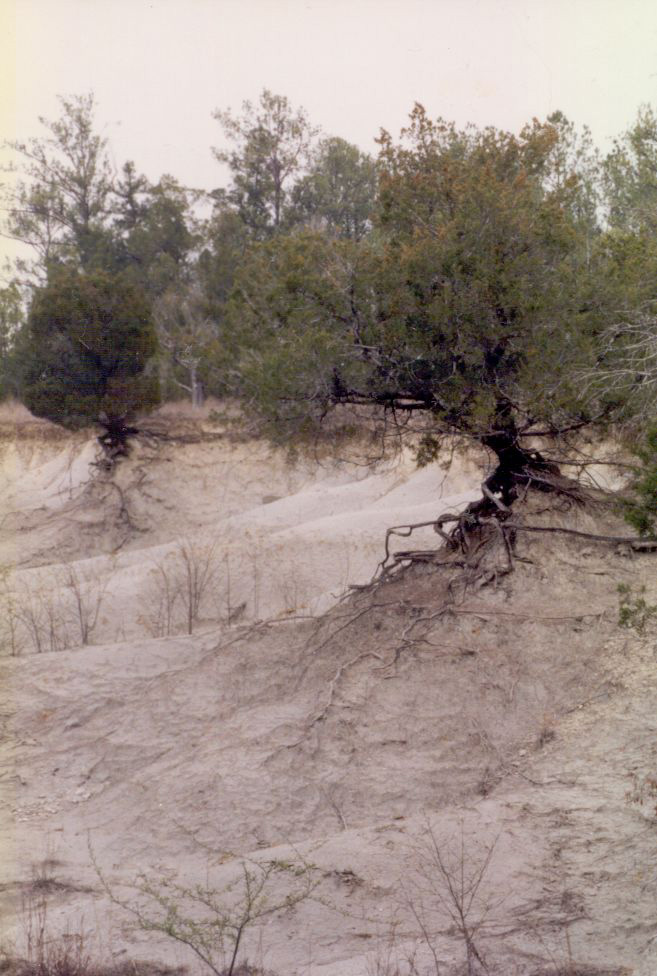
July, 1990 - Sarasota Co, FL
A weekend visit to south Florida, where BPS members toured the Florida State Museum paleo collection, then collected at a shell quarry further south, where James met his future wife. She told us of a beach site where we could collect shark teeth, so off we went!
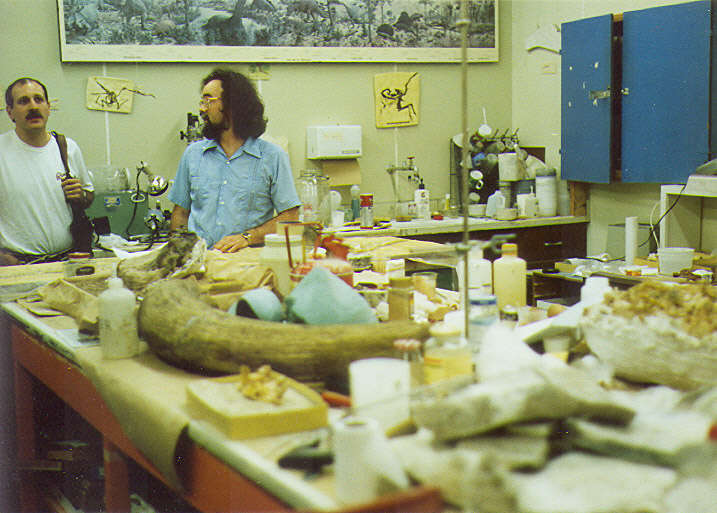
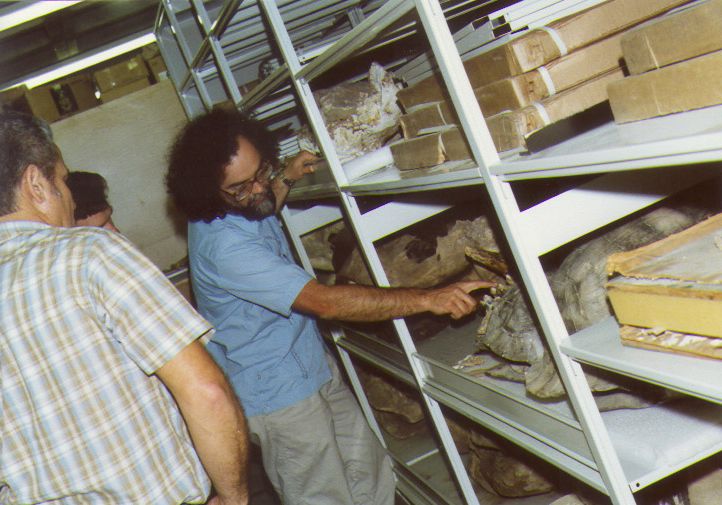
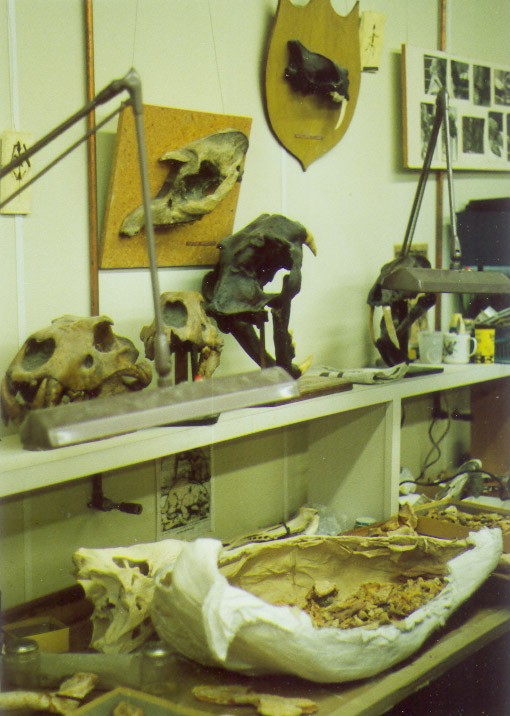
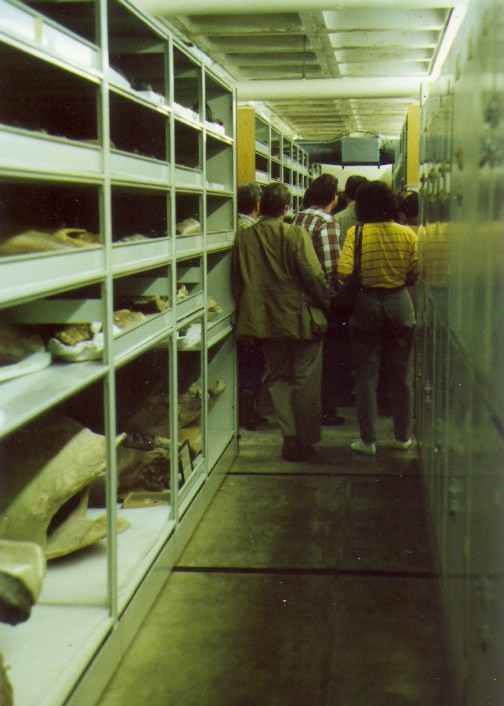
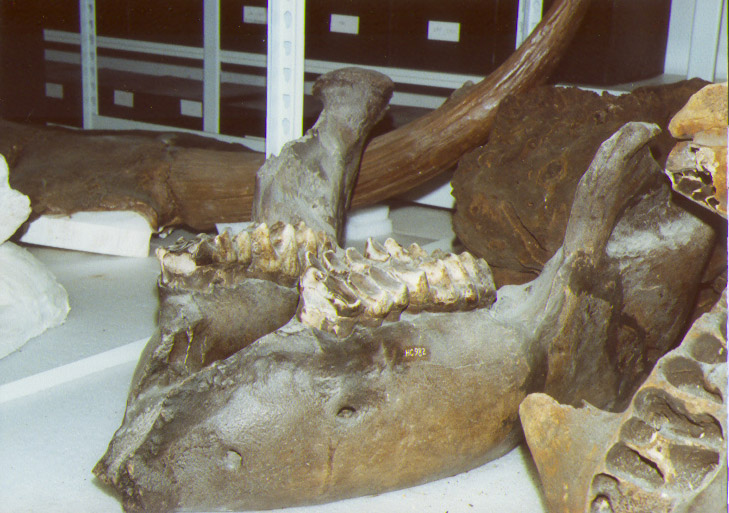

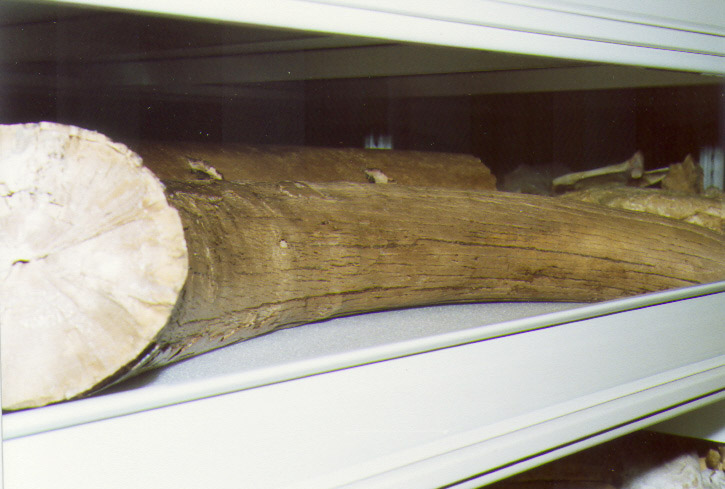
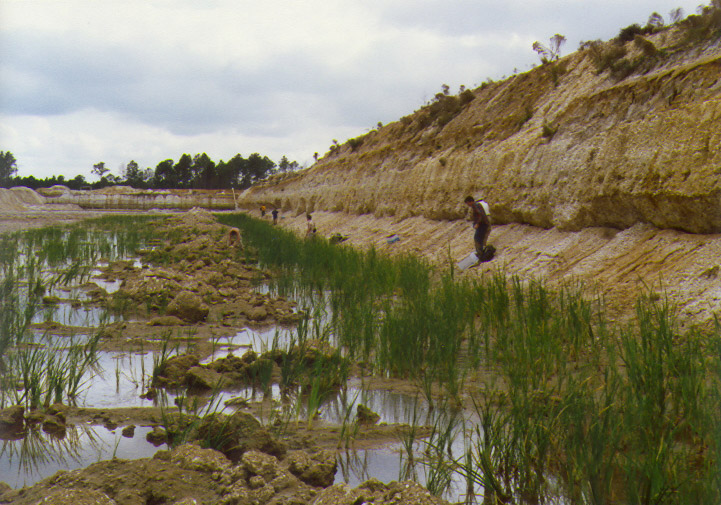
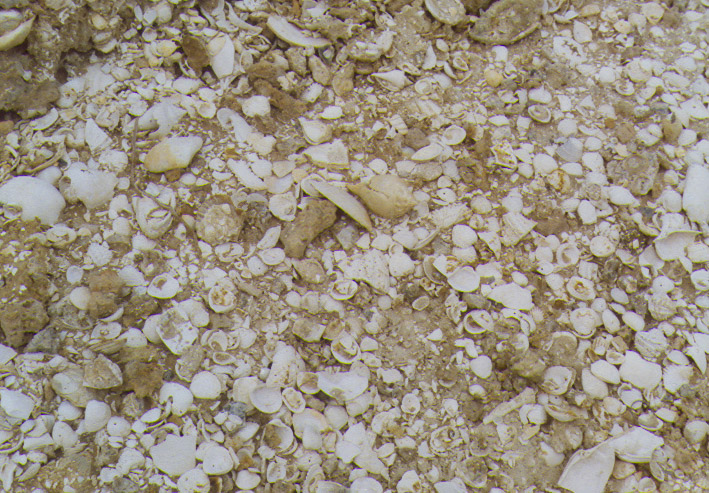
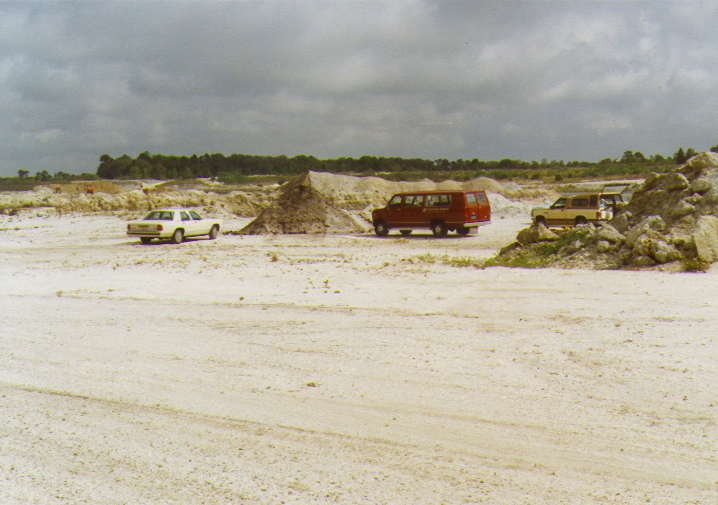
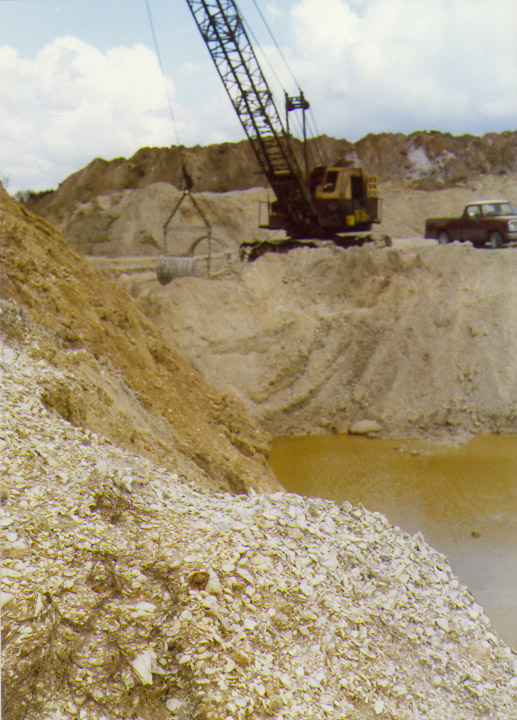
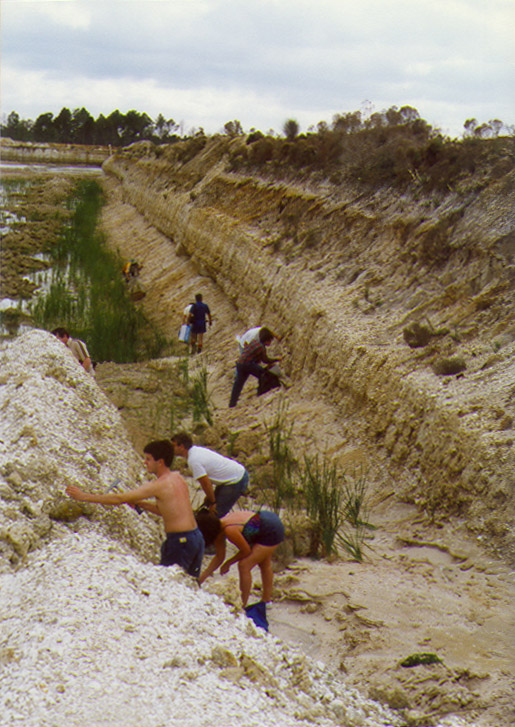
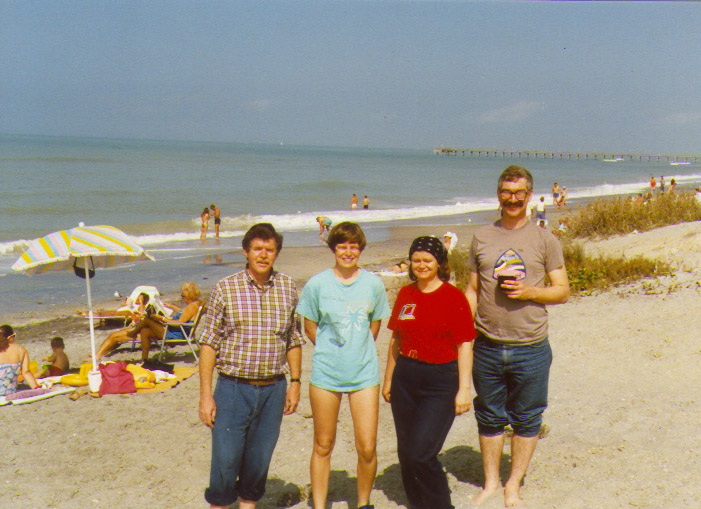

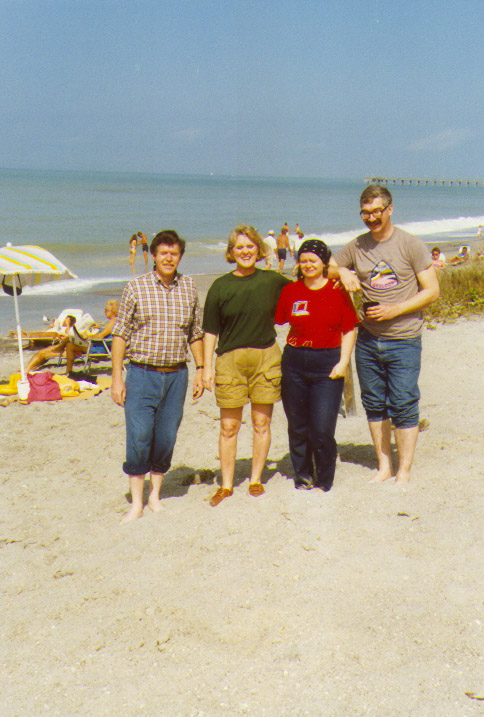
1989
June, 1989 - RMM Roadcut Cleanup
Evaluating what needs done to clear brush from the walkway along the Red Mountain road cut..
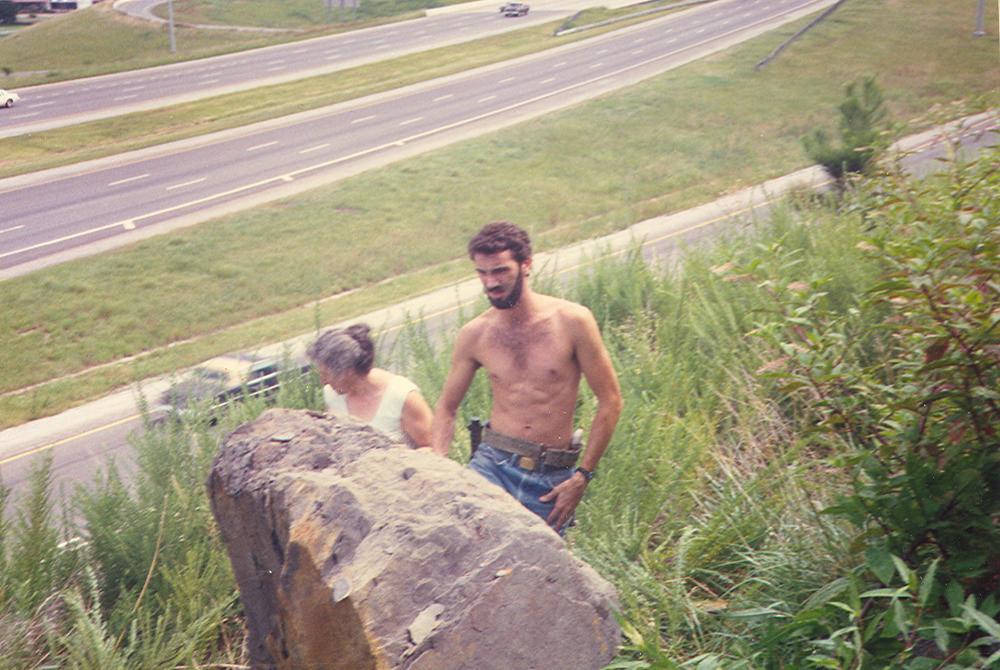
December, 1989 - RMM Expo
BPS helps with the Red Mountain Museum Expo.

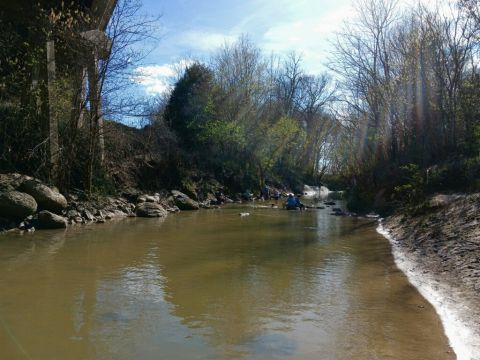
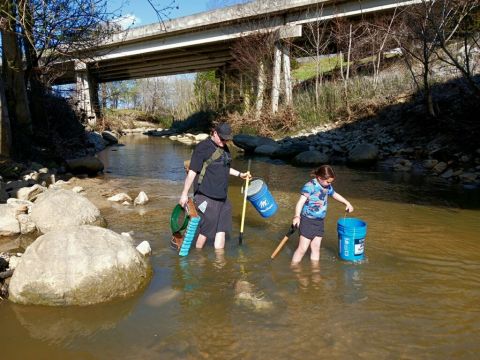

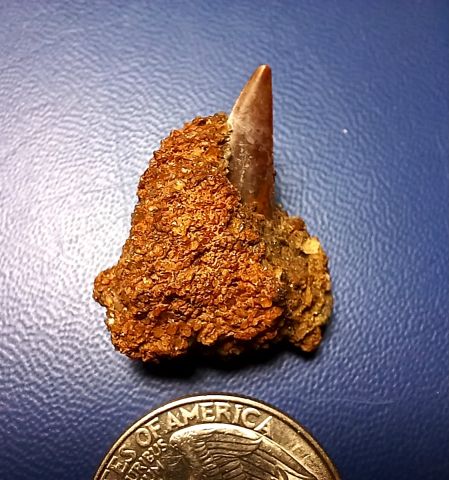
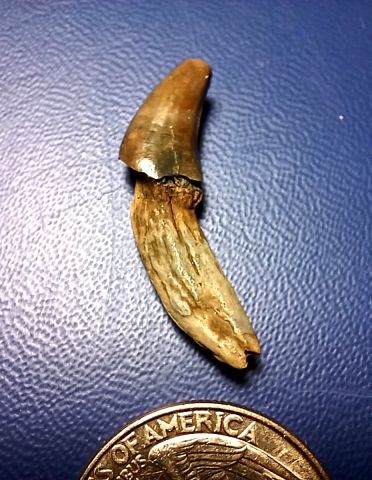
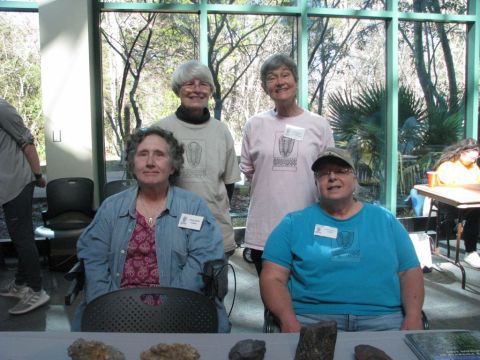
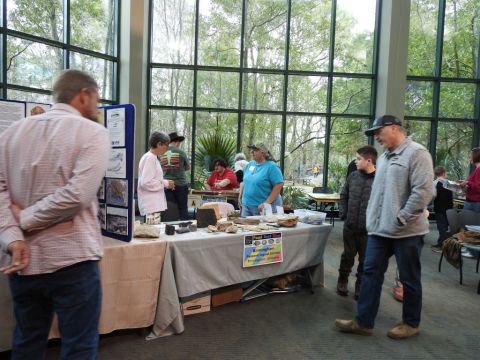
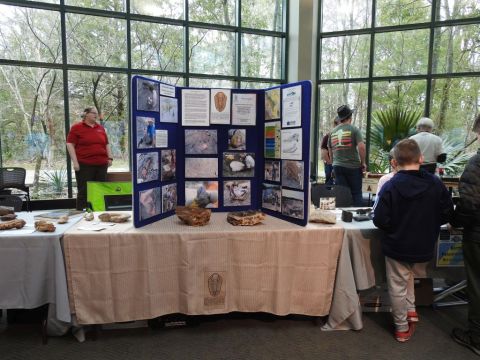
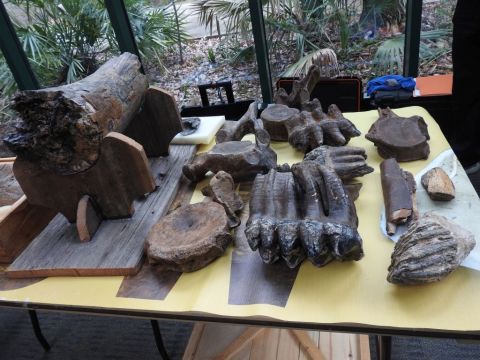
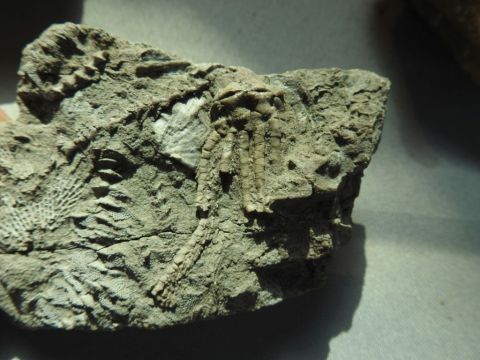
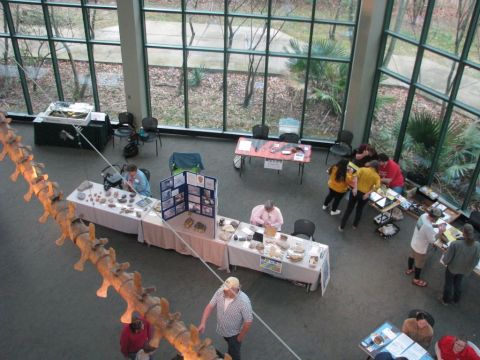
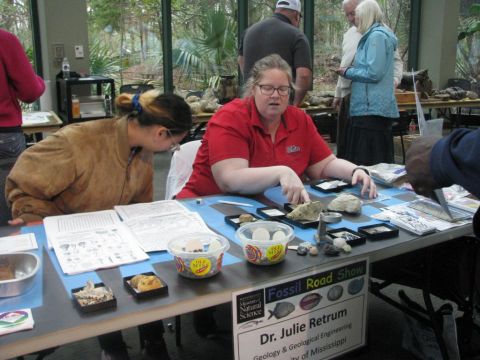

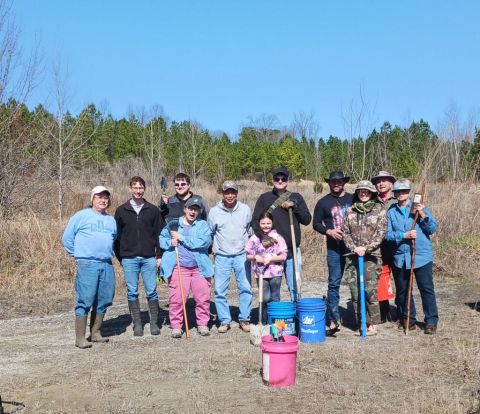

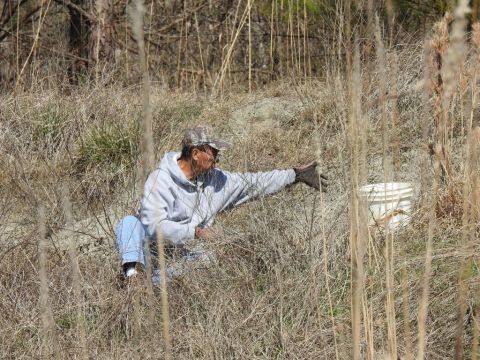
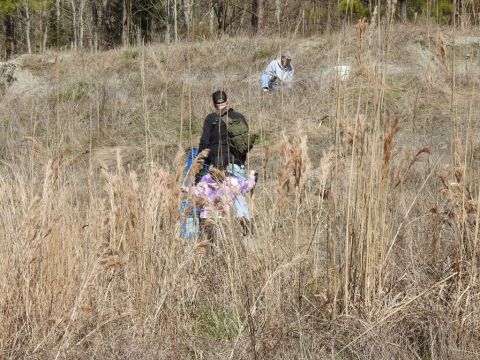
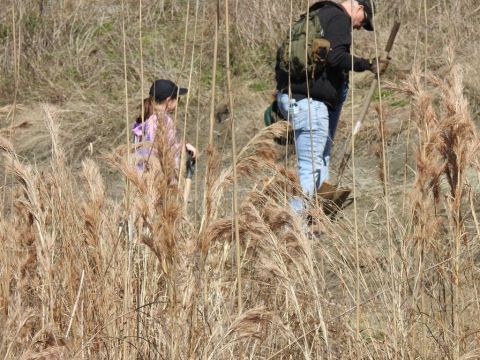


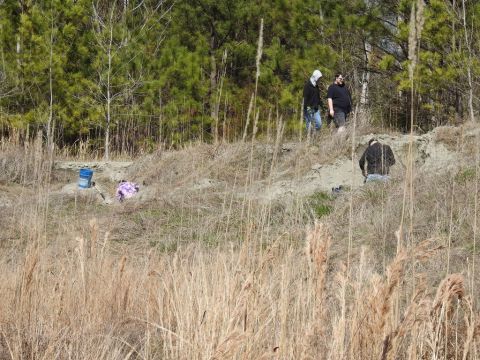


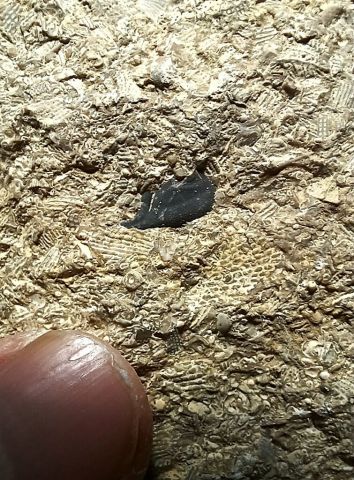
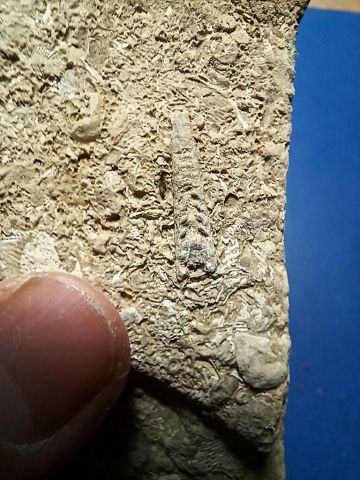
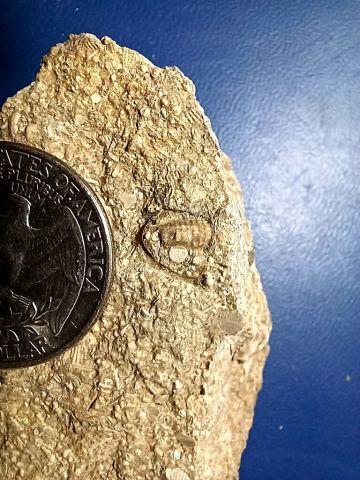
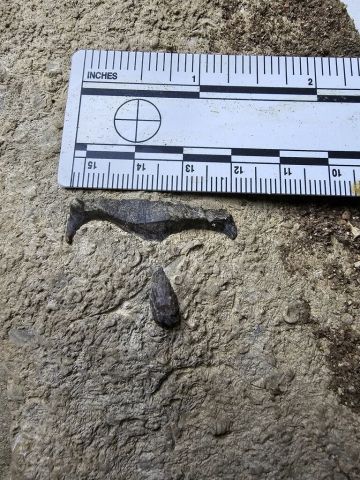


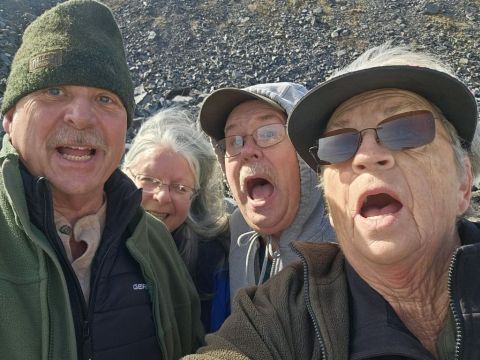

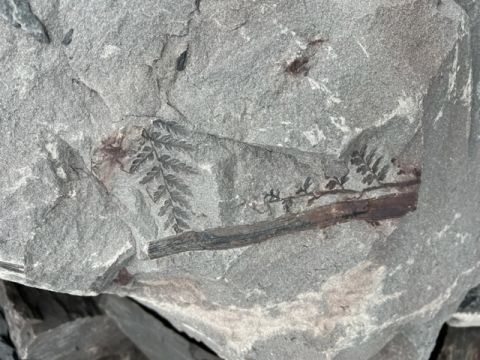


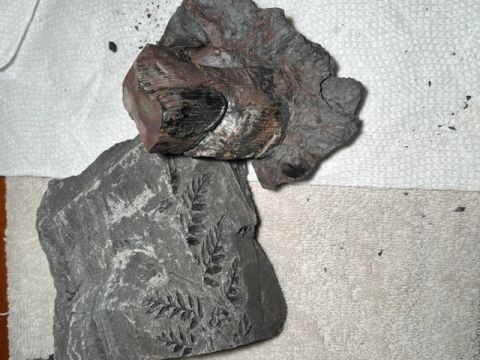
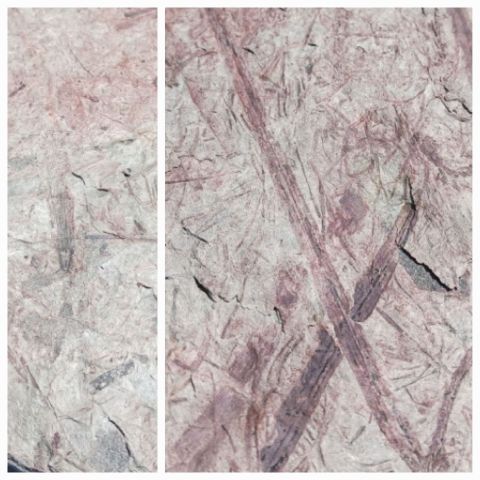
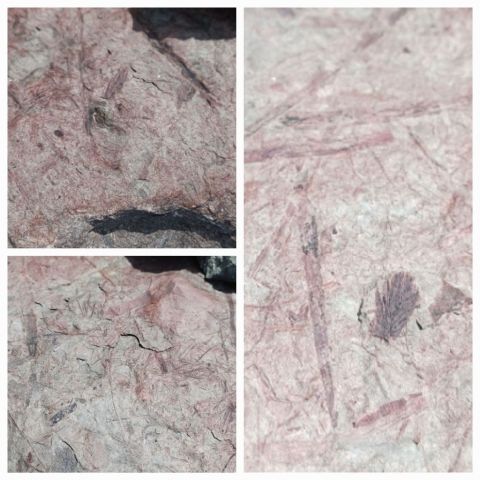
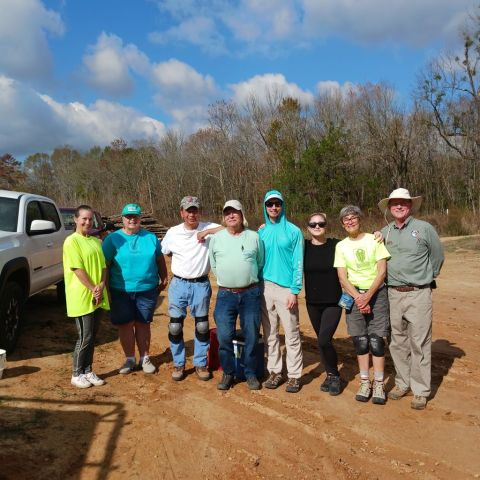
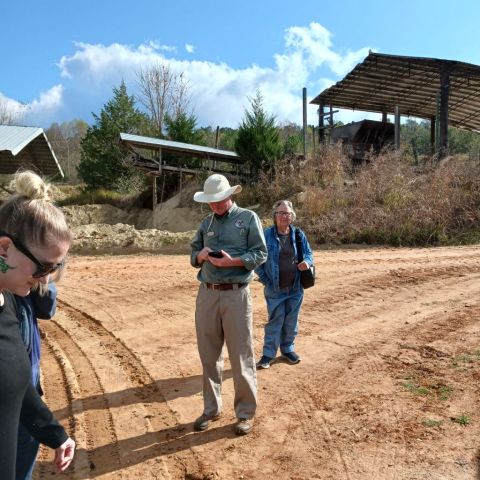

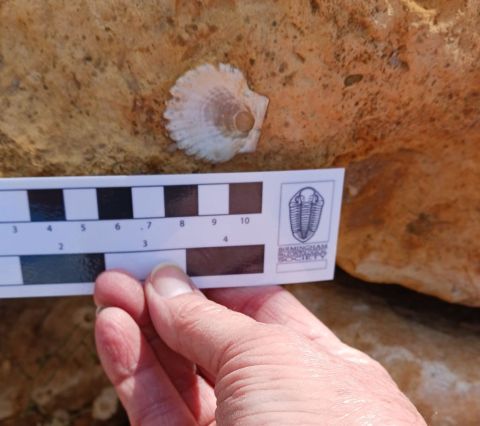
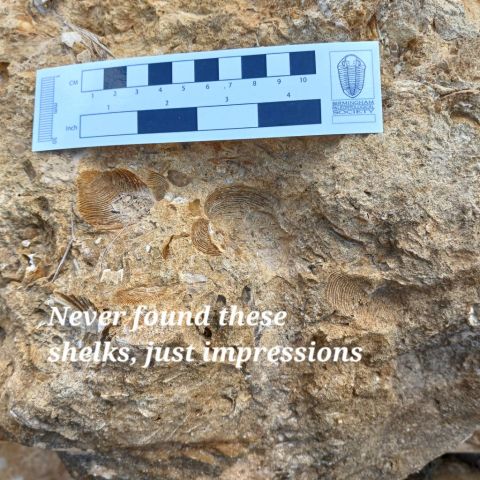
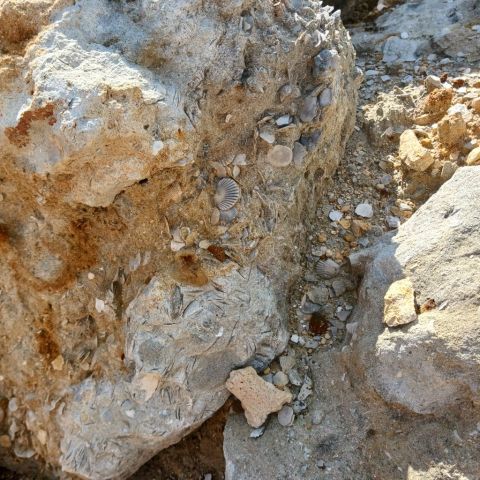

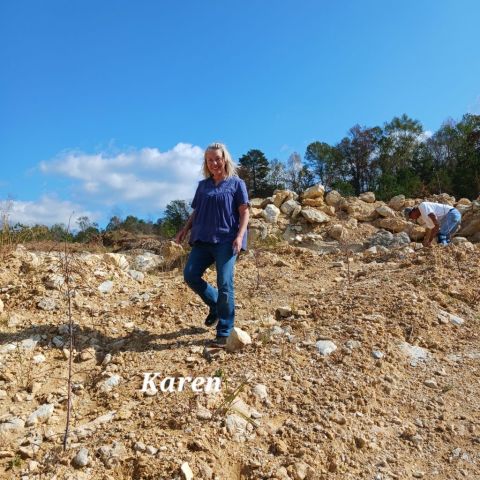

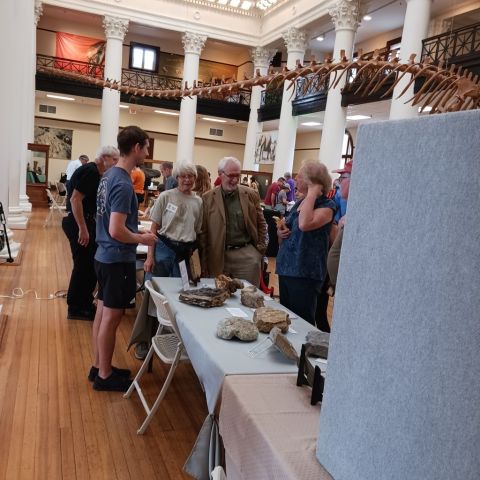
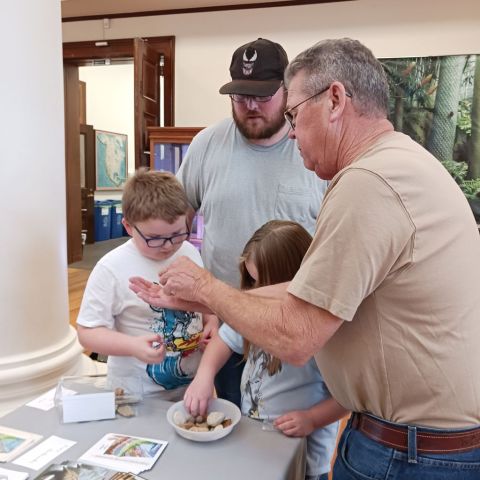
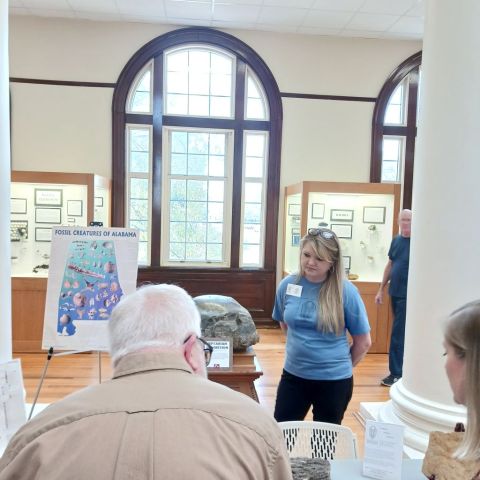
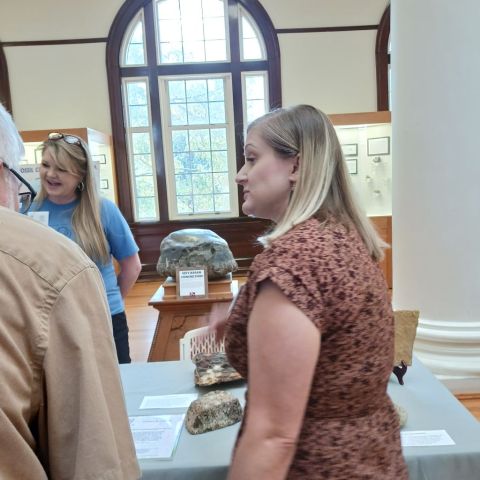

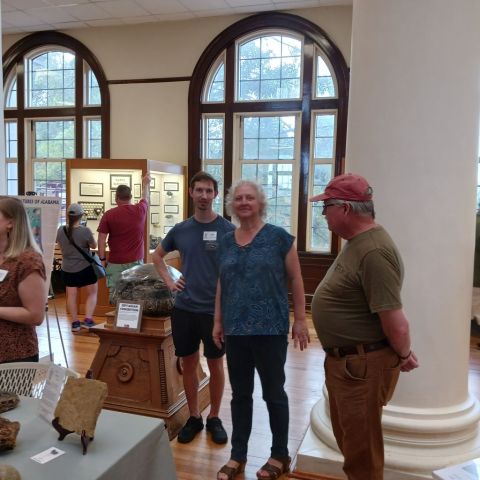
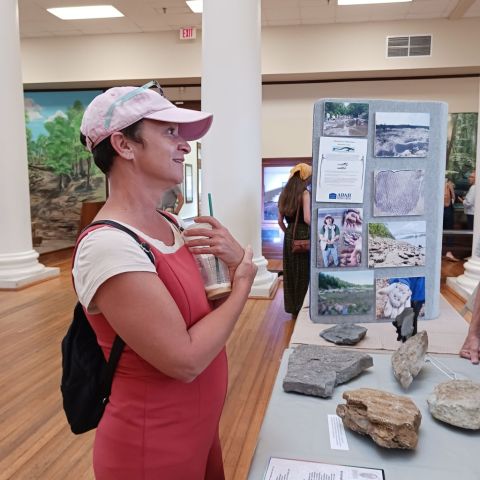

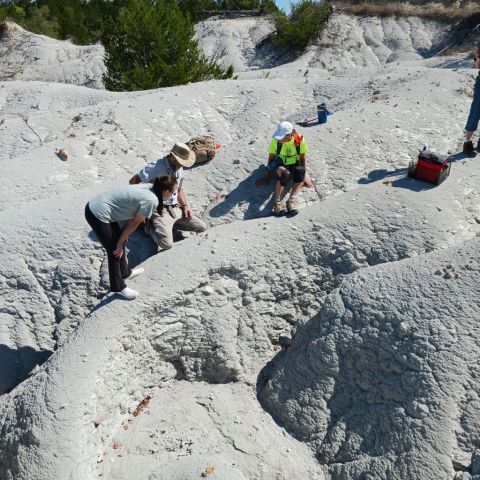
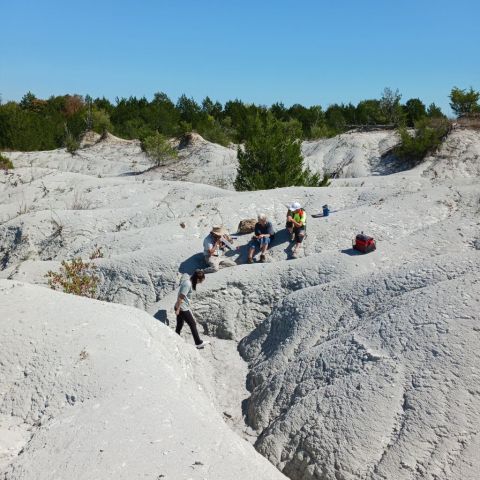
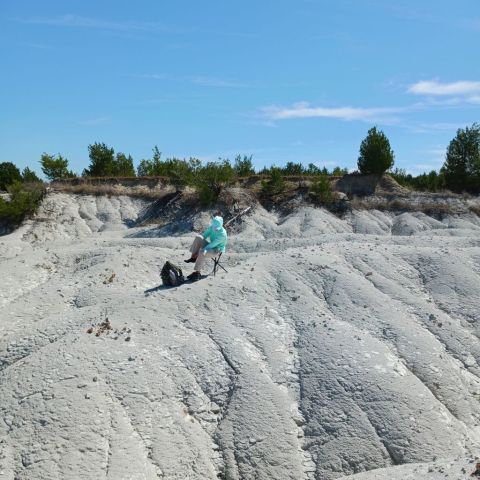
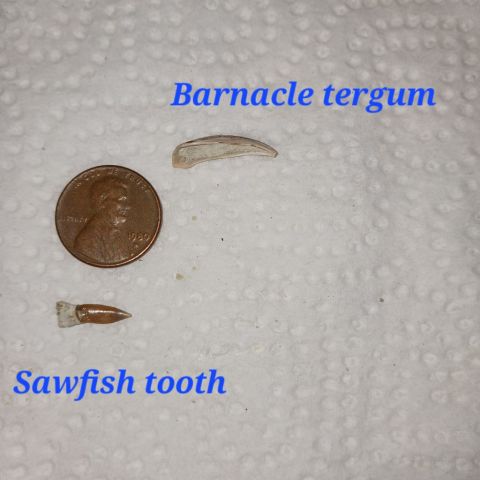
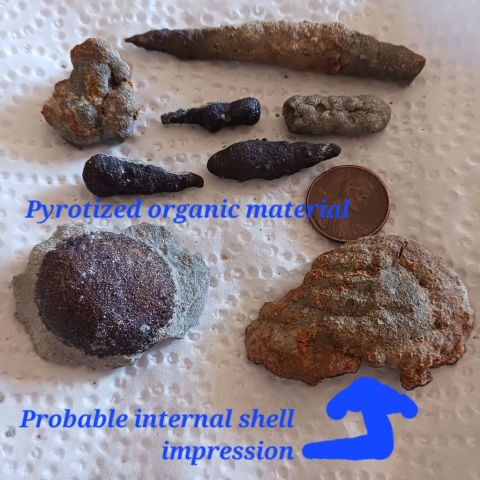
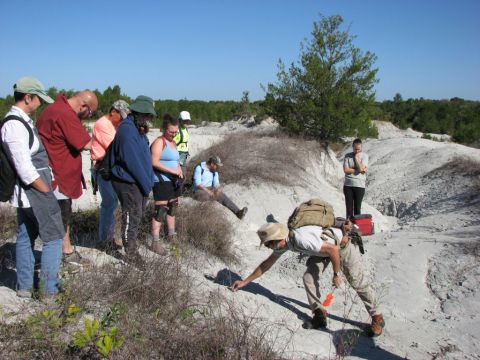
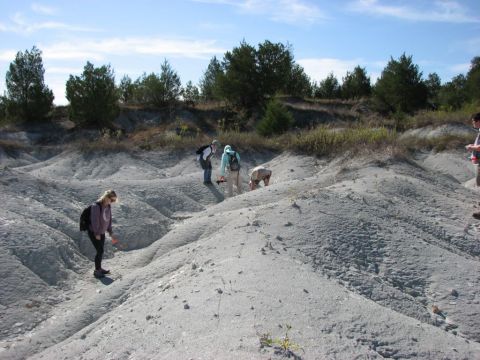
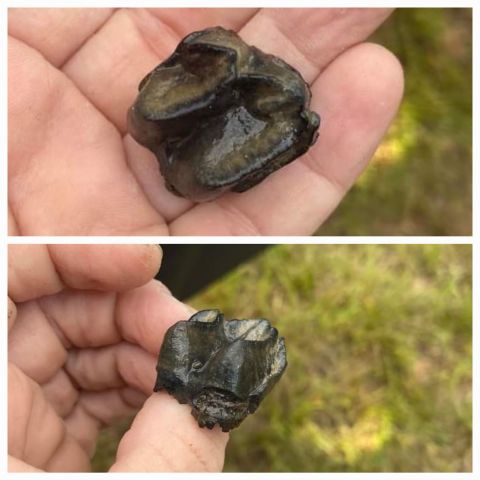
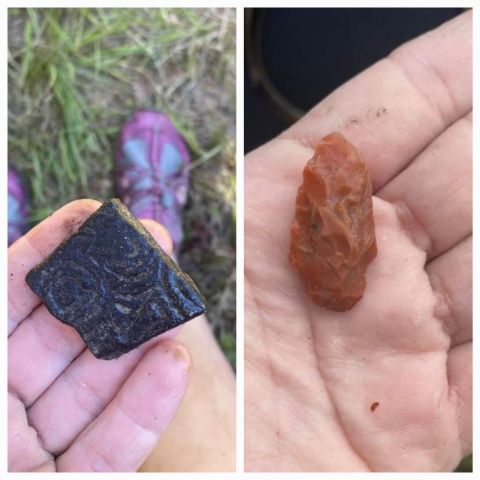


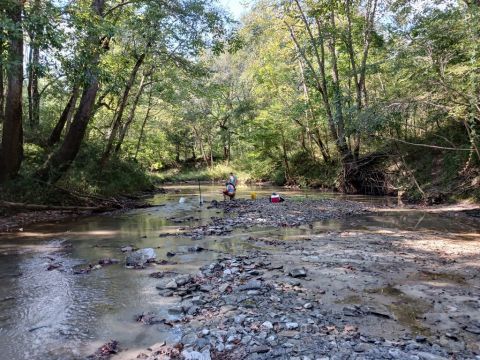
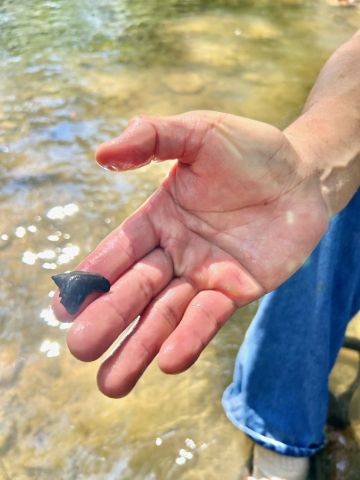
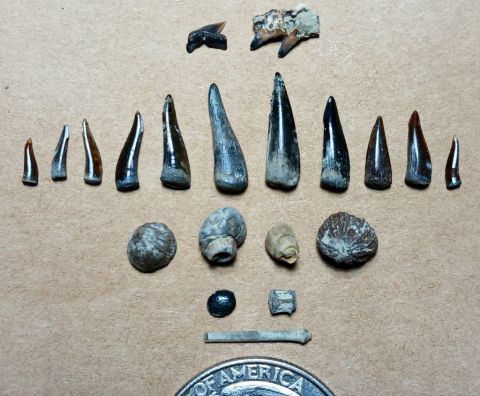
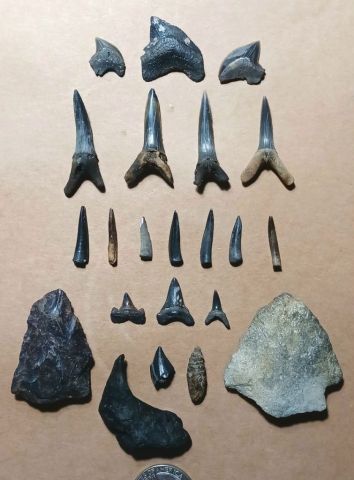



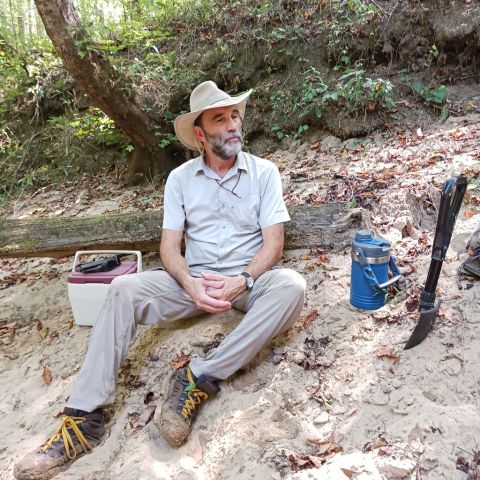
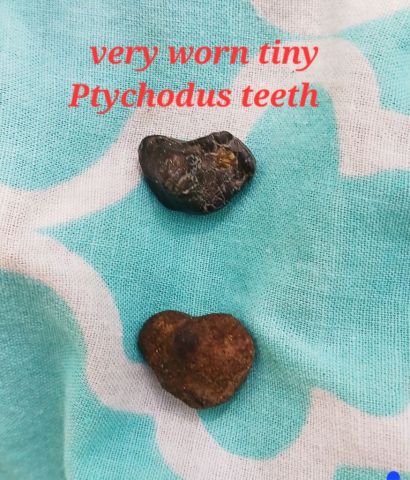
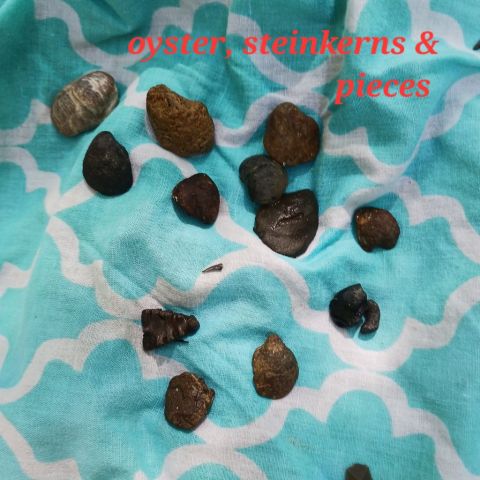
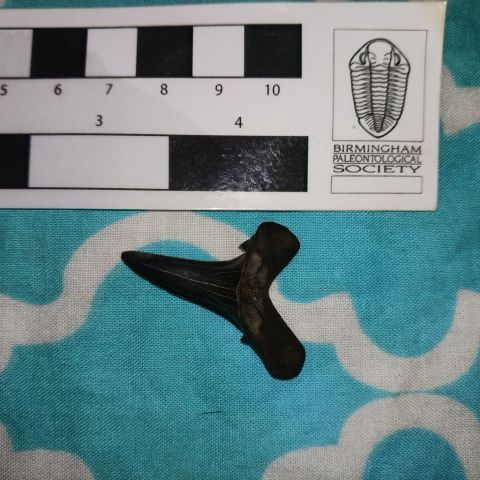
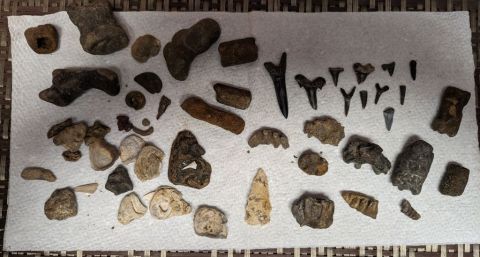
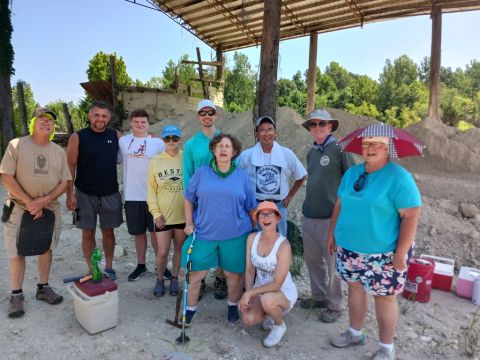

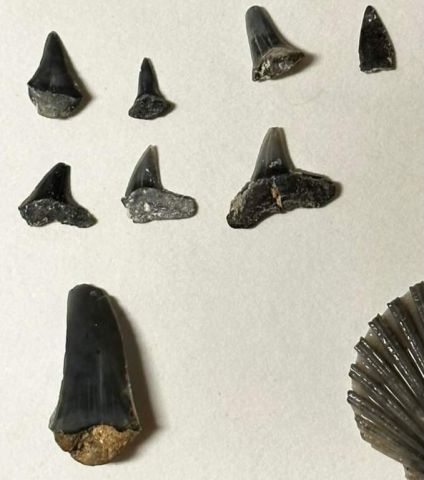
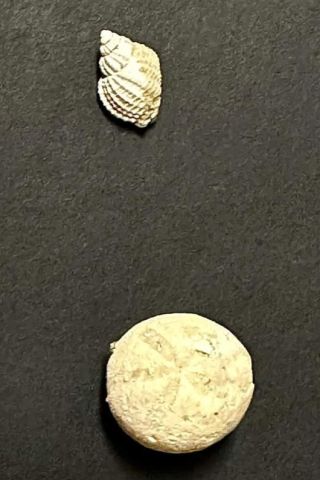
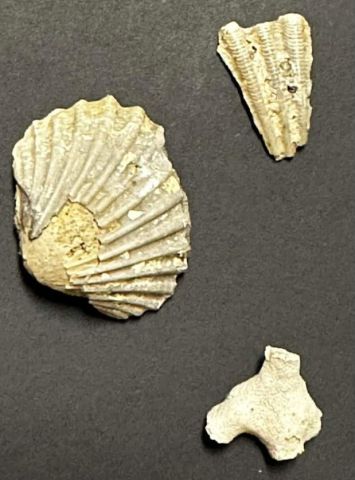
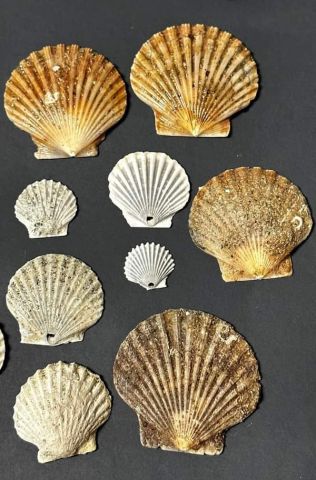

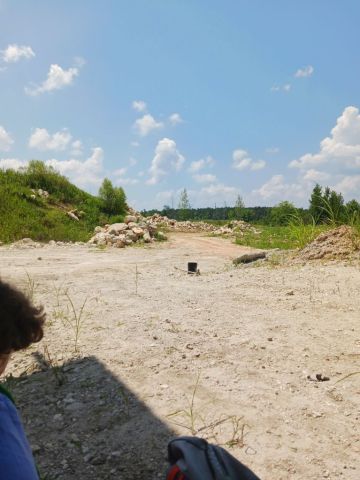
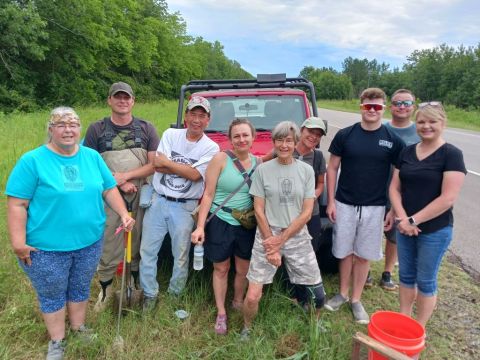

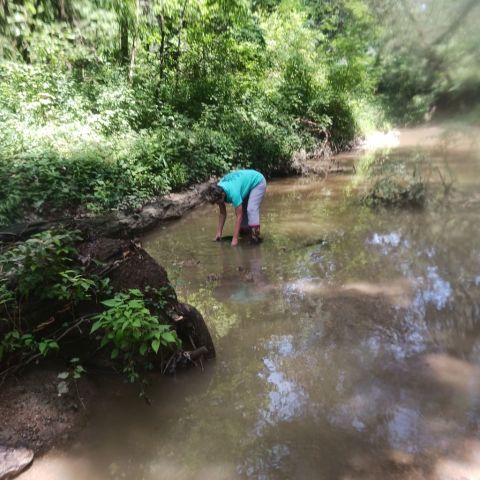
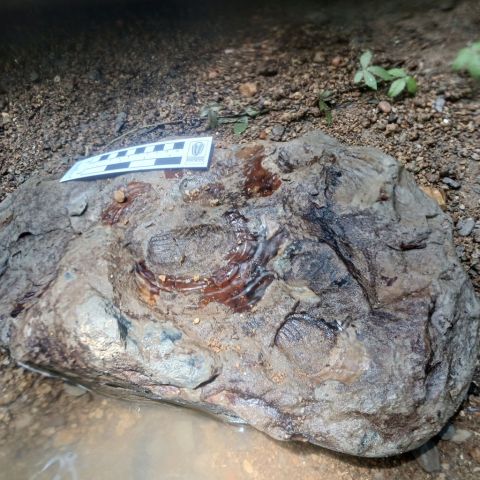
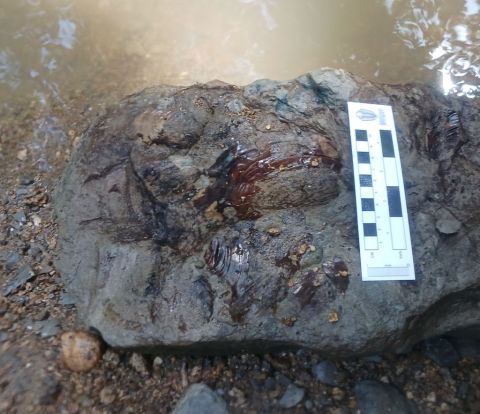
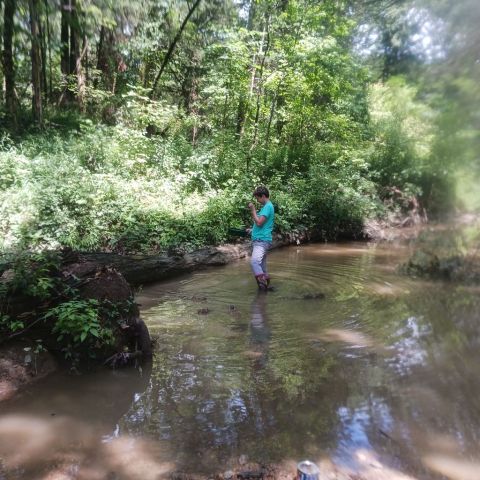
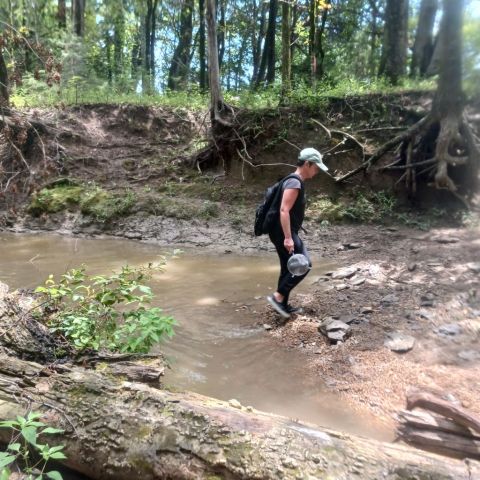
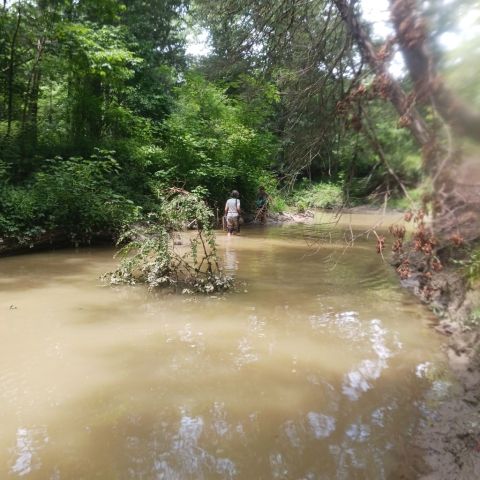
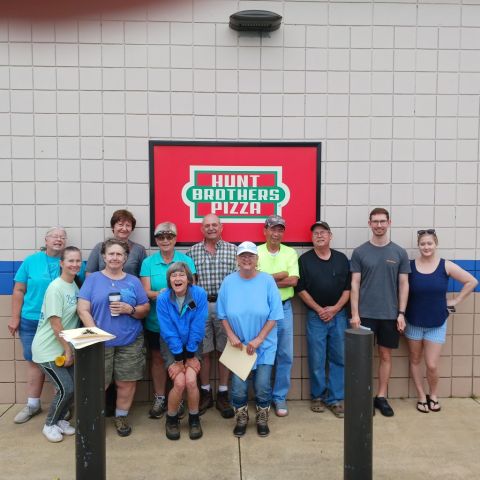
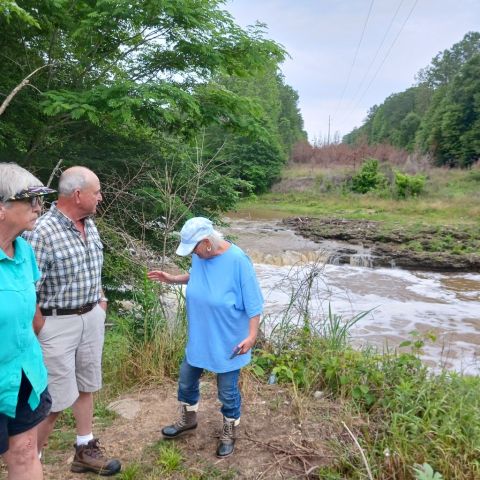
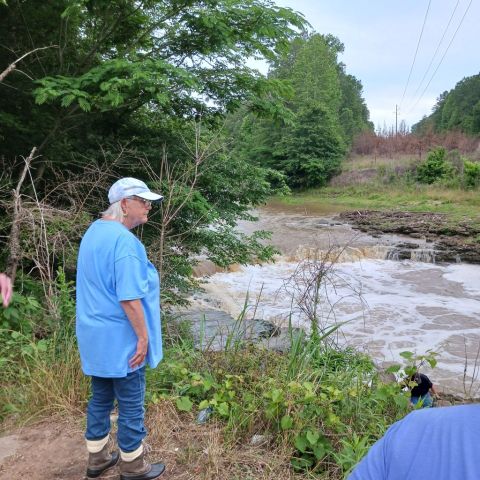
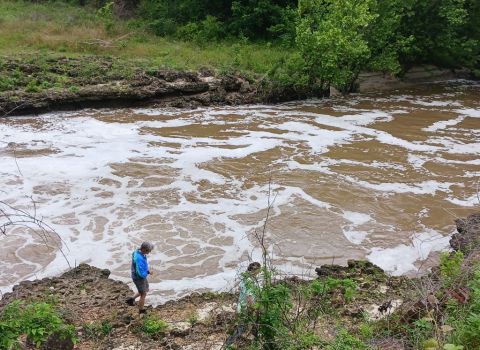

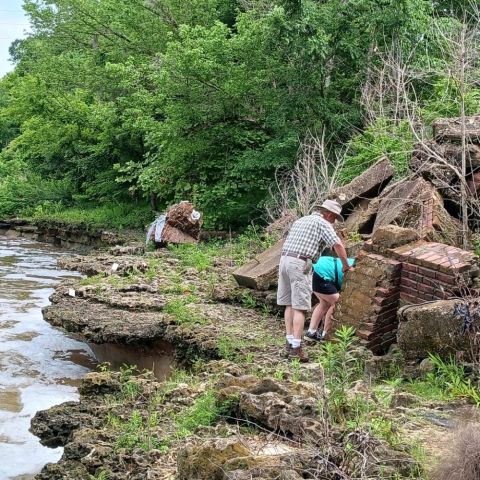
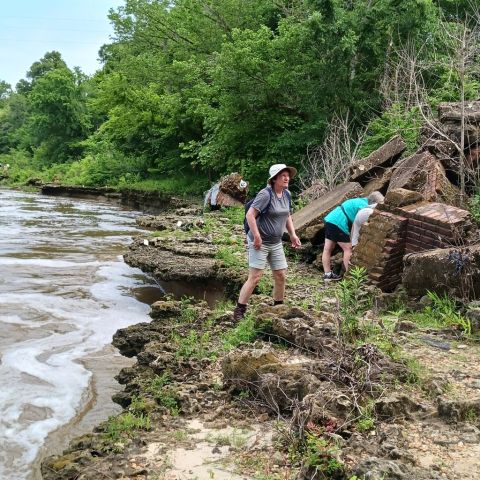
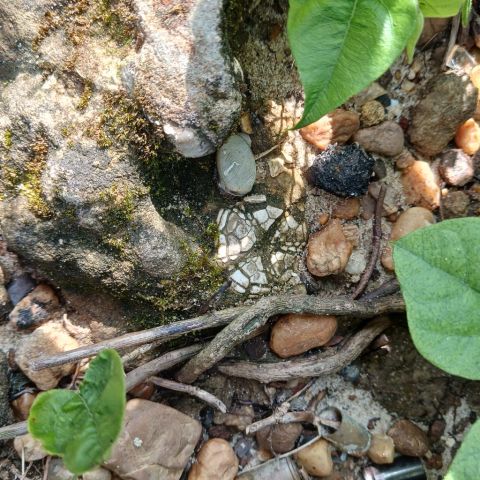
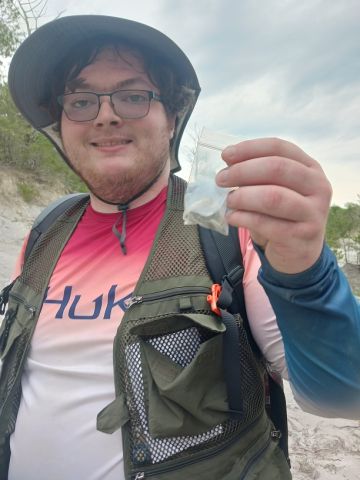
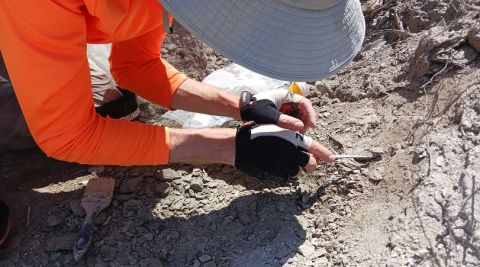
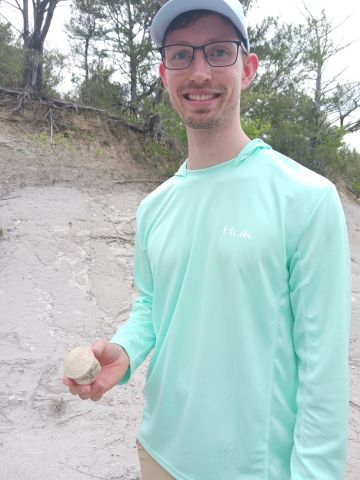
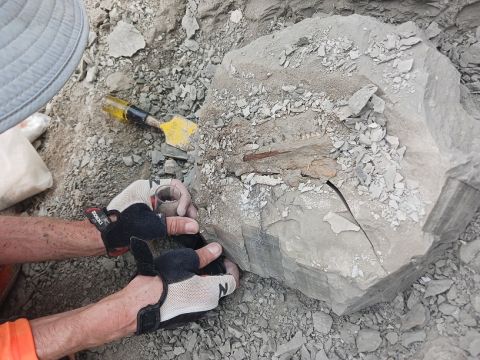
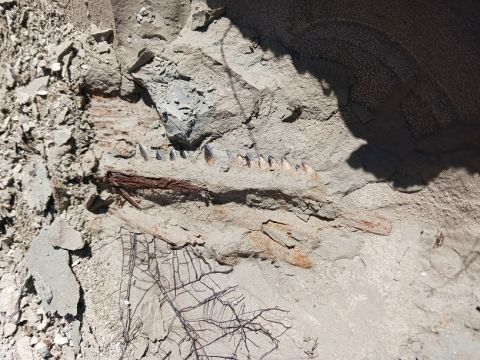
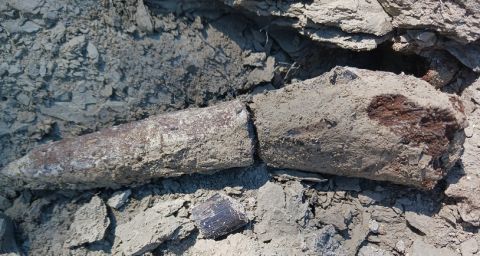

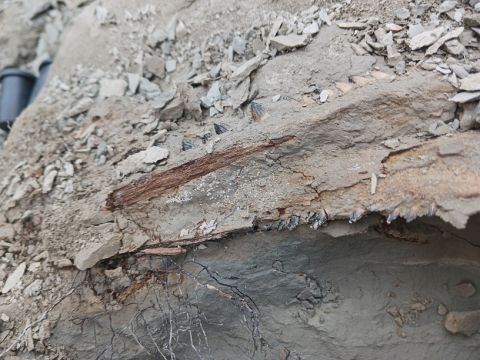
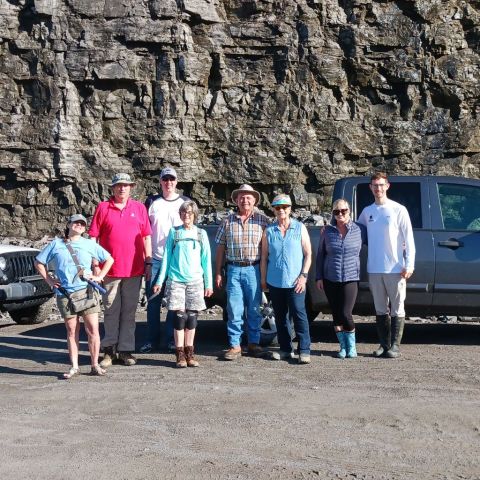
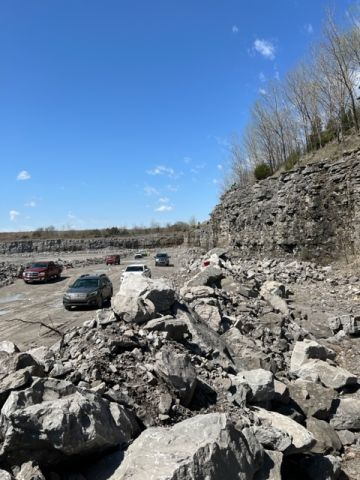
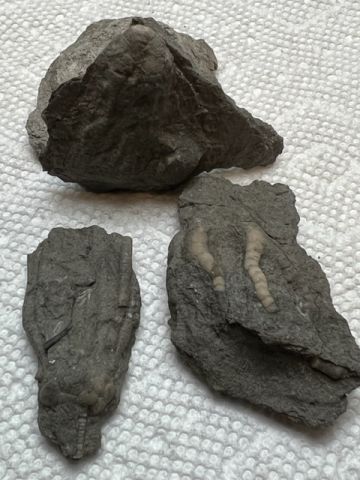
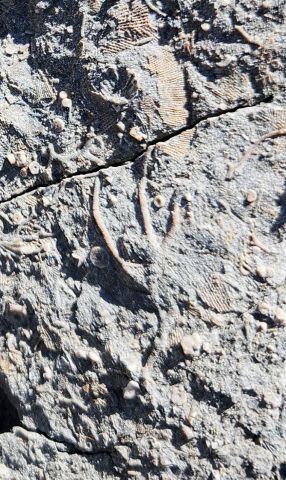

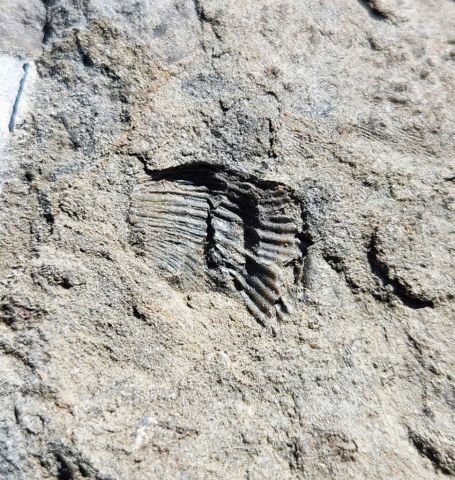
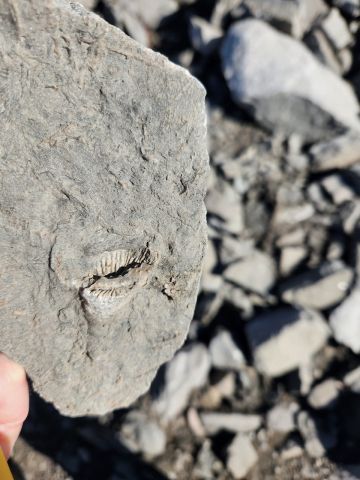
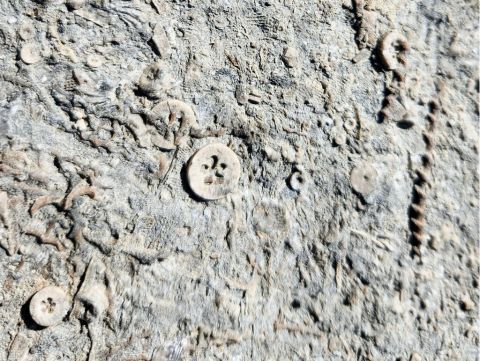


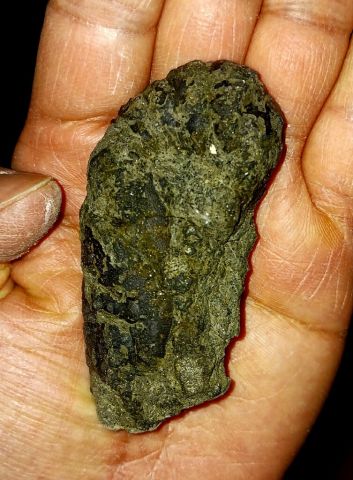
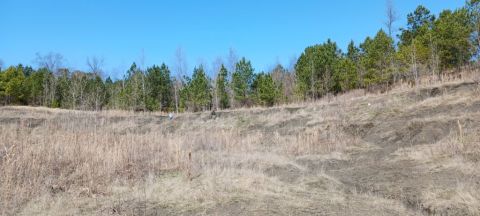

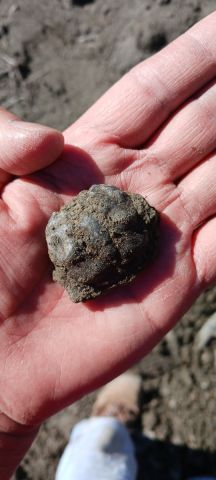

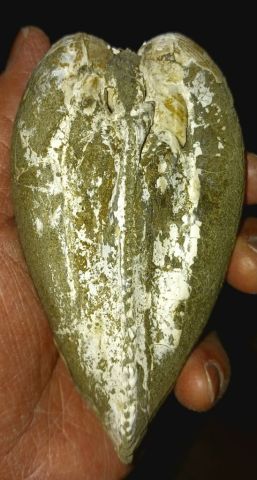
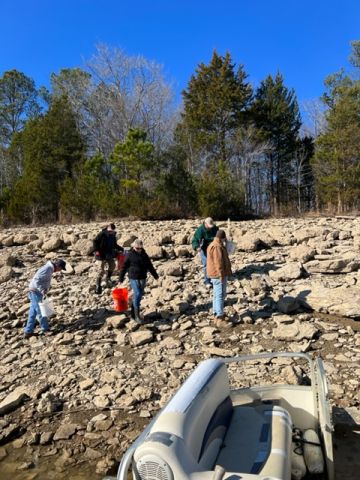
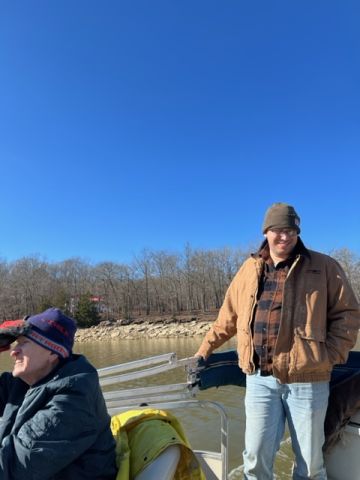
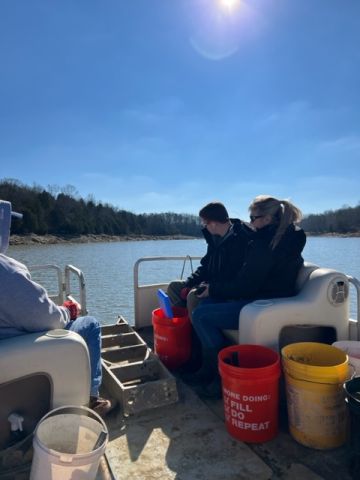
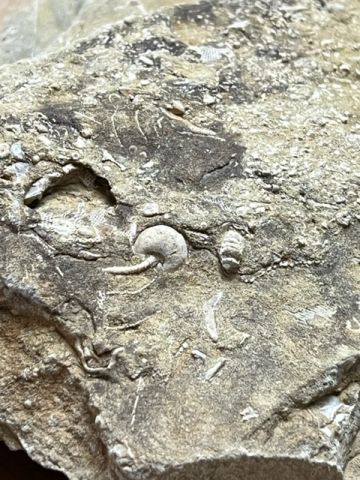
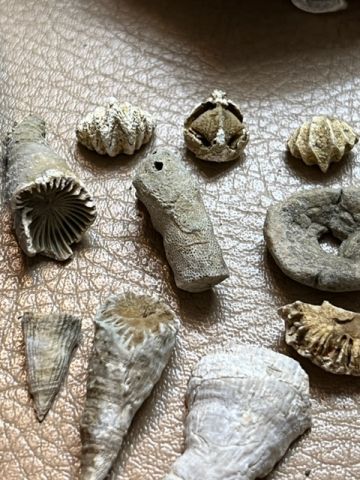

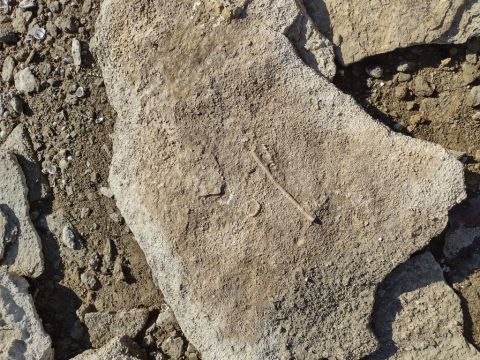
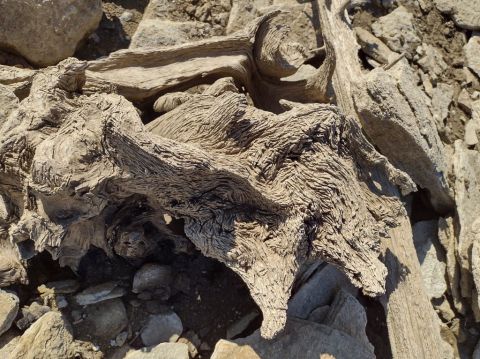
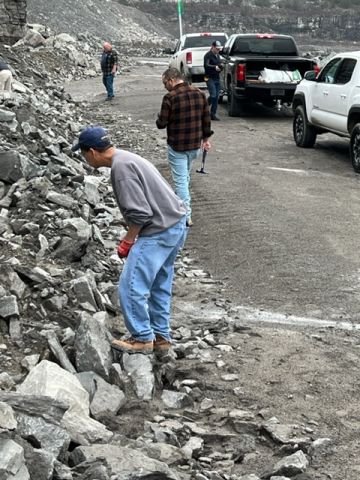
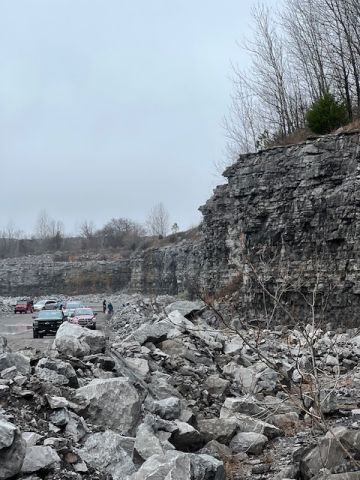
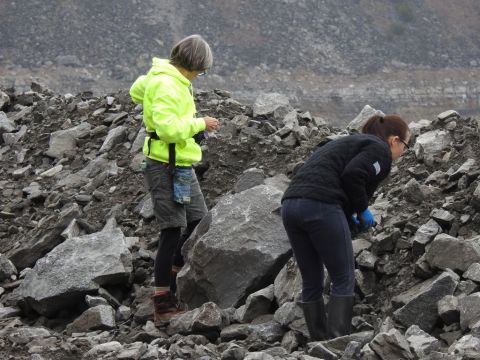
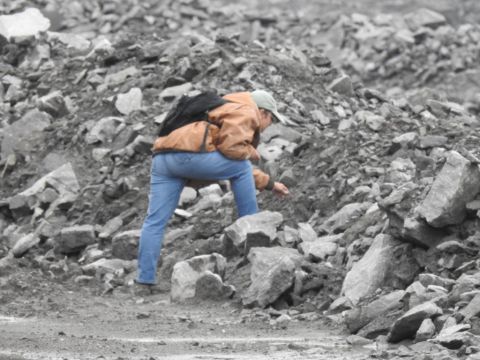
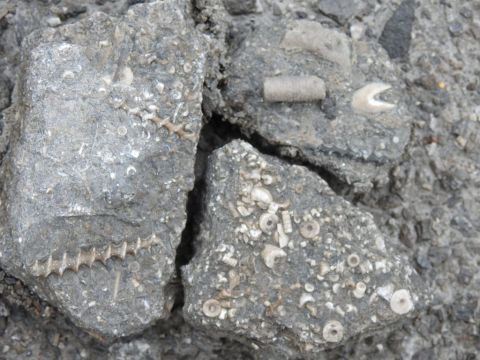
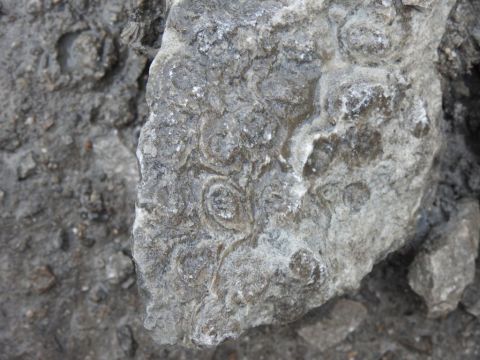
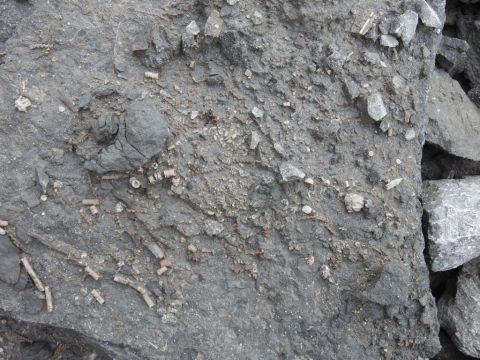
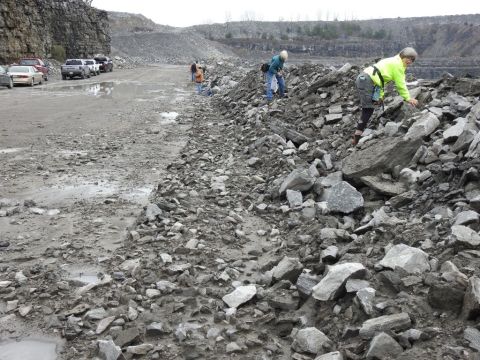

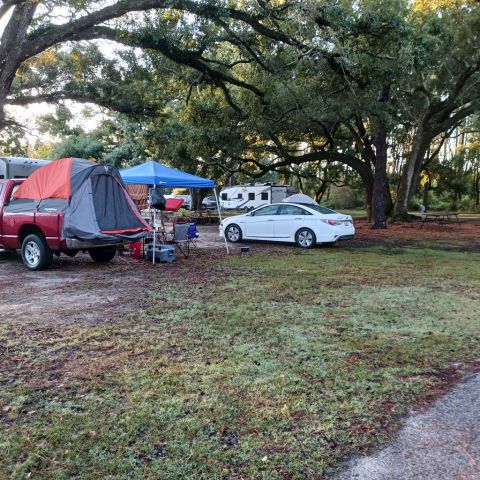
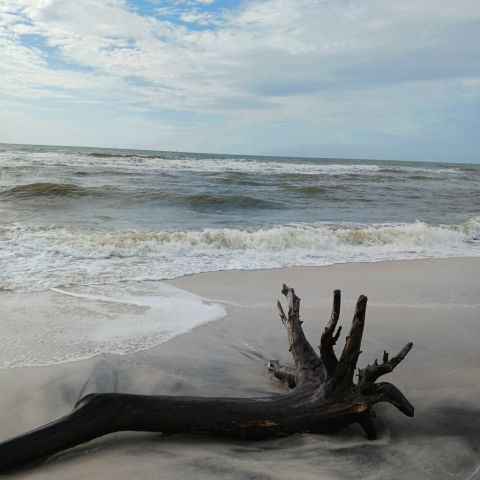

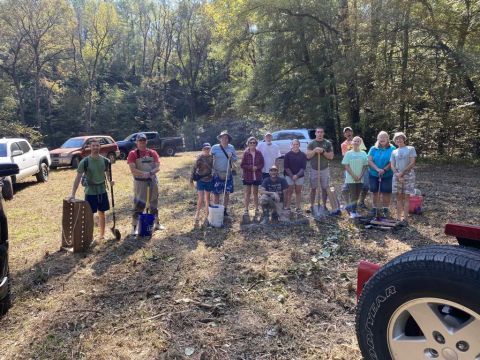
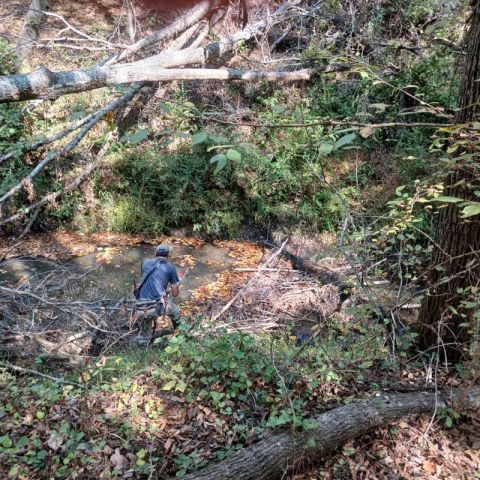
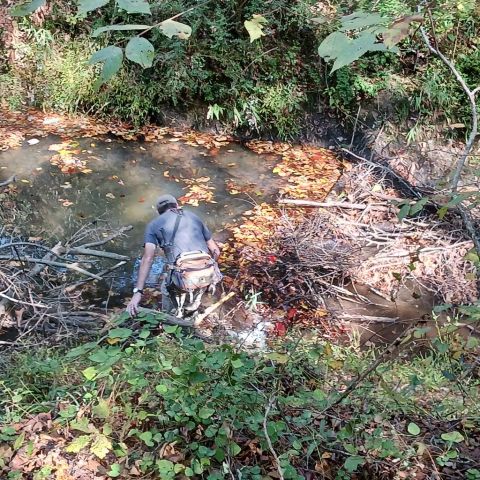
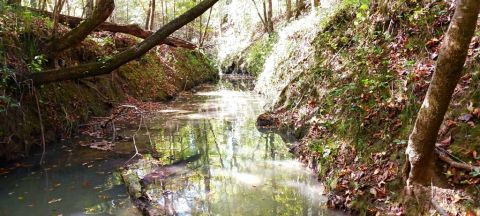
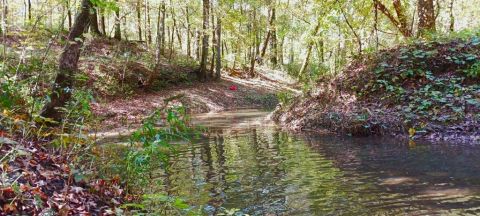
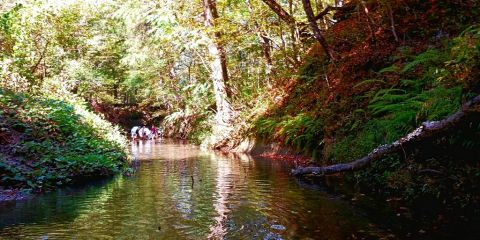

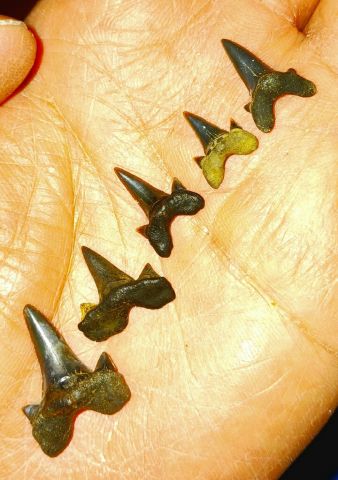
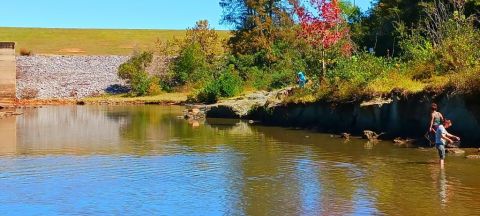
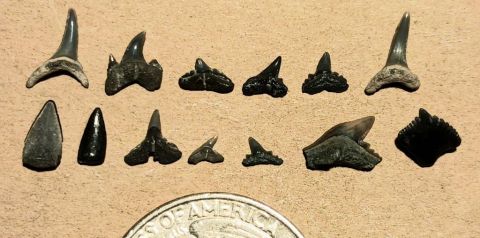

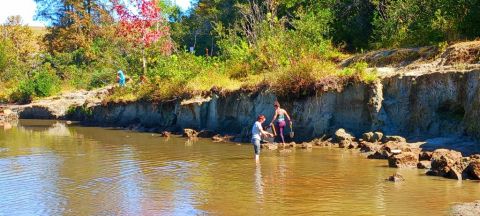

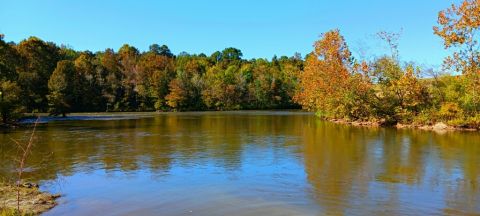
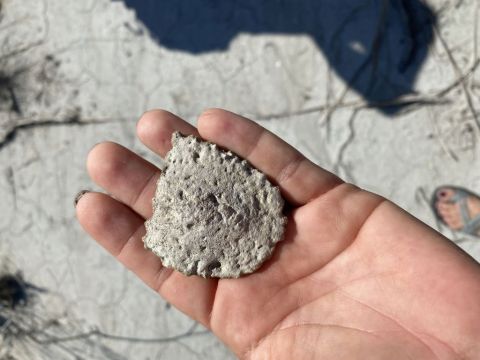
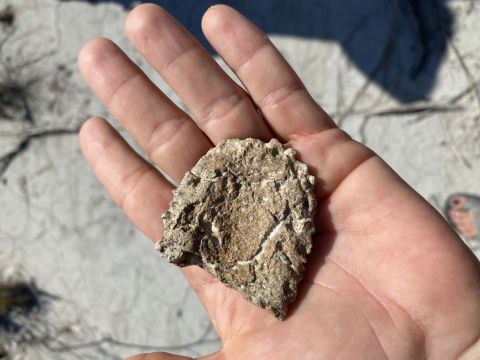
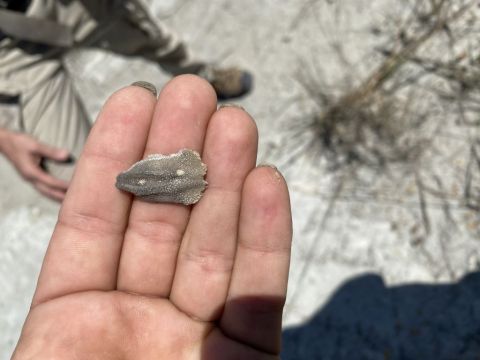


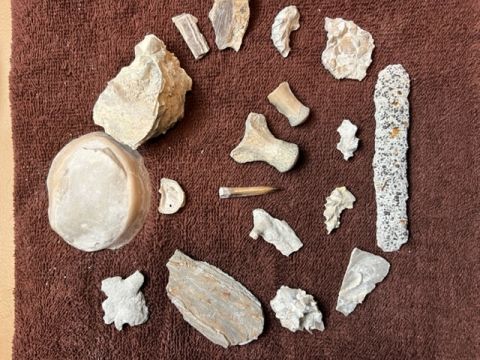
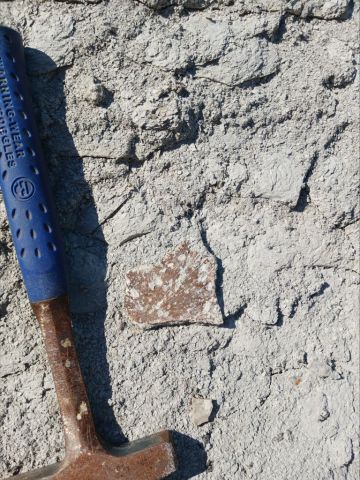
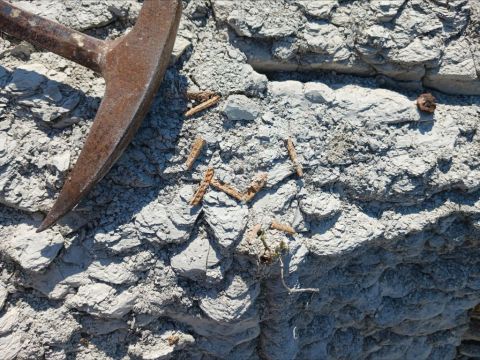
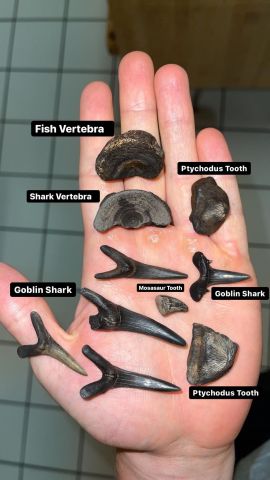

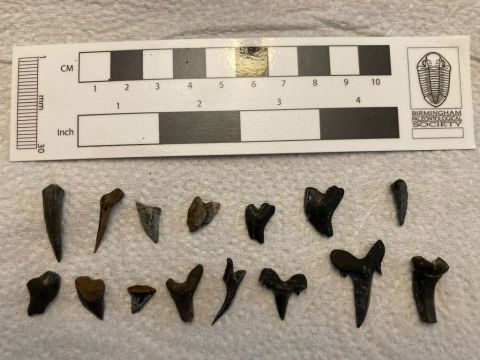
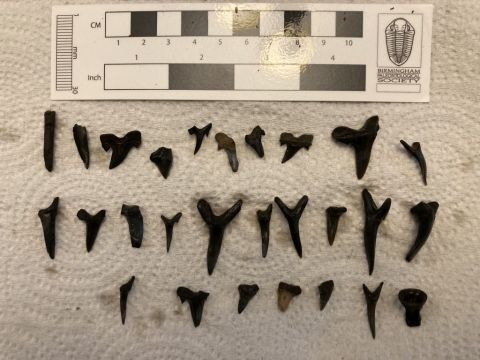



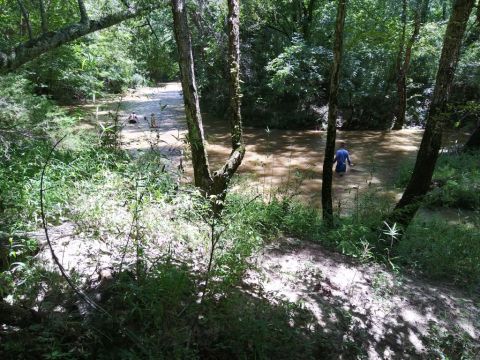
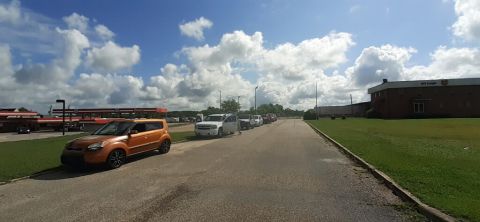
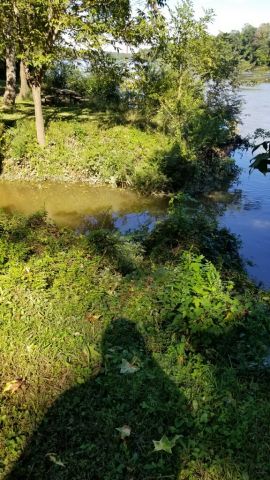
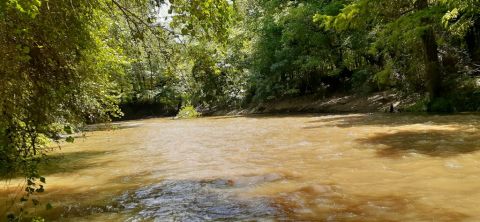
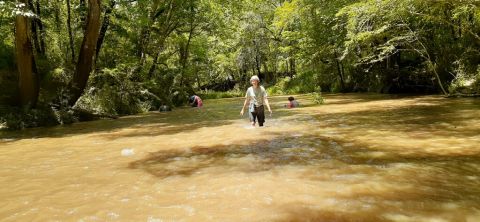

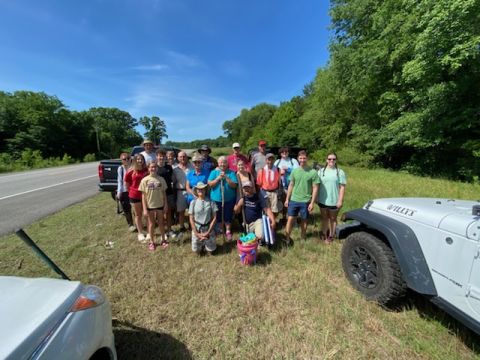
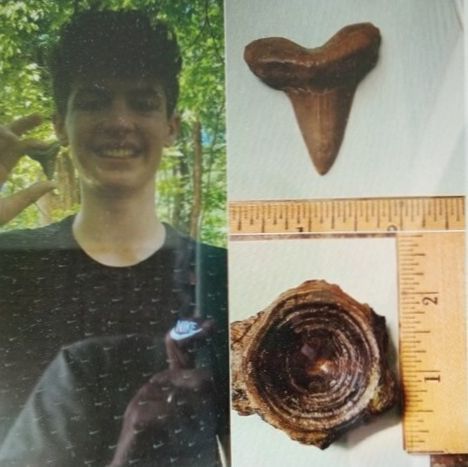

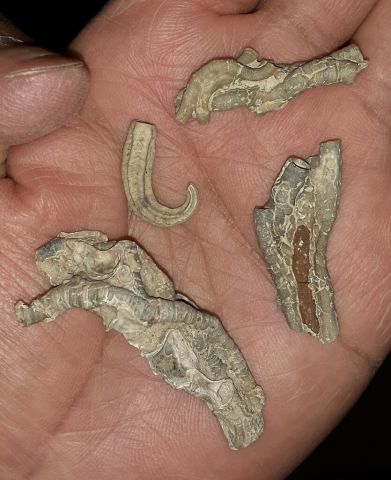
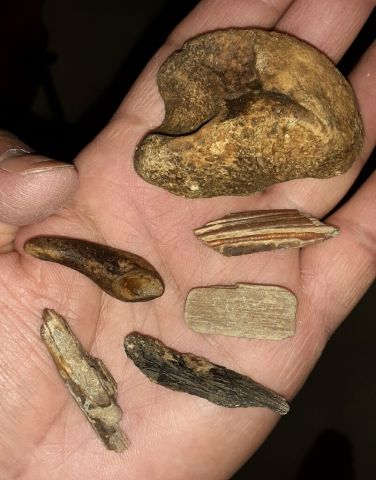
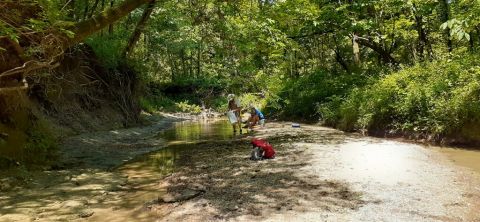
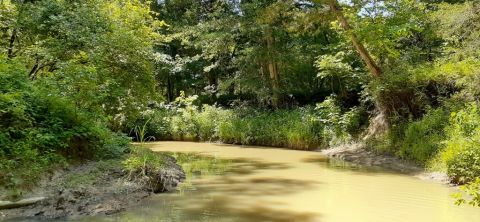
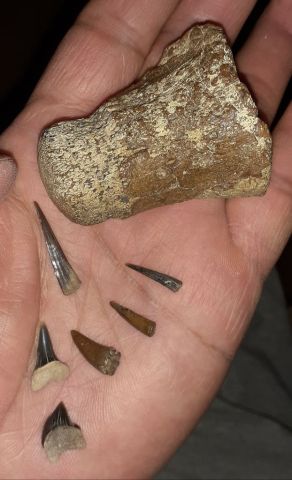
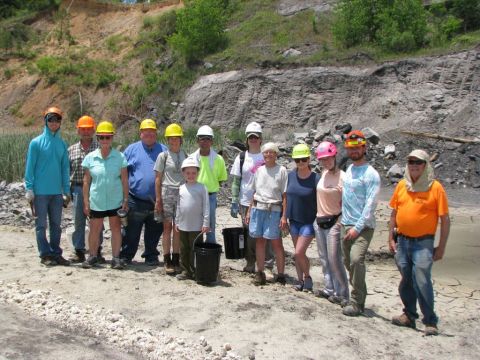



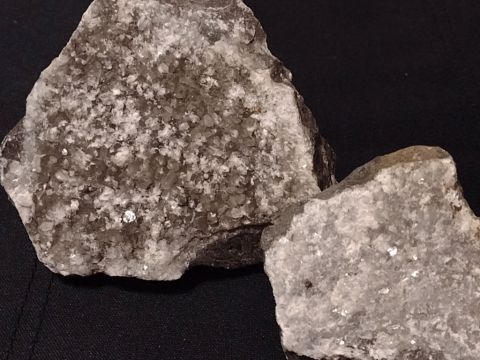




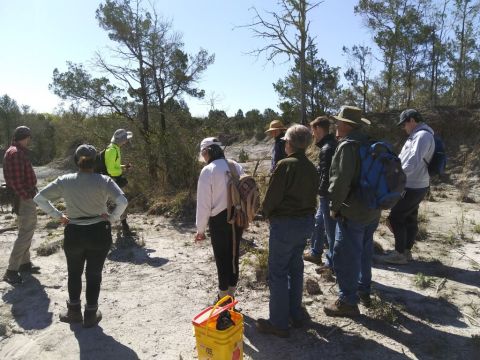
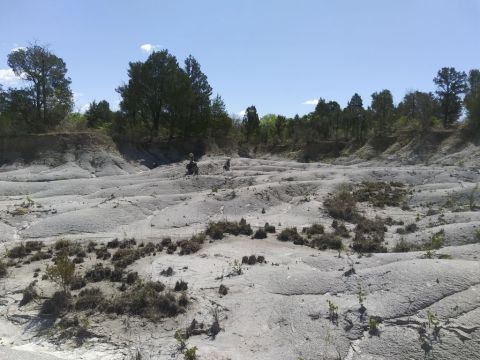


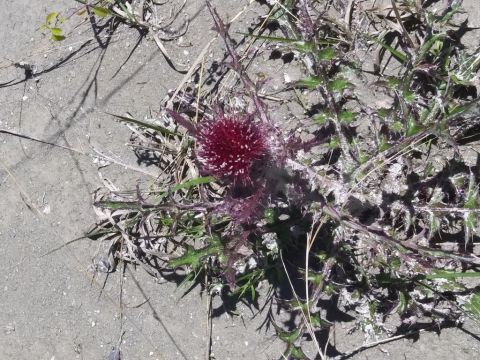
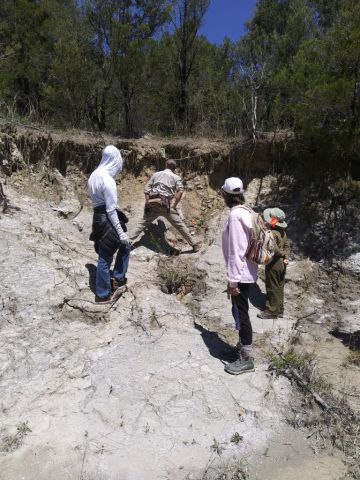
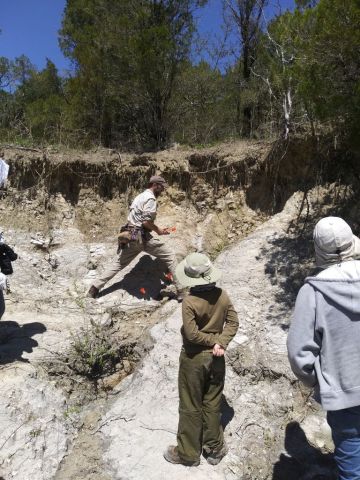
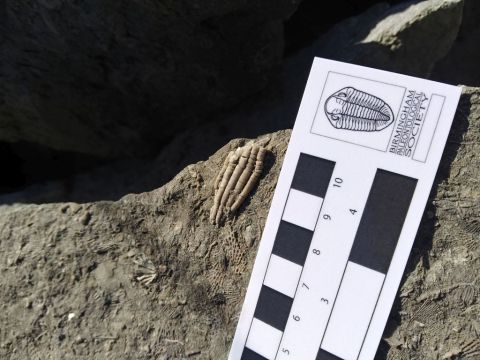

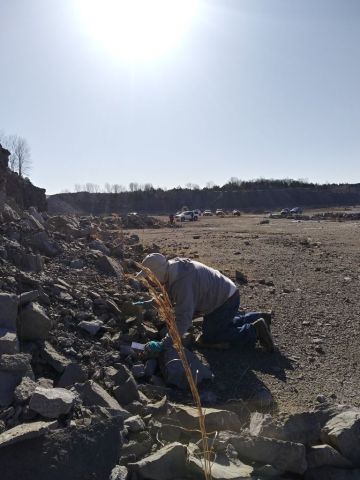
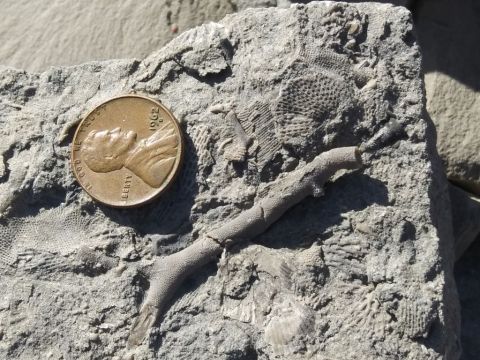
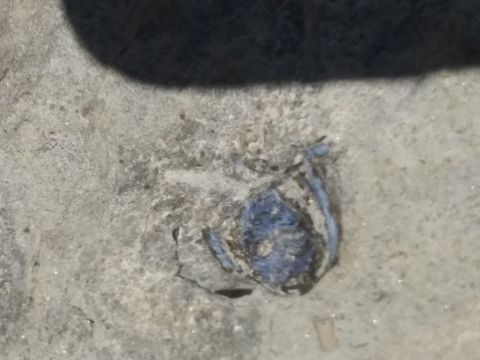
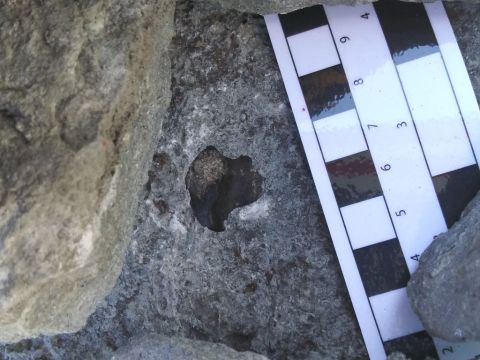
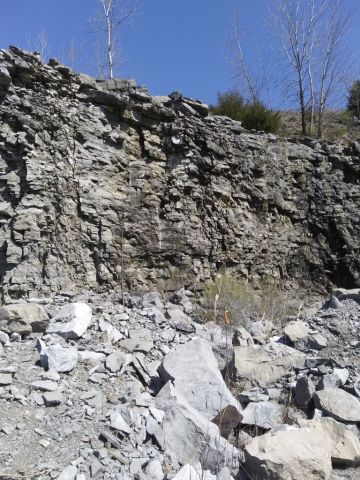
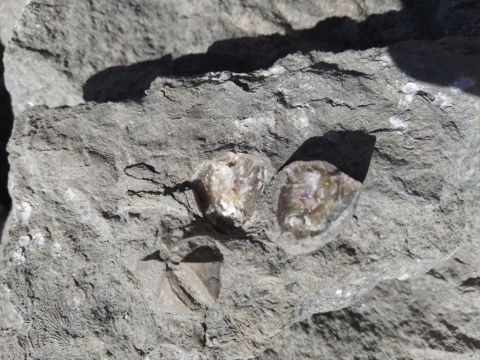
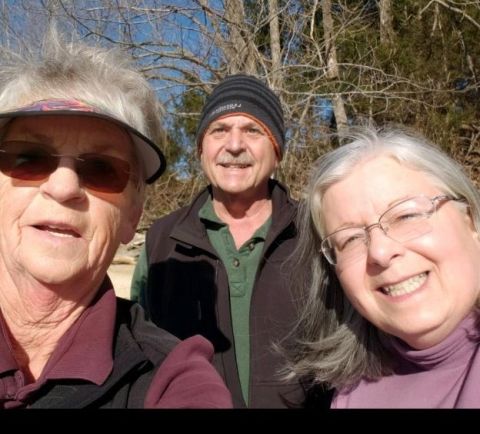
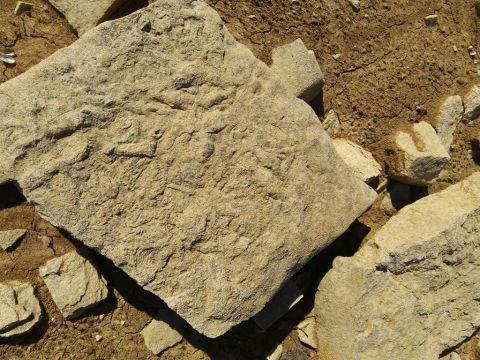


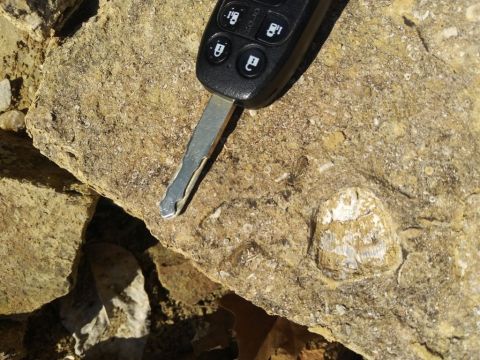

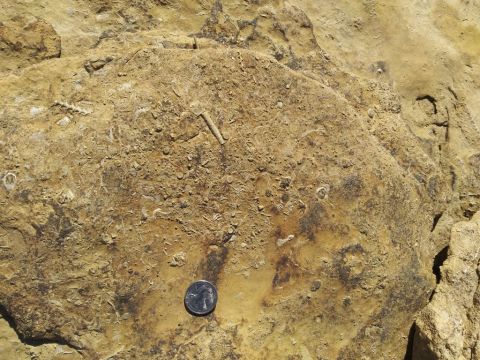
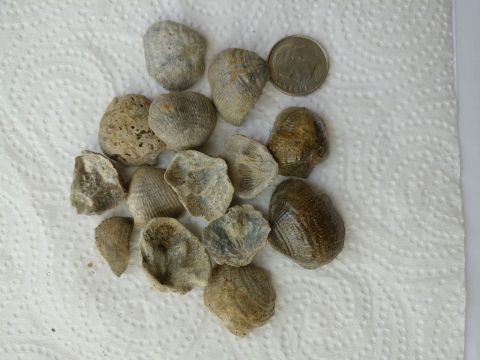
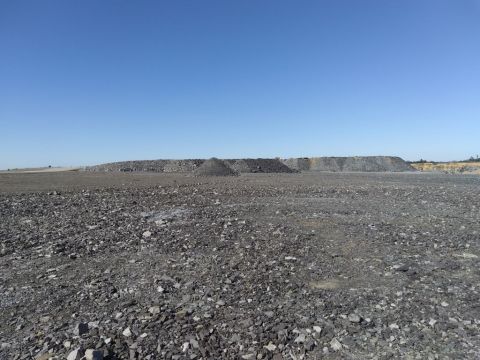

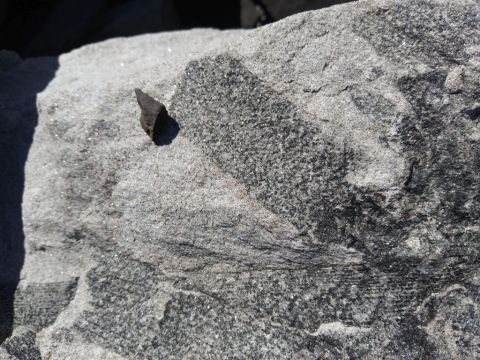
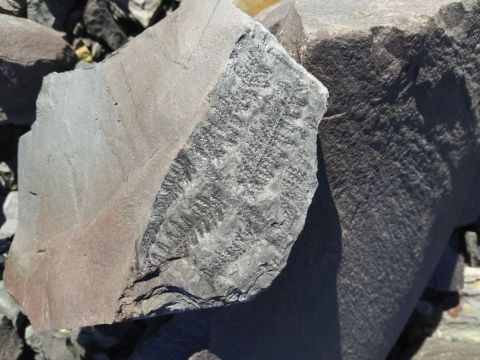






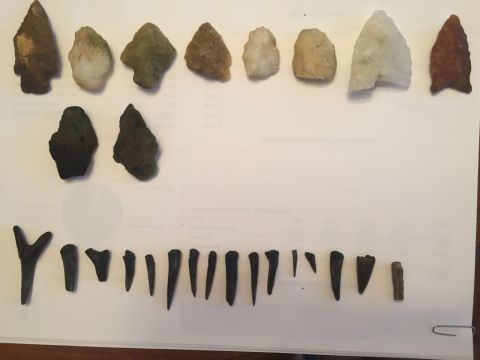
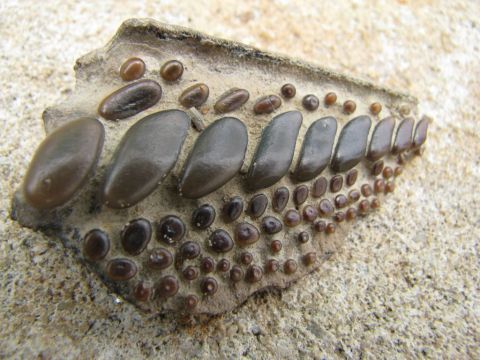


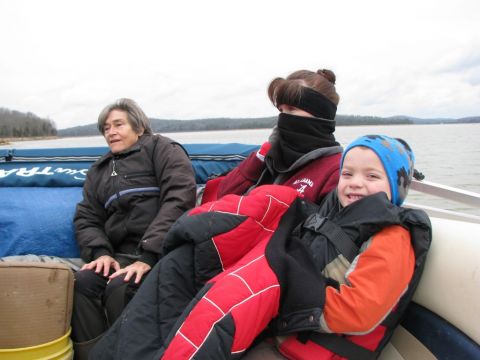
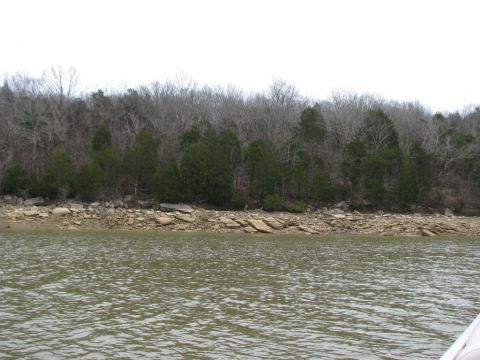

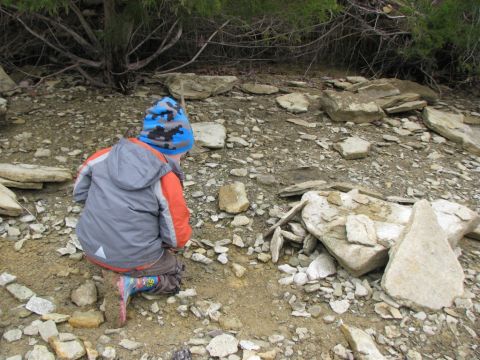
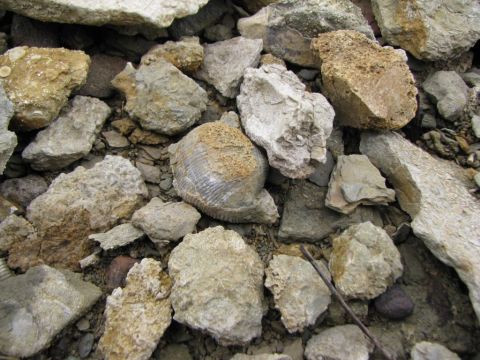
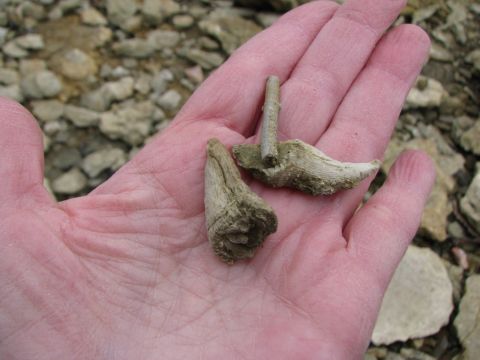

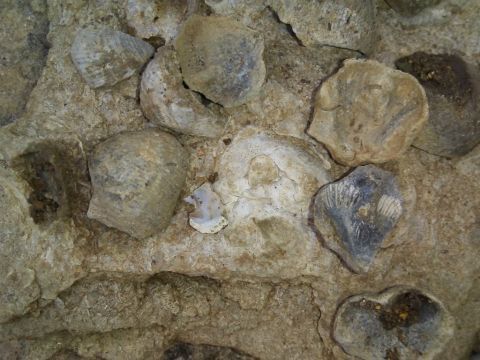
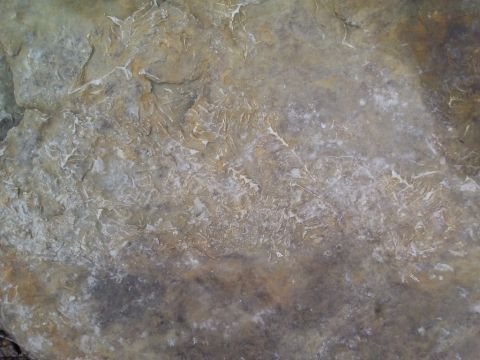
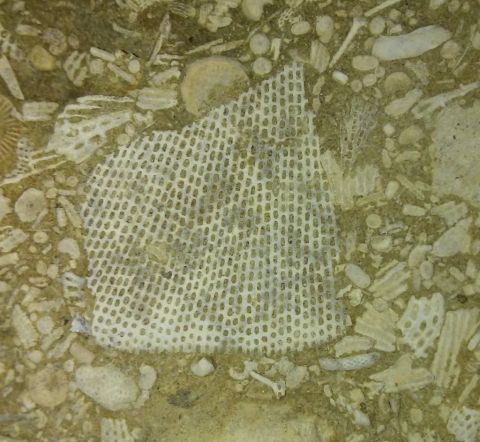
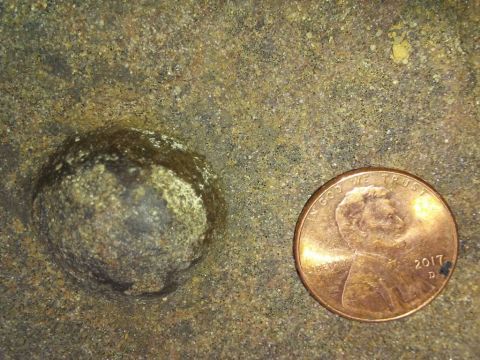
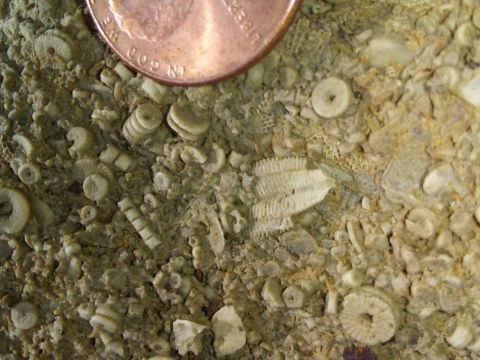
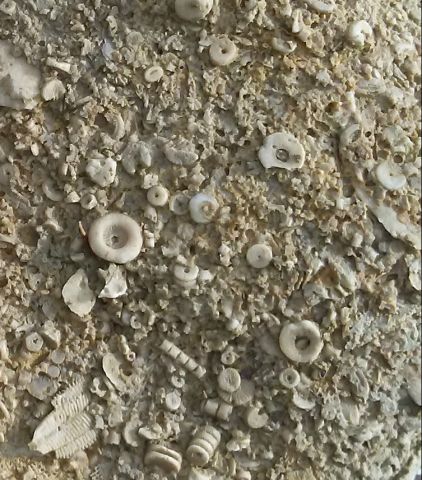

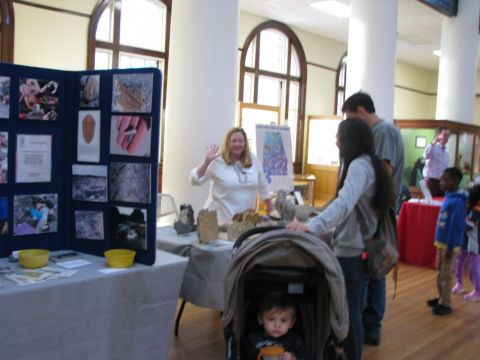
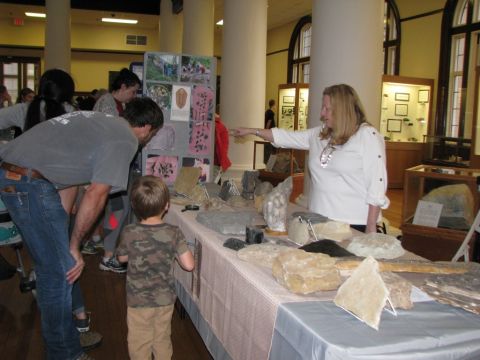
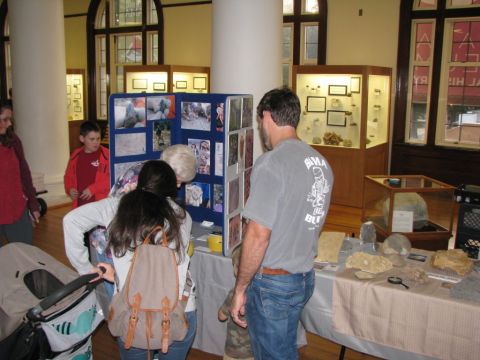
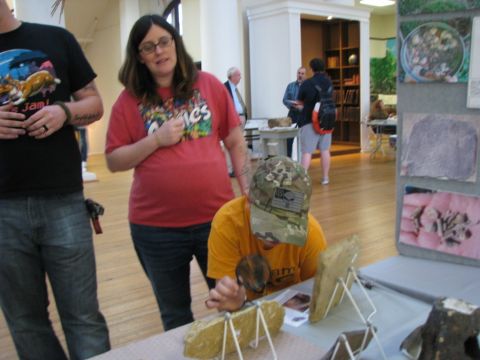
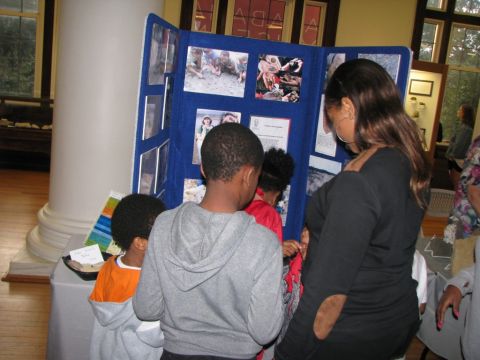
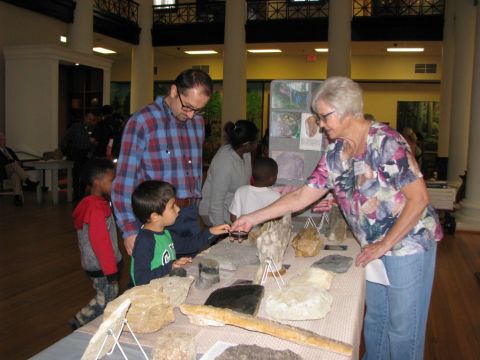
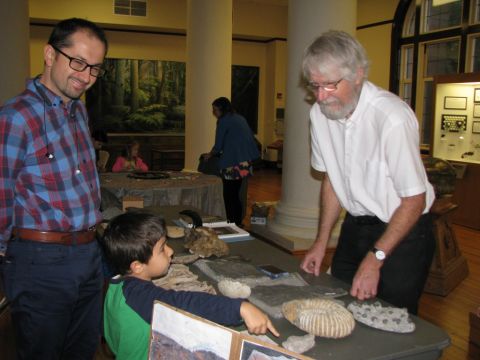


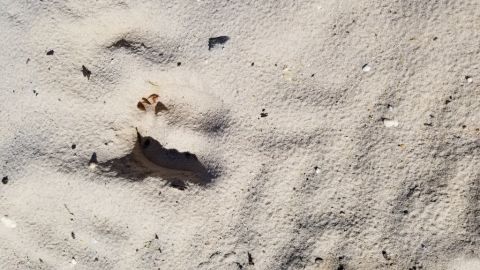


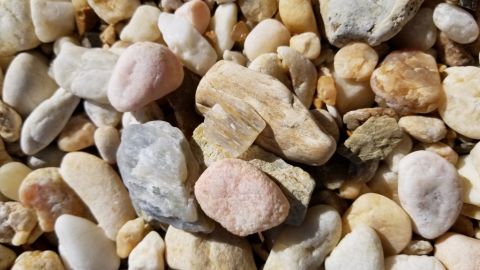

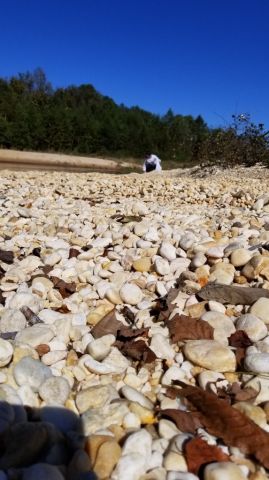






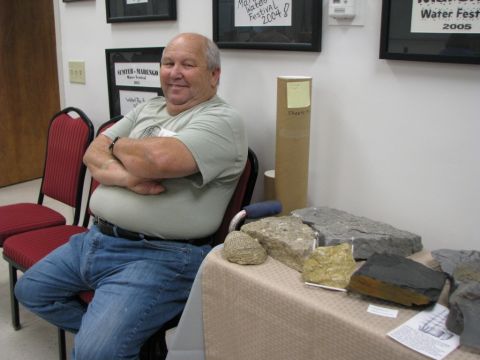
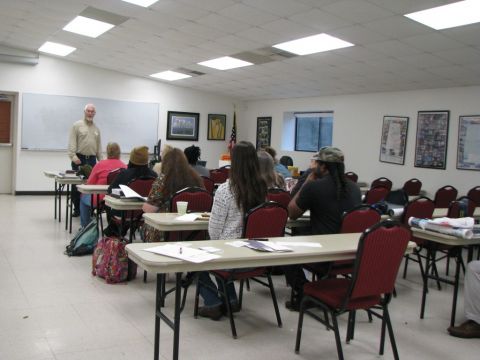
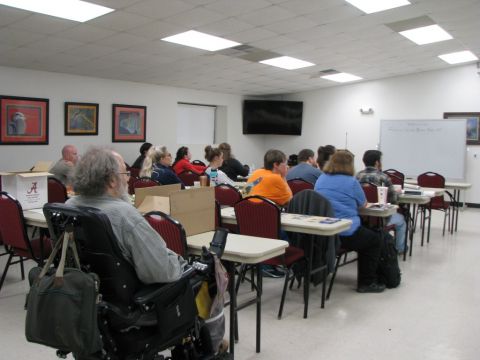
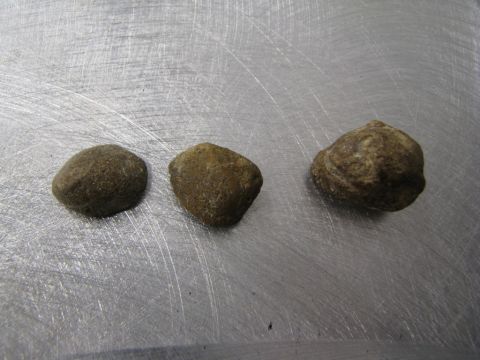

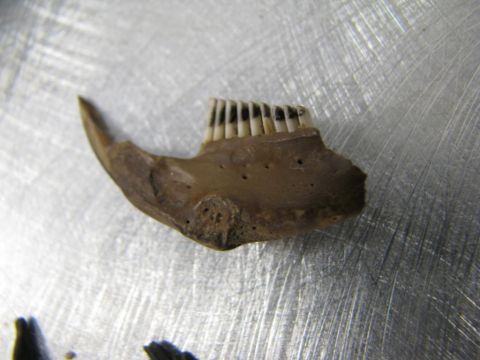

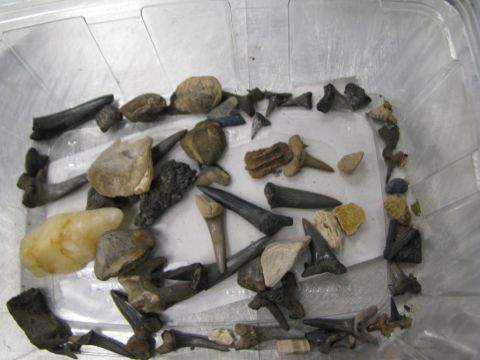
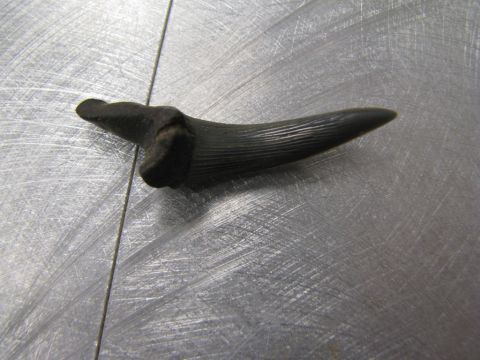
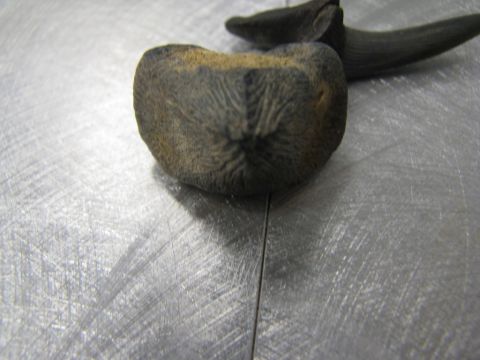
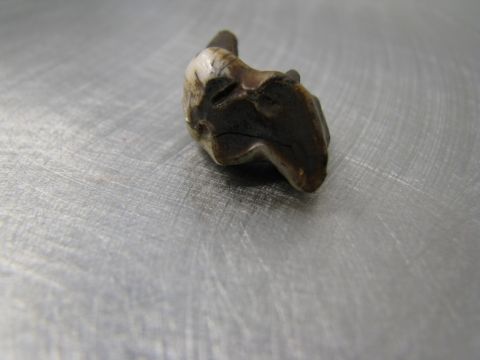


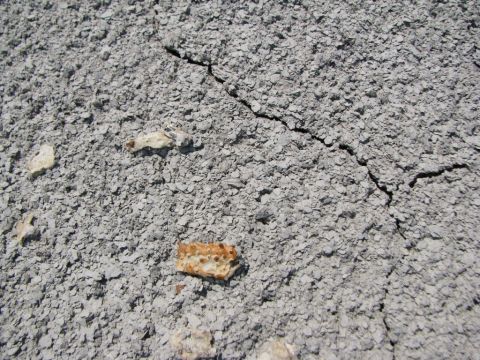
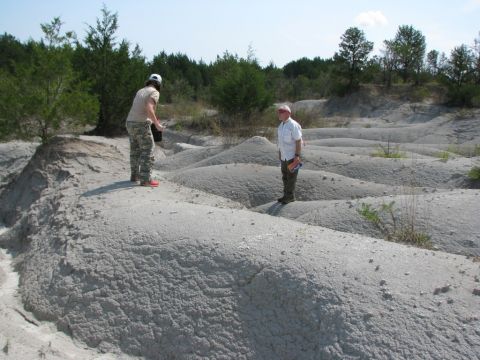

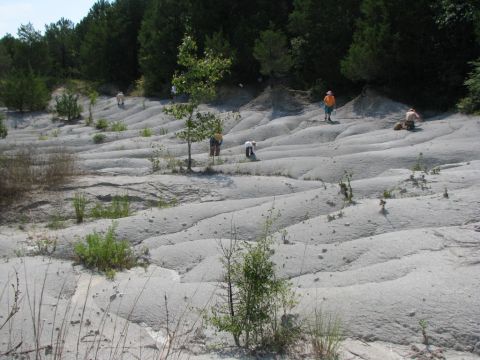


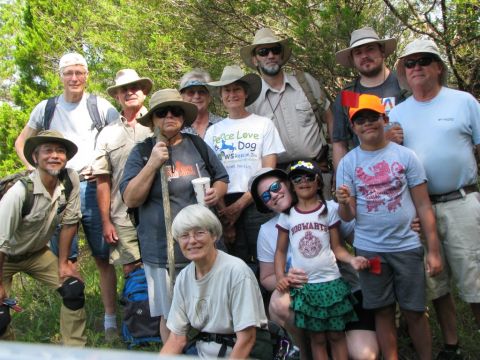
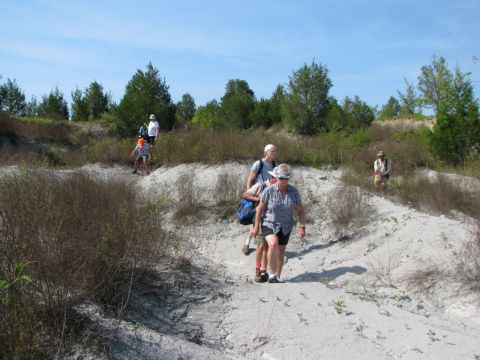
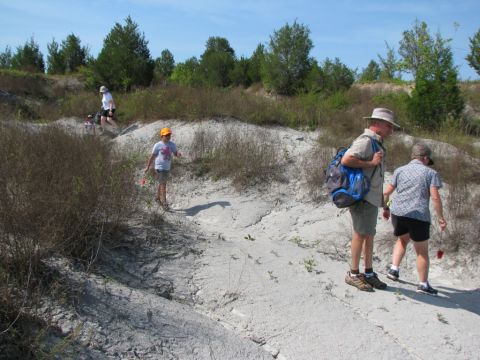
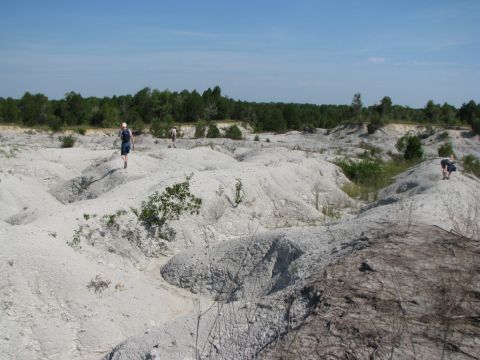

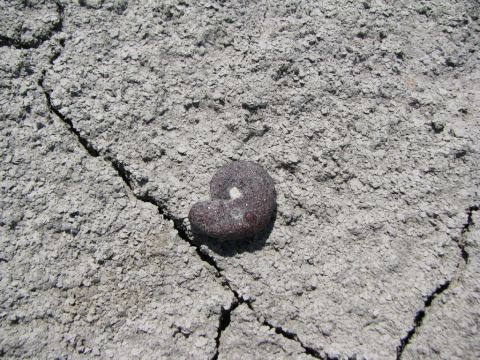
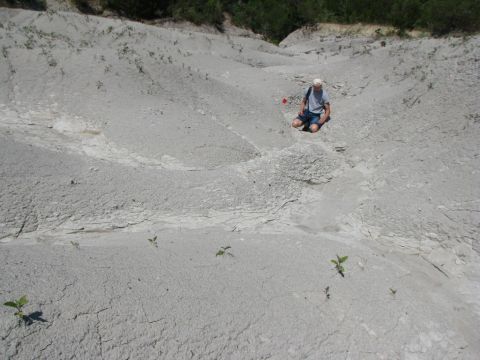

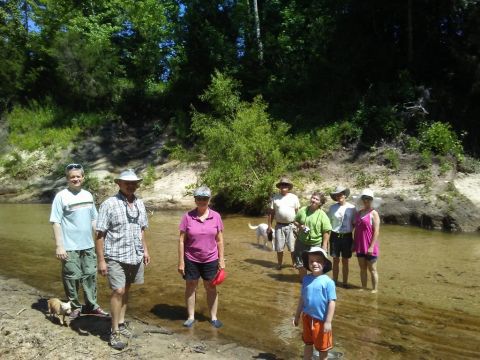
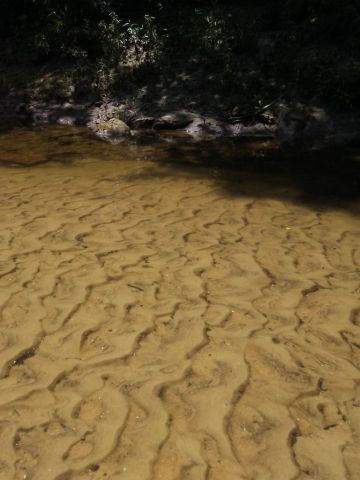
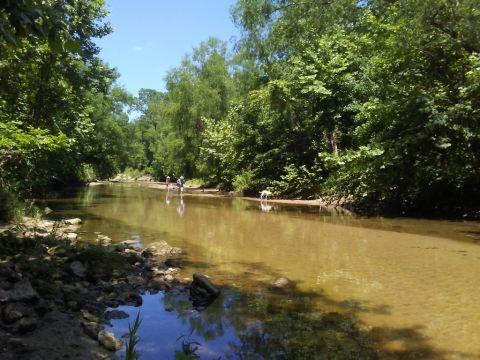
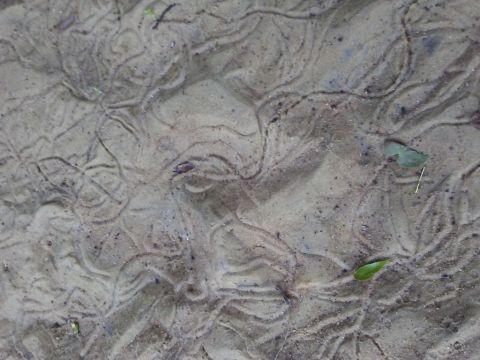

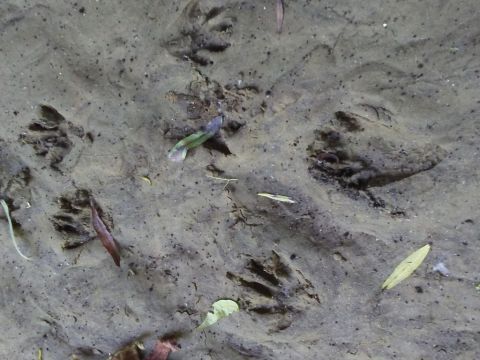
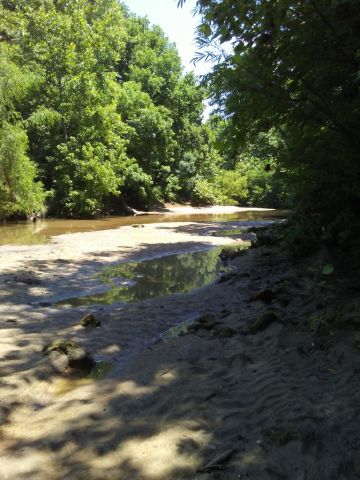
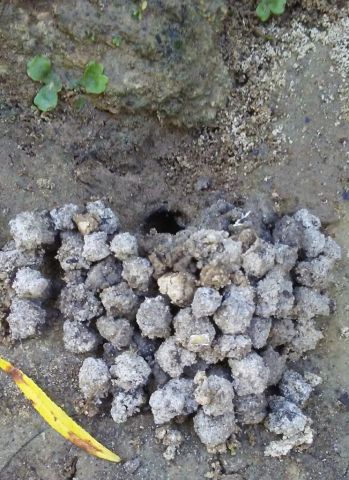
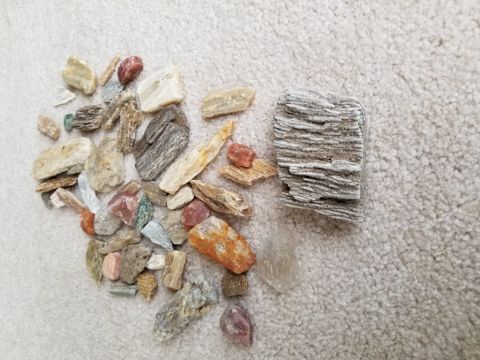
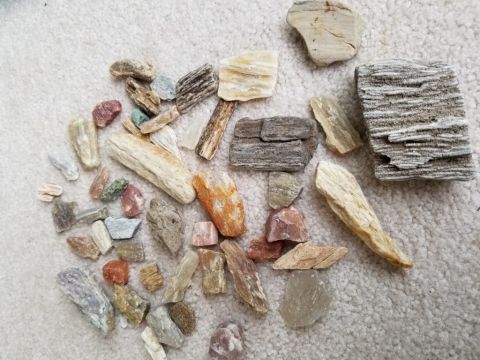
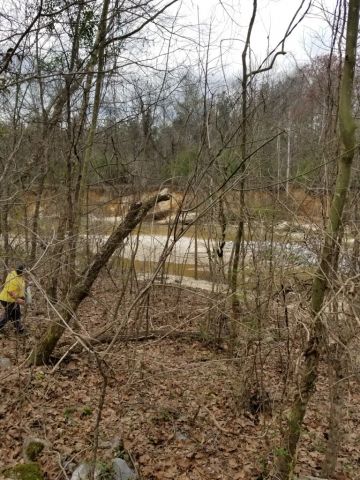
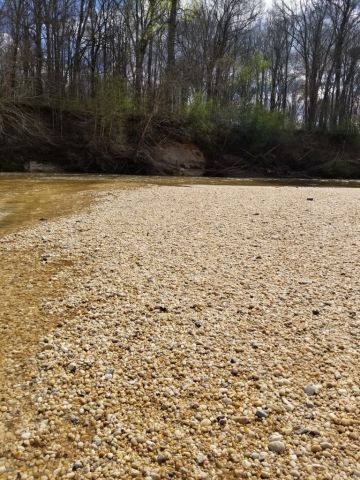
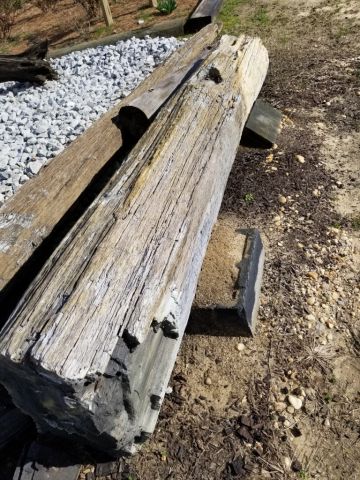
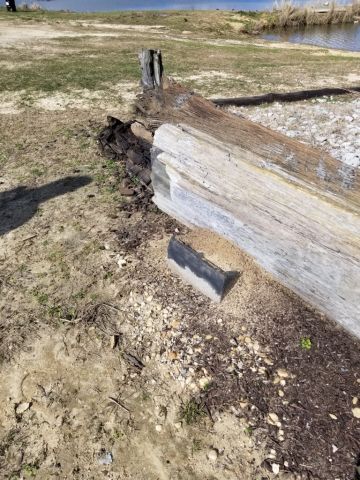

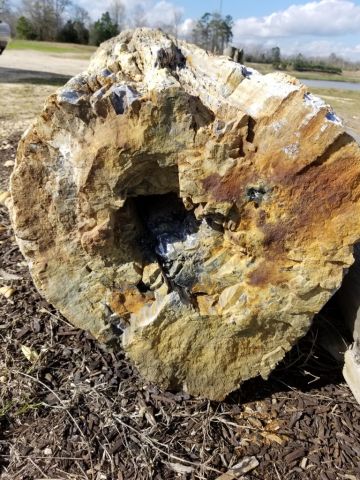
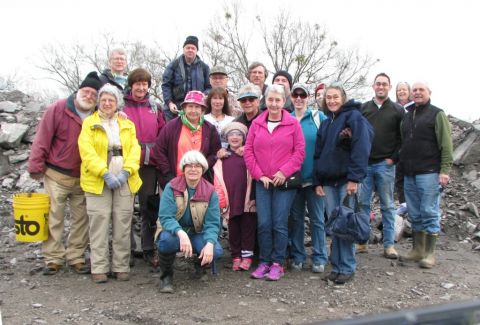
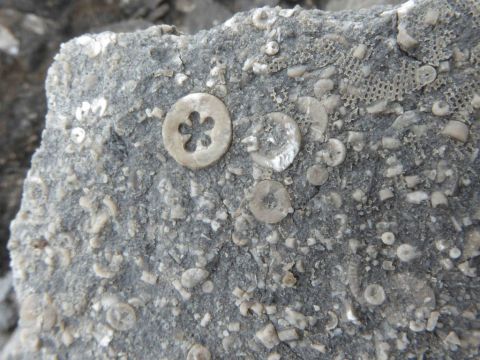
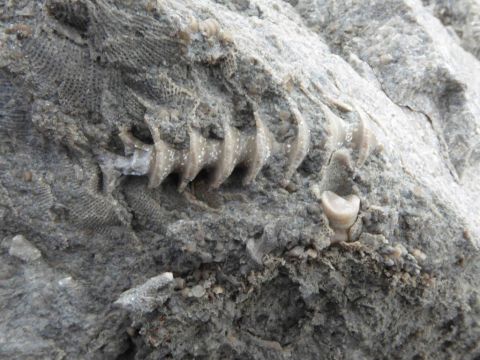

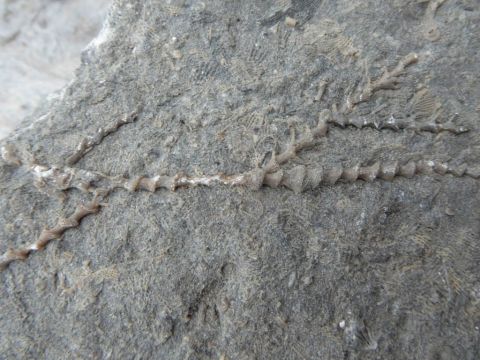
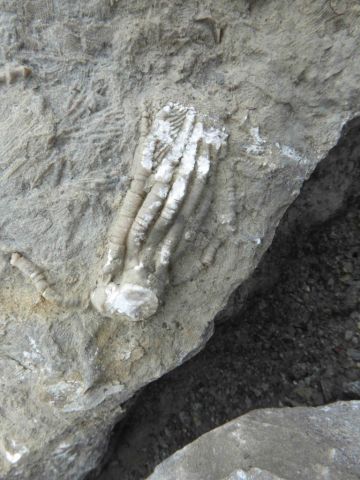

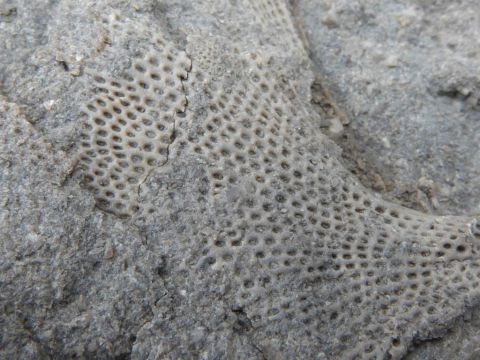

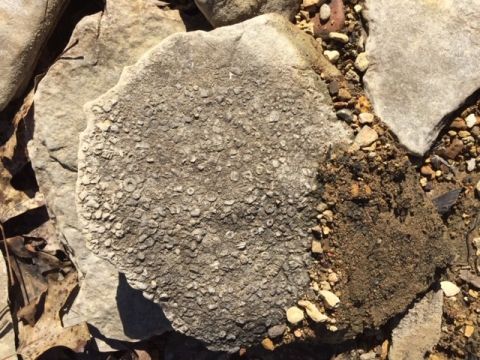
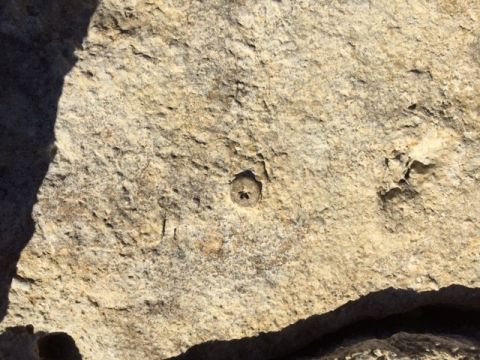
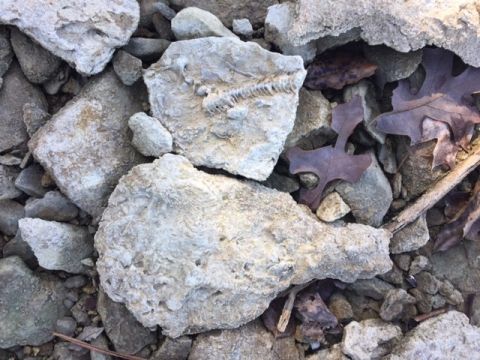
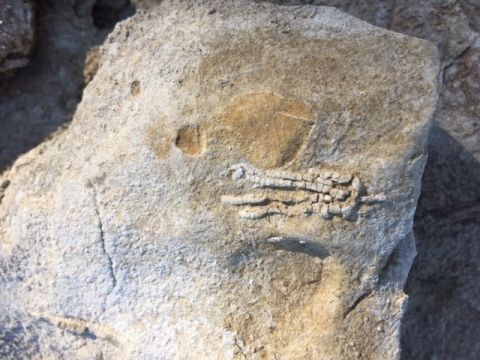
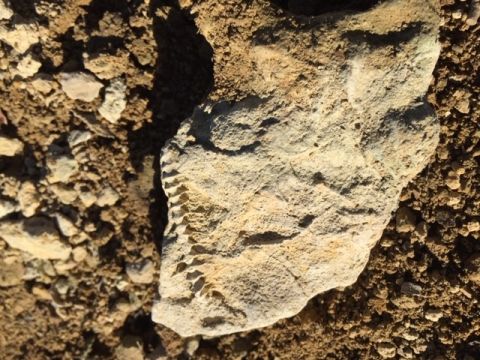


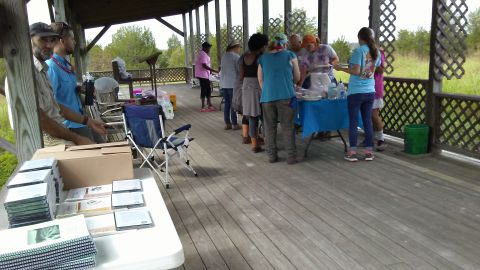
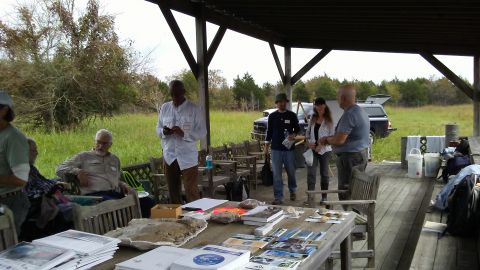
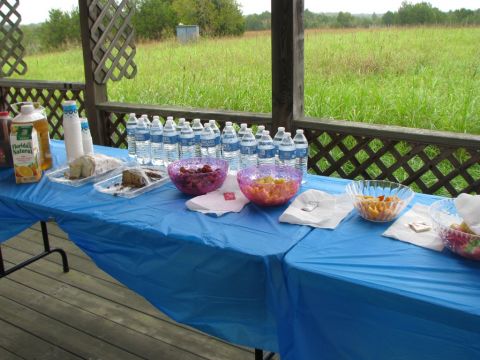



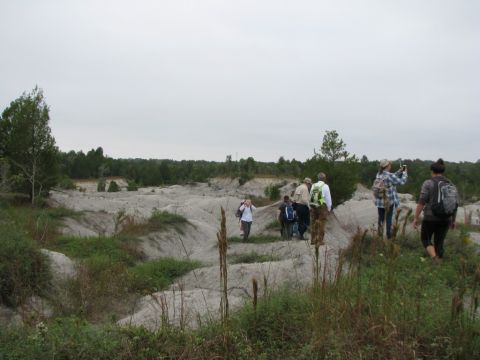
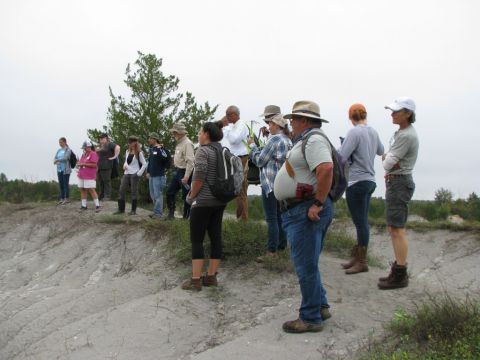


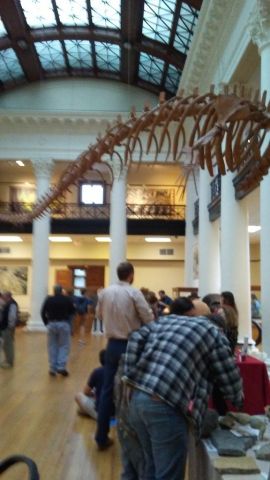
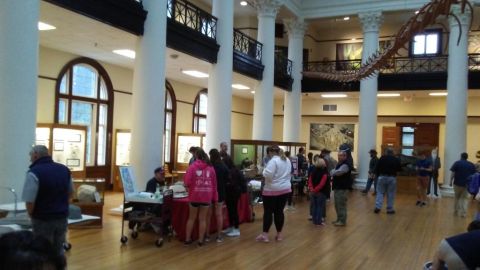
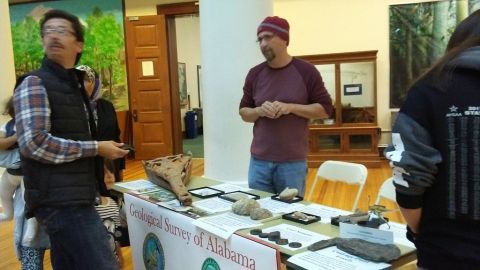
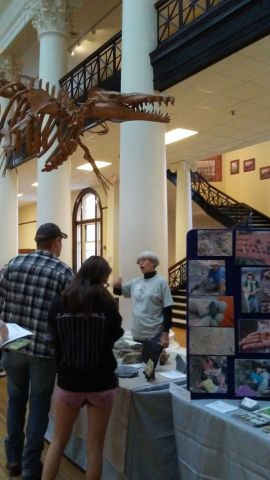


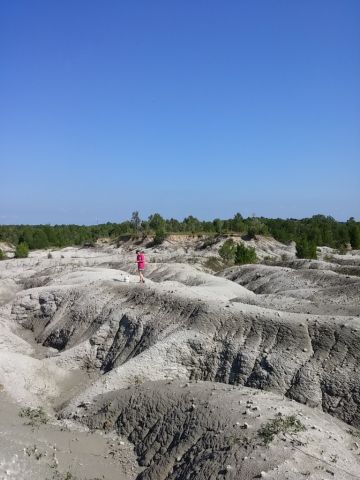
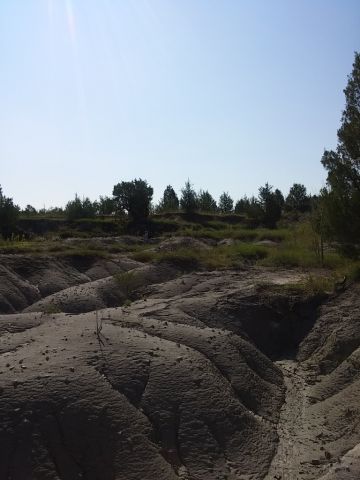




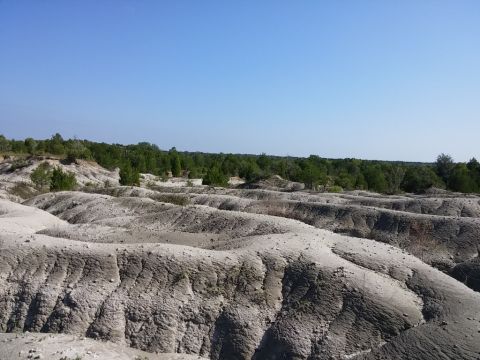

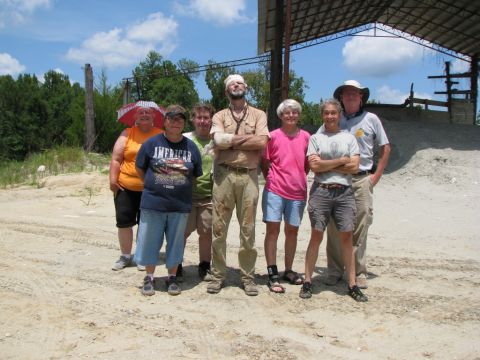
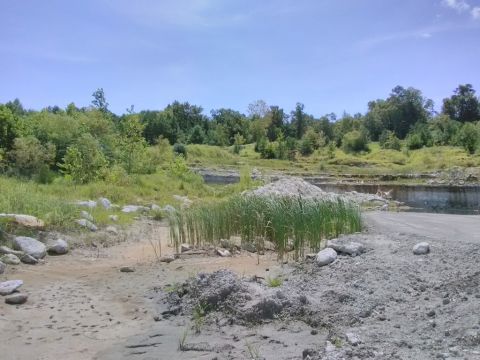


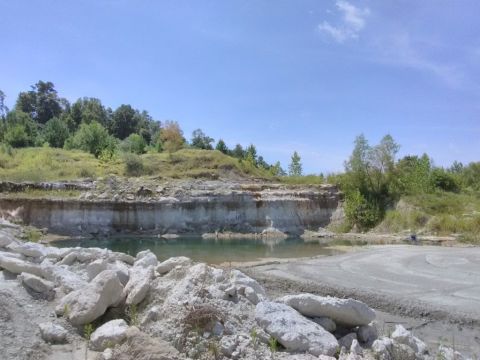


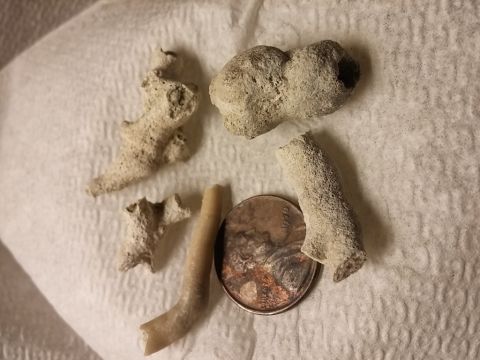
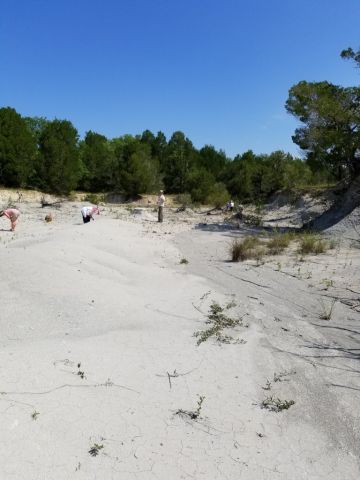
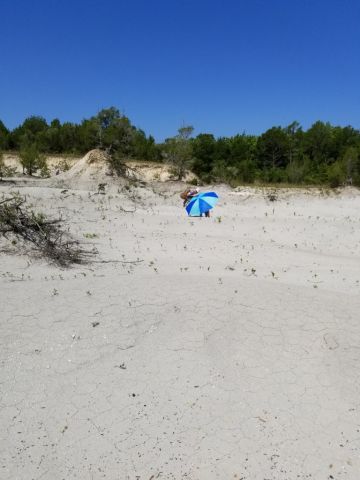


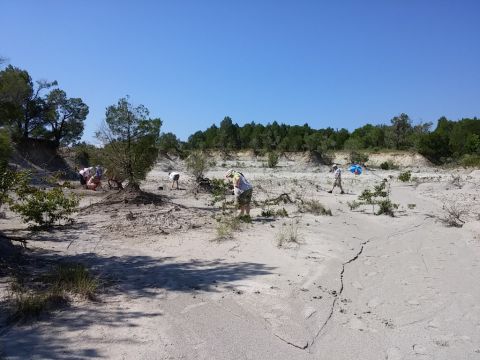

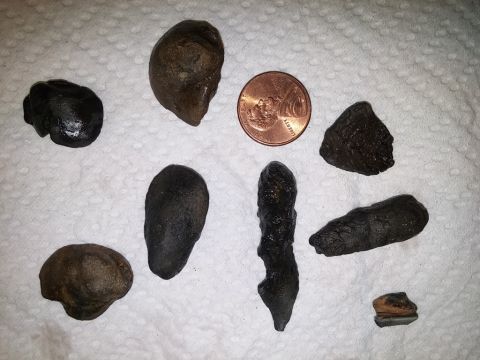
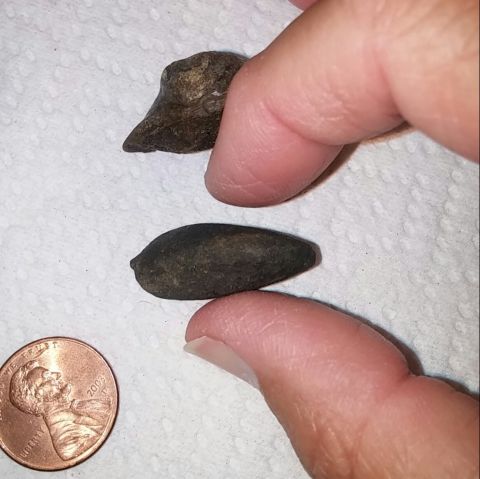
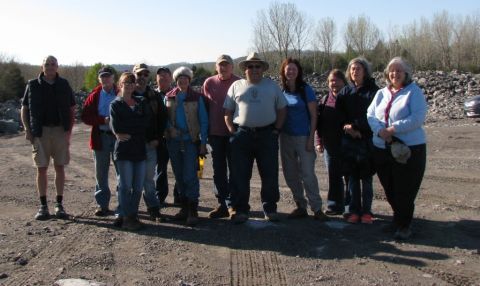
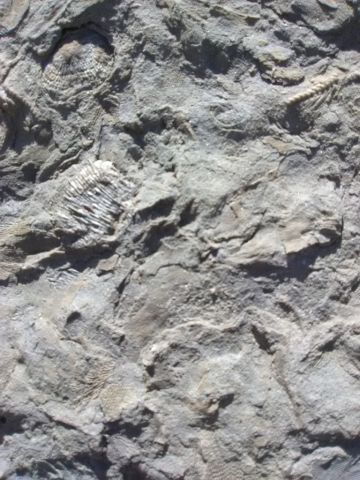
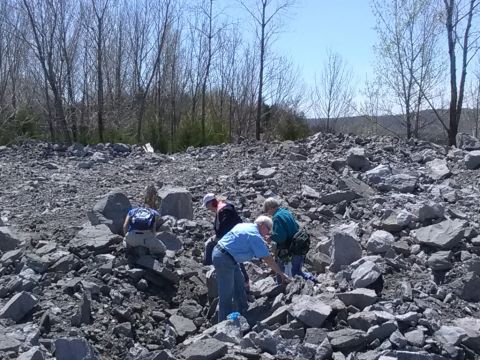

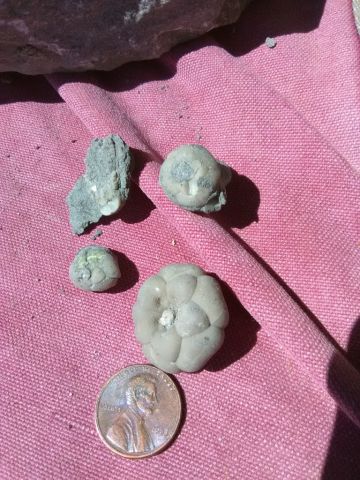
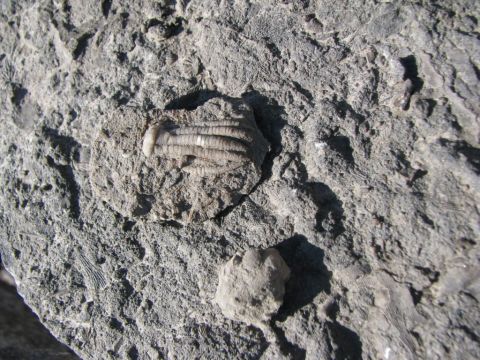
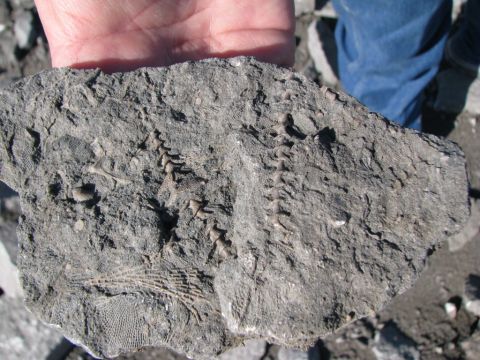
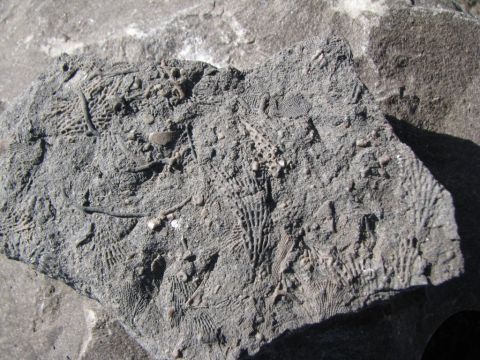
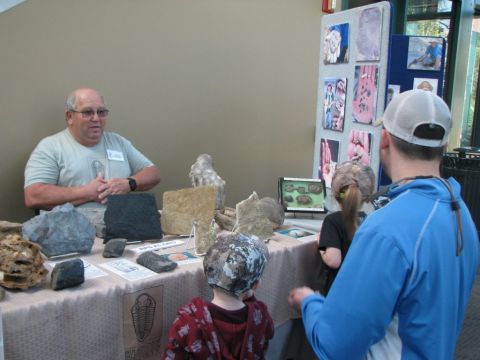
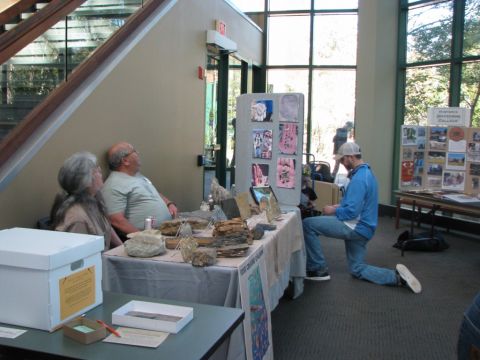

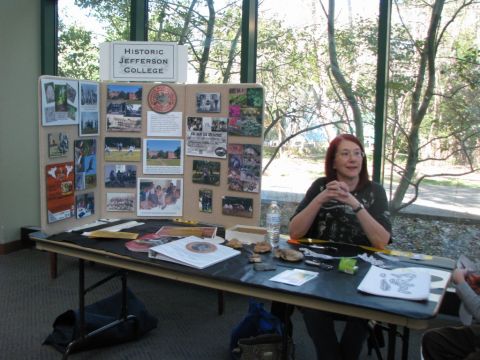
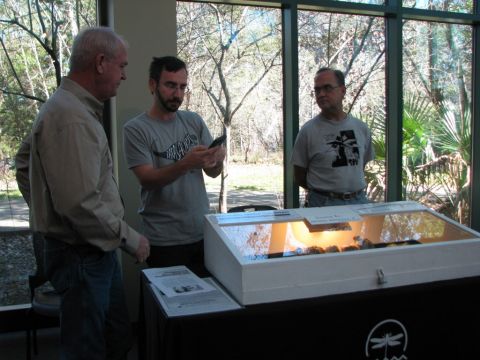

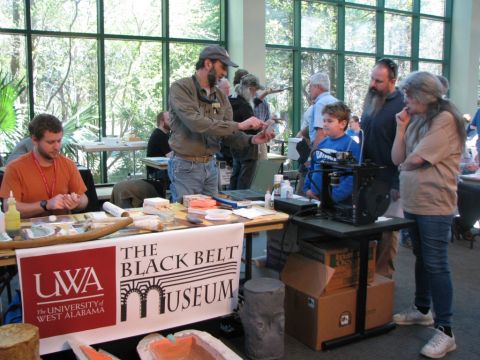

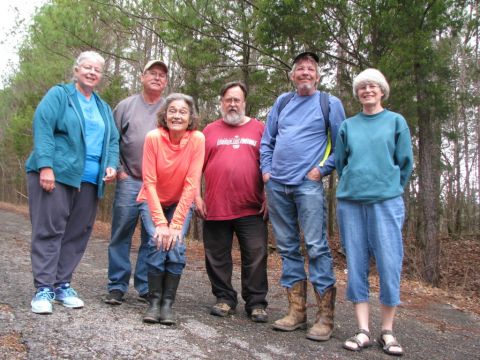
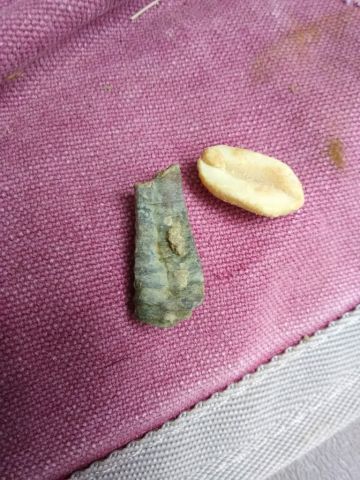
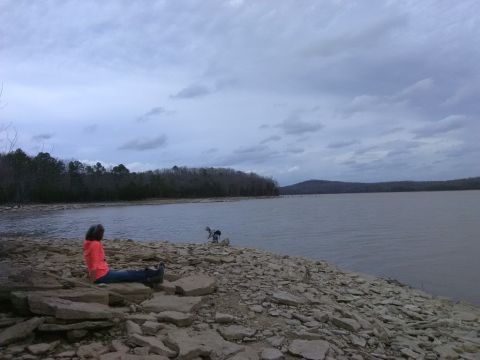

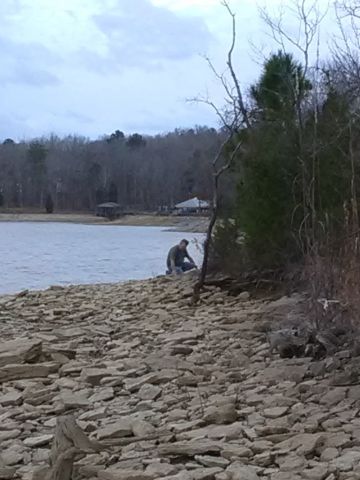
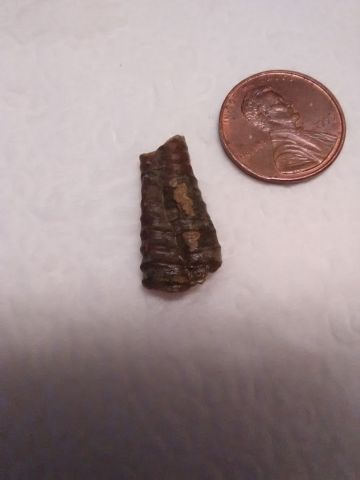
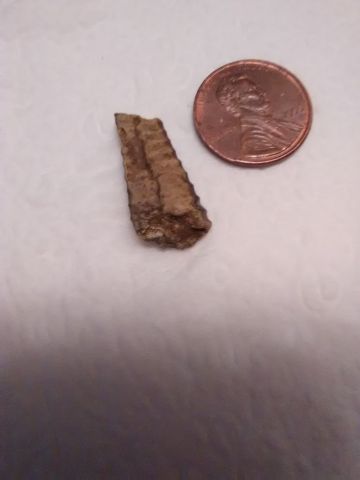
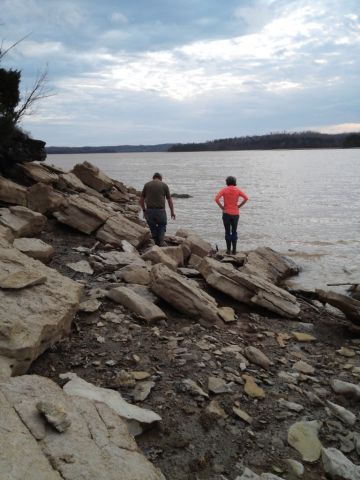
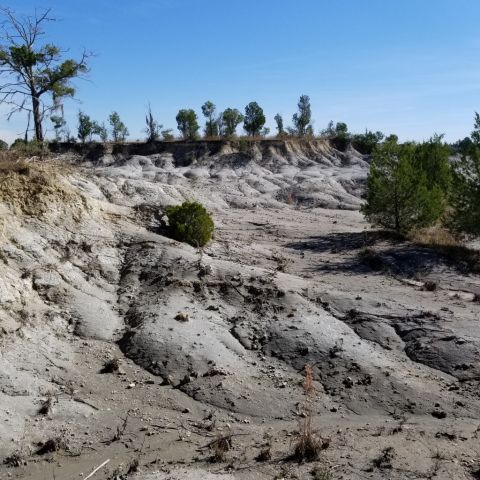
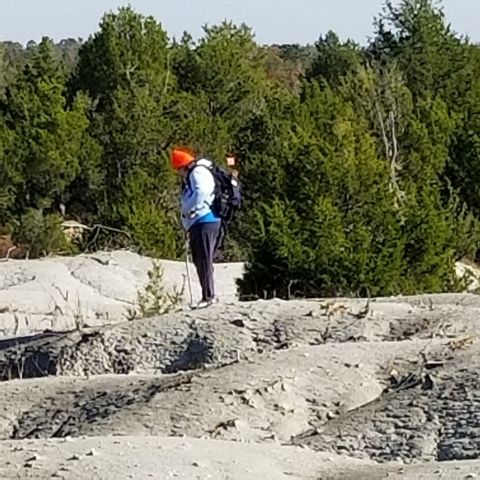
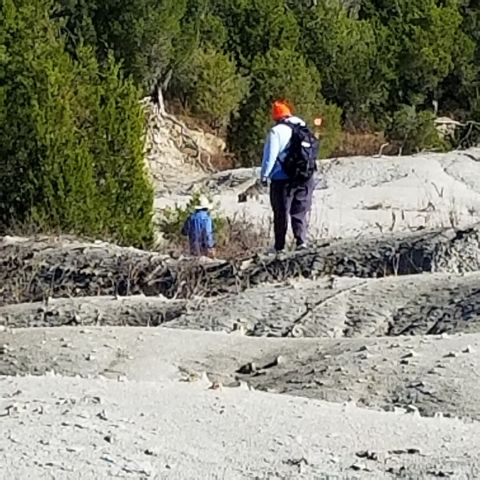
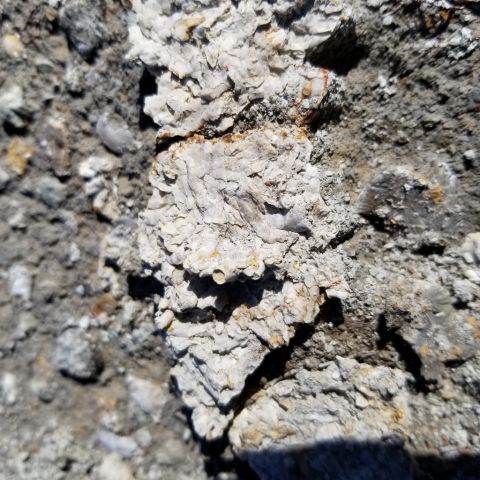
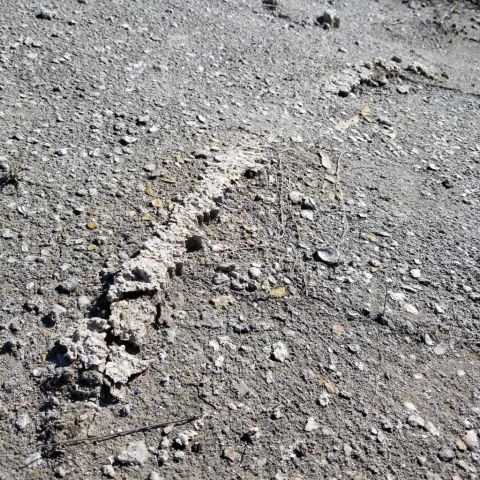

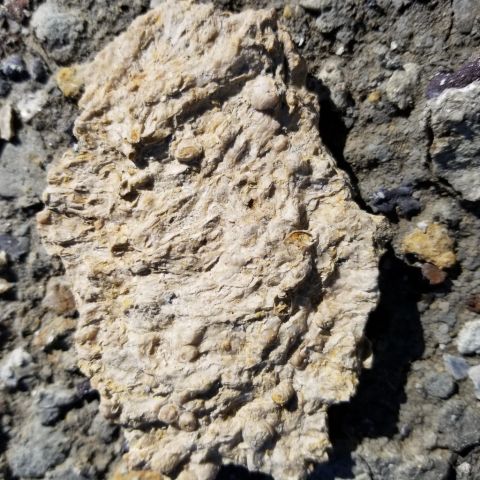

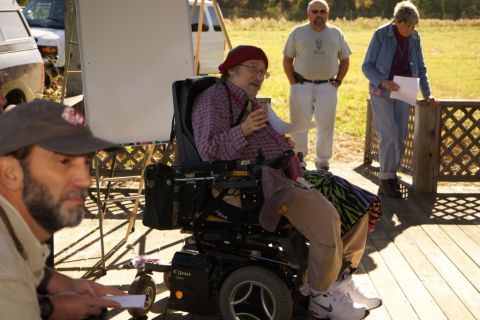
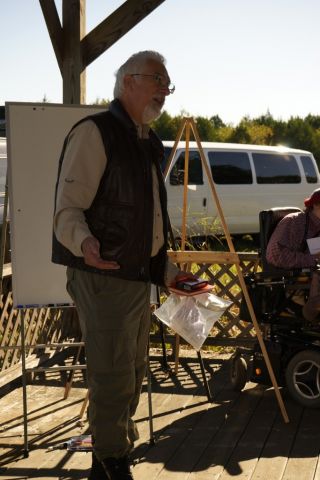

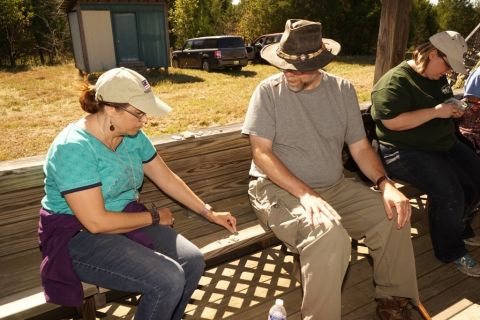


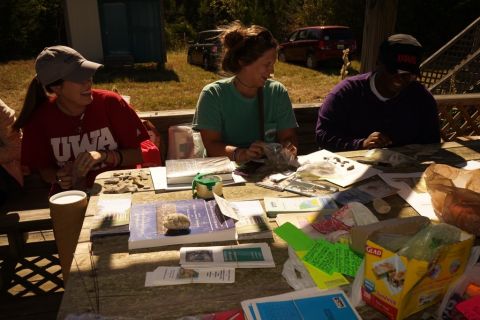
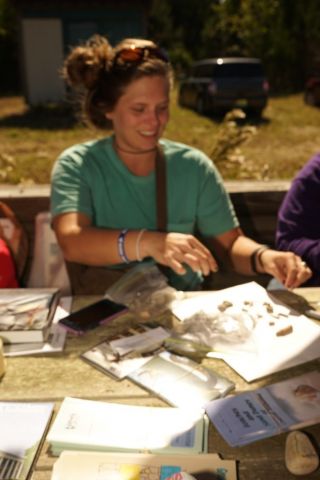

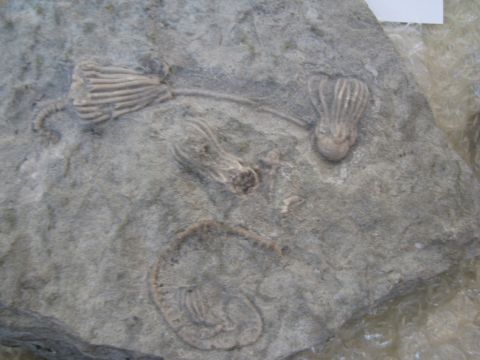
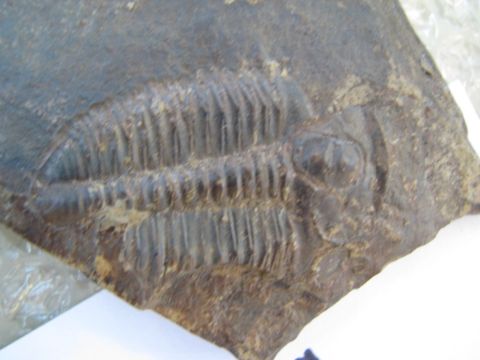


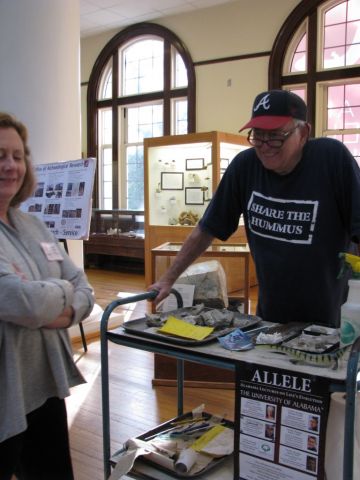
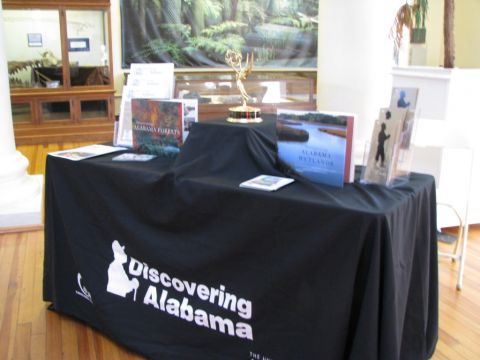
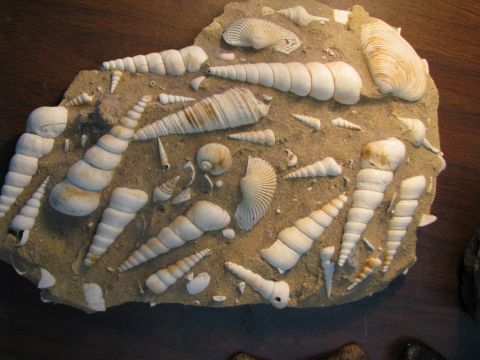

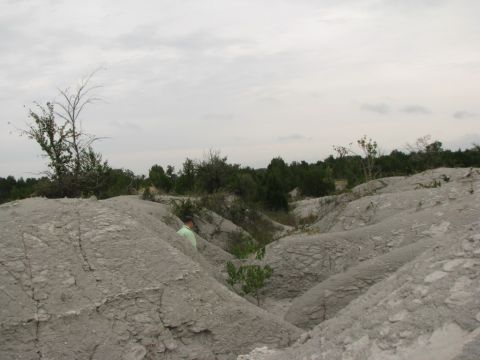
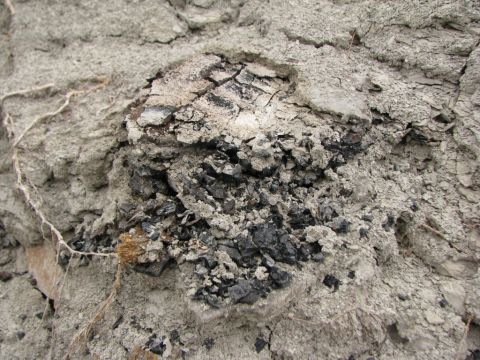

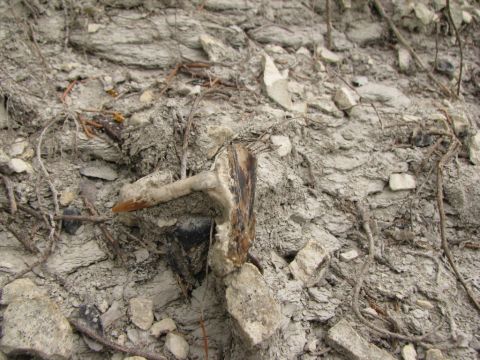
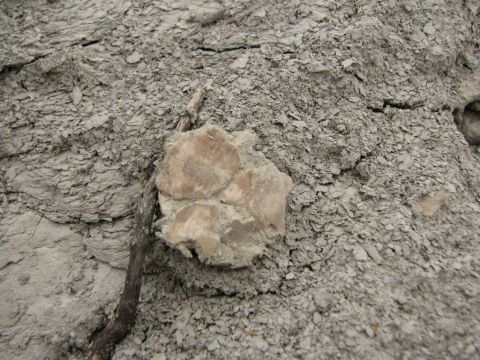
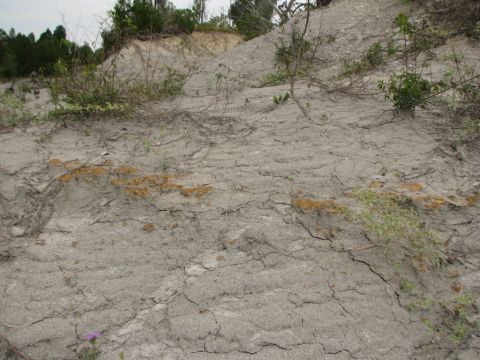
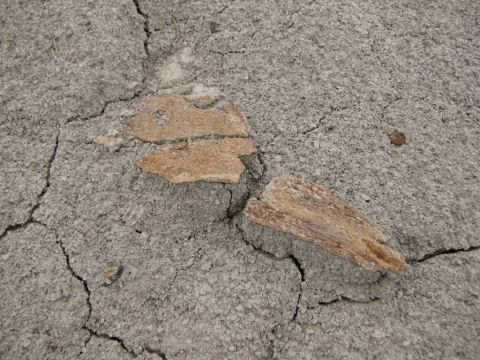
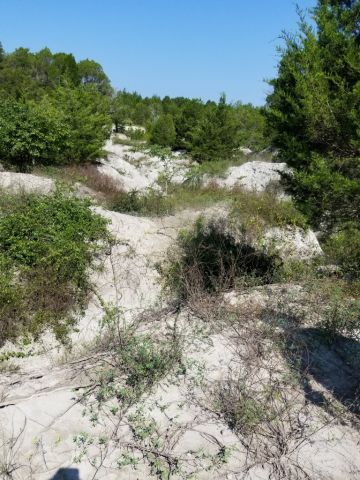
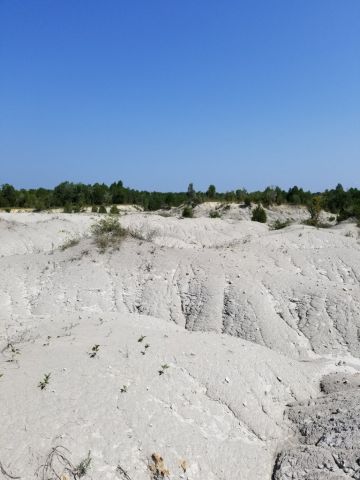

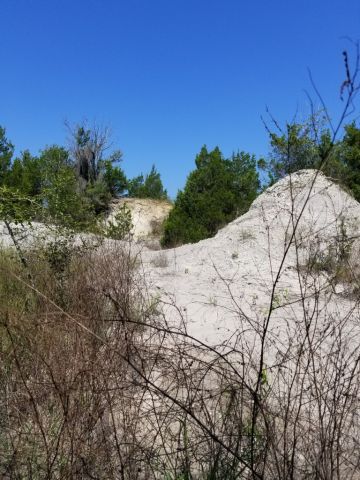
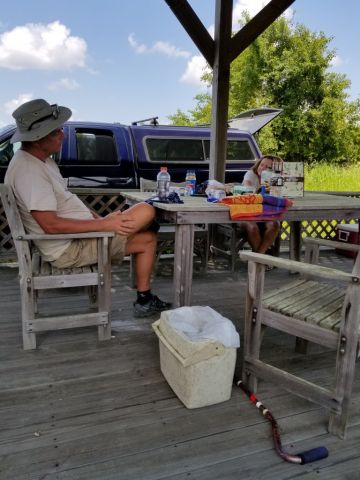
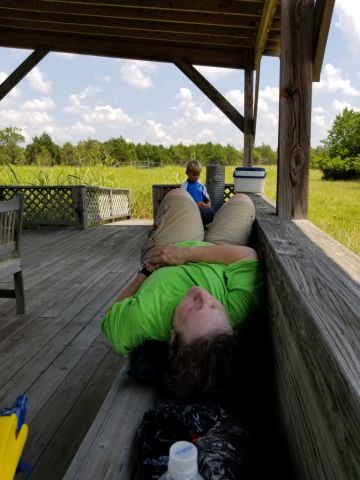

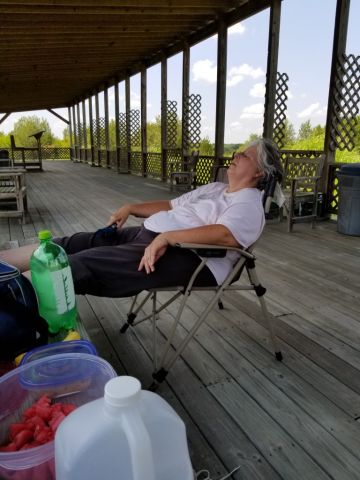
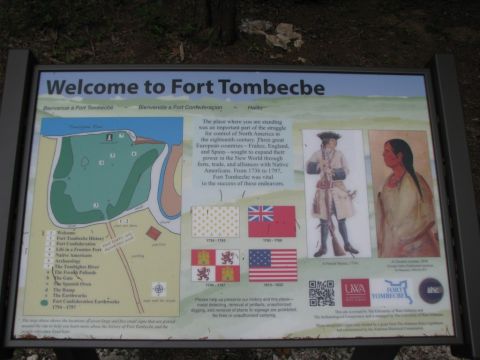

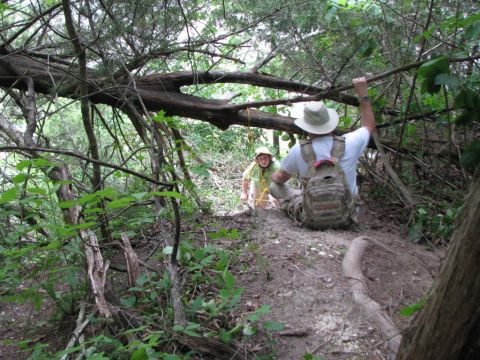

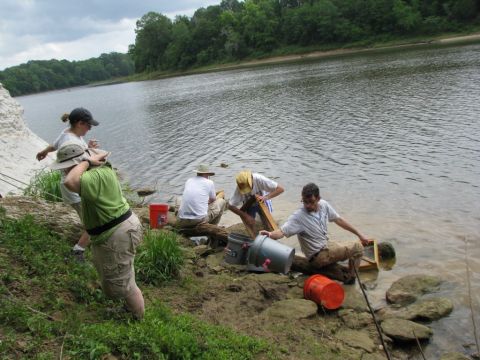
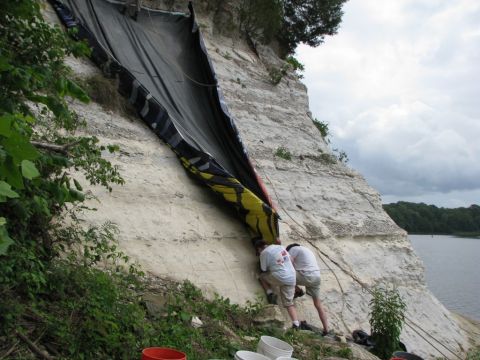
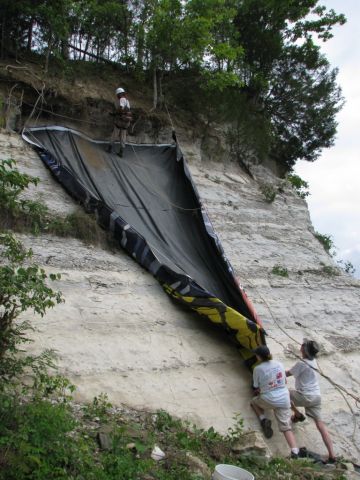
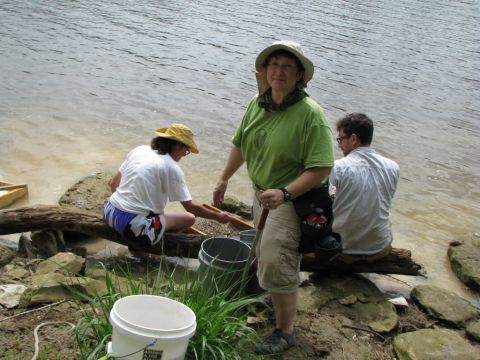
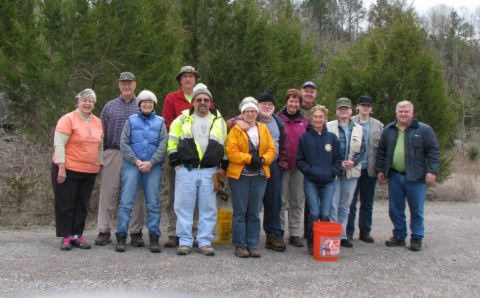
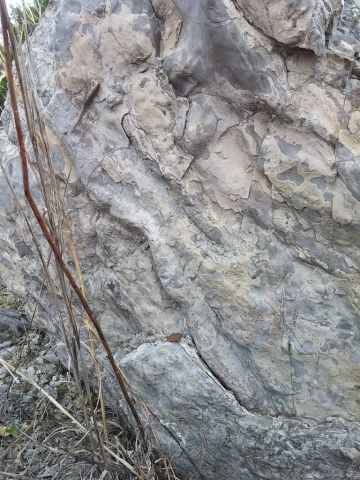
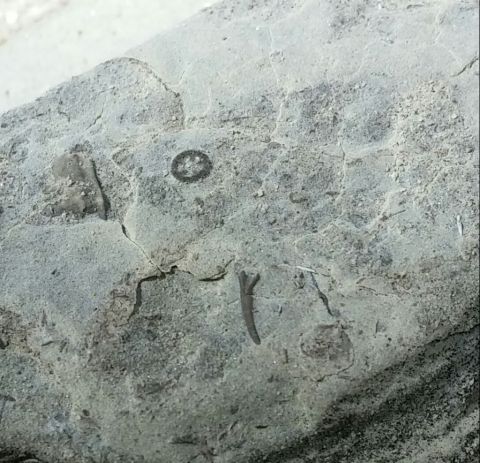
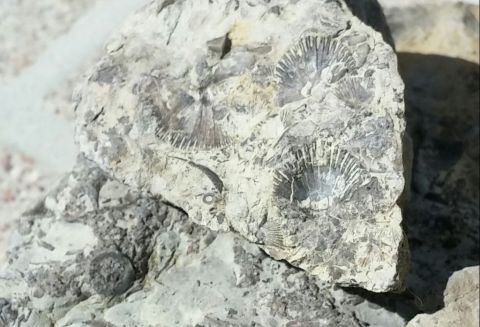
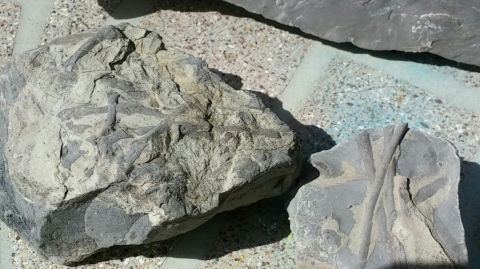
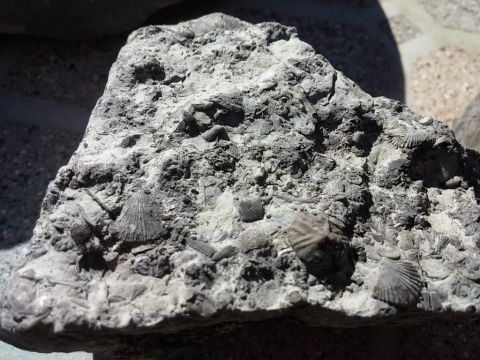
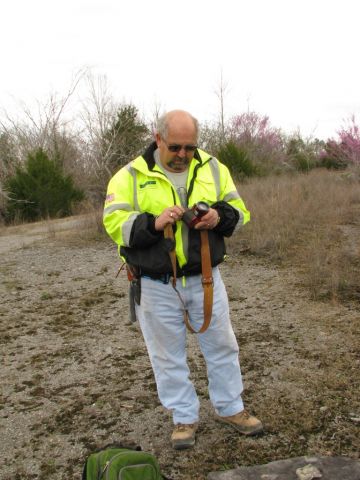

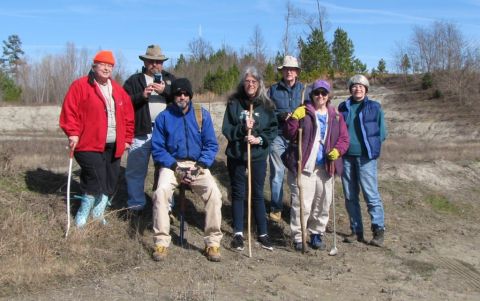

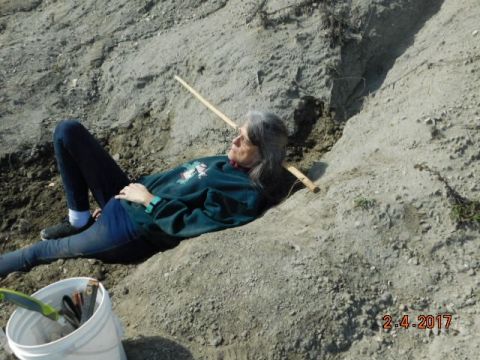
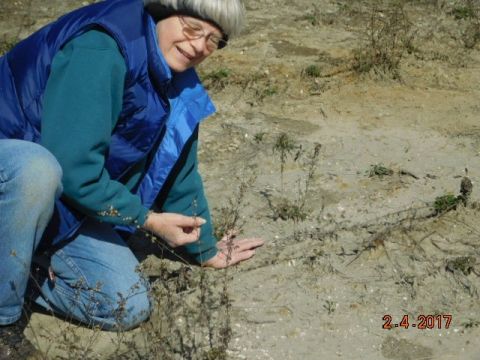

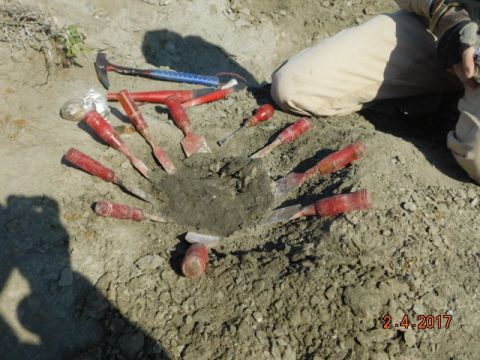
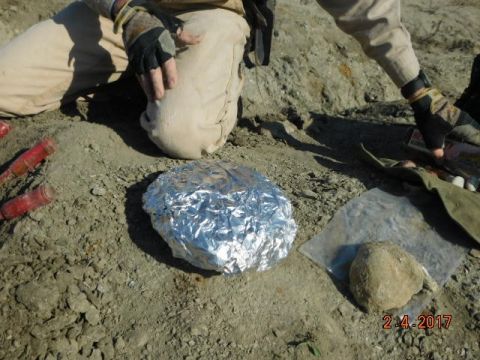


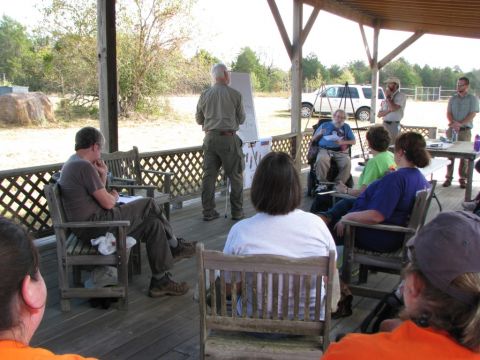


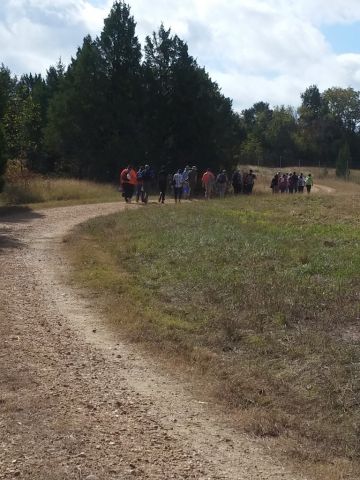
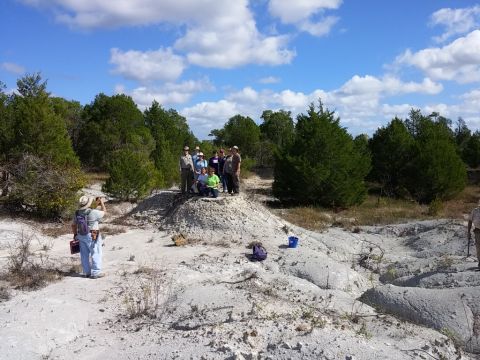
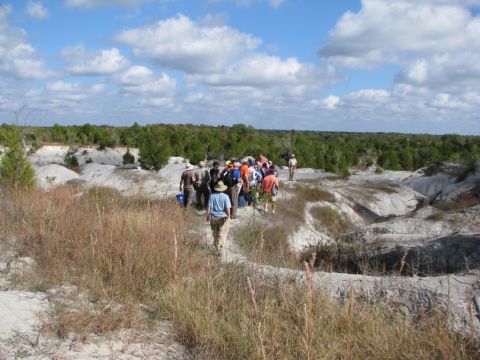


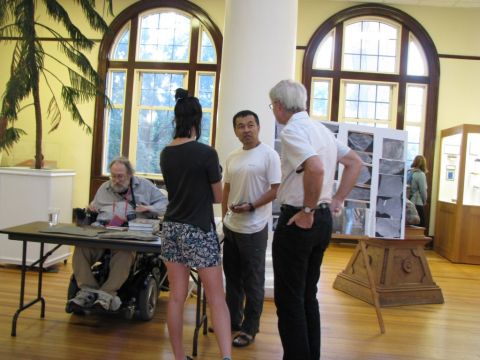
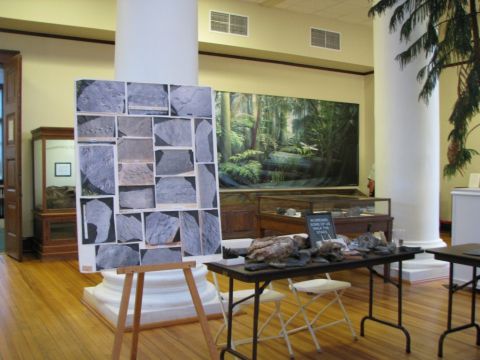
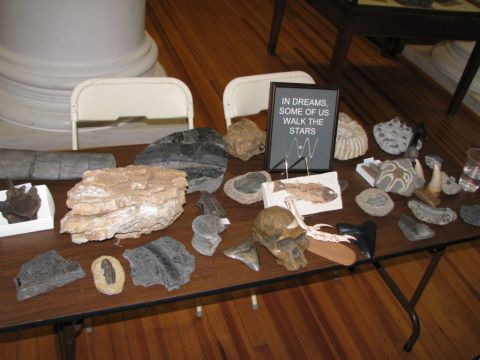
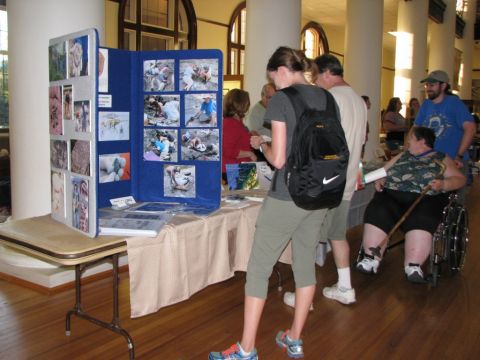

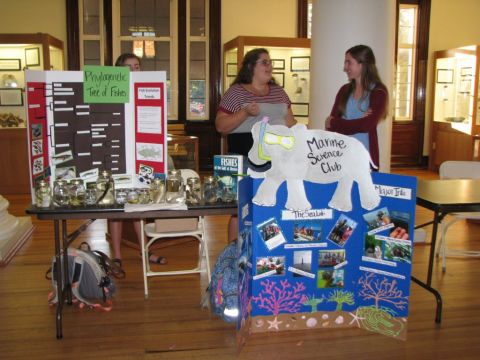


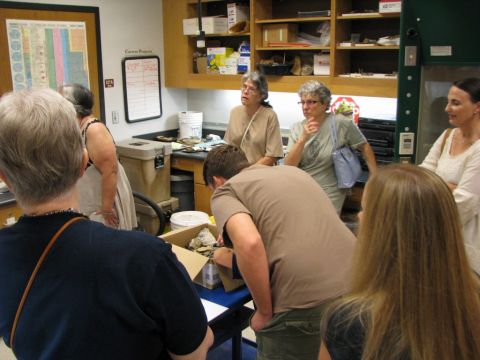
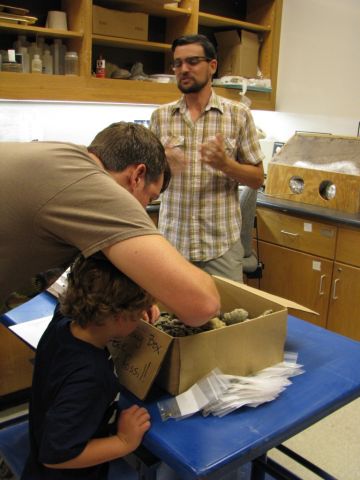



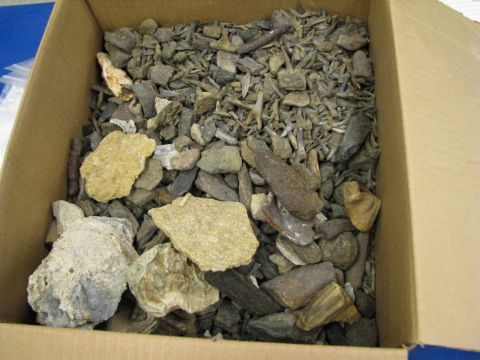
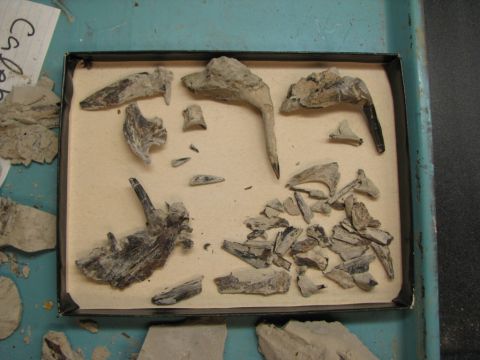

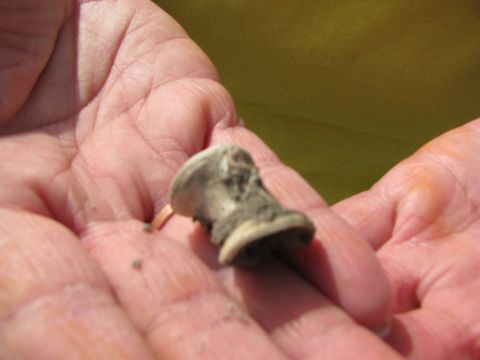
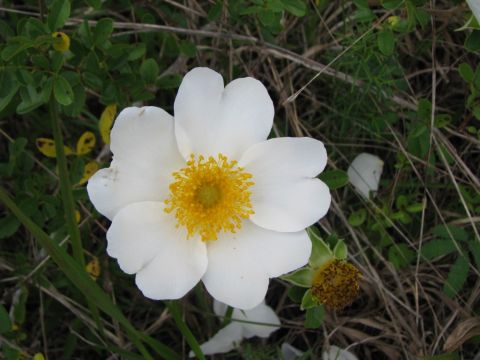
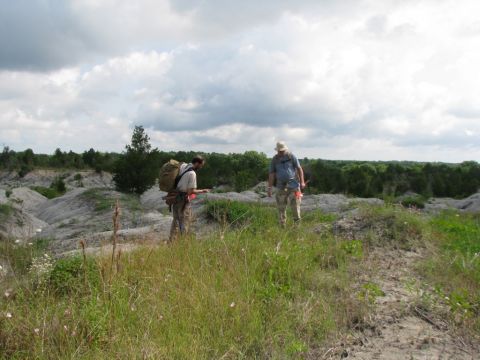


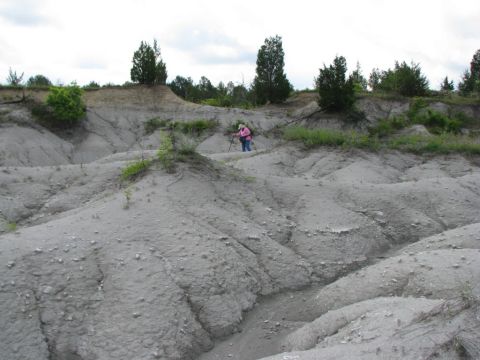

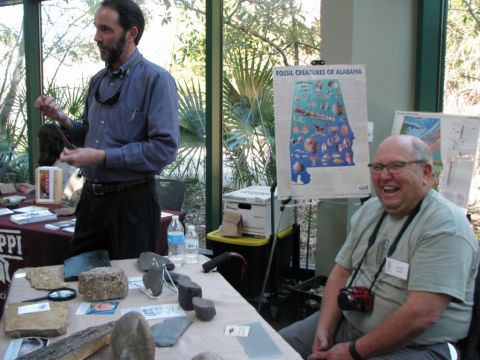


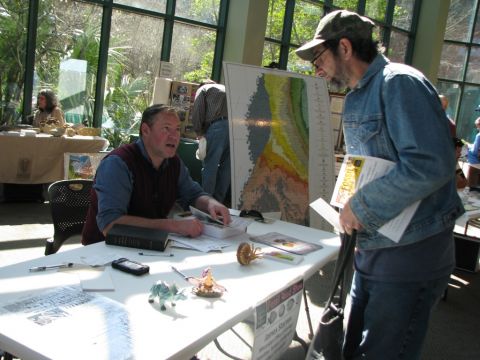
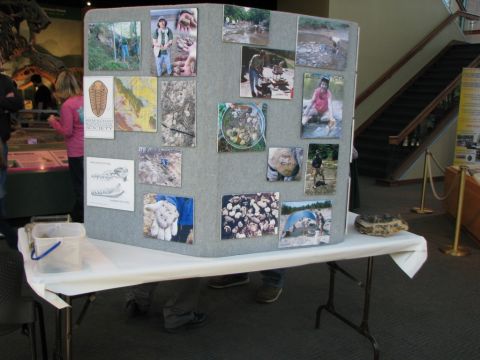
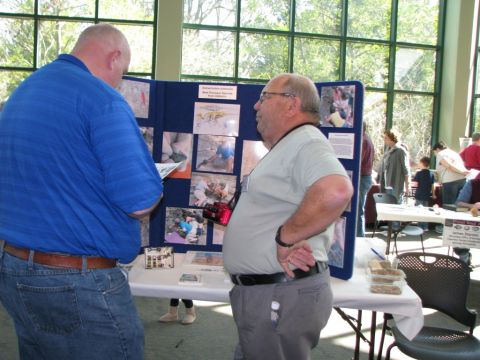
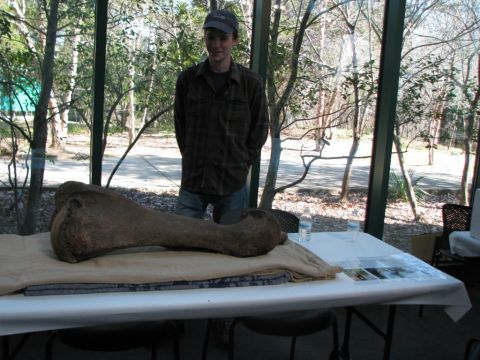
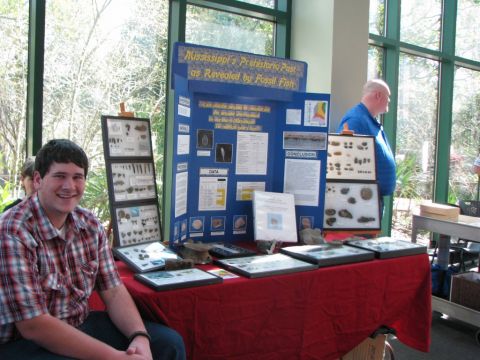
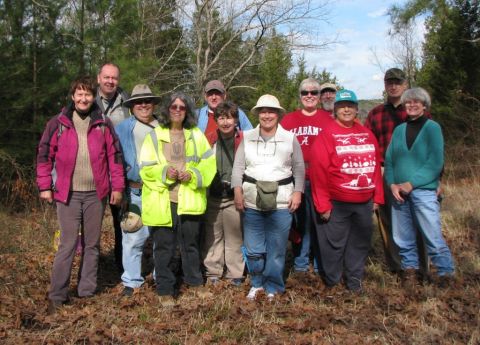

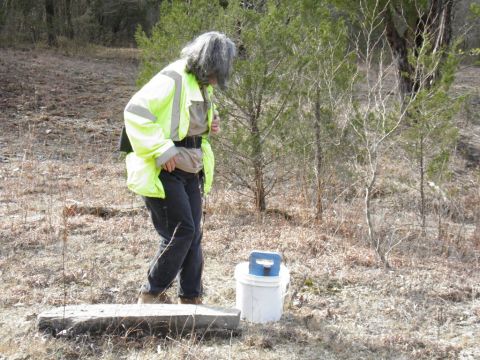
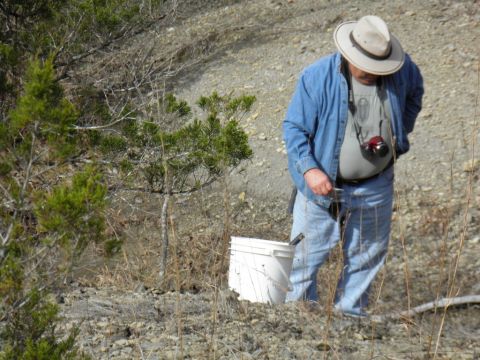
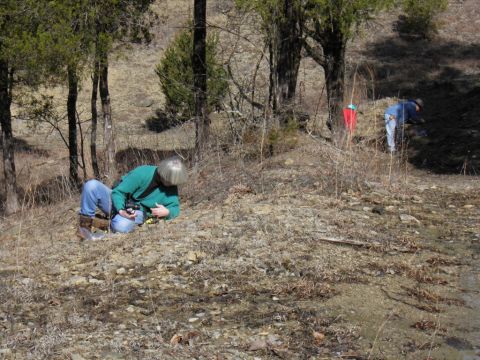

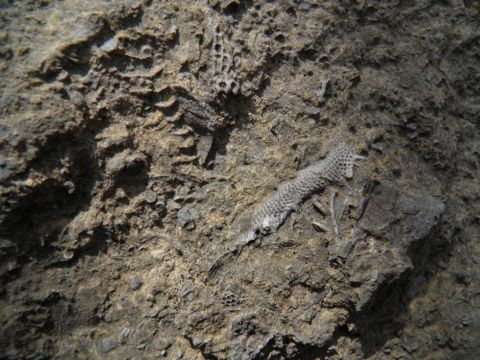

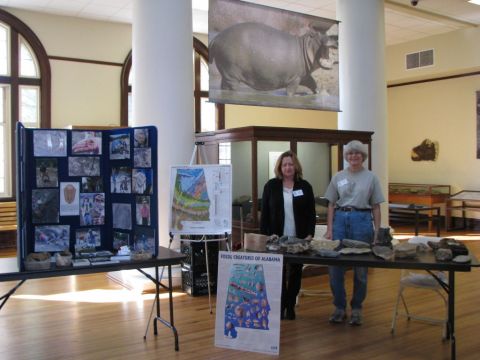
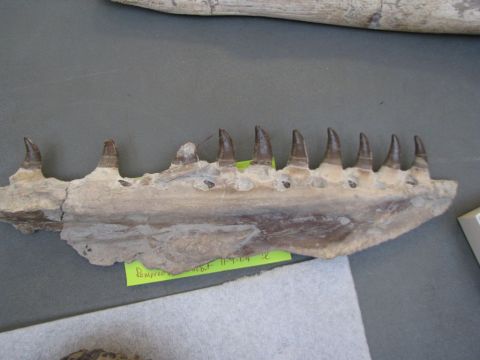

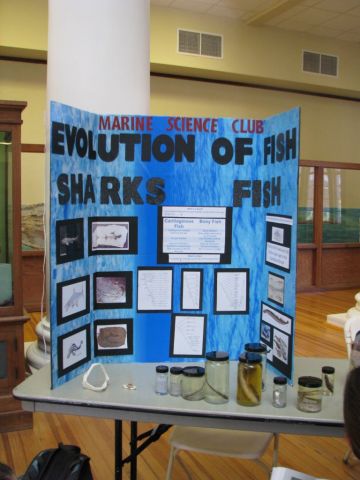
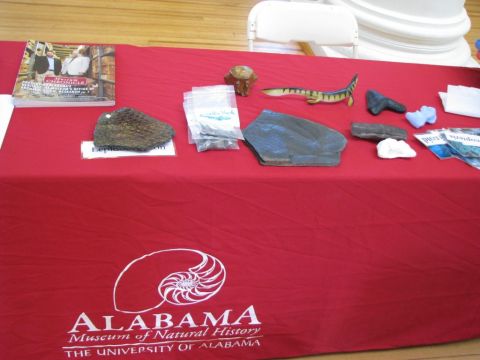
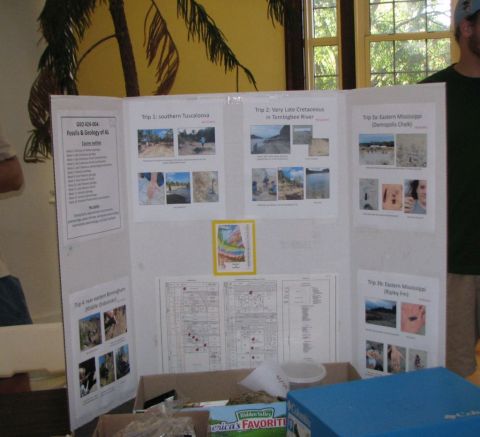

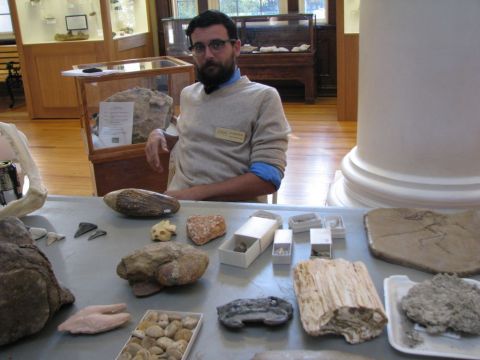
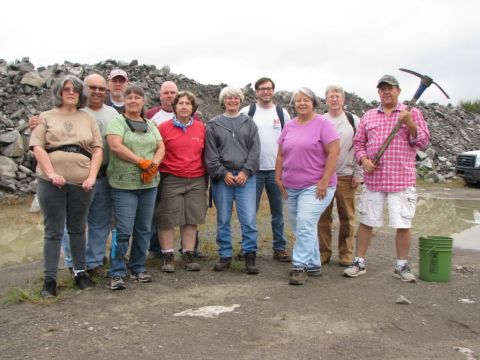
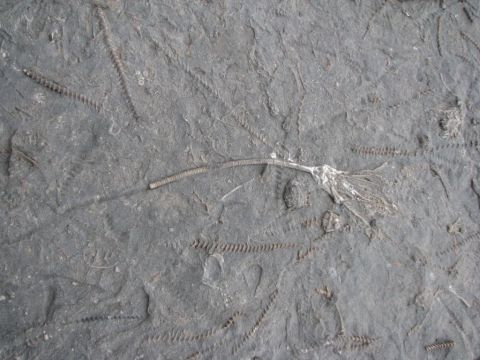
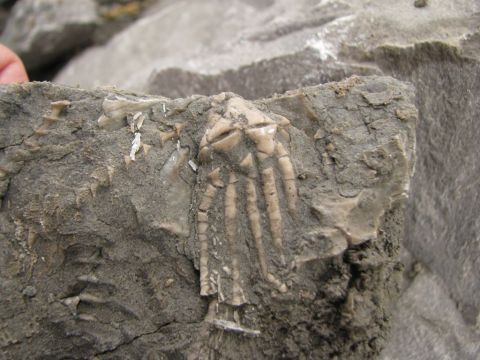

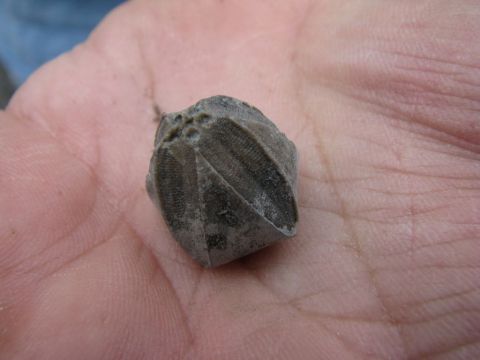
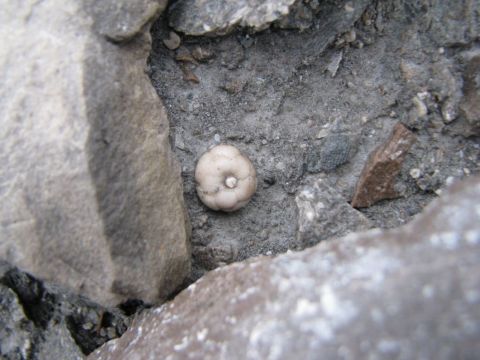
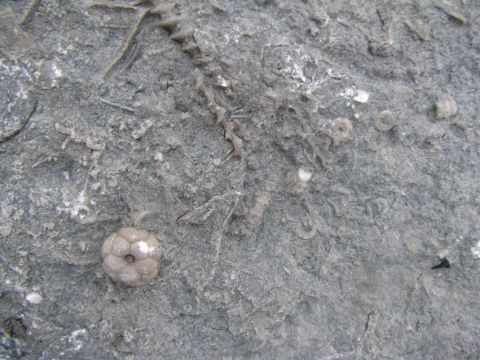
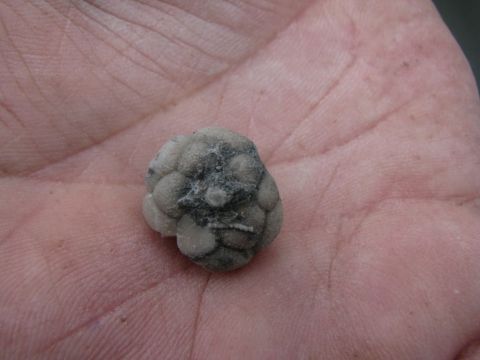
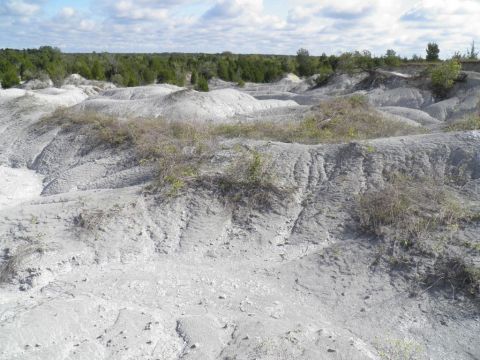
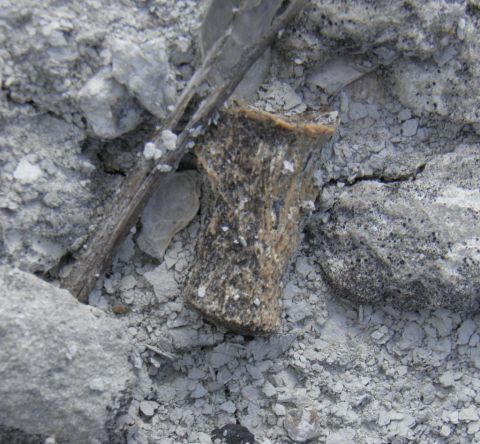

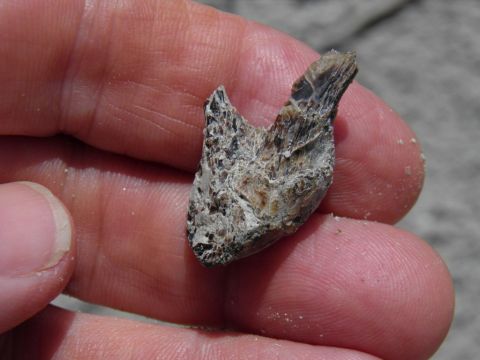

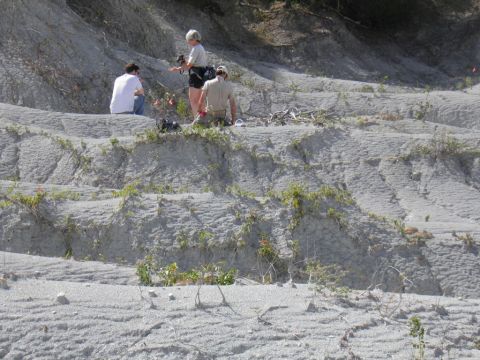
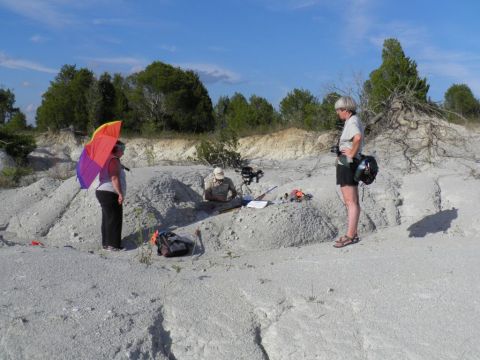
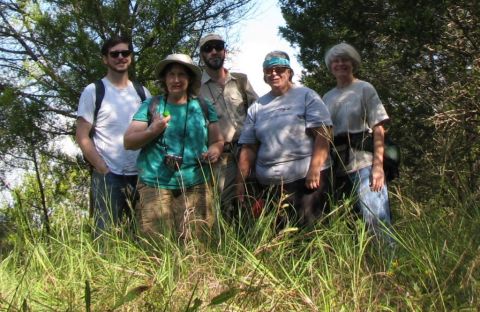

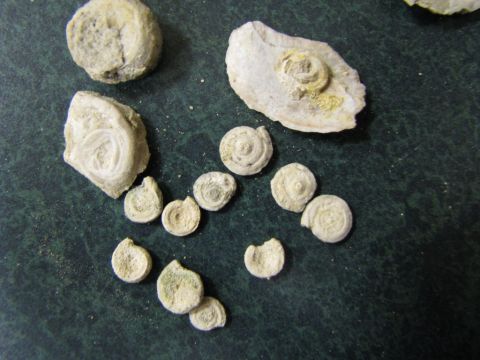
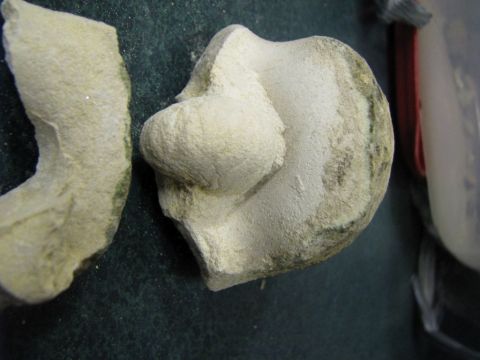

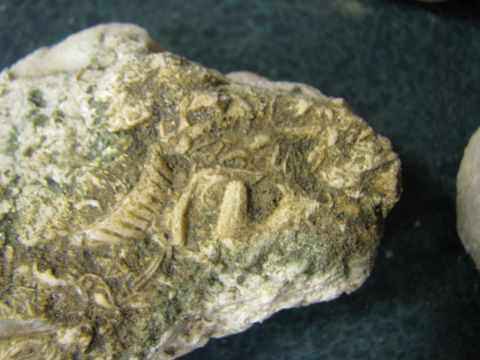

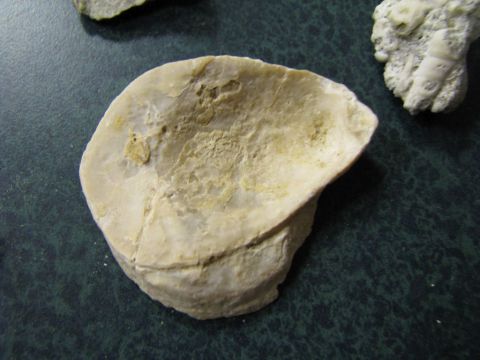
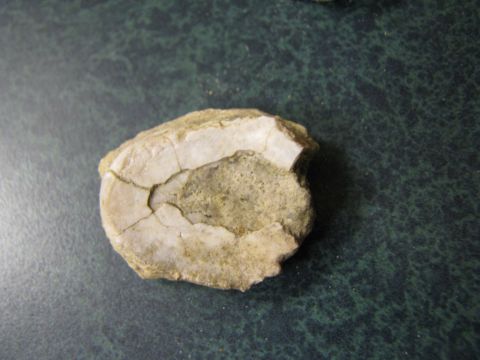
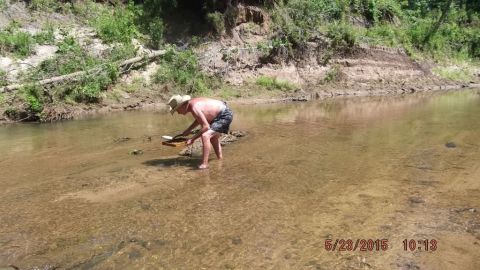
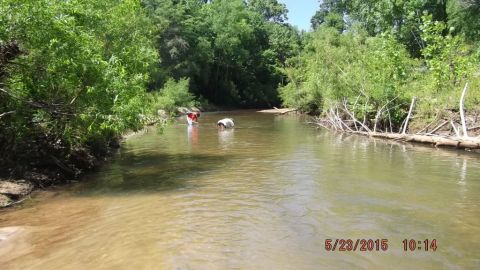
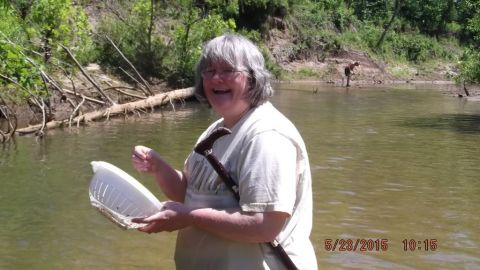
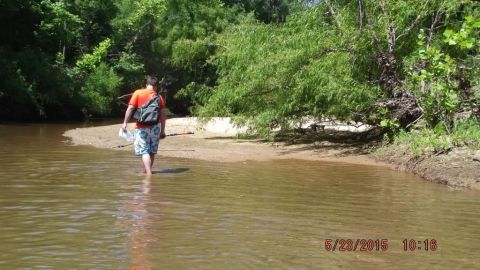
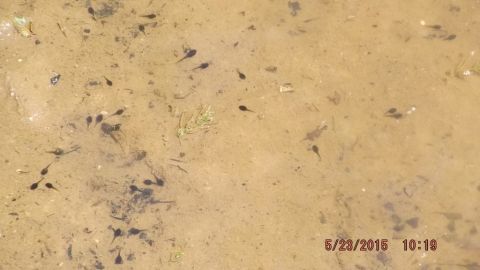
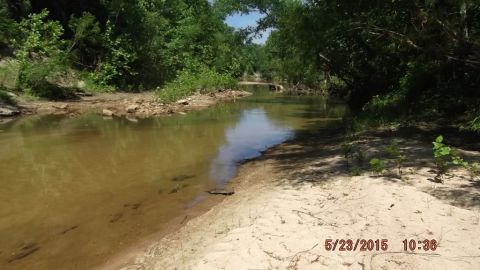
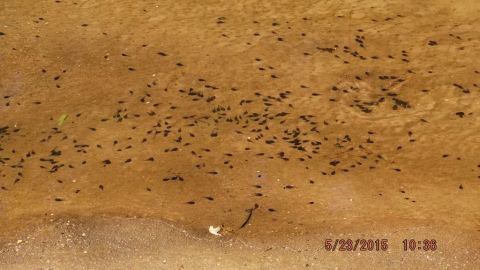

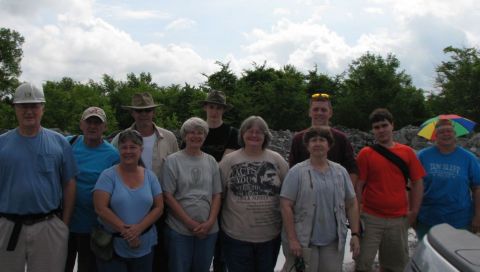
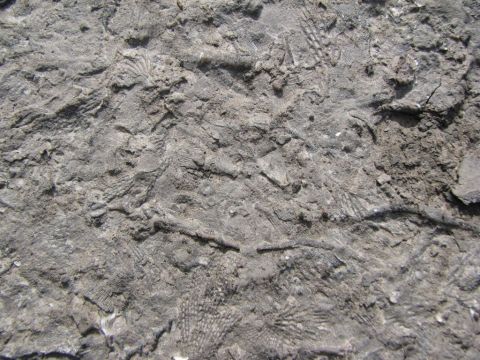



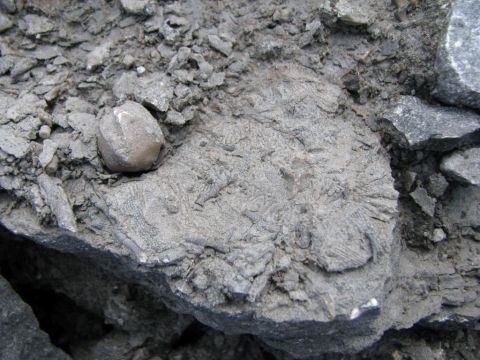
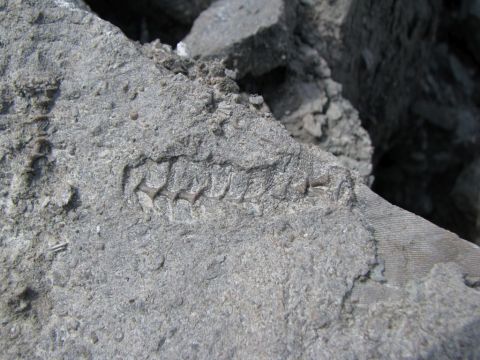

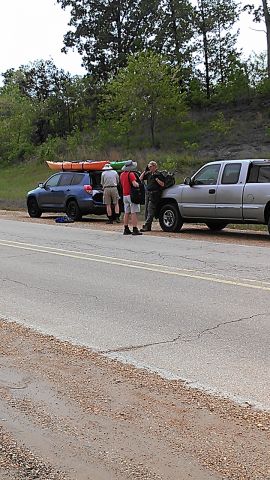

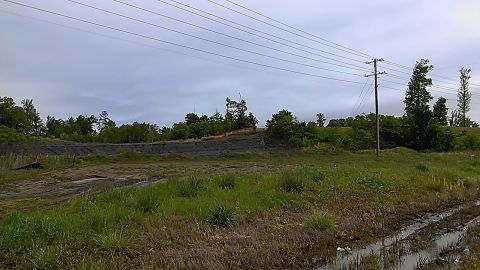
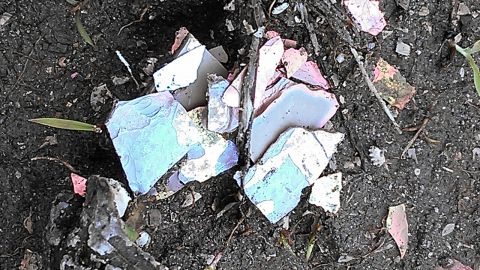

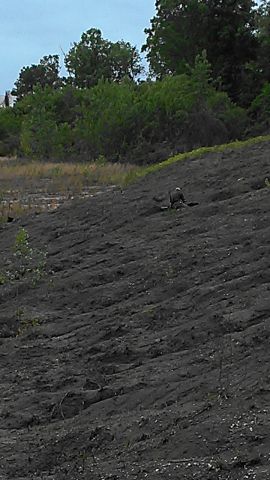
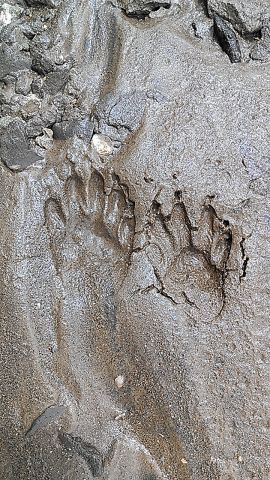
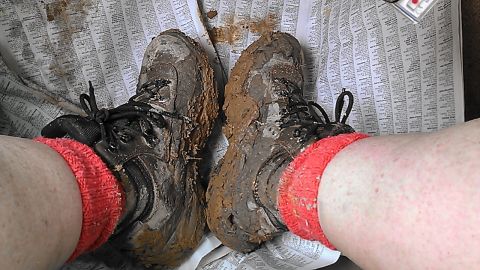
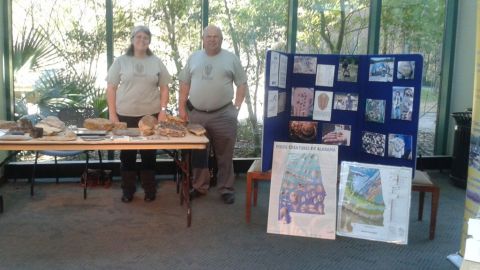
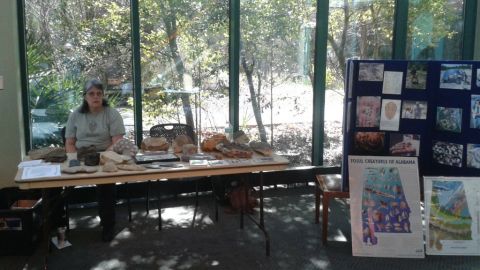
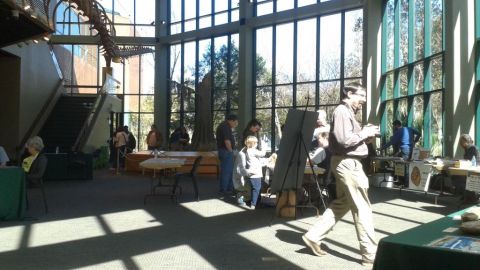
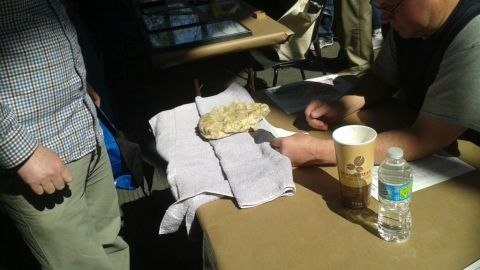
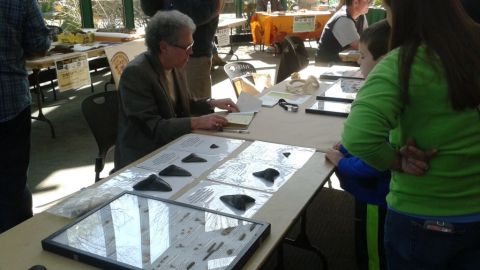
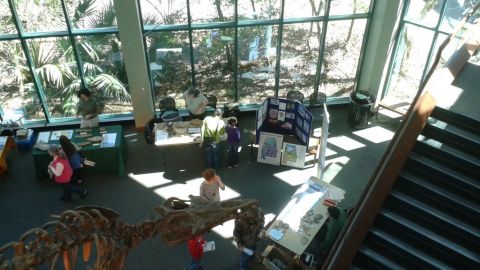



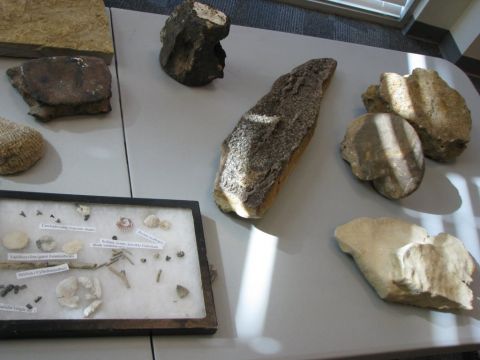
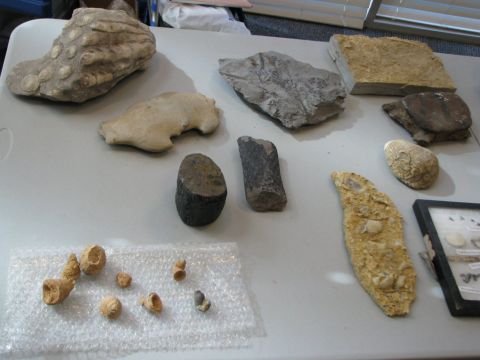

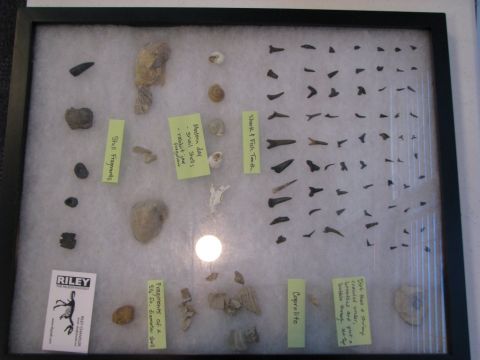
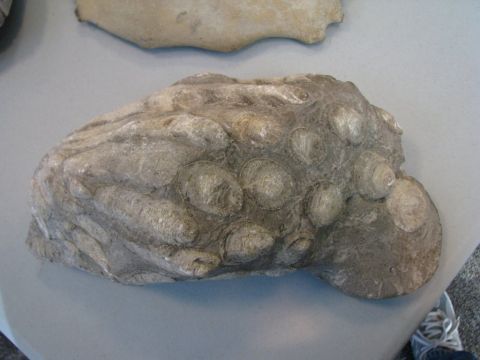
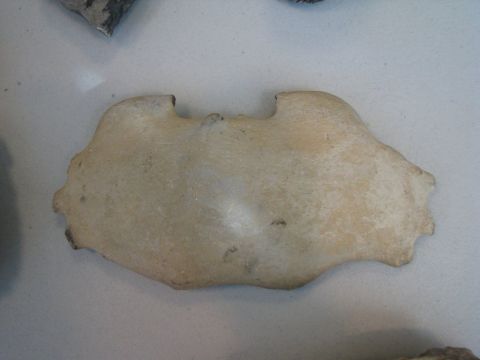
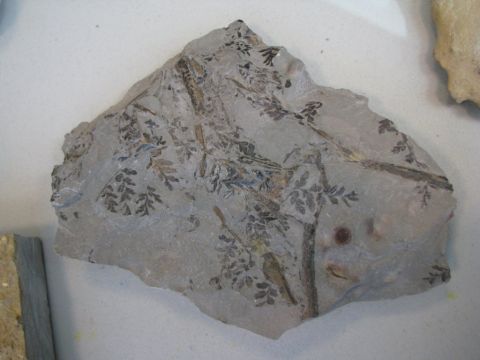

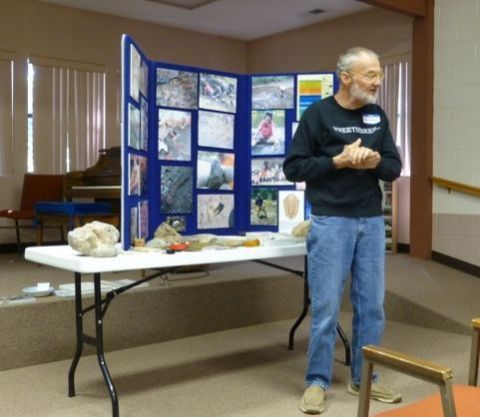

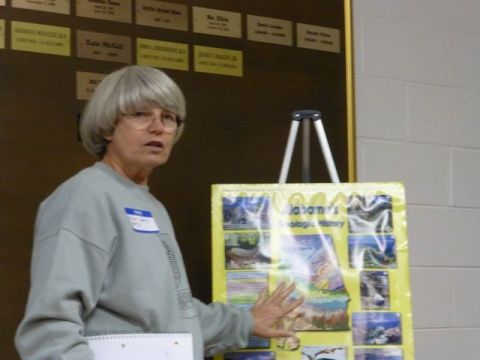

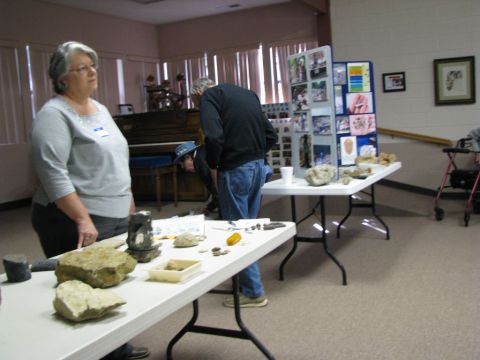
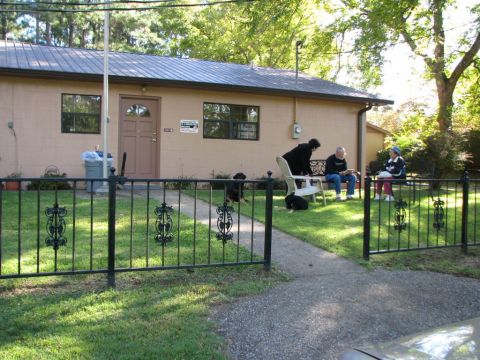
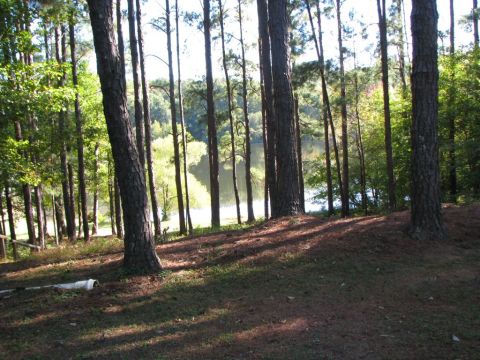

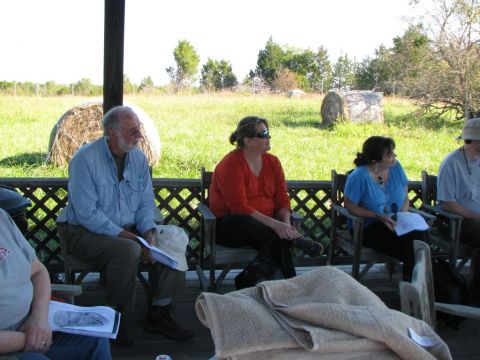
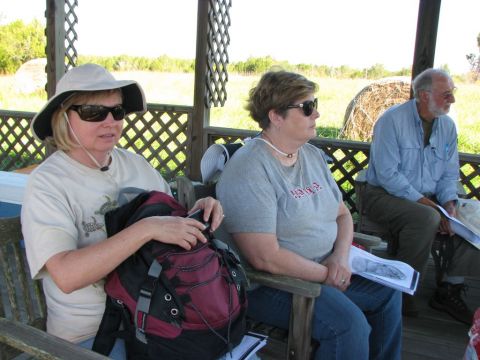



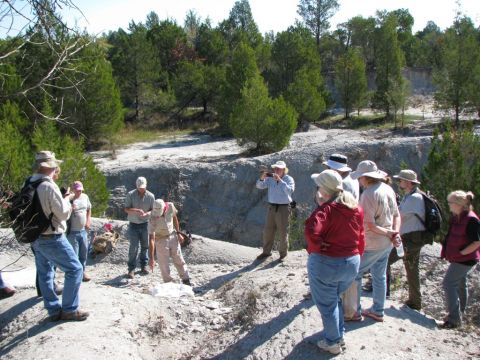
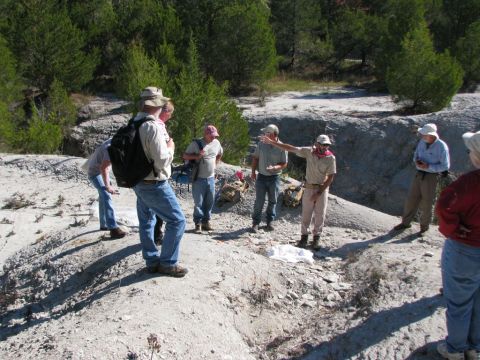


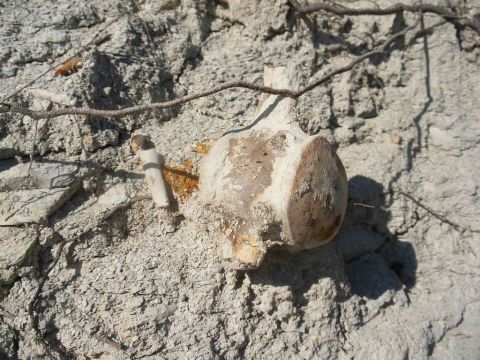
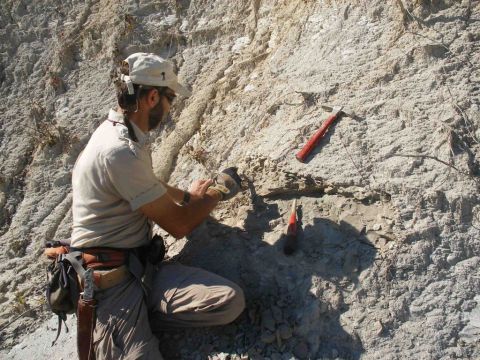




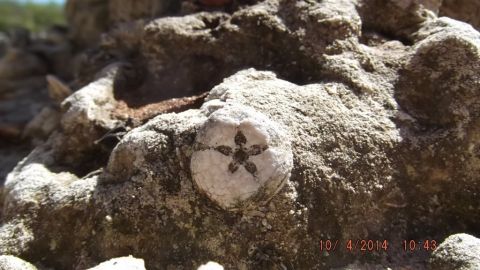
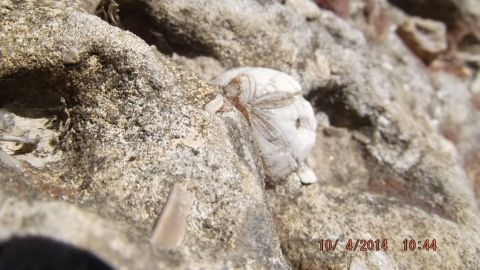
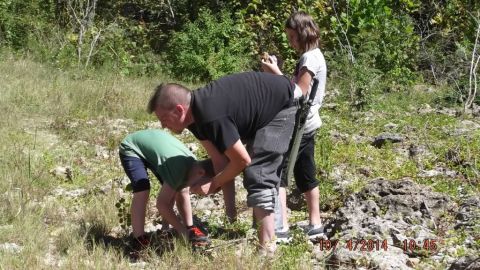
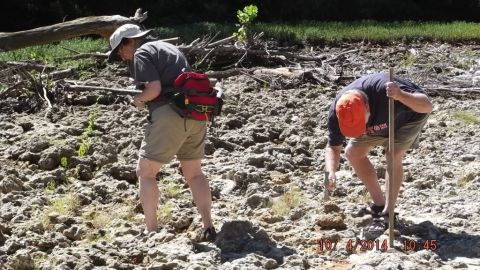
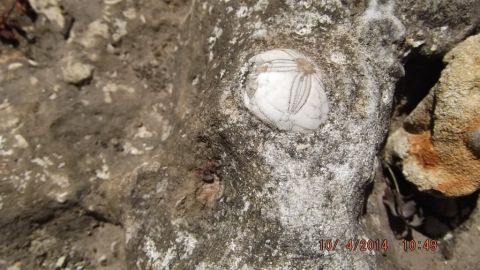
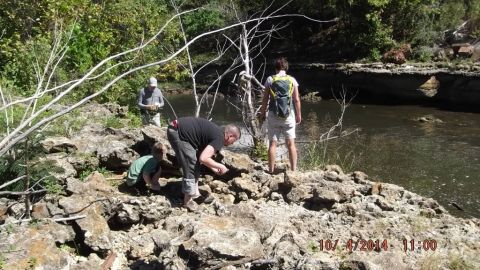
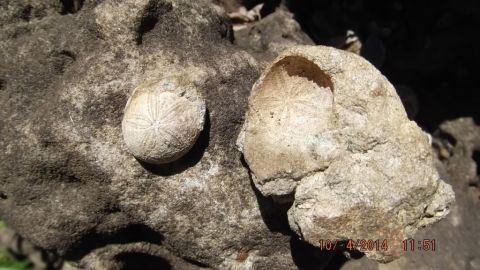

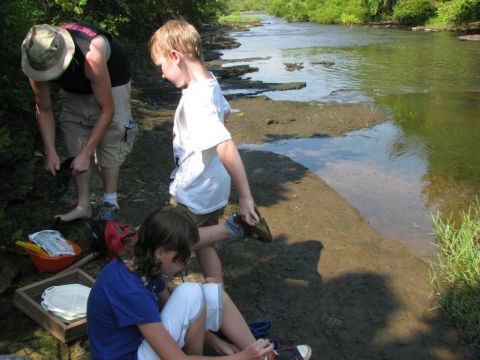


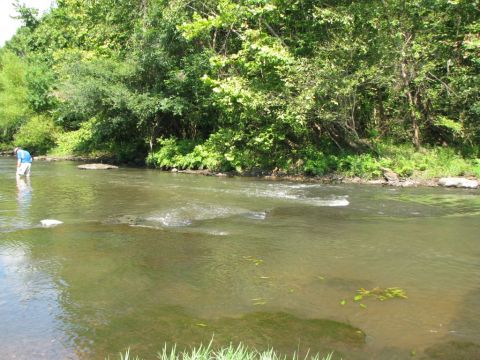

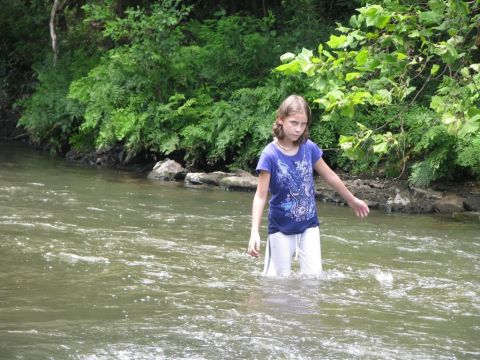

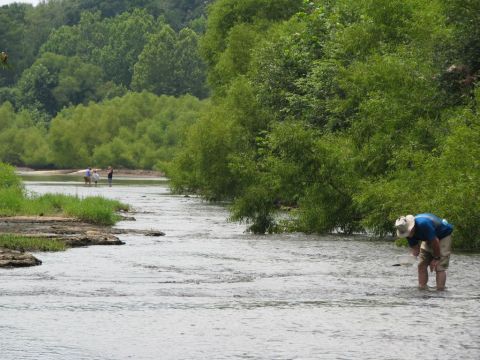
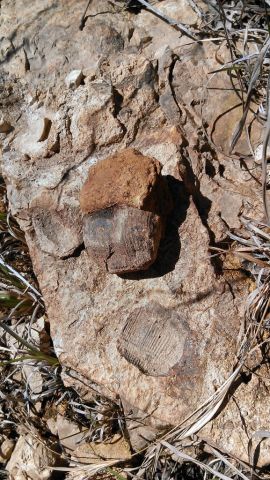
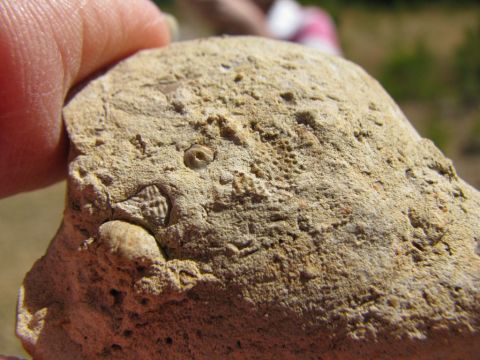
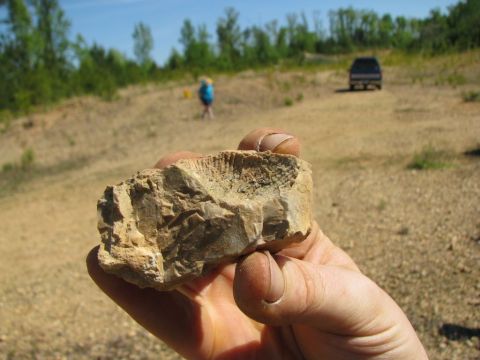


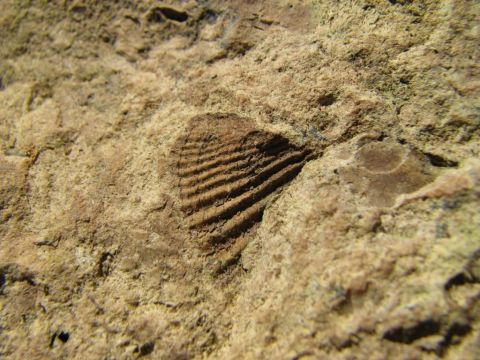
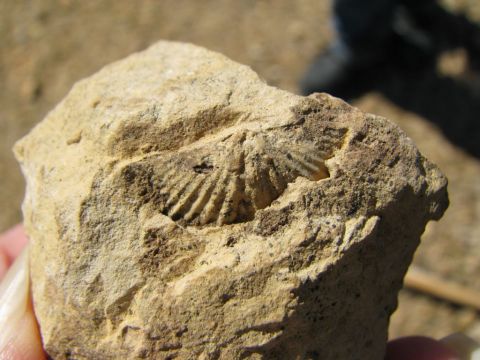
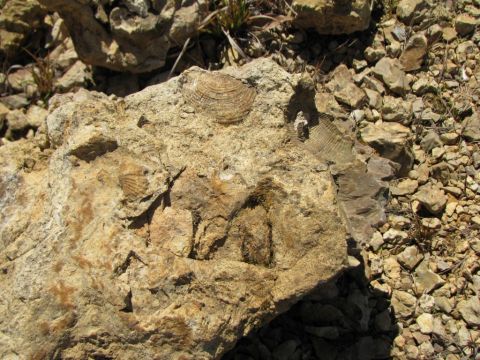
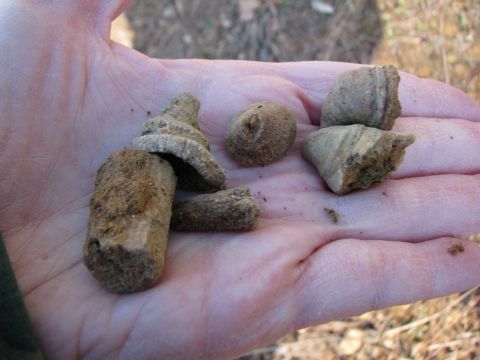
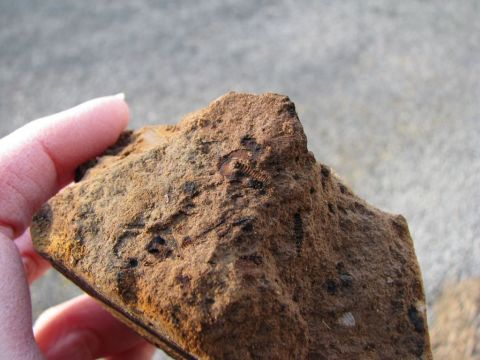
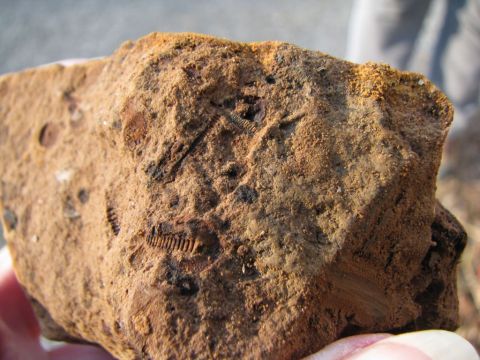
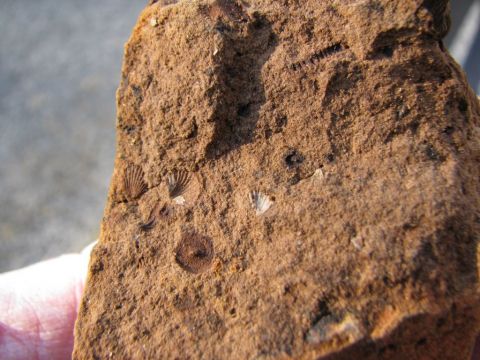
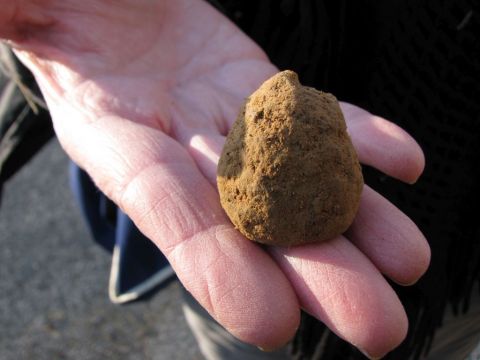
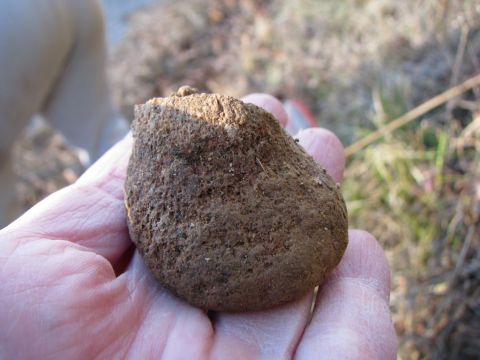
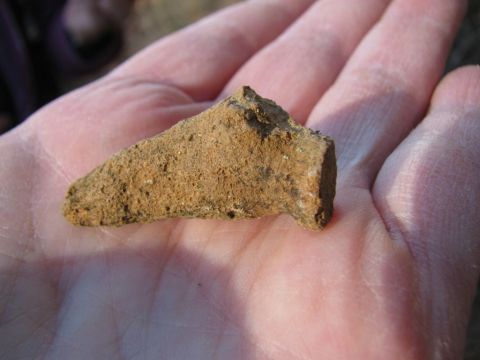
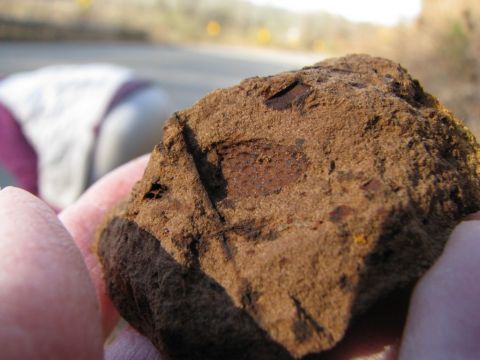

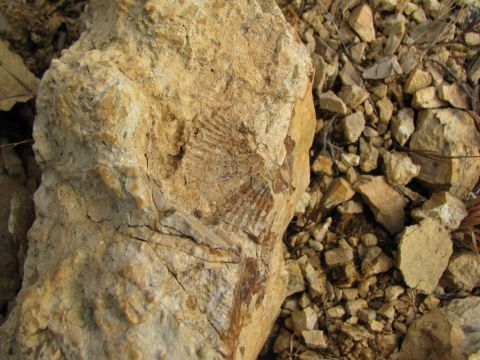
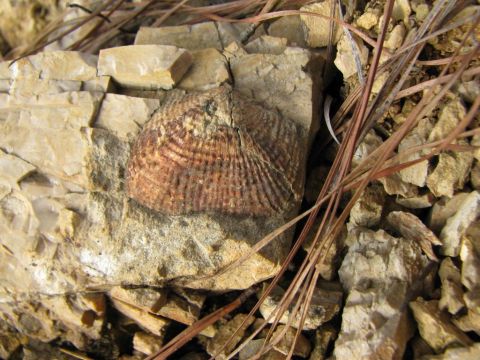
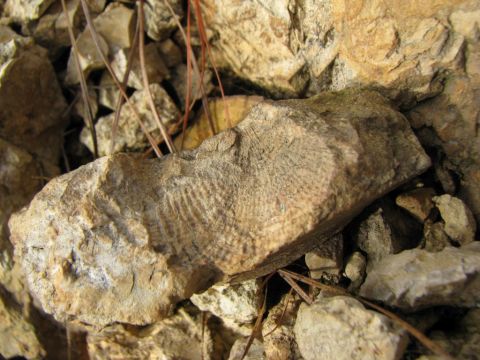
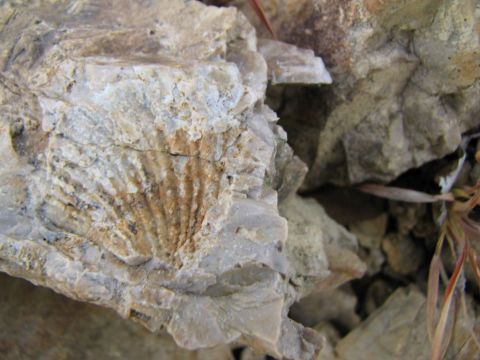


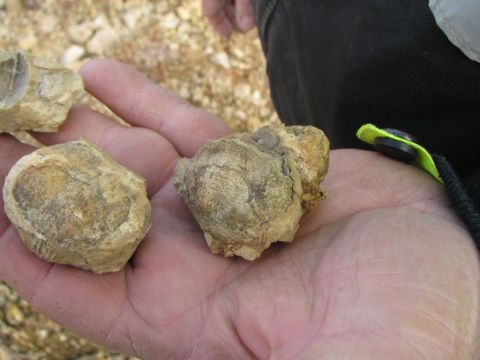
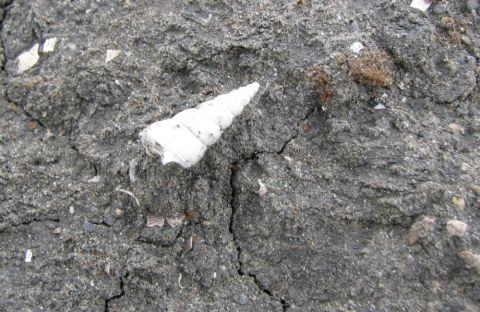
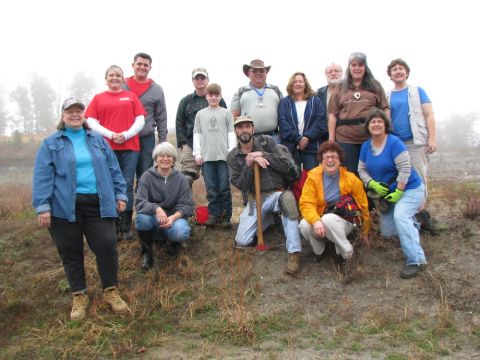
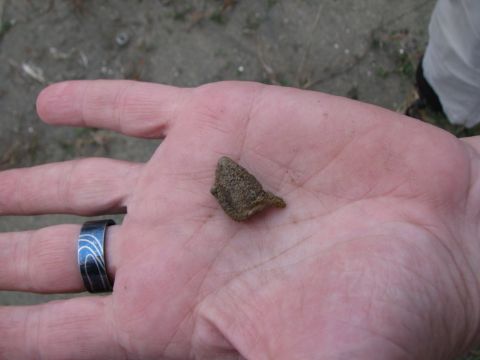
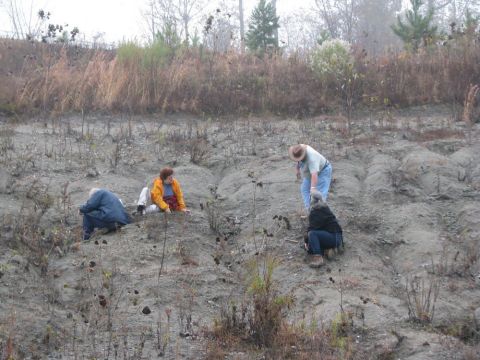



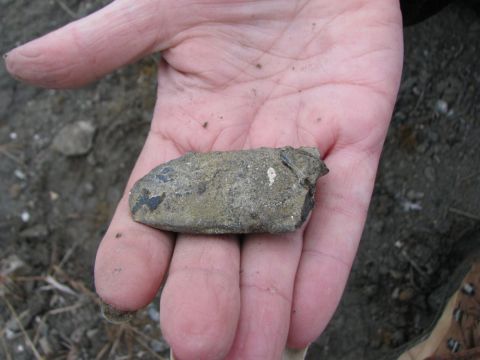
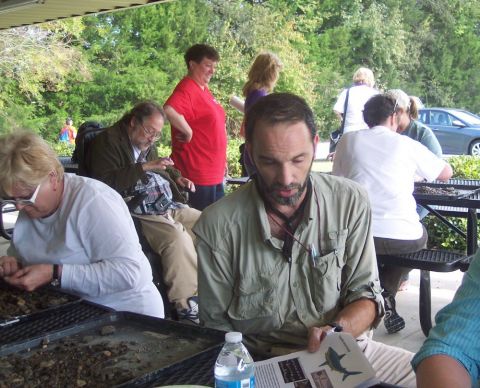
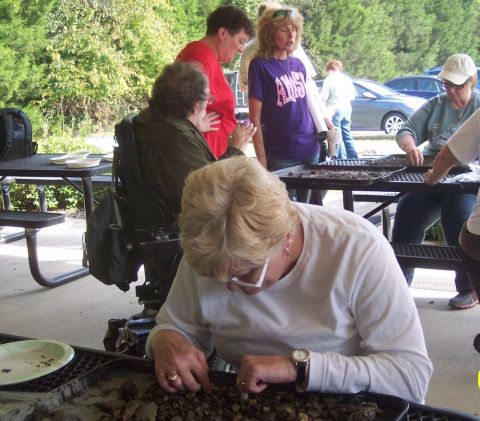
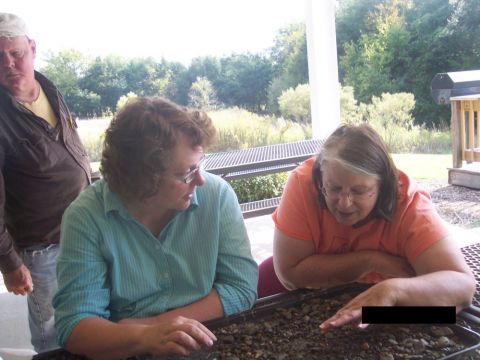
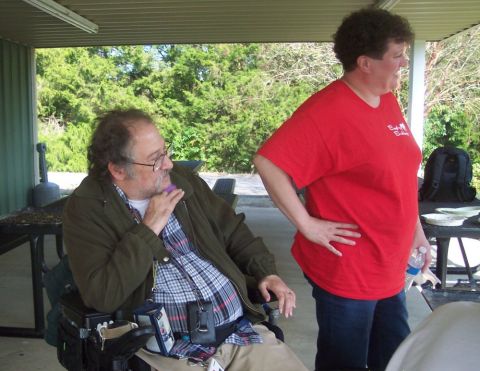
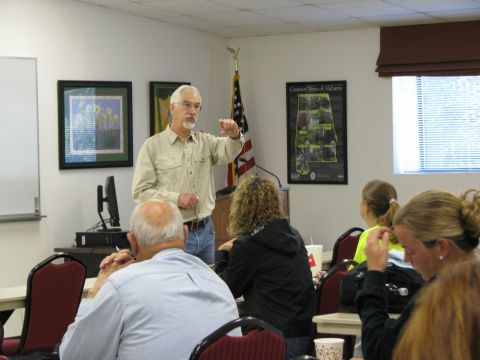
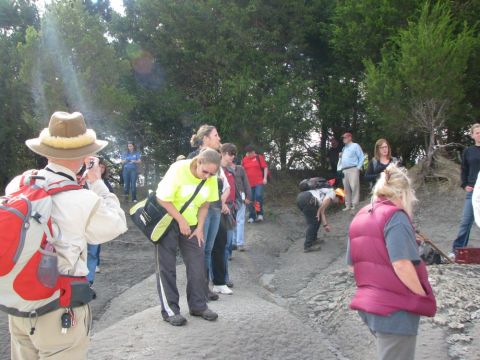
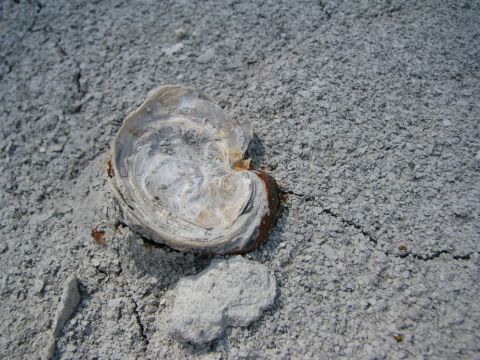
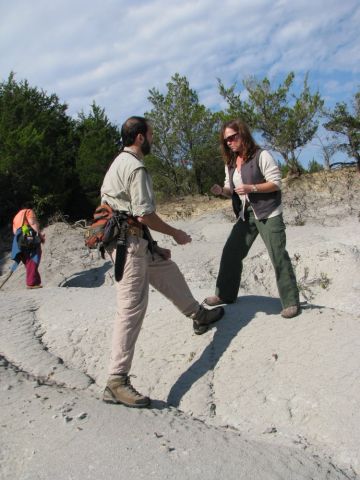
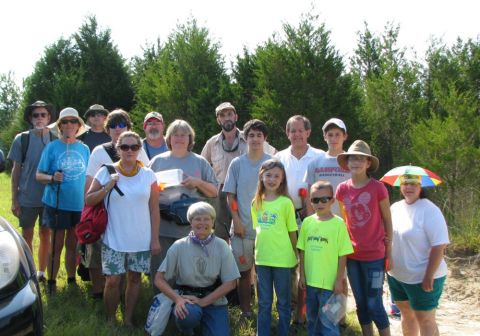

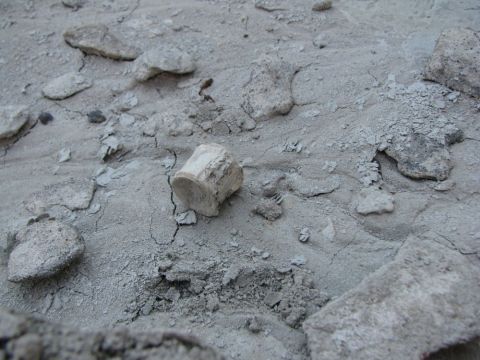

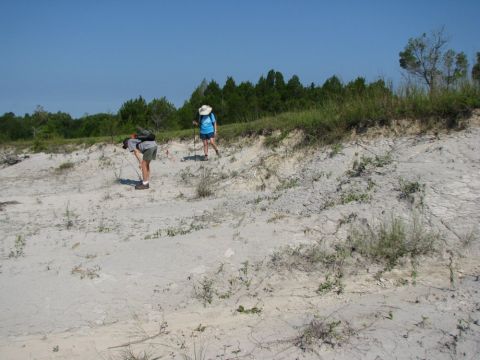
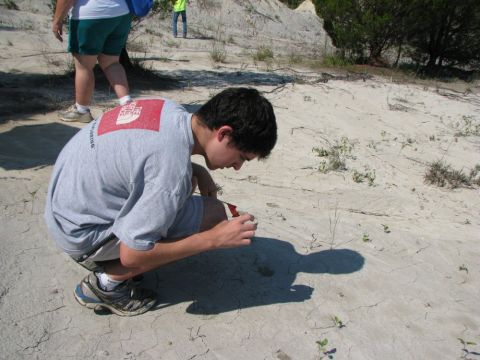

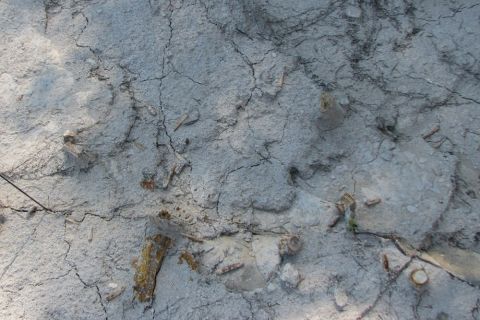

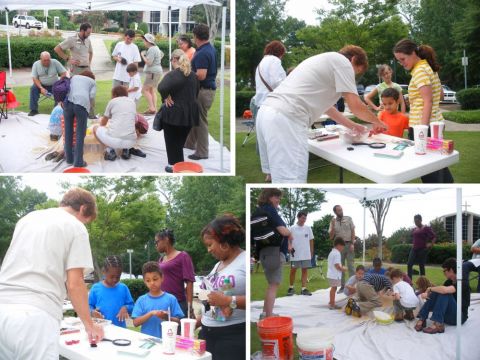
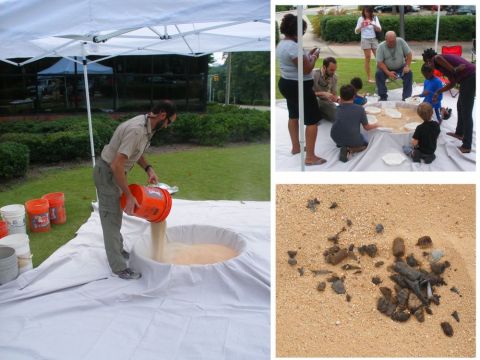

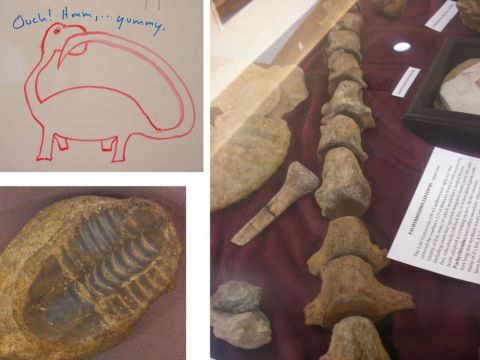
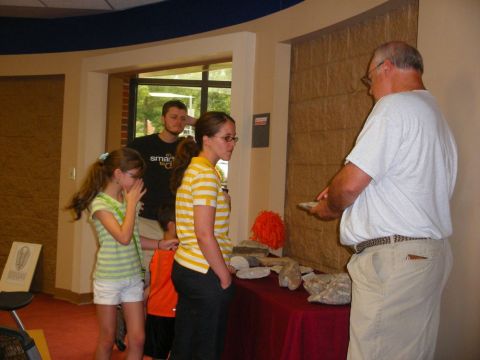

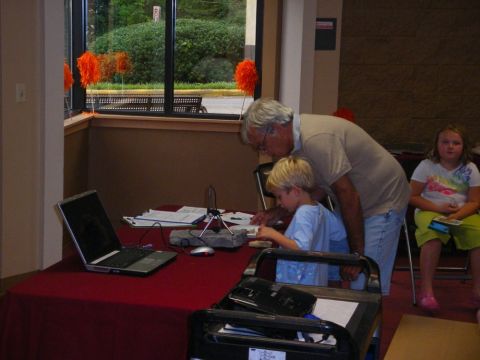
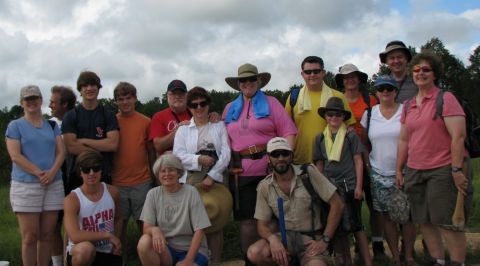
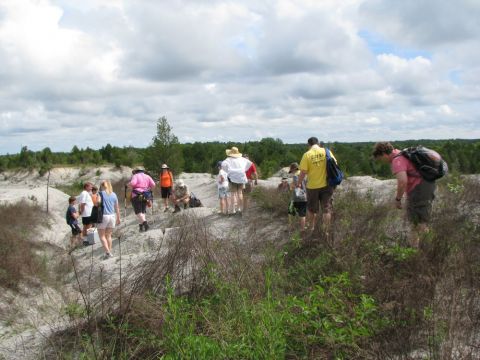
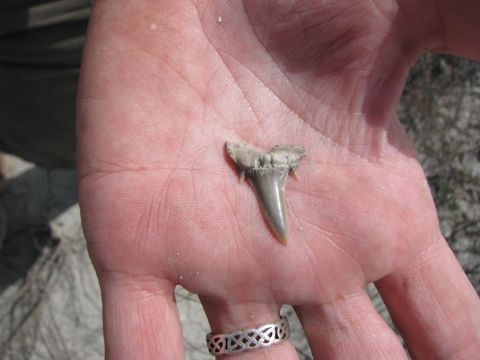
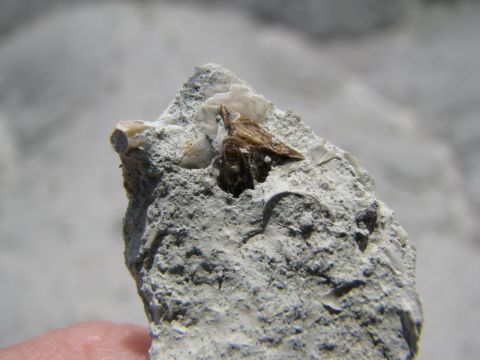
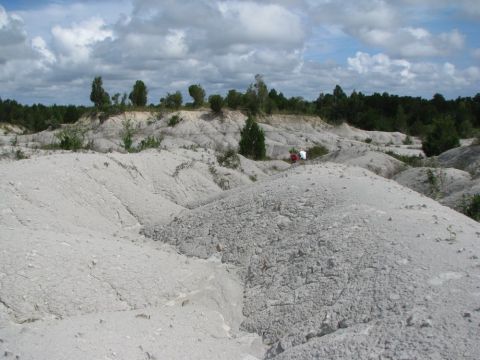
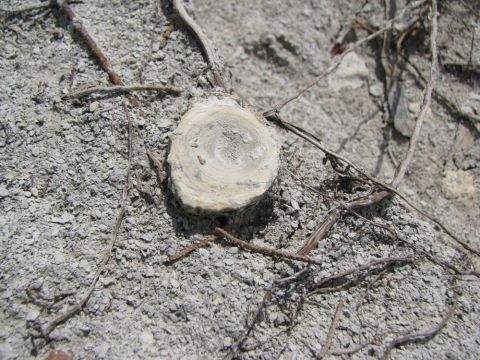
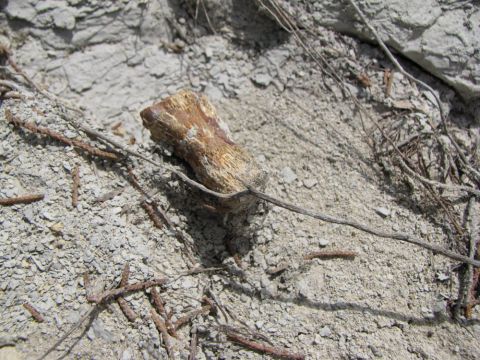
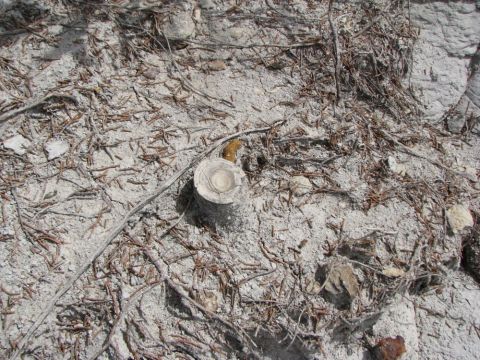
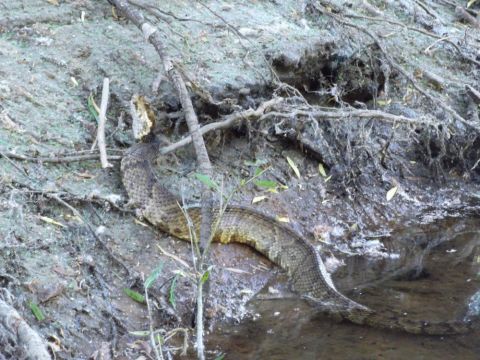
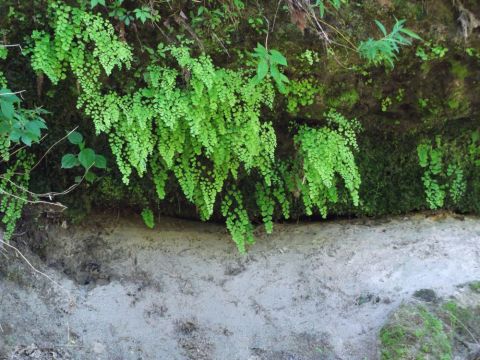


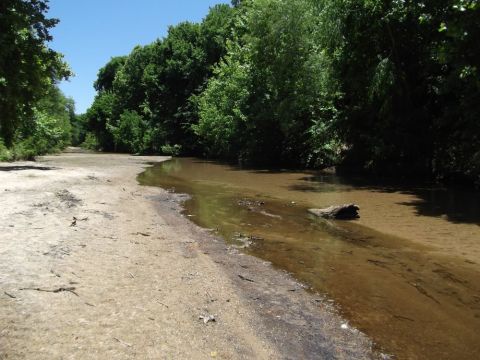
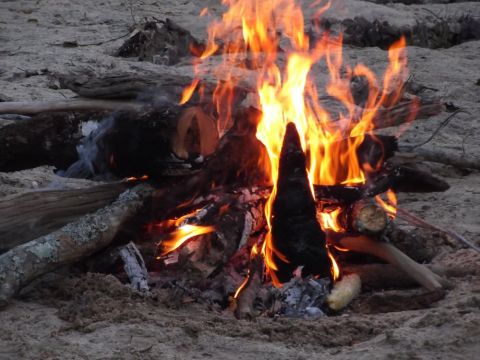

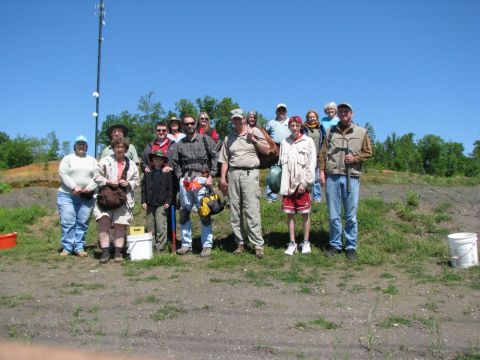

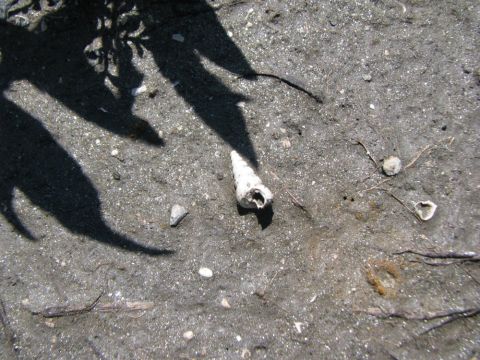
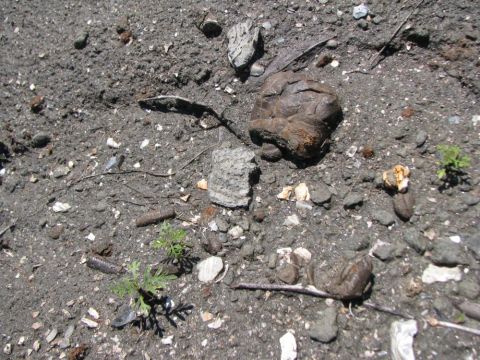

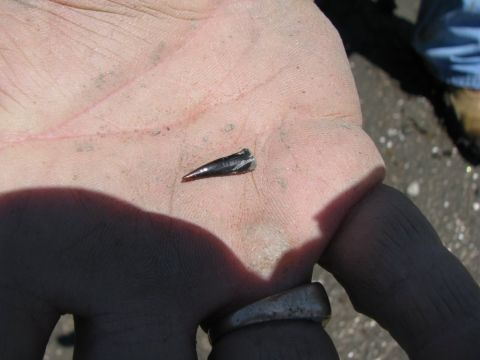
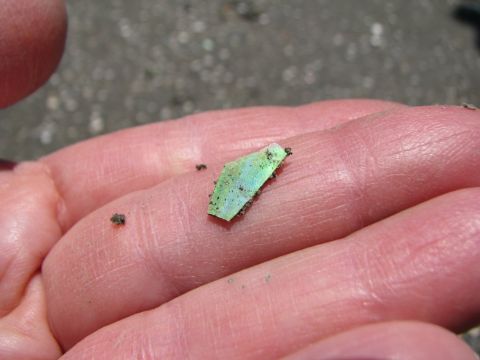
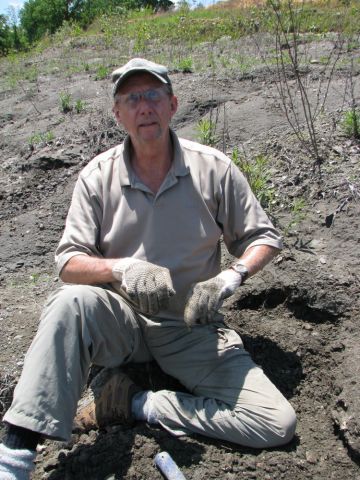

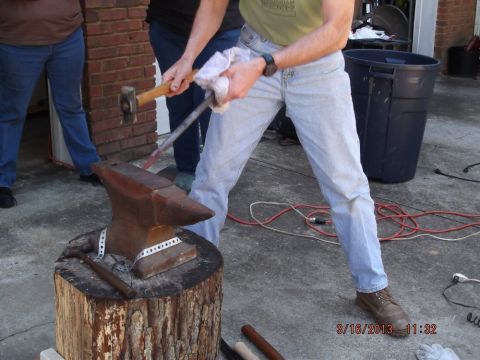
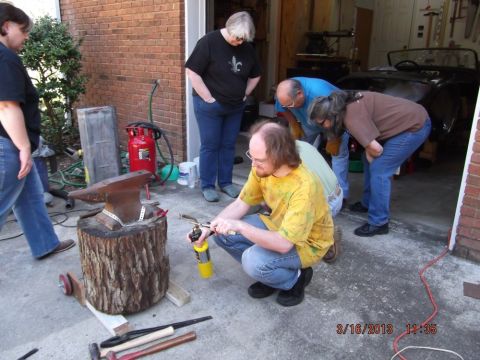
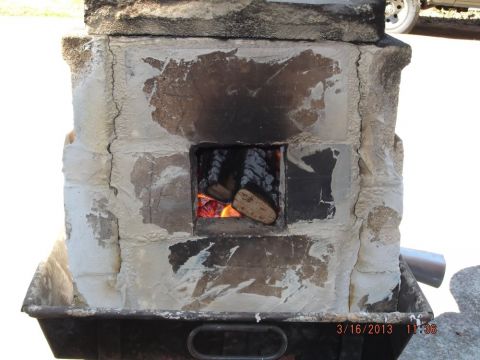
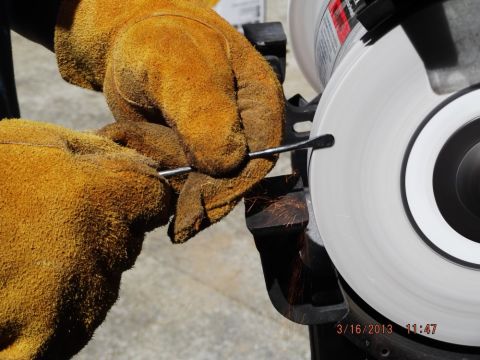
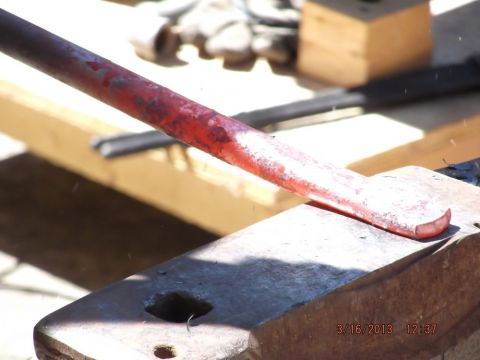
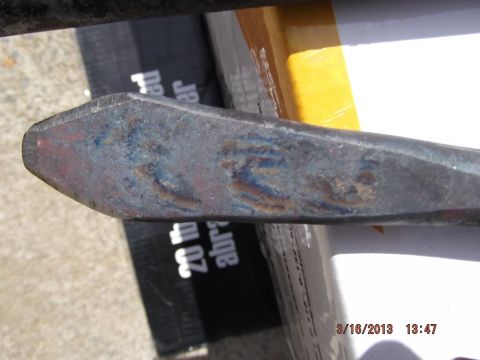
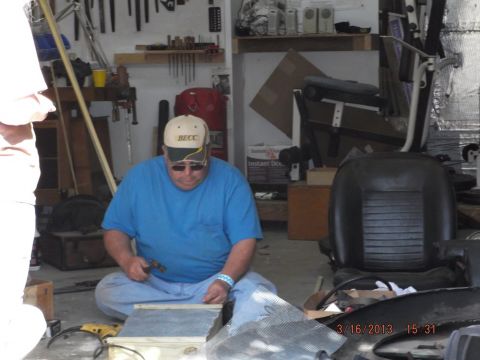
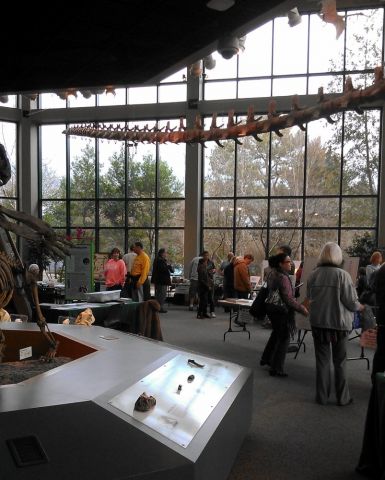

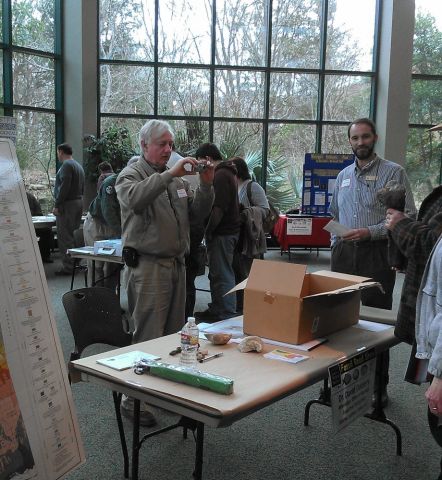

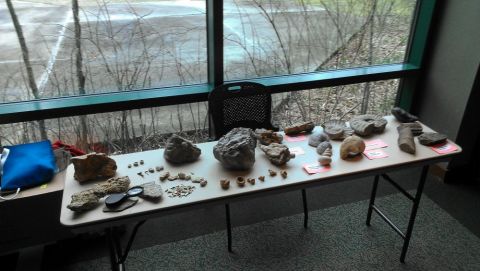
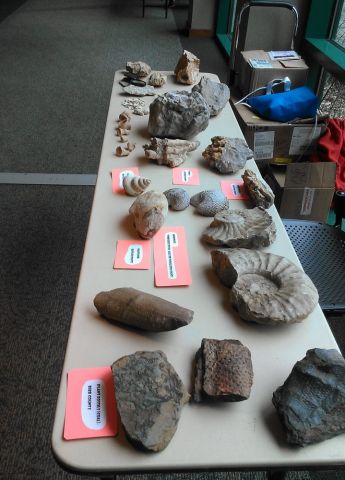
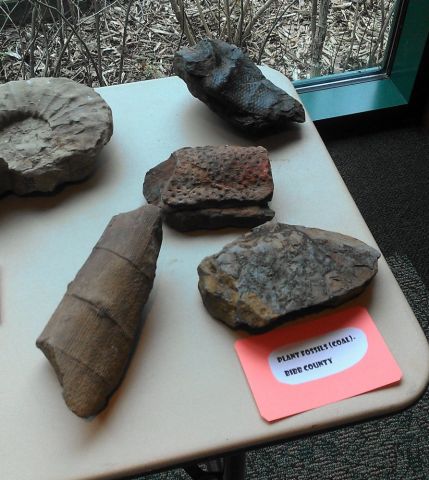
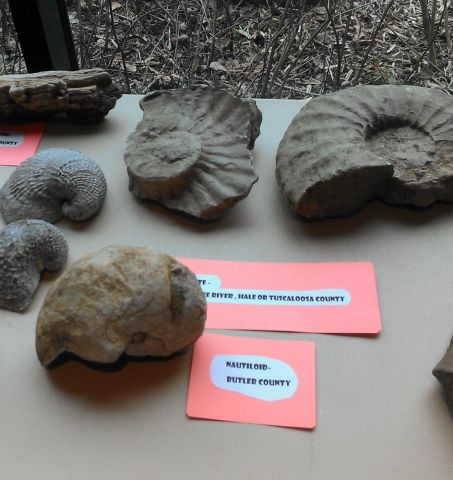

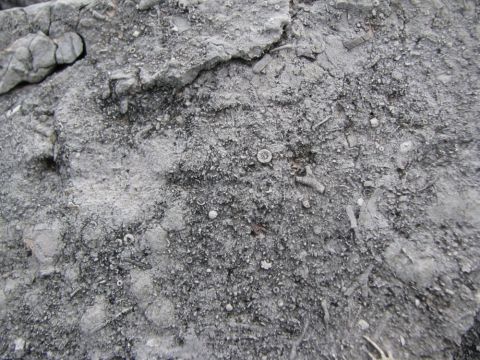

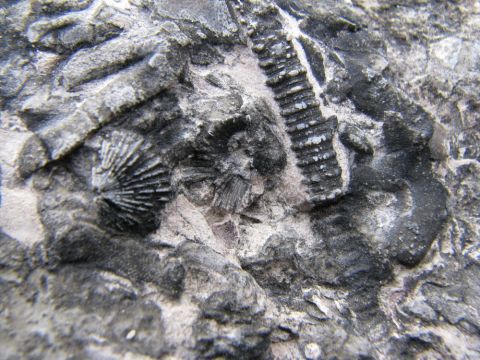
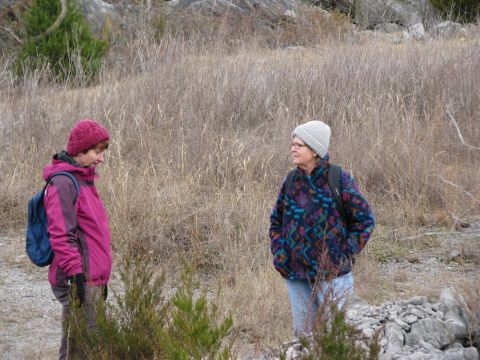

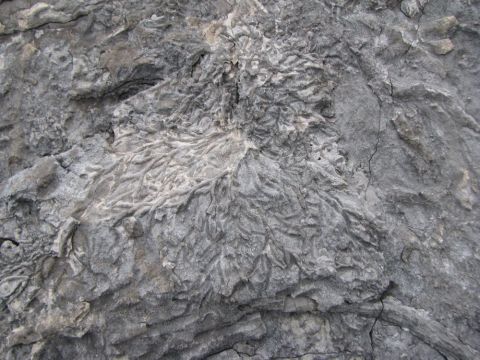

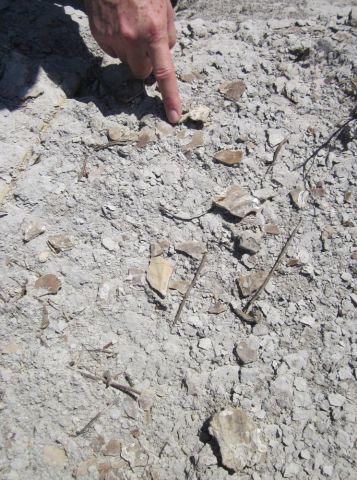

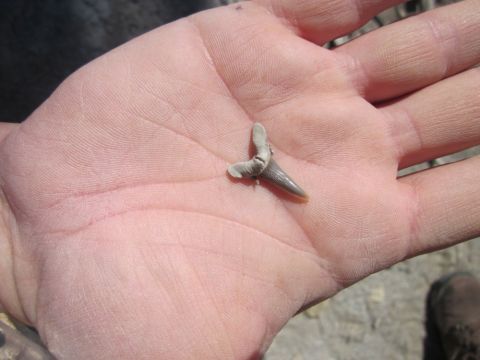
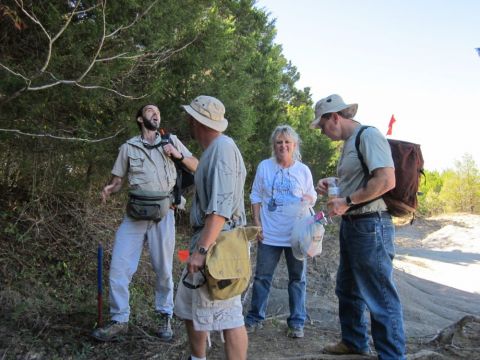

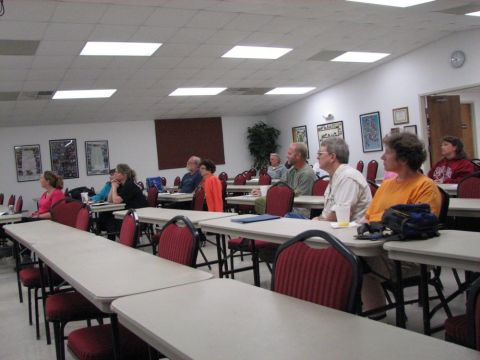
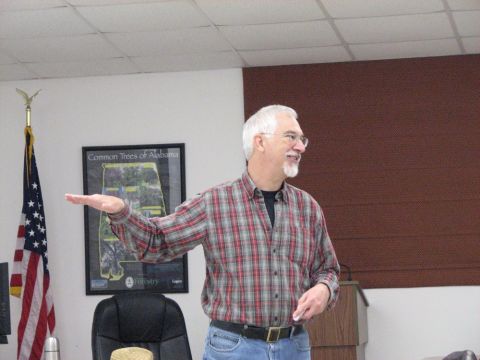

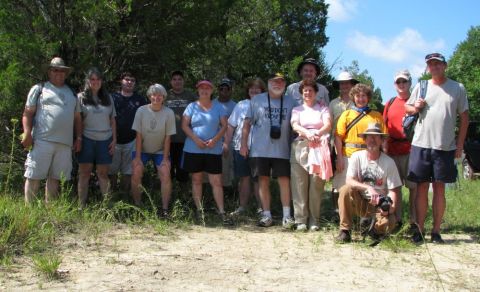
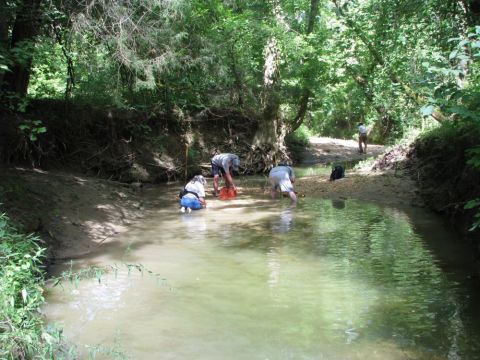

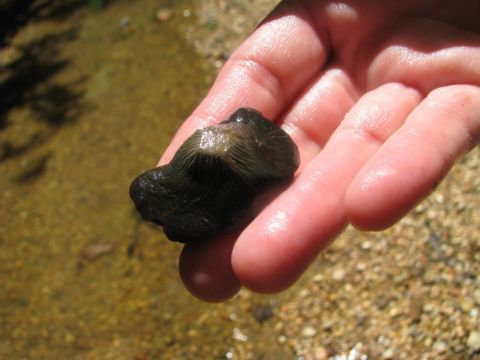
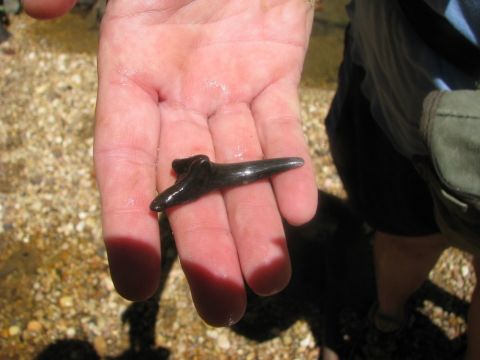
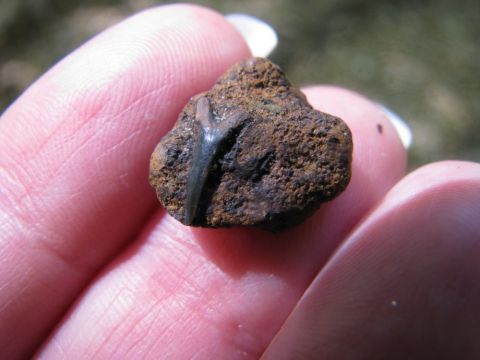


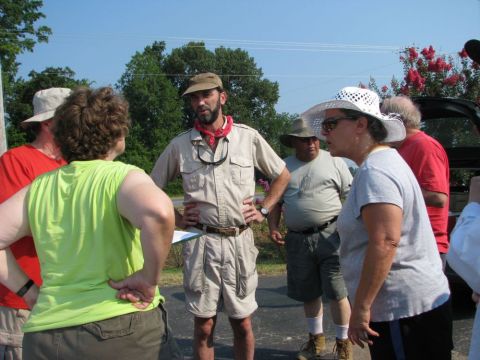
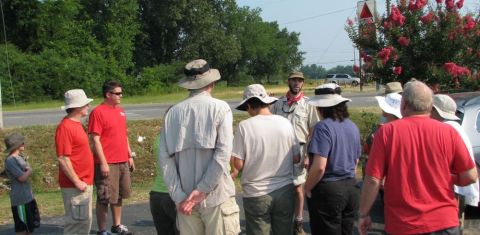
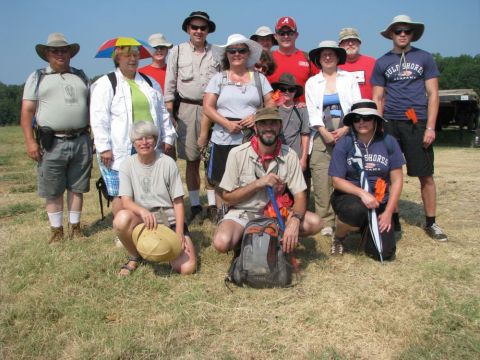


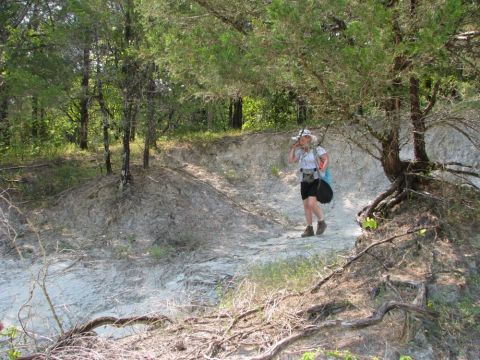

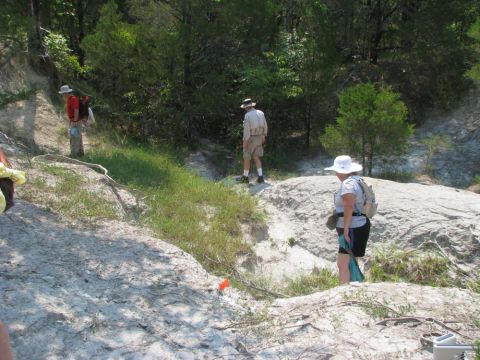

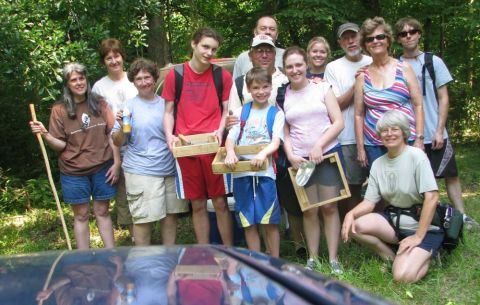



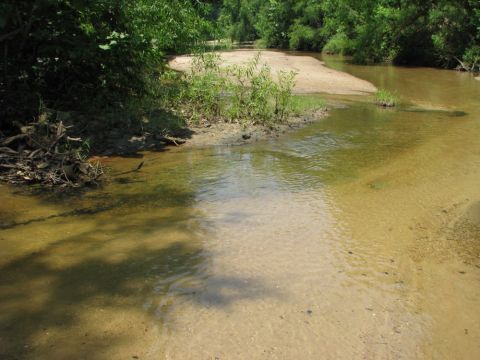



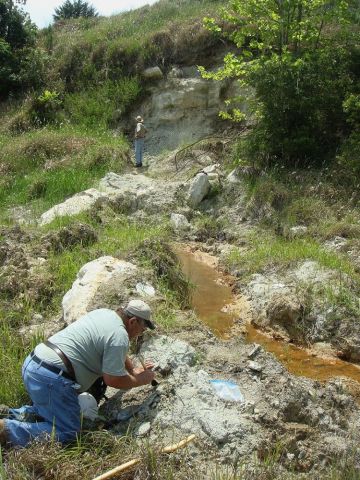
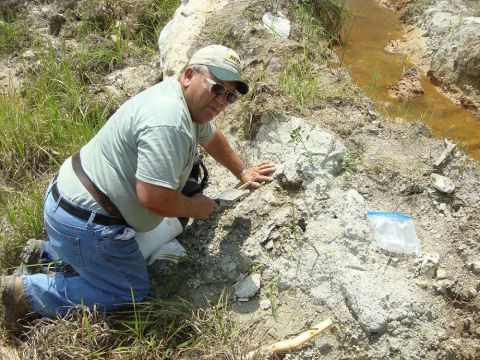


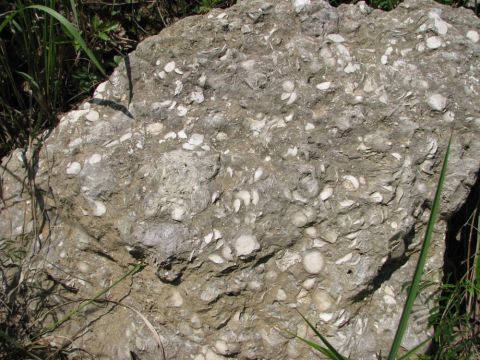
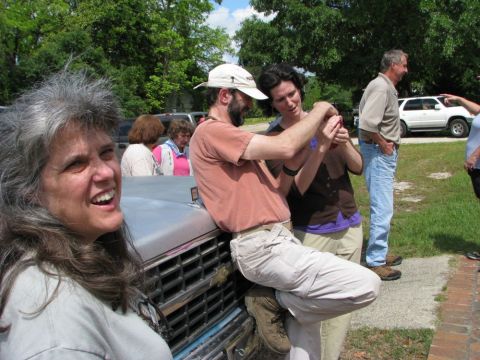
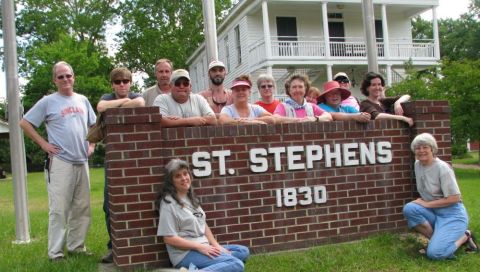

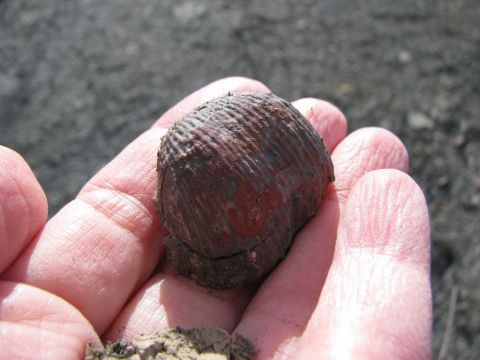
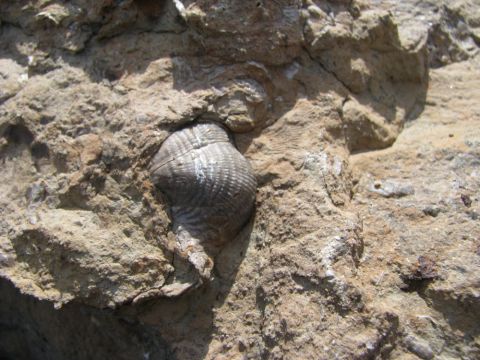
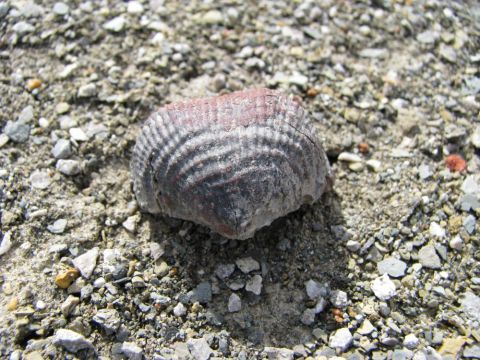
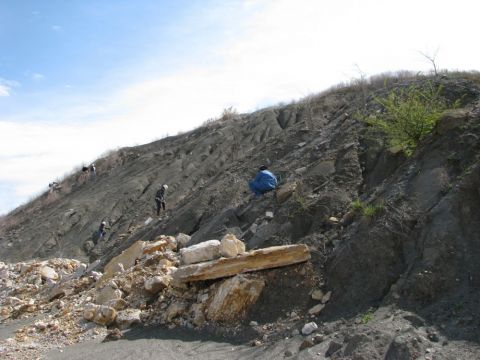
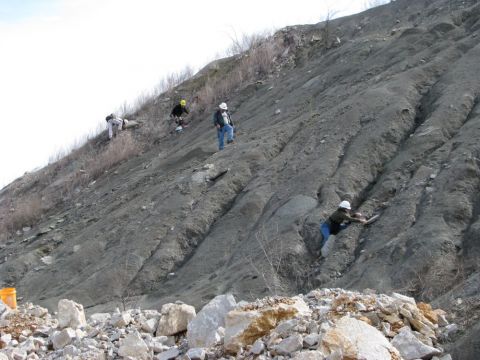


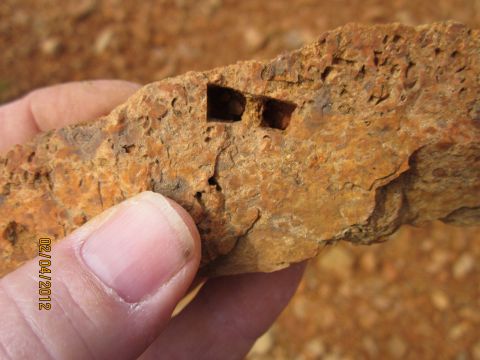
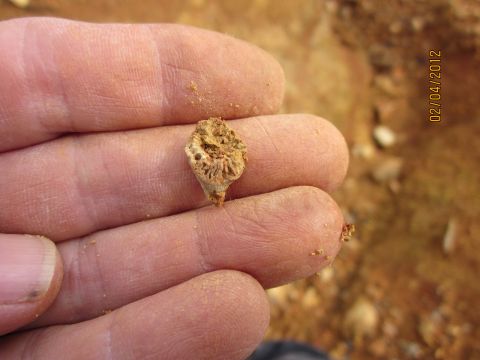
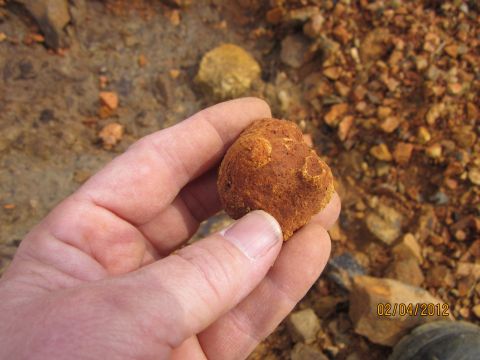
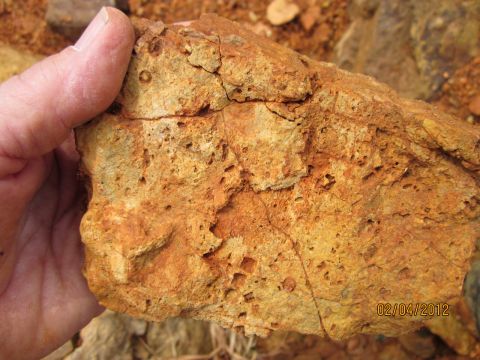
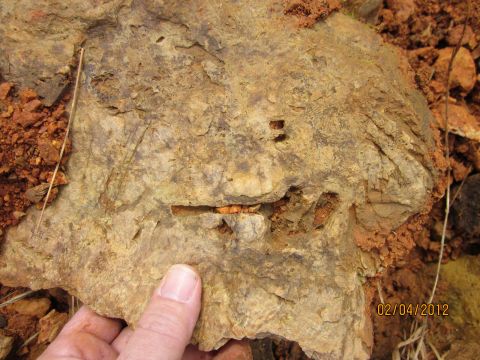
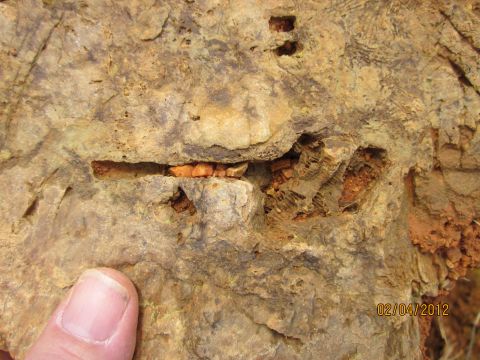
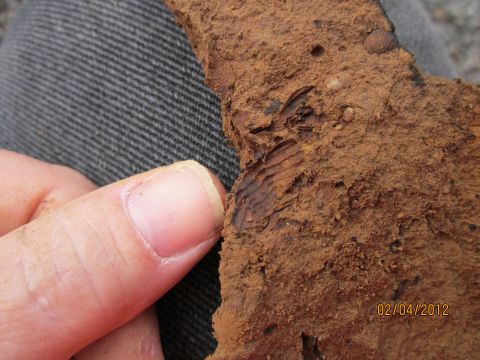

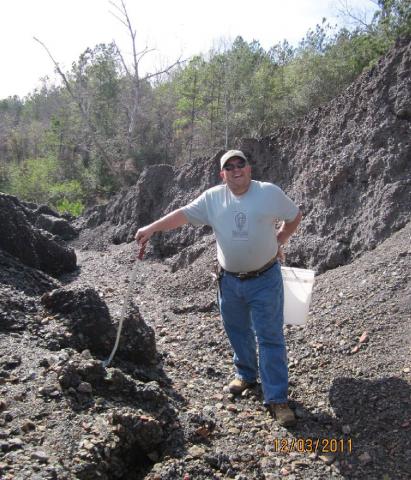
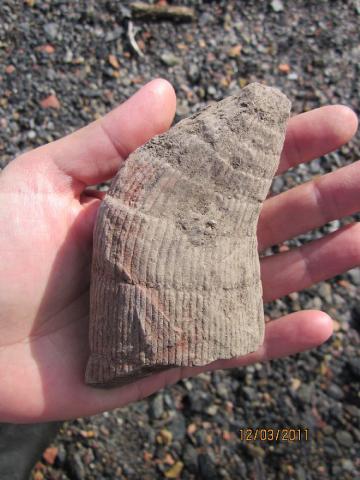

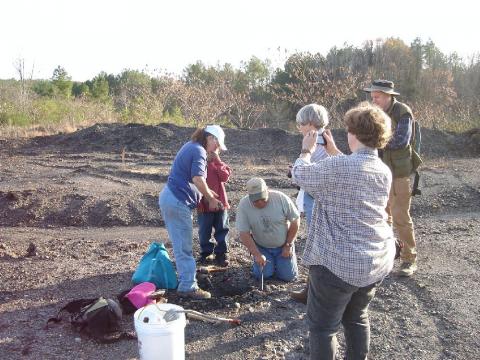
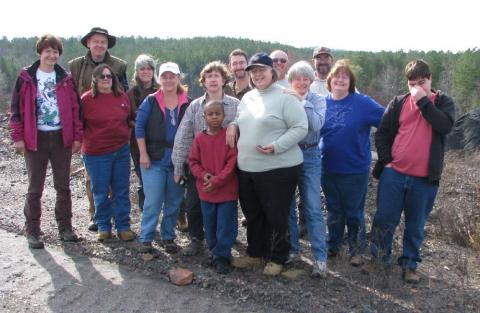
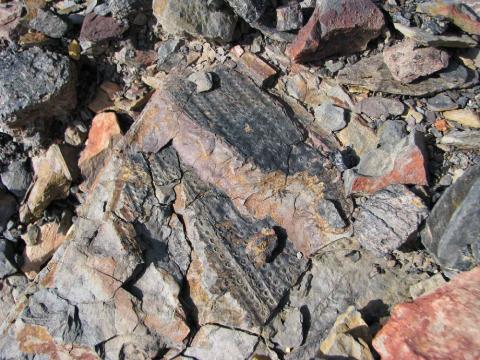

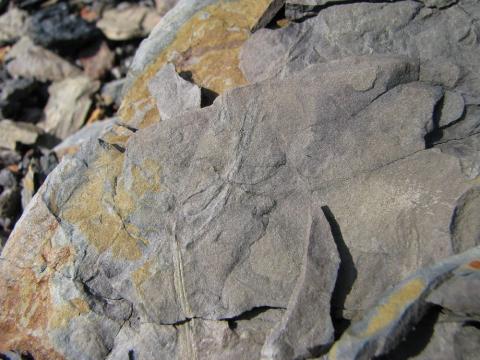
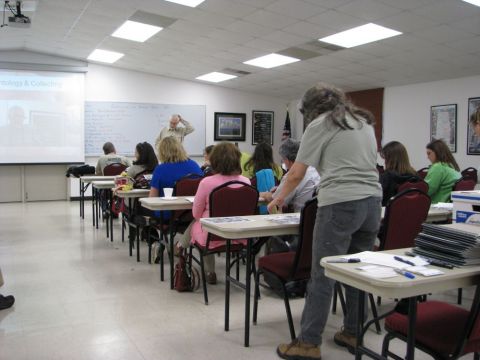
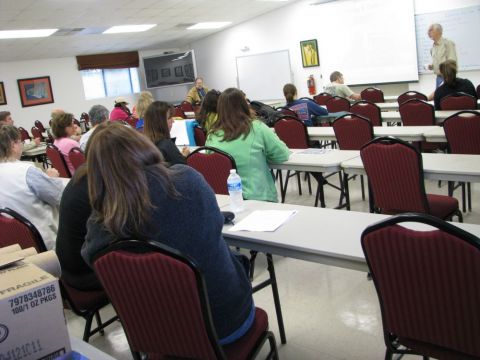
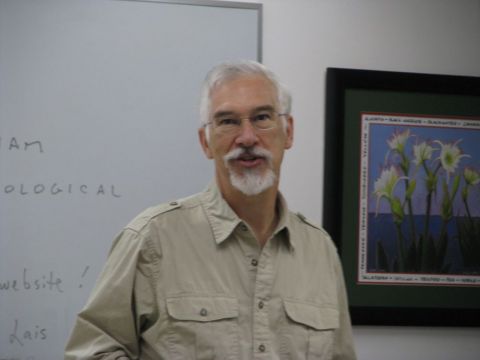


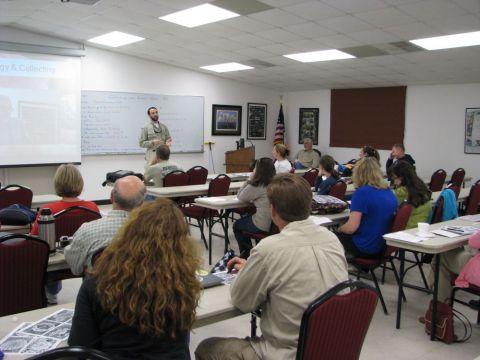
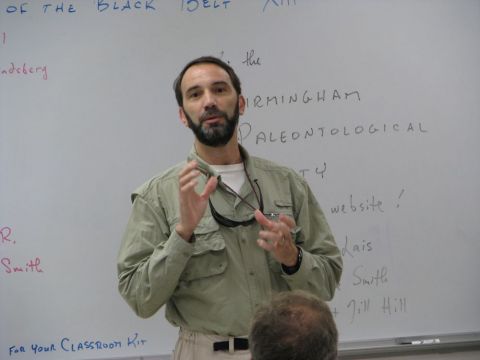


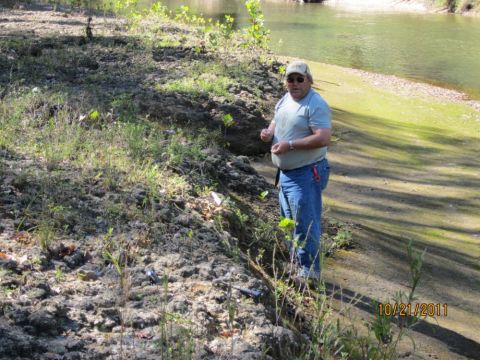
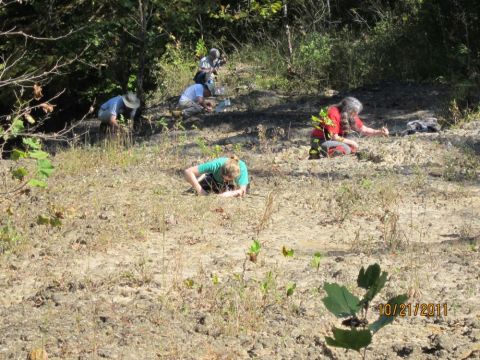
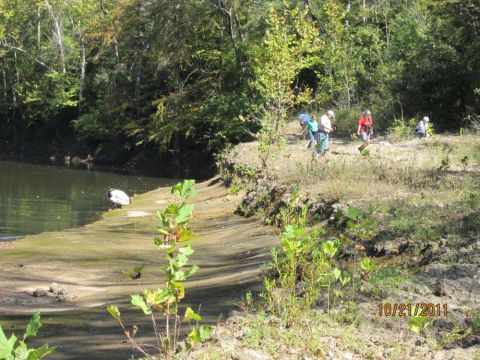
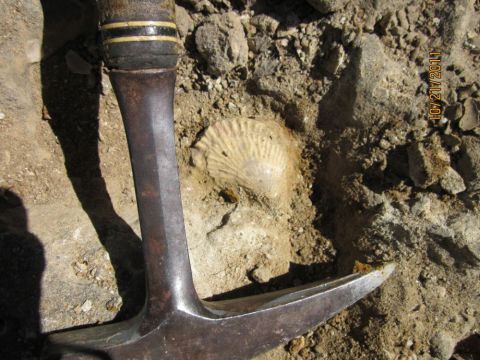



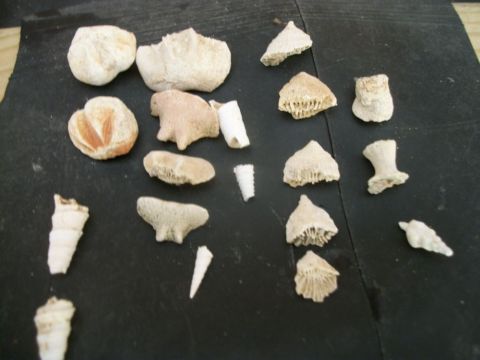
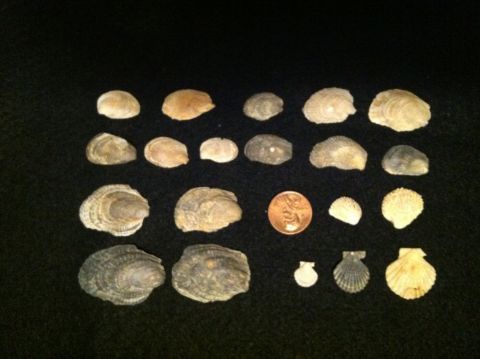
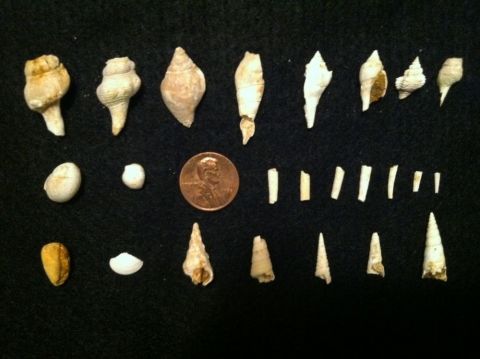

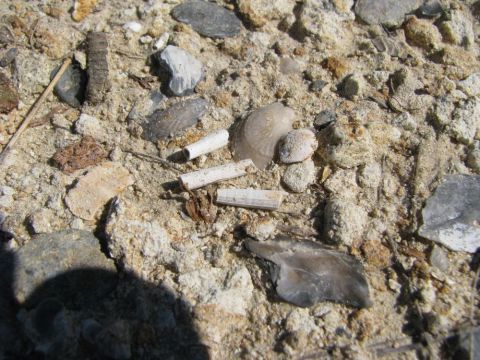

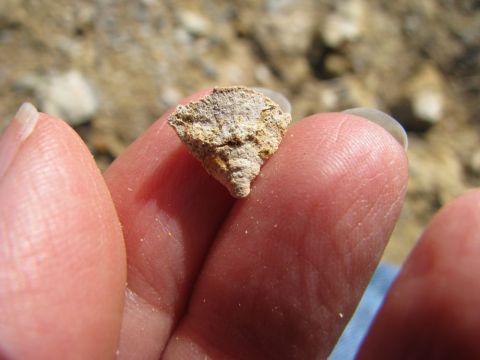
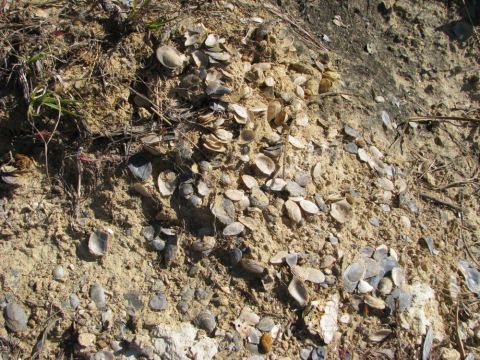
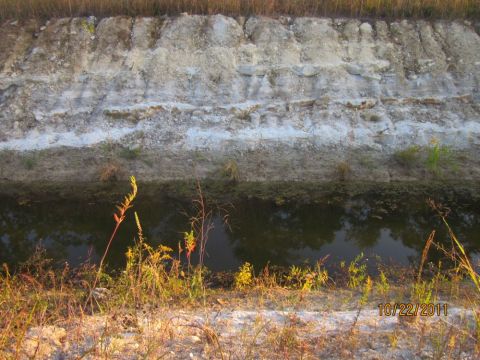
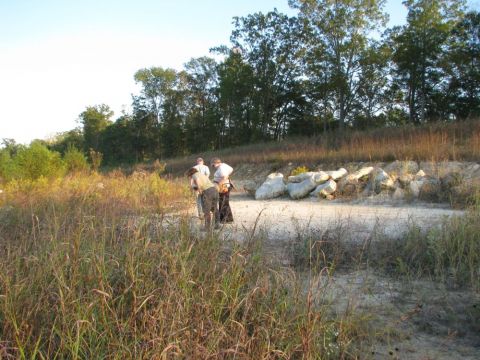



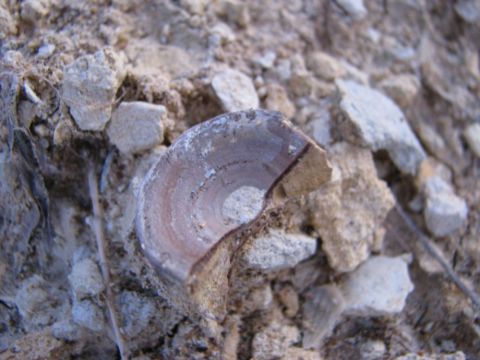
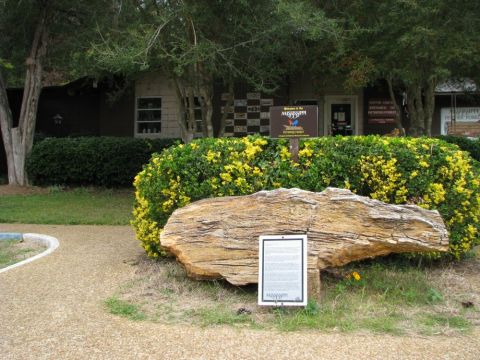
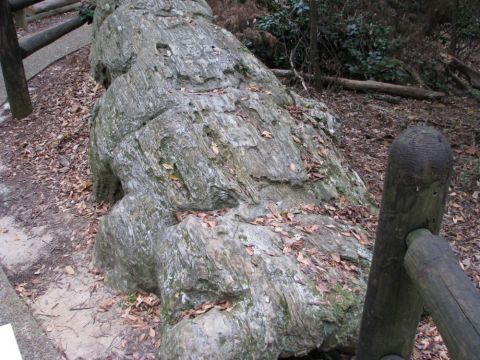
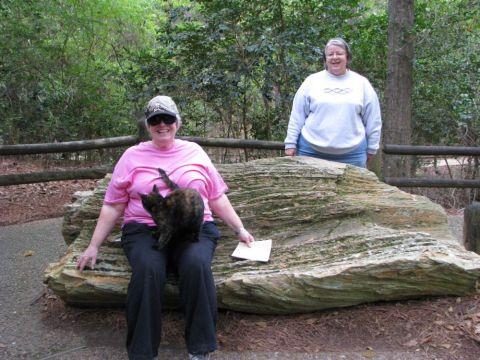
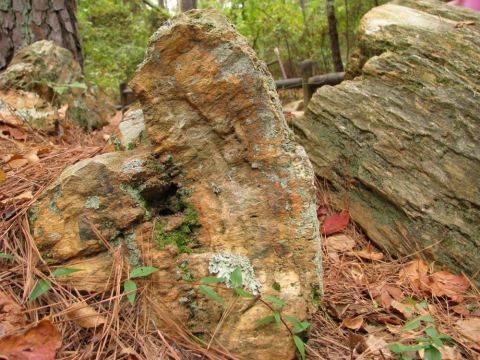
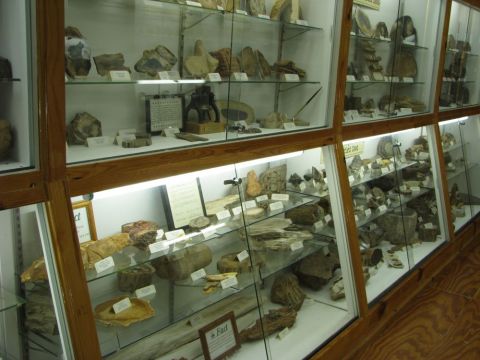
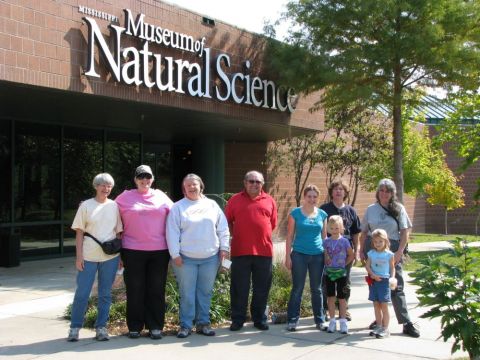
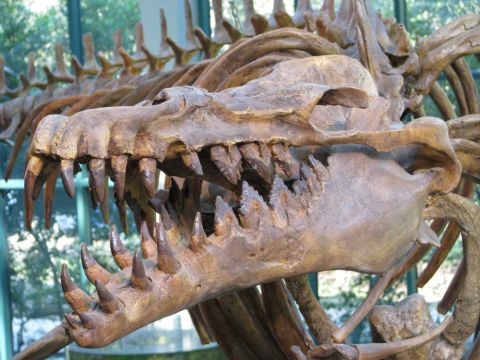

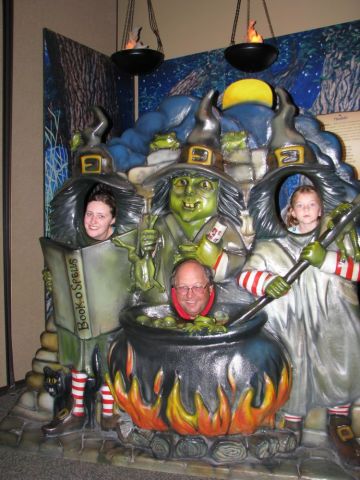



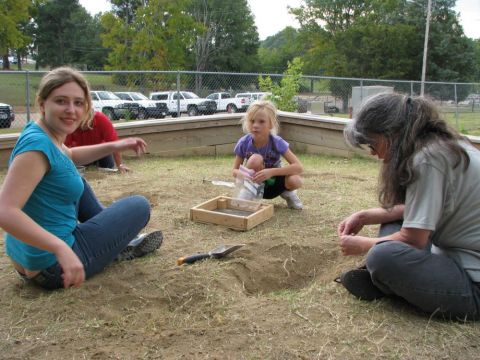
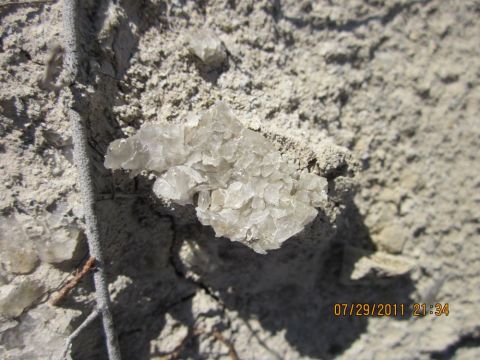
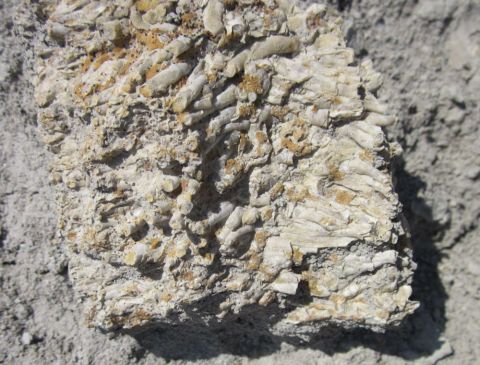
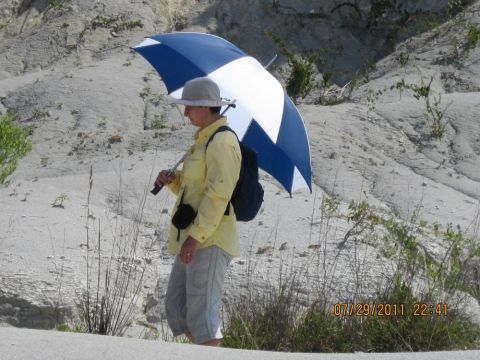

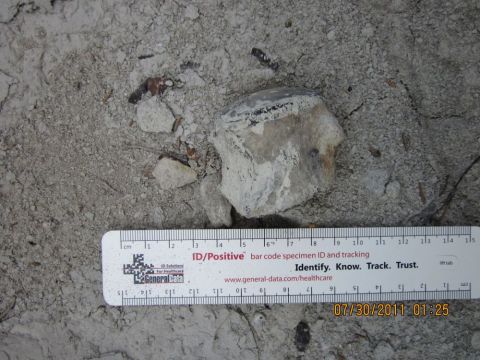

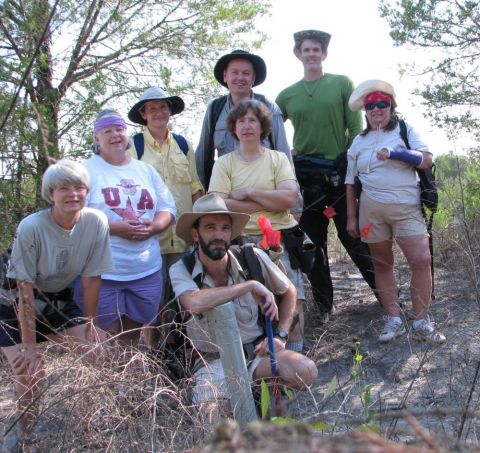
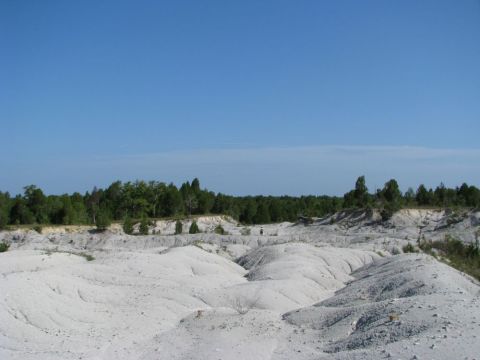
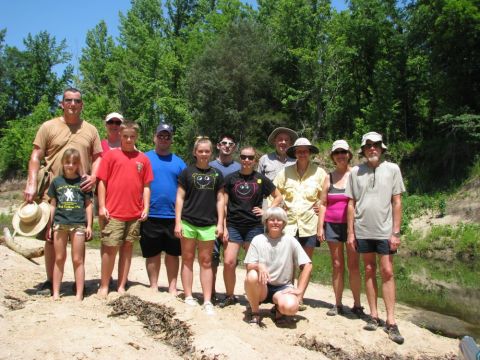

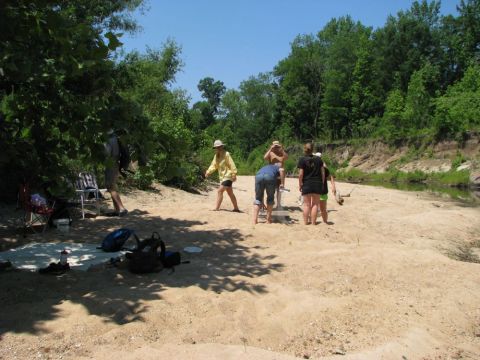

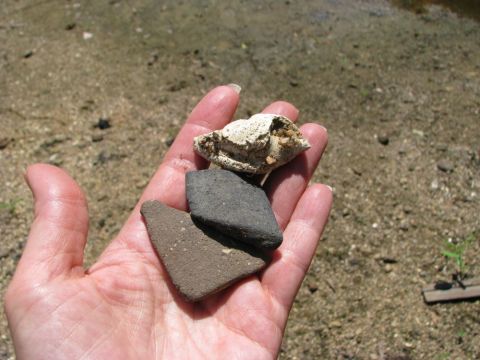
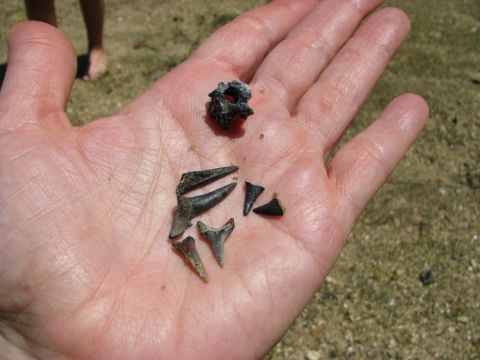
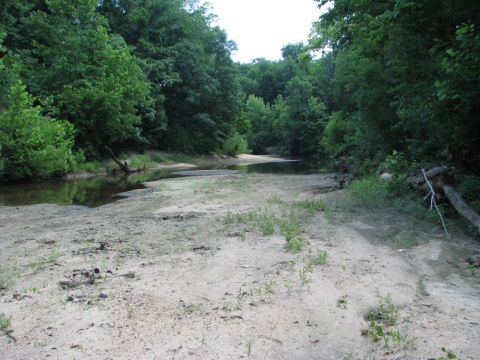
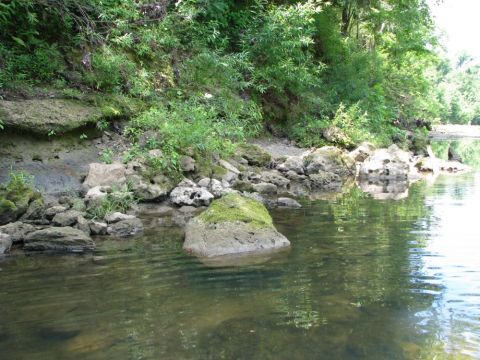
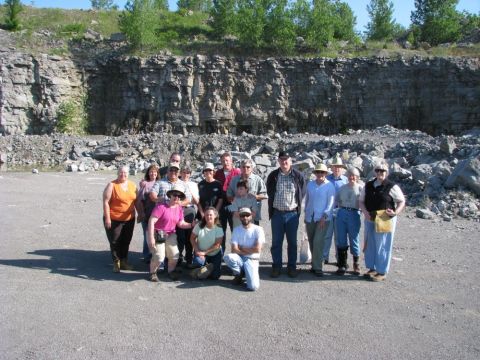
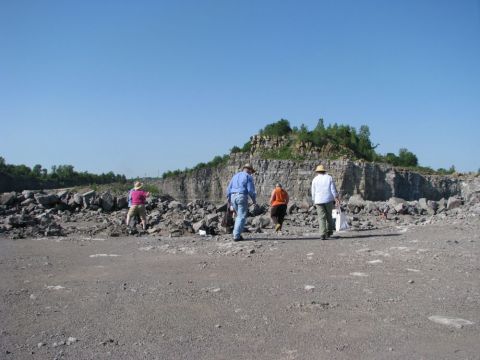

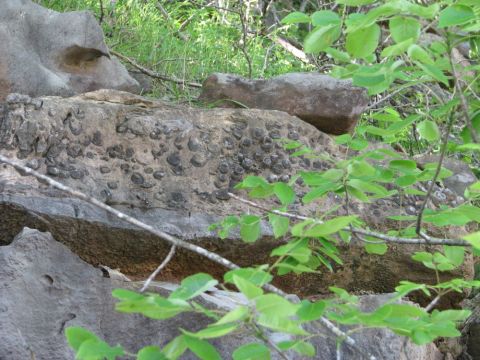
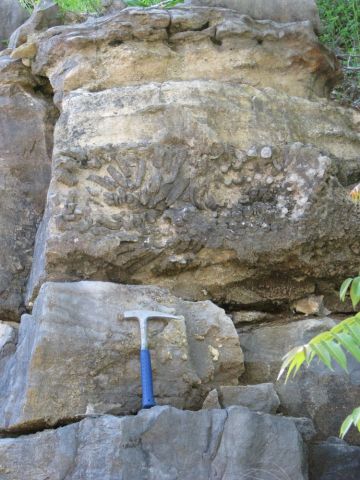
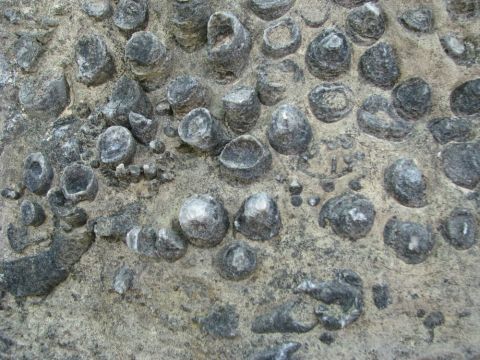
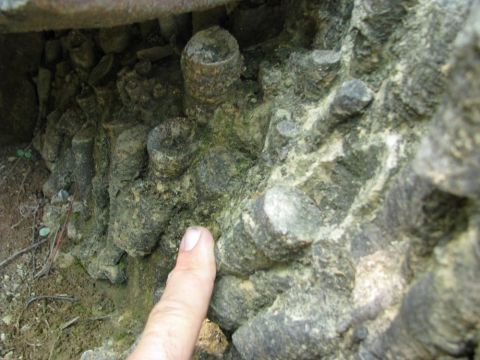
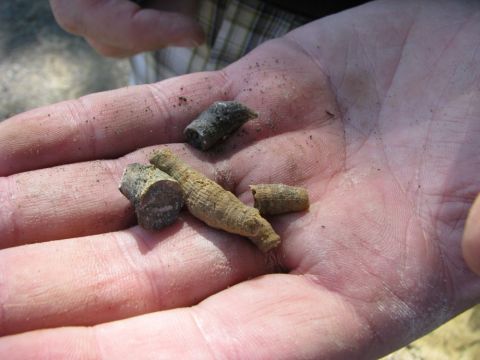

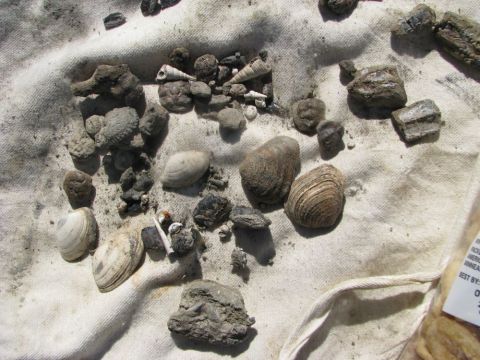
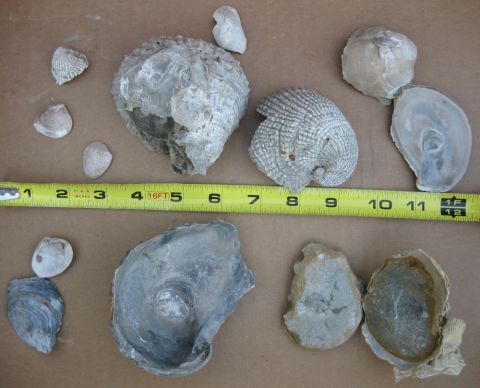
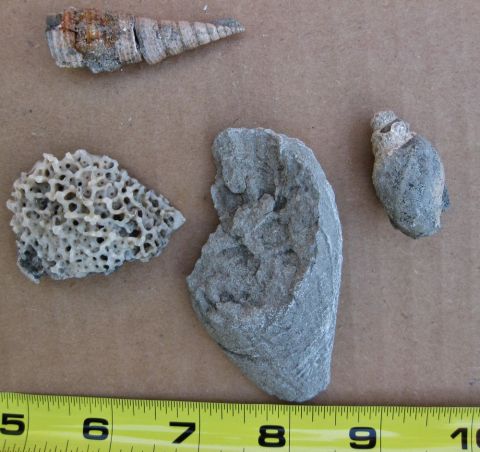
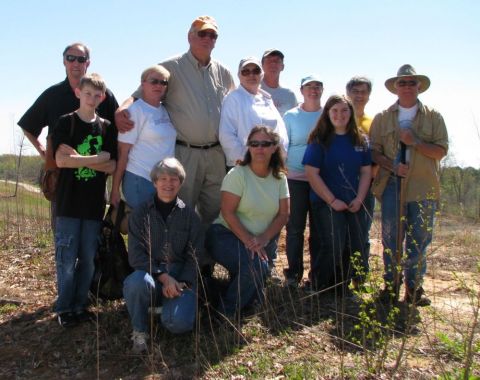

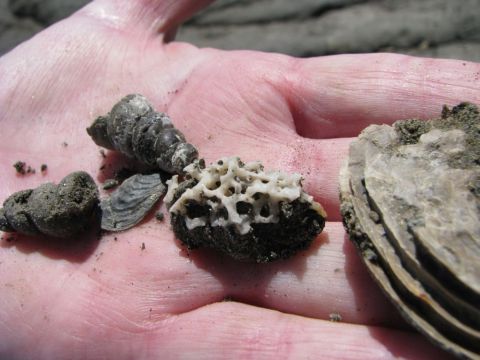
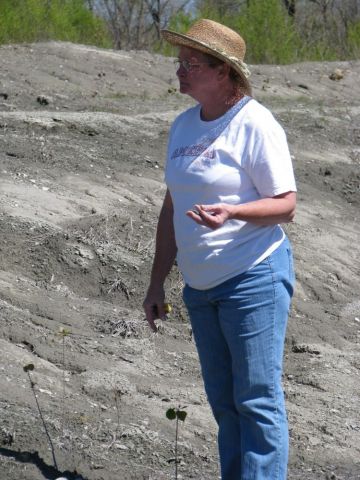
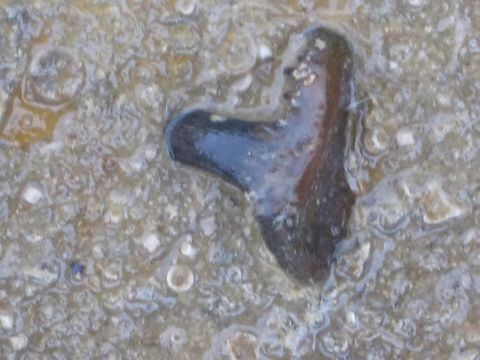
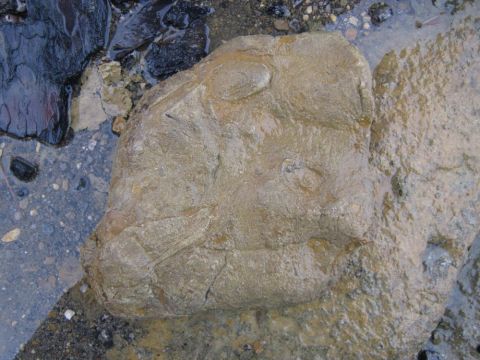
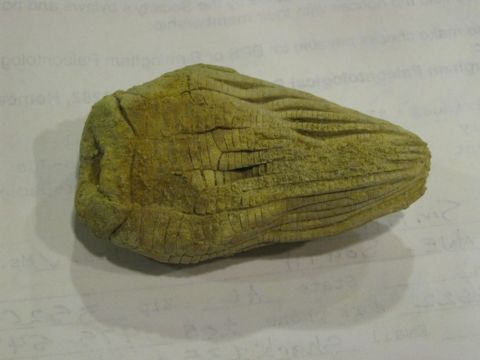
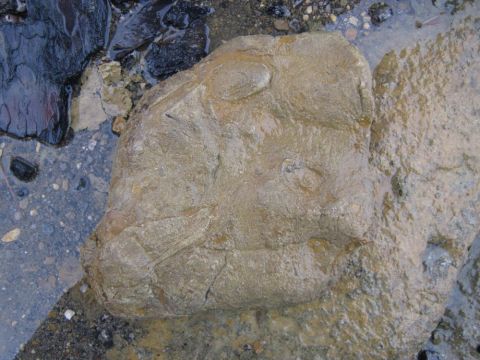
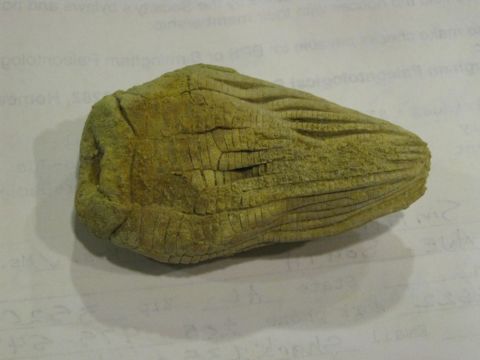
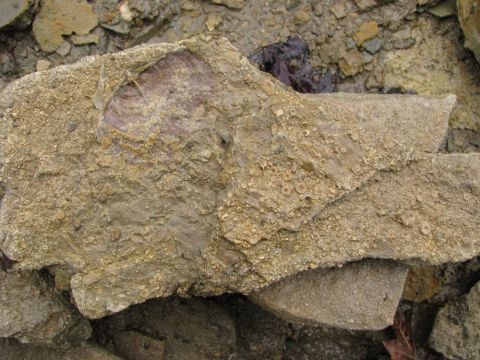

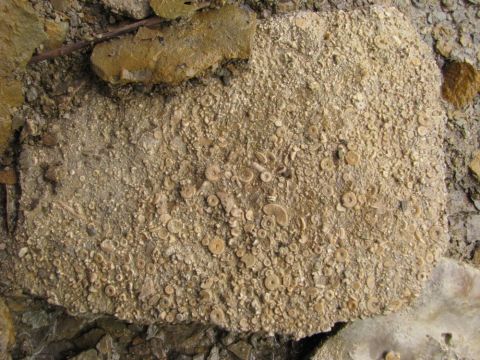
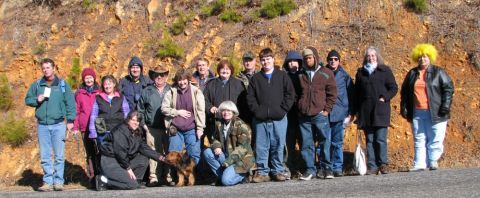
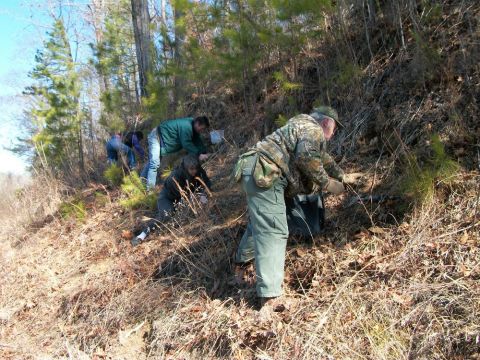
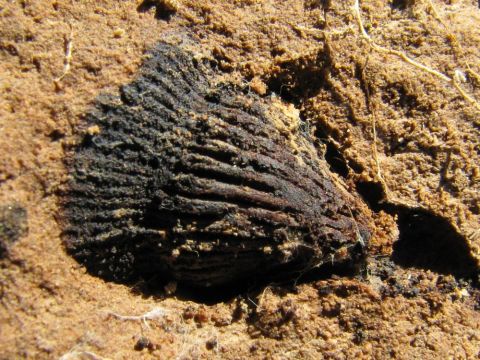

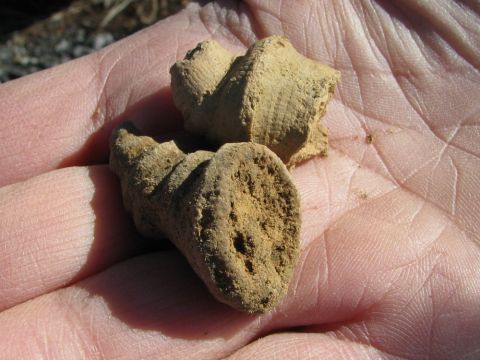
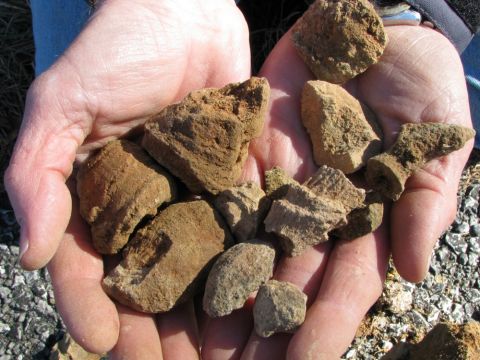

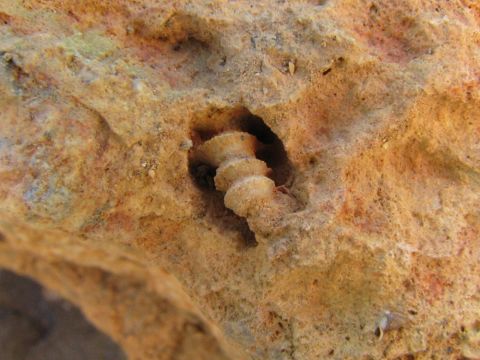
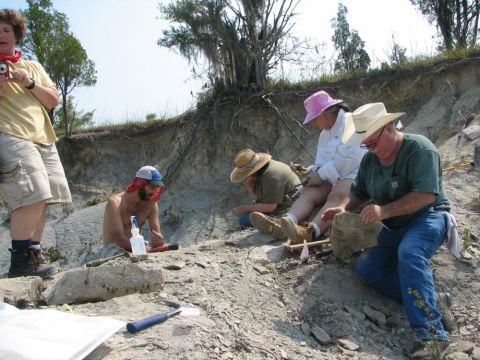
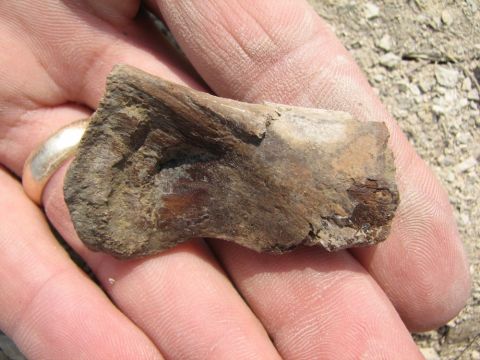
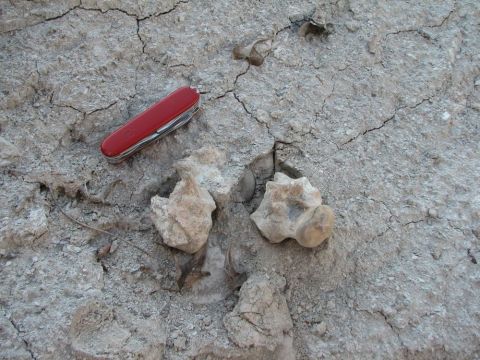

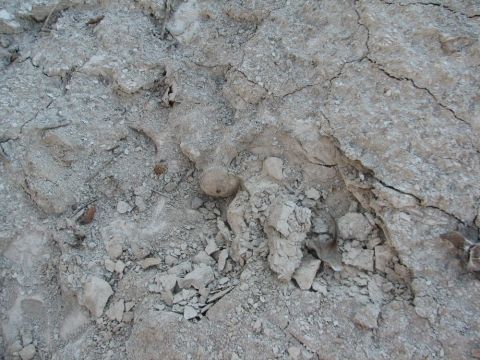
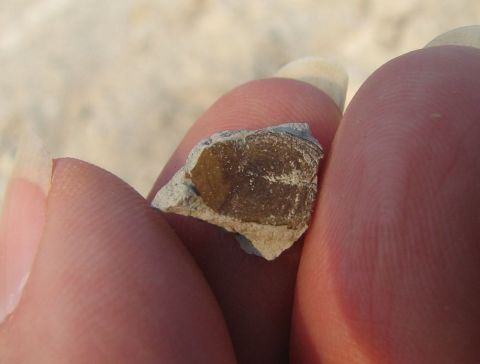
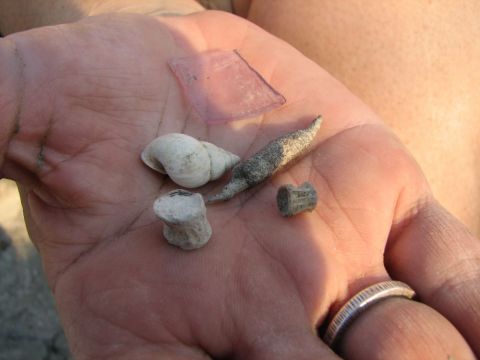

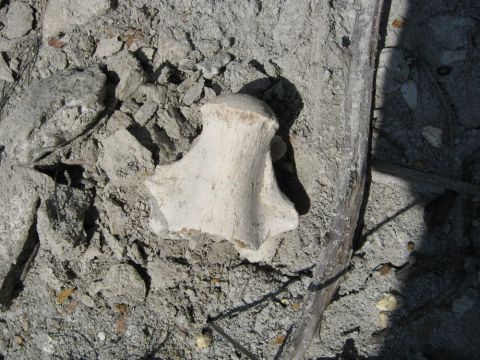
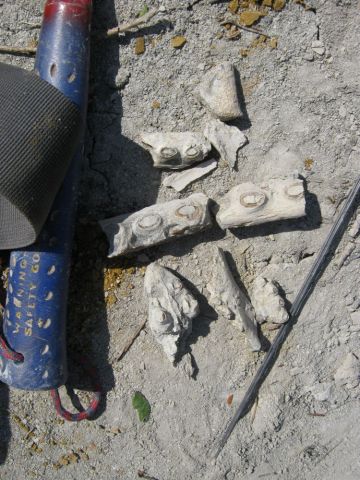

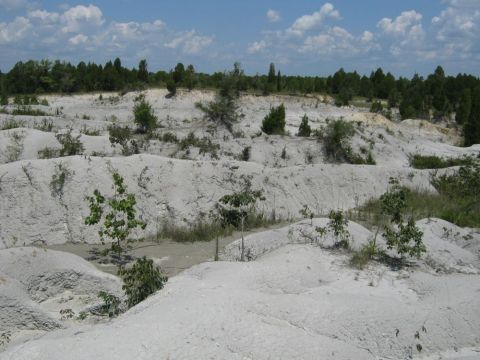
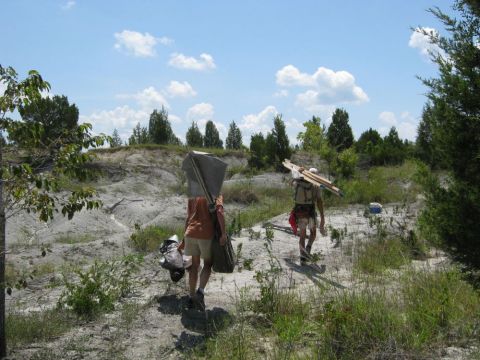
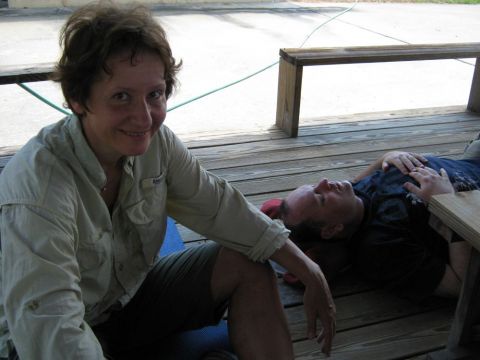
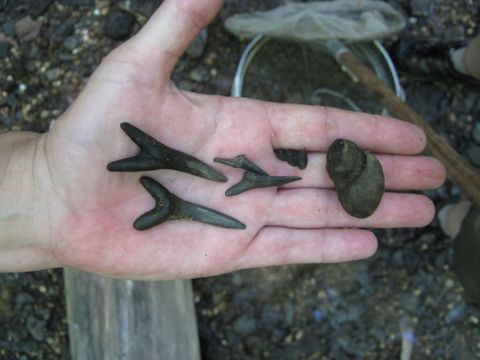

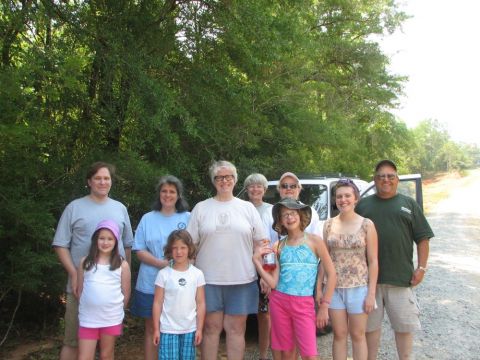

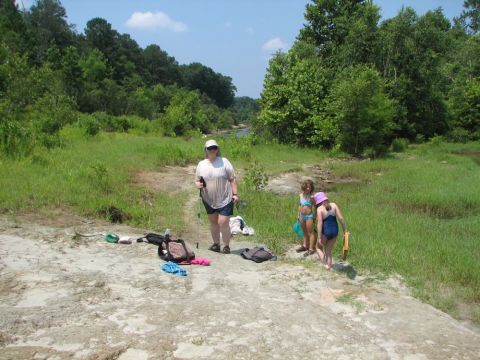
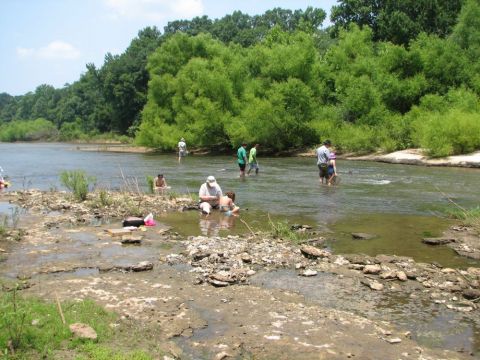
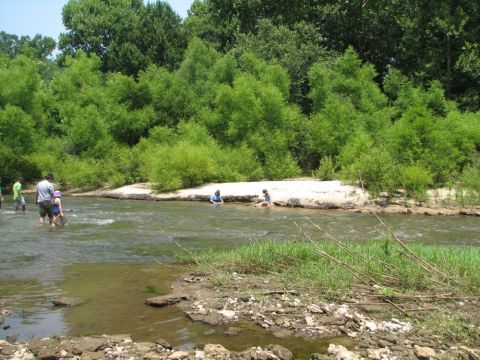
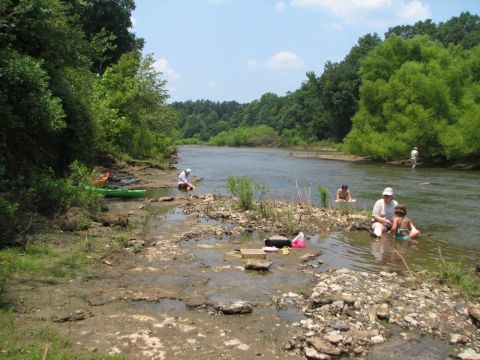

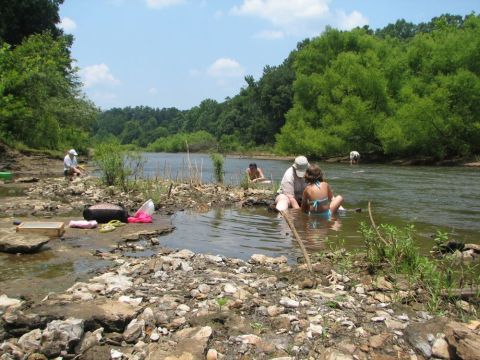
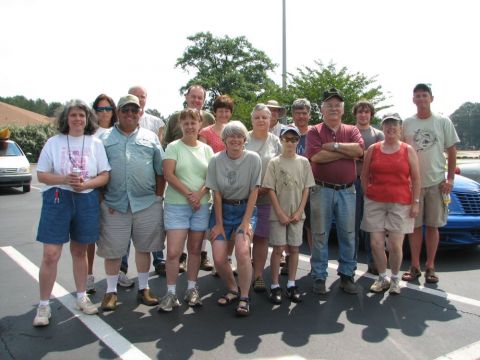
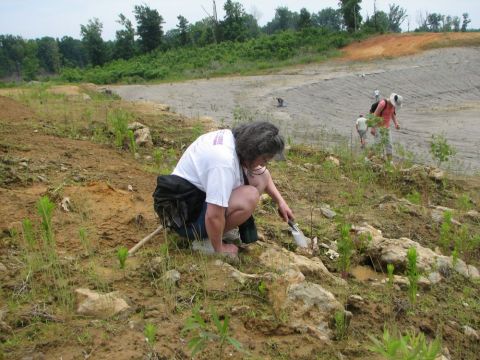
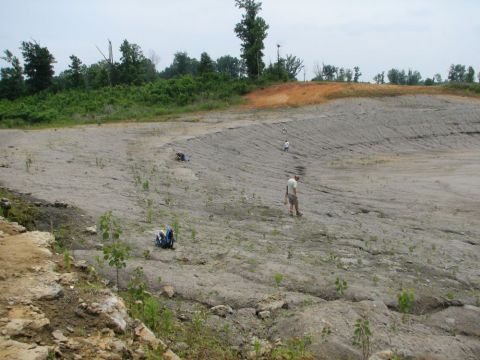

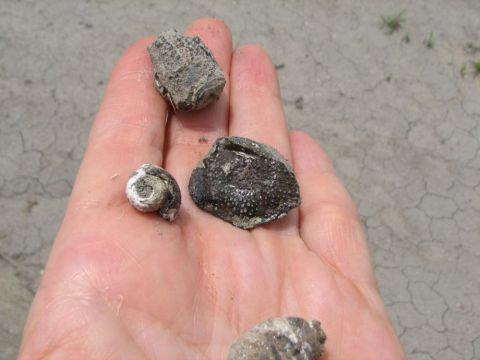

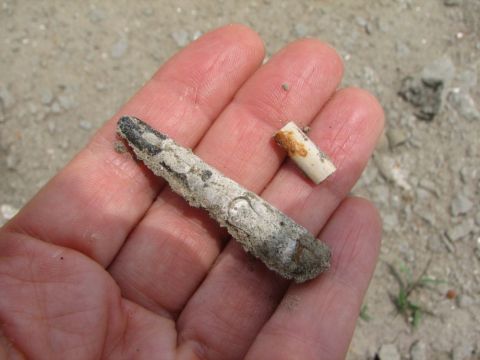
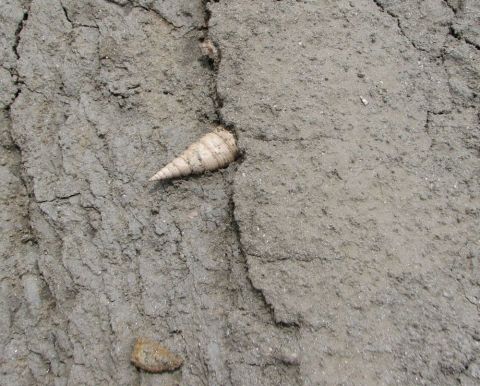
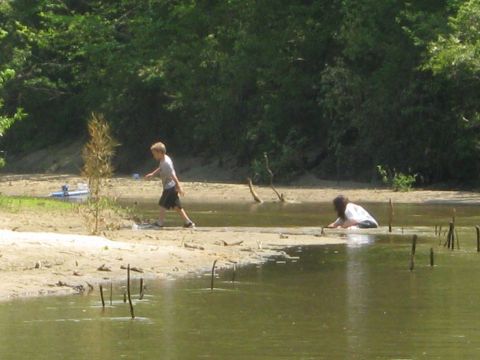
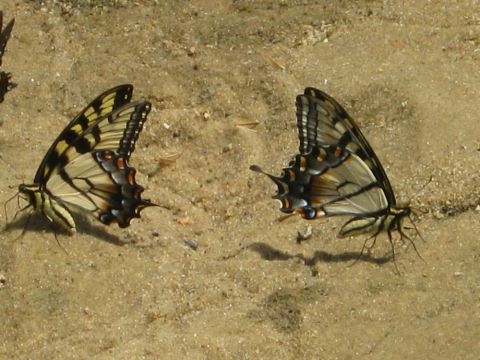
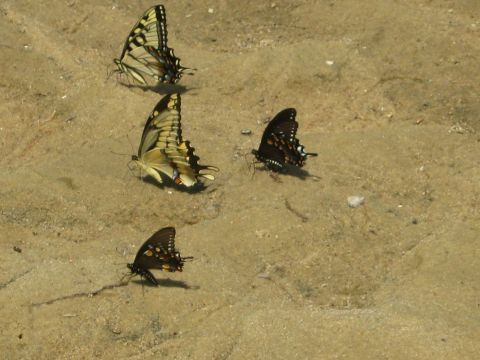
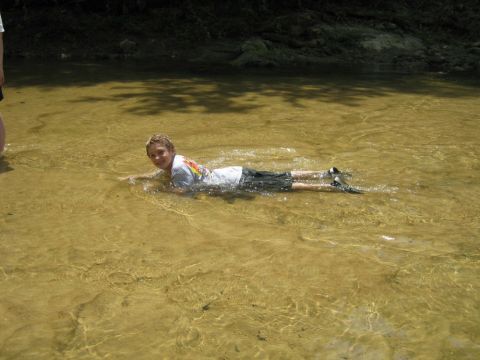
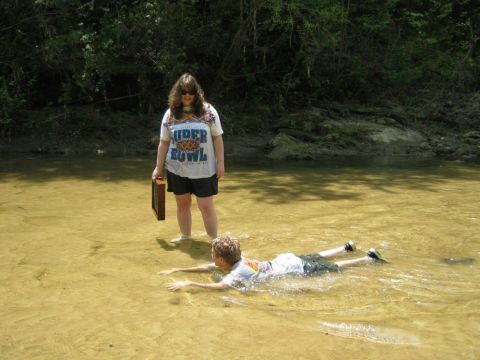


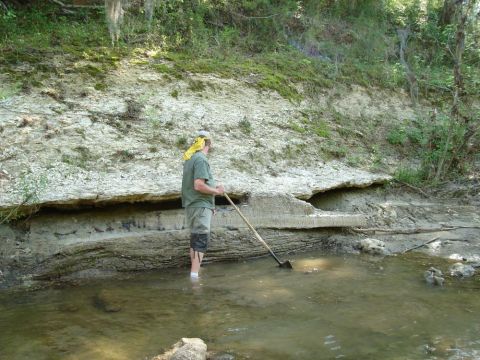
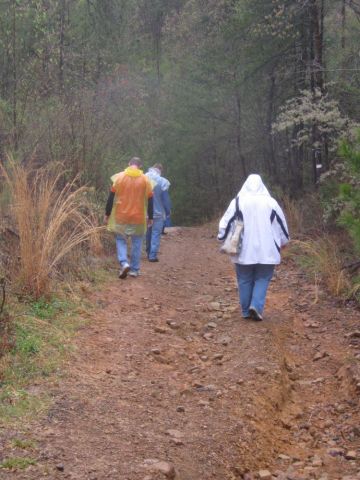

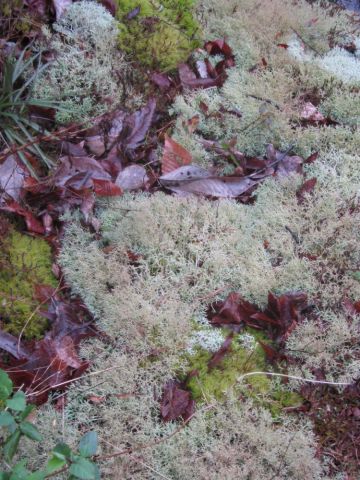
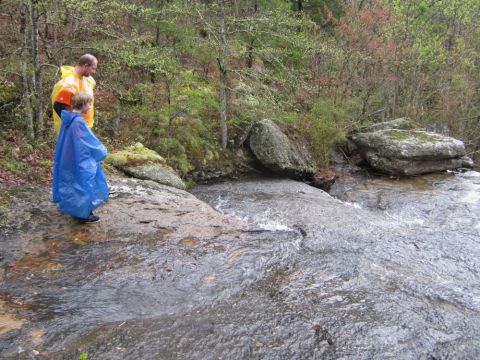
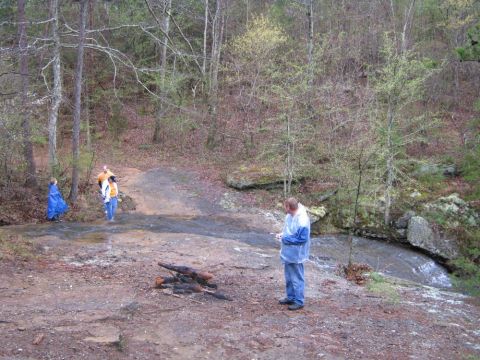


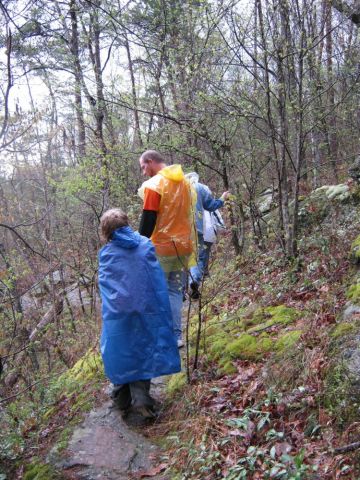
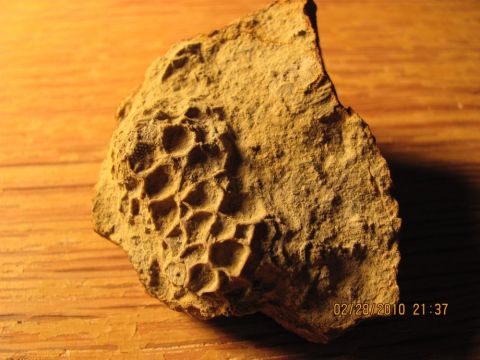
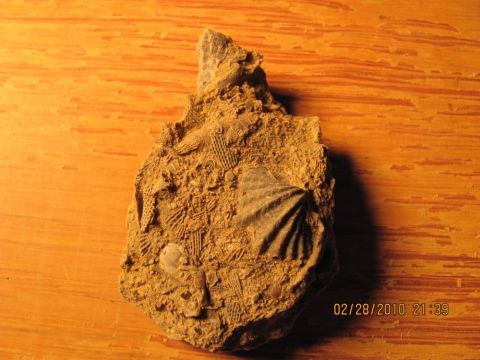
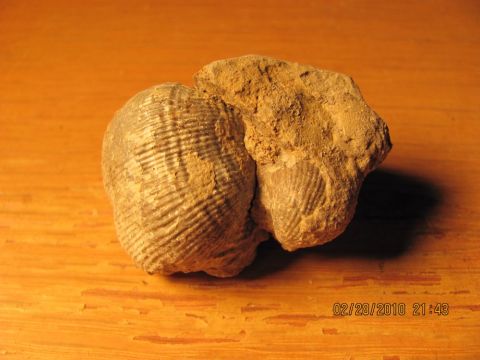
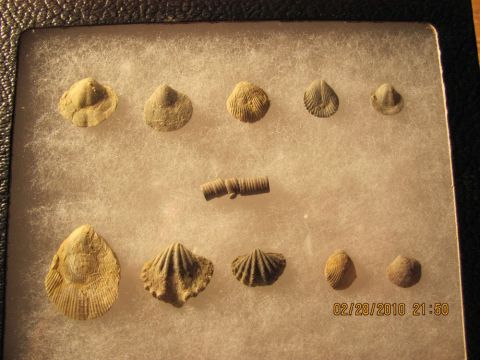
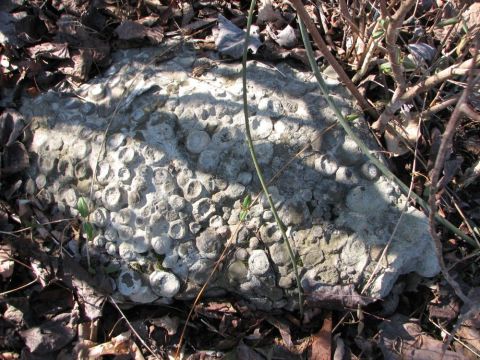
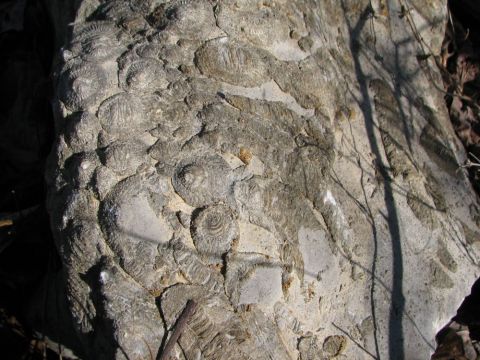

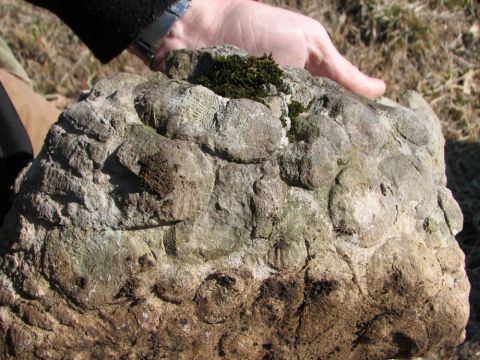
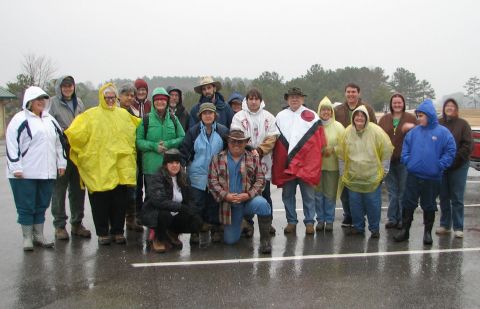
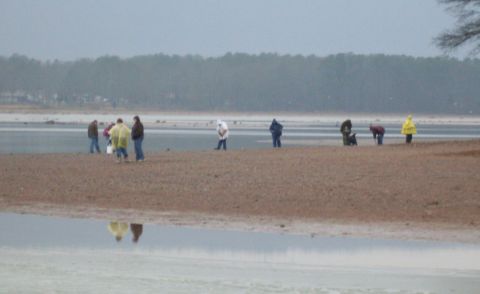
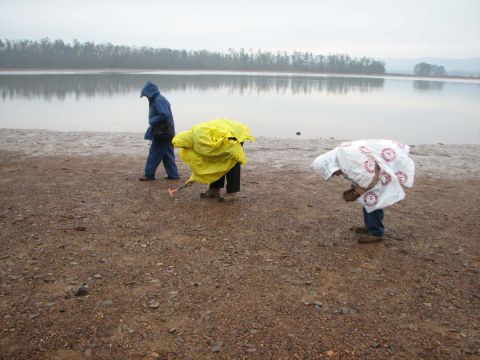
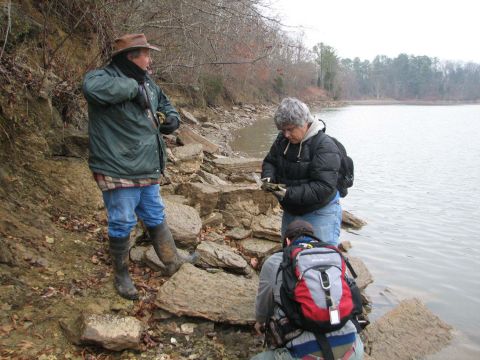
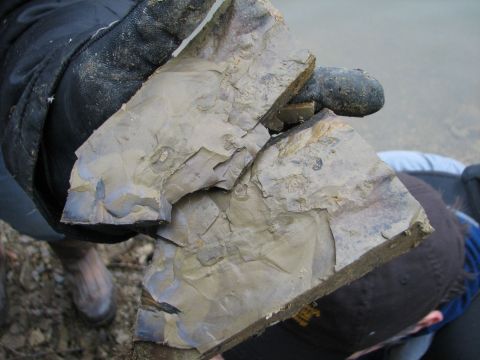
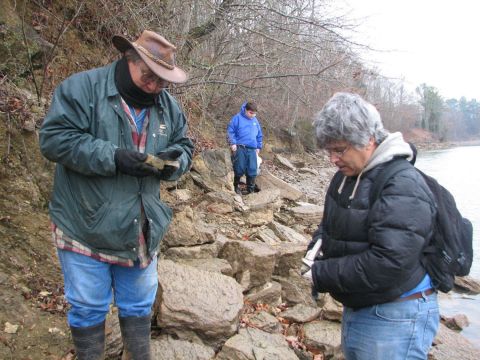

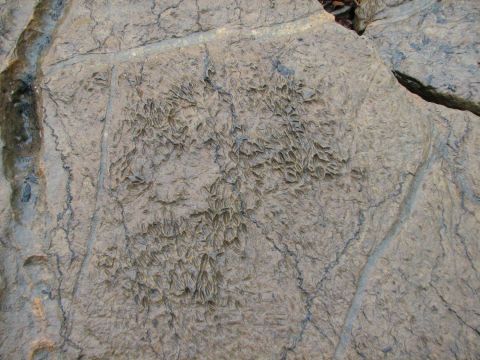

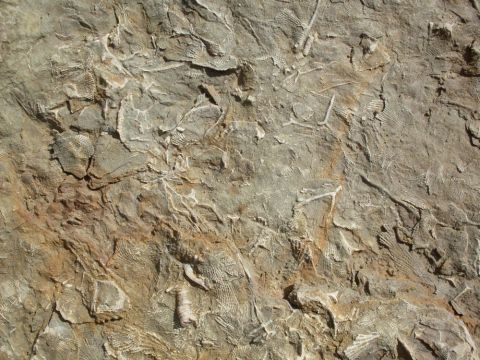
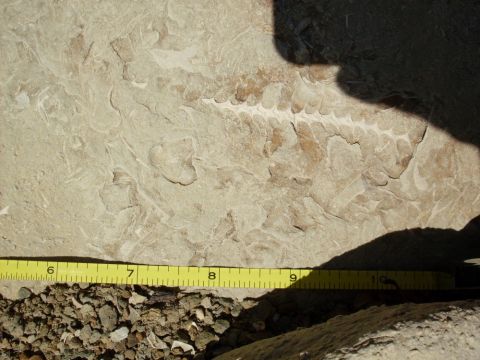
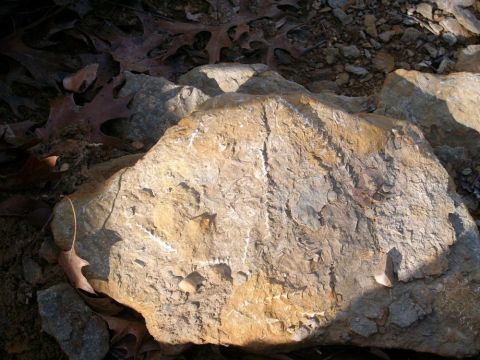
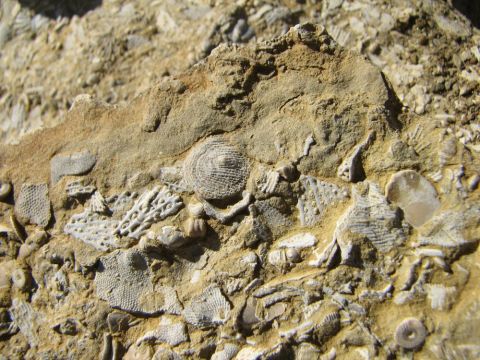
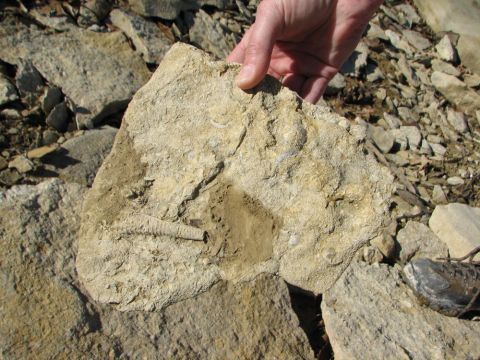
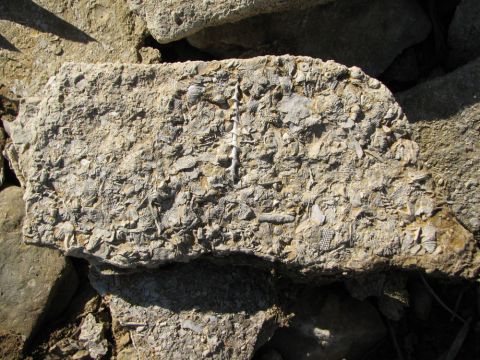
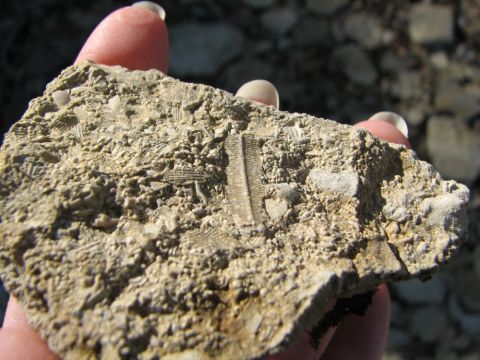
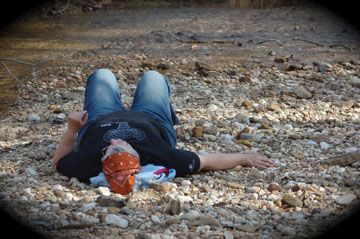
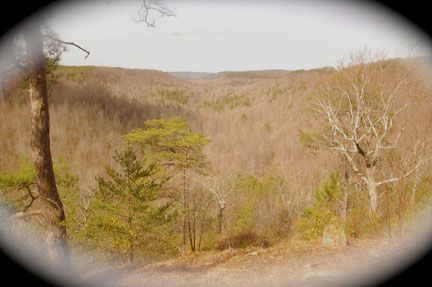
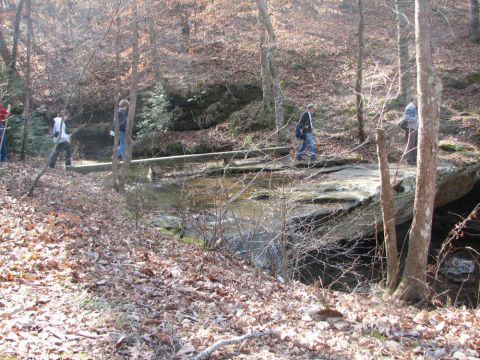
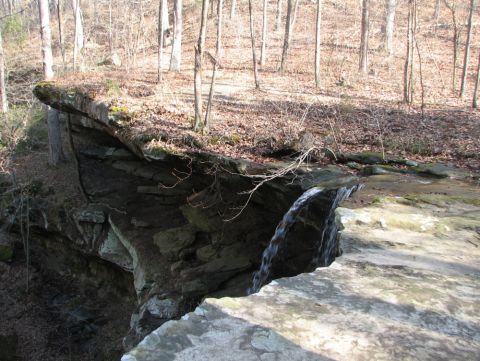
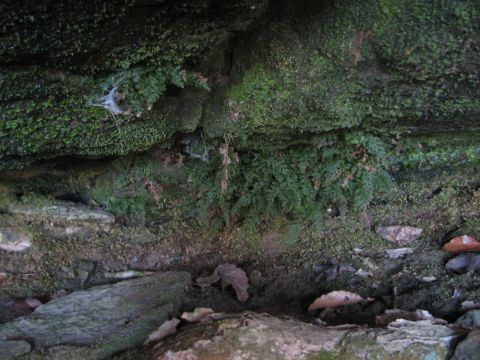
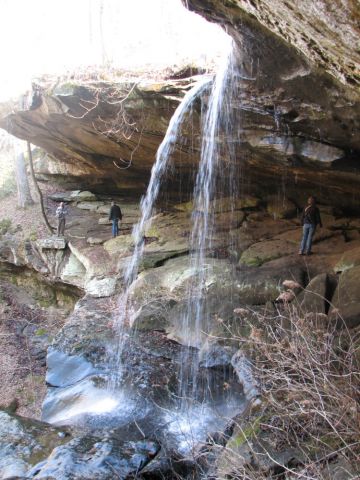


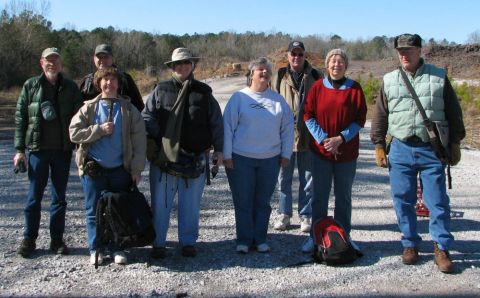

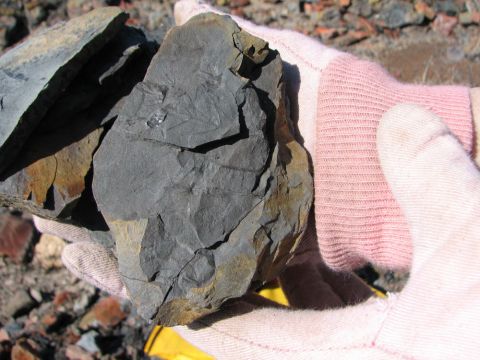
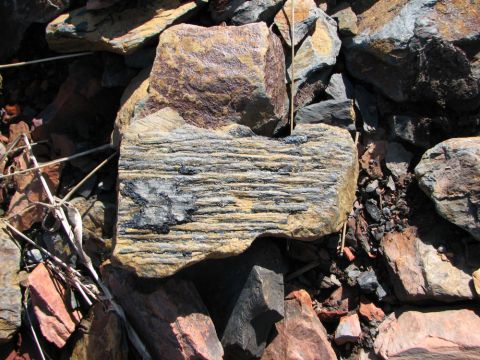
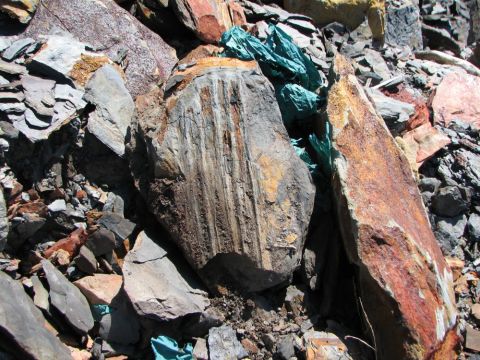
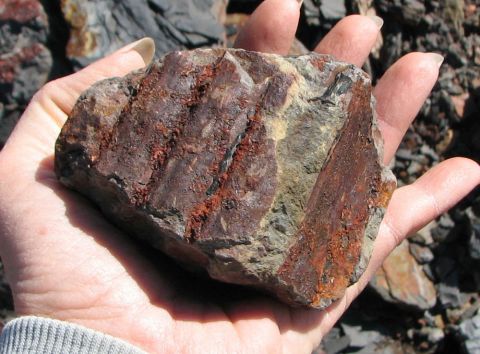
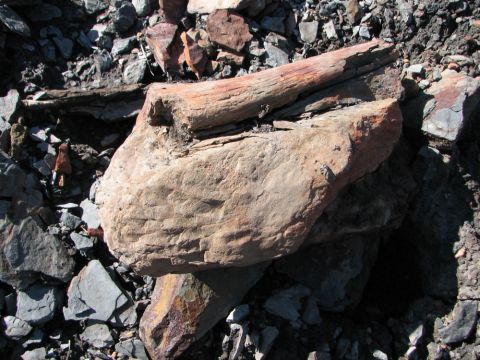



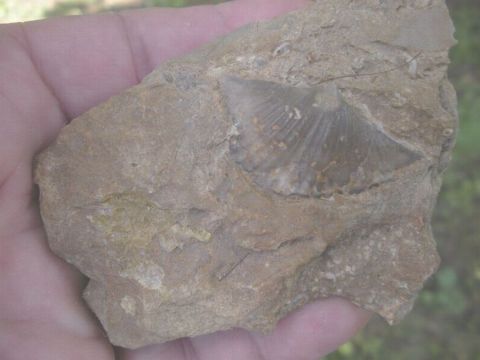
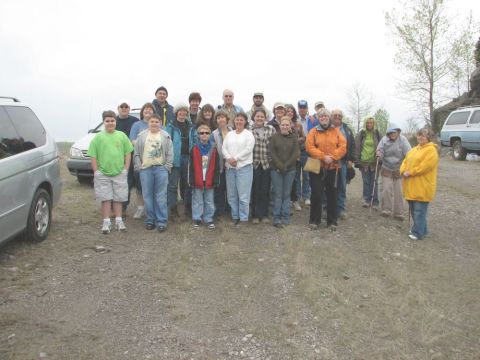
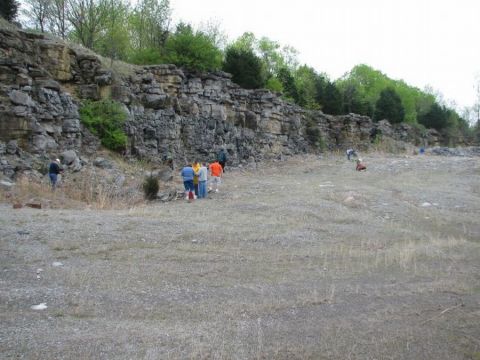
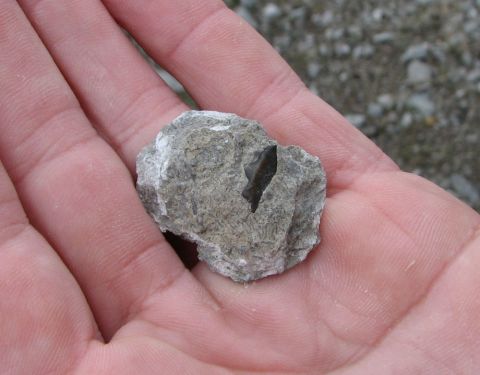


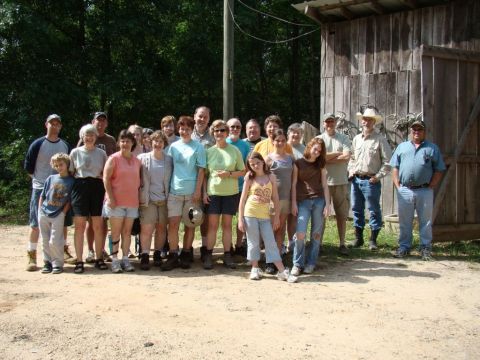
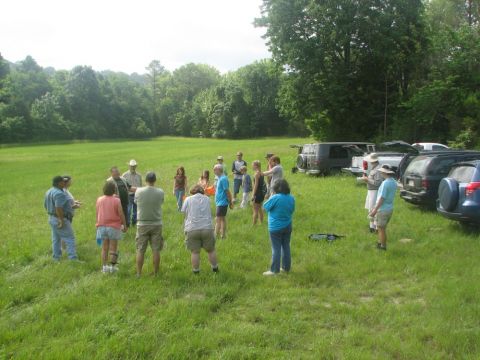
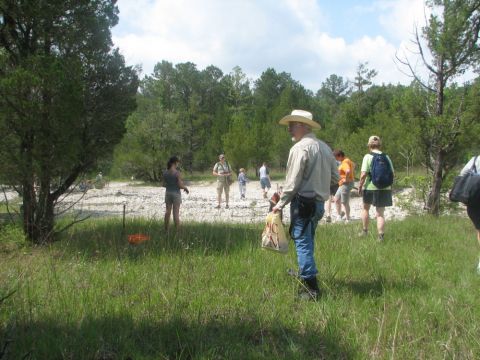
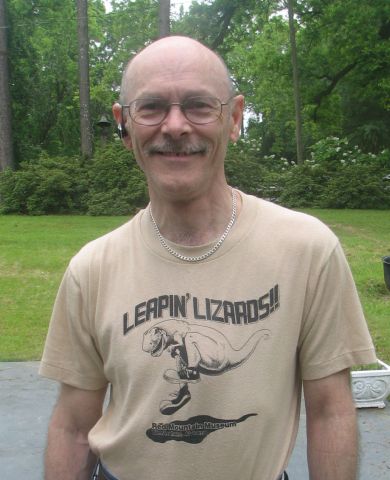
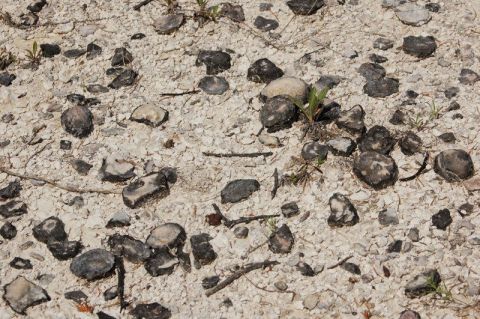
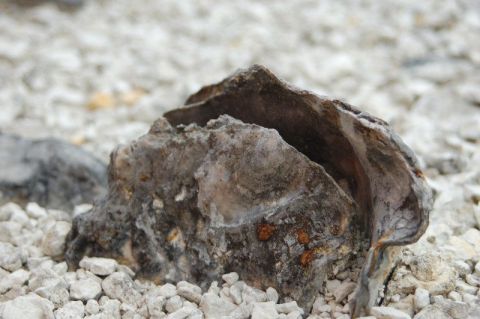


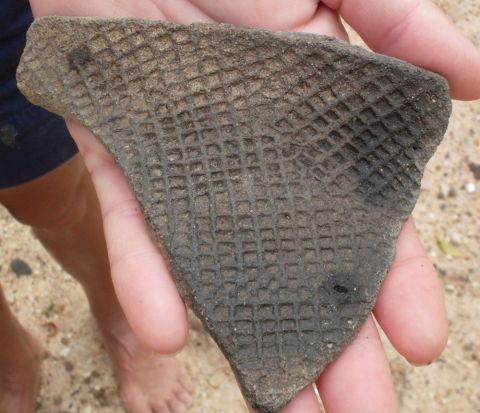

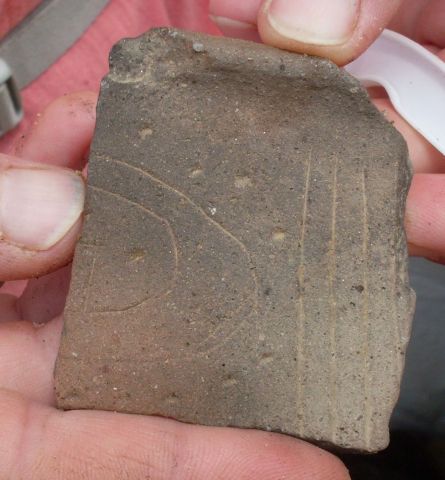
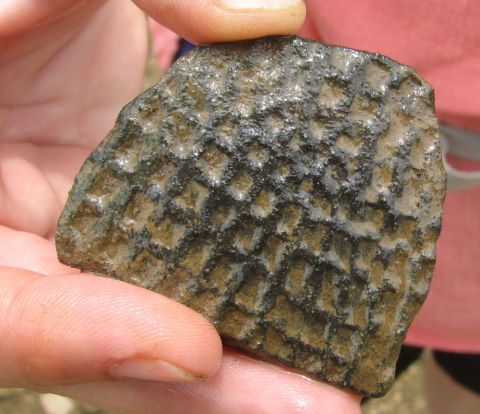
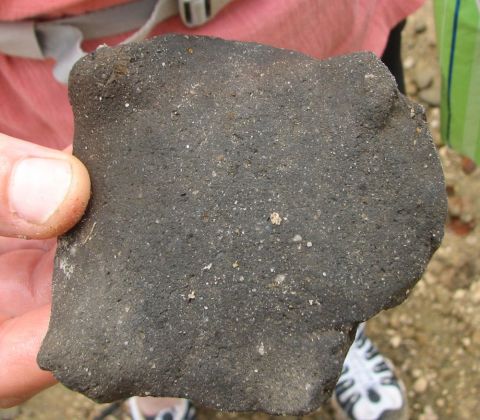
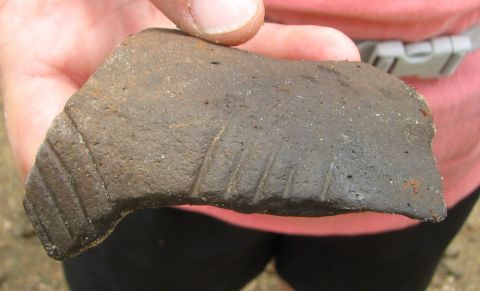
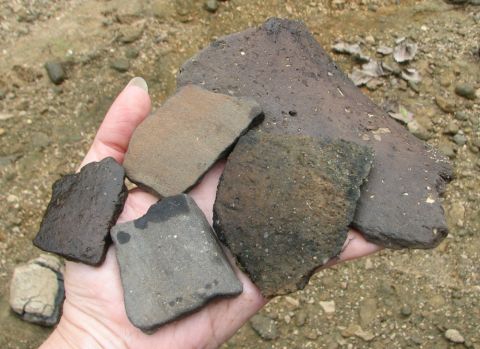
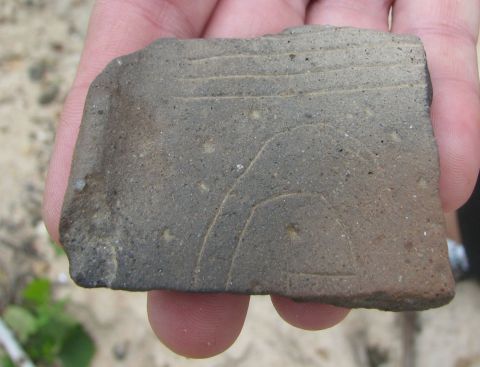

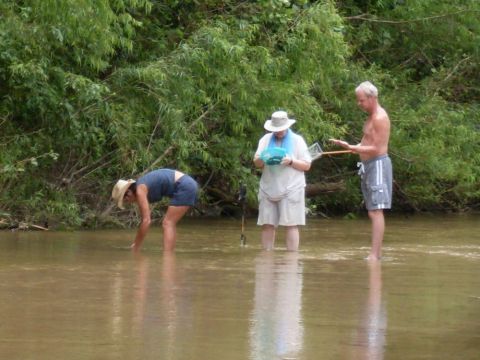




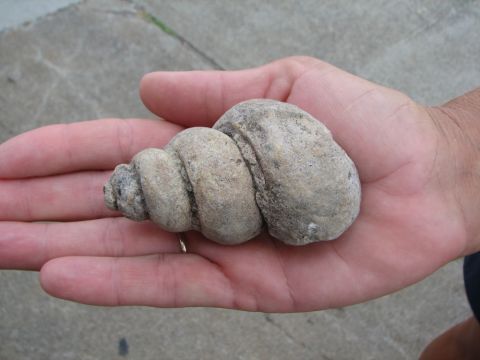
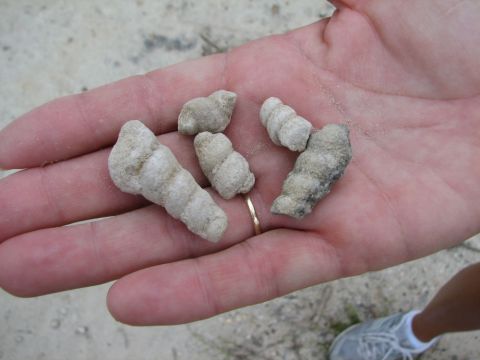
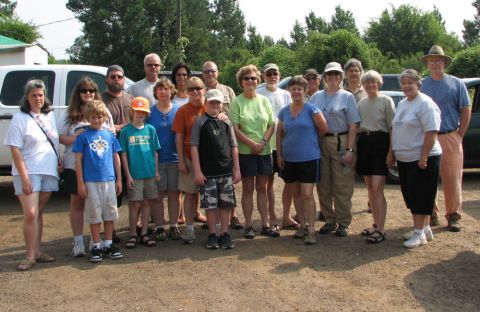
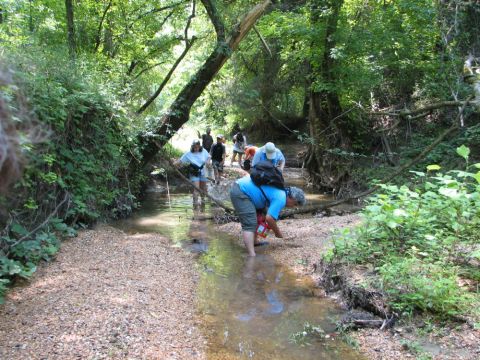

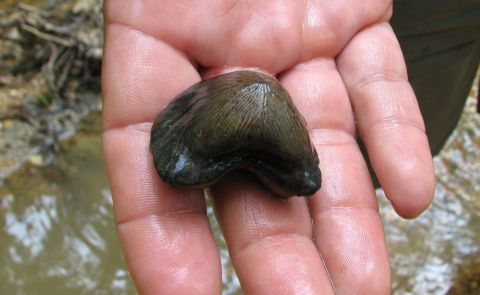
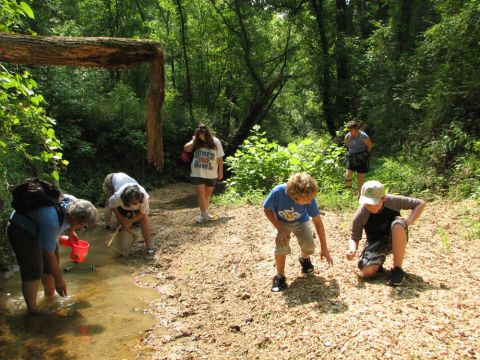

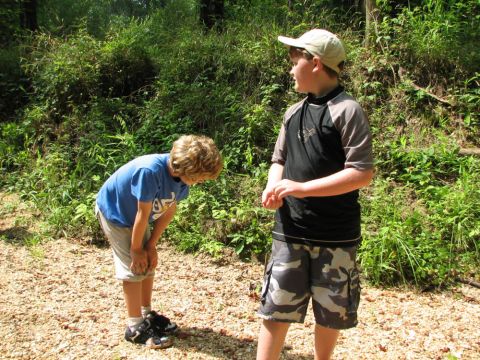



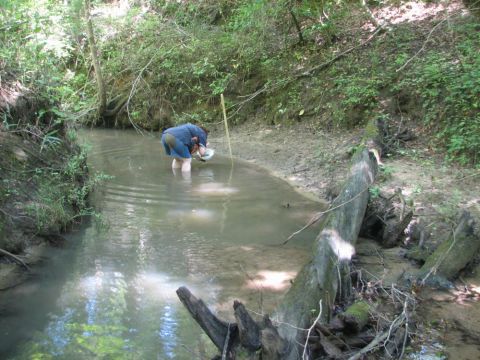

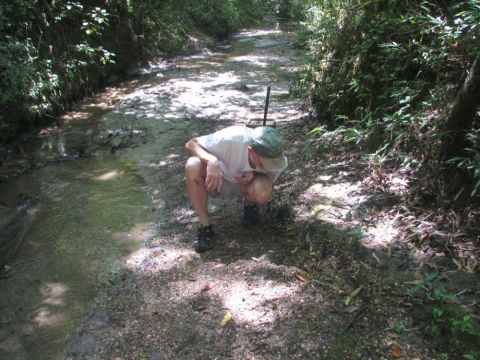
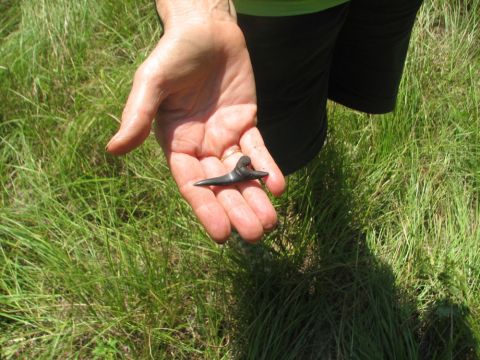
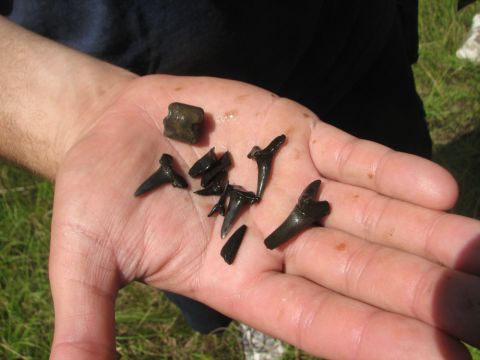
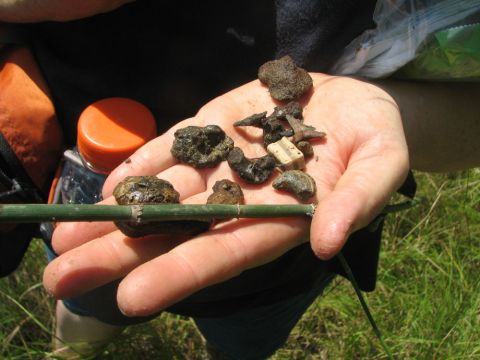
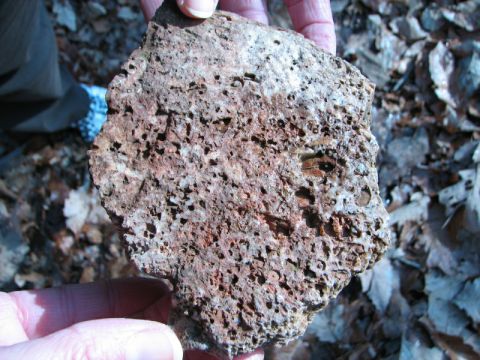


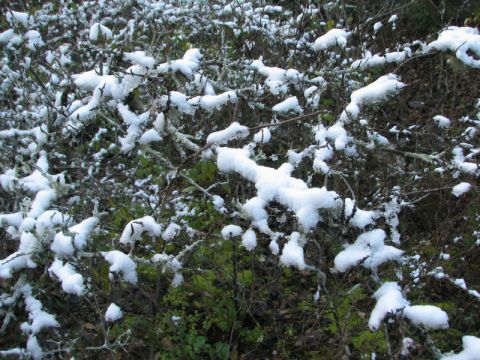

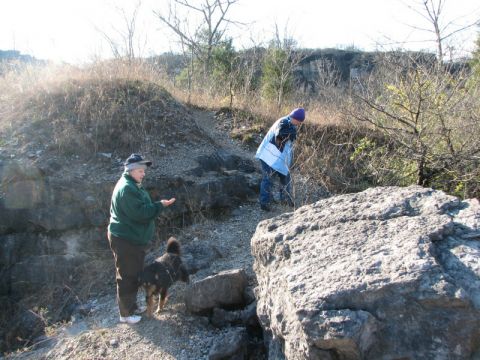
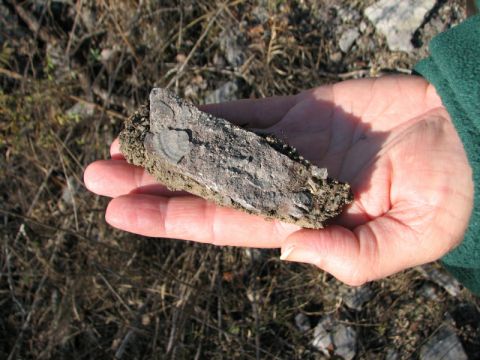
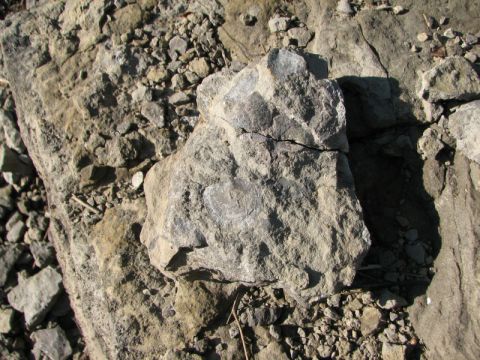
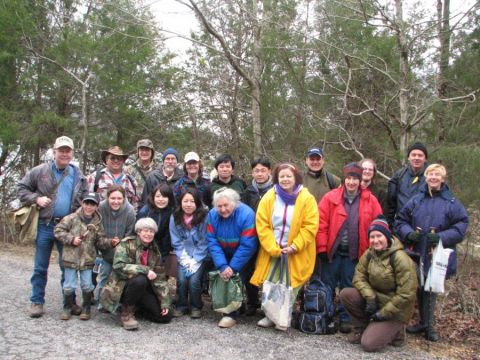

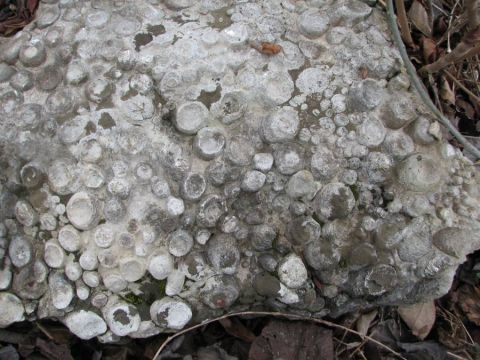
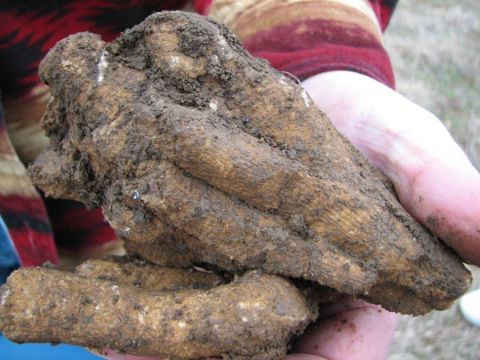
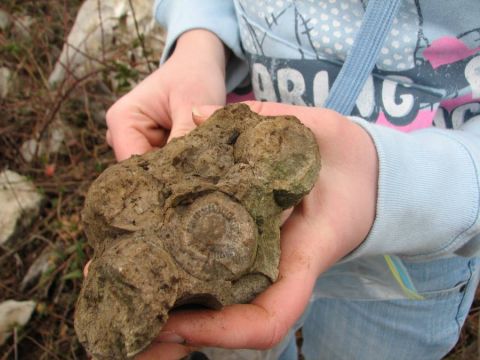
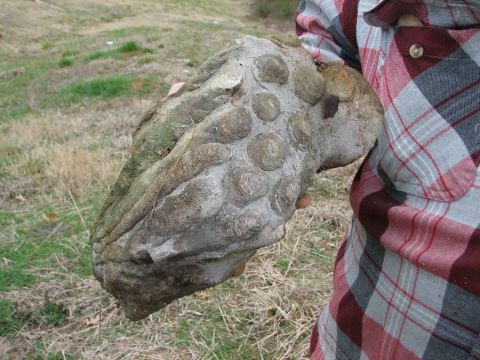
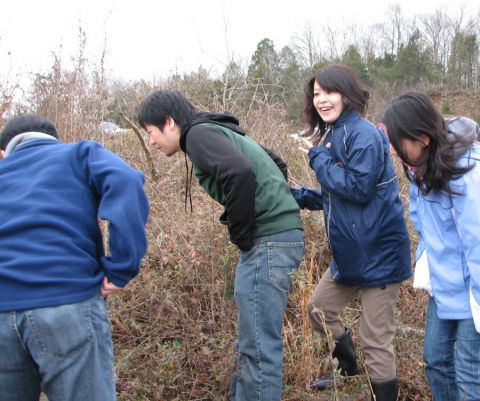
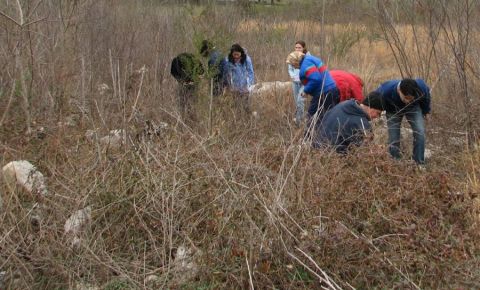

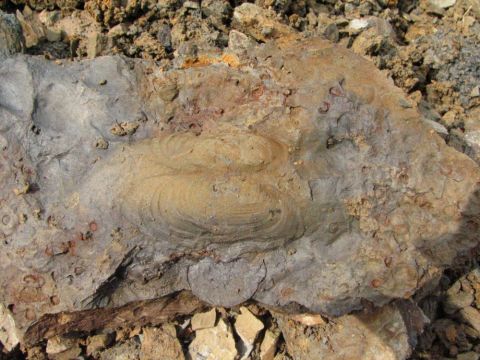
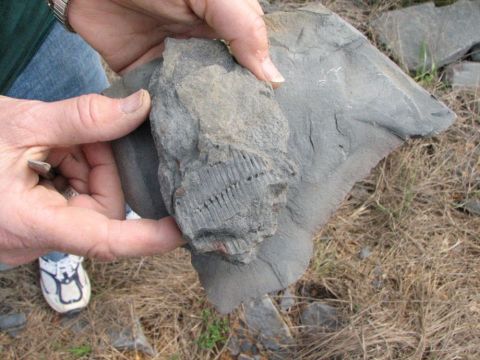

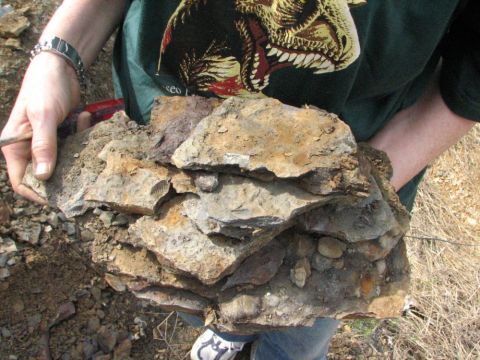
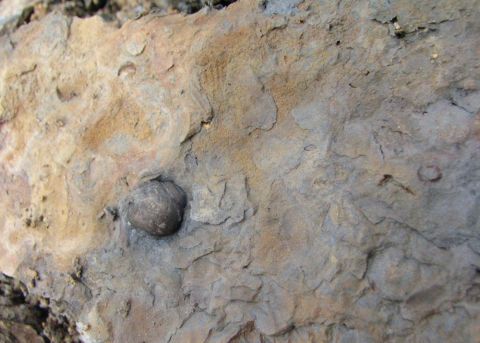
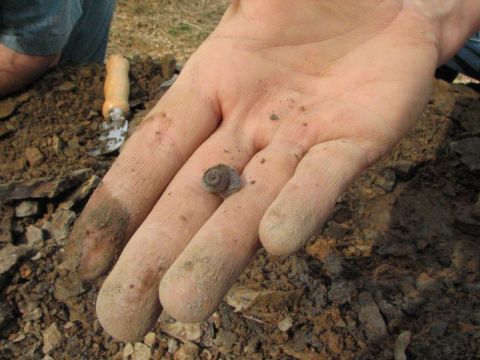
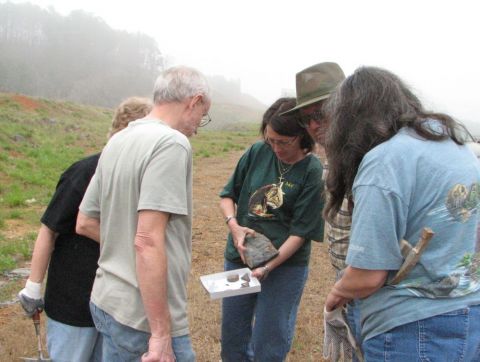
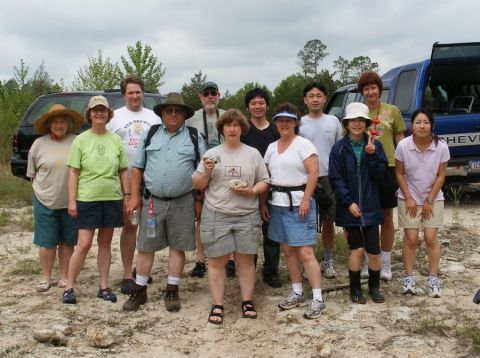
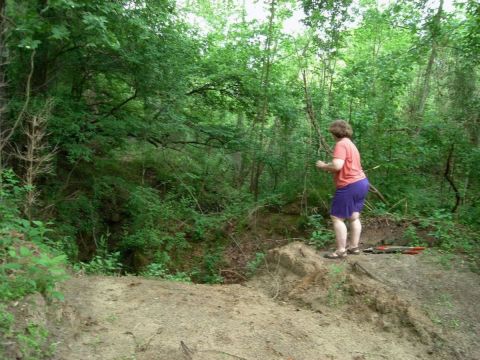
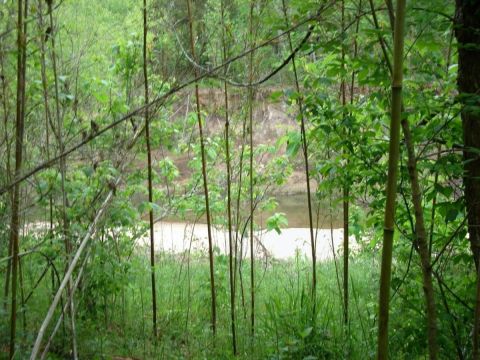

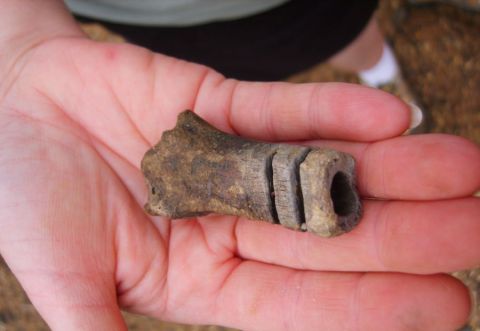
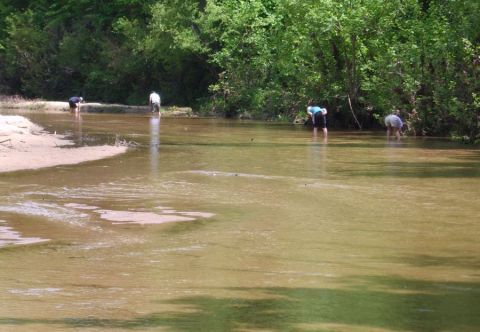
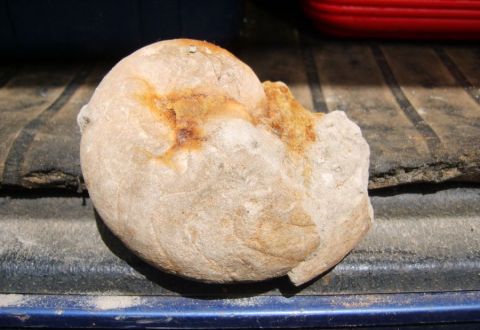

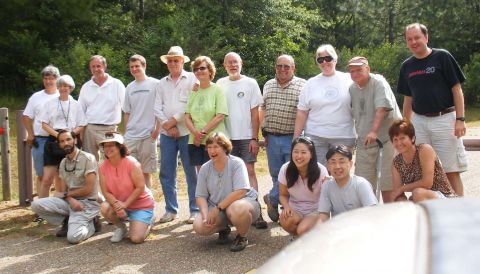
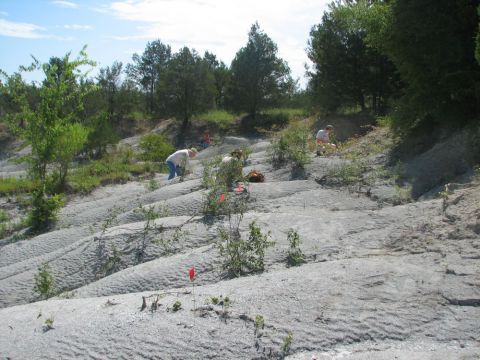
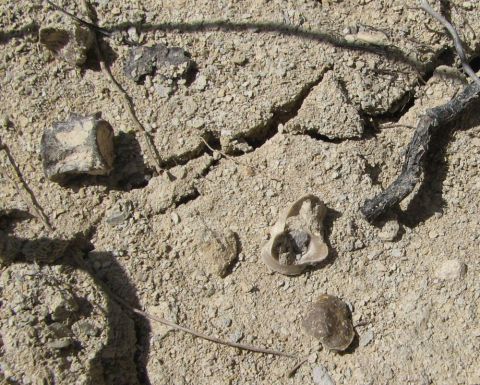
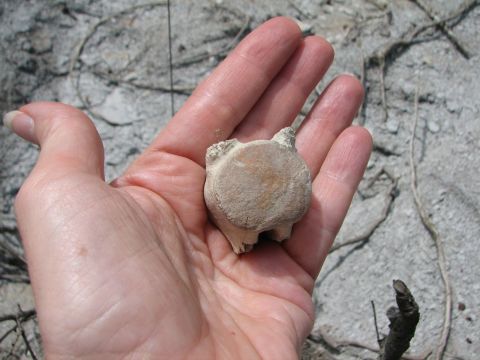
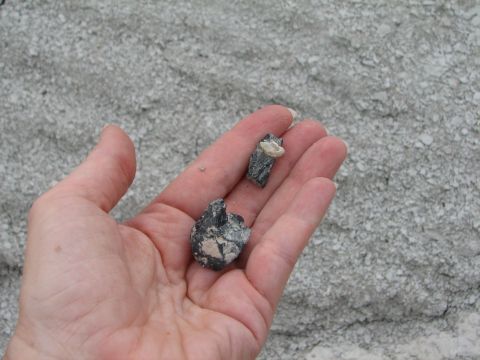
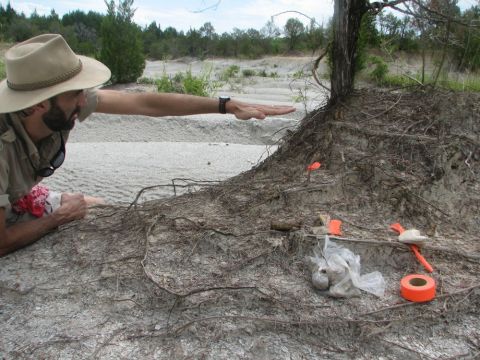


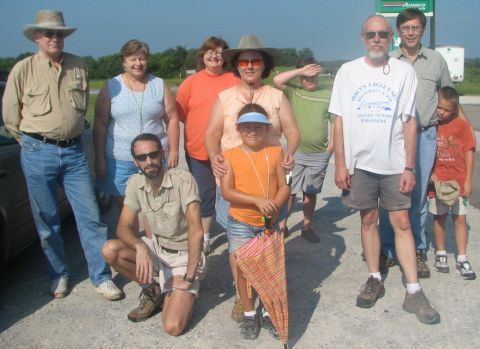
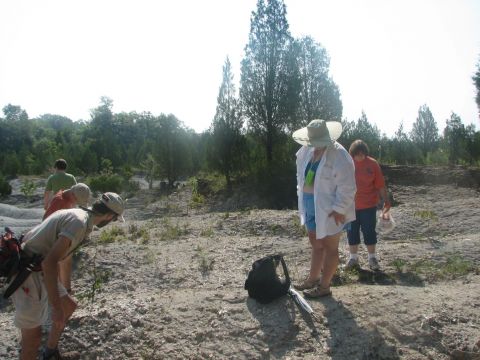
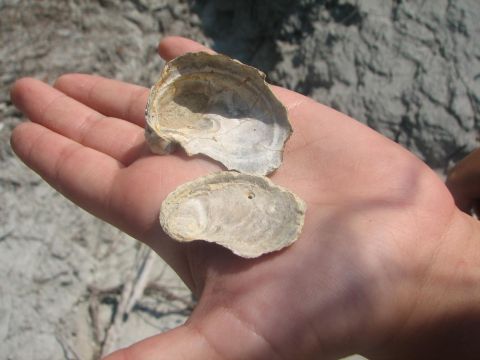
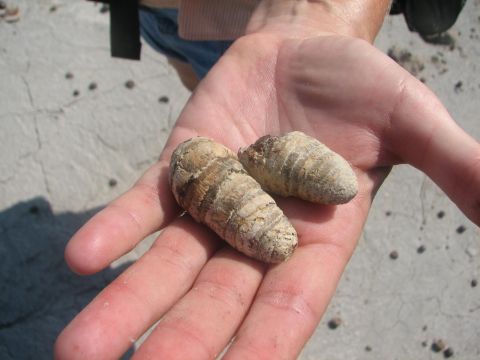


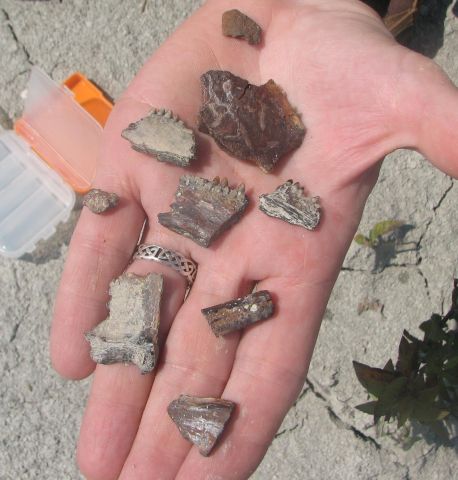
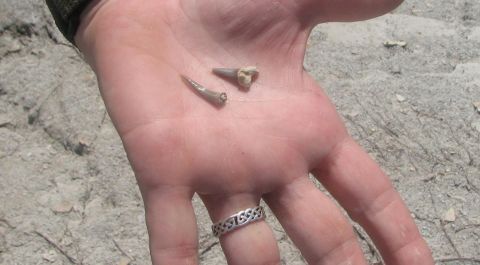

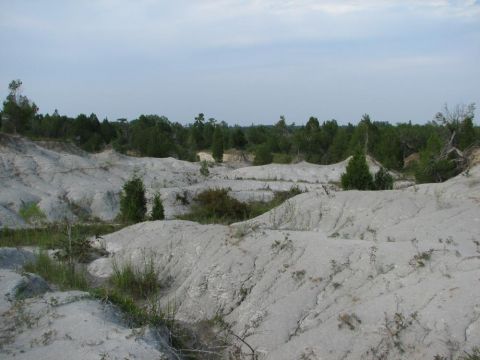

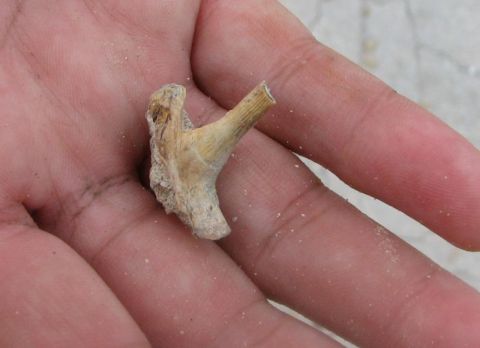
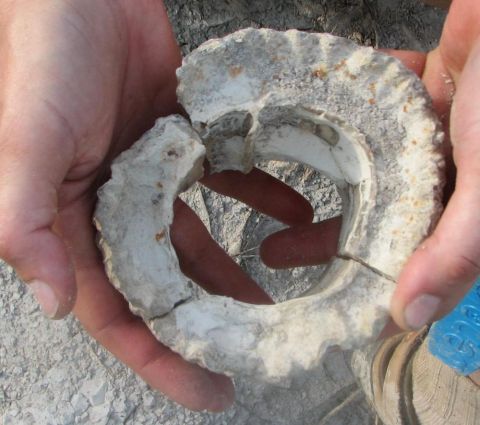
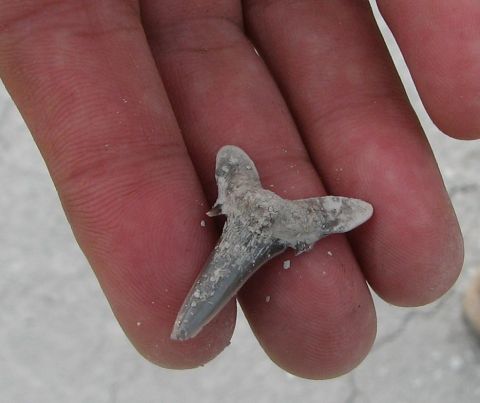

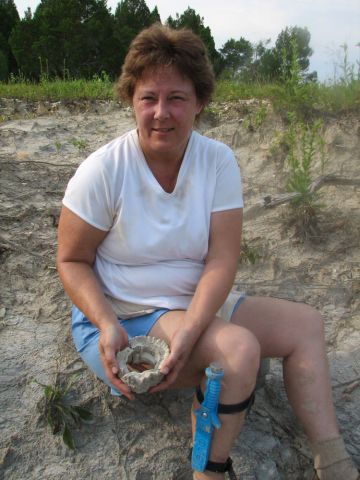
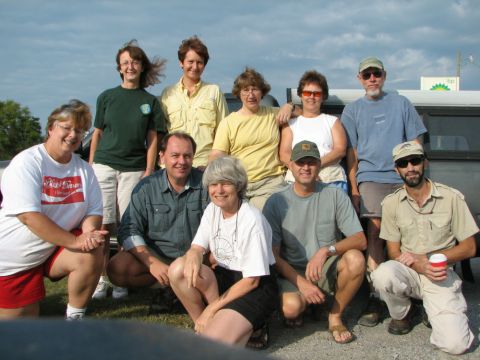
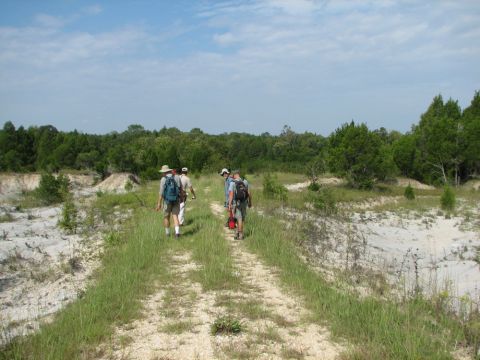
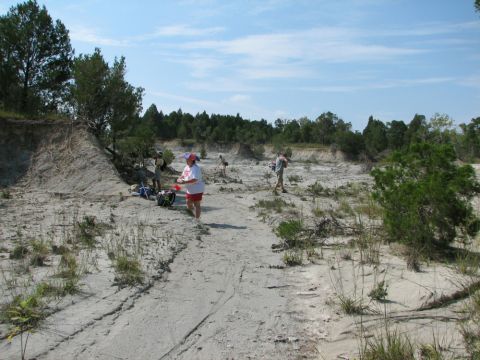
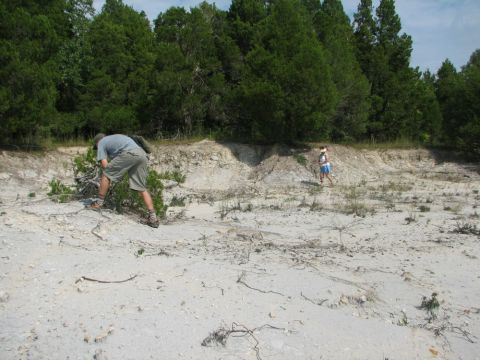

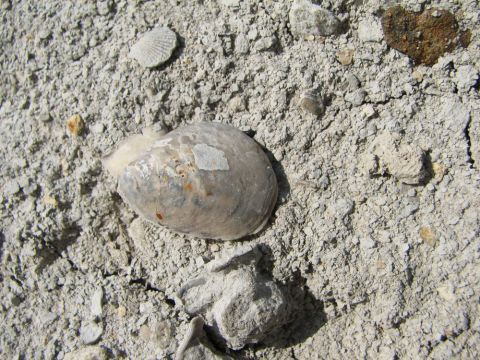
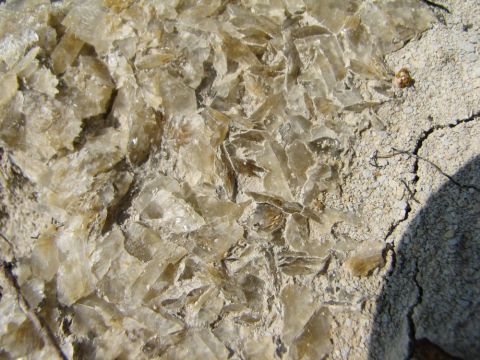

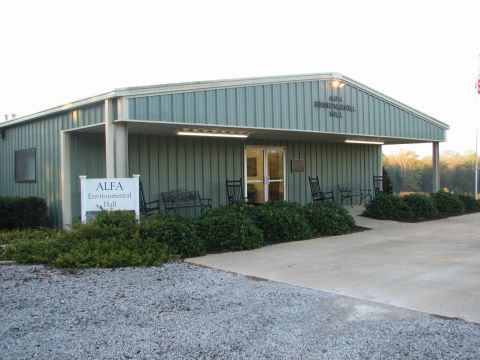



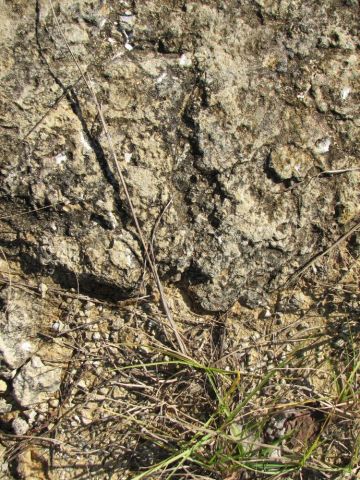


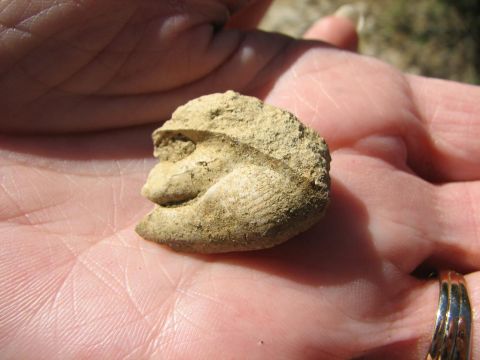
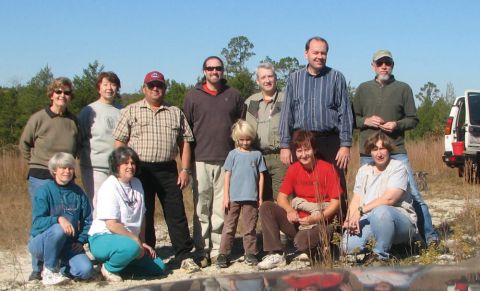
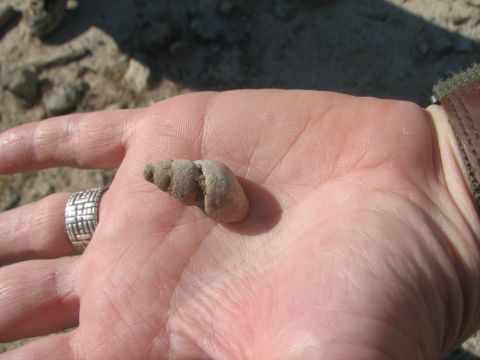
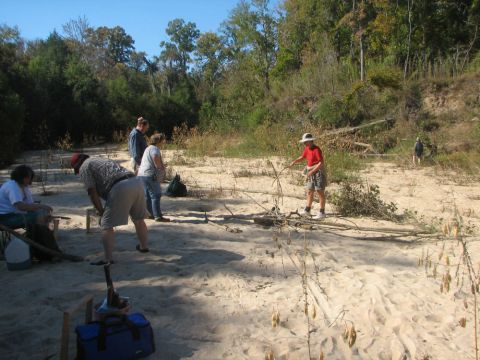
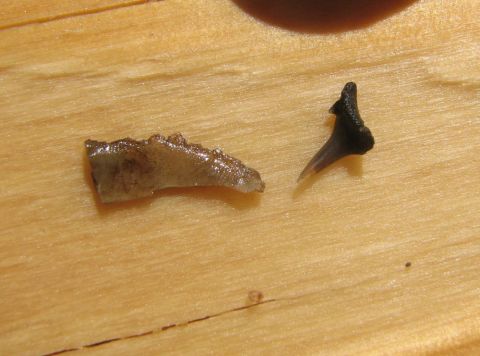
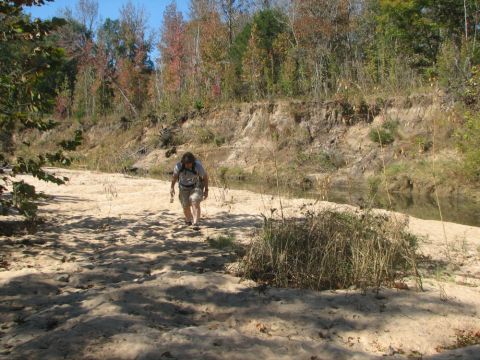
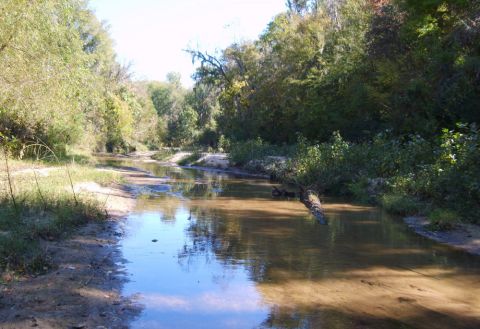
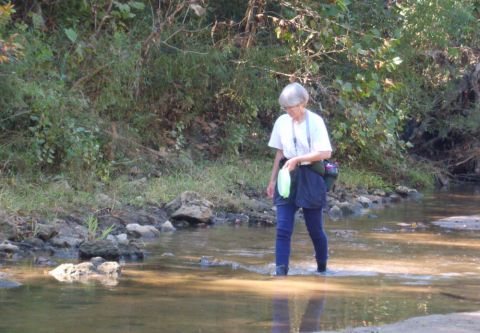


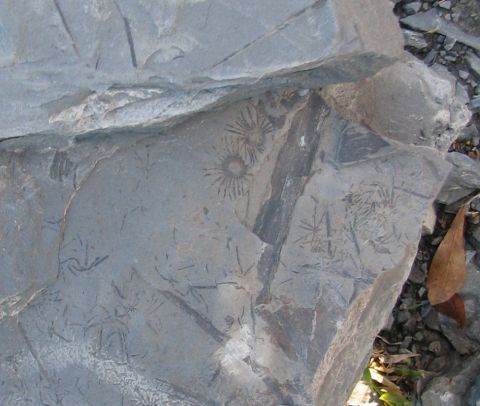
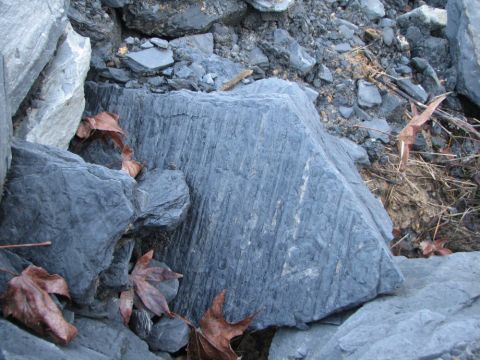


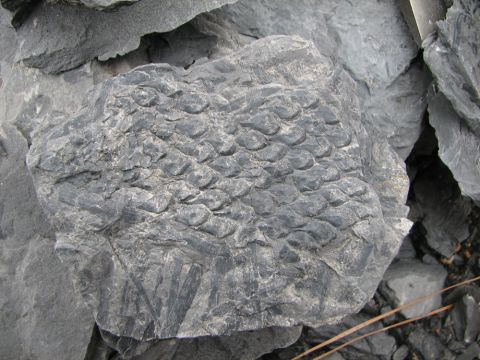
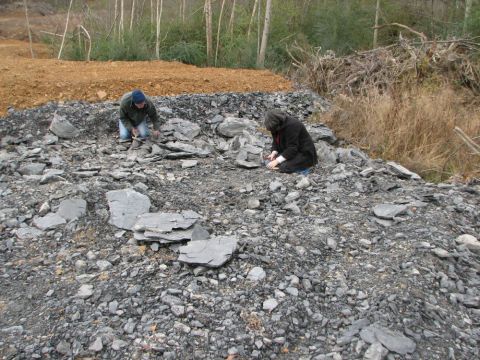
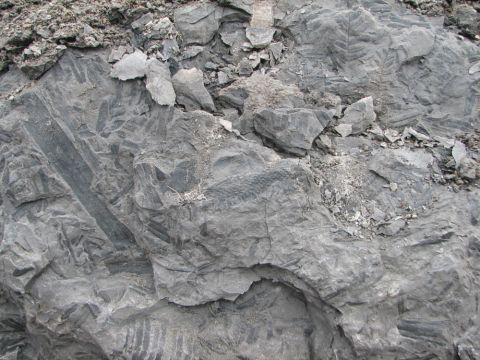

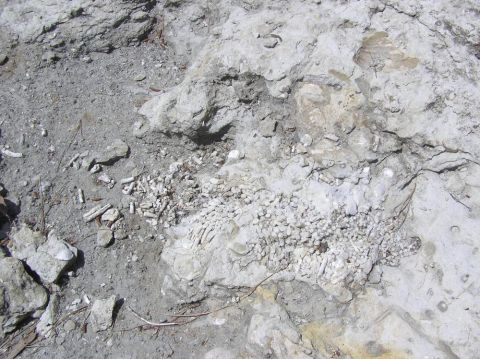
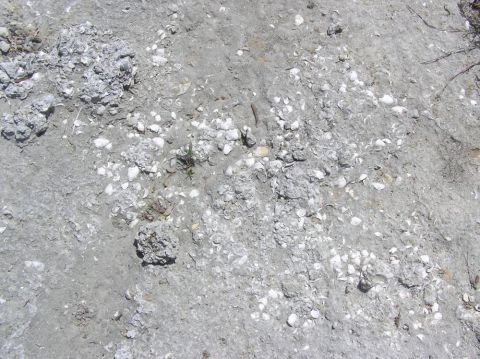
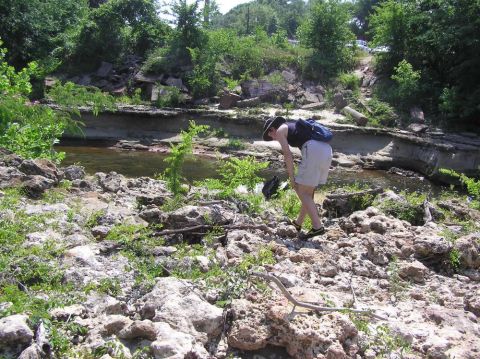
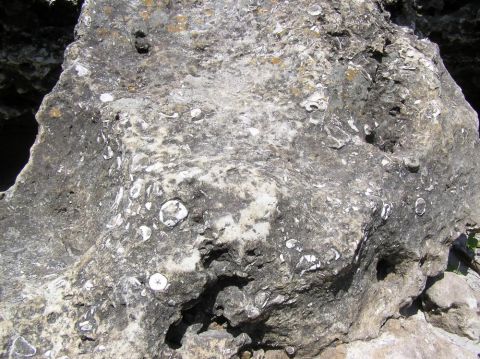
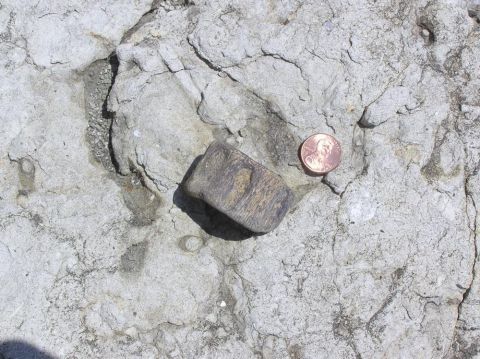
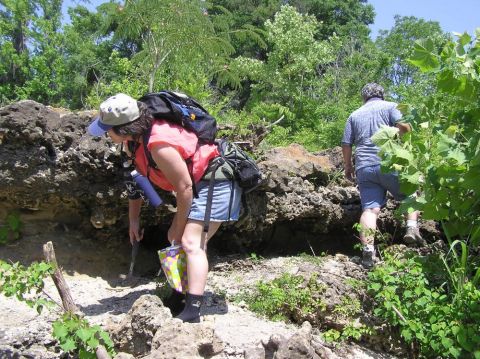
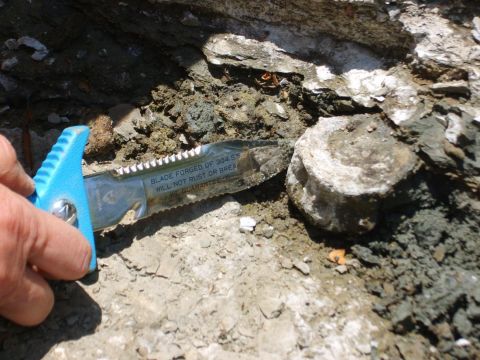

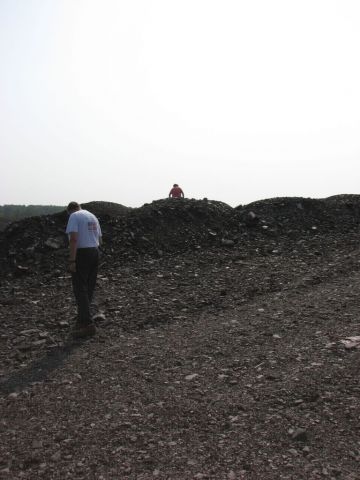
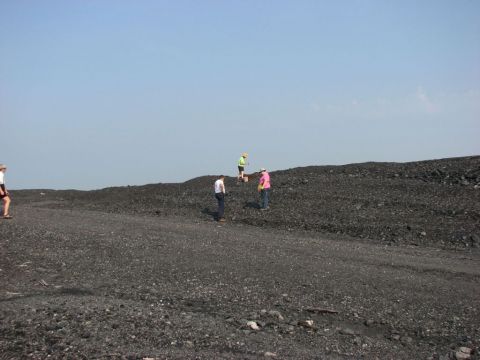
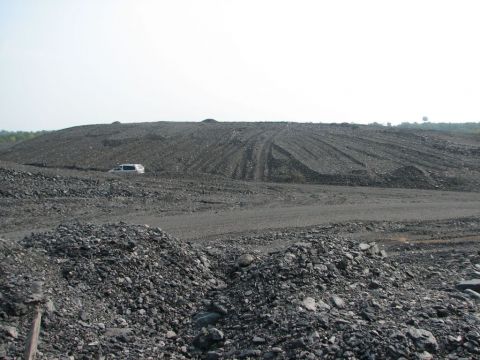



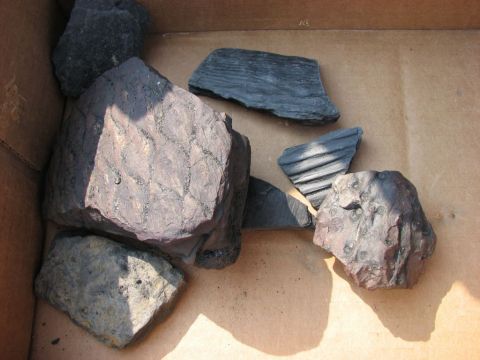
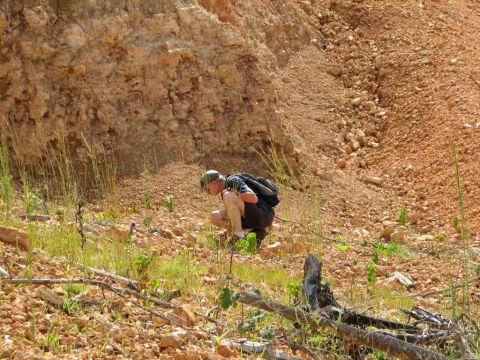
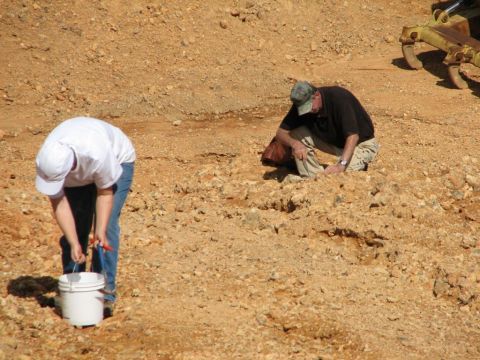
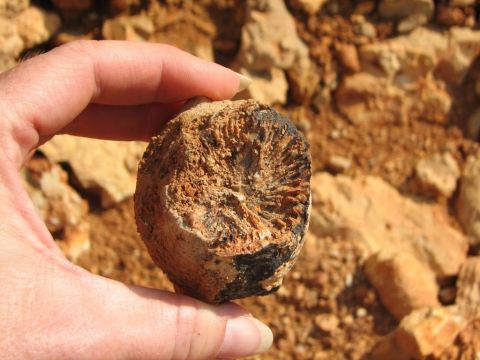

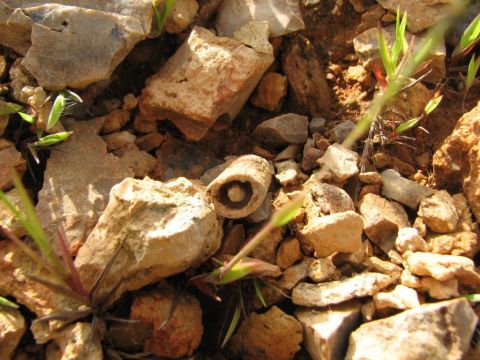

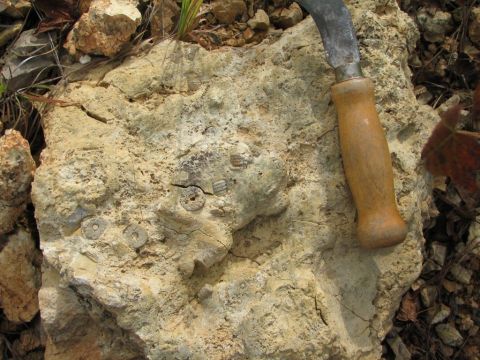

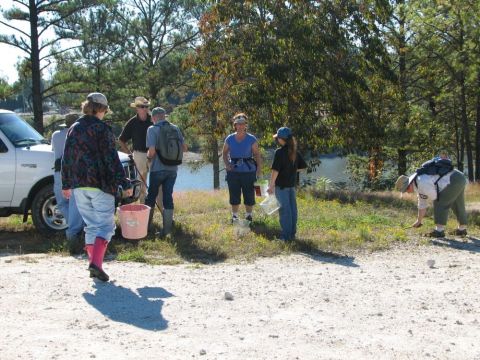
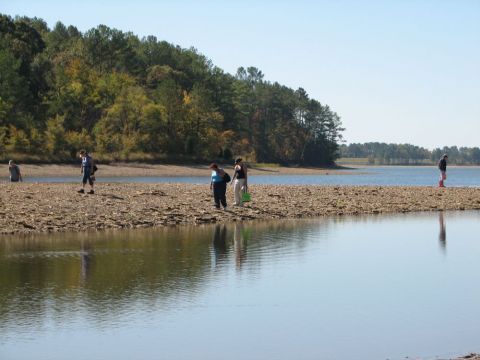
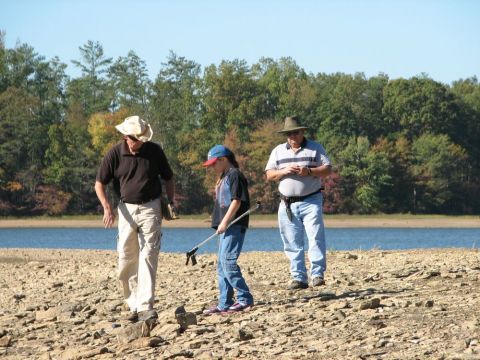

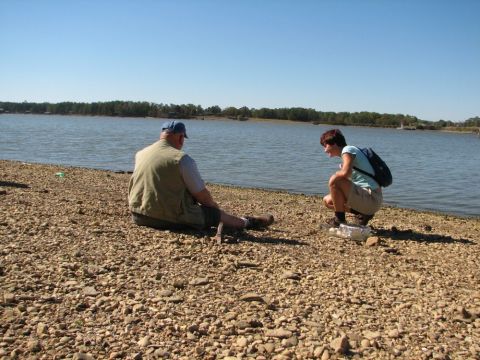
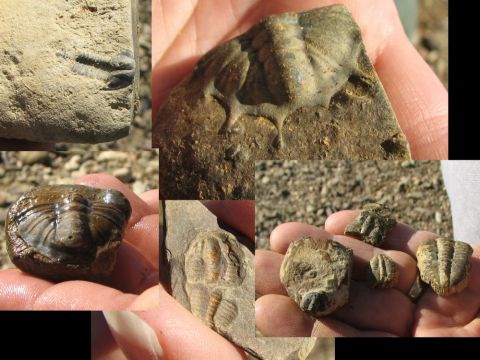
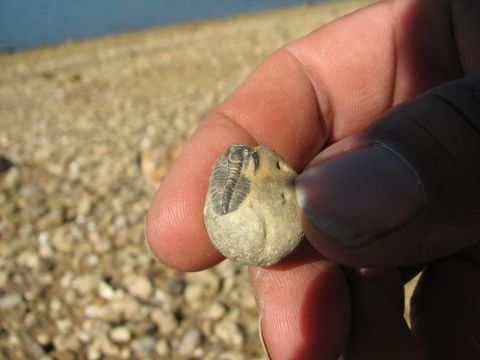
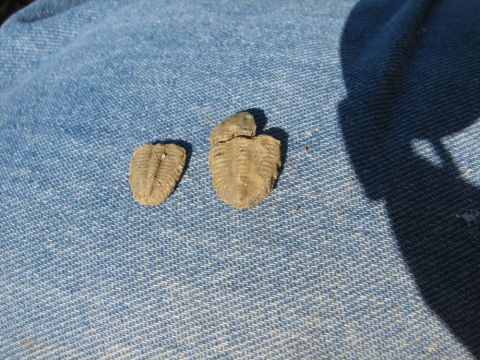


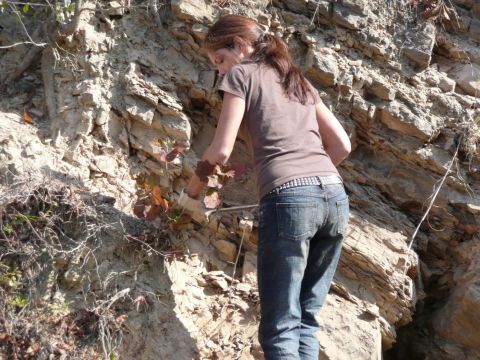
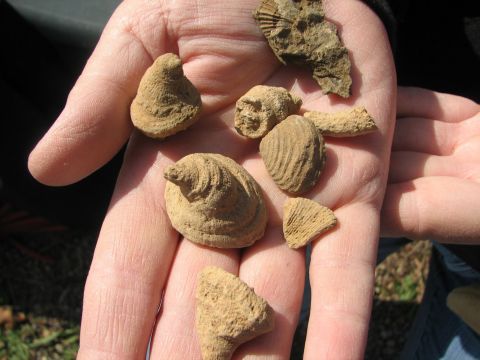

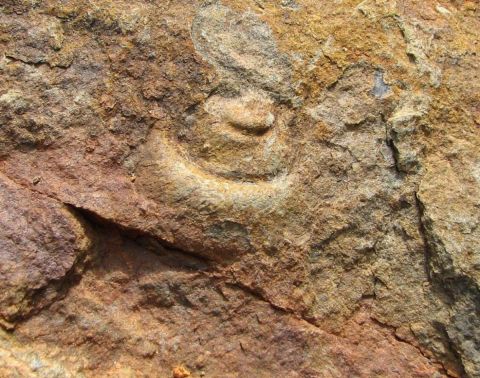
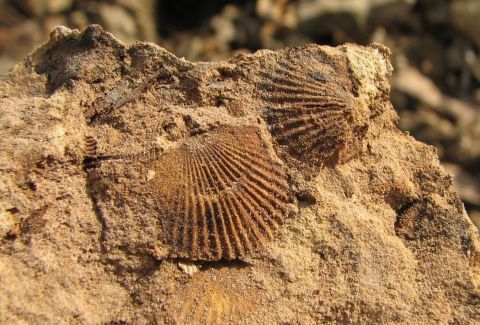
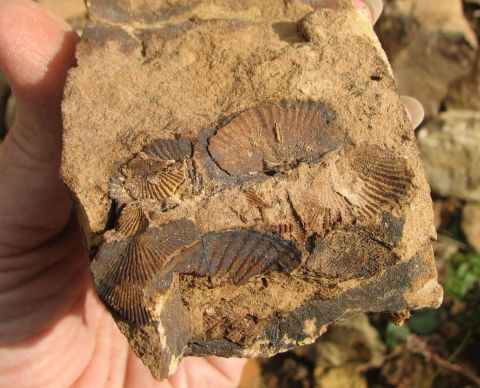



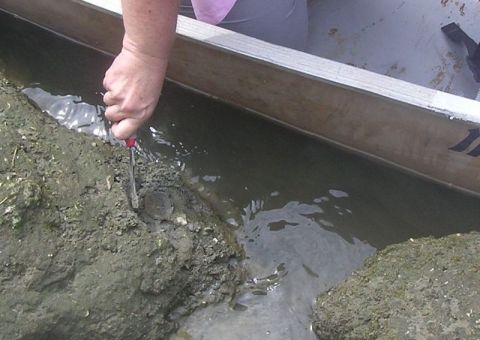

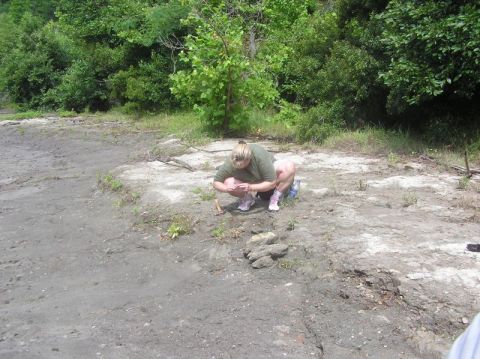
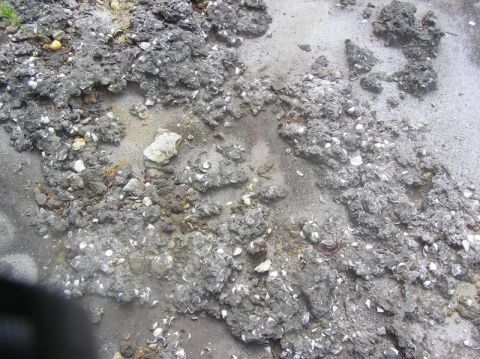
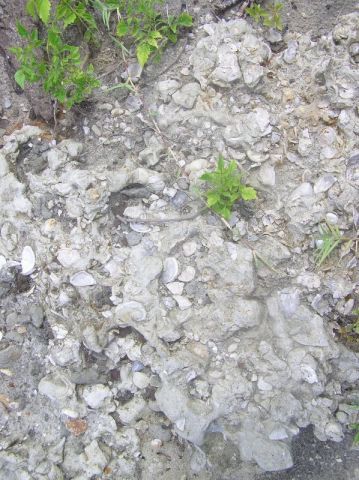
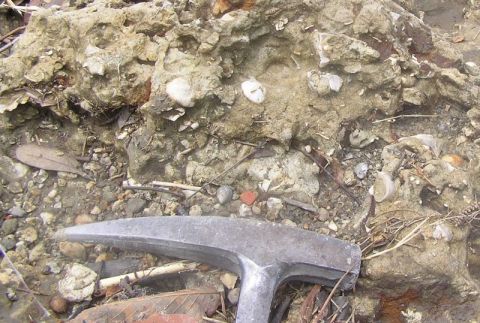

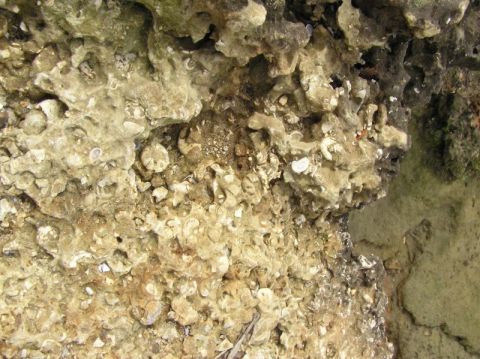

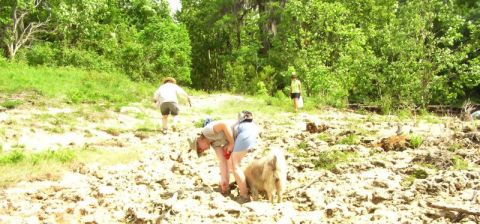

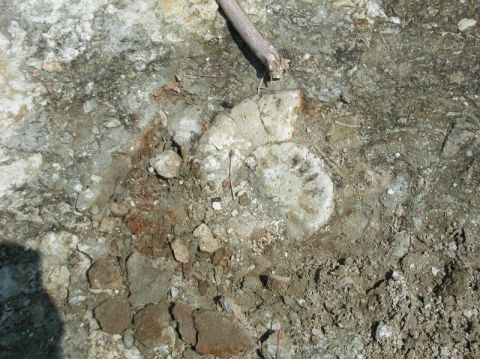

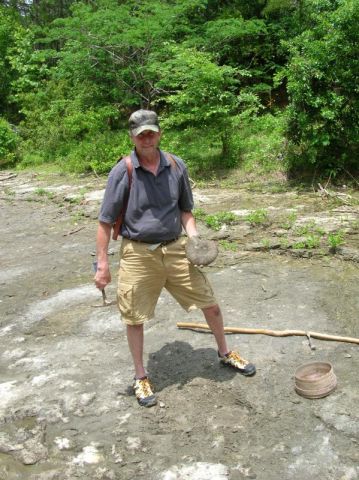
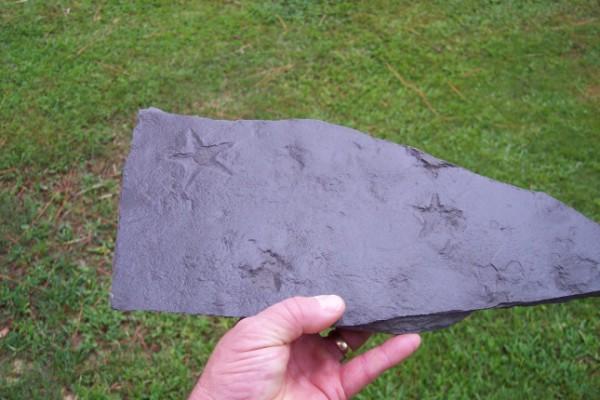





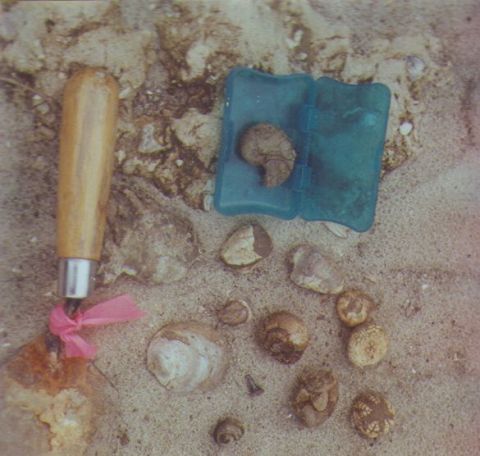
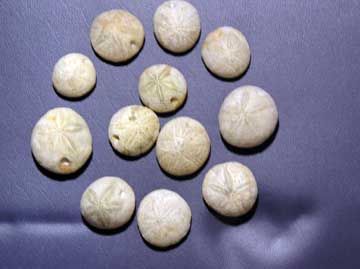
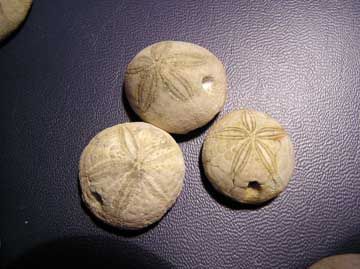
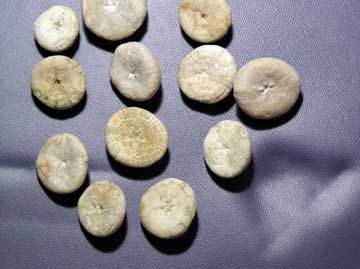



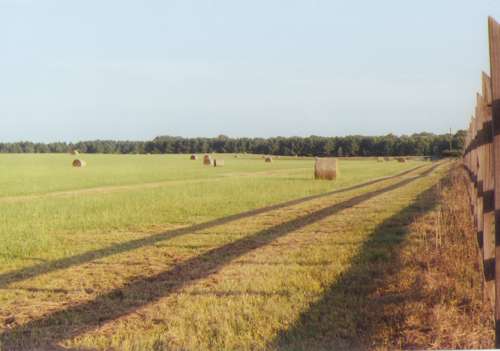
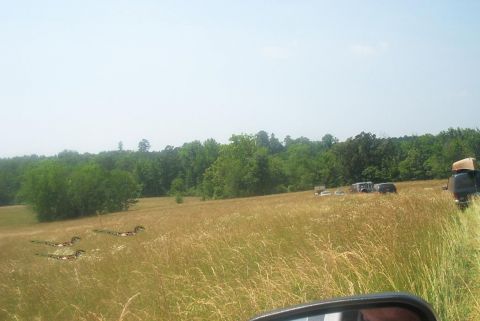
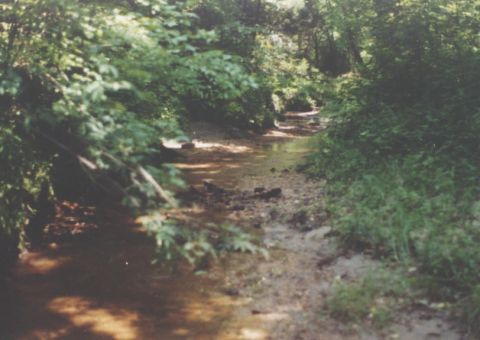


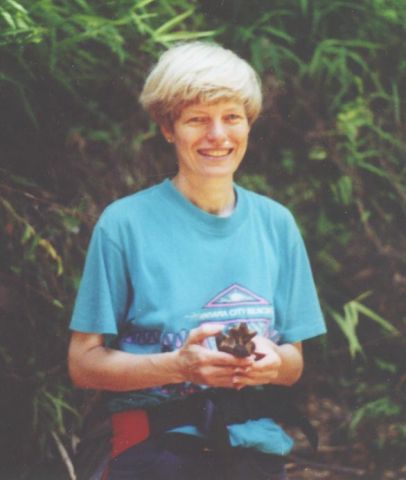
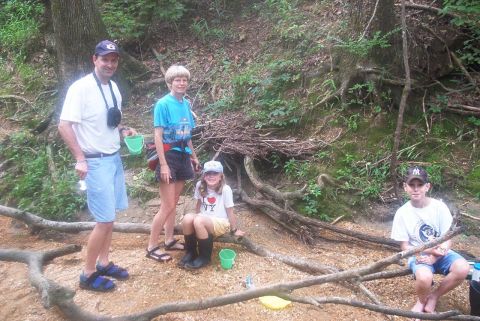
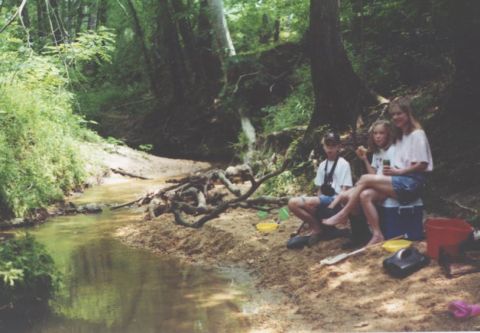
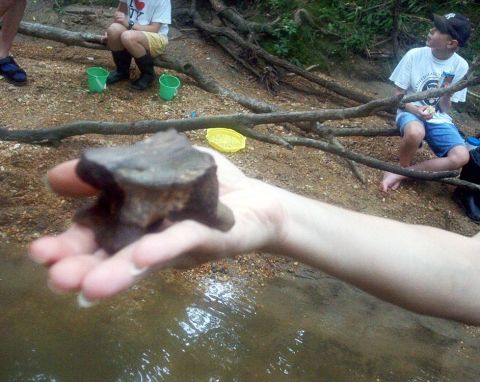
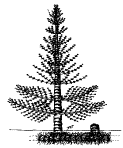
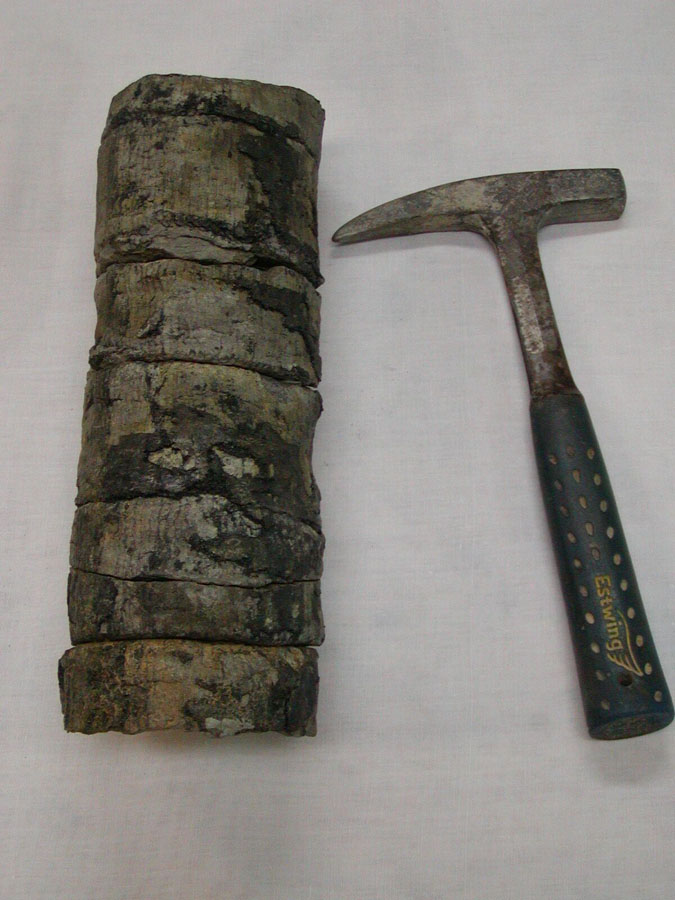

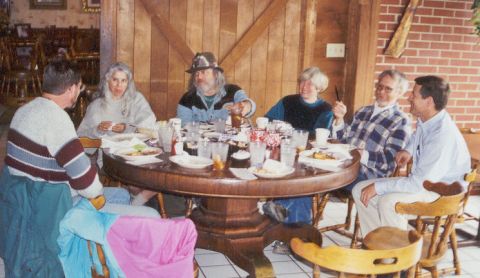
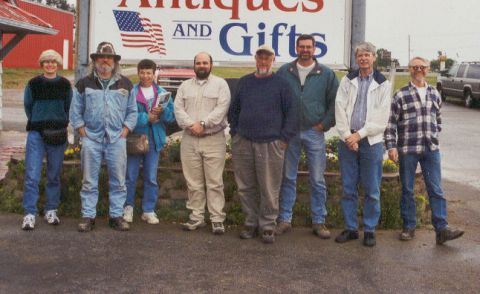
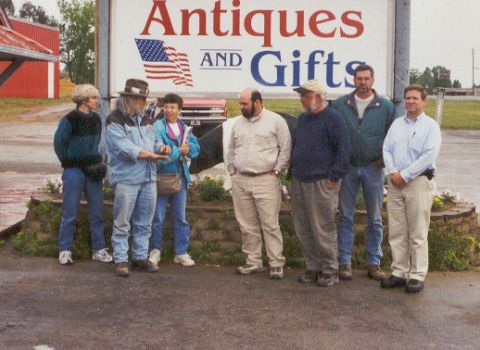
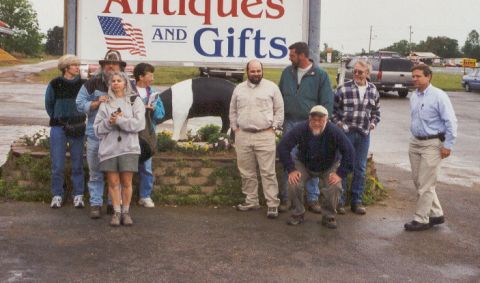
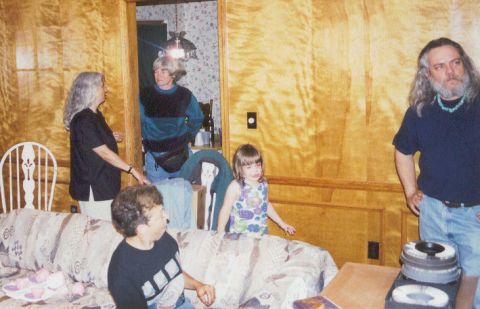
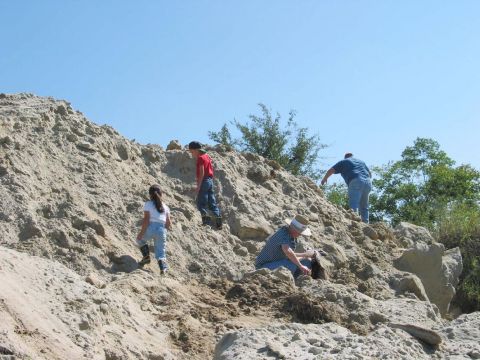
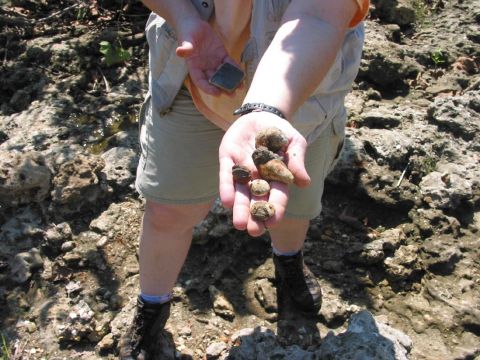
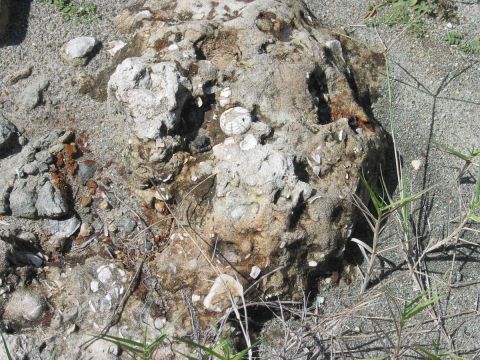


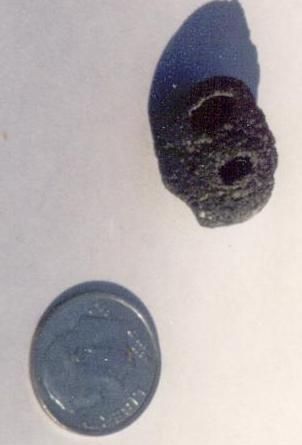
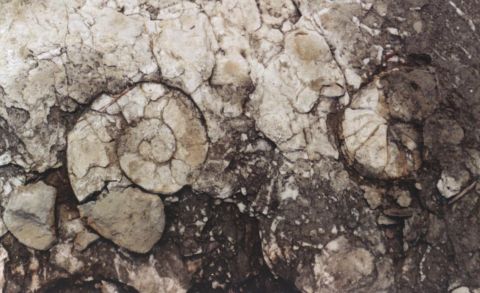
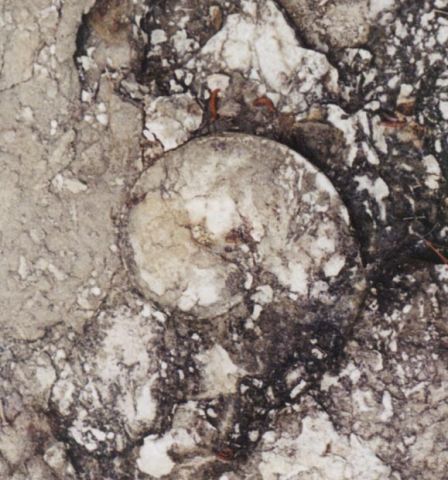
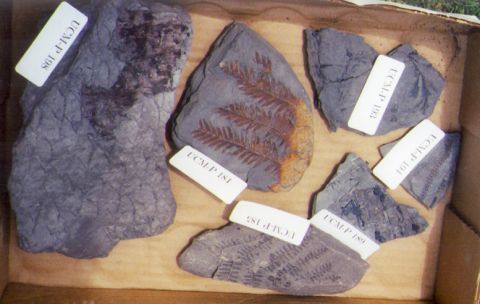

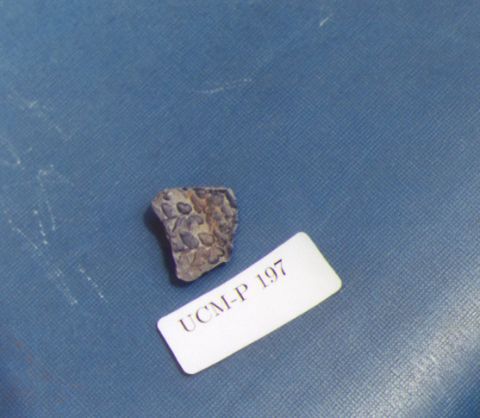
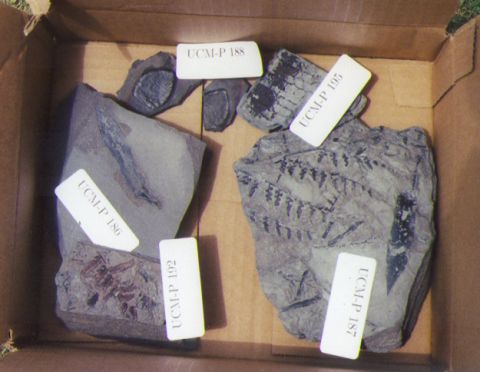


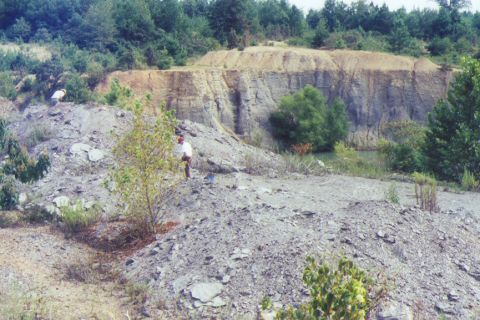
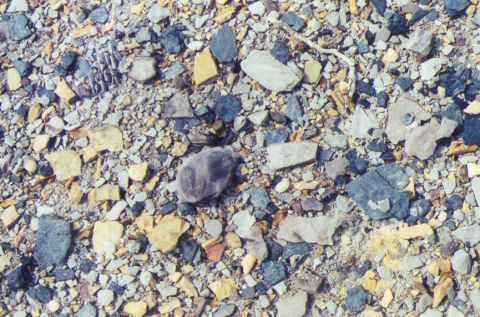
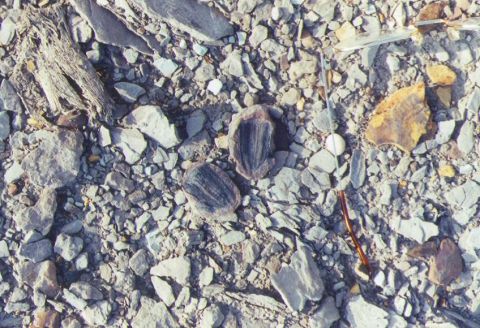
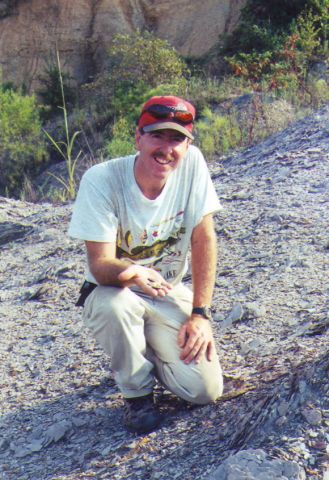
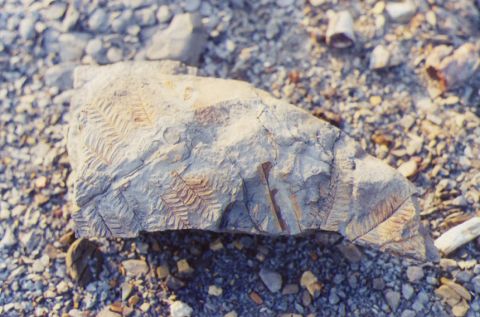
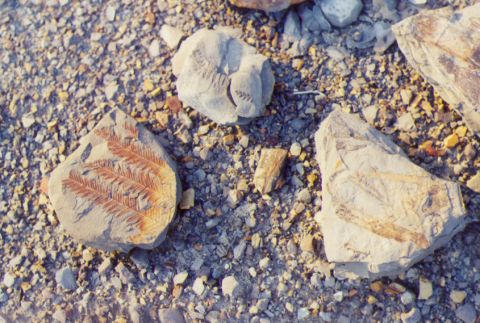
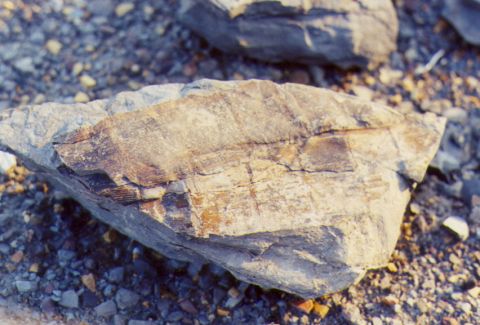
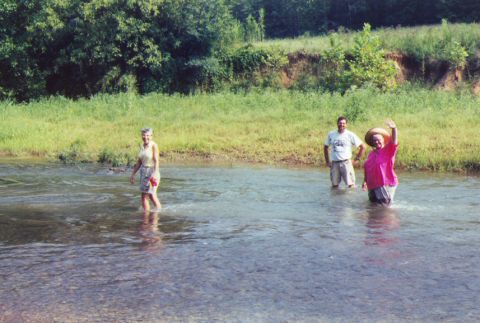
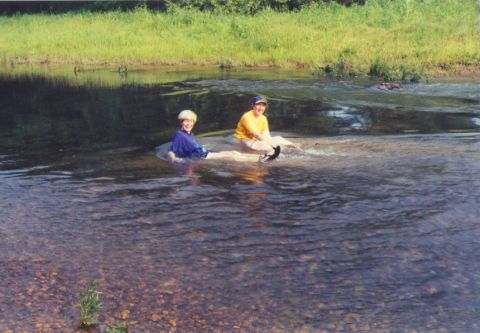
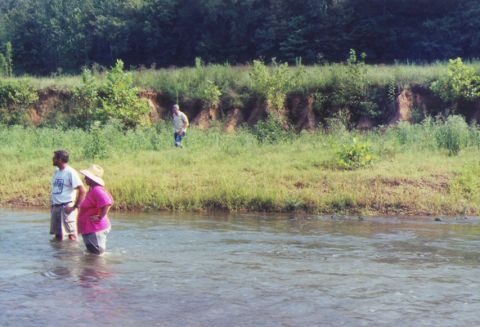

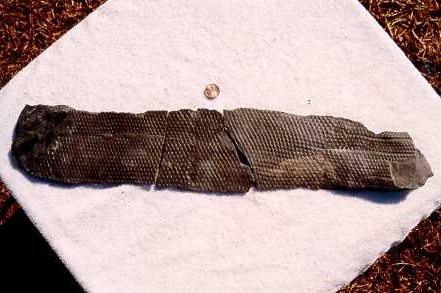

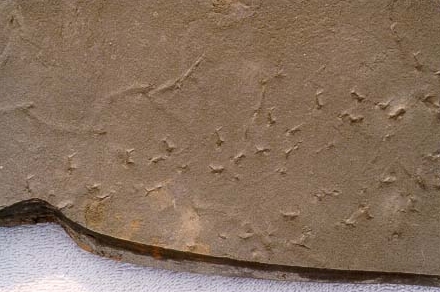
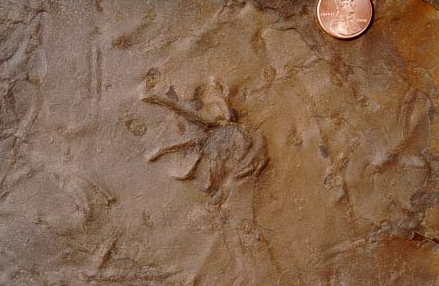

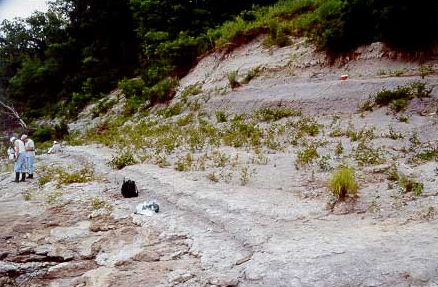
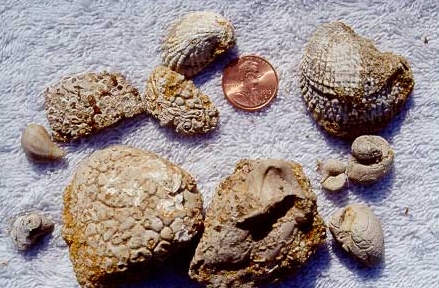
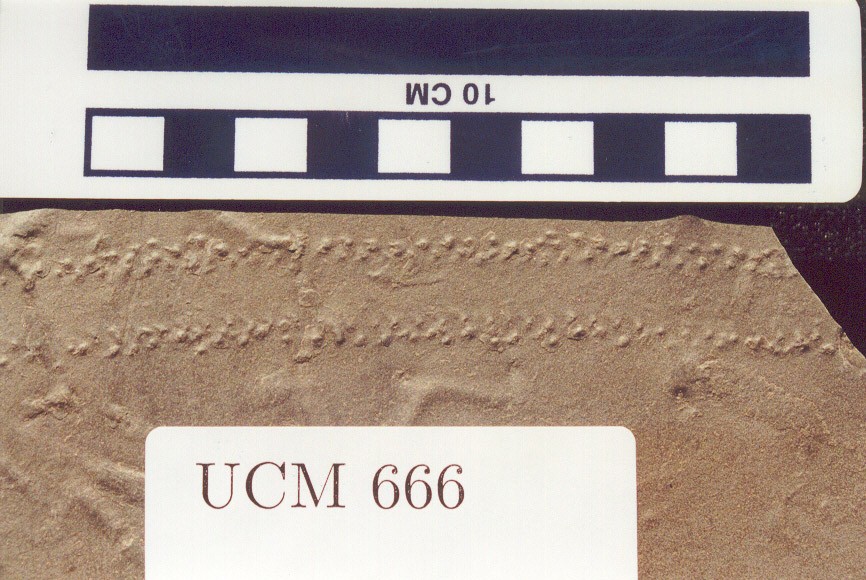
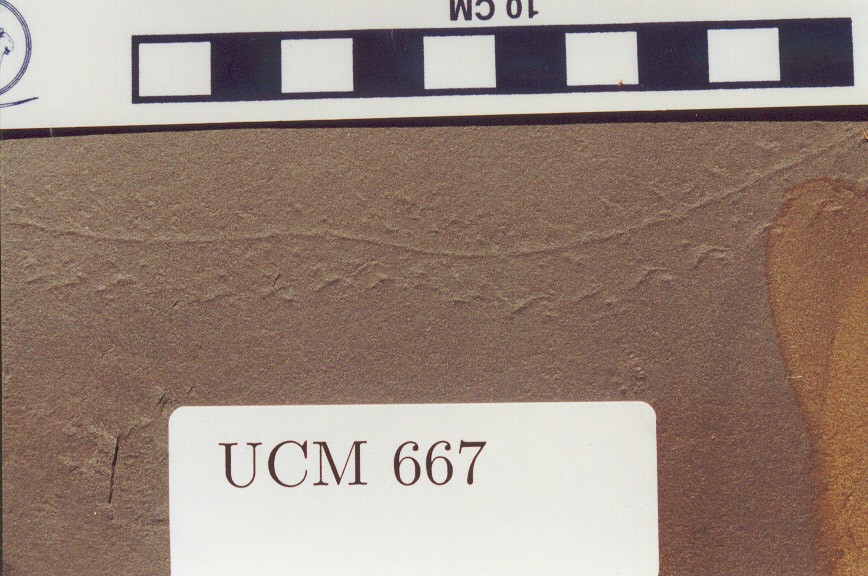
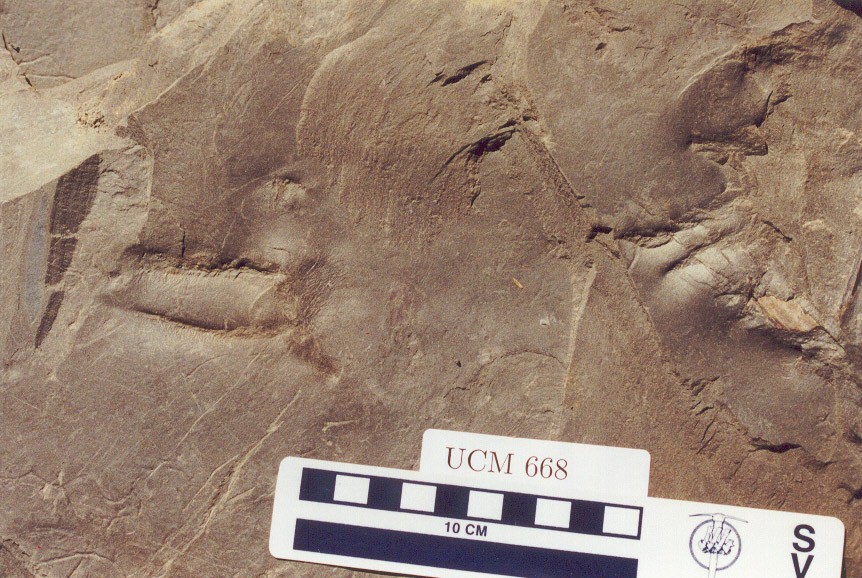
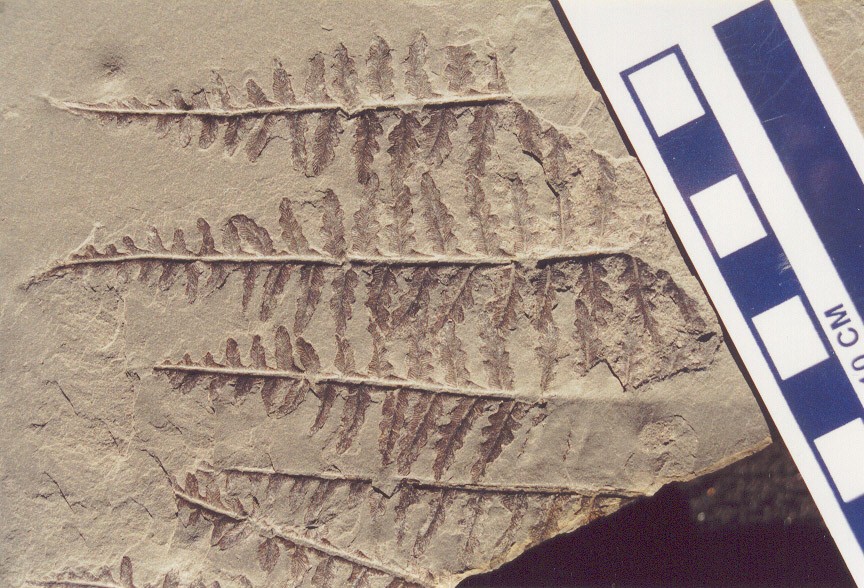
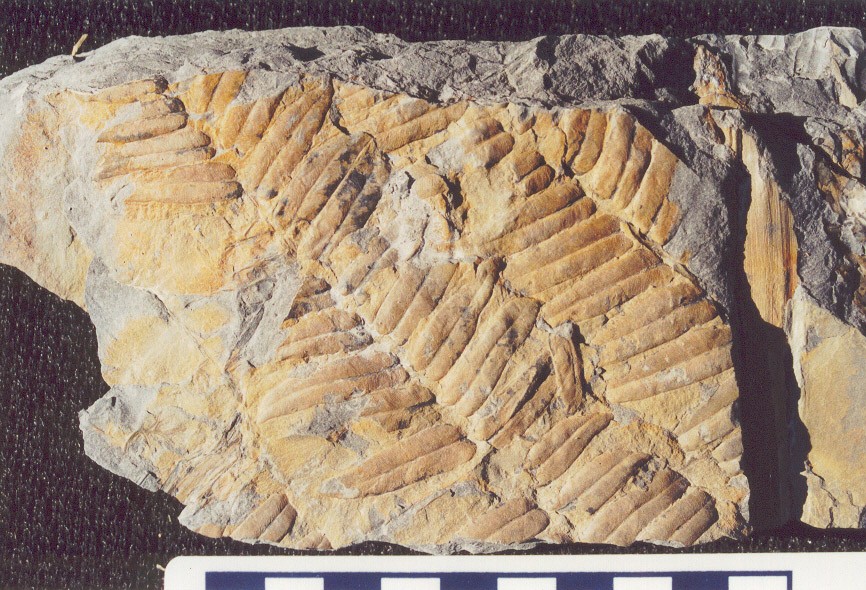
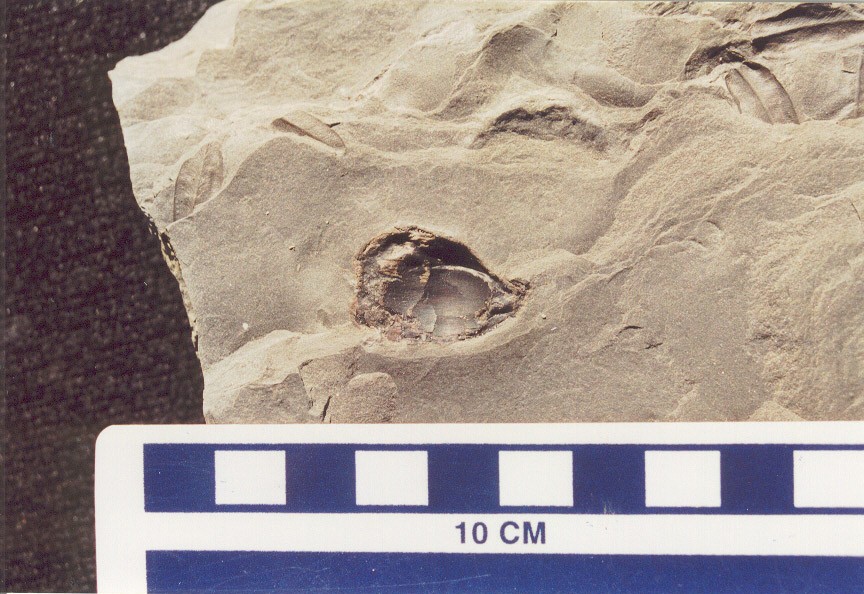
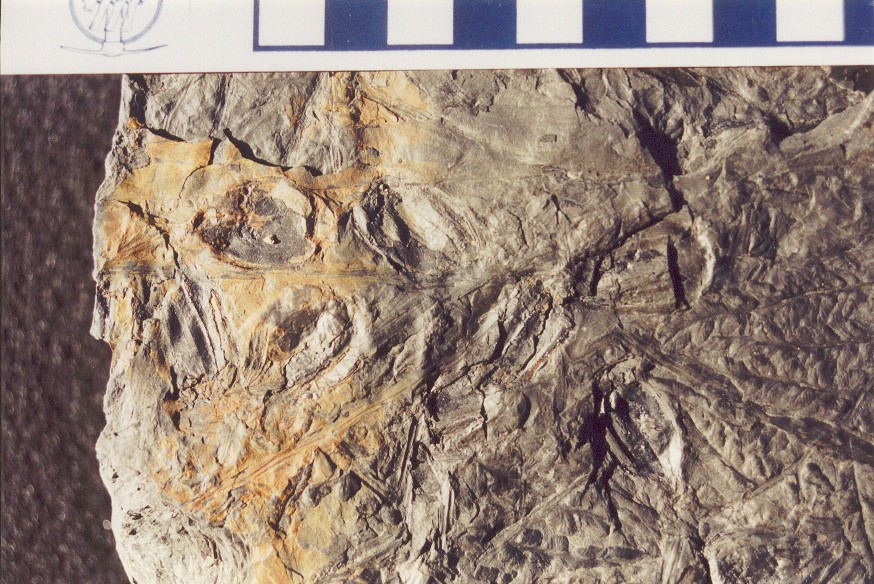
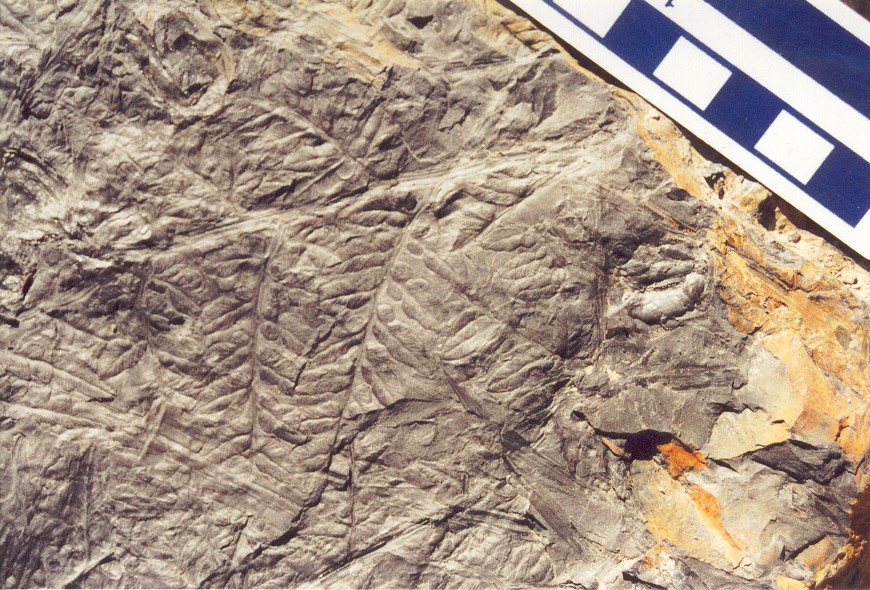
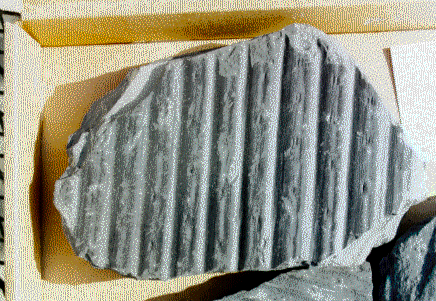
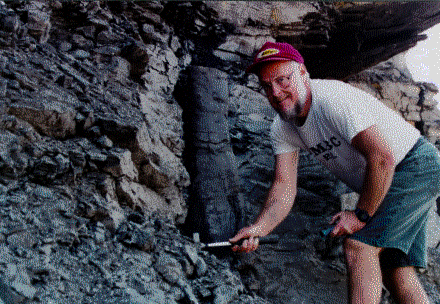

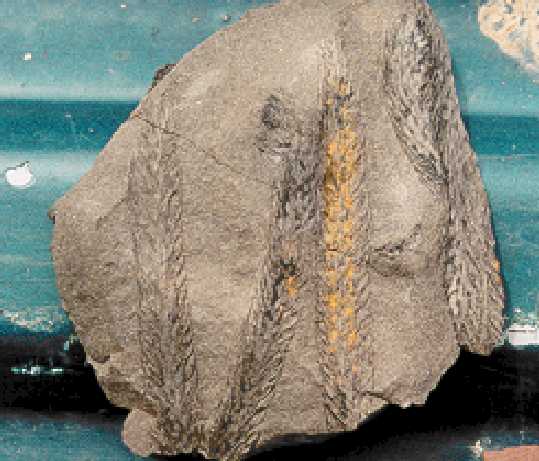
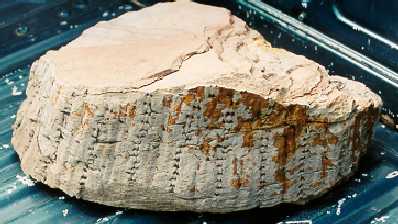
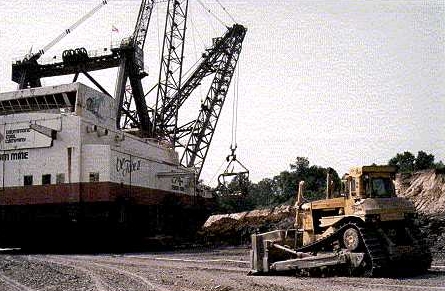
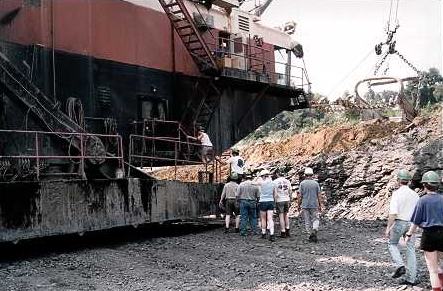
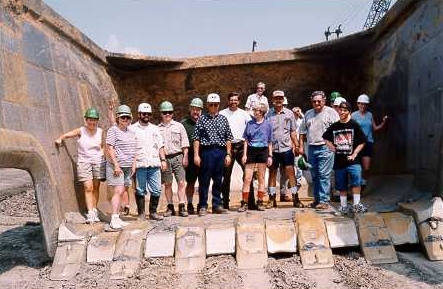 The machine uses a 180 ton metal bucket to drag soil and rock forward
for lifting, and then rotates to dump the material on an area that has
already been mined. The machine is so large and so specialized that,
according to Mr. Hendon, it cost $36 million when it was brand new. Not
only were we allowed to view the dragline from close up, but we were
also able to go inside and see how it works. The movements of the
bucket can be efficiently operated by one person, but three other
workers are usually present to keep the machinery functioning and
oiled. The complex manipulations of the dragline depend on 16 giant
motors of over 100 horsepower each, one of which we saw winding and
unwinding the huge cables connected to the bucket. Other motors rotate
the whole assembly and move it. We all visited the operator control
room, as well as a second empty control room. Inside the machine, the
noise was loud enough to necessitate the use of earplugs. After
visiting the dragline, Mr. Hendon took us all to a second bucket no
longer in use, where I took the group photograph shown here.
The machine uses a 180 ton metal bucket to drag soil and rock forward
for lifting, and then rotates to dump the material on an area that has
already been mined. The machine is so large and so specialized that,
according to Mr. Hendon, it cost $36 million when it was brand new. Not
only were we allowed to view the dragline from close up, but we were
also able to go inside and see how it works. The movements of the
bucket can be efficiently operated by one person, but three other
workers are usually present to keep the machinery functioning and
oiled. The complex manipulations of the dragline depend on 16 giant
motors of over 100 horsepower each, one of which we saw winding and
unwinding the huge cables connected to the bucket. Other motors rotate
the whole assembly and move it. We all visited the operator control
room, as well as a second empty control room. Inside the machine, the
noise was loud enough to necessitate the use of earplugs. After
visiting the dragline, Mr. Hendon took us all to a second bucket no
longer in use, where I took the group photograph shown here.
 One of the most interesting fossils I noticed at this site was a
modest-sized bark impression of Lepidophloios, a subgenus of the
Lepidodendra. The leaf scars of Lepidophloios are very much like those
of a normal Lepidodendron stem, only the scars are elongated
horizontally, rather than vertically. Although I have read that fossils
of Lepidophloios are the most commonly found plant fossil in Alabama,
it was the first time I had seen a definitive example. It was easily
distinguished from the better known Lepidodendron.
One of the most interesting fossils I noticed at this site was a
modest-sized bark impression of Lepidophloios, a subgenus of the
Lepidodendra. The leaf scars of Lepidophloios are very much like those
of a normal Lepidodendron stem, only the scars are elongated
horizontally, rather than vertically. Although I have read that fossils
of Lepidophloios are the most commonly found plant fossil in Alabama,
it was the first time I had seen a definitive example. It was easily
distinguished from the better known Lepidodendron.

